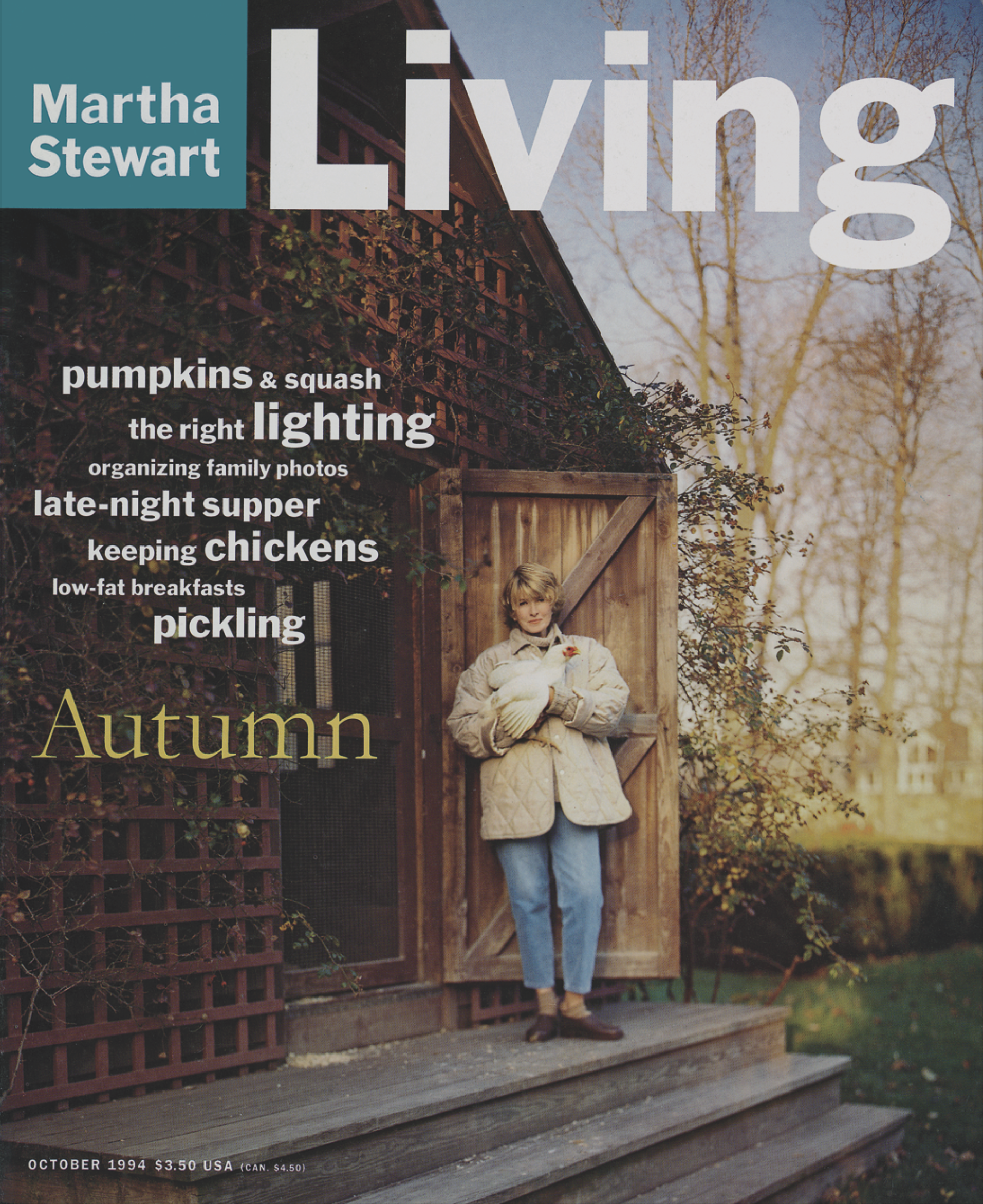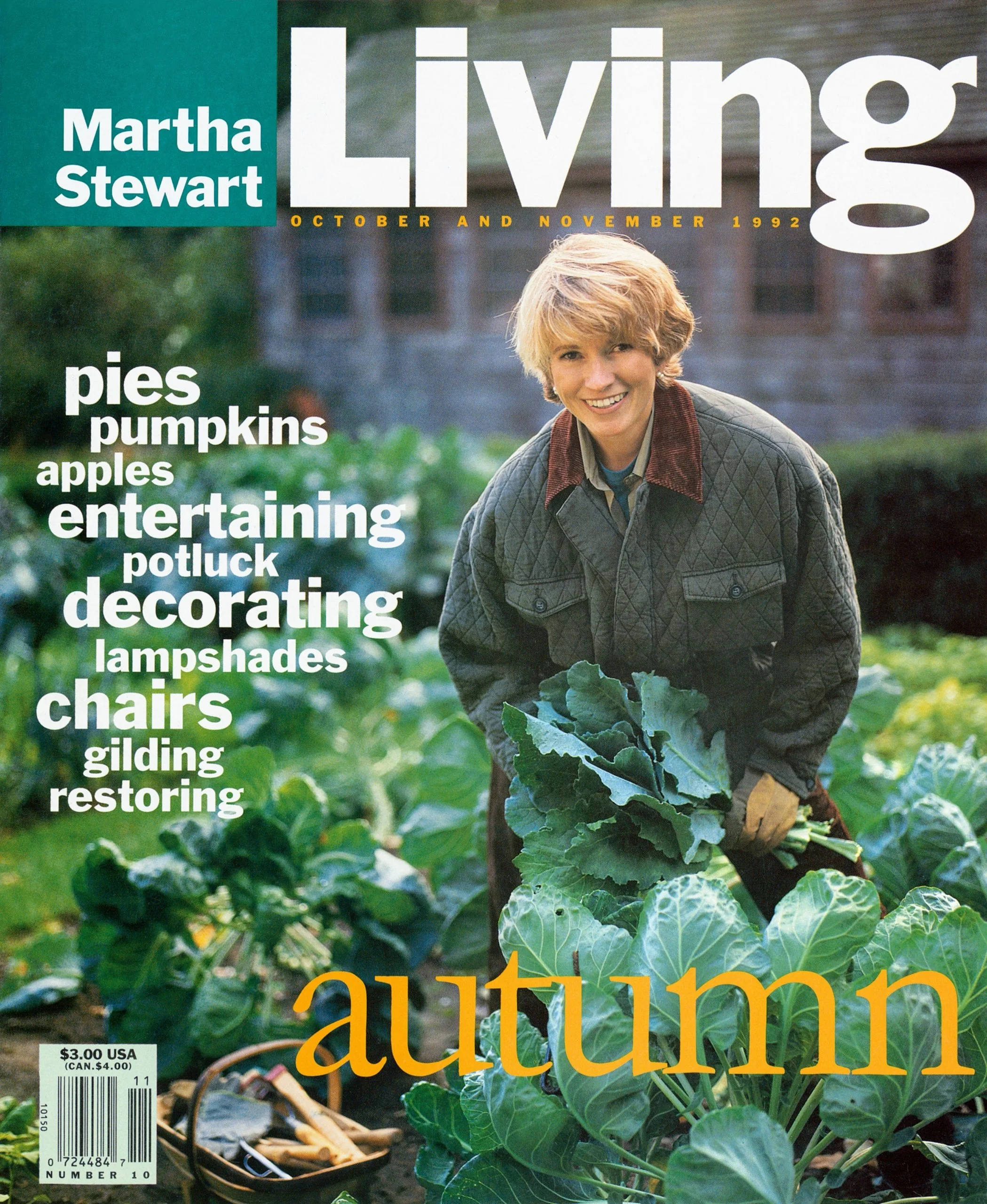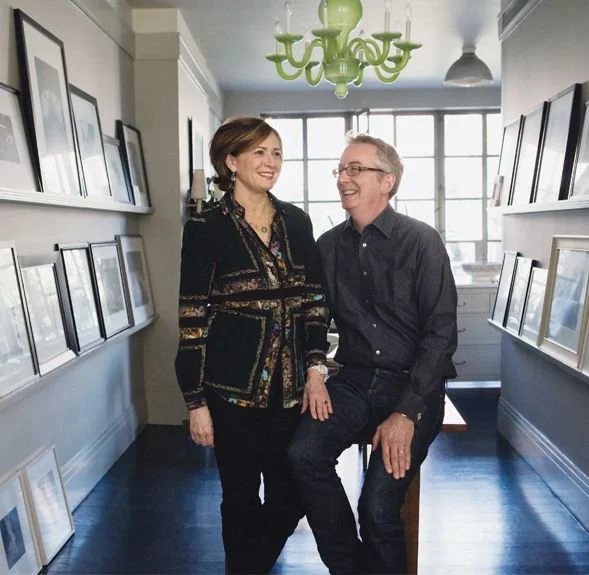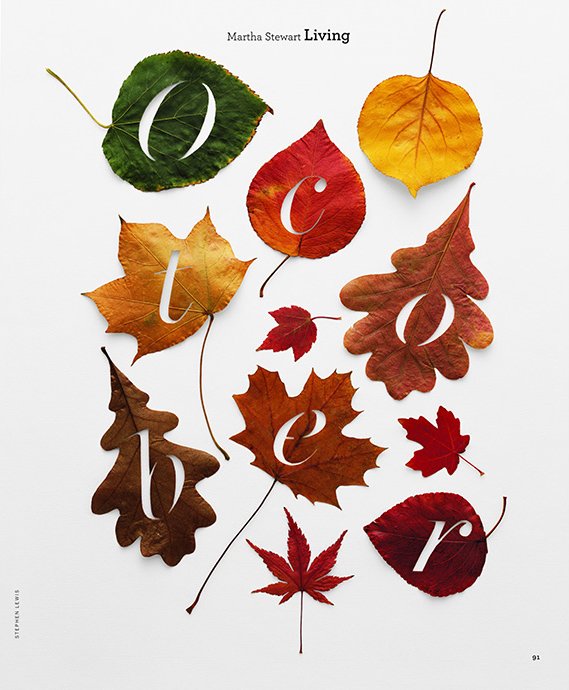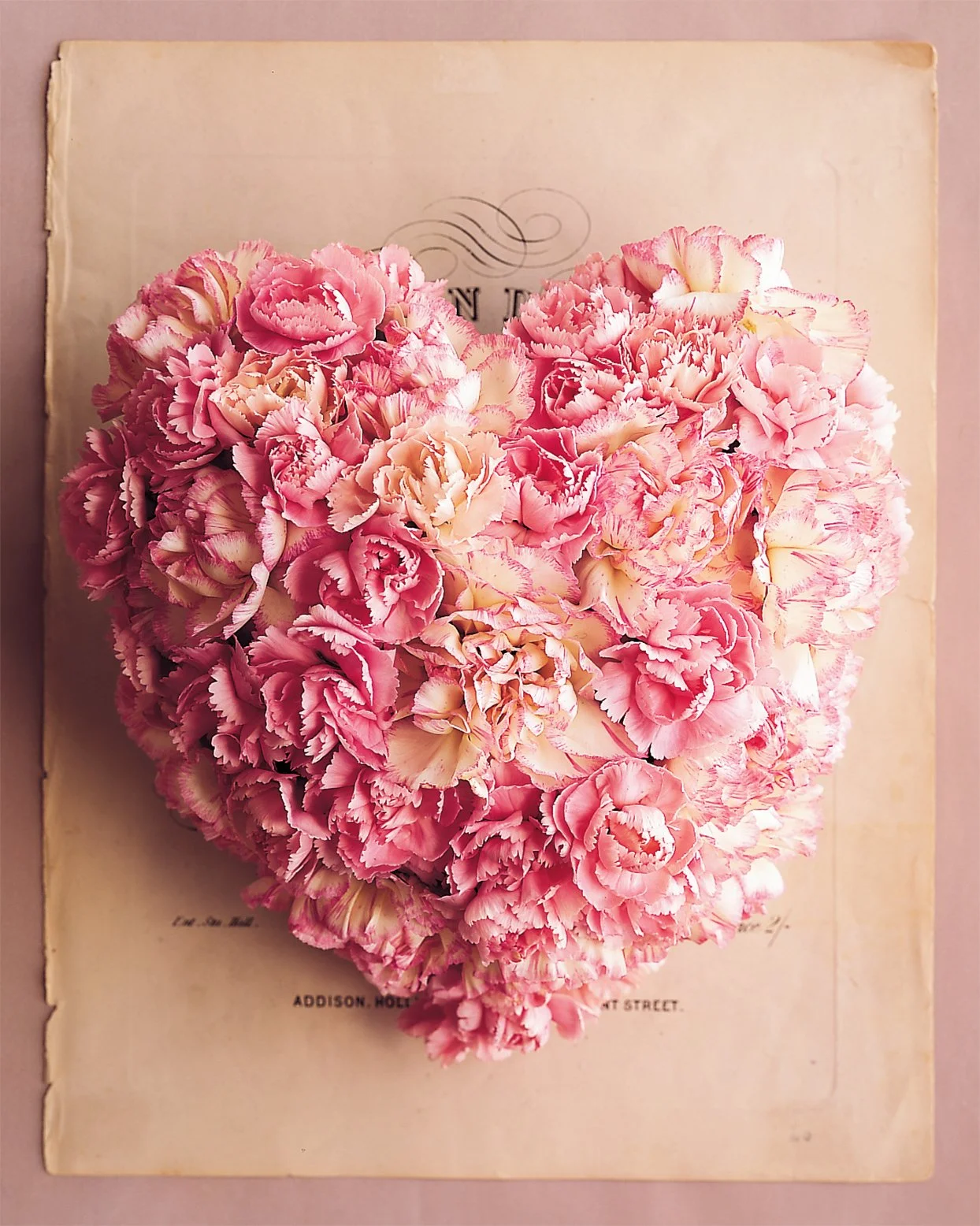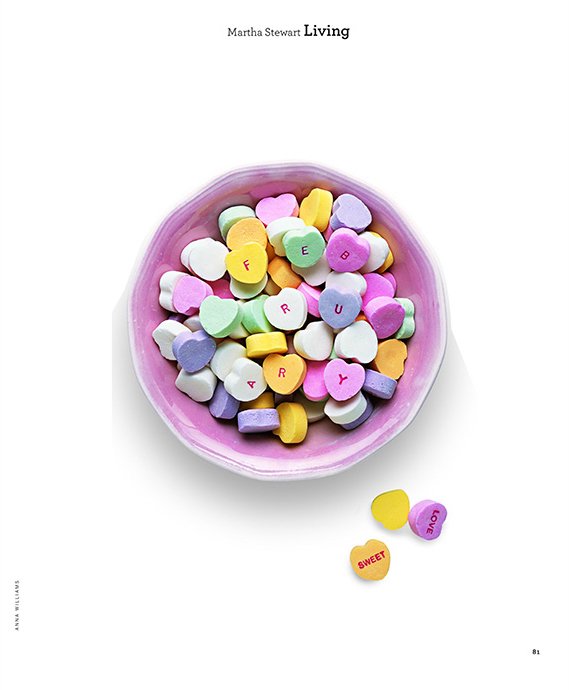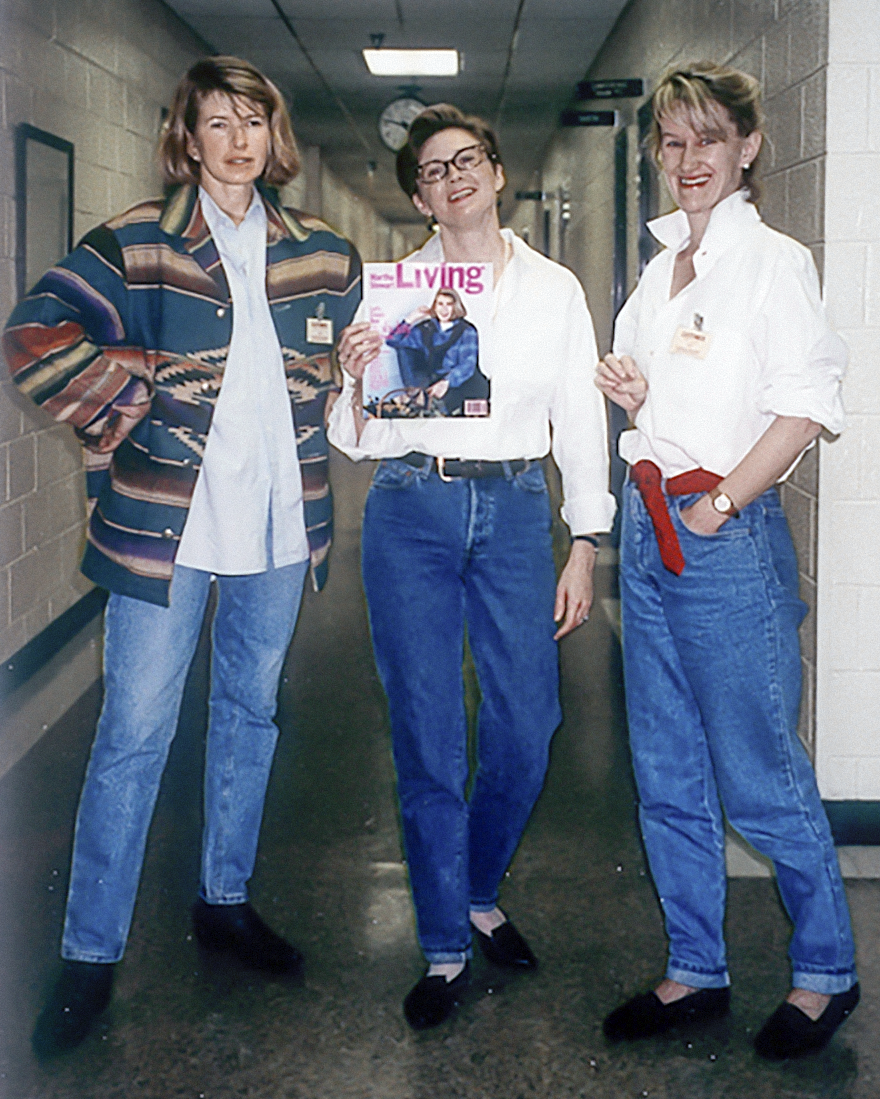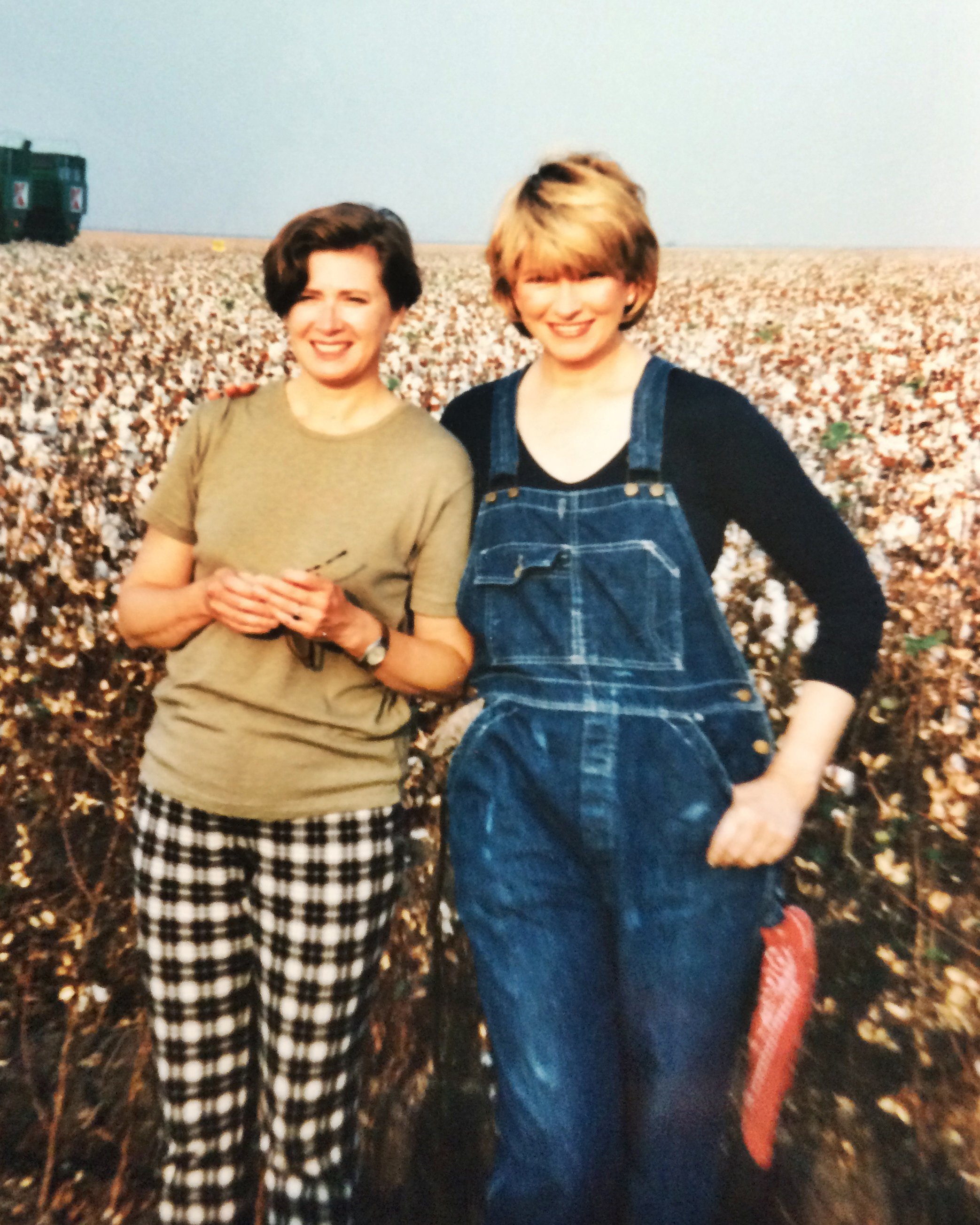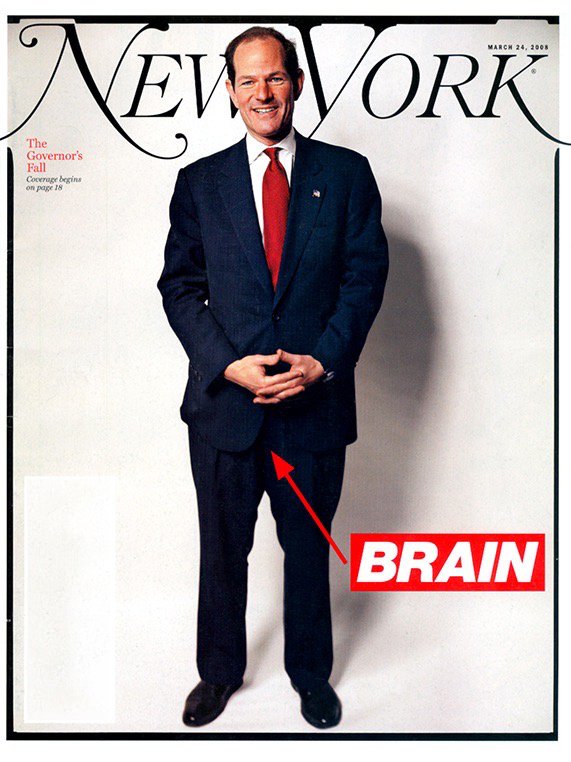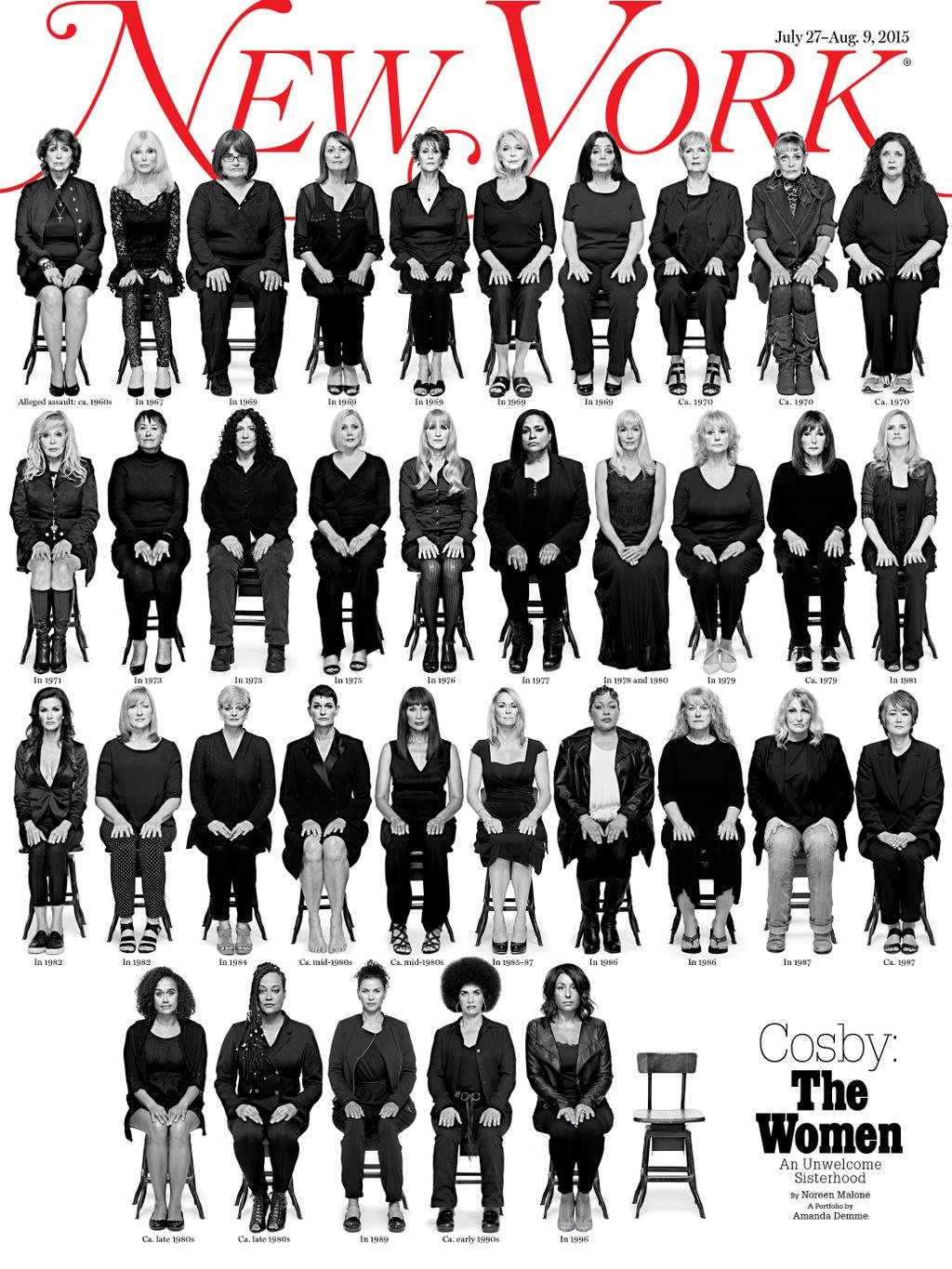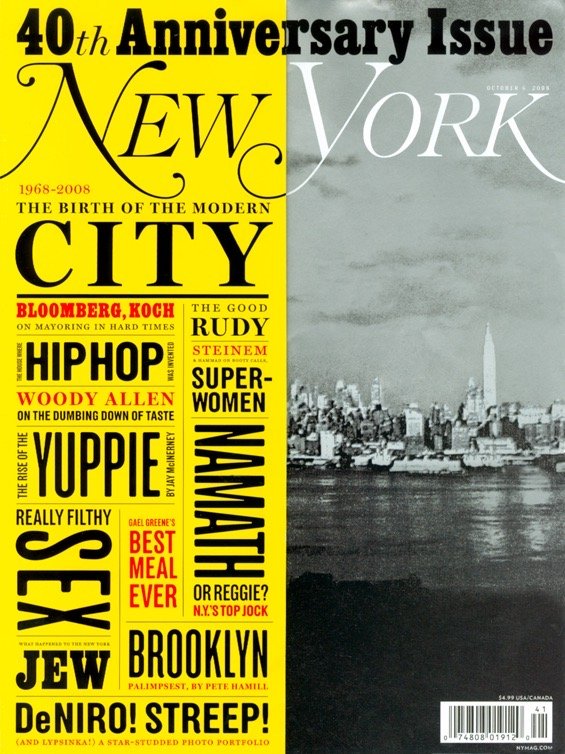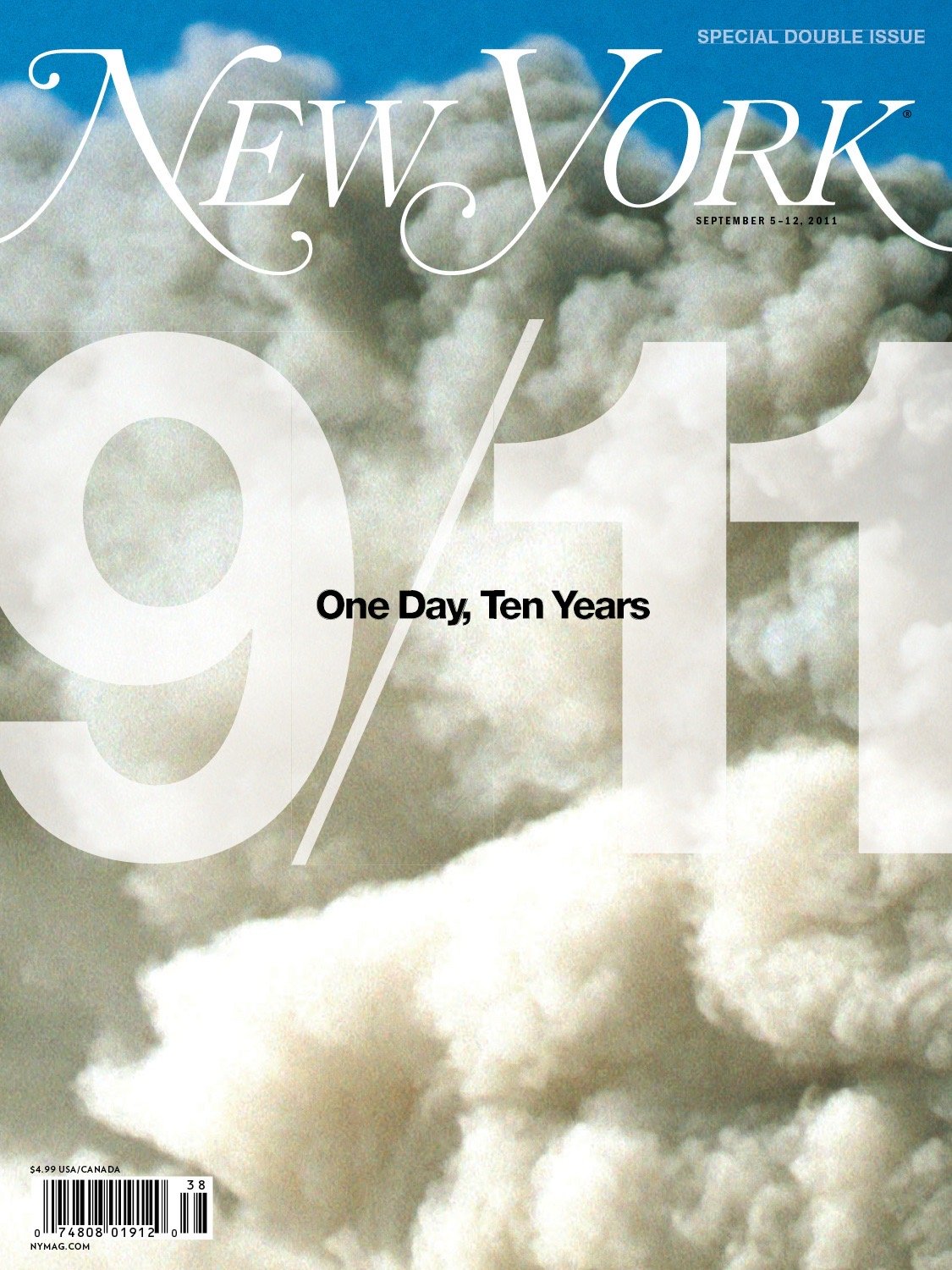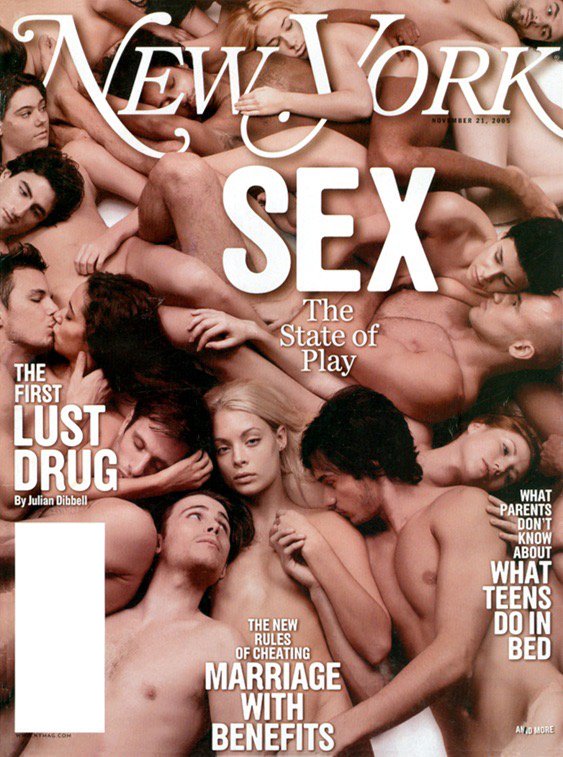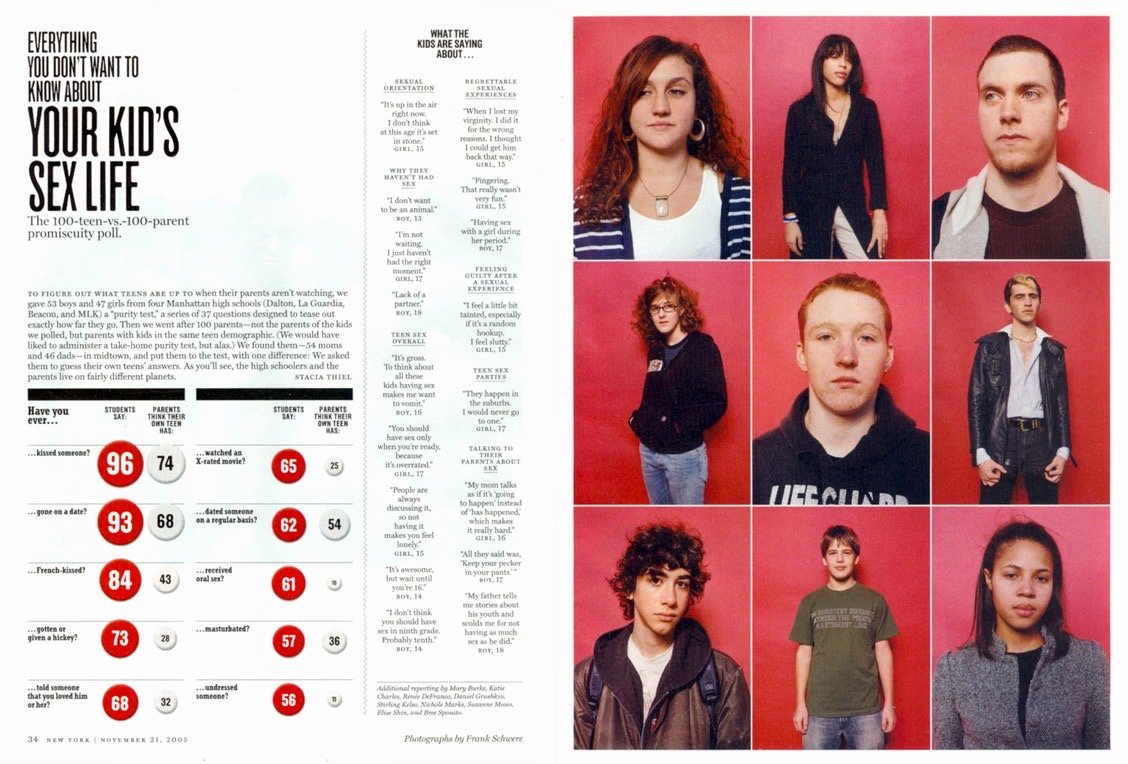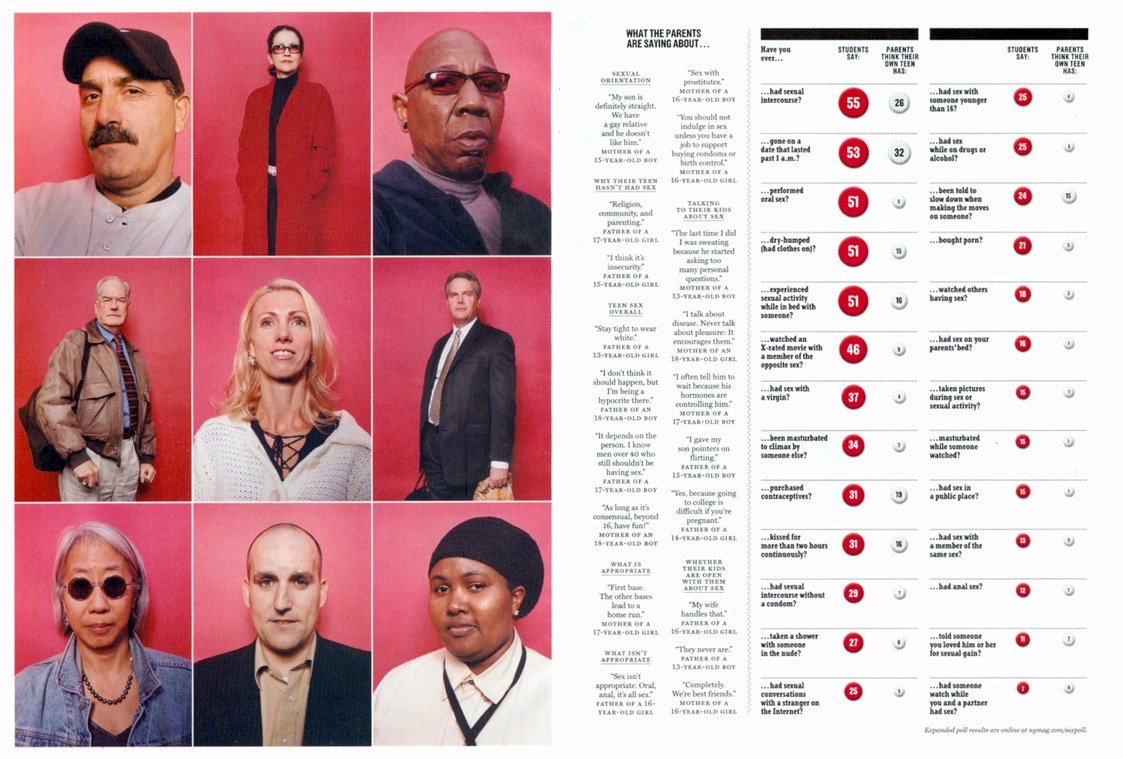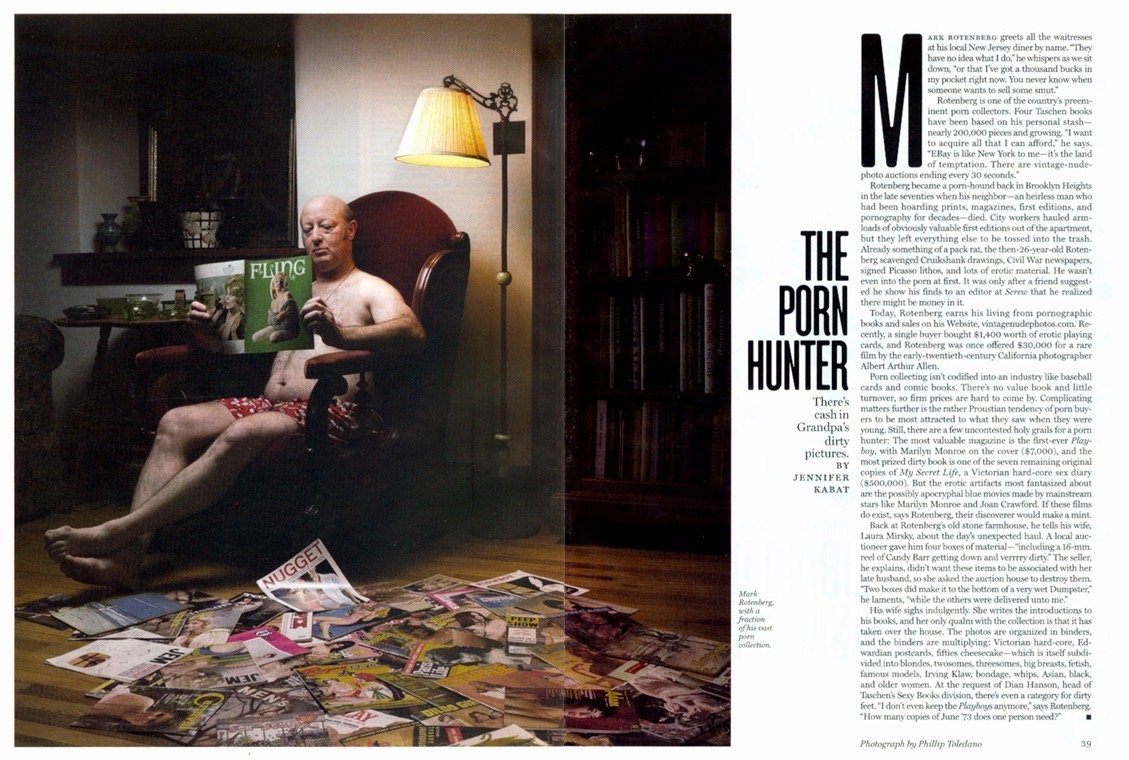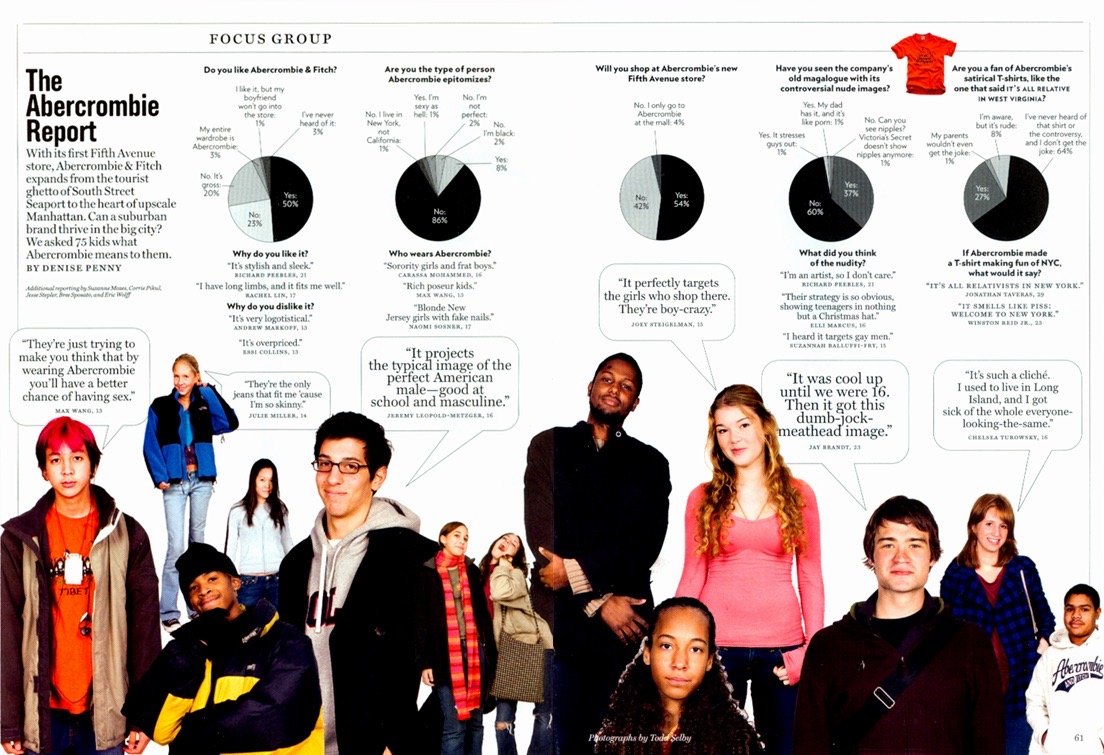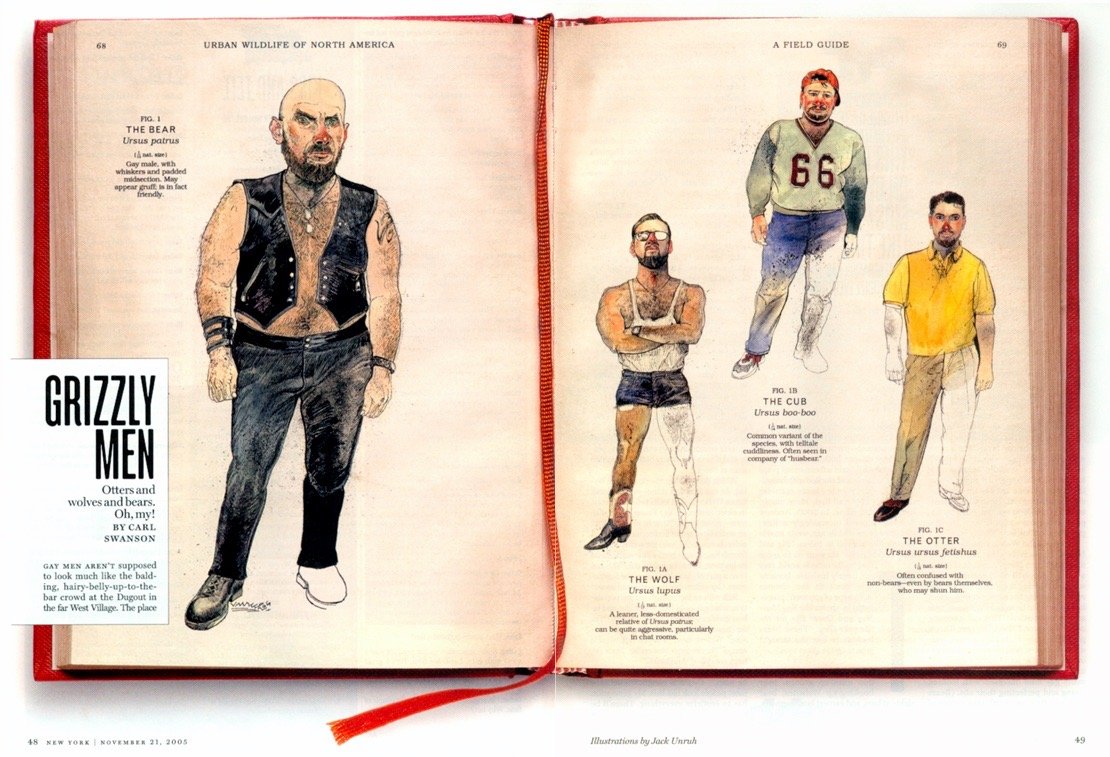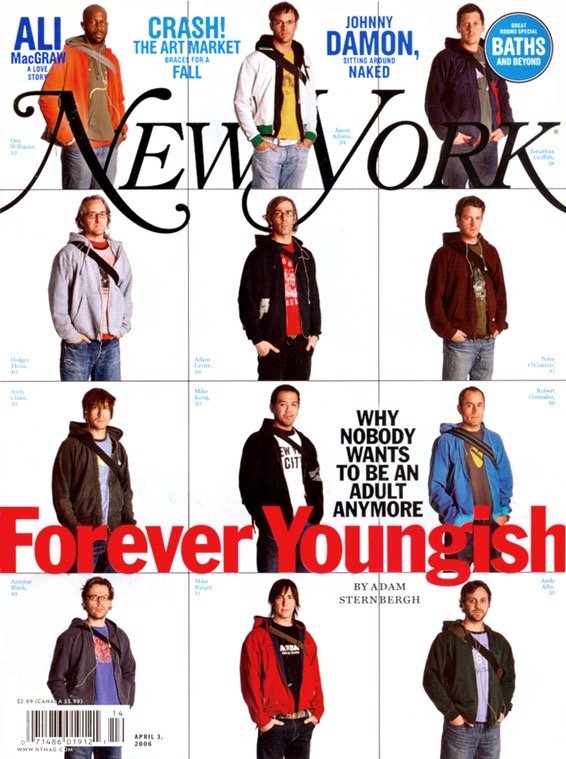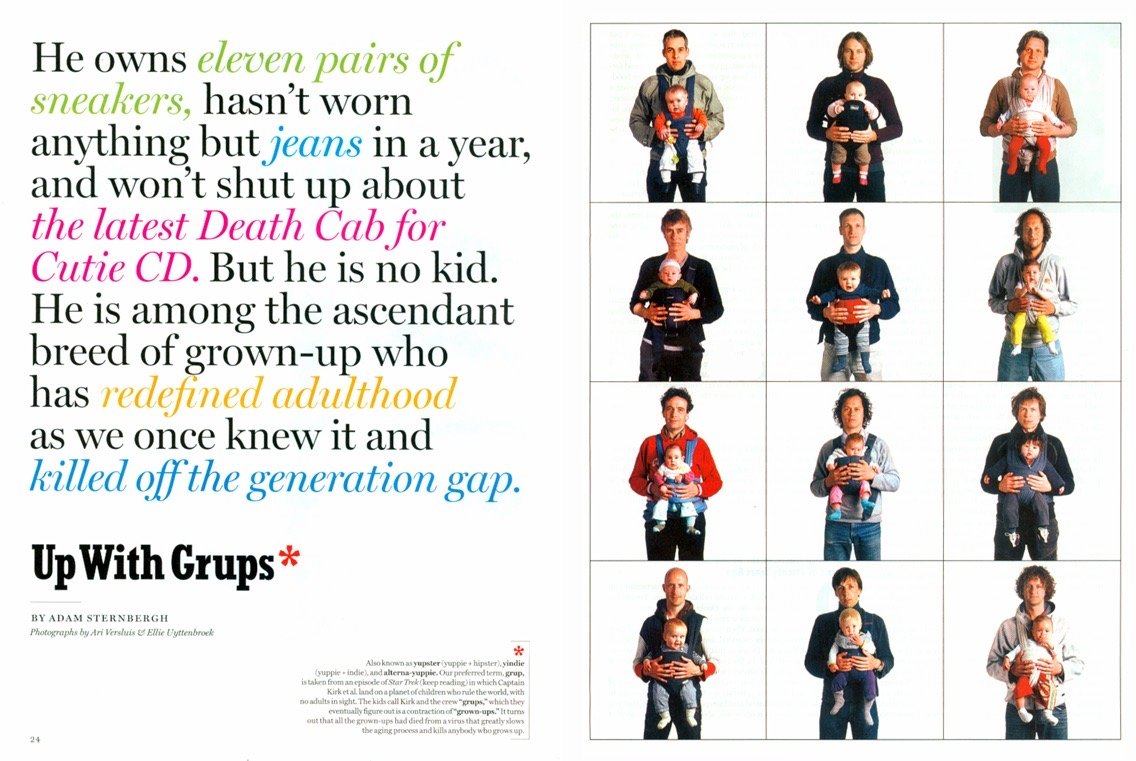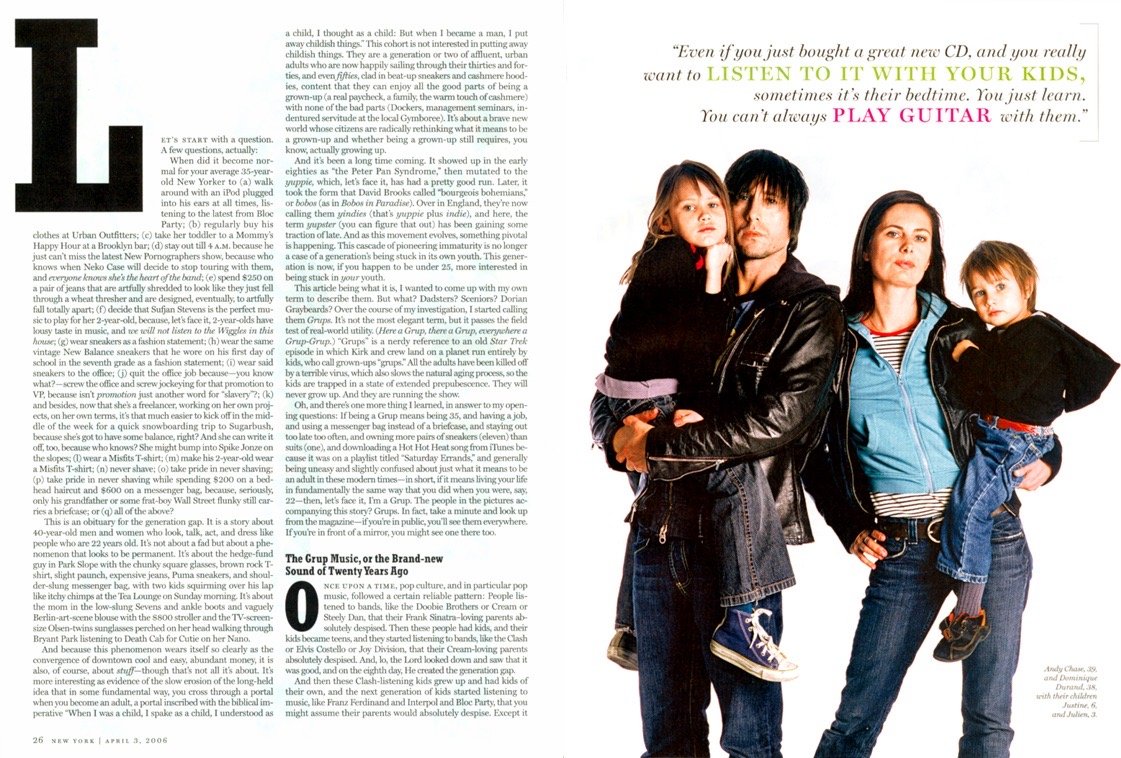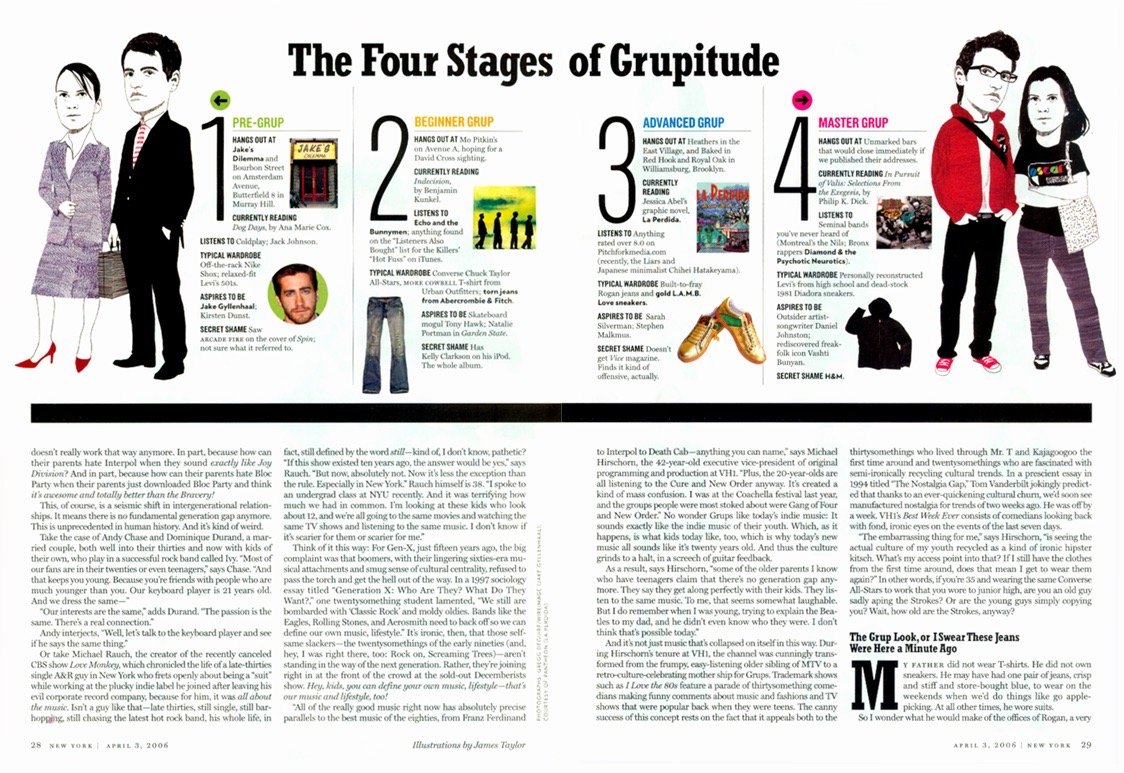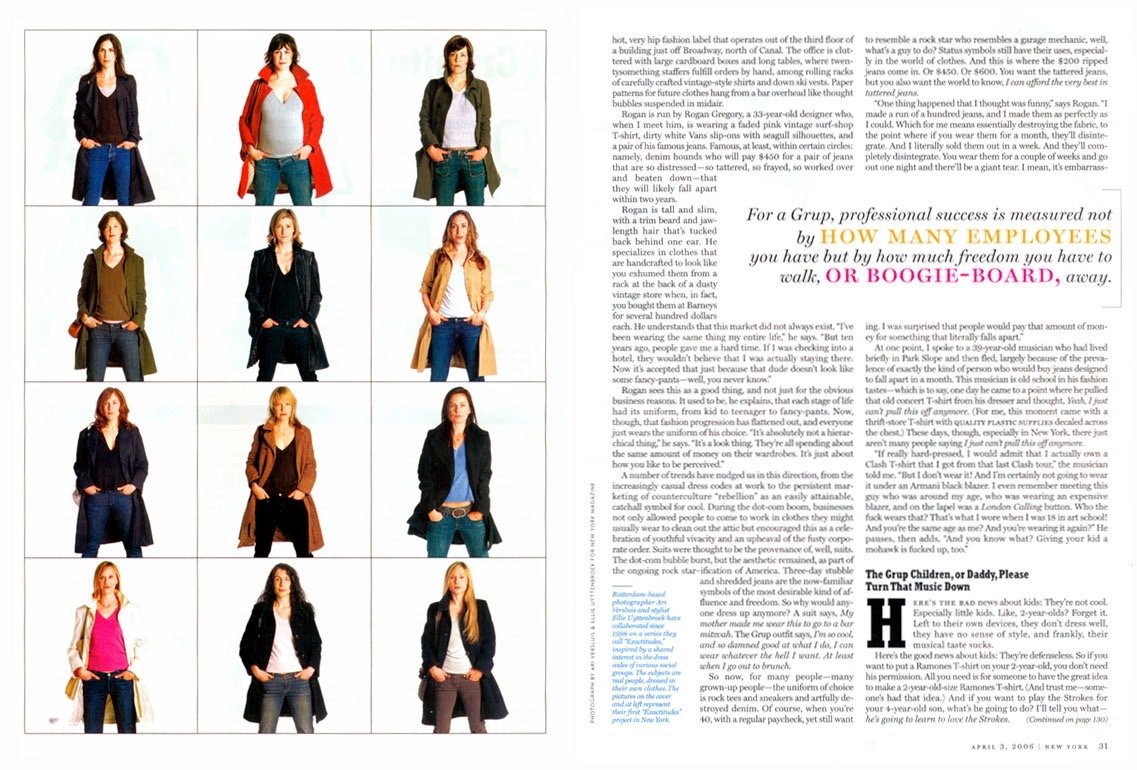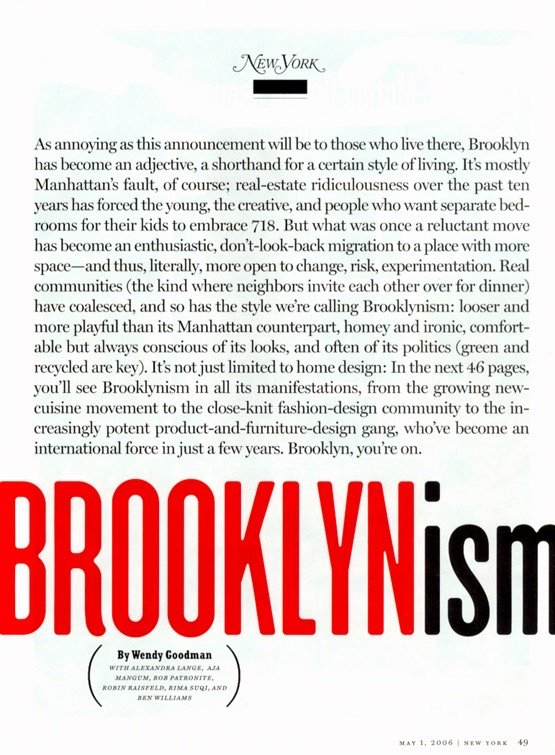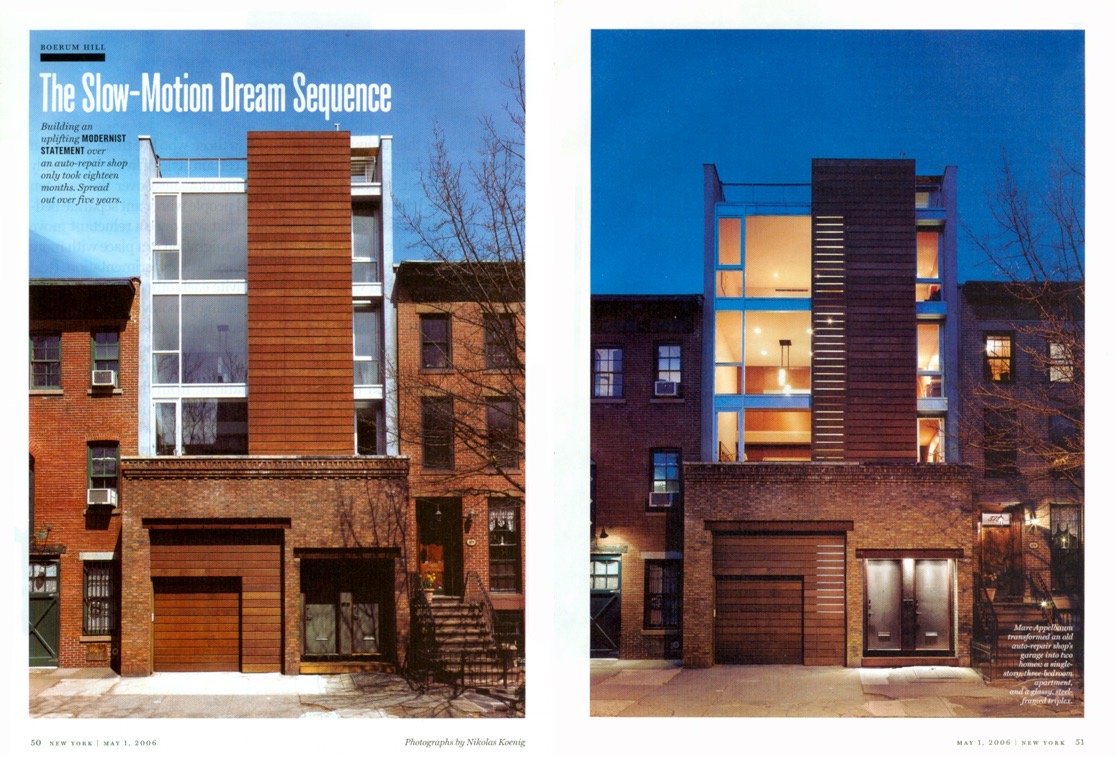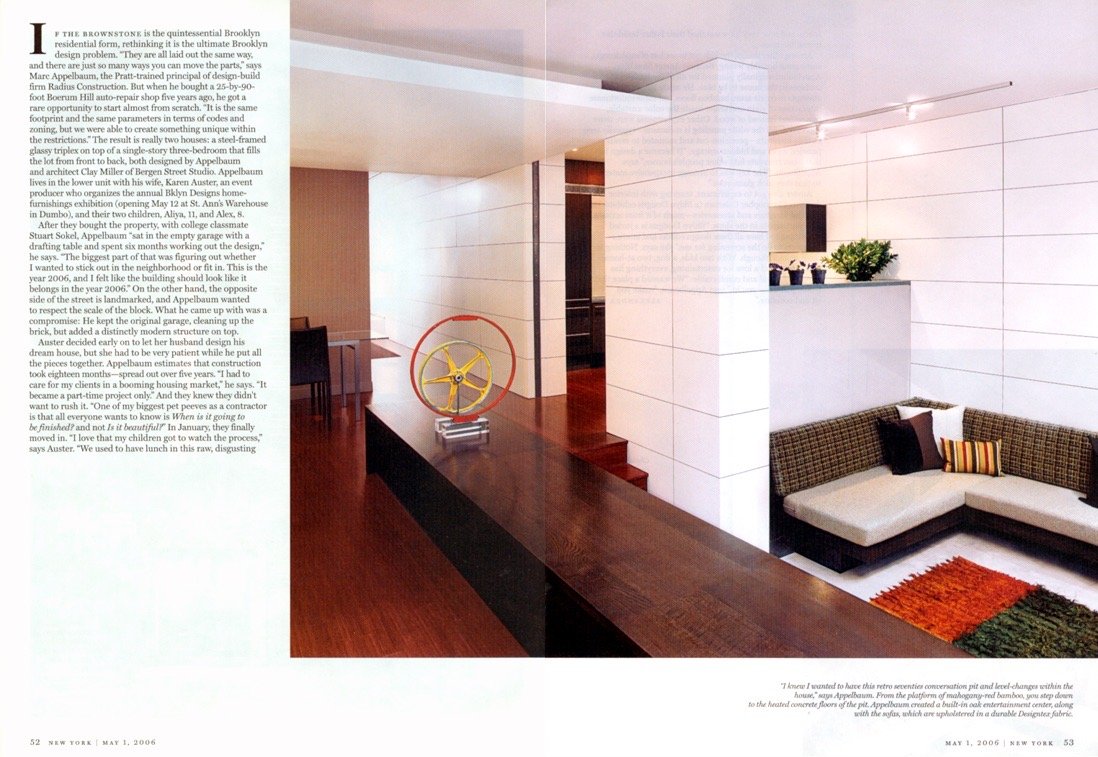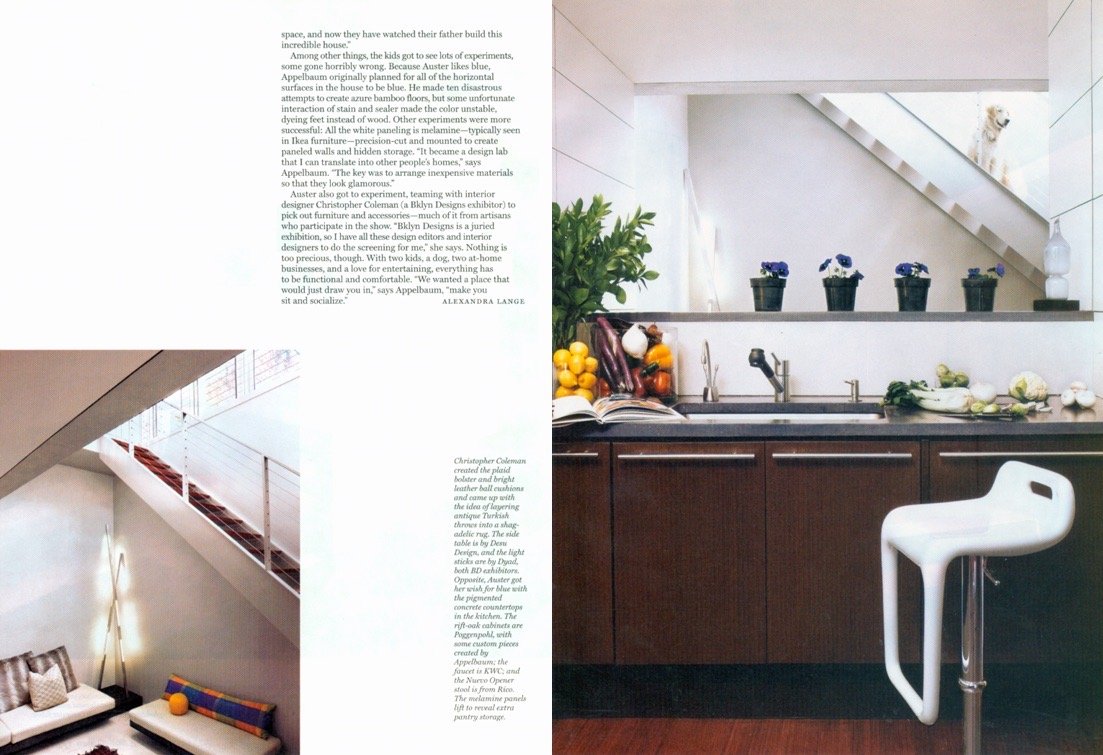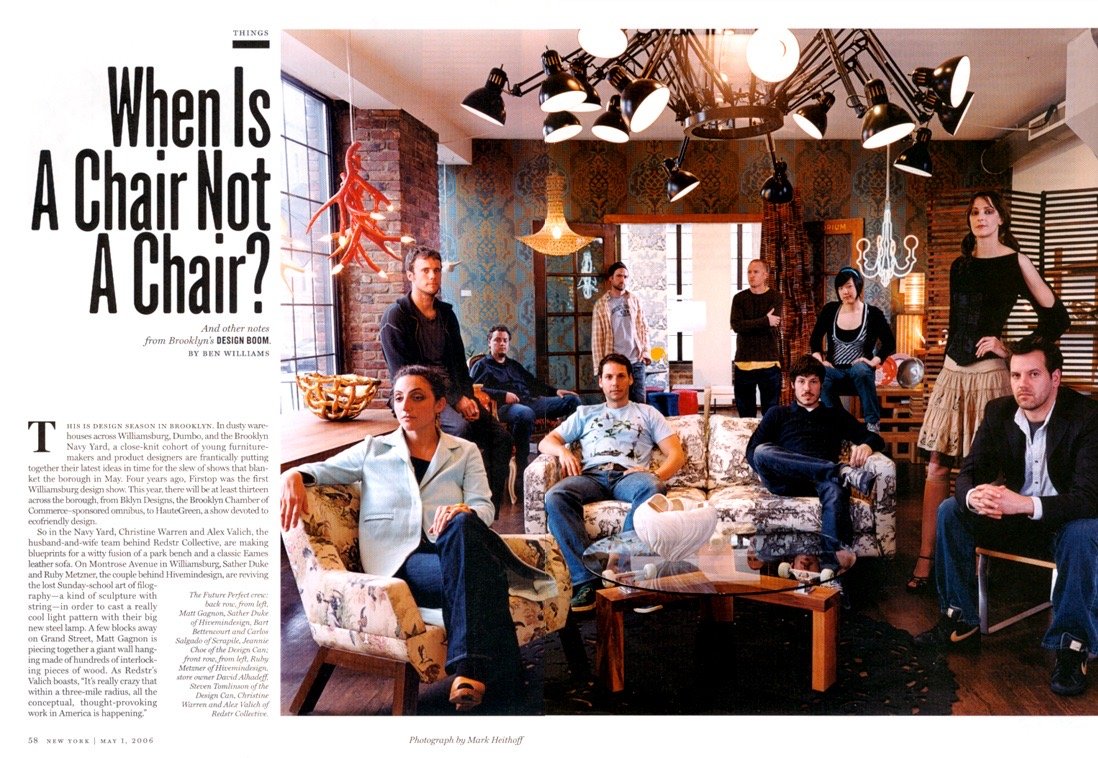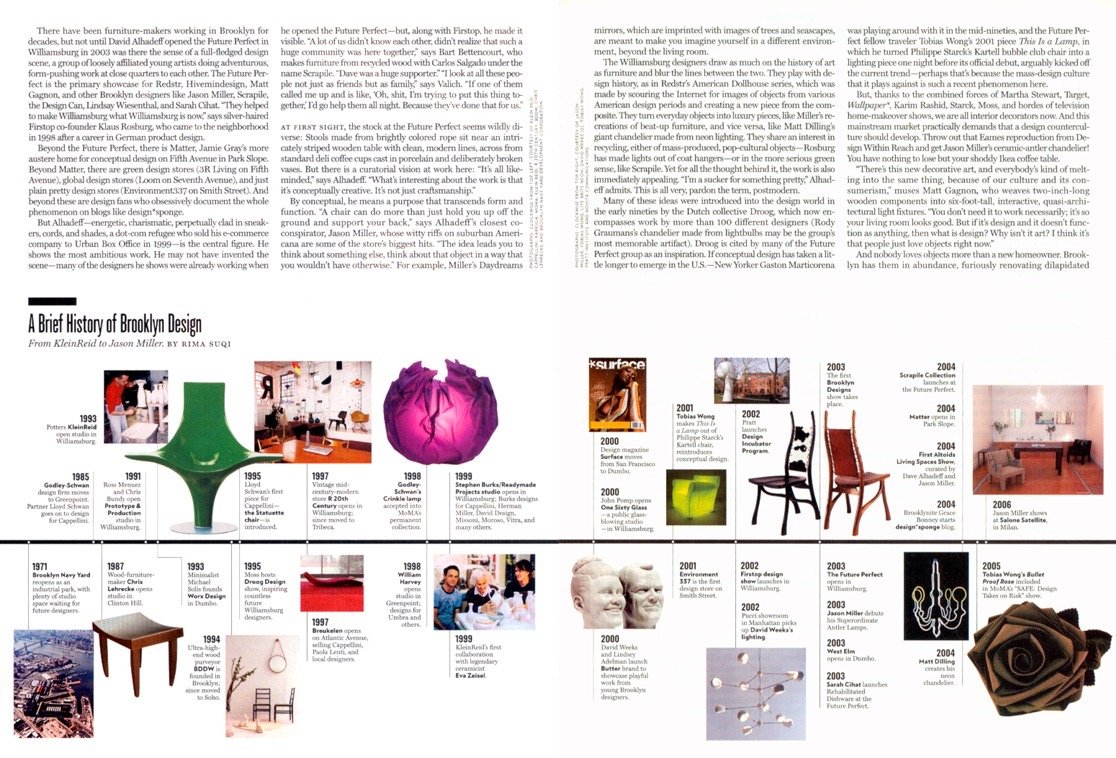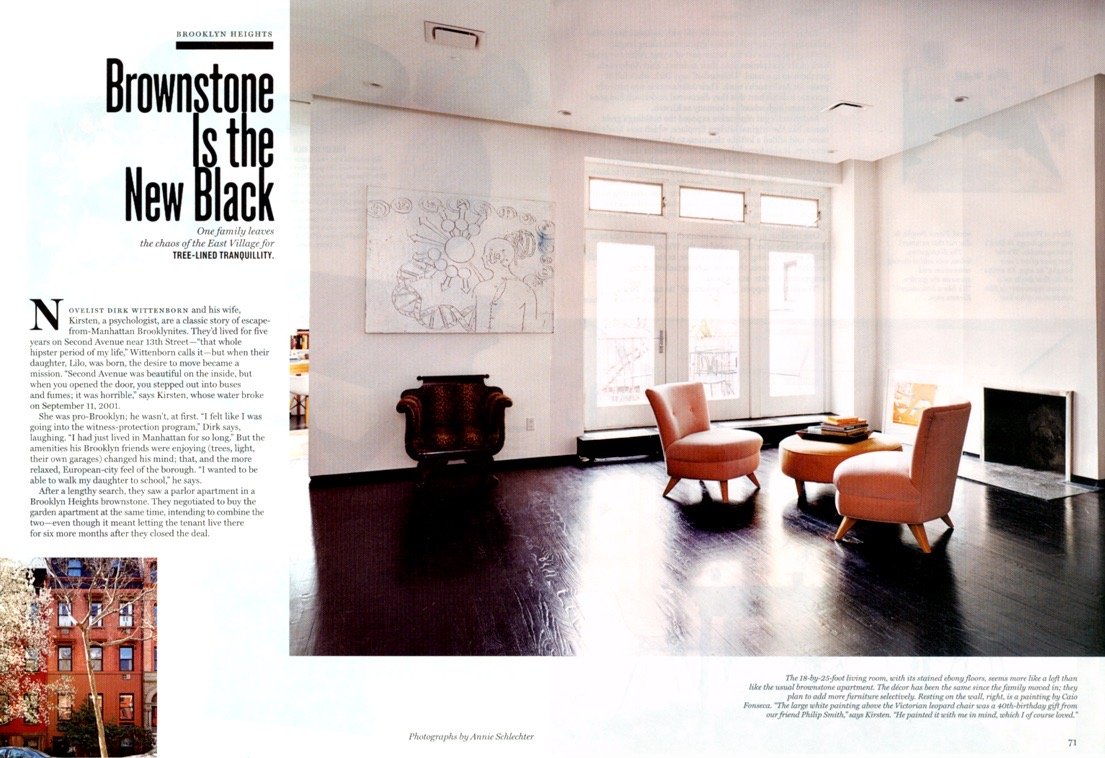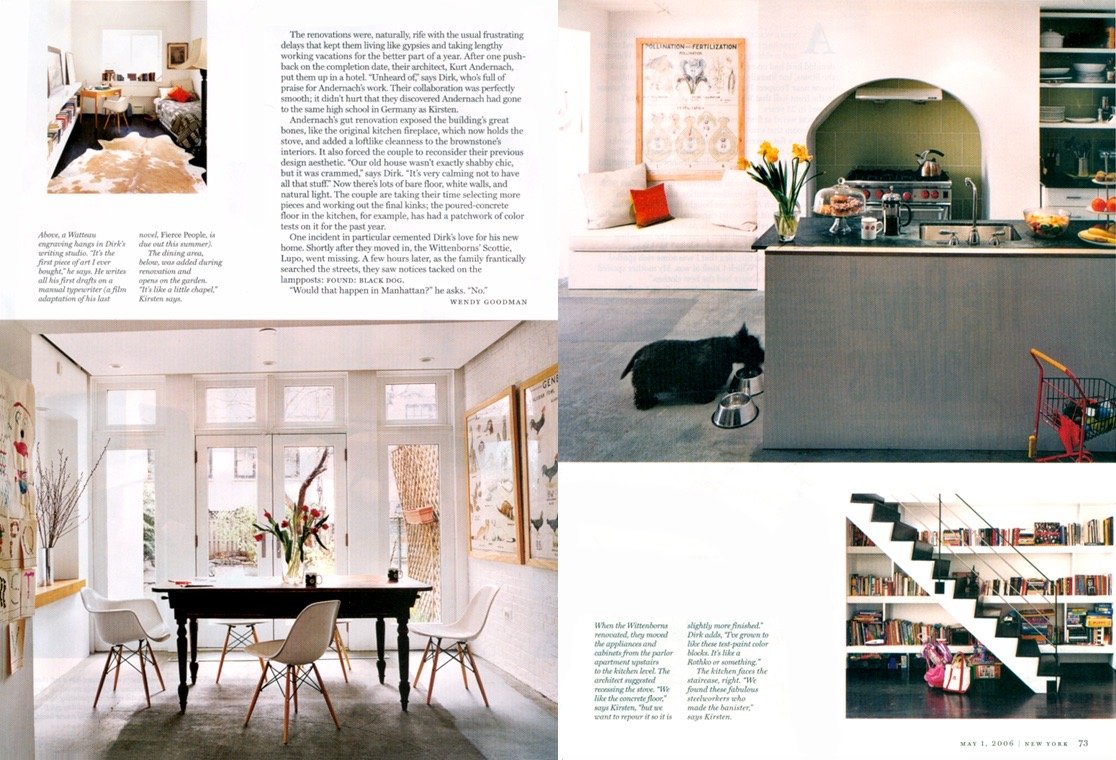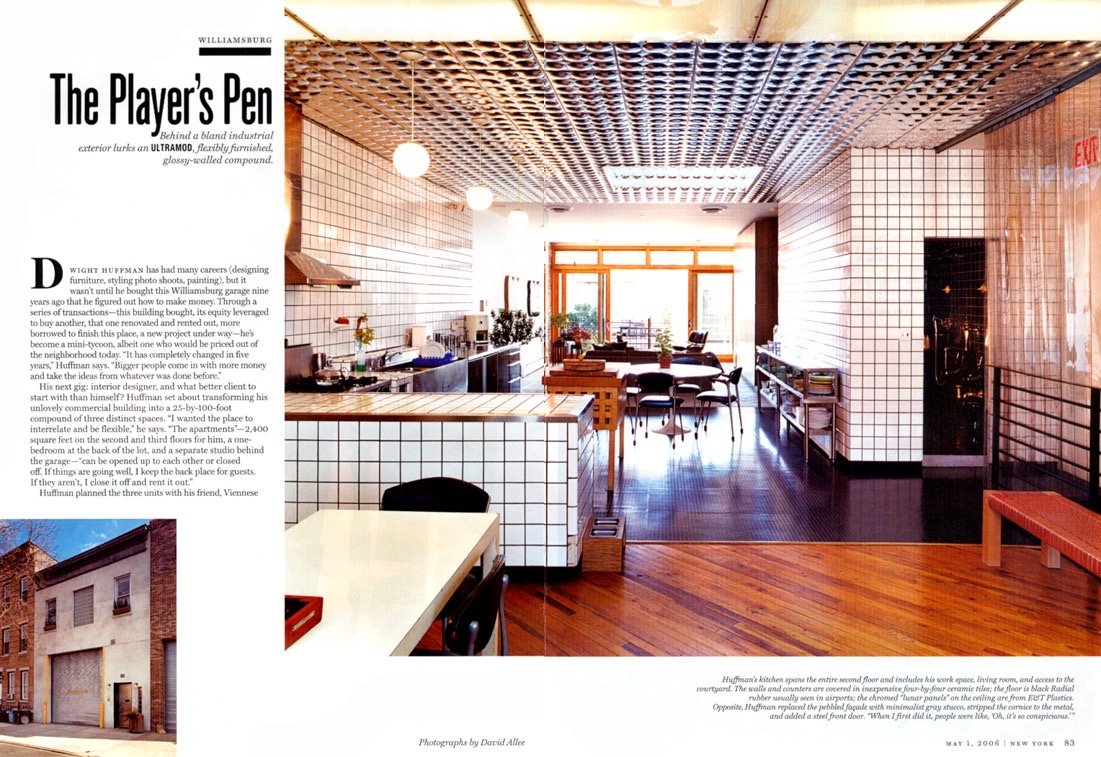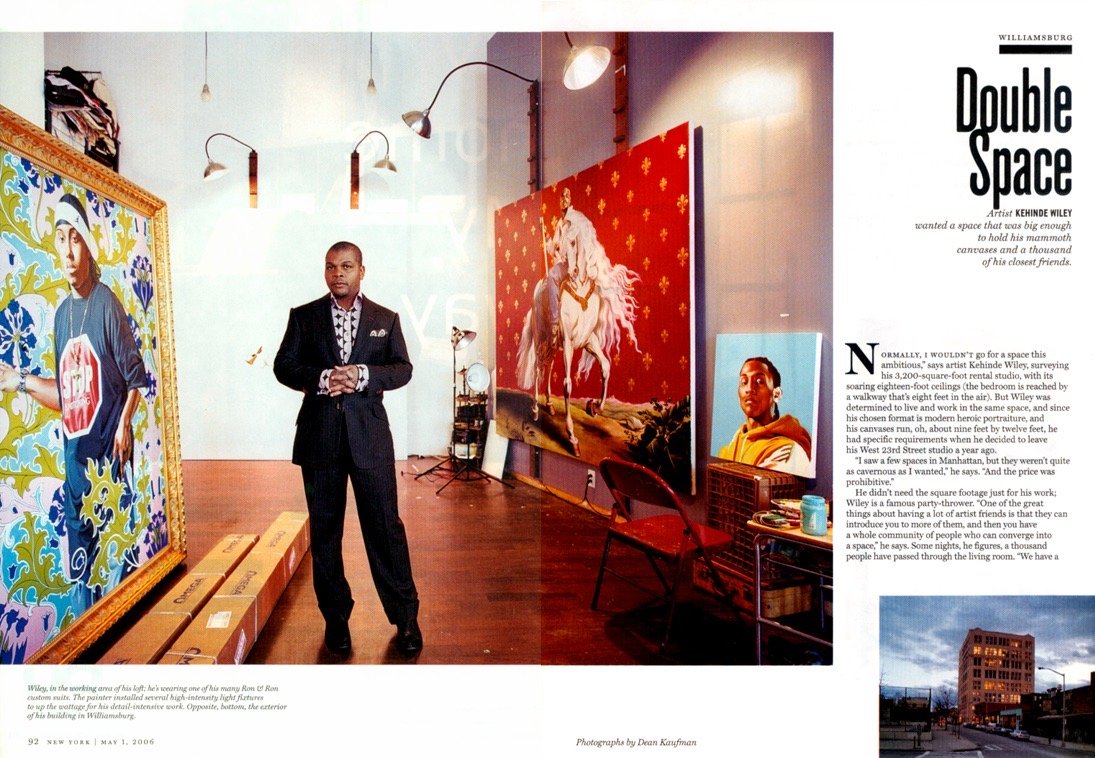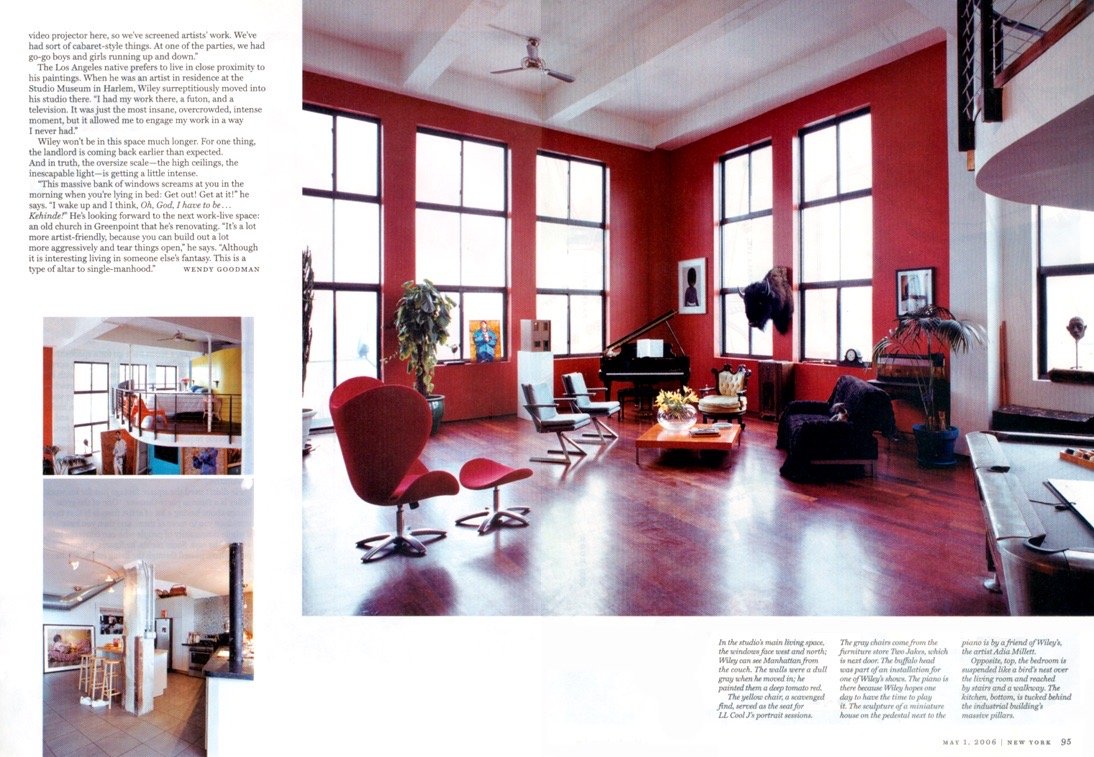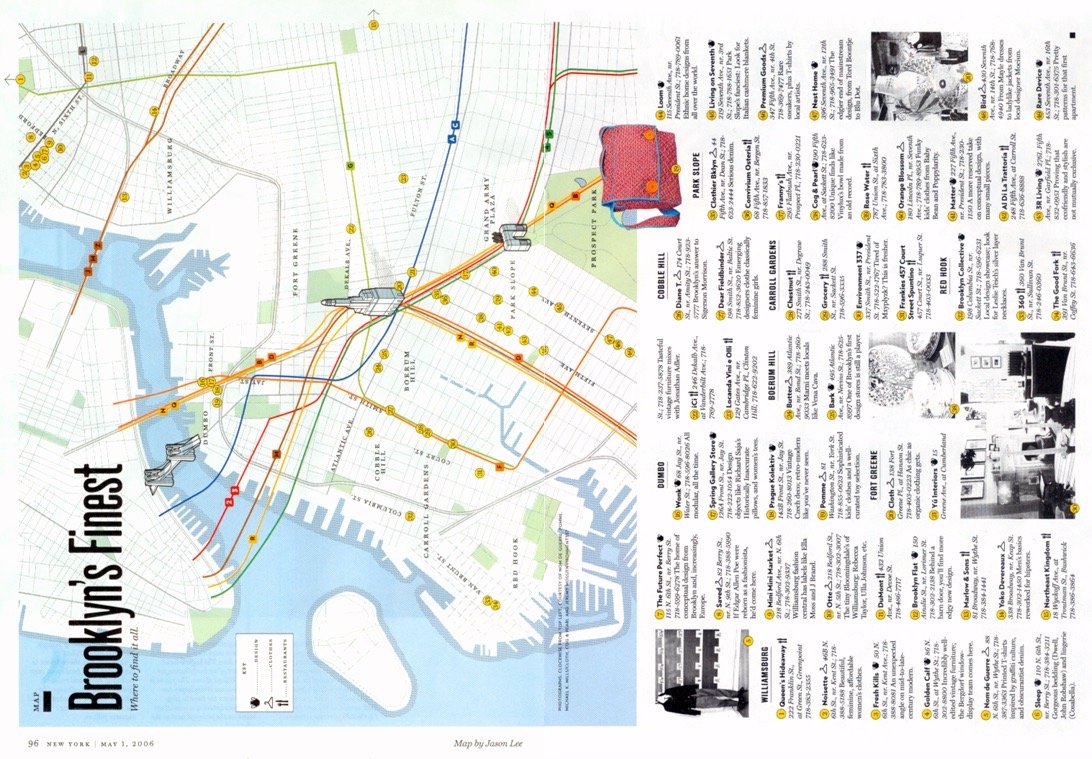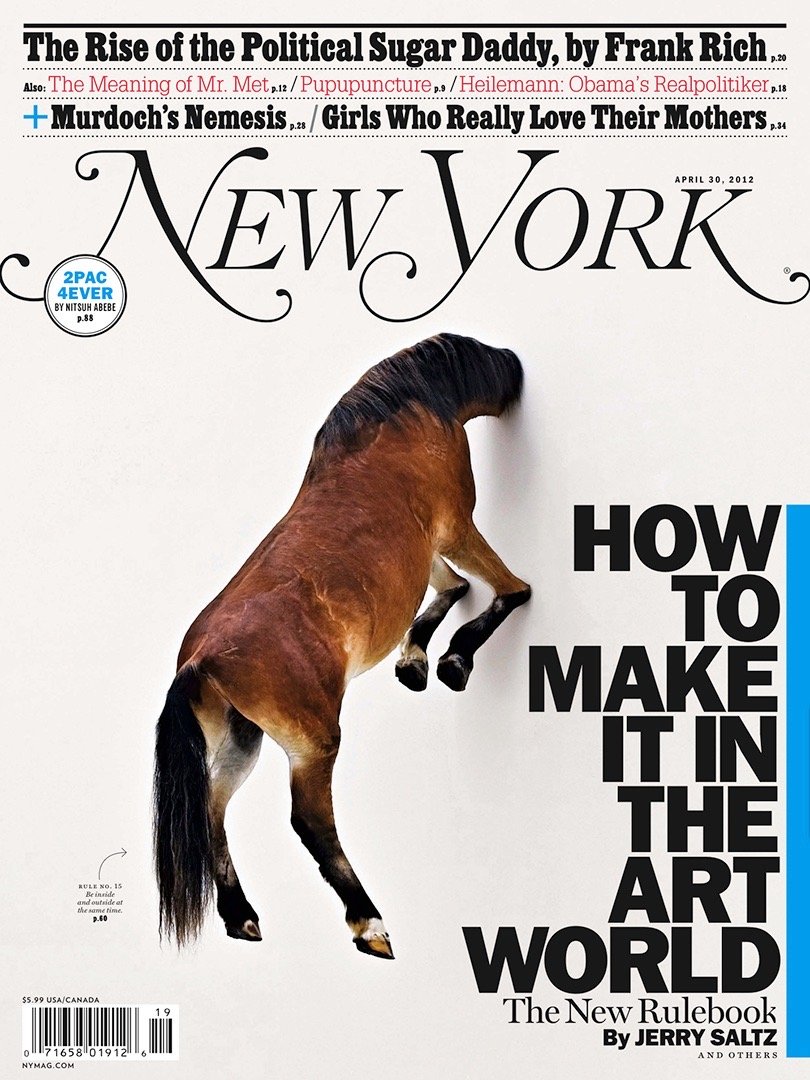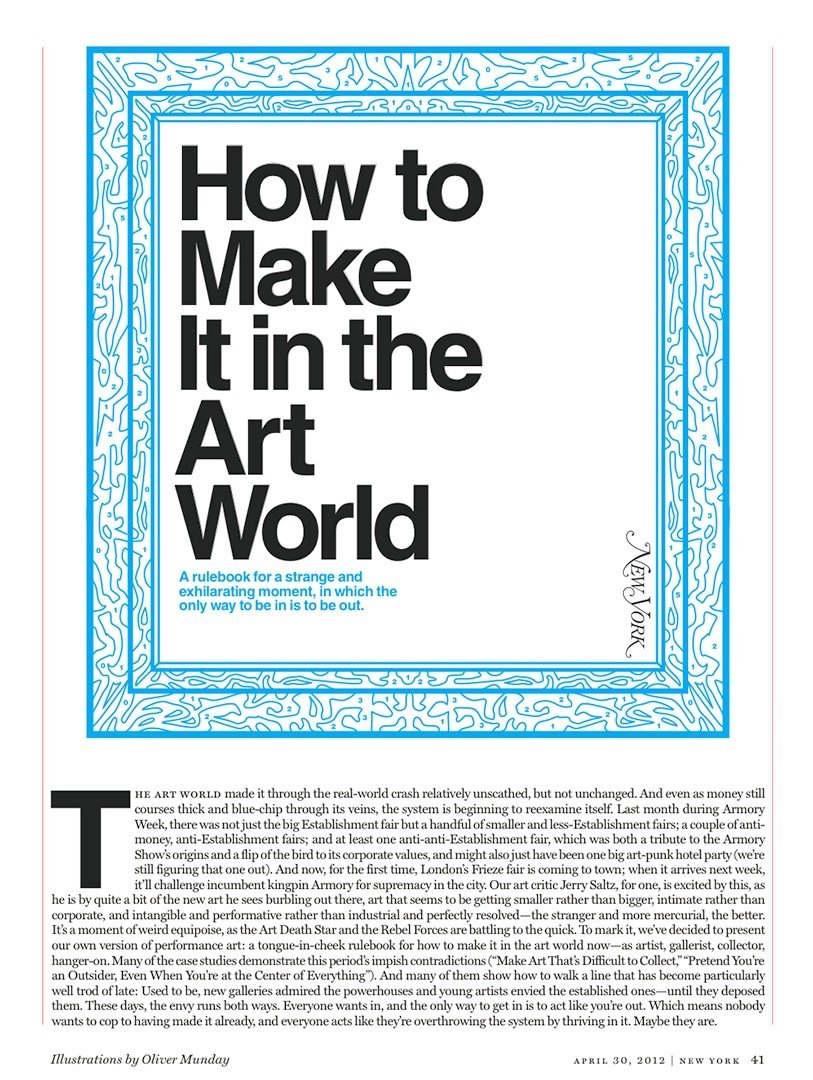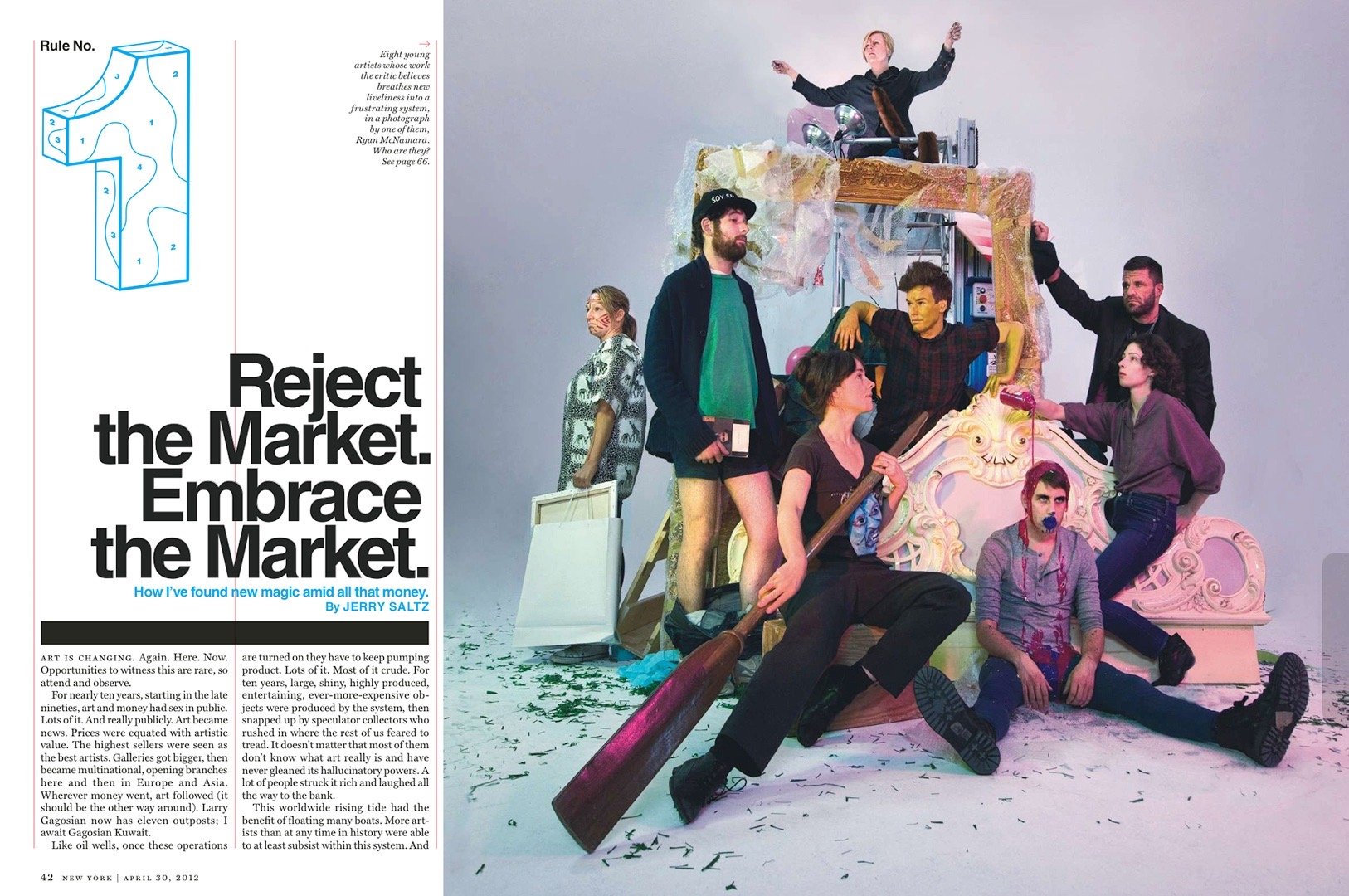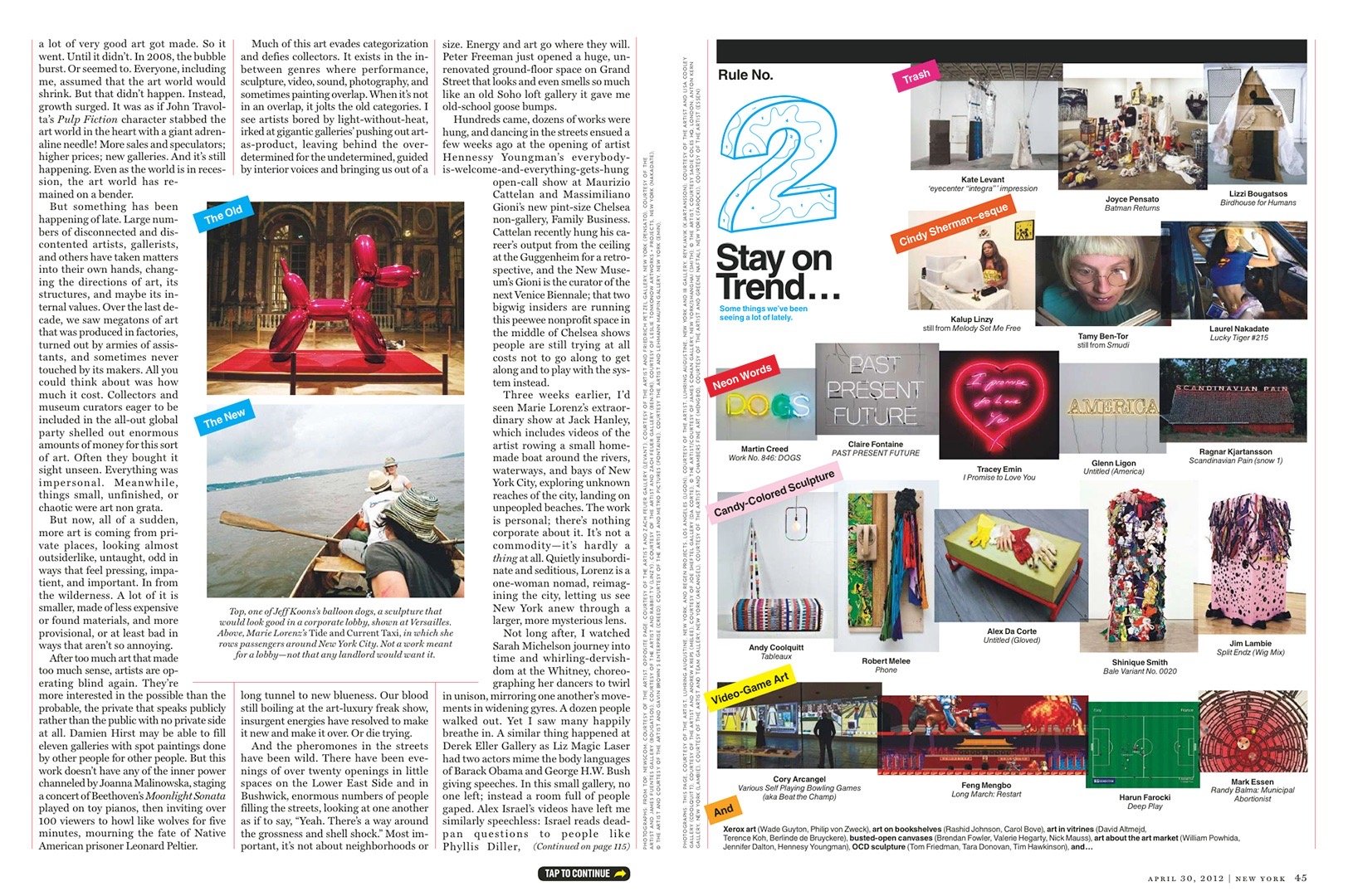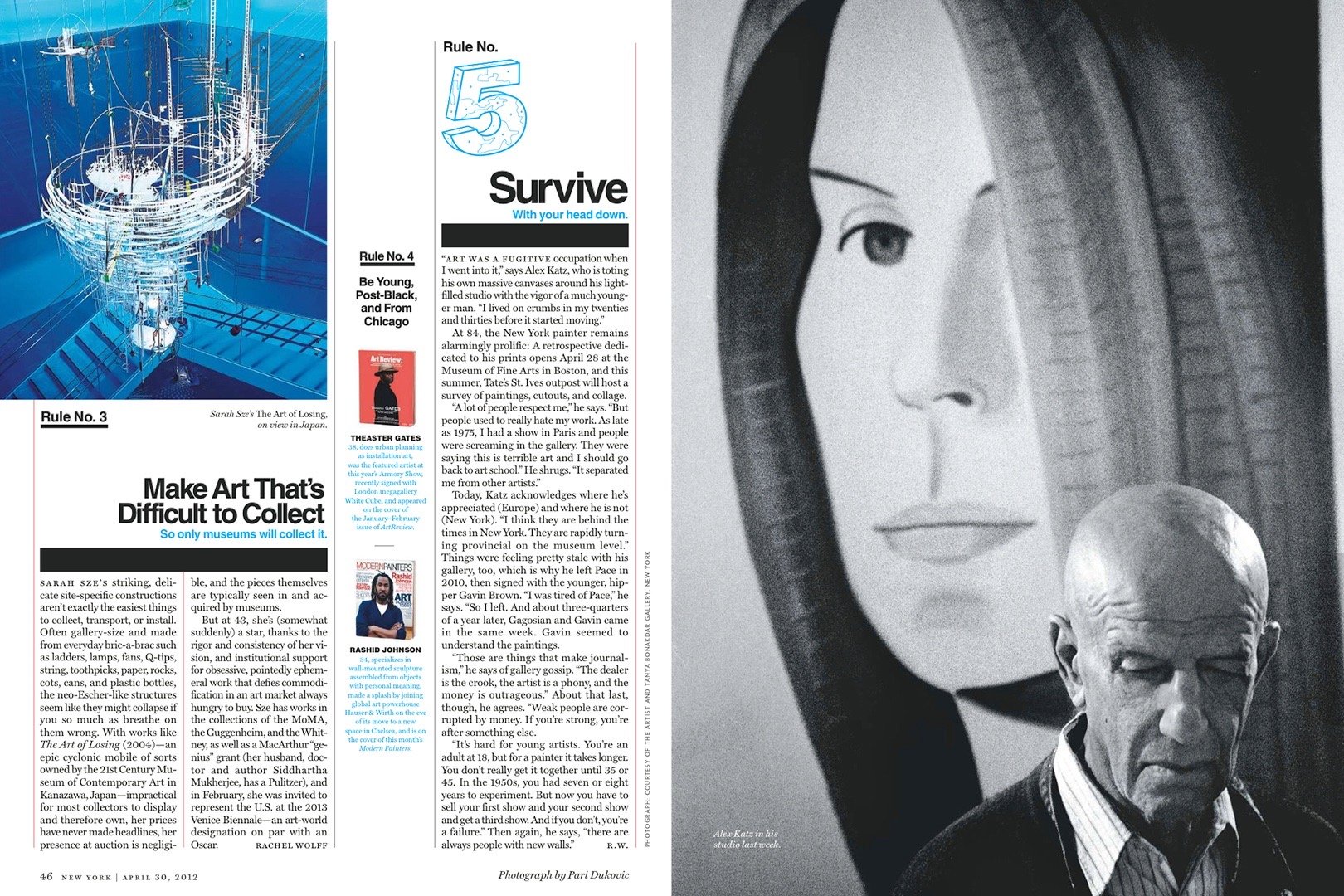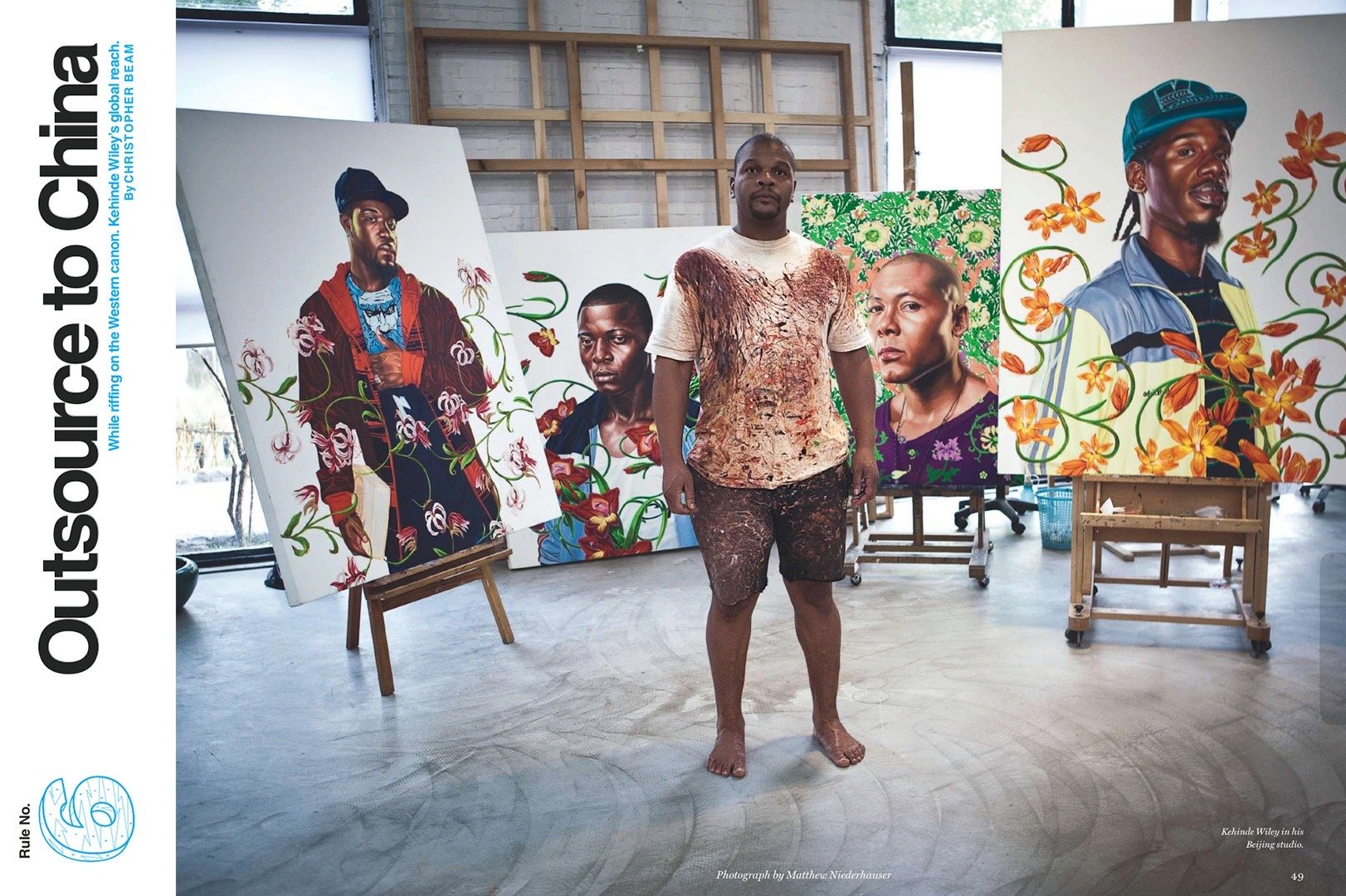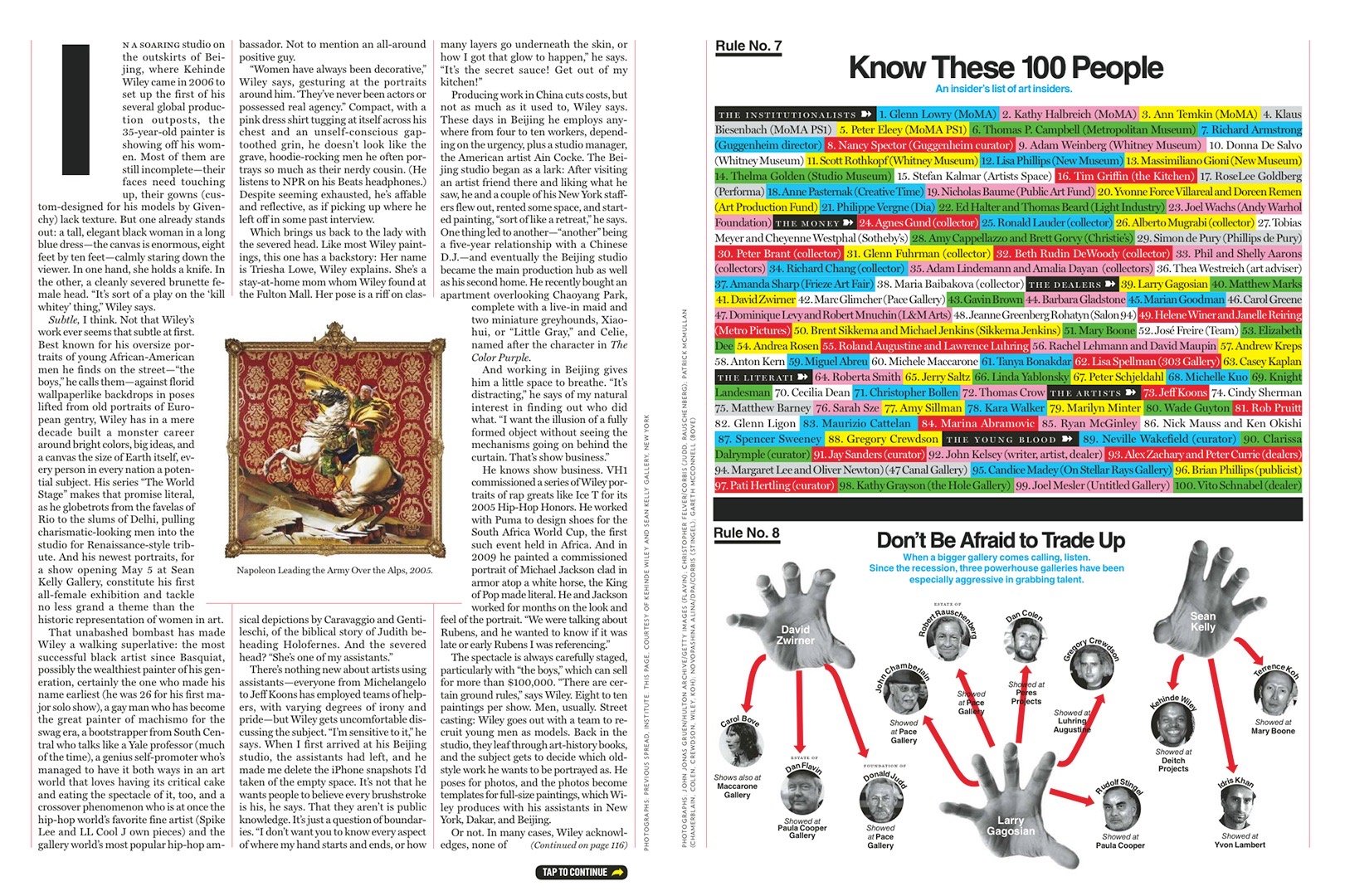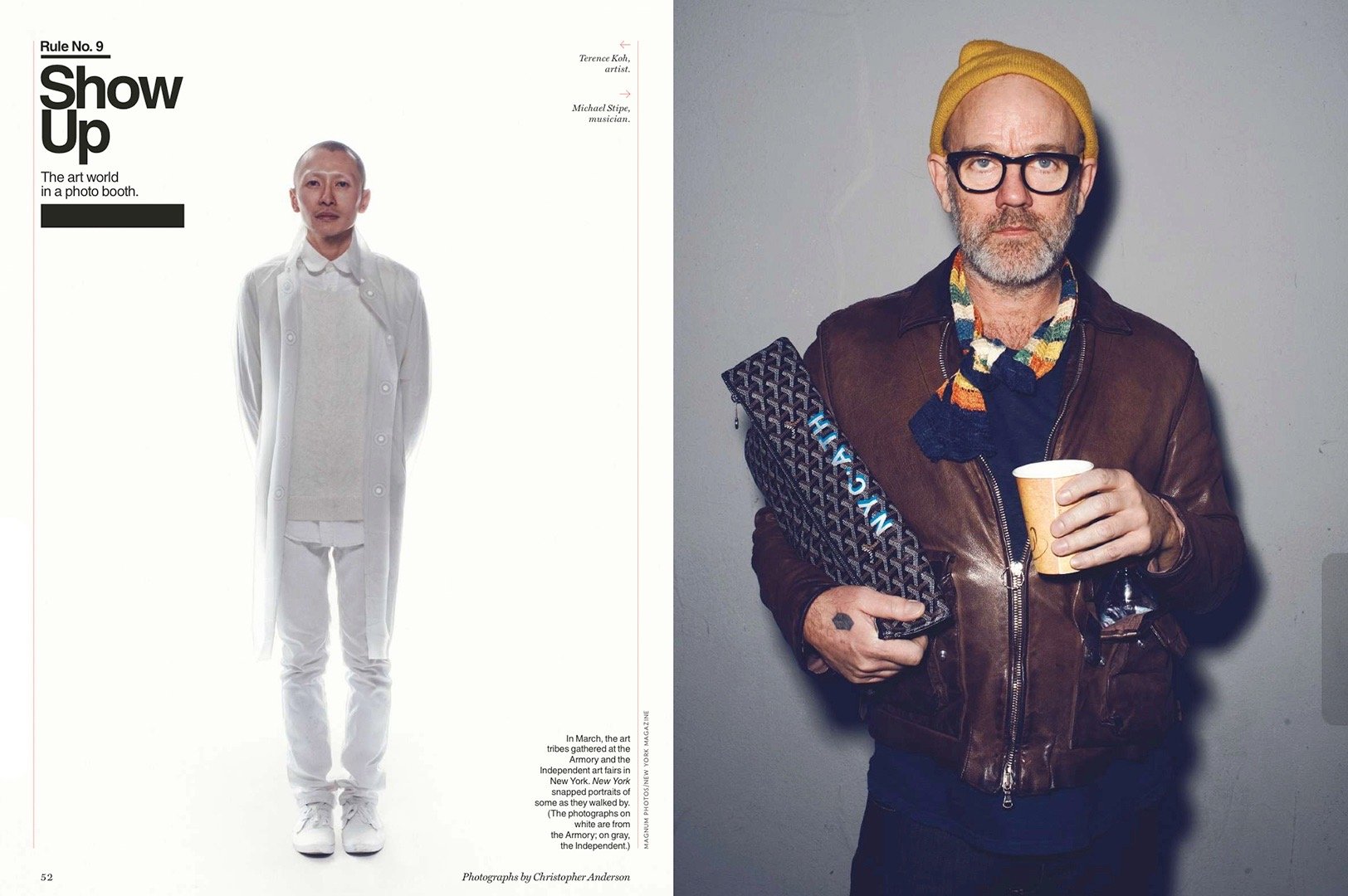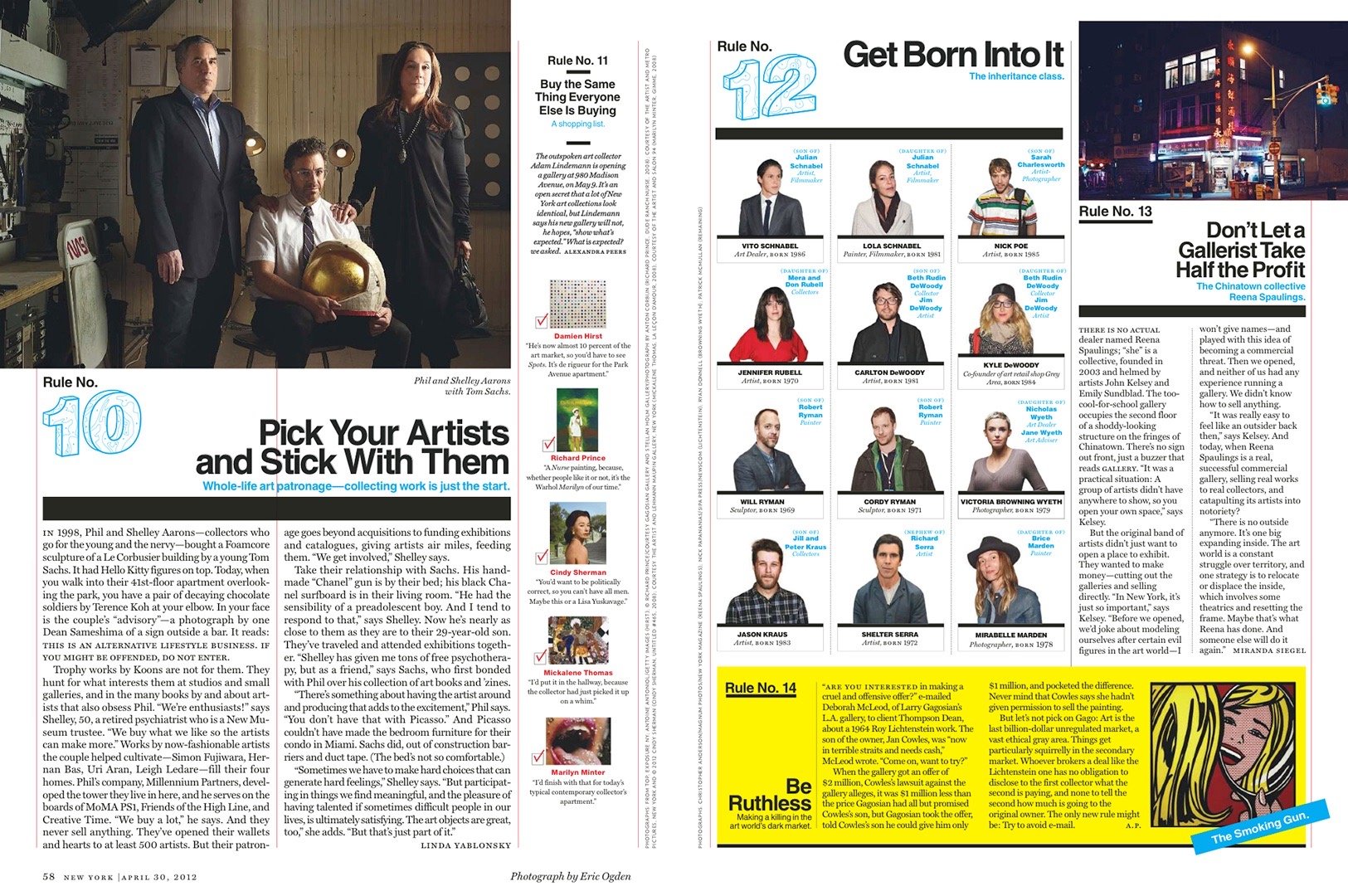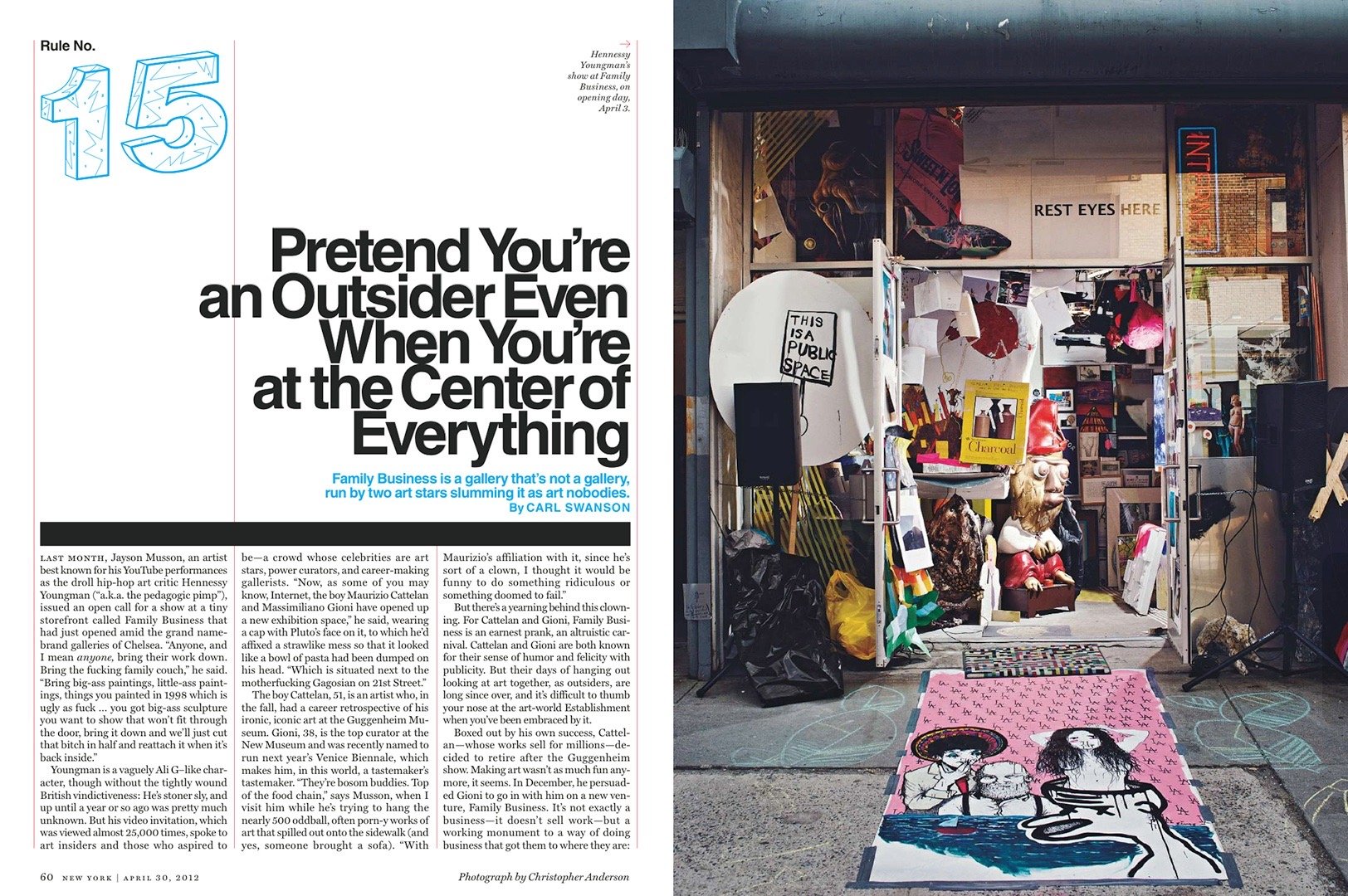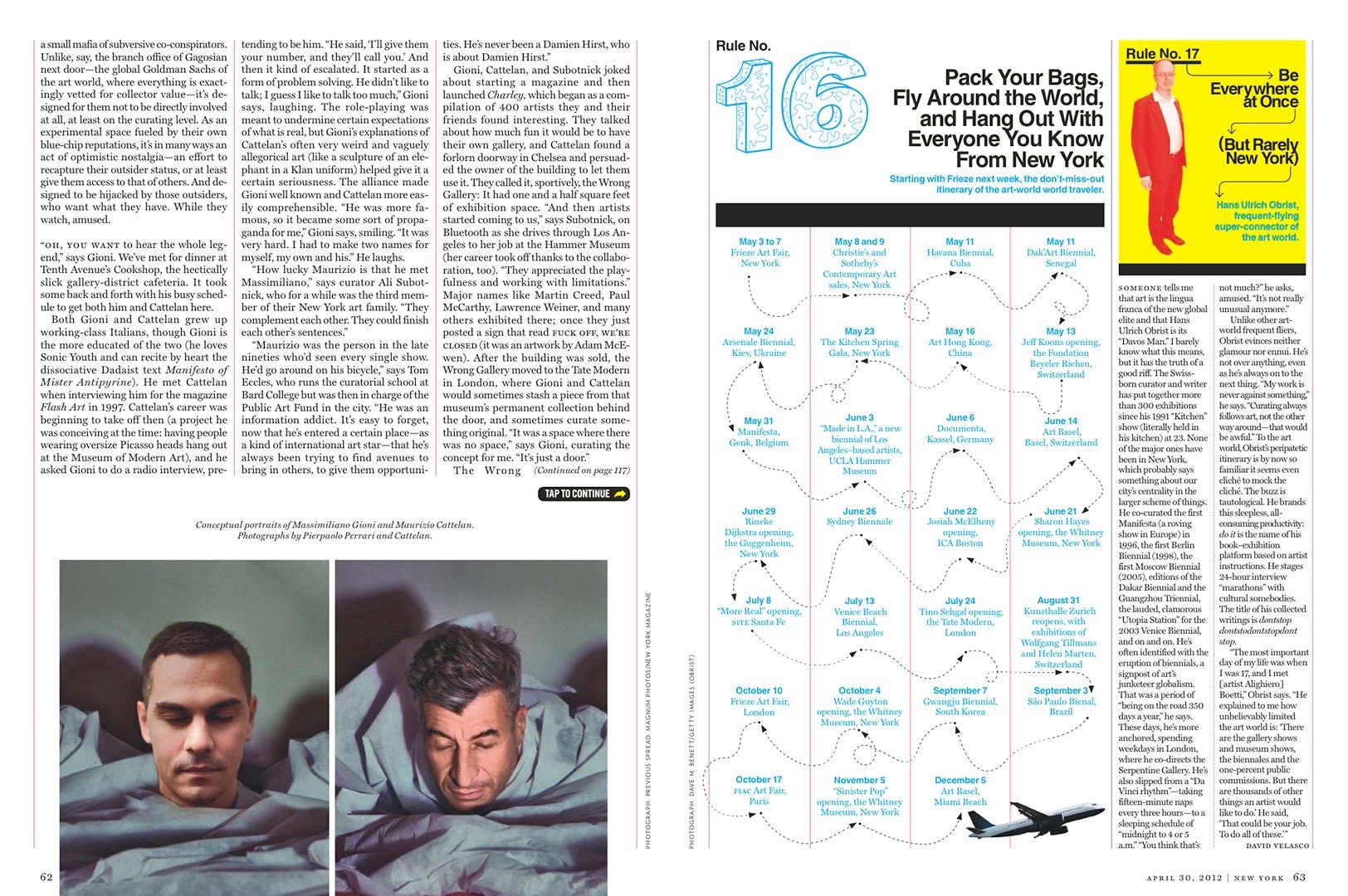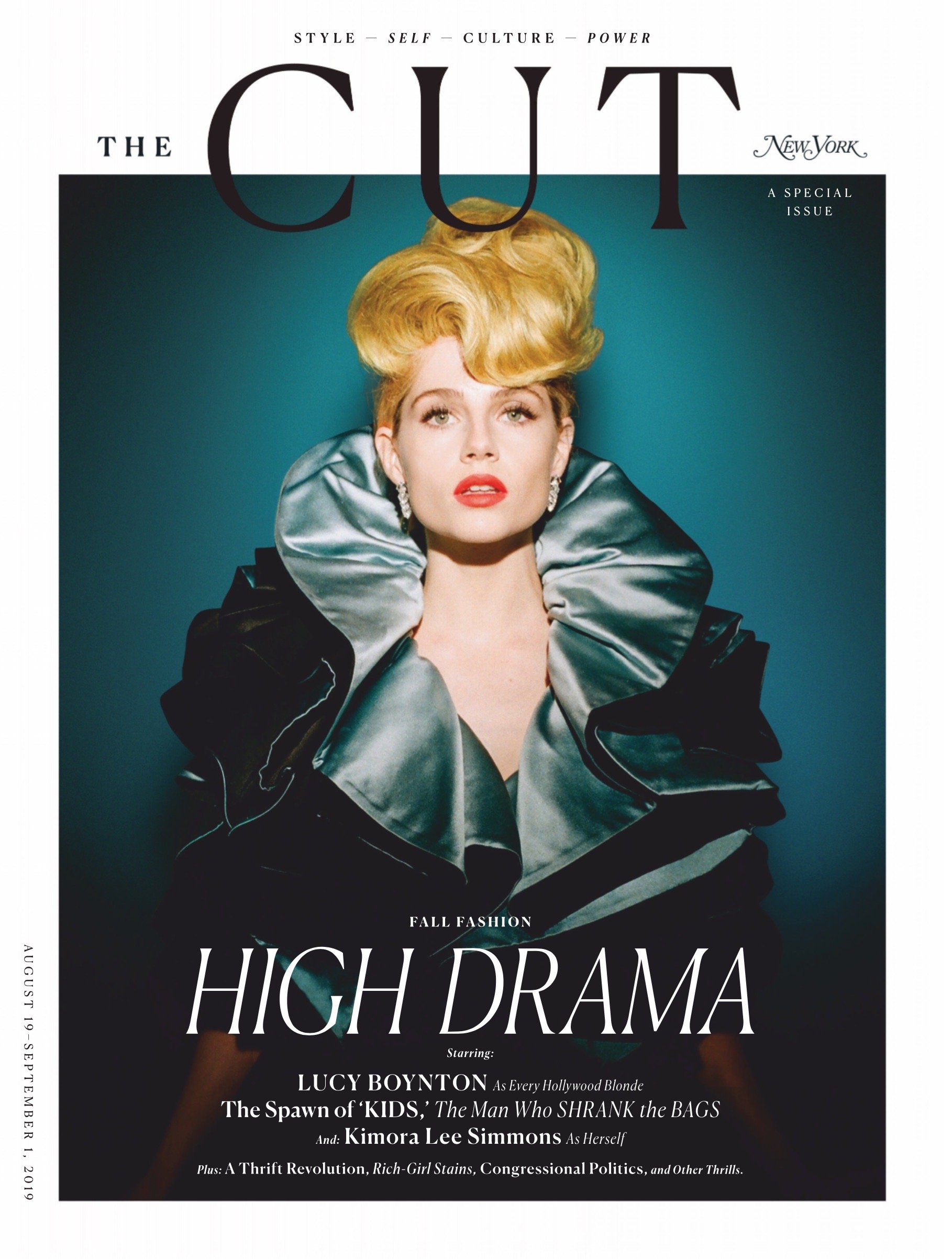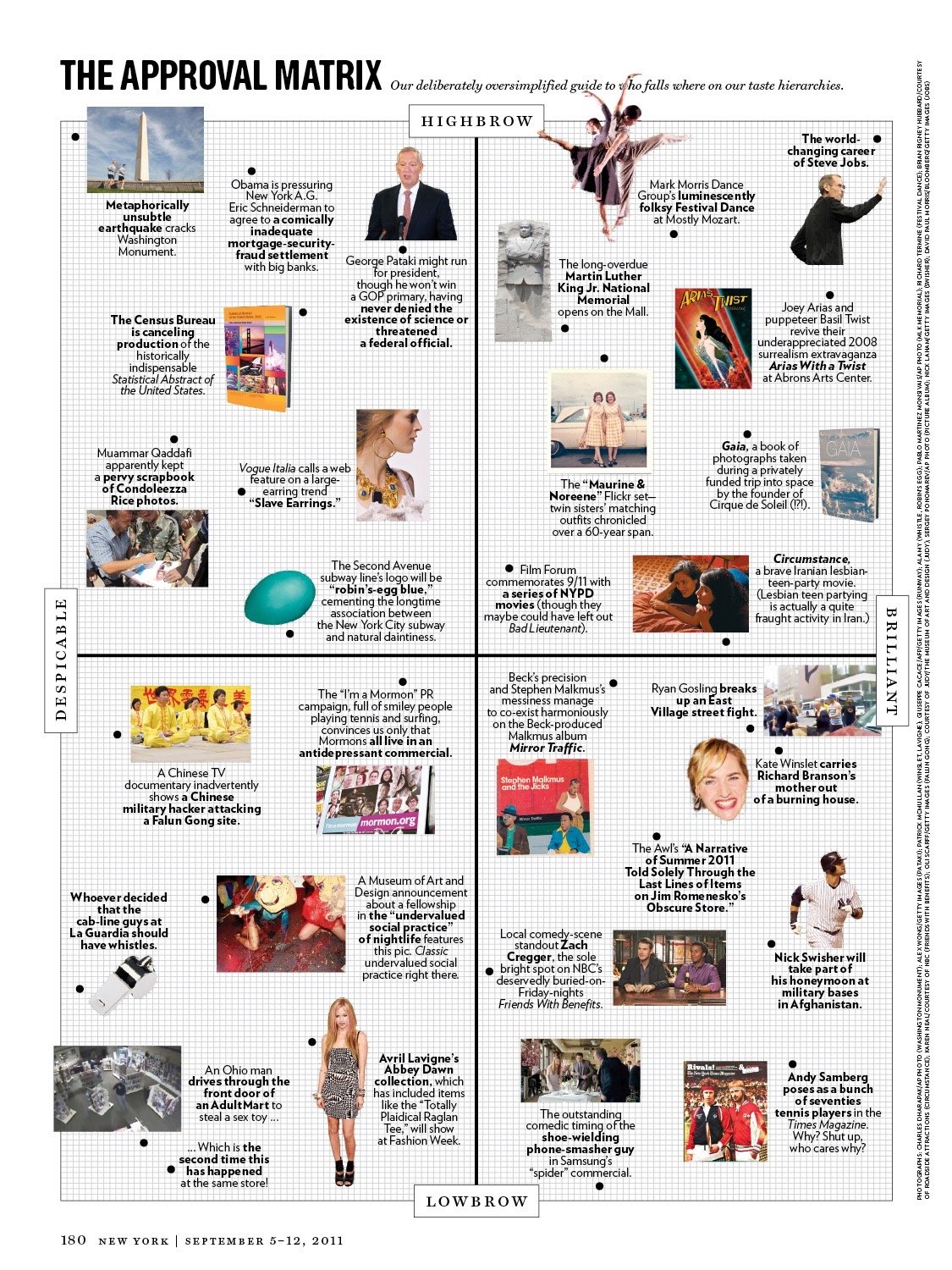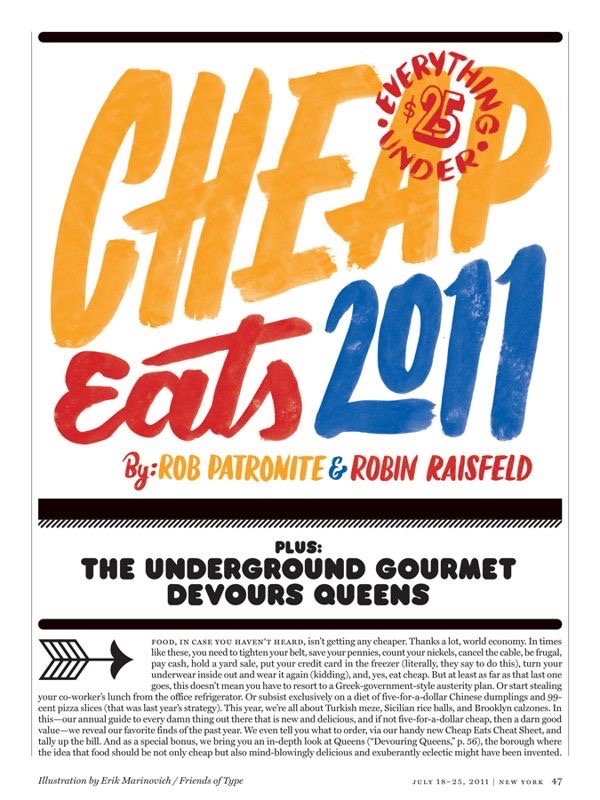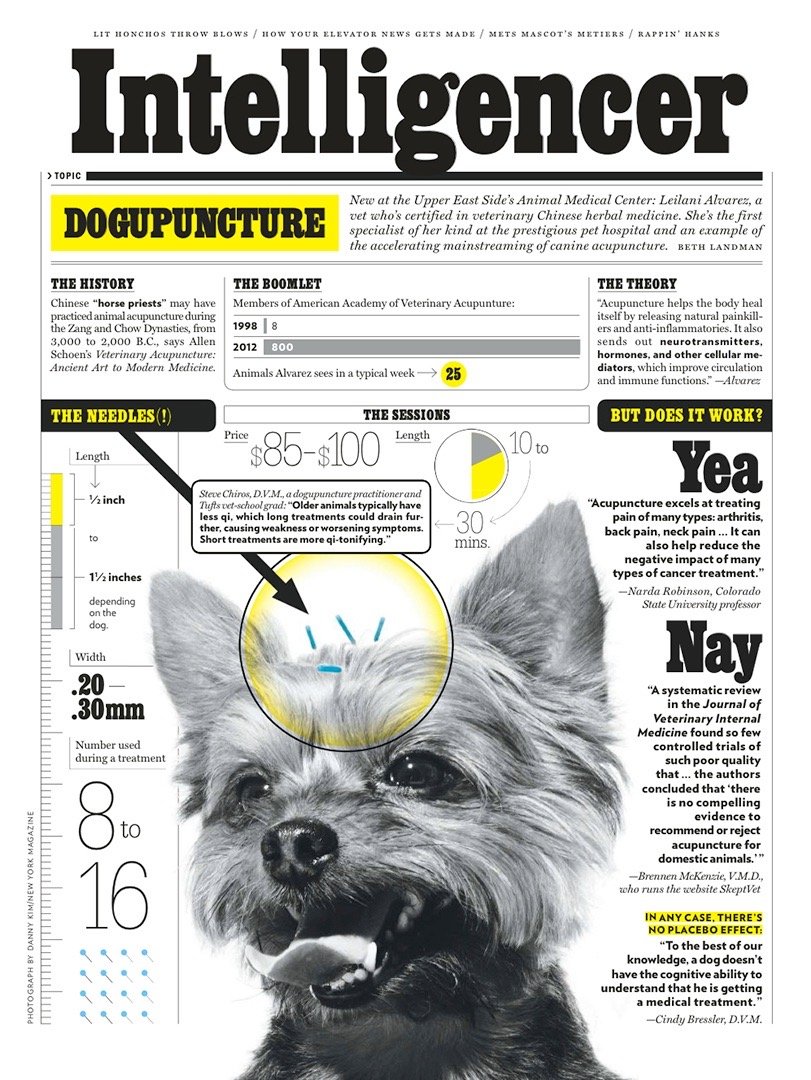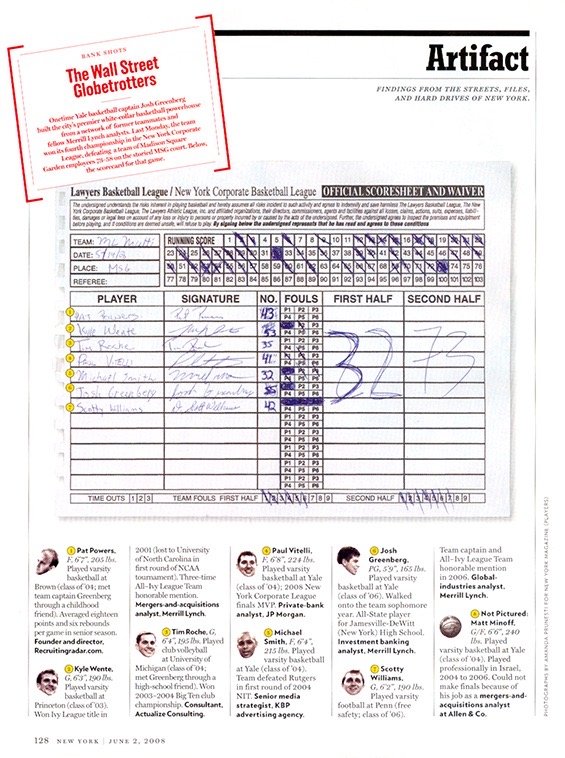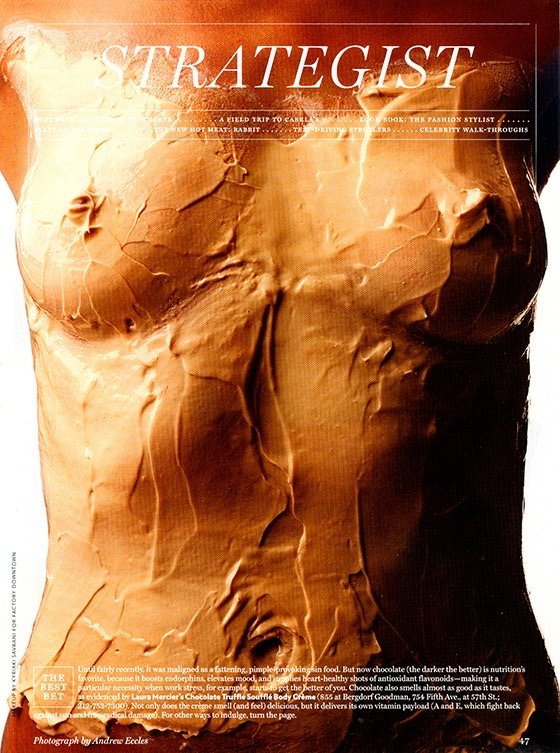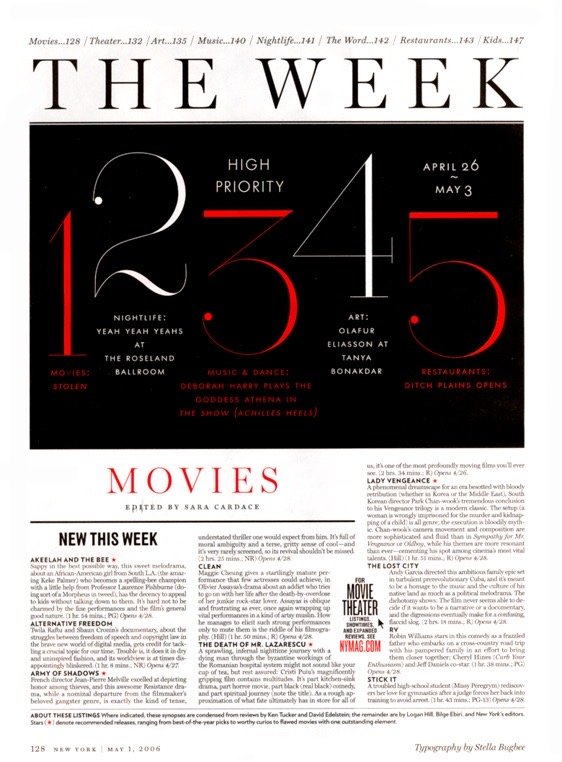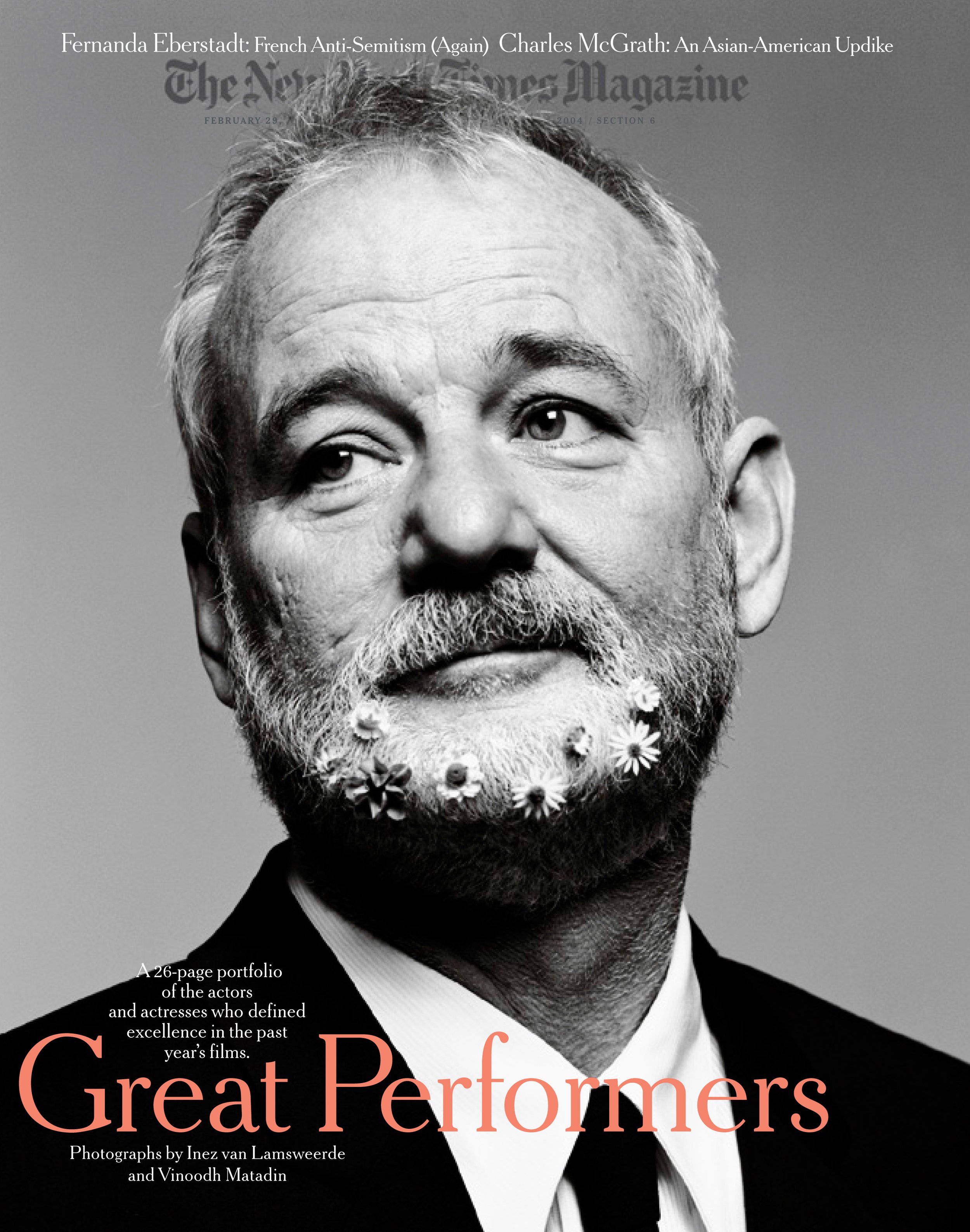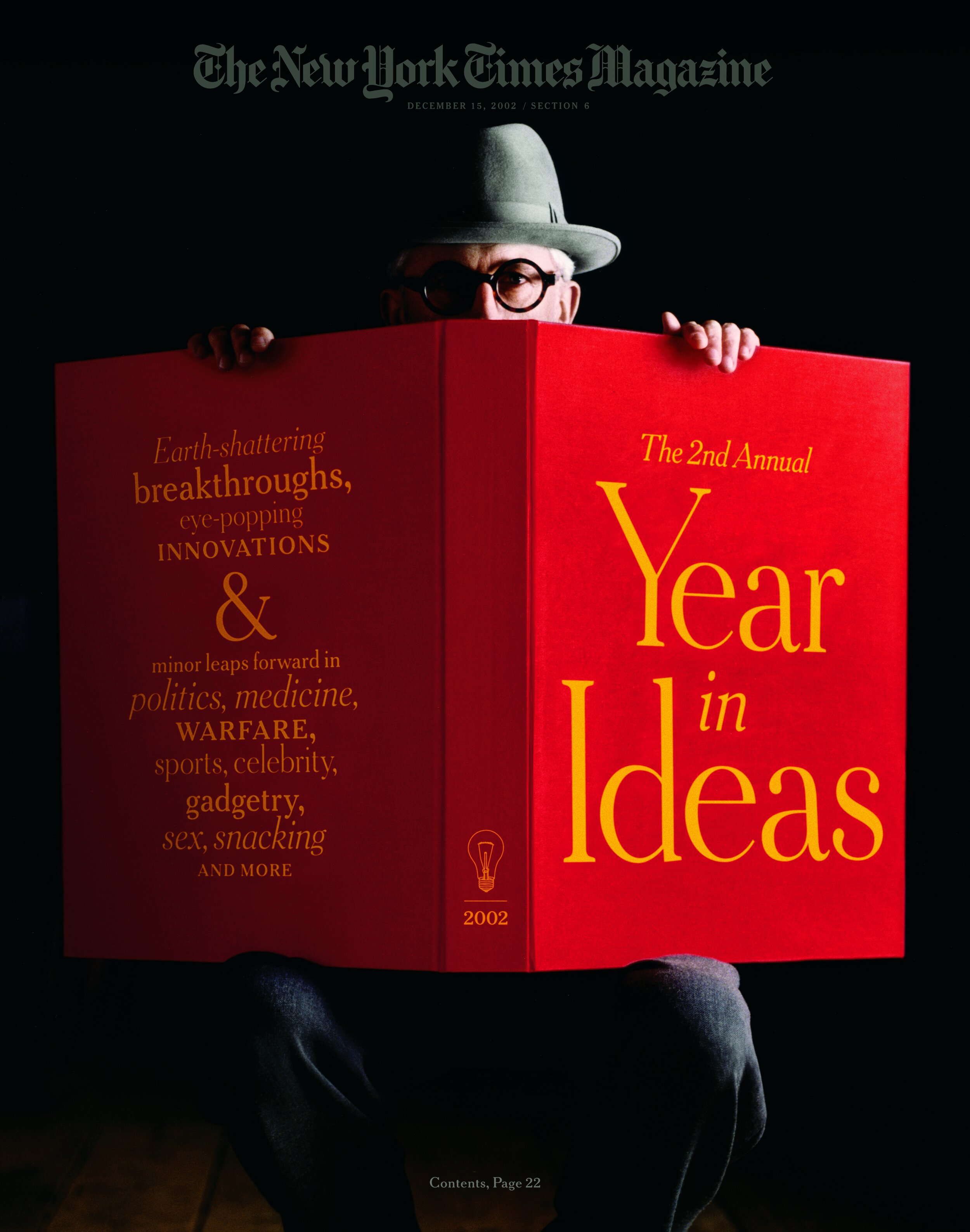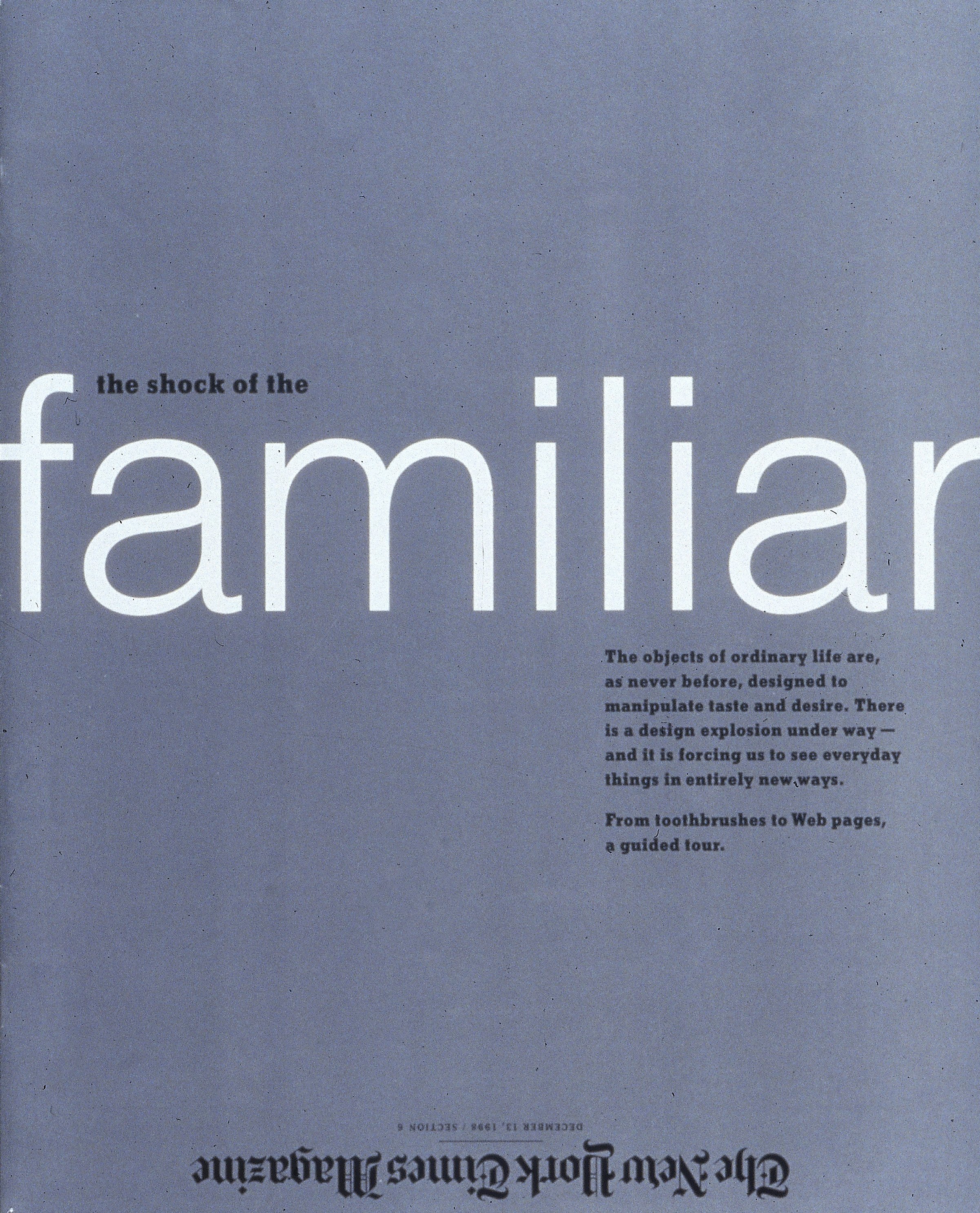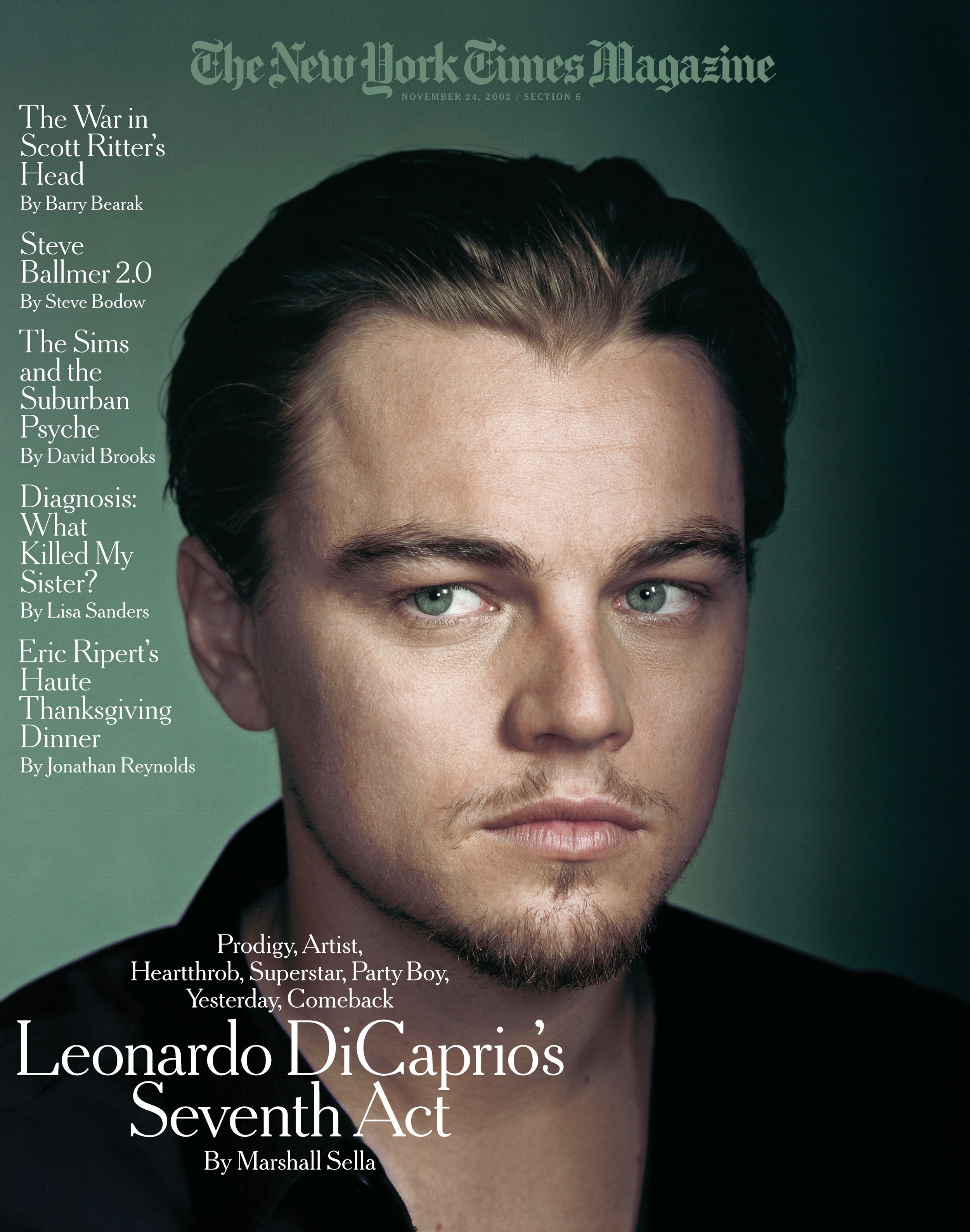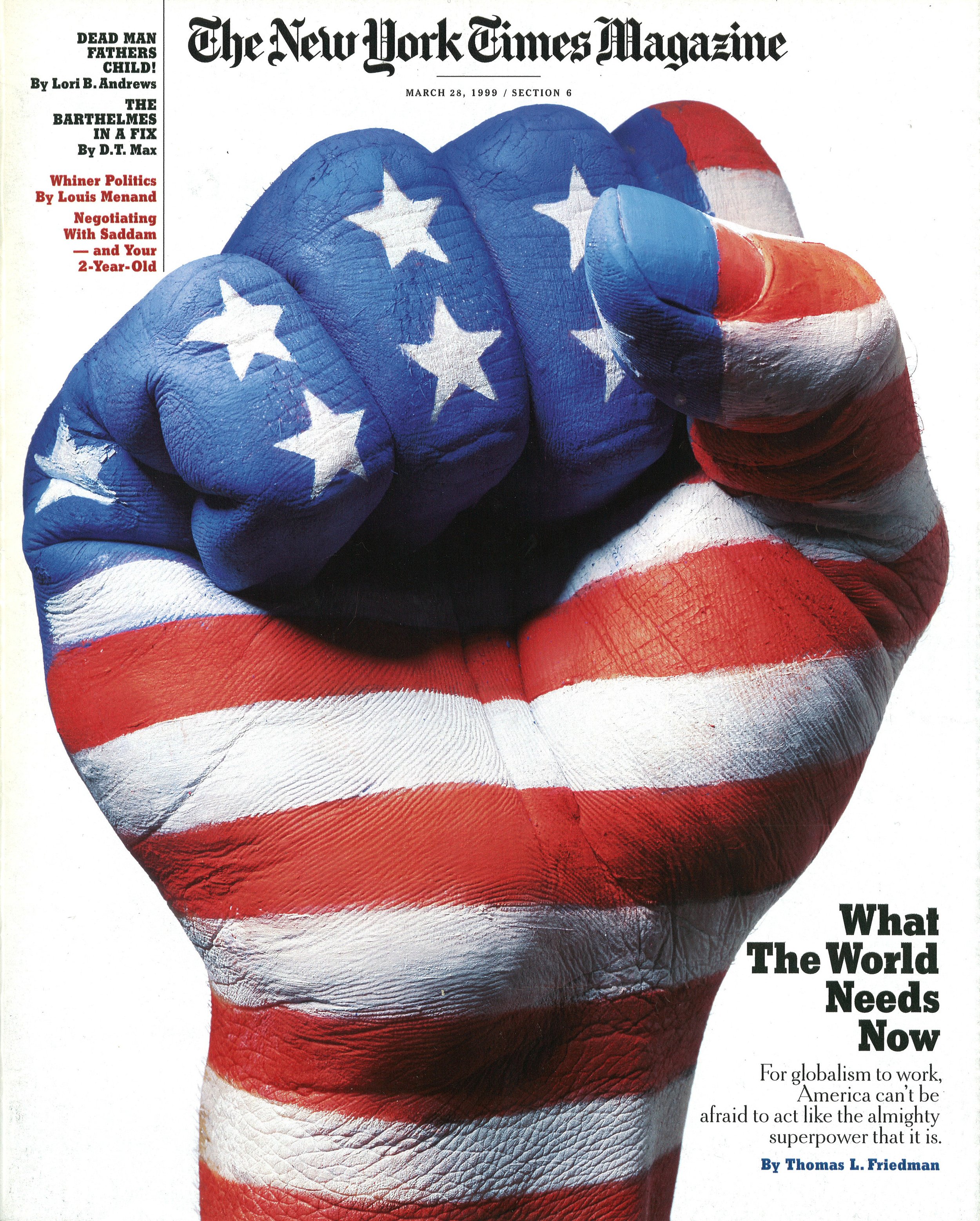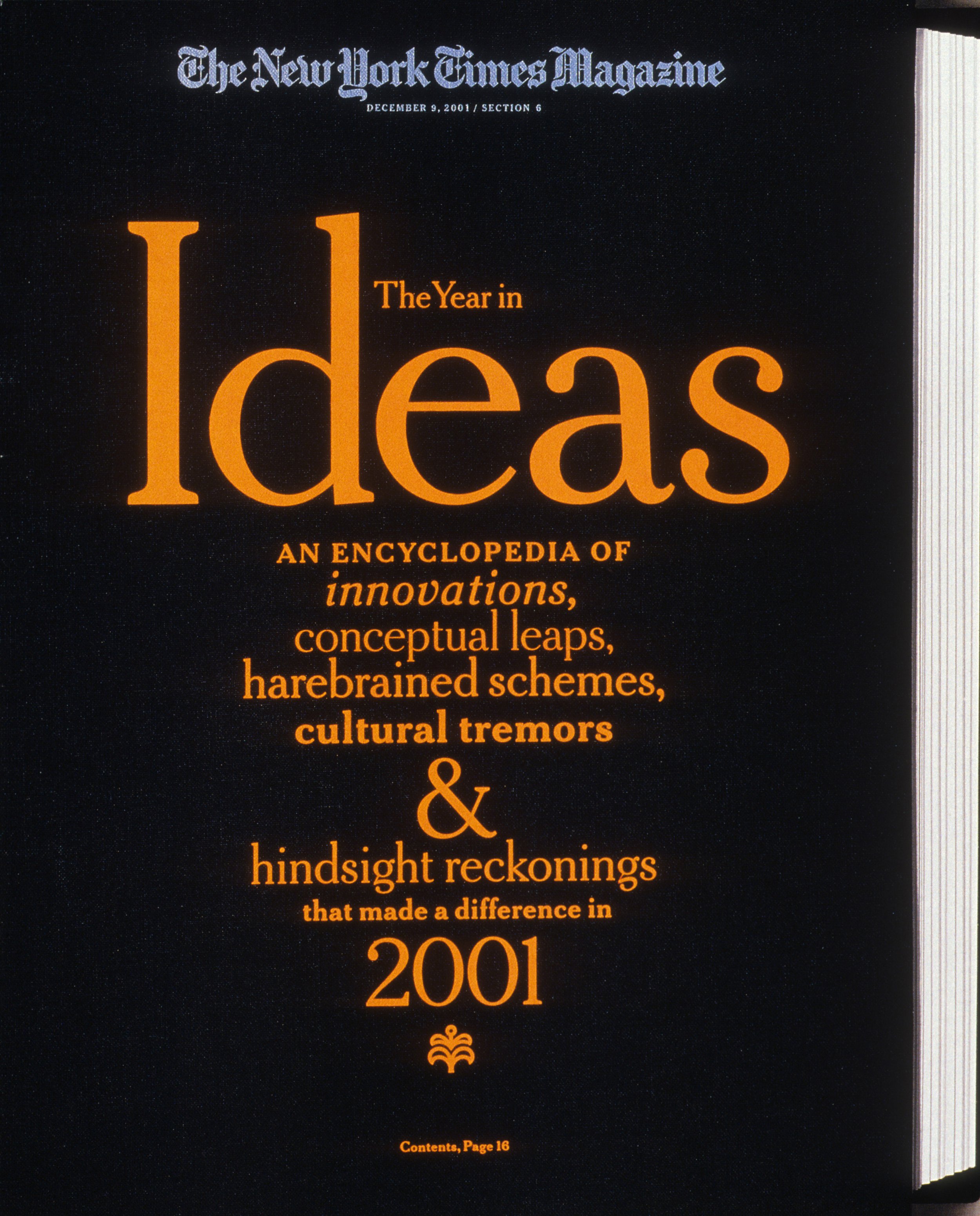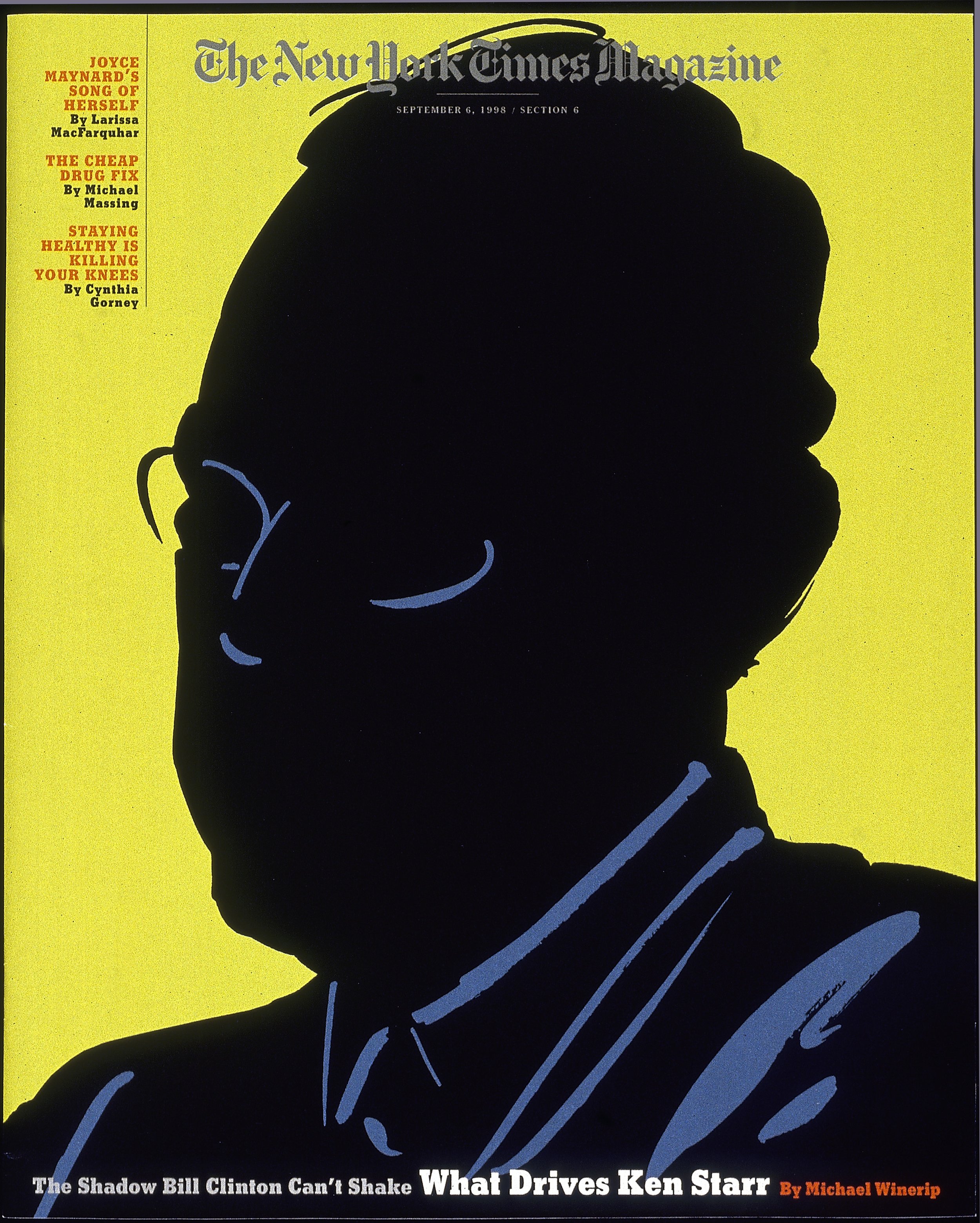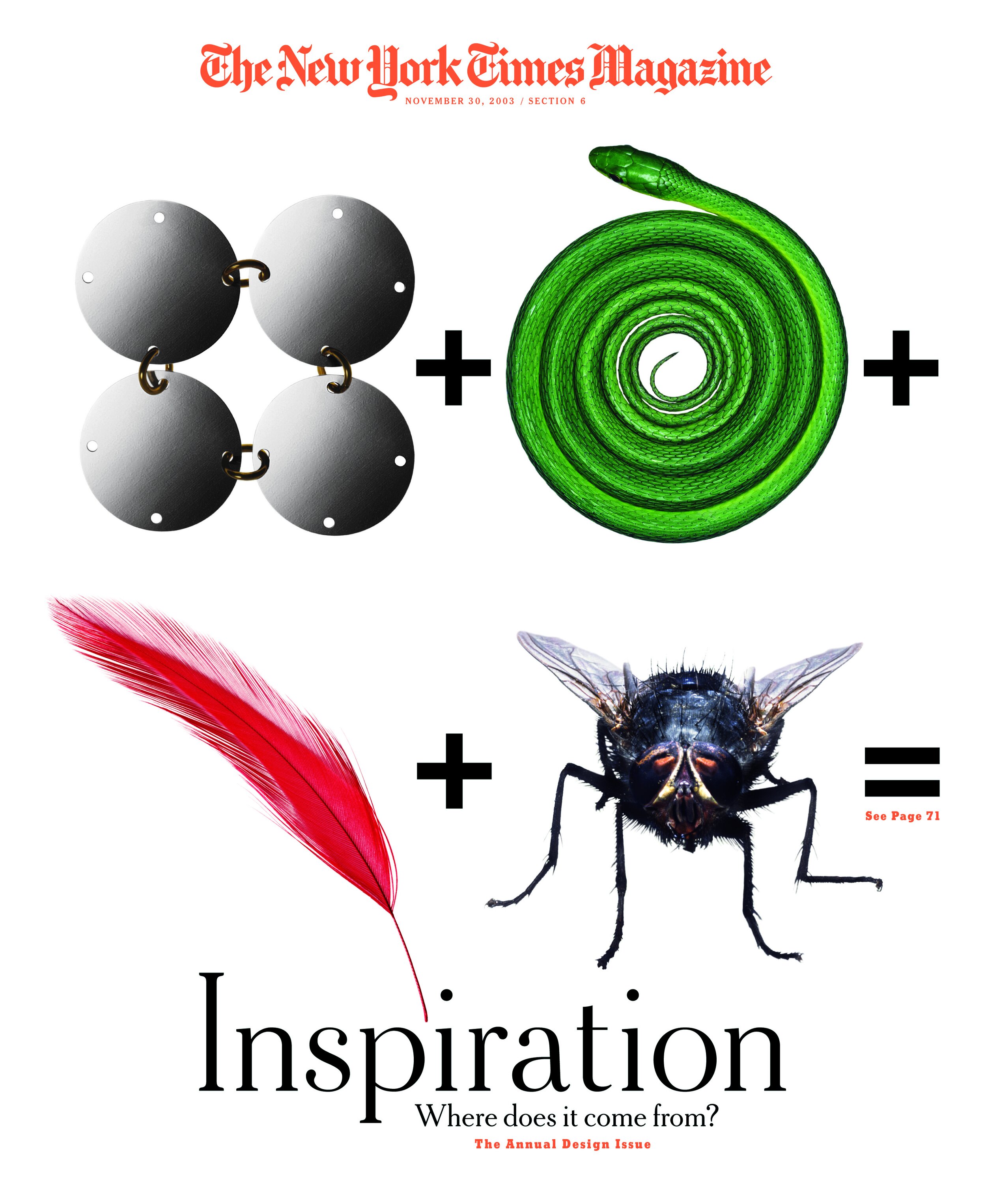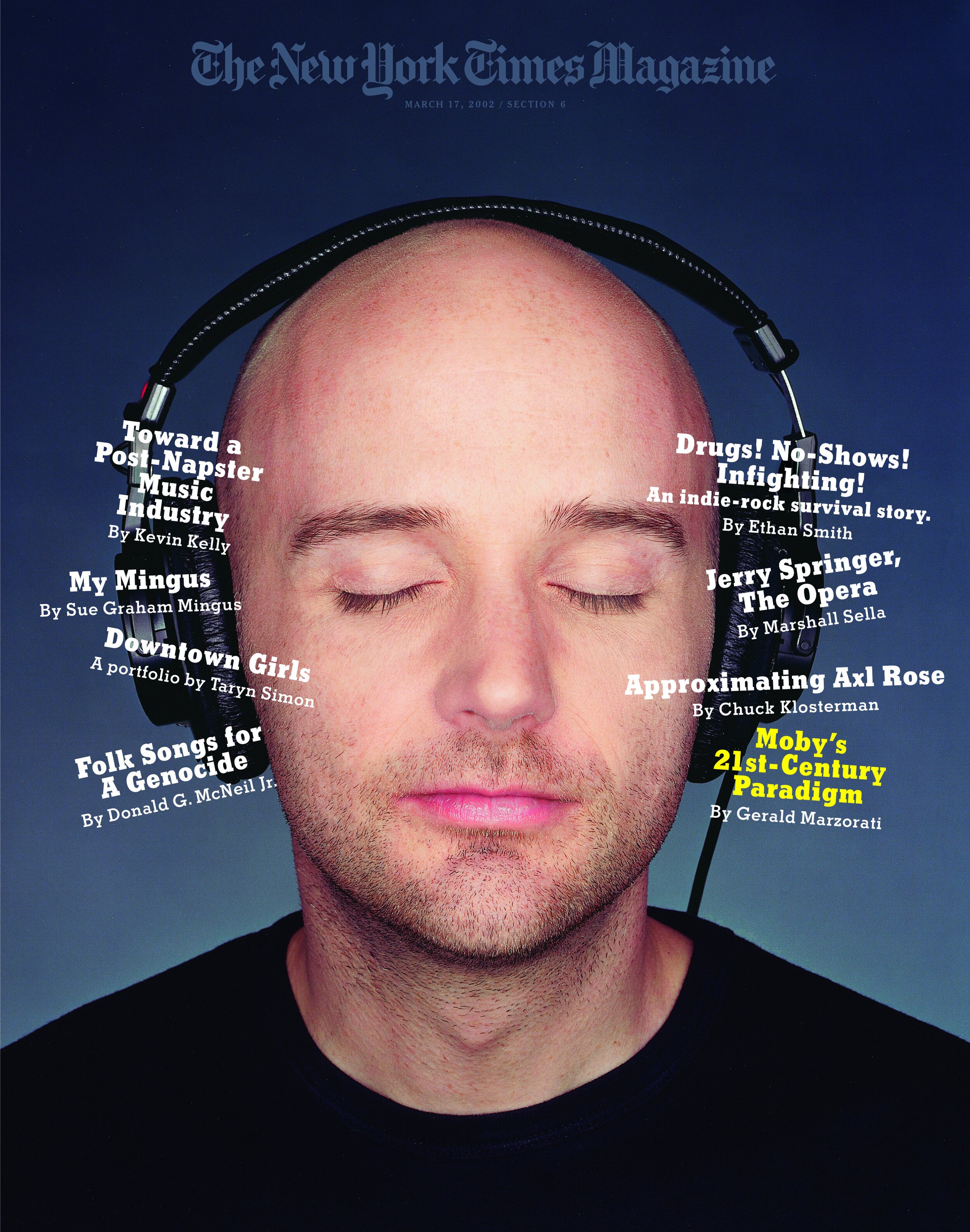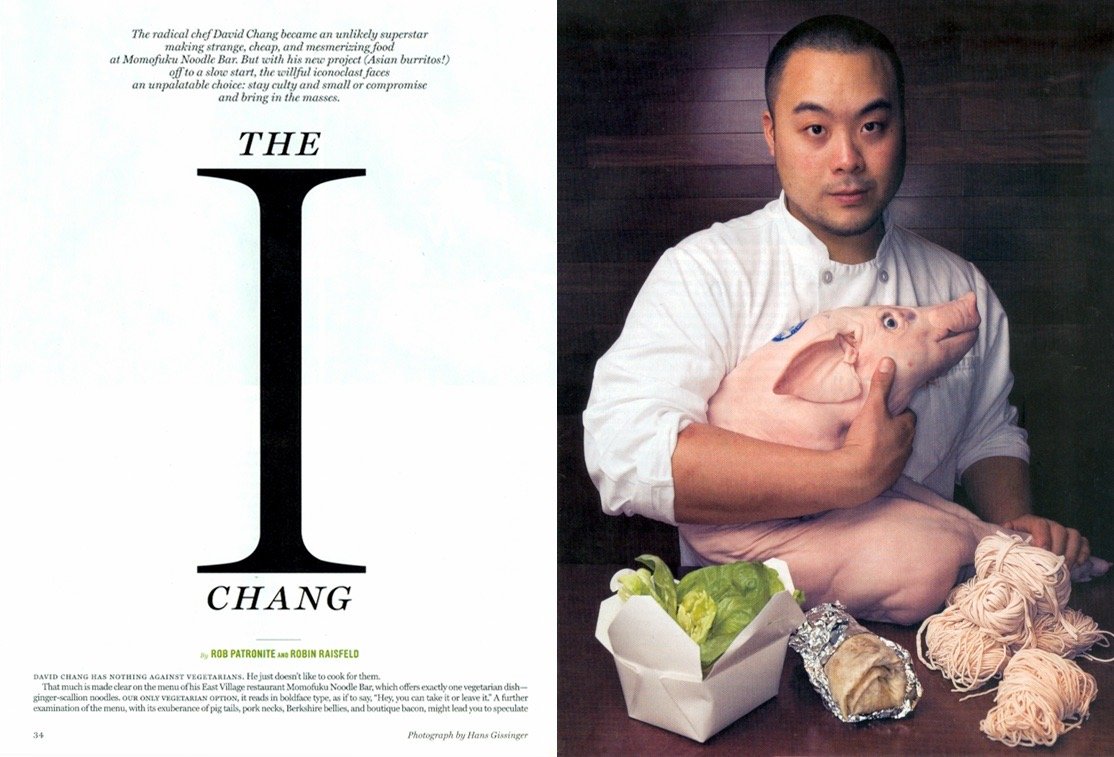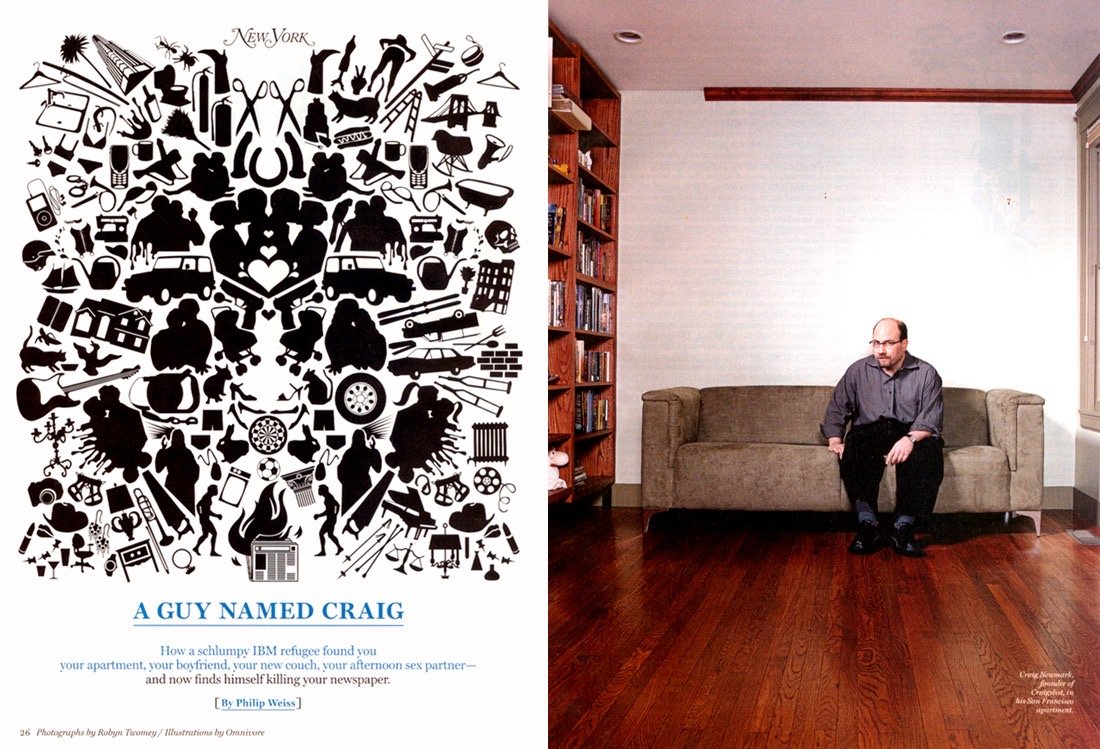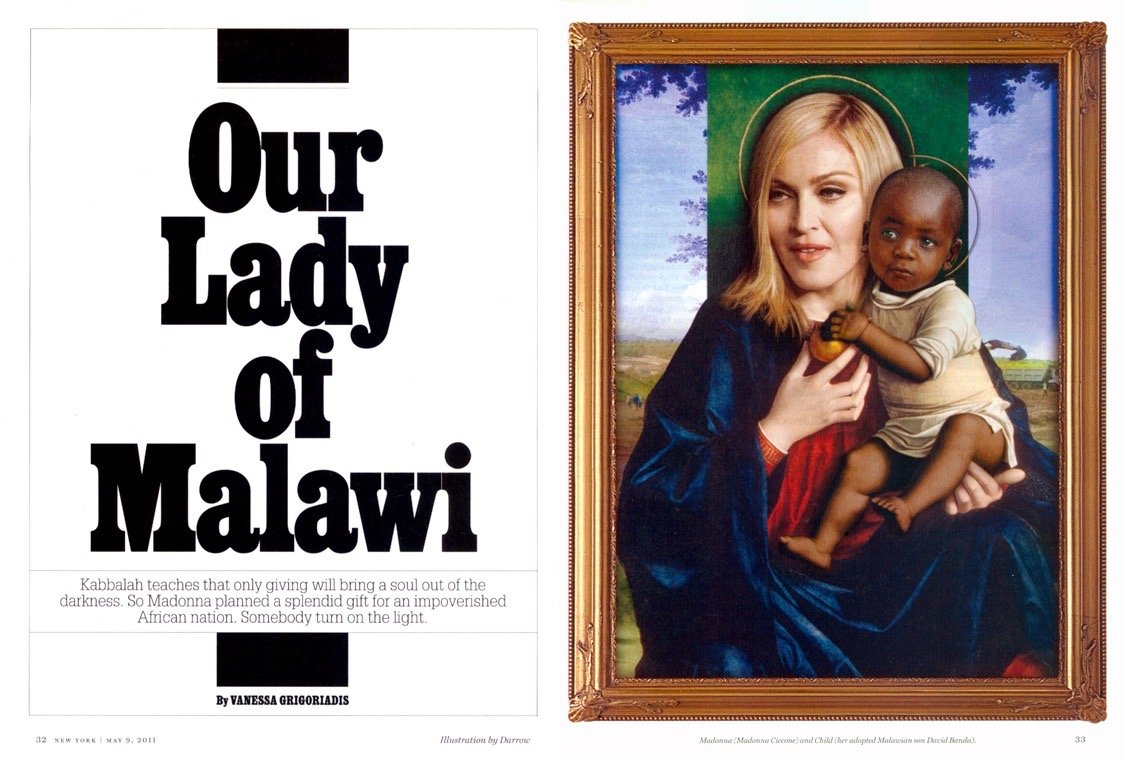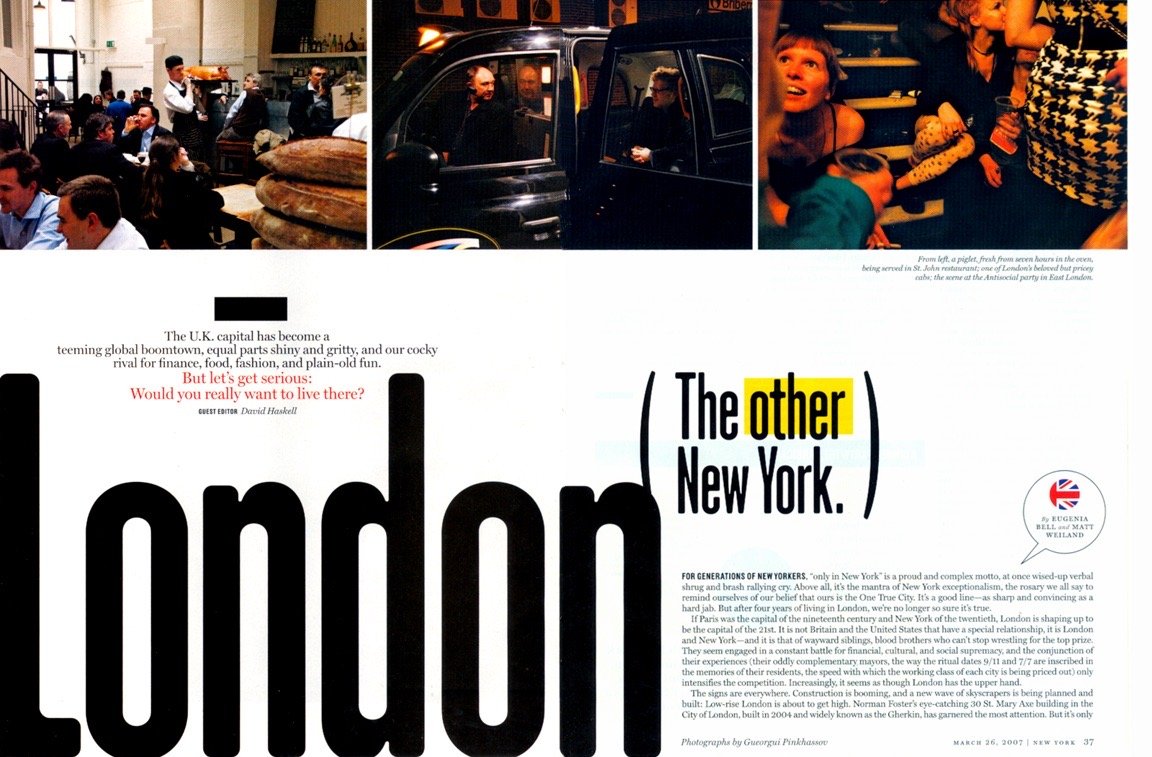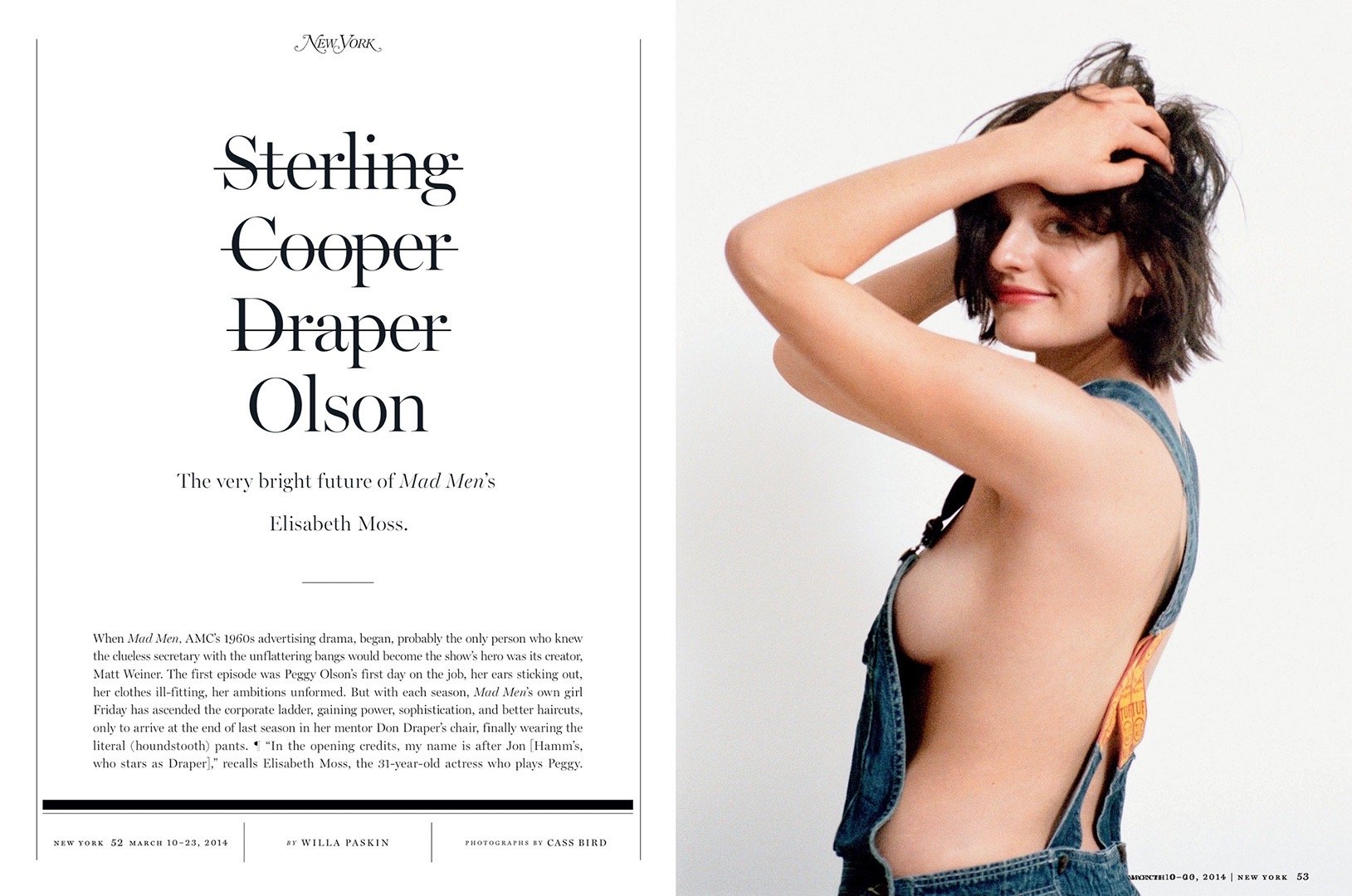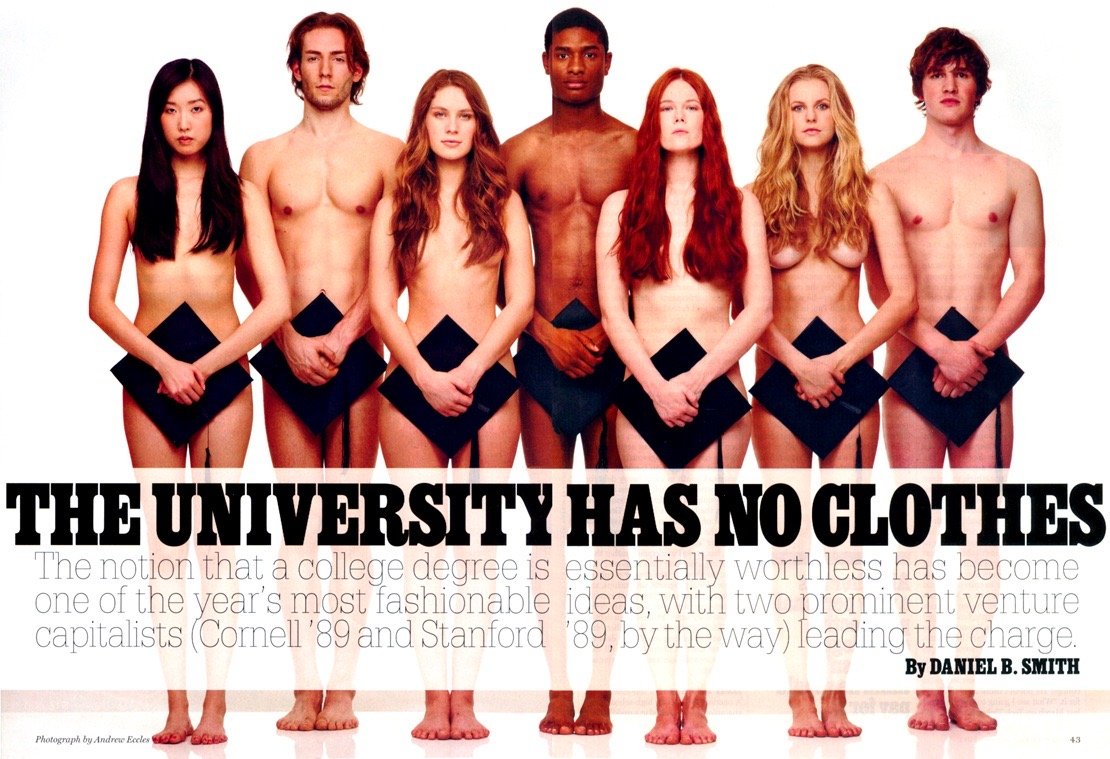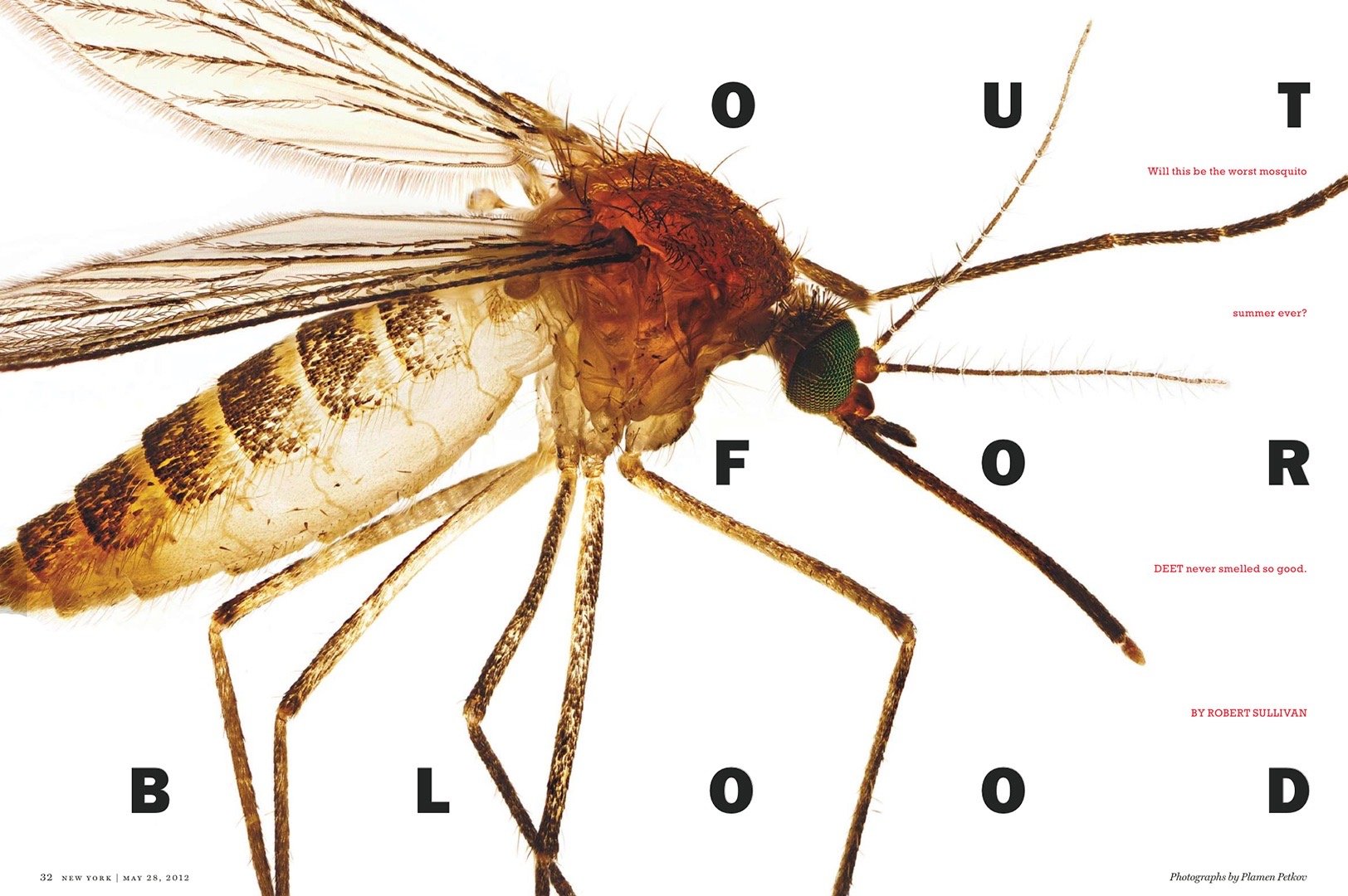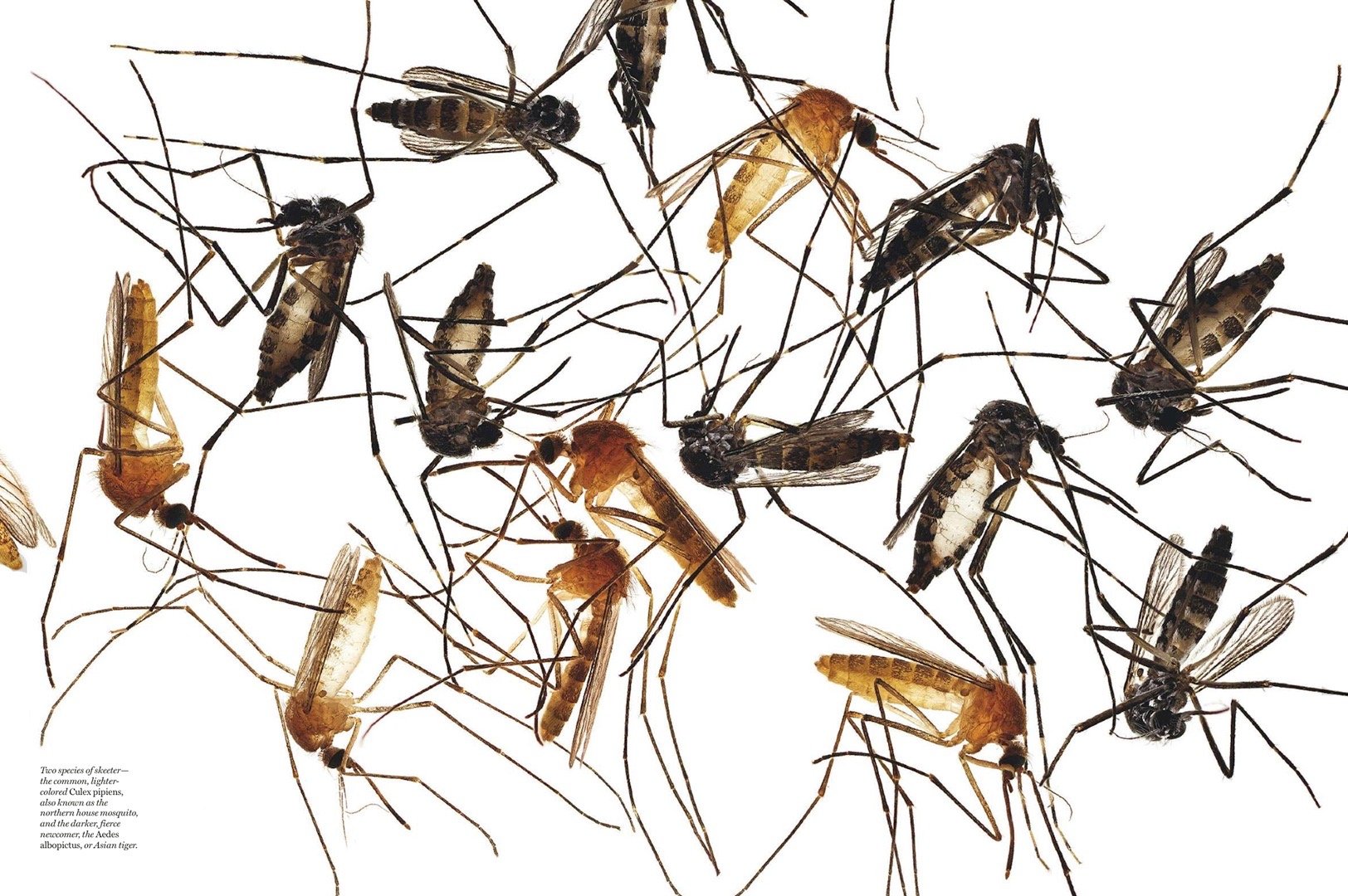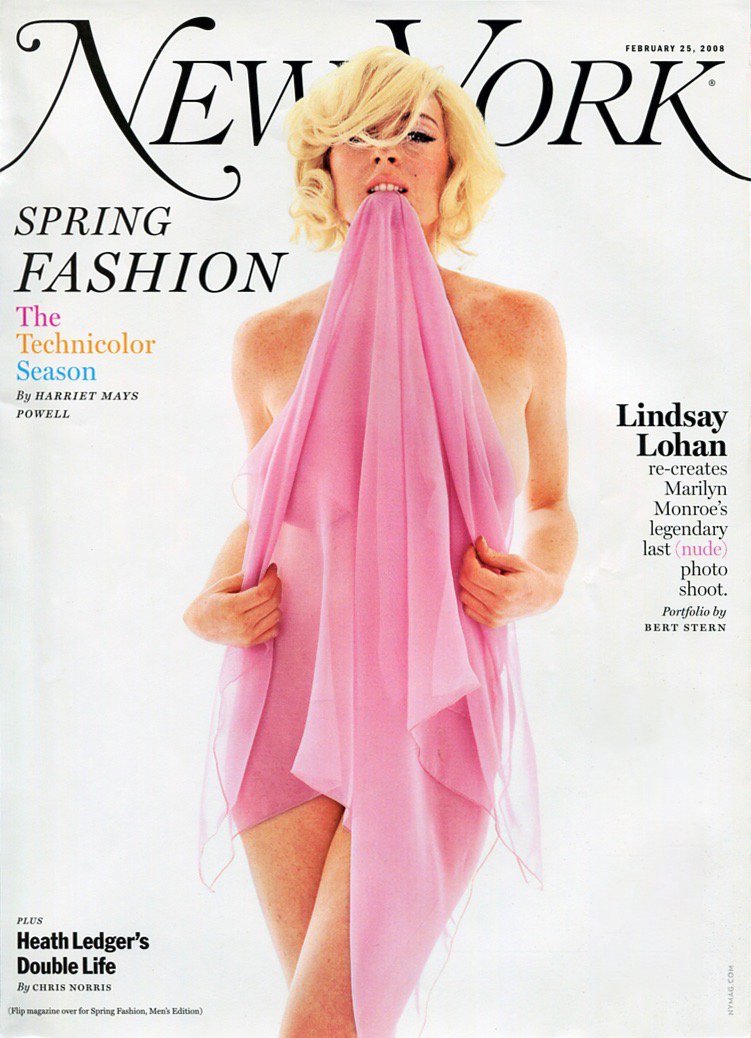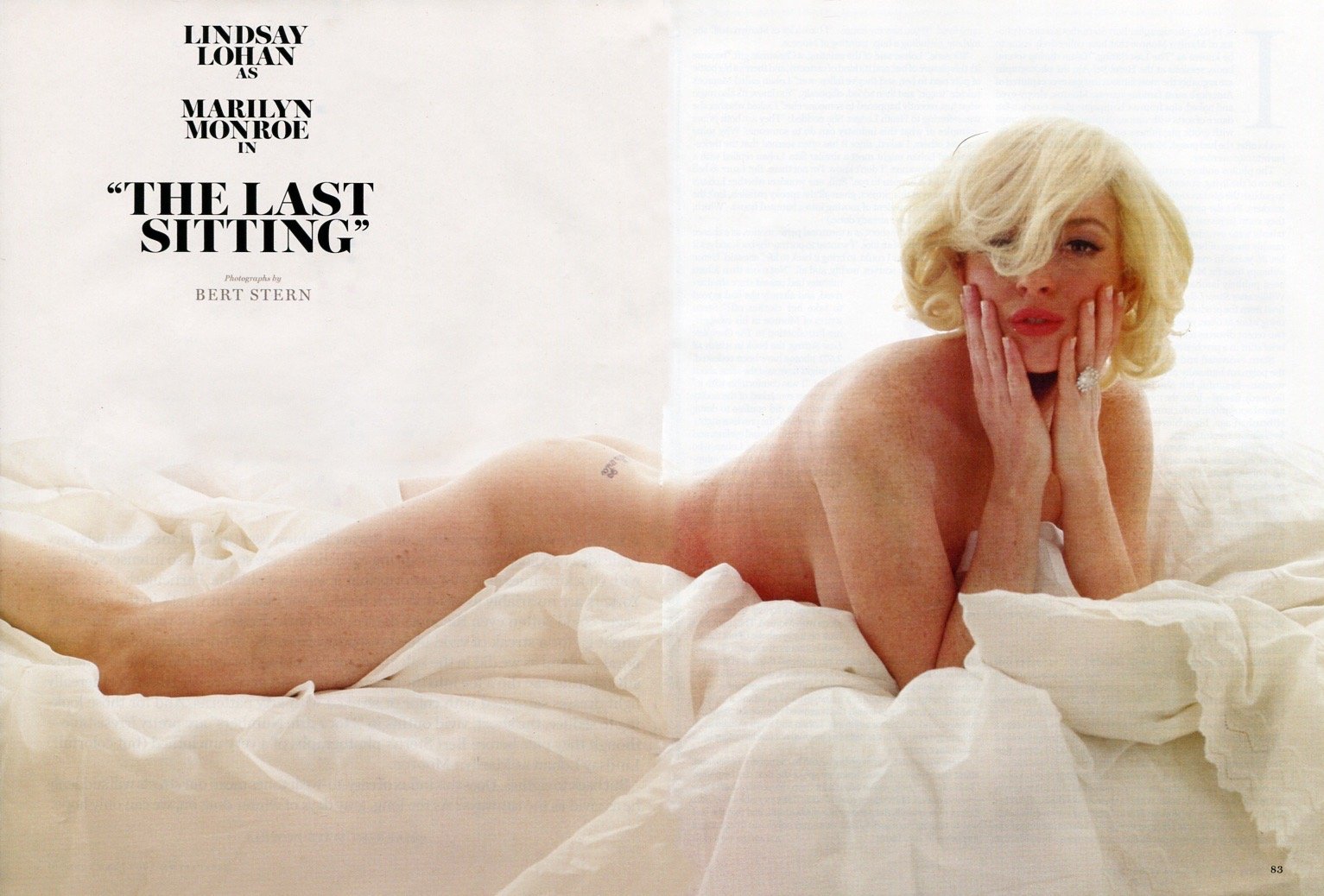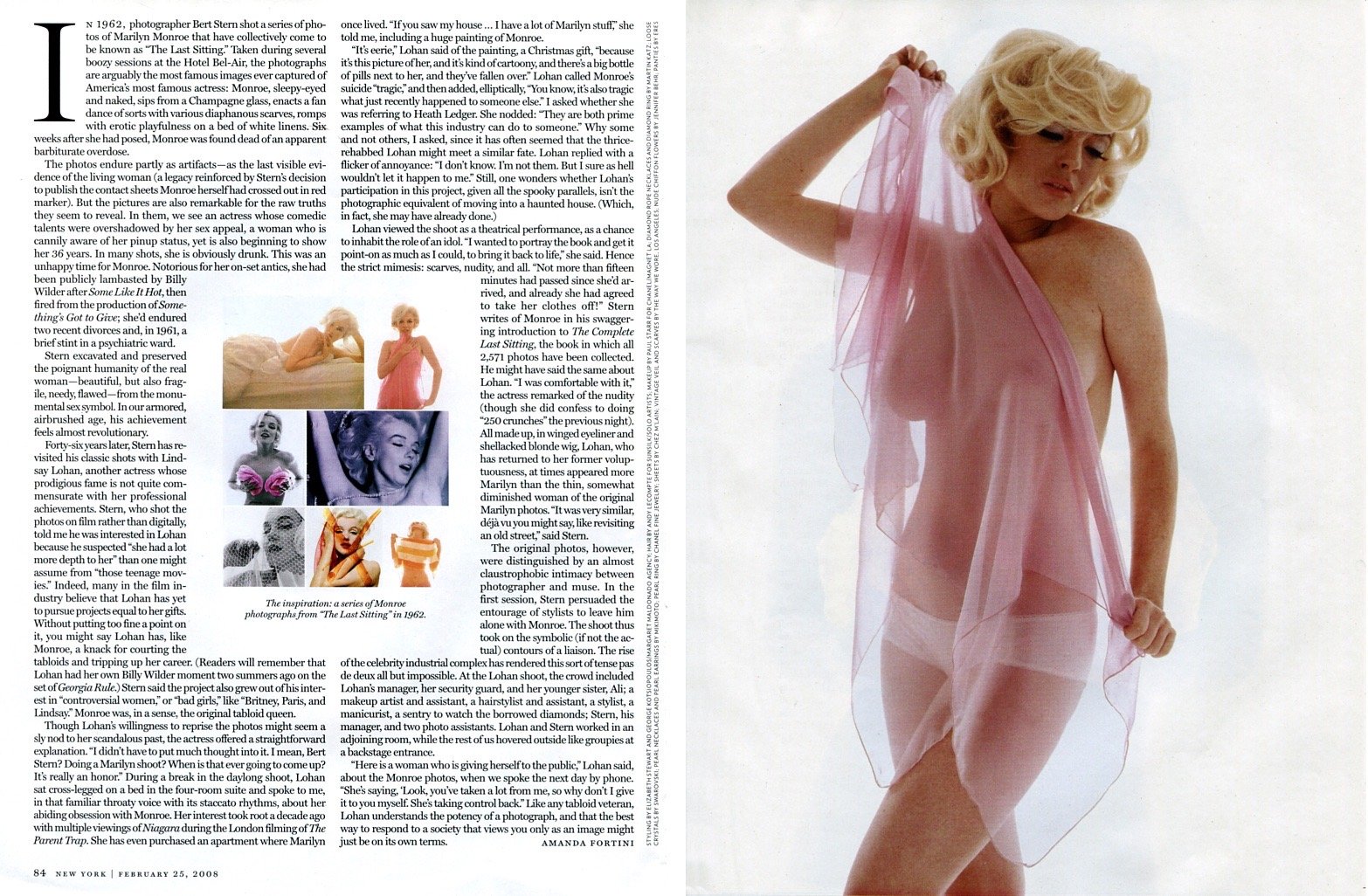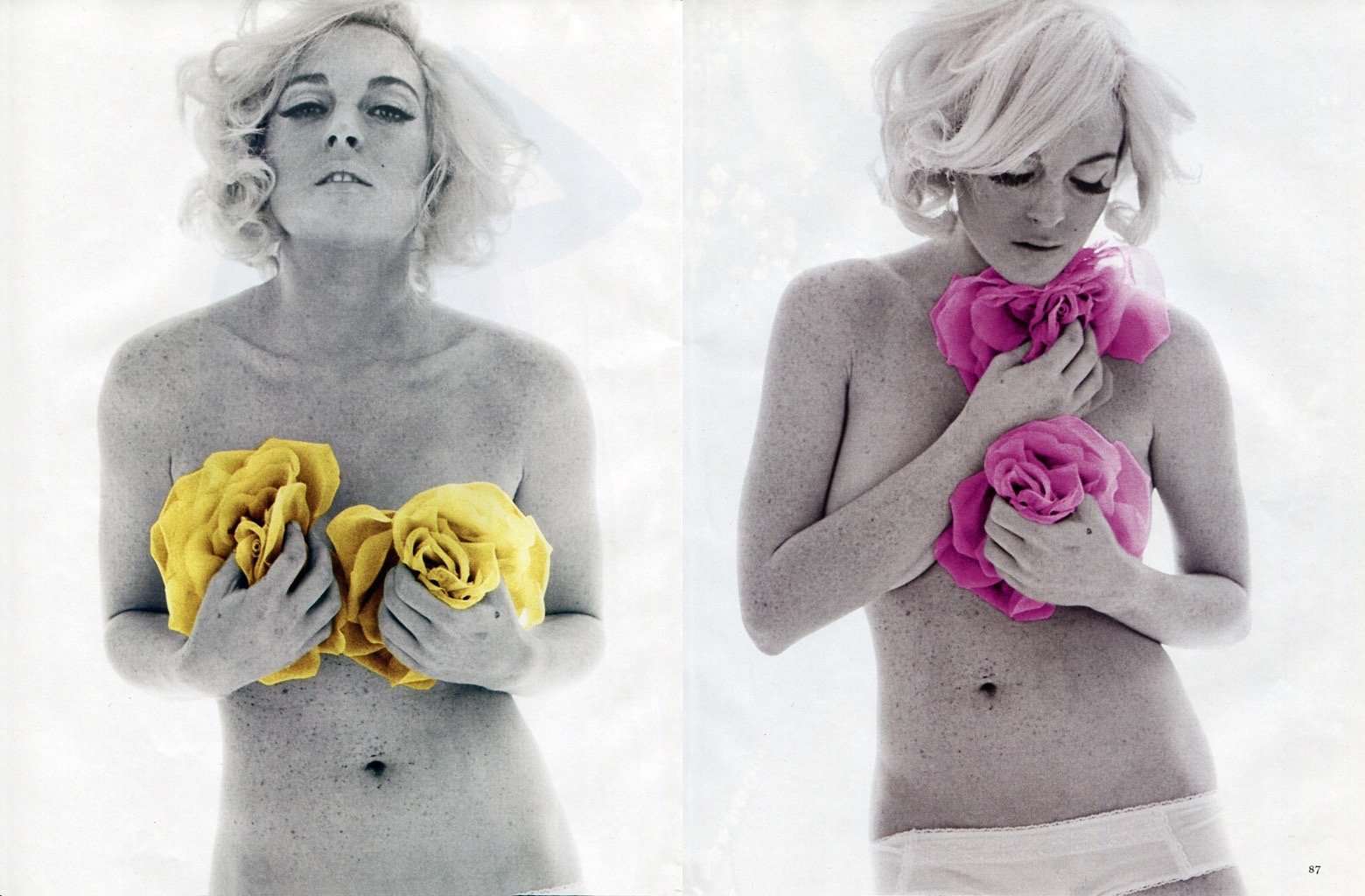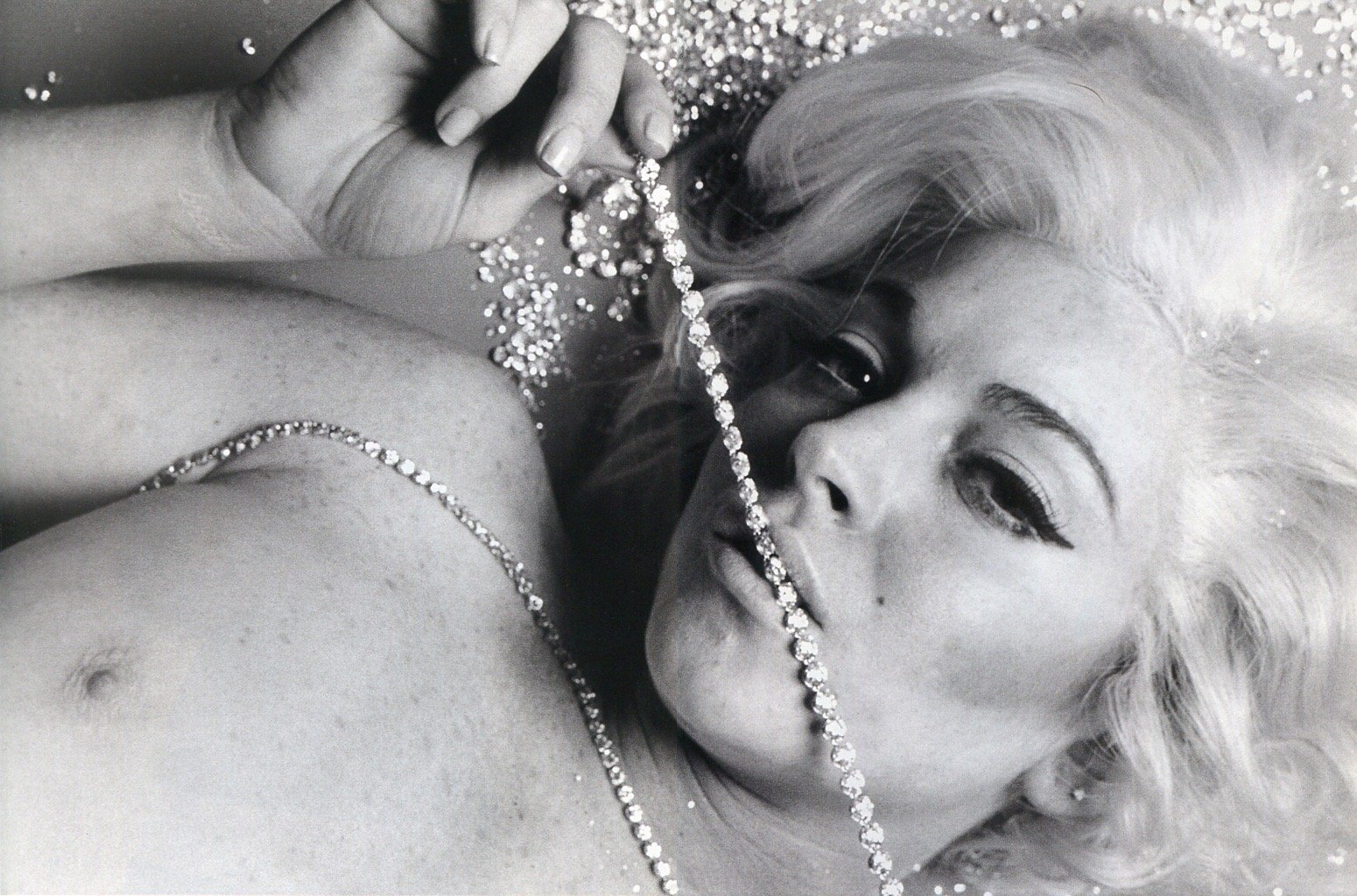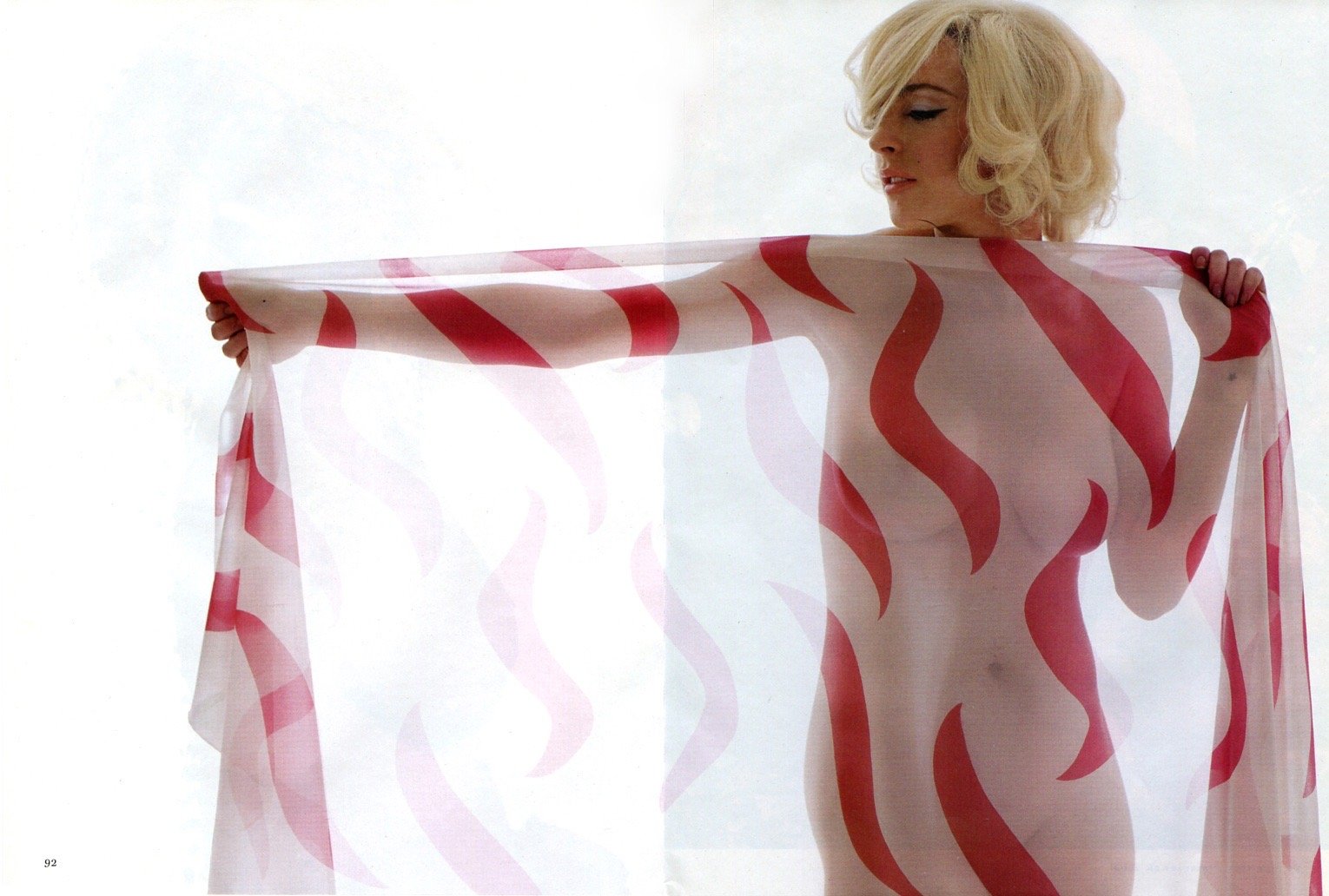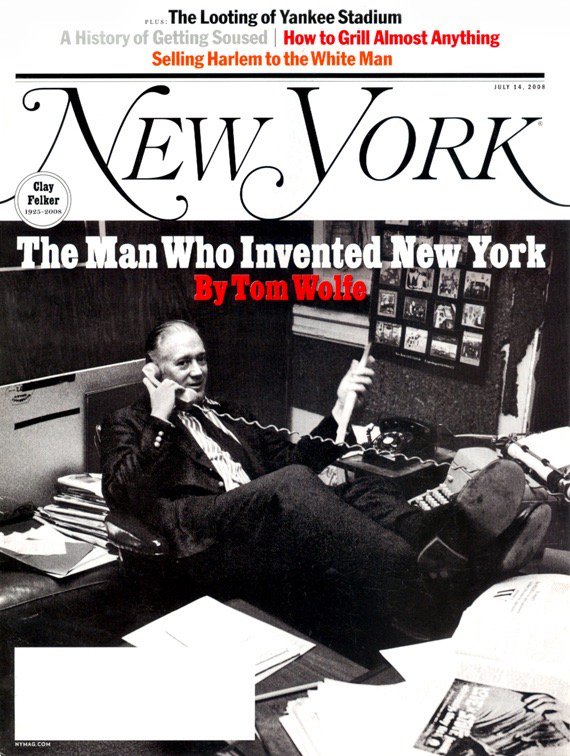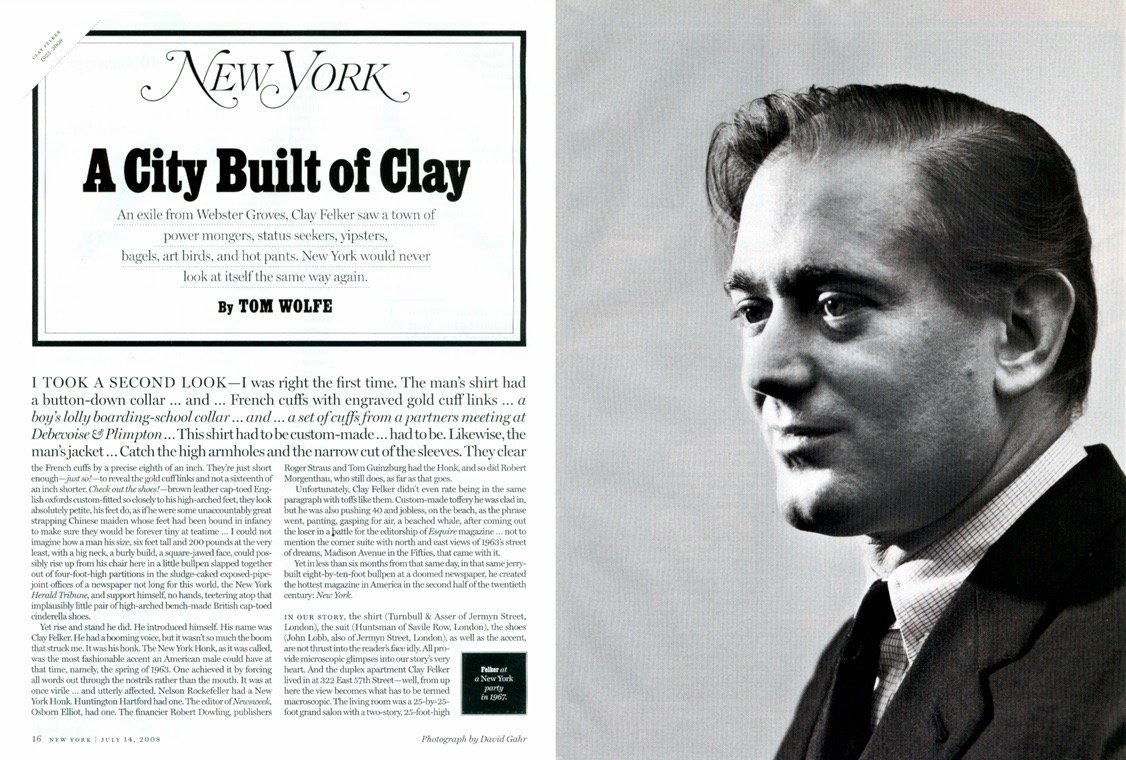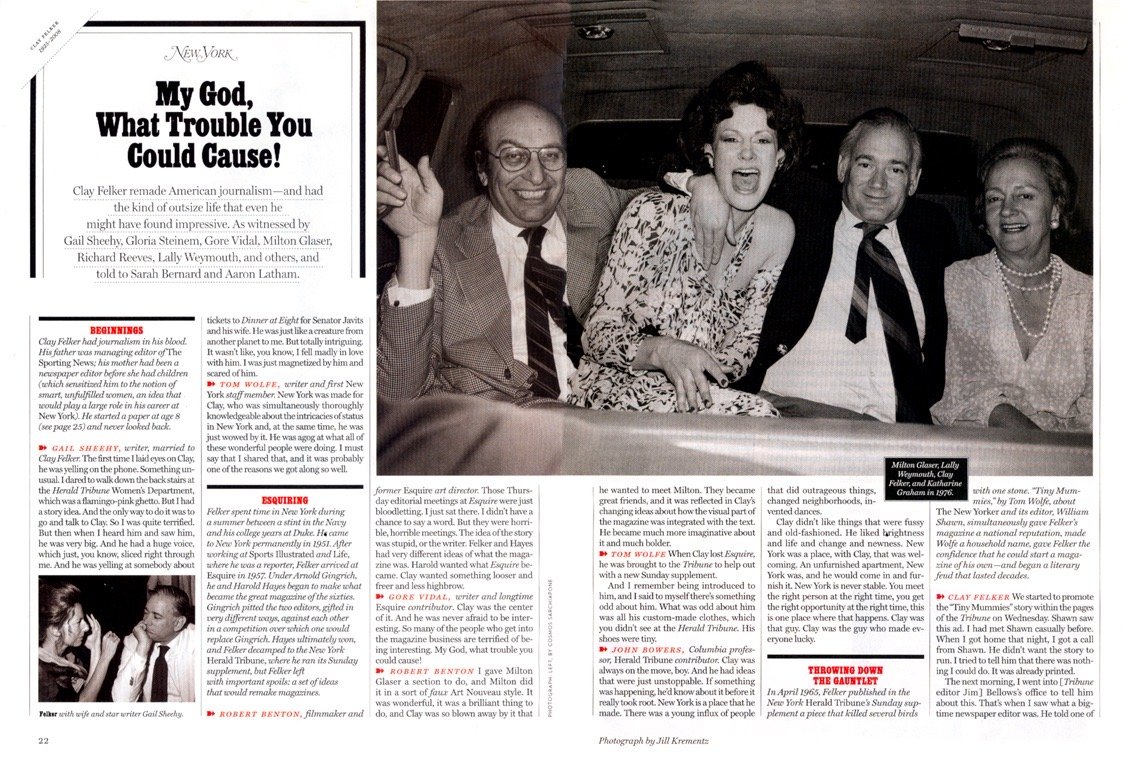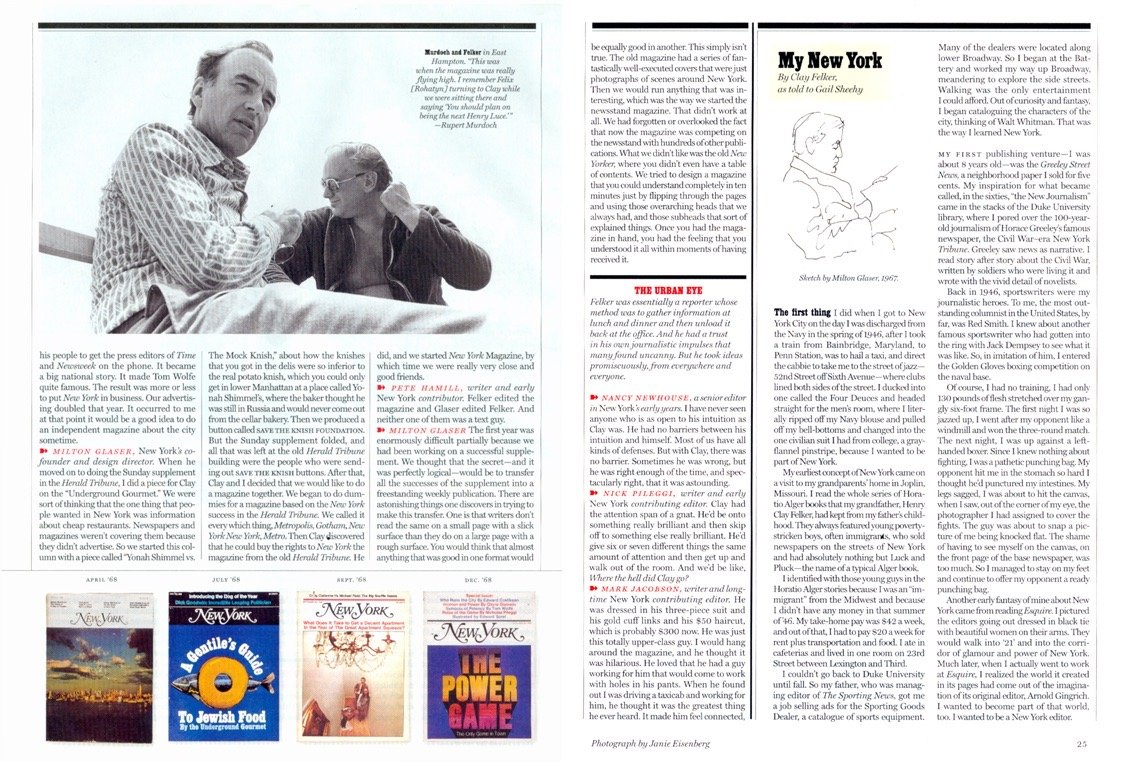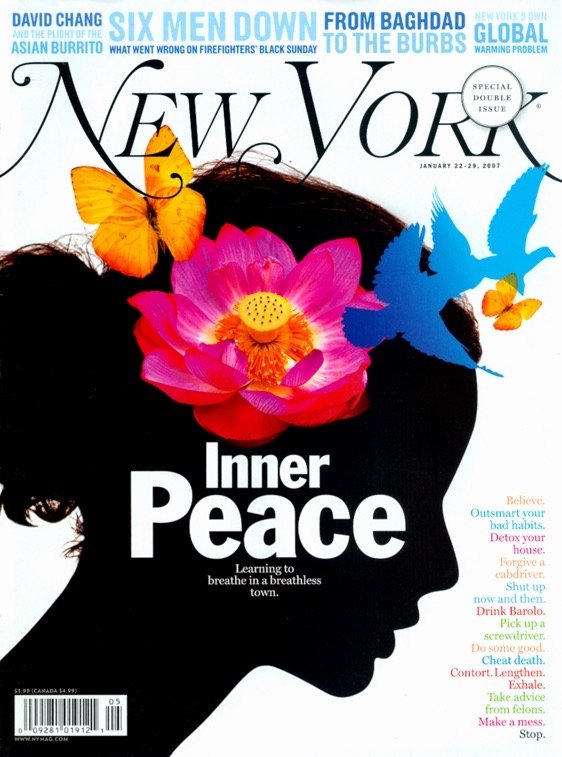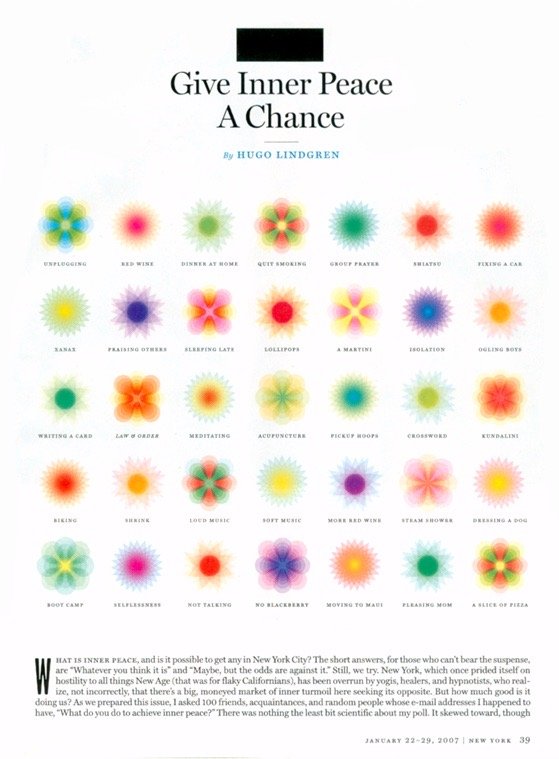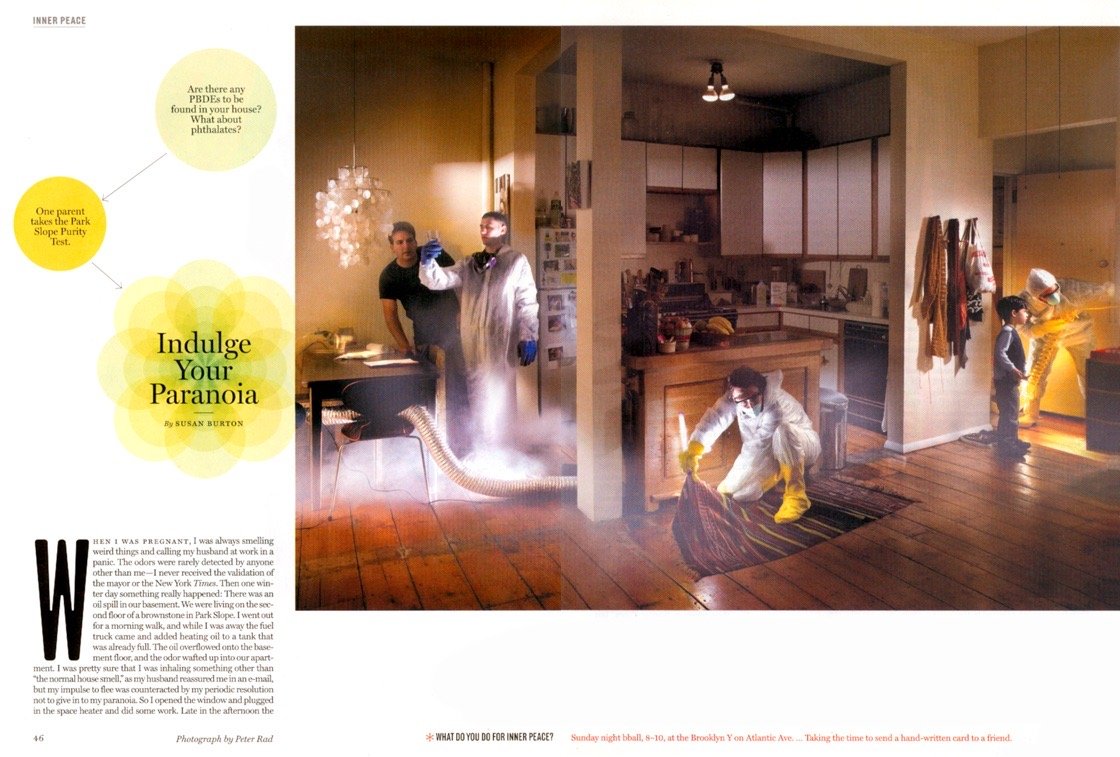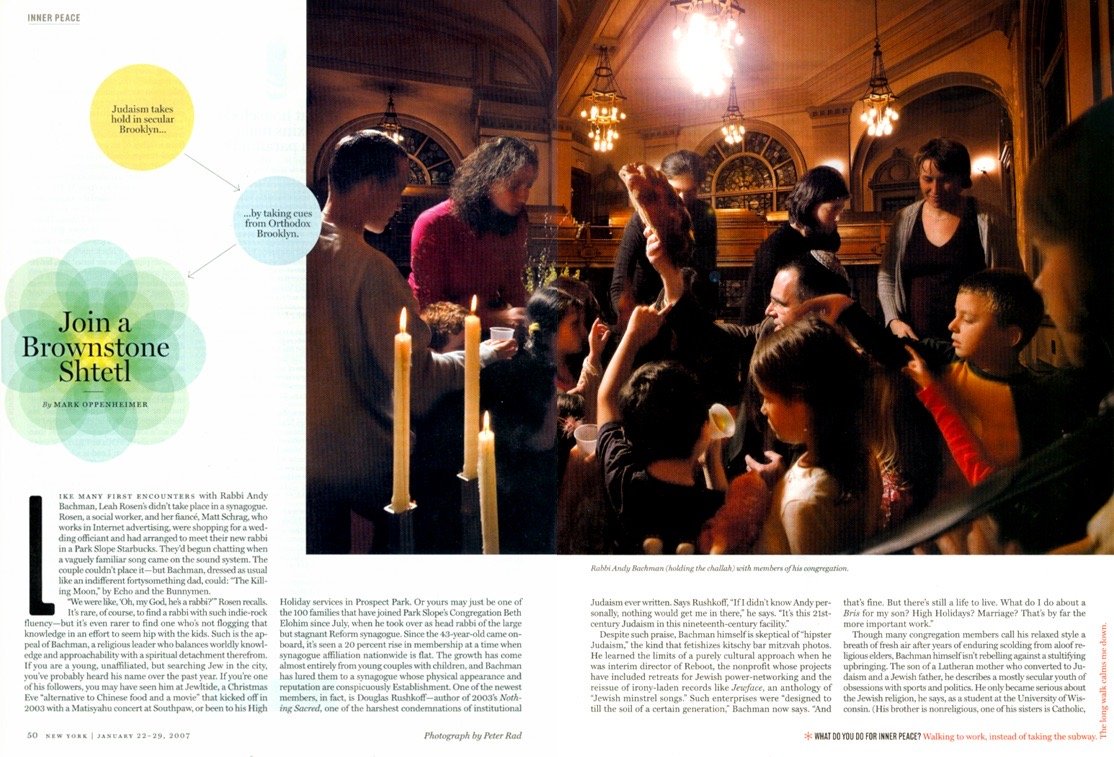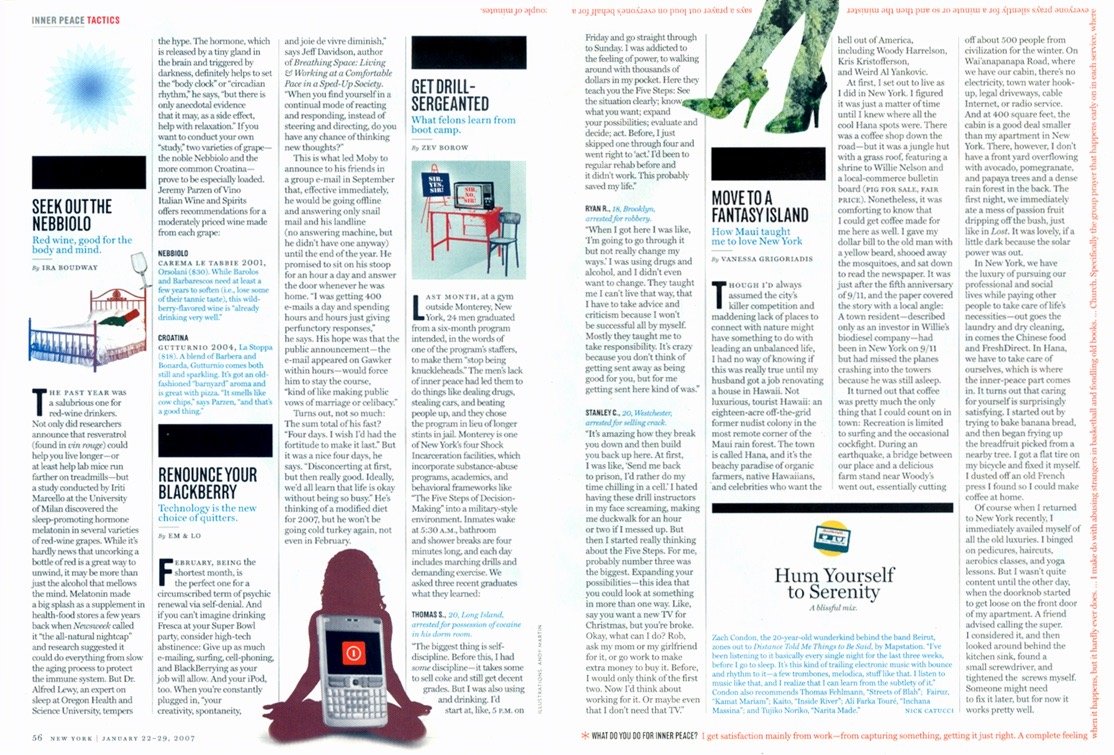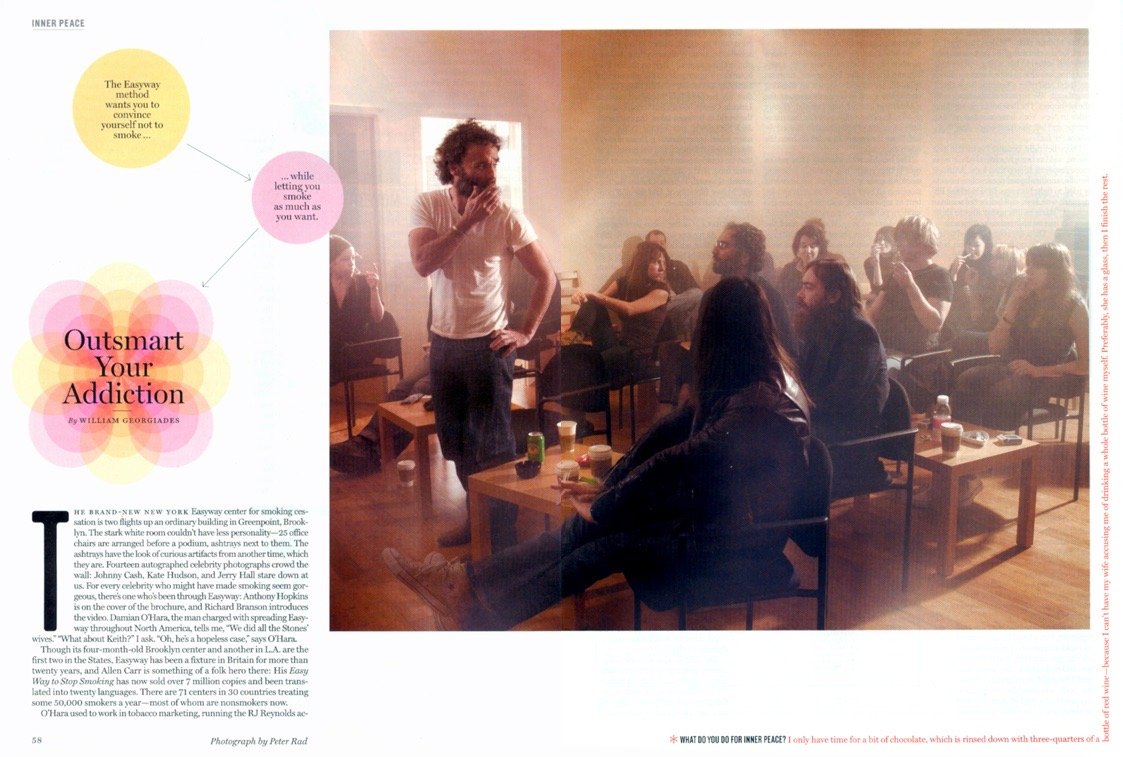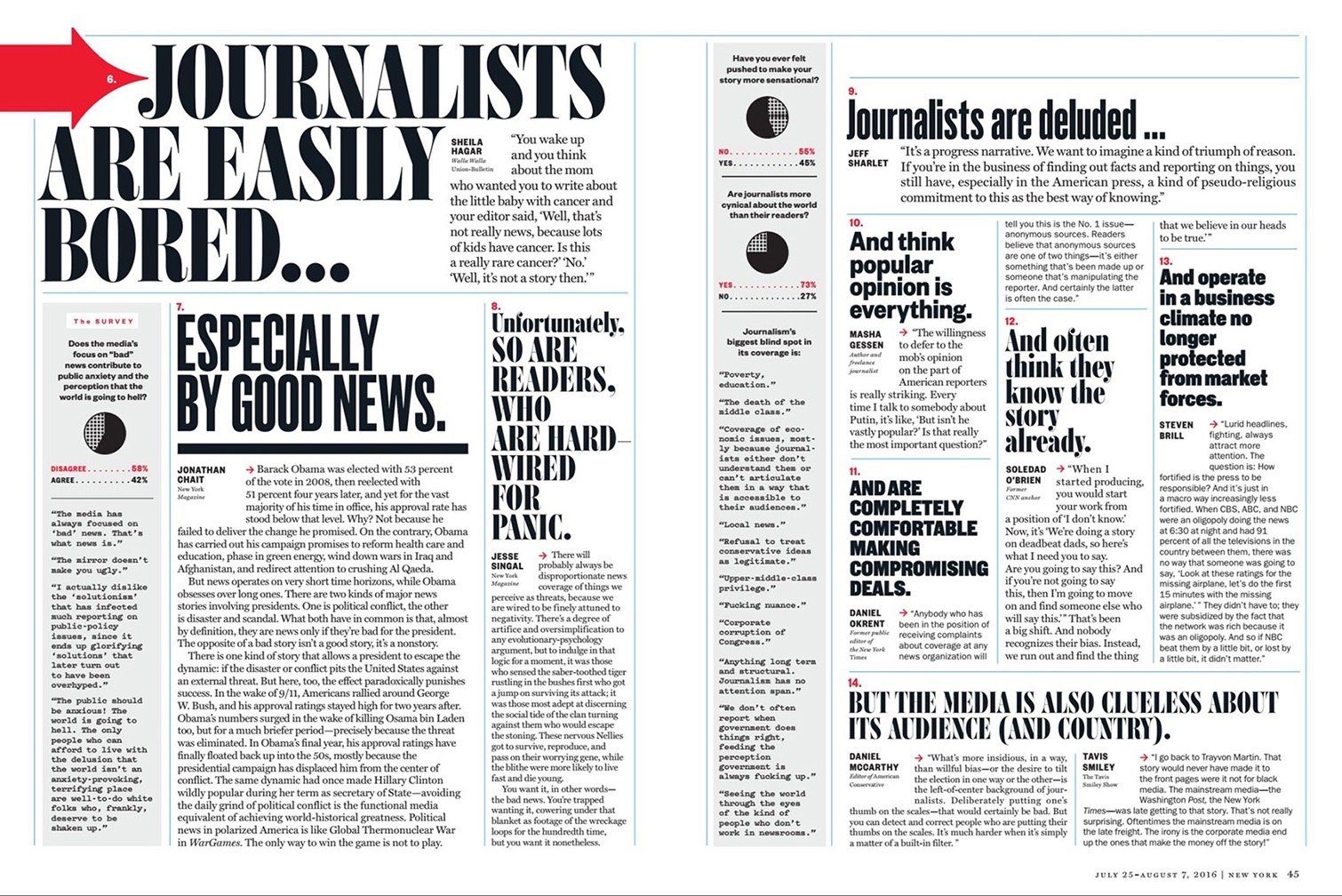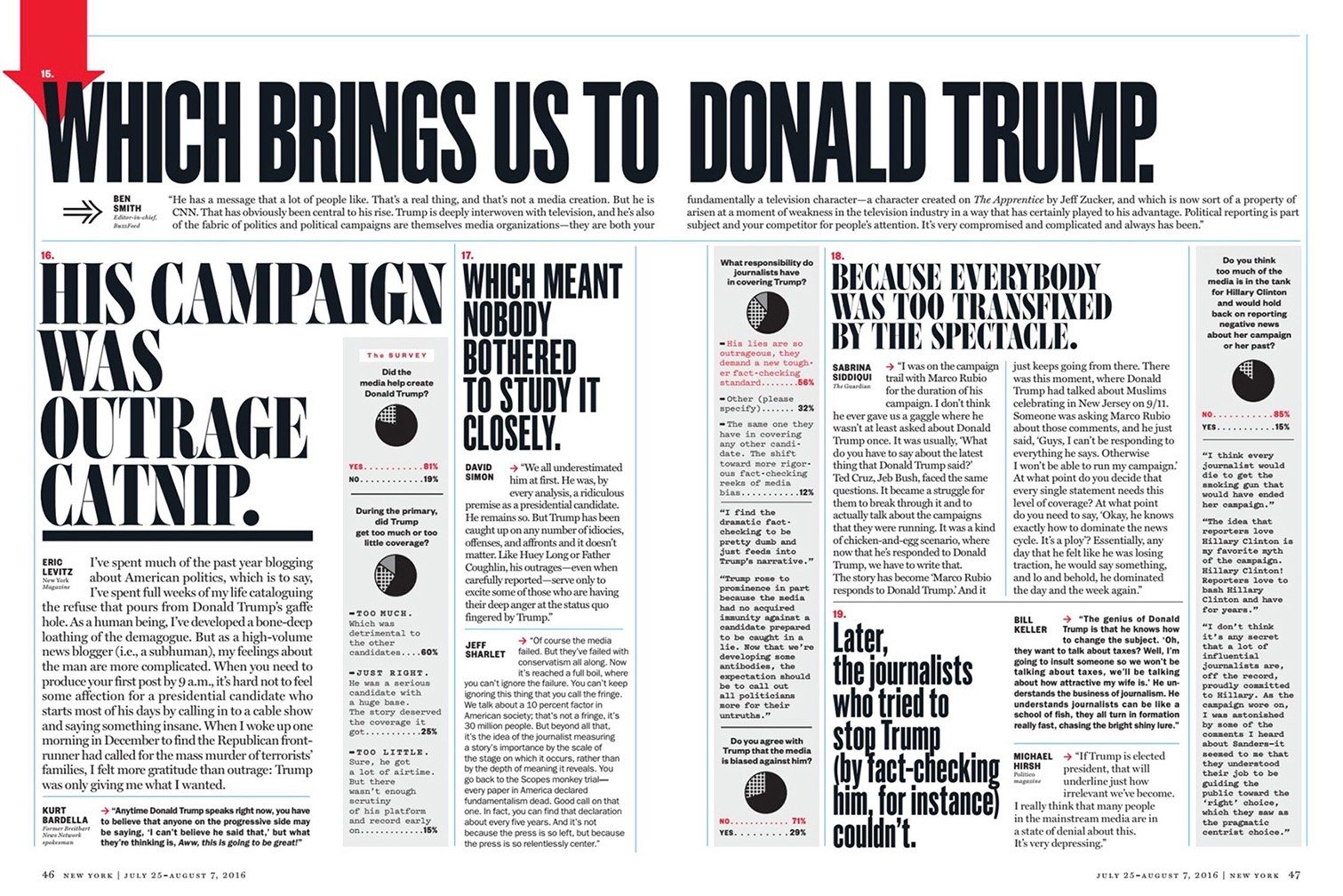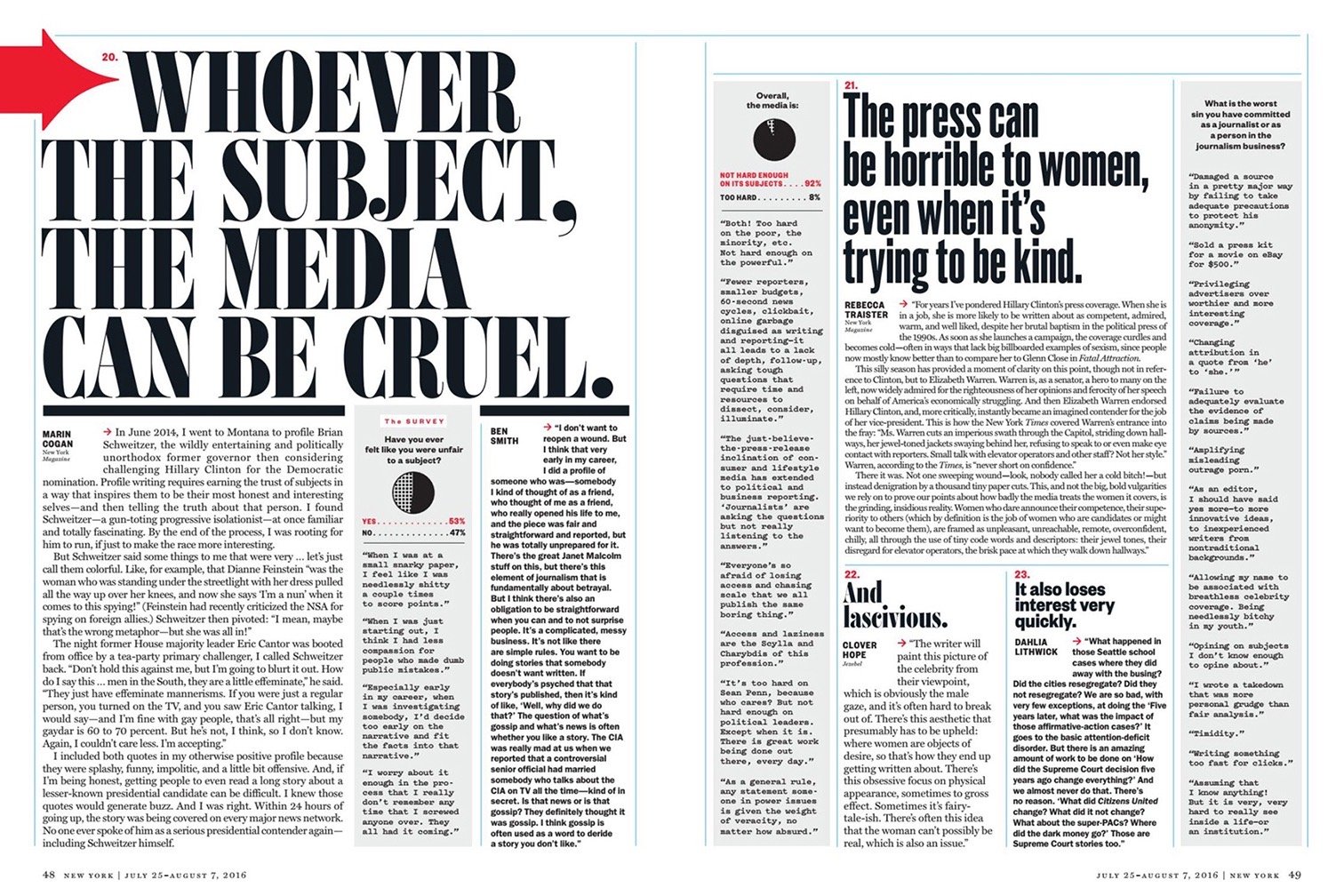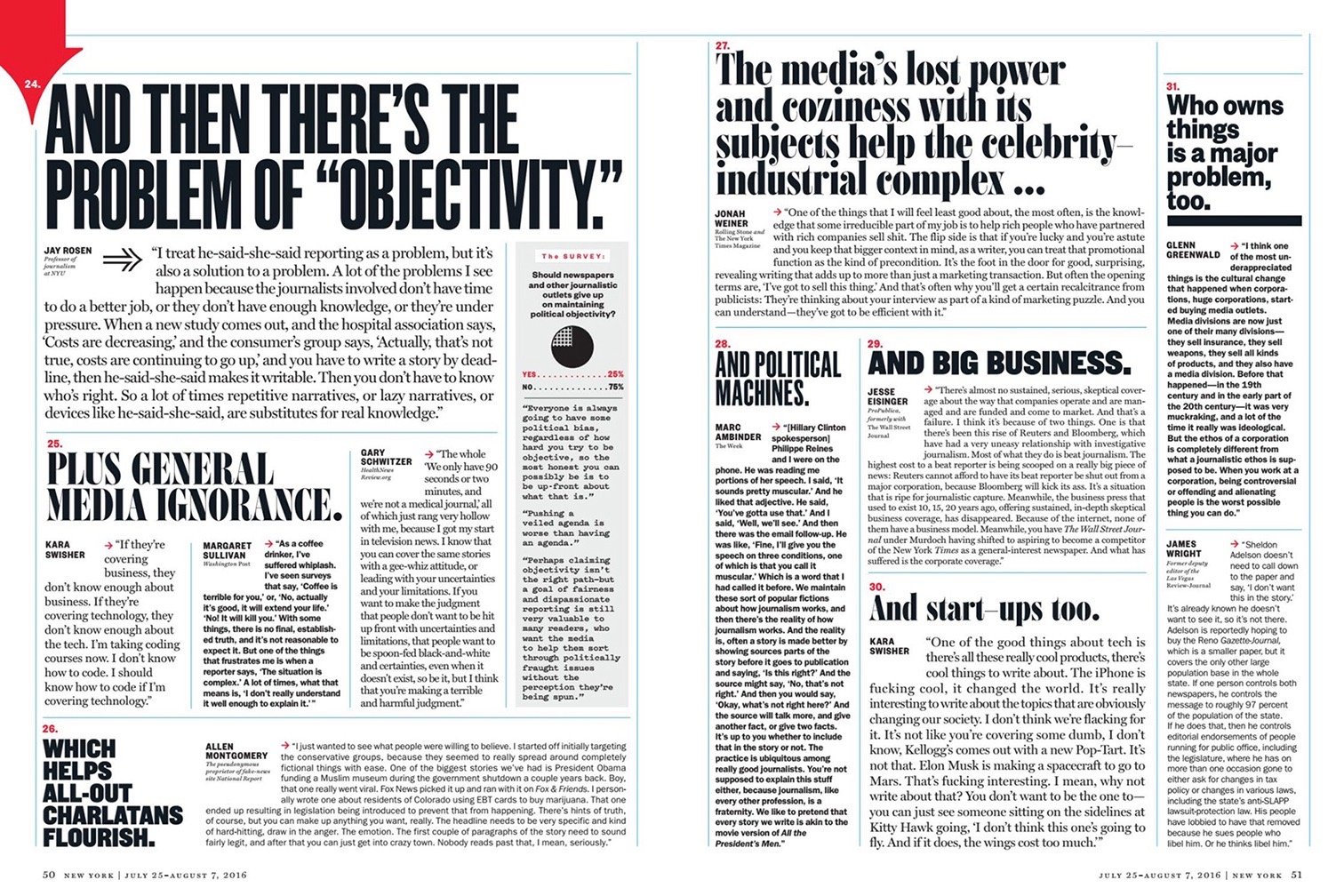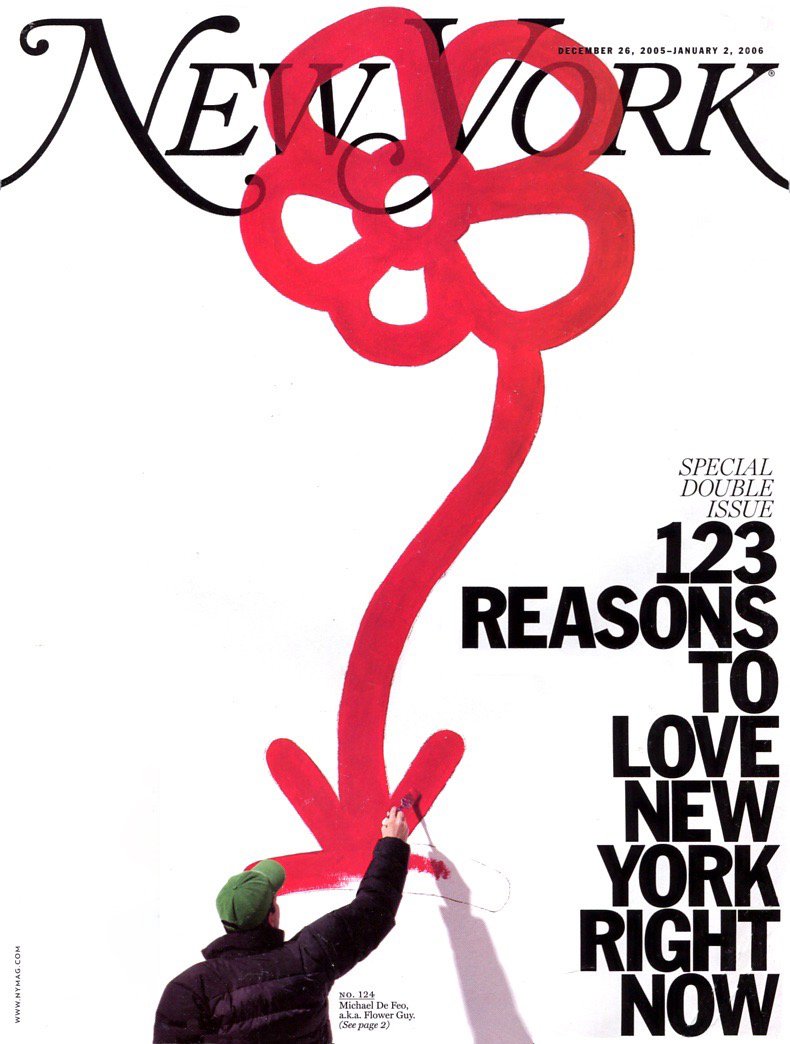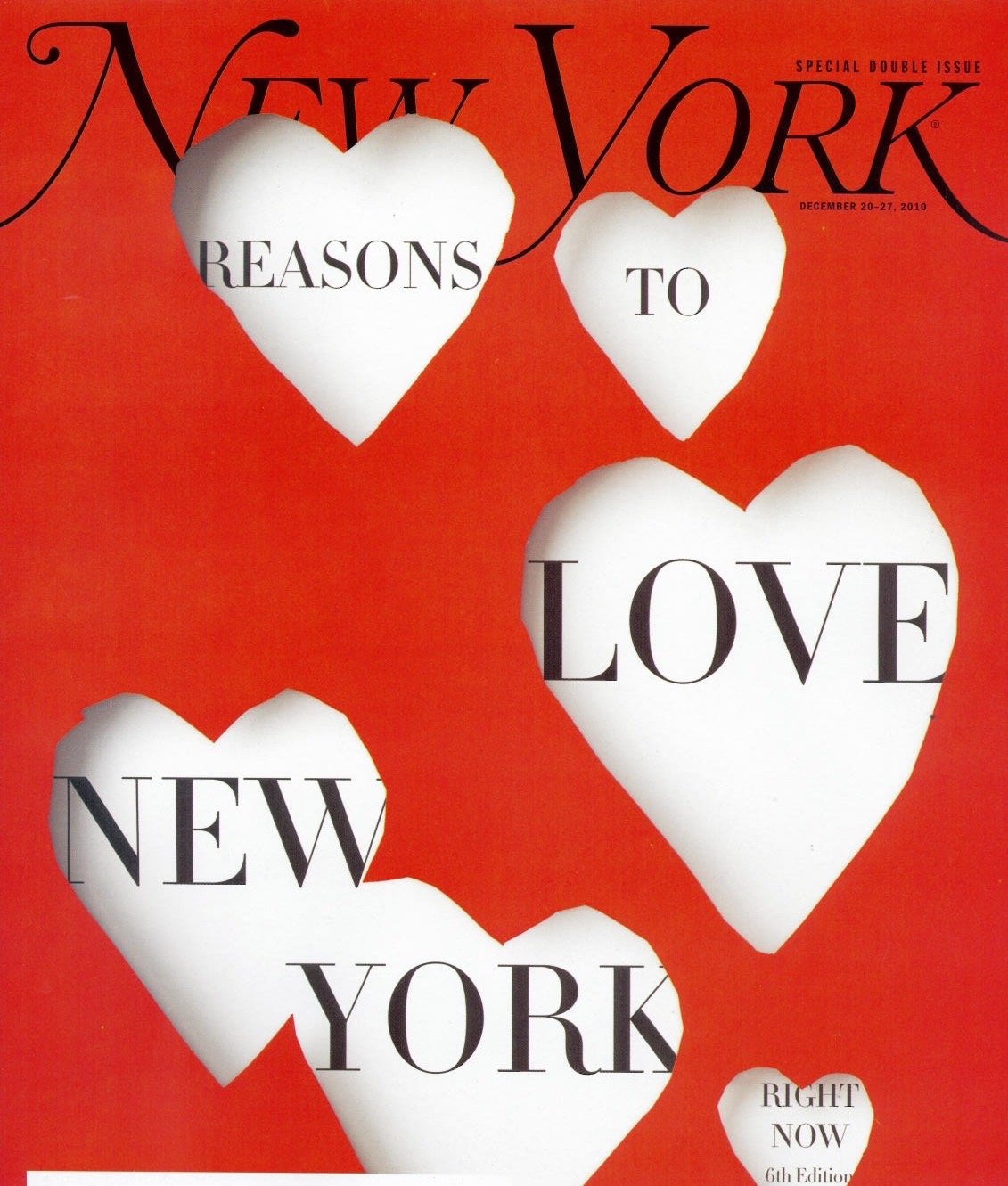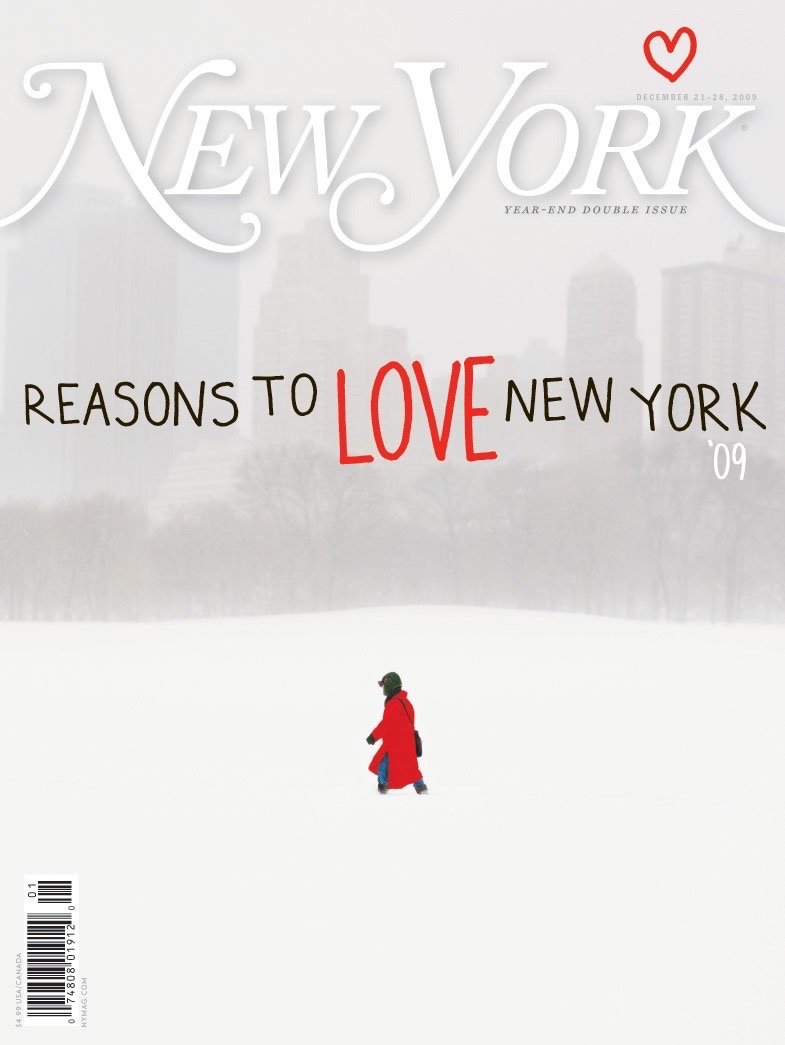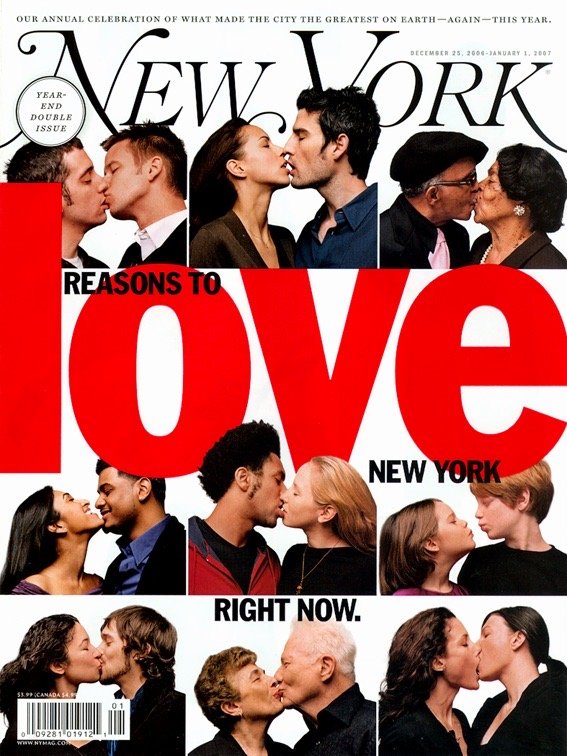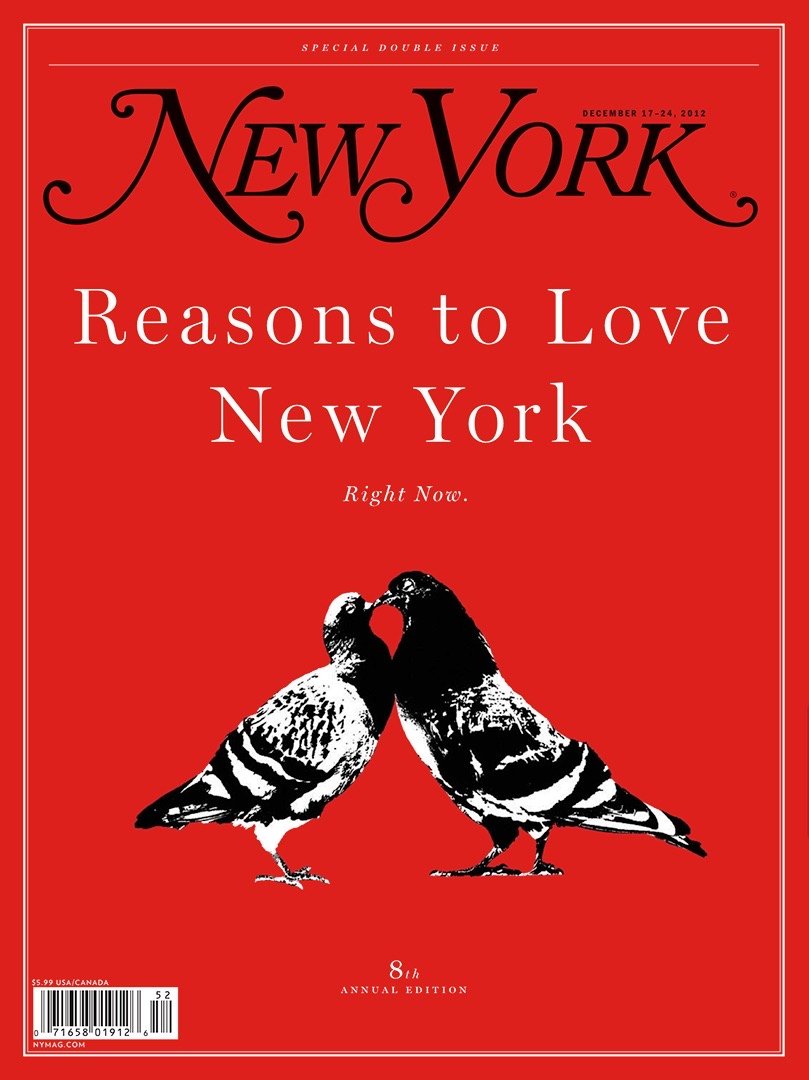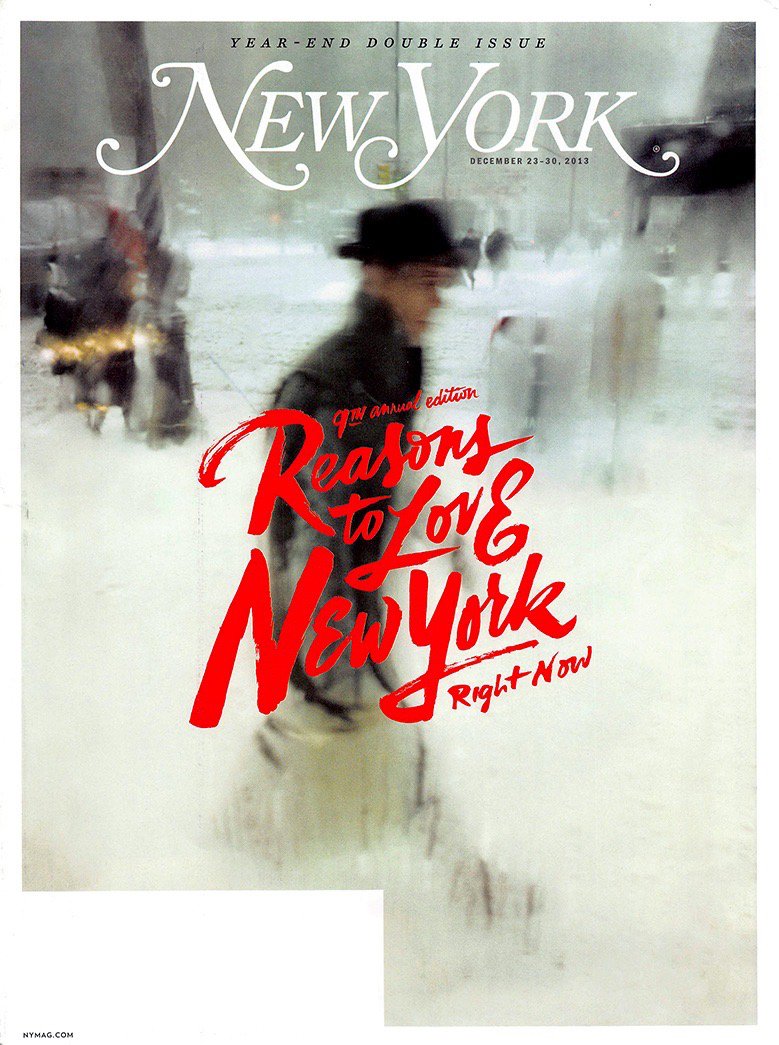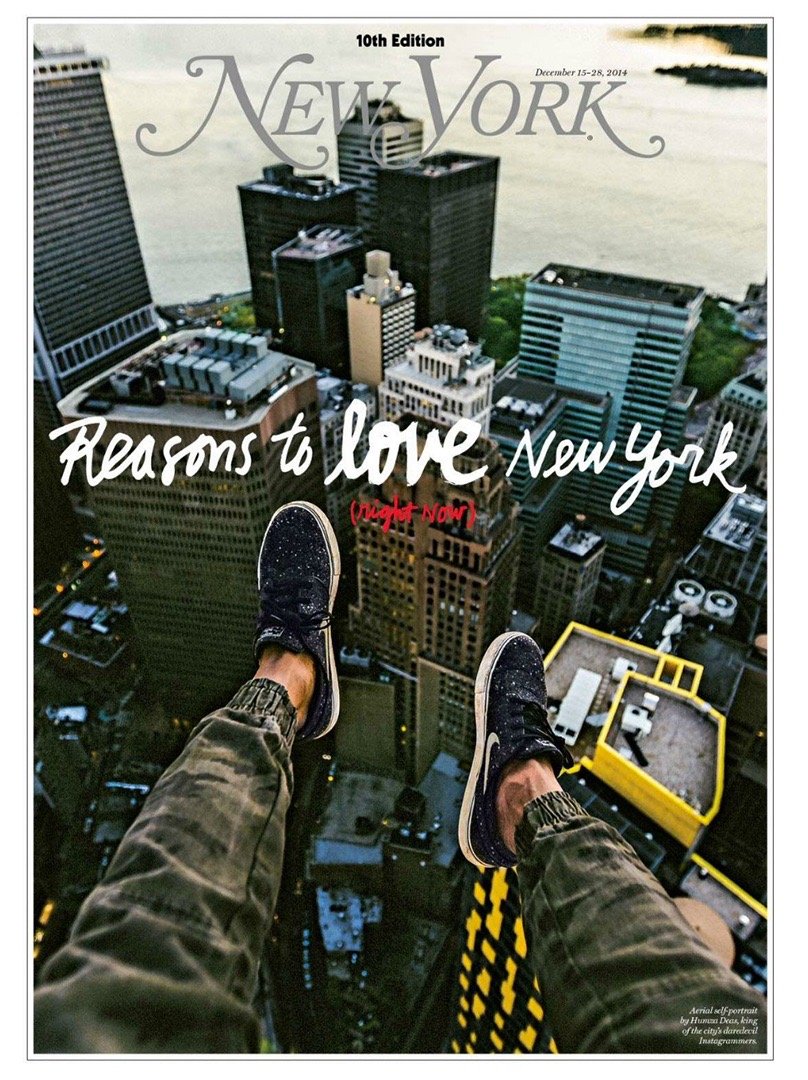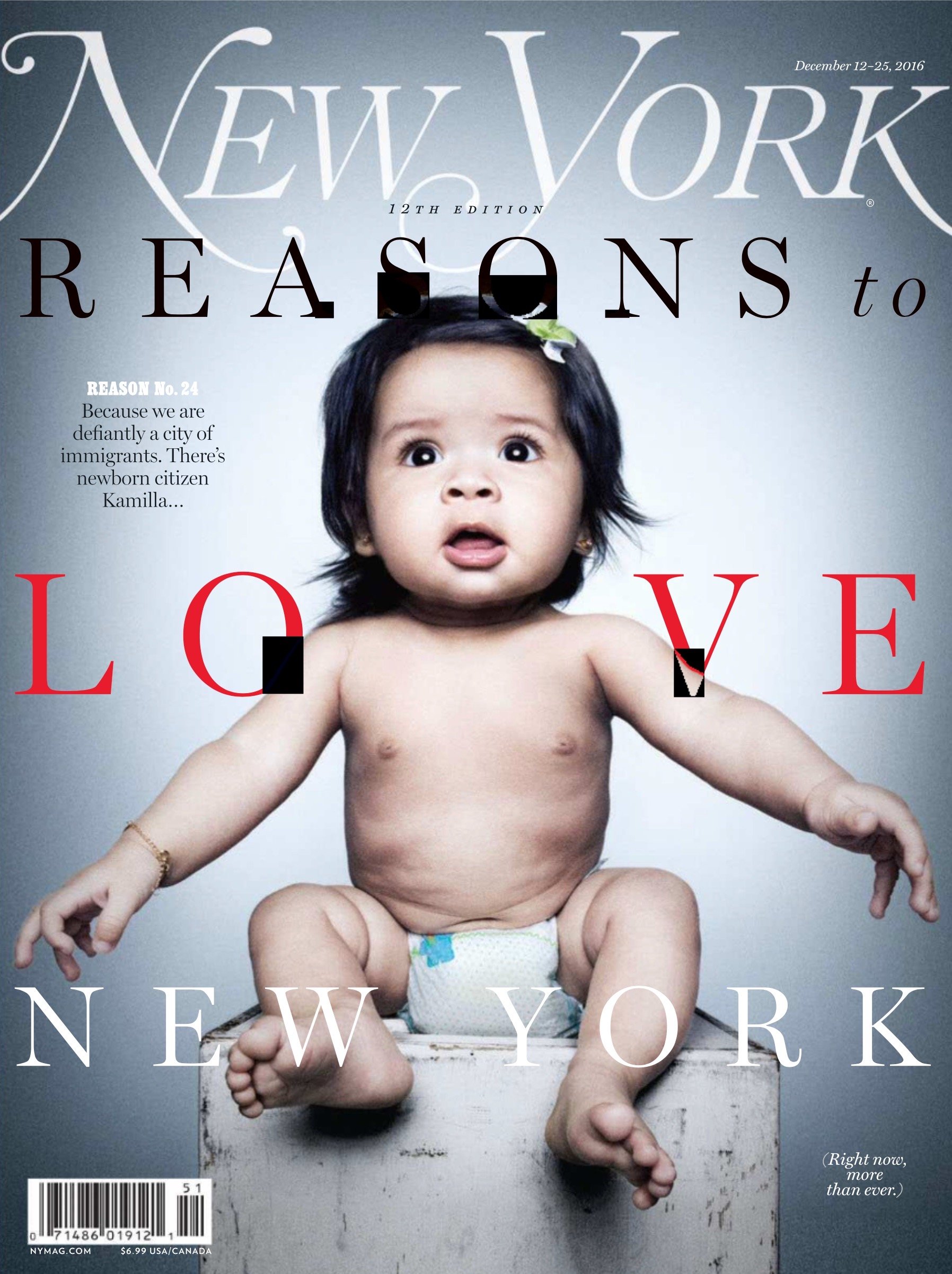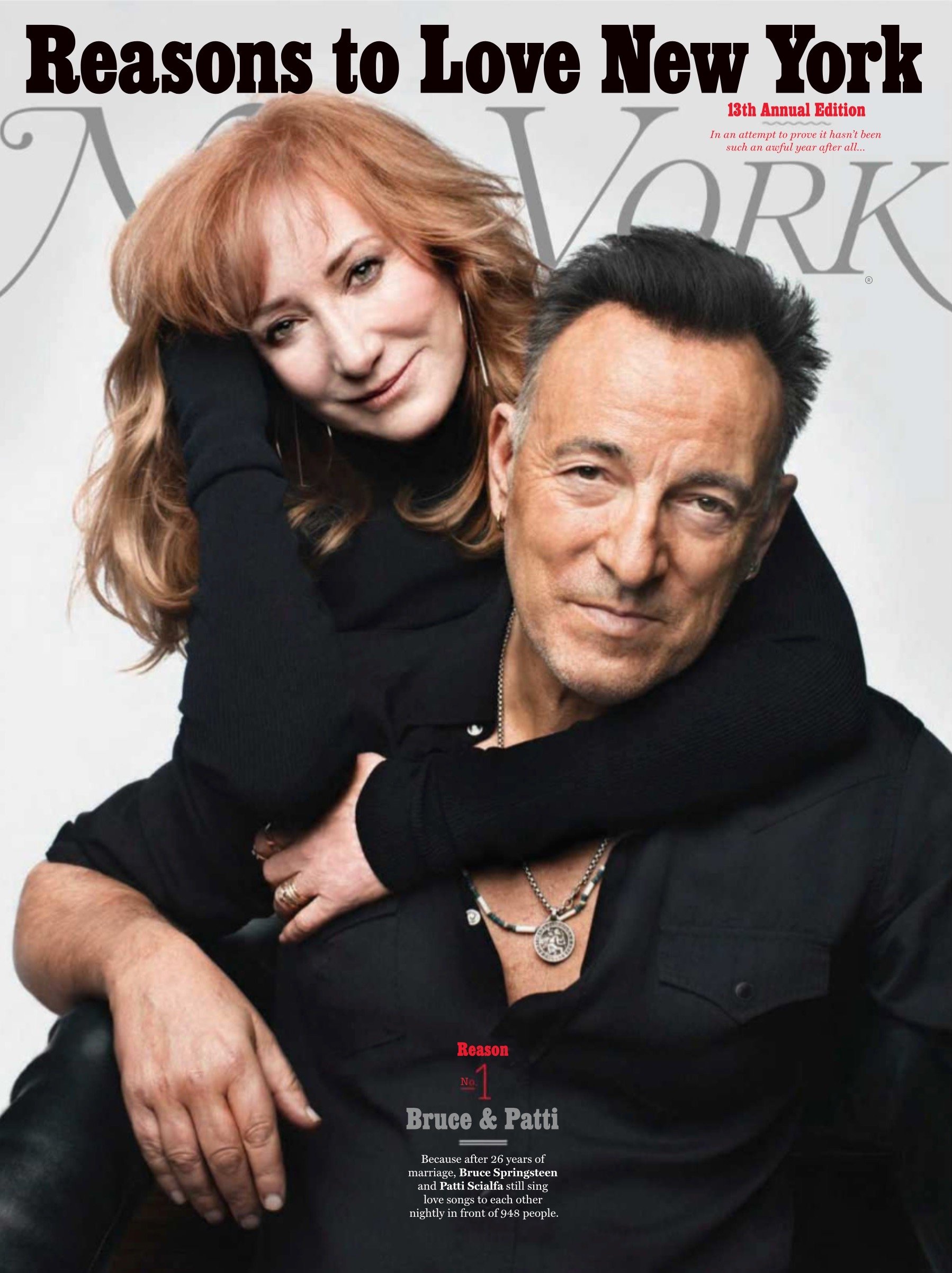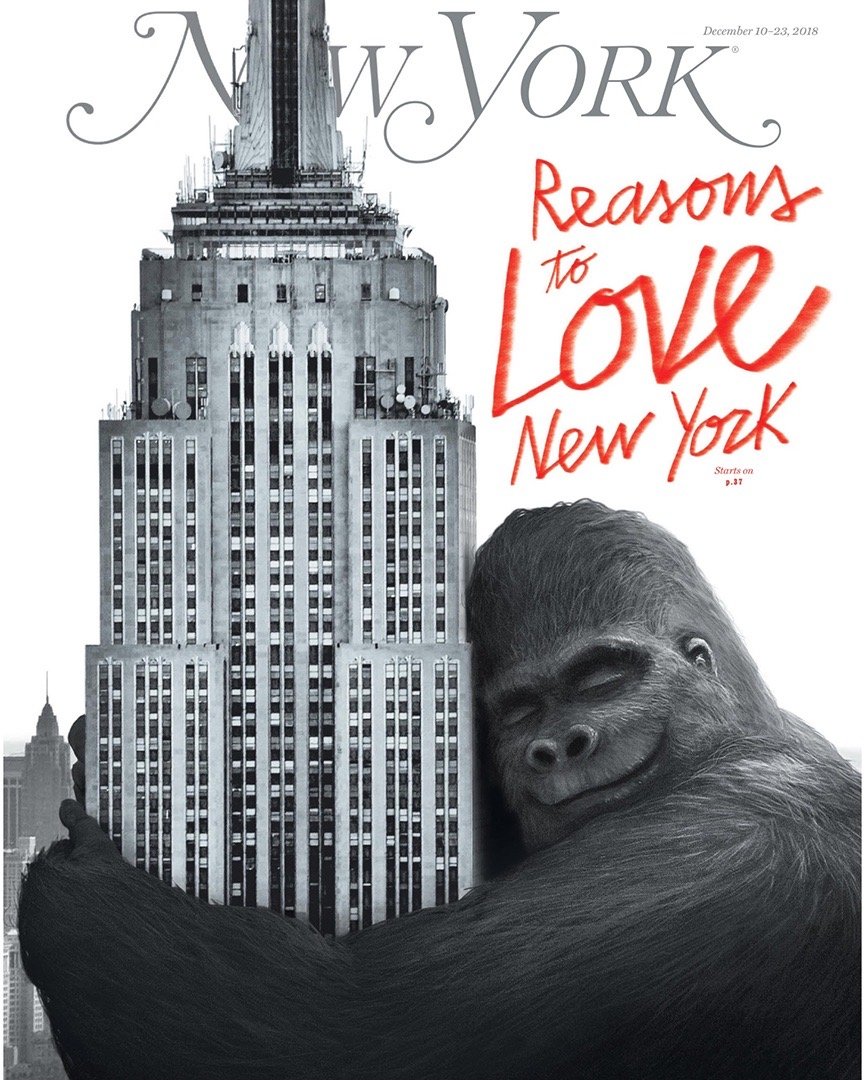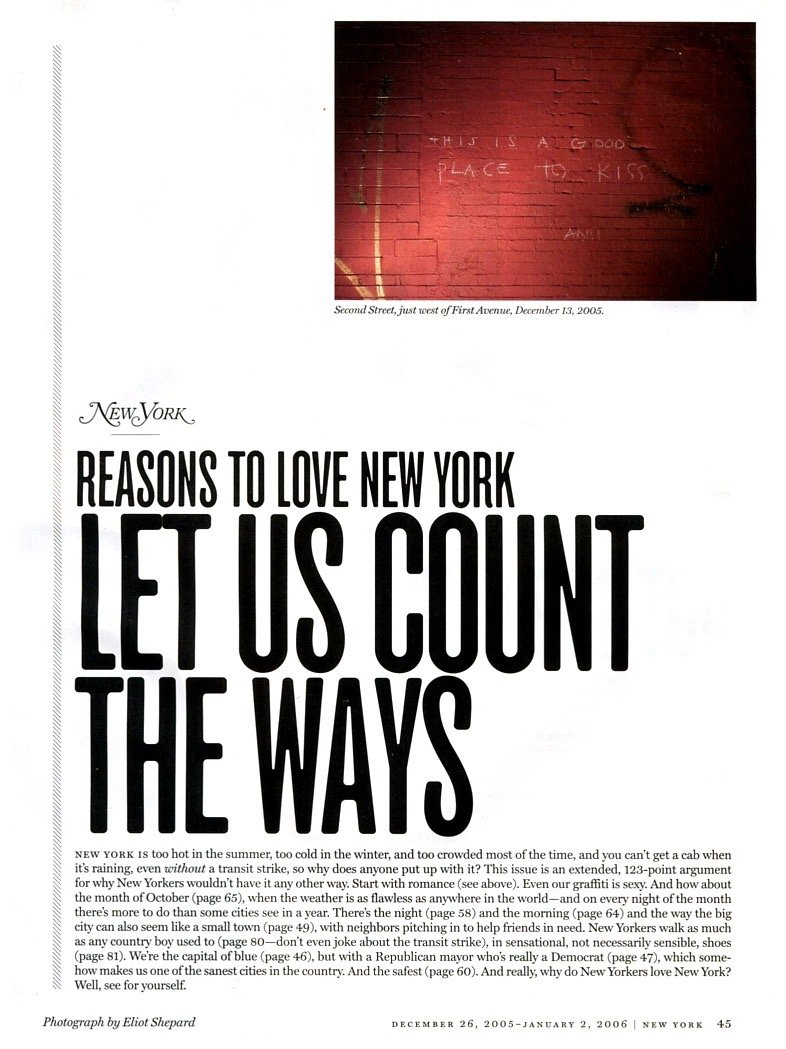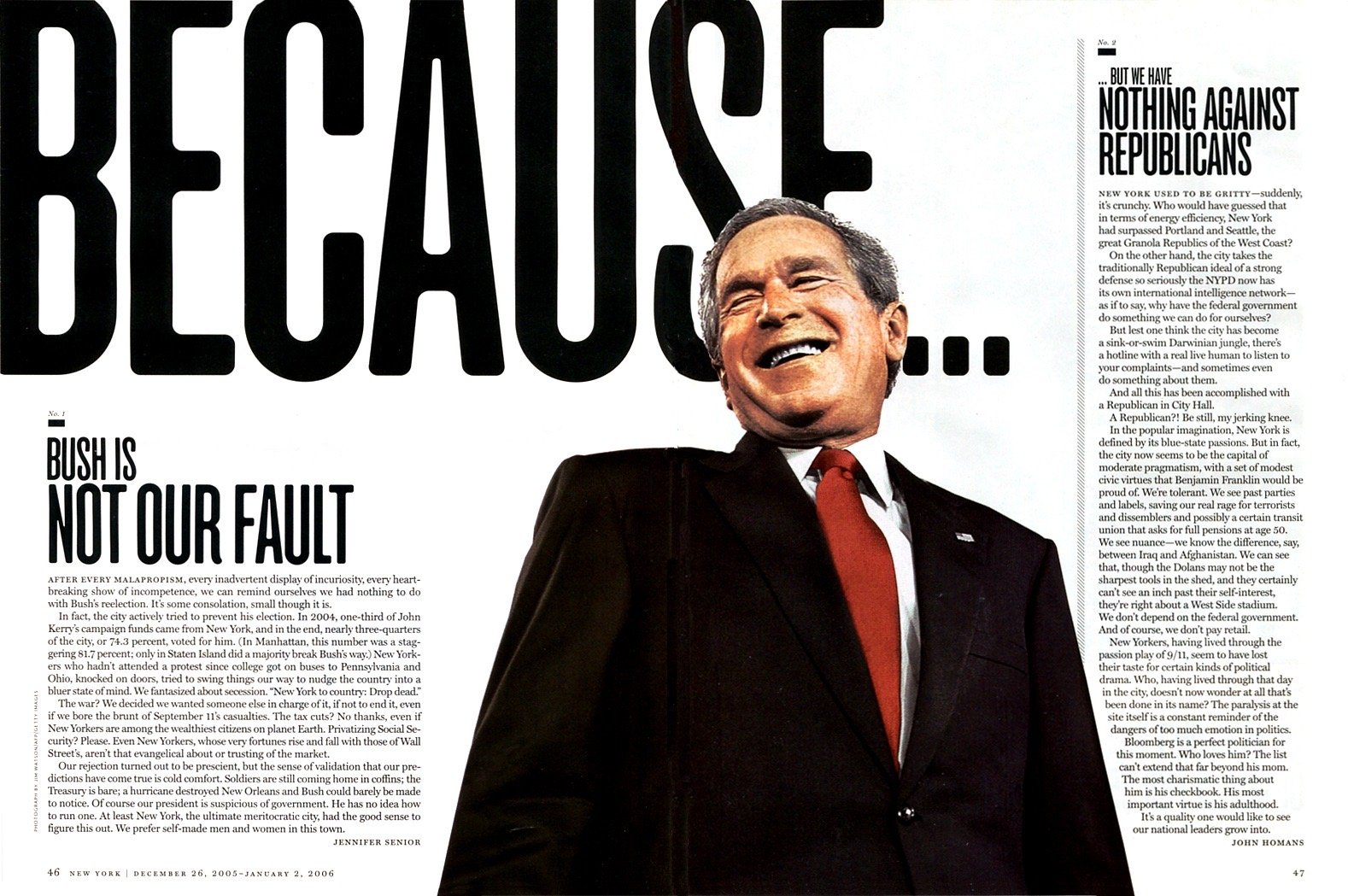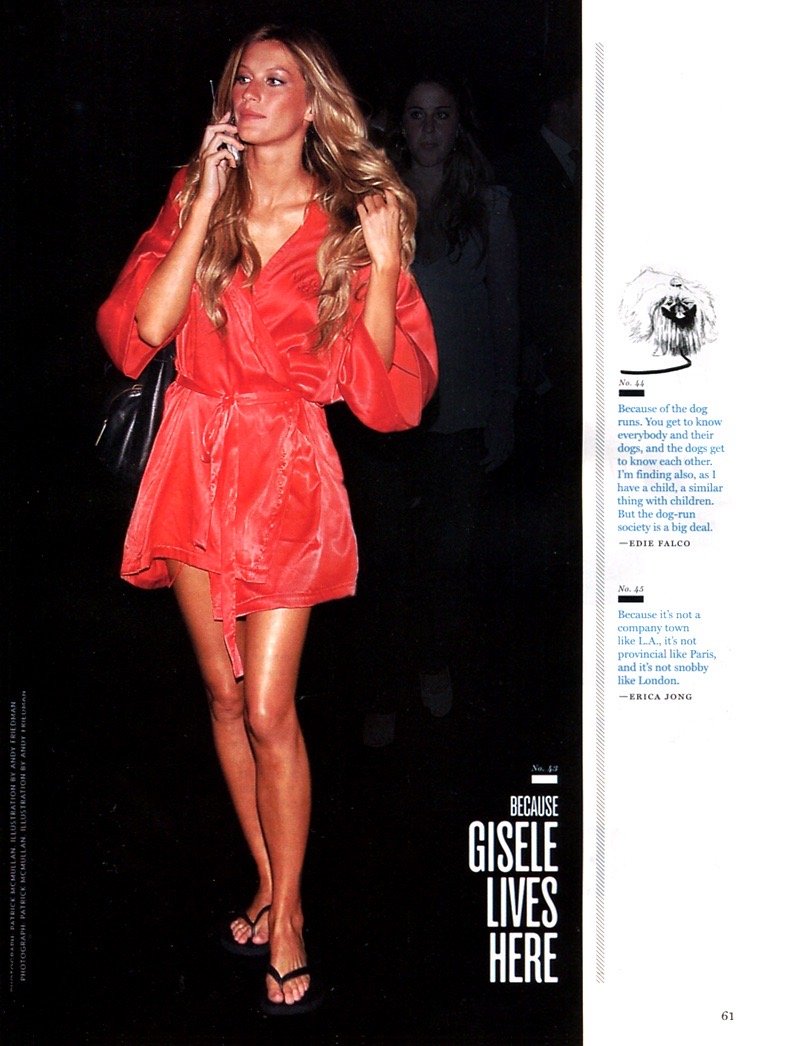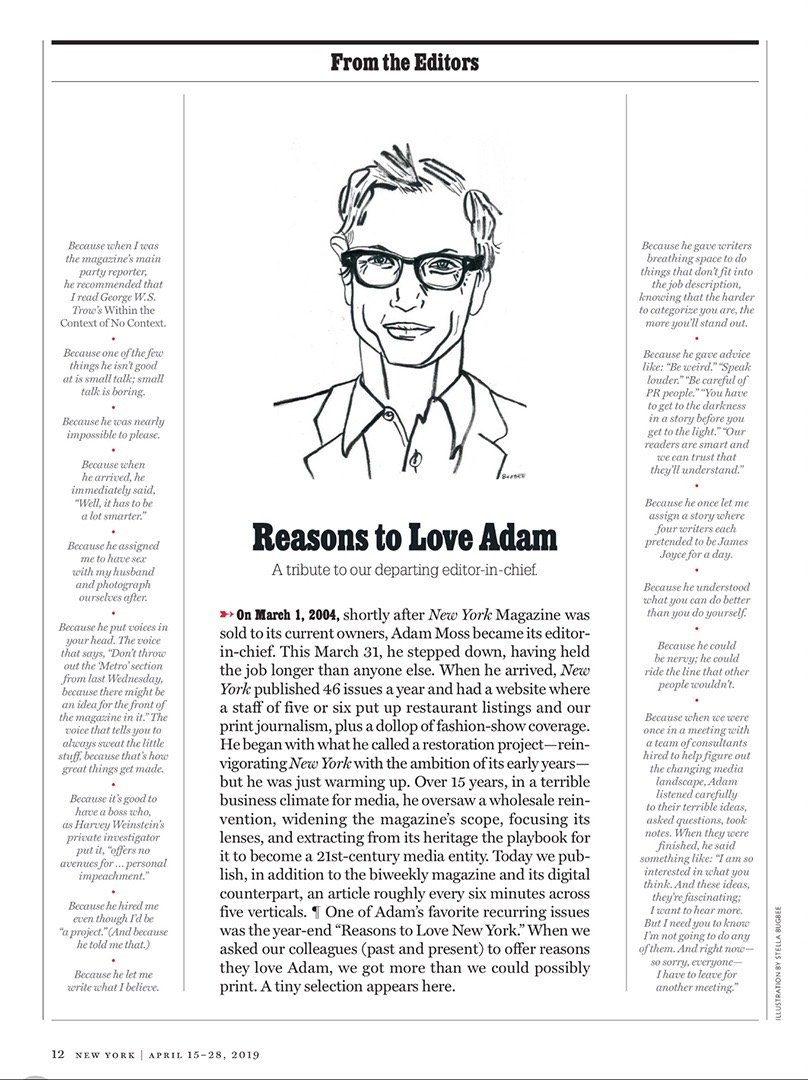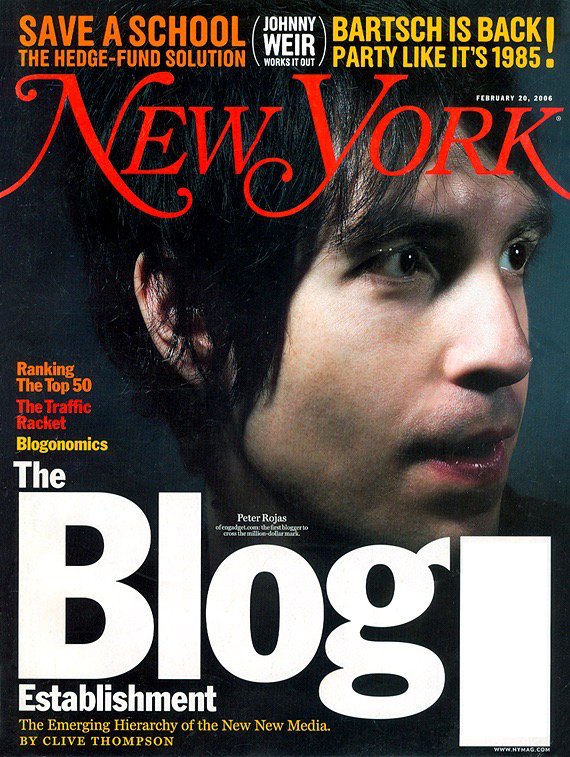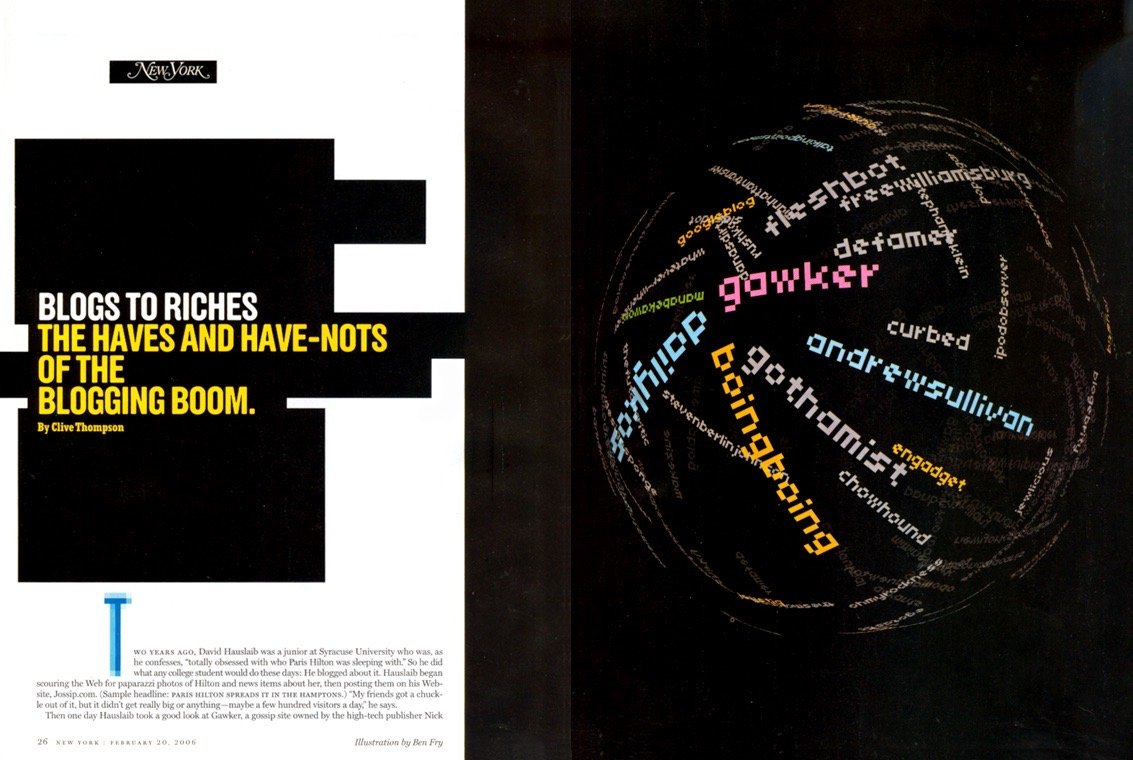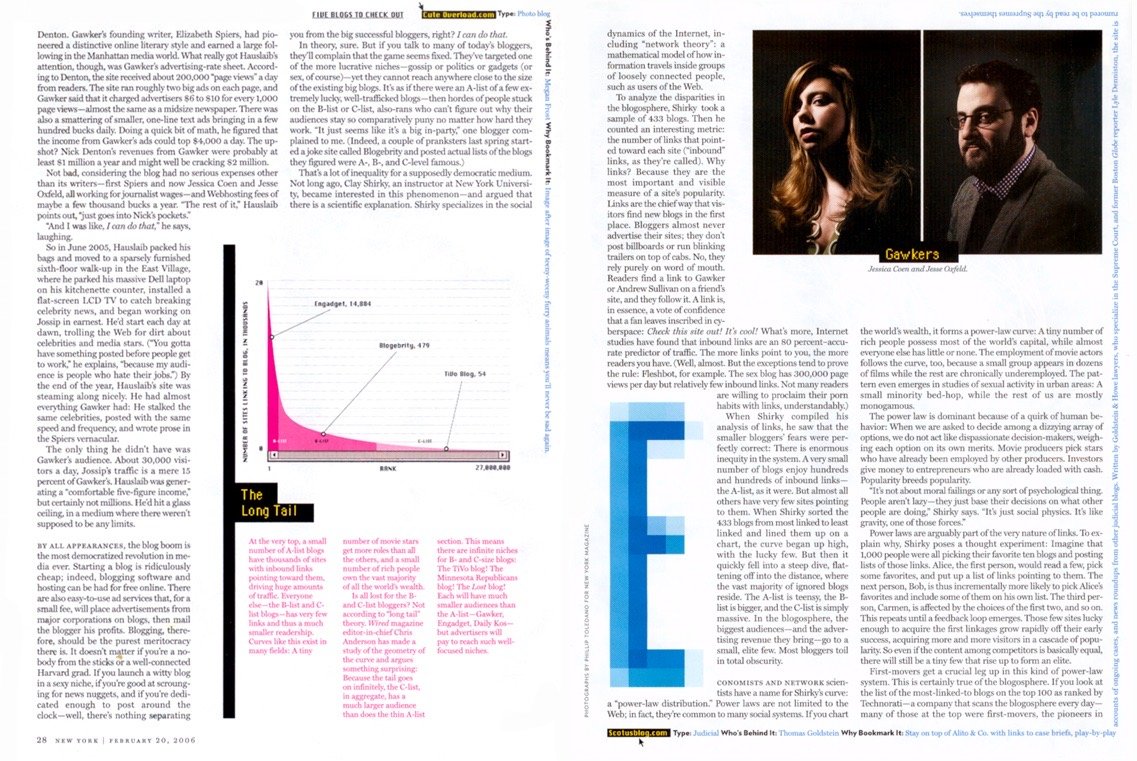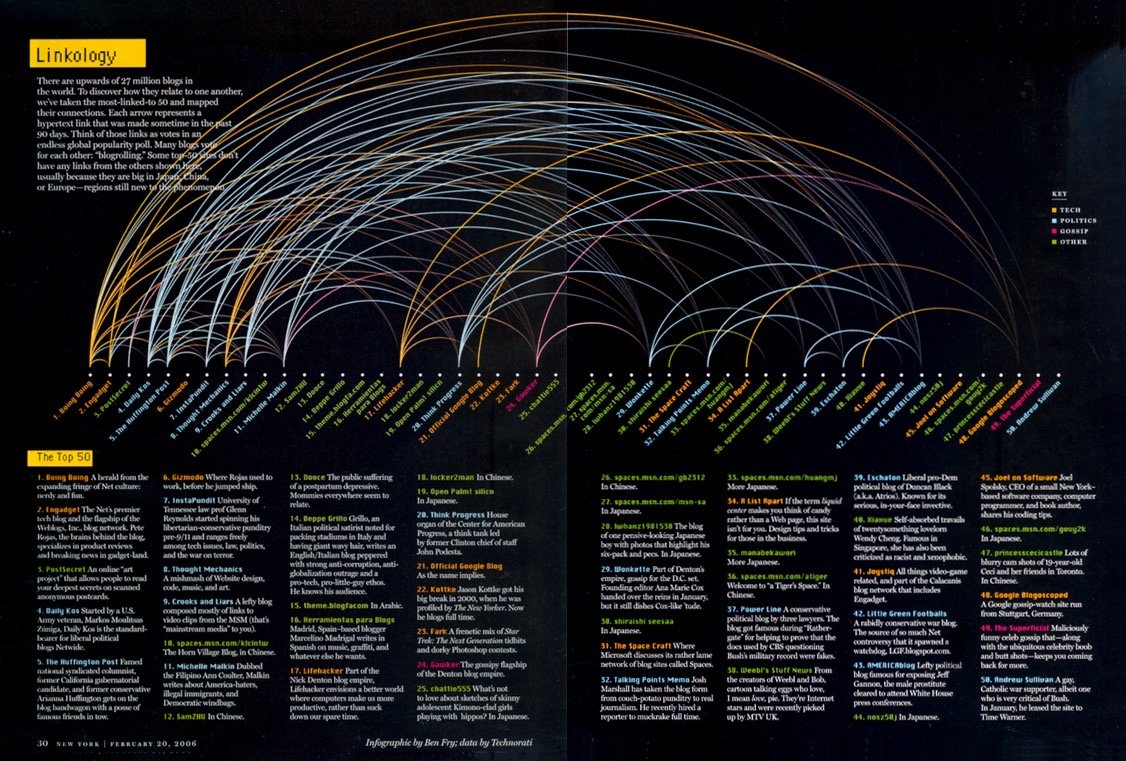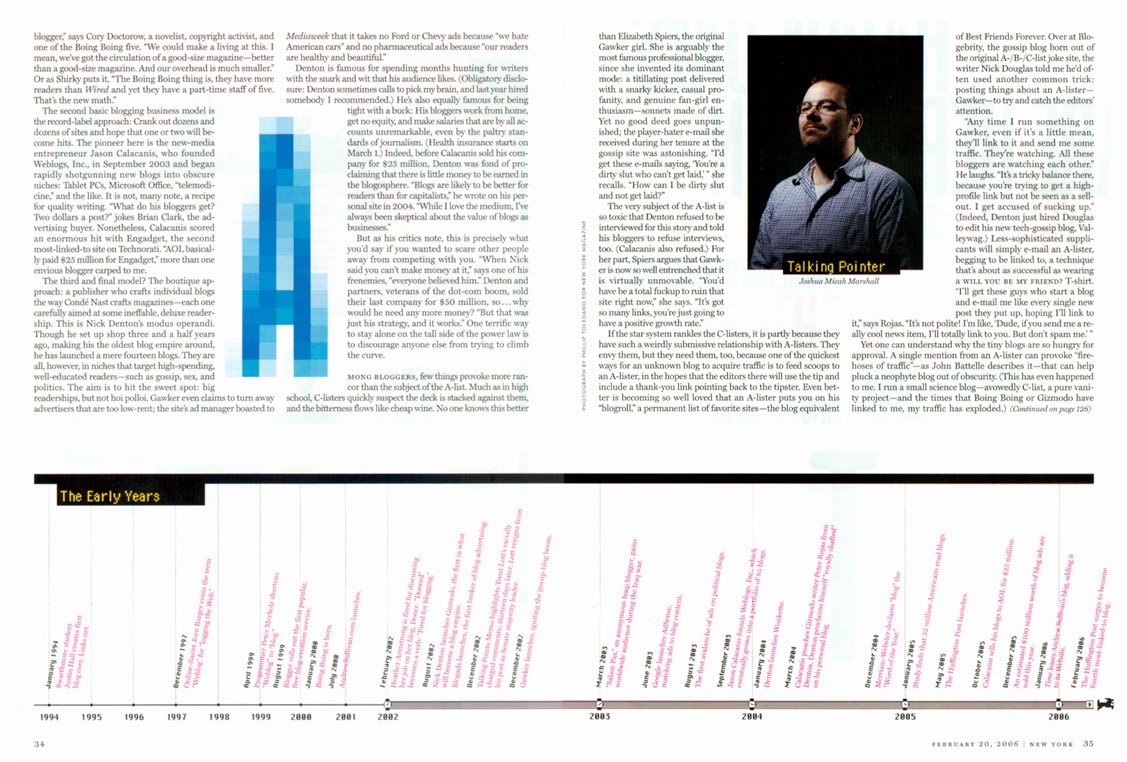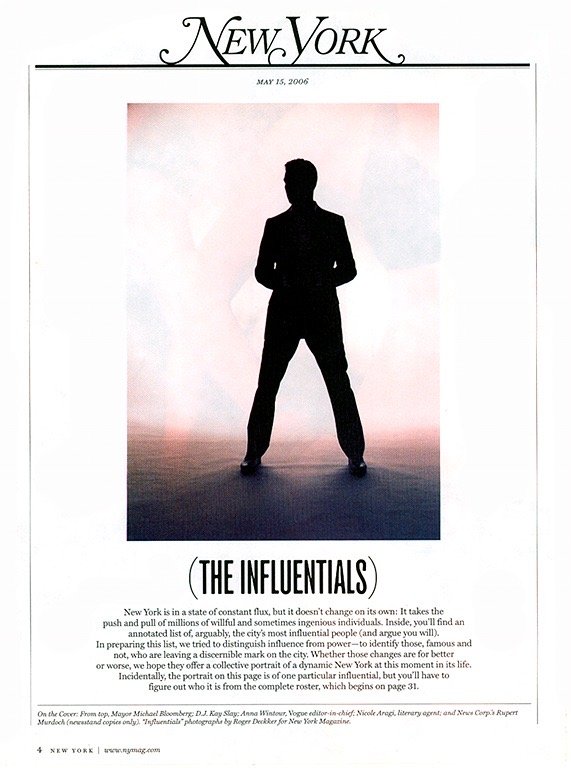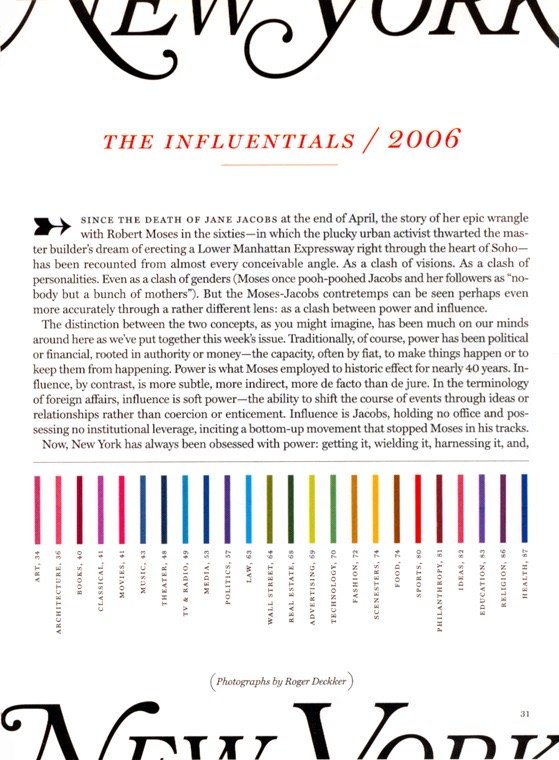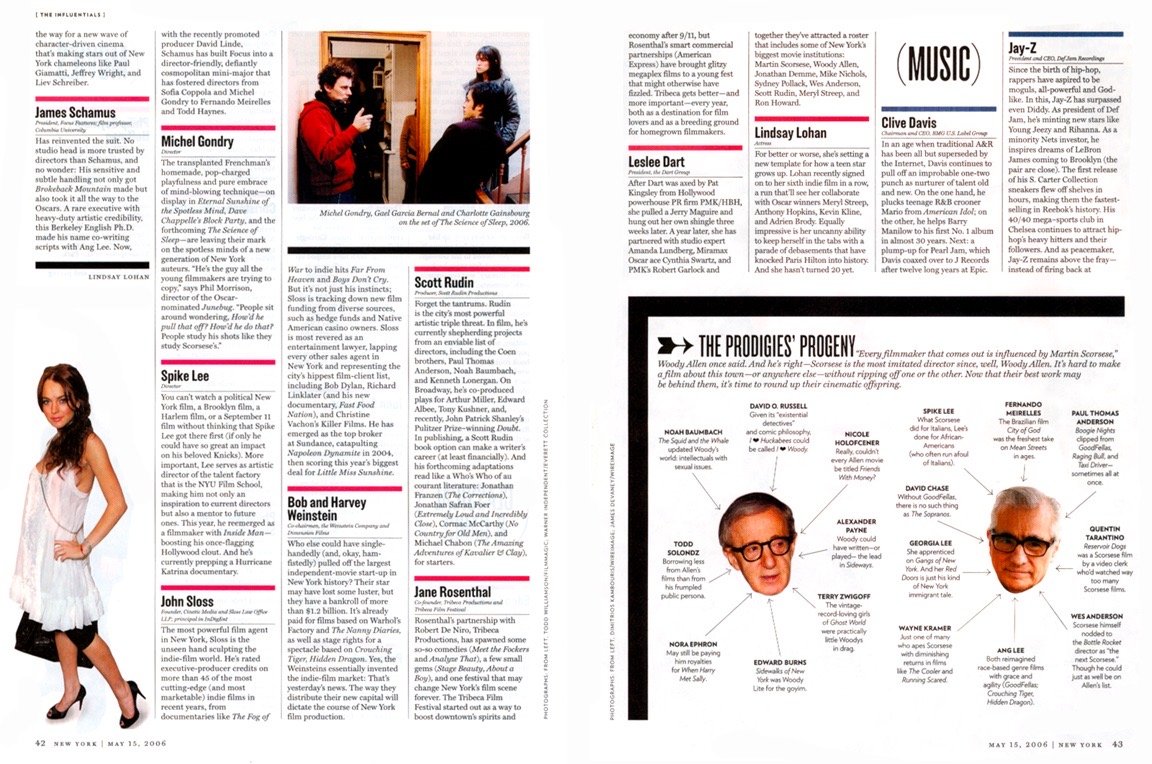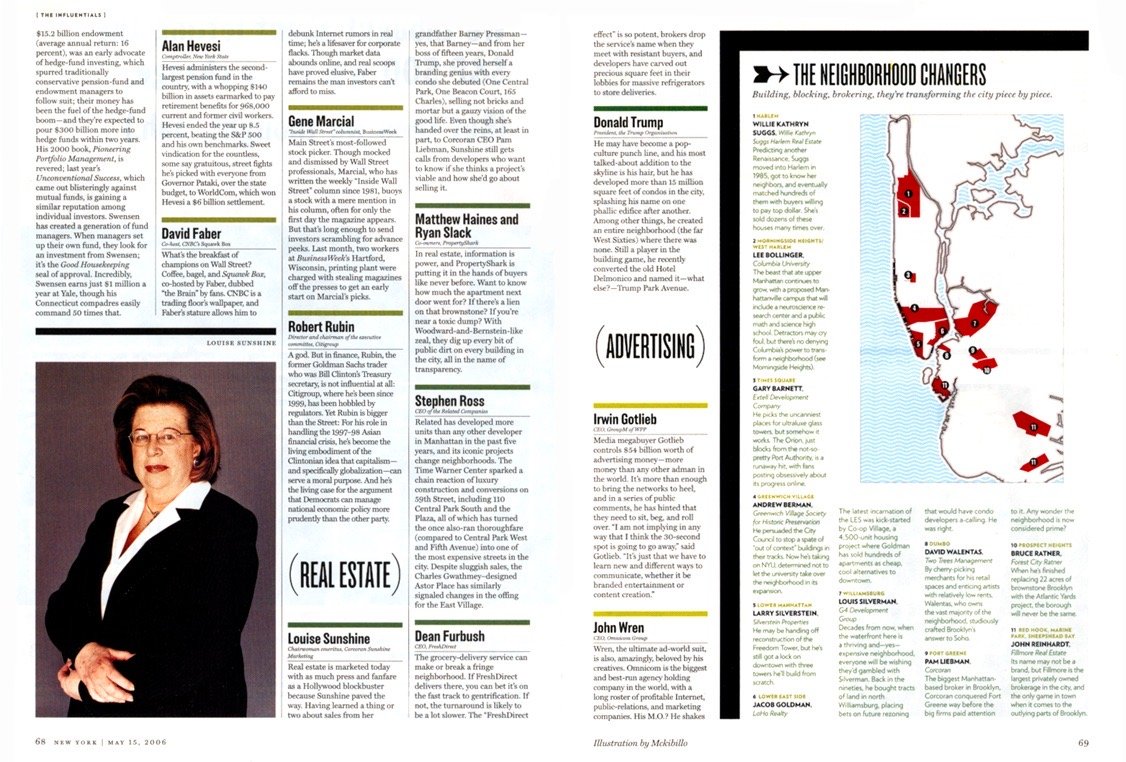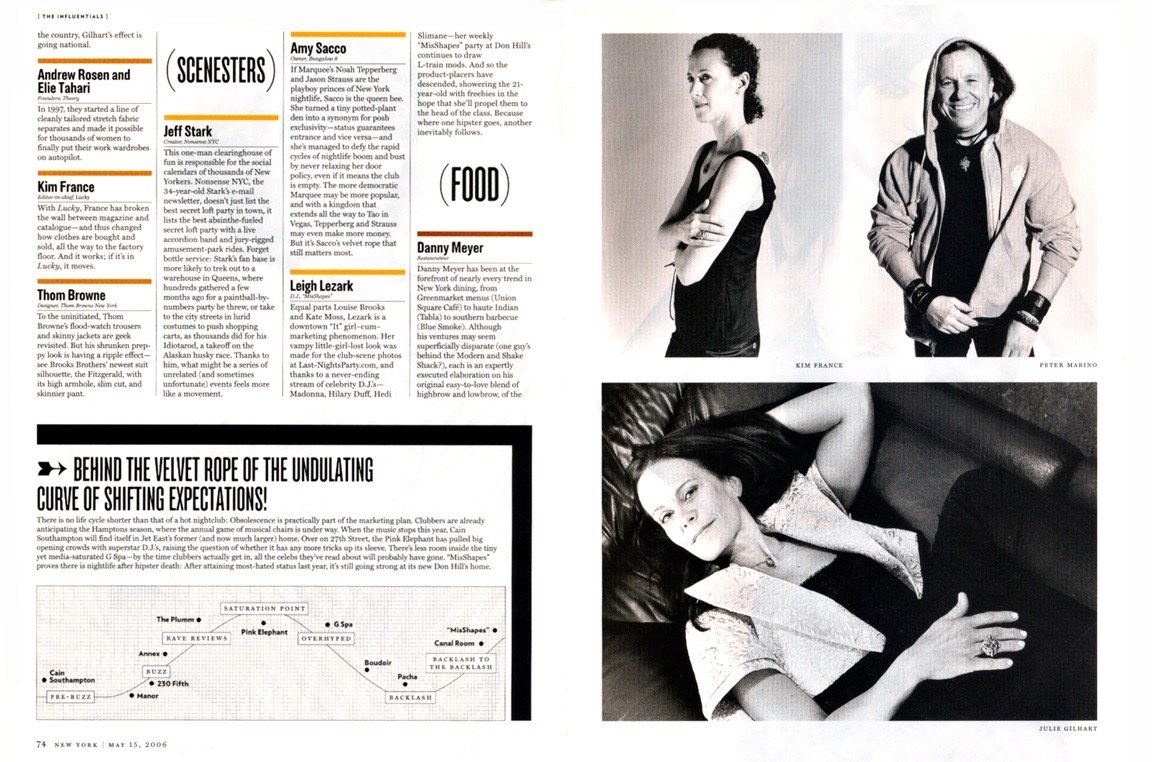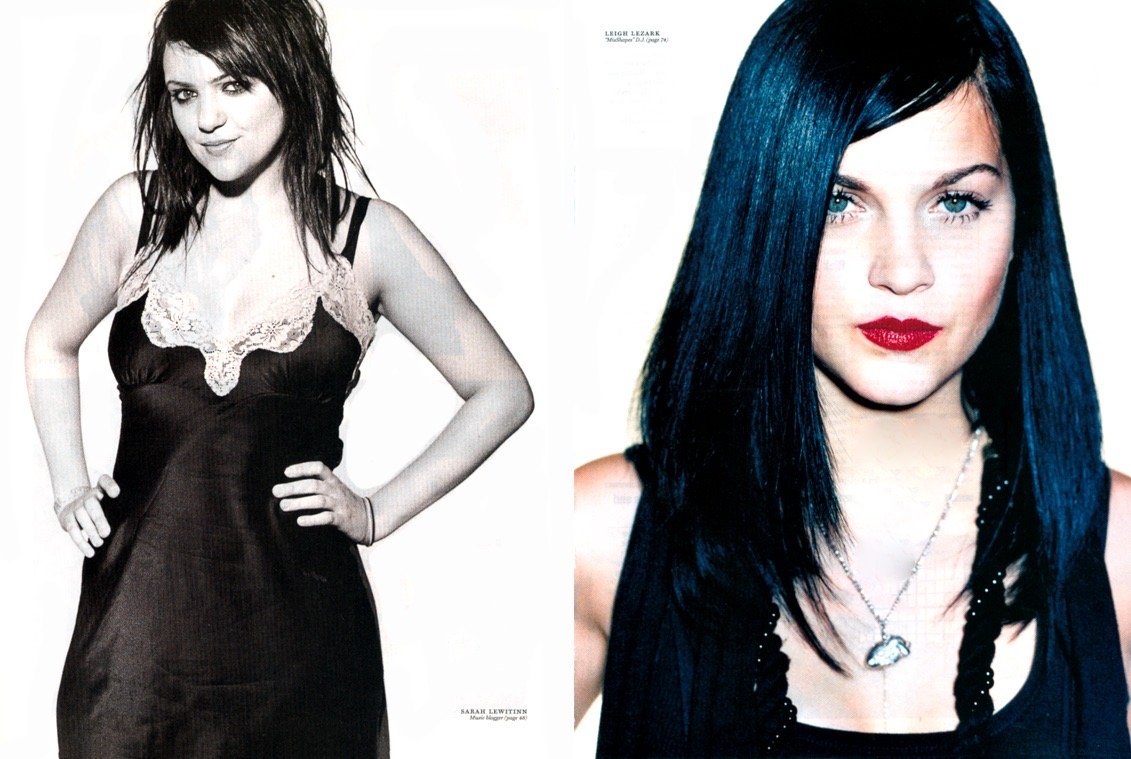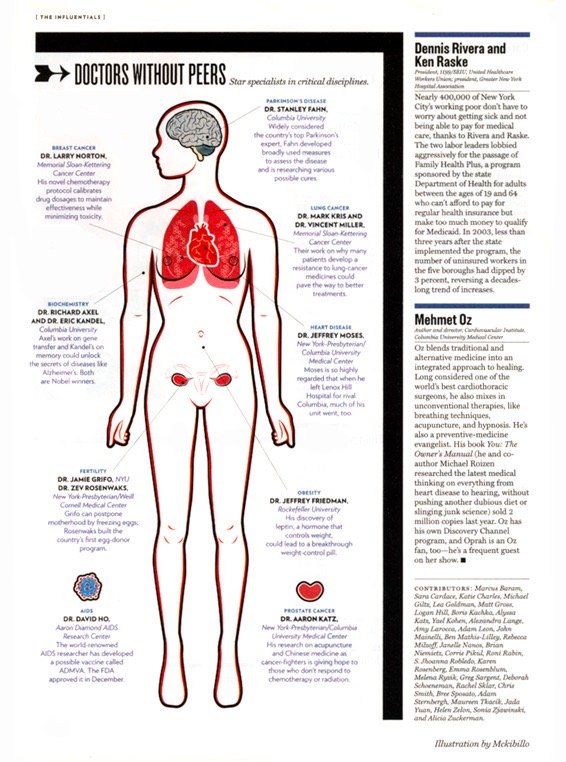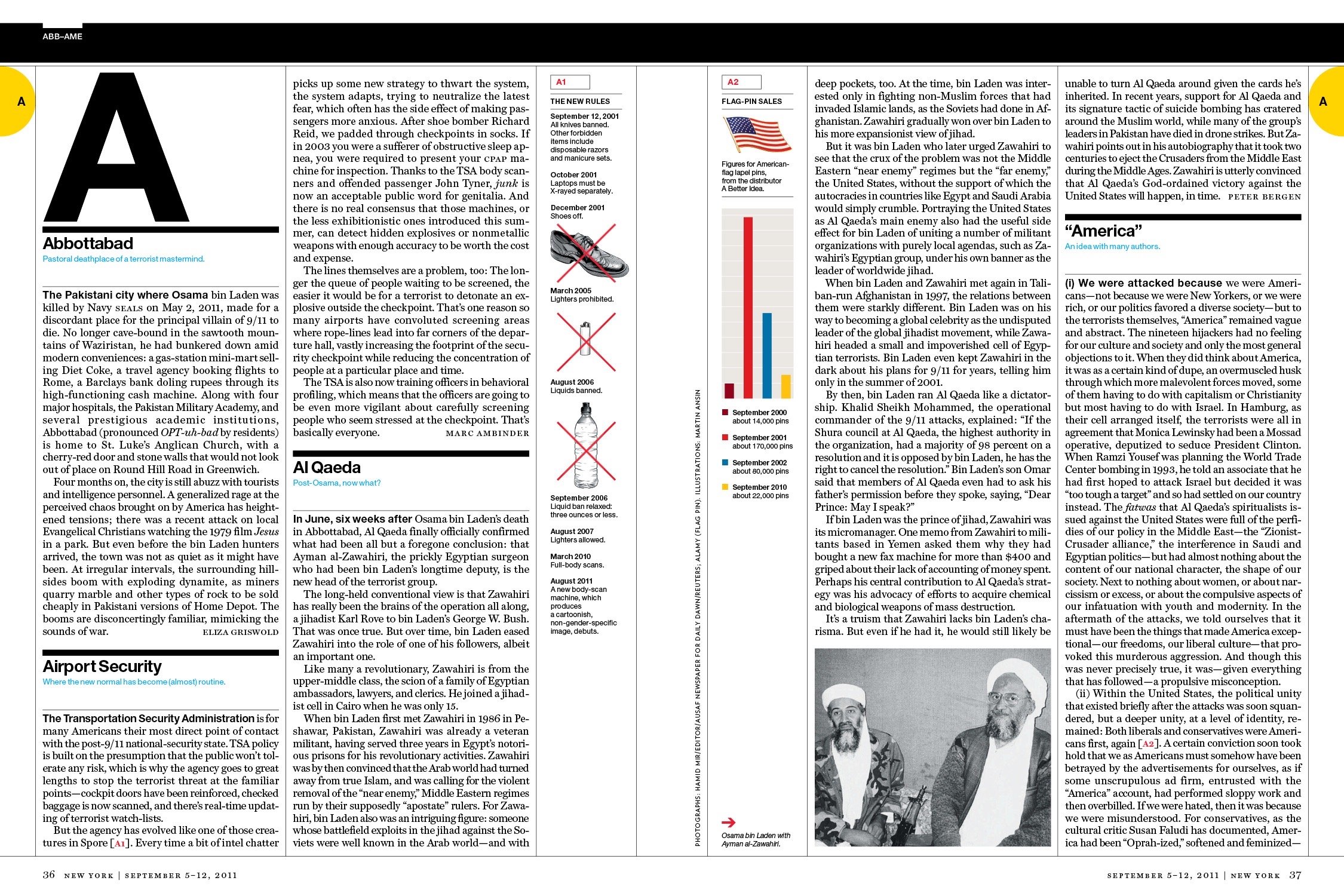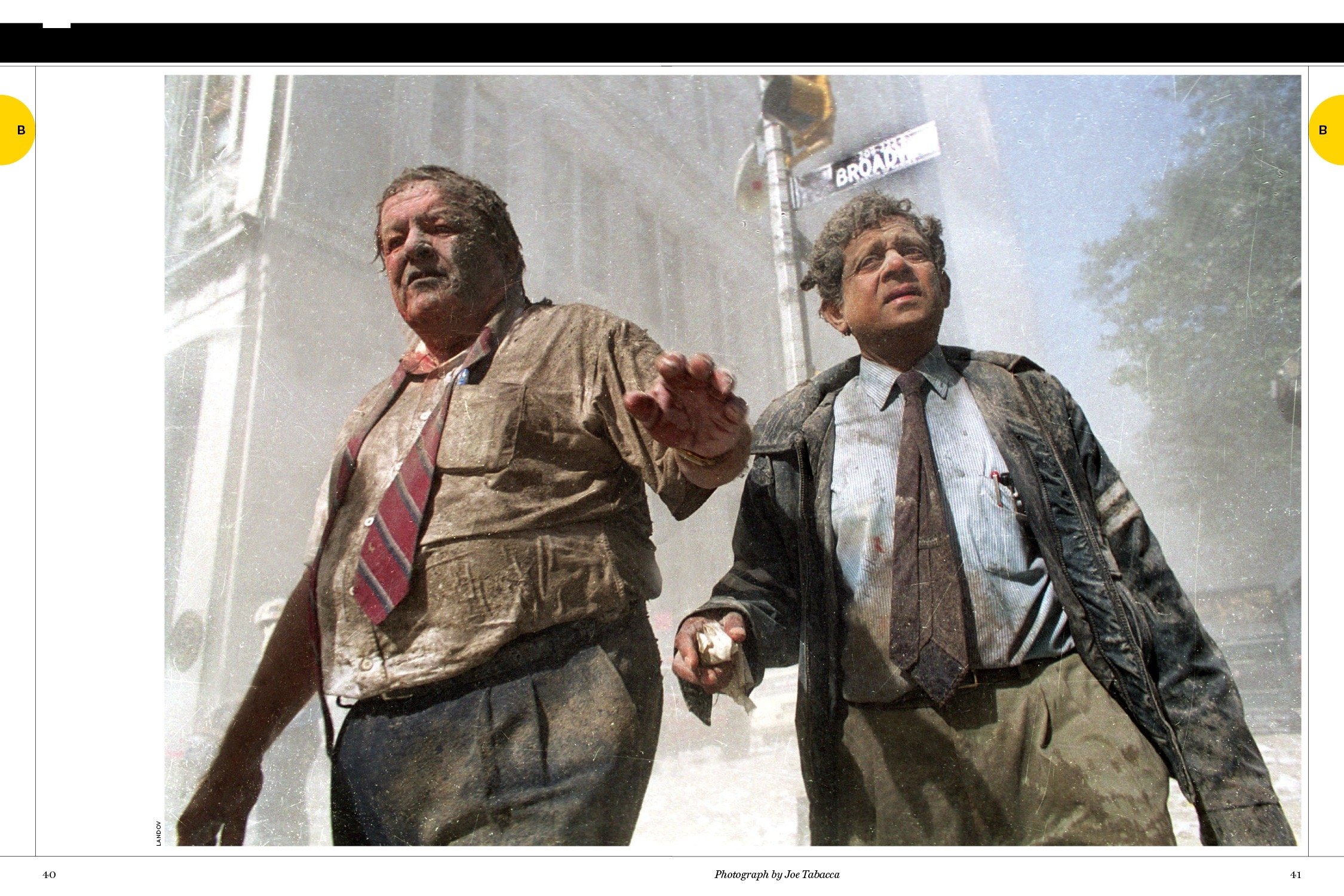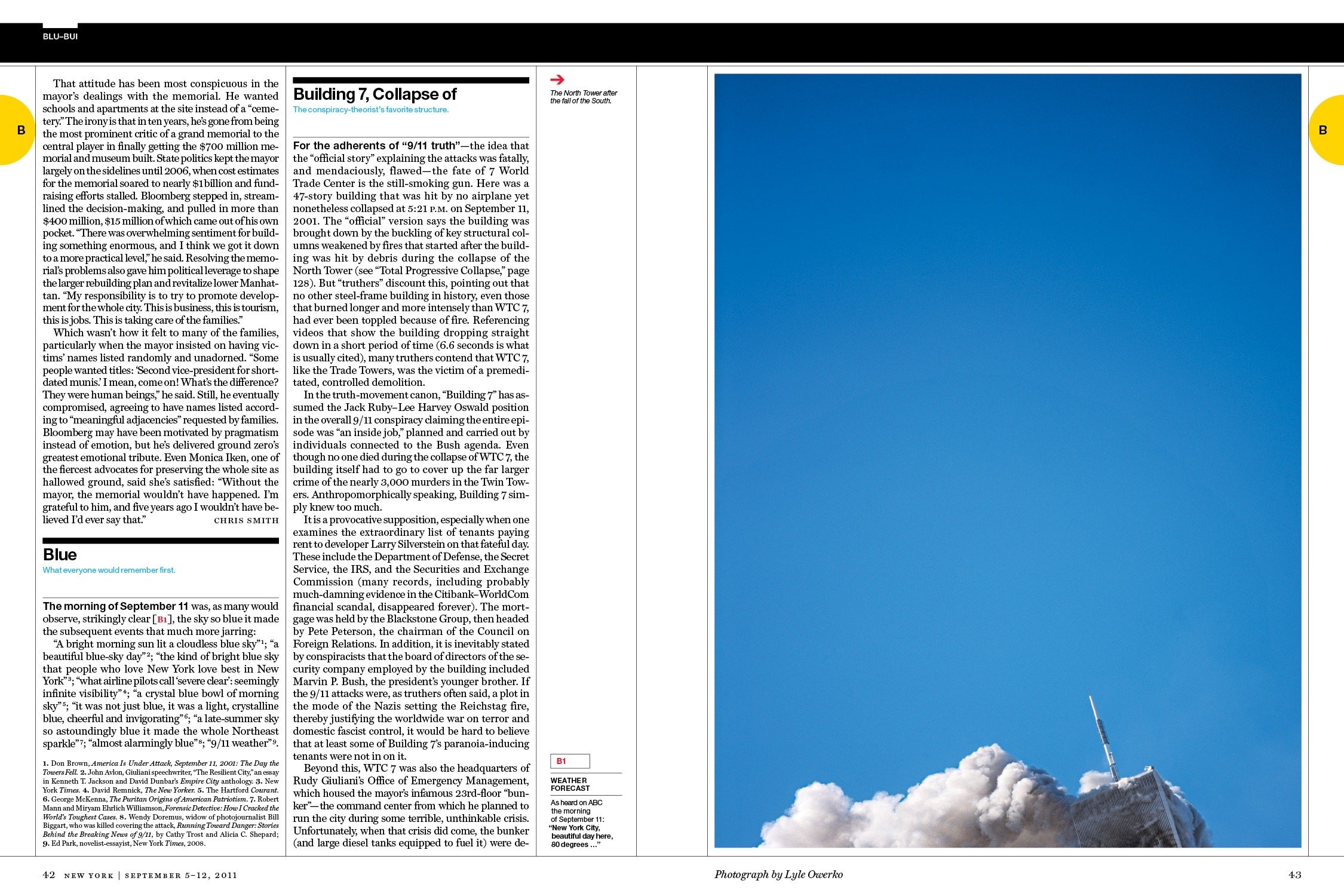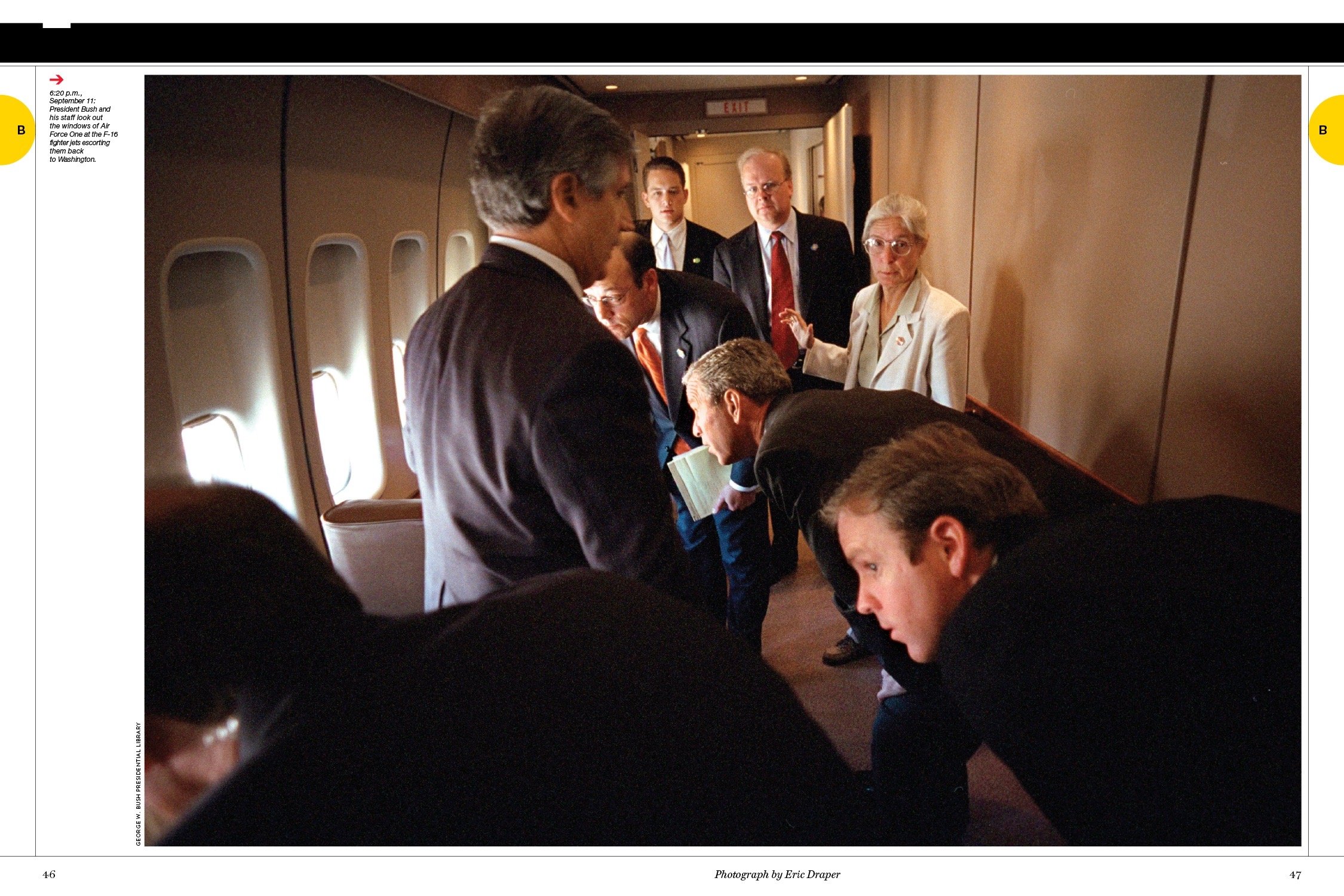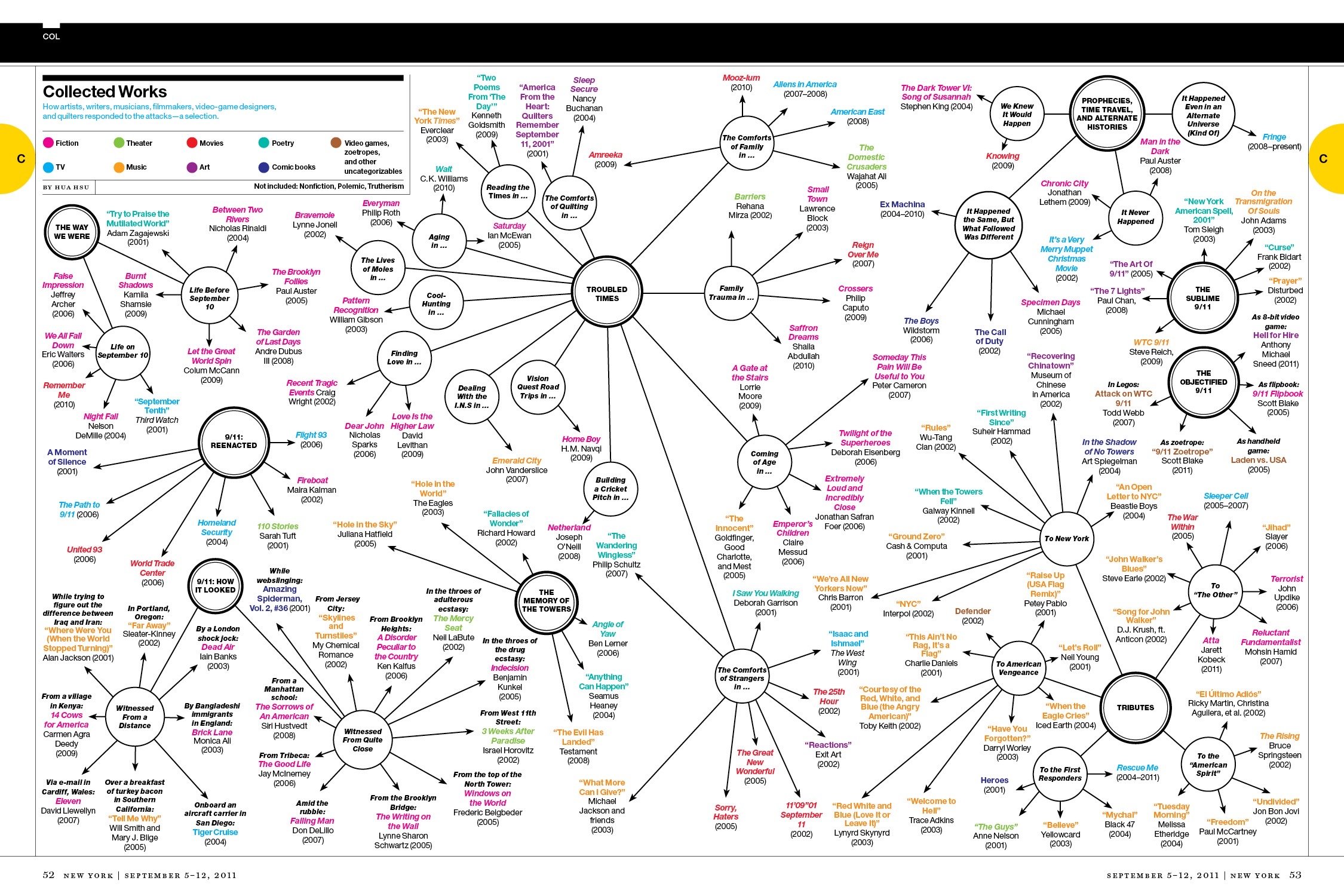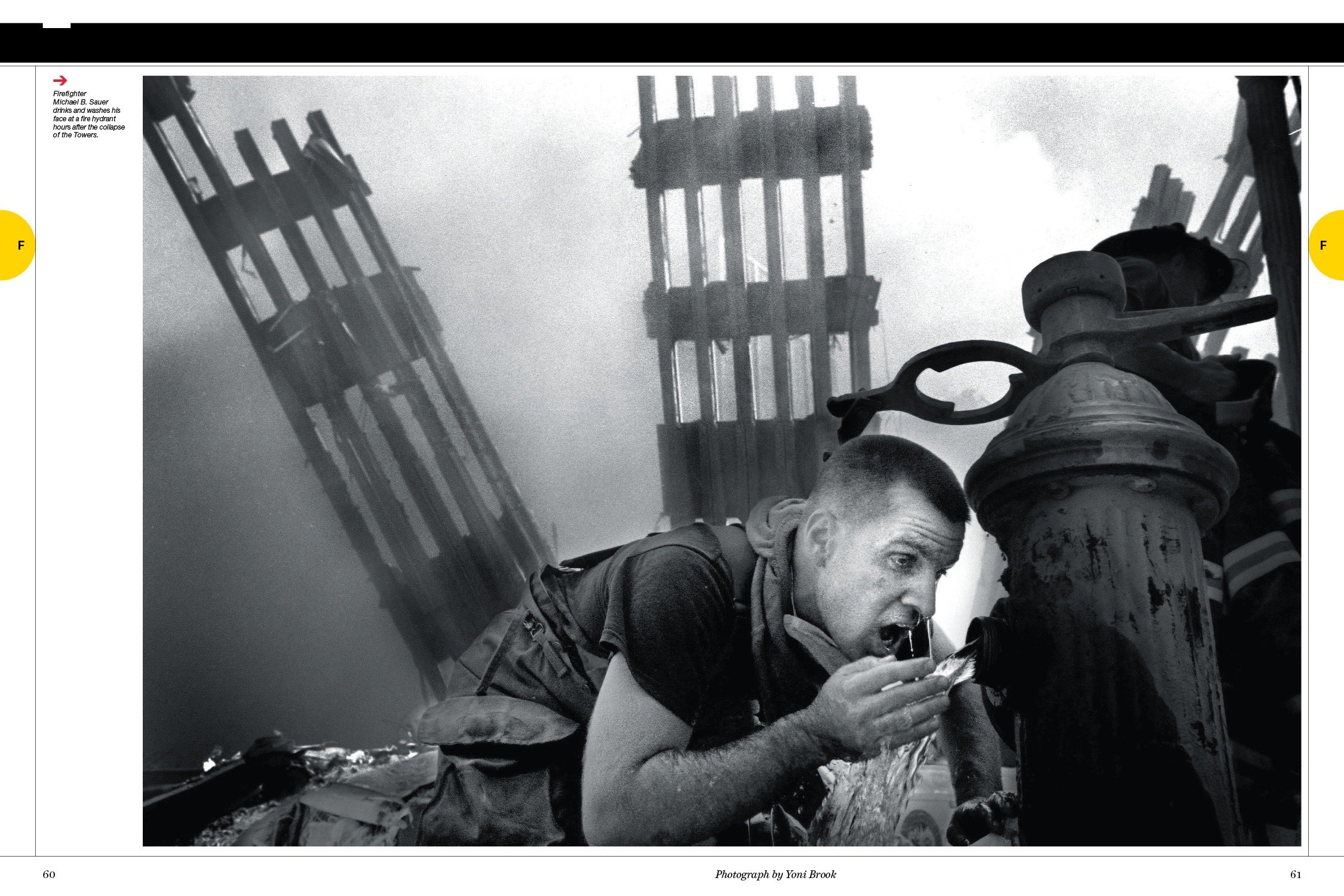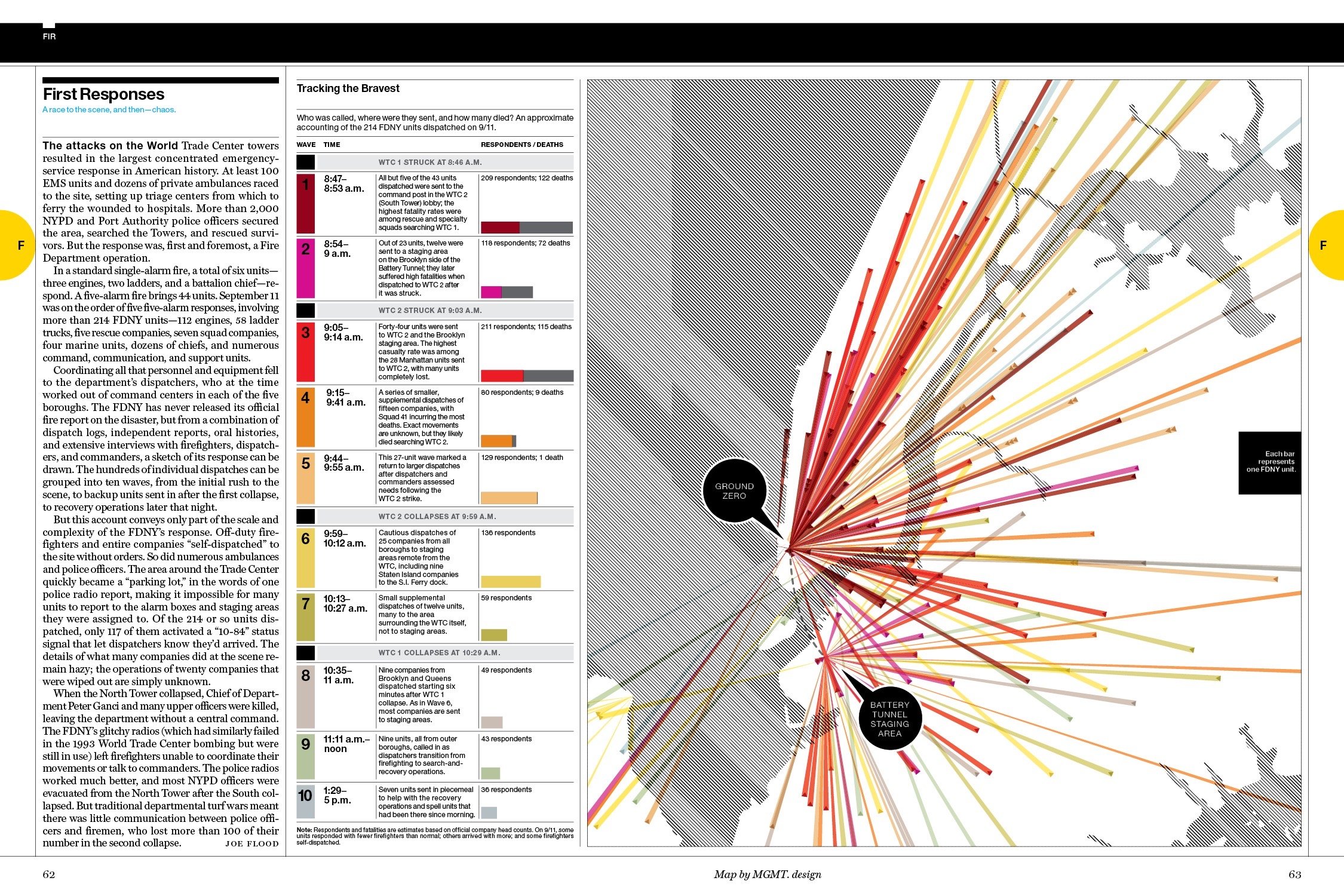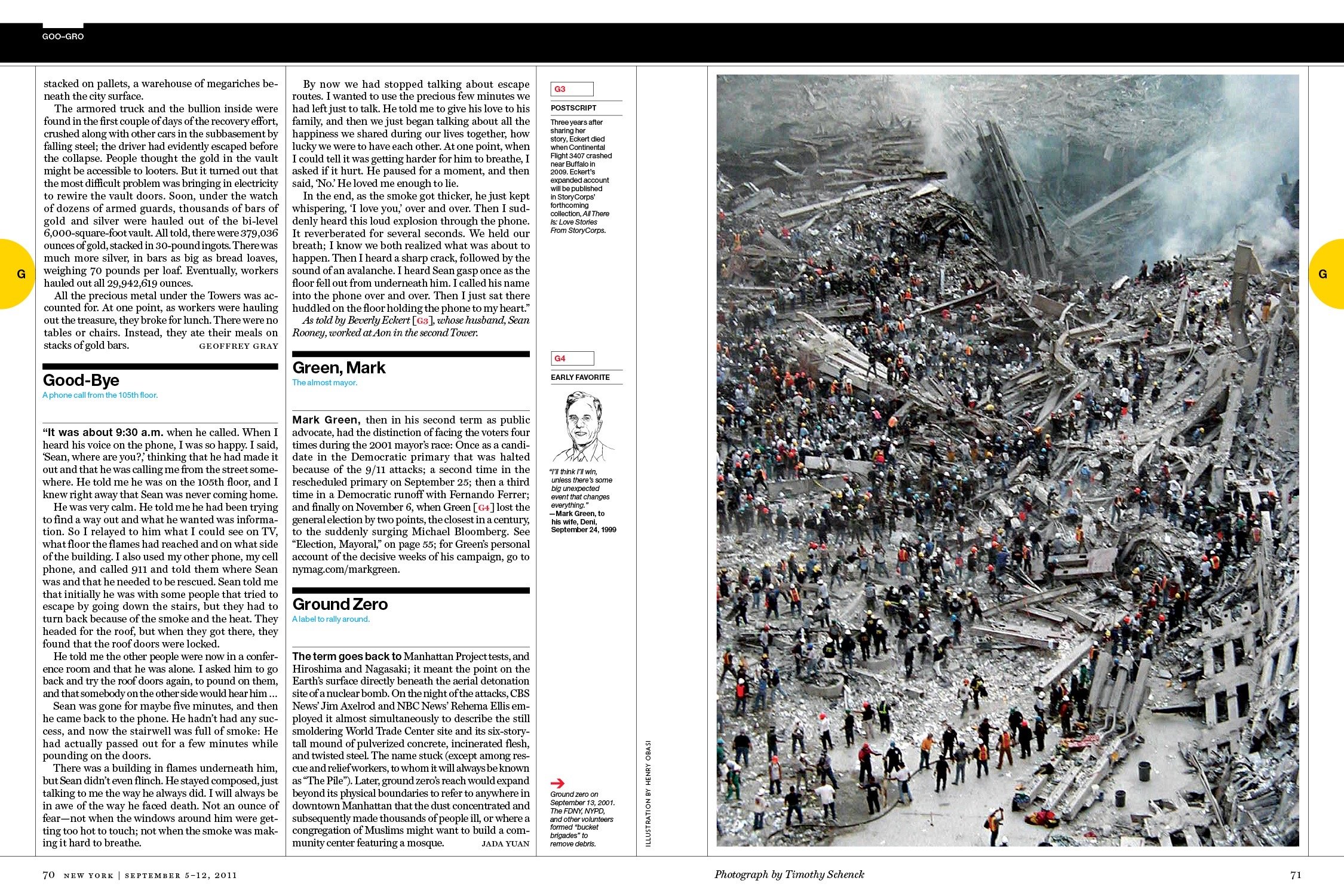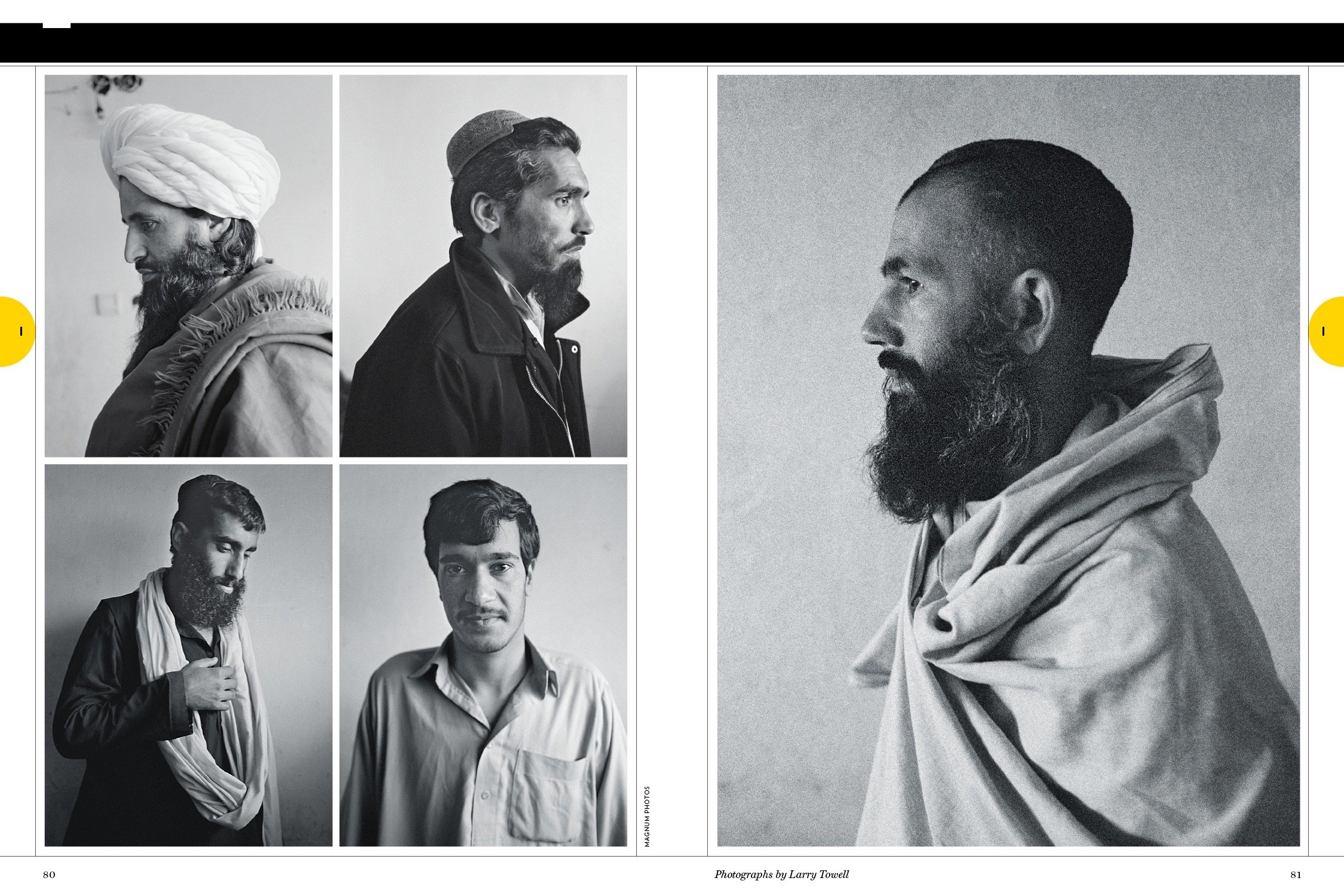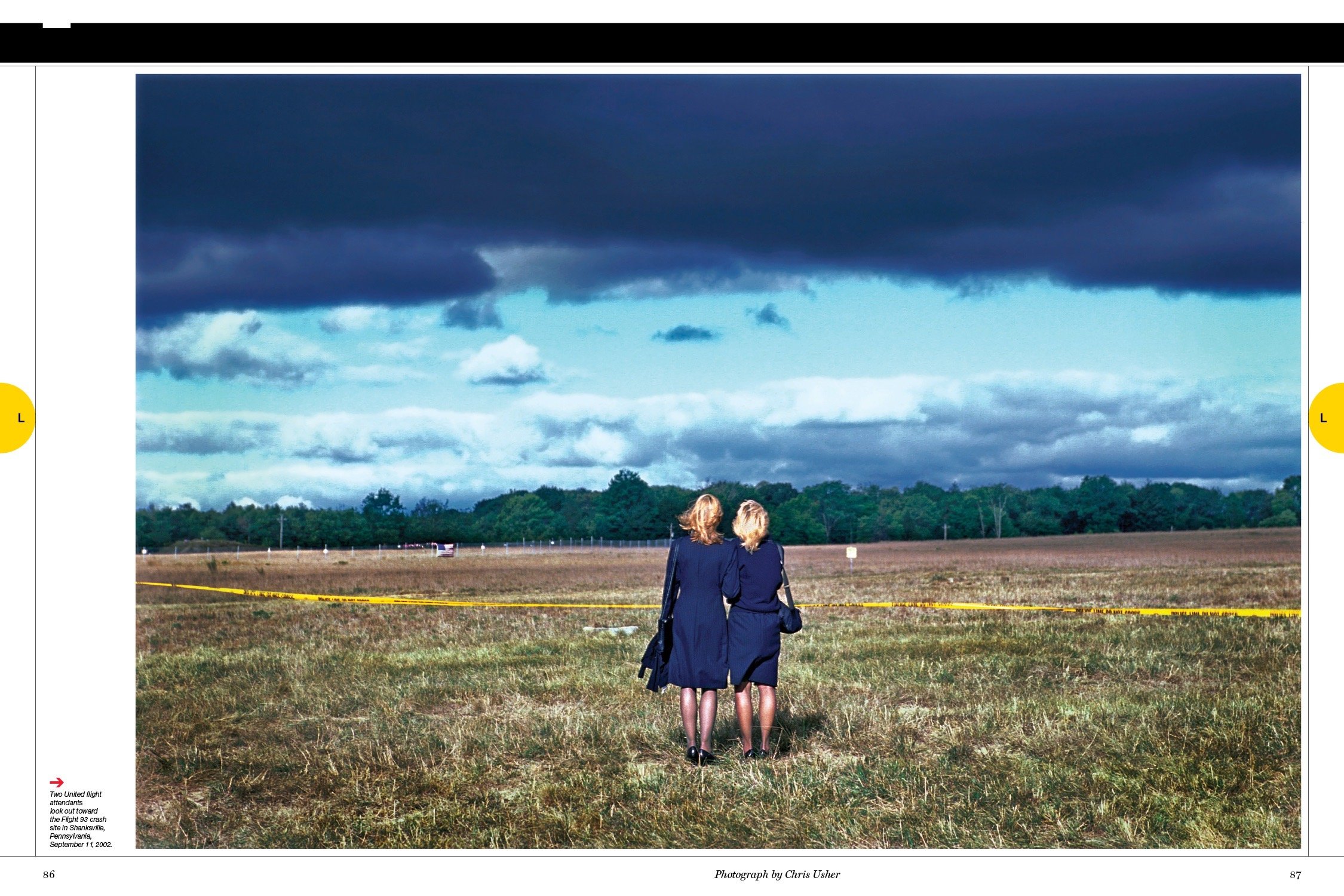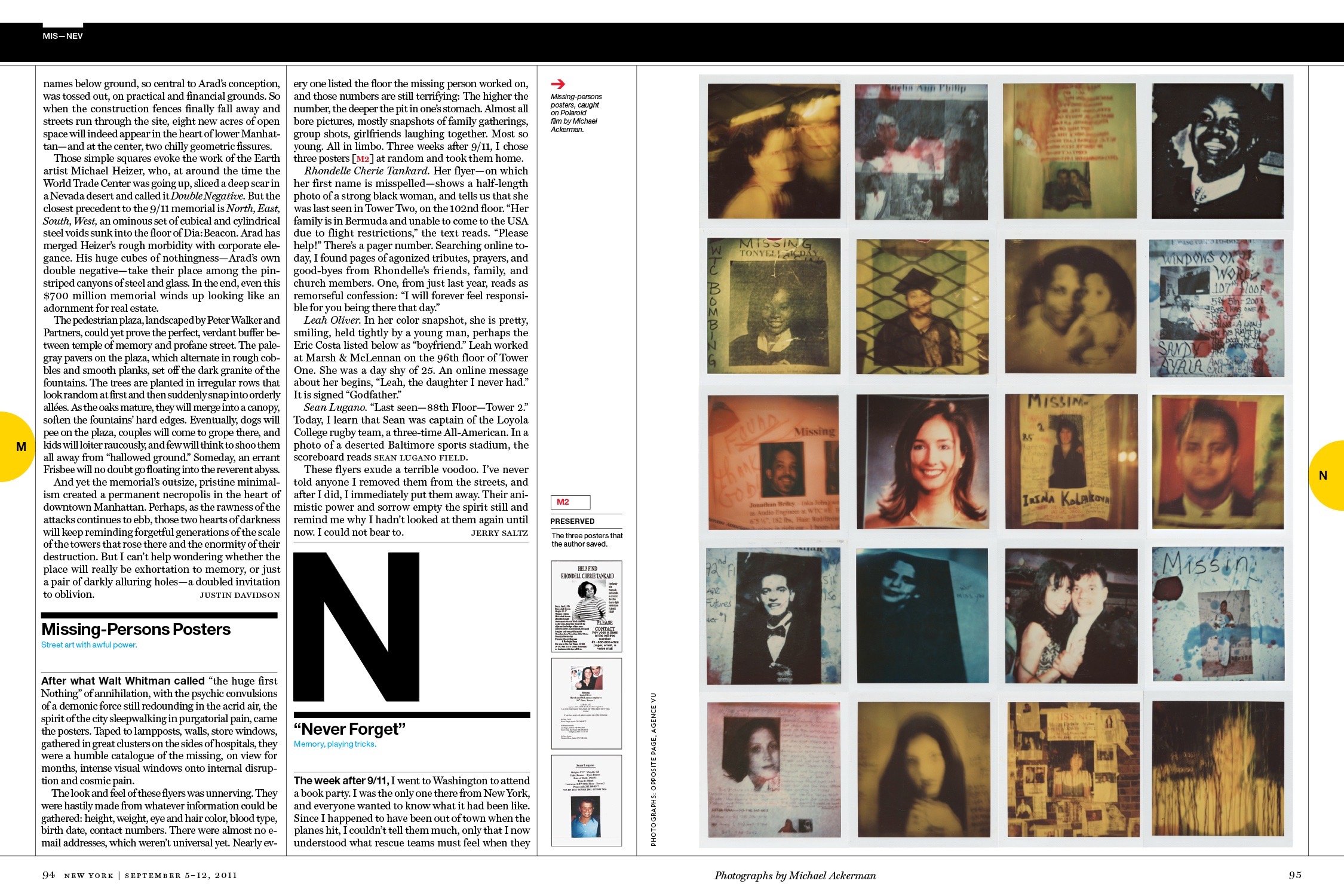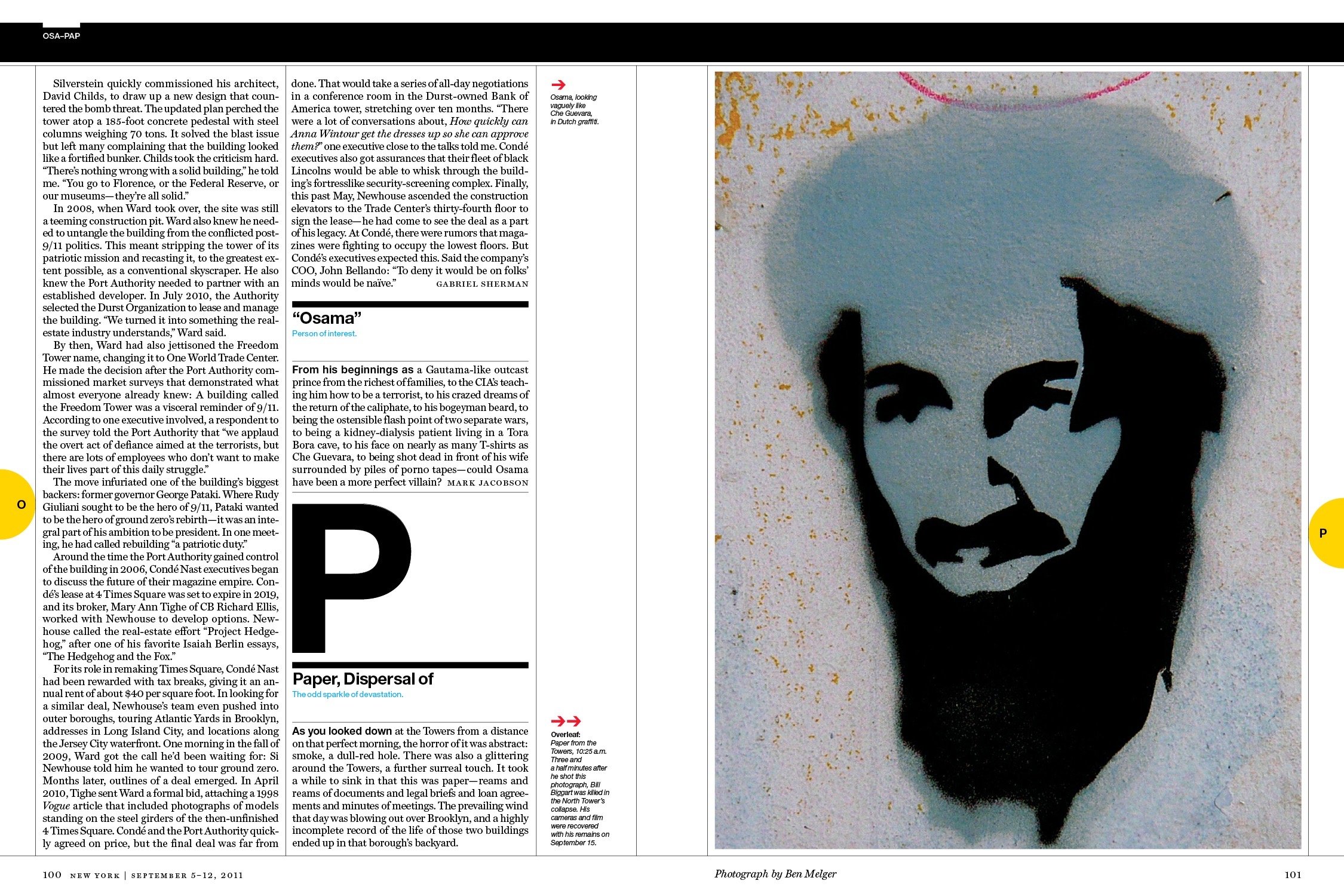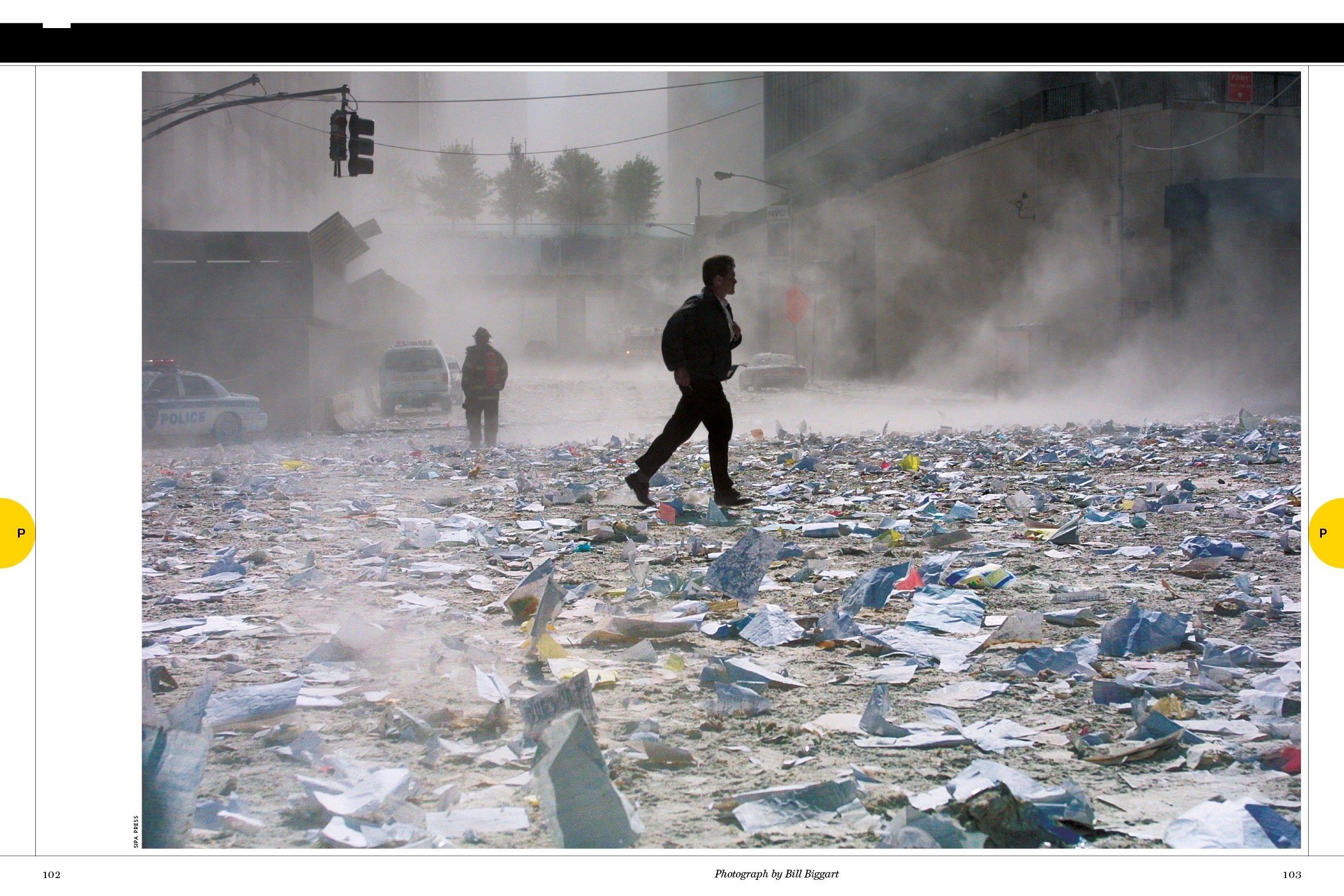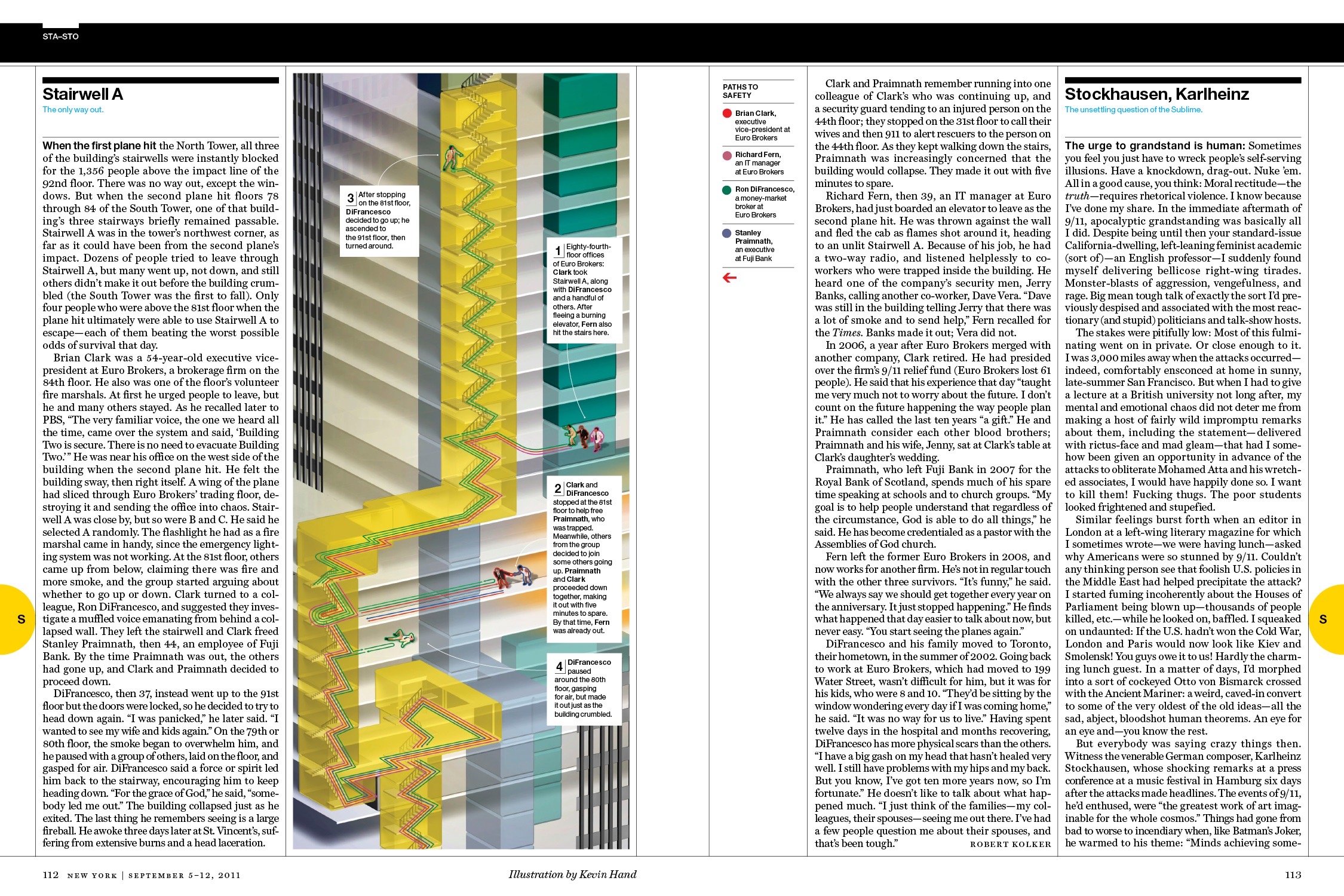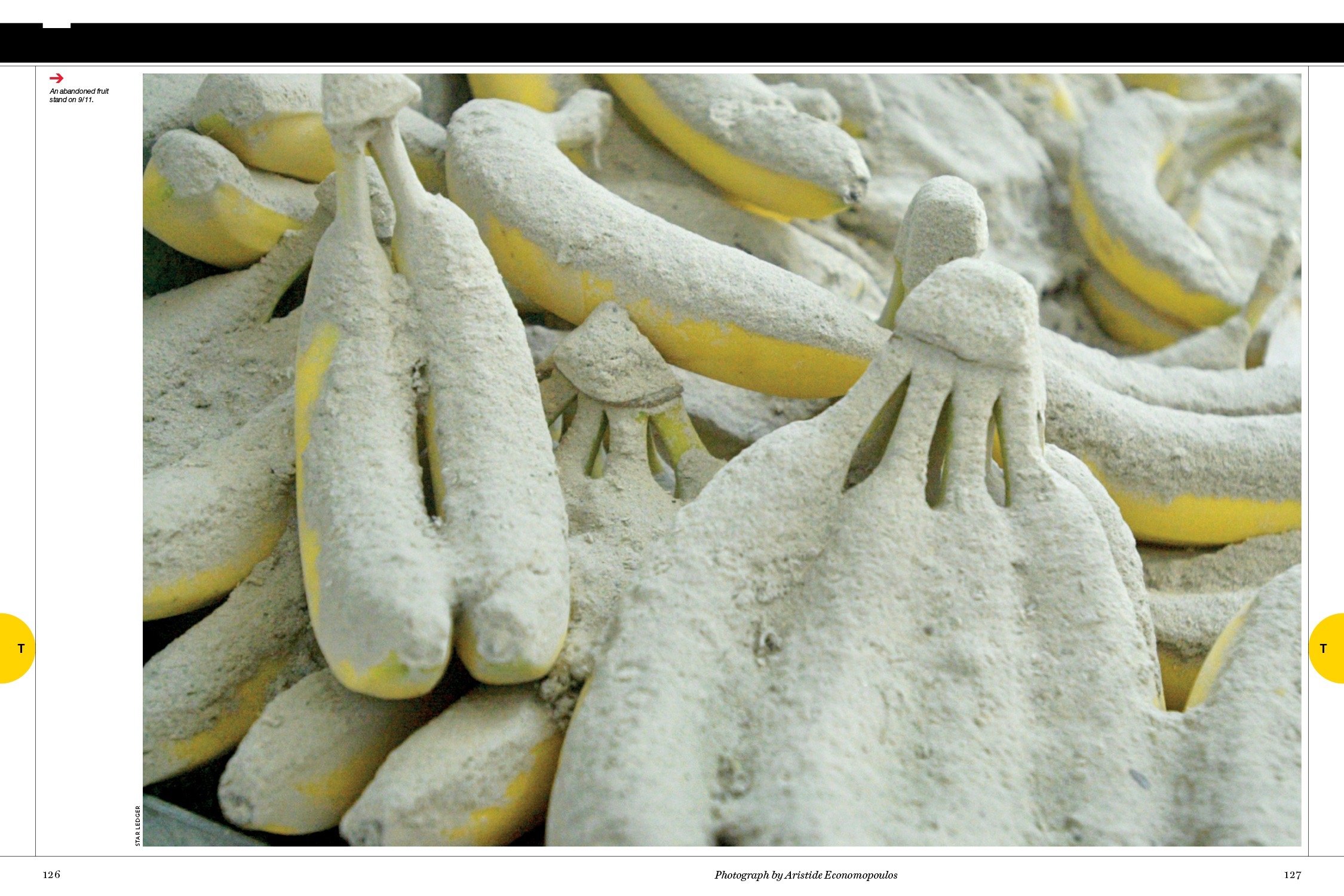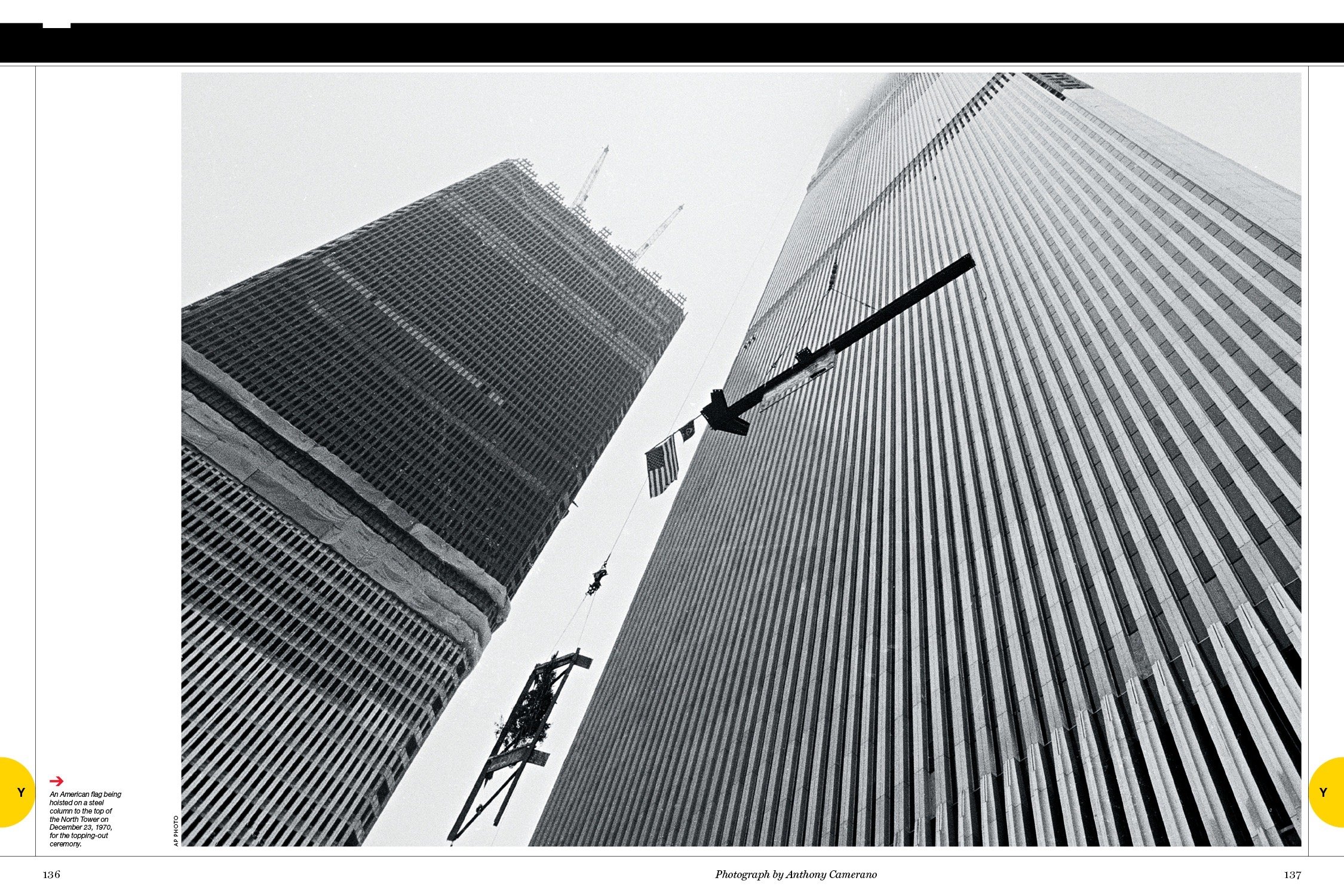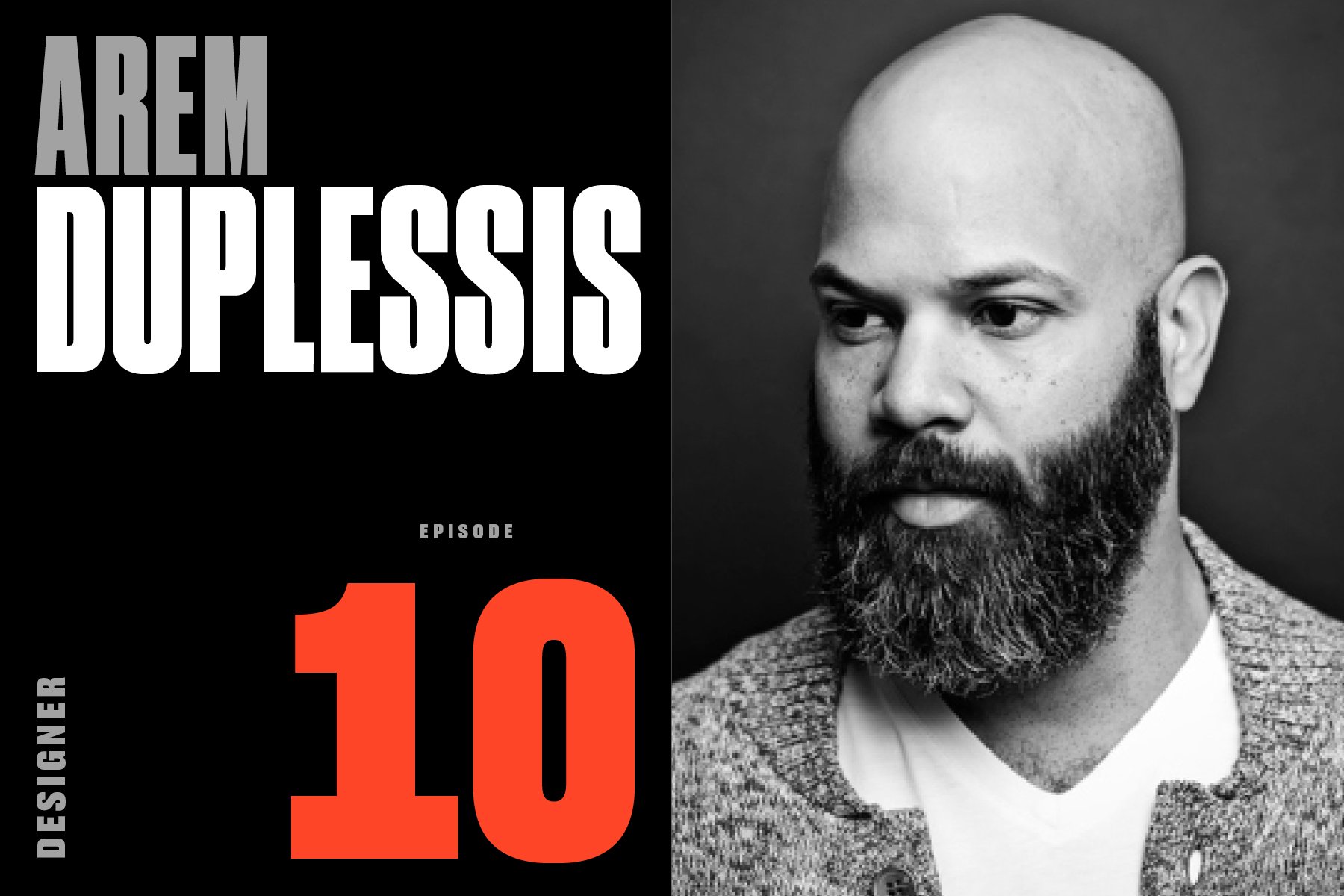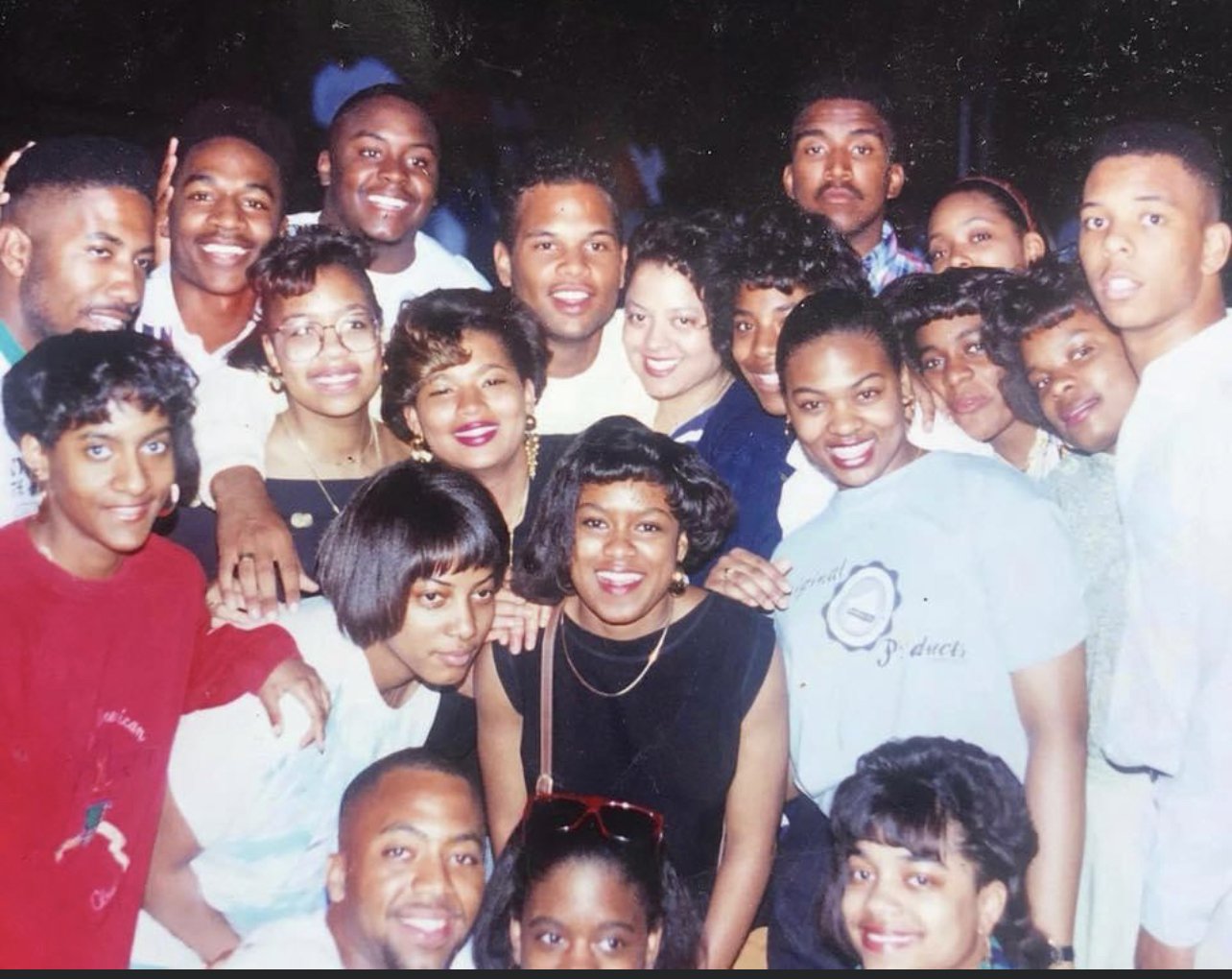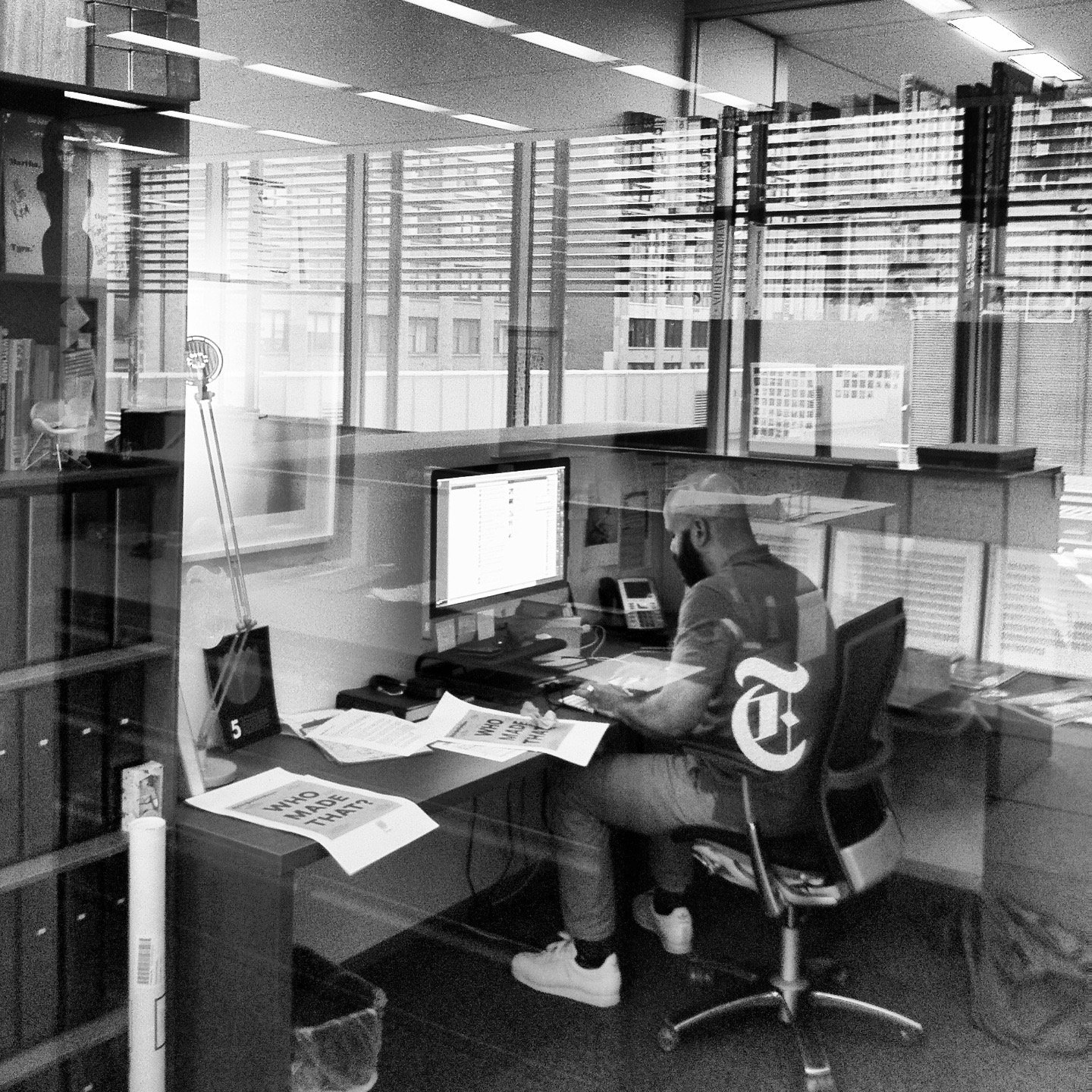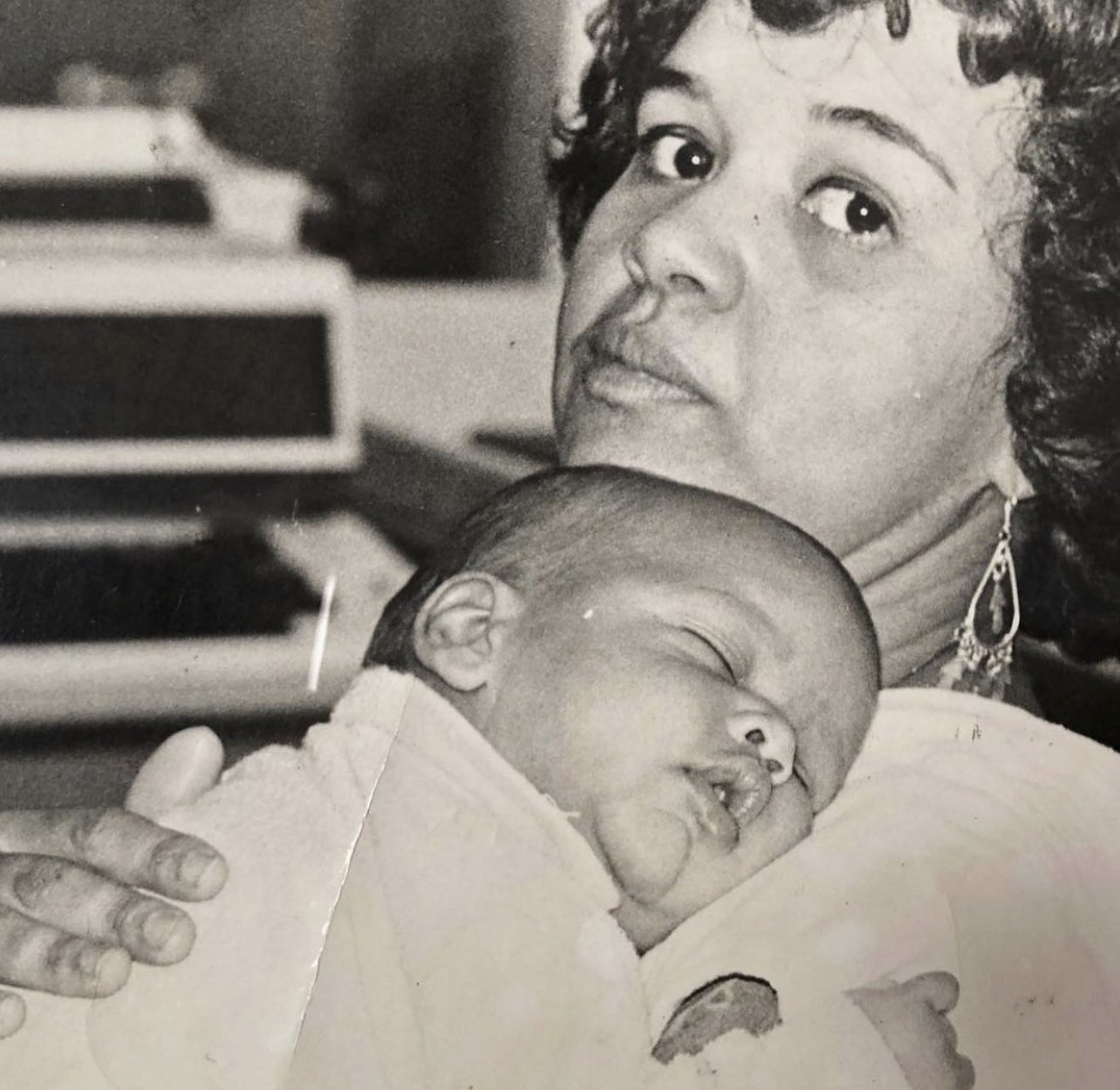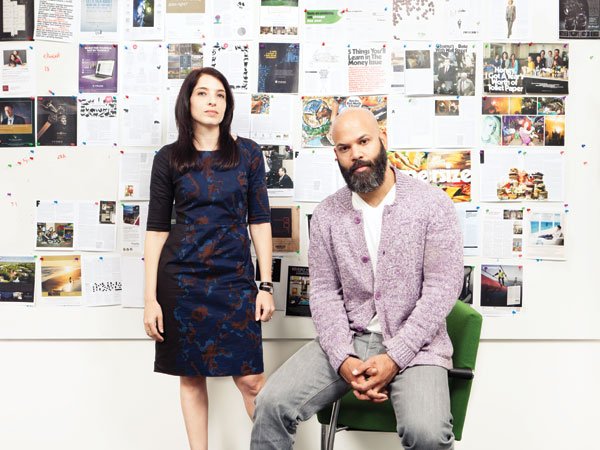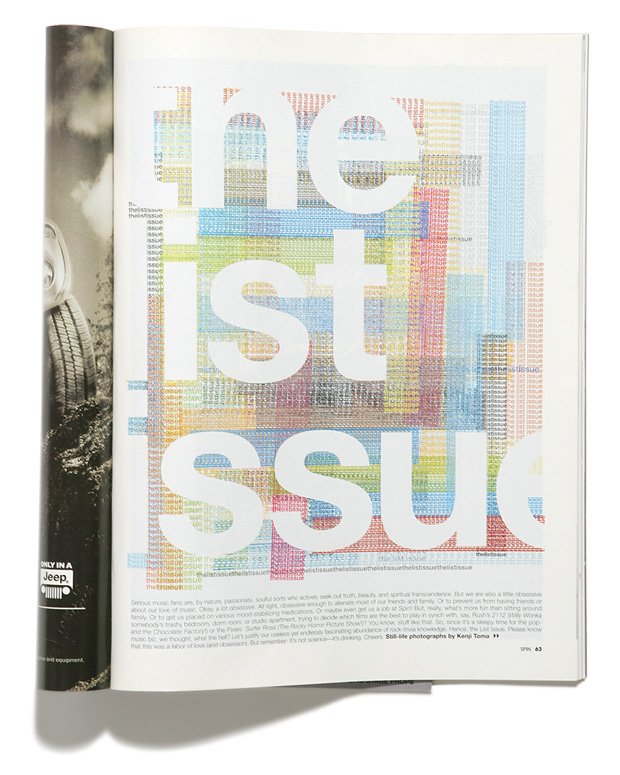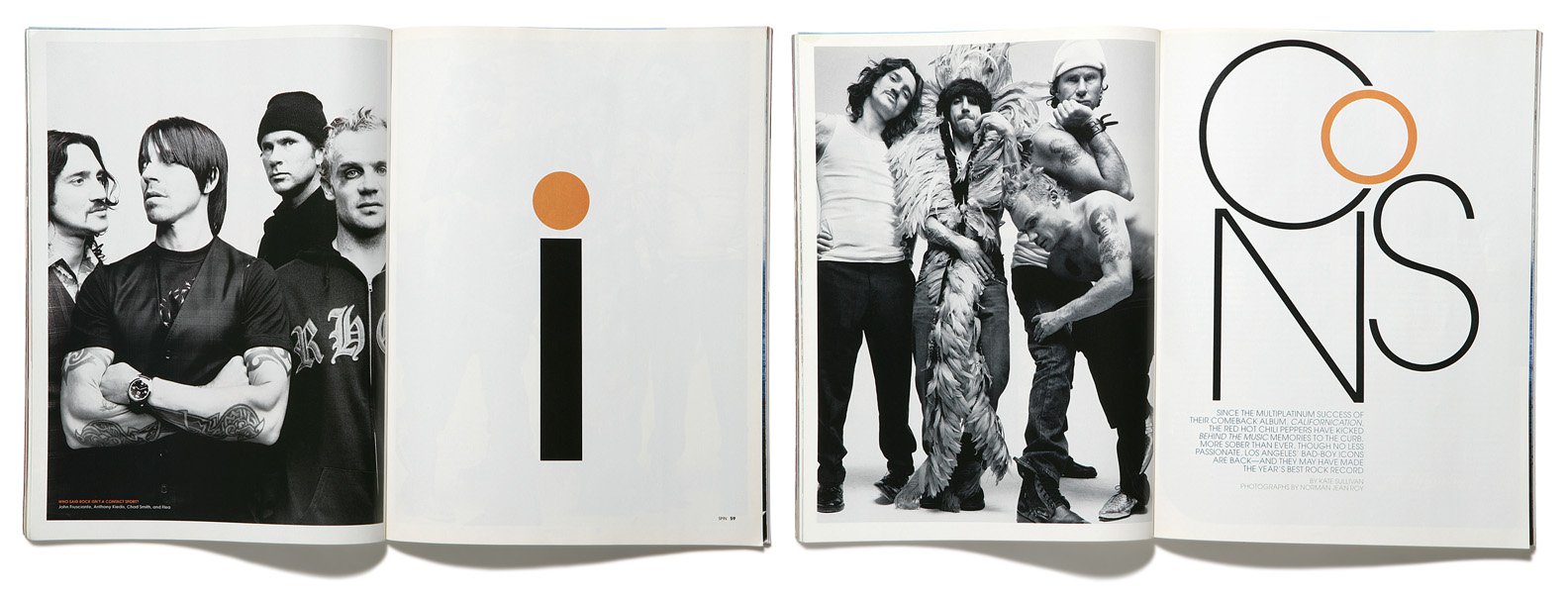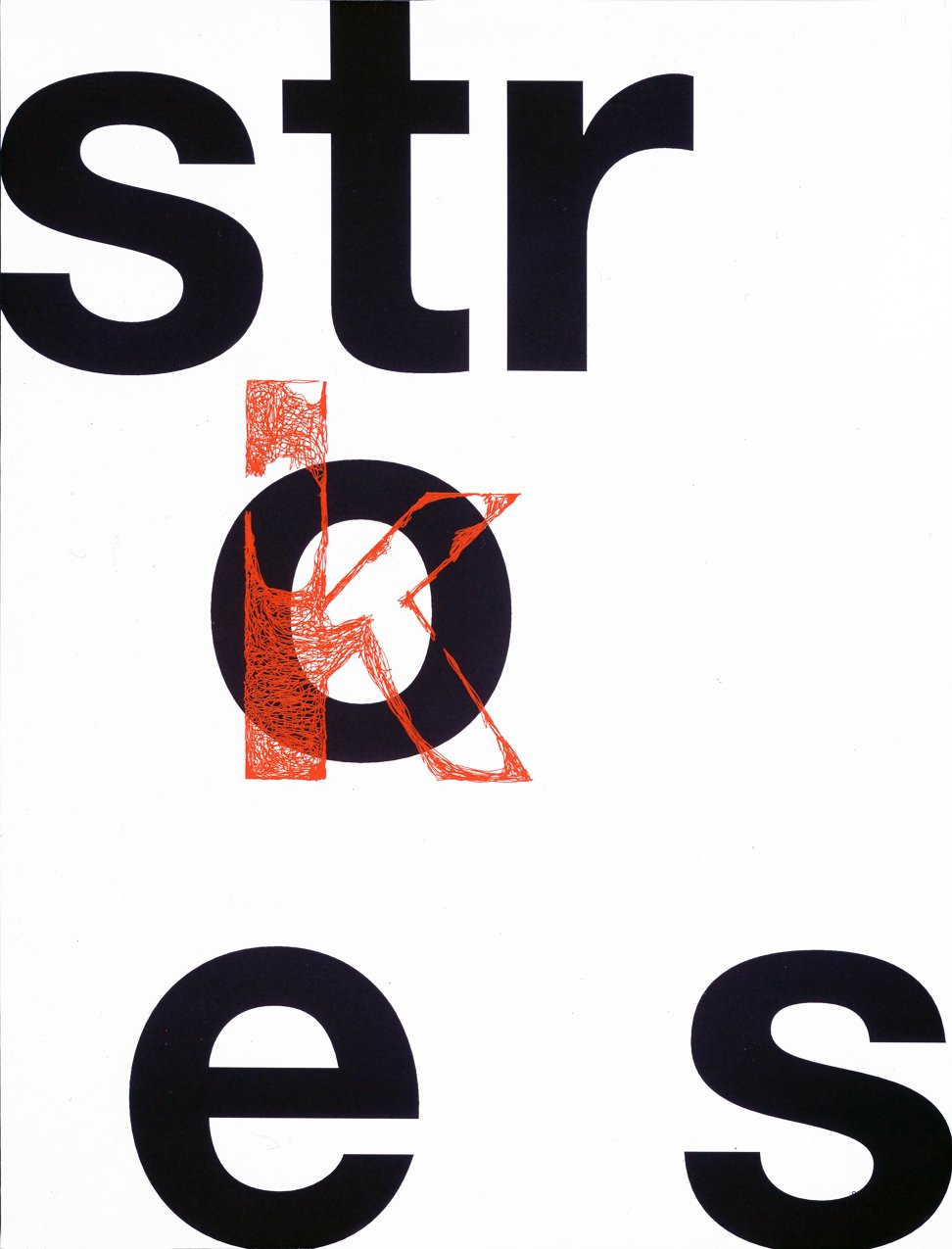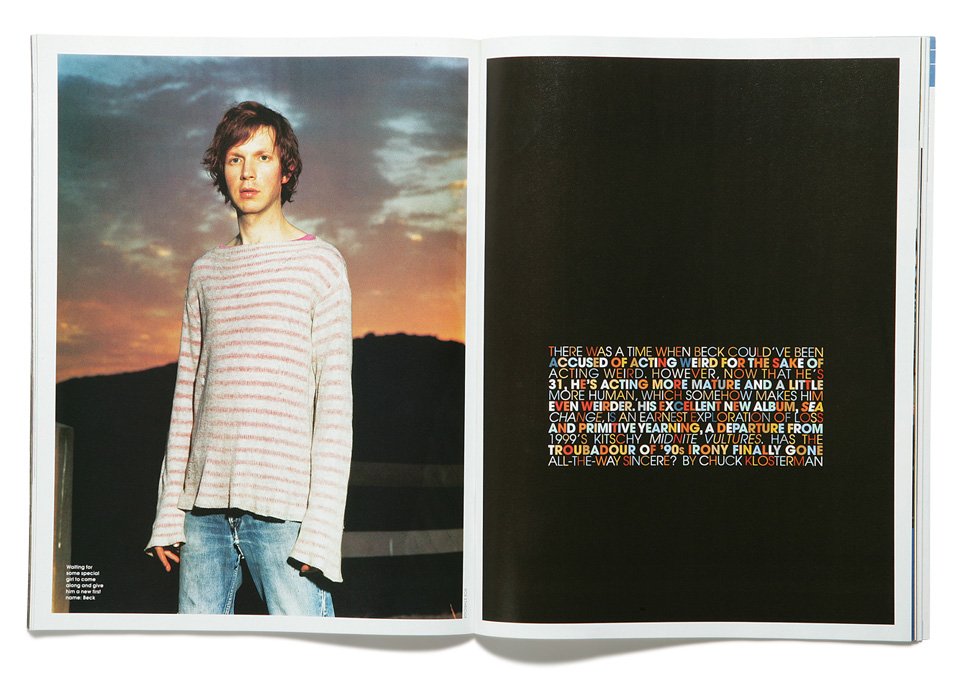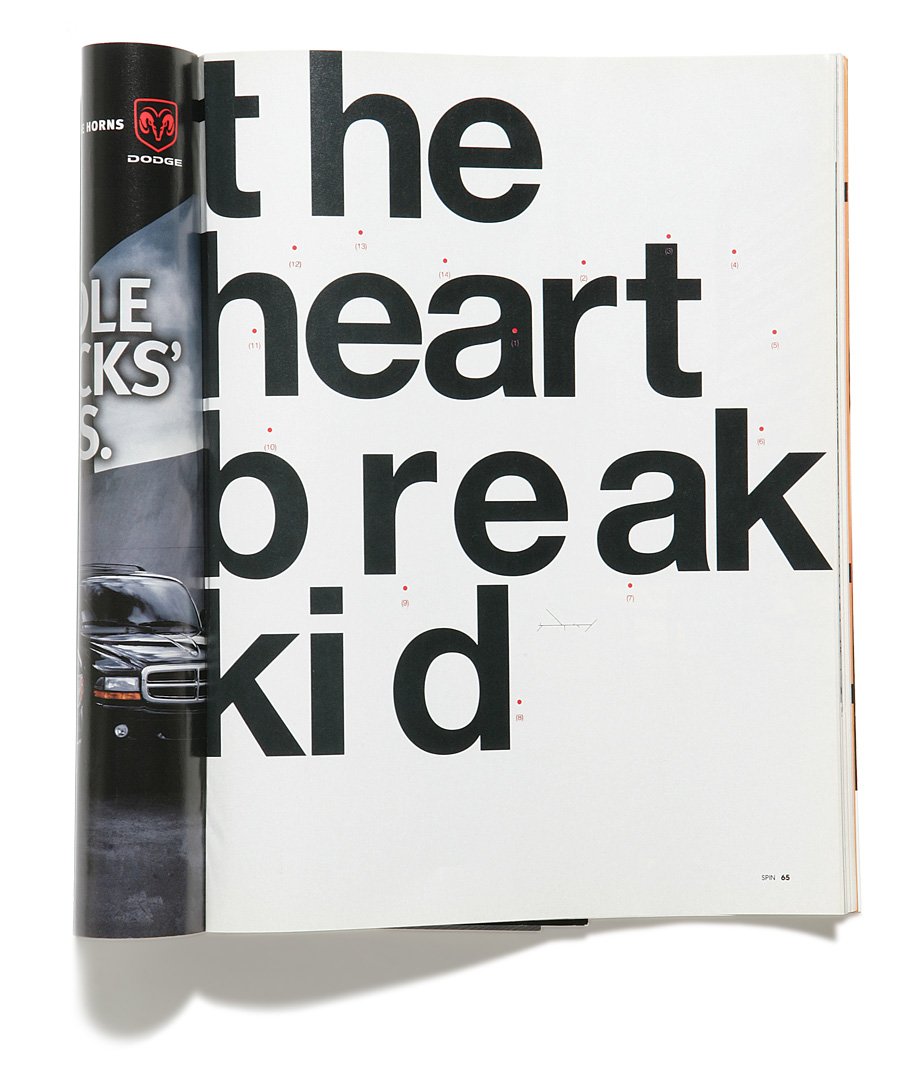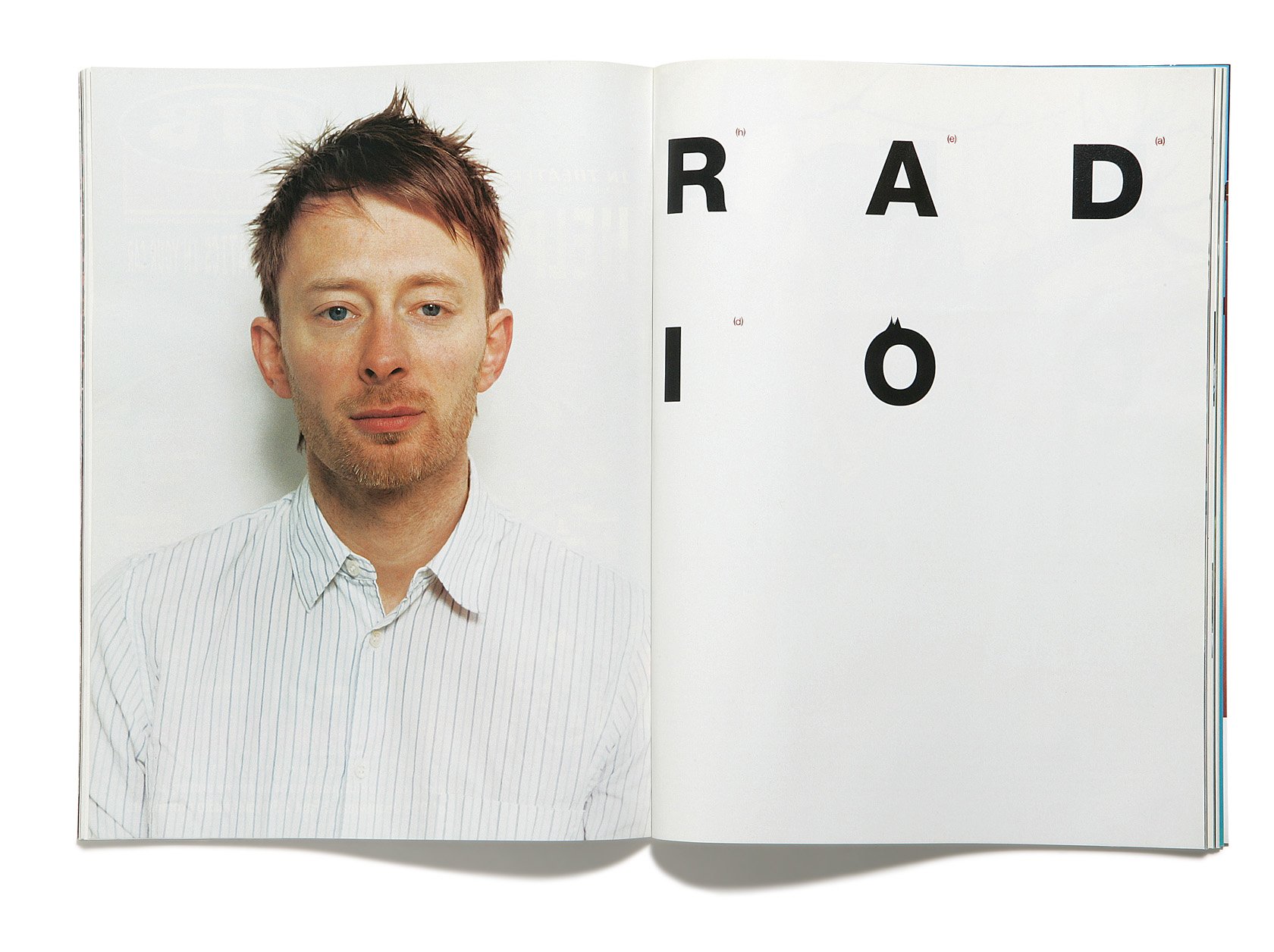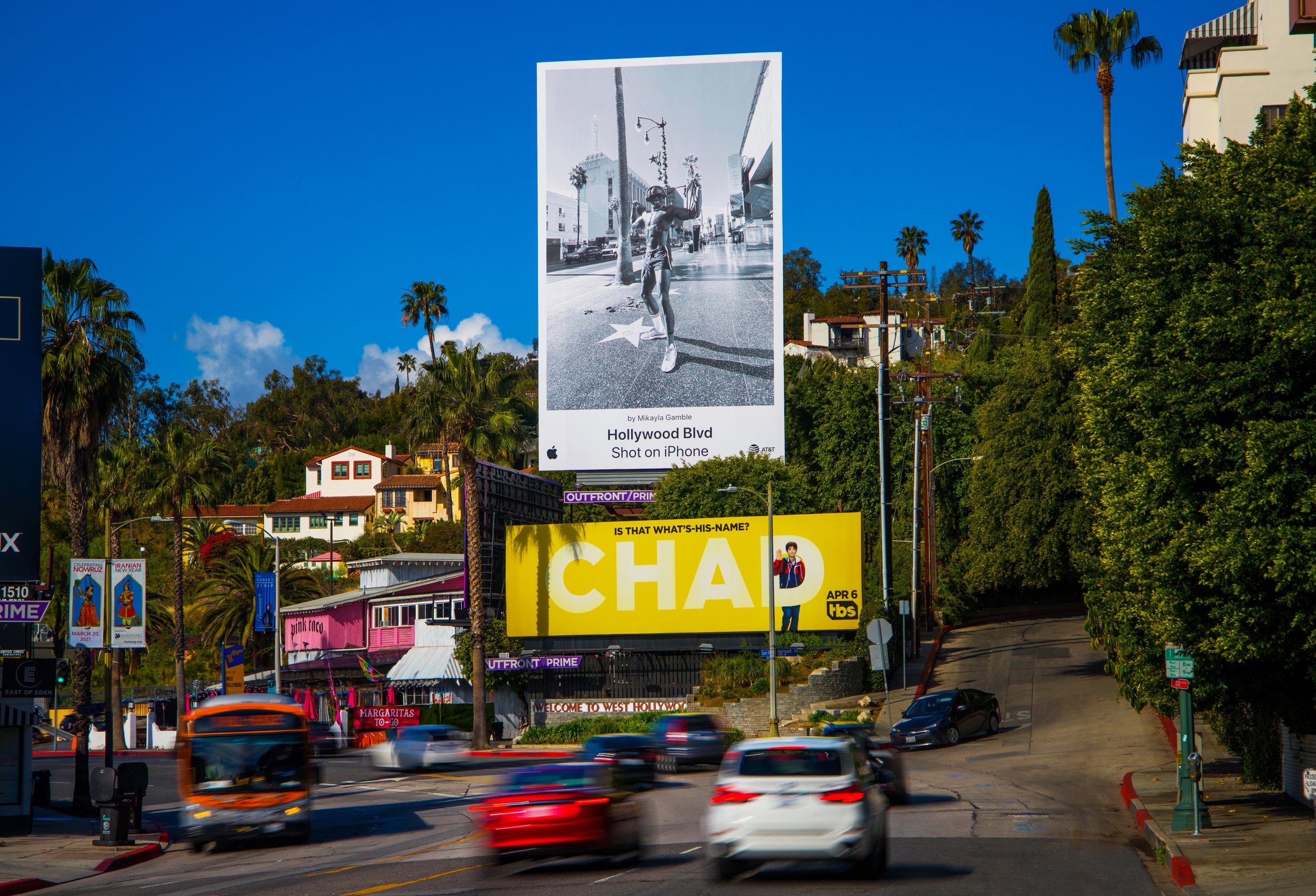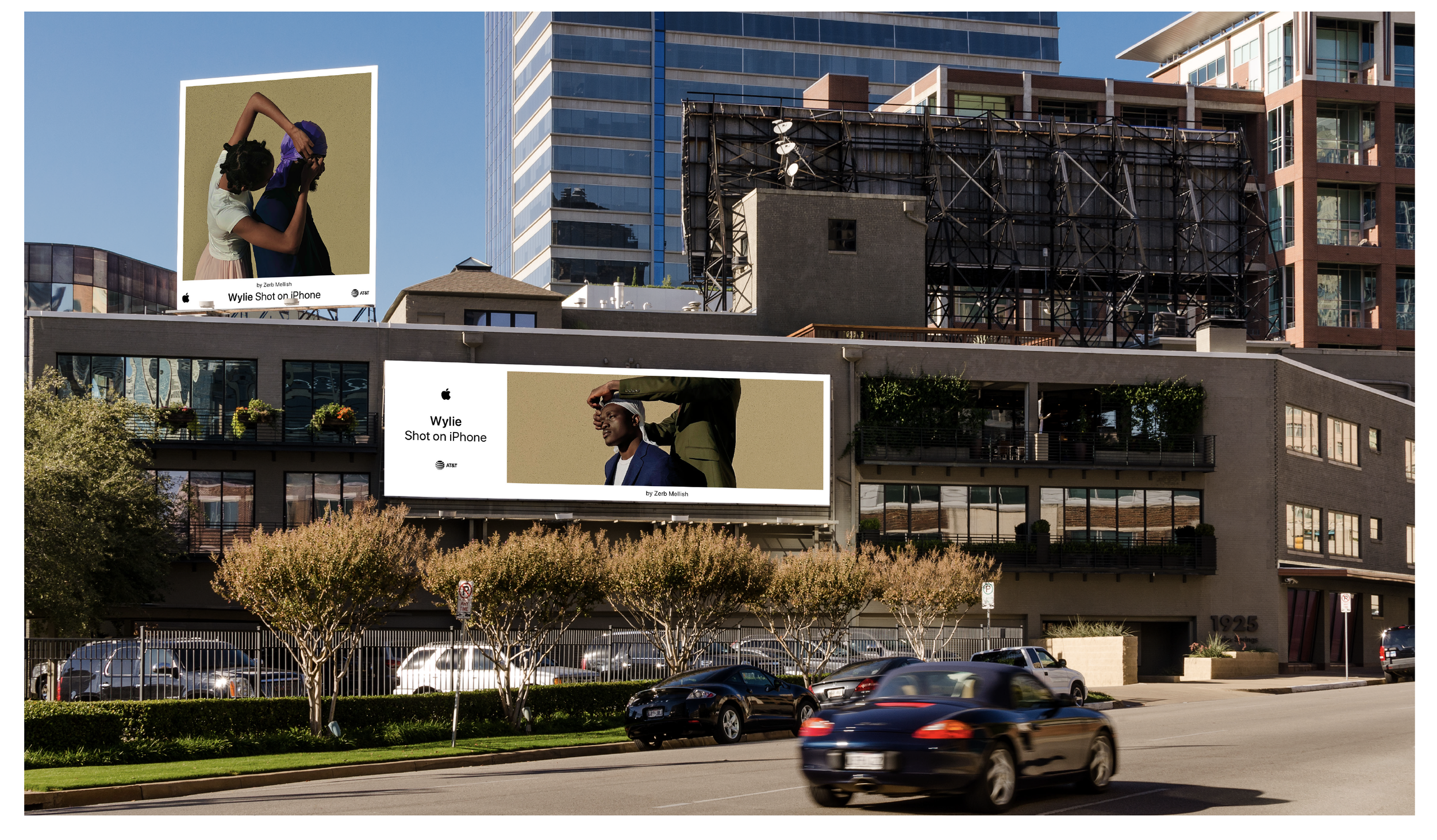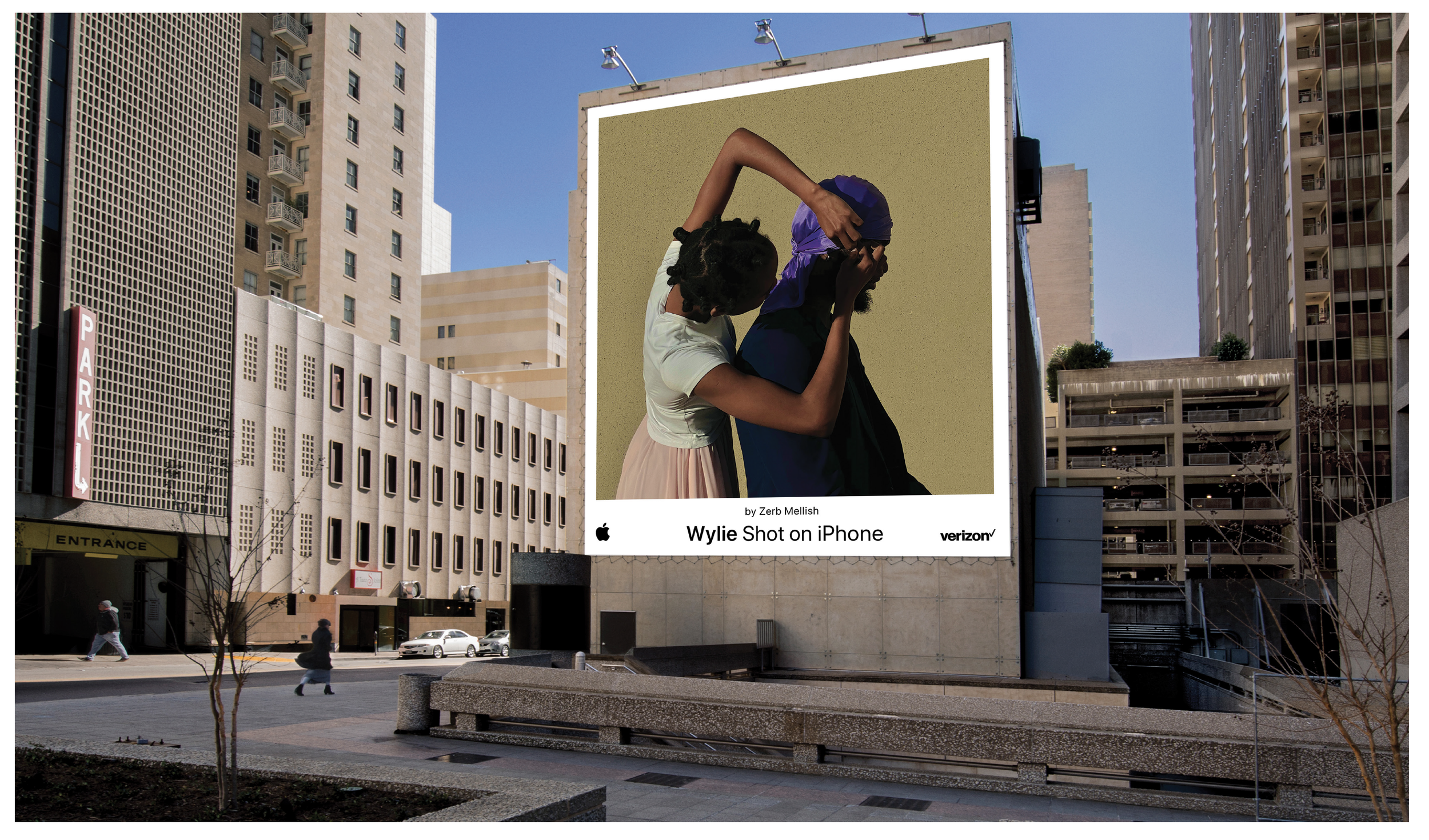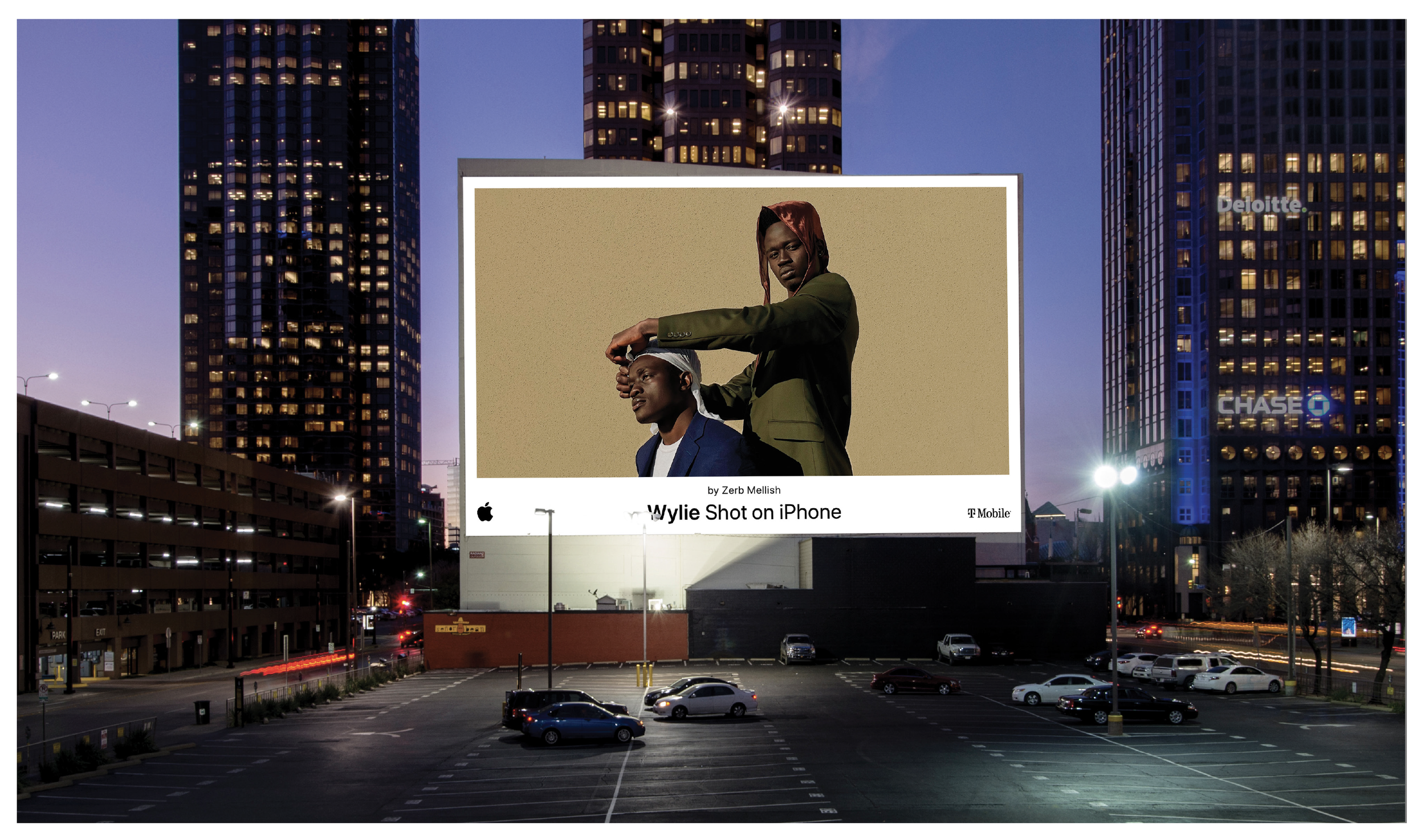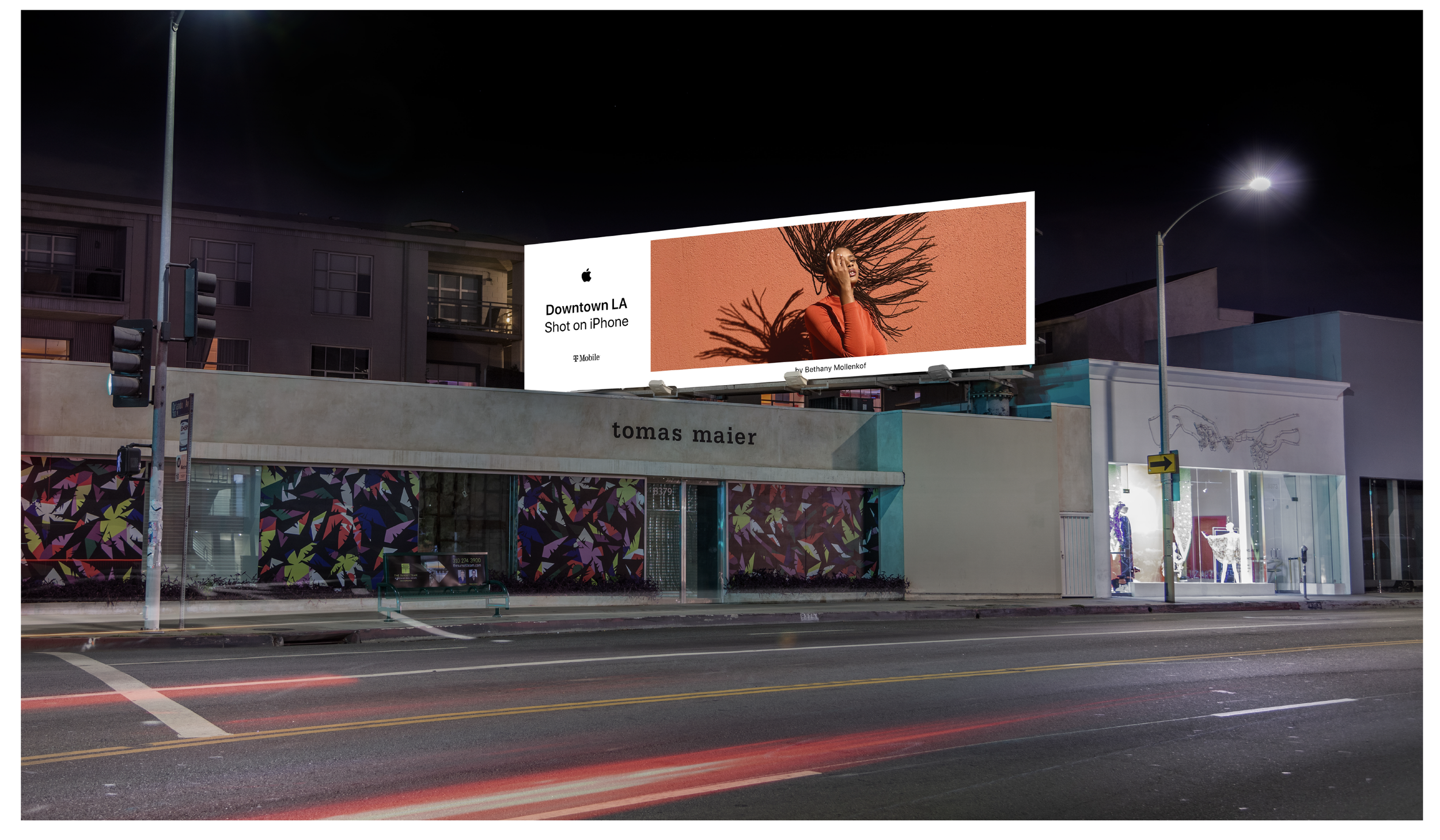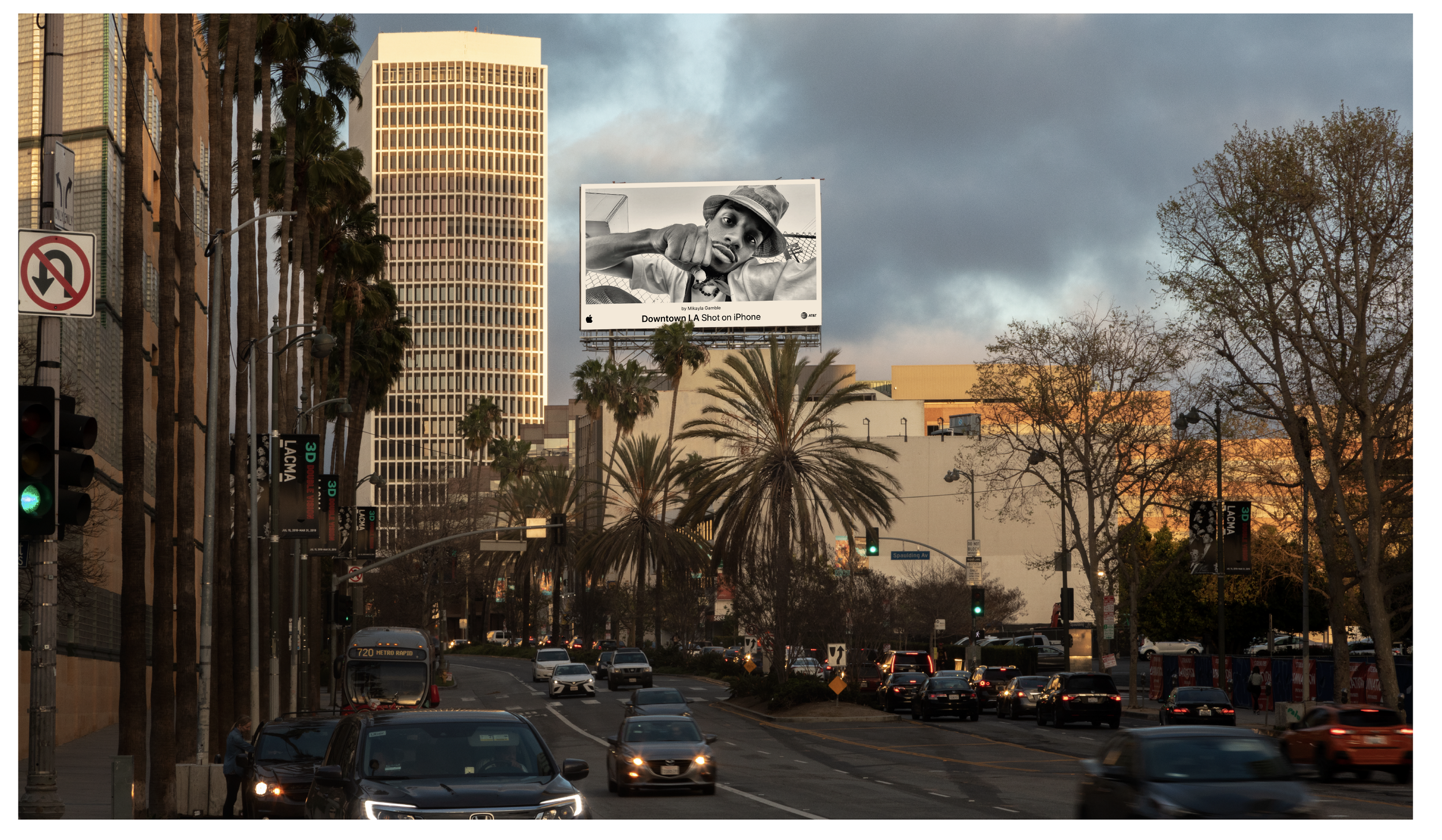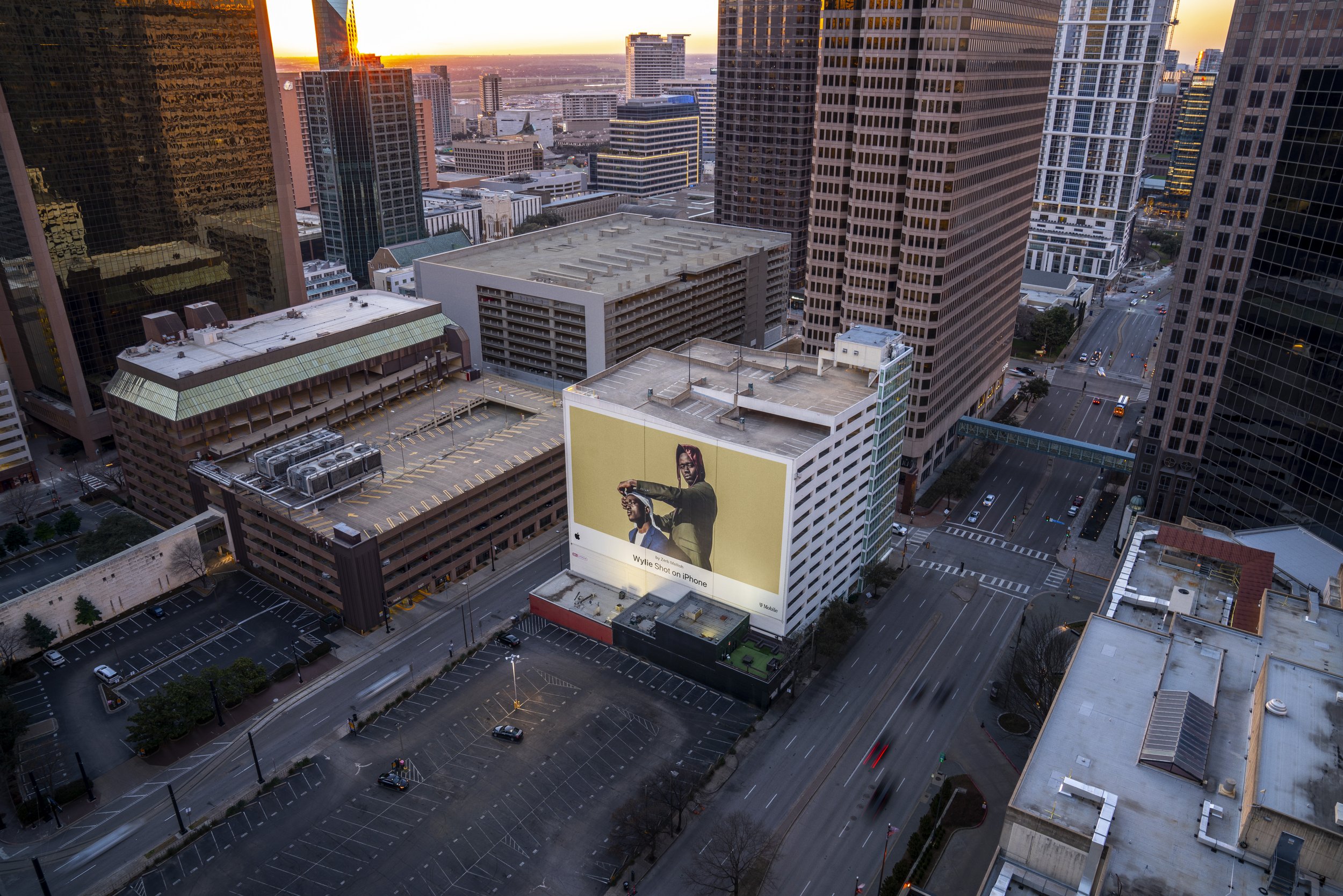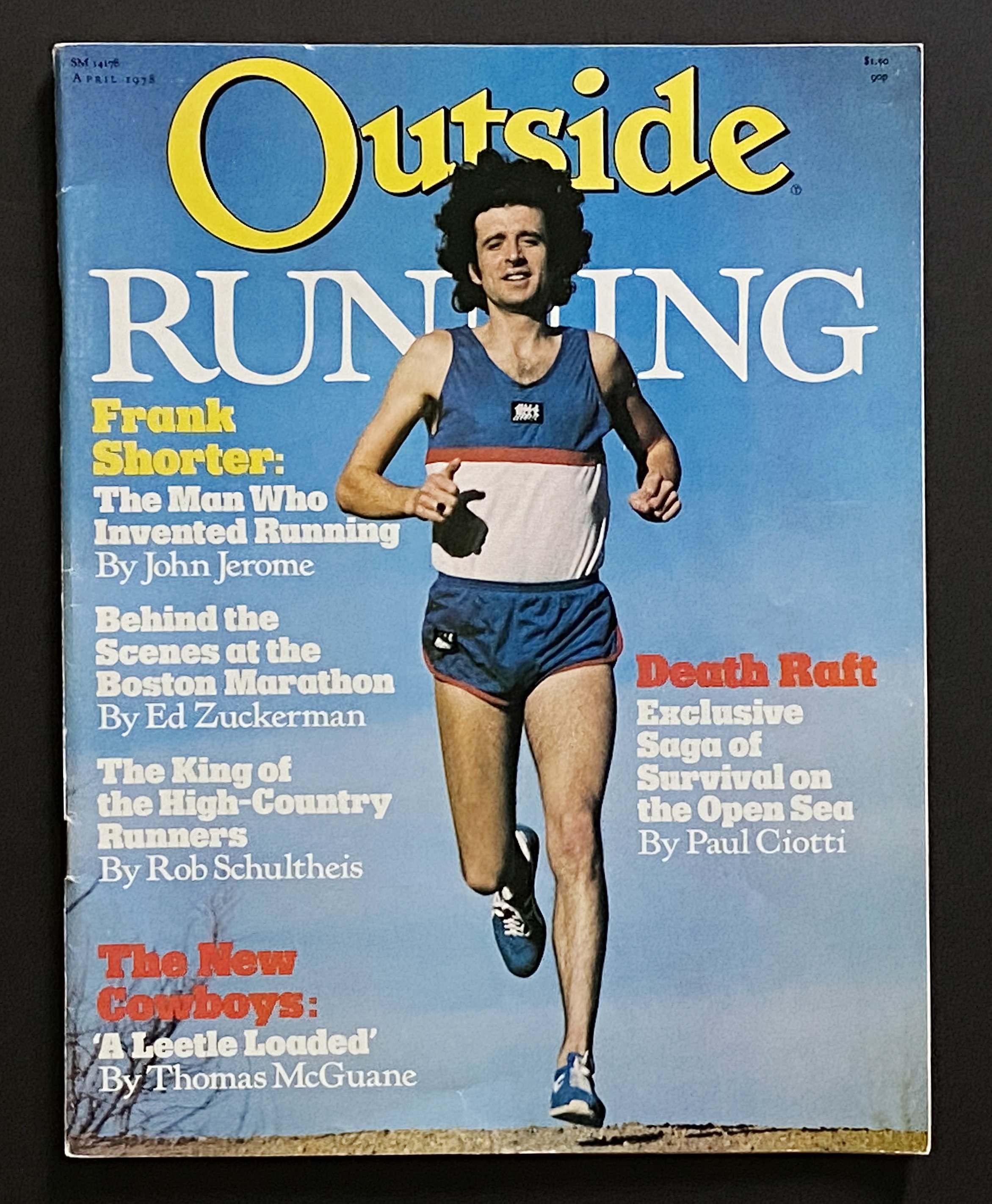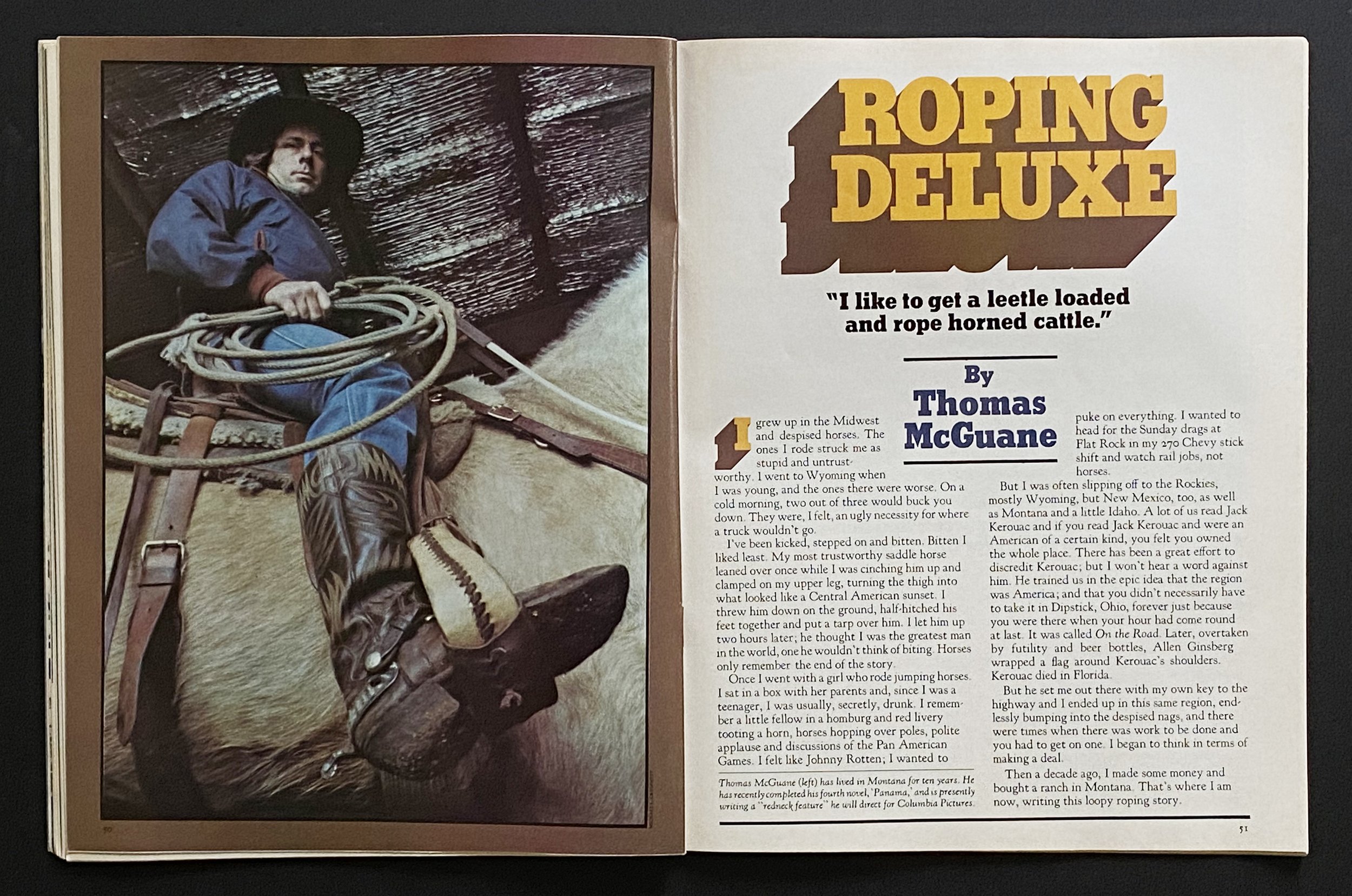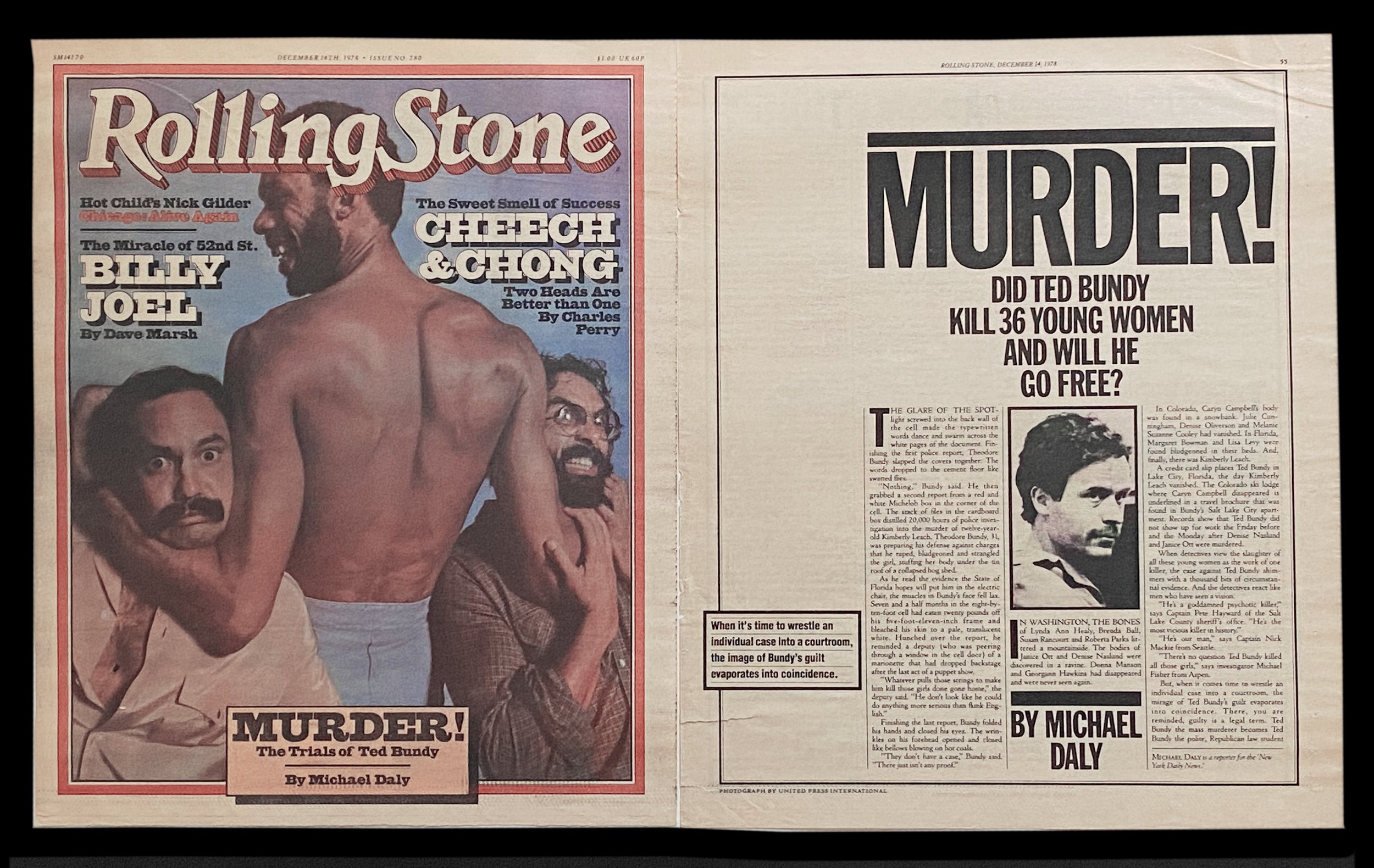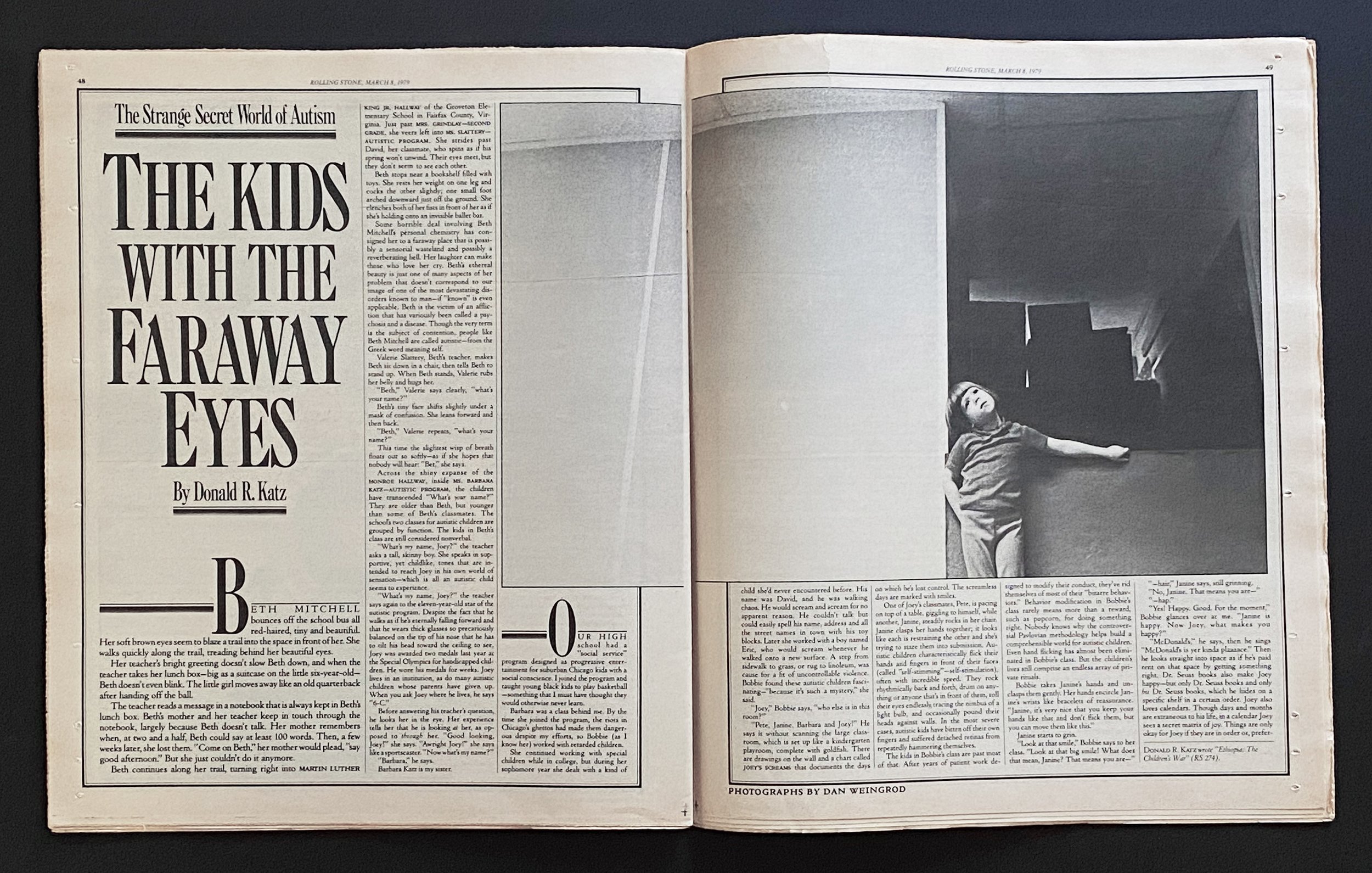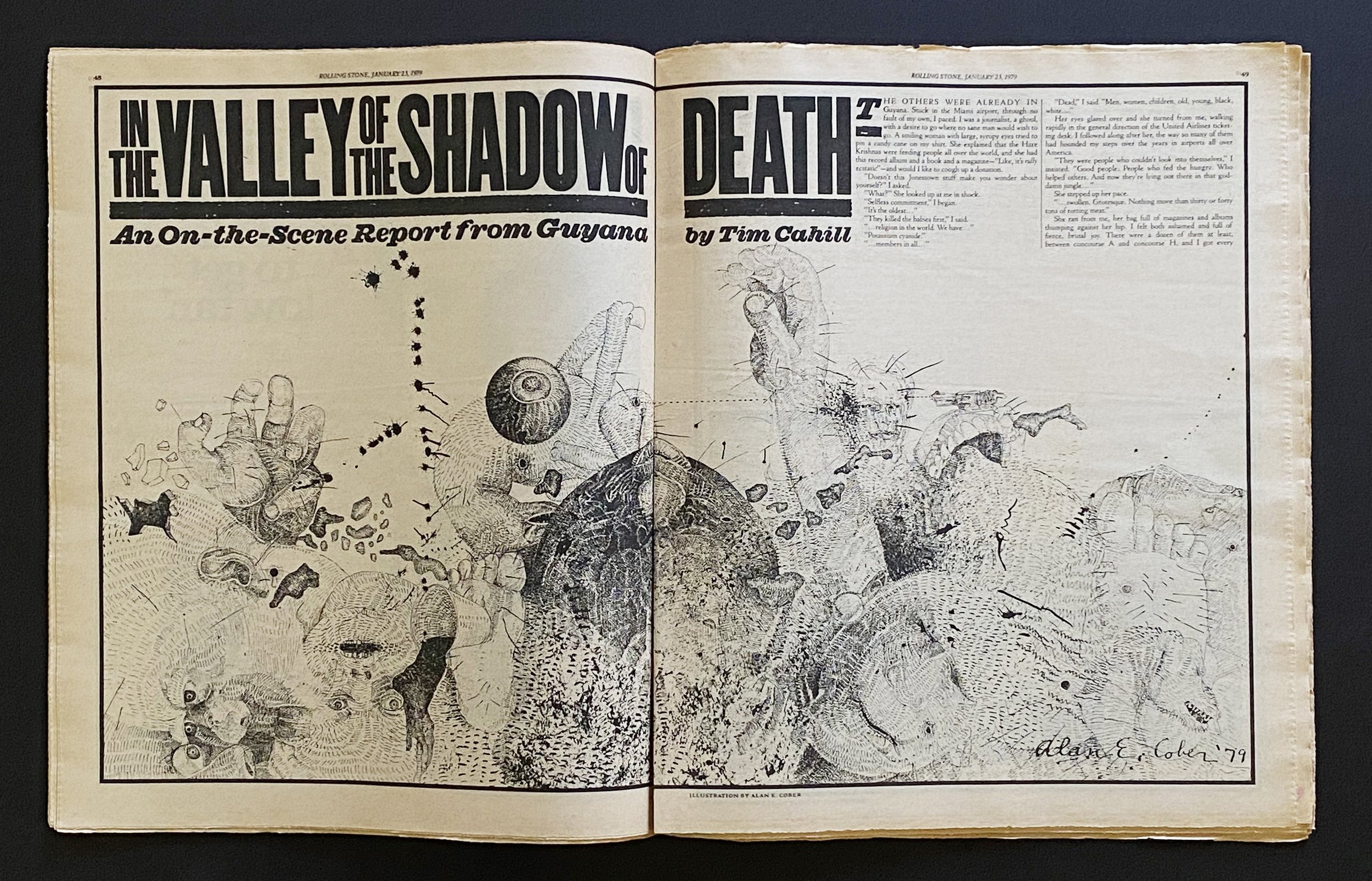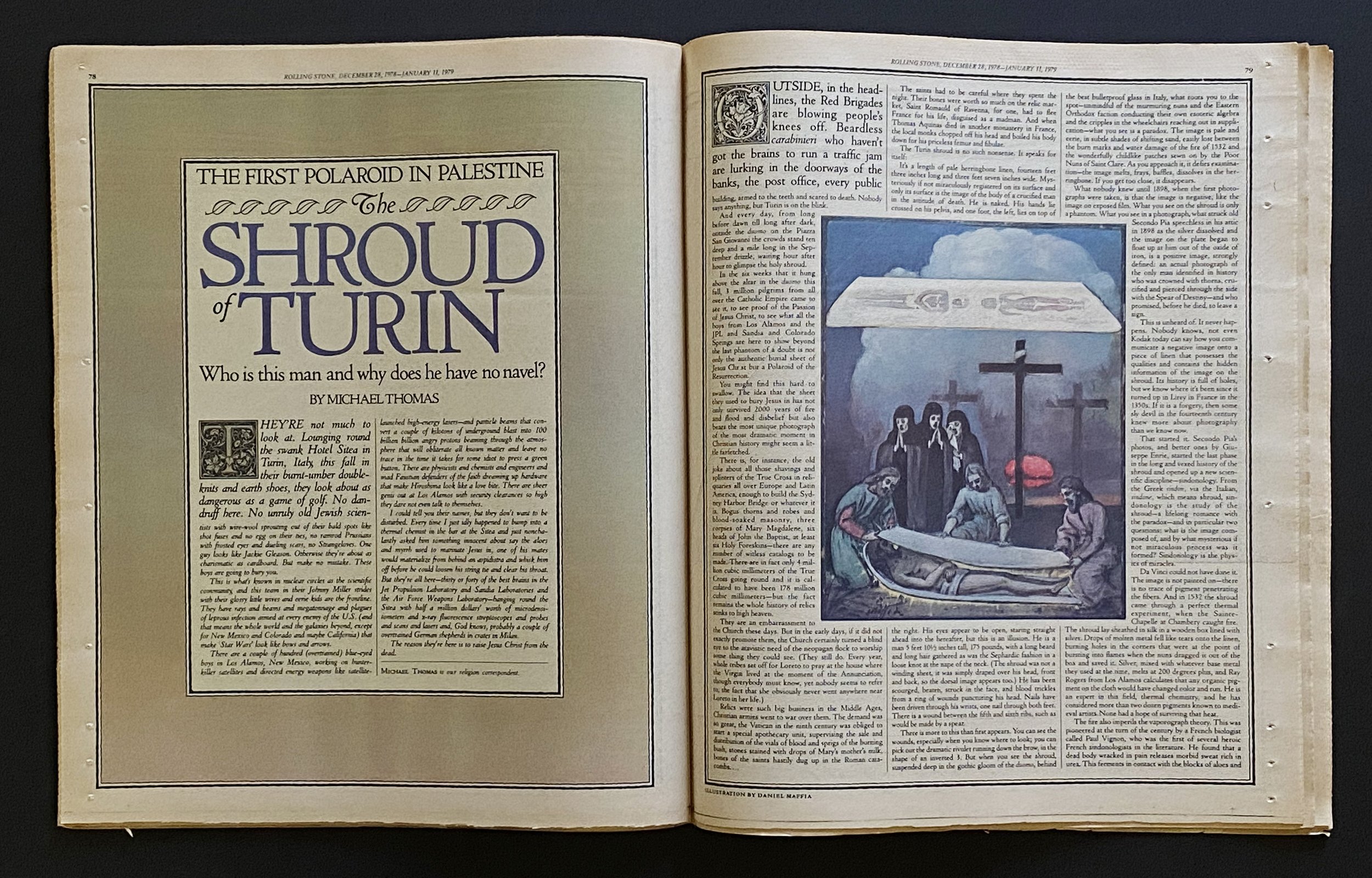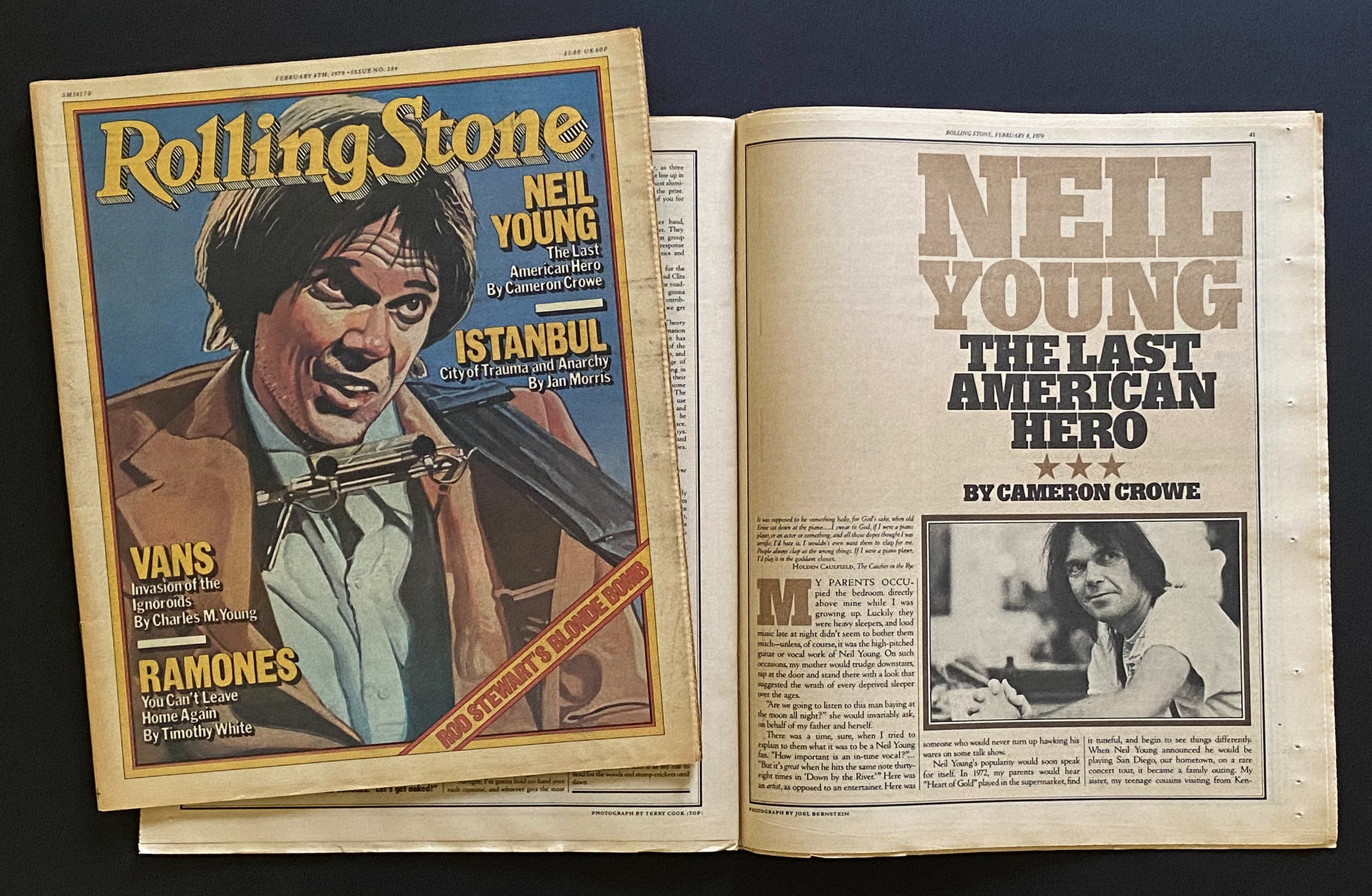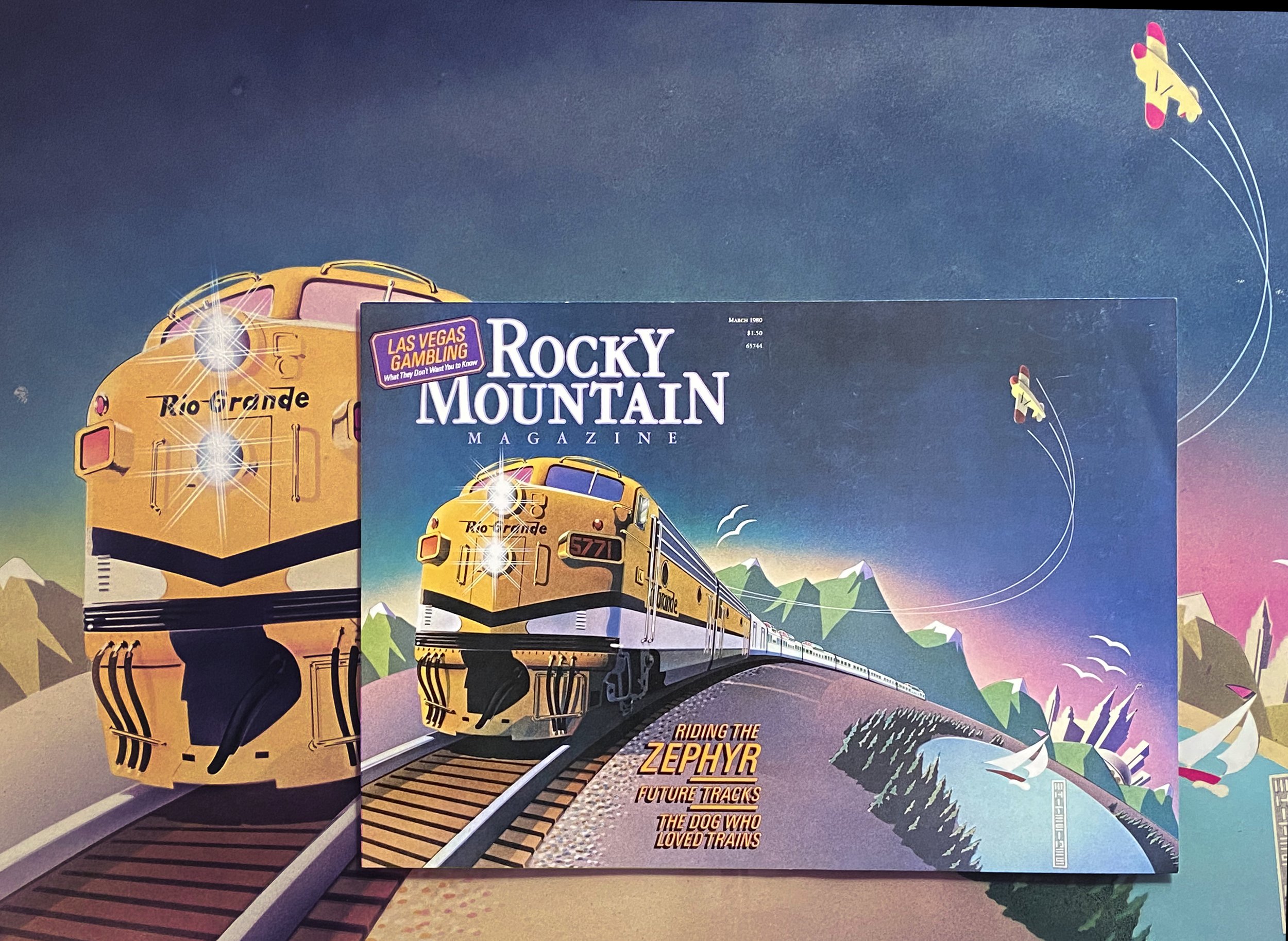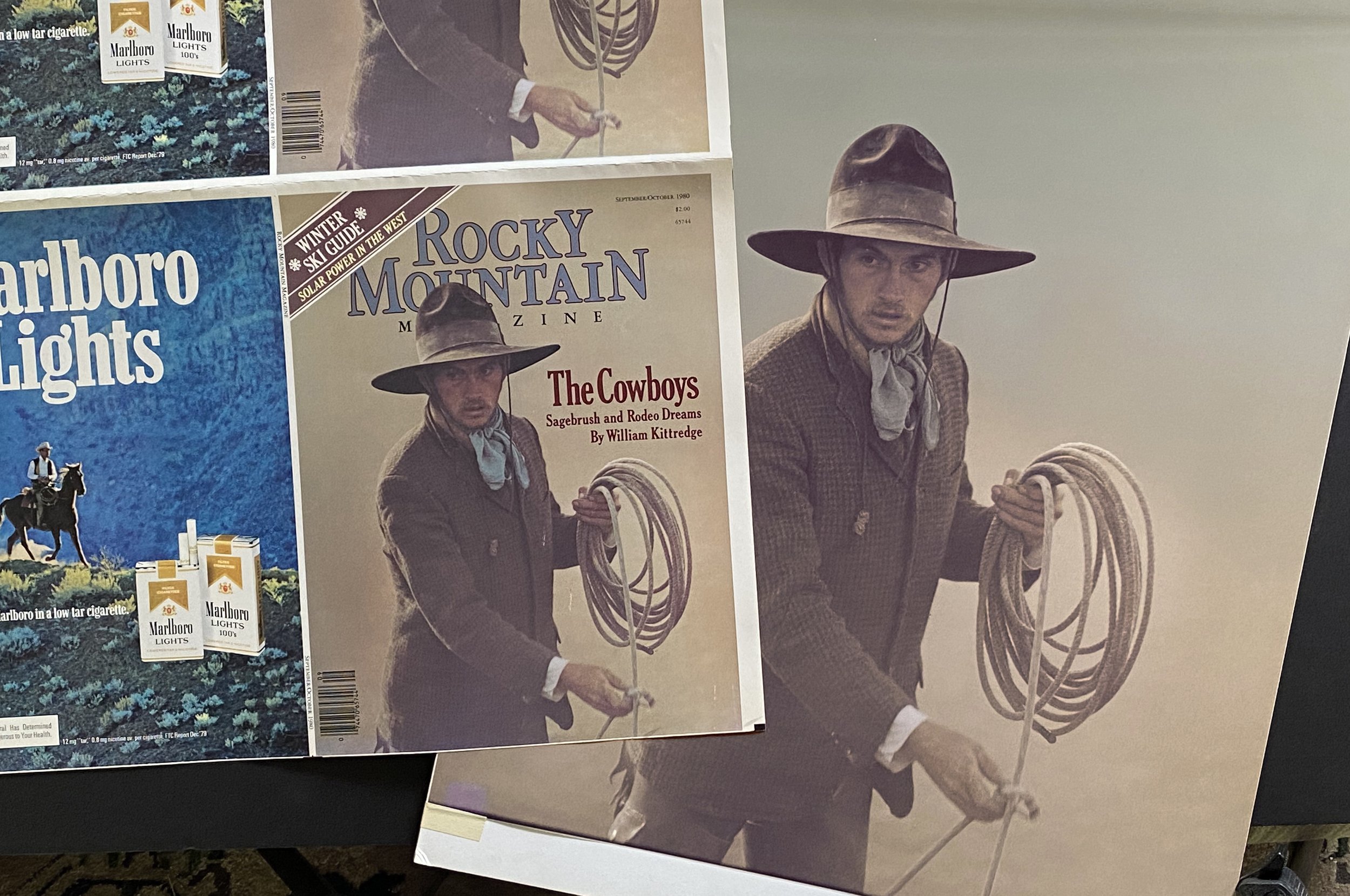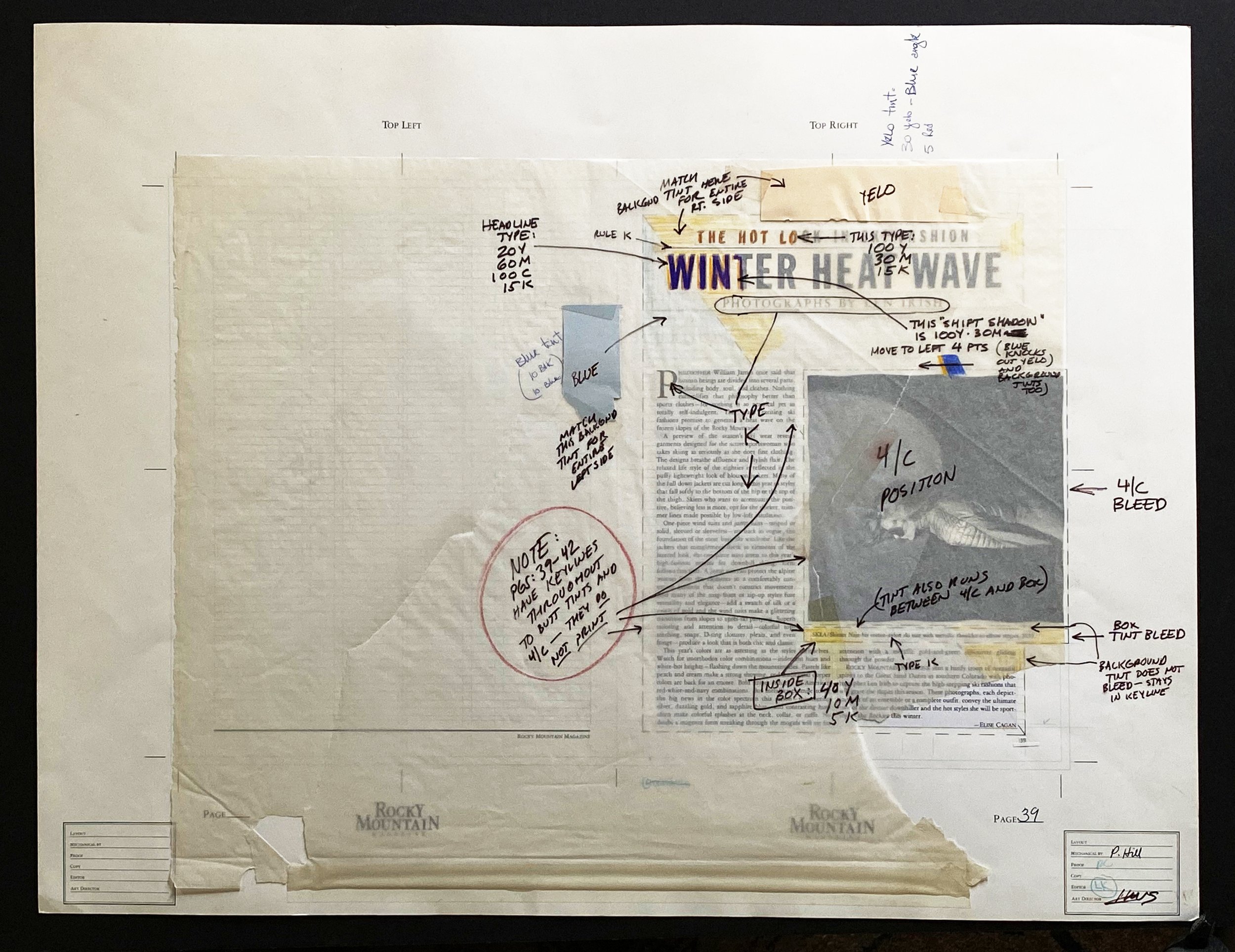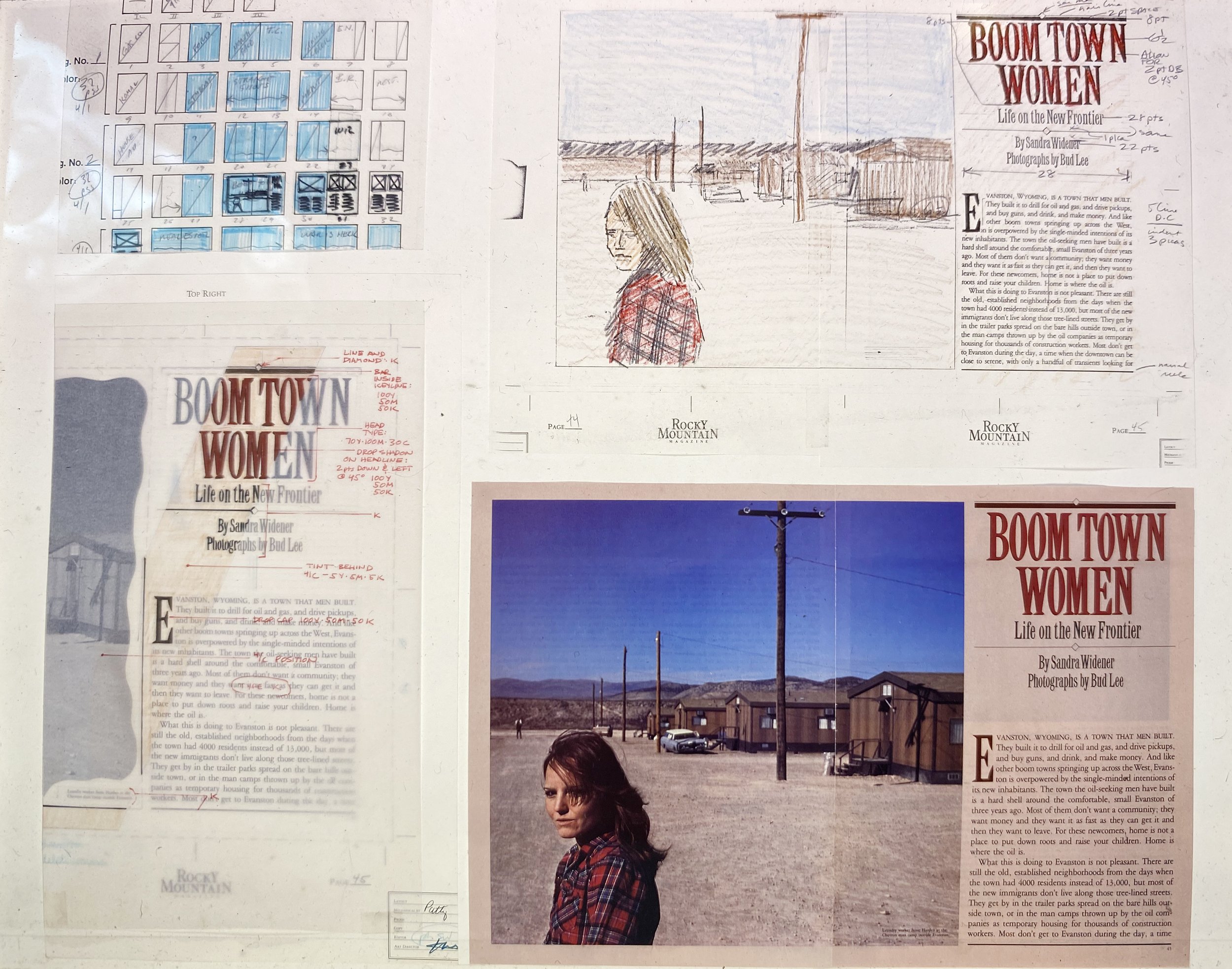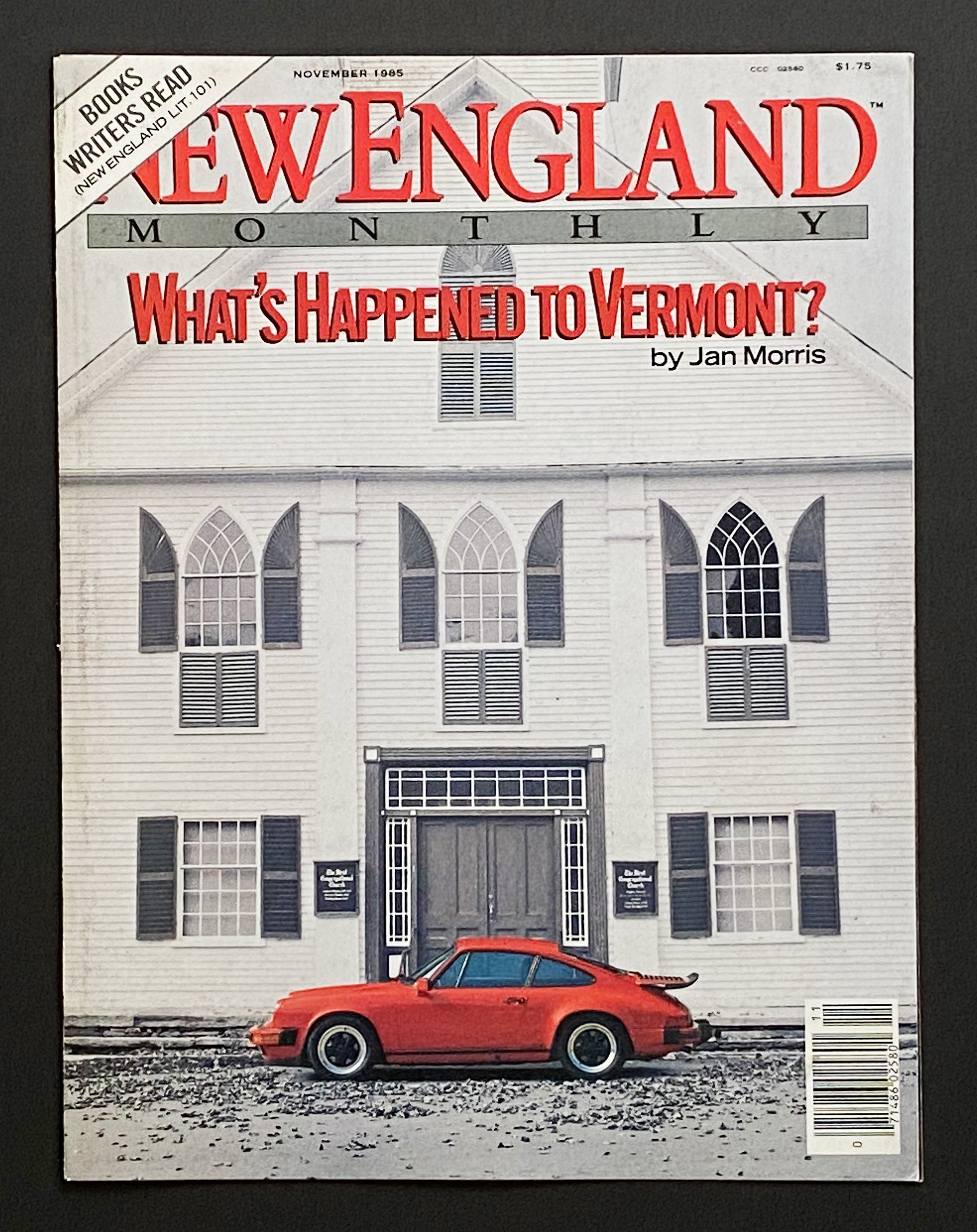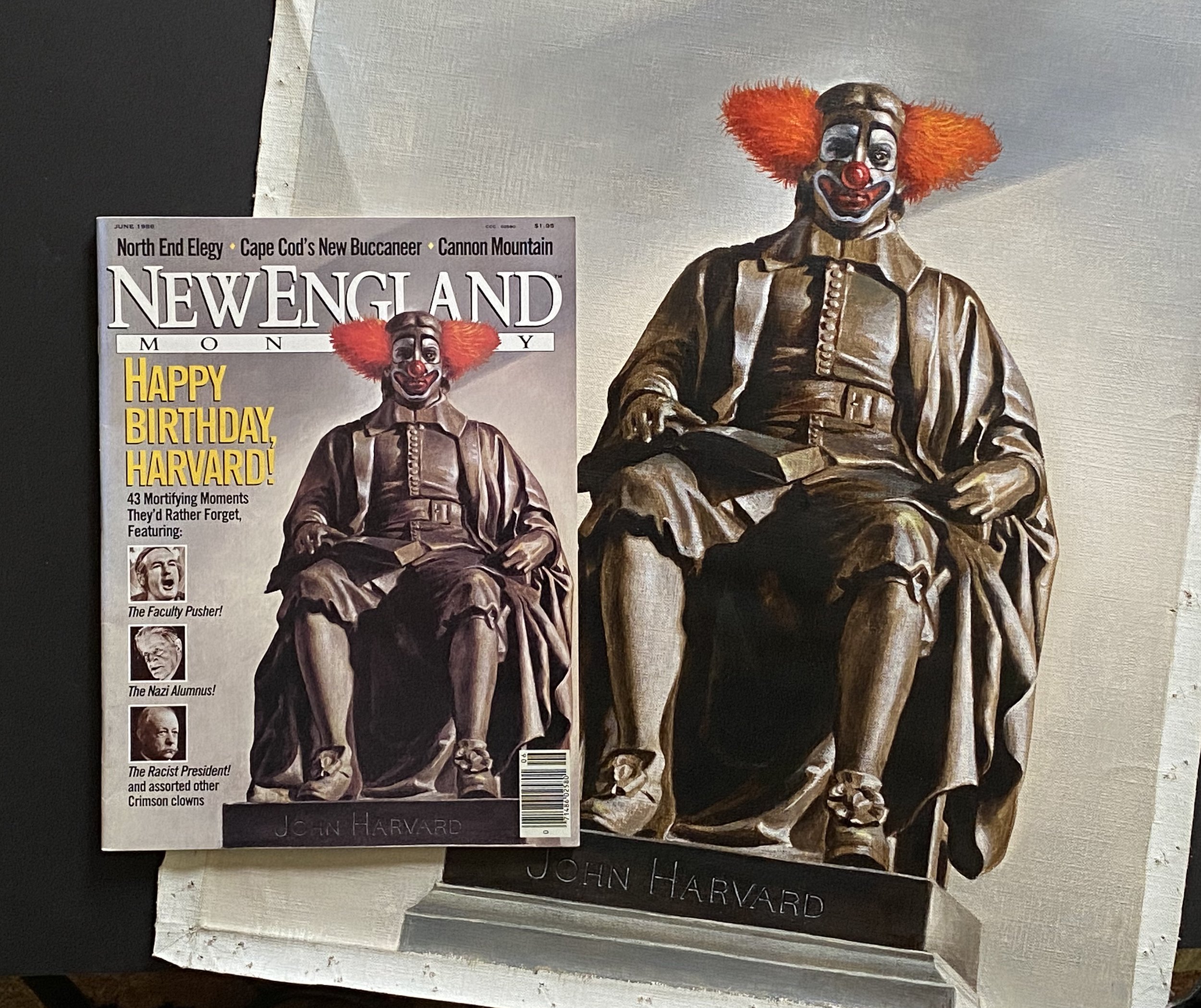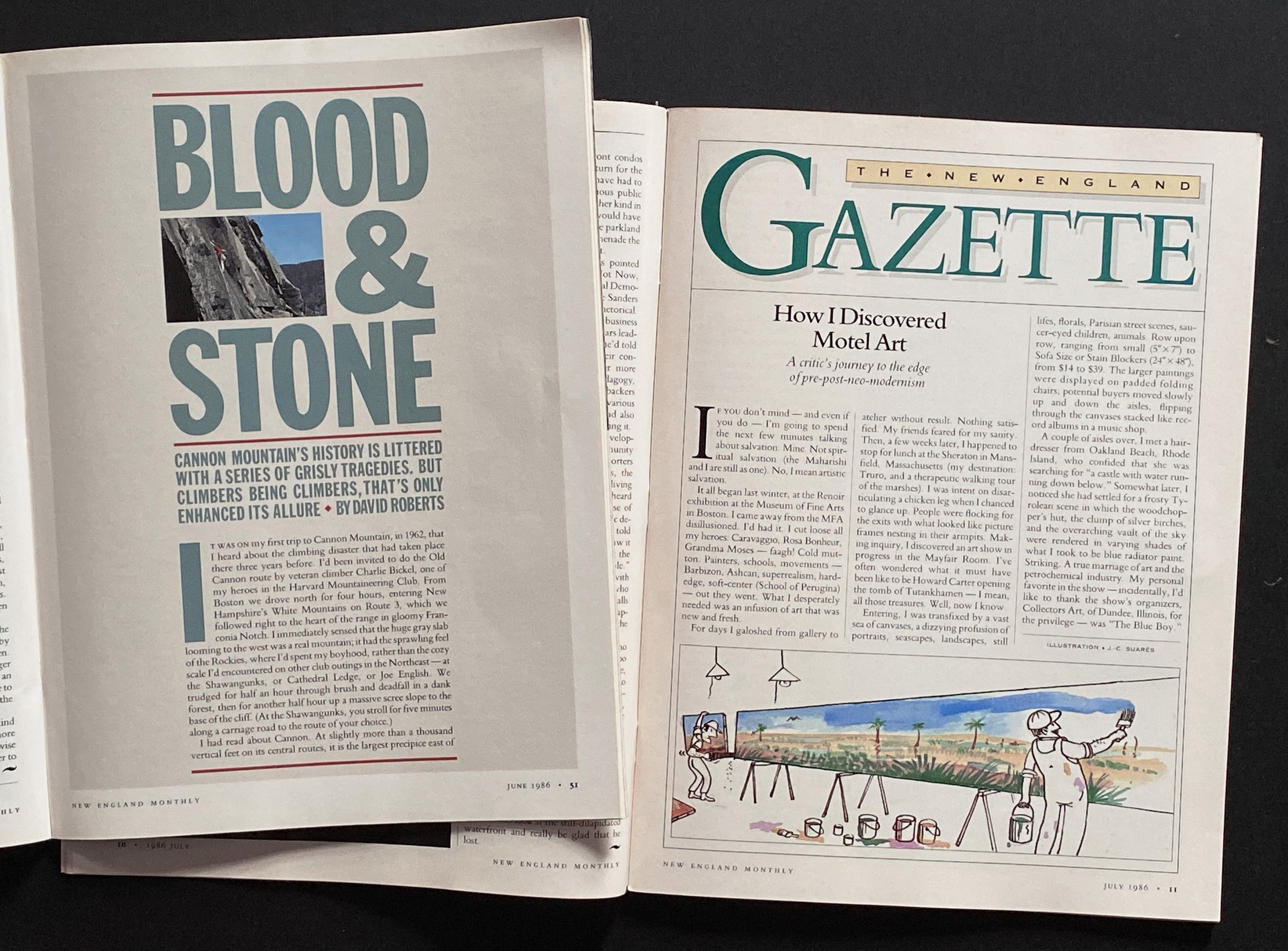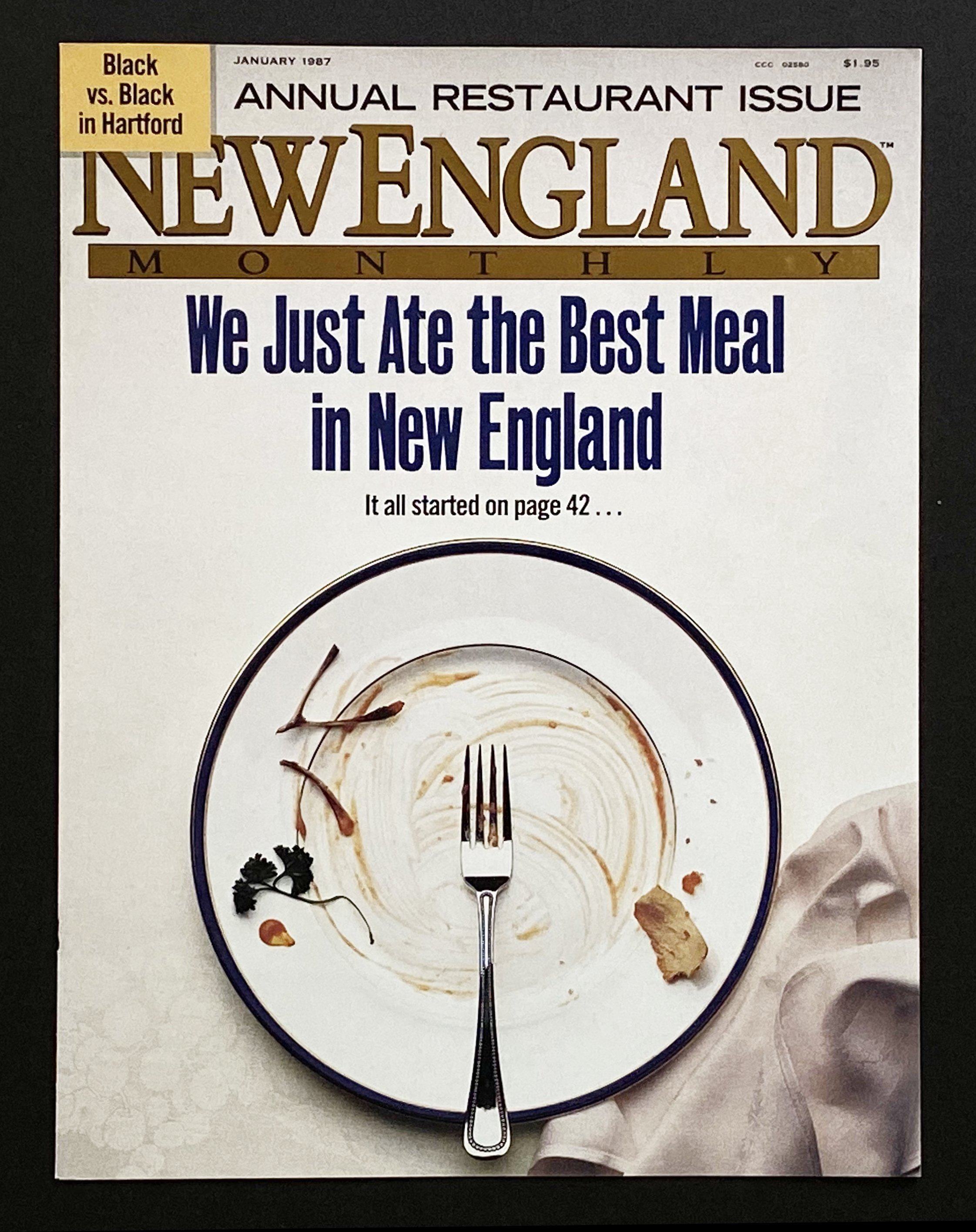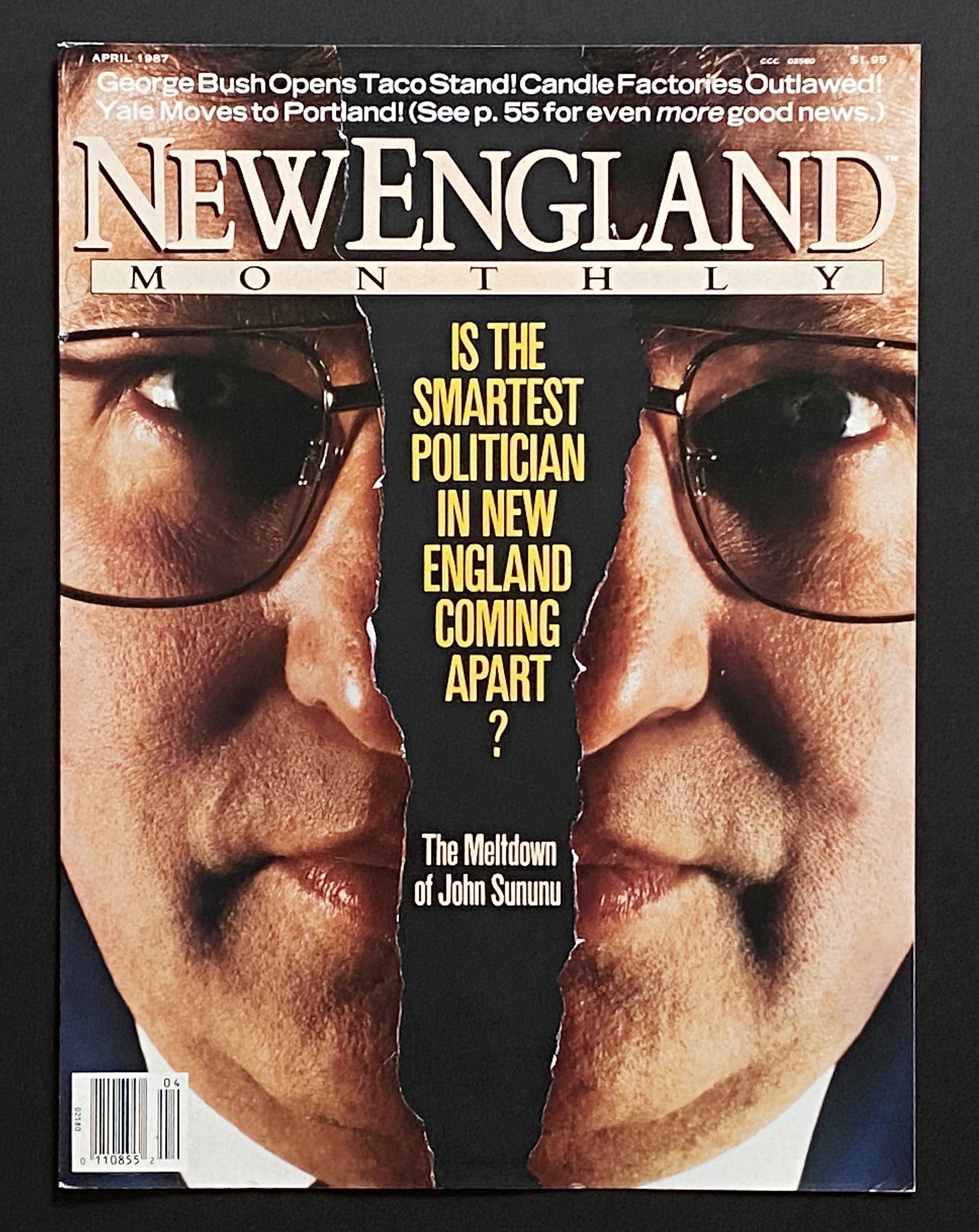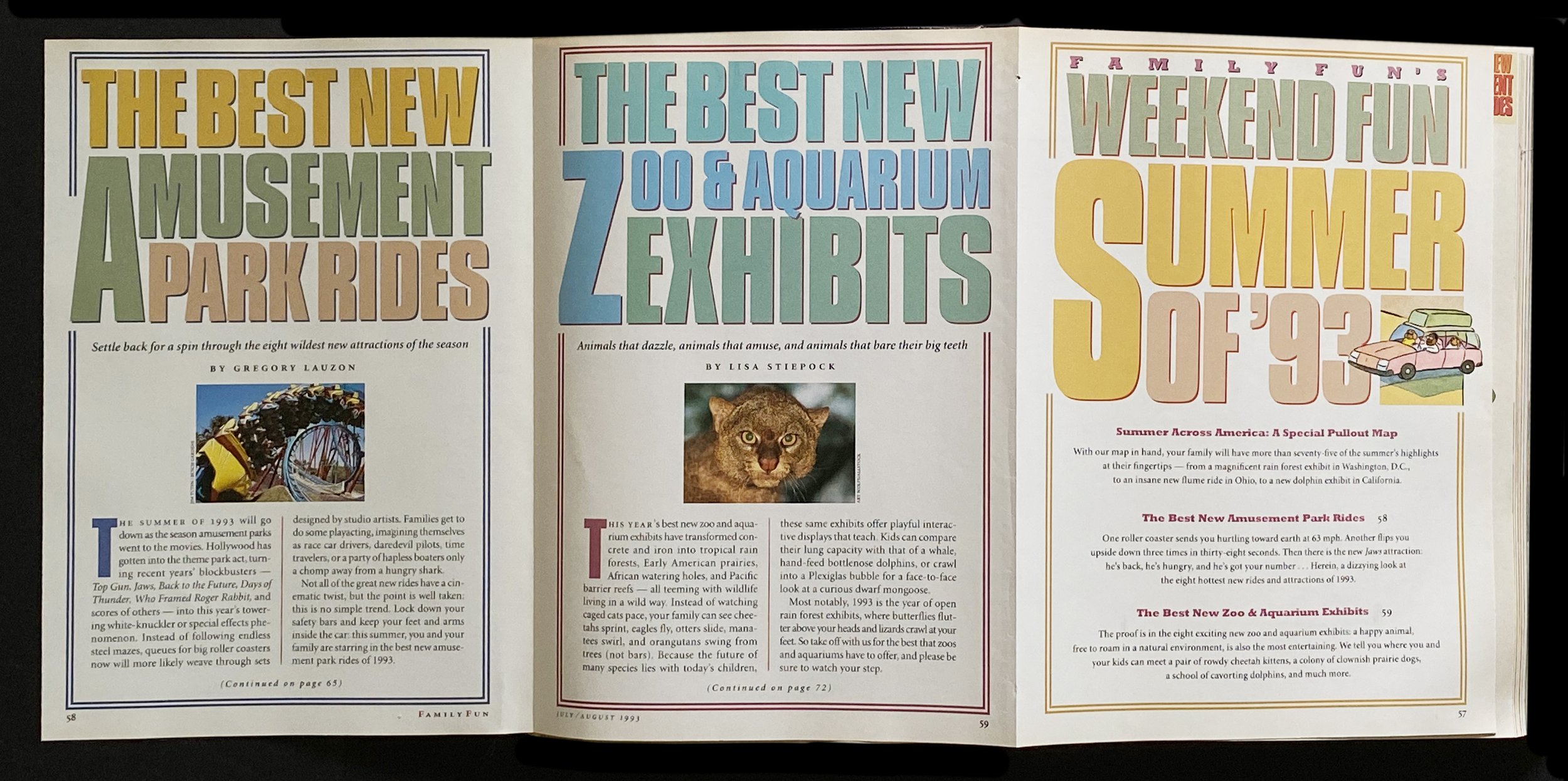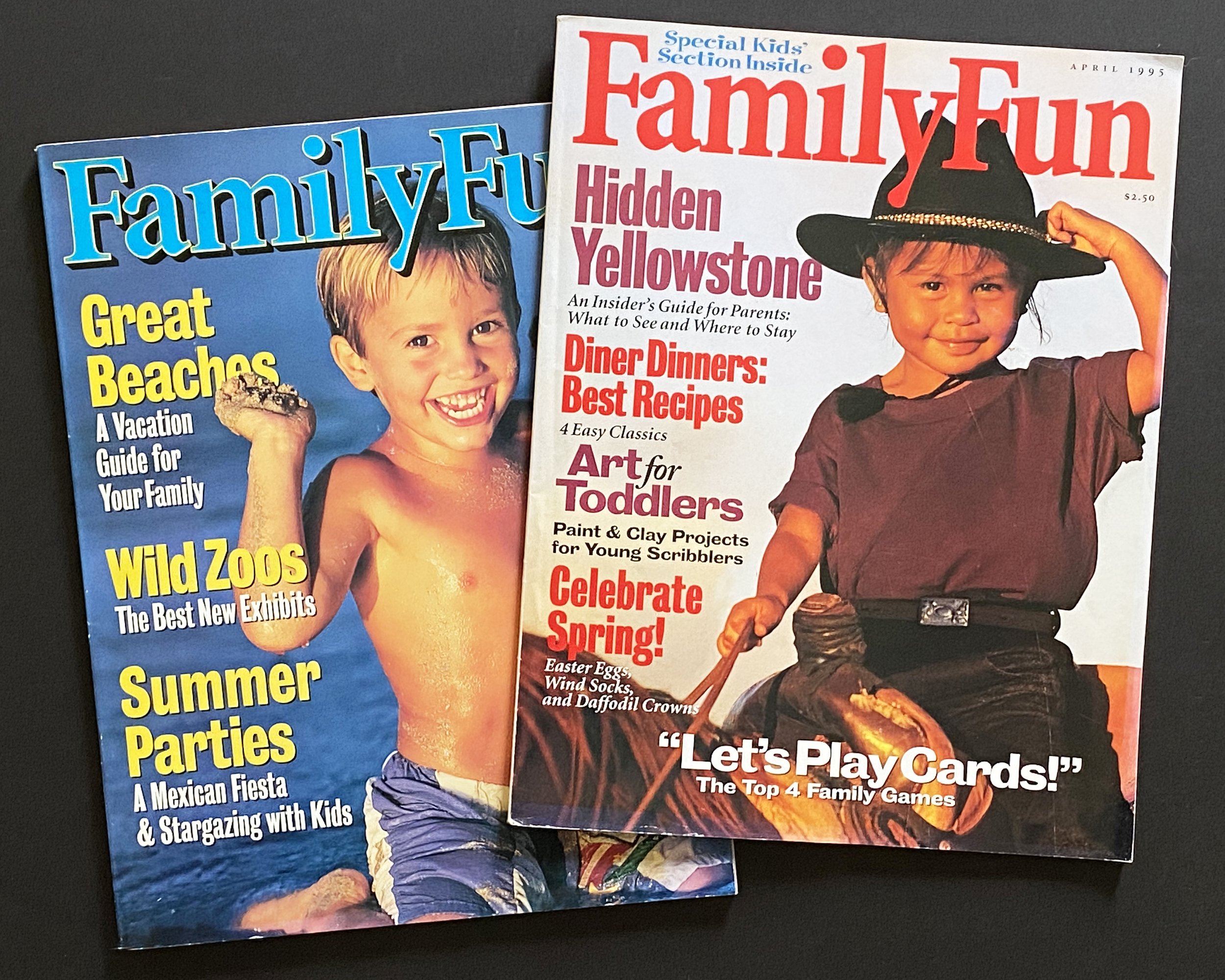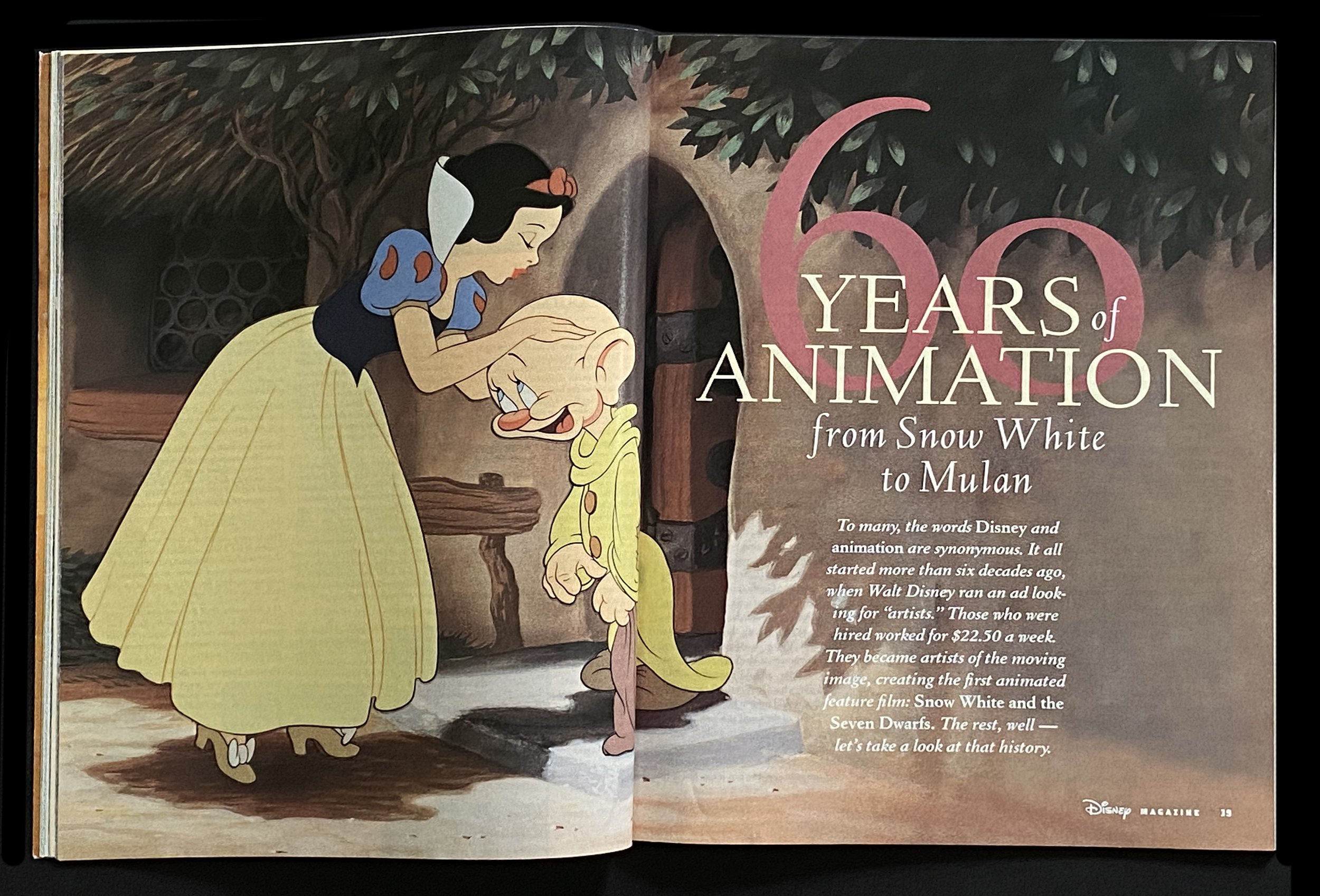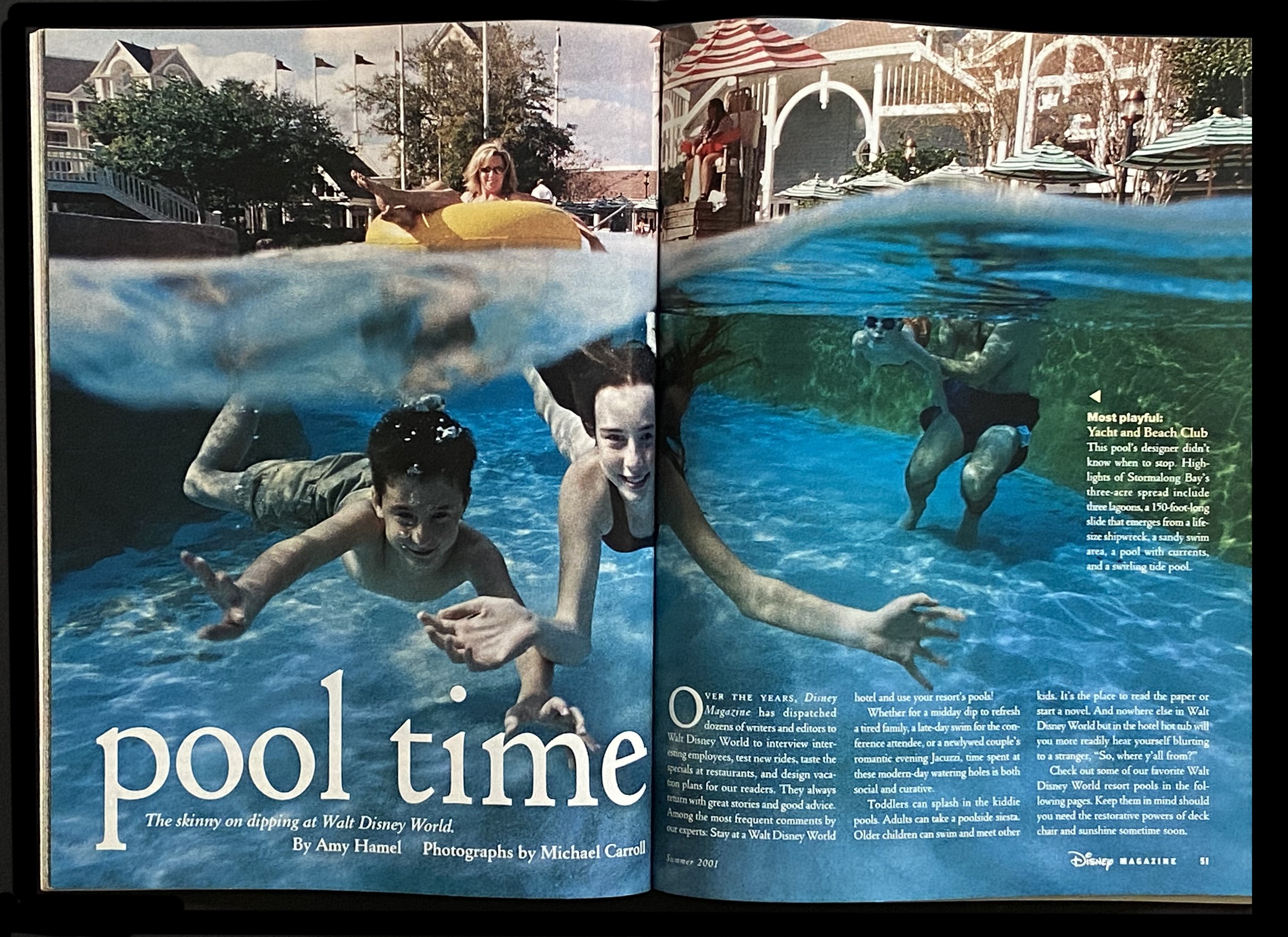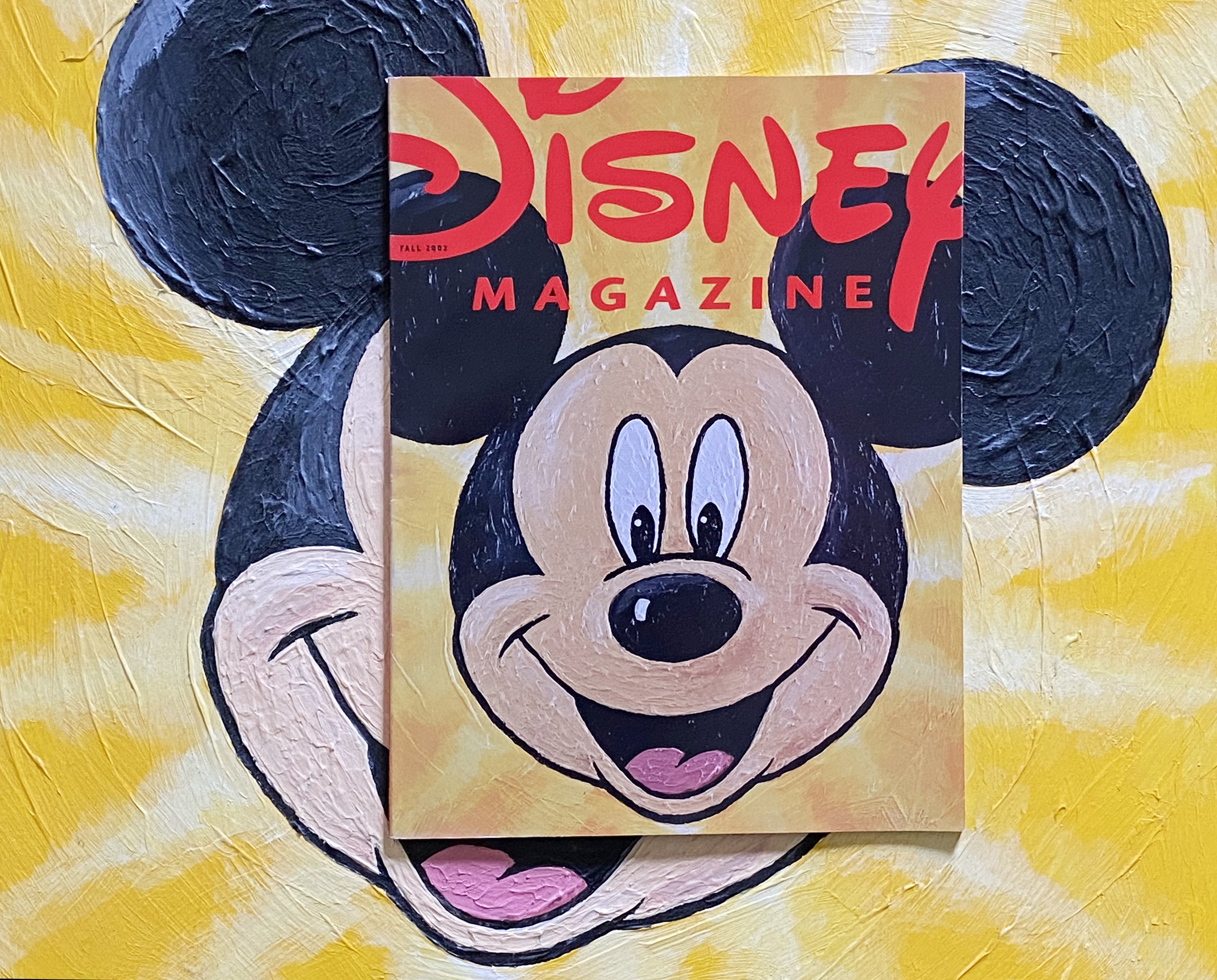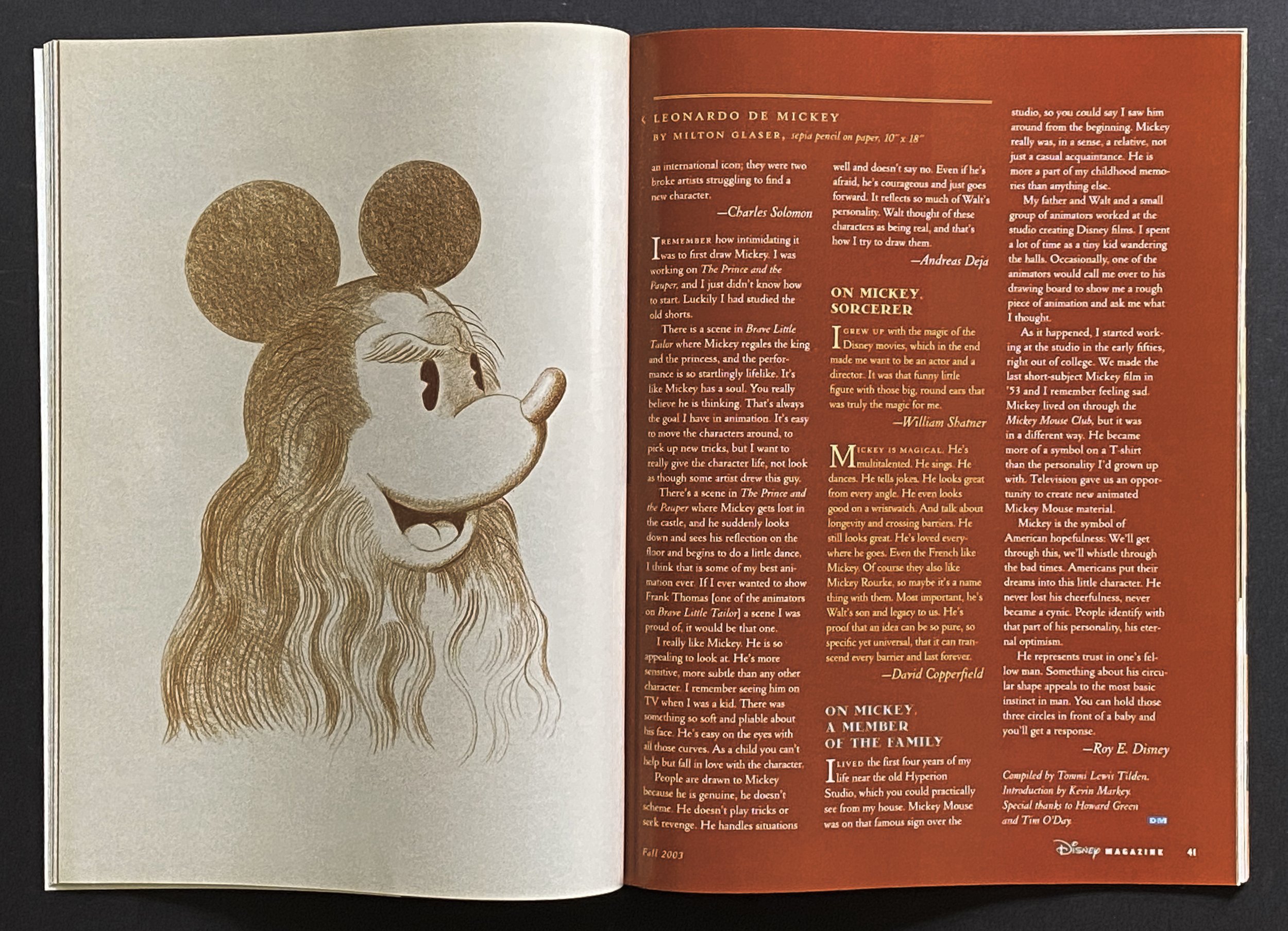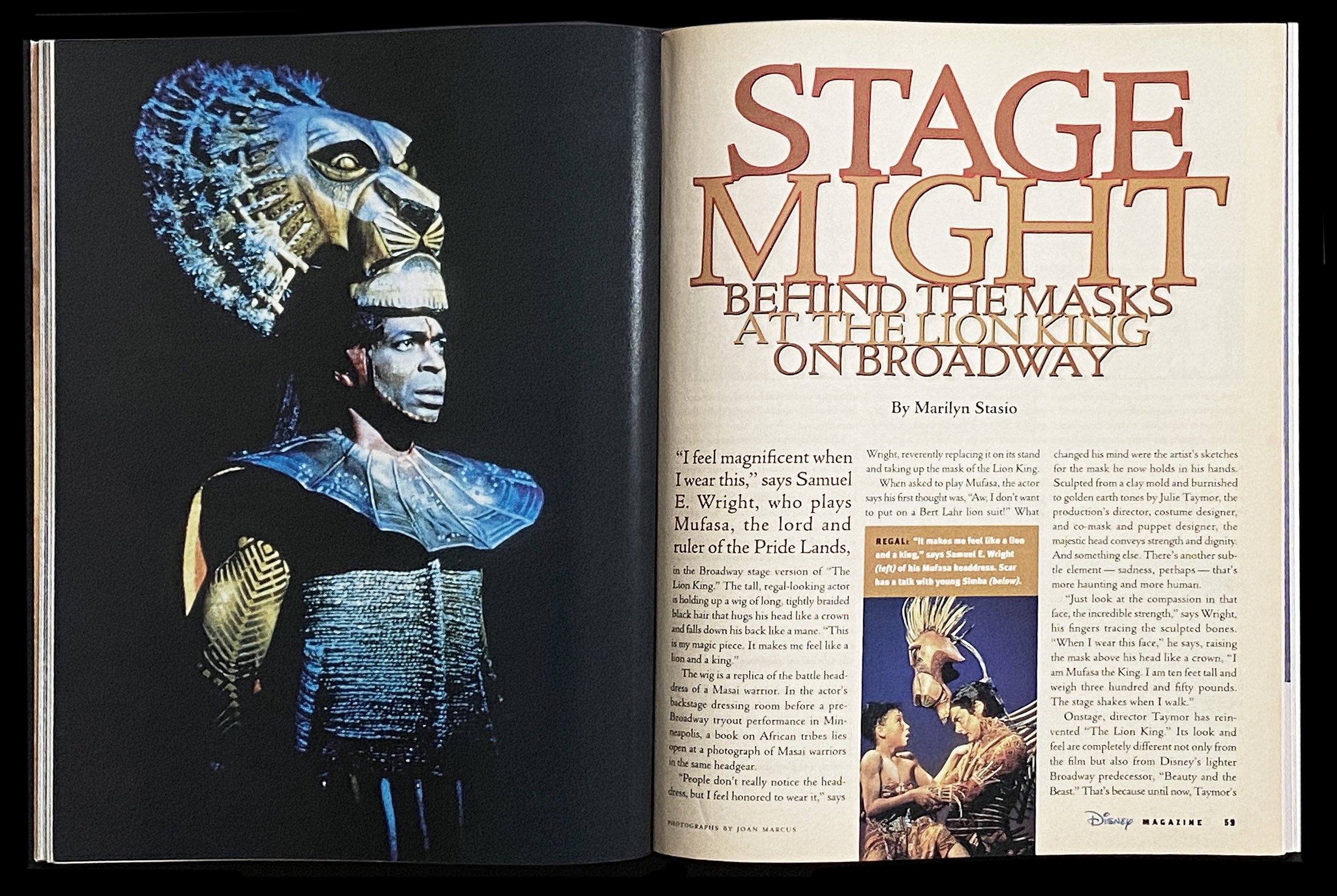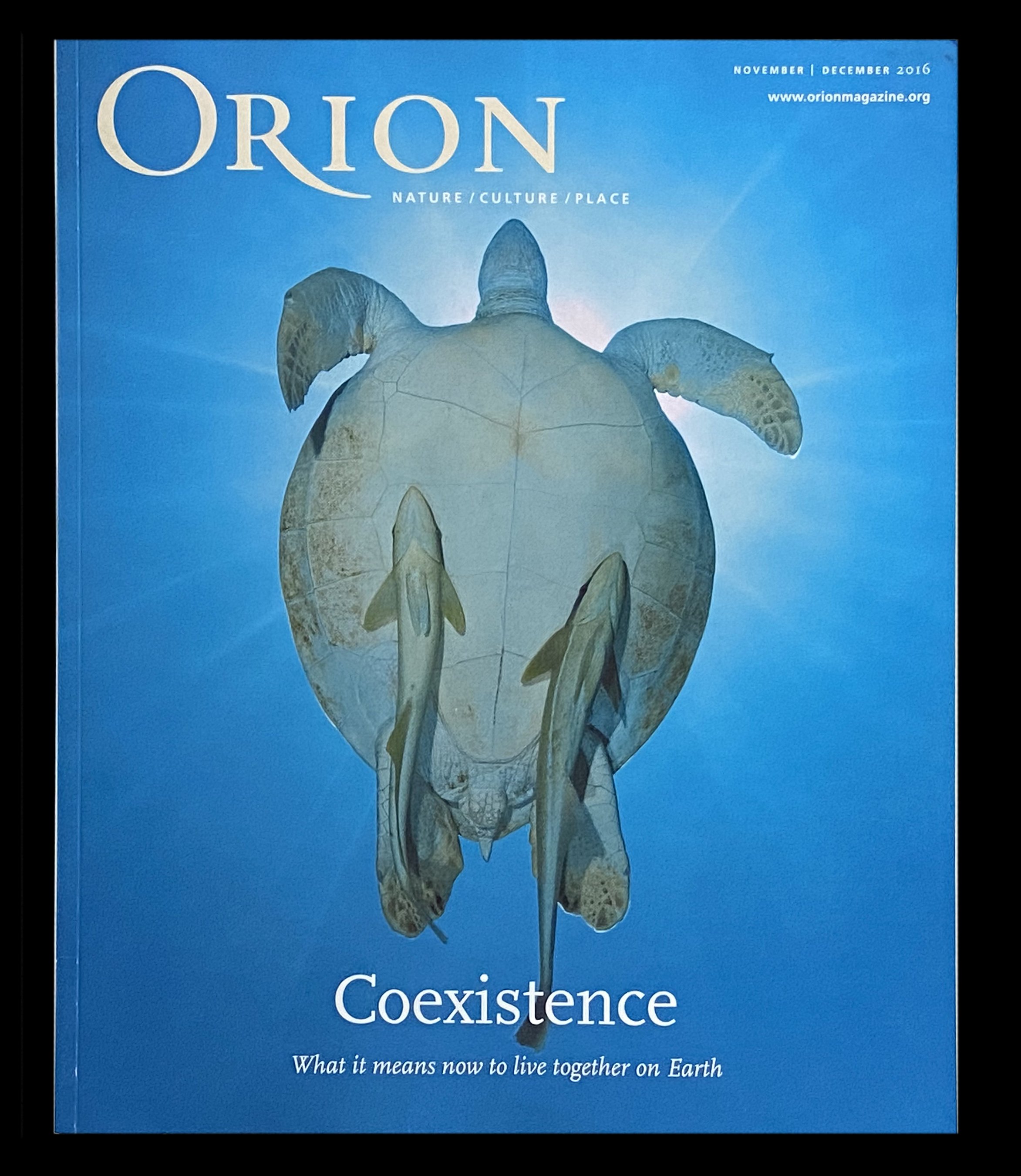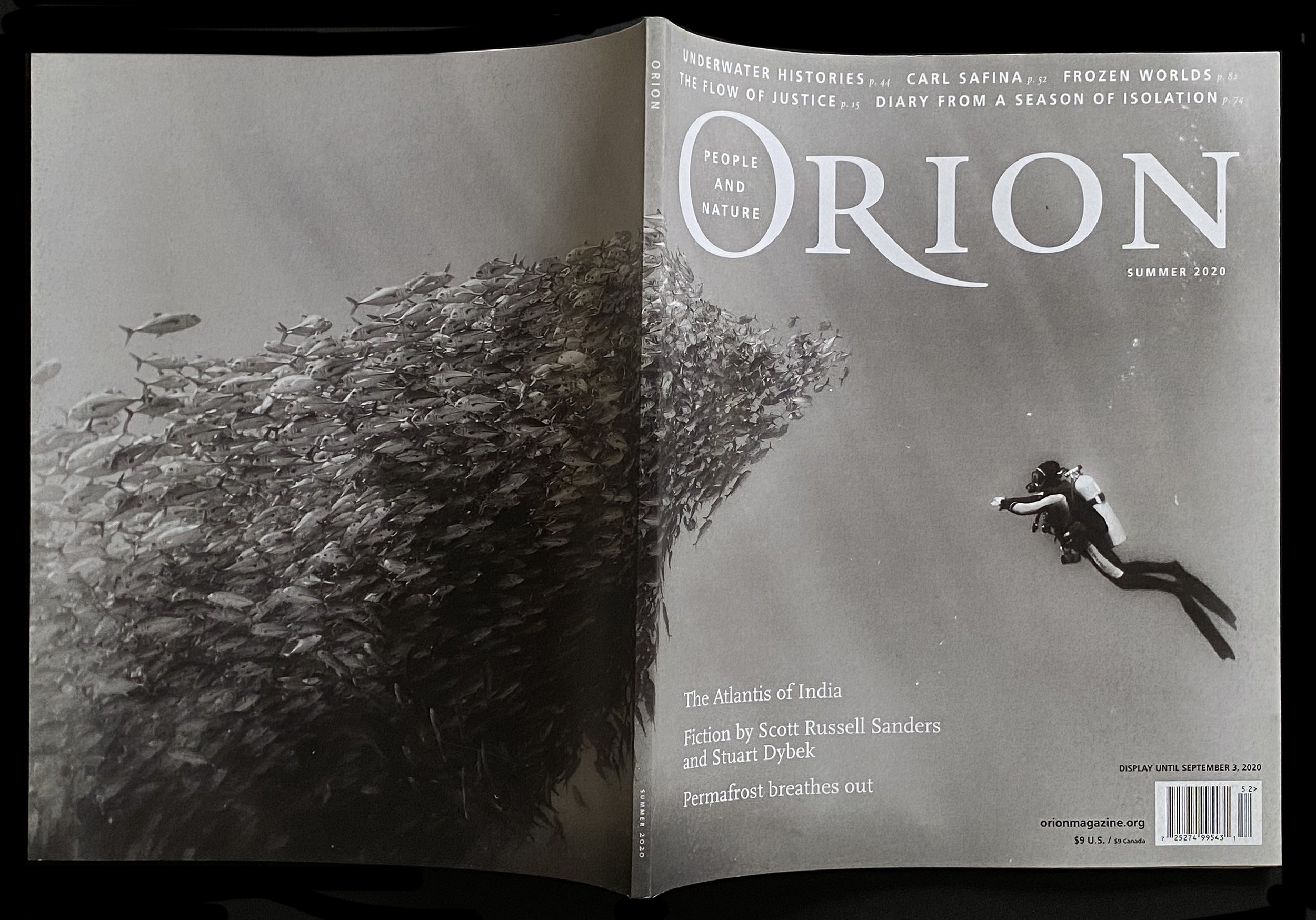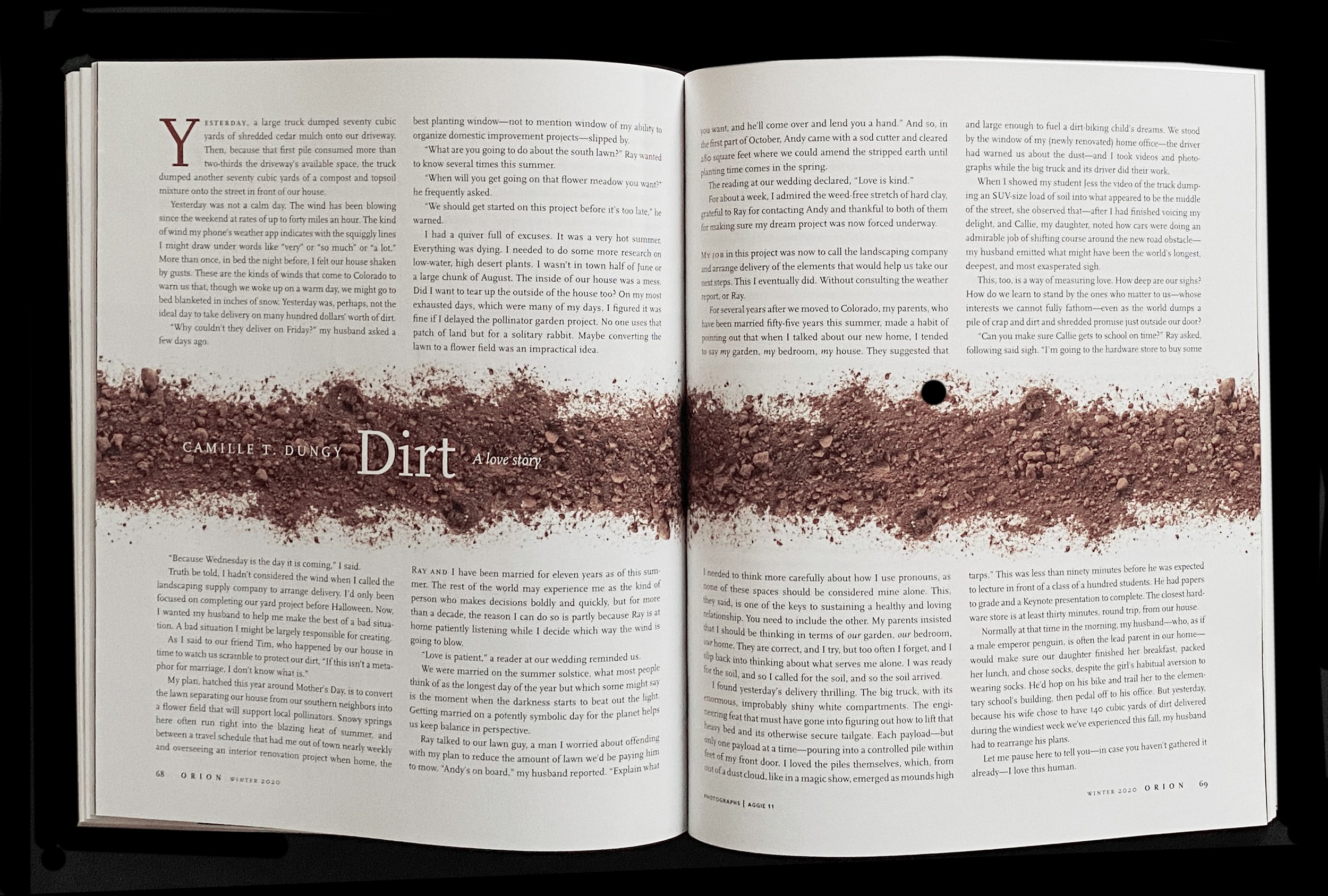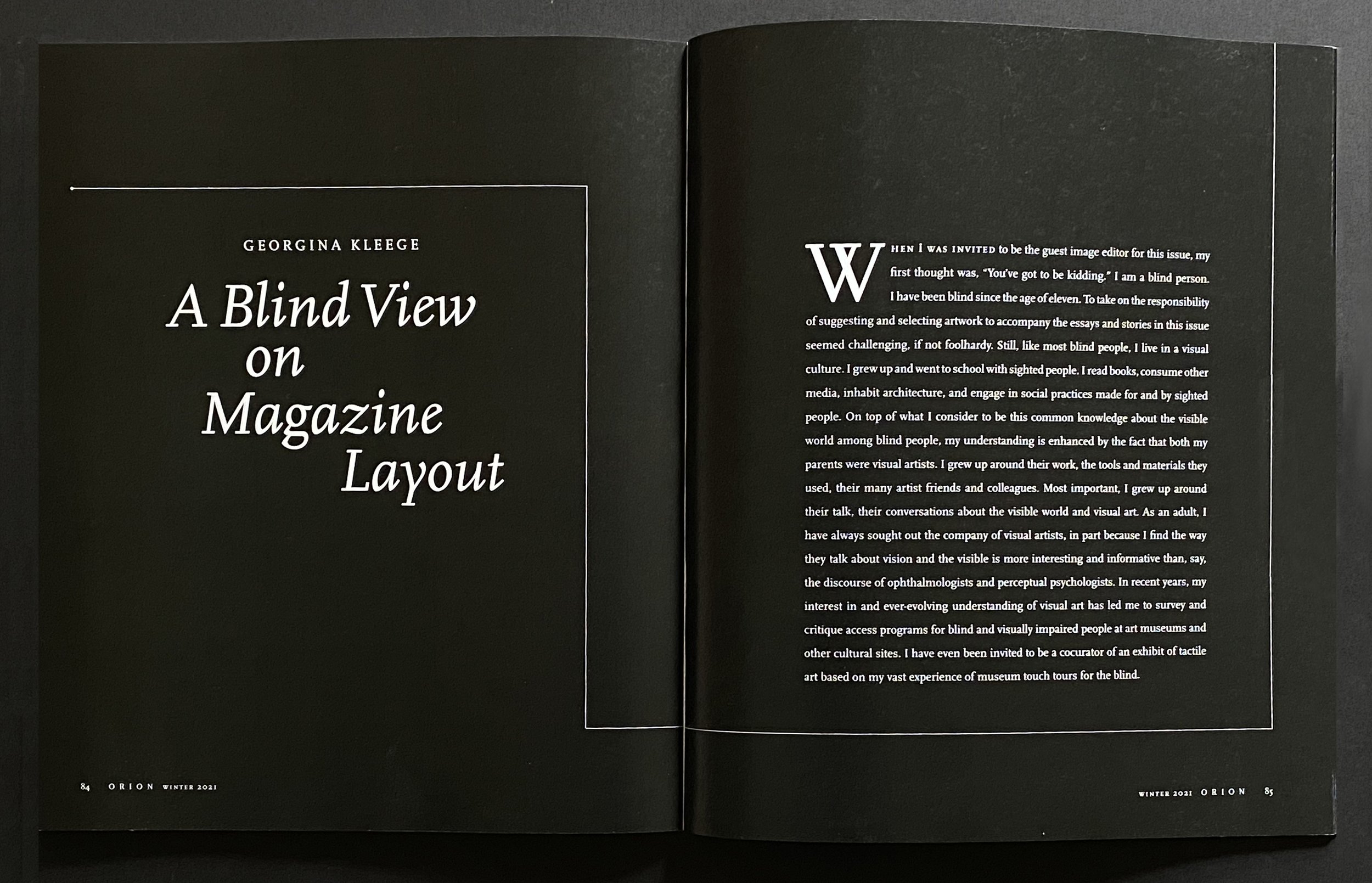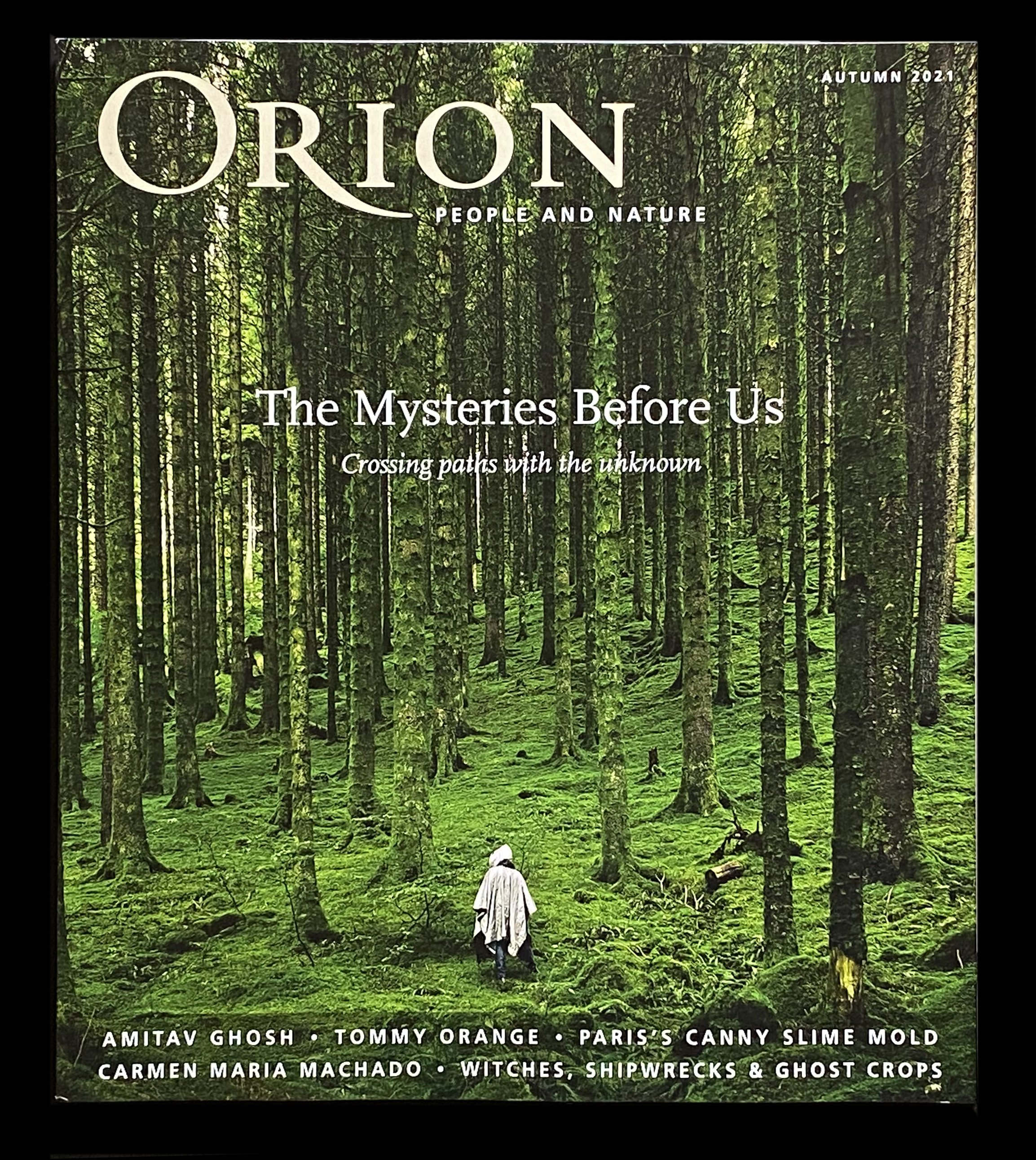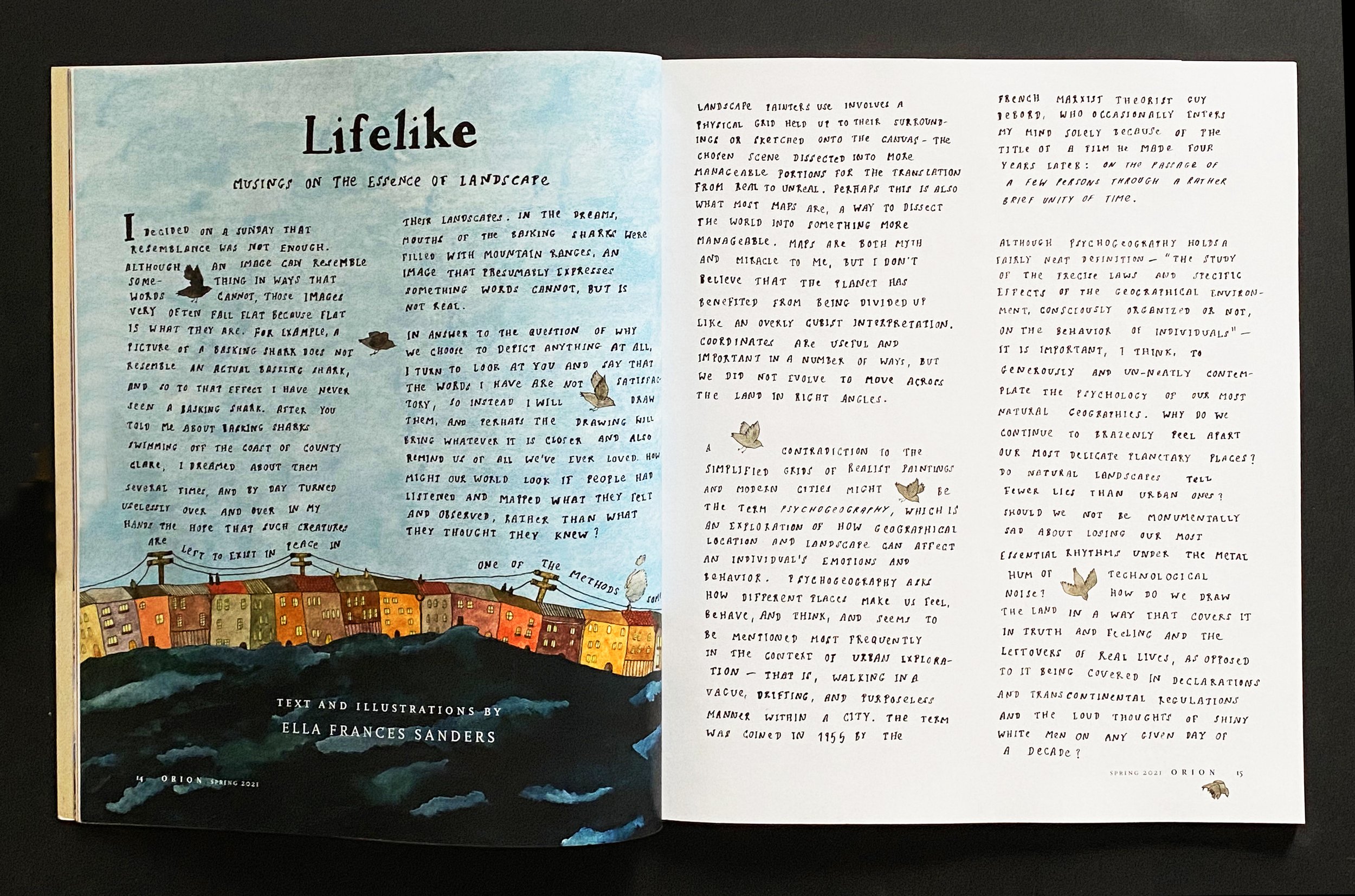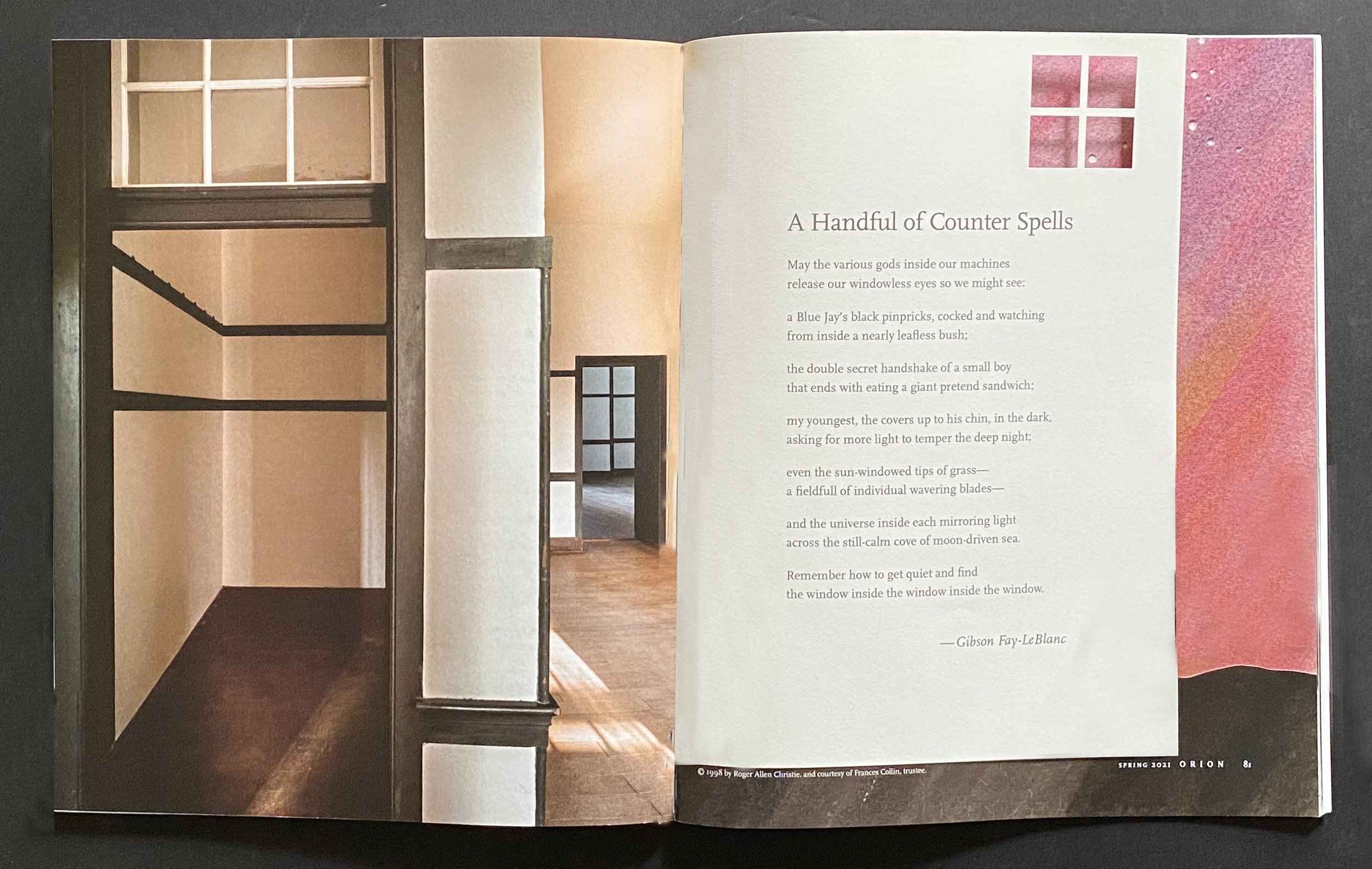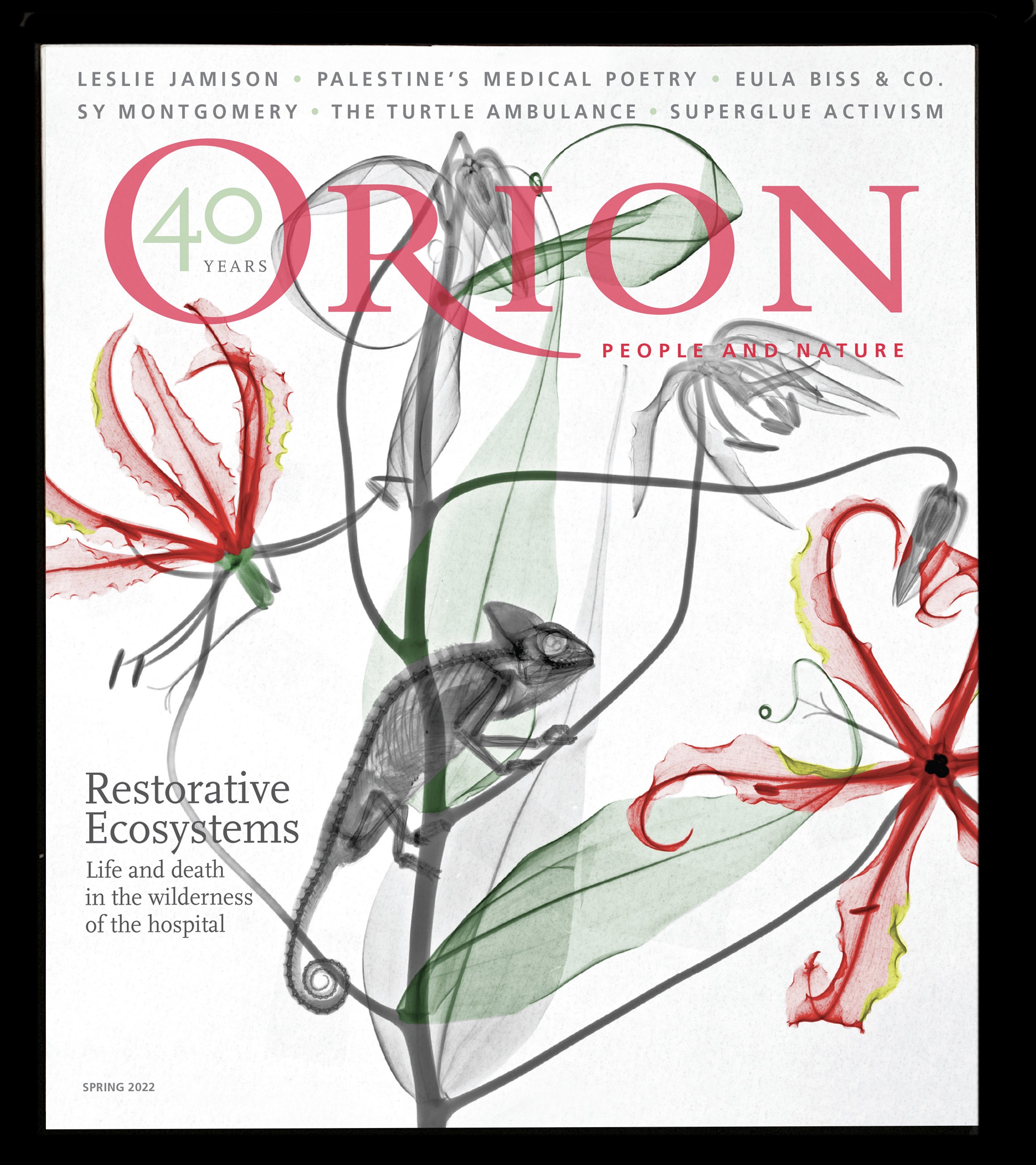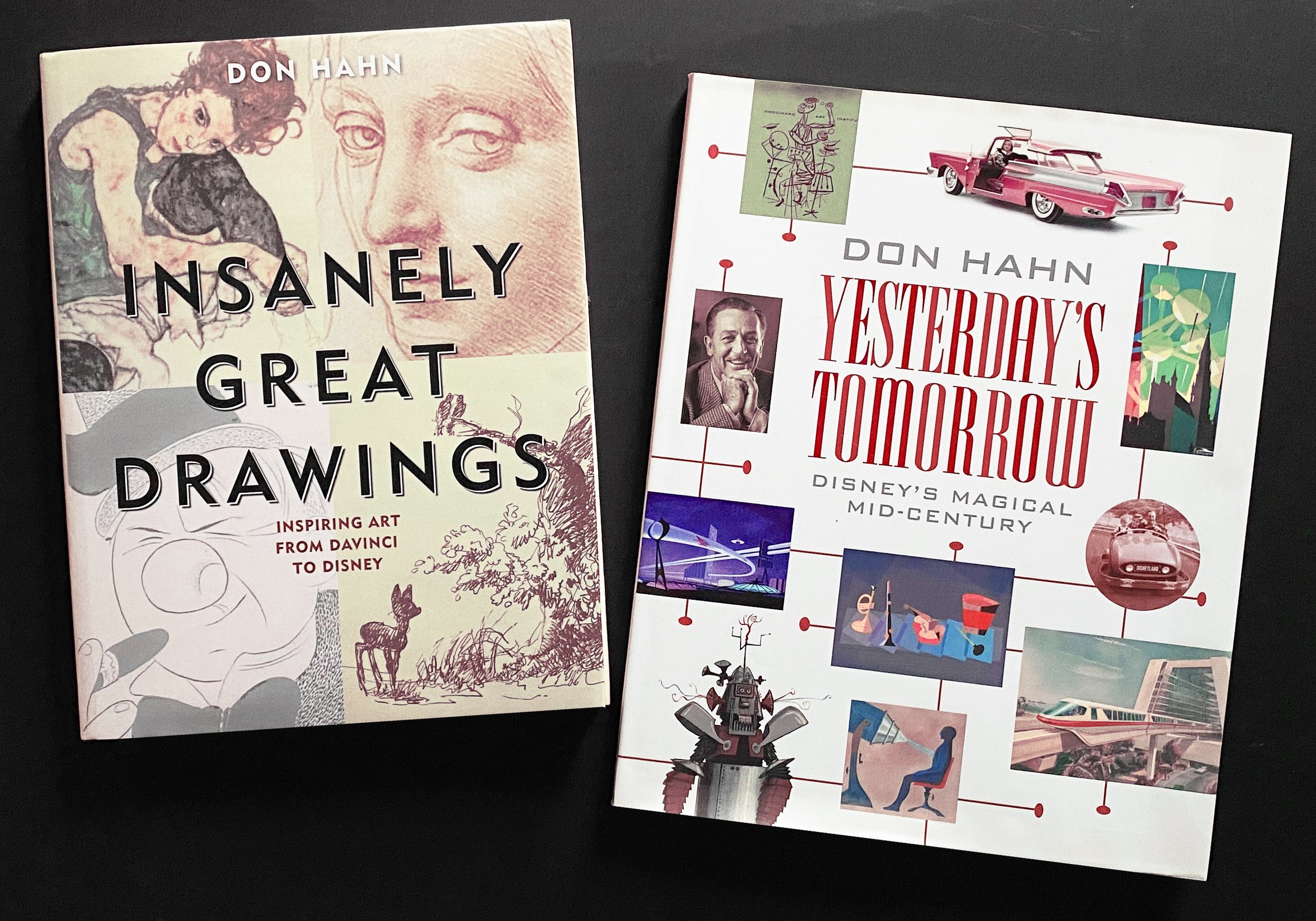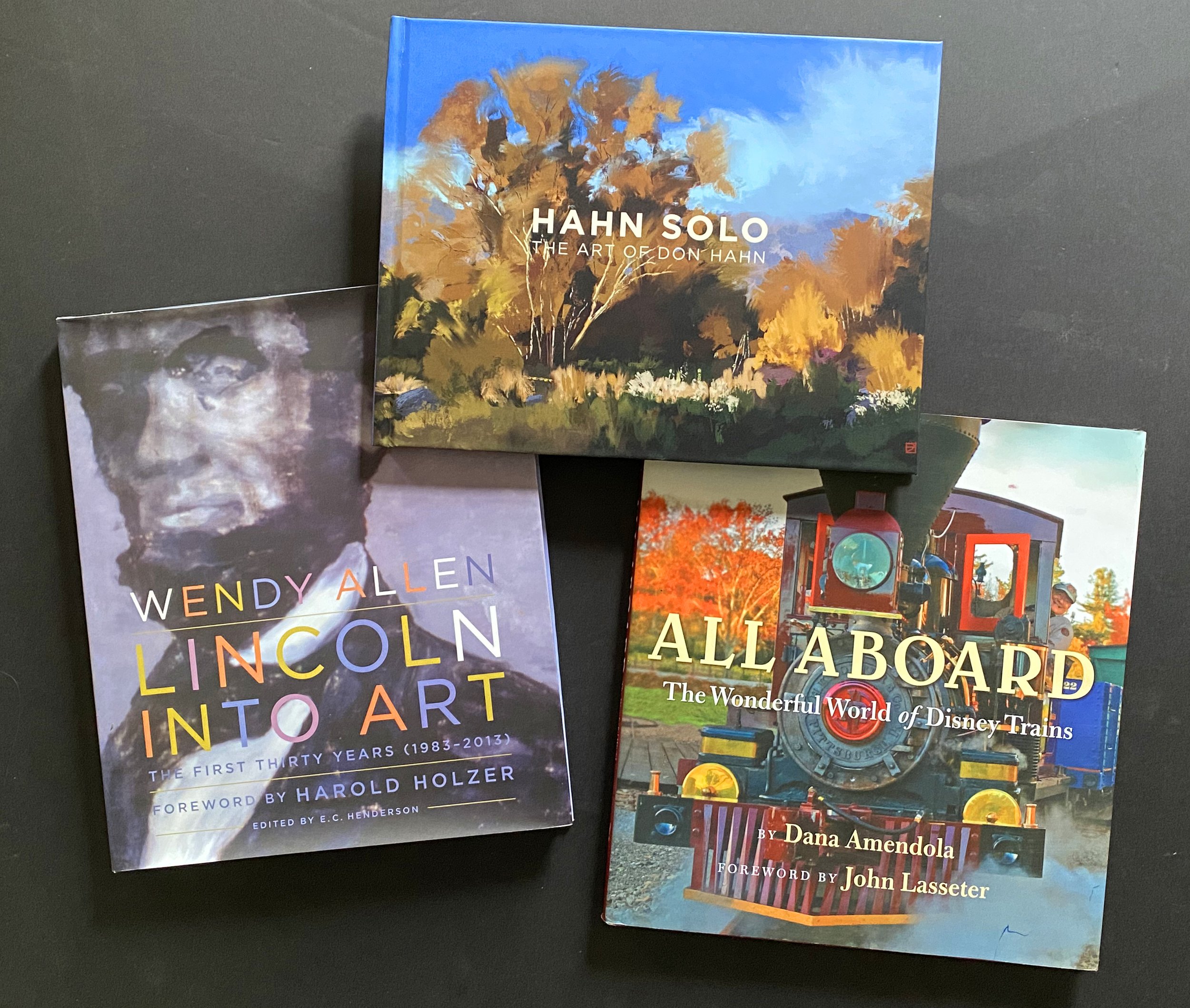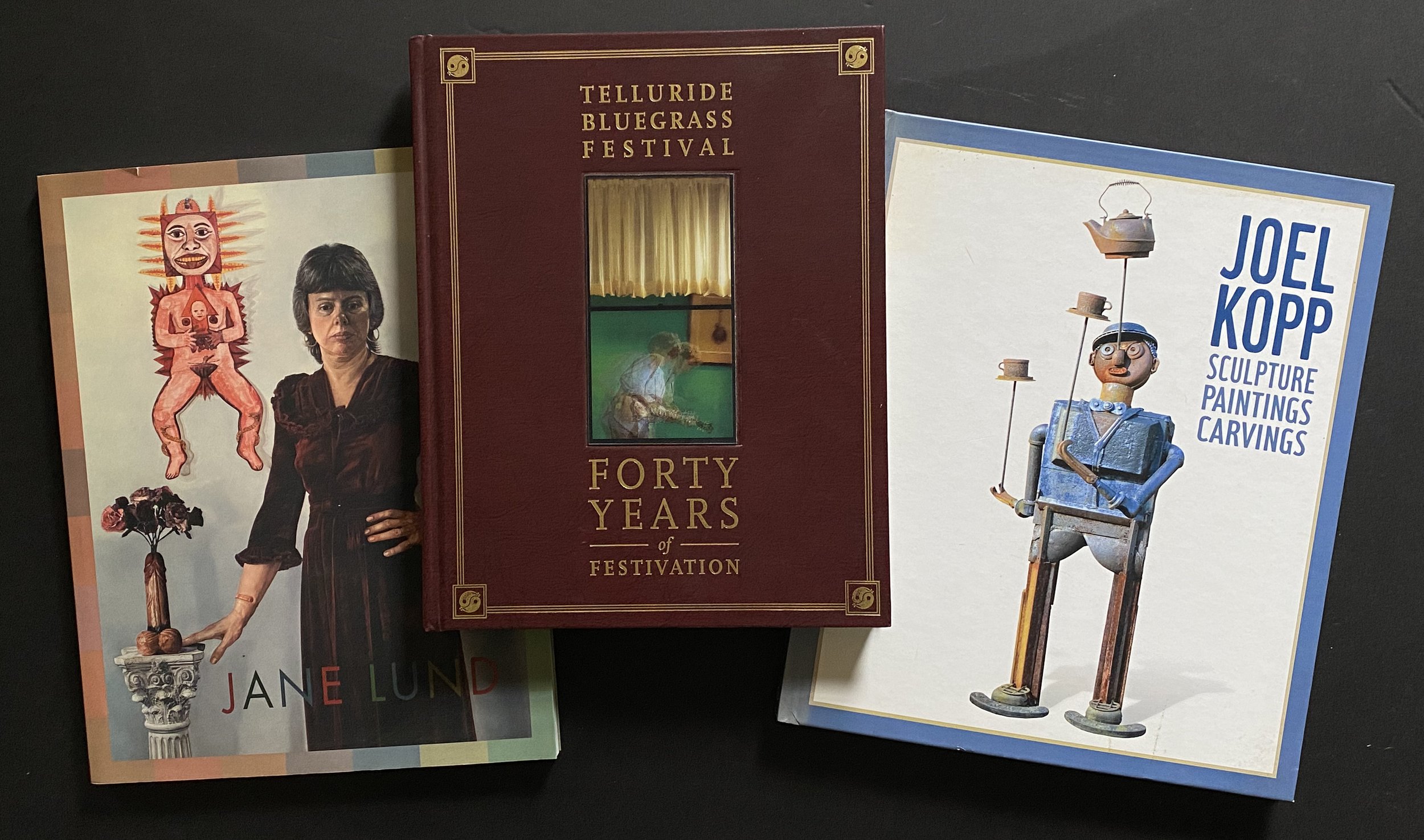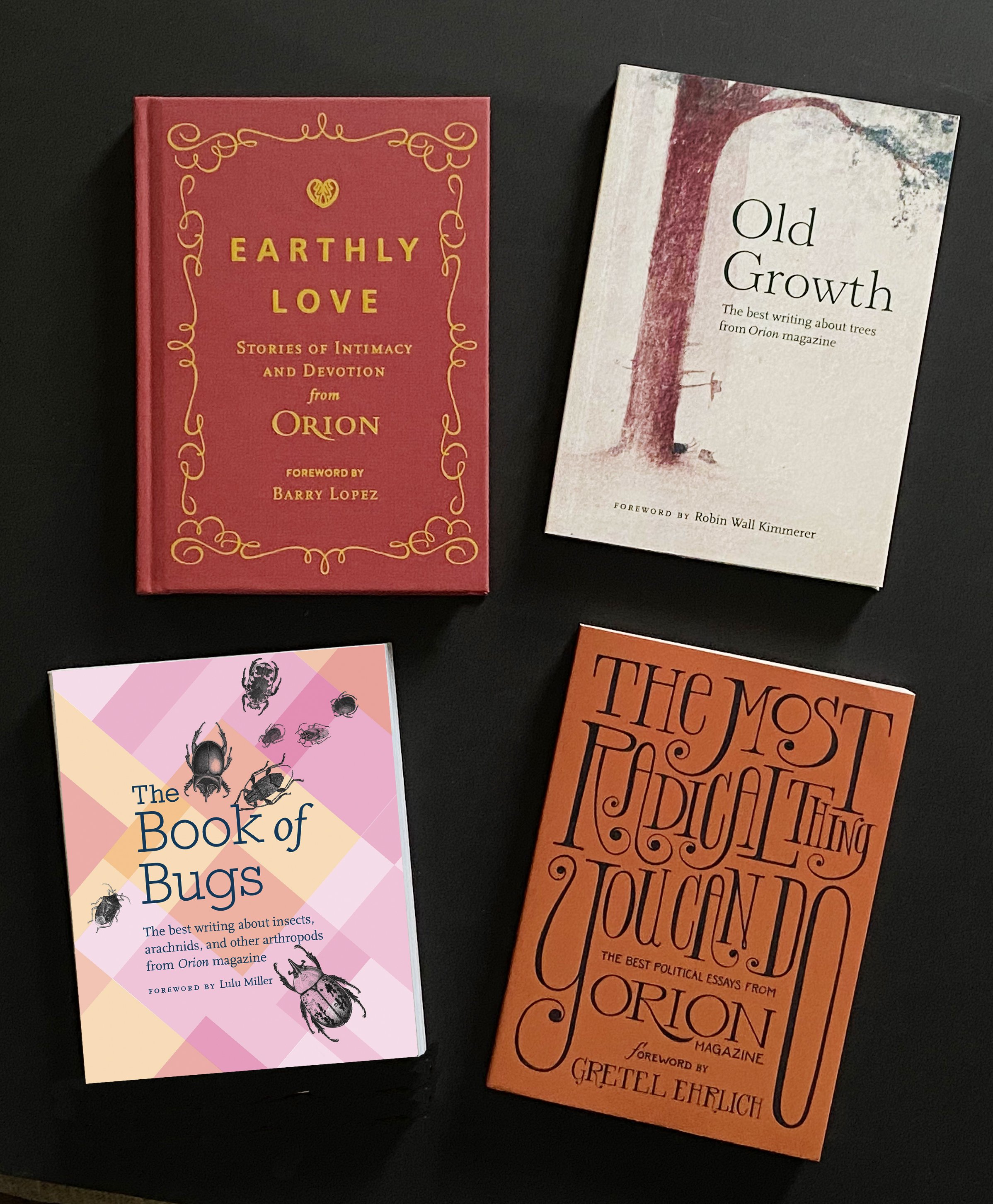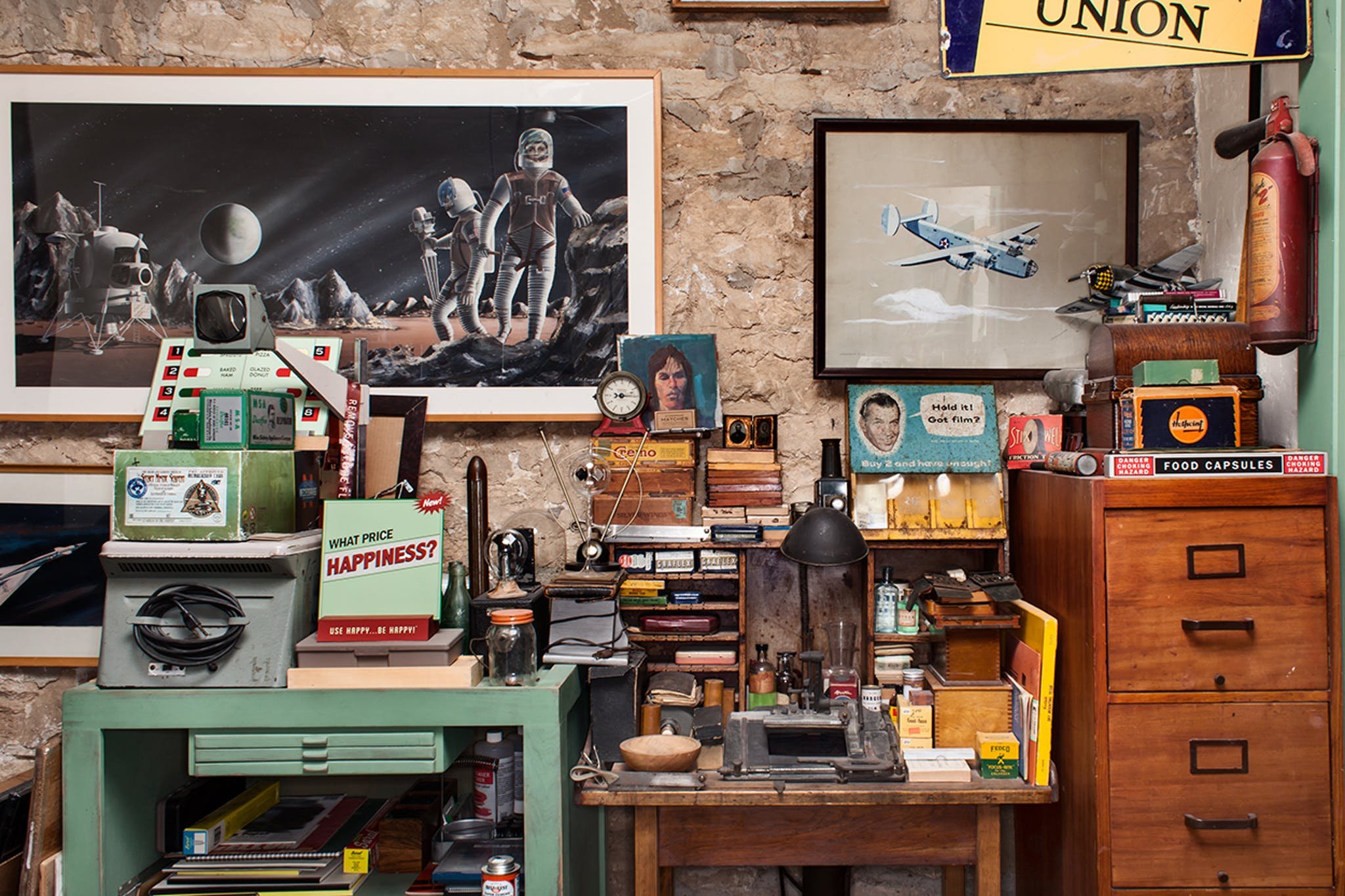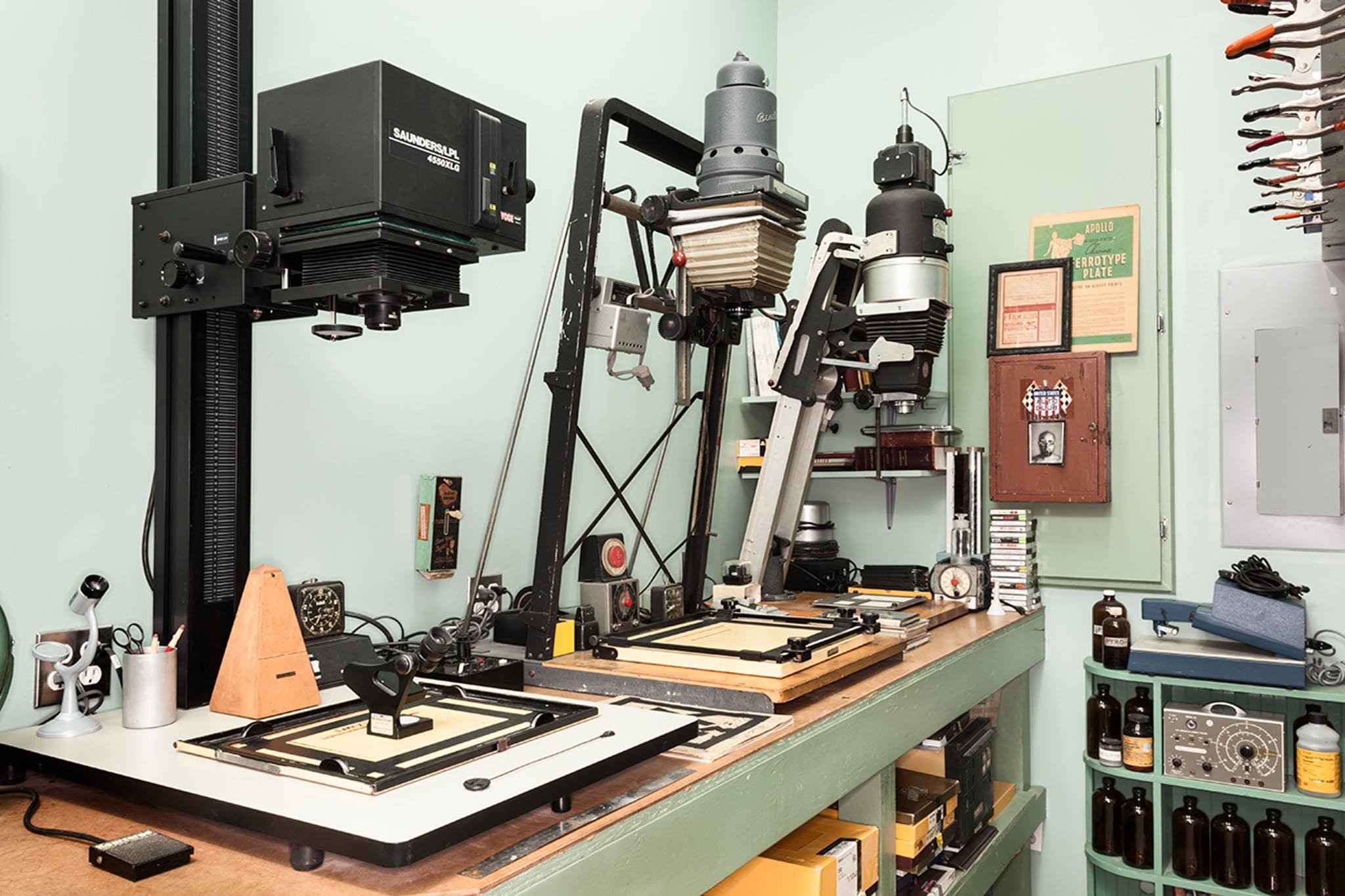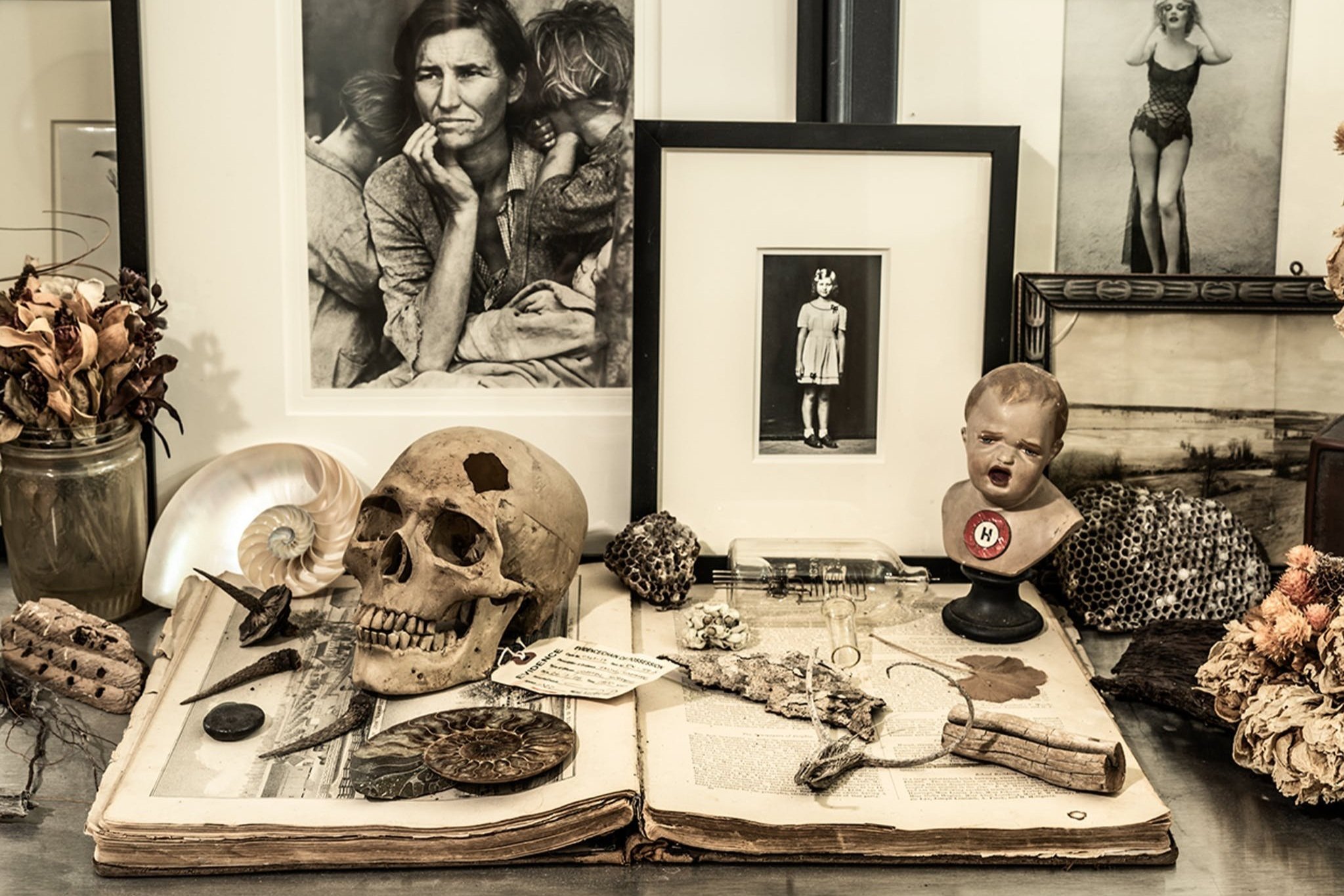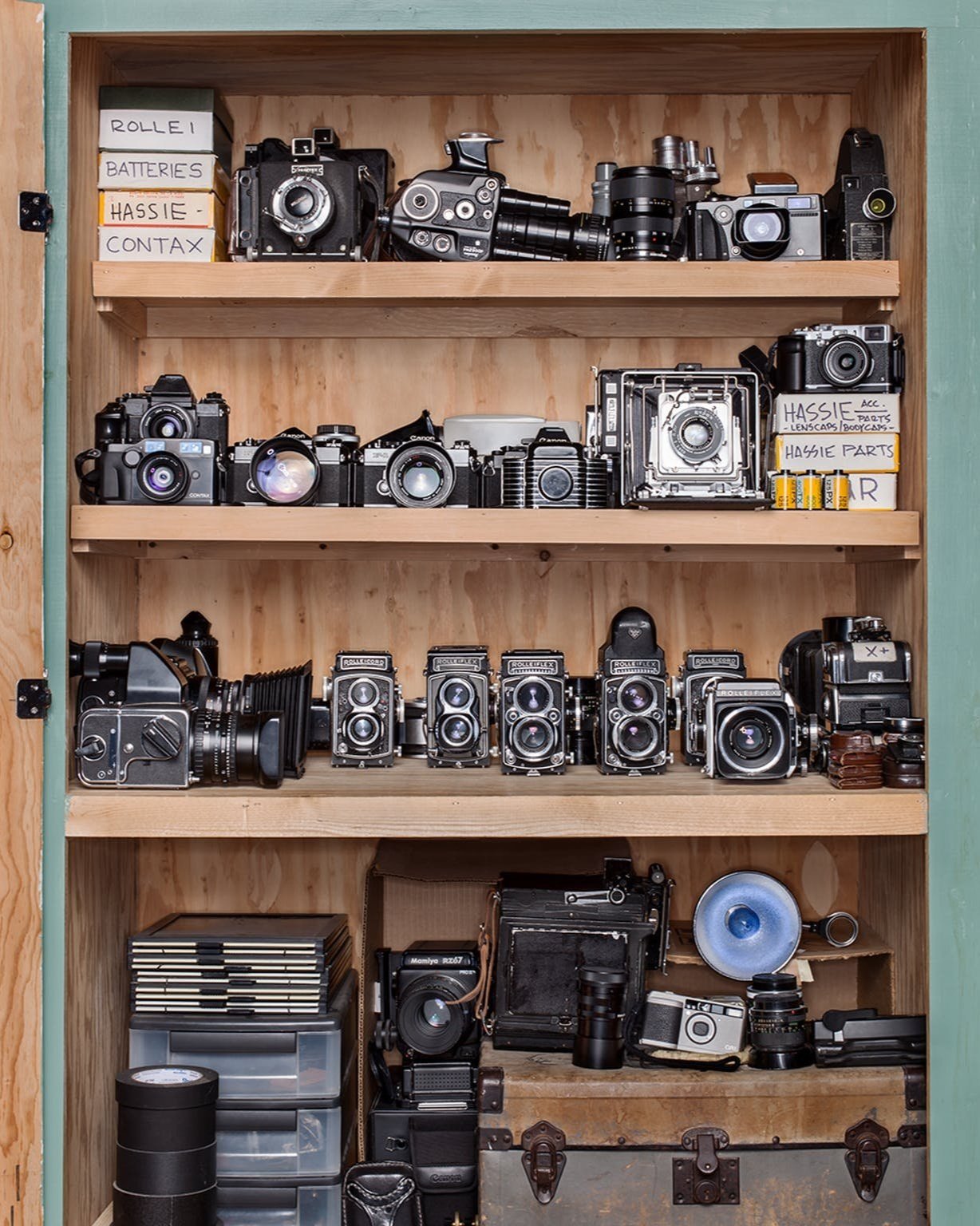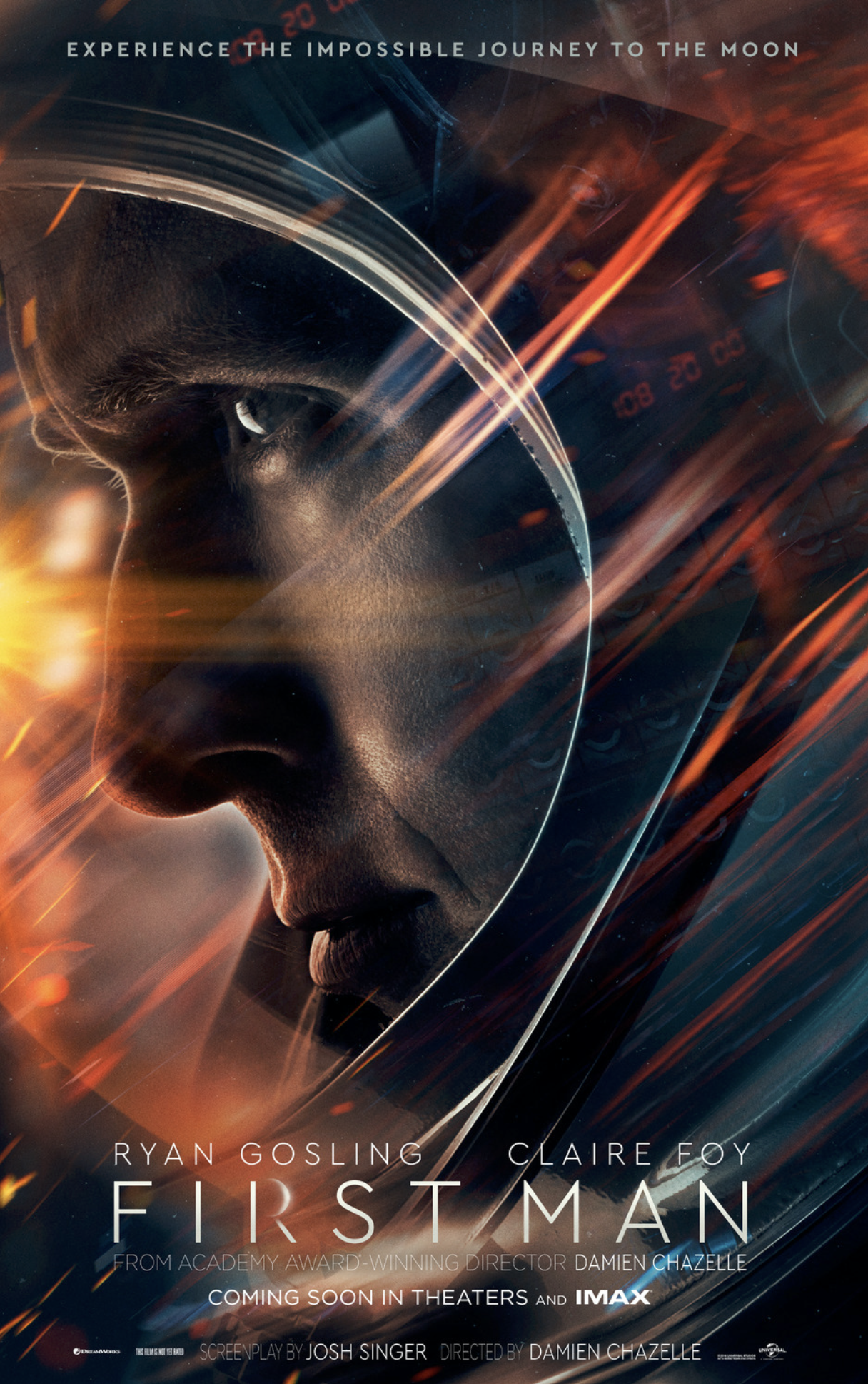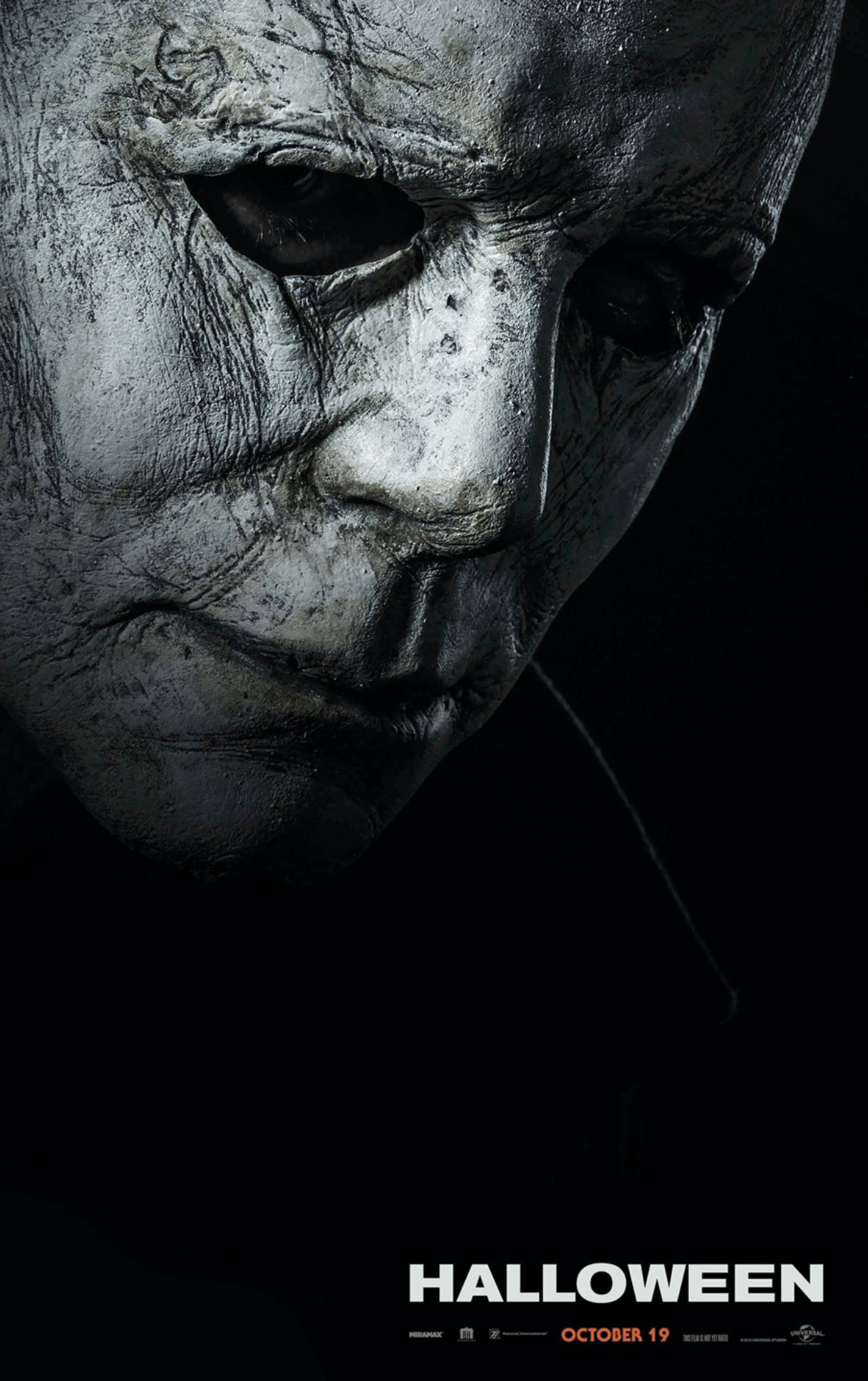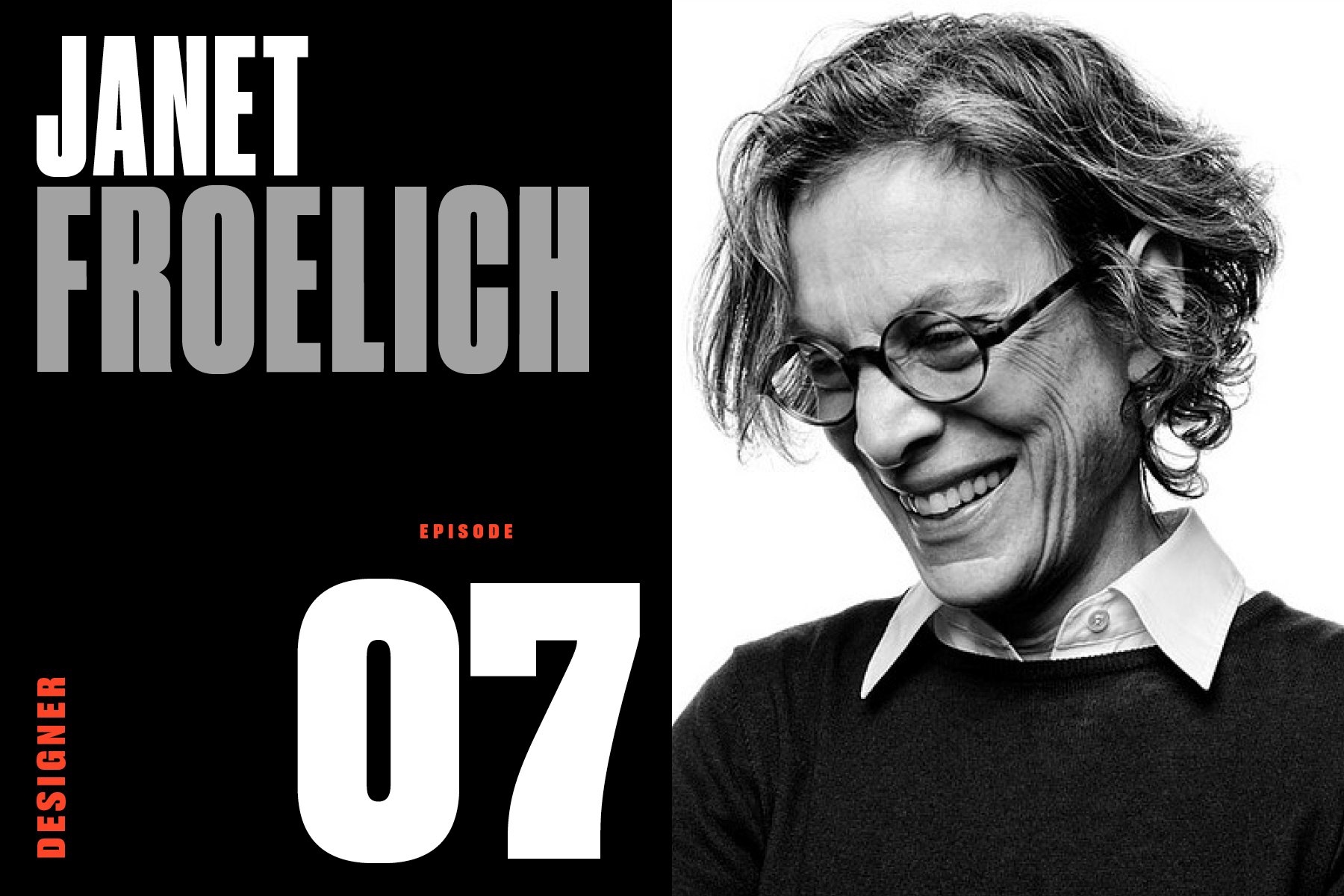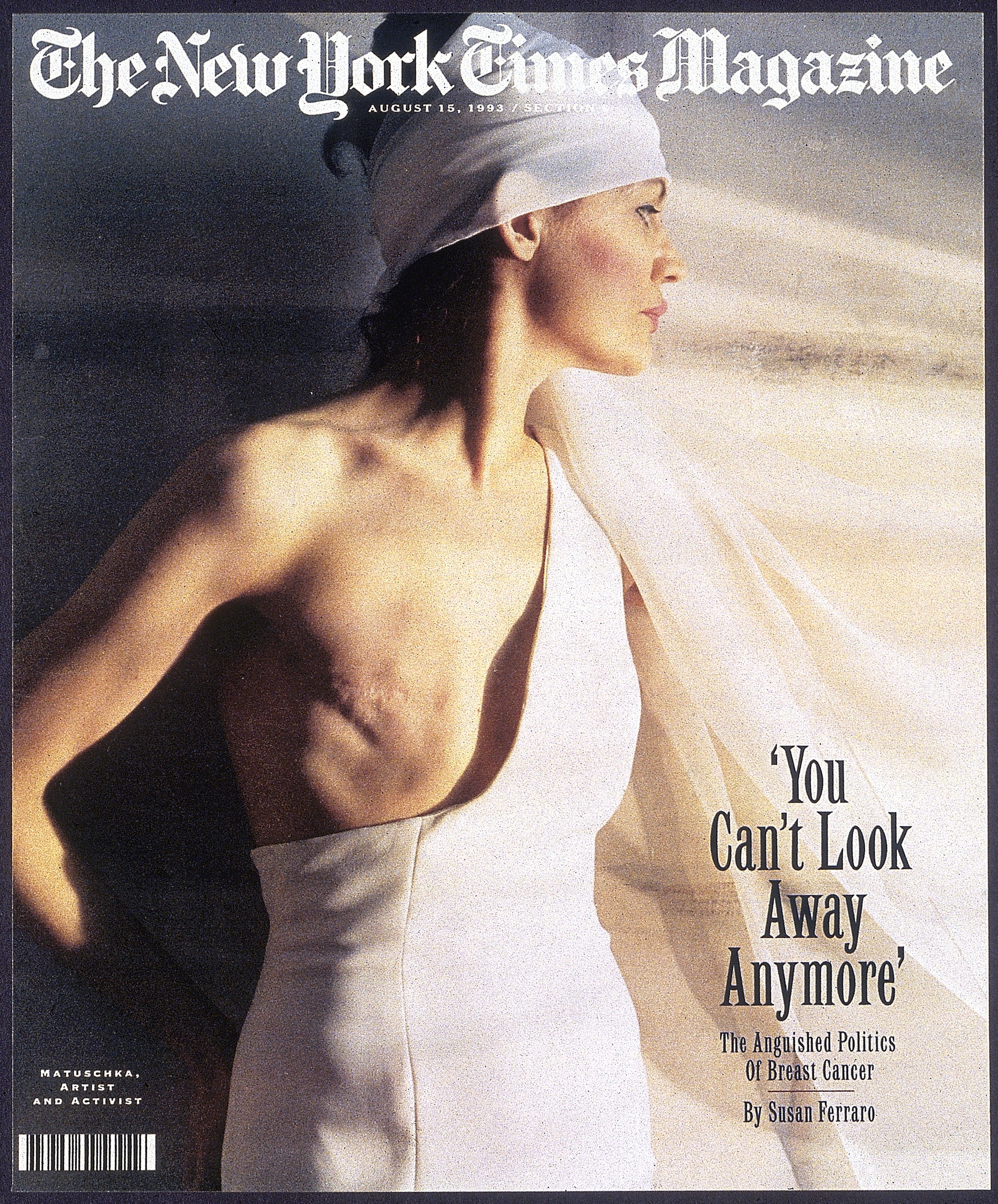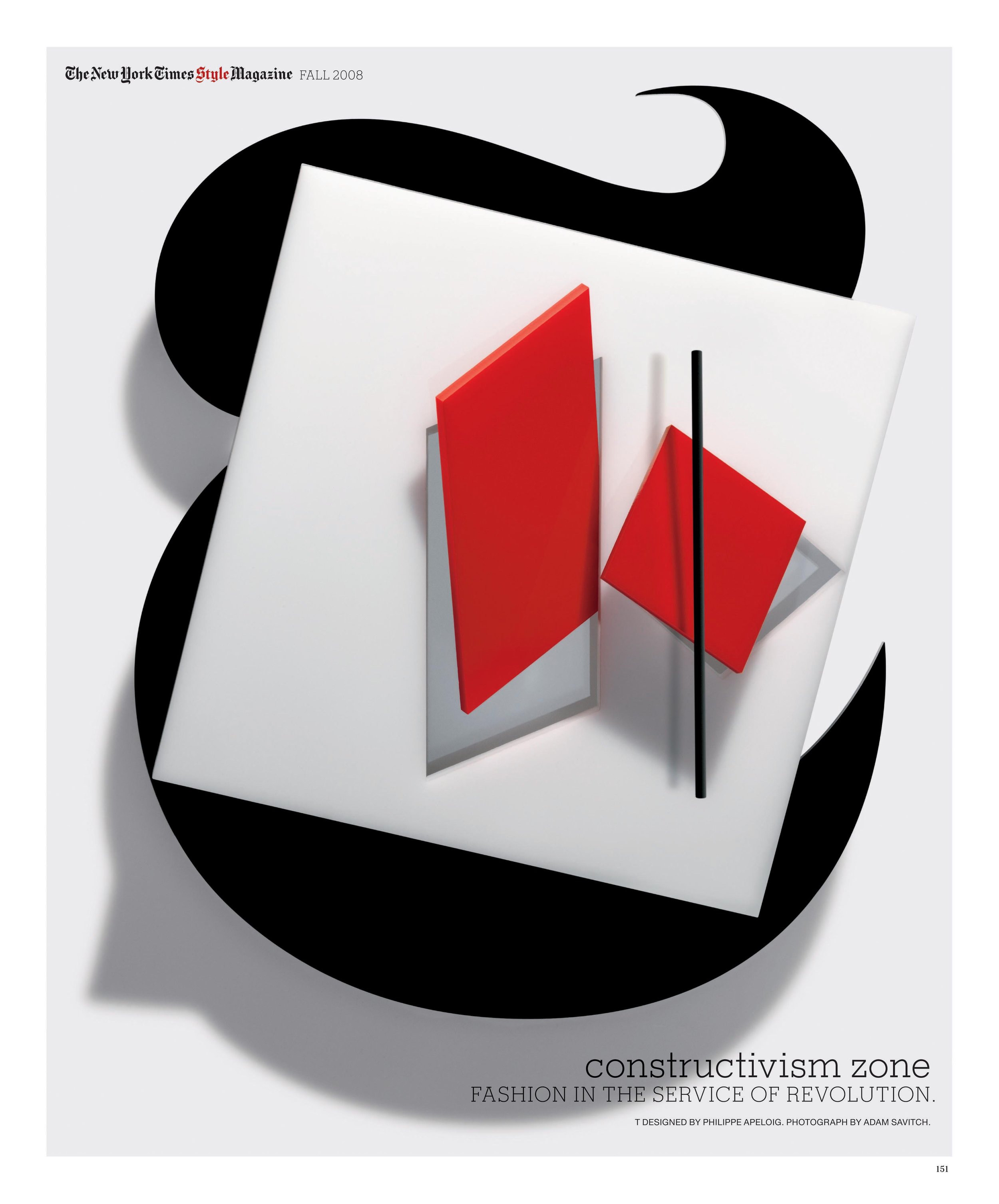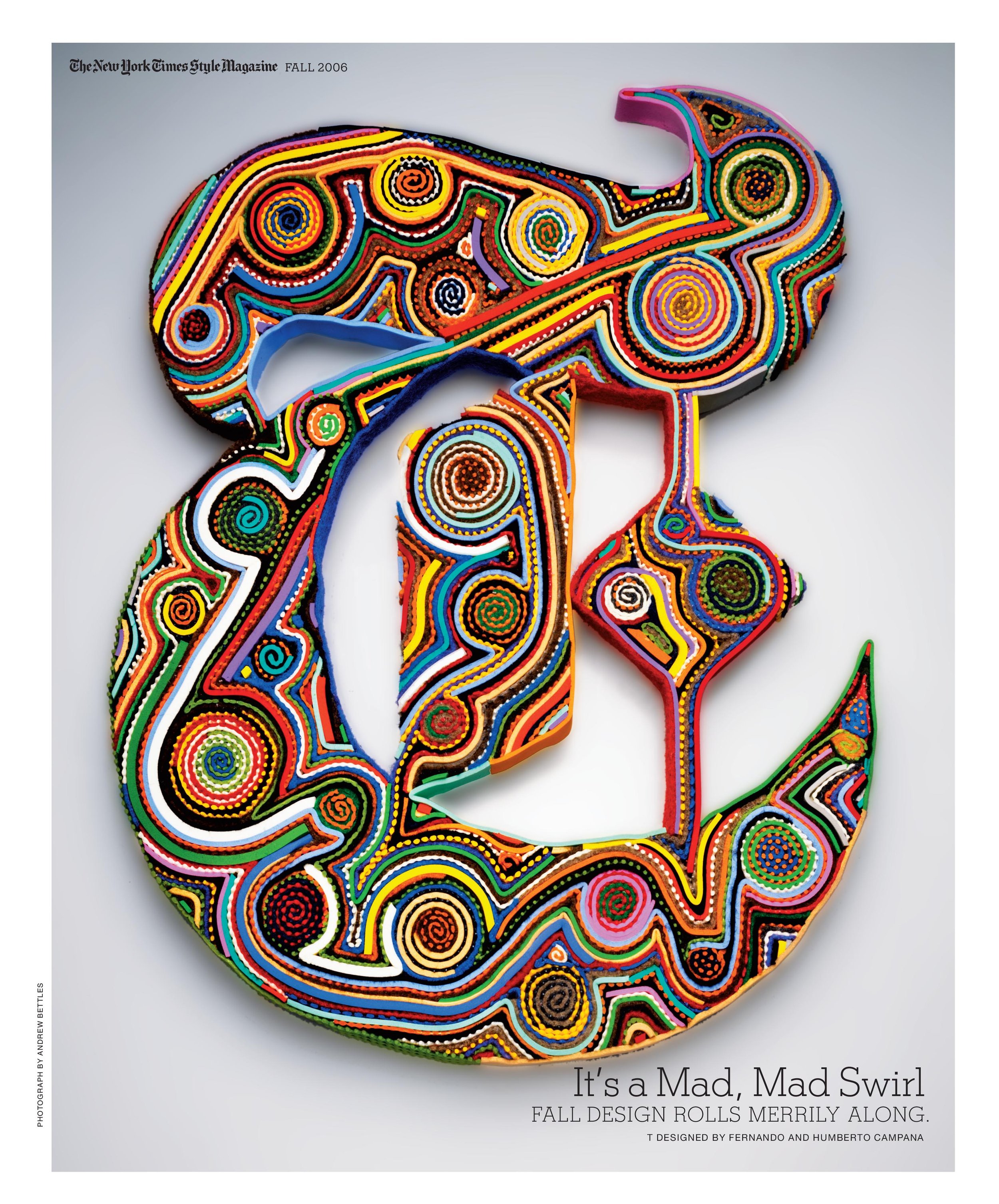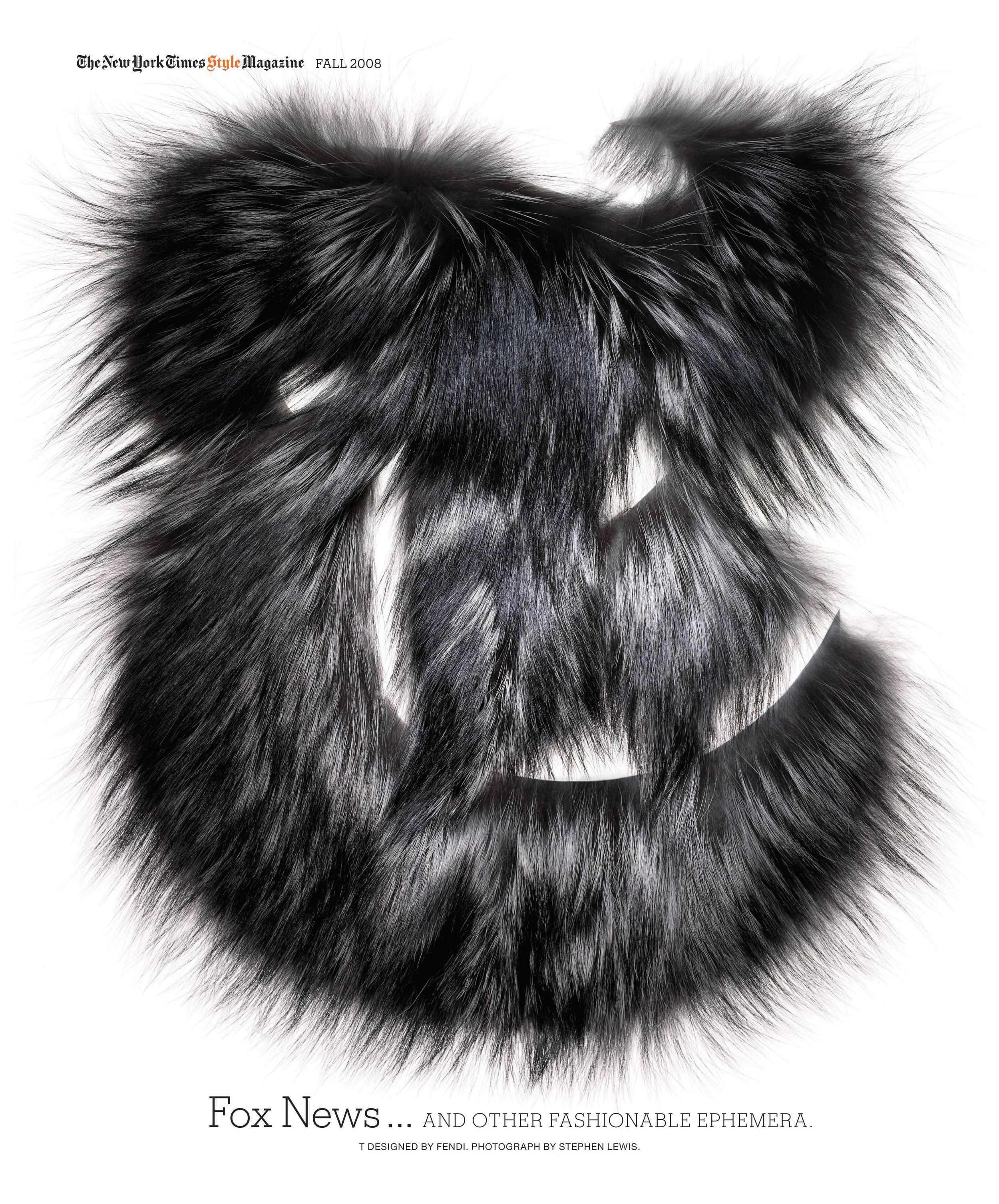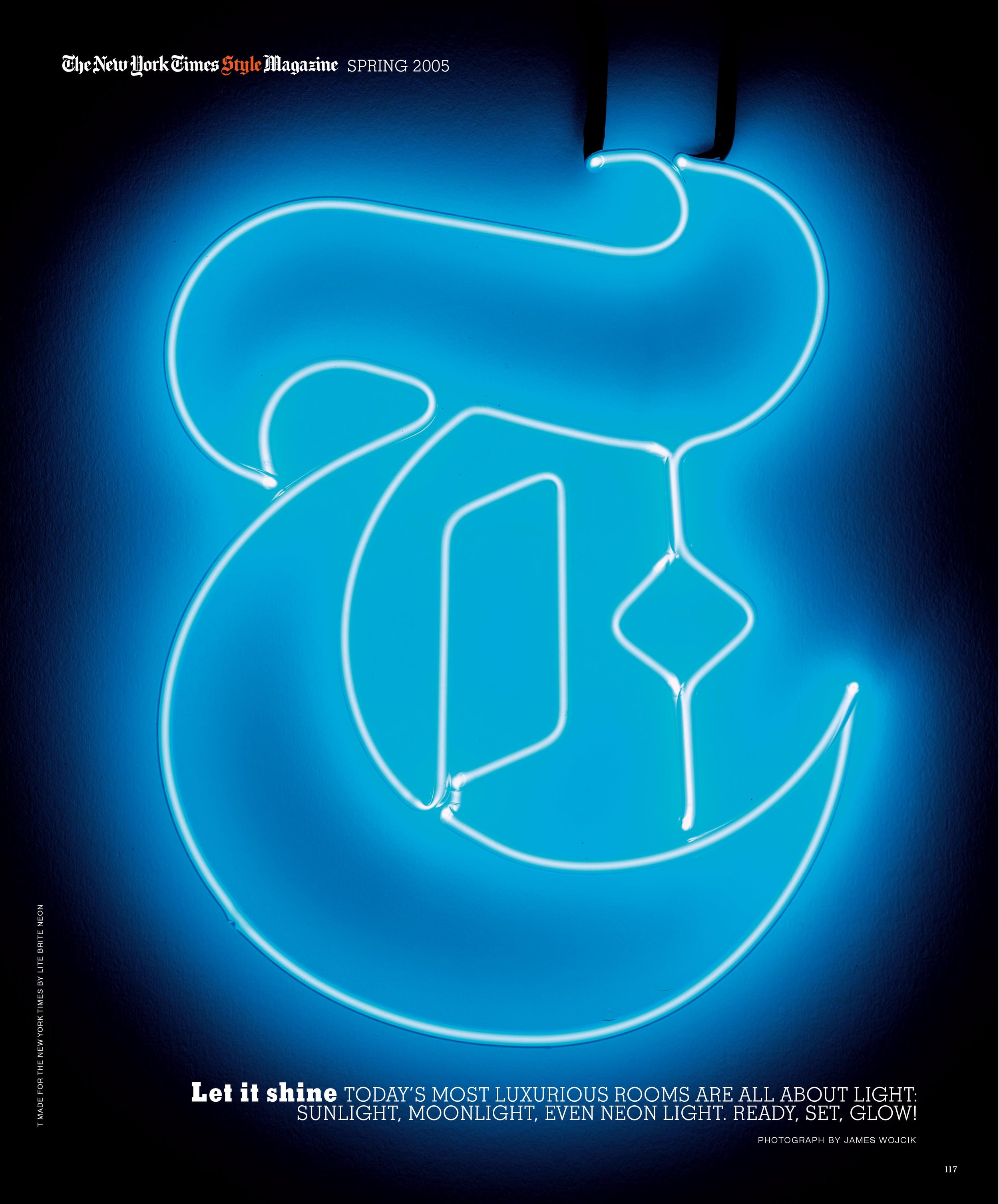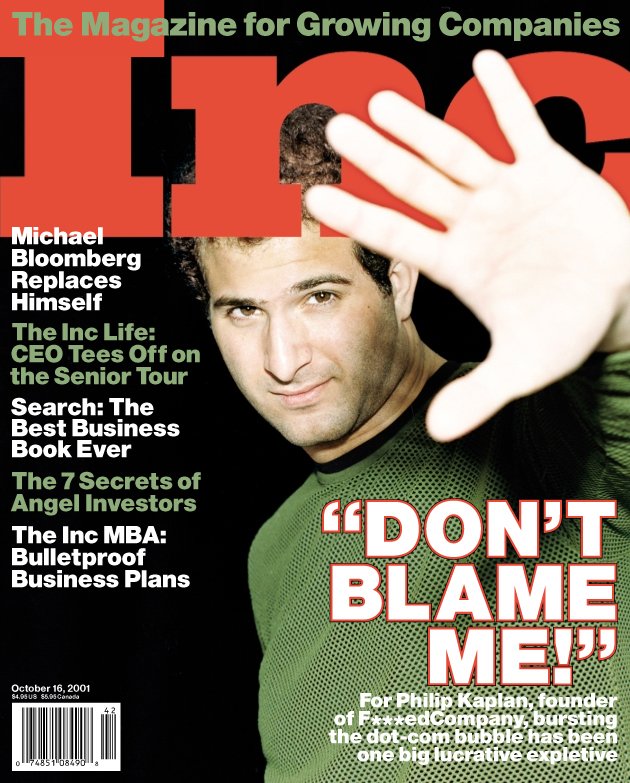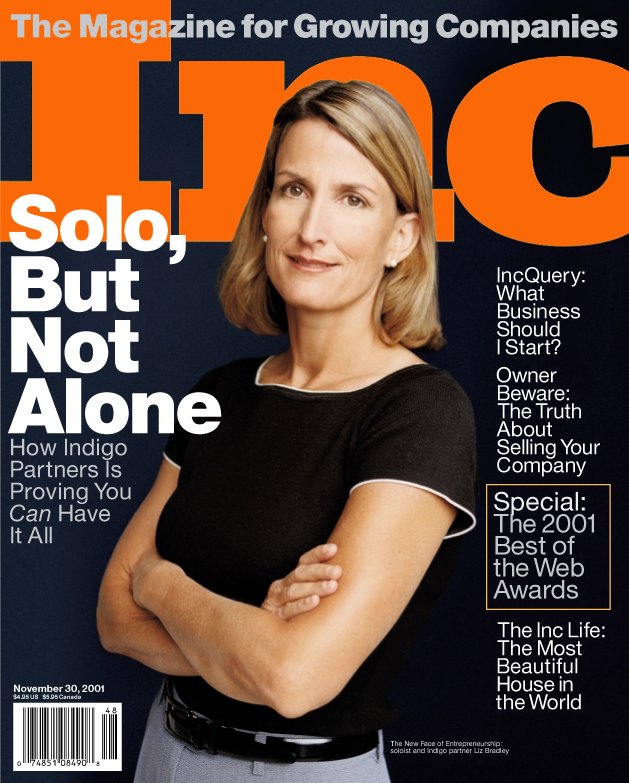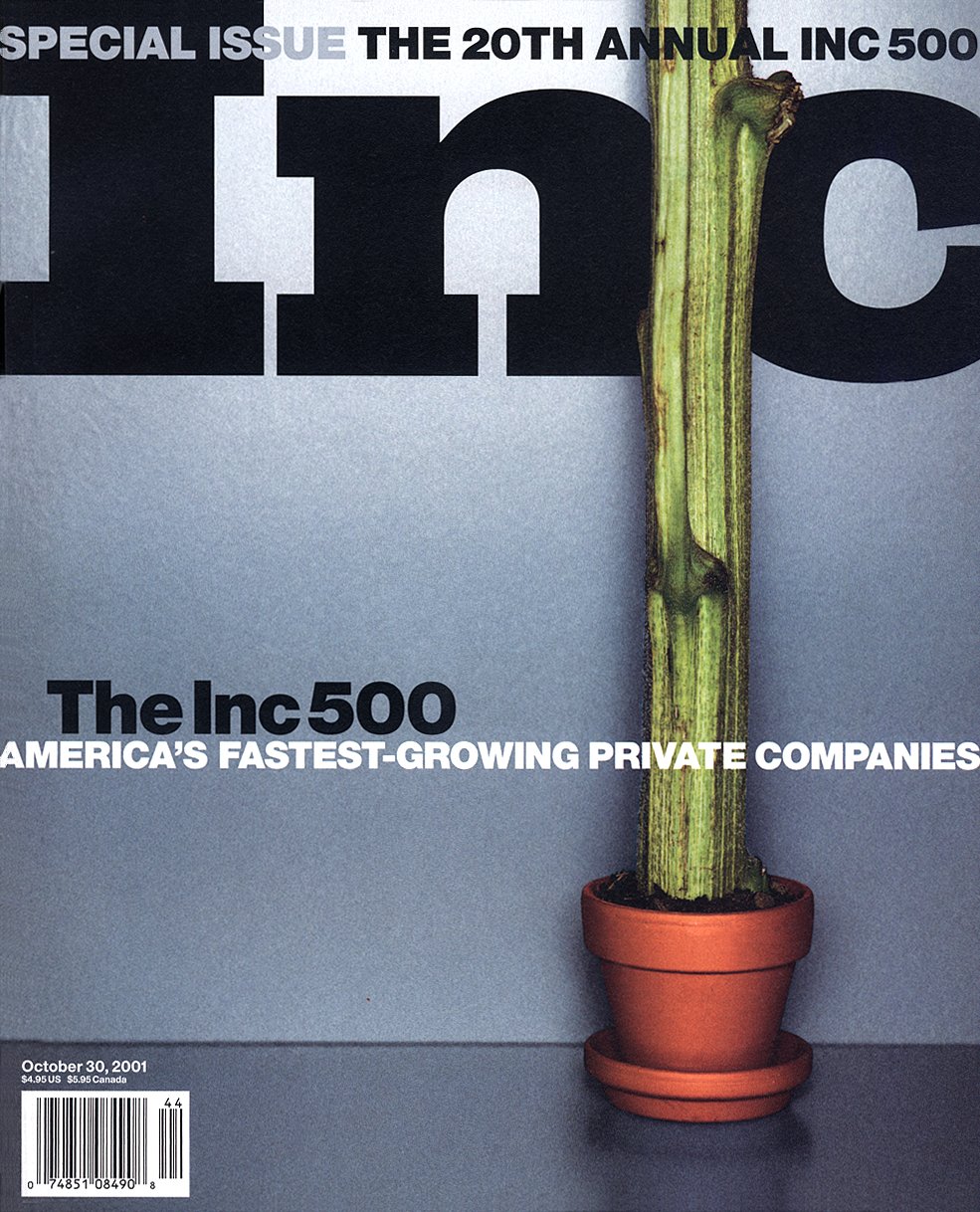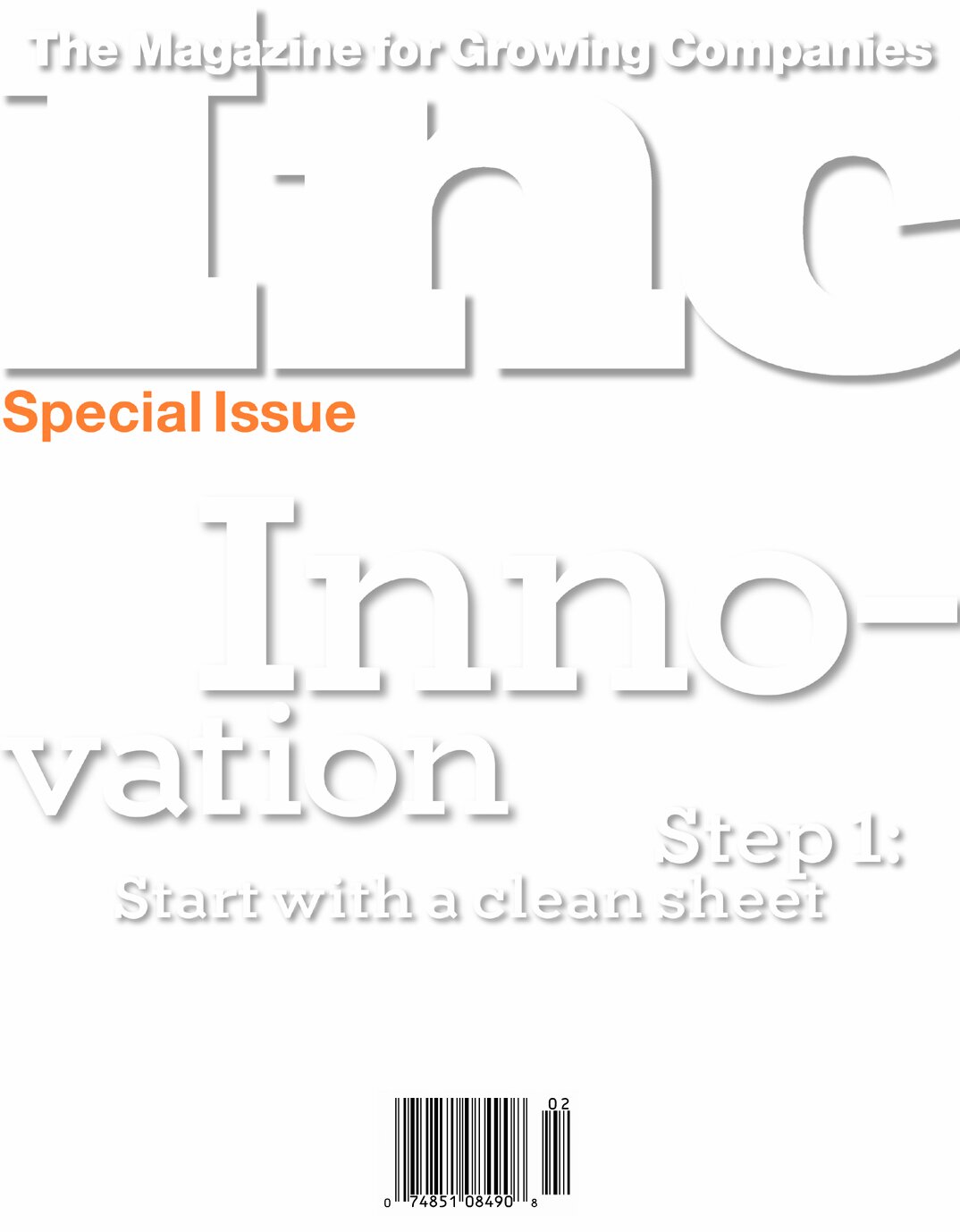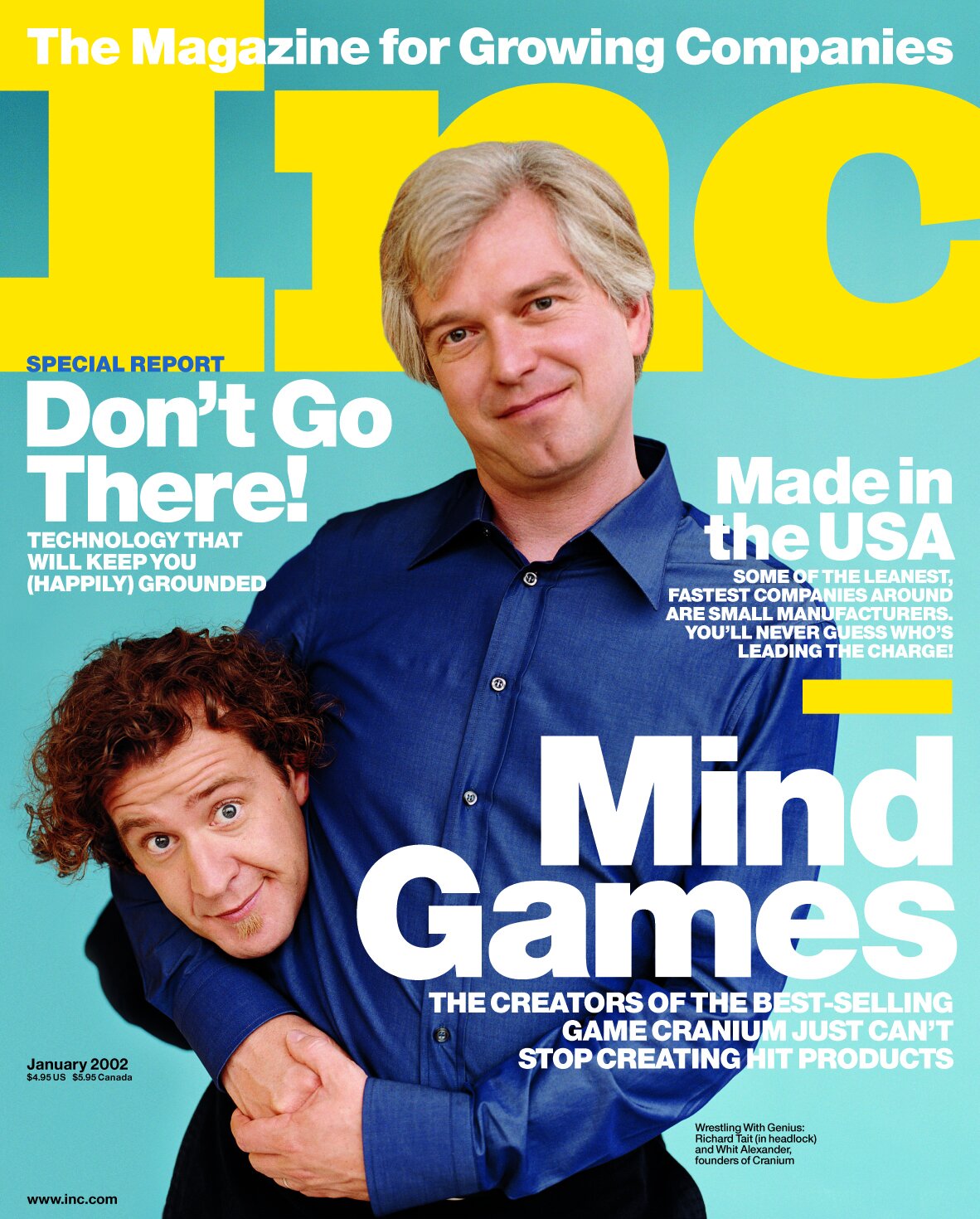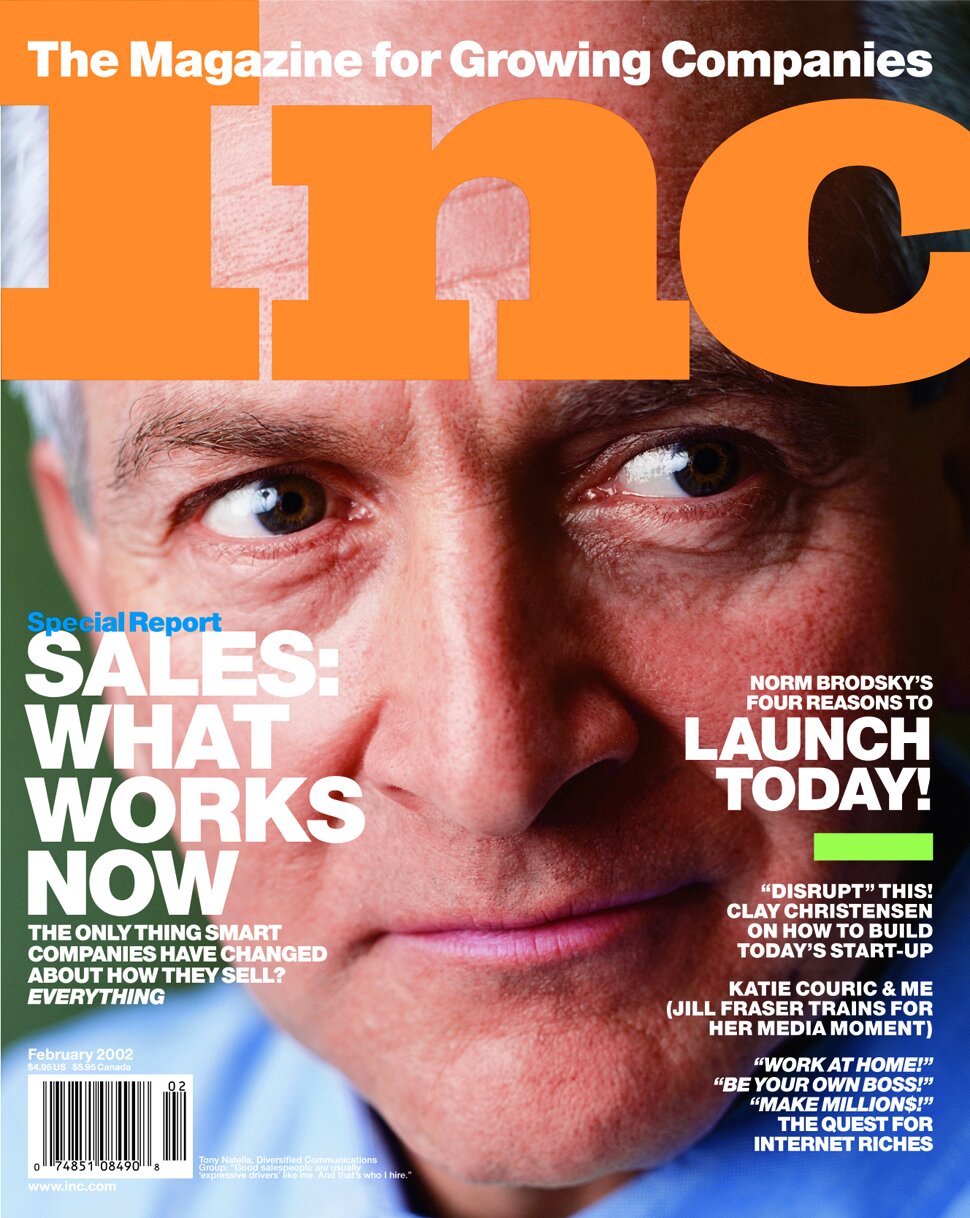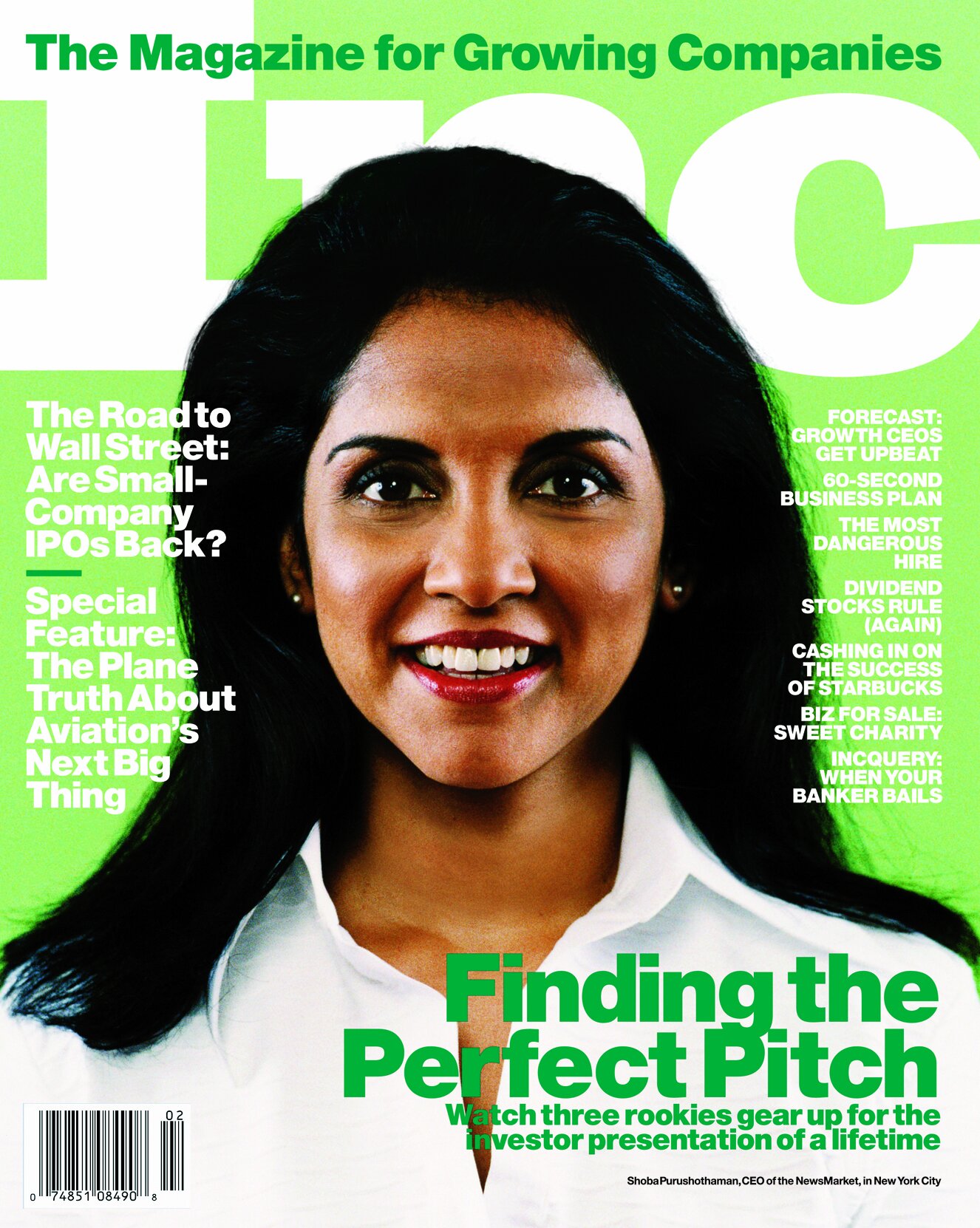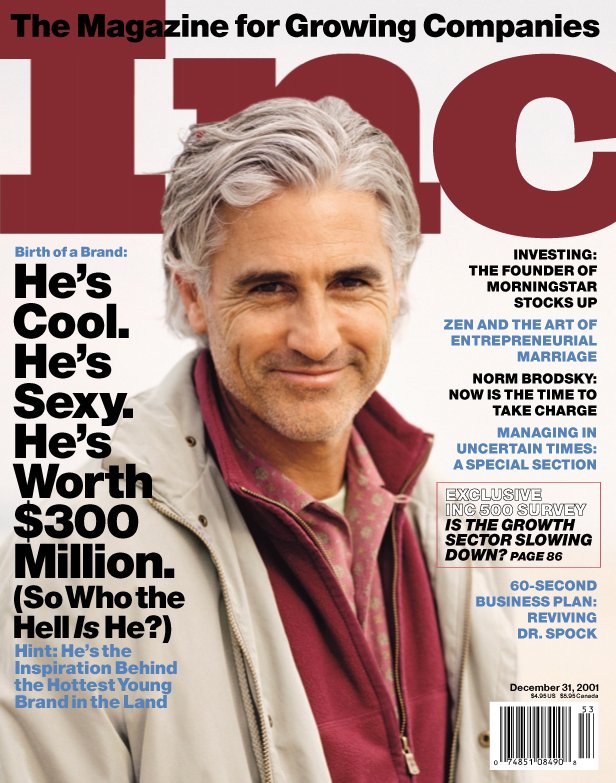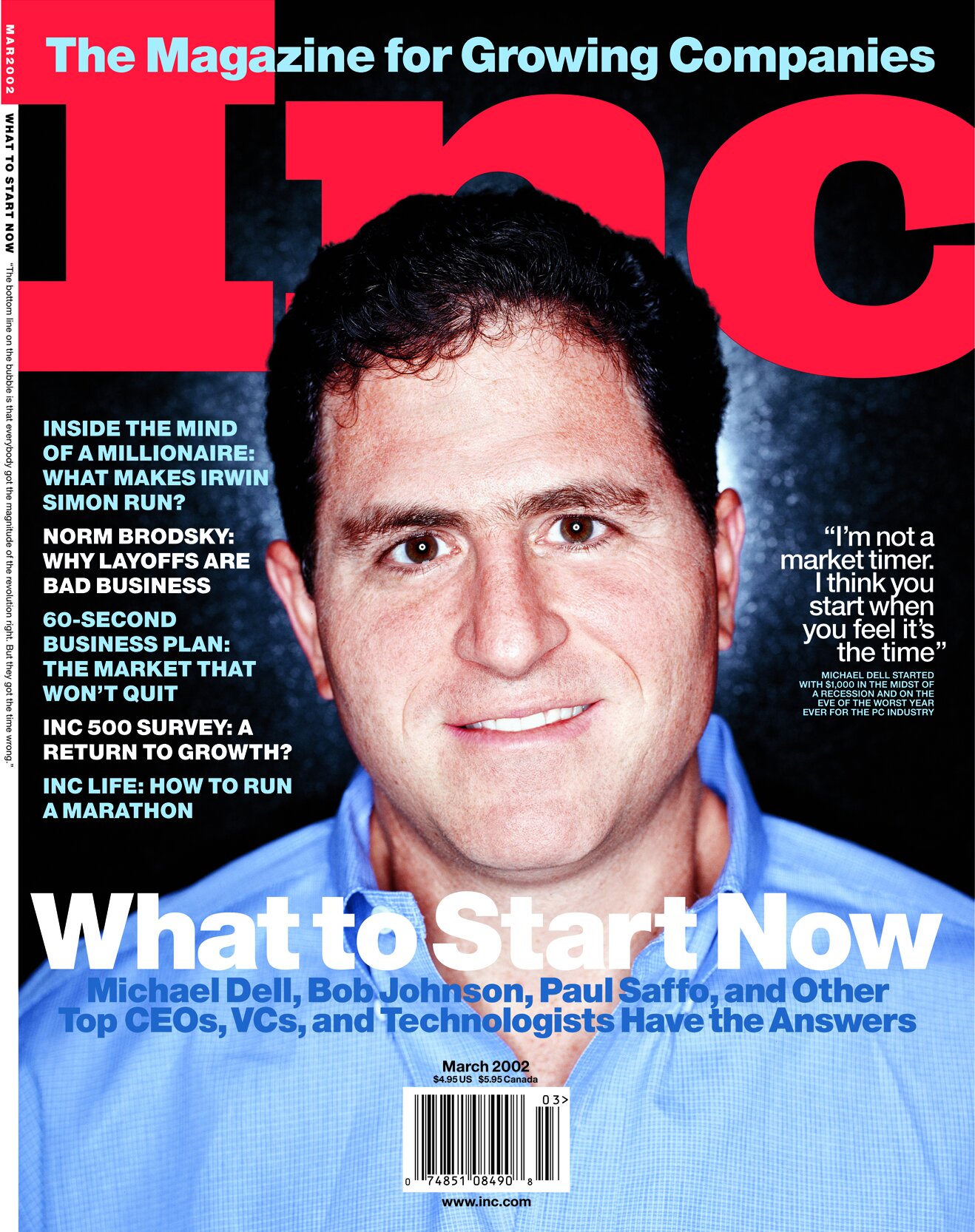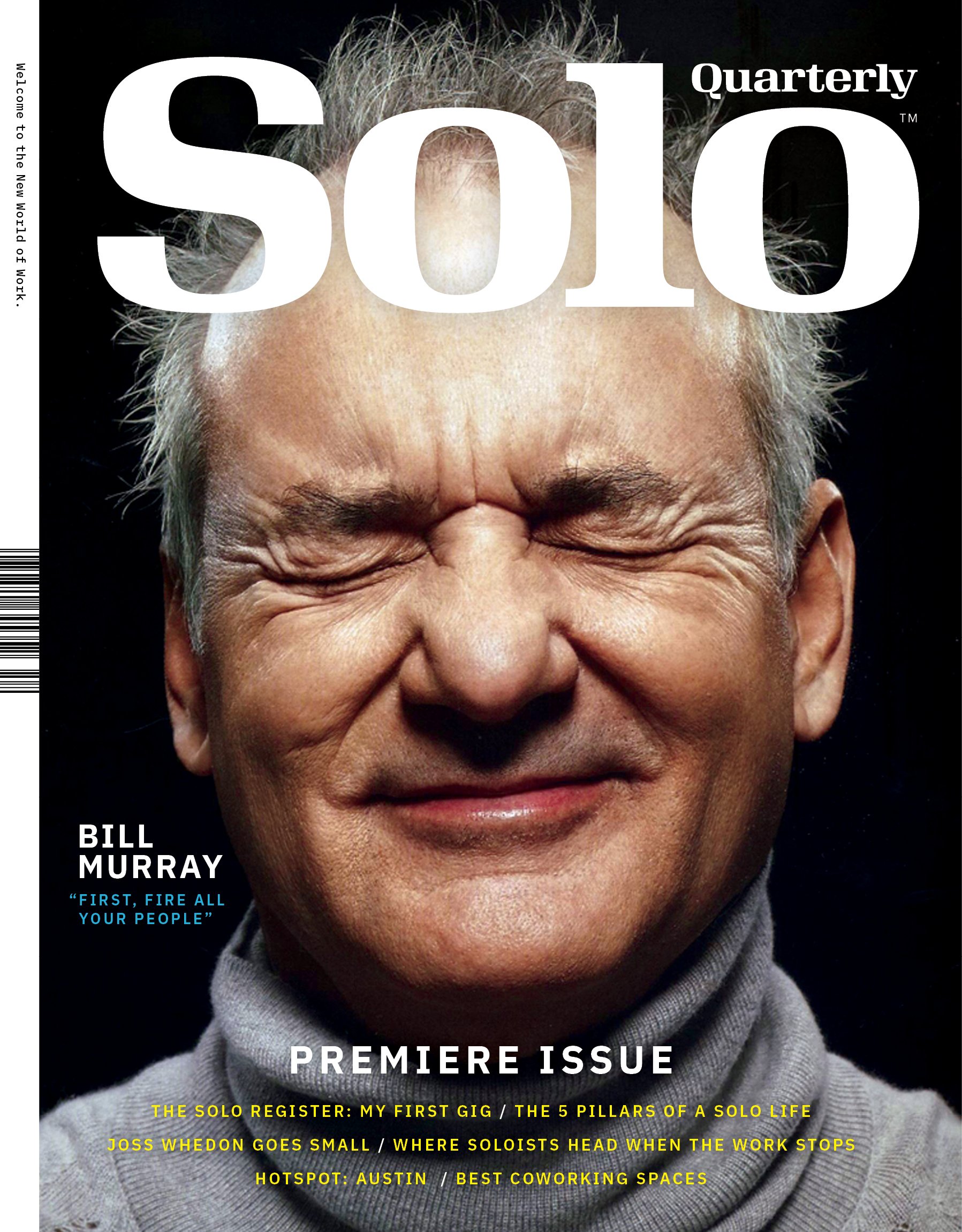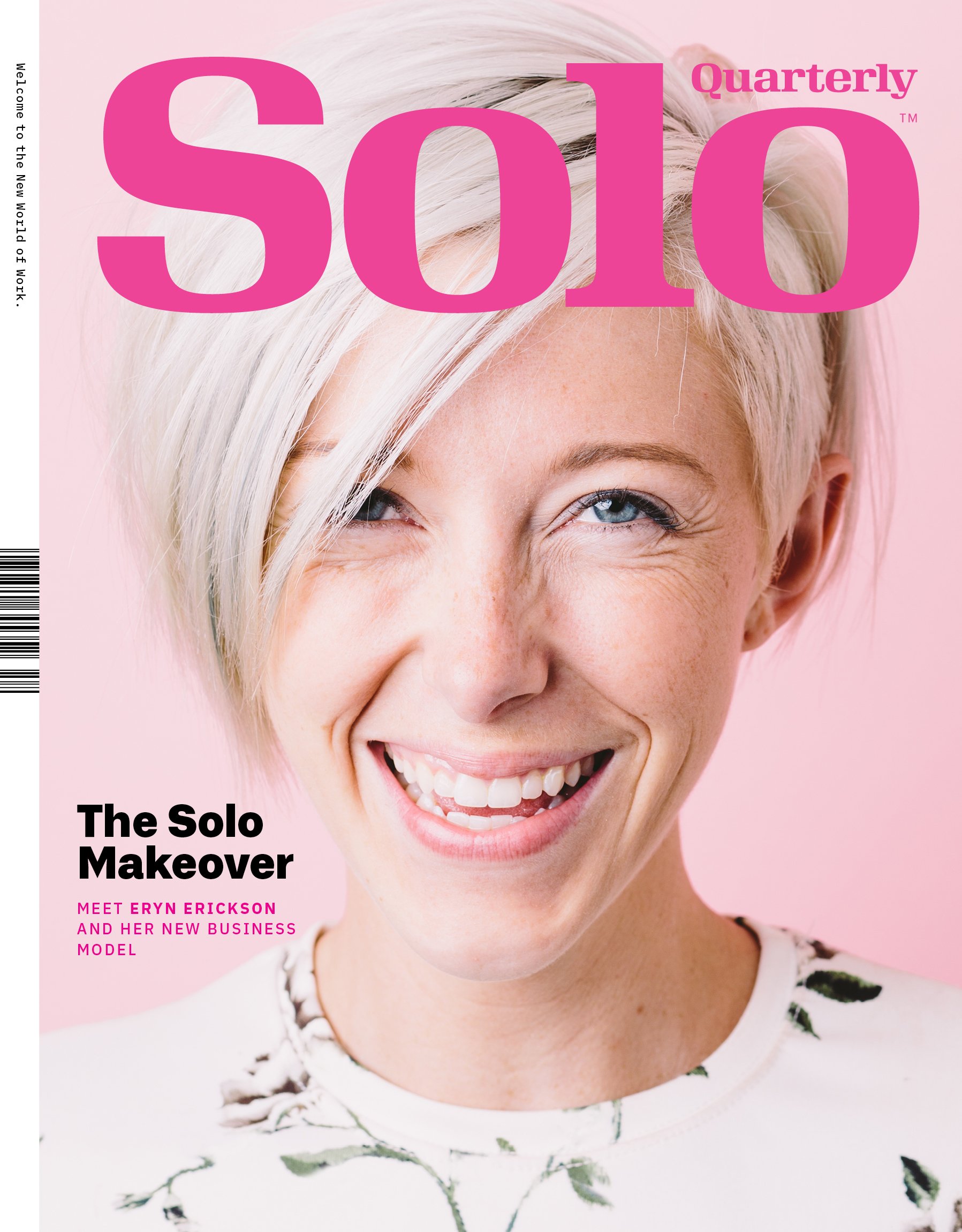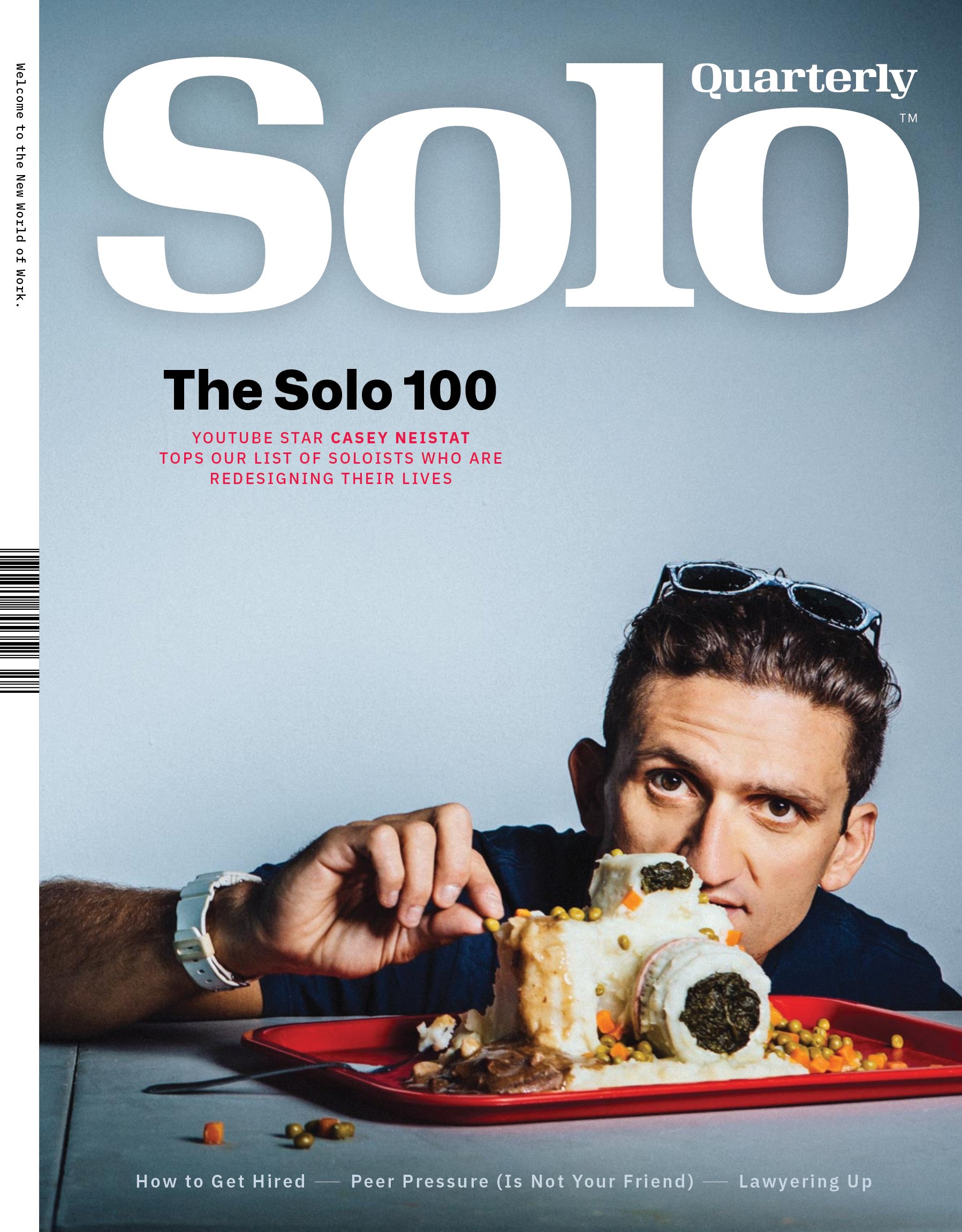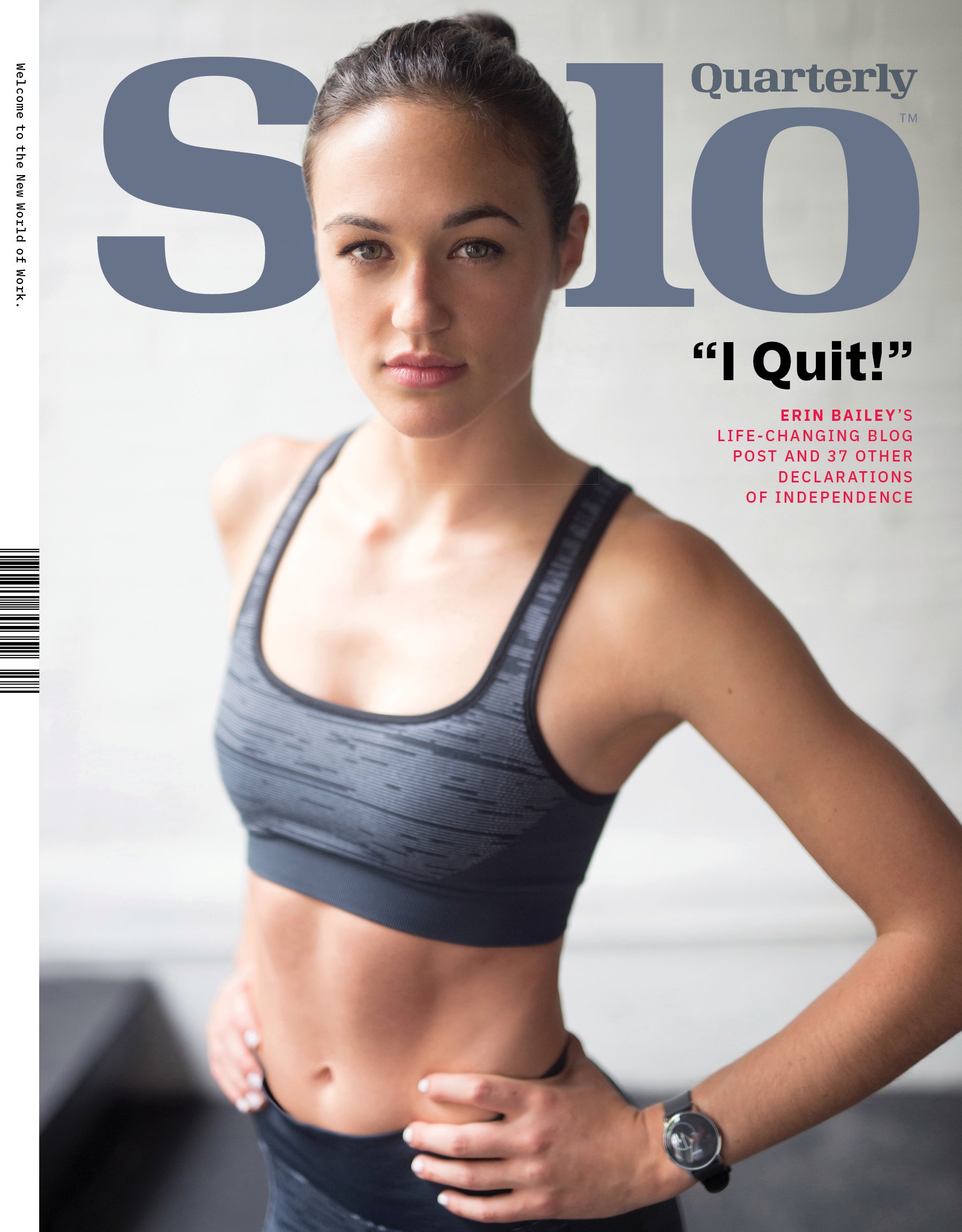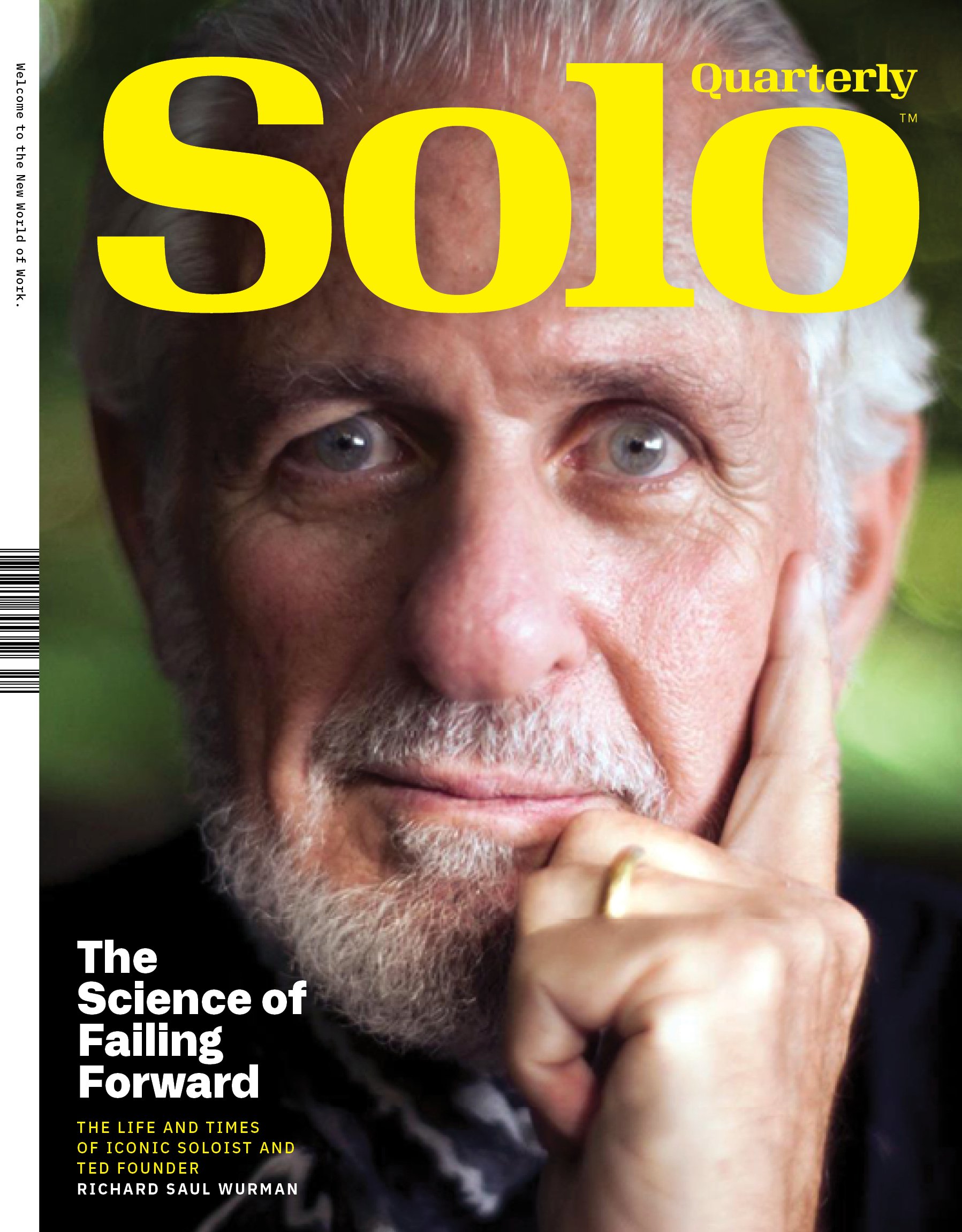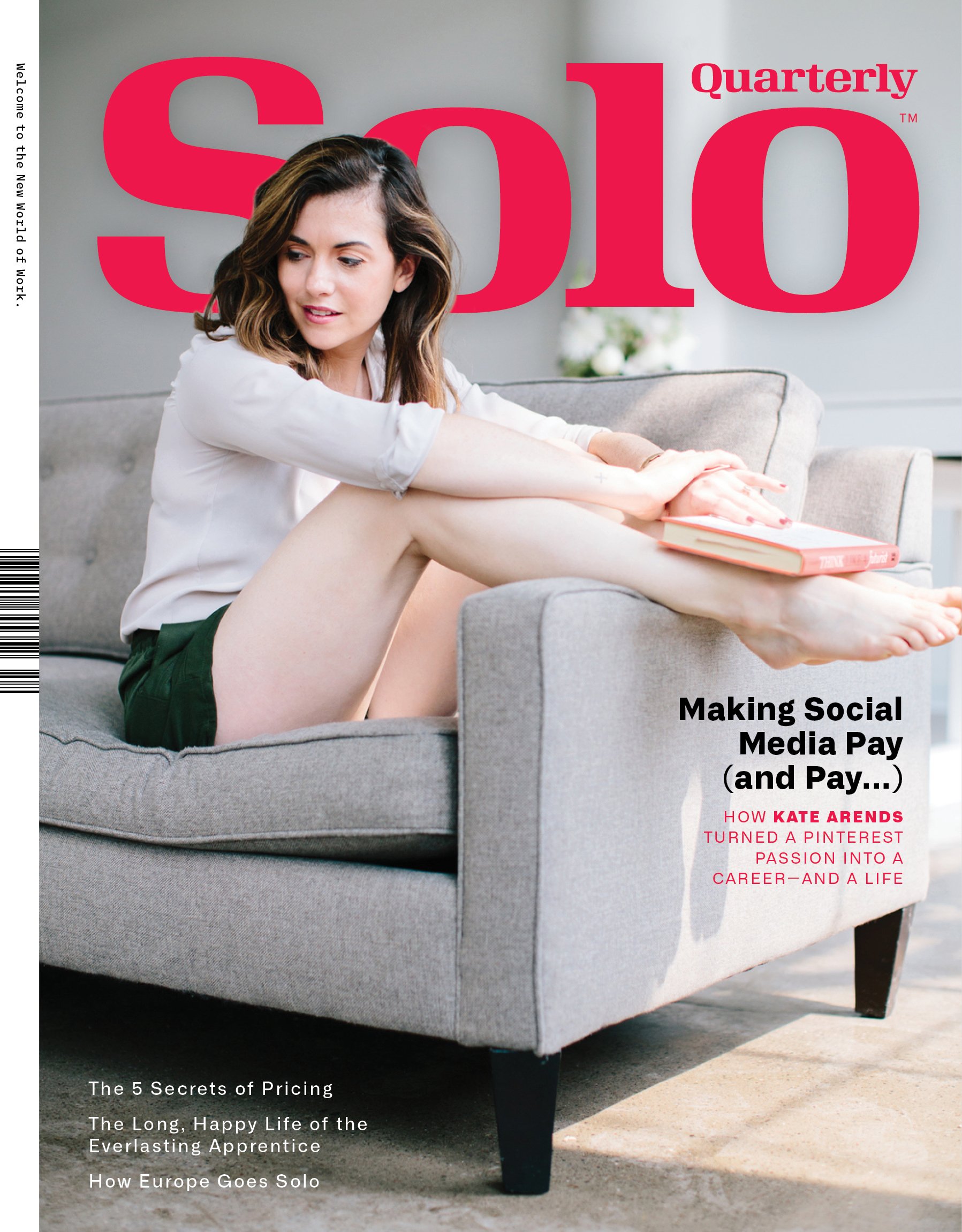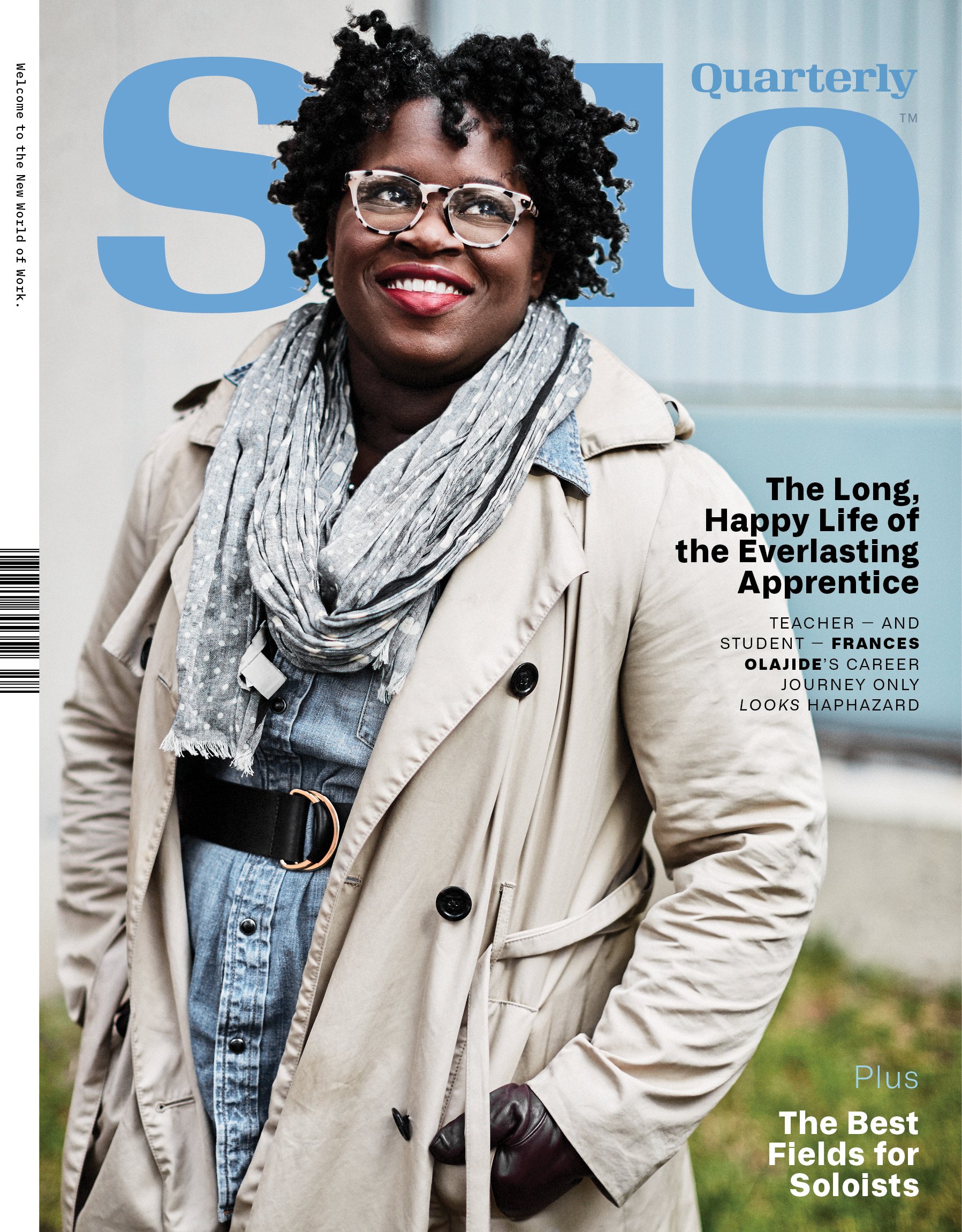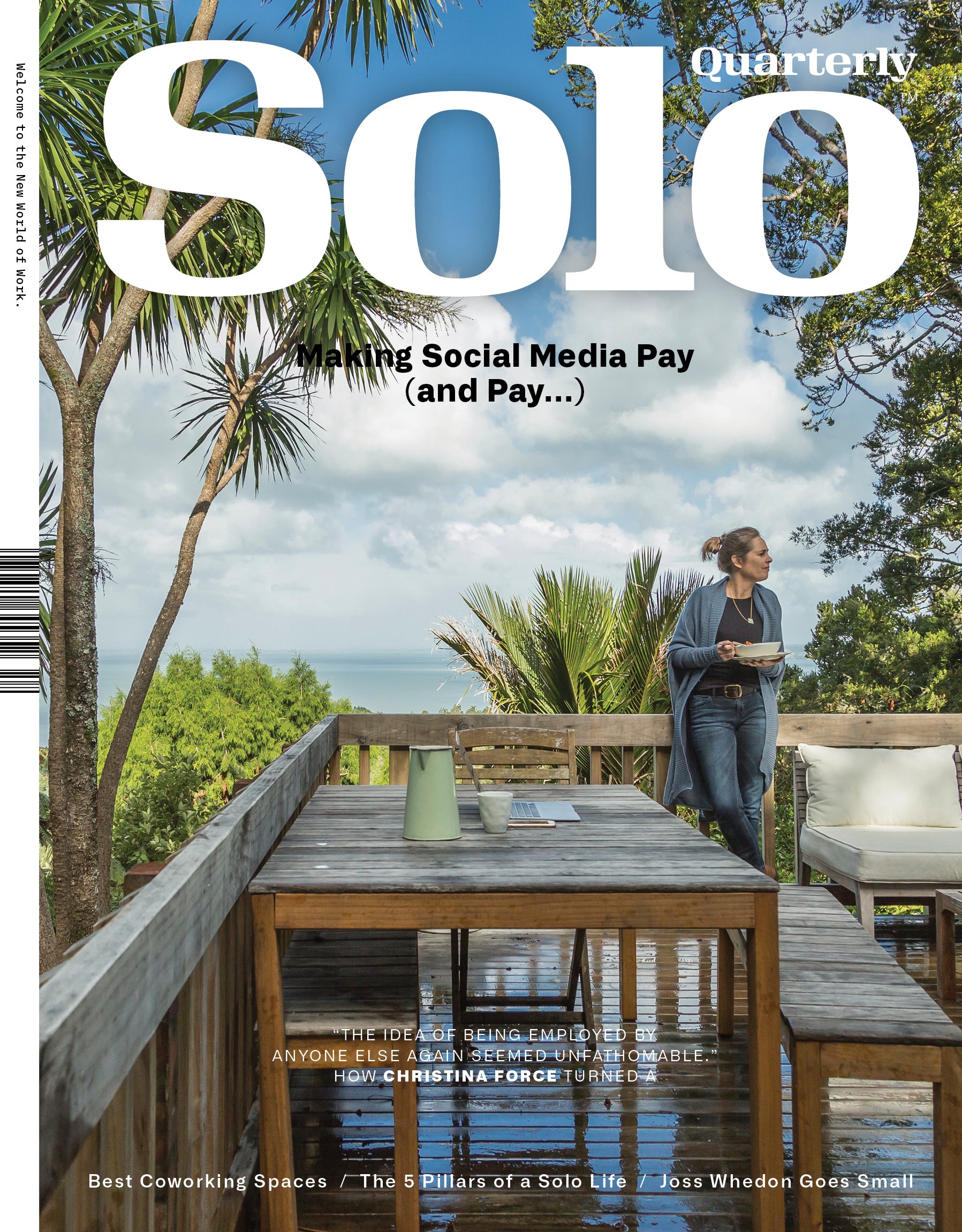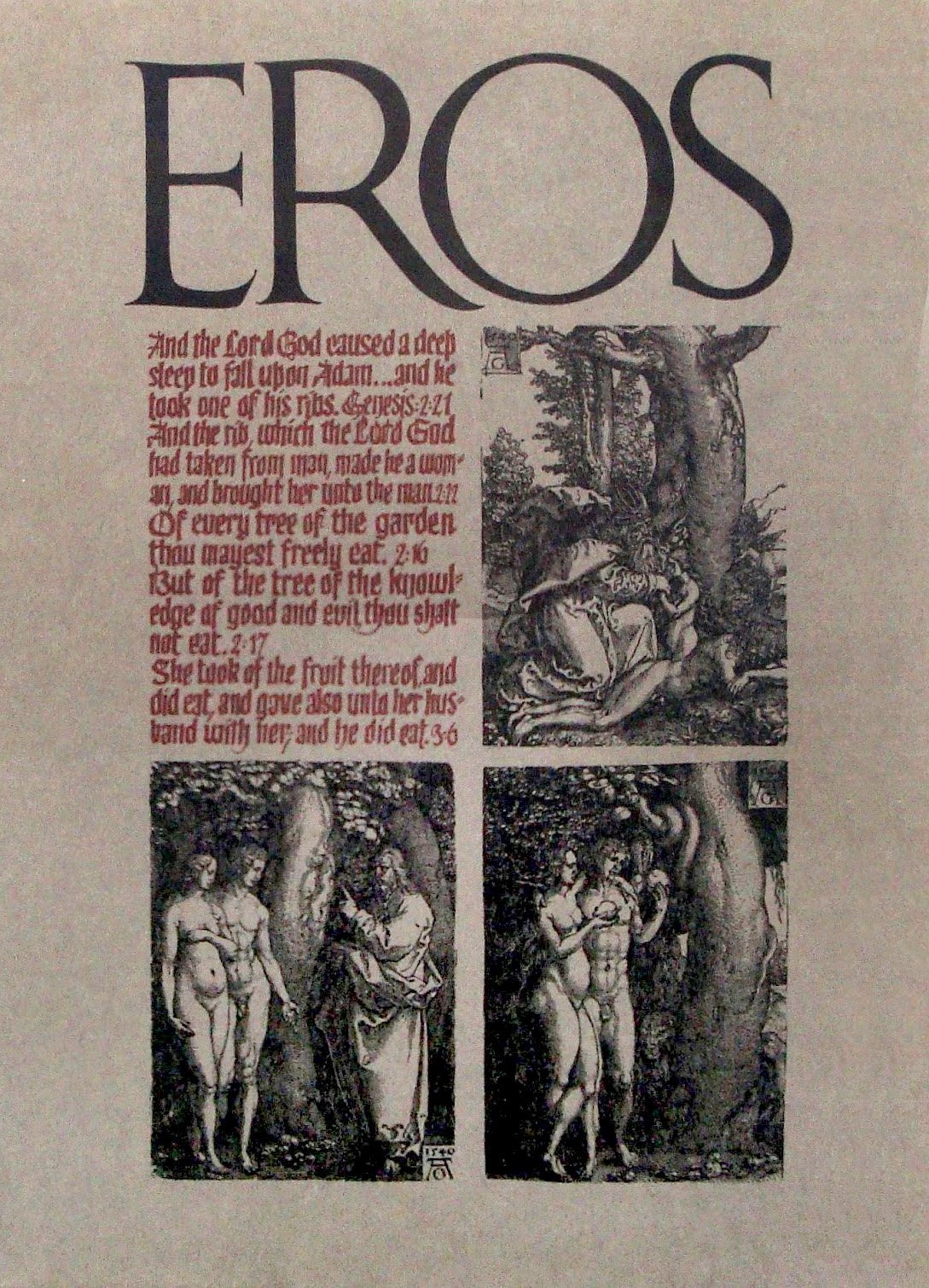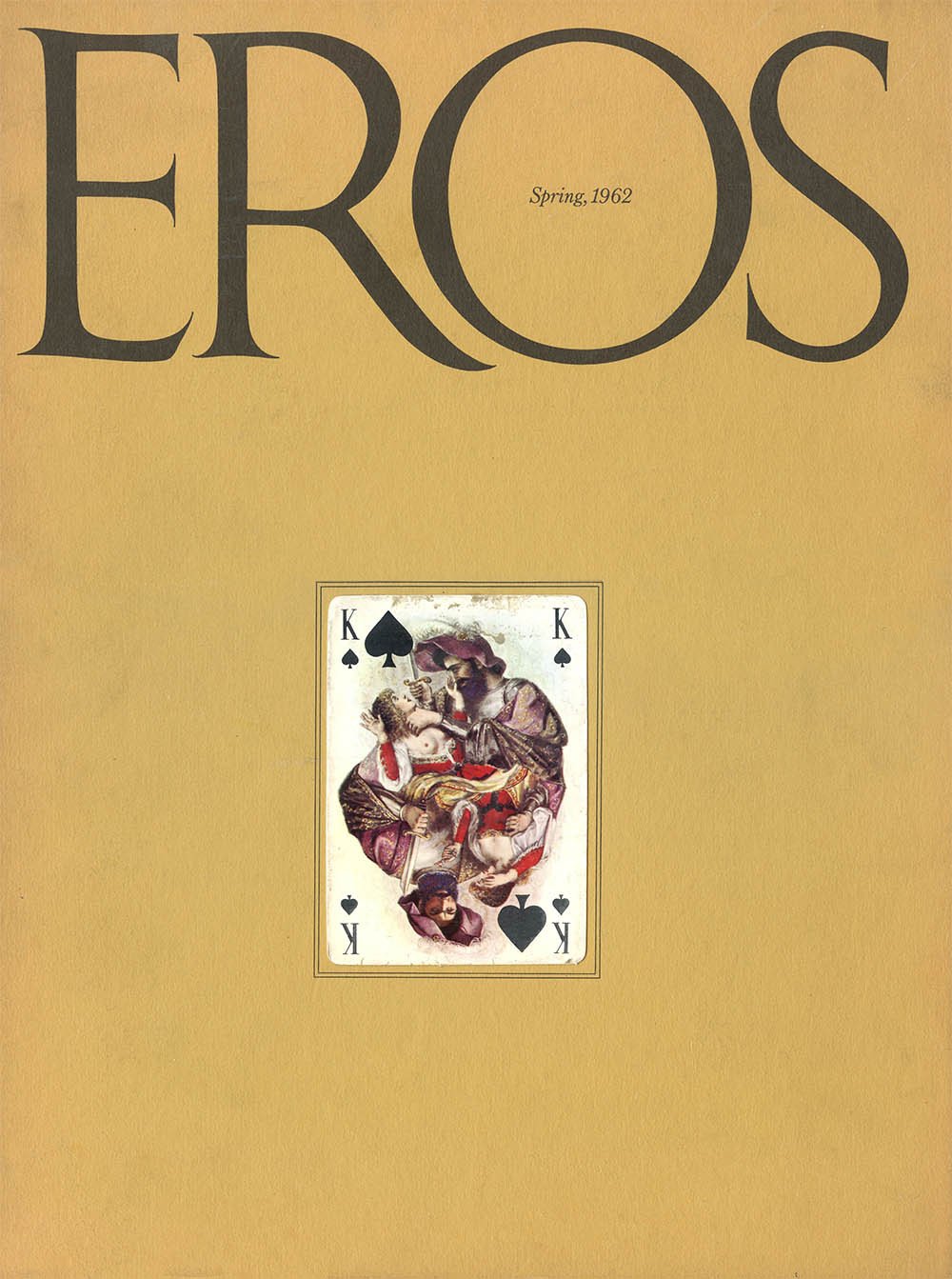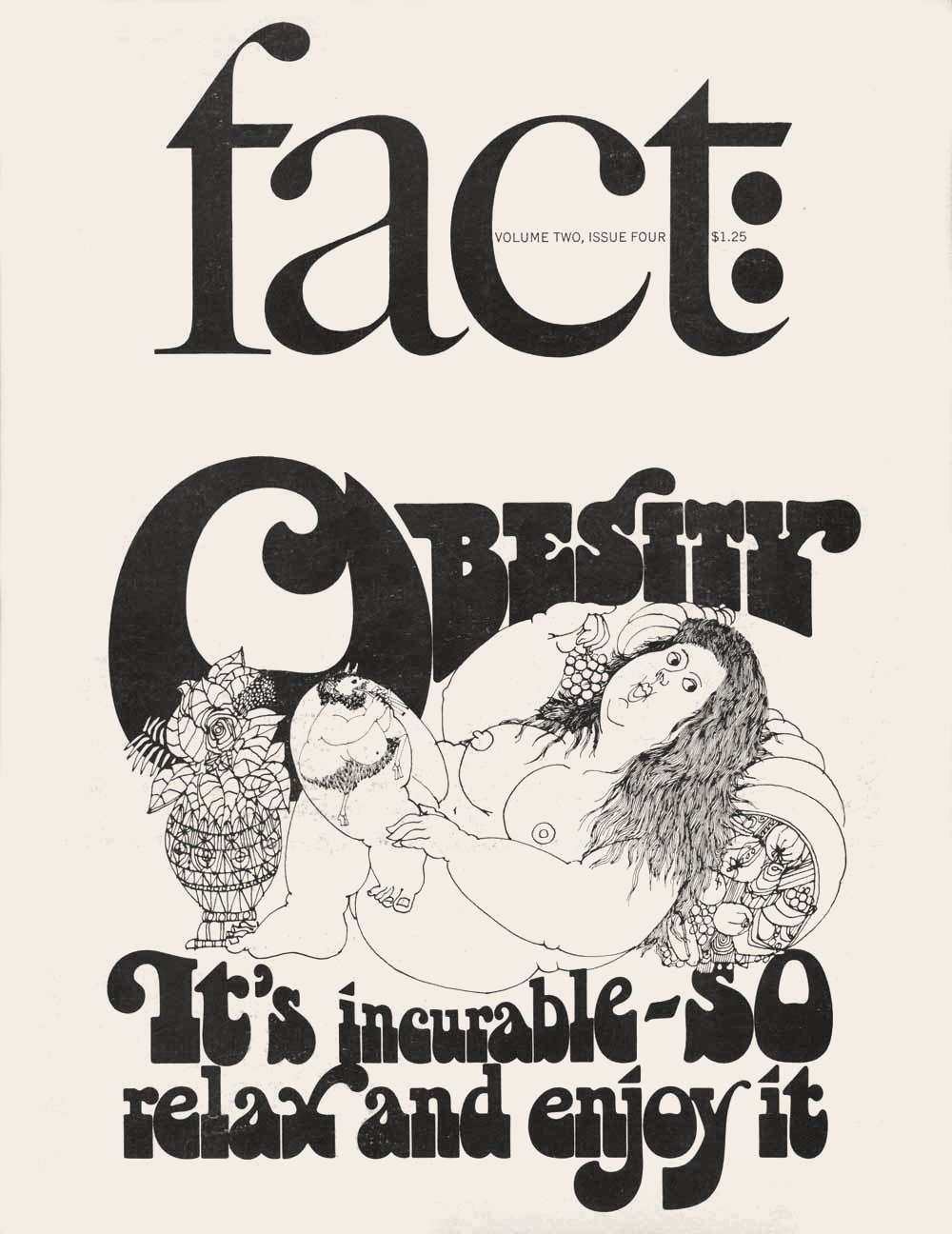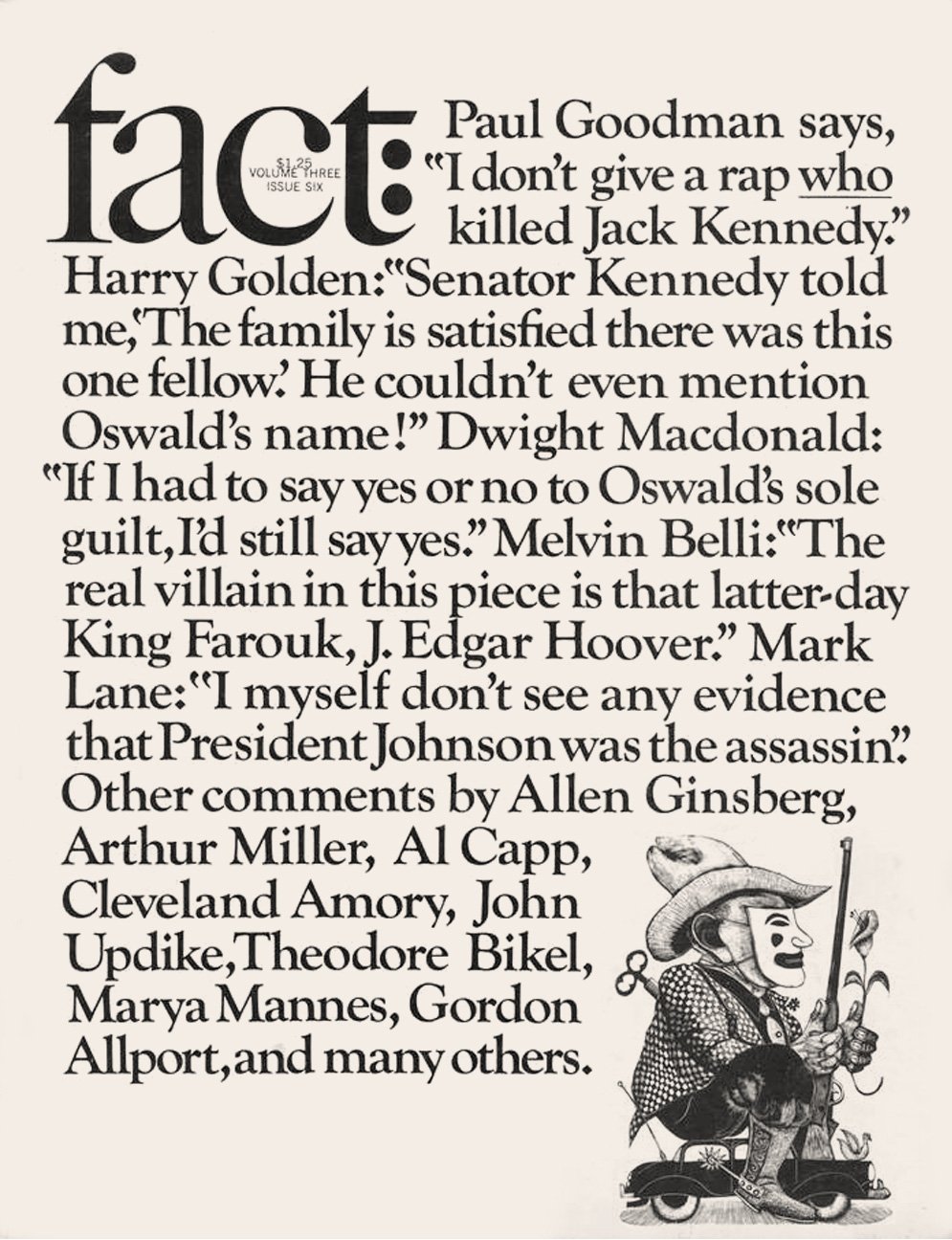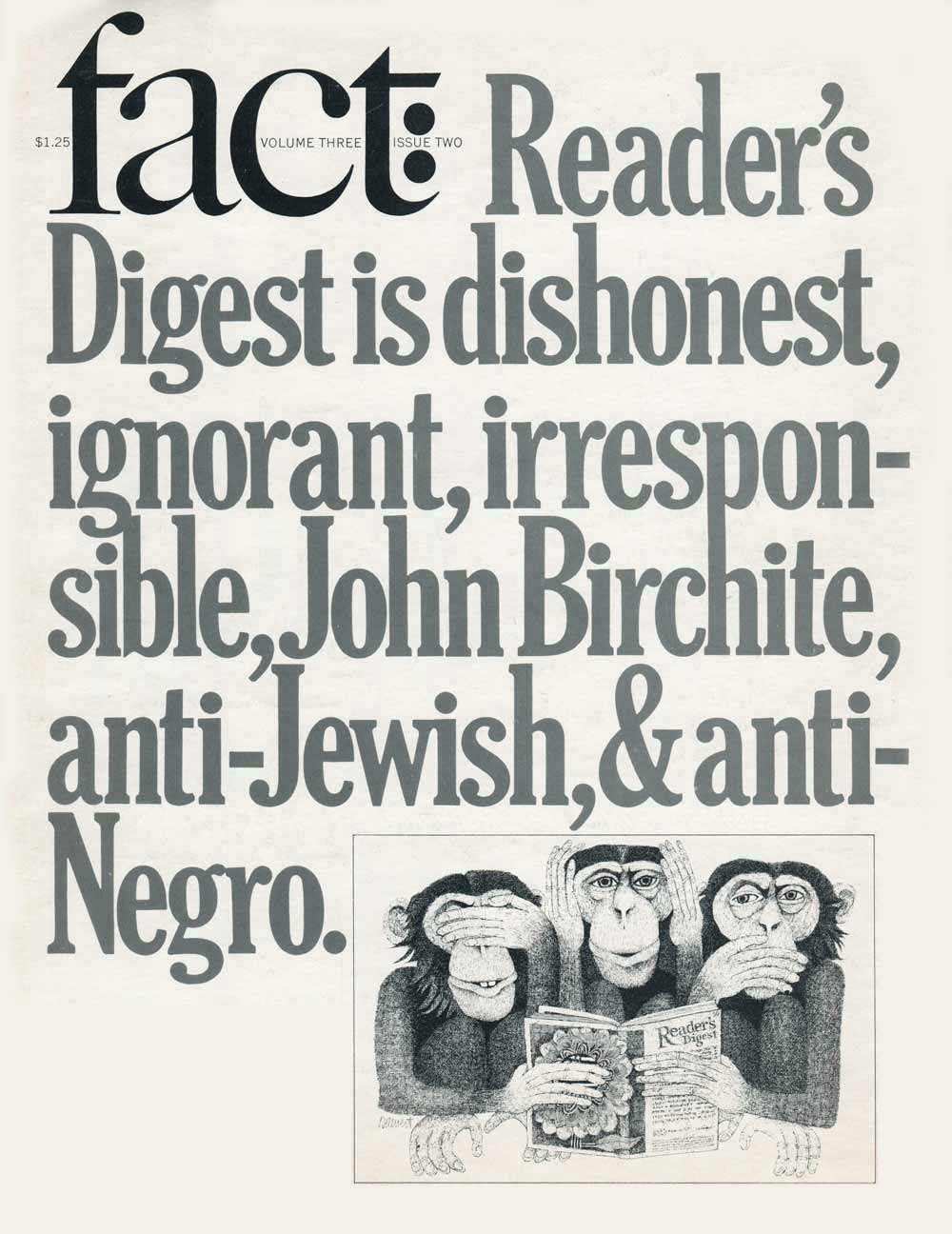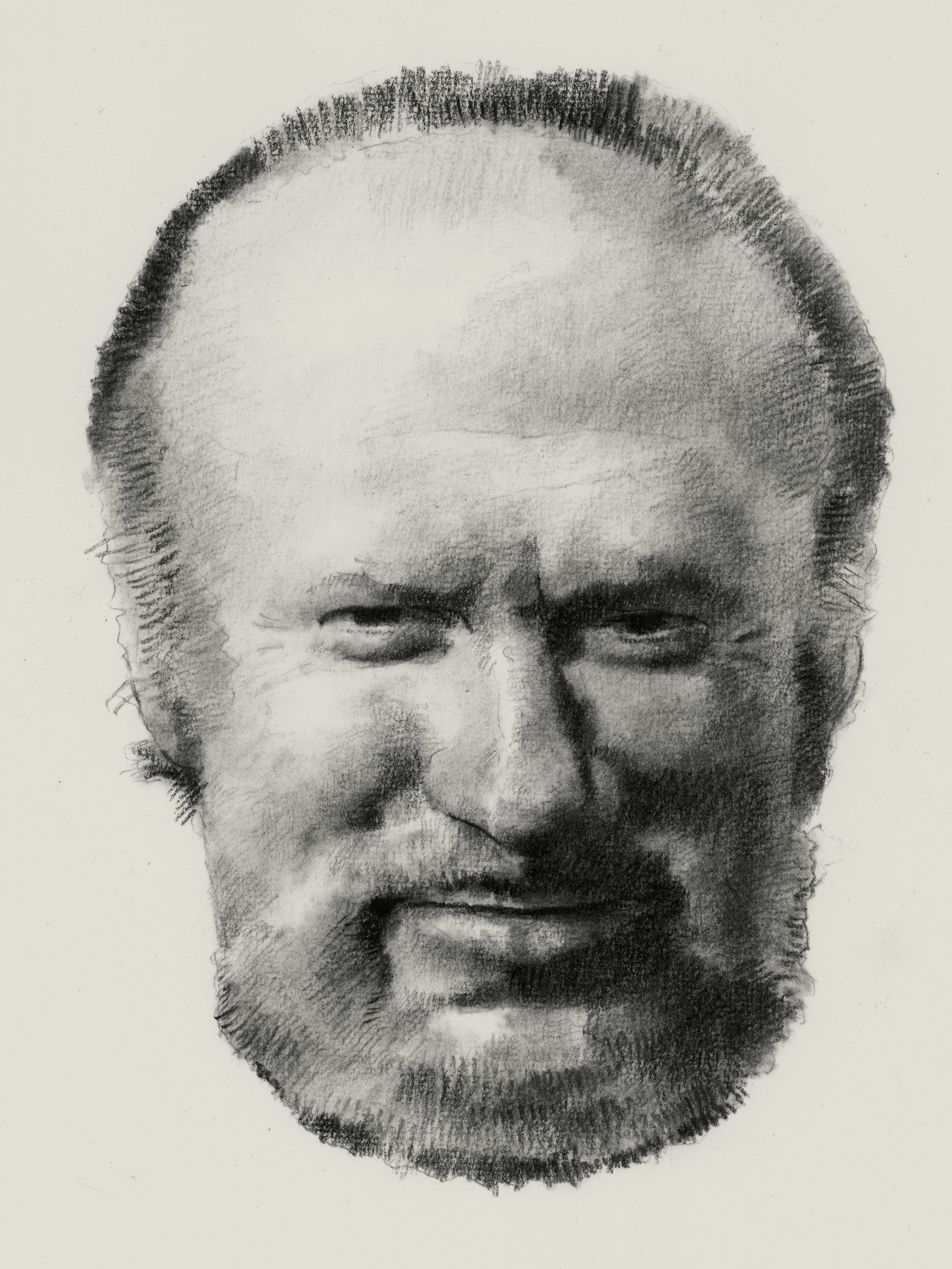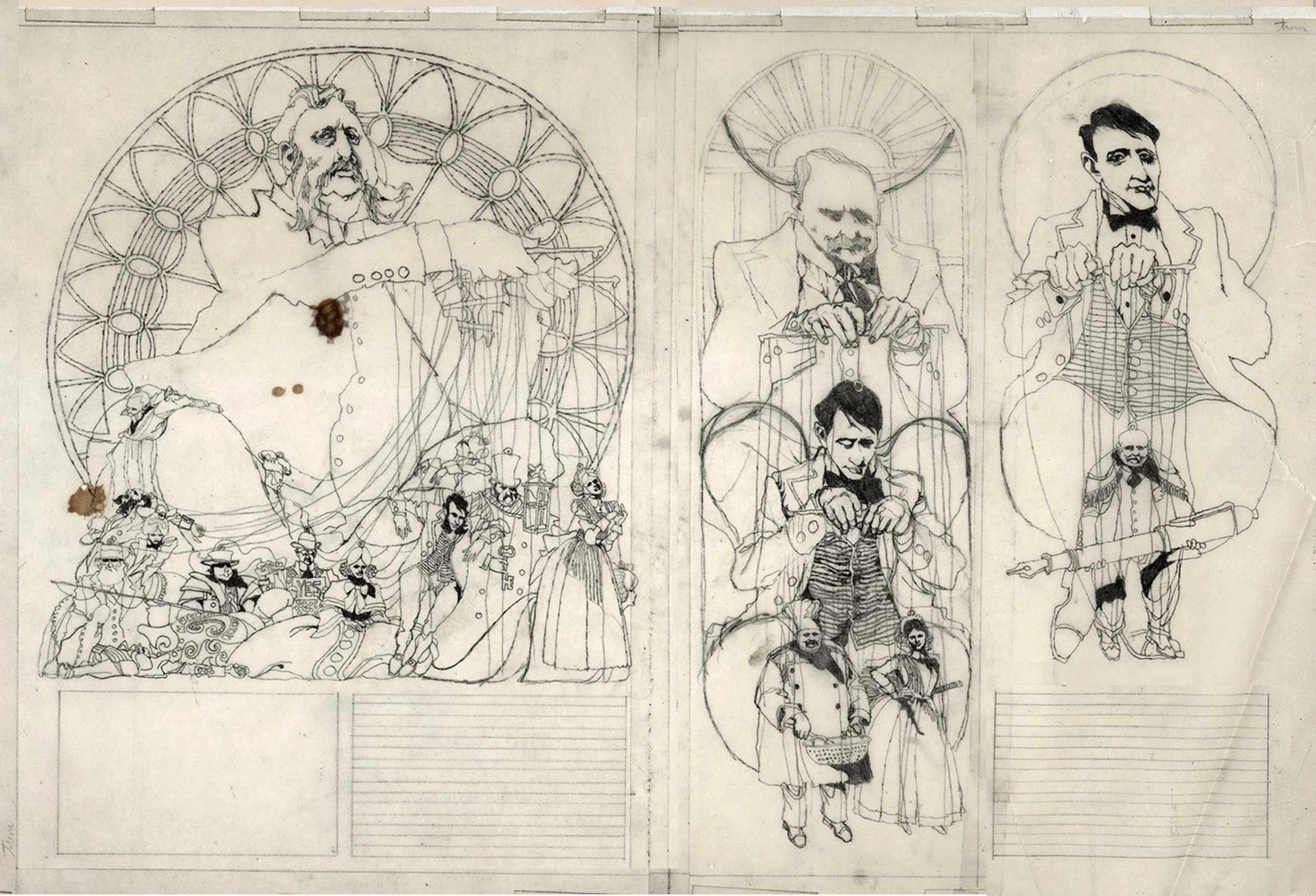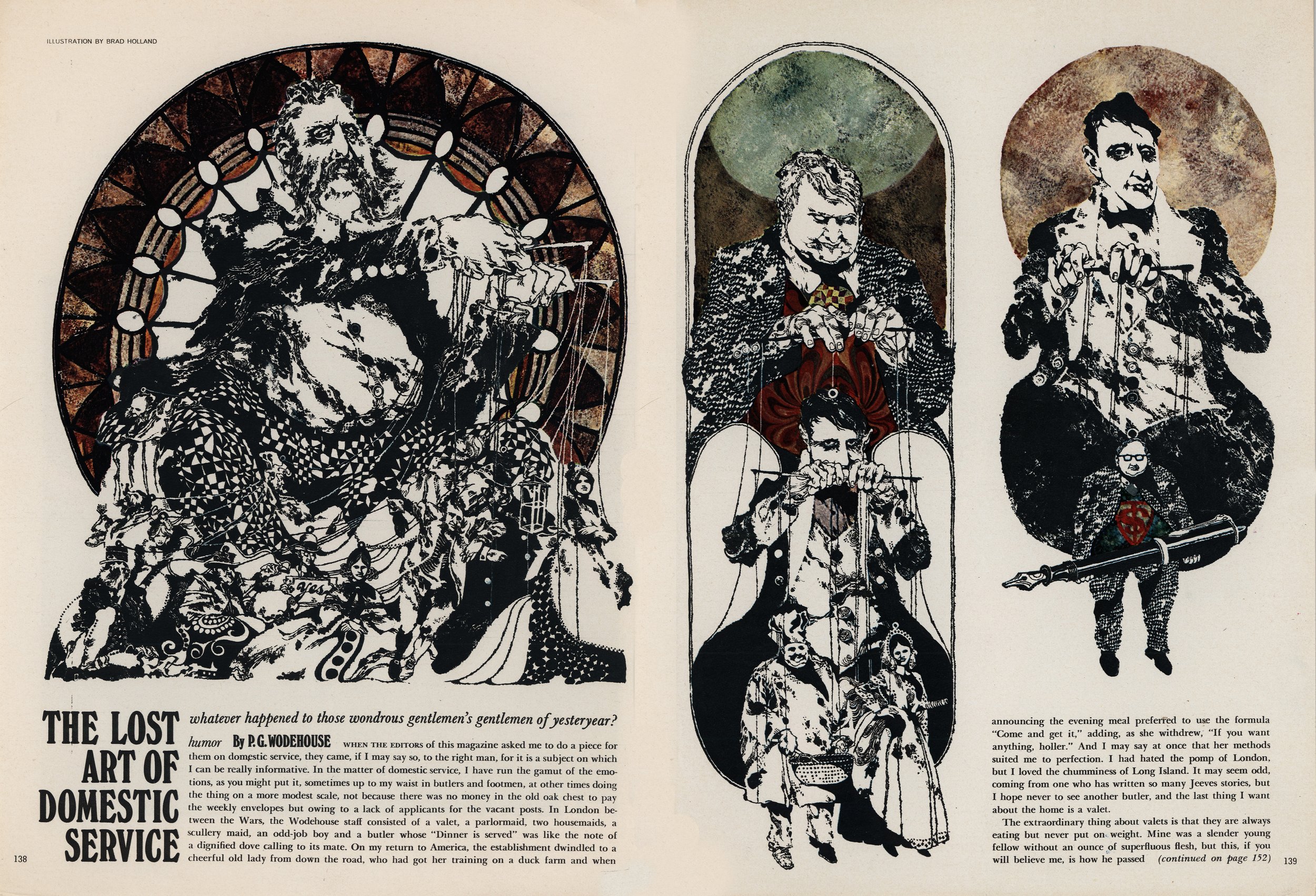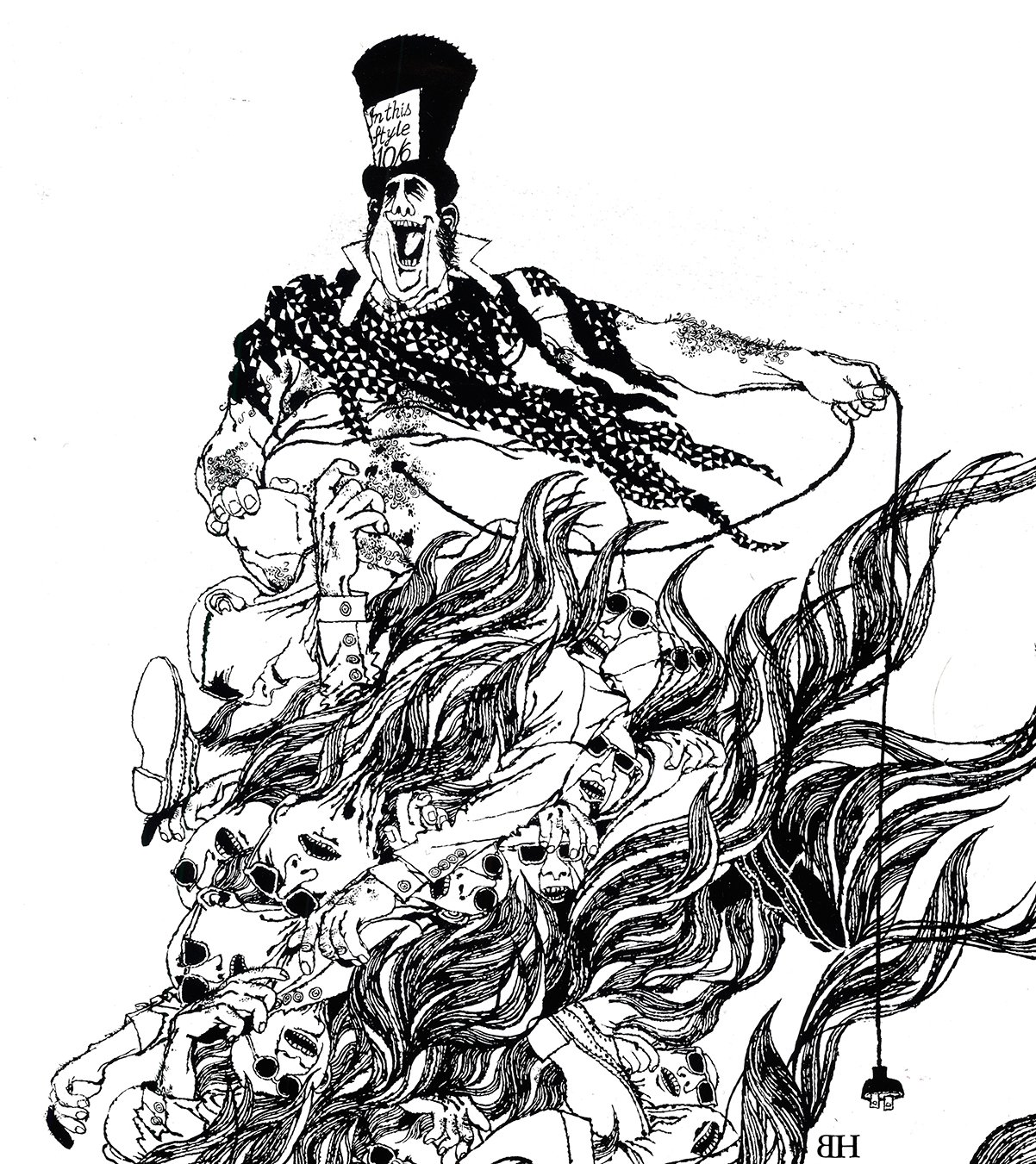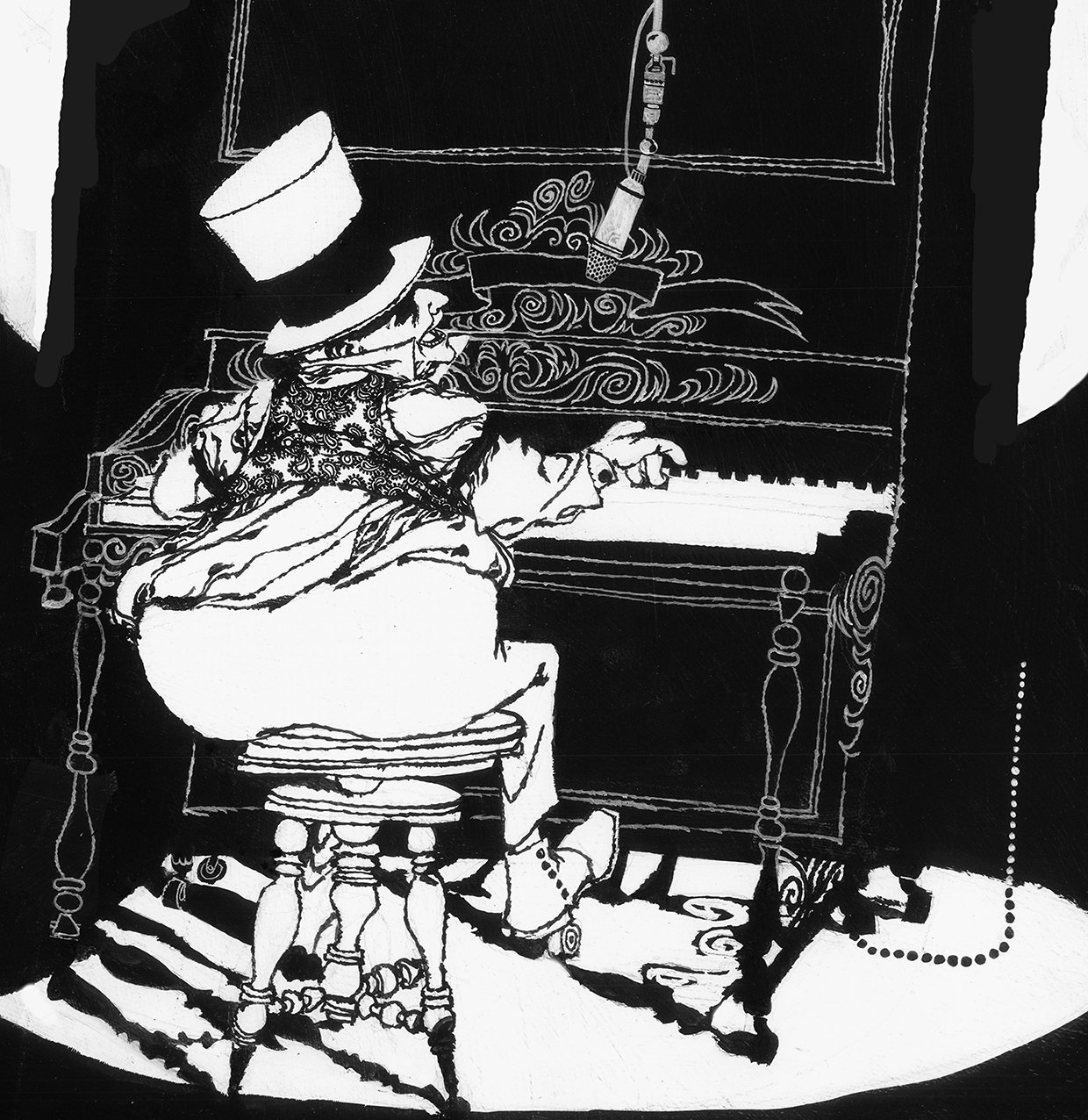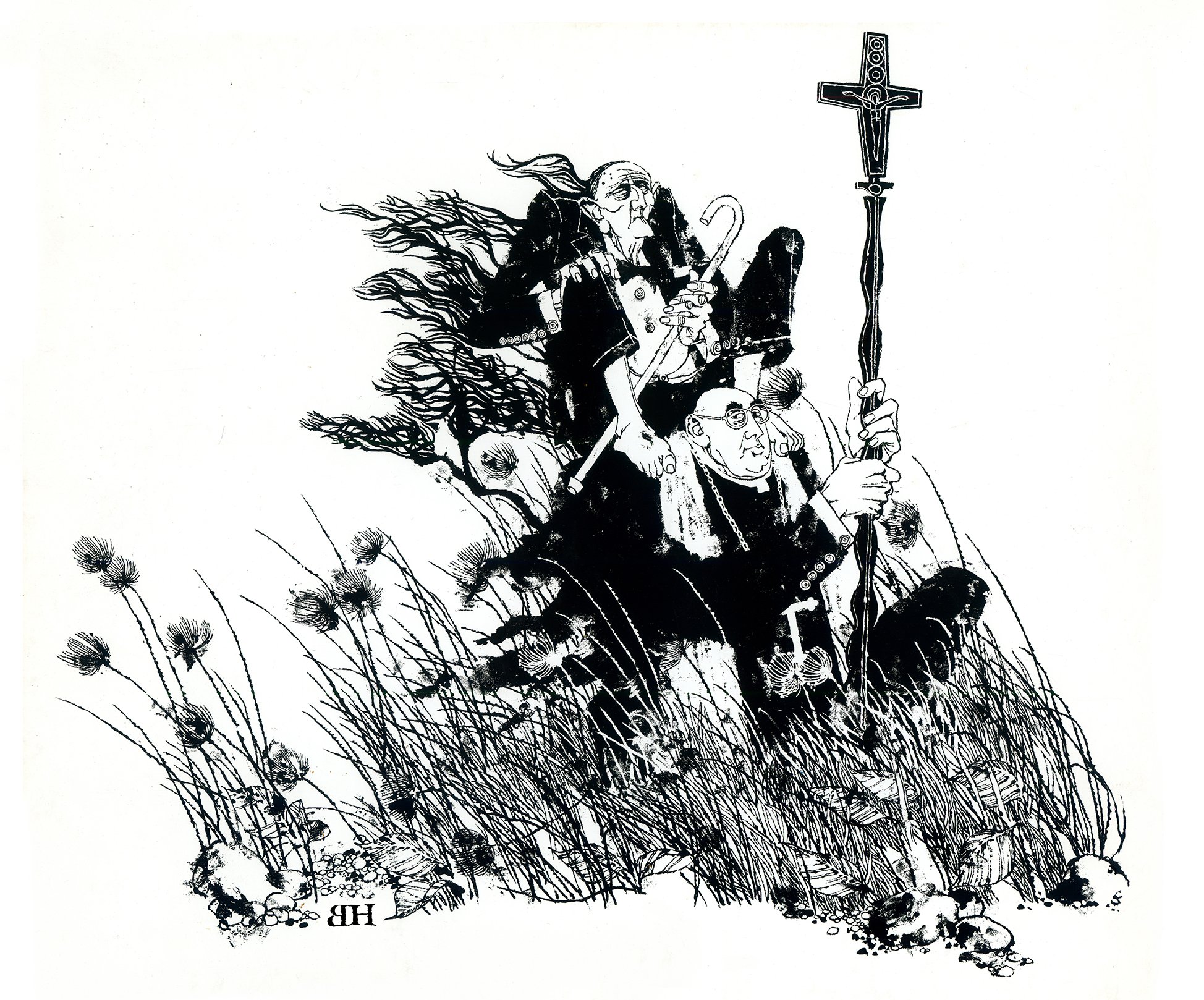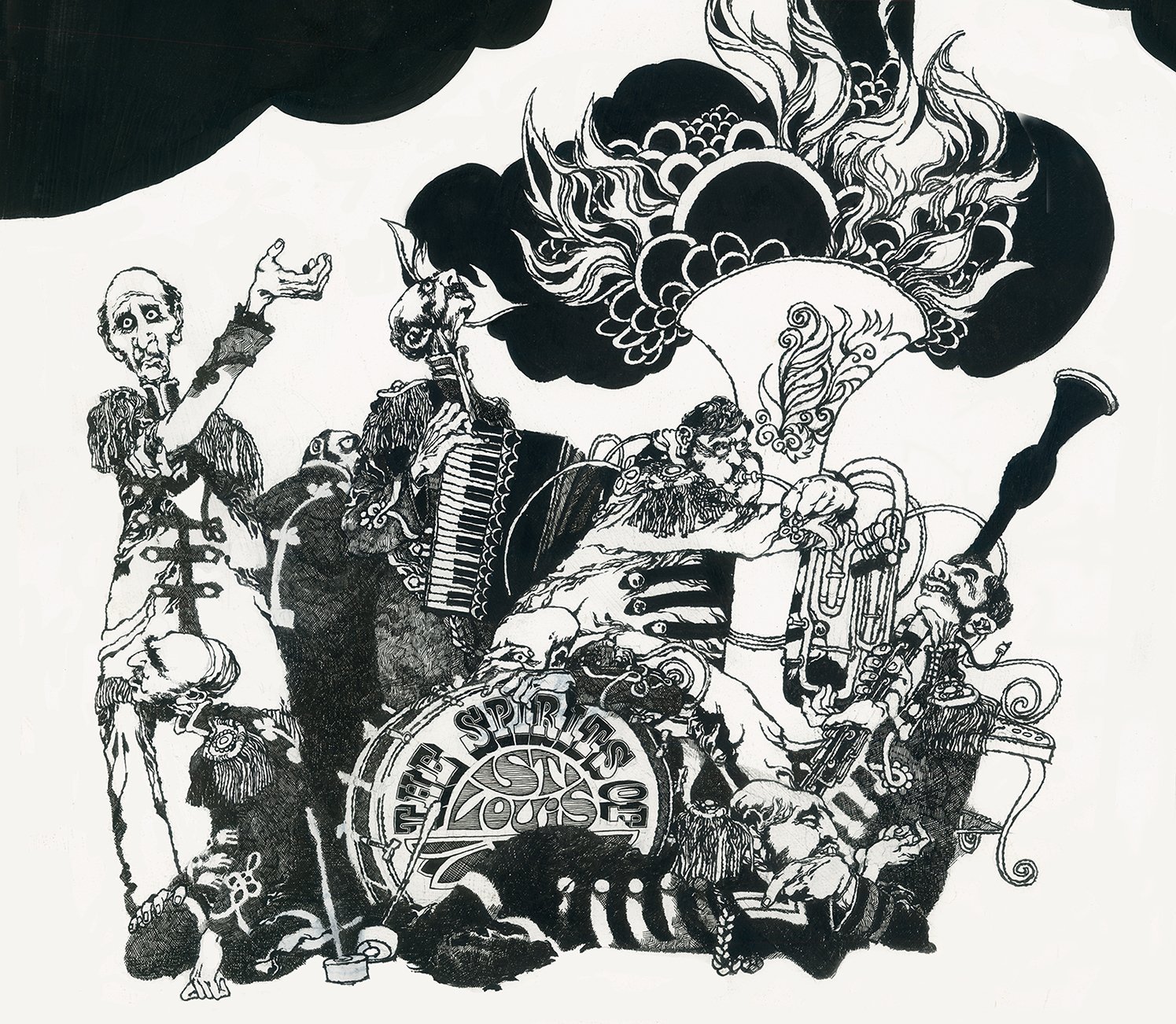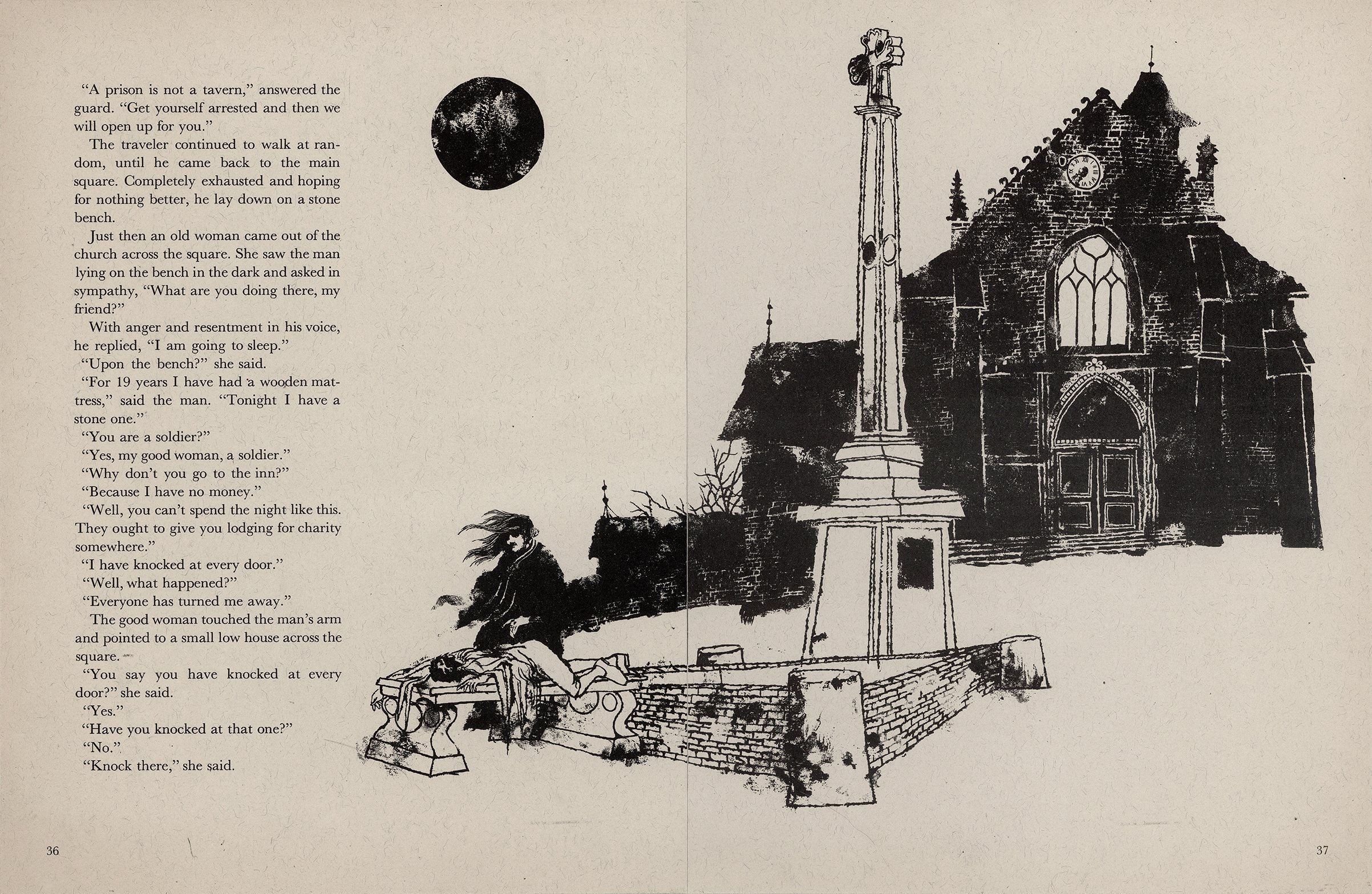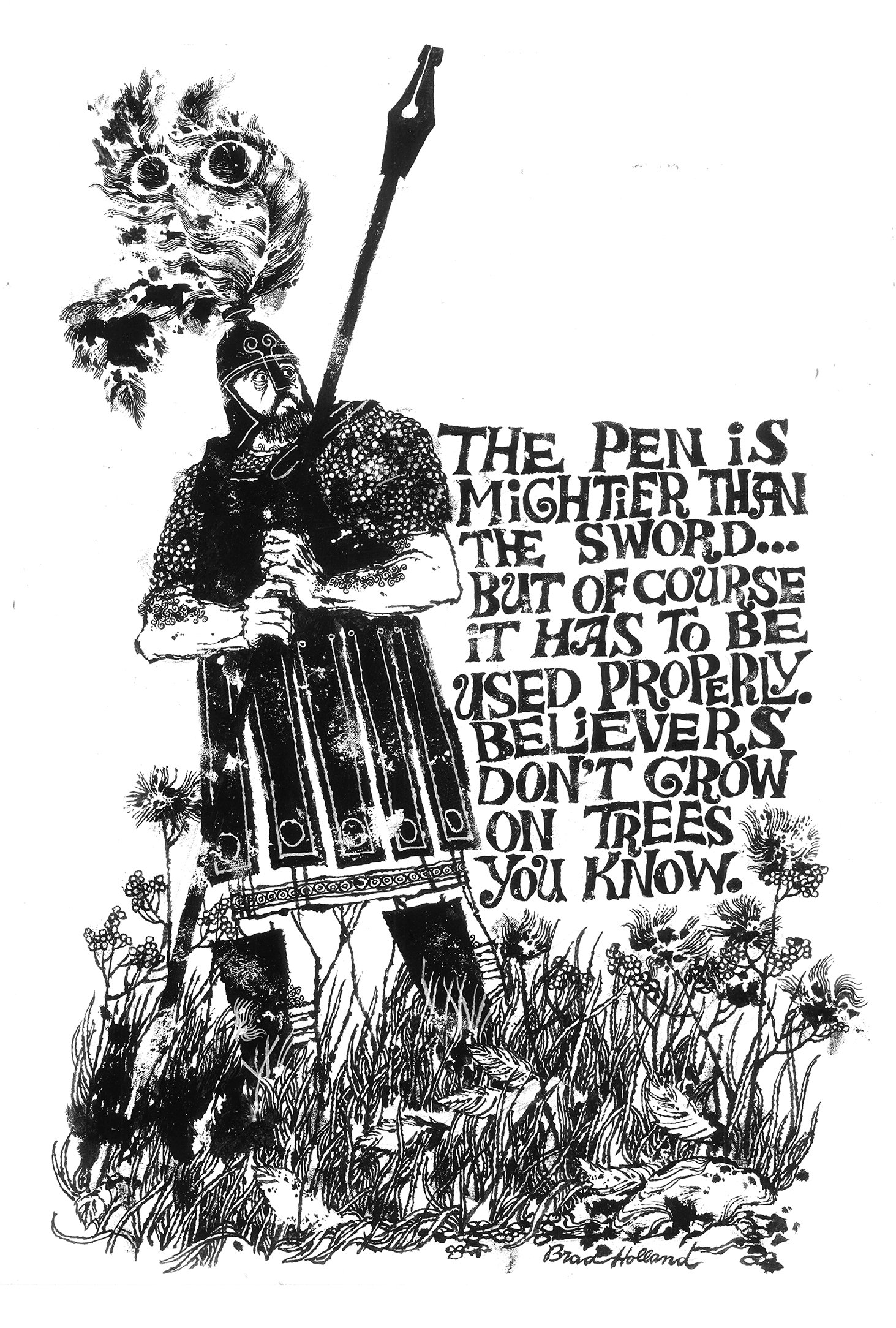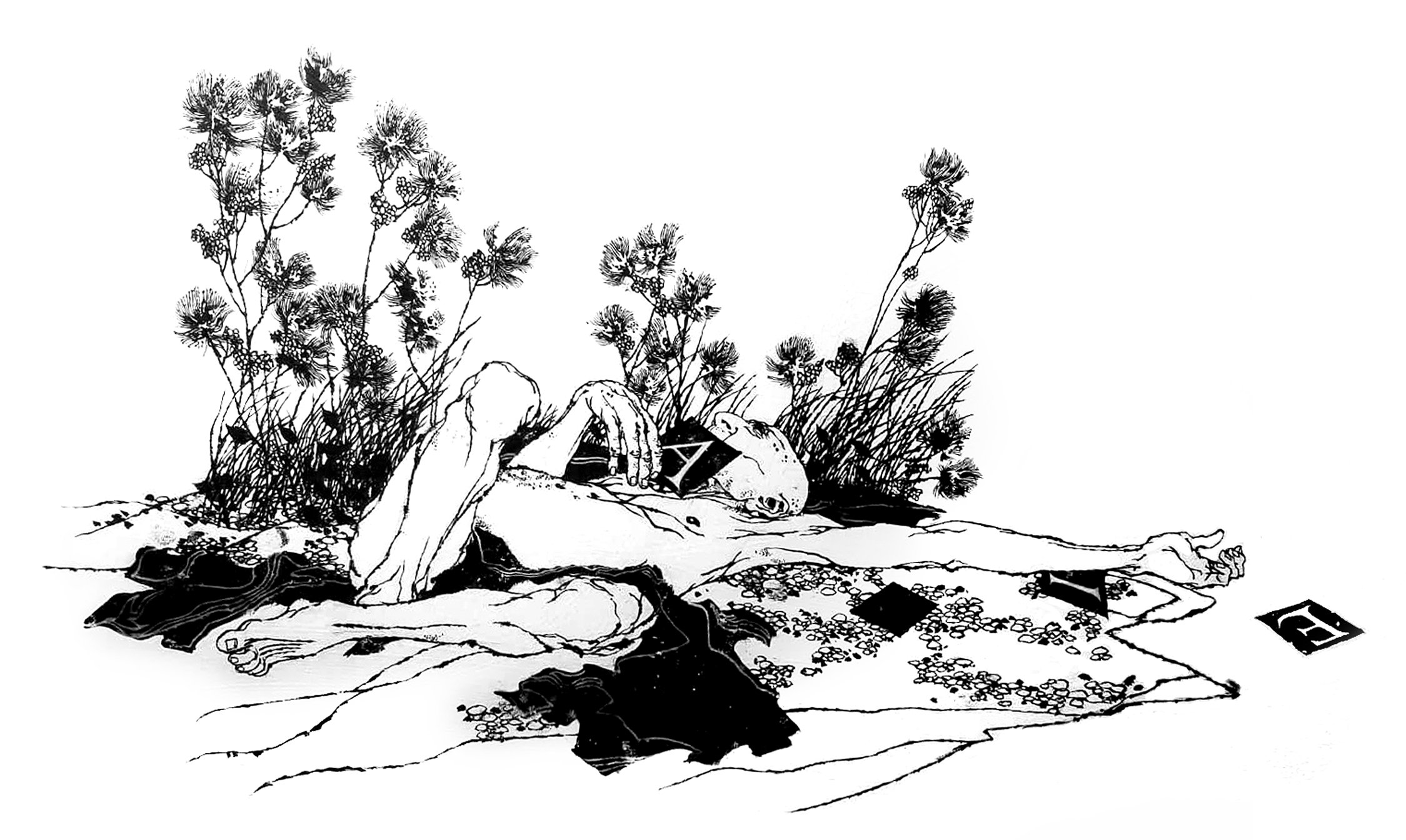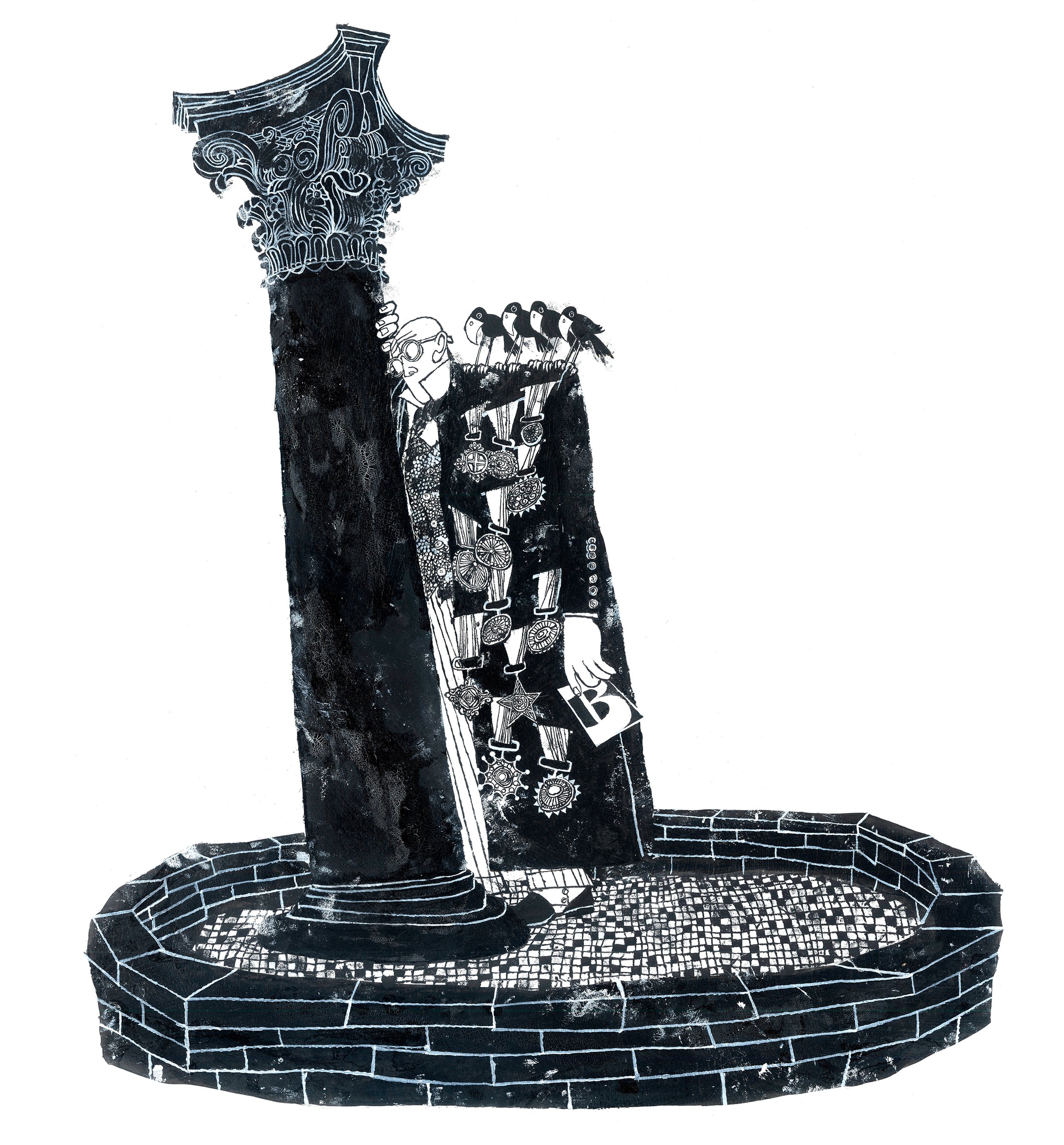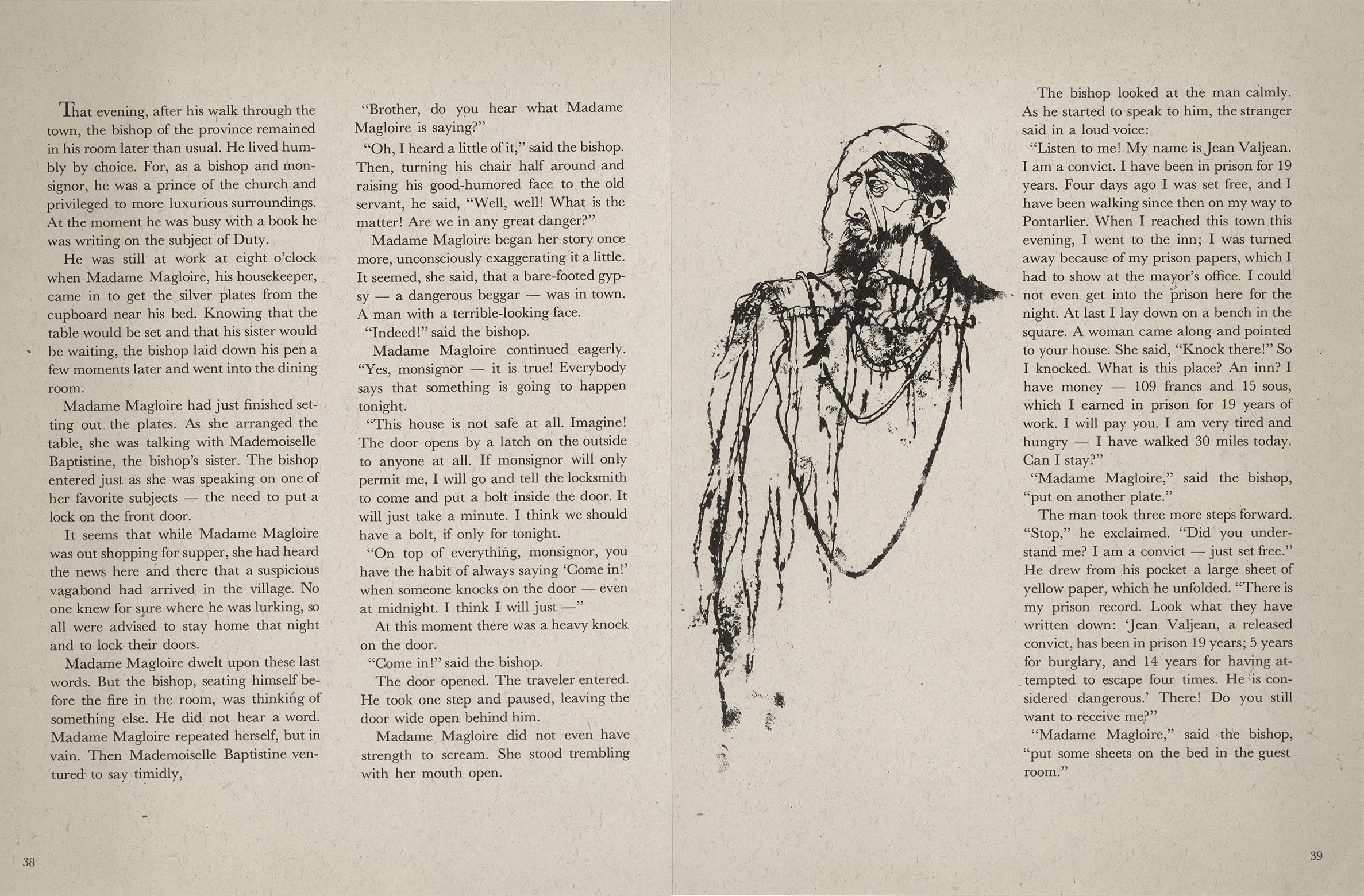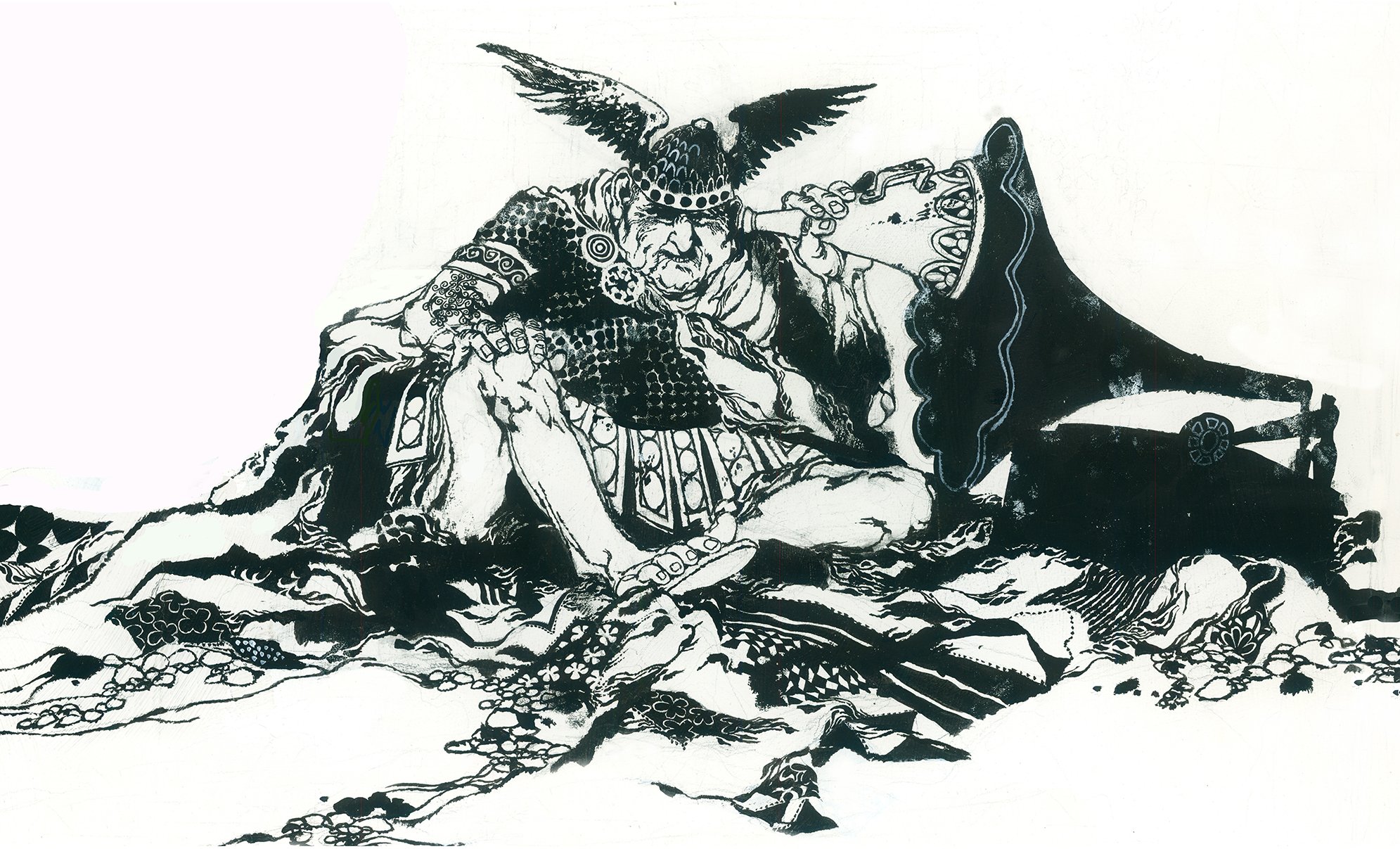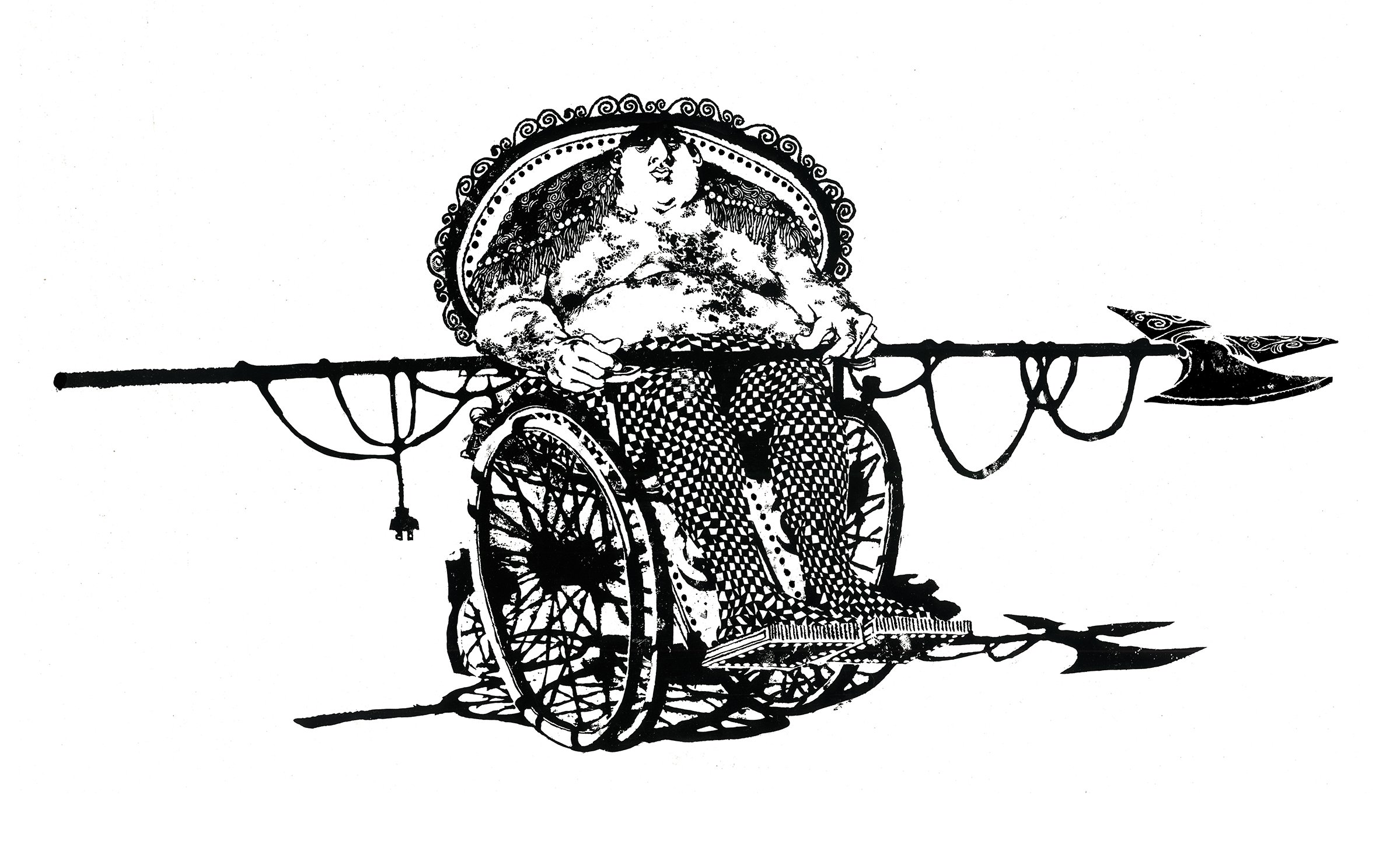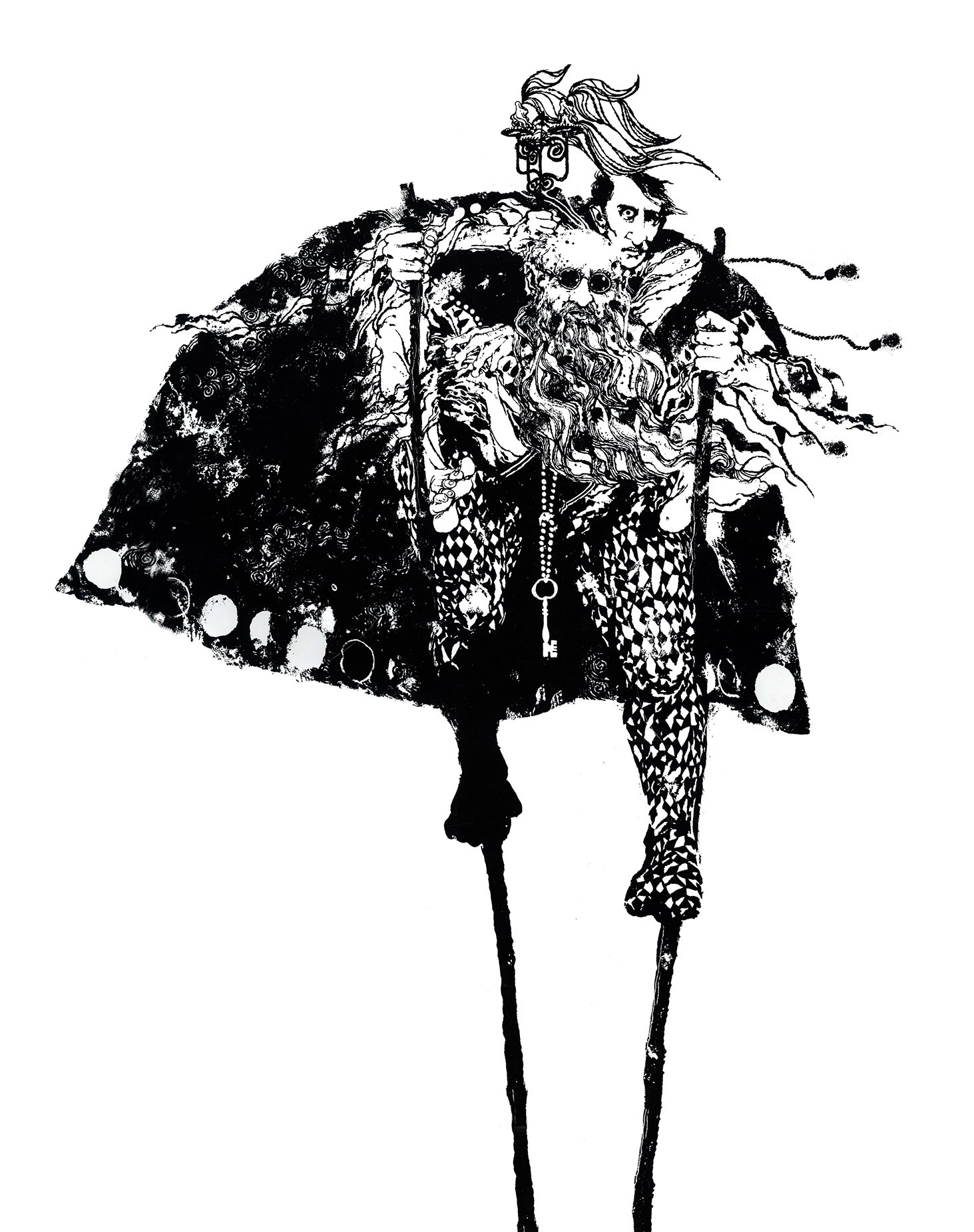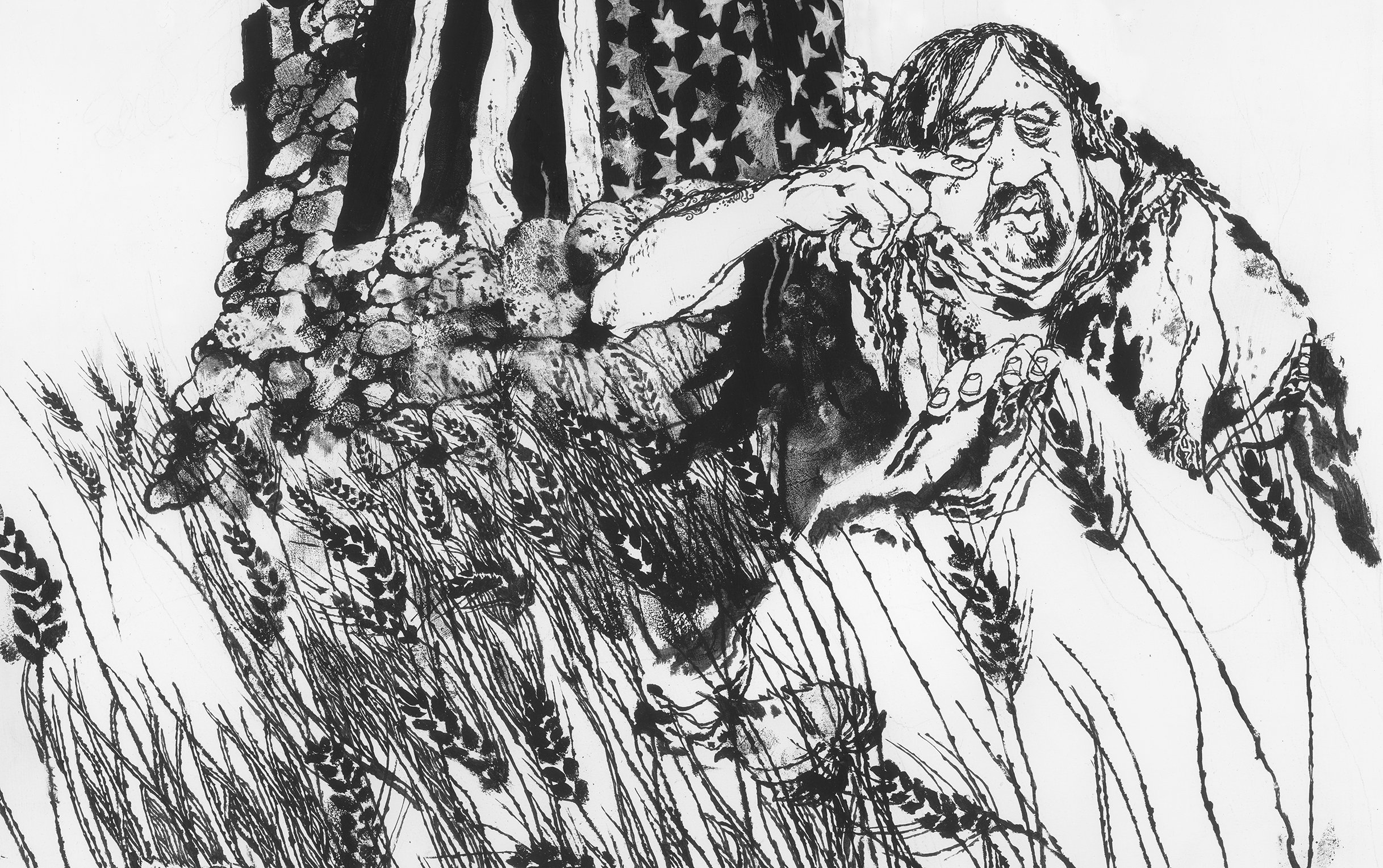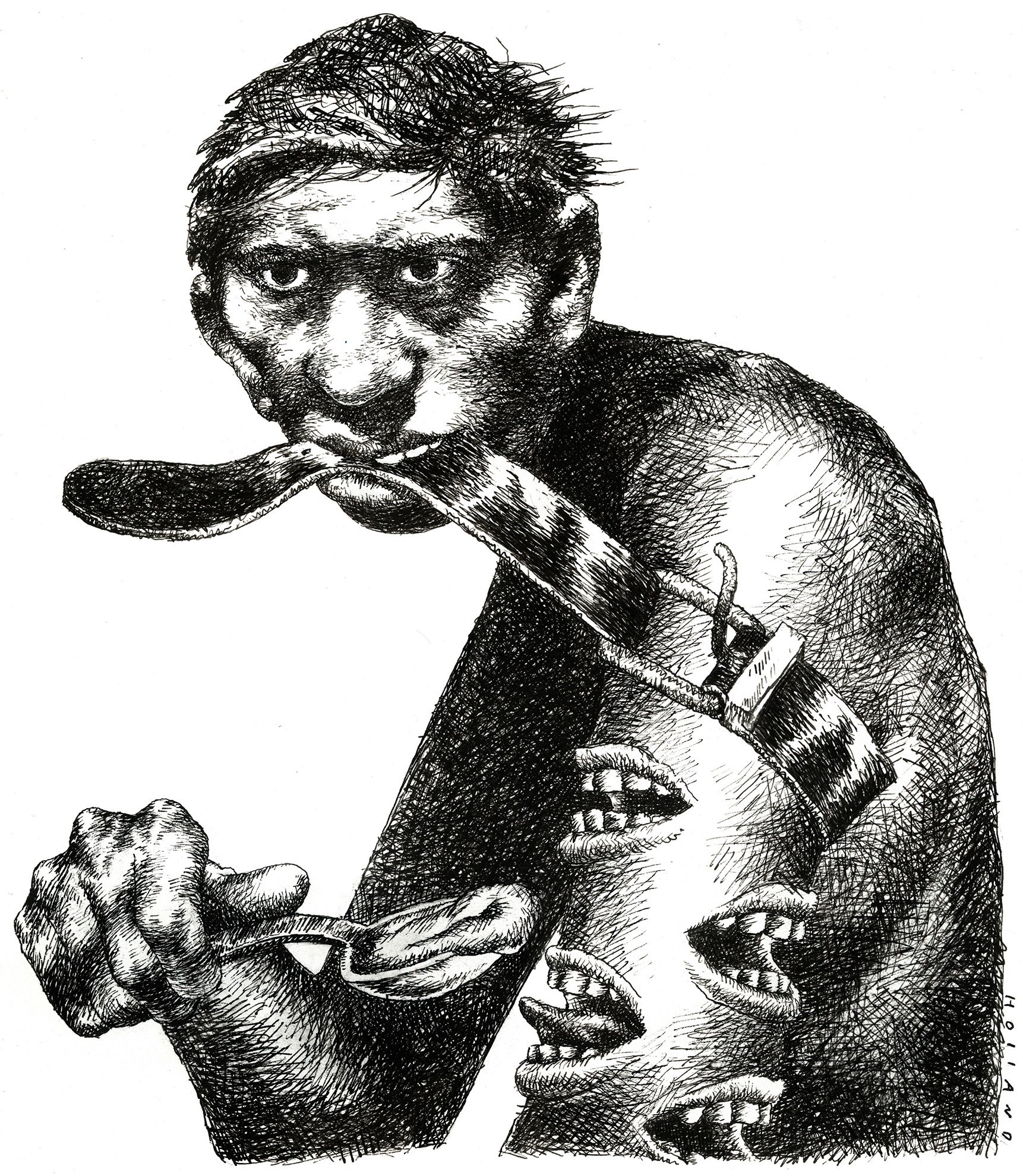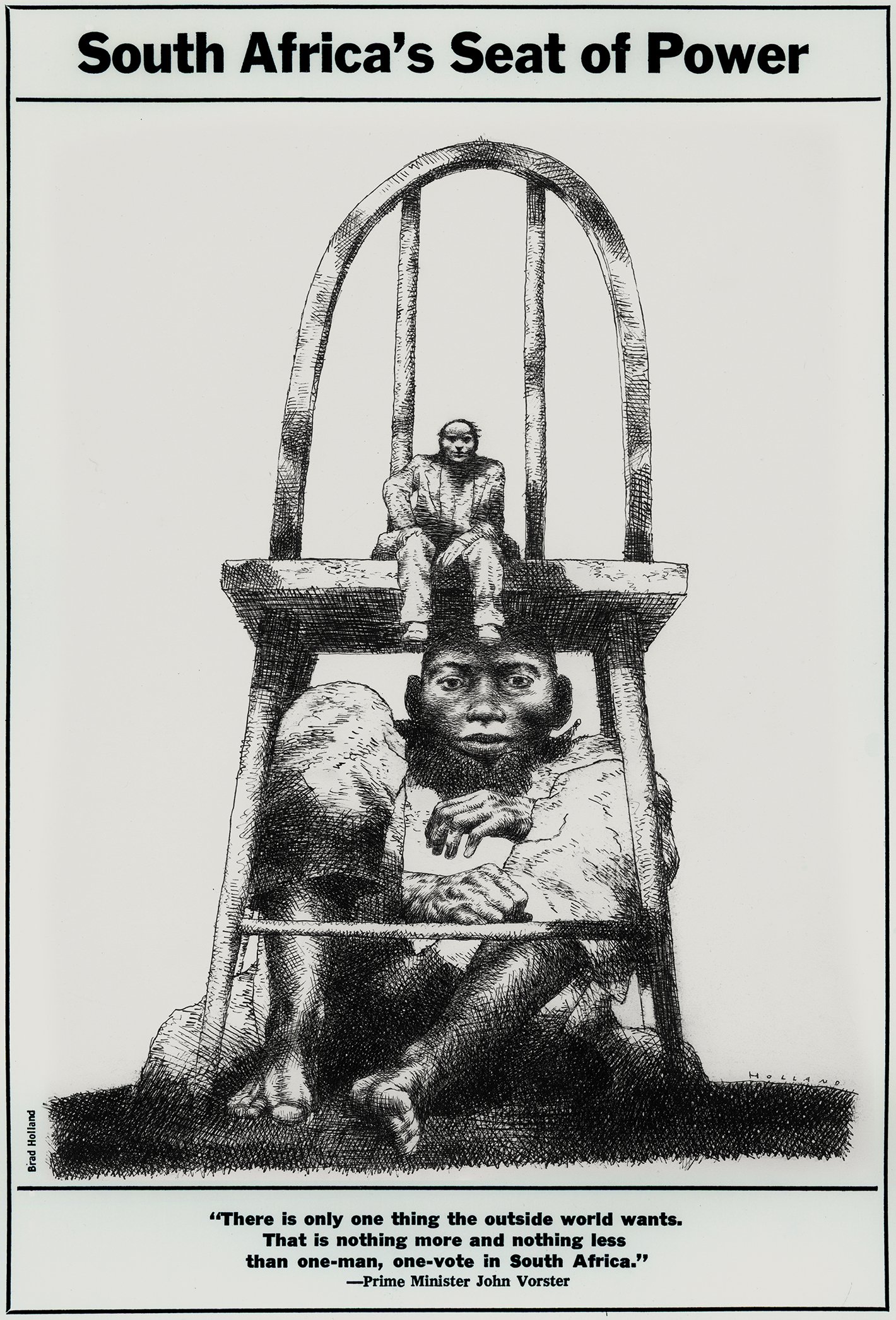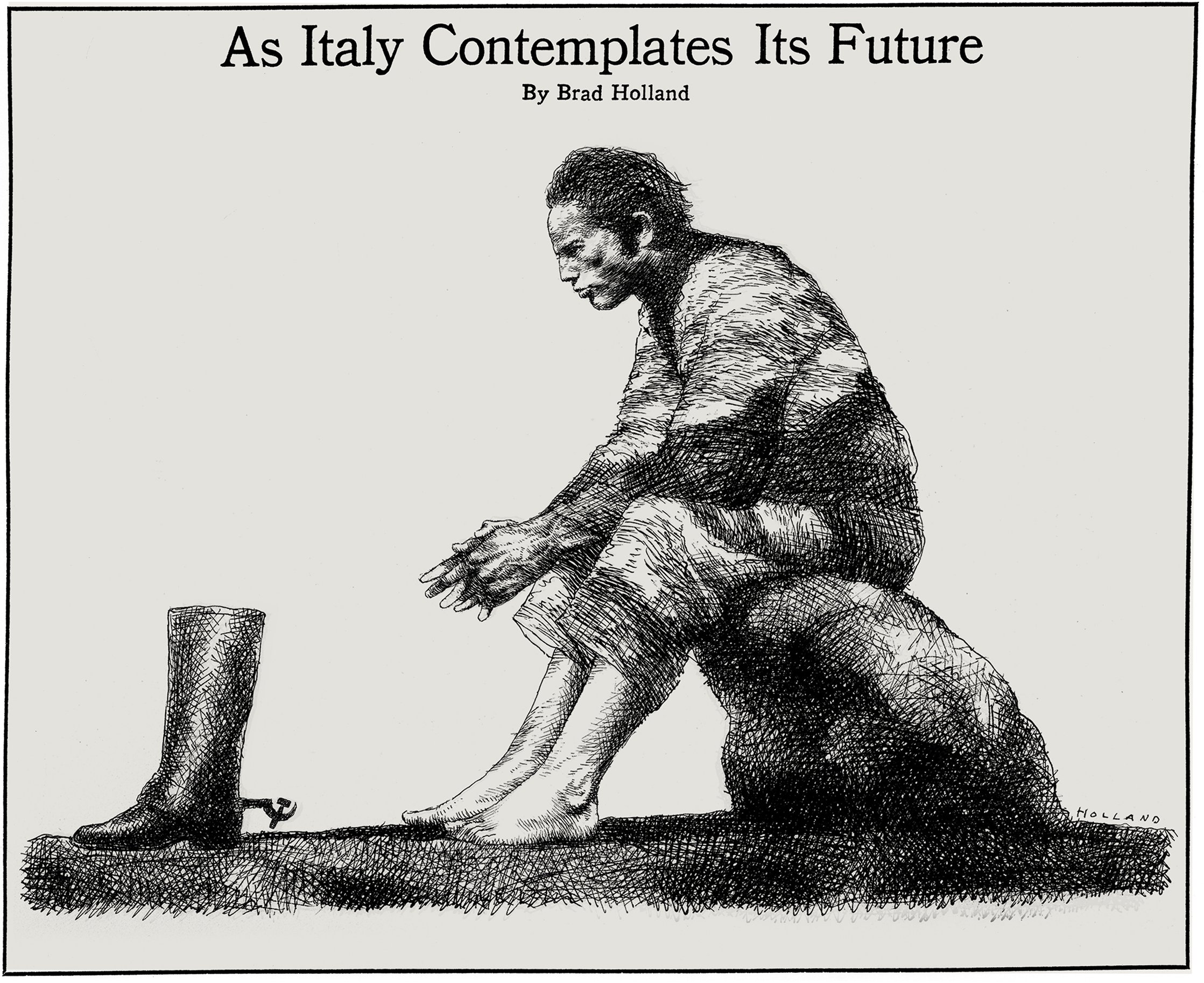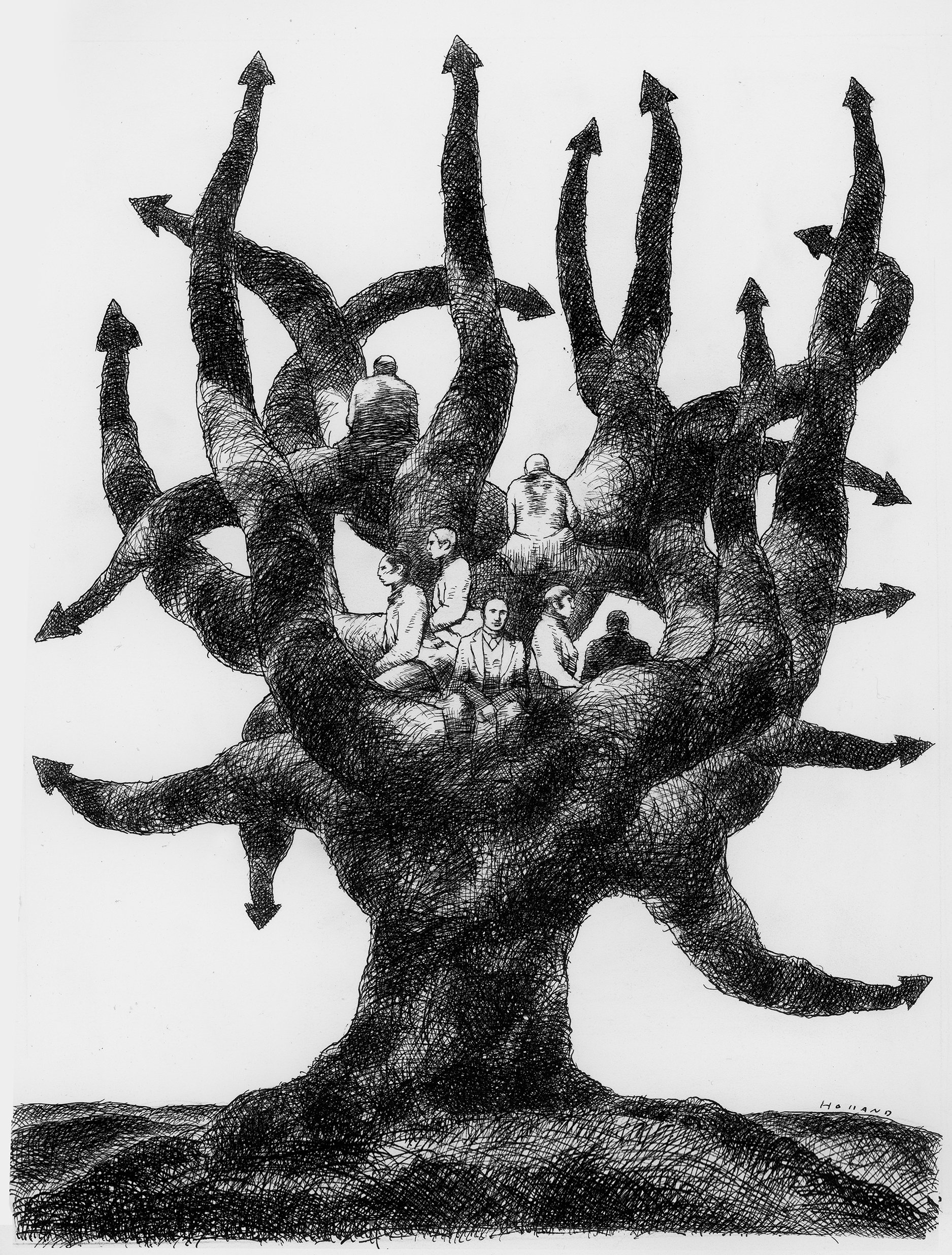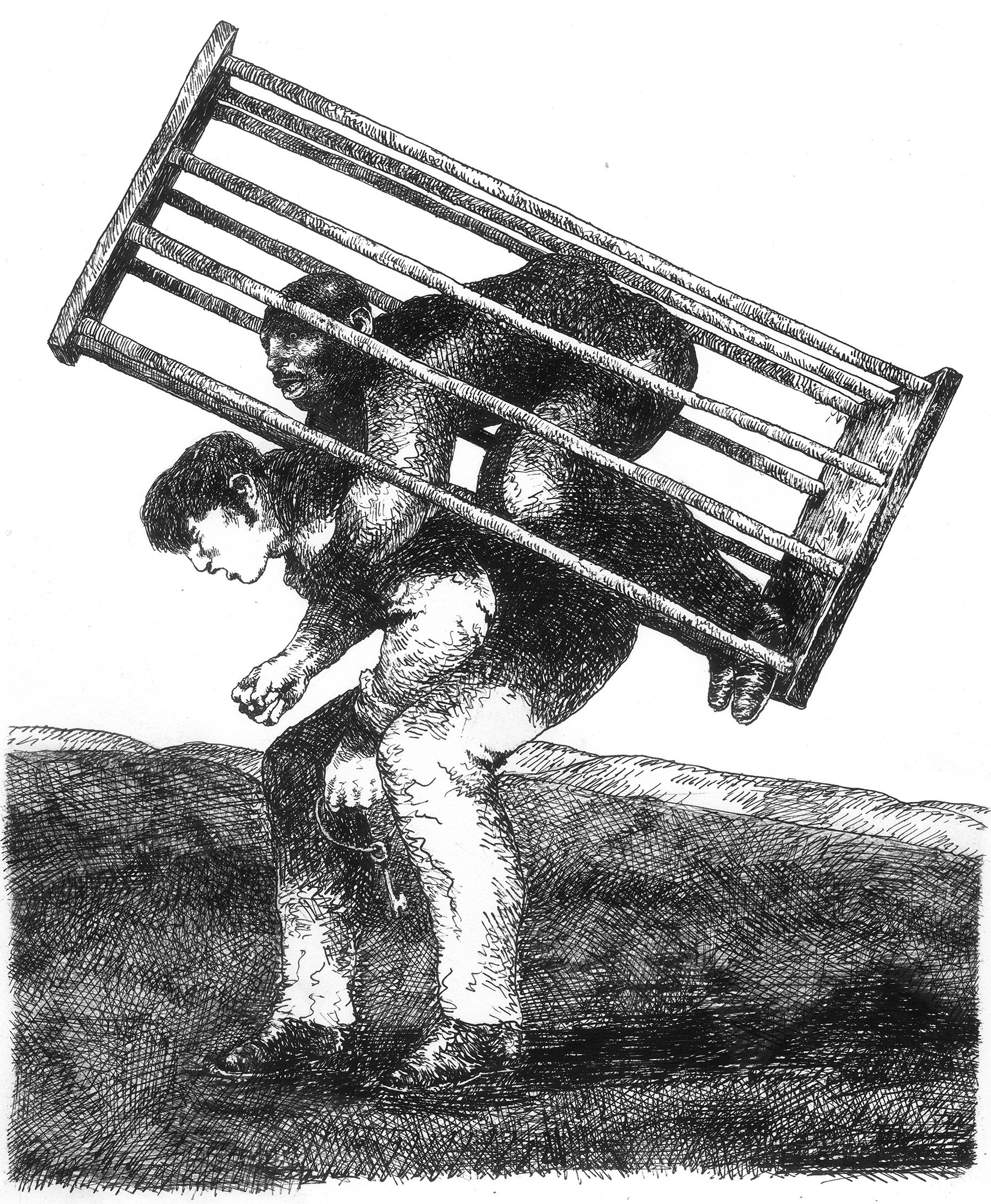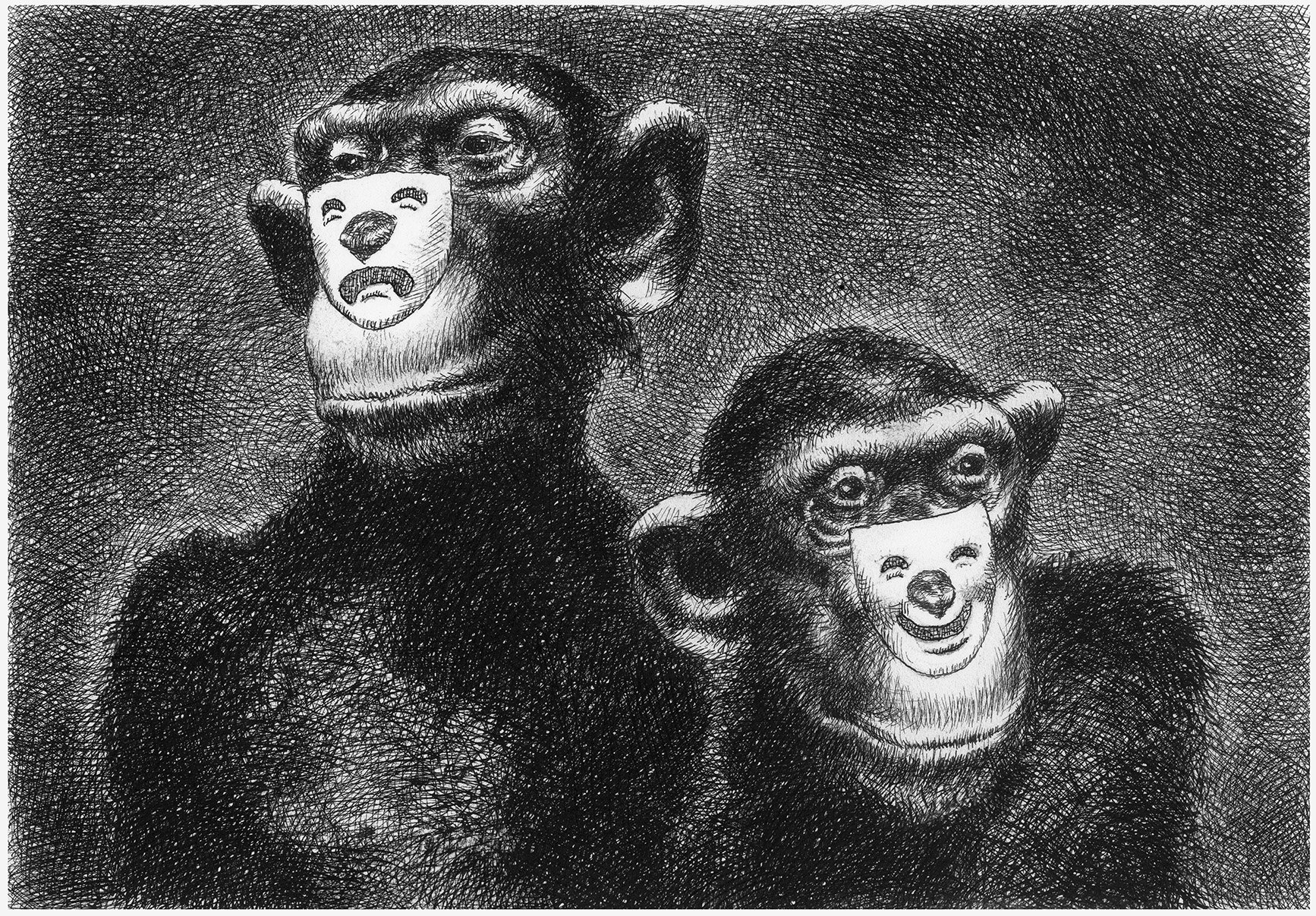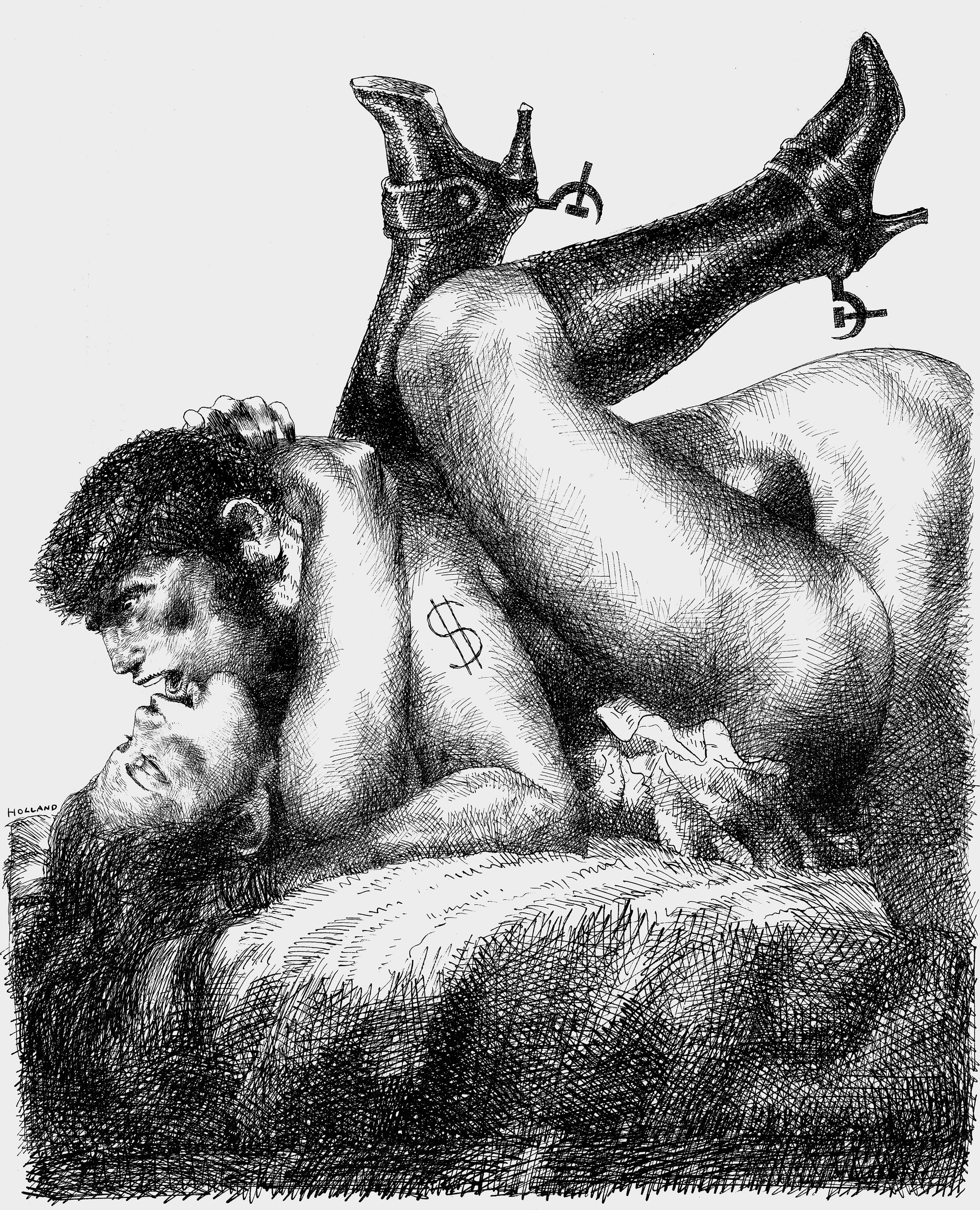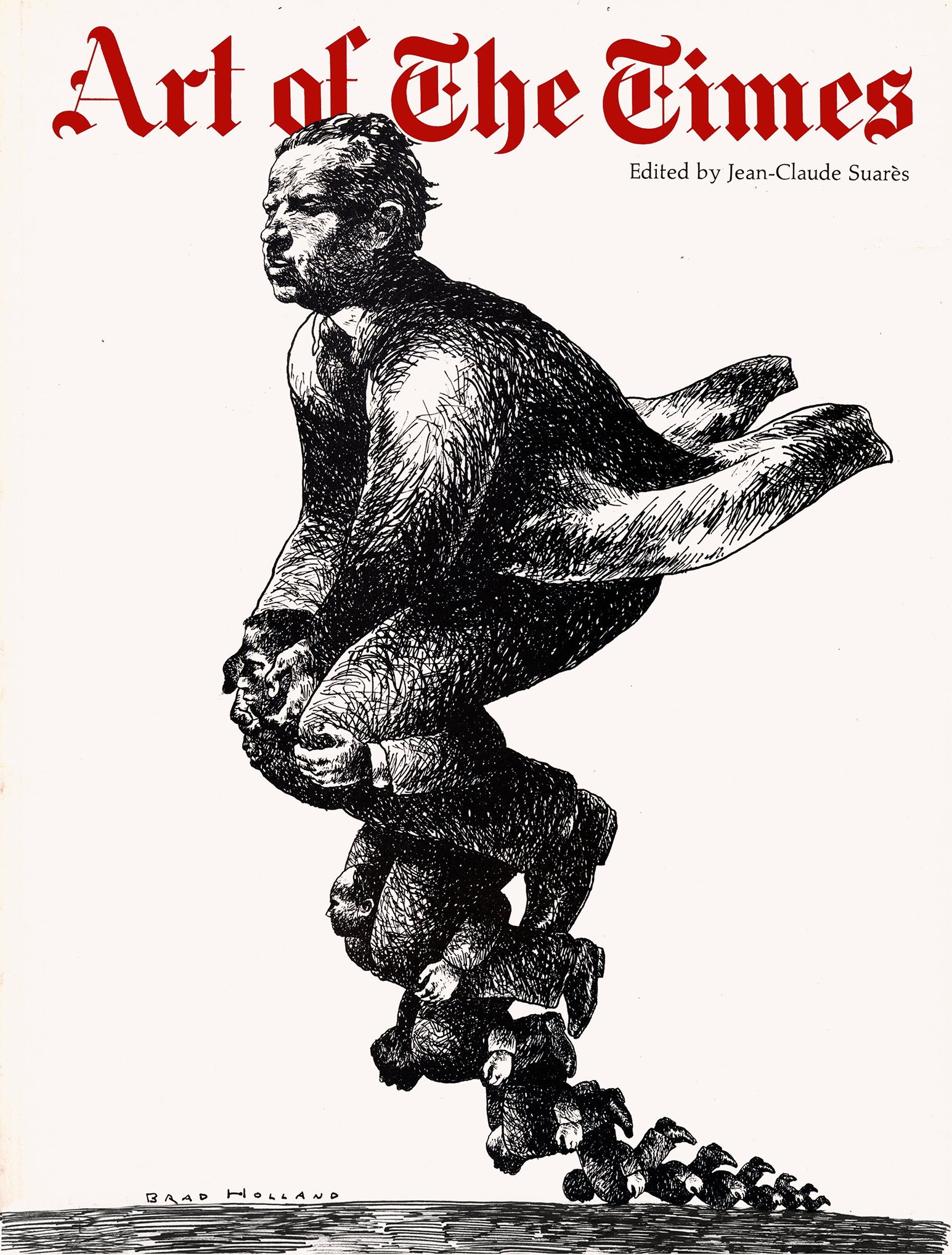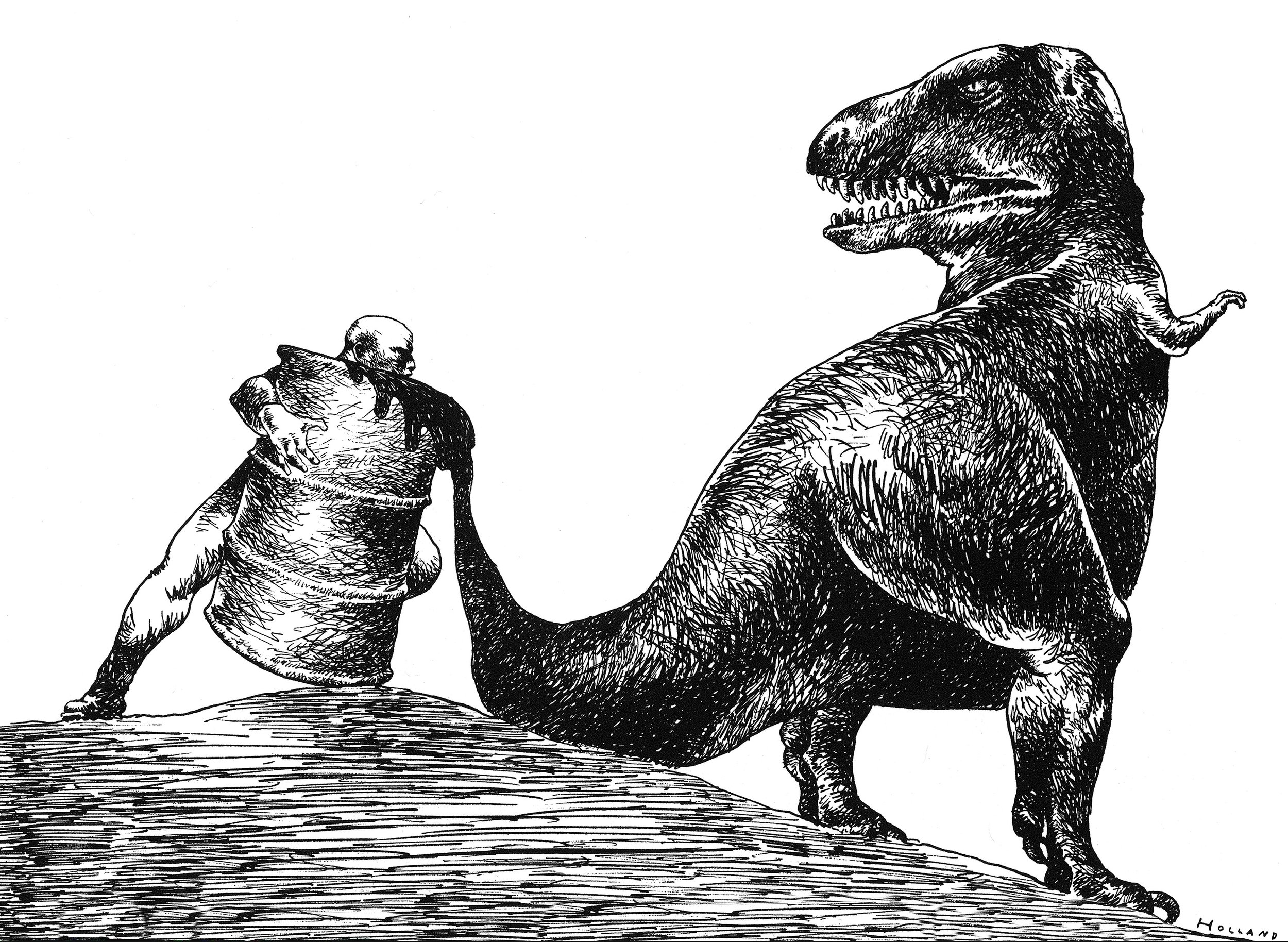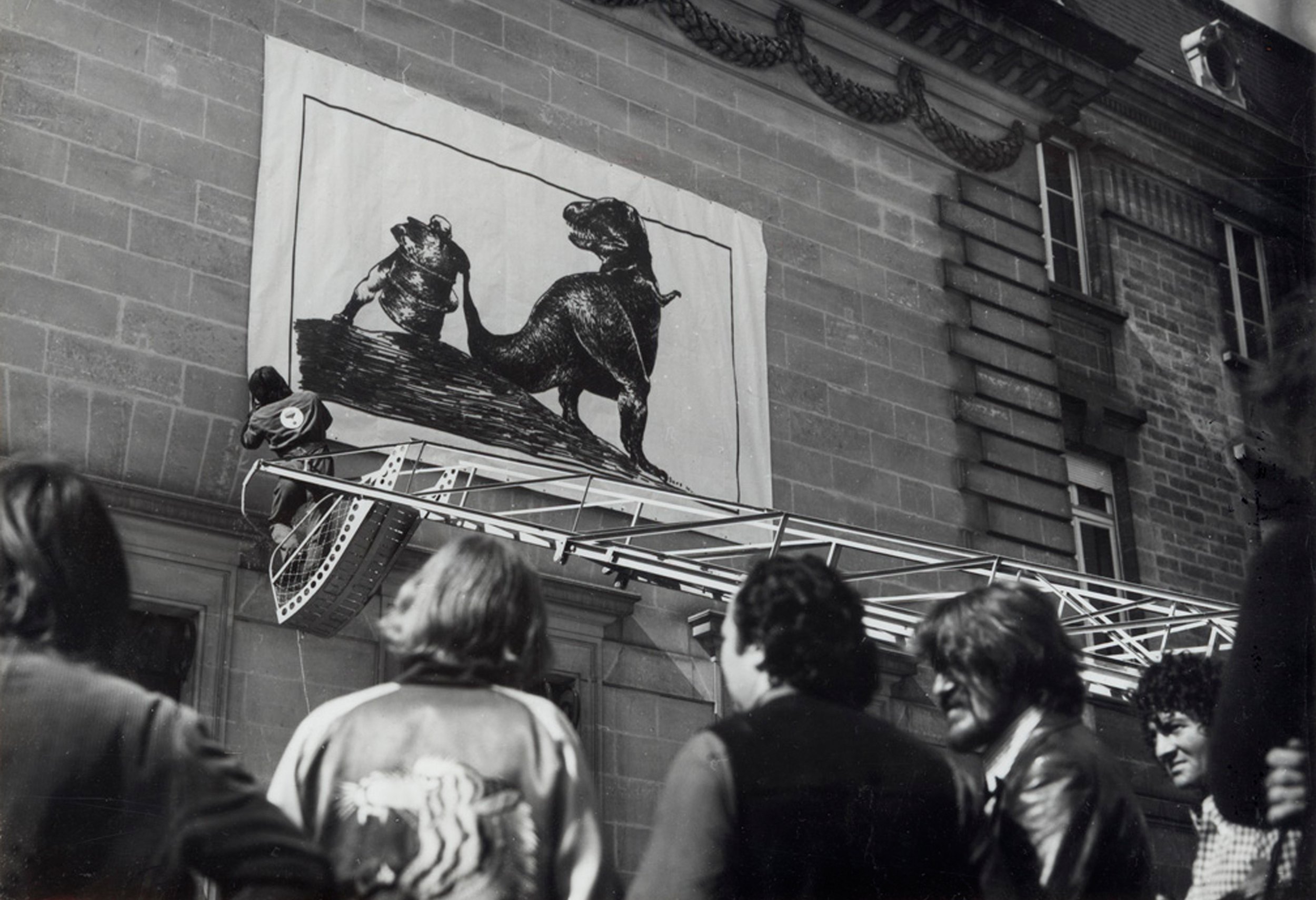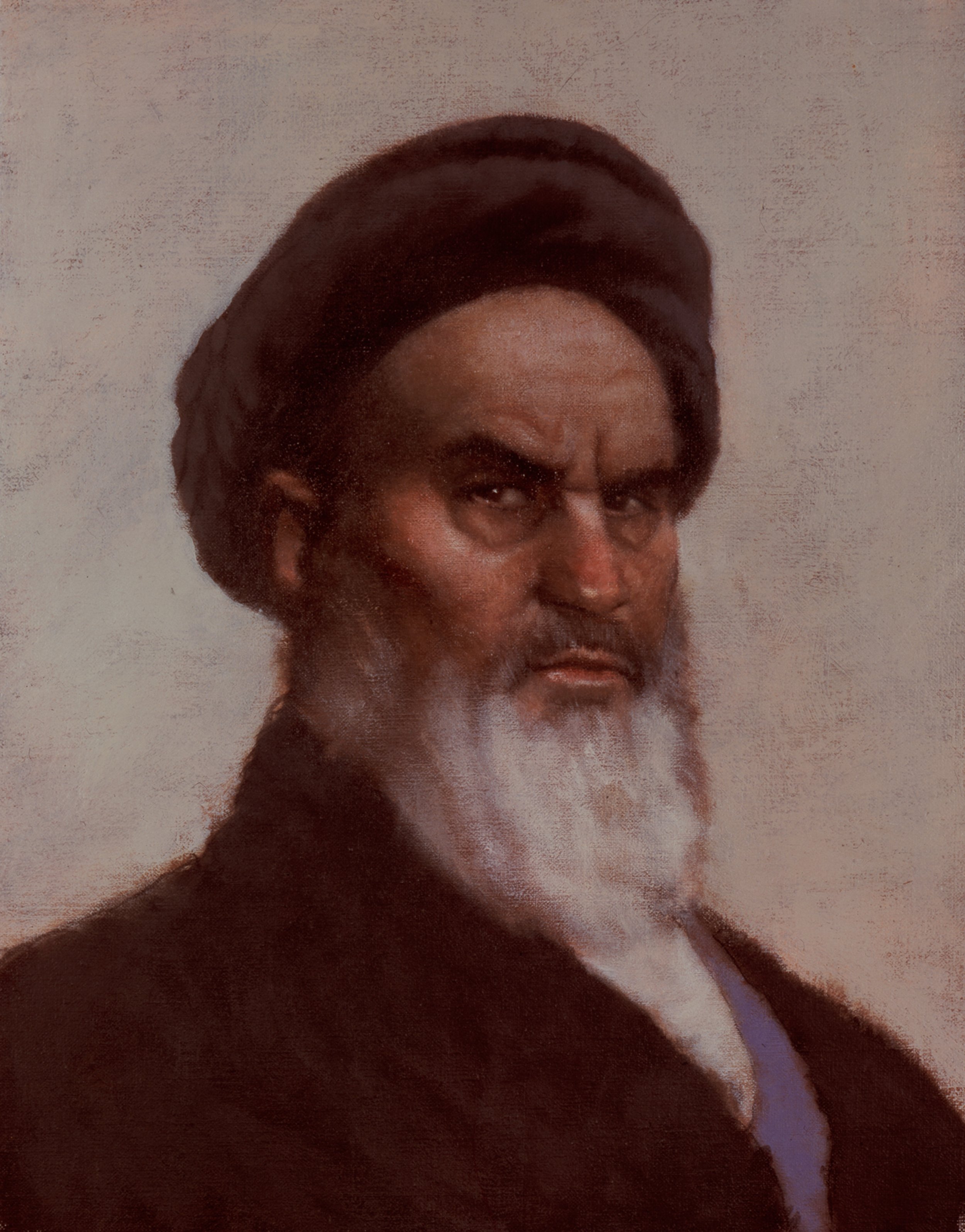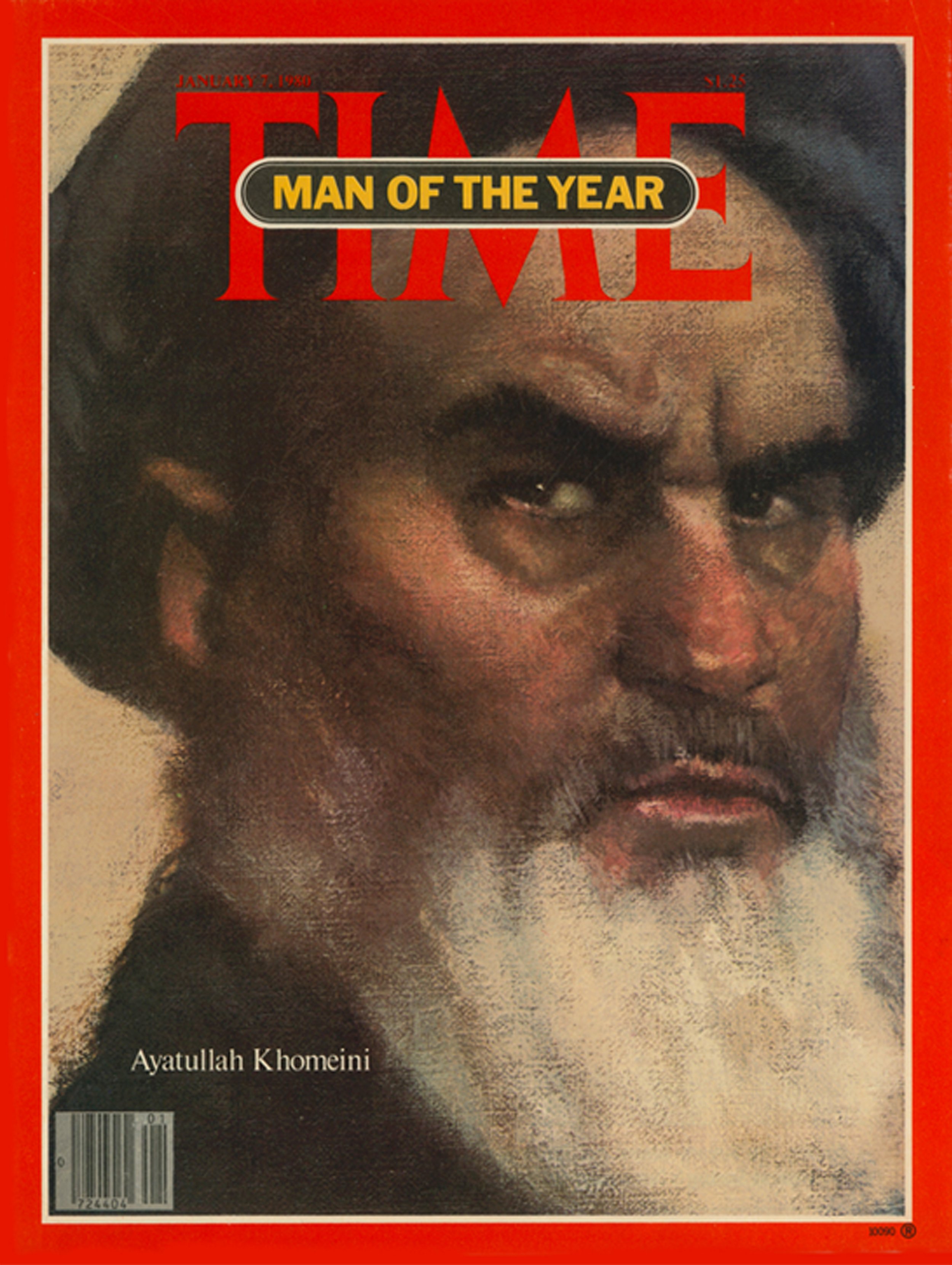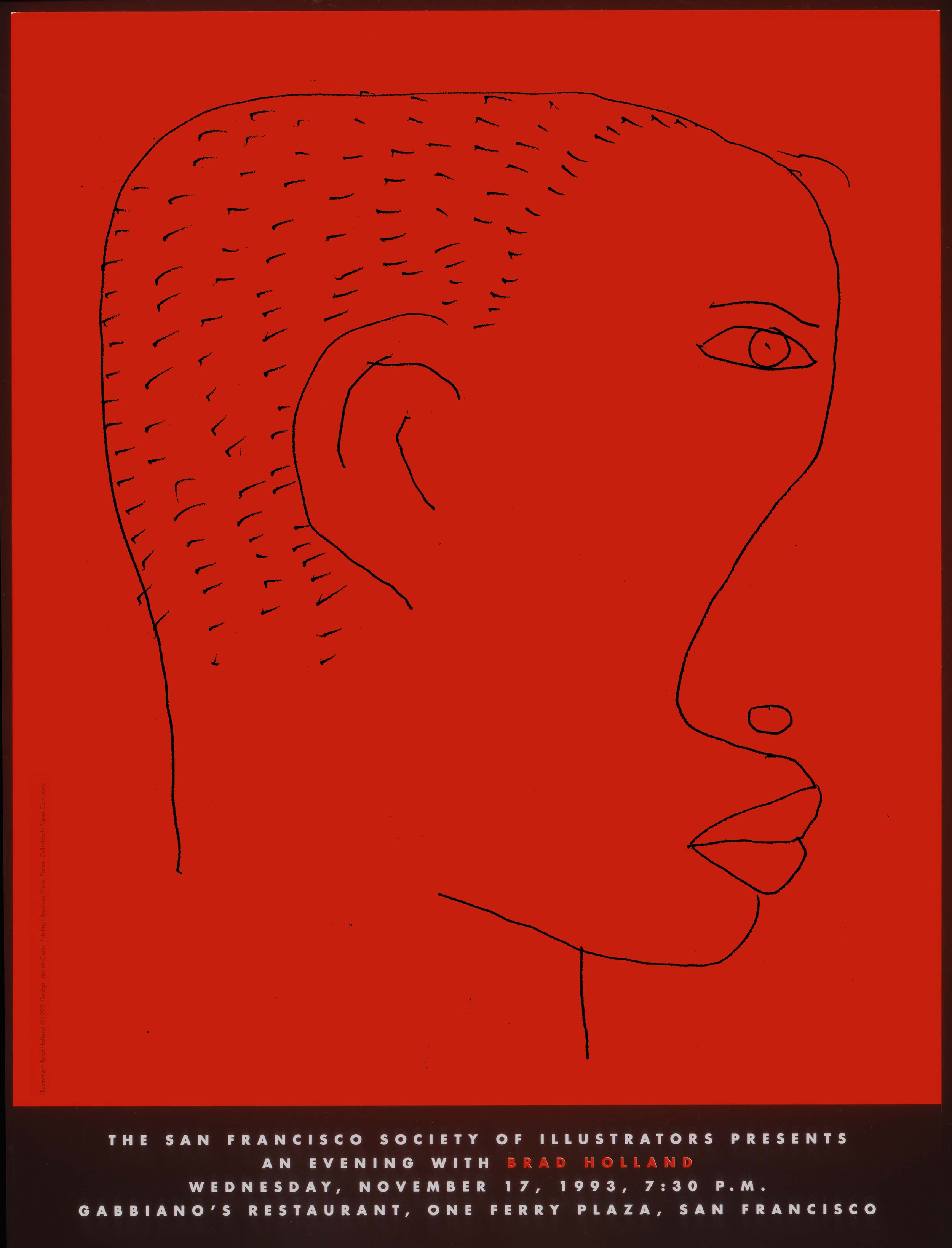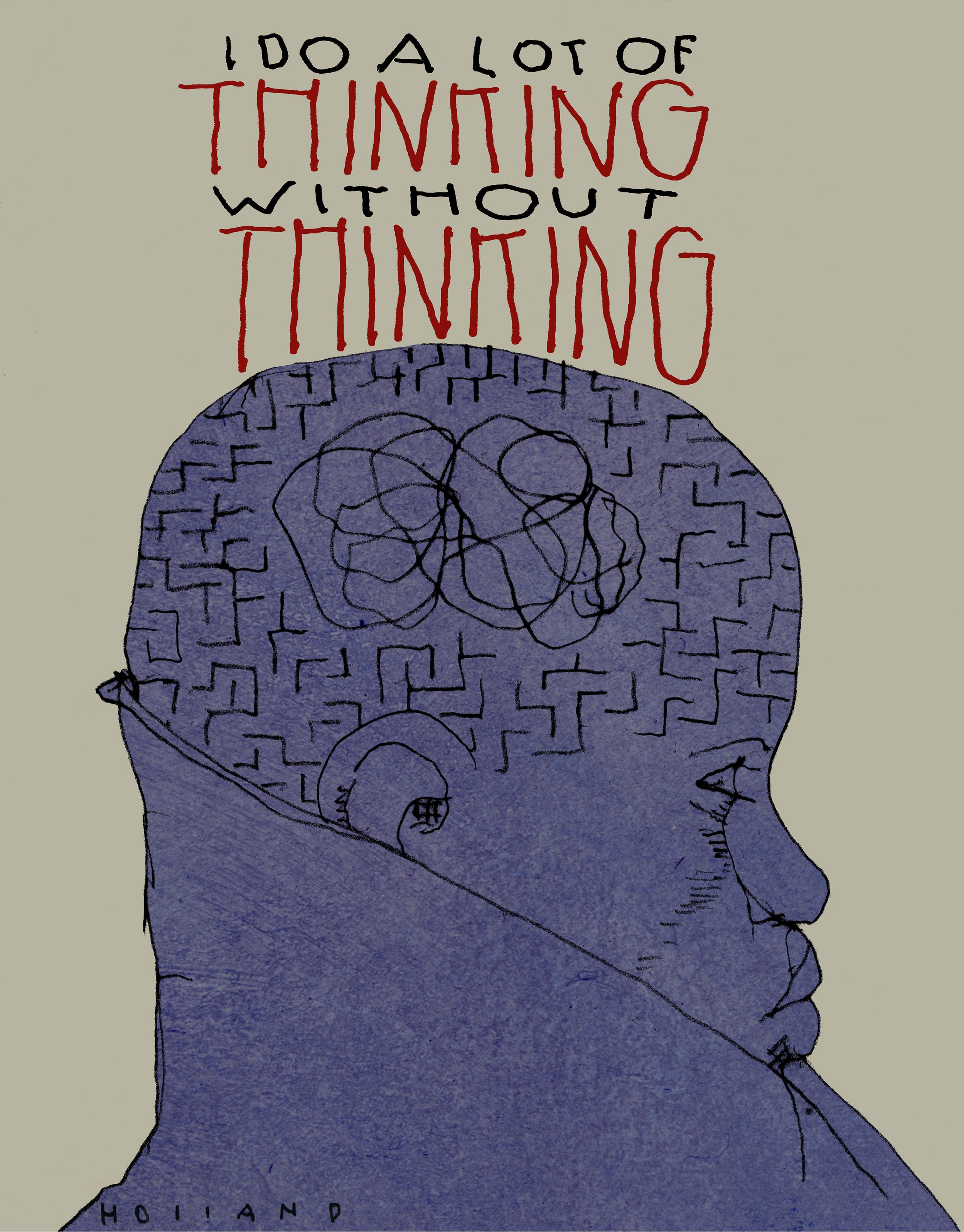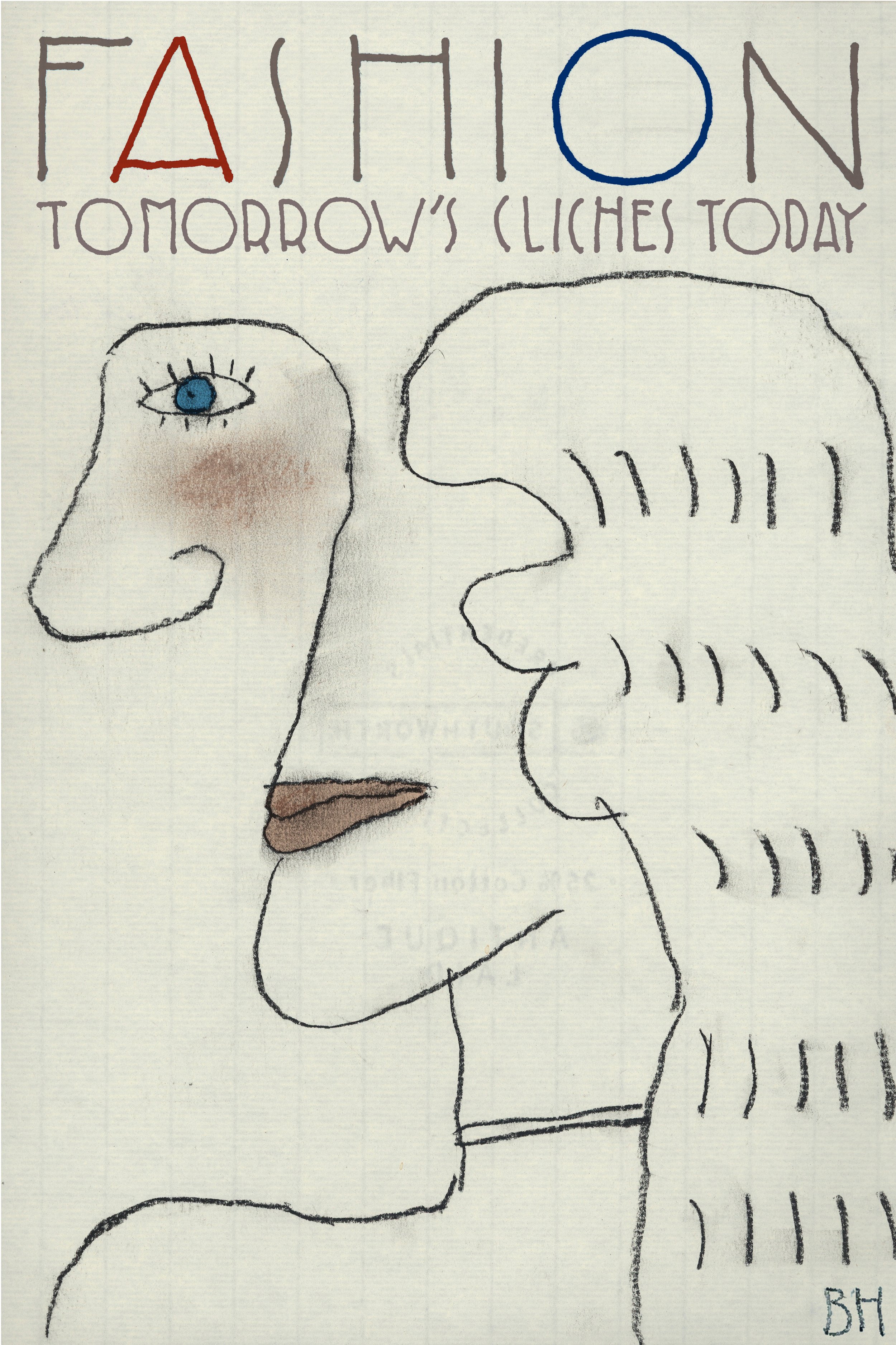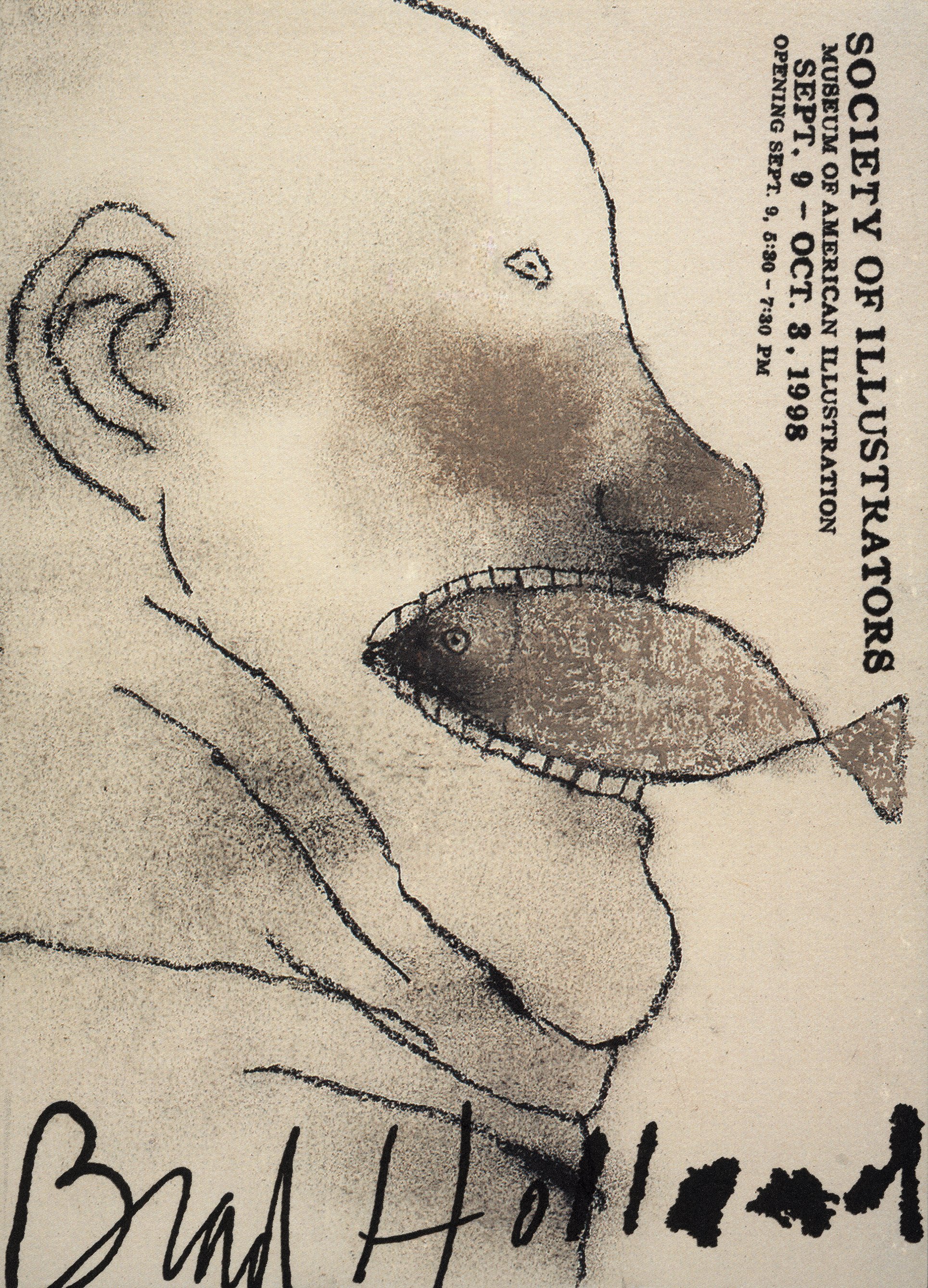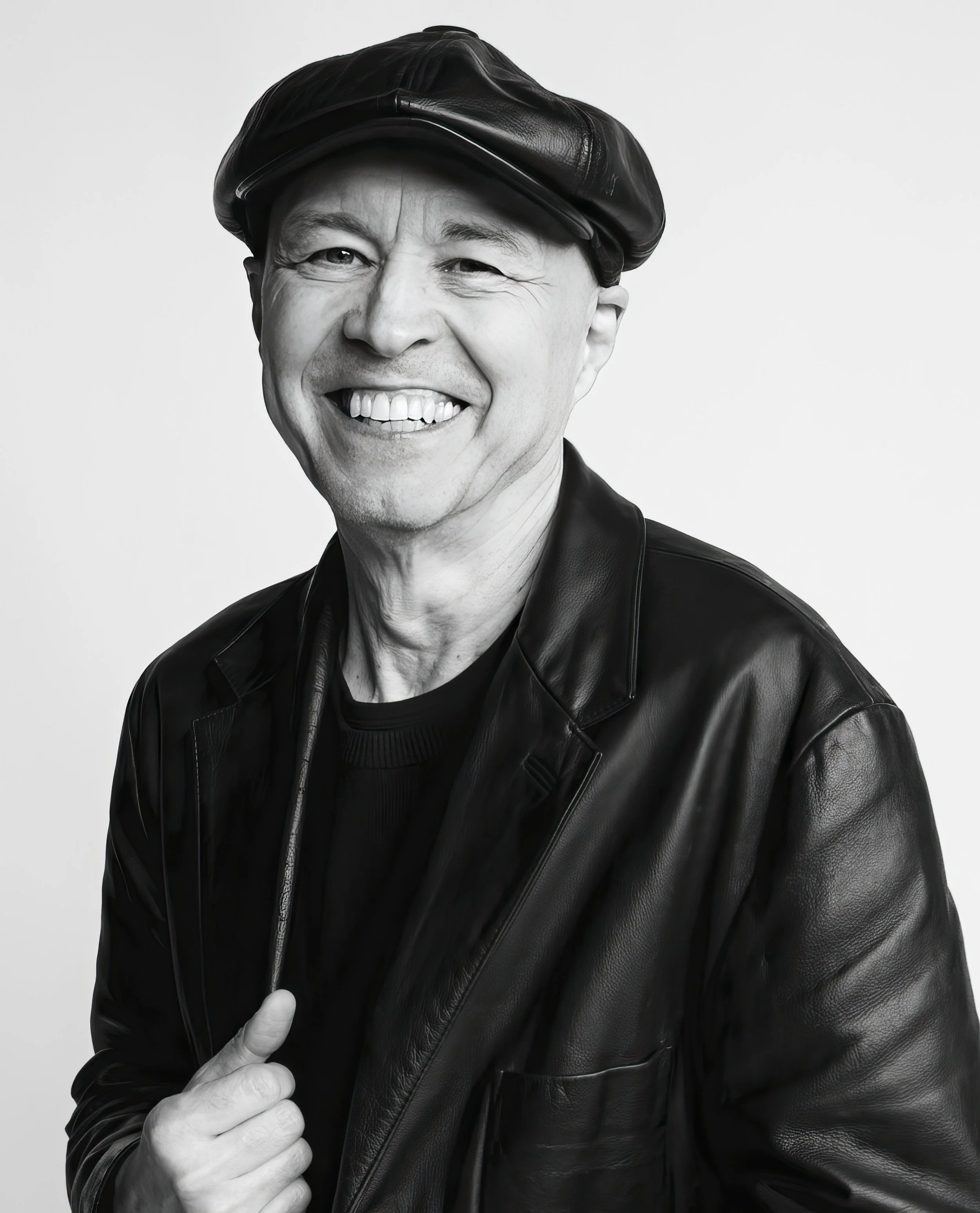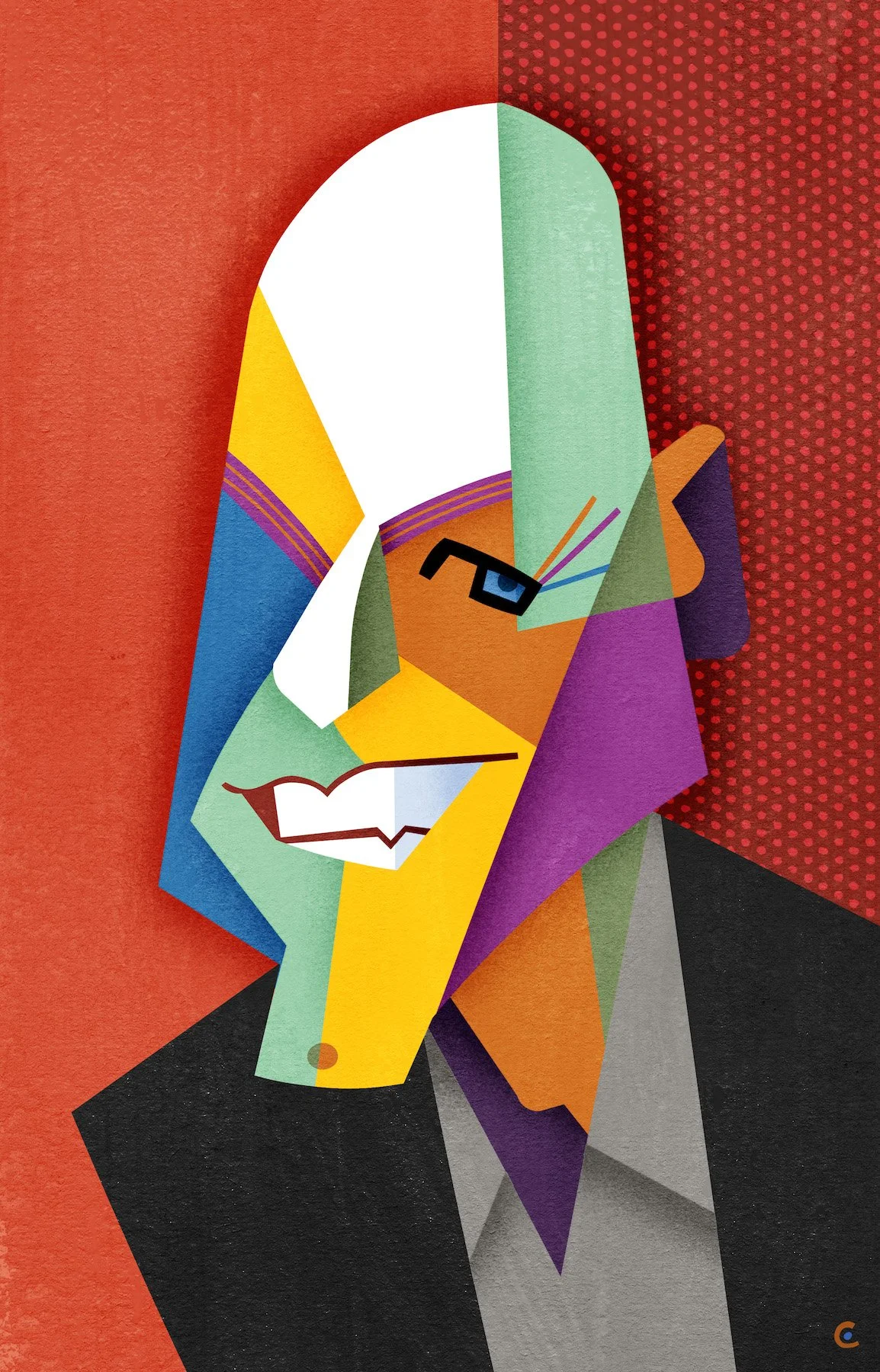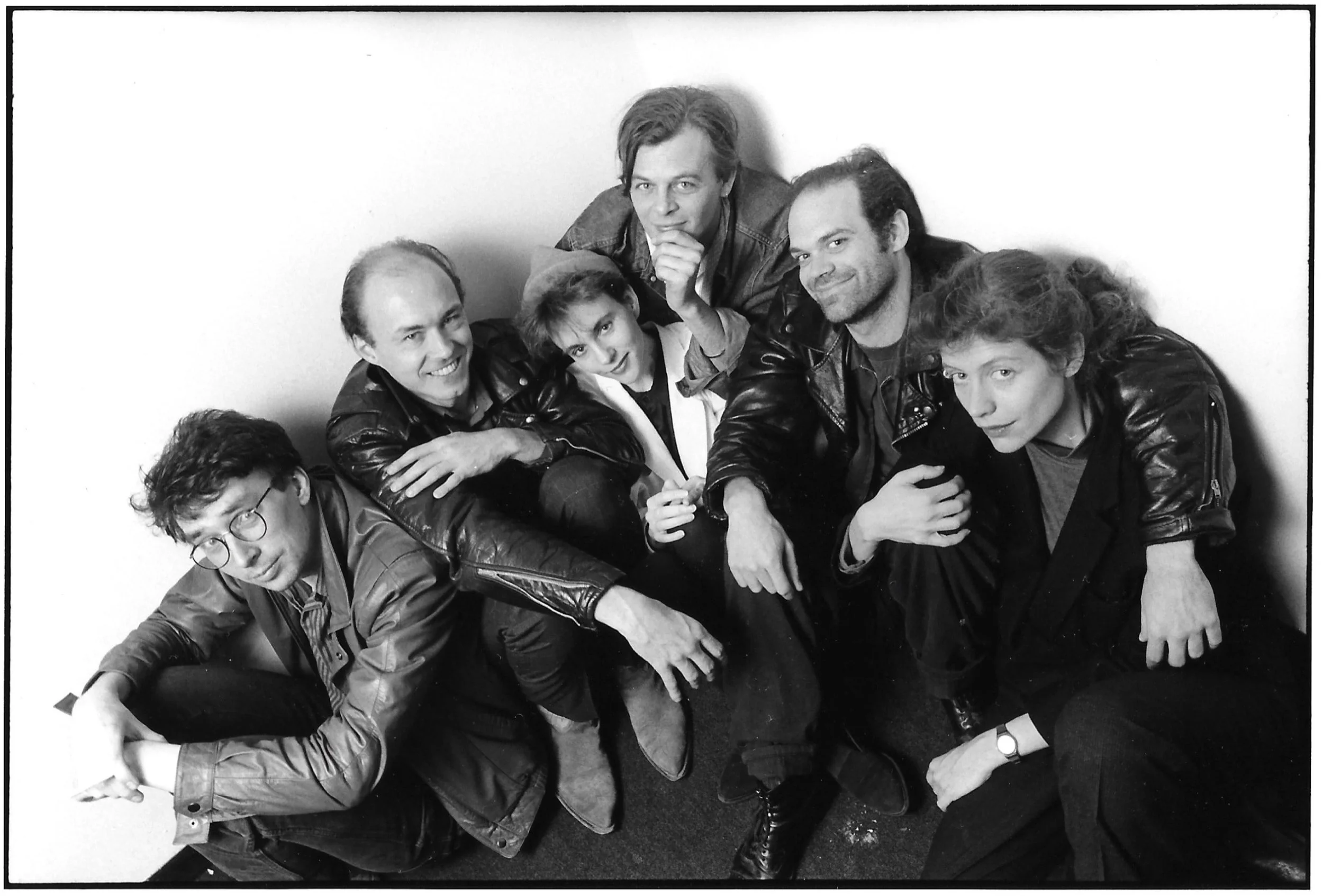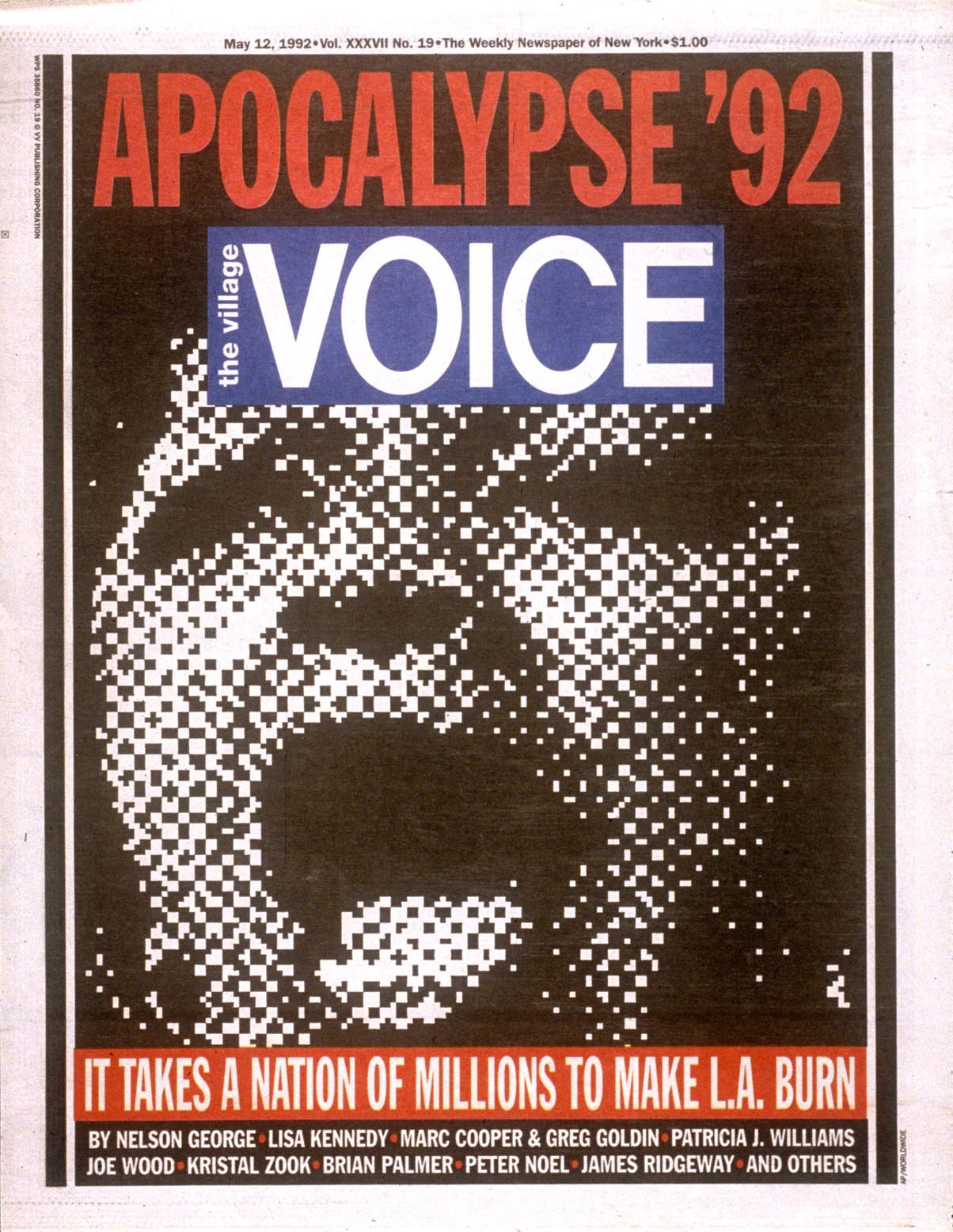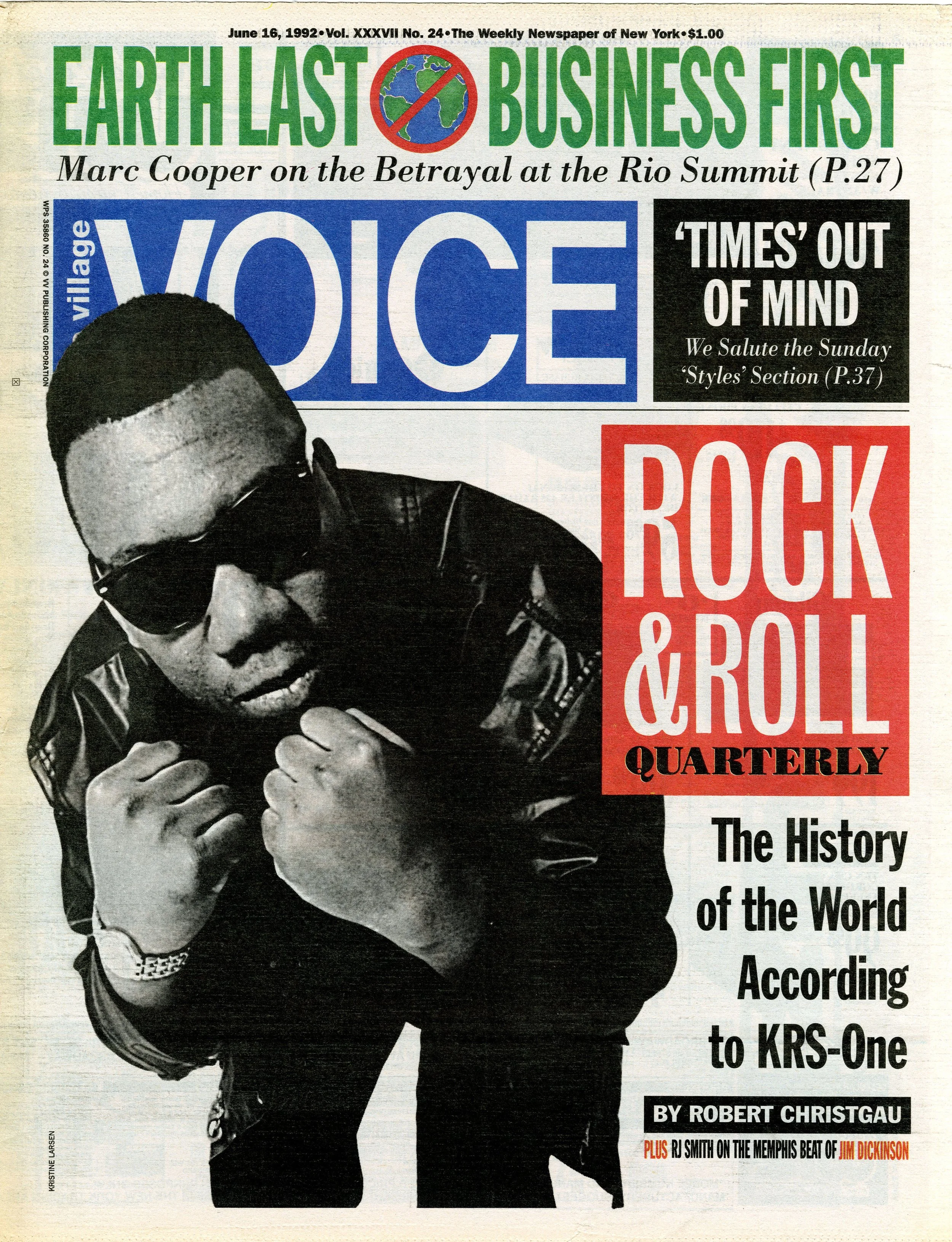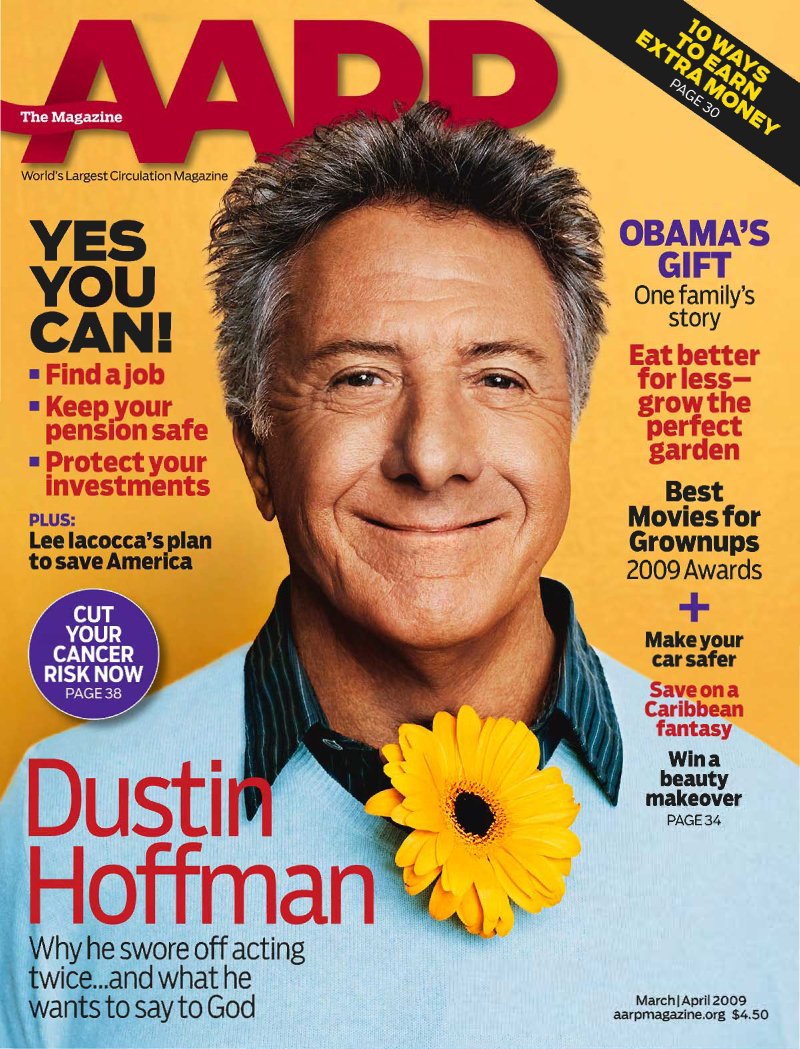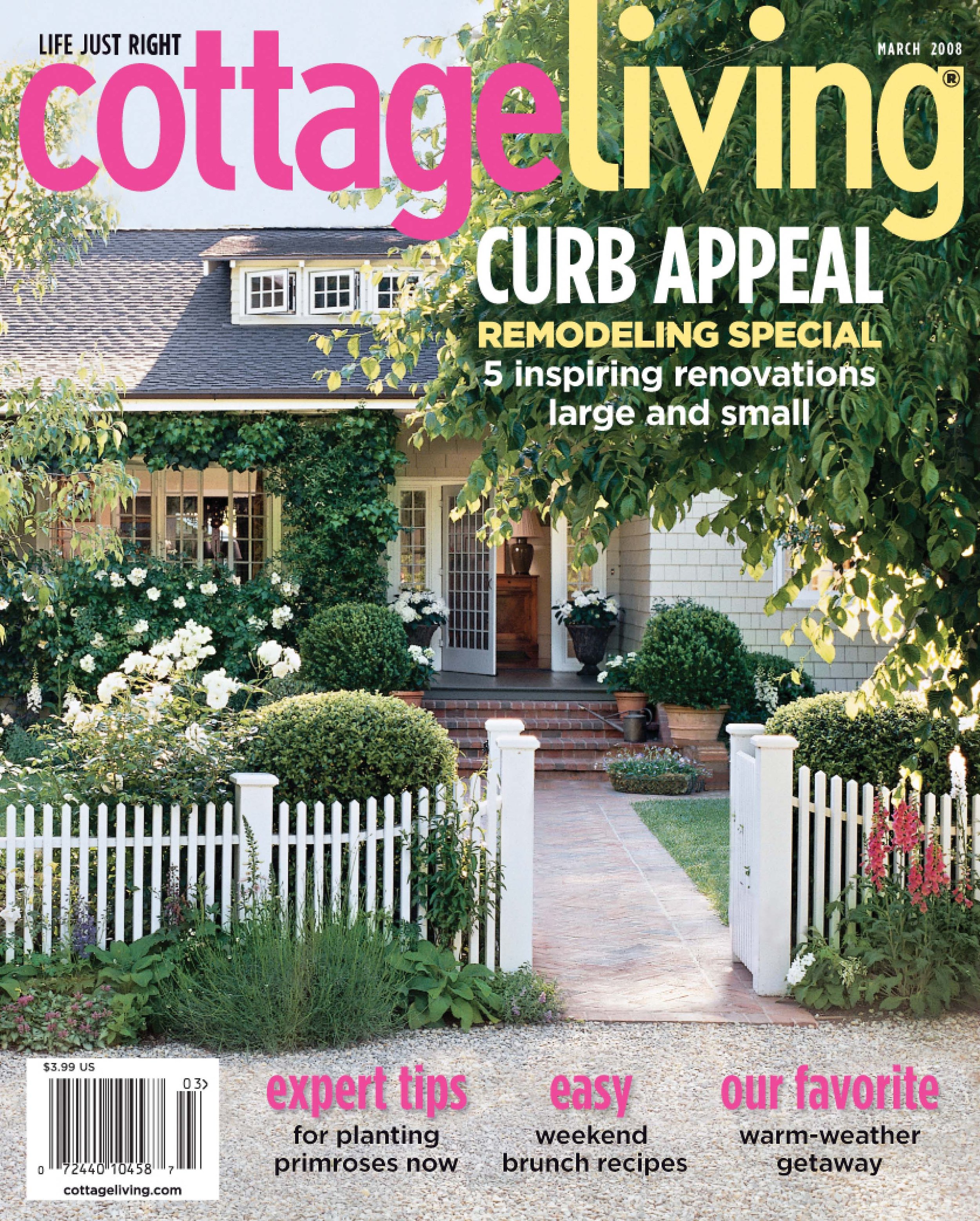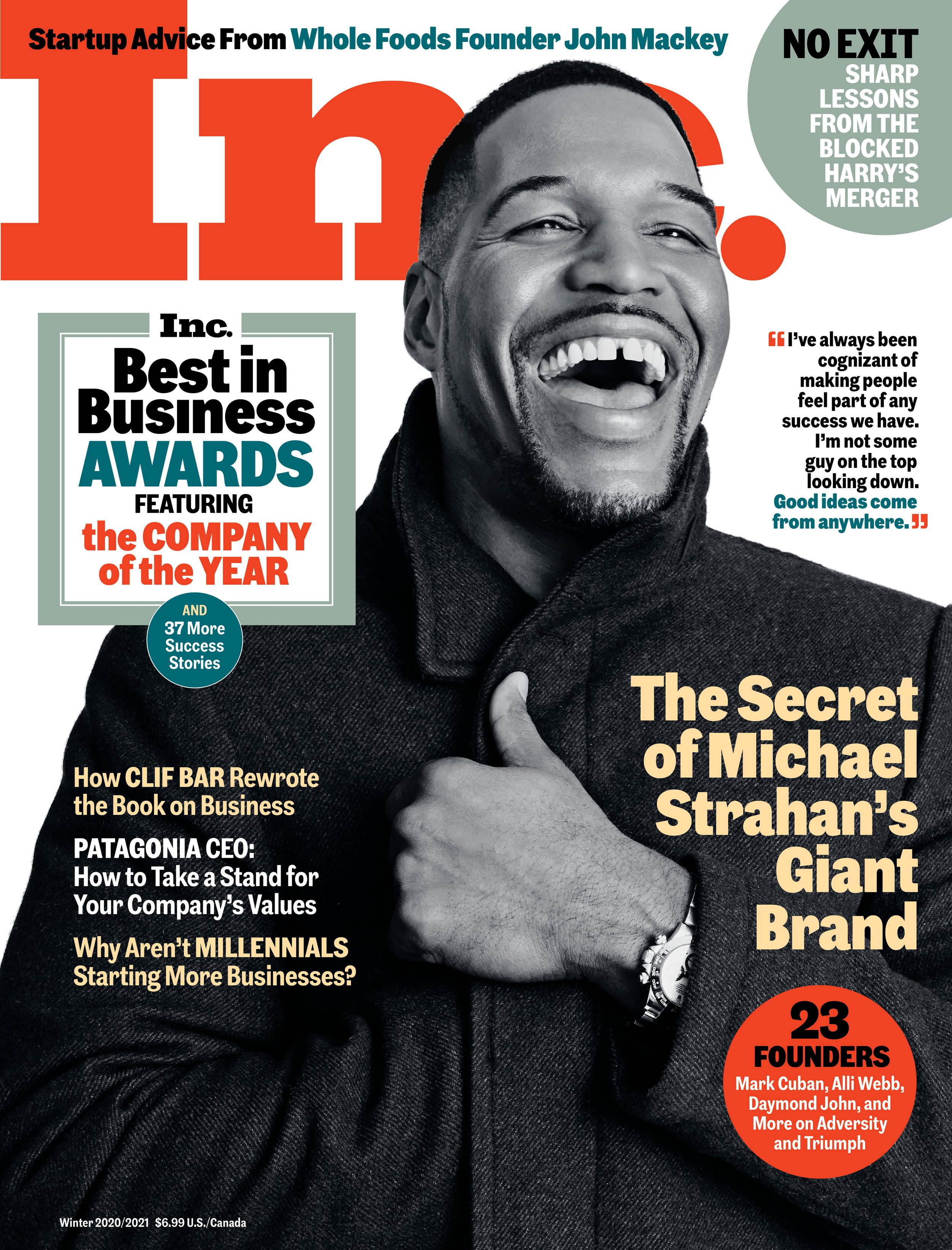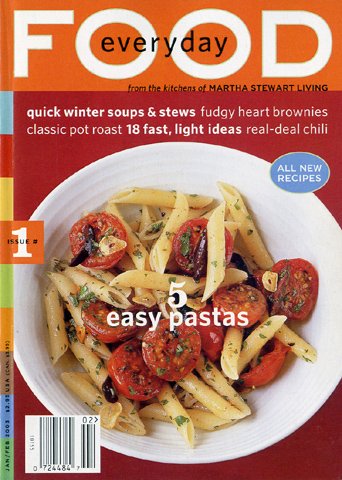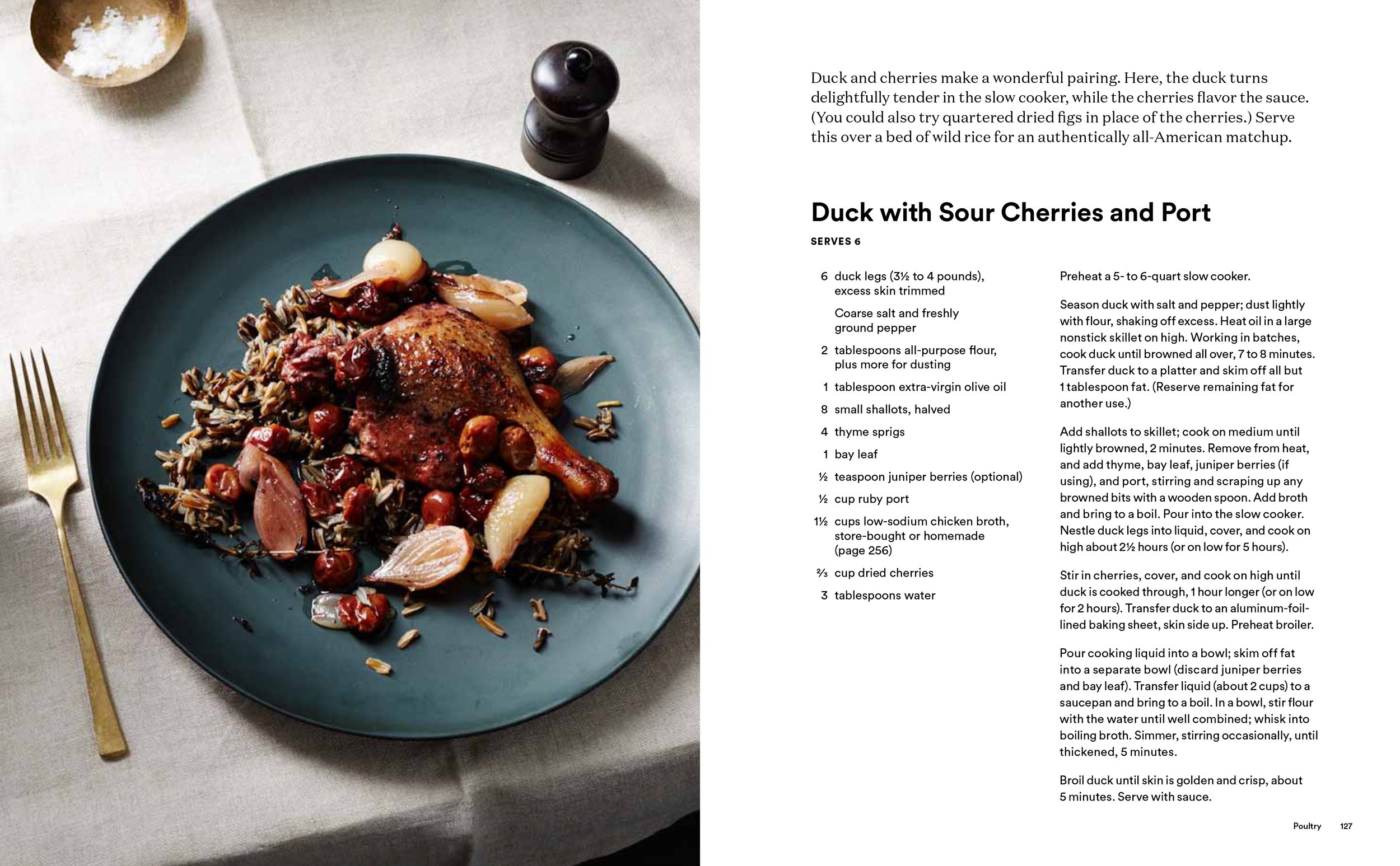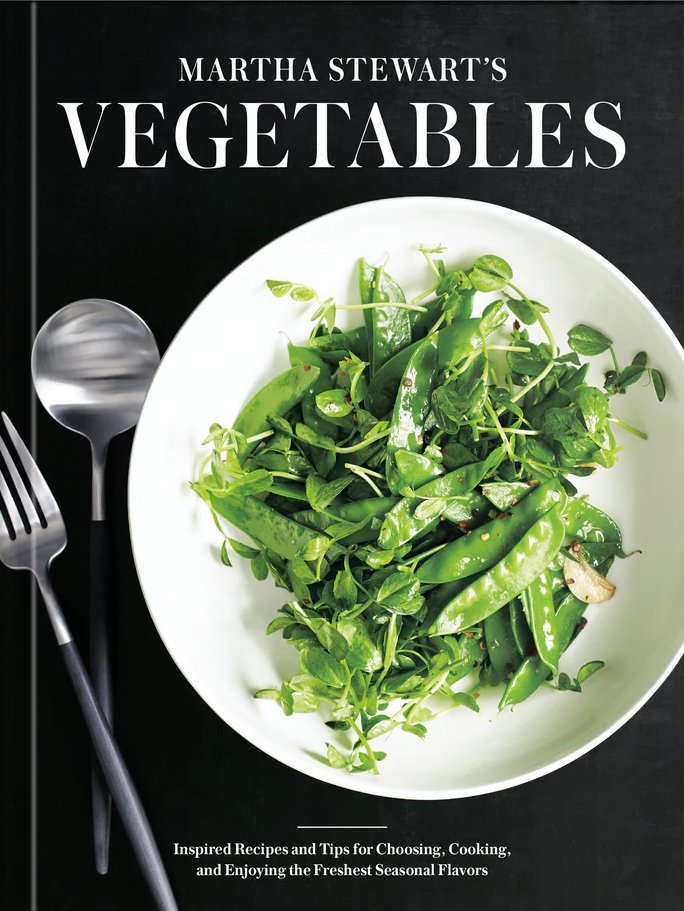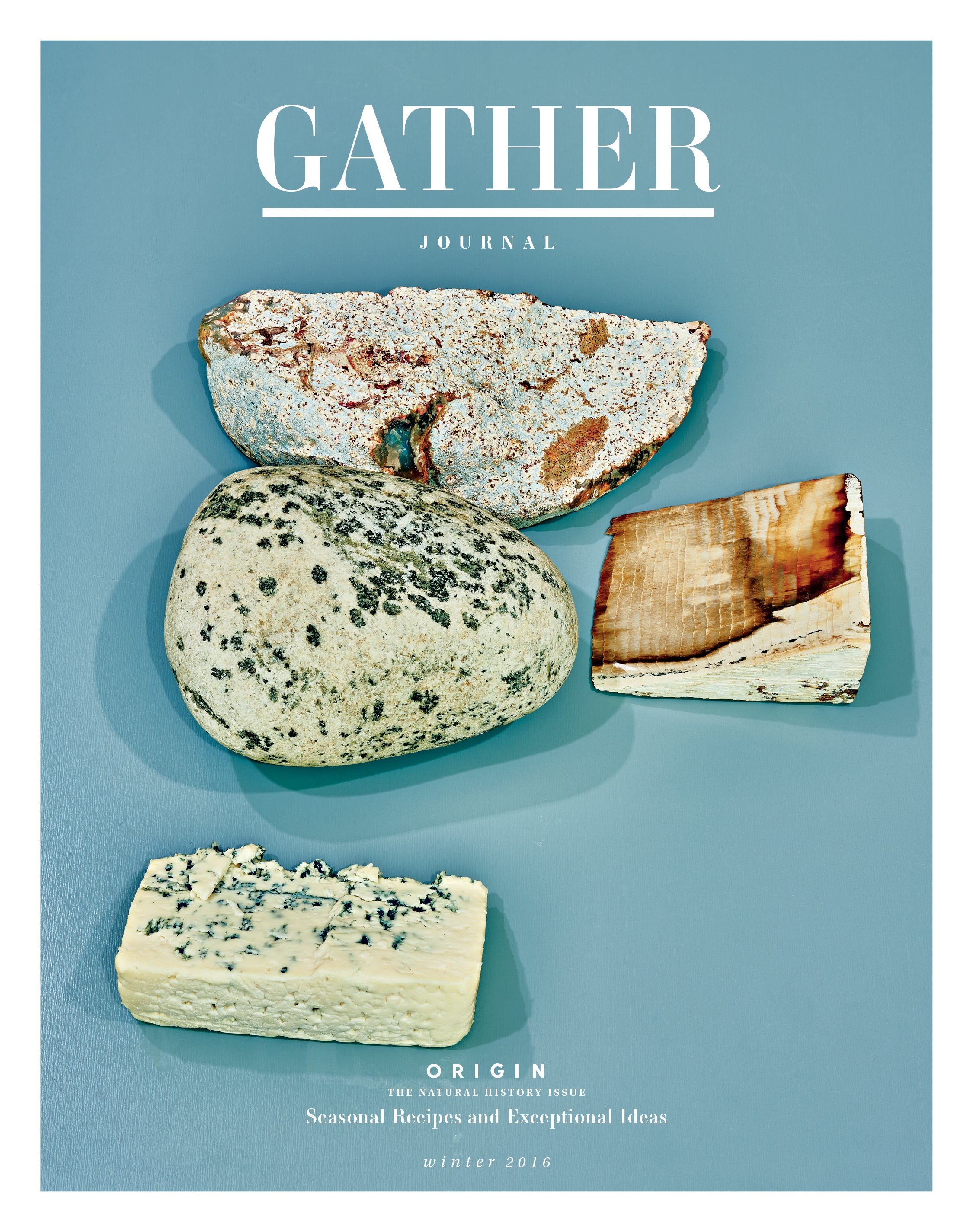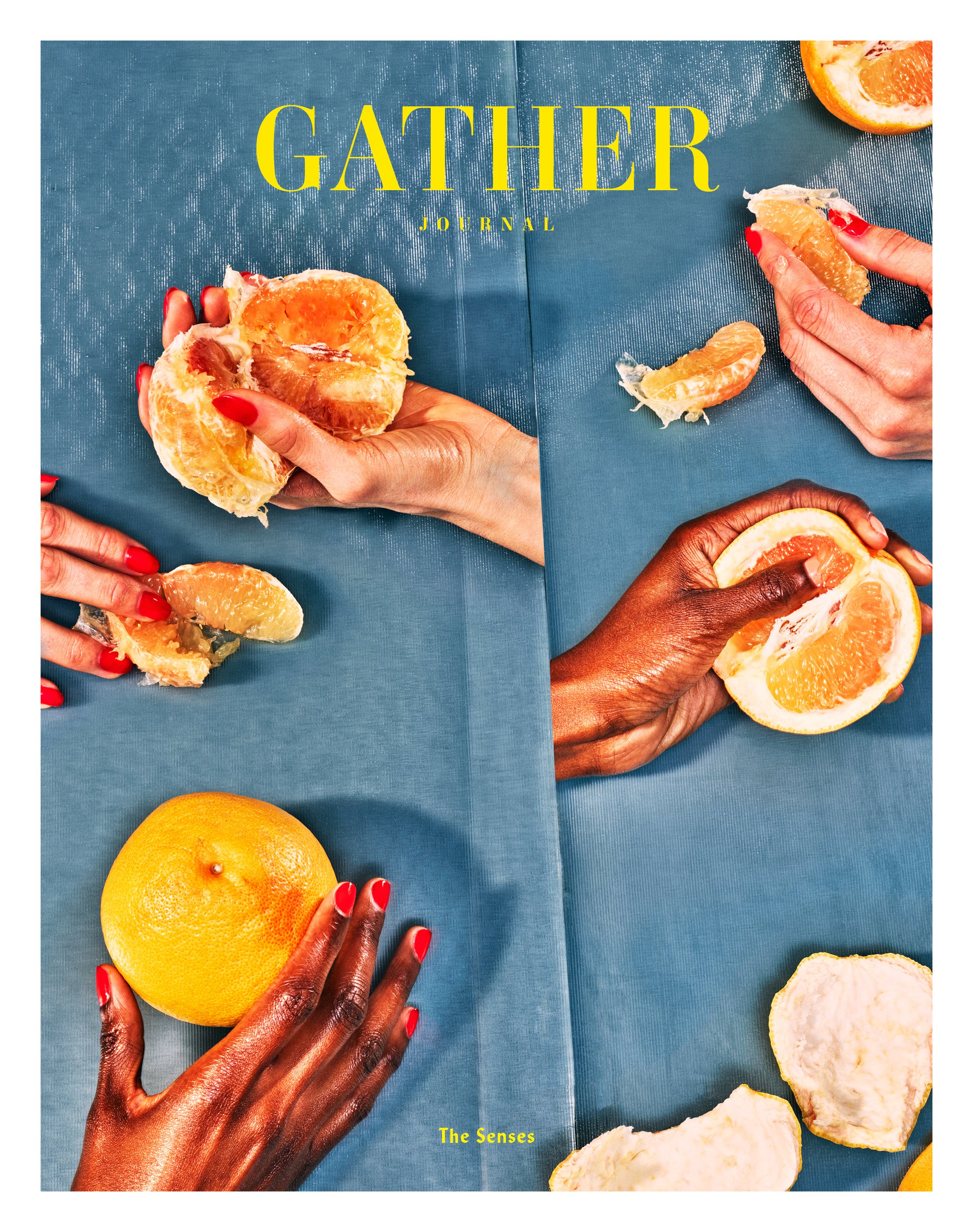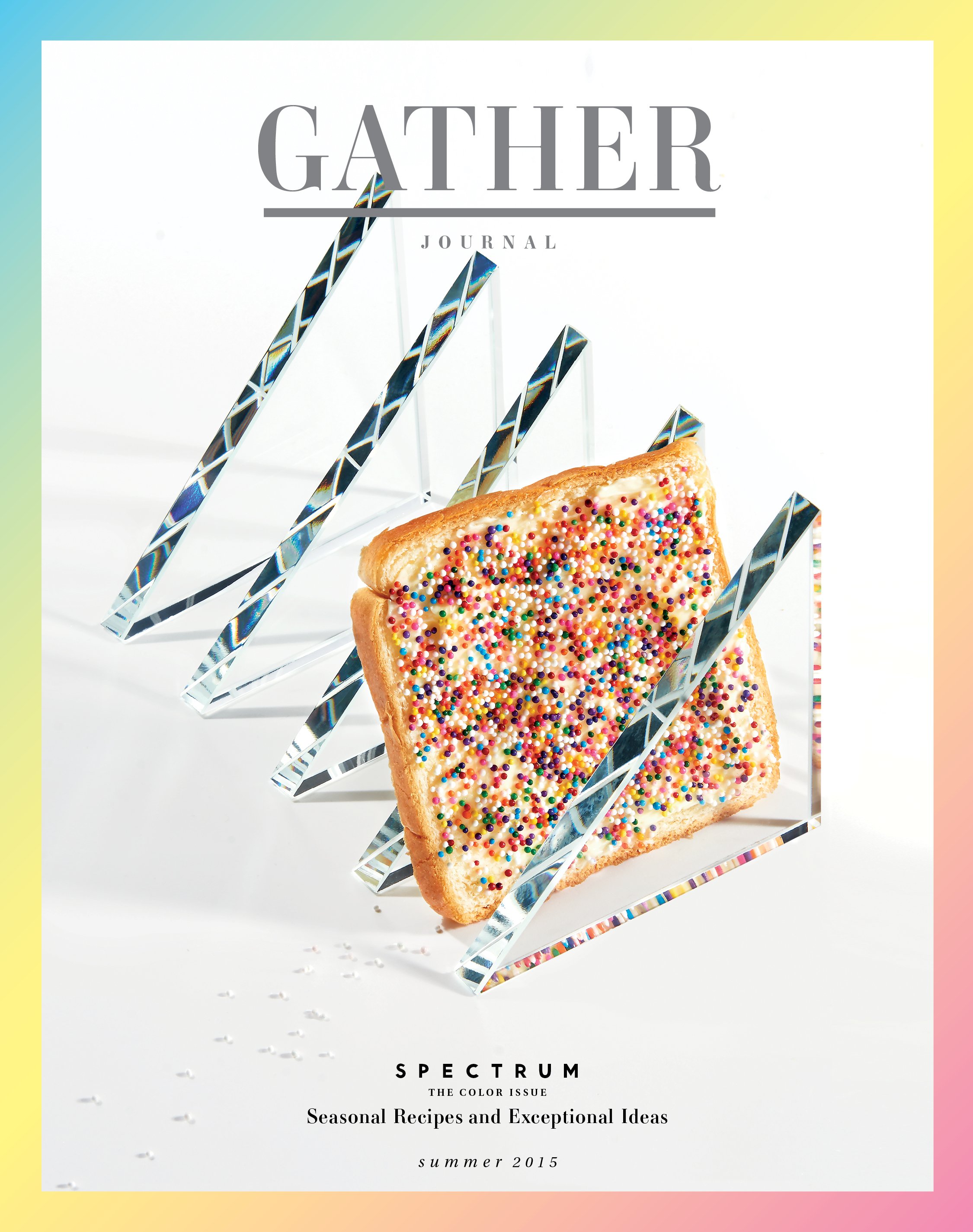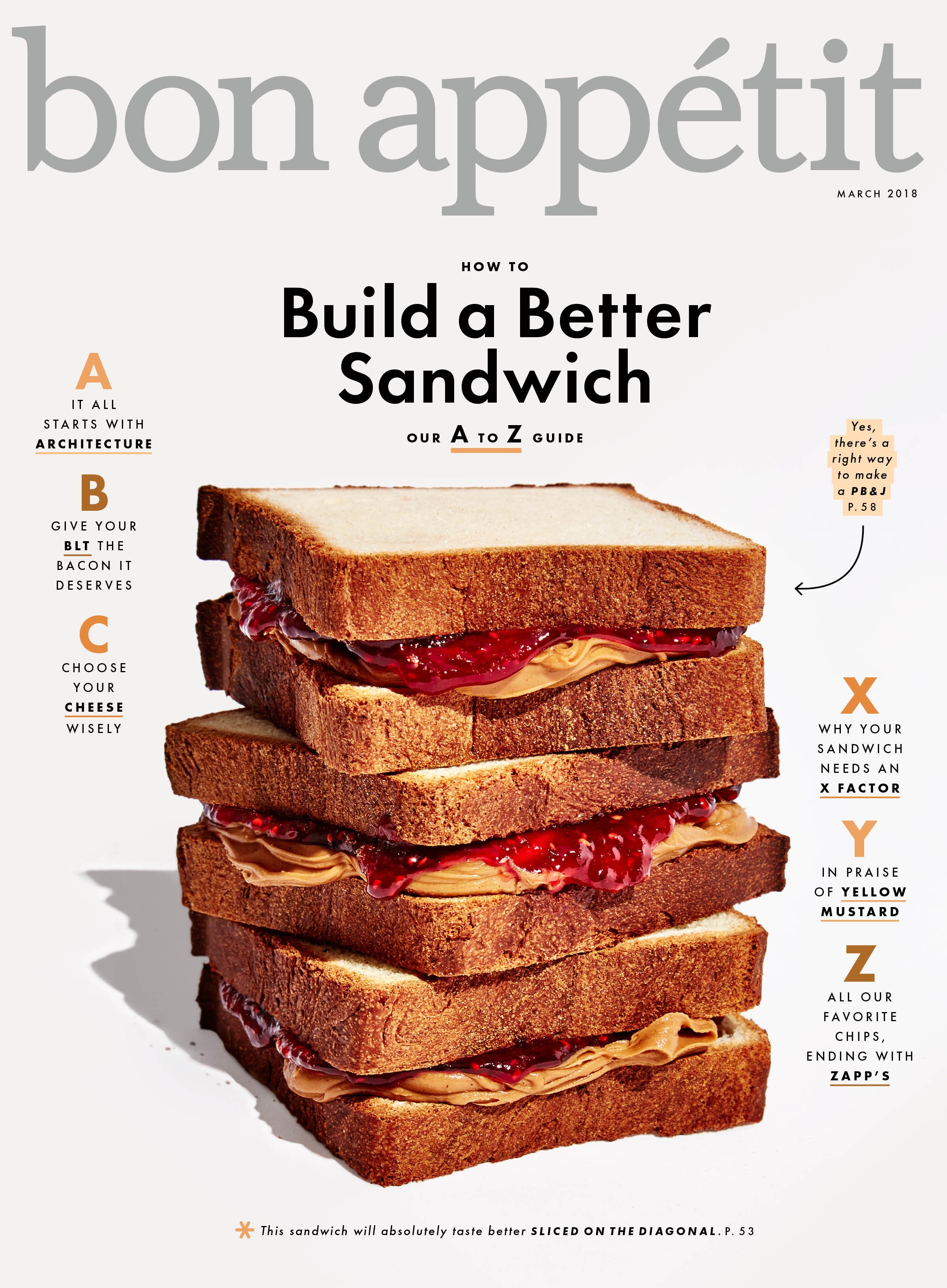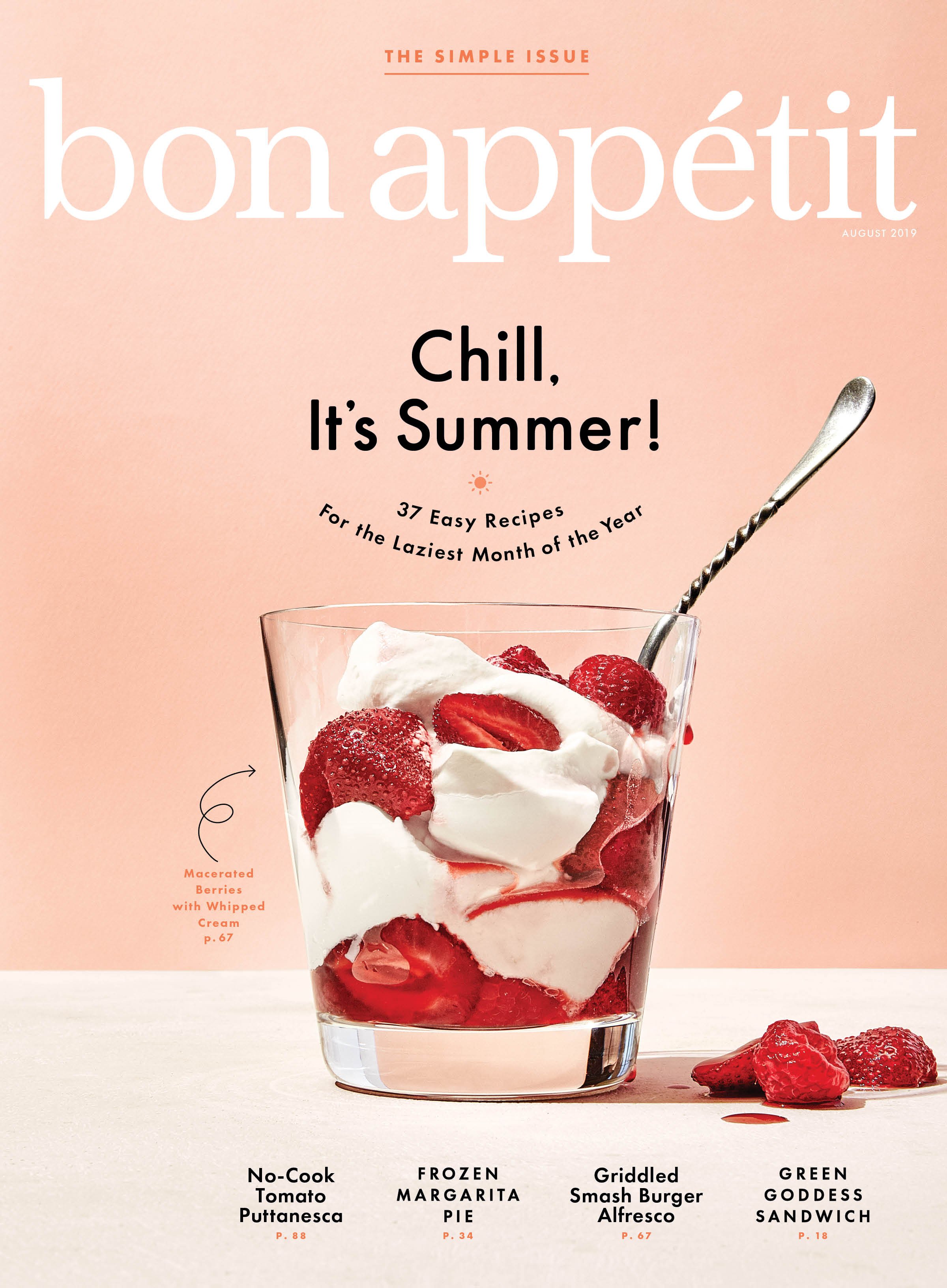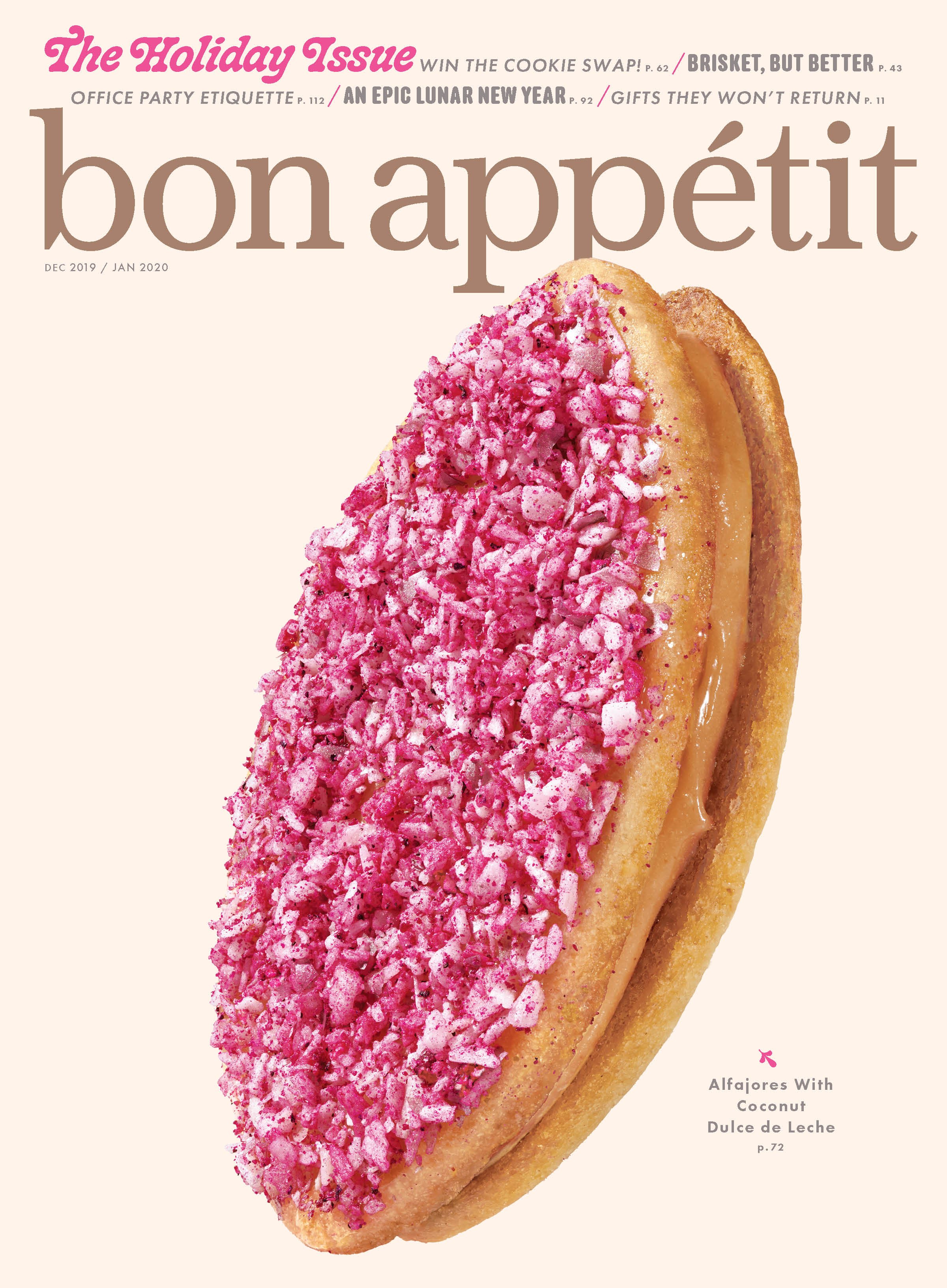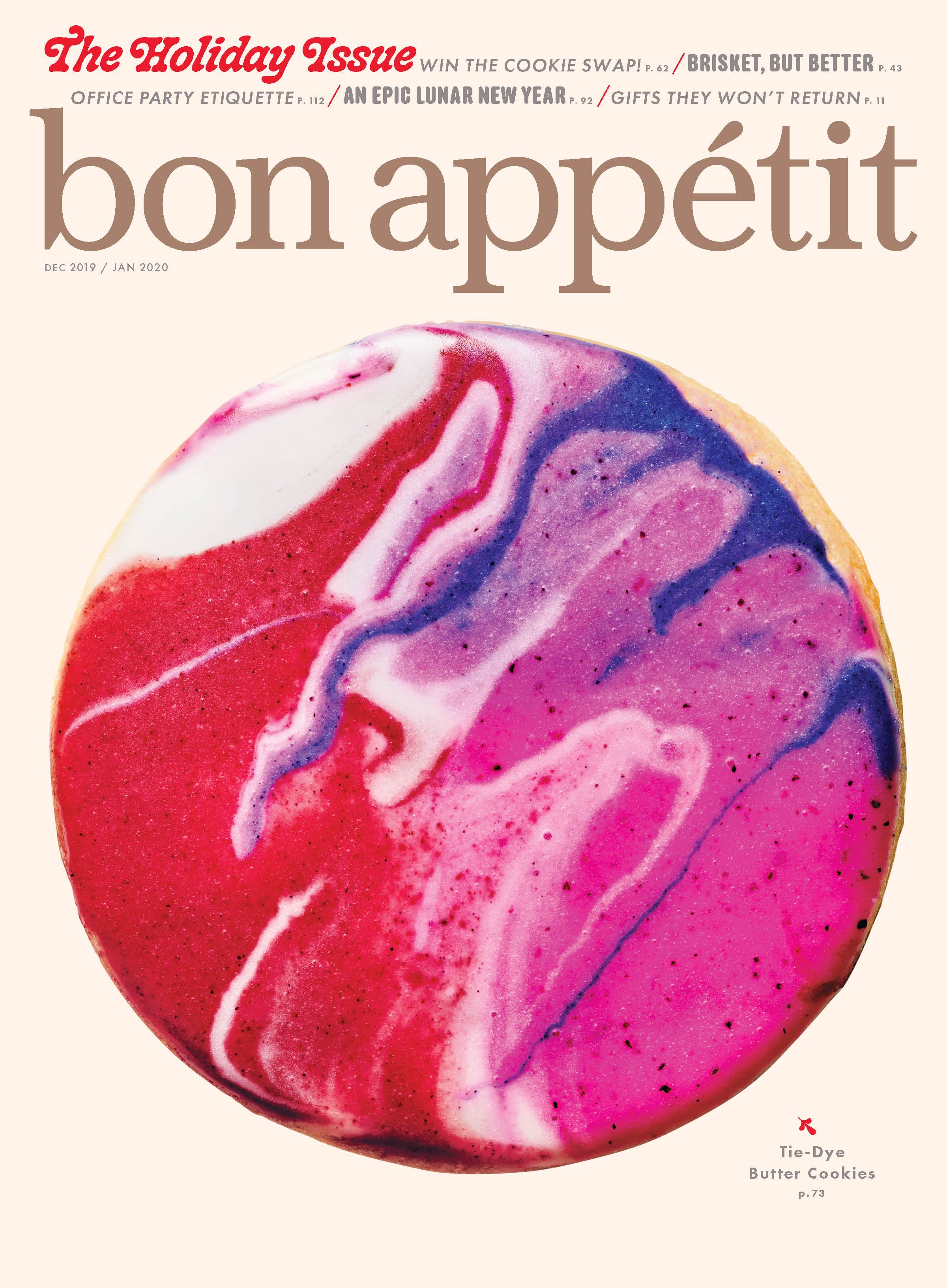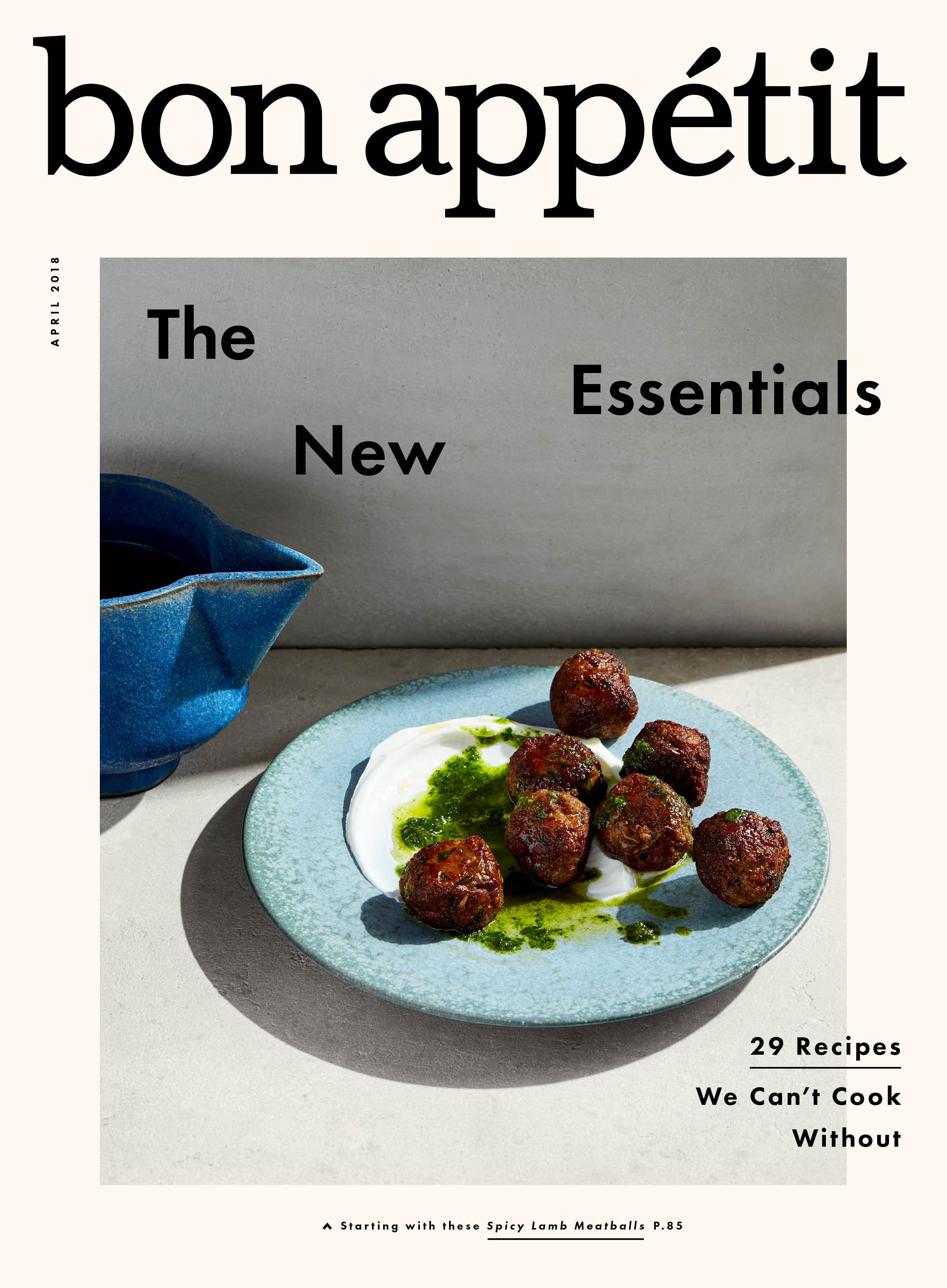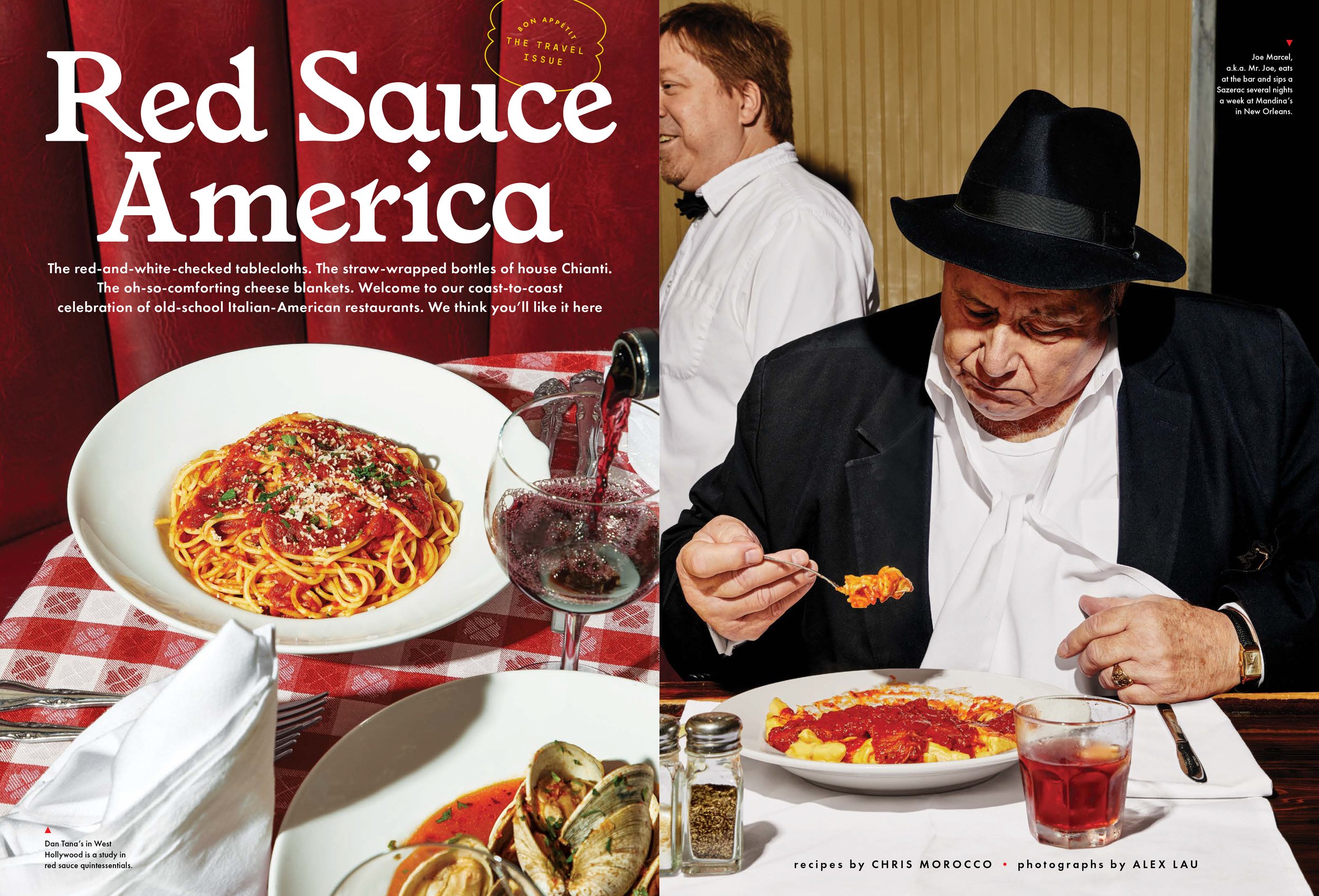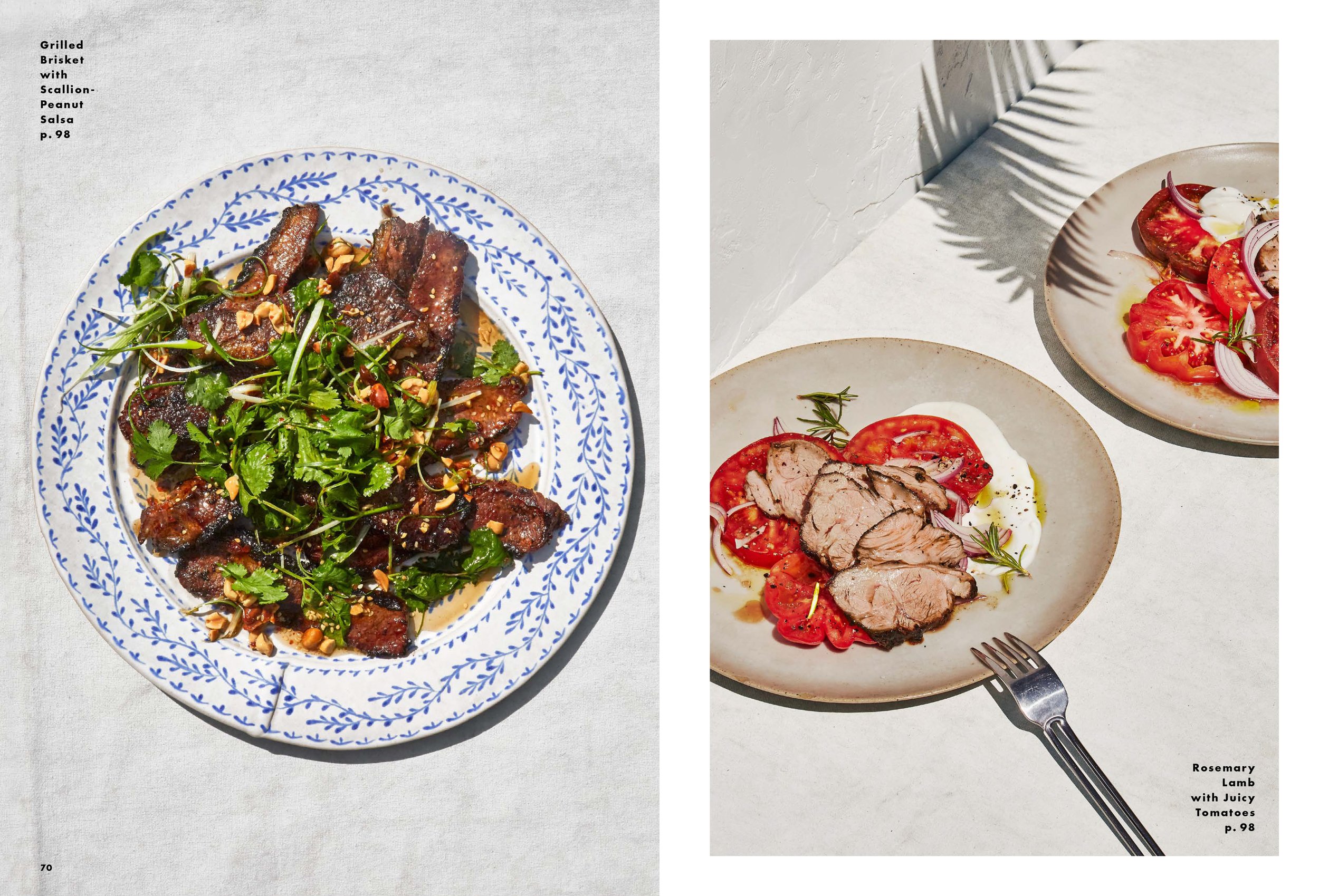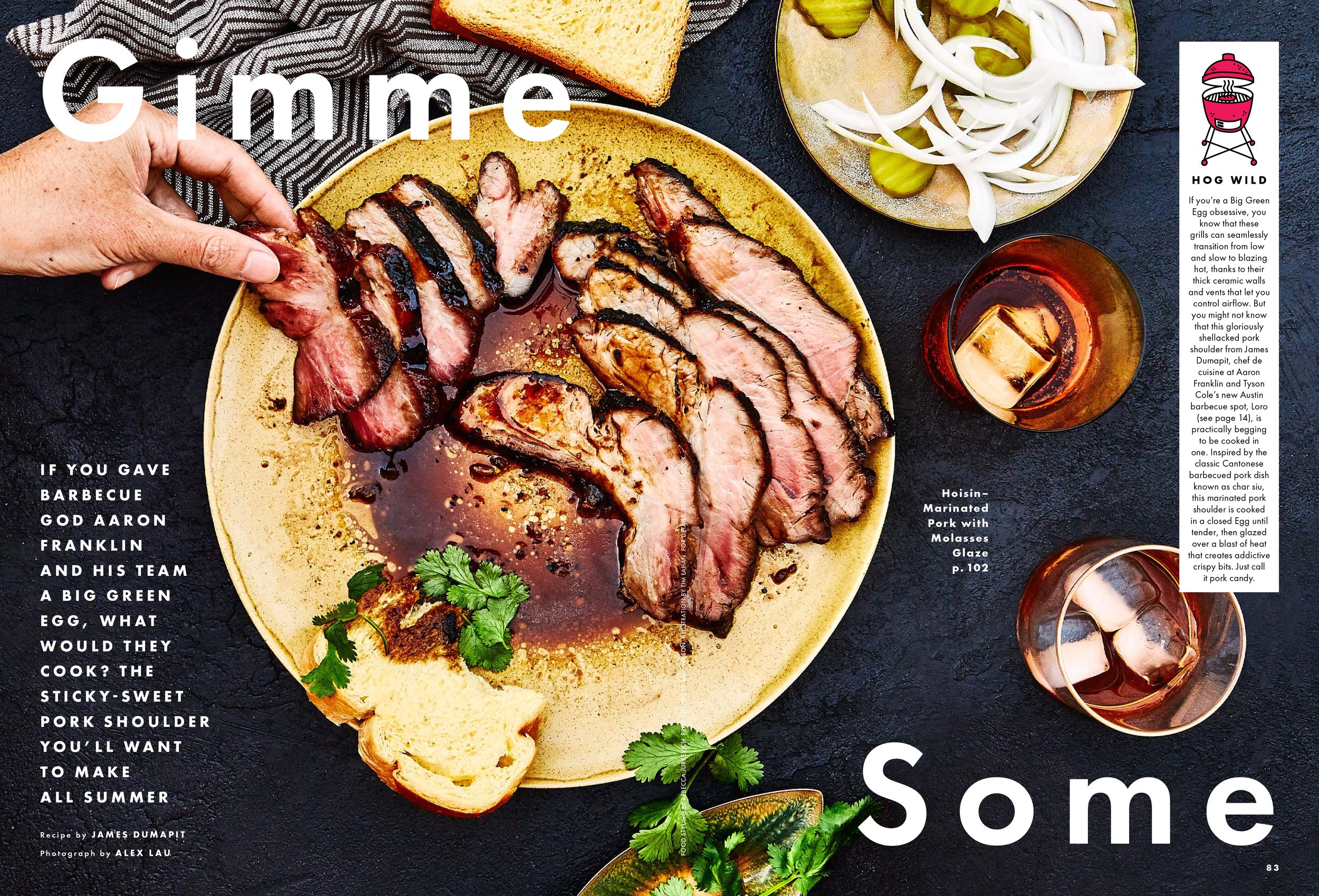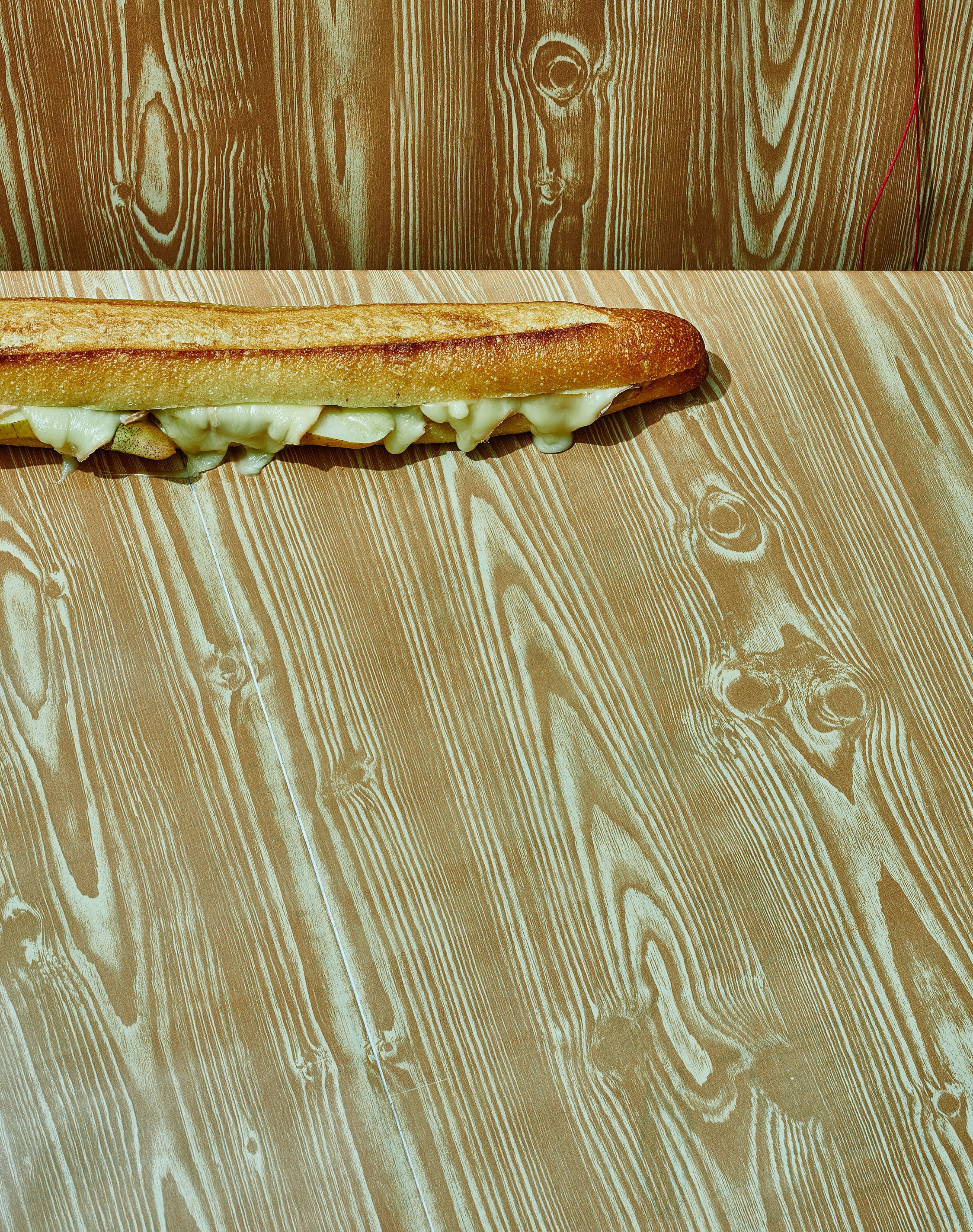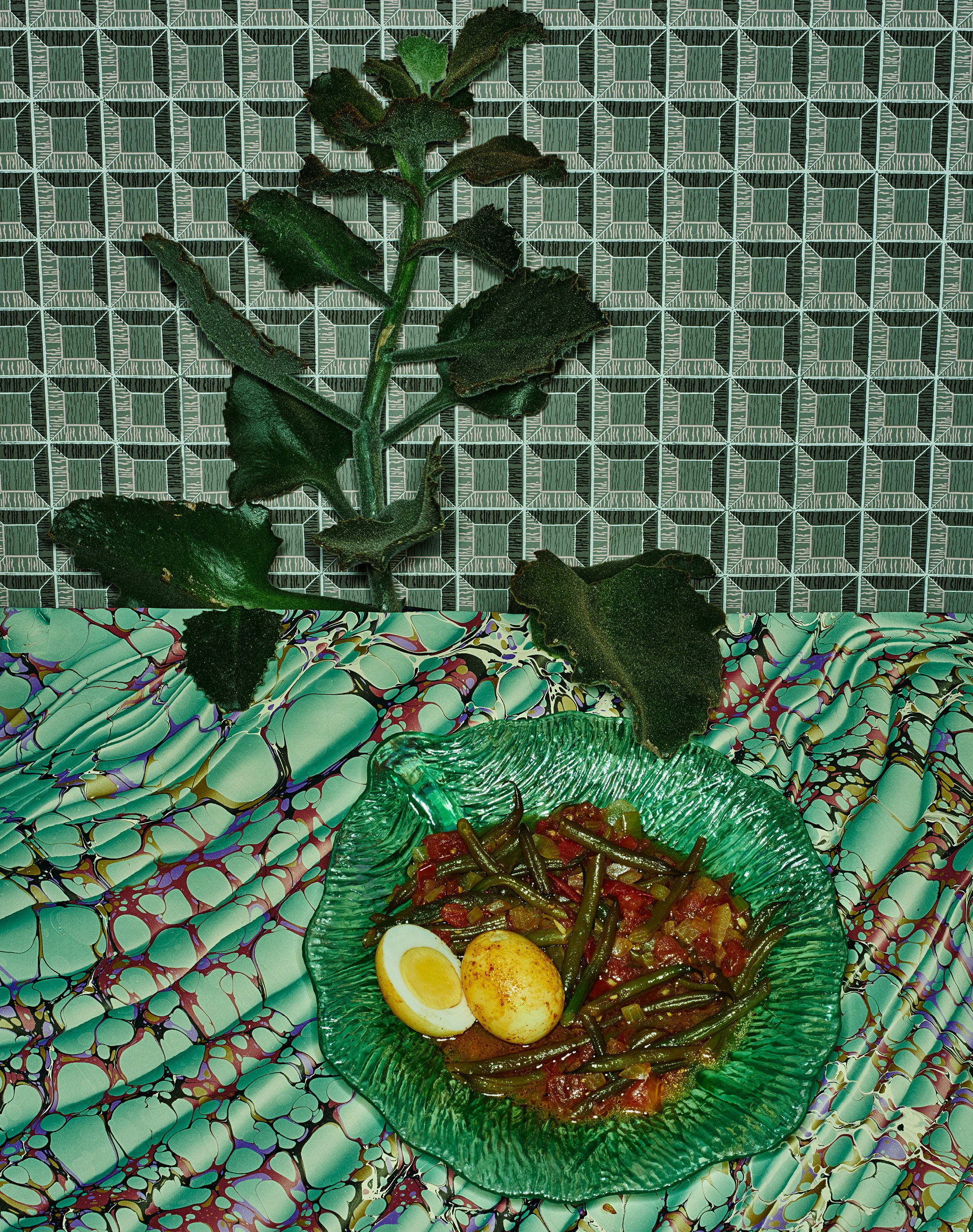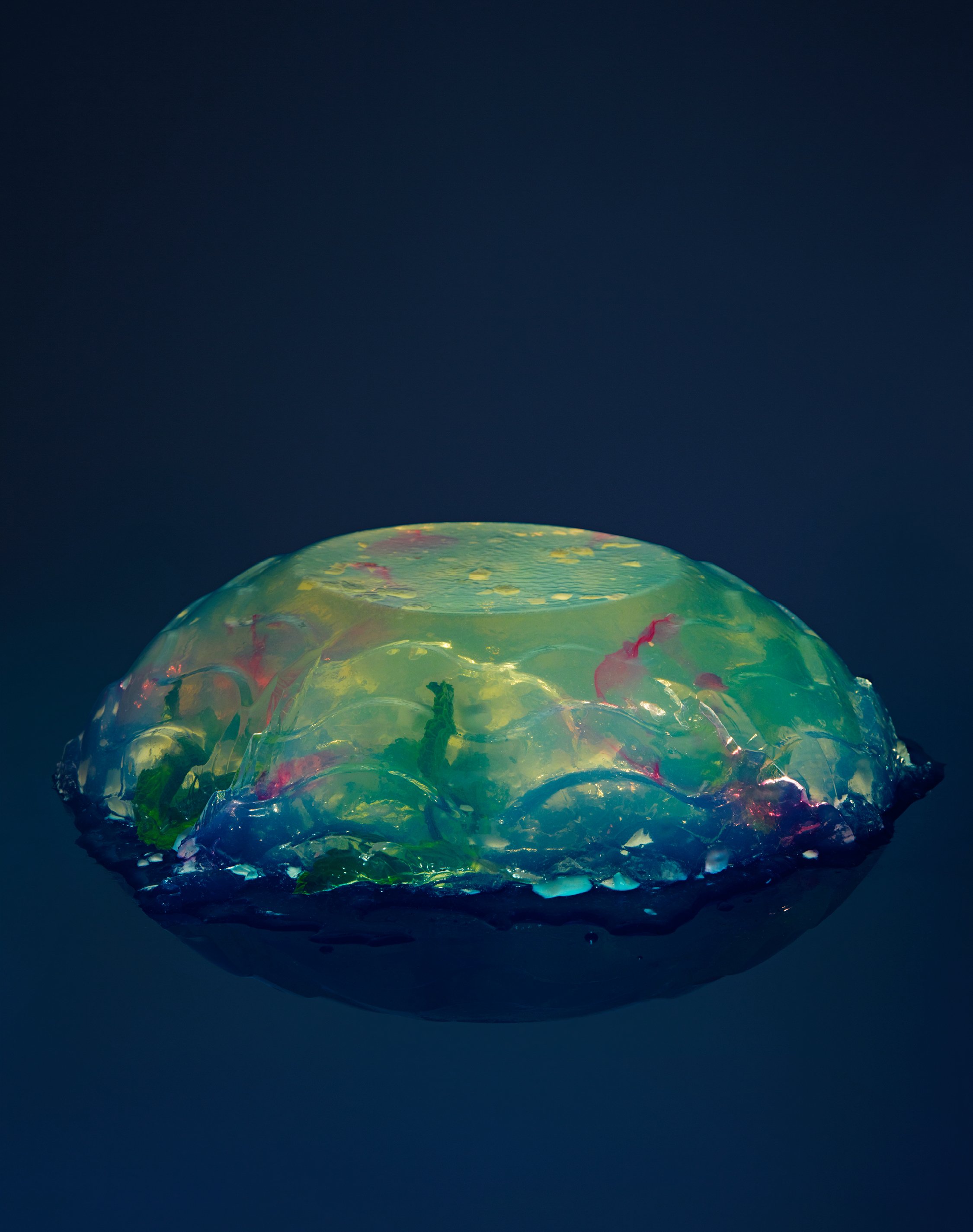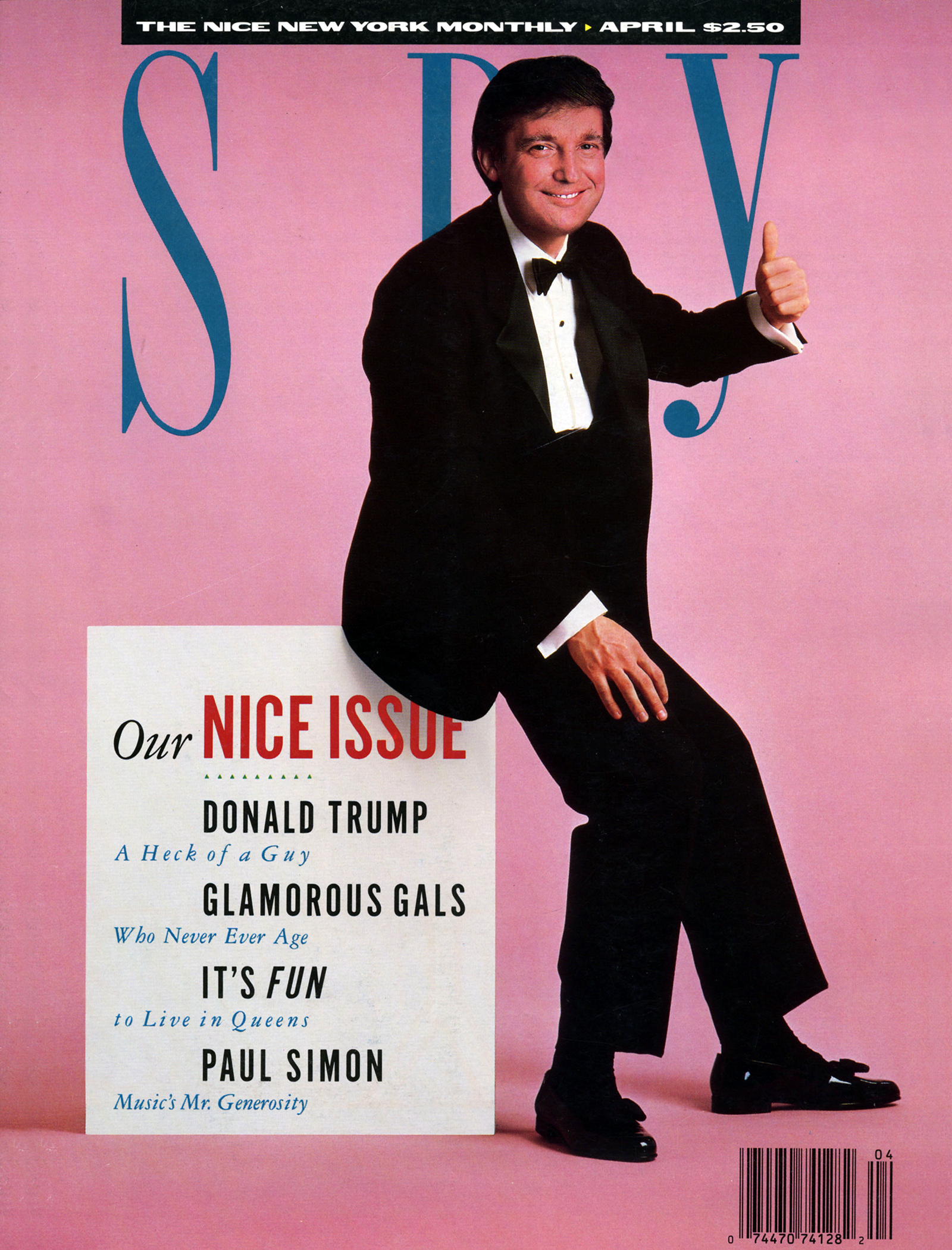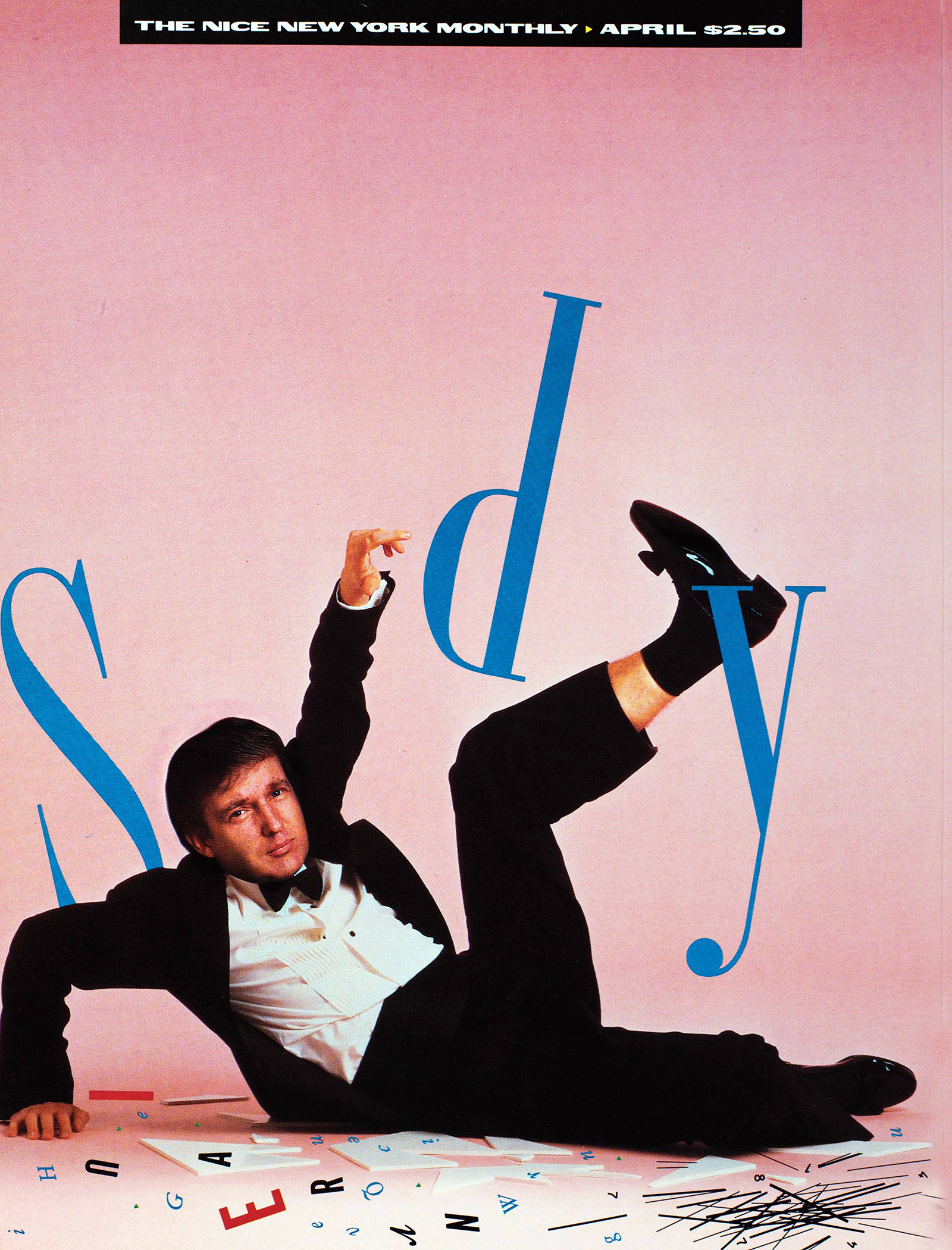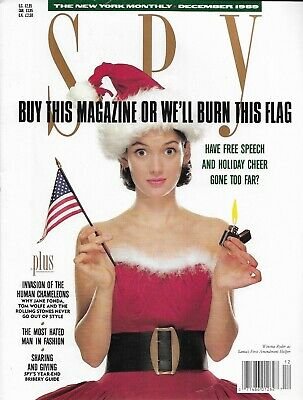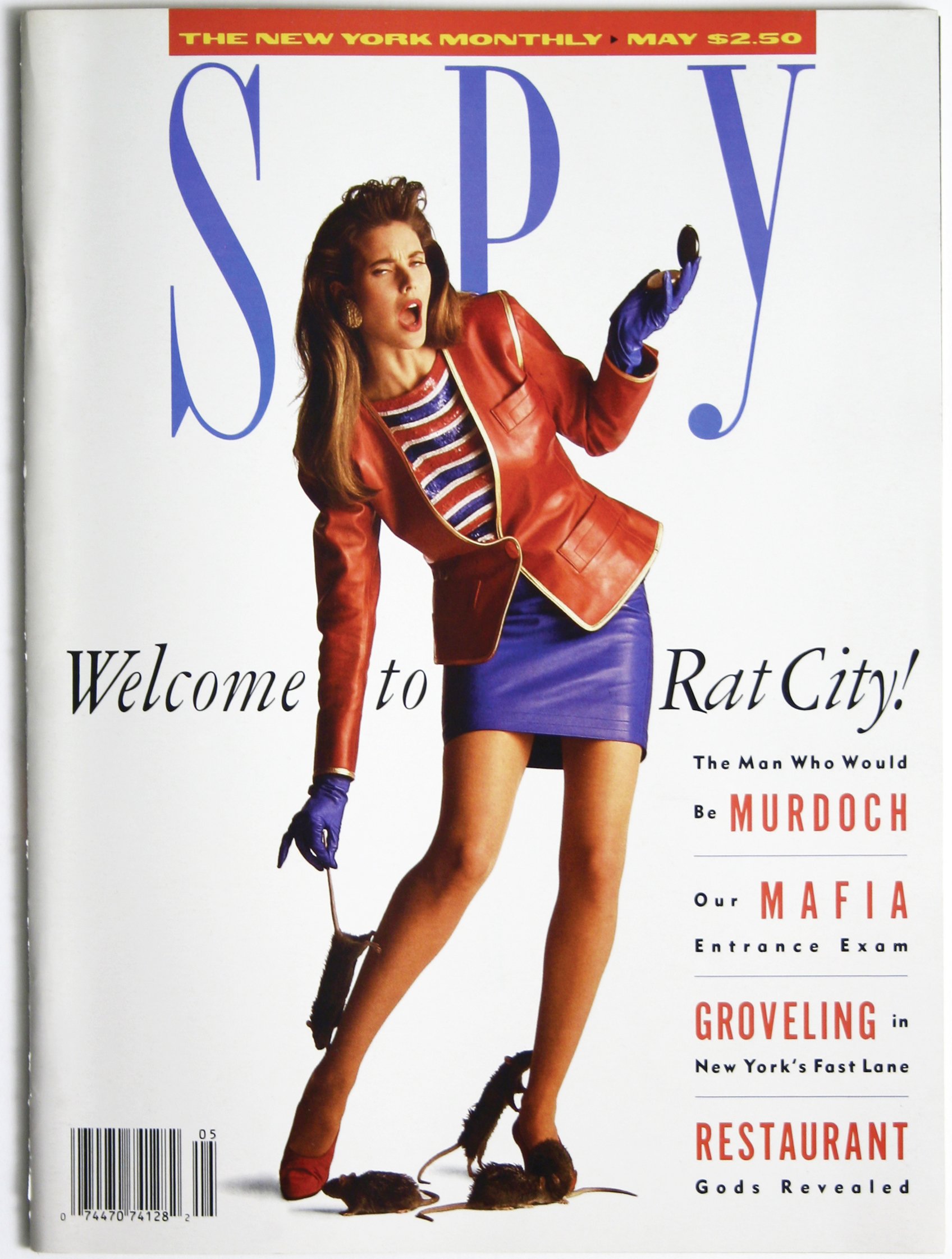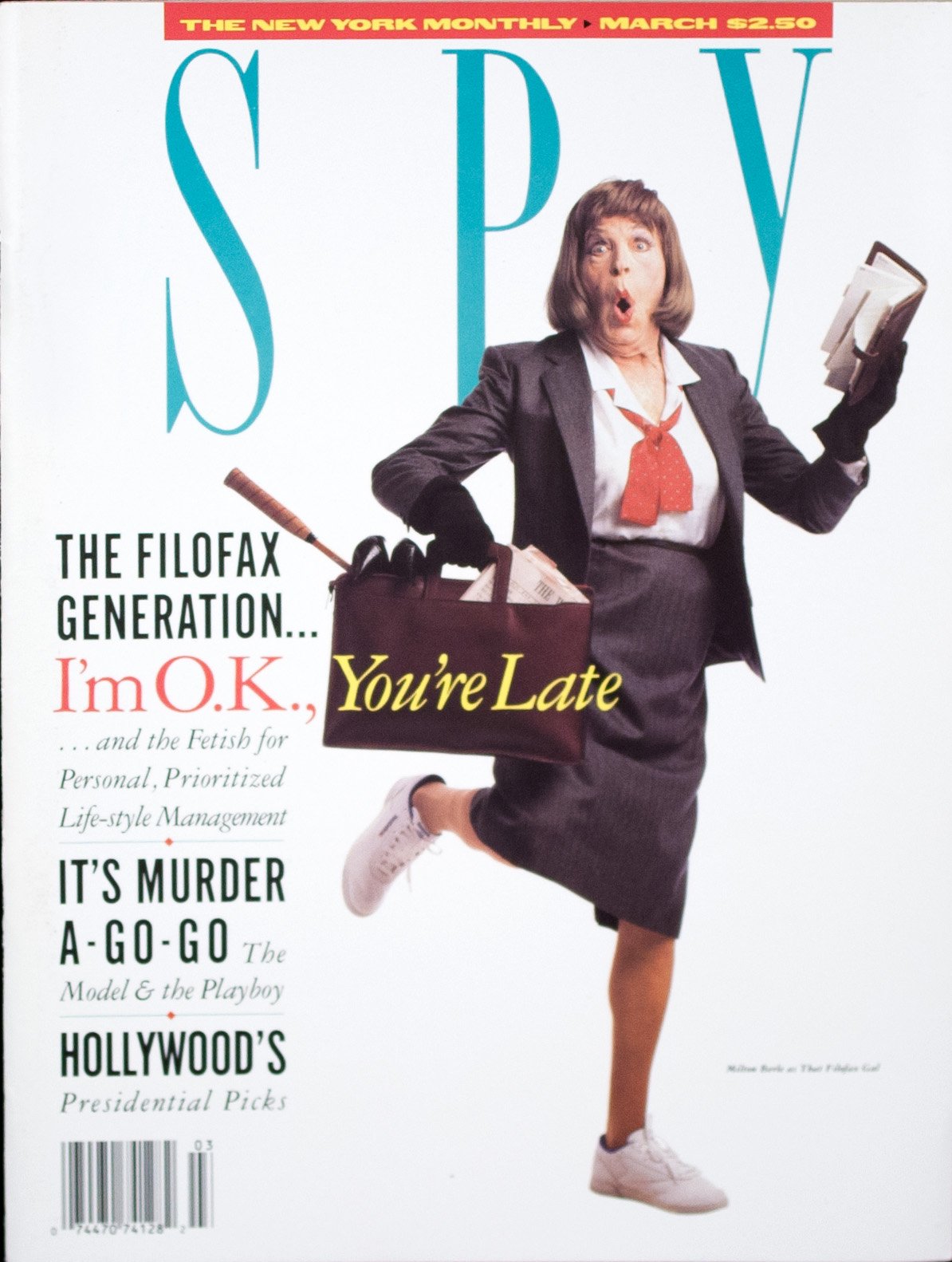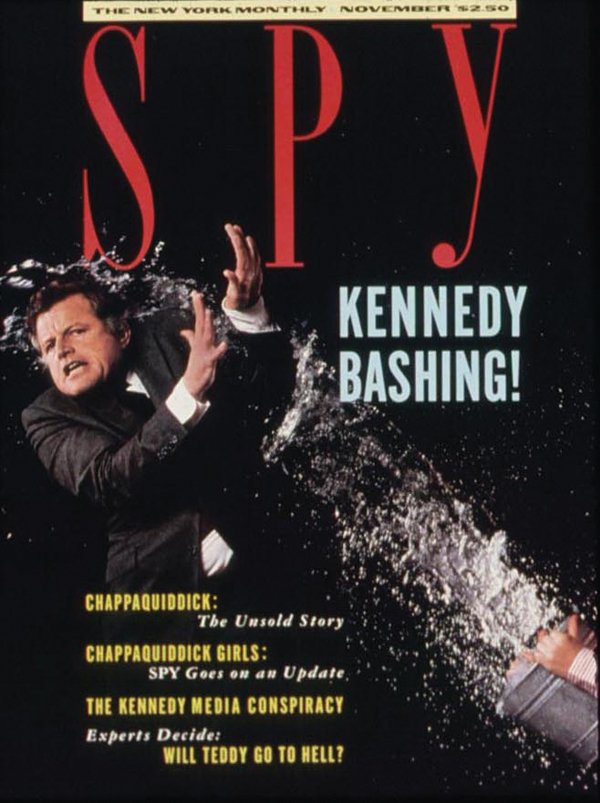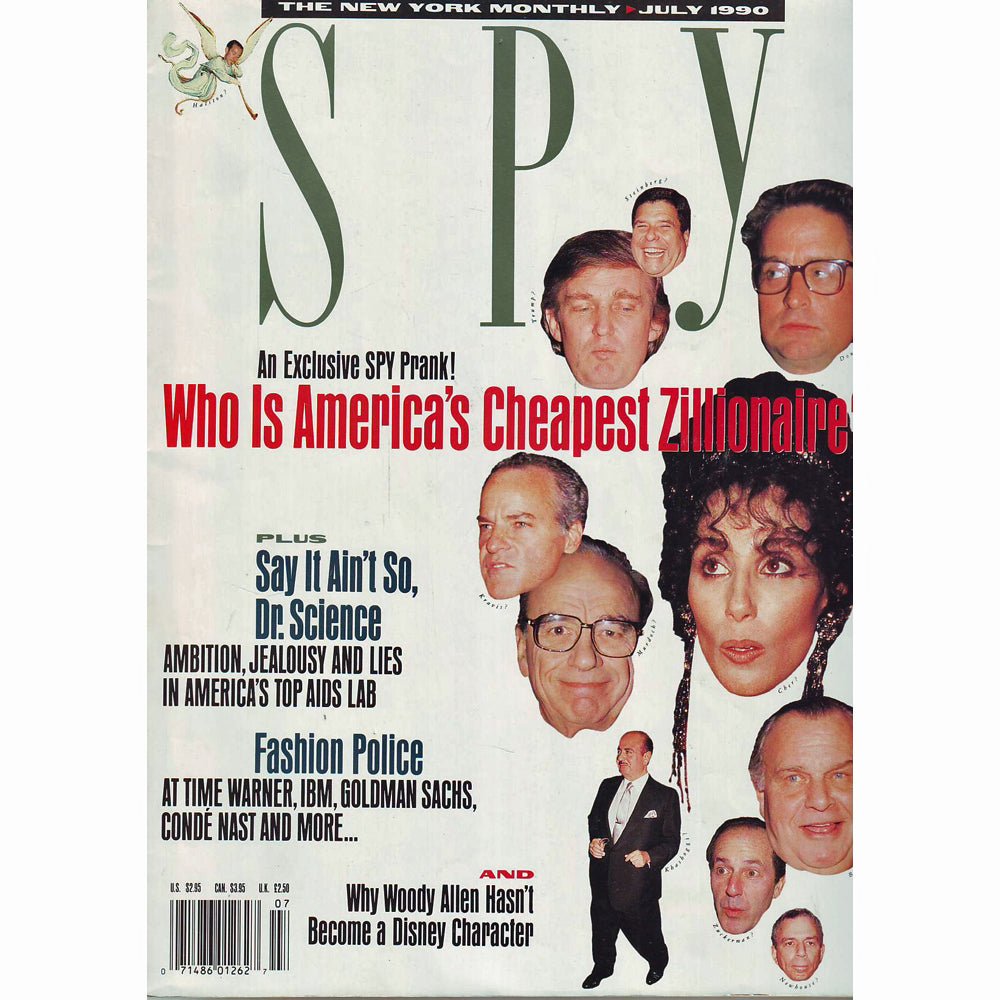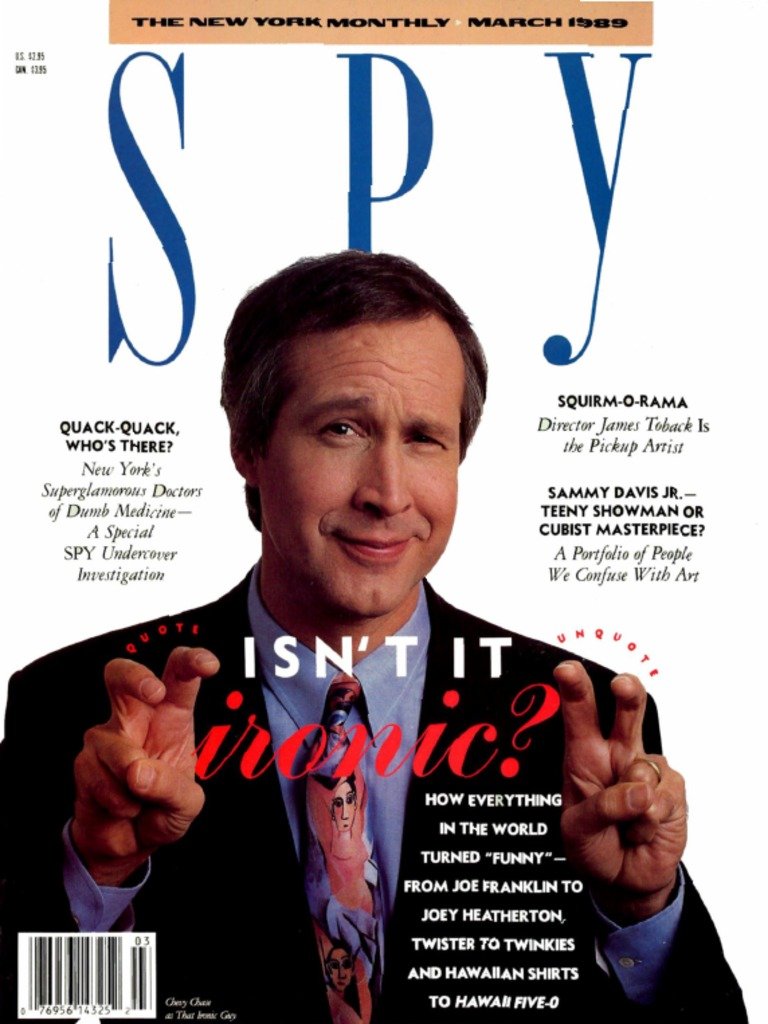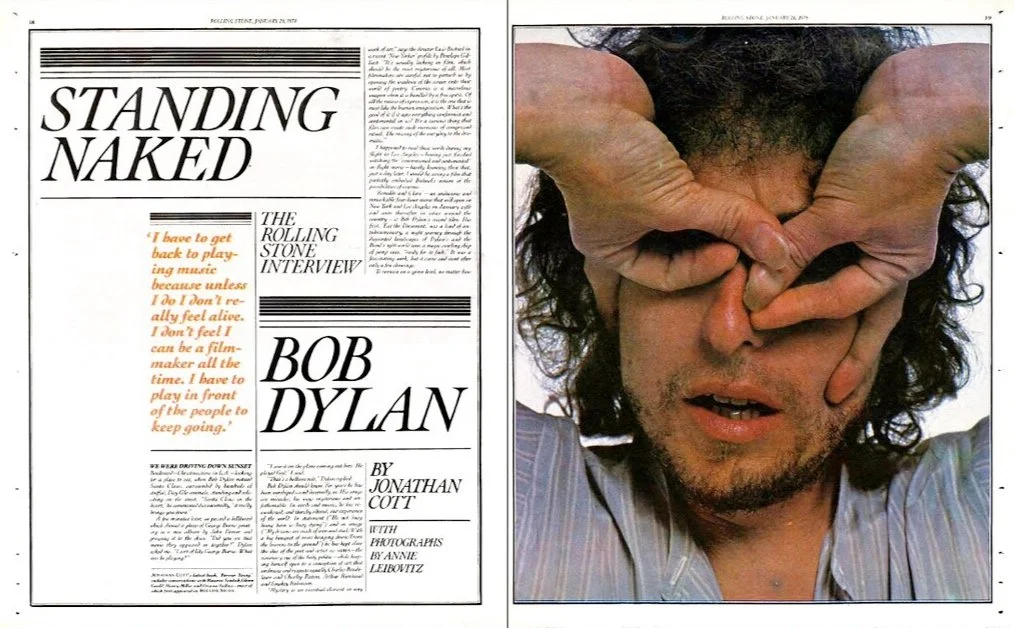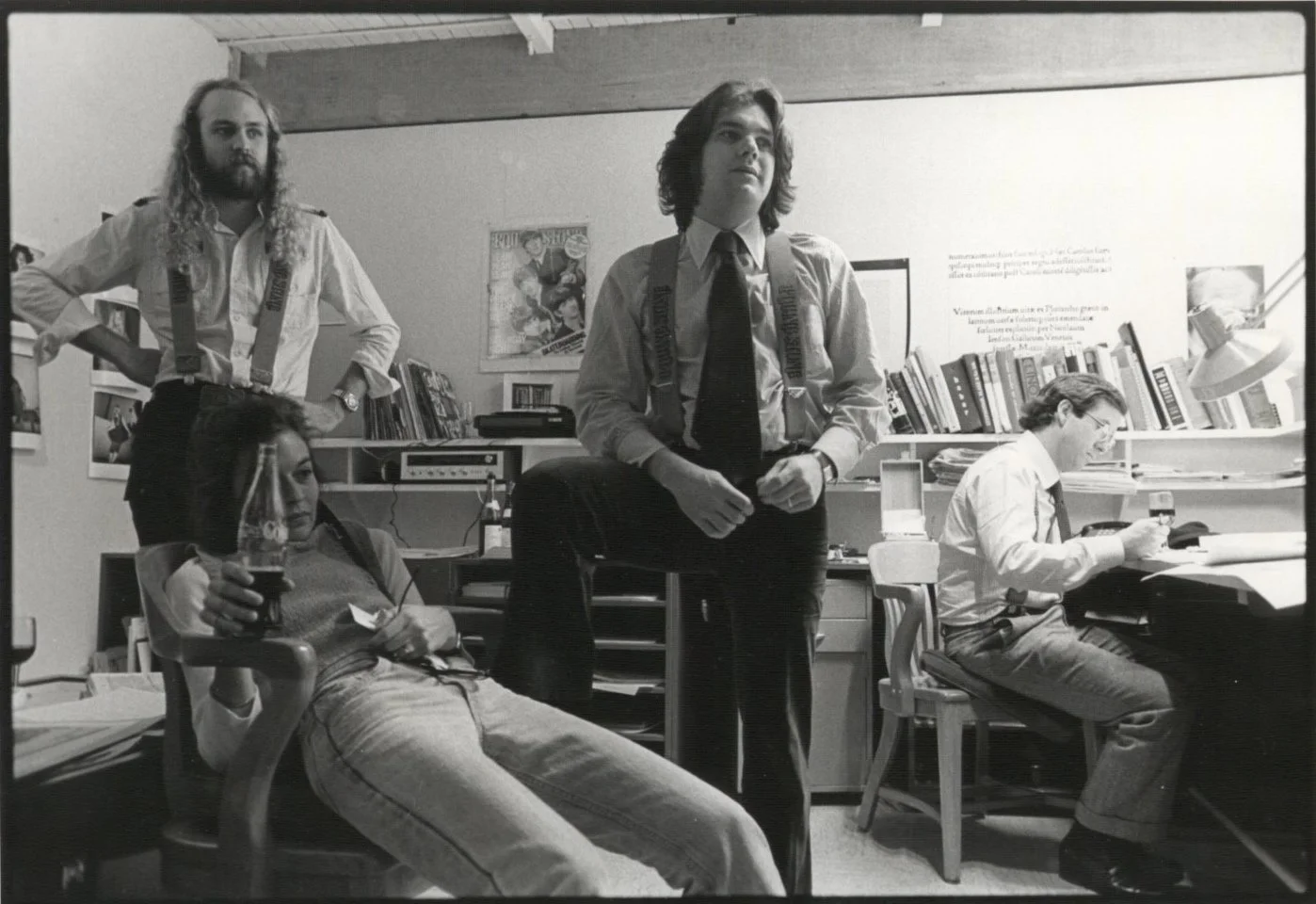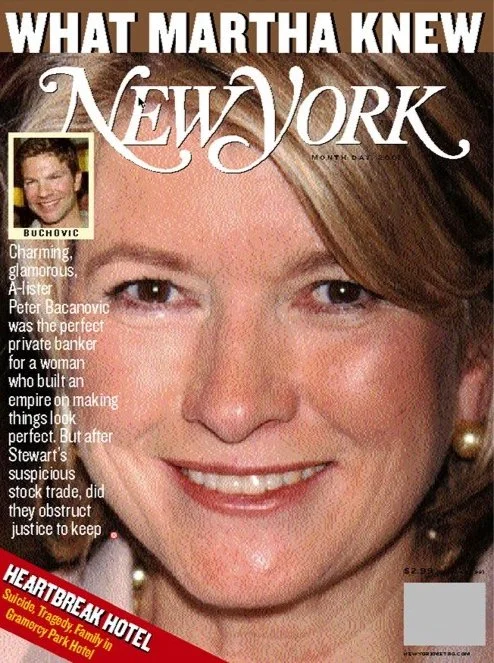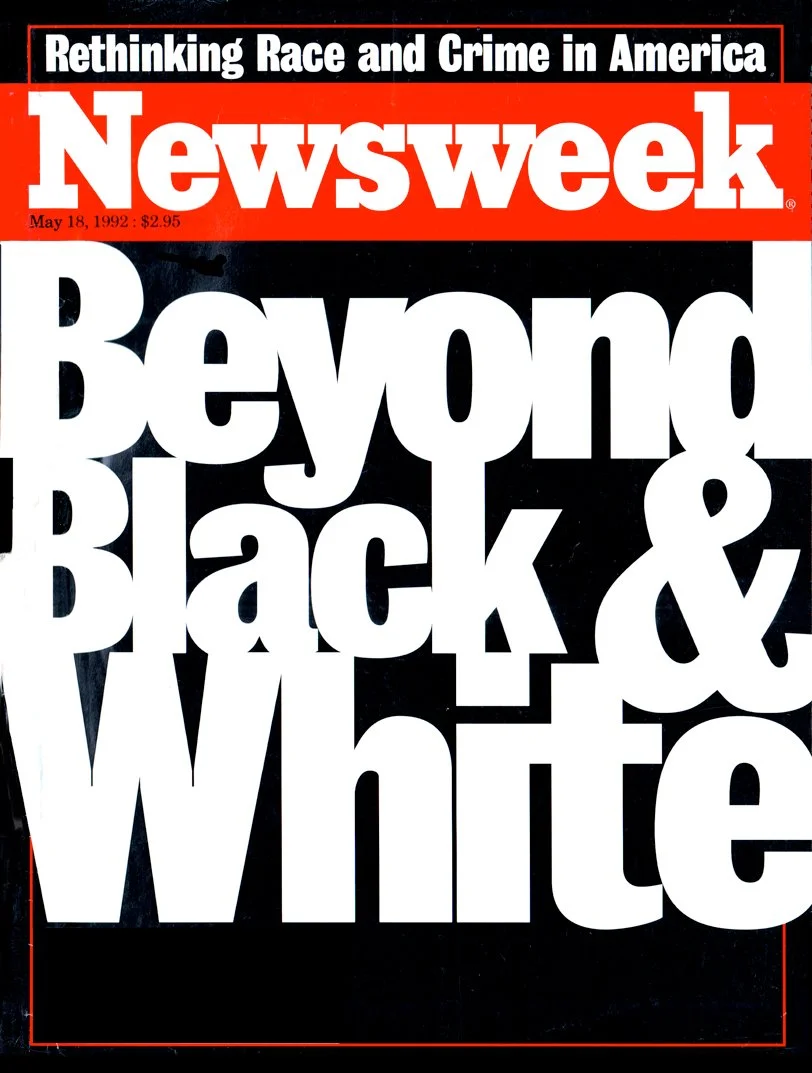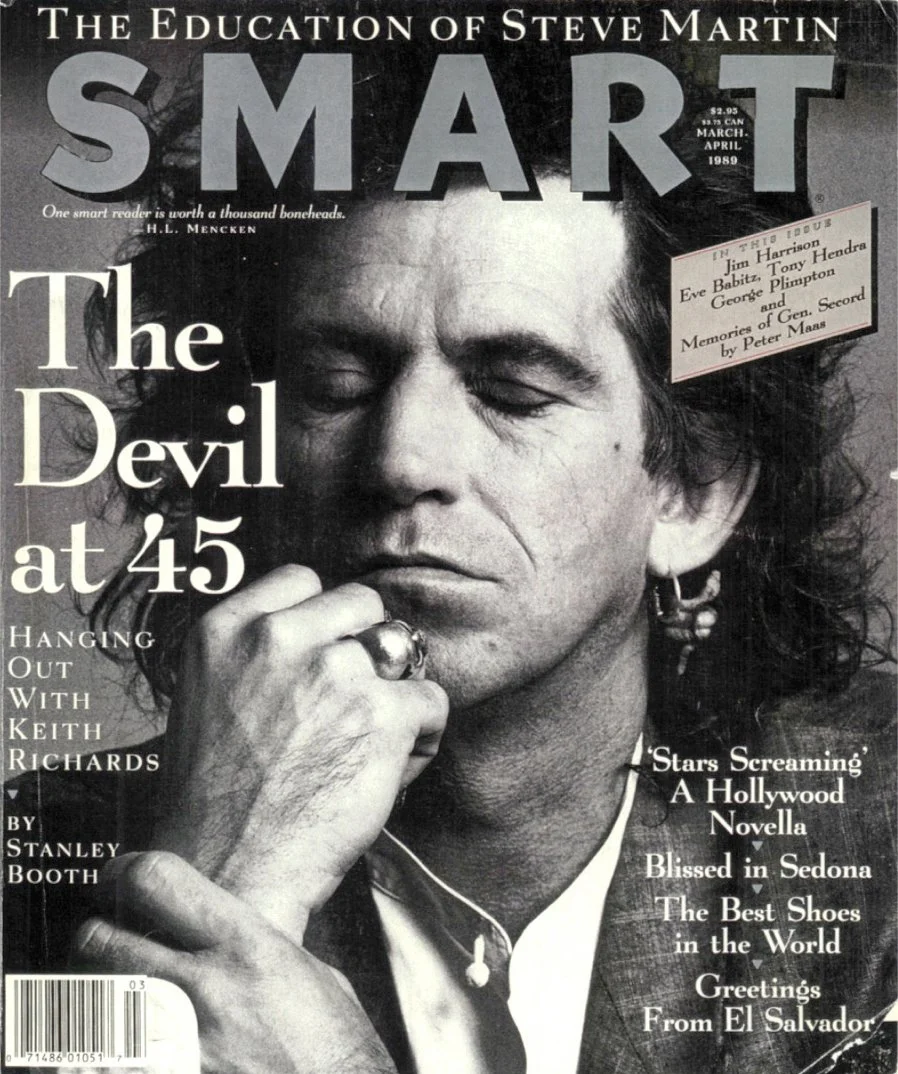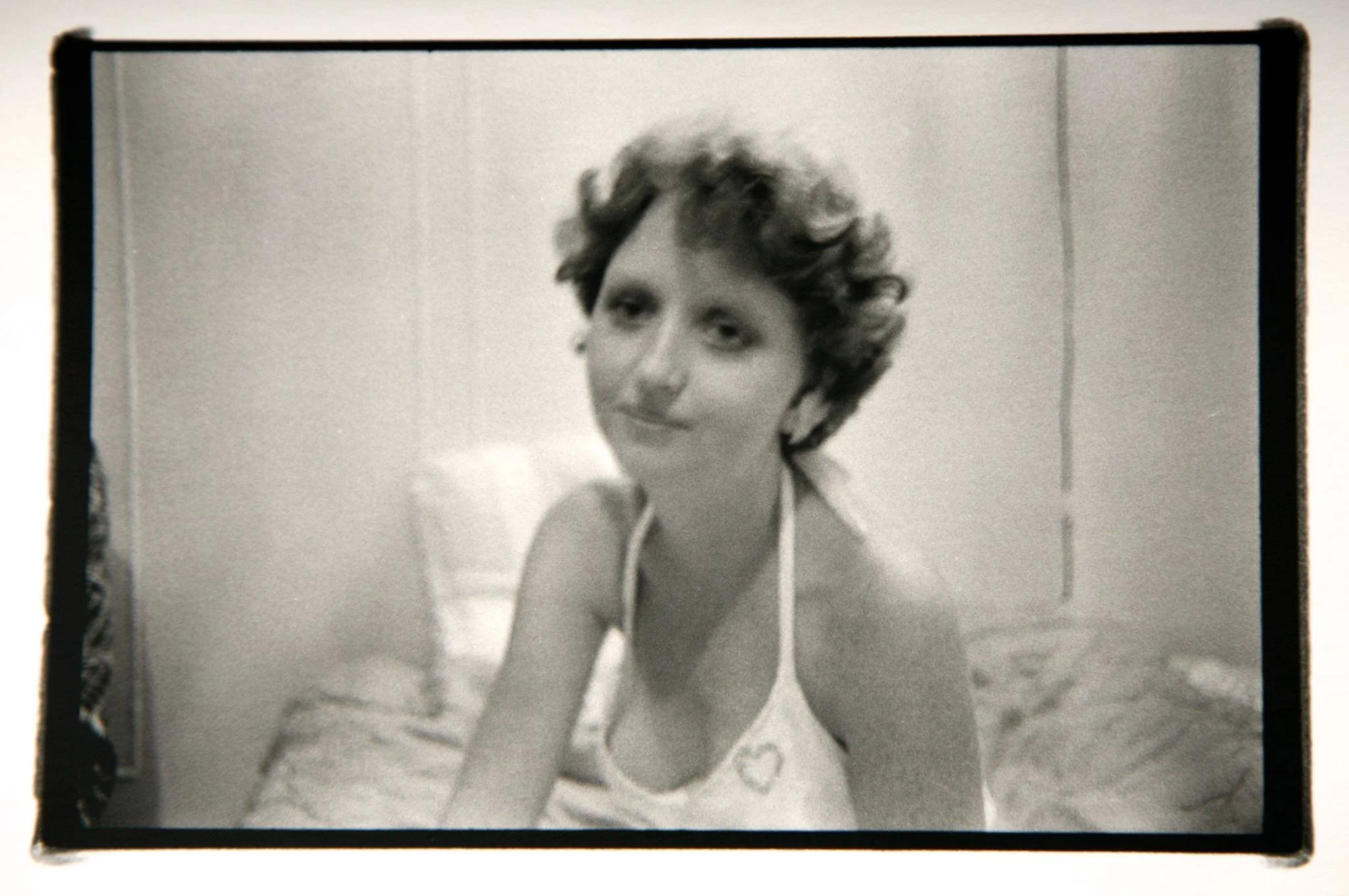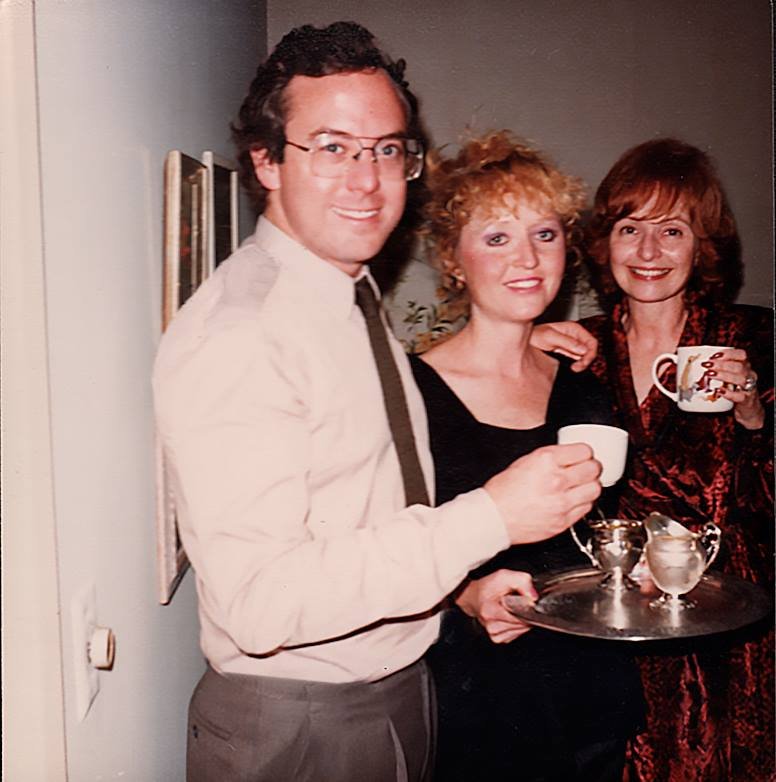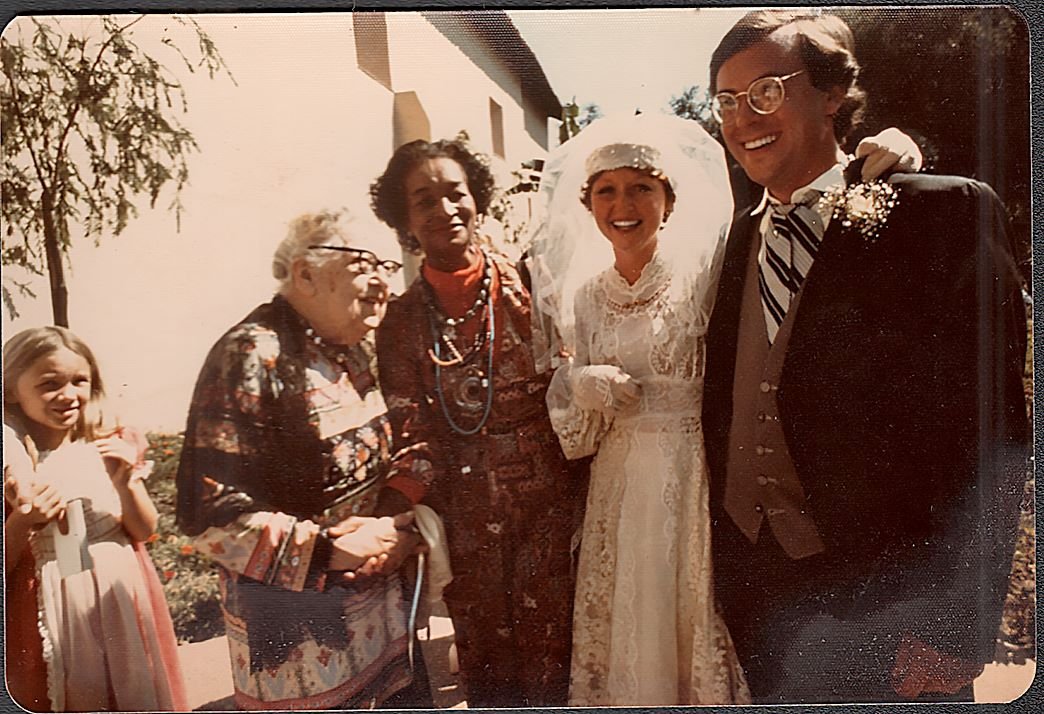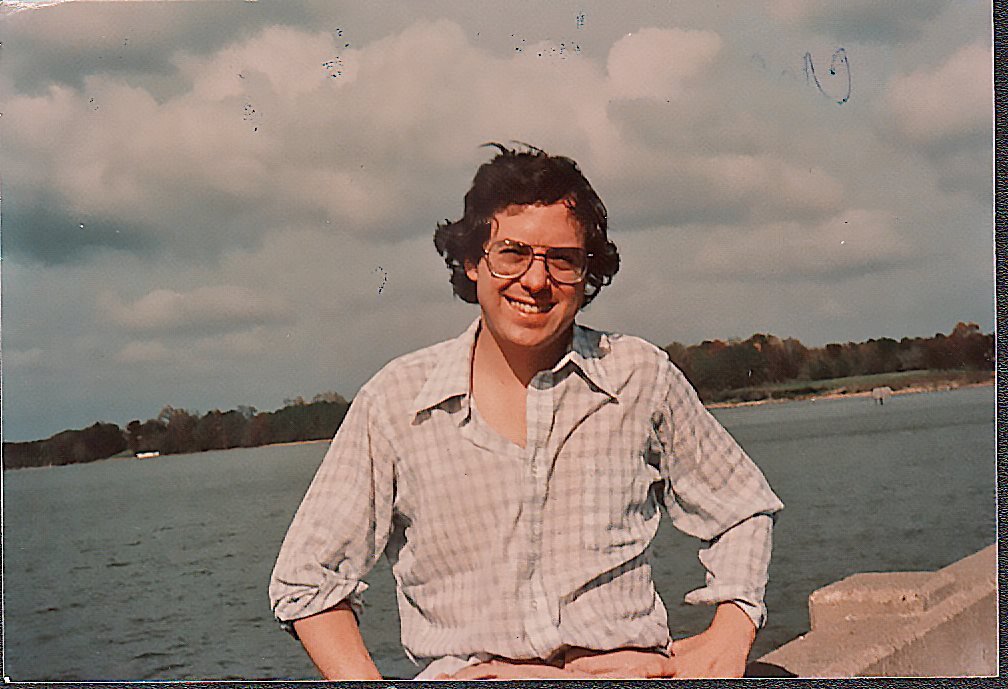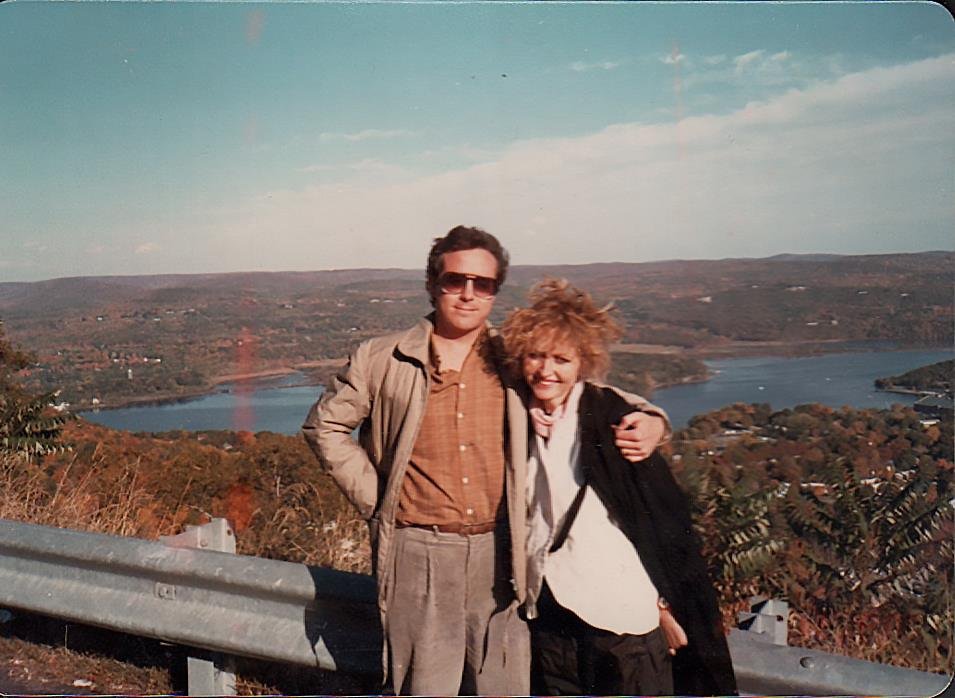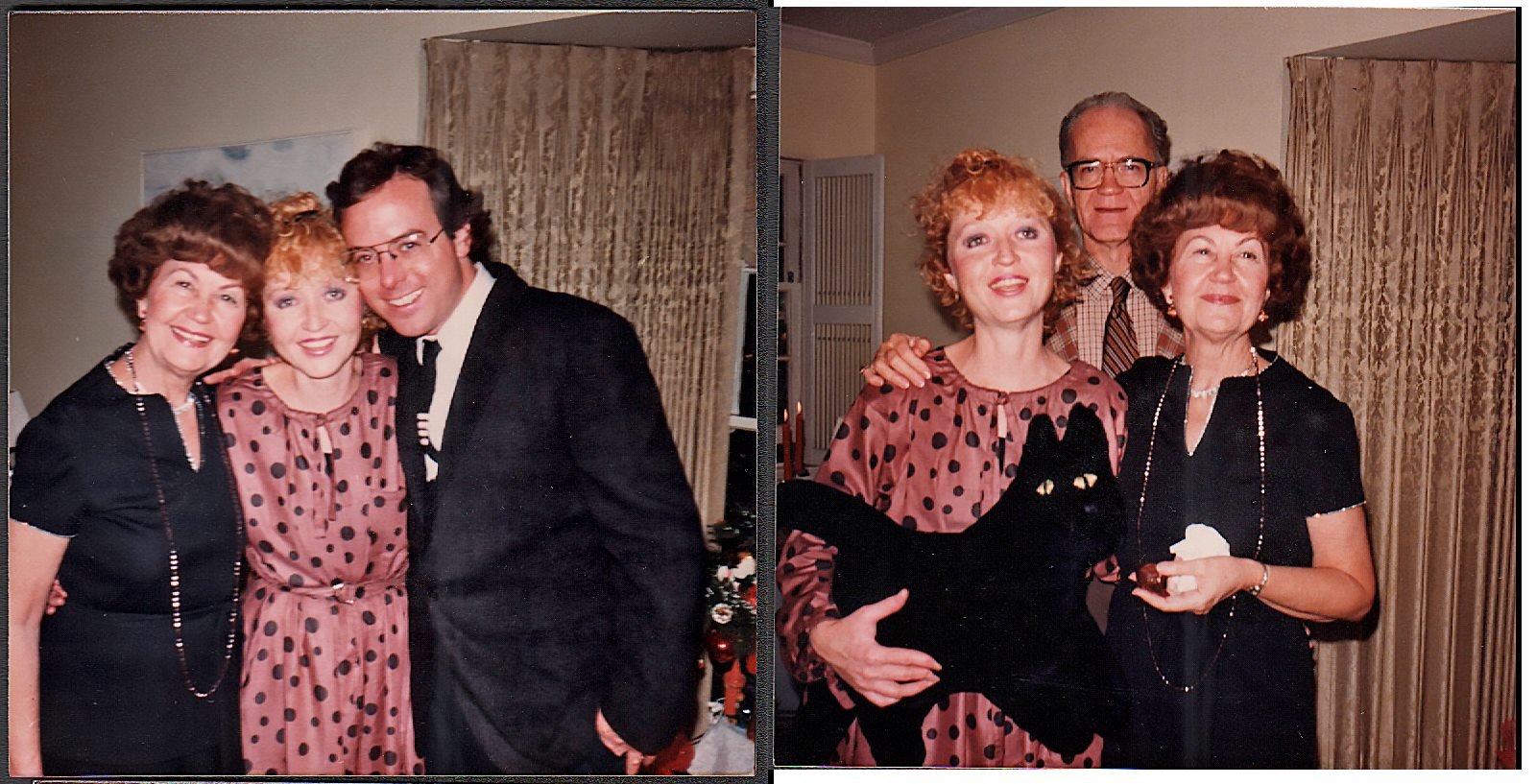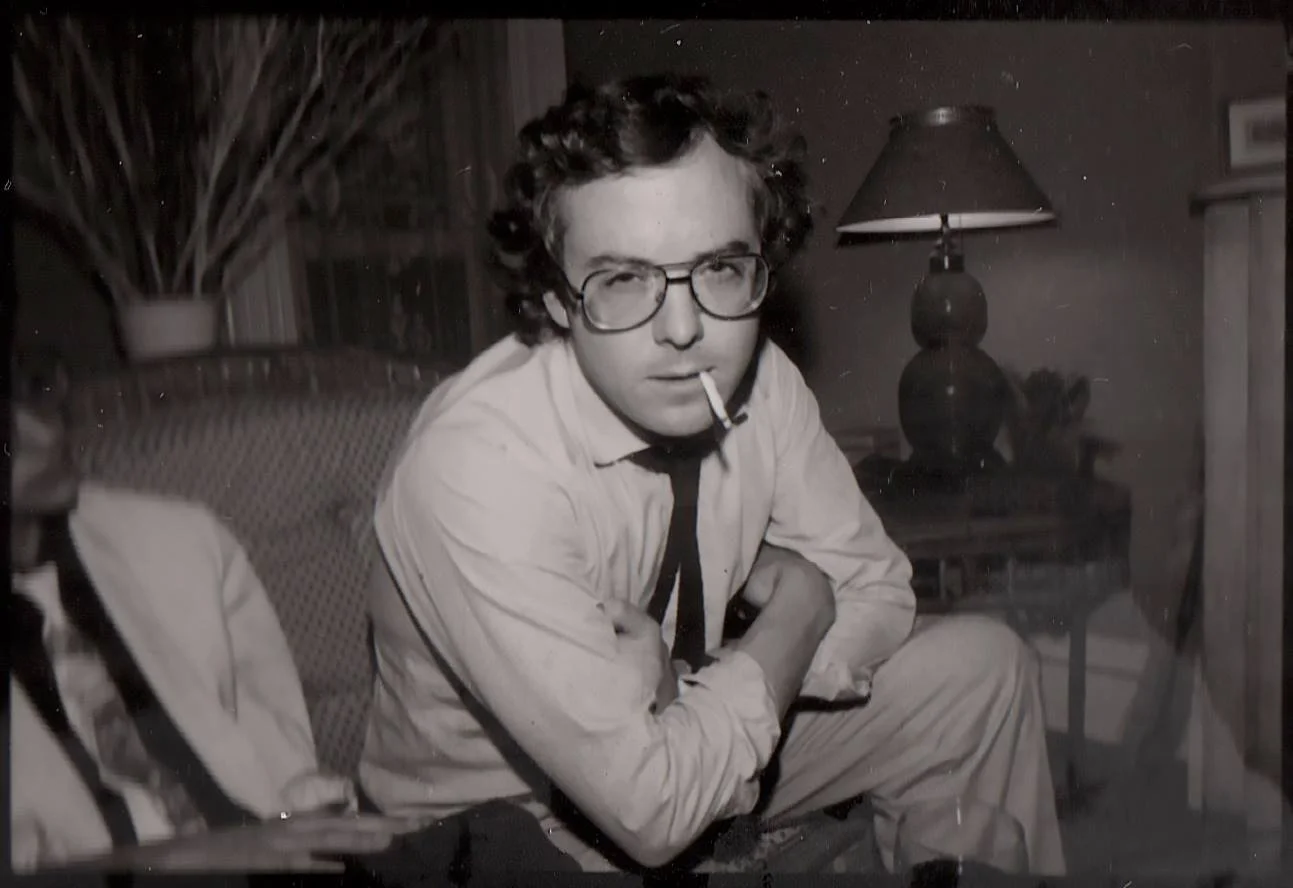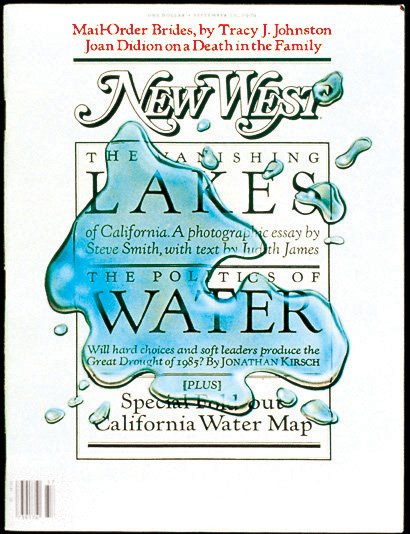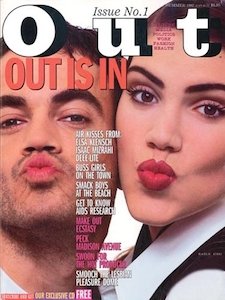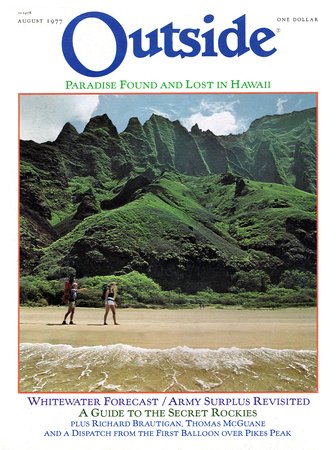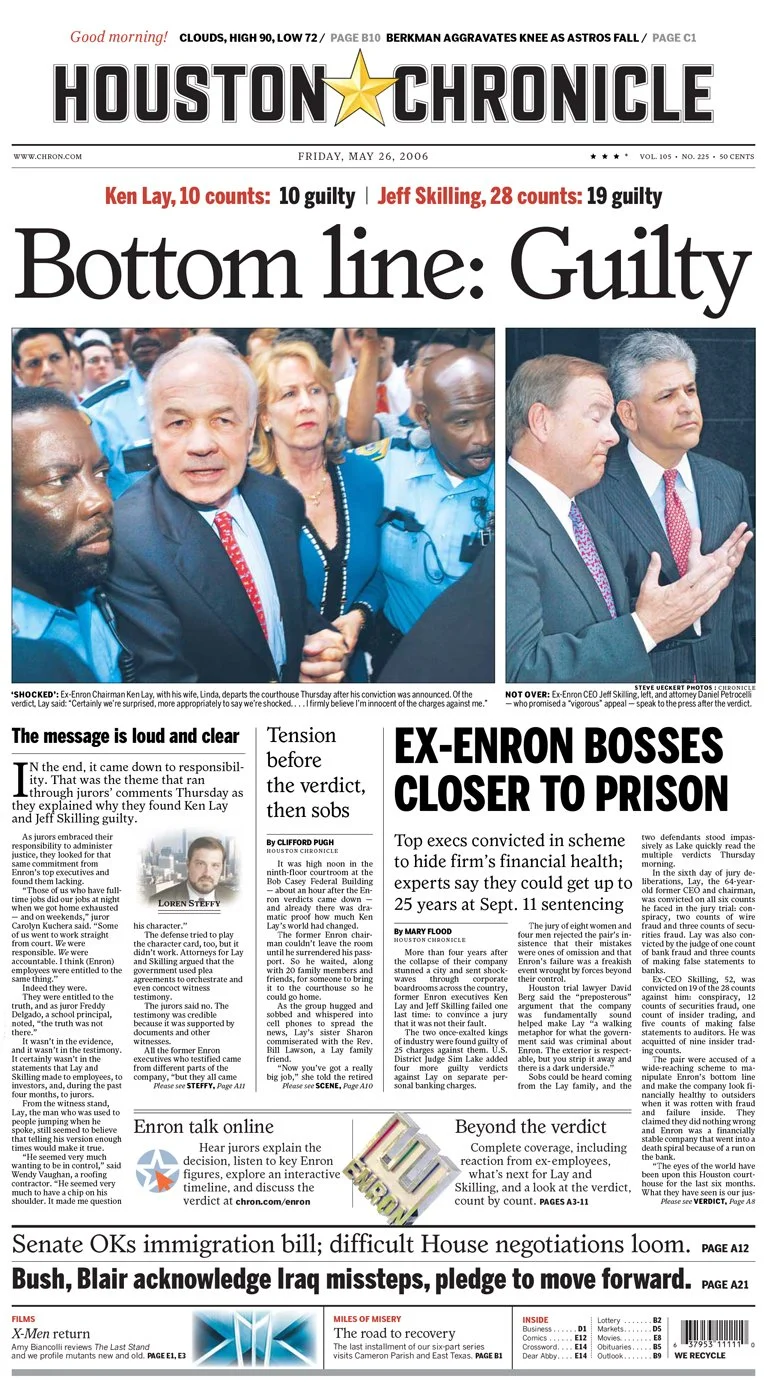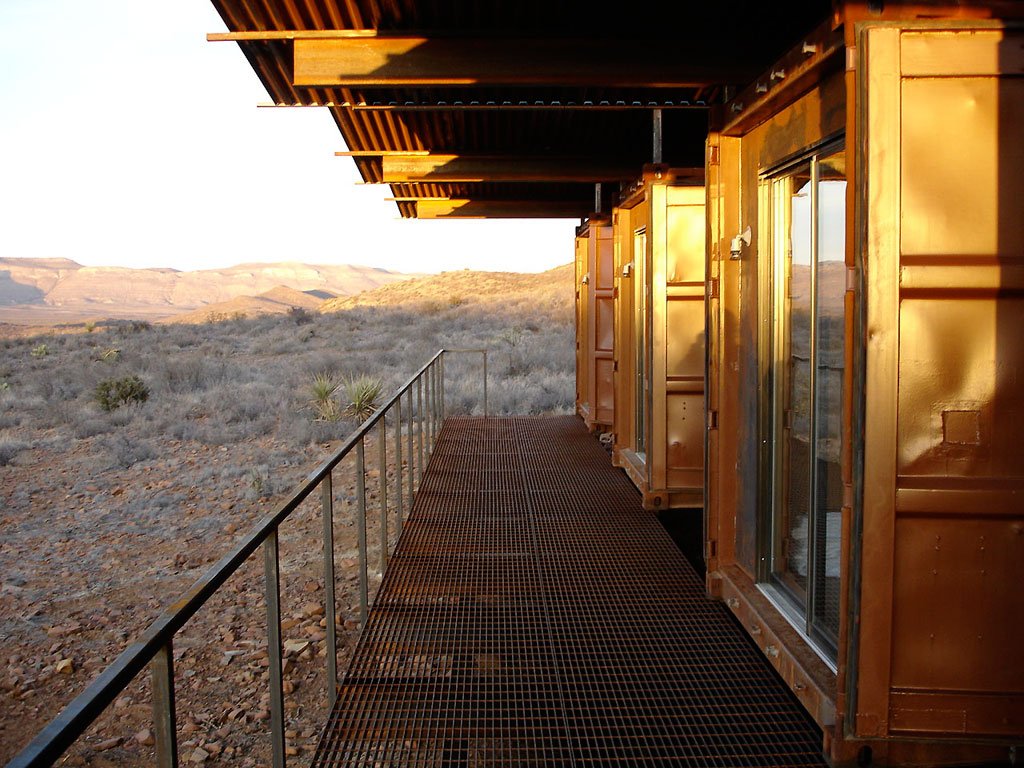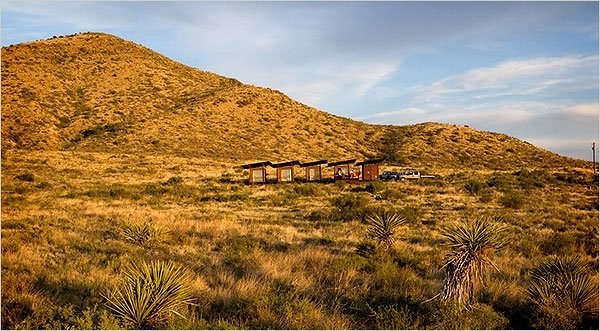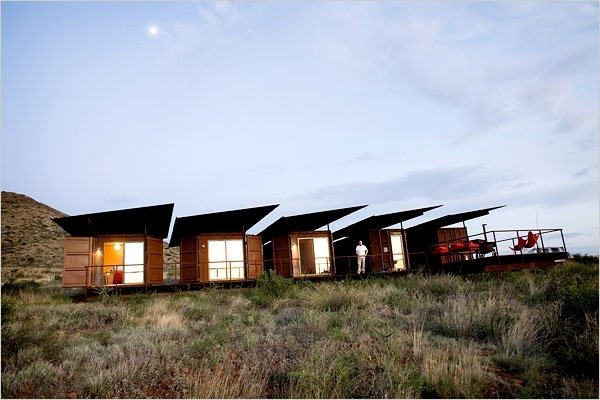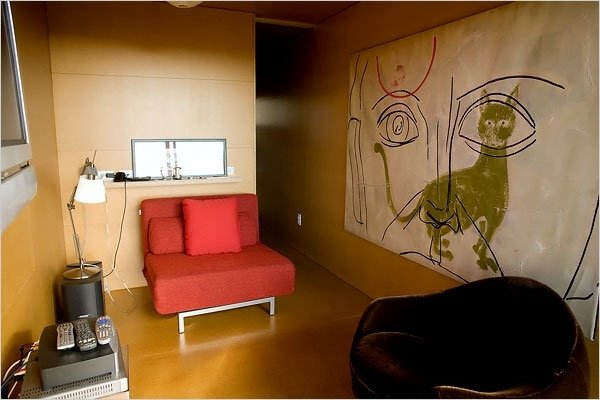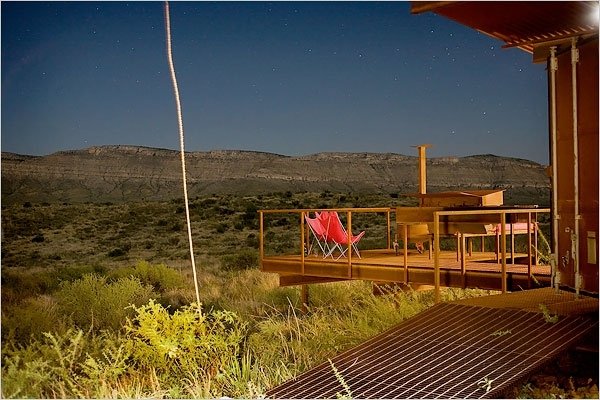Everyone Is a Salesman
A conversation with designer Gael Towey (Martha Stewart Living, MSLO, Clarkson Potter, House & Garden, more)
—
THIS EPISODE IS MADE POSSIBLE WITH THE SUPPORT OF COMMERCIAL TYPE
In 1995, New York magazine declared Martha Stewart the “Definitive American Woman of Our Time.” And, as the saying goes, sort of, behind every Definitive American Woman of Our Time is another Definitive American Woman of Our Time. And that’s today’s guest, designer Gael Towey.
But let’s back up. It’s 1982, and Martha Stewart, then known as the “domestic goddess” — or some other equally dismissive moniker — published her first book, Entertaining. It was a blockbuster success that was soon followed by a torrent of food, decorating, and lifestyle bestsellers.
In 1990, after a few years making books with the likes of Jackie Onassis, Irving Penn, Arthur Miller, and, yes, Martha Stewart, Towey and her Clarkson Potter colleague, Isolde Motley, were lured away by Stewart, who had struck a deal with Time Inc. to conceive and launch a new magazine.
Towey’s modest assignment? Define and create the Martha Stewart brand. Put a face to the name. From scratch. And then distill it across a rapidly-expanding media and retail empire.
In the process, Stewart, Motley, and Towey redefined everything about not only women’s magazines, but the media industry itself — and spawned imitations from Oprah, Rachael, and even Rosie.
By the turn of the millennium, Martha Stewart Living Omnimedia, as it was rebranded in 1997, included seven magazines, multiple TV projects, a paint collection with Sherwin-Williams, a mail-order catalog, Martha by Mail, multimillion-dollar deals with retailers Kmart, Home Depot, and Macy’s, a line of crafts for Michael’s, a custom furniture brand with Bernhardt, and even more bestselling books. And the responsibility for the visual identity of all of it fell to Towey and her incredibly talented team. It was a massive job.
We talk to Towey about her early years in New Jersey, about being torn between two men (“Pierre” and Stephen), eating frog legs with Condé Nast’s notorious editorial director, Alexander Liberman, and, about how, when all is said and done, life is about making beautiful things with extraordinary people.
“I’m a hard worker. It never bothered me that I was essentially a mechanical artist. These are the days of getting lino proofs and using rubber cement and all of that. I was just so happy to be in the room.”
Towey (fourth from right) with the original MSL team at Time Inc.
Patrick Mitchell: Gael, your dad was in sales. Mine was too. You said he always told you, “Gael, everyone is a salesman.” How do you think that influenced your career?
Gael Towey: When I was working at Clarkson Potter publishers, I was the art director, and I had to present all of my covers to the ad sales team, and also our publisher, Bruce Harris, who I really adored and I learned a lot from. I’d have to show them to Bruce first, and then I would go before the sales team panel, which was probably about 25 people.
It was a very intimidating group. And I remember going up in the elevator to this meeting, and in my mind I heard my father say, “Gael, everybody is a salesman.” And what he meant was that we are all out there, no matter who we are, basically, we are trying to convince people to agree with us. And that’s something that’s part of everything that I have done, in terms of my career.
Patrick Mitchell: You described your mother as a “crazy perfectionist.” Can you tell us a little bit about her?
Gael Towey: When I was in second grade, the nuns told my mother that I had to stay back because I was a really poor reader. I could not spell. I would get so mixed up between like “girl” and “grill” and, you know, all of these things.
And in those days people didn’t know about dyslexia. So my mother hired a tutor. And the tutor told my mother that I was not dyslexic. I was just slow. So I had this kind of growing up where I was constantly fighting against people thinking that I was stupid. And my mother, by the time I got to college, and I kept failing, it was very depressing, but it made me very strong.
Anyway, I went to college, and when I was writing letters home, my mother would attach a typed list of all of the words that I misspelled to the top of my letter and return it to me.
Patrick Mitchell: What was that relationship like?
Gael Towey: Difficult.
Patrick Mitchell: Is she still with us?
Gael Towey: No, she is not. She’s not still with us. You know what? It gave me strength to go head to head with Martha when I needed to.
Debra Bishop: Gael, where does your creativity come from? Was there crafting or cooking in your early days?
Gael Towey: You know, I’ve been listening to a lot of your podcasts and all of them have made me think back about moments in my career, or my life, or my training, that I hadn’t really thought about. And I went to Boston University. I had a terrible graphic design training, but what I did take is painting, and sculpture, and photography, and art history, and history of photography, and printmaking, and pottery, and all of those things prepared me to be a good art director because they were all about imagining something that you would make. And as you know, Deb, because you and I worked together at Martha Stewart Living, it was all about making stuff up.
Debra Bishop: But as I recall, you love to sew and you’re good at that. So maybe your mother had a hand in your early days.
You grew up in New Jersey, one of six kids. Did any of your siblings pursue creative careers as well?
Gael Towey: I did grow up in New Jersey. And I’m the oldest of six. I’m part of an enormous Catholic family. I have 45 cousins on my mother’s side. My mother was one of nine children.
And I did learn to sew as a child because we didn’t have very much money. And it was all about hand-me-downs. I got hand-me-downs from my older cousins. So if you wanted to look fashionable, you had to make your own clothes, which is what I did. Which was kind of a perfect thing because in the ’60s, of course you had, I was doing like tie dyeing sheets and making them into dresses and stuff like that. It was great training.
Debra Bishop: Oh yeah! Banana collars... remember those? And gosh, big buttons. So when you were little, did you have heroes? Did you have crushes or were inspired by certain people?
Gael Towey: I was inspired by my grandfather and I wish that I knew that beforehand. My grandfather was an OB GYN at the Margaret Hague Hospital in Jersey City, and he was a wonderful, wonderful photographer.
He had a two and a quarter Rolleiflex, which is the kind that you stare down into the ground glass, and it’s turning it around. And my grandparents’ house at the Jersey Shore was filled with his photographs of his children, and my grandfather was quite short, and you’re holding the camera kind of low, so, all the pictures of my aunts and uncles of which as I said, there are many, you’re looking up. And they were so heroic and he printed them in black and white. He was very fastidious, putting all the crop marks, et cetera, and growing up with seeing those photographs, you know, I didn’t realize this till later in my career, but it was pivotal for me, absolutely pivotal.
And the other story about my grandfather, Pop Connell, is that he delivered Martha! And she remembers they lived in Jersey City on Carlton Avenue and his office was on the bottom floor, the sort of basement floor of it. It was like a semi-attached house where you would share the driveways with your next door neighbor.
And she remembers going there on Saturdays because they only had one car in their family. And she also came from a very large family, and she remembers sitting there with her mother and her father waiting to see Dr. John Connell.
Patrick Mitchell: Wow. How did you decide to go to BU?
Gael Towey: You know, my parents didn’t take us to see any schools or anything like that, and it was all about getting financial aid because there were so many kids in our family. So you really went to the place that was going to give you financial aid.
Above, from left: Christopher Holme, Towey, Jacqueline Kennedy Onassis, and Bryan Holme at work on Onassis’ book, In the Russian Style, at the Viking Press in New York, ca. 1977.
Patrick Mitchell: And did you know, when you finished school—I know you went through a process of figuring out that you wanted to become a design major—but did you know after school you were New York-bound?
Gael Towey: Yes. I understood that there was really no other place to have a career in design. And I went to see a vast assortment—I had 30 interviews when I graduated, and I was carrying around that enormous portfolio. You remember those? They were probably 30 inches by 20 inches or something. They were so heavy. And I didn’t have any magazine covers. I didn’t have any book covers. I just had art, you know, I had silkscreens, and photographs, and illustrations, and some typographic treatments on silkscreen. It’s pathetic.
No wonder I had 30 interviews! I only had one job offer.
Patrick Mitchell: What was the first job interview you went on?
Gael Towey: Oh, I don’t remember the first job interview. I think Grey Advertising actually did offer me a job. So I was choosing between Grey and Viking. And, I don’t know, I guess what intrigued me about Viking Press was the books.
The books were so beautiful. There were art books and museum catalogs and so on. It was a very impressive place.
Patrick Mitchell: Was there a job that you badly wanted but didn’t get? Like, a heartbreaker?
Gael Towey: No. I just didn’t know anything about the business. Stephen, my husband, as you guys know, went to Cooper Union. And he was taught by Milton Glaser, Seymour Chwast—all of these really famous designers and illustrators, and they gave him jobs and he knew everything about the business because he lived in New York City.
Patrick Mitchell: He was a thoroughbred.
Gael Towey: Yeah.
Debra Bishop: He didn’t have to hit the pavement.
Gael Towey: No.
The Martha Diaspora
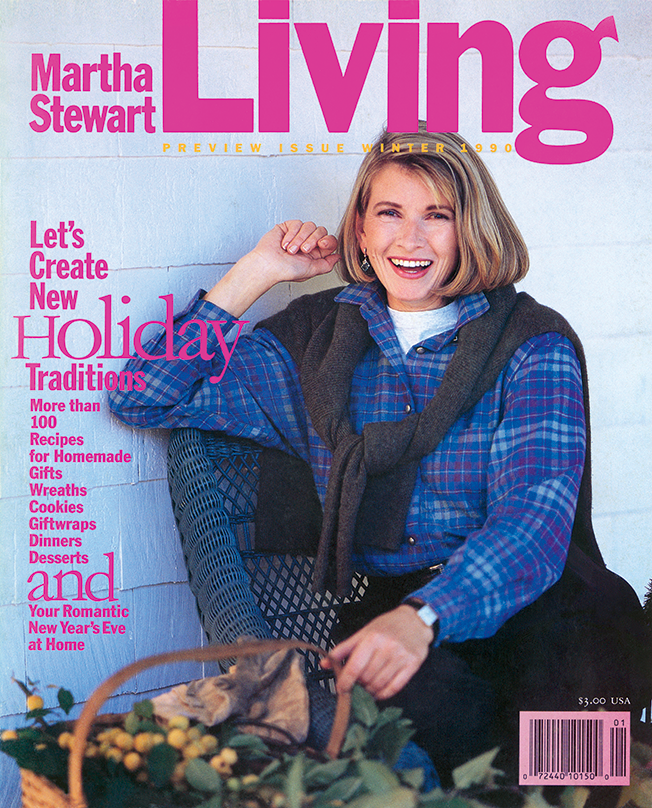
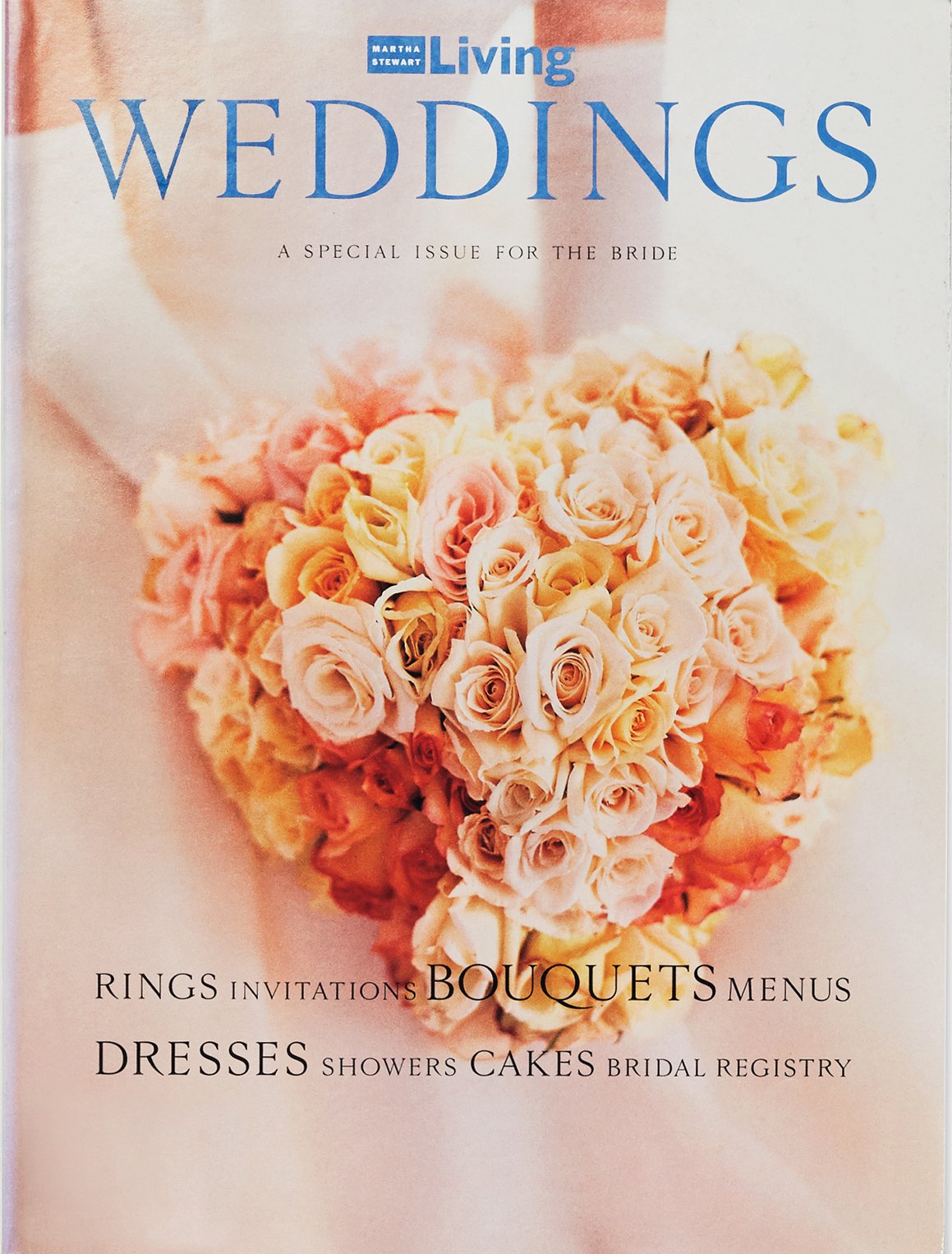
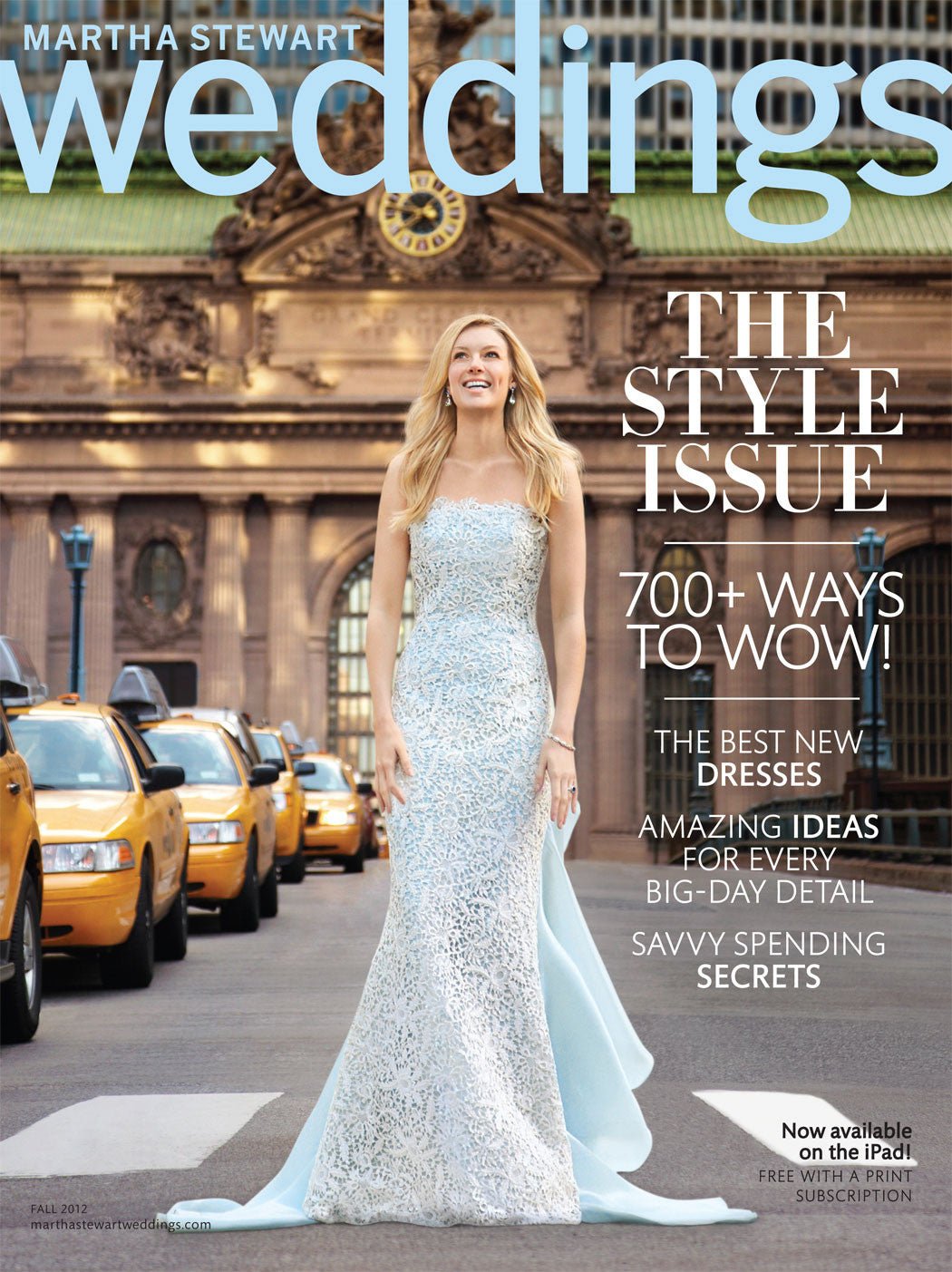
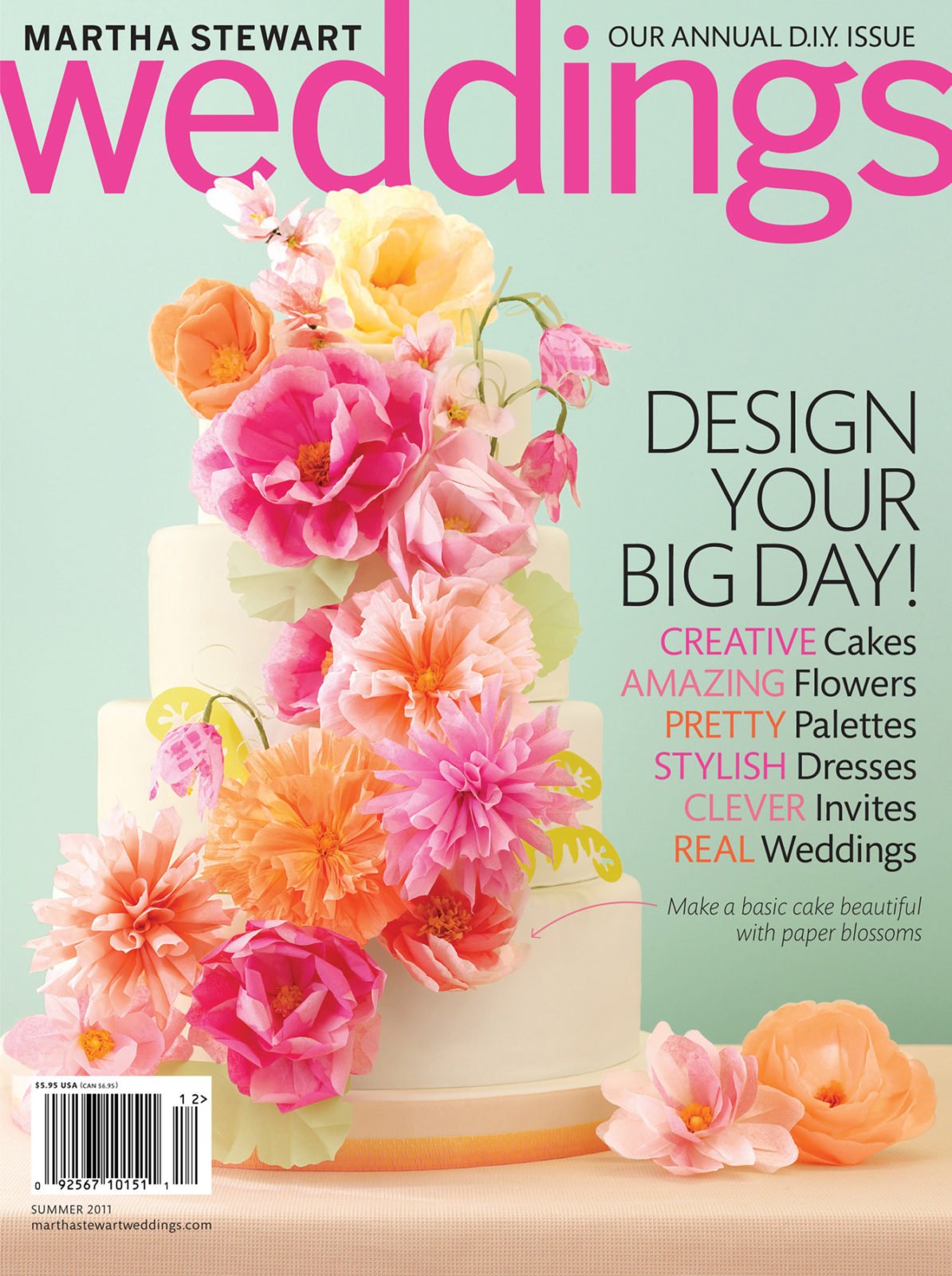

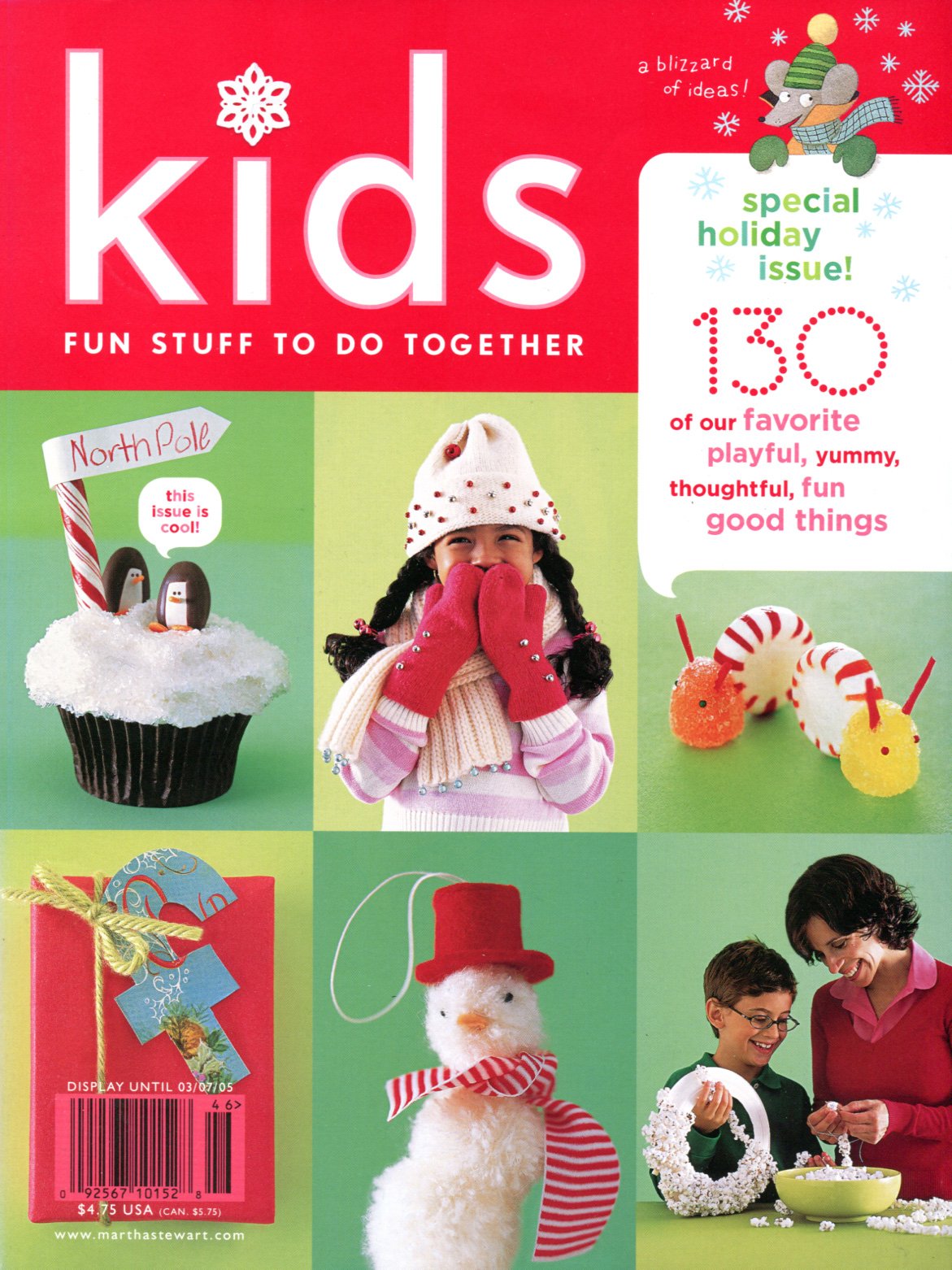
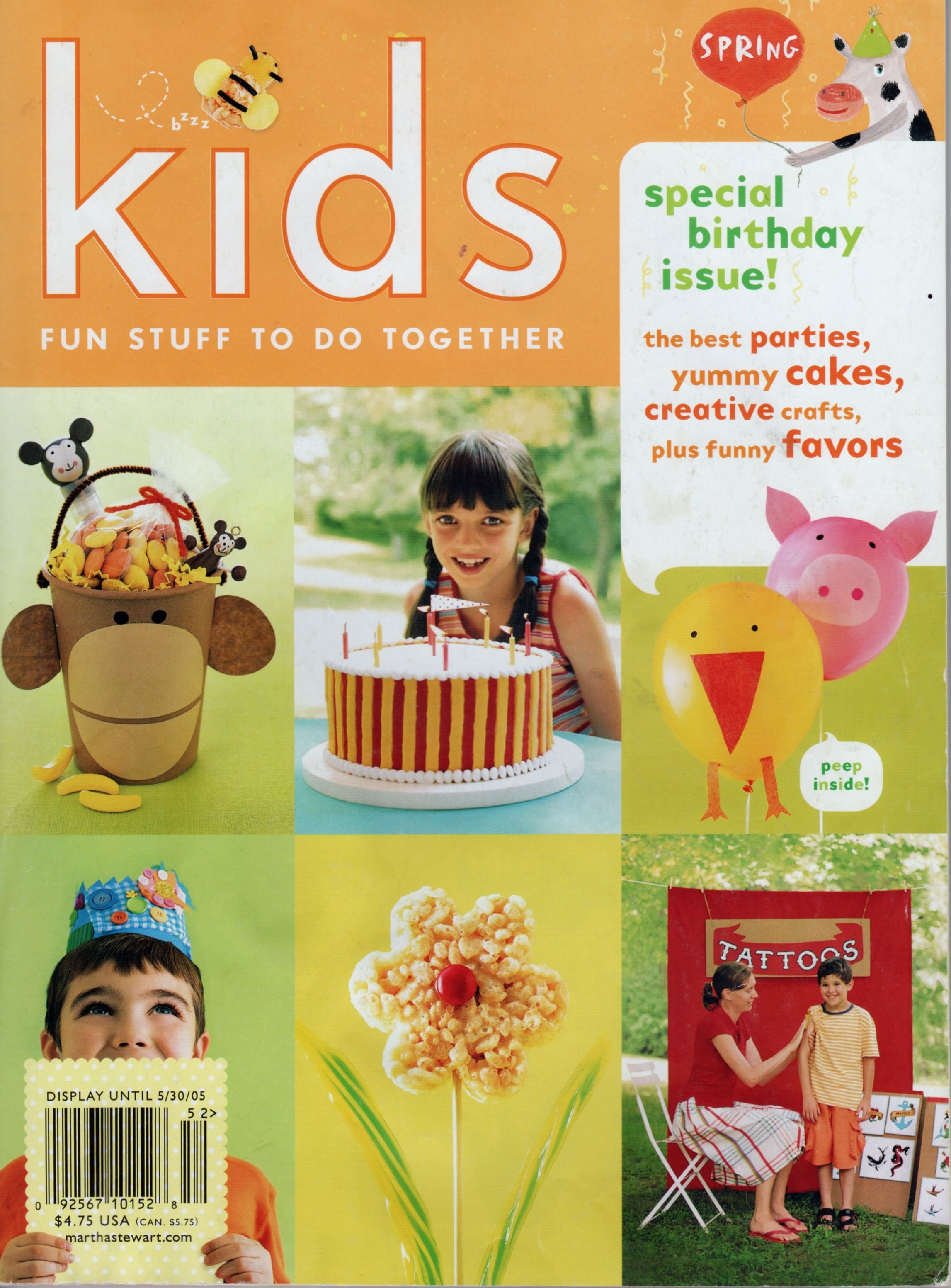
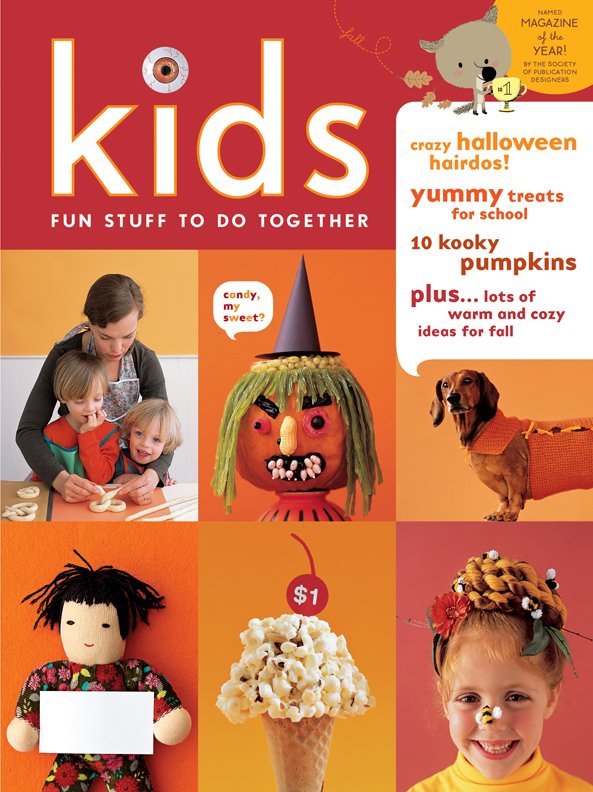


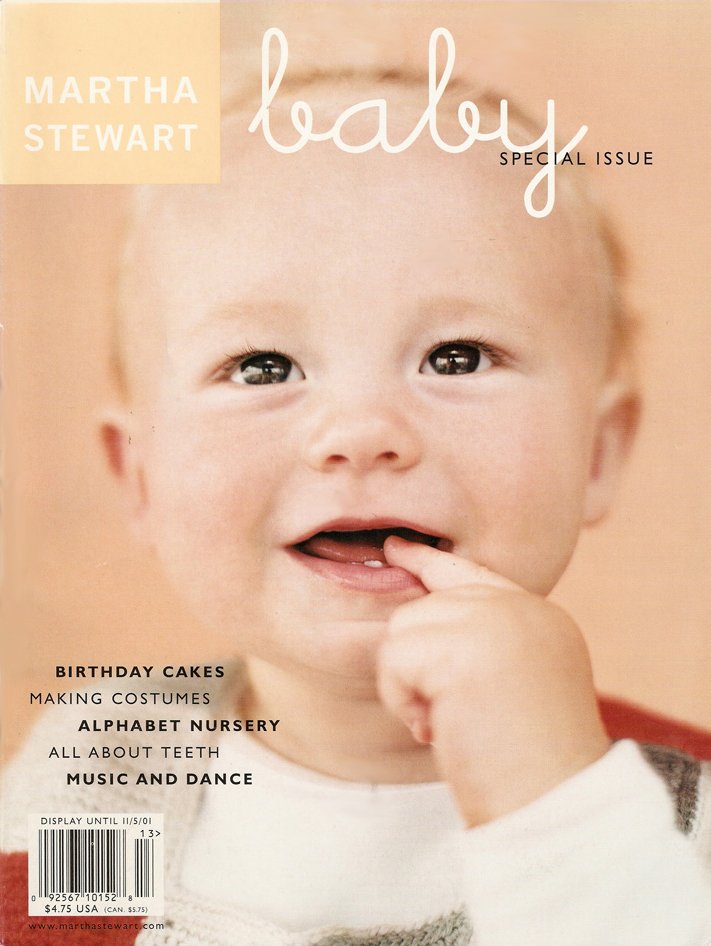
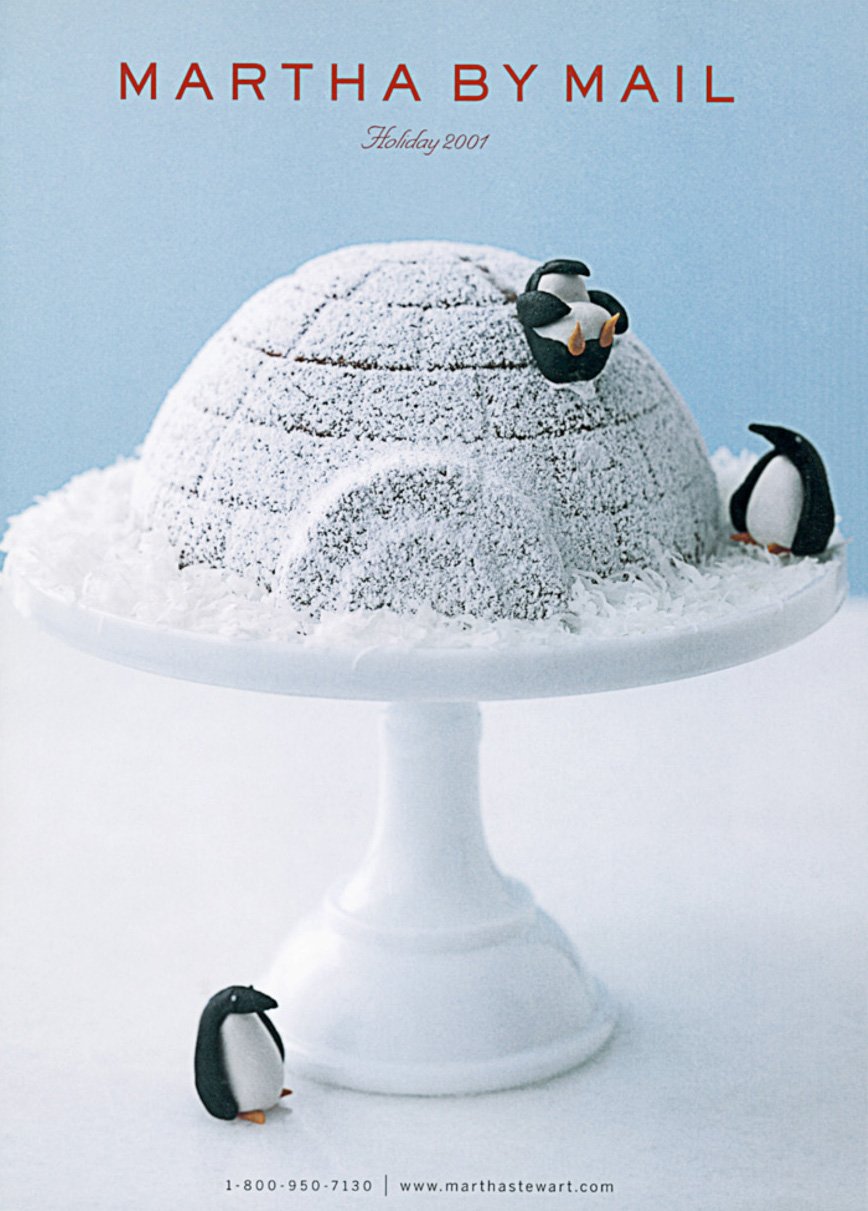
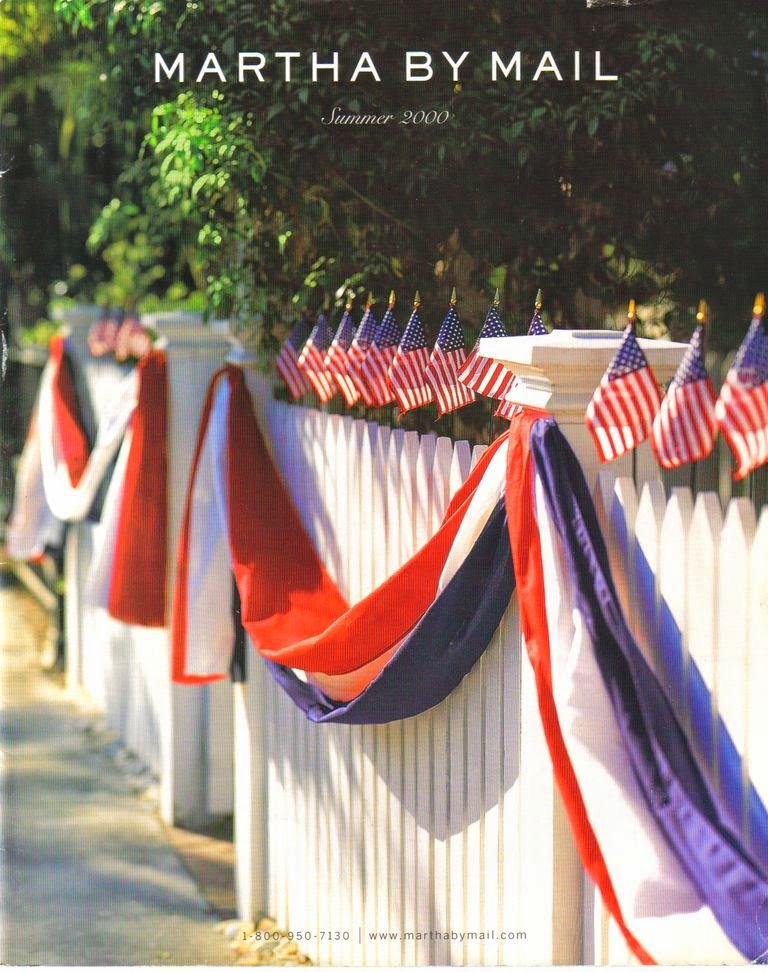
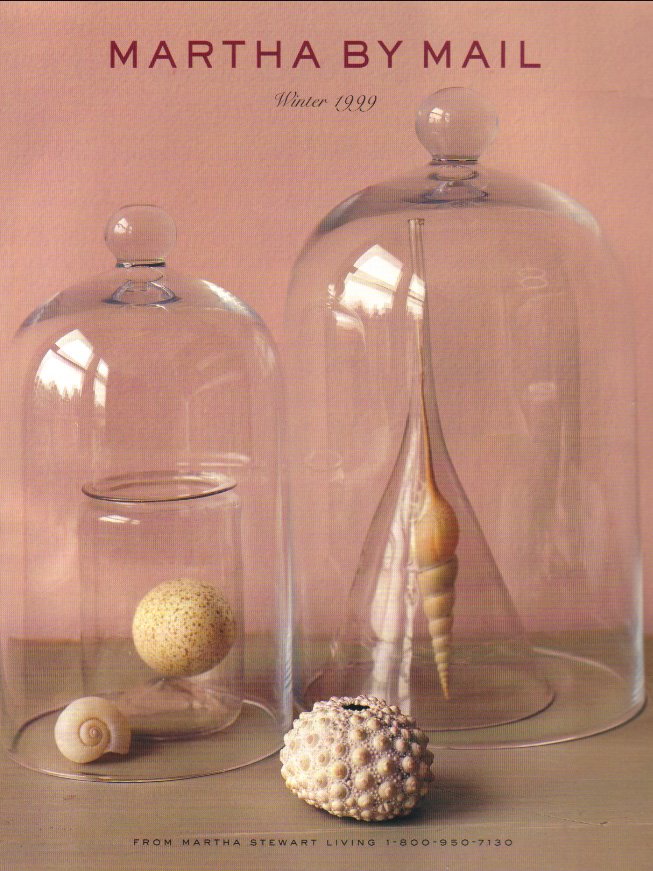
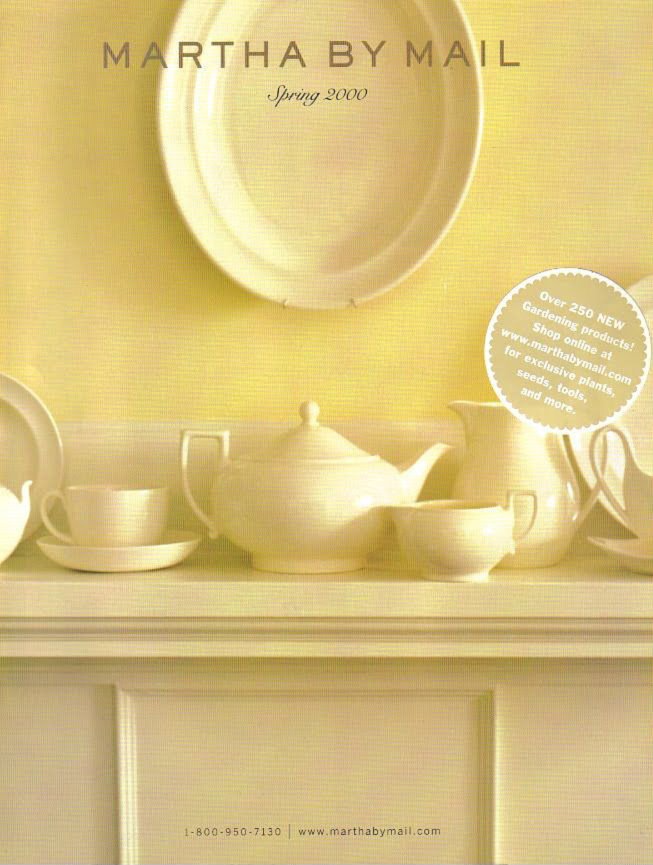
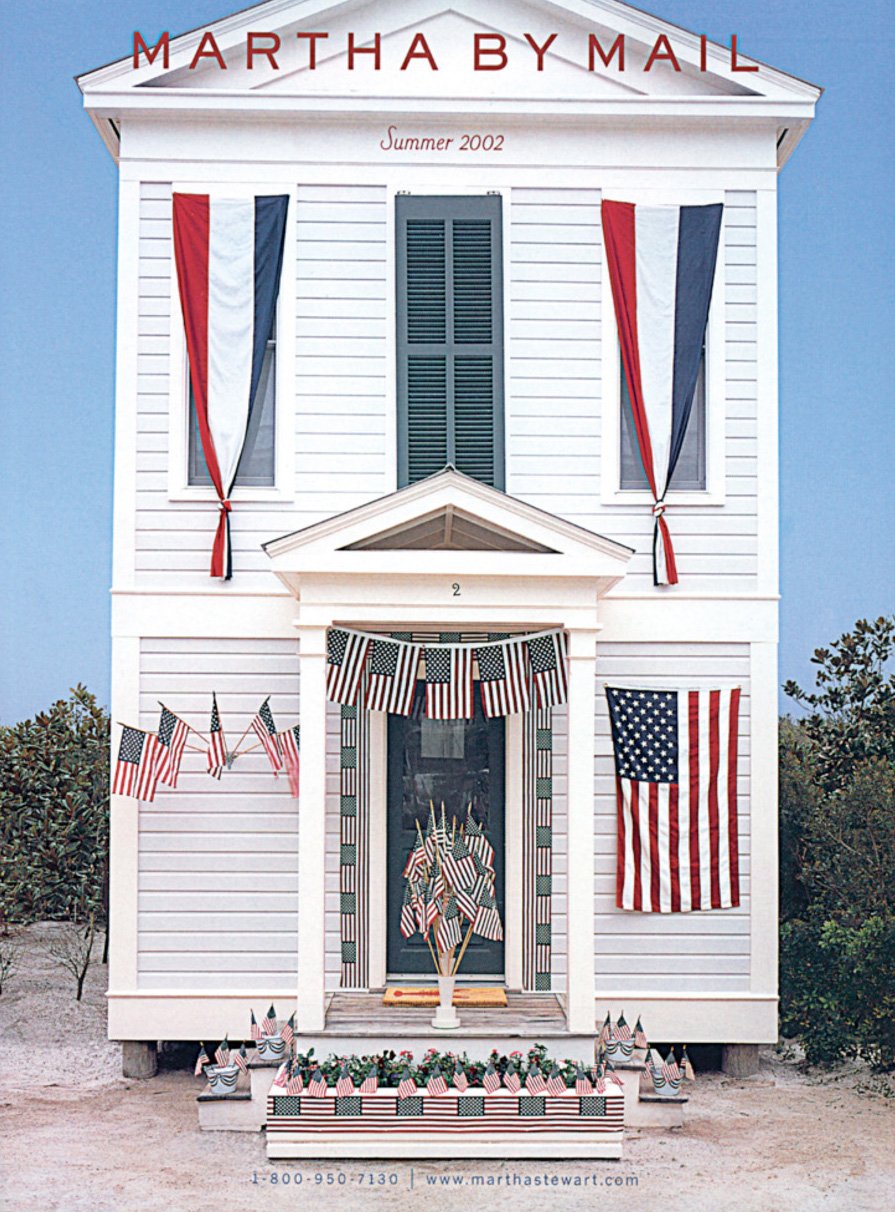

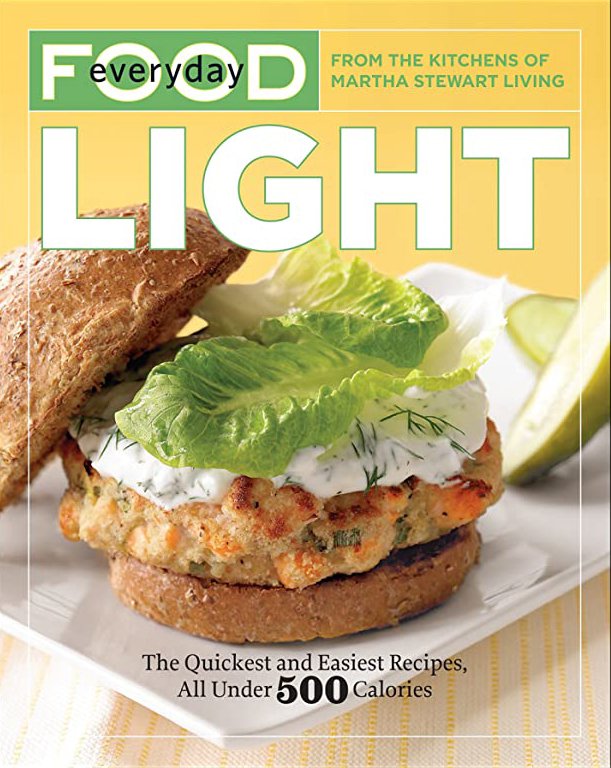

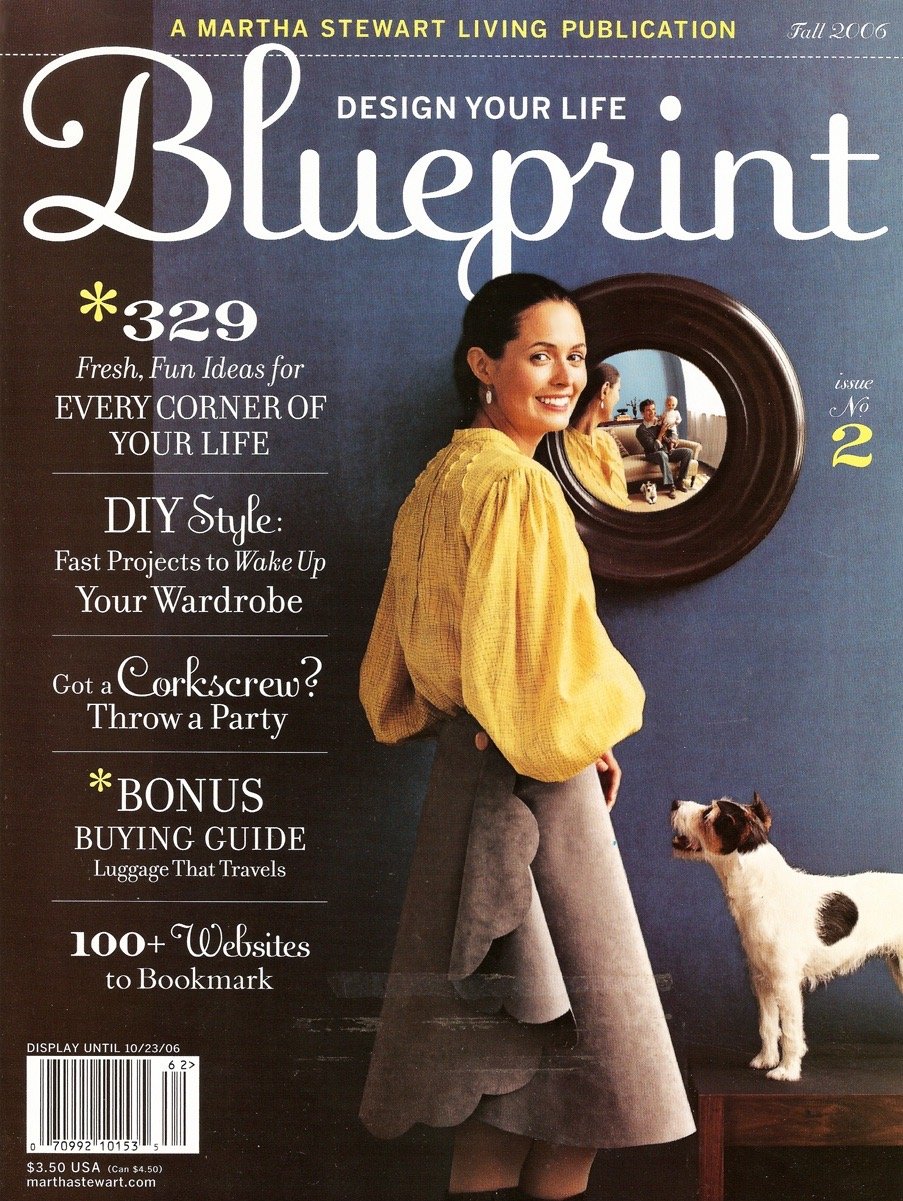
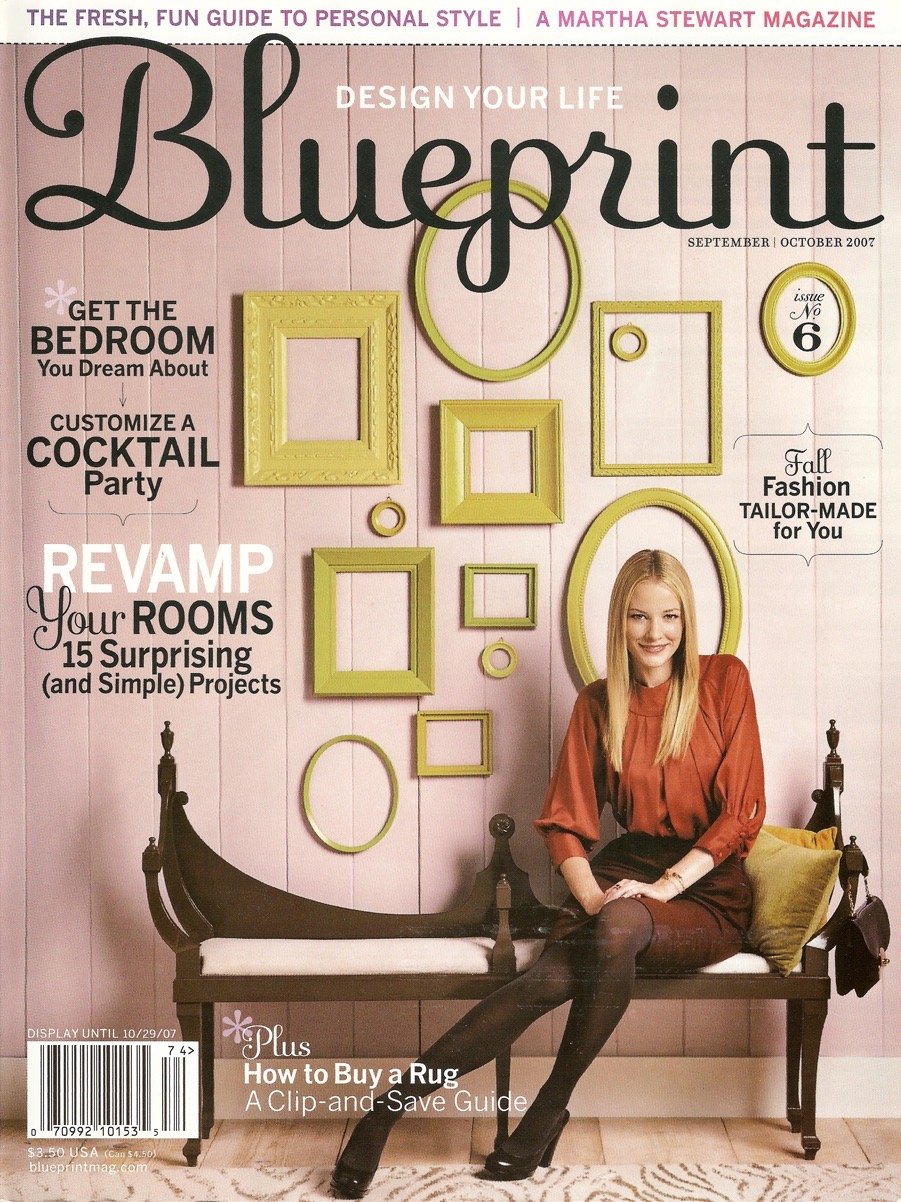
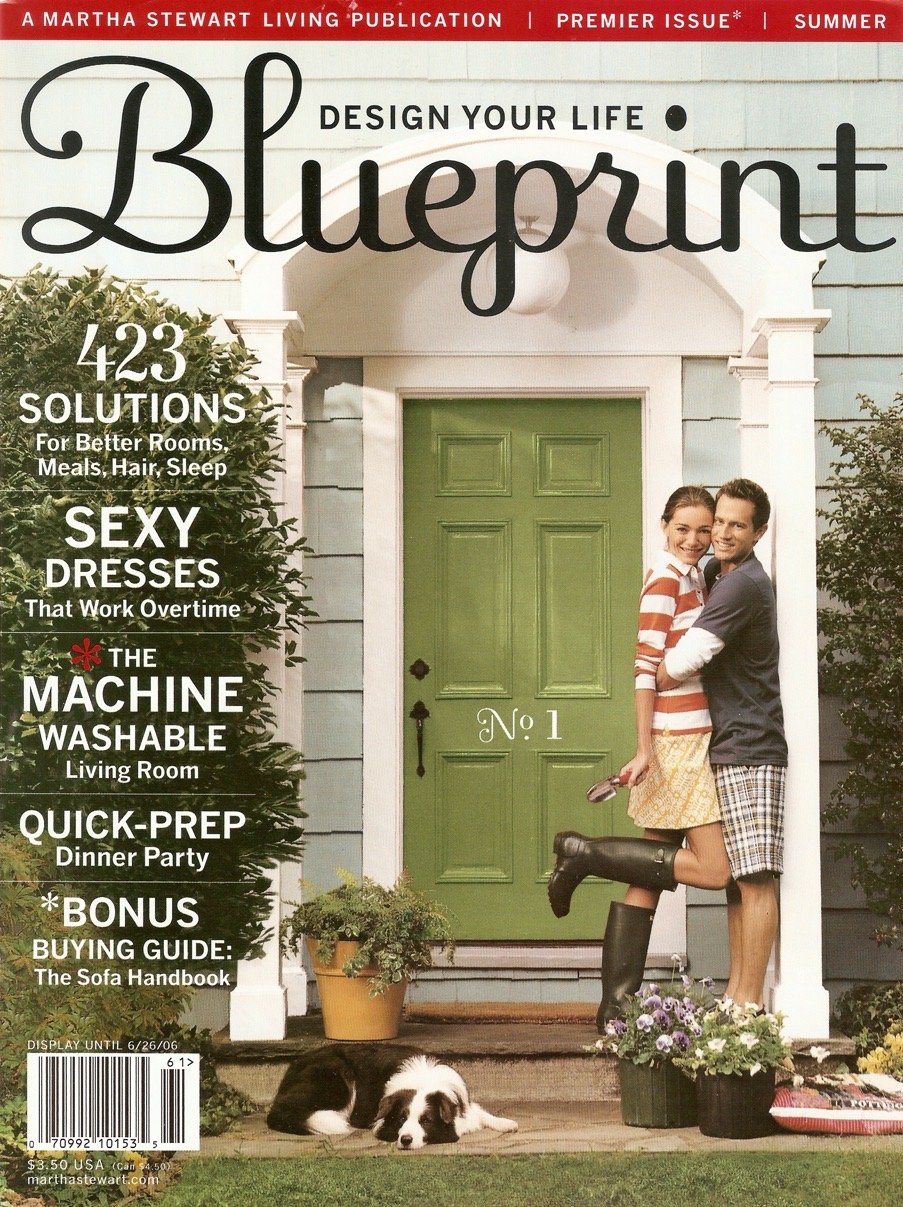
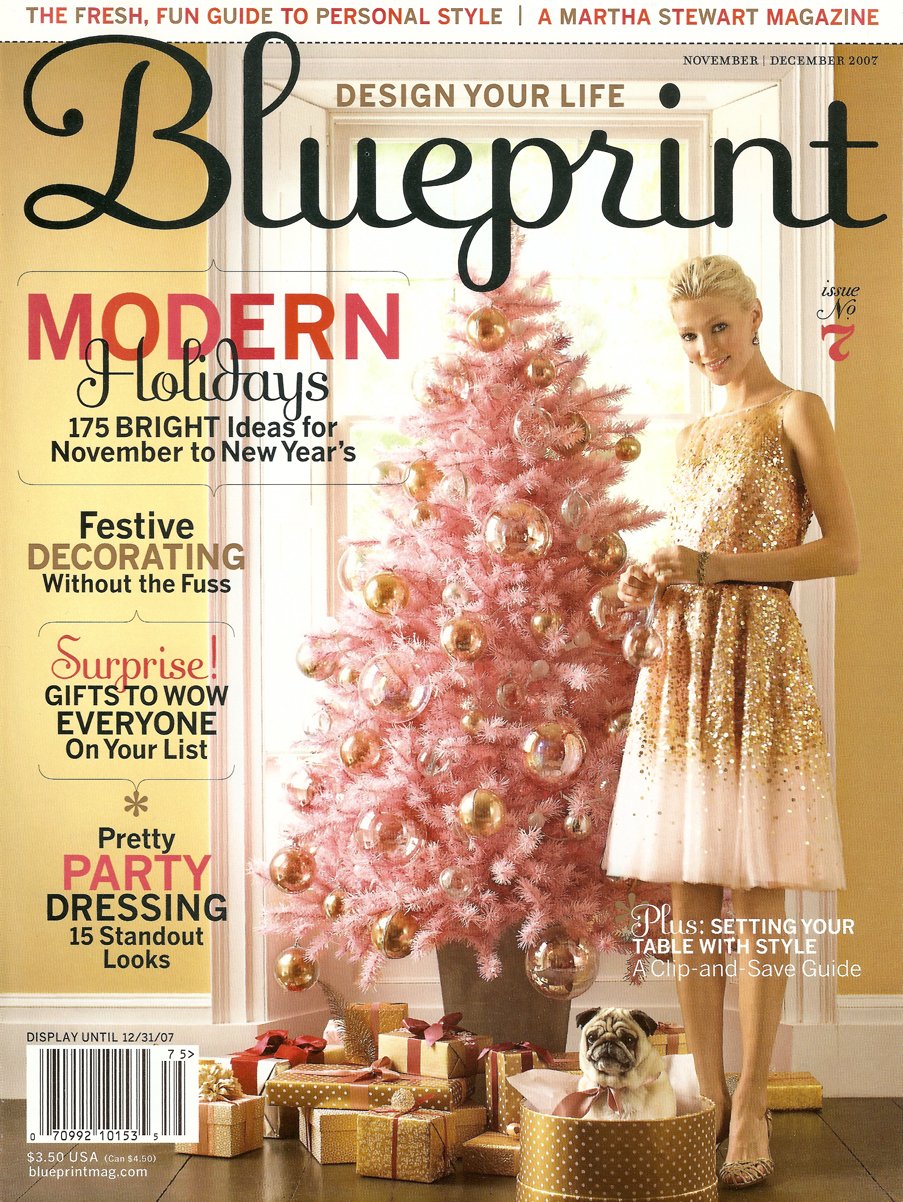
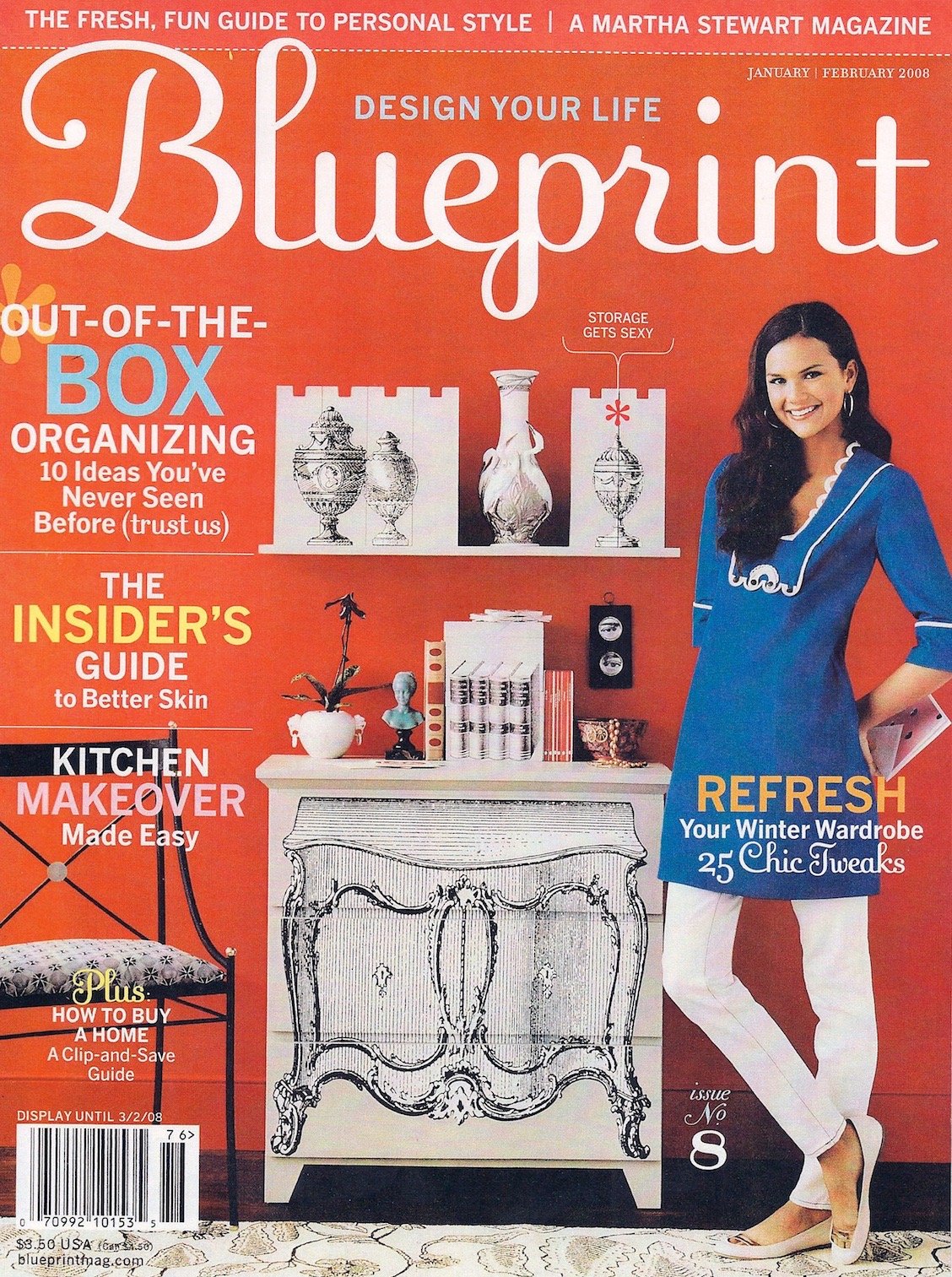
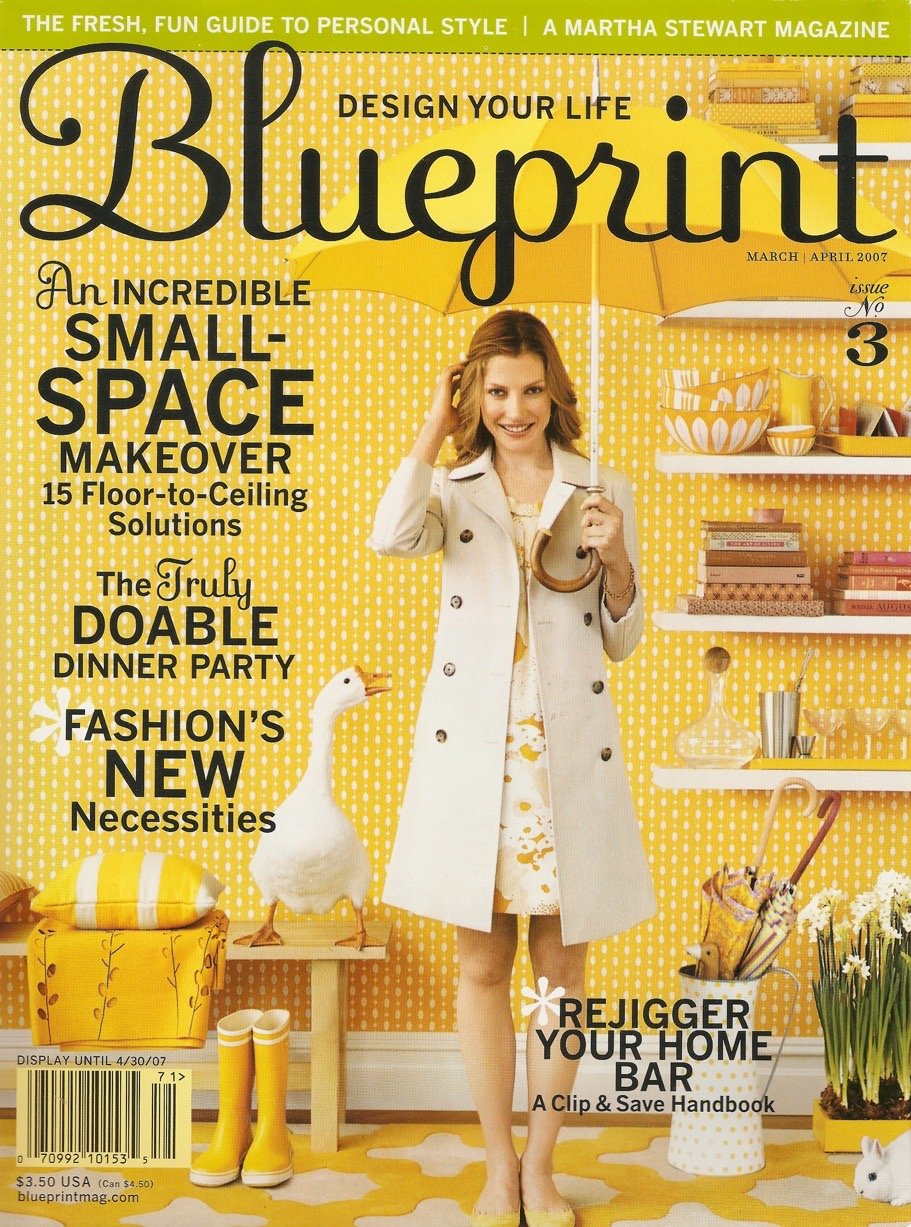
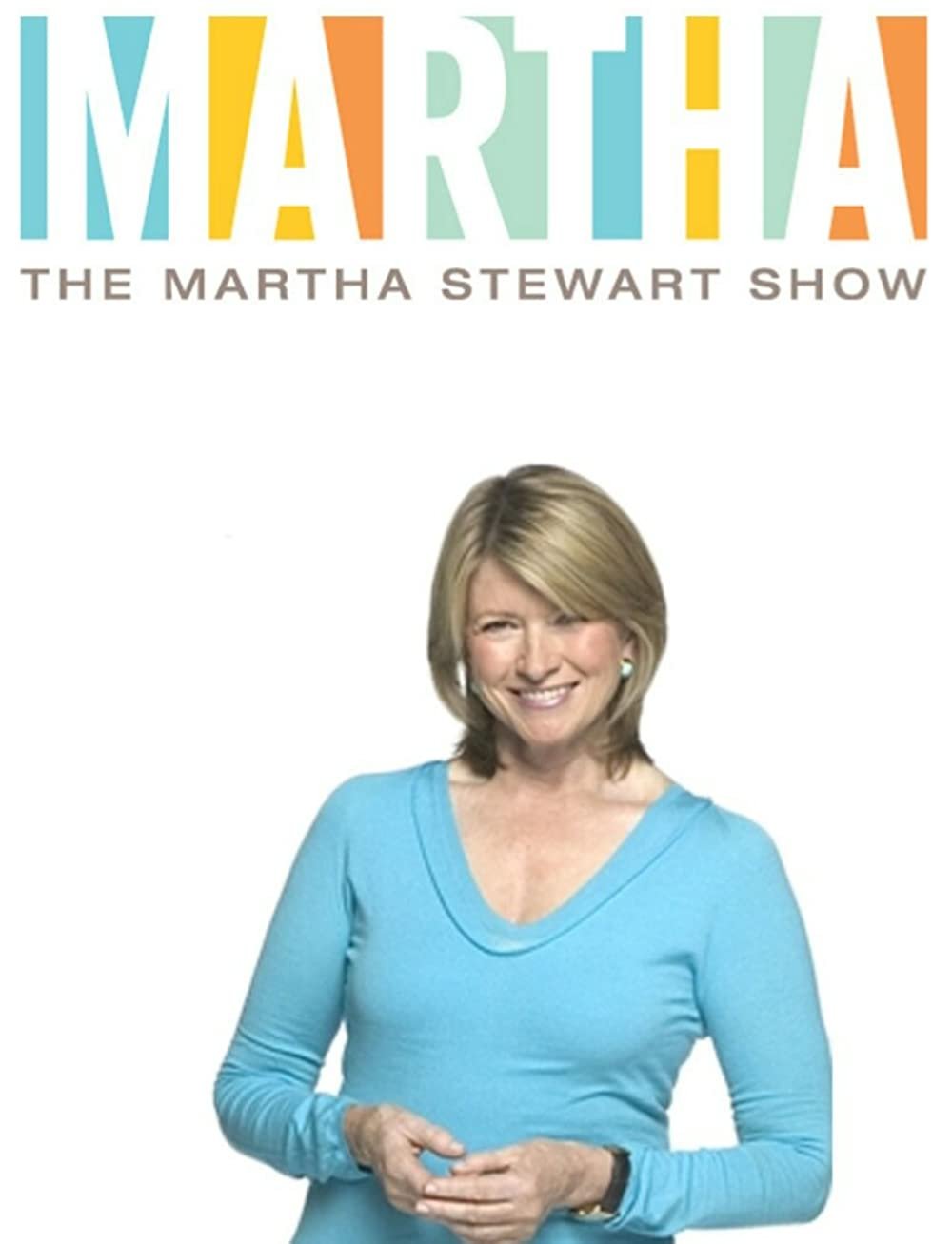

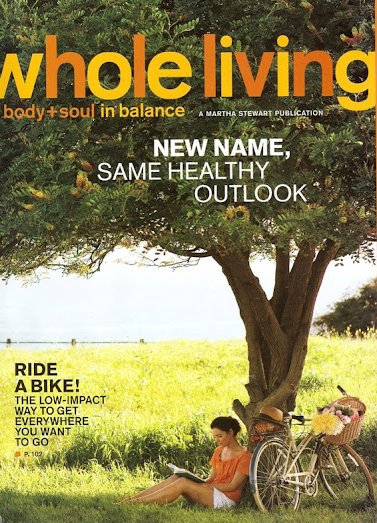
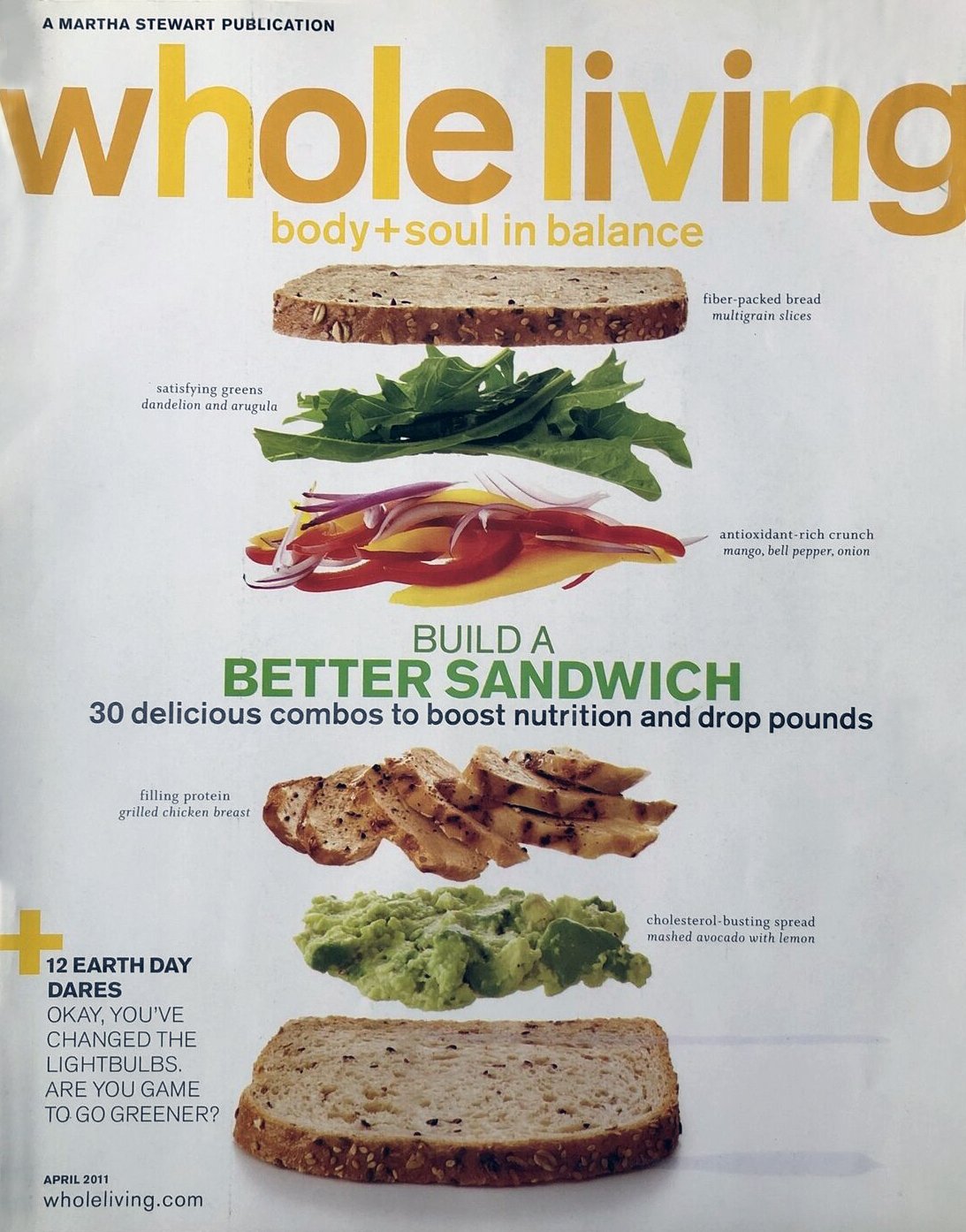
Debra Bishop: Gael, your early career path kind of seems like a prescription for ending up as a creative director at a place like Martha Stewart Living. Perfect experience. Perfect timing. How did all that happen? Was it karma? Luck?
Gael Towey: Yeah, it was luck. And I’m a hard worker. It never bothered me that I was essentially a mechanical artist. These are the days of getting lino proofs and using rubber cement and all of that. I was just so happy to be in the room.
You know? It’s New York. It’s 1975. It was an extraordinary place to be. I couldn’t believe that I was in New York City. It was fabulous.
Patrick Mitchell: Before you landed at Martha Stewart, you spent a year at Condé Nast, where you say you learned what not to do. Safe to say you were not terribly fond of Conde’s notorious editorial director Alexander Liberman. What happened there?
Gael Towey: Well, Nancy Novogrod was the editor in chief, and I knew her because she worked at Clarkson Potter Publishers. And so we’d known each other and worked together on many books. And we did a lot of decorating and cookbooks at Clarkson Potter, so she knew my background.
And she hired me to be art director when she became the editor in chief after Anna Wintour, who redesigned House & Garden magazine. But Alex Liberman was the editorial director of Condé Nast at the time, and he was at the end of his career. He was very old, and crotchety, and power hungry. And, the system was that if you were an editor, you were not allowed to talk to me as the art director. I was isolated in what they called a “layout room” and it was thought that if the editors came in to hang out, they would influence me in choosing photographs and doing layout. So I would spend the day by myself.
It was a lonely existence. And then Alex would take me to La Grenouille for lunch, and we’d be surrounded by gorgeous flowers, and he’d point out all the fancy people that were there, and we’d eat frog legs or whatever. And we’d come back to the office, and I would show him my layouts and he would literally tear them up! And he’d say, “We can’t do this!”
And he would get out new layout boards, and shuffle through the photostats, and choose something, and tear pictures in half, and lecture me, and tell me, “We need more castles in this magazine!” The following week was, “We need more kitchens in this magazine!” He would say whatever was the opposite of whatever you were doing.
And it was a pretty brutal situation. And the editors closed their doors. They locked their filing cabinets. They were incredibly competitive. And I asked Martin Filler, who was the architecture critic, how he could stand it, because Martin would routinely be humiliated by Alex Liberman in front of everybody. And I said to him, “Martin, you’re so smart. How can you stand this?” And he said, “Gael, it’s because it’s a fashion company. You go into fashion and out of fashion. And that’s just the way it is.” I thought, “Oh my God, how depressing.”
But when we started Martha Stewart Living, I wanted to have a team. I wanted to be with people. I wanted to have friends. You know, I wanted to have a working relationship with people. I didn’t want to be isolated in some room, and then after they beat you up all day long, you get in your car service and go home.
It was awful.
Debra Bishop: You went from Condé Nast to books. Right?
Gael Towey: No. I was at Viking Press then, then Clarkson Potter.
Debra Bishop: Okay. So that was the last stop before ...
Gael Towey: Yeah. I was only at House & Garden for a year. But at least I understood the rhythm of making a magazine.
So when Martha called and said, do you want to be the art director of this magazine? First of all, I couldn’t wait to get out of House & Garden. Second of all, it’s very rare, as you guys know, to have an opportunity to start a magazine from scratch. And of course I definitely wanted to do that.
Just like you did, Deb, with Martha by Mail, which wasn’t a magazine, but practically it was a magazine. And Blueprint. And Kids.
“I was very proud of the fact that when you looked down the row of designers sitting at their computers, they would have a stack of art books next to their computer because they were in charge of researching a concept for how to shoot the story.”
Patrick Mitchell: So, you meet Martha Stewart, your future employer, and Stephen Doyle, your future husband while working at the book publisher, Clarkson Potter. Talk about how you met arguably the two most important people in your life.
Gael Towey: That’s very true. They are both terribly important. We did about 50 books a year, and so I had the wonderful opportunity of being able to hire art directors and designers who I admired to do a lot of the books, and I learned so much from them.
People like Rochelle Udell, and the authors themselves, Susie Slesin and that relationship was really quite fabulous. So that’s where I met Martha and we were about to publish Martha’s wedding book. It was the biggest book of the year. So I started calling around to say, “ Who should I talk to?”
And Mary Shanahan, who was the art director of Cuisine —and really an inspiration for me, she was an extraordinary designer—and she really changed that food magazine market by the way she photographed food and the people that she used to photograph. So I called Mary to ask her for a recommendation and she said, “Well, there’s this guy, Stephen Doyle, who just started his own company. You should talk to him.”
And I also called Roger Black. And Roger said, “Oh, there’s this guy Stephen Doyle, you should go talk to him.” So I called this guy Stephen Doyle, and he came over and he was hysterically funny. He said he wasn’t interested in weddings and he didn’t want to design a wedding book.
I was in the middle of a separation from my first husband and I was in a state of severe anxiety. And losing weight and, like, an incredible, nervous wreck. But I really liked Stephen’s portfolio and I really liked his personality. So I said, “Well, we’ll work together on something, even if you don’t want to do this book.”
And I picked my business card up off of my desk and I looked at it and it said, “Gael Dillon.” And I was like, “Oh shit, I have to get new business cards!” And I leaned over the desk and scrubbed out Dillon with my pen, like viciously. And then wrote in there, Towey, which is my maiden name, and I handed it to Stephen and he thought that I was coming onto him, basically. And he thought, “Wow, that’s, you know, kind of amazing.”
I’m not really like that. I’m not a forward person, but we found something to work on together.
Patrick Mitchell: ... and her name is Maud [Towey and Doyle’s daughter]...
Gael Towey: Yeah, exactly! And Stephen had a fake name that he would, if he called, and he was “Pierre,” that meant that it was Stephen asking for a date. And if he called and it was “Stephen,” it meant Stephen, this was calling about doing a job for us.
Towey with her husband, designer Stephen Doyle.
Patrick Mitchell: So you launched Martha Stewart Living in 1990. What were the hot magazines at that time? Who was your competition?
Gael Towey: The “Seven Sisters” [Better Homes and Gardens, Family Circle, Good Housekeeping, Ladies’ Home Journal, McCall’s, Redbook, Woman’s Day] were the competition. The other women’s magazines, like Good Housekeeping, and those kinds of things. Cuisine had been bought by Condé Nast and closed because they didn’t want competition and people were sent Gourmet [in its place]. And for those of you who can remember, Gourmet was a very, very stuffy, old fashioned kind of shellacked-looking magazine at the time, in terms of food photography.
So that’s kind of the competition in the women’s space. And computers were just beginning. So a lot of the interesting magazines were using crazy typography, which I don’t really know how to do. I’m not a typographer.
Patrick Mitchell: Yeah, this was a few years before Wired. I would guess Fred [Woodward] was at Rolling Stone at the time.
Gael Towey: Right.
Patrick Mitchell: But not much else was going on, generally, in the magazine business design-wise?
Gael Towey: No. And that kind of computer crazy typography scared me, you know. I really didn’t know how to do it. So, since Martha and I really wanted the new magazine to be very photography-based, we elected to do quite simple typography.
Debra Bishop: Martha Stewart Living was truly revolutionary when it launched. Before Martha, shelter content was often very traditional and stuffy—do you remember Victoria magazine?
Gael Towey: Yes. Yes.
Debra Bishop: What made the Martha Stewart Living approach so unique?
Gael Towey: Can I tell my photography story about getting canceled by Condé Nast?
Debra Bishop: Oh, sure.
Gael Towey: When we started the magazine, we did it so fast! Isolde Motley, who was our first editor in chief, and I met at Clarkson Potter. We both worked with Martha at Clarkson Potter, so the three of us were a kind of known entity to one another. We had all worked together before. So it wasn’t, like, completely nutty.
We started working on August 1st, 1990, and we had the first issue, which was a test issue, on the newsstand November 12th, 1990, which is an unbelievably fast trajectory in terms of doing a magazine. I had met all these wonderful photographers when I was art director of House & Garden.
And as soon as I started working at Martha Stewart, I called them and asked them to work for us and do stories for us. And they all kept saying “no.” And finally one of them said to me, “You know, Gael, you’ve been embargoed. None of us are allowed to work for you. We can’t work for you or Martha.” And I was petrified.
I thought, “oh my gosh, what am I going to do now?” So we had to find photographers who did not work for magazines. And that changed—so your question was, “ How did you change the look of women’s magazines?” That was part of it. It forced us to go to a different group of people and work in a different way.
And that’s part of what made us so unique.
Debra Bishop: Mm-hmm. It was problem solving.
Gael Towey: And also Martha wanted to do this “how to” magazine. And that meant that we were doing a lot of stuff ourselves.
“And he said, ‘Gael, it’s because it’s a fashion company. You go into fashion and out of fashion. And that’s just the way it is.’ I thought, ‘Oh my God, how depressing.’”
Debra Bishop: So when you started the magazine, was there a brief for Martha or did everything happen sort of organically as you’re describing?
Gael Towey: The brief was “inspiration and information.” There were things that she liked. It was kind of an amalgamation of all the things that she liked to do, really, and that she was quite good at. She had amazing gardens in Westport. She was a wonderful chef and cook. So those are all the things that obviously really interested her.
She had these Eyewitness books by Dorling-Kindersley, which talk about things like trees or apples or something like that in incredible detail. And she was a very detail-oriented person and she brought in these books and she said, “I’d like the magazine to be like this.”
And they were drawings of every single kind of deciduous tree with lots of information about them. And that’s what we turned into our, kind of, famous glossaries. And that became a real opportunity for experimentation. And what Claudia Bruno calls the “creative laboratory.”
Debra Bishop: From the beginning, the magazine was influential for its modernity and simplicity of design. I always remember the minimalistic typography, all lower case headlines, which nobody else in the business could do. People tried to emulate it. But editors wouldn’t allow it anywhere else. So it was actually kind of irreverent and modern.
What were the other hallmarks that defined the brand? What about the photography? I think it was revolutionary for its time.
Gael Towey: I think the photography was very natural and that came out of what became brand values, actually, that Martha started from the way she did her books.
And when we did food, you were not allowed to use any fakery at all. And the person who developed the recipe would also be the person who created the recipe for the camera. So you had to create a recipe that worked and that looked really good. And then, of course, somebody else did the testing.
But that forced the recipe developers, the food editors, to create a recipe that also looked good for the camera. And that’s very unusual, because still, to this day, a lot of cooking magazines, and newspapers, and so forth, they’ll take a recipe and then they’ll hire a stylist to actually cook it.
And so it’s a separate thing. Whereas in our situation it was all by the same person. And they were really artists. People like Susan Spungen, who was a painting major in college. She looked at food almost as an art form.
Debra Bishop: And the photography style was very natural and beautiful. A lot of natural light. There were certain people who brought beautiful style and a way of showcasing the food, or flowers, or whatever it was, and it became an iconic style within the magazine. Talk a little bit about the early photo shoots.
Gael Towey: I was very proud of the fact that when you looked down the row of designers sitting at their computers, they would have a stack of art books next to their computer because they were in charge of researching a concept for how to shoot the story.
And you have to realize, you know, with women’s magazines, it’s kind of the same old story over and over again. This isn’t the first time that you’ve done a story about rice. Or cakes. Or whatever. And so you had to figure out a way of photographing them that stood out. And photographers like Victor Schrager or John Dugdale who would use 8x10 cameras and create these sort of very beautiful old-world looking still life.
Irving Penn was a big inspiration for us. He was always on the wall of the stylists’ offices. And those photographers who used these kinds of more old-fashioned ways of photographing—Maria Robledo was another person who used the 4x5. They really controlled the light, as you say that it was natural light, and natural light makes things look really “real.”
And the whole idea was to make it real—make it like it would look in your own kitchen, or your own garden, for that matter.
Debra Bishop: And it did.
Gael Towey: The days of photographing gardens were so long you’d have to get there at six o’clock in the morning, and the sun was already coming up, and you’d be there until 10 o’clock at night sometimes.
Debra Bishop: And the light and the naturalness of the photography really gave the magazine an atmosphere.
Gael Towey: Yep. That’s right.
Debra Bishop: I think some photographers, such as Victor for example, who were incredible lighters. But the photography really was so much different, and so much more real, than any other photography that was going on in other magazines at the time.
Gael Towey: Absolutely. Well, thank you. It really was very different from a lot of the magazines at that time, which were very over-lit. And I think natural light made things look appealing and beautiful.
But we also used different photographers. Vickie Pearson was a fashion and portrait photographer. And when I asked her to do still life, she was like, “but I don’t do still life.” And I said, “well, you do. Look at these pictures that you took.” And she was so grateful for us giving her an avenue out of the fashion world.
And it really transformed her. But she made food and still life look like it was a living thing. And the way she photographed, she was always moving. She was engaged with everything in this life happening in front of your eyes.
Patrick Mitchell: I just loved those Martha Stewart glossaries that you talked about: “Seventy-two Breeds of Carrots,” “Everything You Ever Wanted to Know about Peonies,” etcetera.
Gael Towey: Yeah.
Above: Stewart, Towey, and Motley at the press check for the premiere issue of MSL; Towey and Stewart in a Texas cottonfield researching a story.
Patrick Mitchell: Which was just one of the many ways you guys reinvented storytelling for magazines. Can you talk about the process of creating one of your favorite glossary stories? The extremes you went to, to pull that all together because they were, like, ten spreads! They just went on and on, and never got boring.
Gael Towey: That’s such a good question. I love answering that question.
We would call in all of the figs, or the peaches, or whatever, from all over the country, and, you know, we grew so fast and we became famous really, really quickly, and so people were eager to pick up the phone. So we did get a lot of collaboration from growers.
But I remember when we were doing a peach story, my assistant, Paige Marchese, was having to call farmers around the country at, like, 10 o’clock at night because in the daytime they were working all day and they weren’t answering their phone or anything. But we watched, as, you know, there were floods in South Carolina and Georgia and there was a freeze in the winter in northern New York and Massachusetts. And the only place that the peaches were doing well was in California. But we were tracking this whole thing. We tracked it for the entire growing season just to get the peaches sent to Martha Stewart Living. And then everything was categorized by the food department. Everything was tasted. And then we hired Chris Baker to do the photographs.
I used to go into old print shops and look for seed catalog covers for inspiration and stuff like that, because the question, as you say is, “well, how are we going to photograph this glossary this time?” It was like a competition between all of the art directors, but everybody, it was their favorite kind of story to do because it was the maximum amount of creativity.
I remember doing a fig story with Maria Robledo, and we decided to paint backdrops, and we used this kind of Rothko idea of one color bleeding into another color, and then every fig was cut and opened and laid out on these big panels that we created. It was creating art. That’s what it was.
Debra Bishop: And so beautiful and so much fun to work on. When you think back on it, in one of the glossaries that I am fairly sure you worked on was the beautiful peony glossary. What were some of the favorite ones besides—the figs was beautiful. The peonies. Name some.
Gael Towey: But we did everything. We did rice!
Debra Bishop: Yeah. And the rice was amazing.
Gael Towey: She laid each piece of rice out like a grid! It’s insane.
Martha Stewart Living Glossaries
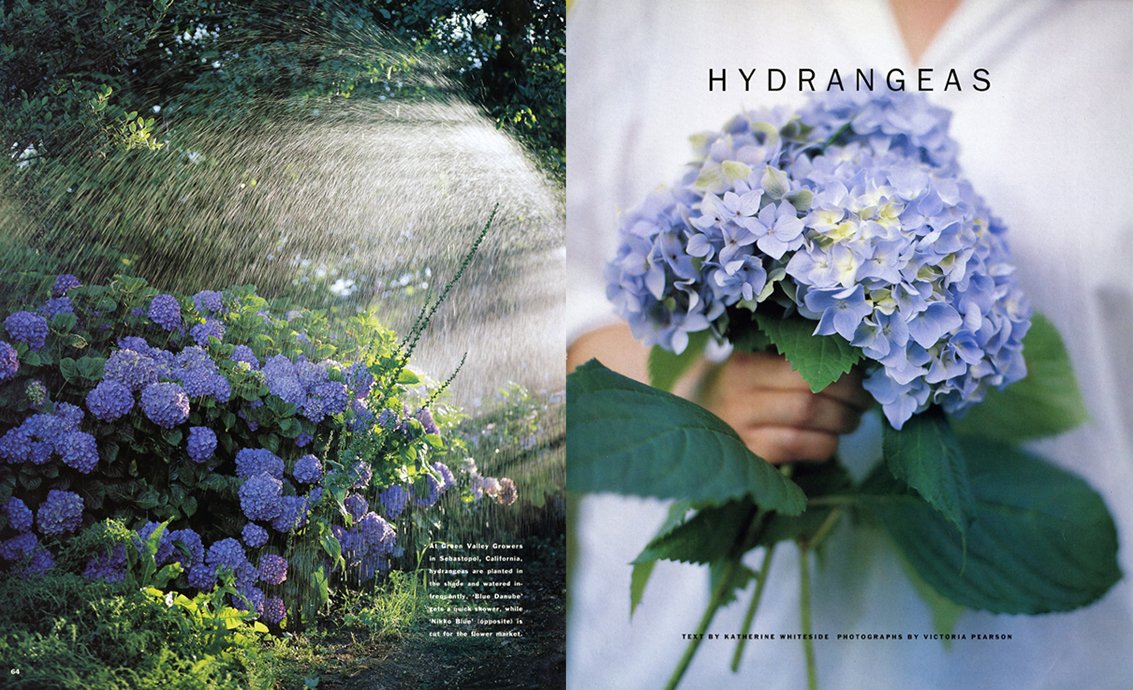
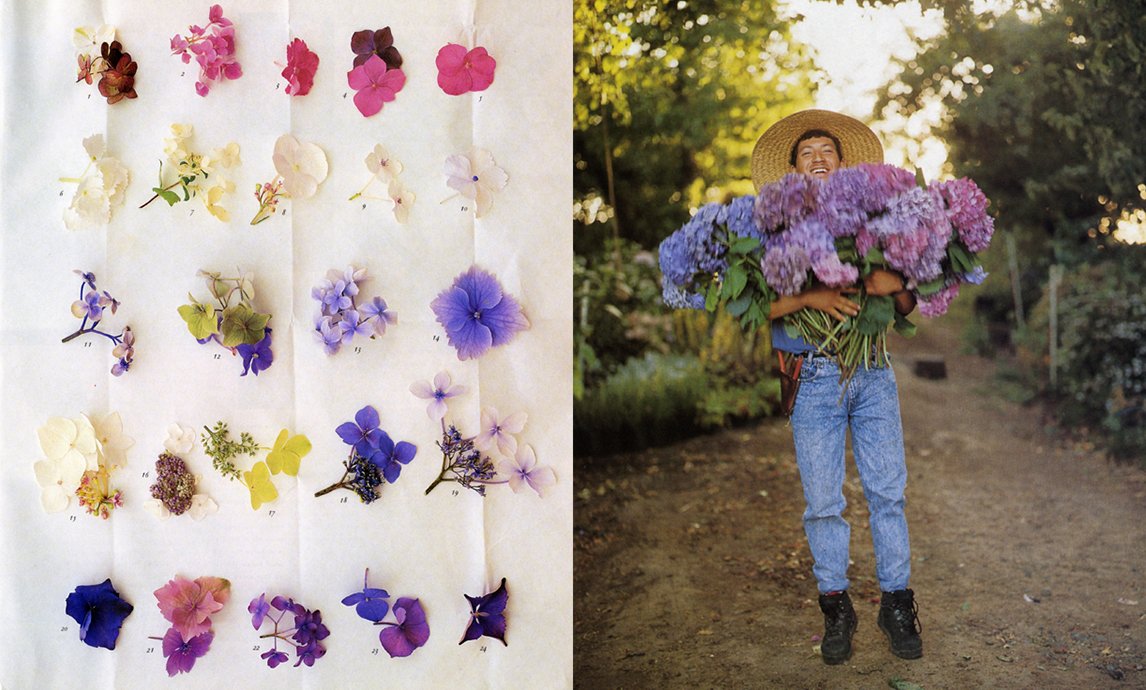
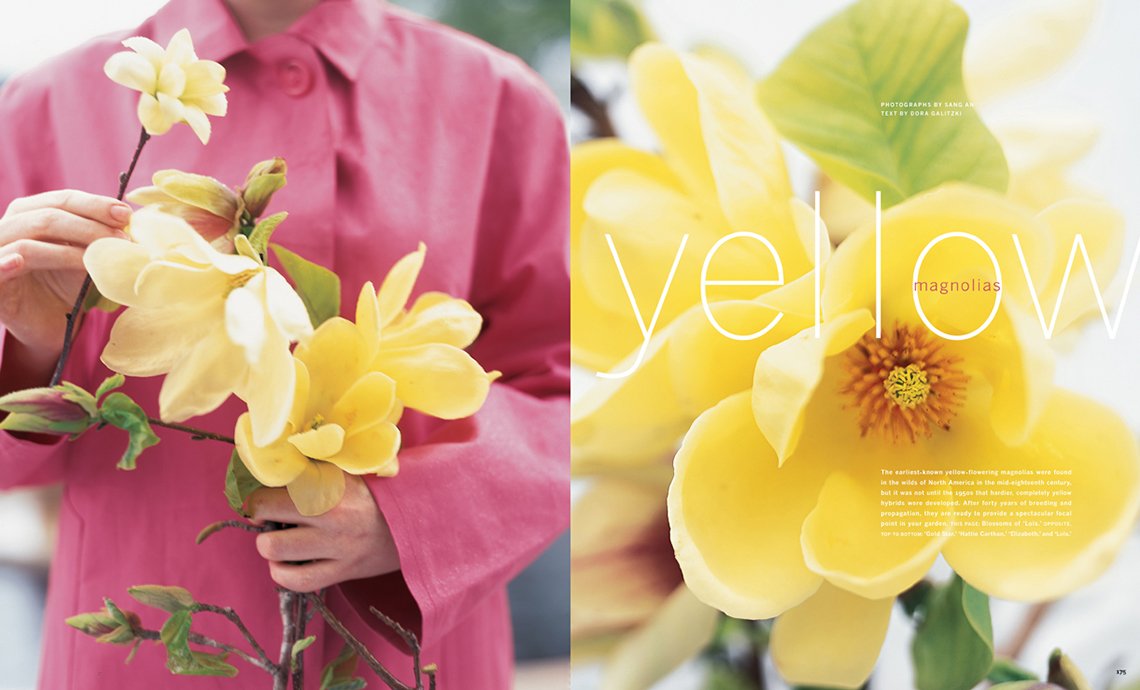
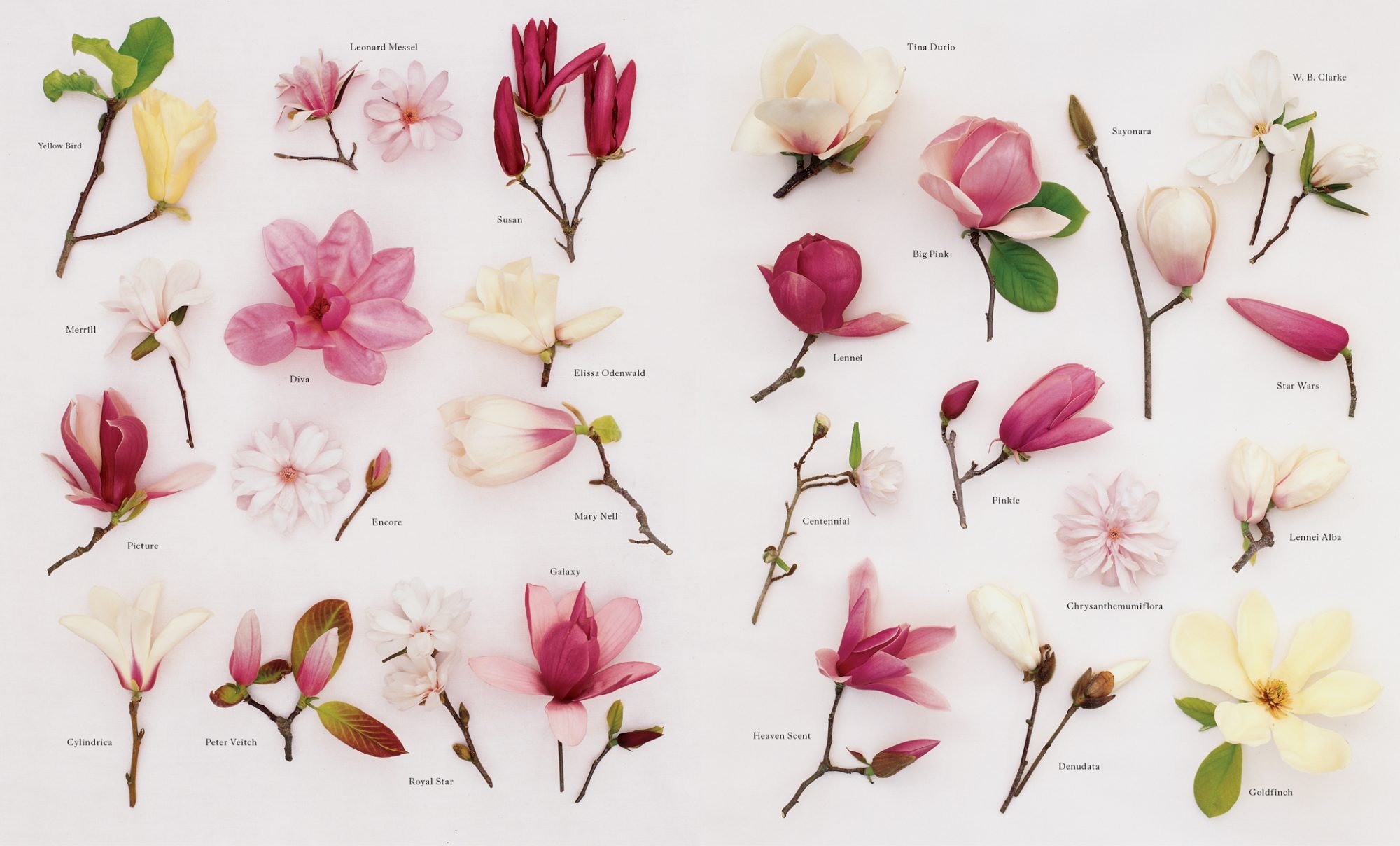
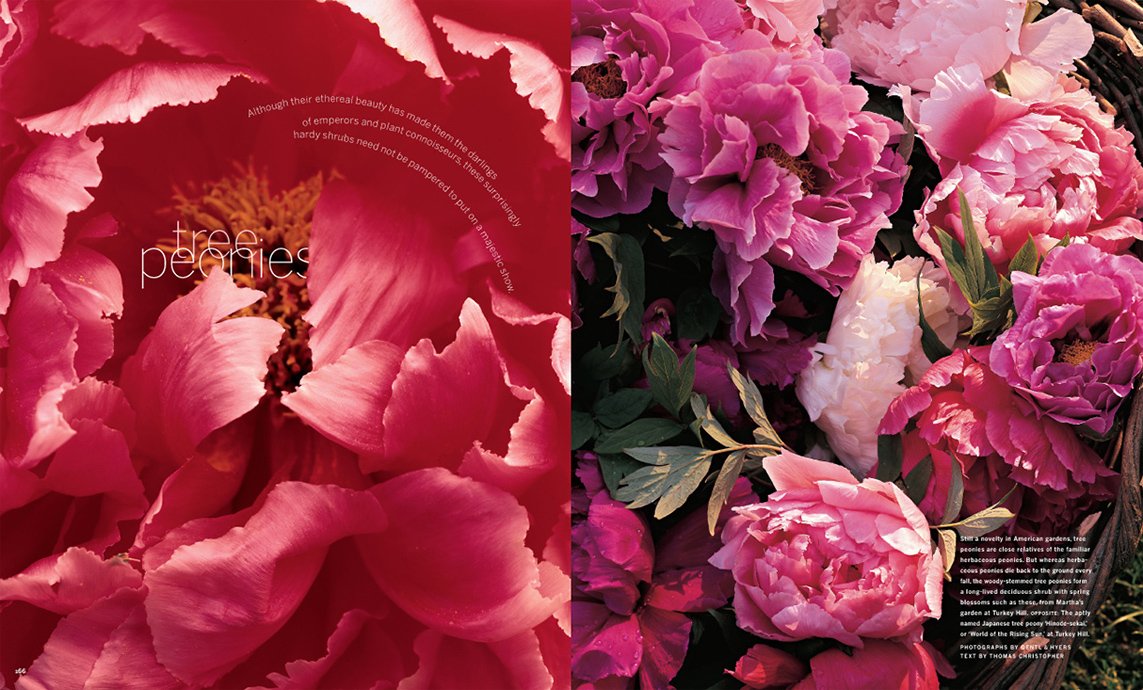
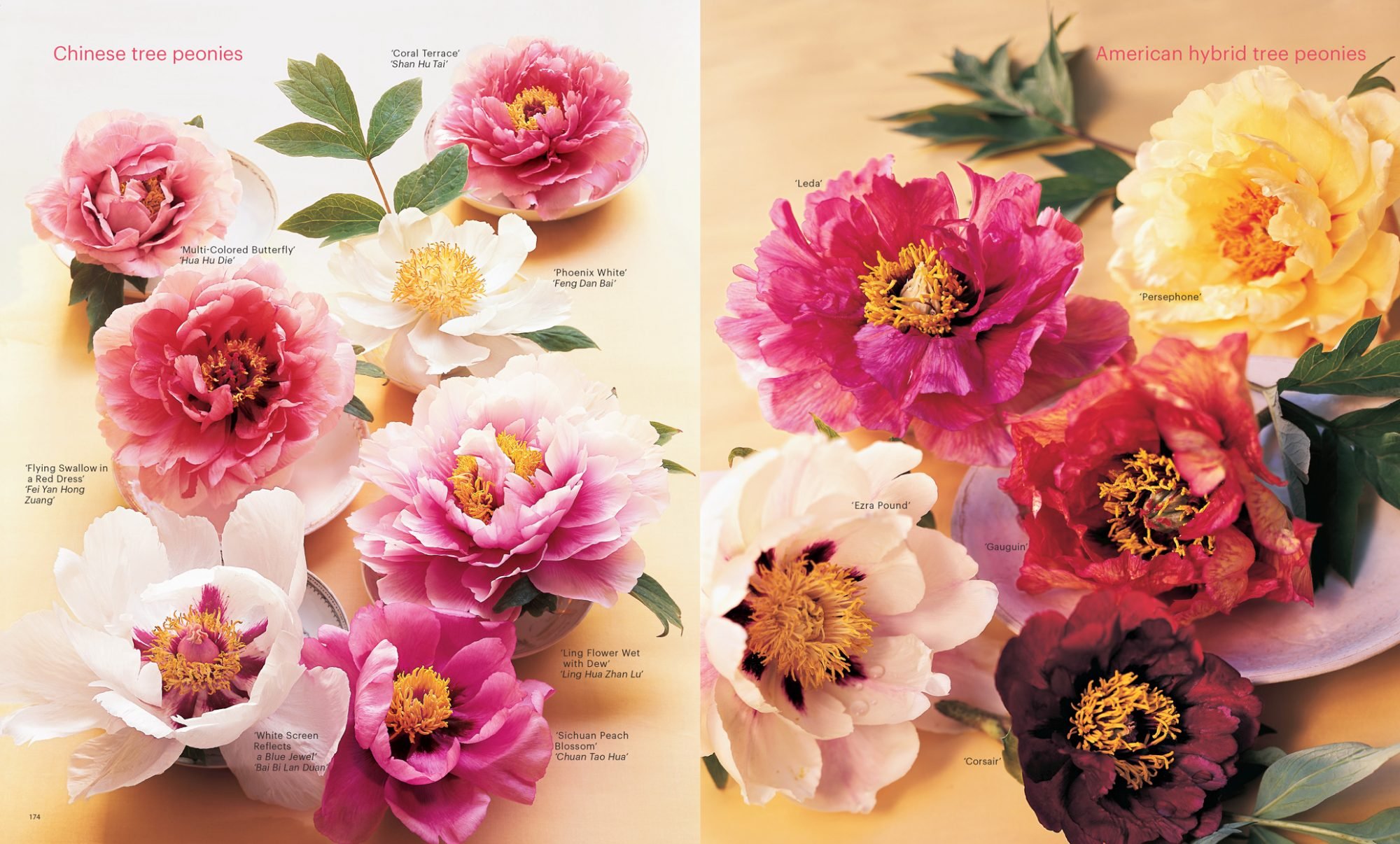
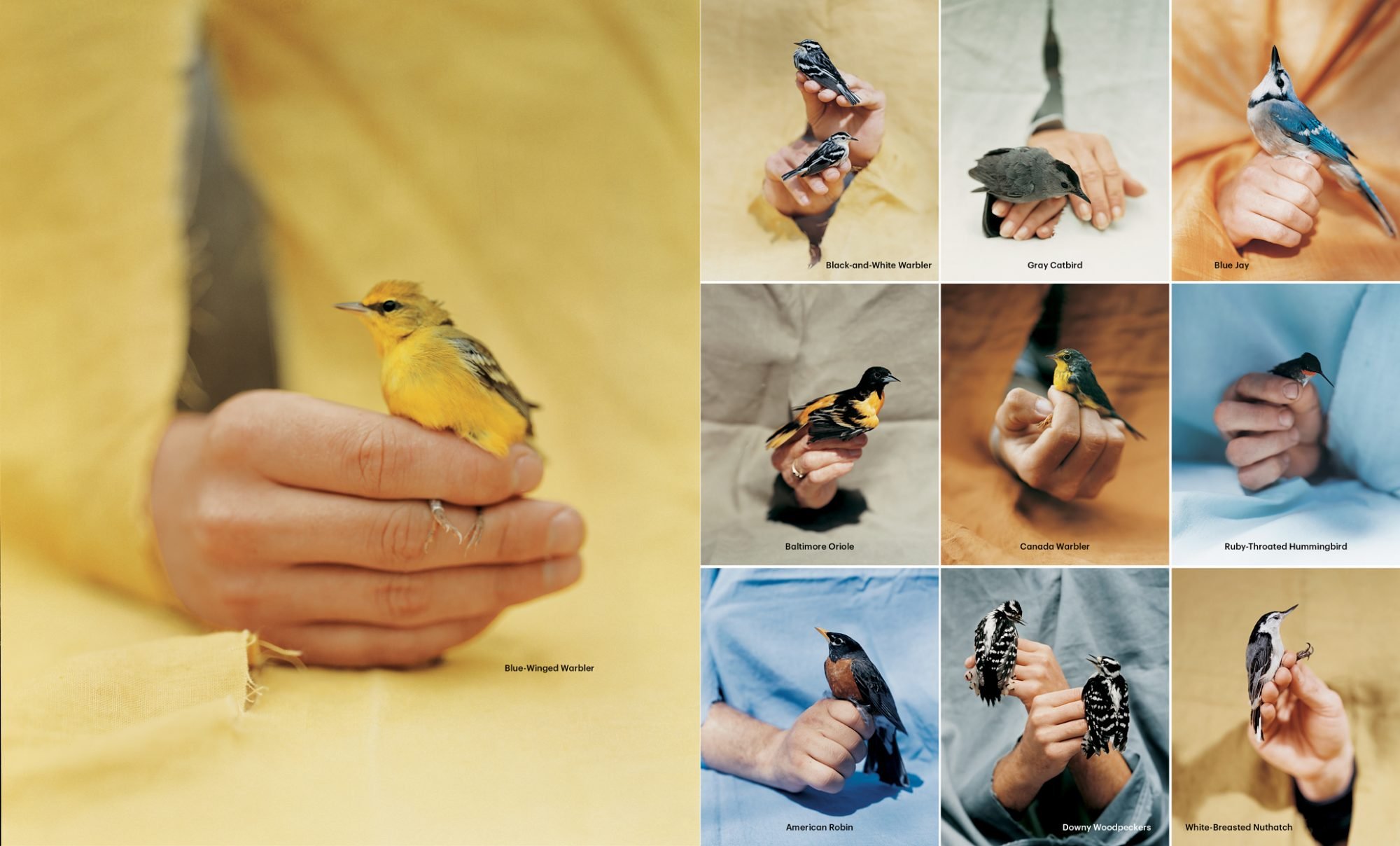

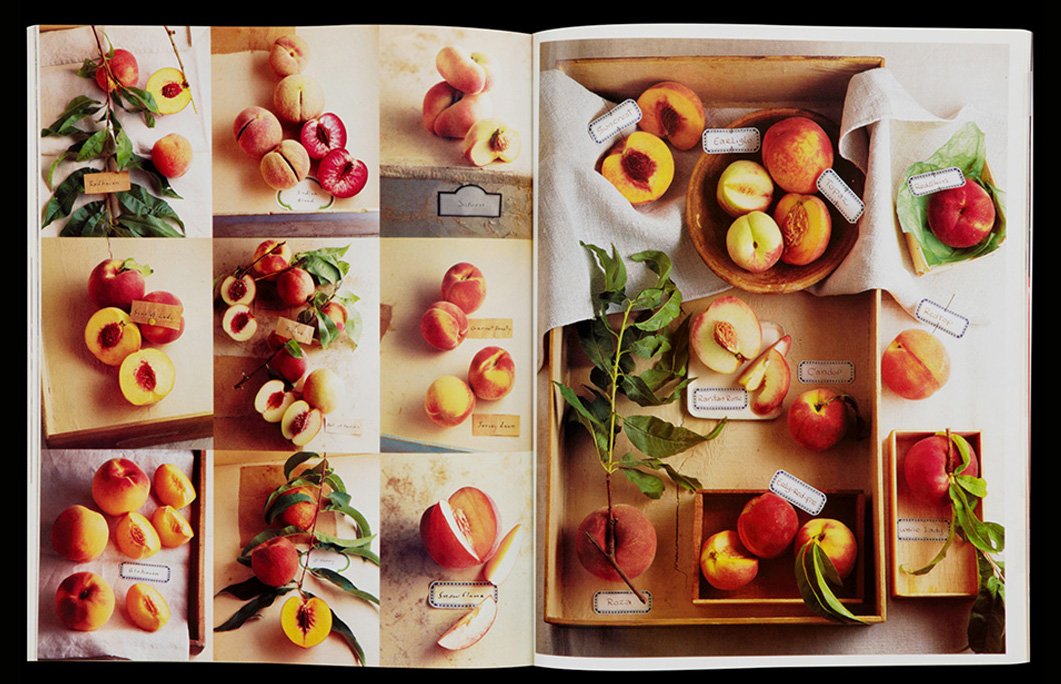
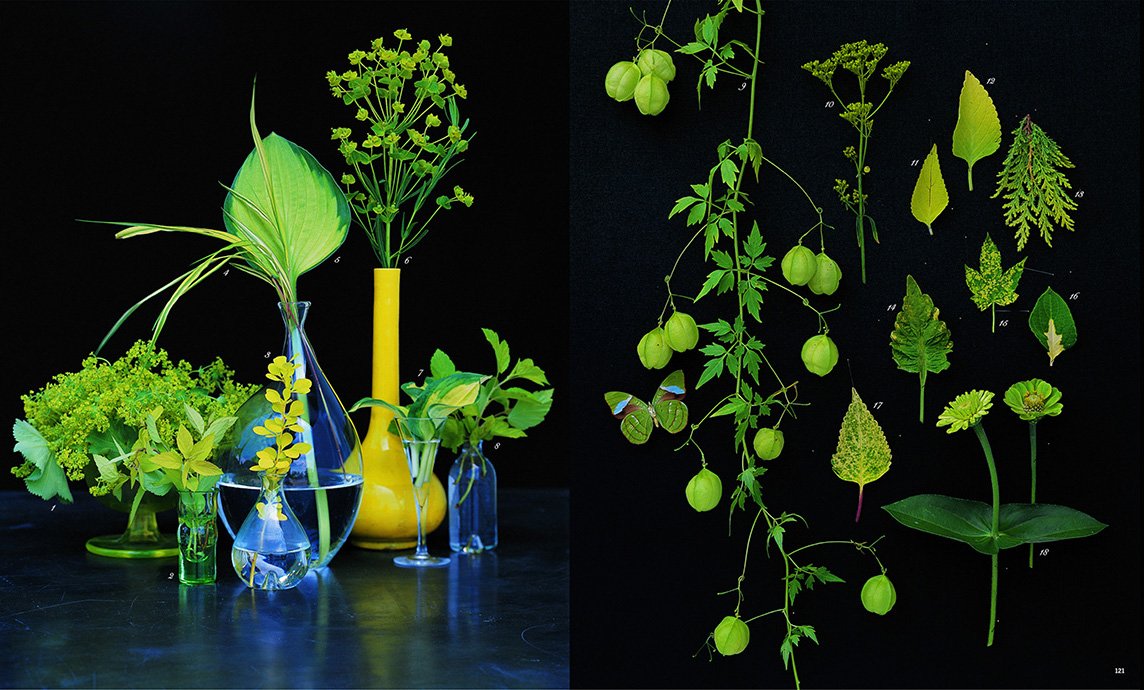

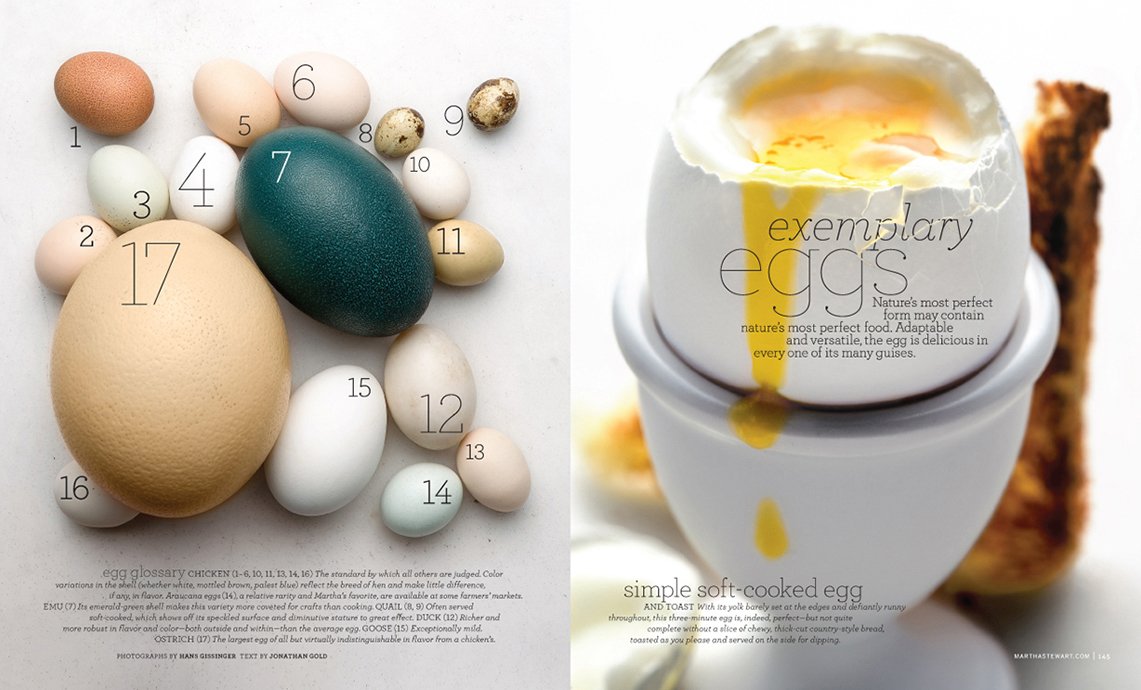

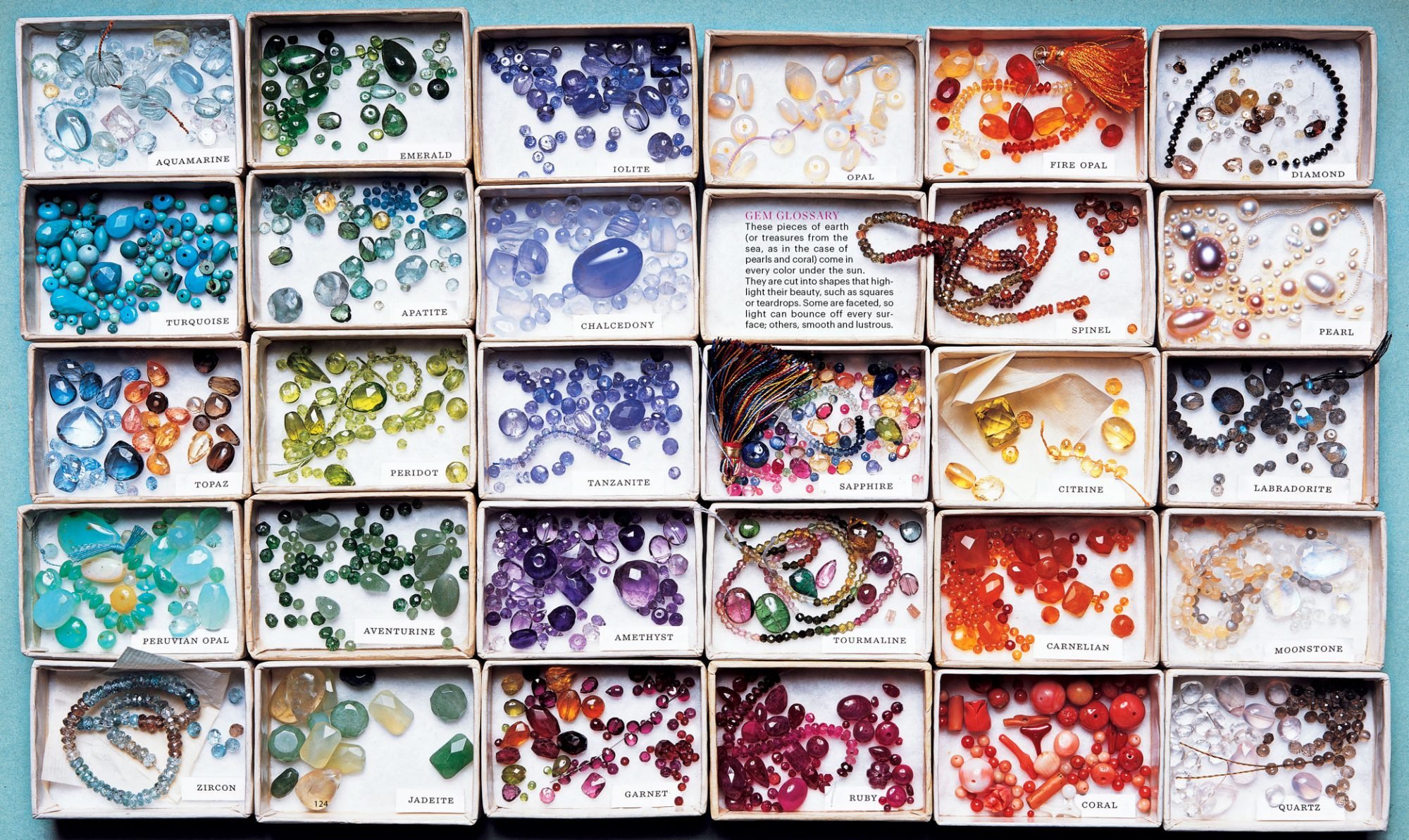
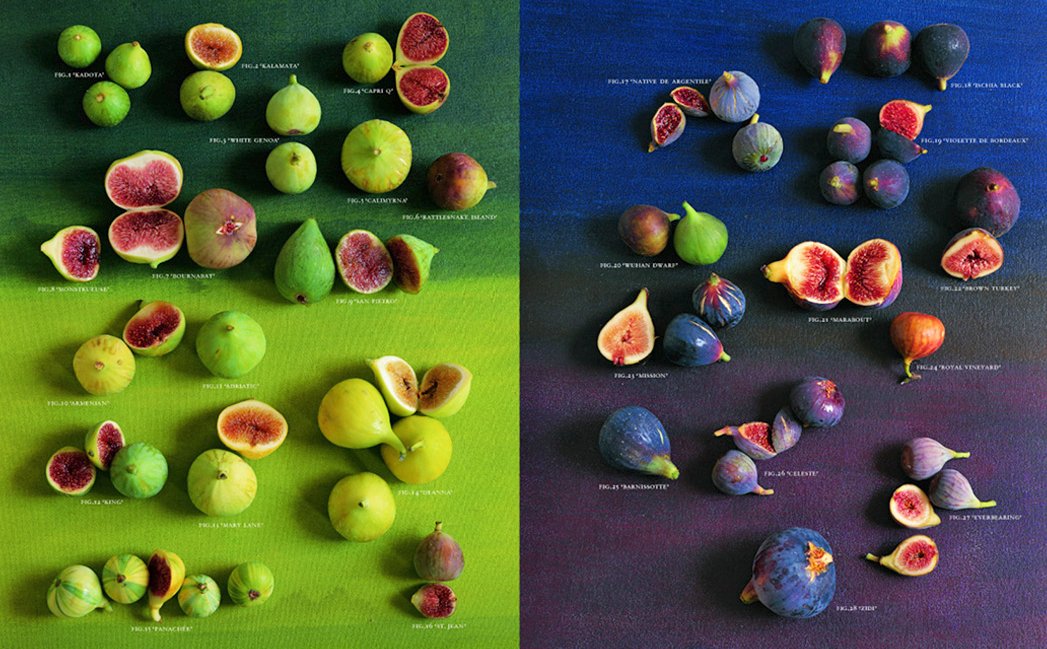

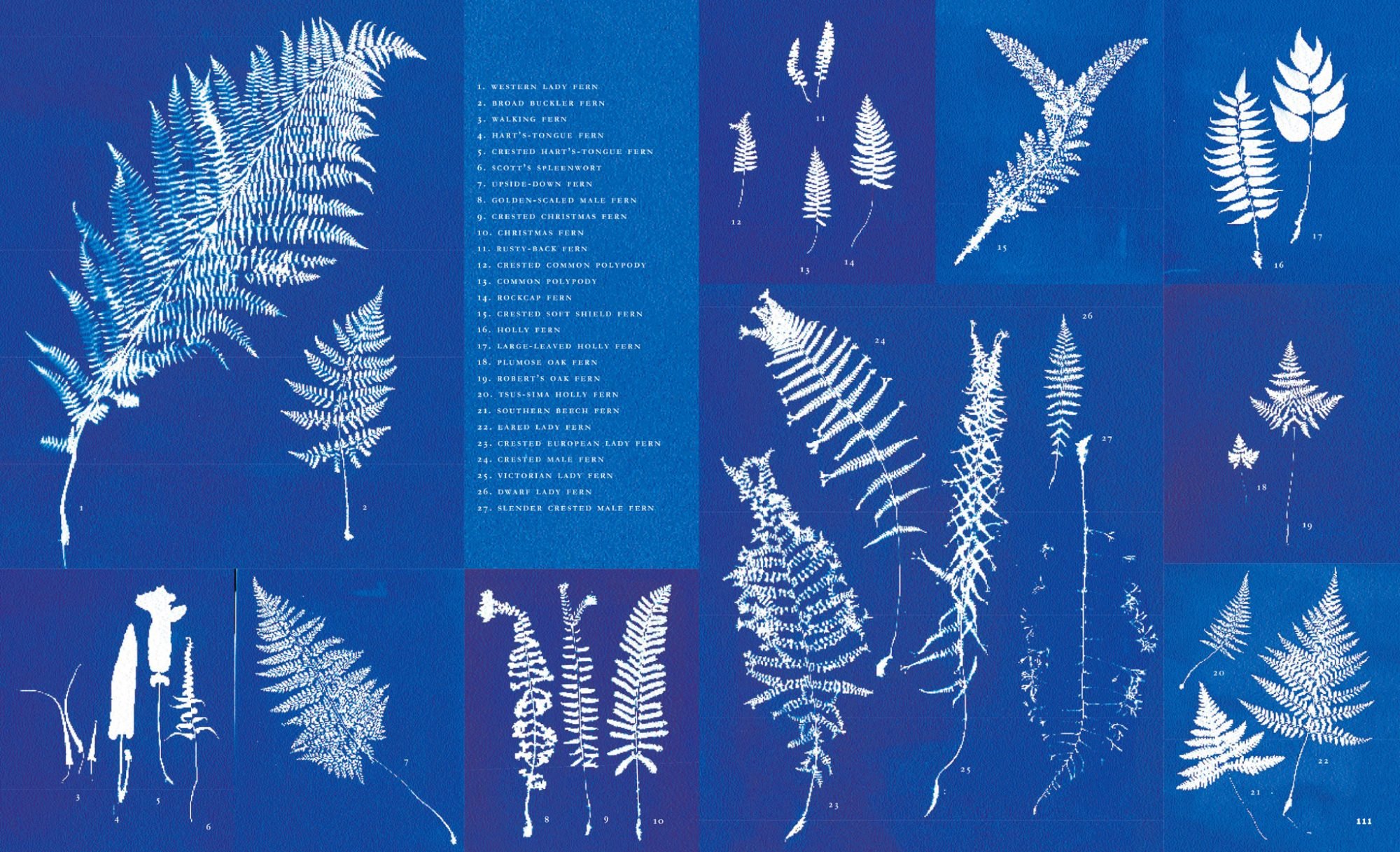
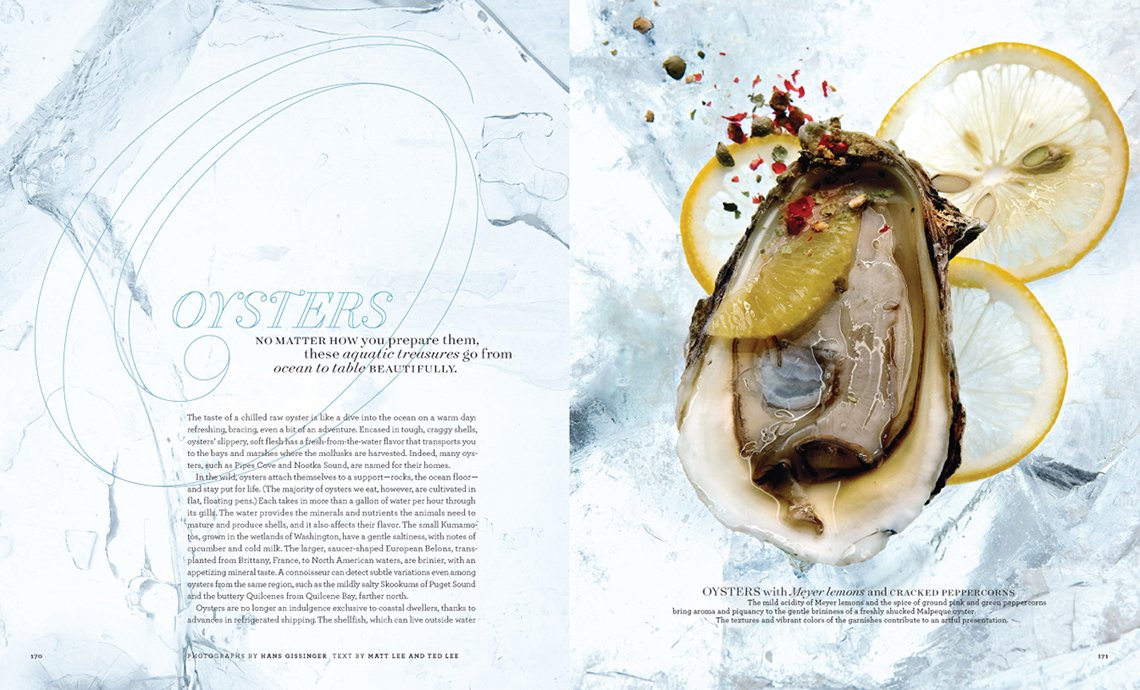
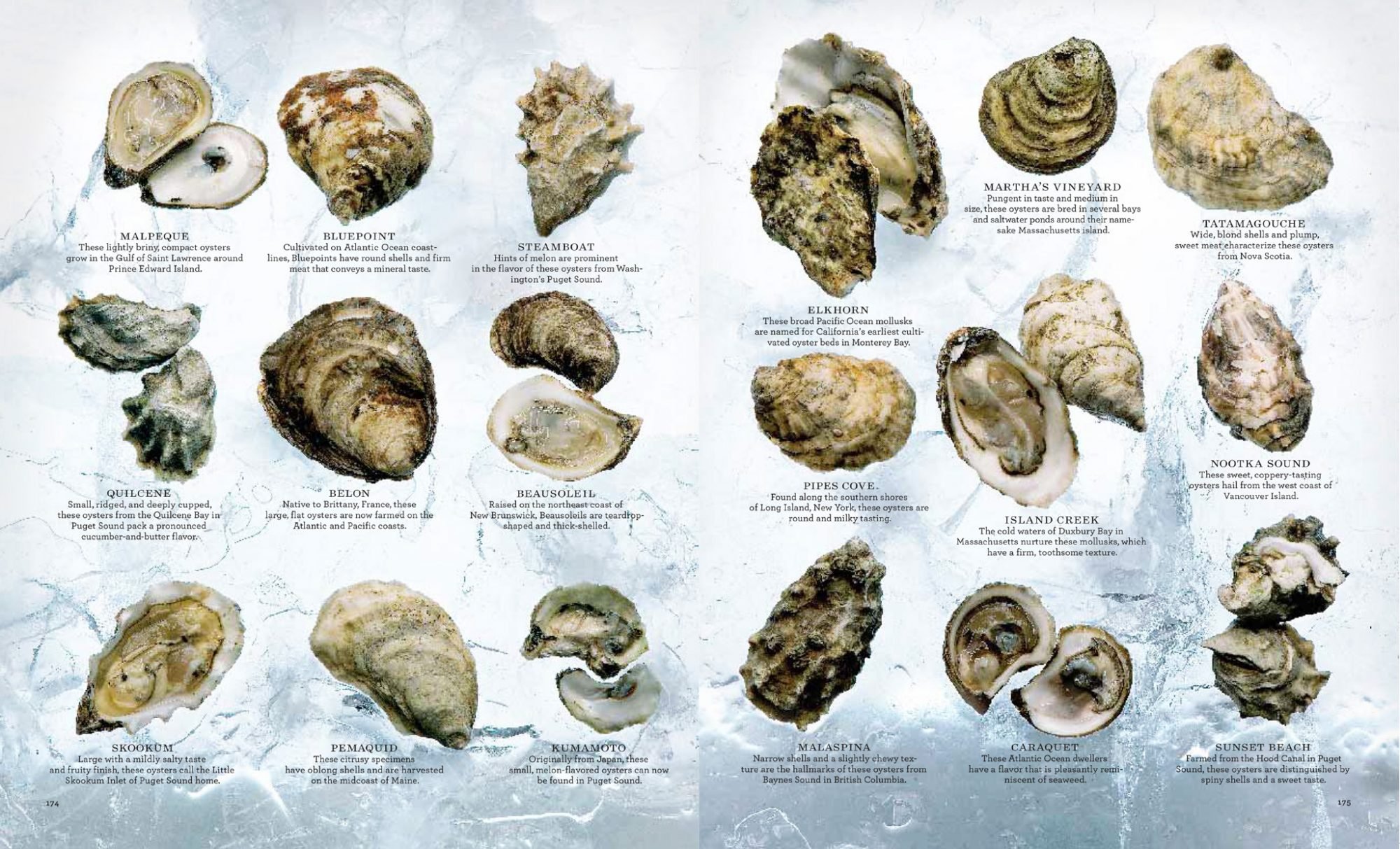
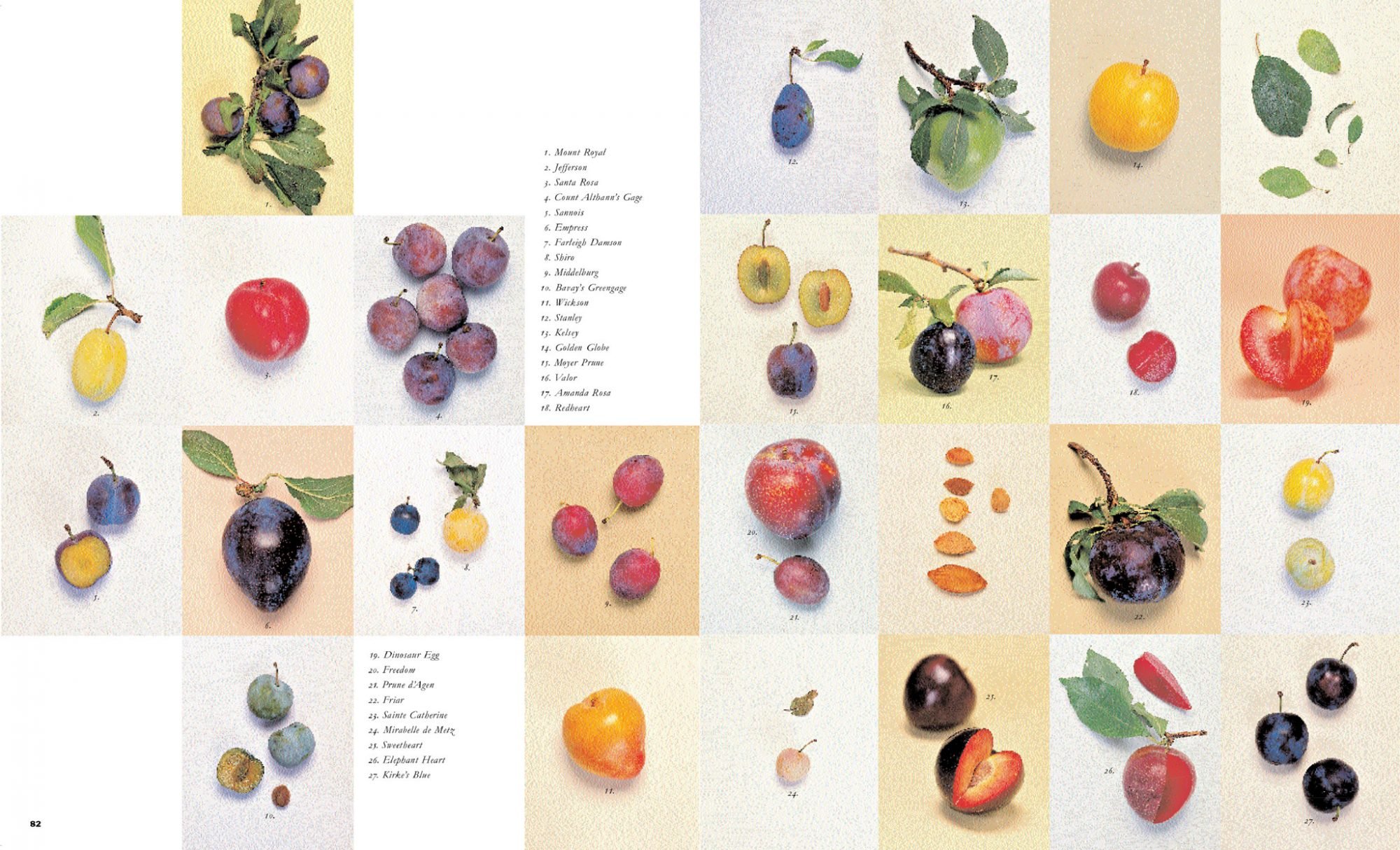
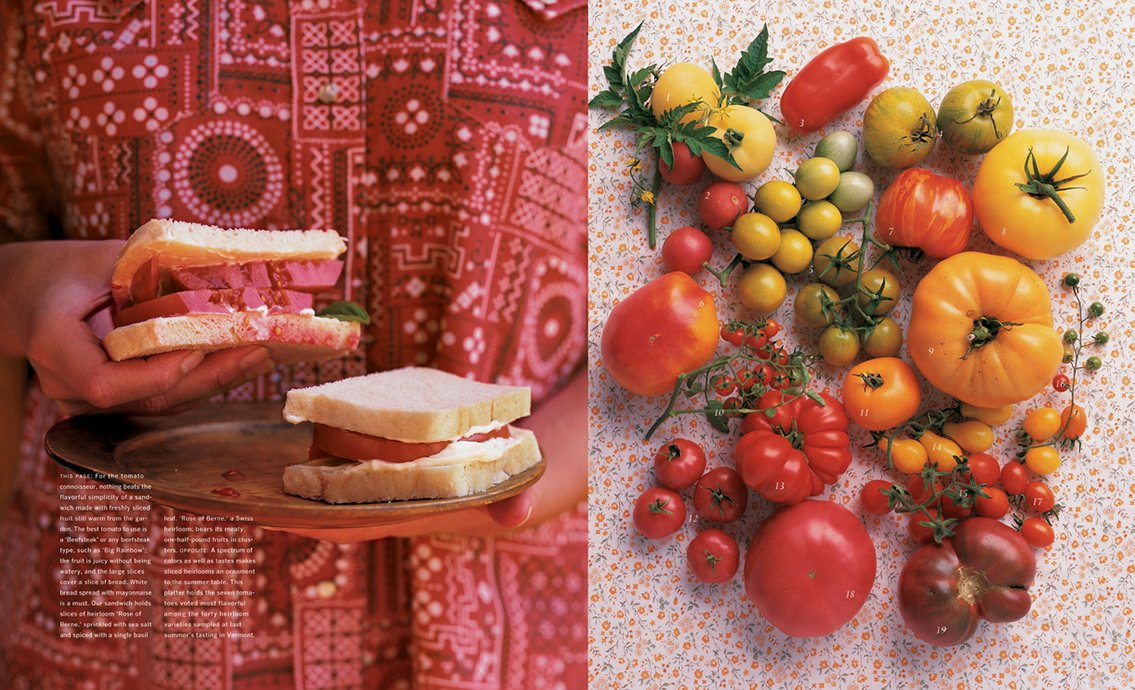
Debra Bishop: The early ones were beautiful too. That sort of set the whole tone and the whole format and motion. The apple glossary was stunning and amazing.
Patrick Mitchell: Well, the incredible thing is, what you just described was just for one-tenth of the magazine. You still had all that other stuff to do.
Gael Towey: That’s true.
Debra Bishop: It’s funny because I’m still making glossaries. I do it differently. I’m making glossaries with typography and information, but those photographic glossaries were, absolutely, cat’s meow.
Patrick Mitchell: And I assume you got a lot of great attention for that.
Gael Towey: We did. We won so many awards. Because they were really completely unique. Oh, I remember another—and people would come up with crazy stuff like , I think it might have been James Dunlinson, who did an oyster glossary. And, of course, we got oysters from all over the country—west coast oysters, east coast oysters—and we hired an ice guy to come in with this enormous block of ice. It must have been about eight inches thick. And it was probably 30 inches by, I would say, 18 inches. And all of the ice was kind of gouged out so that the oyster could sit in the ice pocket. And then he lit the whole thing from underneath. So the ice is glowing from underneath. And then there’s, of course, the top lighting.
We did some complicated stuff.
Debra Bishop: It was epic.
Patrick Mitchell: Imagine doing that for a website.
Debra Bishop: Those should somehow be framed and they should be put in a gallery. They’re incredible.
Patrick Mitchell: In the time before Martha Stewart, the legacy power structure in publishing meant that magazine editors were absolute monarchs. You and Martha changed that. And we all owe you a debt of gratitude because, for the most part, before the success of Martha Stewart, designers didn’t really have a seat at the table. Or, at best, we had a limited role in shaping the content of our magazines. I’m fairly sure this was part of your master plan, but can you explain how and why the process was different from other magazines?
I mean, I would say it’s partly the nature of being a startup. It was kind of the same thing at Fast Company. We didn’t have a lot of “magazine people” there. We were just a group of people with an idea figuring out how to make it happen. So you had the sort of freedom to create the structure you wanted. But how did you go about doing that?
Gael Towey: We did have the freedom to create the structure we wanted. And when Martha asked me to be the art director, I said, “I want to be on the same level as the editor. I don’t want to report to the editor. I want us to be a team.” And she agreed with that. She, of course, was the last person to make a decision, but she didn’t function like an editor in chief.
That wasn’t really her role. The whole idea of teamwork, as I mentioned, came out of my realization at House & Garden that you’re stifling creativity by keeping everybody in a separate, isolated role. And the thing that I miss the most about working at Martha Stewart Living is that collaboration. The fun of it all. The fun of coming up with ideas, the fun about learning from people.
I learned so much about gardening and cooking. And I learned not to be afraid. You just try something. And that’s kind of a big deal.
Patrick Mitchell: You paid it forward because, from everything I’ve heard, from Deb’s description, that style of collaboration trickled down to all the different departments, designers, editors, food stylist, prop stylists, crafters, gardeners …
Gael Towey: Well it trickled down, but also, it became the way we organized all the other businesses. And since this is about print, maybe you don’t want to talk about all that stuff.
Patrick Mitchell: No, we do.
Gael Towey: The catalog that Deb was the art director of with Fritz [Karch, MSL’s Collecting Editor], Martha by Mail, they were a team figuring out products, inventing things, creating a style of catalog that became the style of all catalogs. A lifestyle of catalogs, because they used that how-to idea, that inspiration idea, that we established in the magazine for the catalog.
And then from there we went on and did the same thing with Kmart. And the same thing with a lot of the other product businesses. And none of us had ever done any of that before. One of the things that was great about working for Martha is that she didn’t do that stuff before and she thought that she could do it, so she just figured that everybody else could do it too.
“When we started Martha Stewart Living, I wanted to have a team. I wanted to be with people. I wanted to have friends. You know, I wanted to have a working relationship with people. I didn’t want to be isolated in some room, and then after they beat you up all day long, you get in your car service and go home.”
Debra Bishop: Yeah, she wasn’t afraid of trying anything new. And that was a wonderful sort of incubator for creativity. And Martha by Mail was my favorite job that I have ever had. It was! Because not only were you branding, getting the experience of photography, and learning, going on photo shoots, learning how to be an art director, but you were creating products.
Now, nothing’s better than that. And I don’t want to say too much, but it brings up this whole concept of the magazine being the research area that everything else spun off of. So for instance, if the magazine created this amazing story on family trees, then at Martha by Mail I would get to create a product, a beautiful family tree that was inspired by the actual article in the magazine. But actually make a physical product that we could sell. Now that is really fun for a designer and art director.
Gael Towey: Yeah. And look at you now. Now you’re doing this amazing kid supplement at The New York Times, and you’re utilizing all that—you’re inventing that product from scratch. It’s very similar. Very similar.
Debra Bishop: I still think of what I’m designing as a product, which it is. But I go a little further.
Gael Towey: Deb, can I remind you about your interview with Martha? When we first hired you?
Debra Bishop: I knew you were going to bring this story up!
Gael Towey: I love this story. I really love this story. Okay, so Deb Bishop is this premier type designer and she comes in with her portfolio, and she’s coming from Rolling Stone. And Martha’s there to meet Deb because I said, “I found the right person. We really want to hire Deb Bishop.”
And Martha’s like, “Well, I have to meet her.” And this is to do the Martha by Mail catalog. So, Martha looks at the first two pages of Deb’s amazing, amazing Rolling Stone work. Incredible typography. And she closes the portfolio and pushes it back to Debra and says, “Well, you can’t do that here, so what are you going to do?”
Debra Bishop: And I did not know how to respond to that, but luckily Gael was behind me and supportive and did hire me regardless. Anyway, it’s a very funny story. I think I mumbled something like—I don’t think I said anything! I can’t even remember. Anyway, funny story.
Gael Towey: I think one of the reasons that you were such a good art director with photography is because typography is about balance, and texture, and emphasis, and design of the whole page. And photography is the same thing.
Debra Bishop: Yeah. It’s really about design. I consider my Martha Stewart Living days like working in a creative factory. Everything you needed to create a story was in house: props, photo studios, a set building shop, a test kitchen. Sometimes a wonderful smell would drift by my desk, and I’d be, “Hmm, is that baked apple pie or is it Martha’s favorite brownies? Maybe I’ll walk over there, see if I can have a little taste.”
Inspiration was always at hand simply by walking by the style department, or the craft department, or even the collecting department. Do you think that there’ll ever be another company like it?
Gael Towey: Probably not. It was extraordinary. It really was. People described it as “Santa’s factory.”
And remember how many tours we would take people on? It was in this incredibly beautiful, modern building—the Starrett-Lehigh Building—that was built at the turn of the century and it had rounded walls and incredible light because it’s right on the Hudson River.
But Fritz would go out and collect things for his collecting stories. We had a whole room of props. And all the shooting studios were right there. So you were constantly being educated. And a lot of people did go through Martha Stewart Living. And part of the reason a lot of people got hired away is because they were so well trained and they were trained in everything across what you just mentioned.
Because most of the time in a magazine, because it comes out either weekly or monthly, you’re kind of stuck in a job that’s like a cog in the wheel. And you just do that same job over and over and over again, every single month, in order to get it out on time. But that’s not the way we worked.
Patrick Mitchell: I’m glad you brought up the building because I never went up there, but I heard stories about it. And I assume you were involved in the design—that was not where Martha originally was. You made a big move into that building as you grew. But were you involved in the design of the space as well?
Gael Towey: I was. I worked with the architect. And that was really fun, too. When I think about all the different things that I got exposed to, I was so lucky.
I had never designed products before. I never designed packaging for products. I never did national advertising. I never did sales material for signage in stores. I never did any of that stuff. And then I got a chance to do it all. And even the presentations, you know, thinking about the glossaries, those glossaries influenced us in so many ways. I remember when we did the holiday product at Kmart, we did glass bulbs in every single color.
And An Diels who was the art director on the product side, created this glossary of Christmas balls. And every single color gradated, by color, all the way down the hallway as you entered into the space. It must have been 40 feet long, and every single color gradated according to the color spectrum. It was unbelievable.
Debra Bishop: It really was.
Patrick Mitchell: Gawd, publishing was so fun when there was money!
Gael Towey: I know. We’re very lucky that we experienced that.
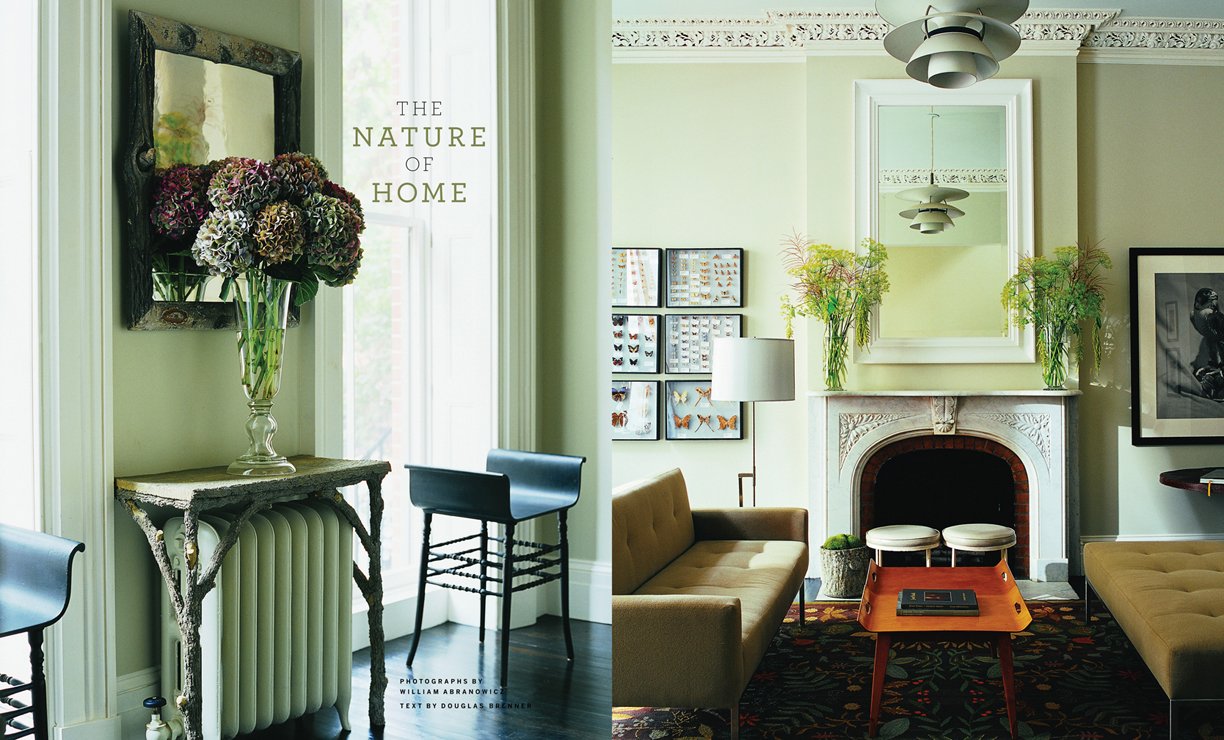
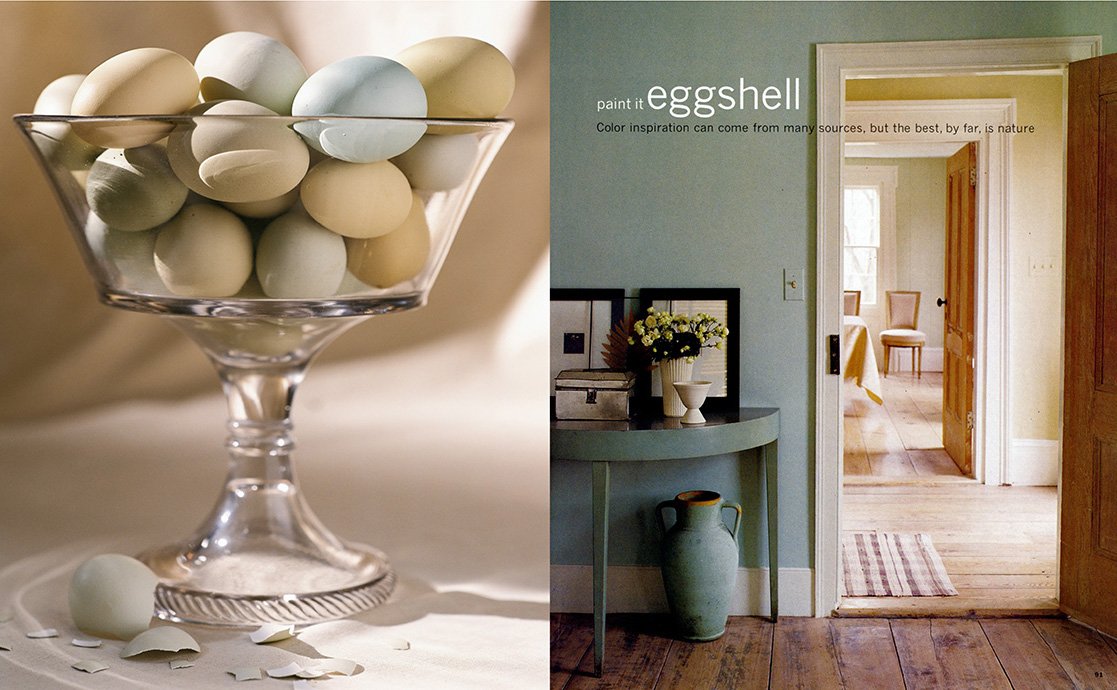
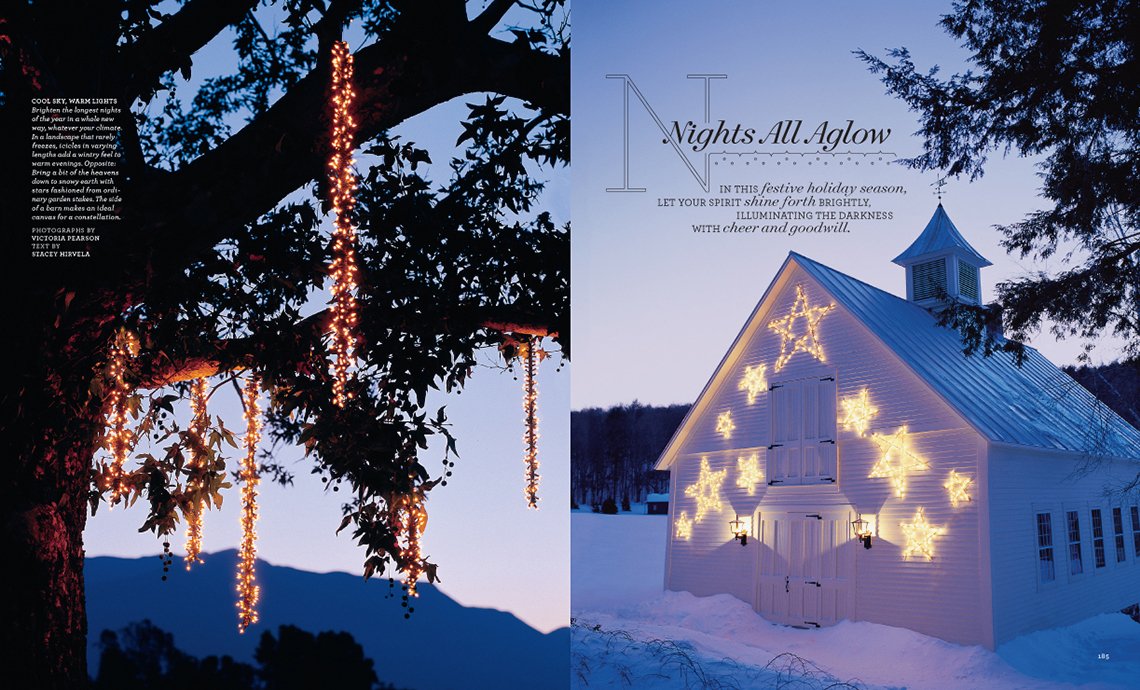

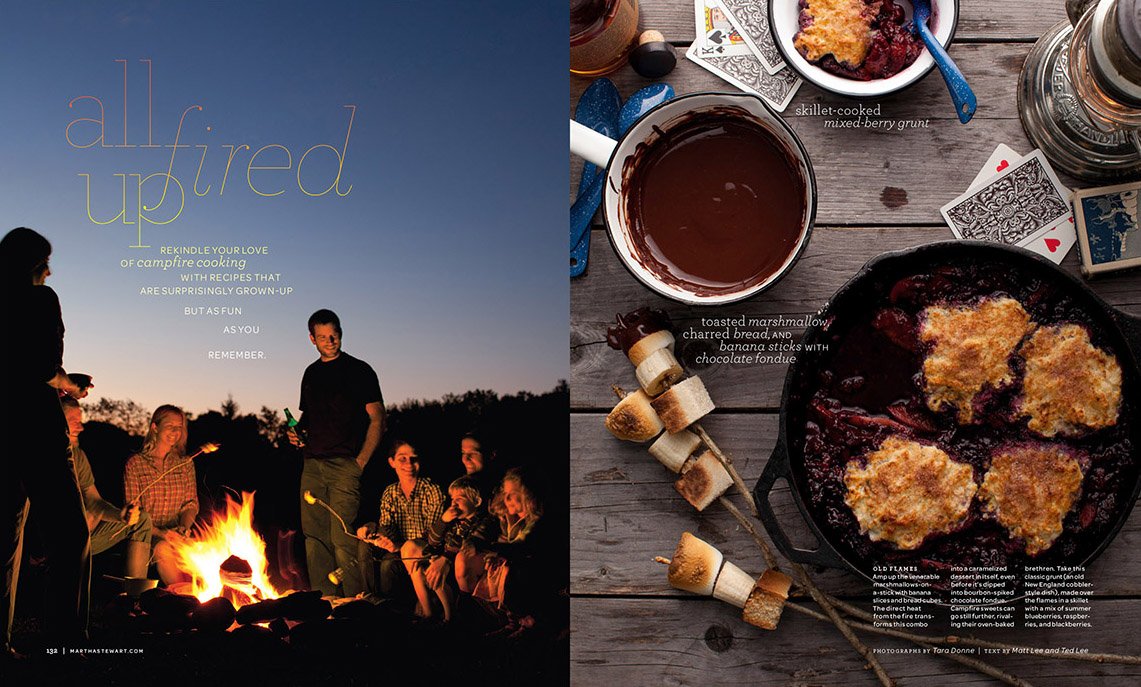
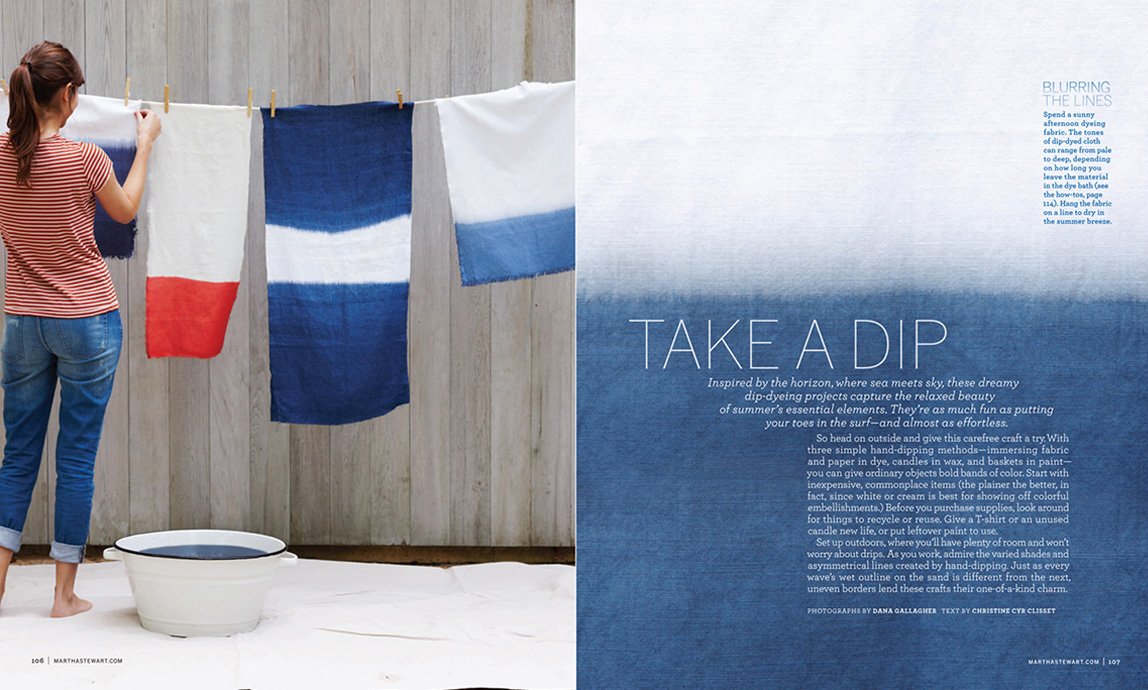



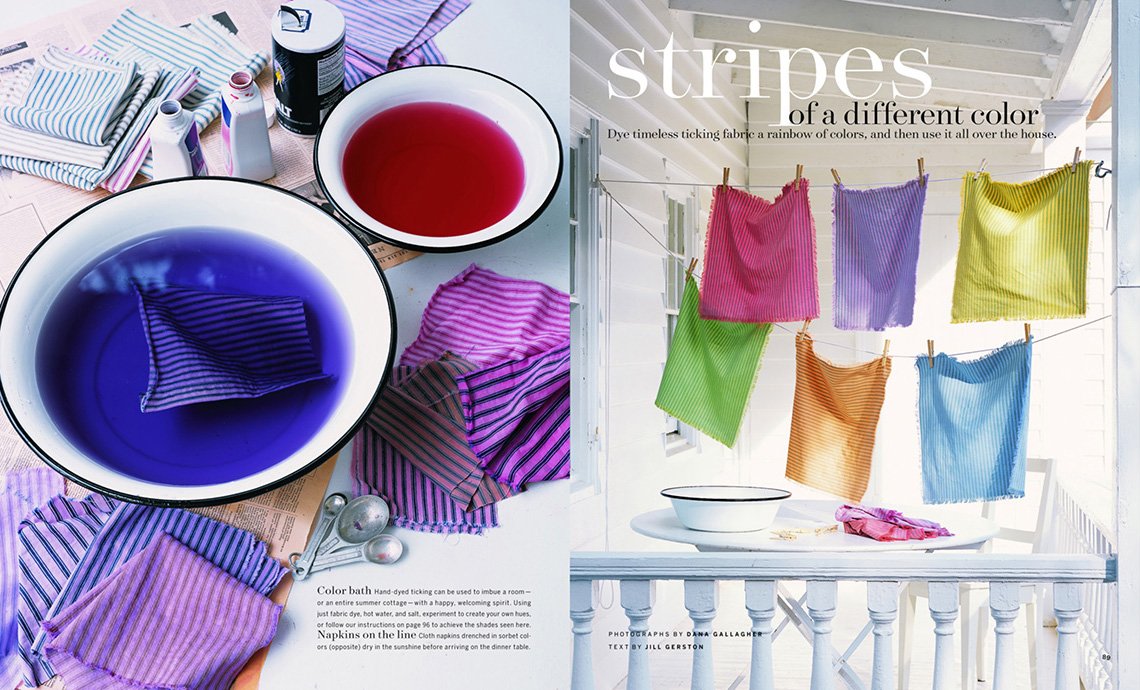
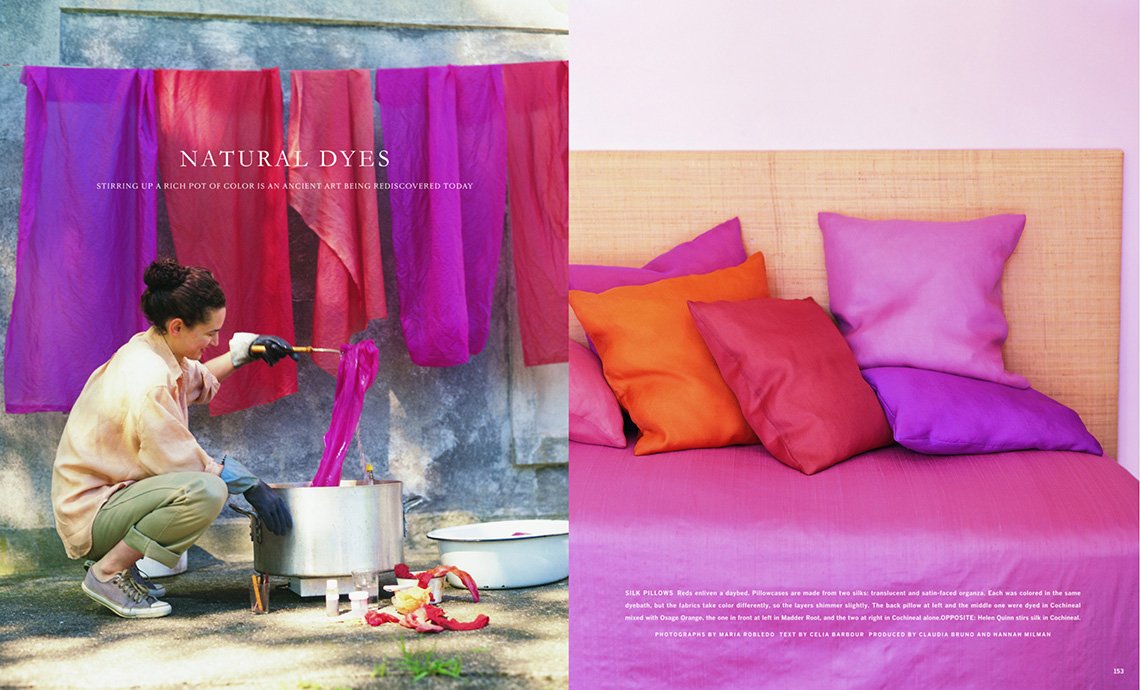

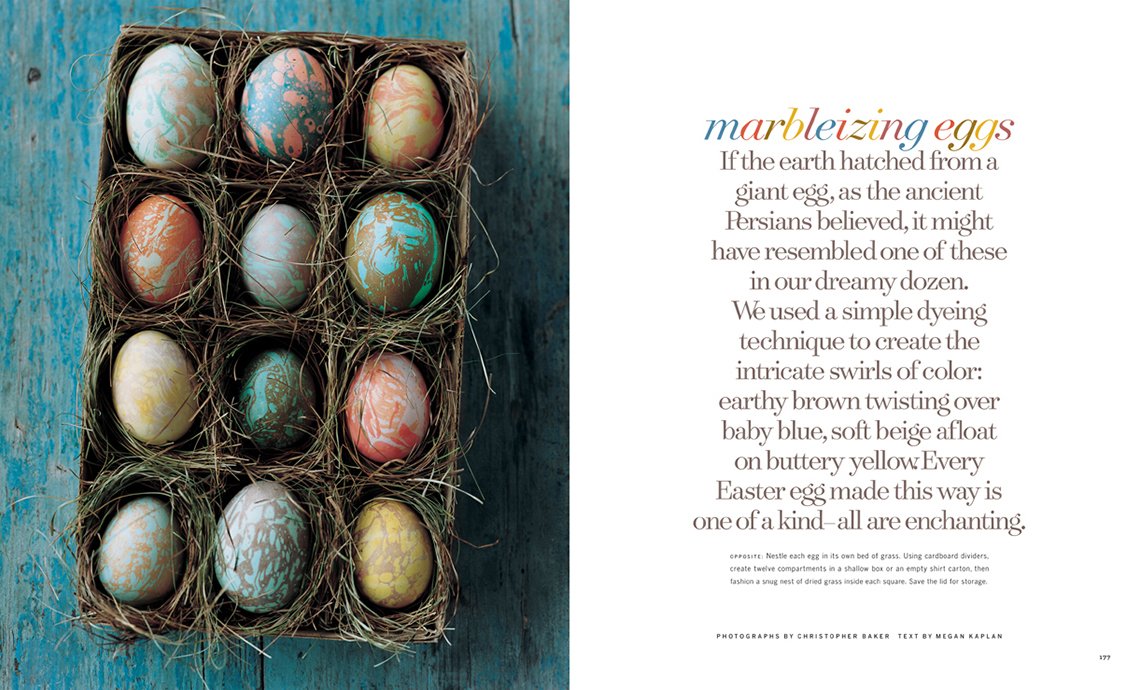

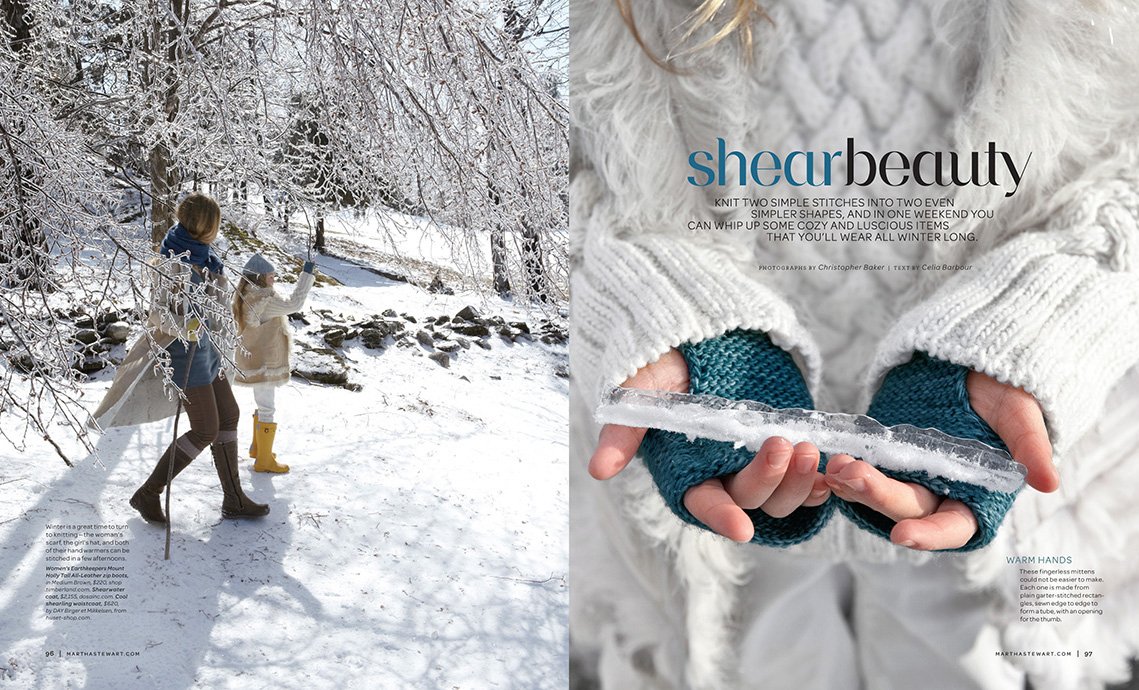
Patrick Mitchell: So the magazine was a huge success, and it grew and grew and grew. The centerpiece was the magazine itself, Martha Stewart Living. But as you’ve talked about, there were offshoots. There was a mail order catalog, Martha by Mail. You had a book division. You did a weddings magazine, a kids magazine, a baby magazine. Everyday Food, which was a recipe magazine. And then this whole side gig with Kmart, which played a huge role in the massive expansion of Martha.
And we all know about that. Everybody knows about the business. But I want to talk about it from the perspective of you, Gael Towey, as one woman overseeing this incredible amount of work and all of these people. Can you talk a little bit about what your approach was to surviving this massive beast of a company?
Gael Towey: Well, I loved it. I really did love it. And I was very well aware of the privilege that I had of being—Martha used to describe me as “first in, first out.” You know, go in, set it up, figure out who to hire. And I used my principles of the type of people that I like to hire for the magazine as the type of people that I wanted to hire for the other product businesses. I wanted people to be collaborators as well as being talented. Obviously, they also had to be talented.
I also wanted them to have a little bit of knowledge of art history. That was something that was a real bugaboo with me. I wanted people to know about art. And know where it came from. So hiring, spotting talent was probably the most important thing for me because we grew so fast and we had to hire so many people and they had to be inventive, and have a good color sense, and be able to follow through, and all of that.
You know, the other thing, in terms of going back to the different type of structure, for most of the life of the company, when I was there, I was in charge of all the people who were the creatives. And they reported to me through their different bosses and so forth.
And it kept all the creatives working together. But it was also a very, very different structure. You didn’t have a business head of the product departments who were in charge of the art directors. It was the art directors who were in charge of the art directors. So they really understood that and they understood branding, the branding, the whole idea of hands, and hands holding things and all of that. That kind of evolved, those brand definers, evolved out of the magazine.
And the whole thing of starting it yourself and doing it yourself evolved out of the magazine. So when we did 280 paint colors for Kmart, we were starting from, you know, Martha’s favorite colors on Martha’s favorite dishes and colors from the garden.
And we hired a painter who would come and make paint swatches. We had thousands of paint swatches that we made into a final palette for Kmart. But we started with actual paint. We weren’t going to other stores and getting paint swatches off the walls. It was all so original.
And when we did the seeds, Martha wanted to grow every single seed in her garden. This was still in Westport. She cleared some land. We planted every seed that we were going to sell. When they grew into flowers, we had them held in hands so that you could see the scale of the flower.
And so the flower would be isolated and you would see what it would look like. And nobody did that. It’s kind of unheard of that we would have that kind of control. But we were reaching 72 million people, and that Kmart deal was the thing that really brought Martha to the fore.
“One of the things that was great about working for Martha is that she didn’t do that stuff before and she thought that she could do it, so she just figured that everybody else could do it too.”
Patrick Mitchell: You scaled your management style, you know, well, your design style, you scaled that with the company. And it’s really a survival mechanism that, “these are the rules in place.” Like when Martha told Deb she could never work there ...
Gael Towey: She said, “you can’t do that here,” right? You can’t do that, can’t do that here.
Patrick Mitchell: But that was her way of saying, “this company is so big, we have to have a way of doing things, or we won’t survive.”
Debra Bishop: Obviously, Gael developed a lot of these systems that actually really worked out so beautifully for all of the extra projects.
Gael, your job became huge. It really did. It was a huge job. The bones of the company and the bones of the research for the magazine then actually helped expand and brand the other areas of the company. So it was a huge job, there’s no doubt, and so incredible. I don’t think there will ever be another company exactly like that. And then along those lines, I just wanted to ask you a question that I get asked a lot.
How did you deal with balancing motherhood? You have two children, Maud and August. With the long hours, and the stress, at the helm of a big creative company. How did you balance that?
Gael Towey: It was hard because, as you know, in the creative world, you never stop working. You never stop looking. Weekends I was dragging my children around to antique stores.
Meanwhile, today, they’re so picky about everything. They were kicking and screaming, but they certainly get it now. I remember once—Martha used to call me all the time. It would drive me crazy because she’d called me at, like, eight o’clock in the morning while I’m still at home and I’m trying to make lunch for the kids and get them to school.
And the phone would ring and it would be Martha. And this is, of course, before cell phones, so, you know, you’re on a line and the kids are crying and they come up to you and they’re crying and crying. And I’m like, “Martha, I can’t hear you. Can I call you back?”
“Well, what are you doing? What is that? What is that racket?”
Anyway, I thought, “You know what? I’m just going to hold the phone really close to all the crying so that she can hear this.” She never called me at eight o’clock in the morning again.
Debra Bishop: But basically you brought them along the journey.
Gael Towey: I did, and I brought them to photo shoots. I’ll never forget this photo shoot in Florida. Going back to some of your original questions about what were the hard things that you had to do when you first started the magazine?
Time Inc. gave us the money to do the first issue and then we had to wait around for them to approve a second issue, and then they had to do their calculations, and counting newsstand sales, to give us permission for the third issue. Until, finally, after six months of testing—we weren’t able to shoot for the following year, so we were constantly, in the winter time, shooting summer and so on and so forth. Anyway, I brought Maud to this beach location and I was pregnant with August and the beach was so hard and I was running. We didn’t have—I don’t know what we were thinking—but we didn’t have walkie talkies.
I was running back and forth from one place to another trying to keep this shoot together, which was spread out across three beaches and two houses. Oh my gosh! I got into bed at night and I was sleeping in the same bed with Maud, who was, I think, probably four years old. My legs hurt so much I can’t even begin to tell you.
Anyway, I was young and healthy and I felt like I could do anything. And, because you did the Kids magazine, we all sort of grew in this subject matter because we were experiencing it in our life.
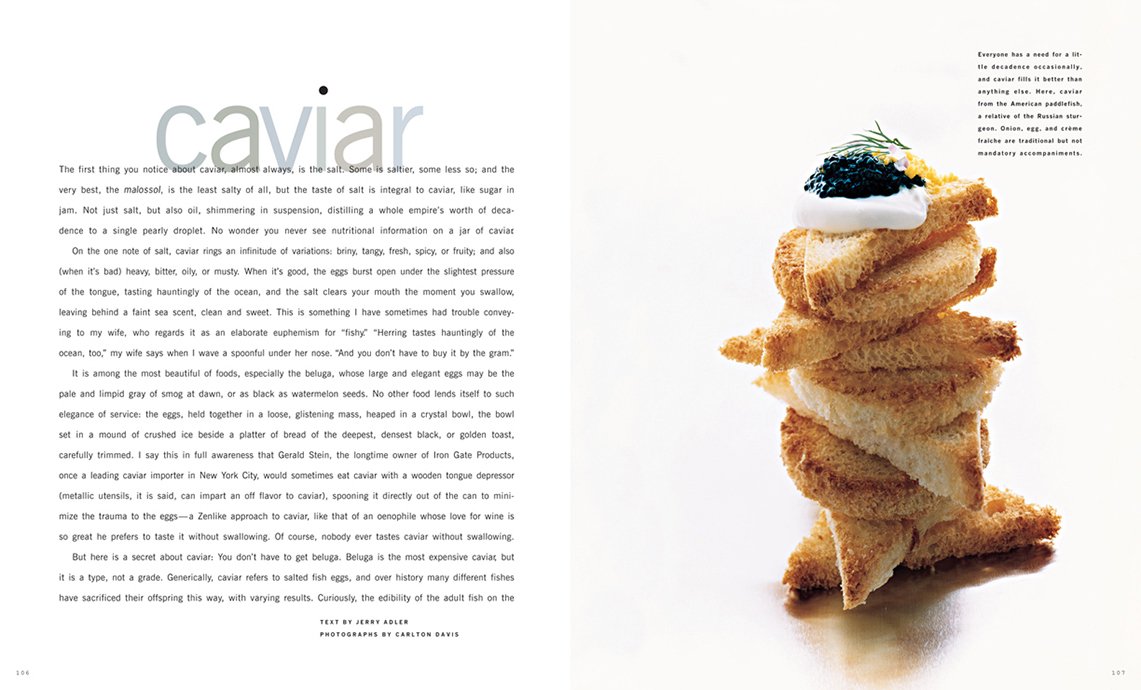

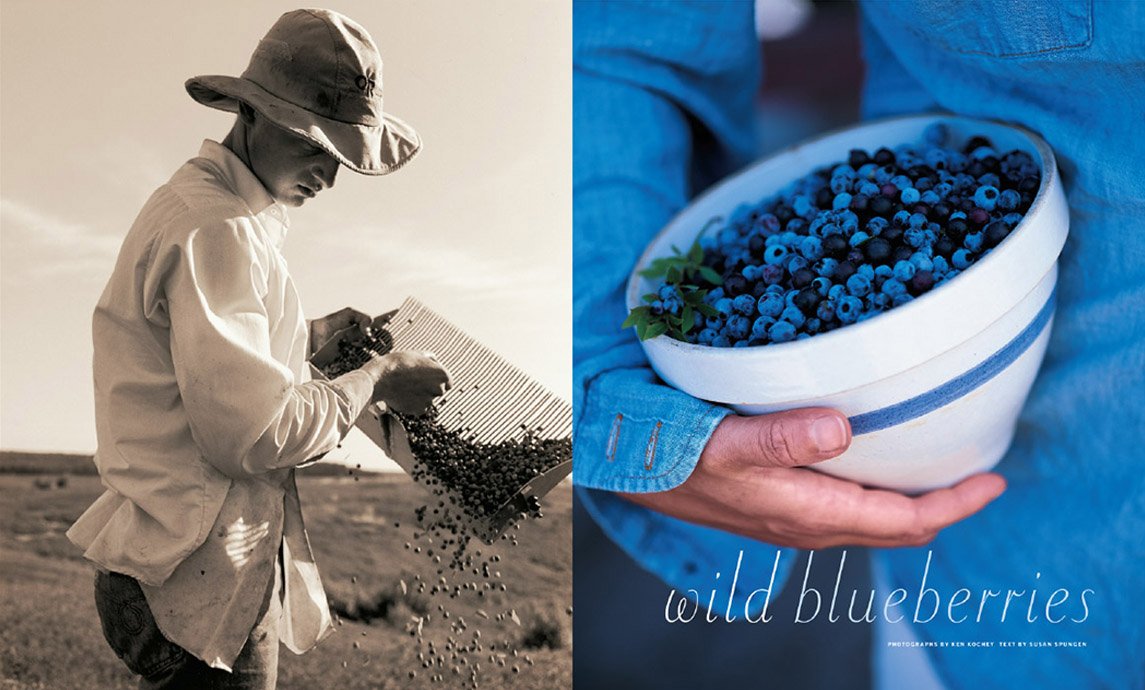

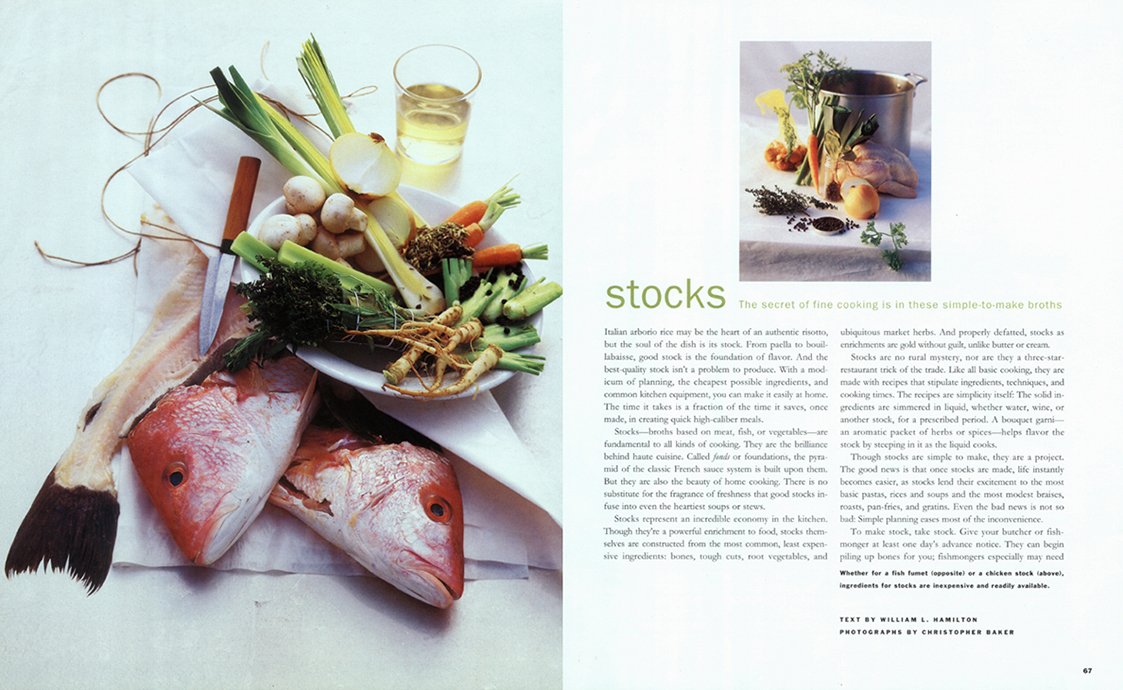
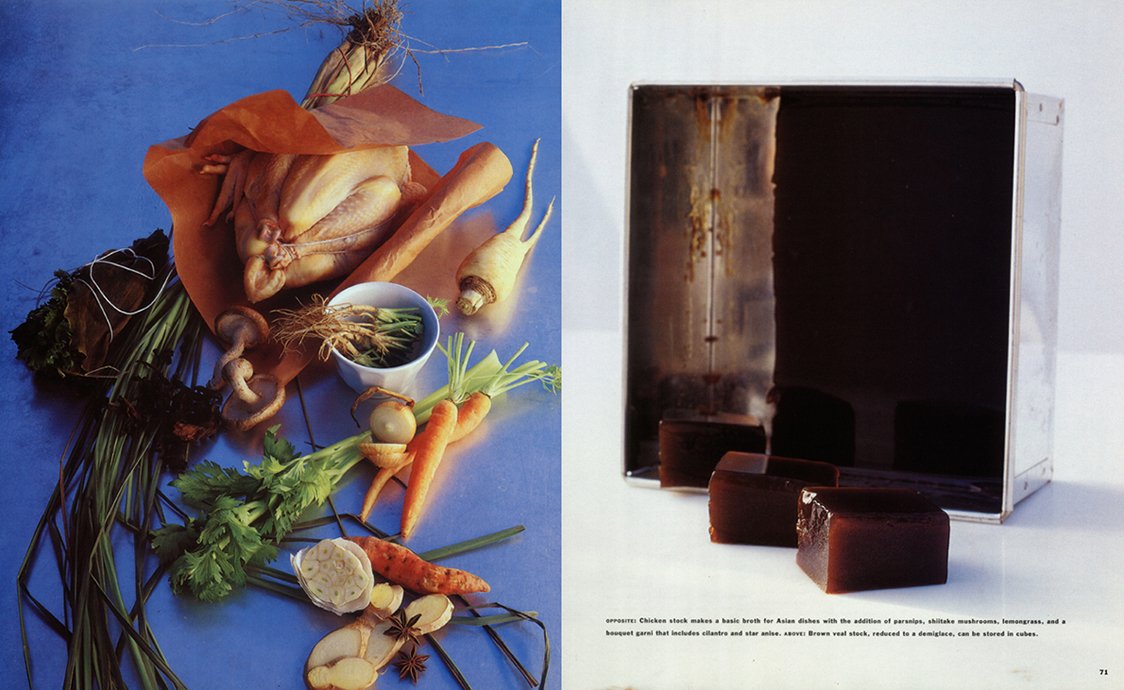
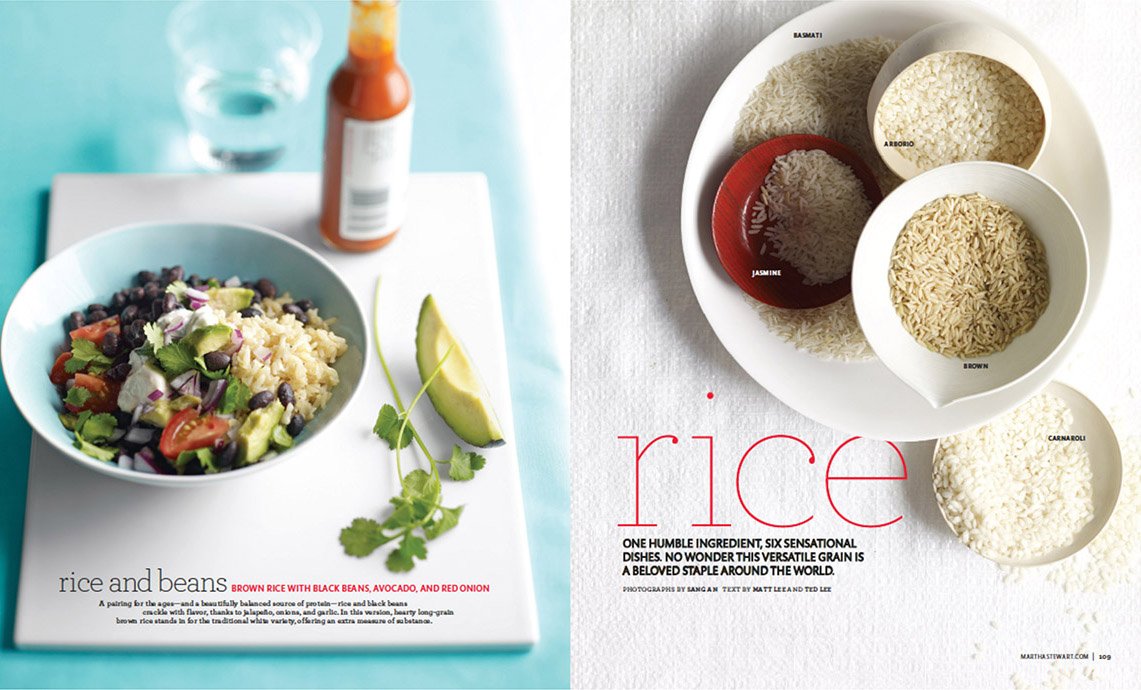
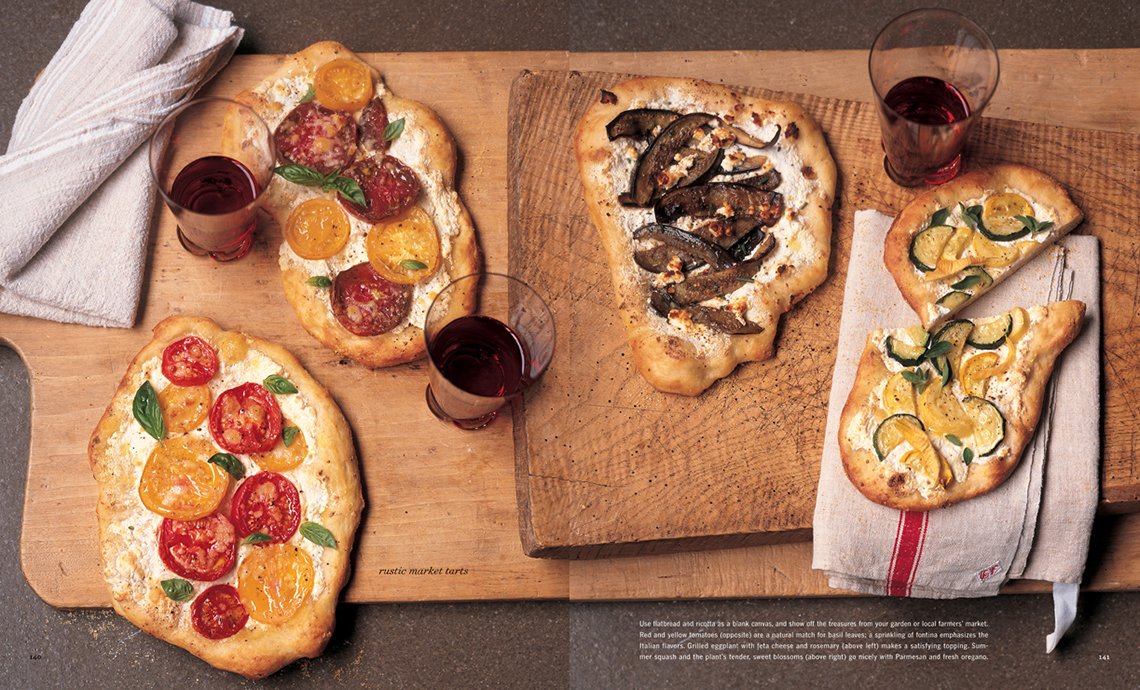
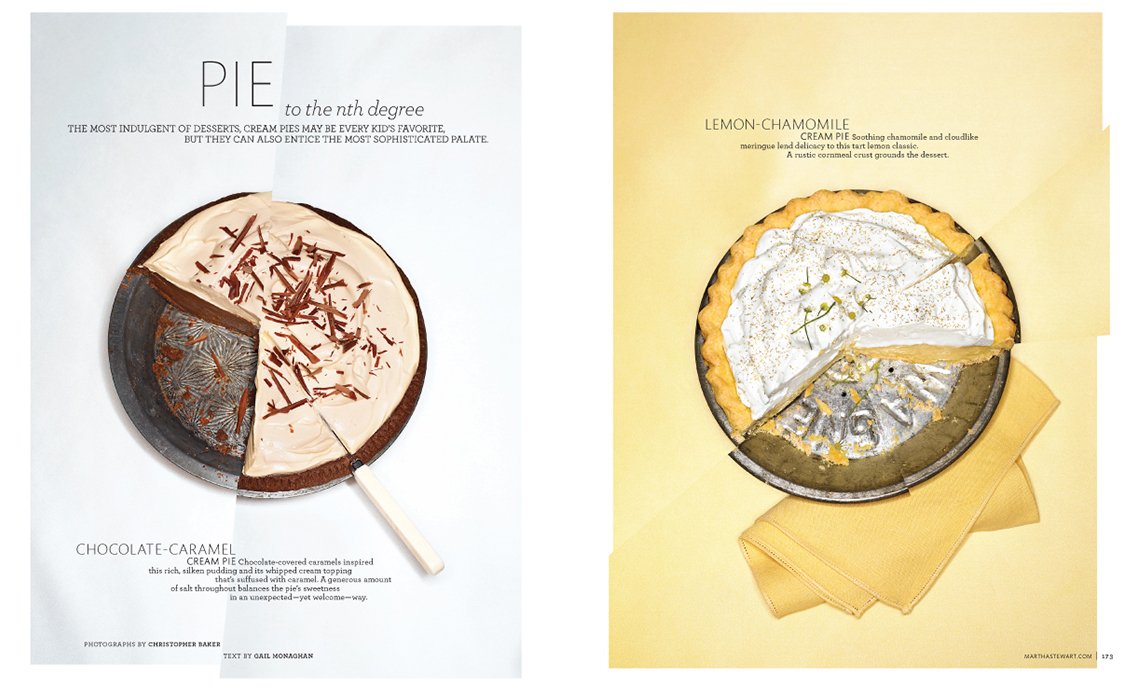

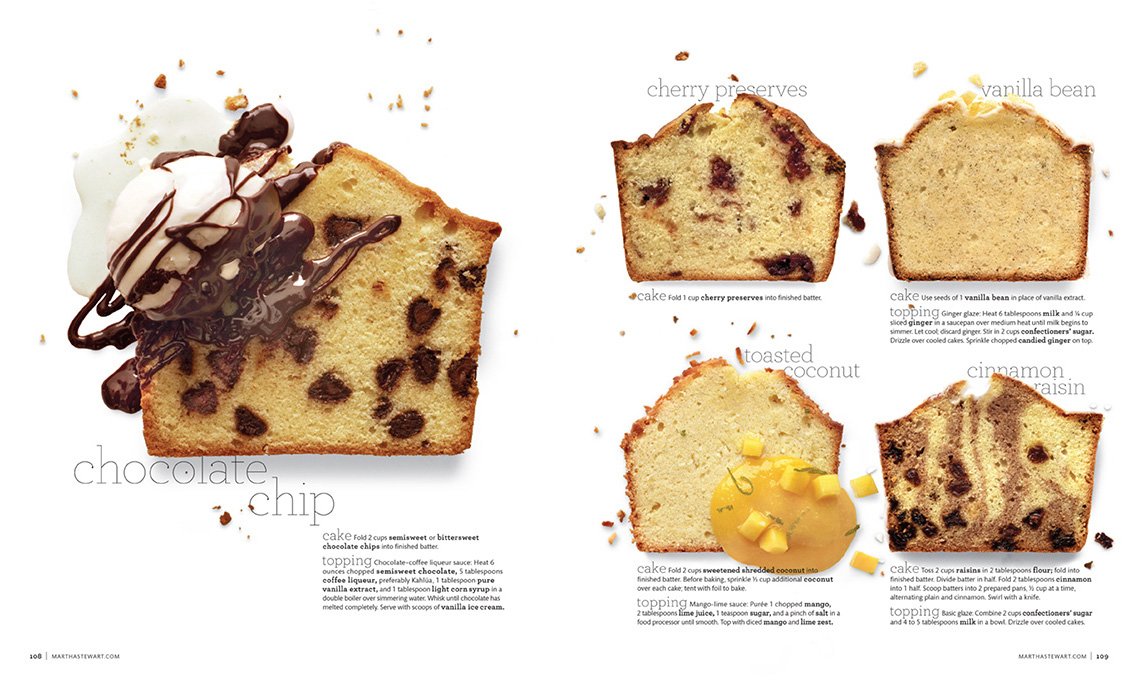
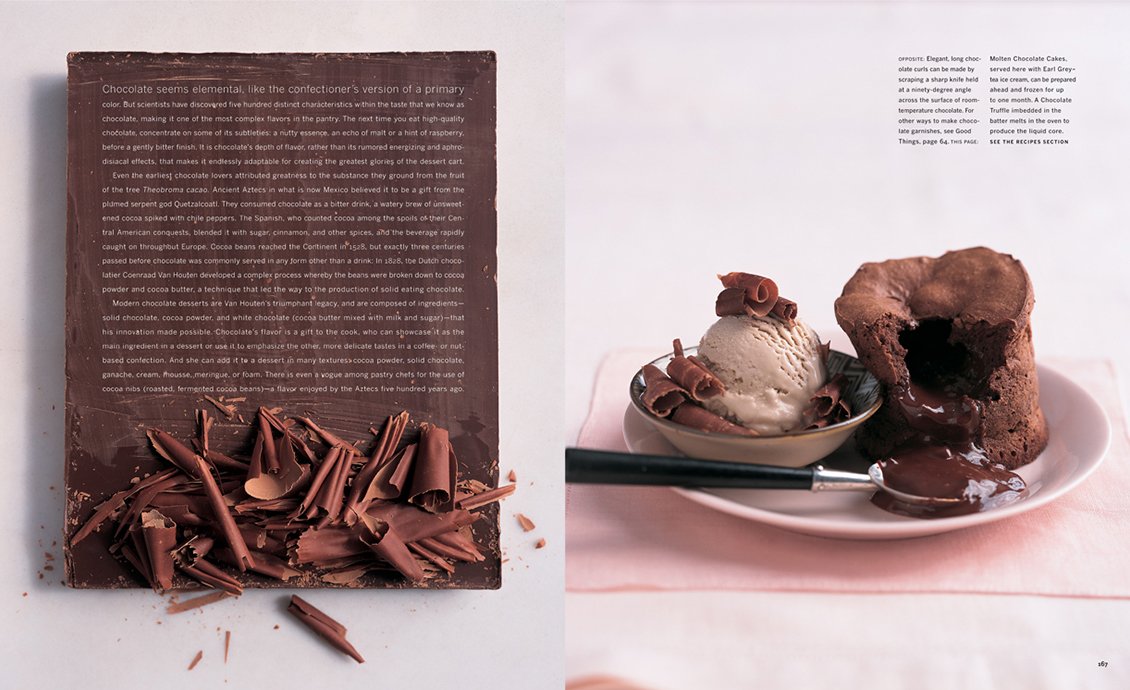
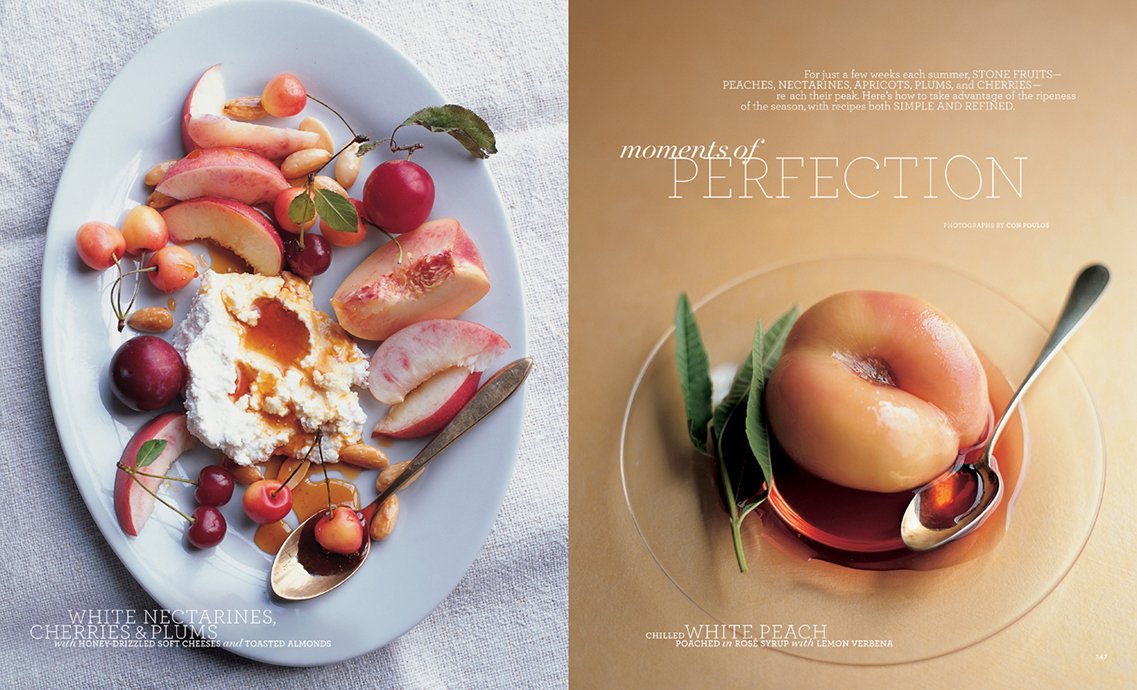
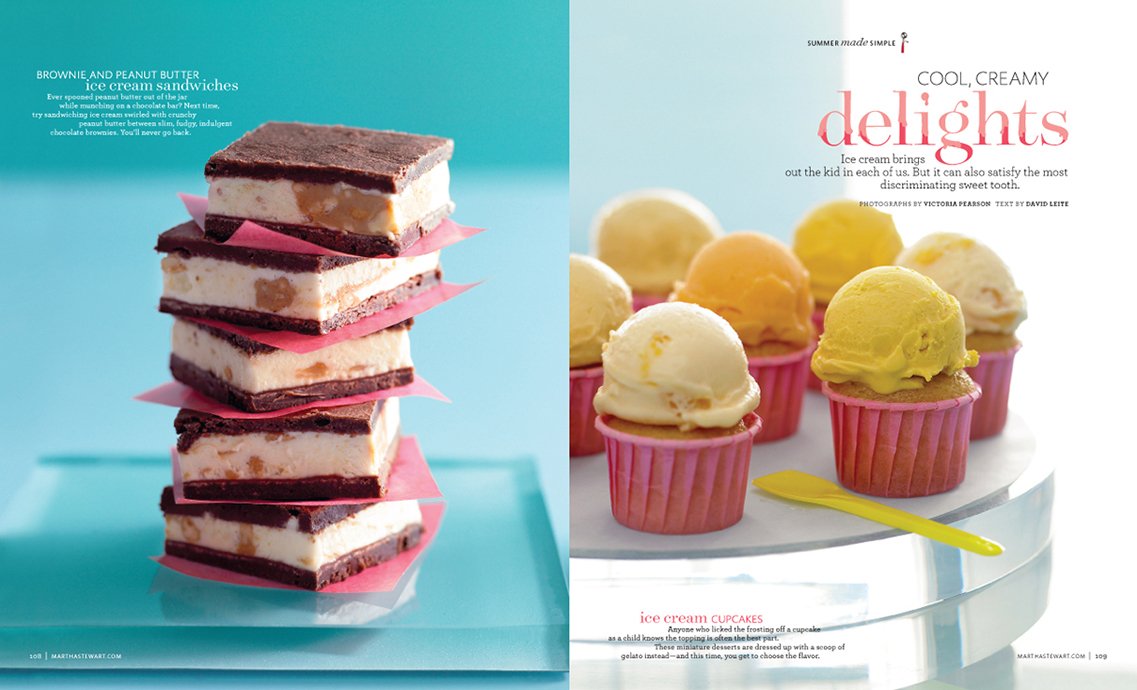

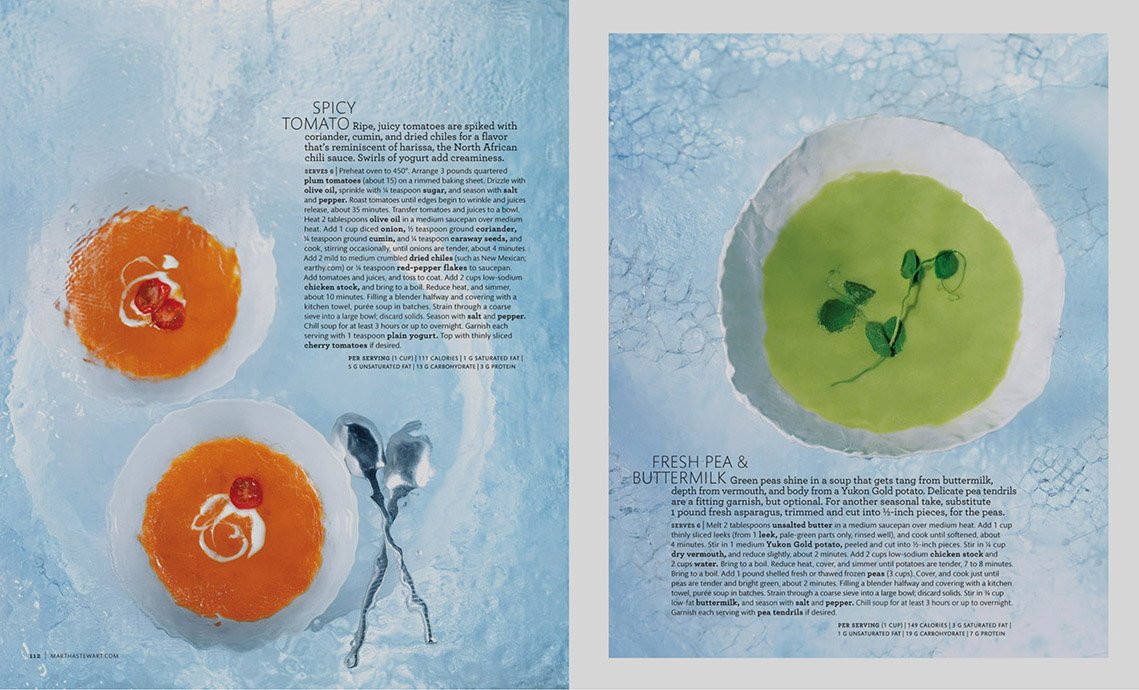


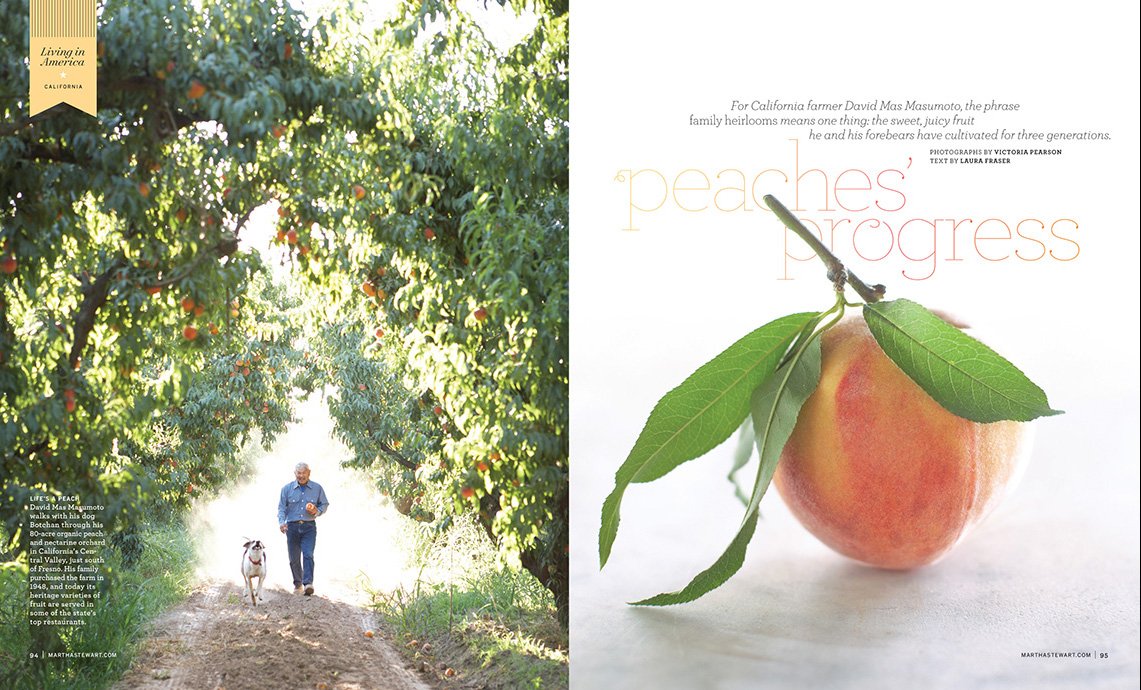

Debra Bishop: And that was one of the greatest gifts that I had. Yeah. I was able to, as I was having children, I was helping create content about the very subject right.
Gael Towey: Which is why it was so good.
Debra Bishop: Exactly. I mean, for me it was good because I had that creative outlet. I was interested in the topic. And so many of my collaborators at Martha Stewart Living were having children. And we were all balancing. And we were all one big family. Our kids would model. Or they would test.
Gael Towey: They were all in the photo shoots. Who was the baby? Was it Andrea’s first child? Who’s the baby in the bowl for the Baby mag?
Debra Bishop: Oh, that’s Andrea’s Lula. And that bowl, the bowl idea—I loved that enamel bowl. We were selling it at Martha Stewart, and we were all like, “what are we going to do with that bowl?” And I said, “I know exactly what we’re going to do with that bowl.” Because my brother used to be bathed at the cottage when I was growing up. And I have these beautiful pictures of my mother bathing him in an enamel bowl just like that.
So that’s where the idea came from. But when we shot it, and this was when Andrea and I were both very young mothers, and we put Lula in this bowl with water in it. She loved it. And it was on top of a very narrow table that we had in the shoot studio. And when I think about it today, I just, like, cringe because it was such a dangerous thing to put a little baby in a bowl like that on a small table and then step back to take the picture.
And then the other thing was, Martha loves to tell the story where Lula loved the bowl so much, it was nice and warm in there, that she pooped in the bowl. Martha loves to tell that story, but behind the scenes you couldn’t luckily see it on the catalog cover.
Patrick Mitchell: So, last Spring Dotdash Meredith, which is some amalgamation of what used to be Meredith Publishing, decided to end Martha’s print life. And they killed it, along with several other thoroughbred brands. How did you feel about that? Seeing the end of Martha in print?
Gael Towey: I mean, obviously, I wasn’t surprised. Because so many magazines by then had folded.
Patrick Mitchell: But this is your baby.
Gael Towey: But after I left, I obviously watched it for a while. But I felt that the restrictions, being under Meredith, had really changed the magazine. And I didn’t feel that it had the same emotional connection that it had had earlier.
So, I certainly felt sad about it. But mostly I felt sad for the people who were working there and really loving doing their jobs. I felt terrible about that. But you have to remember that when I left at the end of 2012, I had just gone through this very excruciating experience where I had to fire a lot of people and it was so devastating for me.
I was firing people because we were losing money and there were a group of executives who had taken over. And the thing about Martha going to jail is that she was forced to be away from the company for about a year.
And then she wasn’t allowed to be on her own board of directors anymore. And so, for something like 10 years, the board and the company itself were doing things that were, frankly, really stupid. They closed her television show. And it was like the place was self-destructing.
So for me, because in 2011 and 2012, we were really suffering so much and I knew they were going to fire even more people and I didn’t want to be there to go through that all over again. It was too horrible to fire people who you loved, who you cared about, who were your friends, who you hired and trained yourself, and who were, I thought, geniuses.
And have to go through that all over again. I couldn’t do it. So for me, that was the big break. That was a horrifying time.
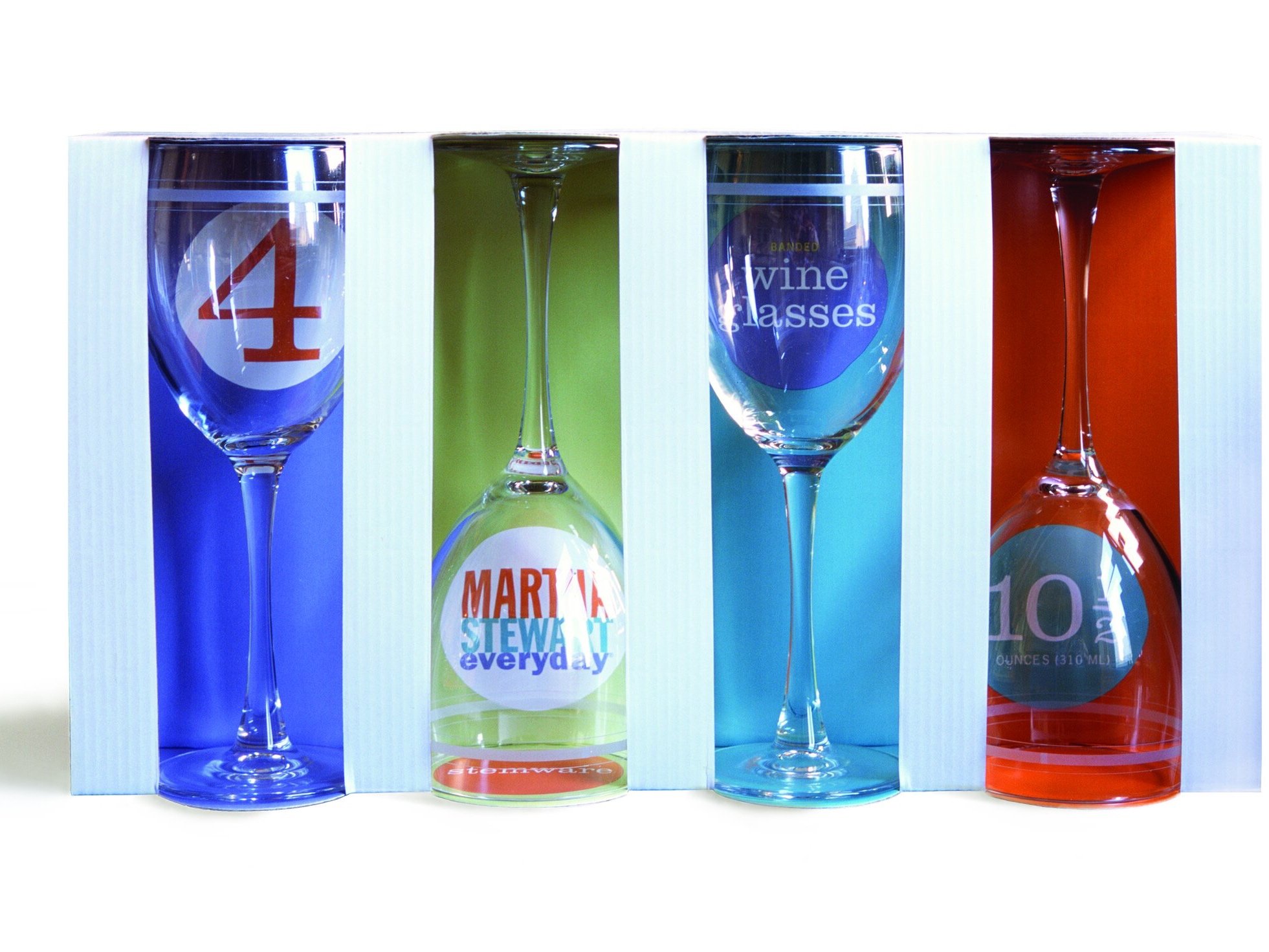
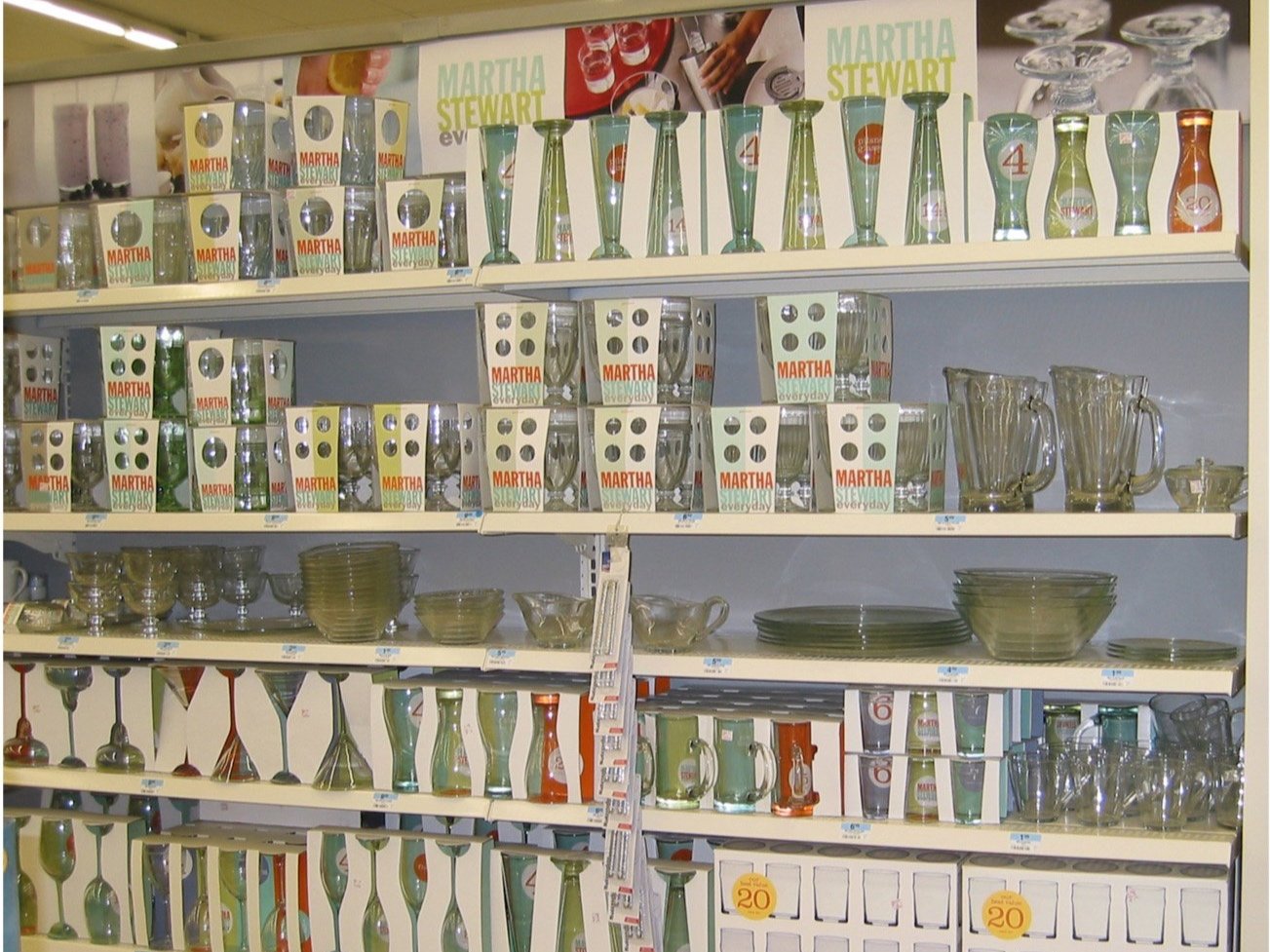
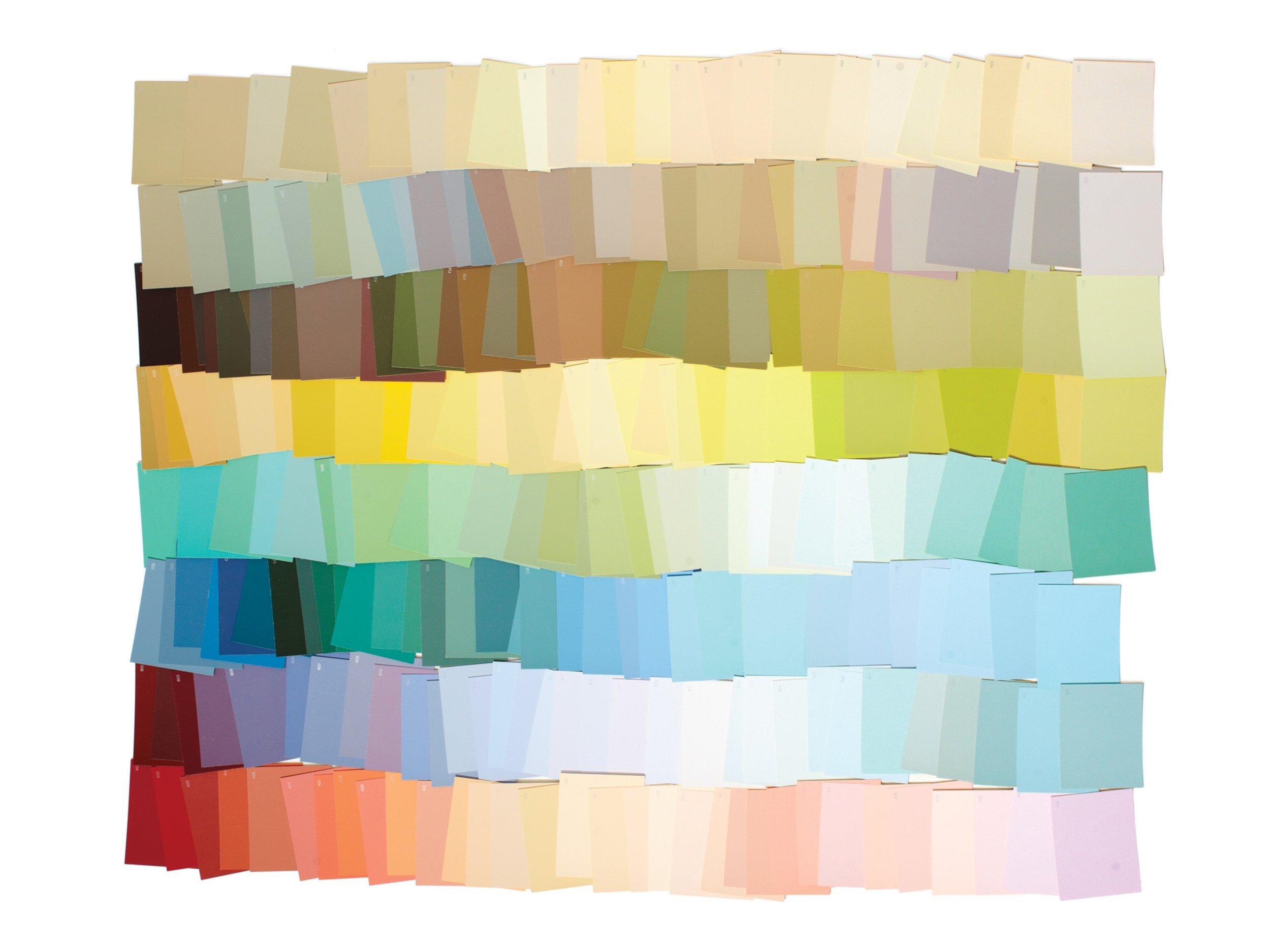


Debra Bishop: And you had to remove yourself emotionally from it at that point. So by the time Dotdash got a hold of it, it was already gone.
Gael Towey: It was already gone.
Debra Bishop: For those who don’t know him, can you tell us about your husband, the fabulous designer Stephen Doyle?
Gael Towey: Stephen’s very funny. He is a wonderful dancer. He’s an amazing father. He’s an incredibly generous person. He’s very, very inventive. He’s constantly thinking of things to make. He’s a maker. And he loves to do the things that I love to do, which is to travel. I really like educating myself constantly and having new experiences, and he feels the same way. We both love art. We love going to museums. We love shopping in antique stores and flea markets. We love to cook, and we cook together.
We’ve had a number of experiences working together. Stephen designed the Kmart logo and all of the early packaging for Kmart. And during the day, I would be in the office working with all the product designers and hiring people, and we were doing thousands of products almost immediately and getting Martha to approve the color swatches and the fabrications and all that kind of stuff.
And then I would come home and Stephen and I would spread all the packaging concepts out on the floor of the living room. And our children would say to us, “do you guys ever stop working?” In other words, we were paying no attention to the children.
Debra Bishop: I’ve had the same experience.
Gael Towey: We were having the time of our lives, looking at packaging and logos. And he was coming up with all these crazy ideas for these packages that would fold so that you could see the shape of the wine glasses. But you had to look through the glass to see the typography. And of course, because you’re looking through the glass of the wine glass, the typography was a little wobbly in this really cool way. So it was so fun. So fun. We really, really, really had such a good time.
Debra Bishop: You’ve already talked about when you first met, which is hilarious. So I’m assuming it wasn’t love at first sight. Or was it?
Gael Towey: Not for me. I was a mess. In fact, Martha would come into the office and say, “What’s wrong with her? She’s losing weight. She’s losing too much weight. Tell her to stop. Tell her to stop!” And, you know, I was a disaster. Anyway, it took me a while.
Debra Bishop: But tell us about your first date. Where did you go?
Gael Towey: We went to a photographer’s loft who was having a Christmas party. And she had a live band. And we danced. We each went separately, but we both knew that we would see each other there because we both knew that we were invited. And we danced together all night long.
And he’s a really, really good dancer. And my father was also a great dancer. And I learned how to dance from my father.
Debra Bishop: Wow.
Gael Towey: And I danced with Stephen and I thought, “Oh my God, I could marry this guy.”
Debra Bishop: Did you propose?
Gael Towey: No, he proposed.
Debra Bishop: And?
Gael Towey: He proposed. And we decided to get married very, very quickly. And for Christmas, our first Christmas, he gave me this wrapped package, and it was this big heavy paperback and I’m thinking, you know, “Why do I have the Tale of Two Cities? Like, what is this?” And I opened it up and inside he had cut out all the pages and there was a little ring box in there.
Debra Bishop: Wow.
Patrick Mitchell: I was going to ask you if he took a knee, but it doesn’t even matter.
Debra Bishop: That was pretty amazing.
Gael Towey: Yeah. Pretty amazing. And, I’d have to say, in terms of design, that I’ve really learned a lot from Stephen. As I said, I am not a typographer. I’m much more of an image maker, and he is an incredible typographer. And I have learned so much from watching him work in that way.
Patrick Mitchell: I imagine the idea of you two going into business together has come up, from time to time.
Gael Towey: That would be horrible.
Patrick Mitchell: Really?
Gael Towey: It would’ve killed our marriage. I mean, it was fun to work on the isolated thing, you know, a logo or something like that. But Stephen sees the world in a very, very specific way, and that’s what he sees. He’s in his own business, running his own business for a reason.
I think he was fired from every other job he ever had. Actually, he asked Tibor Kalman at M&Co., for a raise, and Tibor said no. And so he quit. But otherwise he was fired.


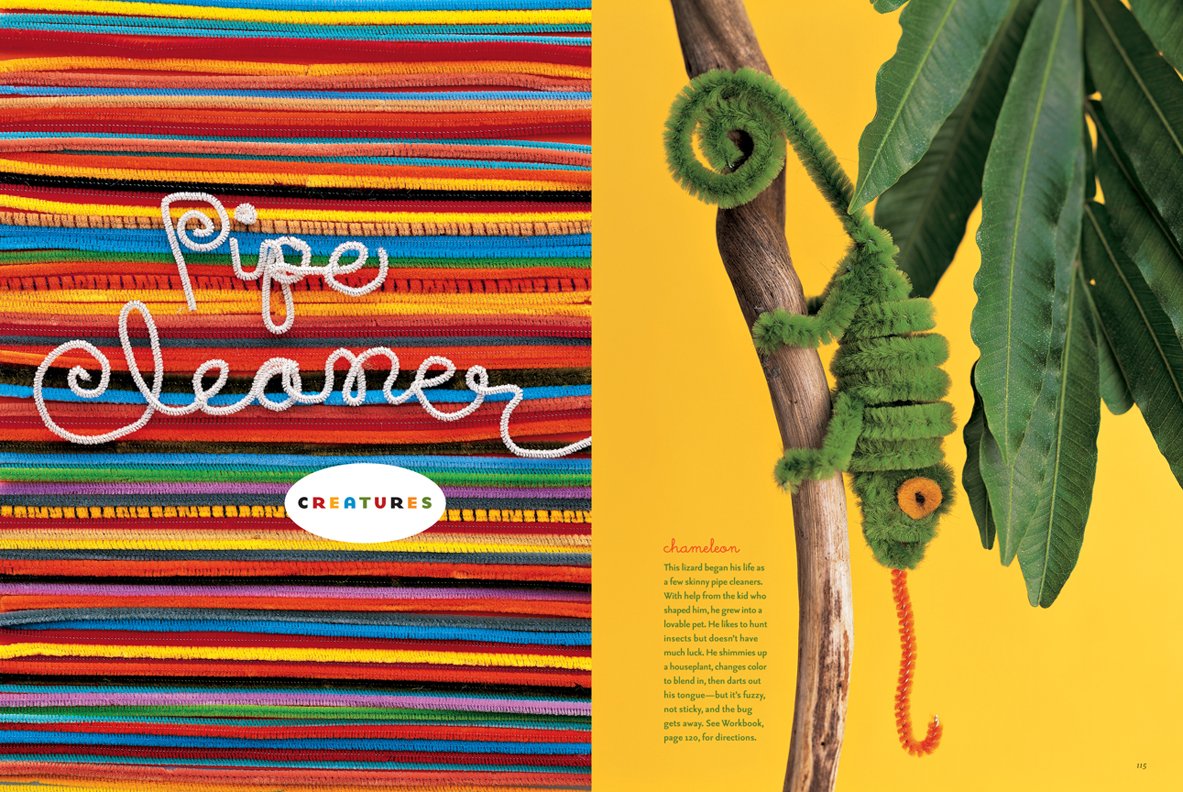

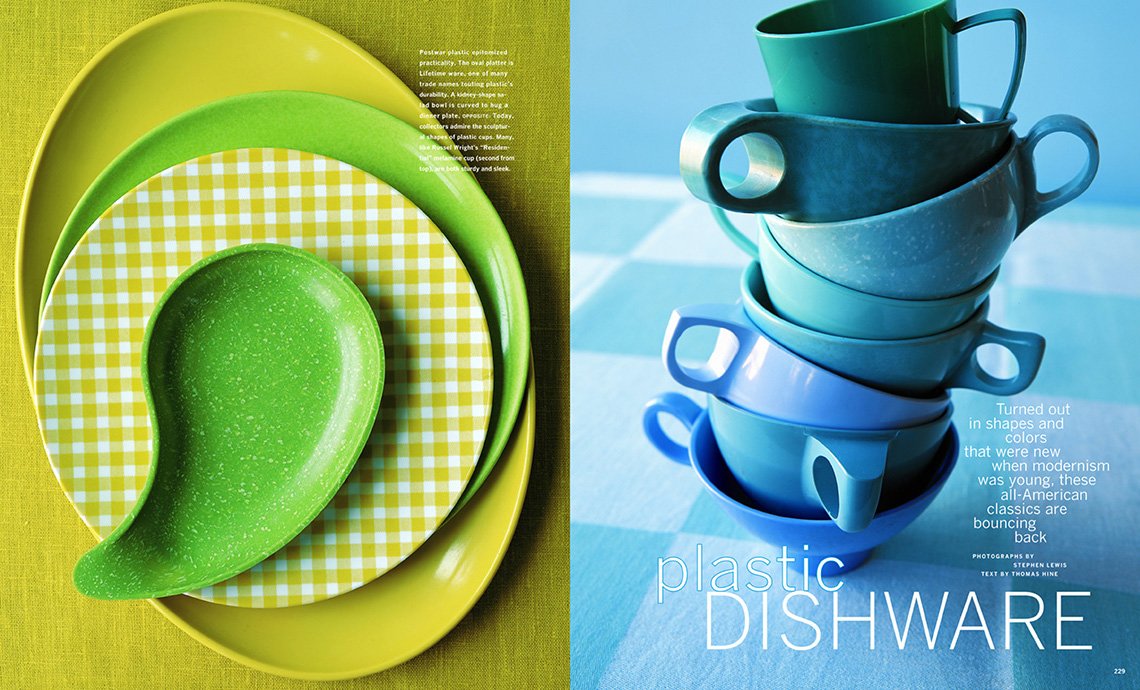
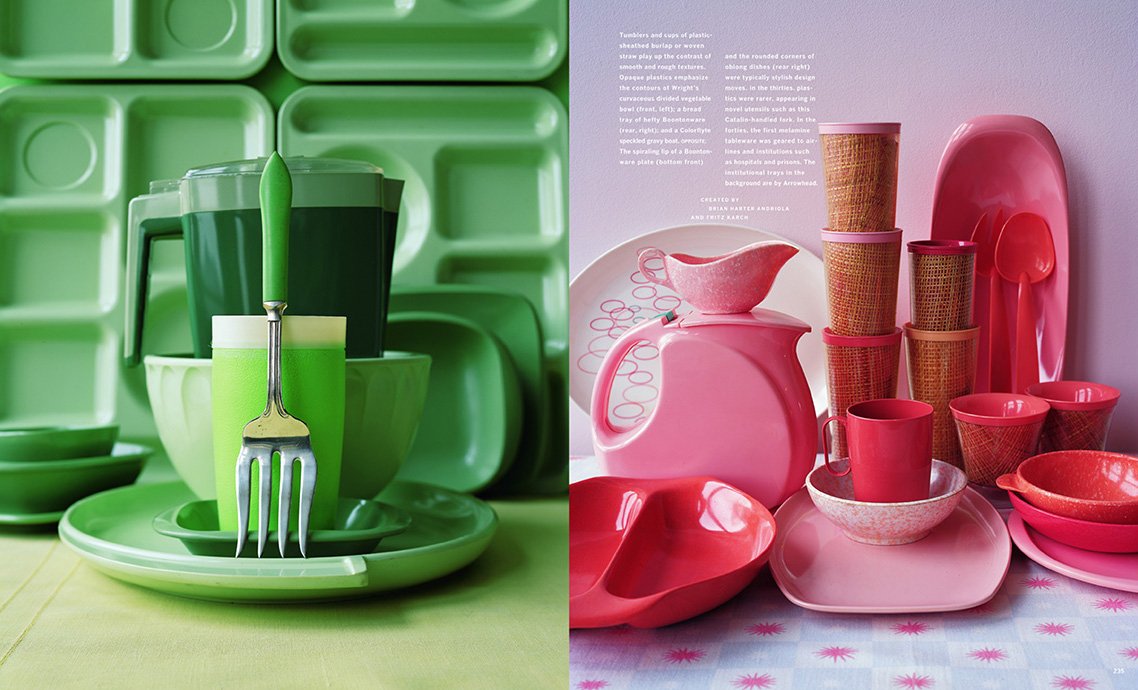

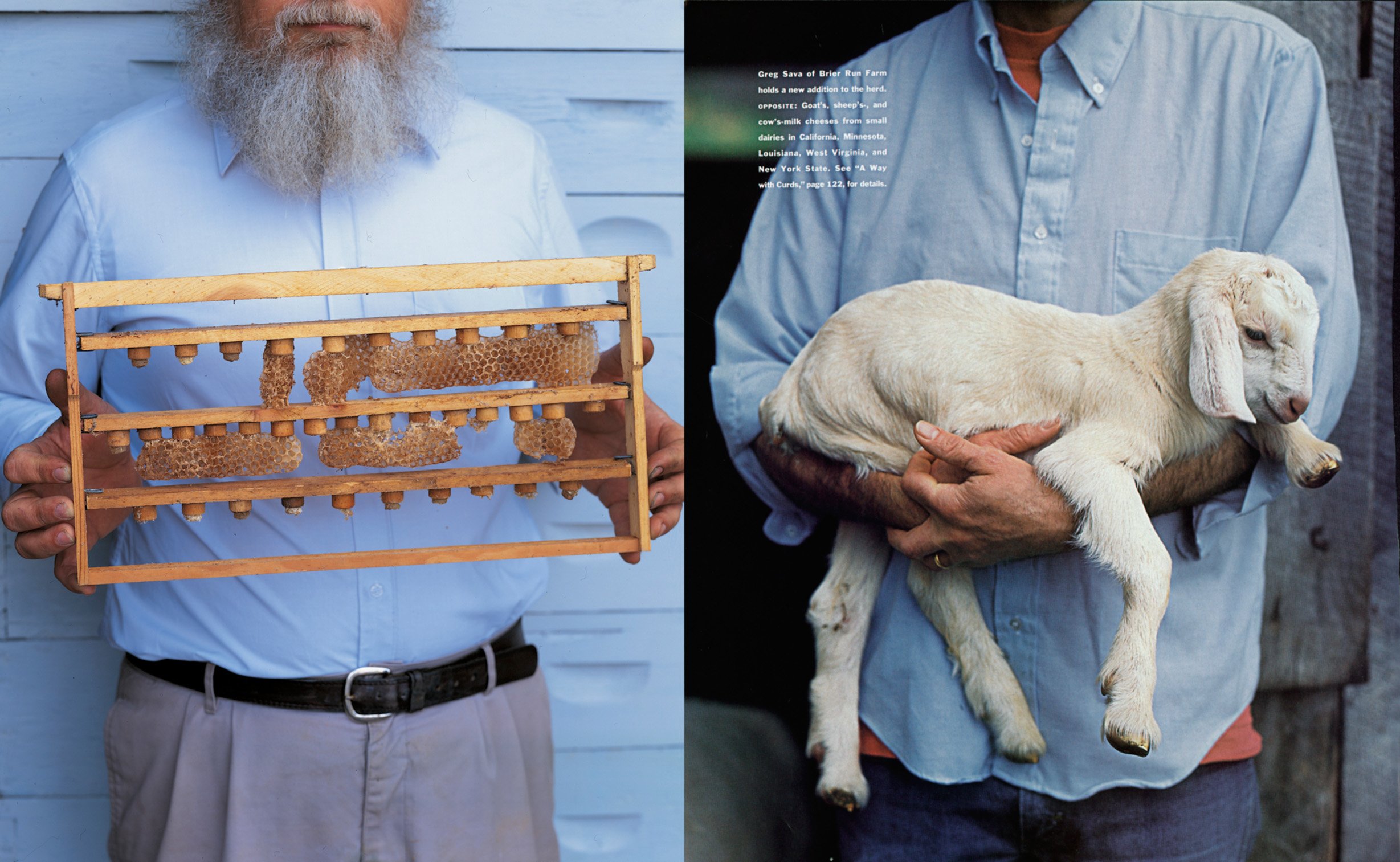
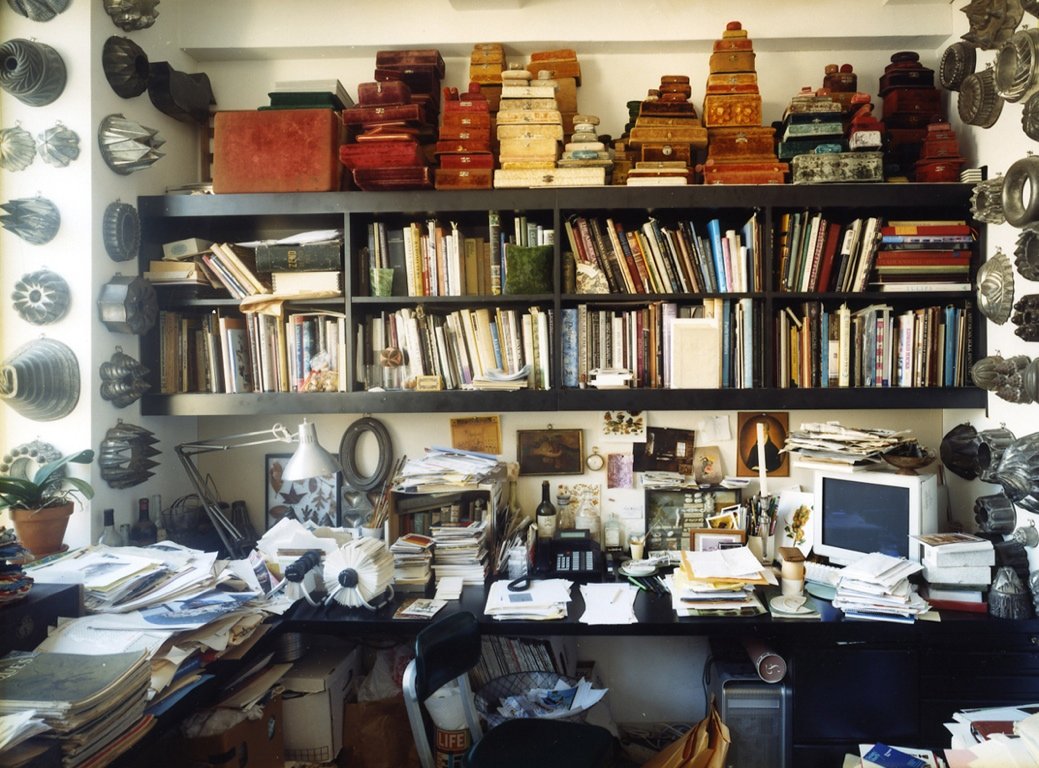
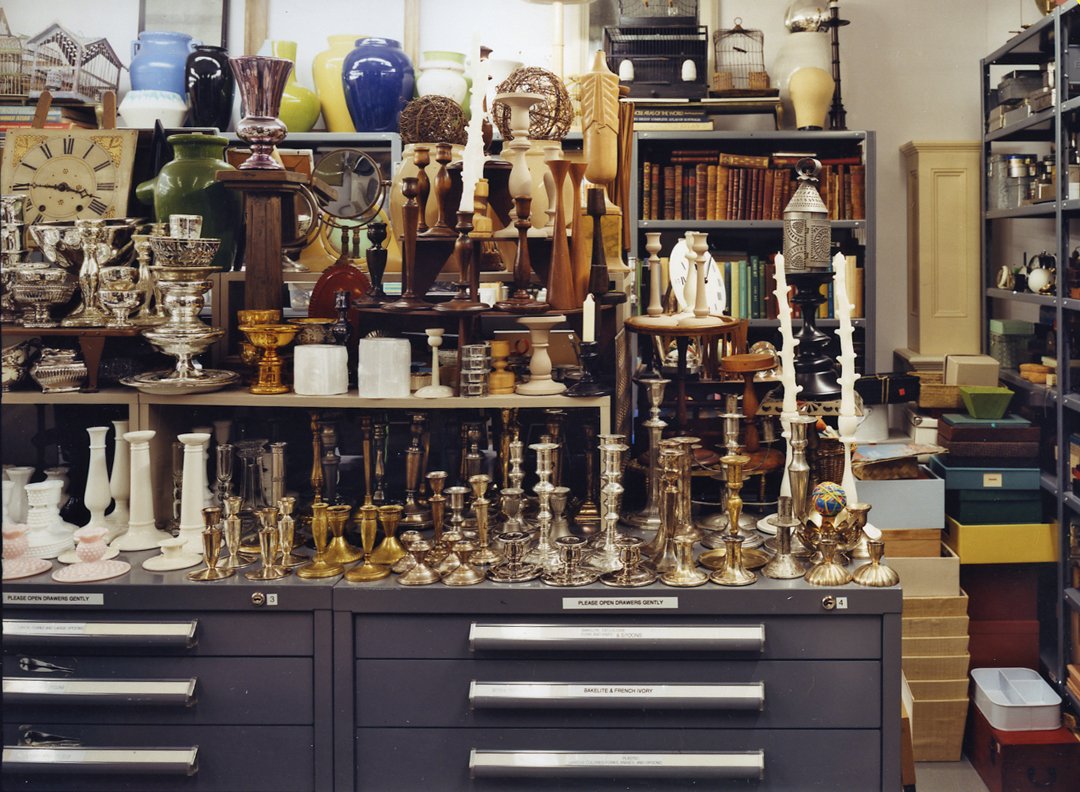
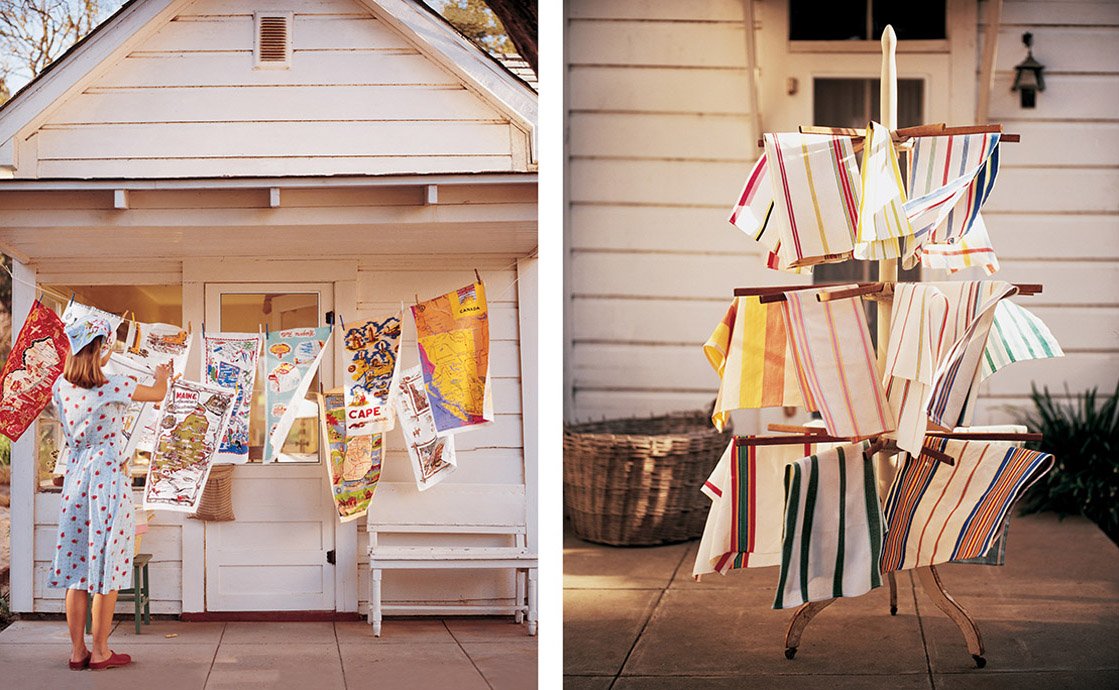
Patrick Mitchell: I read an interview with you and your fellow BU alum, Julianne Moore, where you said, “if you let your passion lead you, you’ll discover the wonderful things you can do. I think a creative life is a whole life. In a creative life, you never stop working. You’re always looking, you’re always learning. Lifelong learning is one of the most important things you can do for yourself and the people around you.”
Talk about how that has unfolded in your life.
Gael Towey: Well, when I left Martha Stewart at the end of 2012, I really didn’t know what I was going to do with myself.
And after about six months of having lunch with friends, and hanging out and stuff, I decided to start doing videos. And the reason for that is because I love storytelling and I realized that what I wanted to do was storytelling. So I started shooting. I’d never done, I mean, I did videos obviously at Martha Stewart Living, and all of us were on television, so we were pretty comfortable with TV.
And when we did the first digital magazine, we were able to do video and incorporate them into the digital magazines. So I had some experience with that. And I didn’t want to do the classic Martha Stewart subject matter. So I ended up doing videos with artists who were friends of mine, in order to kind of get used to it, and establish this little teeny business I have now called Portraits in Creativity. And it’s all about telling artists stories.
Debra Bishop: I saw the Gabriella Kiss film, which I love so much, Gael.
Gael Towey: Thank you.
Debra Bishop: One of your subjects, Natalie Chanin, the noted fashion icon, interviewed you for her website. In that interview, you say, “My career has been fulfilling, but I have to say that the relationships I have built and the people I have met are more inspiring to me and more important to me than any particular designer product I had a hand in creating.” Aside from your family, who inspires you?
Gael Towey: Gosh, I have so many wonderful artist friends. And one of the things that has been such a privilege for me in doing these videos is meeting people that I’ve never met before, and finding them so inspiring myself. To be able to read their books and then interview them.
There’s something about being with a camera across from somebody and how honest they suddenly become and how it allows you to ask questions that are so deep. I’ll never forget interviewing Roseanne Cash, who, before I did the video with Roseanne, we had already been friends for 15 years, but I was able to ask her questions that were so much deeper than the casual, go out to lunch sort of relationship that we had.
And to be able to get into somebody’s creative life and find out what really makes them creative, what they go through emotionally, how they train themselves, the discipline that they bring into their lives and their way of listening for inspiration. People don’t realize how much research it takes in order to be inspired. In order to be ready to be inspired. In order to be ready to listen.
And Alabama Chanin’s story about standing on a street corner in New York City after having failed to sell her designs to any New York company. She’s looking at her t-shirt that she designed, which she hand stitched together and realized, “Oh my God, I’m in the wrong place. I have to go home to Alabama because that’s where all the stitches are.”
And that started her business. Those kinds of stories are deeply inspiring to me, and those women are deeply inspiring to me. Azar Nafisi, who wrote Reading Lolita in Tehran, just wrote an article for The Guardian about the protests that are going on in Tehran right now, actually all over Iran. And she was in Iran during the revolution that brought Khomeini into power. And Reading Lolita in Tehran tells that story. I was able to become friends with her and interview her at Civitella Ranieri, which is an artist residency program, and make a video with her. And to be able to meet somebody like that, who can really change your life because of their perception, and dedication, and belief in humanity, is a gift.
“It was too horrible to fire people who you loved, who you cared about, who were your friends, who you hired and trained yourself, and who were, I thought, geniuses.”
Patrick Mitchell: I don’t think it’s a stretch to say that you’re a trailblazer. One of six from a family in New Jersey. But you are a true icon for art directors, and for women. How do you think about your legacy?
Gael Towey: That’s a very good question. I don’t know how to answer that. I will say that for the women who are out there working now, remember to step back, and take stock, and appreciate where you are and what you’re experiencing, and remember those moments. Put them in your mind catalog. Because those experiences—it’s the process of the doing that really is the wonder of life, and living life, and having a career. That’s the great experience.
You know, I won a lot of awards. We won a lot of awards. That’s great. I don’t even remember what they were. Because that’s not the important thing. The important thing is having the experience of being able to have that creative life. So, I don’t know whether that’s a legacy or not. I do believe in women and their artwork and their inspirations, and I think that I could tell from one thing that, and I think Deb would agree with this, we got so many letters from people all over the country, thousands and thousands of letters. We reached more than a million letters at one point. And they were all so happy to have these ideas of how to bring creativity into their life.
And that was a real revelation for me. So when I left there in 2012, I thought, creativity is one of the most important things that we can give to people. Learning how to listen to yourself and listen for your own inspiration that’s inside you. That’s something that you can learn from artists.
And that’s what I mean when I say artists are brave. They’re brave because they have the openness to listen to themselves and to keep plugging away when it’s not working and keep doing the work over and over again with that kind of discipline. We have so much to learn from all of those people.
So, if my Portraits can help people be creative, then I feel that I’ve done something.
Patrick Mitchell: Well, I can speak for all the dudes out there too. You were super inspirational to men as well, especially in our profession. So thank you for that.
Debra Bishop: And I do think that the work that you’ve created throughout your career is a huge inspiration to women, Gael. That is a very big legacy.
Gael Towey: Thank you honey.
Patrick Mitchell: We’re going to ask the million dollar question.
Gael Towey: Okay.
Patrick Mitchell: All right, so Laurene Powell Jobs calls you. Says she’s got a blank check for you.
The only requirement is that you use it to create and launch a print magazine. Money is no object. What will you make?
Gael Towey: I would make something that would bring all of my friends together and would allow me to work with the extraordinary people and talent that I care a lot about. I think I would do a magazine about making— about making art and all kinds of art and focus it on the process of making, and the process of the creative life, and how to live a creative life.
Debra Bishop: Wonderful.
Patrick Mitchell: Perfect. It’s okay if you have a circulation of 162.
Gael Towey: Yes.
Portraits in Creativity: Alabama Chanin
For more information on Gael Towey, and to see her Portraits in Creativity film series, visit her website.
Back to the Interviews
The Approval Matrix: Highbrow, Brilliant
A conversation with editor Adam Moss (New York, The New York Times Magazine, 7 Days, more)
A conversation with editor Adam Moss (New York, The New York Times Magazine, 7 Days, more)
Adam Moss is probably painting today. He’s not ready to share it. He may never be ready to share it. You see, this ASME Hall of Famer unabashedly labels himself as “tenth rate” with the brush. And he’s okay with that.
As Moss explains, it’s not about the painting. After decades of creating some of the world’s great magazines, he is throttling down. He’s working with canvas, paint, and brush — and reveling in the thrill of making something, finally, for an audience of one.
It hasn’t always been this way for Moss. Like most accomplished editors — like most serious creatives — Moss spent the better part of his career obsessed. Obsession is essential, he says, to the making of something great.
Growing up on Long Island, Moss became obsessed with Esquire and New York magazines. “My parents were subscribers,” he says. “I was in the suburbs. I’d open them and it was my invitation to New York City. And to cosmopolitan life. And to sophistication.” And knowing that it was all happening just a short subway ride away made it irresistible.
Moss’s publishing portfolio is rotten with blue-blood brands: Rolling Stone, Esquire, The New York Times, and New York magazine. He’s collaborated with editorial legends.
In 1987 Moss decided to create something of his own. Invited to pitch an idea for a new magazine to the owners of The Village Voice, Moss did his song and dance. The folks in the boardroom were … unmoved. Afterwards, Moss retreated to the men’s room to ponder his humiliation. Minutes later, Leonard Stern, the Voice’s owner, took a spot at the next urinal, where he turned to Moss and said, “Okay, we’ll do your magazine.”
What Moss pitched was a city magazine called 7 Days. It only lasted two years. But two weeks after ceasing publication, 7 Days was presented the National Magazine Award for general excellence.
The splash it created propelled Moss to The New York Times, where, in a few short years, he transformed the paper’s Sunday supplement into an editorial juggernaut for creative talent — the Esquire or New York magazine of the 1990s.
In 2004 Moss joined another venerable brand, New York magazine, where he not only completely reimagined the print magazine, he bear-hugged the encroaching internet menace, creating more than 20 new digital-only brands, five of which — Vulture, The Cut, Intelligencer, The Strategist, and Grub Street — remain heavyweights of modern online editorial.
In 2019, Adam Moss ended his 15-year run at New York, saying, “I want to see what else I can do.” So … painting. But, once obsessed, always obsessed. Moss is currently at work on a book about creation and creativity. The book will decode how creative geniuses transform an idea into something real. A song by Stephen Sondheim. A sculpture by Kara Walker. A film by Sofia Coppola.
Asked to describe what he’s making, Moss calls it a “big, overgrown magazine.” Of course he does.
Moss launched 7 Days in 1987.
“Most of the time I’m just working by myself. And that has its own pleasures, but it’s not the same thing at all as that kind of group hug that is magazine making.”
George Gendron: So I want to start by asking: Do you miss all the attention, all the accolades, all the awards — even a little?
Adam Moss: No, actually, I don’t miss that at all. I always felt a little mystified by the attention and always ran away from it while also, of course, loving it. But feeling kind of embarrassed about the kind of attention an editor-in-chief gets, which is so, in my view, disproportionate to the amount of work that that person does.
The staff itself does all the work. So, I was always proud of the accolades on behalf of the staff and embarrassed about them on behalf of myself. But what I miss is not any of that at all. What I miss is the actual work. Which is to say, the work with other people. I miss the camaraderie of the magazine. That was the best part of it.
George Gendron: And given what you’re doing right now, you don’t have much of that, do you? Or any of it?
Adam Moss: No. I try to create little versions of it here and there in my life. I’m working on a book and the book involves design, so I’m fairly happily working with some folks at Pentagram.
The lead person is Luke Hayman, who was art director of New York. I hired him when I got there. Wonderful. And his wonderful team. And I have these consulting gigs which are somewhat social, I suppose. They involve working with other people. And those are very, very satisfying.
But no, most of the time I’m just working by myself. And that has its own pleasures, but it’s not the same thing at all as that kind of group hug that is magazine making.
George Gendron: Let’s go back to the book. What can you tell us about it?
Adam Moss: Well, I don’t want to say a whole lot at this point, but it’s a book about how artists think or, I guess, more loosely “creative process,” a phrase I don’t like, but I’m stuck with. And it traces the evolution of certain works through conversations with the artists and artifacts of the process of making the thing.
You know, there’s a chapter on Stephen Sondheim — I talked to him before he died — on the making of one of his songs. There’s a chapter on Louise Glück, the Nobel Prize winning poet, on a poem. A chapter on George Saunders and the writing of Lincoln in the Bardo book that I love. Kara Walker and the making of her sculpture called A Subtlety, that big, sort of “mammy sphinx” that she had in Brooklyn. You know, Sophia Coppola on Lost in Translation and Marie Antoinette.
Anyway, it’s kind of case studies on making creative things, and then trying to come up with some theories about why it works when it does. The book is, it’s a little bit of like a, it’s like a big, overgrown magazine is really what it is.
George Gendron: In terms of the form factor? The size?
Adam Moss: Yeah, the physicalness of it. I mean, you read it, you look at images, you cross back and forth between the images and the words. It’s not like there’s imagery segregated in one part of the book and then words in another. It’s all very much tumbled together. And what I hope feels a little bit different in book form.
George Gendron: You and I talked a couple days ago about this and you said it might include photographs, artifacts…
Adam Moss: Yep.
George Gendron: …And it left me with the impression that what you are really trying to do is kind of decode the process that an artist goes through from an initial idea to the finished product, and you might get to see the evolution of that idea.
Adam Moss: Yeah. That’s exactly right. That’s, I mean, that’s the aim. And, you know, these documents, or the artifacts or specimens, or — I call them all sorts of things, exhibits — they’re amazing, for the most part. And especially those that are kind of "notes to self."
George Gendron: Yeah.
Adam Moss: These, sort of, journal entries that the artists are writing, or are sketching, as they’re making the thing. You can actually just feel teleported into the artist’s brain. Which I personally find enormously satisfying and interesting. Much more than my own words about it. These artifacts are kind of rich archeological finds.
George Gendron: So it sounds as if we’re going to get to see the Adam Moss editing sensibility at work, in this case, in a book.
Adam Moss: I guess.
George Gendron: Oh, come on.
Adam Moss: Sure. Yes. That’s right!
George Gendron: Drop that humility, man.
Adam Moss: It’s an editor’s book.
George Gendron: That’s what I was getting at. Yeah.
Adam Moss: Yes, I think it is. But, as mentioned before, it’s very much a book in which I’m playing all the parts. I feel like it’s a Marx Brothers movie where I just keep running in one door and out the other door. I’m the writer, I’m writing the captions. I’m dictating the way I think it ought to look. And I’m just doing it. I did the interviewing, I’m the writer, I’m the... I’m everything. And it’s kind of hilarious. But it’s quite different from the “groupness,” just getting back to how you make a magazine.
A few of Moss’ favorite New York covers
“The ownership of the magazine before I got there wanted a magazine in the mold of the imitators of New York magazine rather than New York magazine itself. So it had lost, in my opinion, an essential part of its DNA.”
George Gendron: A lot of people have said to me in a different context, “When are you going to write a book, or “the book” about entrepreneurship or innovation and creativity?” And man, I have just no desire to write a book. I just know too much about how hard it is. And then my partner, Patrick [Mitchell], who’s producing this, at one point said to me something really interesting. He said to me, “Don’t think about it as writing a book. Think about it as making a book.”
Adam Moss: Well, that’s exactly the verb I use to do this. I created this book deliberately in a way that it would be “writer proof.” I mean, I myself, hate writing so much that it would be a book that, really, the writing would be the least important part.
George Gendron: Boy, do I identify with that! So great, you’re going to be an inspiration to a lot of editors to write. When does the book come out?
Adam Moss: It’s not clear. It’s due kind of soon. But the way book publishing works is that that’s just the beginning of a long, long process. My guess is spring of 2024.
George Gendron: Are you going to meet your deadline?
Adam Moss: Yeah. You know, I’m a good, good student. I try to please the teacher.
George Gendron: That’s good to hear. But we’ll look forward to the book. So what, if anything, can you tell us about the consulting projects? Or are you all NDA’d up?
Adam Moss: Well, I’m not technically NDA’d up. But I think these relationships are best when they’re private. I’ll just tell you that they’re, basically, working with various journalistic outfits that seek me out for whatever reason.
And you know, I perform all sorts of different kinds of roles: a sounding board, a shrink sometimes, sometimes evaluating ideas and giving feedback on them, evaluating manuscripts and giving feedback on them. But basically just someone to talk to in a kind of discreet way.
And it’s very satisfying to me because it allows me to function as a journalist without a lot of the things that I had come to not like about journalism, mainly management. Which becomes, as you get more positions of responsibility, that also means that you’re spending a lot of time worrying about management, a lot of time worrying about business strategy, and all these other things.
Especially when, toward the end of my tenure as an editor, when things got very complicated, in terms of the economics of magazines. It sort of distills the pure journalism of it. So I like all that. Even though, basically no one has to listen to me. That’s a little frustrating. You know, you give your thoughts and then that’s it. You’re finished. Somebody else decides whether they’re worth anything or not.
George Gendron: It’s interesting. A university did a case study about the culture that we created at Inc. And it turned out that there was something that I mentioned very casually to them that became a big deal. And I actually felt that I learned a lot from the case study. Which is often the case, right? We do things intuitively, but we don’t really think about the intentionality behind it. And at one point I had said, “You know, I really don’t like to manage and I think I’m really bad at it.” And as a result of that, I tend to hire people who don’t need a lot of management and don’t want a lot of management. So, boy I can identify with that.
Adam Moss: I actually think I was a good manager. But there came a point when I just couldn’t do it anymore. When it had so crowded out the other reasons why I had gone into journalism in the first place, that I just want to figure out a way to get back to that.
George Gendron: Well, unlike you, I can say unequivocally, I was not a good manager. And I have lots of people who will attest to that. So I hired a managing editor who was. And then I ended up marrying her.
Adam Moss: Oh, well that’s nice. What a lovely story.
Moss and his team created several recurring packages like this 2005 one (above) on sex. In 2006 (below), Moss introduced the world to “Grups.”
“In journalism in general, the thing that I always liked the most was the inventing part.”
George Gendron: That was, yeah. So it’s interesting listening to you talk because we sold Inc. to Bertlesman in 2001. Boy were we lucky, because Bertlesman wasn’t publicly traded, it was an all cash deal. People talked about the deal and said, “Man, you guys were so smart strategically about when to sell.” No, we weren’t. We were just lucky. A year later, BusinessWeek was sold for a buck. But since then, I’ve never had a job. I’ve just worked on projects.
Adam Moss: Right.
George Gendron: And, on the one hand I love that. On the other hand, the one thing that I find challenging about it is often not having what I call an “anchor deal.” Does that make any sense to you?
Adam Moss: Sure. I’m going to be finished with this book soon, and I will lack an anchor. And we’ll see how that goes. When I left New York I did spend six months trying to figure out what I wanted to do. And then I very much needed something to do. I thought at first maybe I wouldn’t. Maybe I could just paint, which is what I do sometimes. But it turned out not to be enough. So, yeah, I missed that.
George Gendron: I got some really good advice after we sold Inc.: “Whatever you do, don’t do anything at all. Don’t do anything major for a year.” And on the one hand it was good advice. Don’t jump into things just to keep busy. On the other hand, six months through that year, one of my daughters came to me and said, “Would you do me a favor and go get a project, a big project?”
Adam Moss: Get out of my hair!
George Gendron: Yeah. It was kind of like that, and kind of moping around.
Adam Moss: I understand.
George Gendron: There’s a lot to parse there. So, you just said you painted.
I was having a conversation recently with Janet Froelich, your former colleague, and she said, “Yeah. I’ve heard that Adam’s painting.”
Adam Moss: I really enjoy it, most of the time, when I’m not actually putting pressure on myself to paint well. Which is like a trick you have to play. It’s very hard to let go of the idea that you have to actually be good at it.
George Gendron: That is, isn’t it?
Adam Moss: Yeah.
George Gendron: Anyway, she said, “The trick I’ve learned is to do pottery. Because it’s unbelievably difficult. So difficult that I don’t have any illusions about ever being good at it.”
Adam Moss: Yeah.
George Gendron: “...But I love it. It’s like therapy. It’s like meditation for me.”
Adam Moss: Well, I think the meditation thing is really relevant to my love of painting. I’m sure pottery’s even more difficult, but I find painting very hard and very consuming. The amount of focus you need to paint well. I mainly paint figures. Sort of abstracted figures. And you just have to be all there.
And what that does is it completely takes me out of my head and puts me in this place where all I’m thinking about is the next decision I make on this painting. And I spend a lot of time in my head generally, and sometimes I want to get out of it. And painting is such an effective way of transporting me into a place that doesn’t feel like me. Or at least where my conscious self is somehow not part of the equation. And you go in and out of that. But when you’re there, when you’ve eradicated the thinking self, it’s very satisfying.
And then you know, you just have to separate yourself from the outcome. Because sometimes you look at these paintings afterwards and you think, “Oh God! This is so terrible!” But the process of making it was so pleasurable. And how do you square part of that with the other part?
And then you start, if you do it long enough, you start to really get happy about little things that happen in the painting. And the whole painting doesn’t have to work. But yeah, this part was actually kind of interesting. And I liked this accident that happened. And I liked this part of the painting or this way I solved this problem. You just become enamored of the process and not of the end result.
George Gendron: Yeah. When you left New York, you were quoted, I think, many times as saying, “I’m doing it because I worked full throttle for 40 years.” How are you doing at backing off “full throttle?” It sounds as if painting is one of the mechanisms.
Adam Moss: Yeah. It does a pretty good job. I need to do things but I don’t need to do them with the intensity that I used to do them. Or with the worry. So I’m probably as full throttle in terms of my day-to-day working metabolism. But it doesn’t come with the anxiety that used to, it doesn’t come with the worry.
So in that sense, I did, I think, succeed at not being full throttle. I don’t want to be idle. Idleness just to me is not pleasant at all. Some people really like it. For me it’s not, but I do want to be less anxious, and I think I’ve mostly succeeded at that.
George Gendron: I’ve heard several times you talk about your love for Provincetown. What role does Provincetown play in not being full throttle? And I say that because my wife and I love it as well and it performs a very specific role in our lives for 40 years now. And that is that it’s one of the few places we can go, spend a lot of time there, and we get in the car heading back to Boston, and we look at each other and we always ask the same question, which is, “Did anybody ask you what you did the entire time we were out here?” It was like, “Nope.”
Adam Moss: Yeah. Well I have a wonderful life there. And I spend, in the warmer months, because, like, this time of year, in my view it’s just bleak. But In the warmer months, I go and I park there. And we bought this old art school. It used to be something called the Hawthorne School of Art, started by Charles Webster Hawthorne at the turn of the last century. And it’s a beautiful place. It is this giant barn, which used to be the painting studio of it. There’s ghosts everywhere, which are friendly ghosts. One of the reasons I started painting was because it’s like you had all this painting history in this place and it seemed a shame not to try it myself.
But, basically, I have a bunch of very close, loving friends up there, and it’s gorgeous. And I love the ocean, and get there as much as possible. And it’s an amazing place to bike. I could say all sorts of wonderful things about Provincetown. But it’s true that you’re there and you’re not elsewhere. You are just in this place at the end of the world. My friend, Michael Cunningham, talked about it as the “end of the world.” And it’s a great place to be.
George Gendron: Yeah. Yeah. I agree completely. I want to go back to the book for a second because one of the things you and I talked about a couple of days ago was, I guess what I would call a kind of thread that seems to have run through your adult life. And it has to do with the thrill of invention — both in the magazine world, where you’re working with other people, and also with the book, which is, I know you’re working with other people, but it’s much more solitary.
Adam Moss: Yeah.
Above, the rise of Brooklyn inspired this 2006 special issue. Below, a 2012 issue titled, “How to Make It in the Art World.”
George Gendron: I think we share something that my partner and I talk about all the time, which is the thrill of the making of things. The sheer process of making things. I just want to hear you talk about that and what it means to you.
Adam Moss: Well, I’ll talk about it not in the context of the book, although we can get back to it in the context of the book. But in journalism in general, the thing that I always liked the most was the inventing part. And I was fortunate to have come of an age in journalism when new technologies were galloping ahead. And there was a need to figure out ways to make journalism work in them. I’m thinking, obviously, of digital publishing in particular. But what did it mean to make a magazine, a digital magazine from a physical magazine?
That was an amazing question that we had to solve over and over and over again at New York. when we made, we probably ultimately made, like, 12 or 15 magazines. Some of them stuck and some of them didn’t. When I left, there were five. This thing called Vulture, The Cut, Intelligencer, Grub Street, The Strategist.
These were all different magazines, with their own identity and own way of looking at the world, and way of covering, obsessively, its subject: politics, culture, the whole world of sort of women’s stuff. Which was both the politics of it and the style of it and the sort of more intimate social aspect of it. Food. And The Strategist was about shopping. But super smart and funny.
And you know, inventing all of those was among the more interesting parts of my career. At the same time, when I got to New York magazine, the whole thing had to be, kind of, reinvented itself. Or, at least that’s what I chose to do. And then it had to be reinvented again when it went biweekly.
At the Times magazine, when I got there, we were given license to imagine it in a way that was quite different from the way that the magazine had been thought about for the hundred years before that. Which was really as a magazine, as opposed to a newspaper supplement. And there were various reasons why that came to be, but that was crucial and fascinating because we looked at the Times magazine as a startup.
And then, of course, there was the actual startup that I did earlier, which was this thing called 7 Days, which was a kind of preposterous invention of my youth. And the youth of all of the amazingly talented people who worked on it. It was just kind of real blundered into it. But we did something that was a little weird and maybe, in retrospect, interesting. Also in retrospect, slightly embarrassing. But also interesting.
And so, even at Esquire, there was a kind of moment when I was asked to figure out a culture magazine that could be in the magazine. And so several of us made this thing called The Esquire Review, which was essentially about the business of entertainment, which was kind of a new way to look at culture.
So that was interesting too. Anyway, throughout my career, the point is, I’ve been kind of infatuated with the dynamic in magazines of starting something. I love publishing important, great stories. I love the continuity of a publication. But nothing is as satisfying as the figuring out of something new.
George Gendron: Let’s stick with New York magazine for just a moment. And then let’s work our way back through some of the publications and maybe from a slightly different point of view, that might be fun.
First of all, for some of our younger listeners, can you remind us, when did you get to New York? And why did you feel that it had to be reinvented?
Adam Moss: I got there in 2004, and I felt it had to be reinvented because it had drifted too far away from the Clay Felker proposition. (Clay Felker being the one of the two founders of the magazine, along with Milton Glaser, the fantastic creative director of it.)
And Clay’s idea was kind of fabulous. And it was the first of the city magazines, but it had a very expansive view of what that meant for a magazine. Whereas it started a movement of magazines that became, I think, less interesting in the city mold.
And eventually New York passed through many different ownerships. And the ownership of the magazine before I got there wanted a magazine in the mold of the imitators of New York magazine rather than New York magazine itself. So it had lost, in my opinion, an essential part of its DNA. Through no fault of the people who were making the magazine, who were hugely talented. But having to do with the sort of corporate idea of what the magazine wants to be.
New York magazine had meant a great deal to me as a kid. My parents were charter subscribers. I was in the suburbs. It was the magazine that — I’d open it and it was my invitation to New York City and to cosmopolitan life and to sophistication.
And it was very powerful in the way that magazines can be very powerful, or at least it used to be. And I just felt that it had lost something essential about it. So when Bruce Wasserstein bought the magazine and hired me, I got permission to remake it and that was why I went there.
“Inventing all of those [spin-offs] was among the more interesting parts of my career,” says Moss about New York’s many brand extensions.
George Gendron: You described the process of remaking in an interesting way. Keeping the print product out — make sure it kept publishing — your day job. And then at night working on what became these other magazines-slash-channels.
Adam Moss: Yeah, so we had, you know, it’s a weekly, or it was a weekly then, and we had to publish the damn thing. So we were working in two, sort of, “time zones.” The “now” time zone, which we published the magazine, making the magazine, and then a kind of “future” time zone, which we worked on, as you say, at night. And what we were doing there was not yet doing the digital channels because that kind of was not in our sights yet.
We were remaking the physical magazine. So we would have these teams — it’s very much a group process — and have these teams like, “Well, how should we cover culture in a way that feels different and true to certain principles that we’ve set out about the whole place.” “What is a cover?”
That’s the process that created The Approval Matrix. And all these little forms — some of which worked and some of which didn’t — that animated the new magazine. And there was also, of course, a physical redesign of the magazine being done then. But it was bigger than that.
There was a kind of idea reconceptualization that happened at night. And then gradually we integrated that back into the “day” magazine, the weekly magazine we were publishing, so that by the end of the first year, the magazine had been effectively remade. That was great fun. I mean, it was constant. You just woke up in the morning, did one whole job, then had dinner, came back, did a whole other job. And I think it was probably the most satisfying magazine experience I’ve ever had. I mean, except for individual days or stories.
George Gendron: Yeah. I can tell just from the way you’re talking about it. It’s like you’re back there. There is something about, I don’t know, it’s something about the making of things with a great team that gives you a kind of psychic pleasure that I’m not sure that people can get any other way, or at least I can’t.
Adam Moss: Yeah, because you’re built like I am I’m sure. And this is where you get your kicks. I’ve been talking to artists who work by themselves, for the most part, and for them, the solo activity of that is incredibly rewarding. Otherwise they wouldn’t do it. But for me, the activity of being with other talented people, and experimenting on the way to creating, in real time, making stuff — some of it works, some of it’s terrible, you know, “move on, do this, do that” — that’s great. To me that’s the most fun.
I often say that it’s a little bit like a kindergarten project that you get to do as a grownup. And I’m with you. I don’t know anything more satisfying. And I feel fortunate that I got to do it over, and over, and over again in my career.
George Gendron: Adam, you mentioned earlier, I forget how many channels or magazines you talked about making. Some of them made it into publication. Some of them didn’t. What are some of the ones that didn’t? And why didn’t they?
Adam Moss: God, so many. Physically, there was a magazine that I tried to — I listened to your [episode] with Kurt the other day. Kurt Anderson. Very good conversation. And when he was out there selling Spy, I had this other magazine that I was trying to sell called The Industry. And that was a magazine about the sort mix of entertainment and information industries.
So, it was like the movie industry, the book industry, music. You know, by the time we were finished peddling this thing, it was also the nascent computer industry. But it was basically about how ideas happen. It was a business magazine, but it was also an ideas magazine about what gets traction and what doesn’t. And it was...
George Gendron: Can I stop you there for one second?
Adam Moss: Yeah, sure.
George Gendron: When did you stop peddling The Industry?
Adam Moss: I would say it was right before it was right before I started at The New York Times. So when would that have been? It would’ve been about 1992.
George Gendron: Had you hired Doyle and Drenttel?
Adam Moss: Yes. Yes, yes, yes. Steven Doyle was the designer. You know of this project?
George Gendron: Oh yeah, I know it well. I was very close with Bill Drenttel. And I had a long, sordid history of poor design at Inc. Magazine as a result of the founder constantly meddling with the visual appearance of the magazine. And one day I’m having lunch with Bill, and he says to me, “Why don’t you bring Steven and myself in and we’ll do a redesign?” And I said, “That’s fine. But I have this fear that Steven, he’s looking for a place to park some of his ideas from The Industry.
Adam Moss: May have been!
George Gendron: And he did. And some of them were just, they were brilliant. This was yet another — I had had Milton Glaser take a stab at it. Ronn Campisi. Who else had done this? Oh, there were other great designers. Anyway, all of these redesigns were killed. But I felt that part of what I was witnessing when I got some pages from Doyle and Drenttel was what The Industry might have been, visually. And it was fabulous!
Adam Moss: Oh, well, thanks. It’s a magazine that I’m actually really delighted never happened.
George Gendron: Why?
Adam Moss: Because it was actually a compromised idea. Its financial wellbeing required it to be supported by the various industries that it was theoretically reporting on. And that just became, in prospect, a kind of doomed operation. And also there’s a lot of creepy people that work in those industries, and I actually didn’t want to surround myself with them.
But it was a really fun fantasy project. I love these fantasy projects. And that was, like, a physical magazine that I tried to sell, but then there were like, all the doomed magazines. My god, there’s so many. They were, like, in the incubation of the digital magazines that we did at New York.
There was something called Beta Male, which was a concept for a new kind of men’s magazine. That was kind of interesting. We did a few issues of that. It wasn’t “issues.” But we did some months of that. We did a pretty good technology magazine that I can’t remember the name of. We did many, many.
One of the fantastic things about digital publications is that it doesn’t cost anything to start these things up. So some would have an idea and we would develop it, and then we would let it rip for a while, see if it made any sense. And if it didn’t, we’d shelve it and do something else. And we did that over, and over, and over again.
George Gendron: Man, that sounds thrilling.
Adam Moss: Yeah, it’s great. It’s great. The opportunities of digital publication were just rich. I know that a lot of people you talked to for this podcast, I guess they all came around to it. But at the beginning, most editors were very frightened of digital. Whereas for me, for various reasons that coincided with how digital affected my editorship of the Times Magazine. I just saw it as just nothing but opportunity and fun and adventure. And it was all that.
Moss was editor-in-chief of The New York Times Magazine from 1998-2004
“Attitude, used correctly, is a great, great tool of a magazine. Attitude used incorrectly can be very dangerous.”
George Gendron: You just mentioned the Times magazine. Let’s transition to that for a minute. There’s something about the perception of magazine people from our counterparts and our peers in newspapers and vice versa.
And so here you are, you find yourself probably the only real hardcore magazine person at the most newspaper-ish newspaper in the world, right?
Adam Moss: Well, let me give you a little background about how I got there. So 7 Days folds, this magazine that I did for two years in the late ’80s.
And it was a financial, almost, a disaster. It was certainly not successful. And yet, along the way, it had some fans. And some of those fans were at The New York Times. And I was invited in by Joe Lelyveld, who was the managing editor at the Times. The number two position on the news side, who was a real Times traditionalist, but also with a strong rascal streak. And he was a troublemaker. And he felt the whole place had gotten too calcified.
I met him through a mutual friend, Frank Rich, who I had known for years since I edited him at Esquire. And Frank set up the introduction with Joe. And Joe said, “Come on in and, kind of, I’m going to let you loose here” — which was a kind of dangerous invitation — “And see whether you can decalcify this place.” Which was an insane brief.
And I was just 30 at the time. And, you know, I got a lot of grief. Spy, for instance, was just merciless on me. But basically, I understood my job was to help out anyone who wanted my help and otherwise to lay low.
And did a lot of interesting projects, again, some of which happened, some of which didn’t. But the one thing that I wanted to do was to get my hands on the magazine, which I thought had potential that was not fully realized just in its self-concept. And that was the one place that I wasn’t really allowed.
And finally, this man named Jack Rosenthal, who’s a great New York Times editor, had been the editor of the editorial page, Pulitzer winner, all that. He becomes the editor of the magazine and he invites me in. And he says, “Come do your consulting thing” — that I was doing elsewhere — “come do it on the magazine.”
So I did that with him for about six months. And then he said — and all this I should say is when I was trying to sell The Industry, this magazine we were talking about before. And finally, The Industry was basically, I just had to give it up. And he said, “Come on in. But you really have to do it as a job, full-time job.” I said, “Argh! I don’t want a full-time job. And I certainly didn’t want to work at The New York Times, which is where I started my career as a copy boy. And yet, you know, there was a kind of business imperative that said, “We think this magazine can be magazine-like.” For one thing it could be full color, which was like ridiculously, even at that period, it wasn’t. It could have more pages. It could be liberated in certain ways from the newspaper. And that that might have a kind of financial — it might pay for itself or might even make some money.
And so there was a little pressure from the business side to do this. And so I saw this journalistic opportunity in it, or the invention opportunity in it. And I was this stranger in a strange land and I was this person who had not really grown up at The New York Times, even though that’s where I started.
So I wasn’t saturated in “Times-ness,” which can be a wonderful thing, but also can be very inhibiting. And I didn’t have that. And I sought my rewards outside The New York Times rather than inside The New York Times. And that turned out to be exactly a good place to be.
And so with Jack, who was a real institutionalist, and with my kind of outsider point of view, and with Janet, and then with Kathy Ryan, who was the legendary photo editor of the thing, we set about trying to think about how to do this in a completely different way. And then, eventually, I became the editor.
And we put out quite a different magazine than had ever been put out by the Times beforehand. For better and worse. We had a lot of people in the institution who were not happy with what we were doing. But, ultimately it’s some version of the magazine you see now.
A selection of feature spreads from New York.
George Gendron: Can I stop you there for one minute, Adam?
Adam Moss: Sure.
George Gendron: I have to go back to what a lot of people might view as an inconsequential comment you made about how the endless grief that Spy magazine gave you when you went to the Times. Could you kind of explain that for us?
Adam Moss: Spy magazine used to have this really scurrilous column written by “nobody,” which is to say, written by a pseudonym, so you didn’t have any idea where it came from. It was just a reported bunch of gossip inside the paper and spooled through somebody’s typewriter, probably Graydon Carter.
And it was funny and fun. And it was a forum where you could air all the gossip that never made it into print. And they just decided to make it. And they made characters, they created characters. They did this also for CAA. And Hollywood. And I think there were a couple of other institutions that decided to cover this way. And I just became a character. A running character of their narrative. And, they kind of knew me. So, they saw this as fair game. Some of it was based in truth and some of it was just really completely made up through the eyes of some other people who were tattling stuff to them. I was not terribly upset about it.
George Gendron: Were you honored?
Adam Moss: You become disassociated. It’s like this character that’s not you, but has your name, that they’re talking about.
George Gendron: But you survived. So let’s get back to the magazine itself. You talked about remaking it. Describe, in a paragraph or less, what was the magazine before and what was the magazine after?
Adam Moss: Well, for one thing, the magazine before was written almost entirely, or not almost entirely, but substantially, by New York Times correspondents. All of whom were actually pretty great at their jobs, but they weren’t necessarily what came to be called “long form” writers. Or at least many of them weren’t. They were uncomfortable in a medium that was subjective. And magazine writing is mostly subjective, and uses some of the tools of — even with New Journalism basically devalued over time — many of the conventions of New Journalism lasted through Post-New Journalism. That’s not a thing, but I just called it that.
George Gendron: Oh, it is now.
Adam Moss: So there was a certain kind of storytelling narrative that Times reporters, not always, but often, had trouble with. And one thing we were allowed to do was to go out and look for writers who were natural magazine writers. And the Times was an incredible lure because of the institutional halo of it and its reach. And so Michael Lewis, and Michael Pollan, and Jenny Egan, and Lynn Hirshberg, and Jeffrey Goldberg, and Andrew Sullivan, and Paul Tough. We had, probably, 30 of the best magazine writers in America writing for it. And that changed the magazine utterly. It just was populated by an incredibly talented magazine writing staff.
George Gendron: I remember some of my former New York magazine colleagues making the comment, at the time that you’re describing, that this reminded them of New York.
Adam Moss: It was a kind of paradise of writing talent, the likes of which other magazines have experienced, but not often. And it made my job very easy. I just had to defend it against a sort of institutional bias, which said that this prime real estate ought to go to New York Times reporters, some of which I should really say did a wonderful job.
And we did also publish New York Times correspondents, who were amazing. But I would say that the balance of the magazine was written by people who were native to the magazine form. So that was one big thing. Physically it was completely remade. It had certain structural conventions that are shared with magazines, which is to say it had, I mean, this is a magazine podcast, so talk this lingo, but it had a front of the book. It had a back of the book. It had a feature well. It had special issues, single-topic issues. It had many of the forms that we associate with magazines, but that had never really been associated with the Times magazine. I mean when one would be derisive about the old New York Times Magazine, it was that it was a place where reporters dumped their notebook. That is to say all the stuff that they couldn’t get into stories. So it’d be these, meandering notebook stories. Some of which were really good, but it didn’t work as a form. And so the magazine was always underperforming its potential.
It’s a very interesting thing though, what’s happened over time, because a lot of the conventions of magazine-dom have now worked their way back into the newspaper. So the newspaper itself, The New York Times, is very magazine-like in a lot of the ways it tells stories.
So I think it’s actually a harder magazine to edit now than it was when I got there. Because when I got there, it was an all opportunity.
A package for you! And a package for you! And a package for you!
George Gendron: So Adam, we talked about before and after for the Times magazine, and I think, for a lot of us, when we think back to what you did at the Times magazine, you and your colleagues, two things stand out, and one was this “writer’s paradise” that you were describing. And the second was the phrase, “the way we live now.”
Adam Moss: Yeah.
George Gendron: Talk about that a little bit.
Adam Moss: So the one very big brief of The New York Times Magazine, the way I saw it, was to do what the newspaper itself didn’t do. There was no reason to replicate it. And at that point I thought there was huge unexplored territory in what came to be called The Way We Live Now, which was actually a phrase that came from [Anthony] Trollope.
But it was a phrase that was brought into the magazine by Gerry Marzorati, who was my deputy for much of the time, one of the two deputies. And basically it was to try to reclaim the space of private life as the stuff of journalism. There was plenty that was public. Washington, foreign news, Hollywood even. But there was a kind of interior territory that the magazine hadn’t much mined and that we came to think of as having enormous potential. You know, having to do with family, and sex, and the way people dressed, and the way people ate. Not just service journalism on those things, but actually kind of a sociological journalism.
Yeah. And so we created a front of the book that would deal with that explicitly, and we called it The Way We Live Now. That was kind of the mission statement of the magazine. And then we would do deliberately, we would do special issues and run many stories that tried to find a way to talk about the interior of people’s lives with the same journalistic rigor that we brought to a story on George Bush or something.
And I think that, because we had this incredible writing staff, we succeeded for the most part. And we created little devices, just more invention, to find ways to tell this story. We had this thing called What They Were Thinking, which was essentially, because we had such a strong photo staff, it was essentially a photograph that was not of anything that would be familiar to anyone from a — you know, wasn’t like a war picture or something like that. It was a picture of a couple with a baby or something like that.
Pictures of ordinary life. And then we would go to the subjects of the photograph and ask them to describe what they were thinking at the moment of this photograph. And it produced an interesting way to tell stories.
George Gendron: People talked about that all the time.
Adam Moss: It was pretty great. At one point we just stopped doing it.
George Gendron: I’ll tell you how a lot of people read it, which was that they looked at the photo and they imagined what people were thinking in the photo and then they compared what they imagined too.
Adam Moss: Sort of like a New Yorker cartoon where you make...
George Gendron: Make a caption. Yes! Yes, exactly!
Adam Moss: Anyway, that became a big mission of the magazine, to figure out a way to seize this territory that the paper had otherwise not really explored. Which also, by the way, is, the paper does now explore it all sorts of ways. A lot of these things became threaded back into The New York Times as a whole.
“I learned a great, great deal about what made good, credible journalism from being there. I can’t even imagine my career without the education I got at The New York Times.”
George Gendron: When I look back on it — this is just my personal reaction to it — for the first time in a long time, as a really religious New York Times reader, I felt that it was a magazine. Not a Sunday magazine, but a magazine.
Adam Moss: Well, I’m really glad to hear you say that because that was certainly the object. We were trying very hard to to leave you with that impression that, you know, she,
George Gendron: I thought you could have spun it off.
Adam Moss: Well, that’s very nice. As New York magazine actually was spun off, of course. New York, which was, technically, the Sunday magazine of the New York Herald Tribune.
But then, because the New York Herald-Tribune collapsed at a certain point, Clay and Milton were able to raise money to spin it off as its own thing. And the thing about The New York Times Magazine was that it very much was a product of The New York Times. It was general interest at a time when general interest magazines were difficult to publish.
And it benefited very much from the seriousness, from the gravity of The New York Times itself. And The New York Times created standards that, that, were very important for us to meet. Very important for it to be the magazine of The New York Times. Maybe not the Sunday magazine or magazine supplement, but the magazine worthy of The New York Times, which is an institution I revere and always have.
And working there all those years only made me revere it more. And I learned a great, great deal about what made good, credible journalism from being there. I can’t even imagine my career without the education I got at The New York Times.
George Gendron: We’ll return to that when we talk about your days at Esquire. And I do want to move on to Esquire and 7 Days, but I’d be remiss if I didn’t ask you something. Which is, could you recreate what you guys managed to pull off — which a lot of people called a miracle — in response to 9/11? At a time when, just to recreate that scene for younger listeners, everybody was paralyzed.
Adam Moss: Yeah. It was, in every way, an extraordinary day. And my own personal story of it was that I was at the gym, and somebody ran into the gym and said, “Look! The towers are burning.” And the gym is downtown New York. You could see the towers burning from outside.
Everyone in the gym ran outside to see this. And then, really unthinkingly, I just got my stuff and got into the subway, which was still working, probably the last subway that operated that day, and came into the office. Still not really grokking the extraordinariness of this event. And then, there were a whole bunch of editors, and design people, and photo people who were just watching it on television.
And then when the second plane struck, it suddenly dawned on me, and others, that there was no way that we could put out the magazine we were well on our way to publishing. And we did something that I’d never done before, which is we just threw it all out. Like, within 15 minutes, we just said, “Okay, this is impossible.”
And got everyone together. And then it was like, “Okay, what kind of magazine could we make in three days that would be a contribution to the journalism that was going to be written about 9/11?” And it really had a lot to do with this incredible staff that I keep talking about. Both the editing and visual staff, but also the writing staff.
And we just spun in a thousand different directions and said, “Okay, let’s, kind of, [think about] meditations on the day.” The day being, that very day, 9/11, 2001. And and then, at the same time, have Kathy’s extraordinary staff start shooting that day and then have Janet and her staff start designing it.
But also, I charged Janet with the idea of, like, “Somebody must be, right now, thinking of a memorial to this event. And can you find that person? Can we publish that memorial?” And she went out and she eventually, within 24 hours, found these two guys who were doing these twin towers of light, which came to pass. And that was the cover of the magazine.
But over the next three days, these stories by all of the people I just described earlier came pouring in, beautifully written. I mean, under the urgency, emergency, and huge stakes of 9/11, people wrote incredible things. And it was just a sort of difficulty trying to figure out what to publish and what not to publish. And extraordinary photography.
And then what happened? So, in three days we had this issue called “Remains of the Day,” that was really among the most satisfying things I’ve ever done in journalism. But it was going to sit there for 10 days because that was the lead time of The New York Times magazine. And, I earlier said why I was never afraid of digital was that it occurred to me and to another person there that we actually had a way to publish this thing tomorrow.
It’s just that the magazine had never thought to do that. There was a whole digital operation that meant that we could, in effect, scoop ourselves and make, in a way, the physical magazine moot. But get it out now. And we converted the whole magazine instantly into a digital publication and published it on that Friday.
And we scooped ourselves by about 10 days. And that had never been done before. And it was amazing. So, you know, there wasn’t any sort of purity of idea to that issue. It was just that it had such an extraordinary contribution. And, basically, the focus on the day, rather than its larger meaning, was probably the important — I mean, you always need a limitation. And it was the important focus of the issue. It was an extraordinary magazine and not, I think, an extraordinary magazine the way some are, which are sort of editors’ inventions. It was really about the sum total of the contributions, which were brilliant.
Moss went deep on the media during the 2016 election.
George Gendron: When you were a young guy at Esquire, and Esquire had been purchased by Phillip Moffitt and Chris Whittle. And Moffitt, I guess, feeling maybe he needed a little bit of an education as an editor in chief of a major national magazine, started to invite in legendary editors for their counsel and advice, and it turned out to be an extraordinary experience for you. And could you talk about that?
Adam Moss: Yeah, you know, I didn’t really have any magazine experience when I went to Esquire. Earlier I had talked about my love for New York magazine as a young kid. The other magazine I loved in the same way was Esquire. And read Harold Hayes’ Esquire with a kind of crazy devotion.
George Gendron: By the way, you said you read these as a young kid in the suburbs. Which suburbs were those?
Adam Moss: It was a town called Hewlett, near Kennedy Airport on Long Island. And I was born in Brooklyn, but my folks moved there when I was a toddler.
Well, I don’t know about you, but my experience of the suburbs was — I just couldn’t bear it. And I wanted out, which I did as soon as I could physically get out. But before I could physically get out, I got out through my fantasies of city living, urban living, cosmopolitan living. All that stuff.
And the main vehicles for that imagining were magazines. New York. And Esquire. Anyway, Esquire was where I most wanted to work, if I could ever work in a magazine. And, without belaboring my early history, I had had an internship at The Village Voice when I was in college, met this woman, Kate Wenner, who was Jann Wenner’s sister.
Jann and Kate were starting a magazine called Rolling Stone College Papers. They wanted college-age editors. Because of my time at The Village Voice, I connected up with Kate — wonderful editor, Kate — and did this college magazine, you know, until it died. The way most magazines do. And then I went over to Esquire after it died in order to work on their once-a-year college magazine. They used to do a magazine every September, which was about college. For years and years and years they did that. And they wanted someone with that kind of experience. And I got there and they killed that issue the day I got there.
But I was there. I had the job. And not really a whole lot of experience or a lot of knowledge. I was assistant editor. But I looked around and what was amazing was that all these editors who had created the magazines of my dreams when I was growing up, were sitting right there. Byron Dobell, and Jerry Goodman/Adam Smith. And Lee Eisenberg, who was like a pipsqueak in the old Esquire, and still pretty young, he was there too.
And then there were other great editors. Betsy Carter. Priscilla Flood. Lots of people. But it was this old gang that was such an amazing opportunity. And many of them weren’t doing a whole lot. They were just there for counsel, and moral support, and fun and games and, you know, I suspect that some of them thought it was just this fabulous sinecure where they could come in and, kind of, just jack off and get paid for it. And get paid for it.
And for a young magazine nerd like myself, it was just an unbelievable education. And to the extent that they did work, they didn’t really want to do the work. So they were very happy to have youngsters do their work for them. Which is something that young people these days could complain about: having to do the older people’s job. They don’t understand what a great opportunity it is.
George Gendron: Oh, unbelievable.
Adam Moss: To be able to do grown-up work when you’re still a child. So that was my time at Esquire. And over time I had many different jobs there. And then Lee Eisenberg became the editor — and an incredibly good one. And he gave me lots of opportunities. So that’s my Esquire of time.
George Gendron: Yeah. It reminds me very much of my time at New York magazine. You mentioned Byron Dobell. He was about 10 feet from me. Shelly Zalasnick, who had come from Sports Illustrated. Jack Nessel. Writers like Andy Tobias. I could go on and on. Nora Ephron used to come in and occasionally use a desk. at my foursquare thing So I could sit and listen to her do her reporting.
And so every week I was in touch with John Simon, Judy Christ, Barbara Rosen, Tom Hess. Talk about an education! And I was adjacent to the art department where you had Milton Glaser, Walter Bernard, Tom Bentkowski. Oh my God. It was extraordinary.
Adam Moss: It’s such a small world. So many of those people, I would later meet up with in my own magazine life. Yeah.
George Gendron: You and I talked the other day about how there were periods where there were these massive concentrations of talent. And you do wonder where they are right now.
And you and I talked about that, and I think you said something that certainly resonated with me. I said to you, “Where are those concentrations now?” And you said, “I don’t know. I feel kind of out of it.” And the same for me, but I see these stats about young people going to journalism school, and I wonder, “Where are they going?”
“For the most part, the existence of a publication, per se, does not exist anymore. For the most part magazine material is read in fragments. So what you have lost is that sense of a coherent whole. Magazines do try, but it’s just not the way readers behave, digitally. So it doesn’t exist anymore.”
Adam Moss: Well, there are a lot of publications right now, they’re just not publications that we recognize in the old ways. They’re mostly digital. And there’s amazing work. I mean, if you just think about the coverage of Covid for its first six months, the amount of incredible journalism that came out of — I mean, crisis creates opportunity. So I’m not one of these people who ever feels too nostalgic. You know, there are always concentrations of talent. And I’m not the kind of reader I used to be, so it’s not on my radar exactly, but it pokes through.
George Gendron: The reason I’m interested in this question of fragmentation rather than concentration is just, I personally, and a lot of my colleagues benefited enormously from what you just described. Having these networks of people that you would work with and work on projects with in the future. And I just wonder if it’s the same or if the dynamics are somewhat different right now. Or the networks are just different.
Adam Moss: Well, one thing that’s definitely different is the lack of physical contact. Coming out of Covid, the extent to which magazines and journalism, you know, journalism in general is now remote work for the most part. Even as people are coming back into the offices, it’s less true, I’ve noticed, for journalism. Because a lot of that work can, in a sense, be done remotely. But, what’s missed in all of that is that shoulder to shoulder friction. Which I mean in the very best way that happens in magazines. So I think that’s definitely different.
I hope that that’s temporary and people go back to being together. And I realize there’s a lot of advantages to remote work and all that stuff too, but I think that something is missed when people are not on top of each other.
George Gendron: Pat and I did a project for Inc. and Fast Company, and our team was remote, but we would travel down to 7 World Trade to their offices whenever possible. And I often wonder what effect this has on startups in particular, where that day-to-day, minute-by-minute, infield chatter is just so crucial when you’re creating something, which you described really eloquently when you were talking about your time at New York magazine.
But now let’s talk about 7 Days.
Adam Moss: Okay.
George Gendron: So set the scene for us, first of all, because you launched 7 Days at a time when the magazine industry was, God, there were startups all over the place!
Adam Moss: Right and left. Yeah.
George Gendron: Yeah. It seemed like everybody was starting something. People wouldn’t say, “Where do you work?” They’re like, “What are you starting?”
Adam Moss: Yeah. Those were the days.
Moss in his 7 Days era
George Gendron: Yeah. Tell us, tell us about those days and you know, you were still a kid, right? I mean, 27 is still pretty young in publishing years. And it takes a certain amount of — I don’t know, balls — to launch that kind of a magazine. But isn’t there a certain stage in your career where naïvete is an incredible source of competitive advantage?
Adam Moss: Definitely. I completely agree. And I think that the entire history of 7 Days is the history of people who didn’t know any better doing all the things that their elders had dismissed because, most of the time, it doesn’t work. And a lot of times, even at 7 Days, it didn’t work.
And basically the story of 7 Days is, really briefly, when I was at Esquire, you know, just as you describe, everyone’s starting magazines. And I did have this idea for a magazine which I worked on with these two other guys, who had found me somehow, who were in the ad business.
And we brought this idea to a consultant named Jack Berkowitz. And he kind of liked the idea, but also thought it was just a financial loser. So he definitely recommended that we just shelve it. And then, about six months later, he knew that Leonard Stern, who owned The Village Voice, was looking to start another magazine, but he didn’t really know what kind of magazine he wanted to start. He just wanted to start a magazine that was less “pinko” than The Village Voice. And that might have some shot of getting like Macy’s advertising.
And I think they got Macy’s. Maybe Bloomingdale’s. So they had a bake off. Like, you could go and present a magazine idea to Leonard and to this guy David Schneiderman, who became the publisher of 7 Days and had been the editor of The Village Voice and probably also the publisher of The Village Voice. Great guy. And people just went up and presented their magazines in this boardroom in midtown Manhattan. This was 1987.
George Gendron: Adam, tell us, for younger listeners, what was it? Give us some detail. What was it you were presenting? What was the magazine?
Adam Moss: We were presenting... I don’t even know what we presented! It was a city magazine. It was definitely a city magazine. And I don’t know what they saw in it. I know what the magazine we published was. But I can’t remember the magazine I presented. But the magazine I presented, somehow they liked.
And, I tell this story, but basically, I presented this magazine. It was midnight. It was that late. And Allison Stern, Leonard’s wife, came in and she heard the end of the presentation and she clearly liked it. But there was silence after I presented it. And I went to the bathroom in horror — the way I had humiliated myself — and I was peeing and Leonard Stern came in, this billionaire, and he was peeing next to me and just turned to me very casually and said, “Okay, we’ll do your magazine.”
And then I assembled a small group of people in the same fancy Midtown digs. And, probably three weeks into the development of the magazine, the stock market crashed.
George Gendron: So where are we here? What? Give us the date.
Adam Moss: Well, I don’t remember when the crash was either ’87 or early ’88. I think it was October ’87. Right? So really we didn’t know it, but the moment the stock market crashed, the magazine was dead. It just took two years to die. But thank God for those two years because then we went into some kind of warehouse downtown in Cooper Square and it was a tiny-budgeted thing.
And so I can only hire people who would be willing to work for nothing and who are really ambitious and basically really young and didn’t know any better. And we just got into a room and set about creating a magazine. And we broke every possible rule. But not on purpose. We just didn’t know.
The magazine was basically sidebars. There was no, I mean this is a magazine podcast, so I can say there was like, there was no feature material in it. It was just all, sort of, side conversations. And then JC Suares, the legendary designer, designed this great contraption for this all to be in. And without knowing it, we bumbled into what became the voice of the internet.
Which is to say it was all colloquial, and casual, and intimate, somewhat confessional. And it was all New York City refracted through the subjective experiences of its writers. That’s basically what it was. It was divided into three sections. One was called City, one was called Life, one was called Arts, or something like that. The culture section.
Had amazing writers in it too. All of whom were more or less inexperienced. I mean, Peter Schjeldahl was the art critic. He had experience. But most of the people didn’t. Even Louis Menand, who was the movie critic, had never written about movies before.
Peter Cameron, the novelist, wrote a weekly serial, on deadline, of a novel which eventually became the novel Leap Year. Jesse Green started there. Jonathan Van Meter. Lots of people. And it was huge fun. And we did all these things that we could only really do because we didn’t know the right way to do them.
And the magazine did eventually die. But it won some readers along the way. Quite a few, I think, who kind of liked its freshness. Kind of liked its amateur-ness. Because, in retrospect, it’s quite an amateurish magazine. It doesn’t have any of the, the sort of professional apparatus that magazines do. It had confidence, but it had youthful confidence as opposed to sophisticated confidence. And you know, it was great.
“Reasons to Love New York Right Now,” another Moss franchise, first appeared in 2004 amid a post-9/11 malaise and became an annual special issue.
George Gendron: Pat and I have had conversations where we often comment that we think 7 Days, as you published it back then, might make a great digital brand today.
Adam Moss: I’m not sure you’re right because I think the whole internet talks that way. It was all about voice. A hundred percent. That was its product. And now you see voice just everywhere. But maybe you’re right. If someone wants to give us some money, we’ll start it.
George Gendron: I tend to think of it in the same category as Spy, which is two magazines that aren’t around, that had disproportionate influence on other magazine makers — both editors and designers — about magazine approach, about packaging, and about something that I think your work displays: kind of this compulsion to make use of every square inch of a page. I love that.
Adam Moss: Yeah. I was a huge admirer of Spy, which existed at the same time as 7 Days. In a lot of ways Spy was just a much more complete magazine. Spy was really a work of genius. And we stumbled along in our way, and did some great things. And I’m hugely proud of it. But what both magazines had in common was a kind of, like, “neurosis” that expressed itself on the page. And its physical manifestation was like an ambition of column space. It just crawled. And had so much it wanted to say. And, even if some of it wasn’t really worth saying.
George Gendron: But ultimately people are reacting to a magazine the way they react to an individual. A personality. Those are major contributors to a personality. The throwaways, the small things, the asides. It’s part of what you think of as a great conversation when you have really good friends over for dinner. It feels unrehearsed and spontaneous. Full of conversational cul-de-sacs. And then you back out.
Adam Moss: Well, I think you’ve just defined 7 Days precisely. It was all that. It spoke the way people speak, which is to say it started a sentence and then veered off into something else and then went back to wherever it was talking and, you know, it had the rawness of real conversation.
George Gendron: Okay. I’ve got to ask you this question because the people that I’ve mentioned that I’m doing this podcast with you have all said, “ He’s got to have magazine rules in his head. He’s got to have, like, you know, ’here are the four things you got to do when you are an editor in chief or a creative director thinking about making a great magazine.’”
I’ll give you an example: I said this to Janet Froelich and she said, “Yeah, I think that’s true. One of them is, it’s got to be simple. He’s all about simplicity.”
And I said, “Why?” And she said, “Because he believes that simplicity and clarity is what creates edge.
Adam Moss: She’s better at this than I am. I think that’s true. But I’m not sure I would have expressed it that way, yeah. Great.
One of New York’s specialties is creating packages around contemporary trends. Above, the rise of digital media, and below, New York power brokers.
George Gendron: Oh, here’s another one. This is me: you loved photographs over illustration.
Adam Moss: That is true. I felt that photographs had an immediacy that illustrations didn’t. Though later in my career I began to love painting. Painting and figure drawing. I hated “whimsy.” And I felt that magazine illustration was too often in love with whimsy.
Yeah. I mean, you know, yes, clarity. Yes, edge. Absolutely. Voice has to be distinctive and confident. You had to have confidence, otherwise you’d lose your reader. The magazine didn’t pretend it knew what it was doing.
George Gendron: You brought that back to New York. New York, when I was there, was kind of suffused with this sense that it’s a magazine less about New York, per se, and more about a kind of a New York attitude about the world. And I think you reinstilled that sense in New York when you were there.
Adam Moss: Yeah, I tried to. I’m glad you said that. But that’s true. Attitude, used correctly, is a great, great tool of a magazine. Attitude used incorrectly can be very dangerous. One of the things I felt about New York magazine when I got there, for instance, was that it was too in love with the sort of Page Six-ness of New York.
Which is to say it was too invested in Donald Trump, really, is the truth. And all of the things it represented. And so, I tried to also bring a kind of different value set to what the magazine was about and try to instill more generosity without being bland or without being sanctimonious, you know, et cetera.
Look, the magazine is a person. And a successful version of a magazine is also the successful version of a person. It’s someone you want to hang out with. And what kind of person you want to hang out with varies by person. But what you’re doing is trying to create an organism that resembles a living one.
George Gendron: A magazine is the person, yes. And yet I think a lot of the public would think immediately of Graydon Carter and Vanity Fair, where you have this larger than life character. And you, whenever you talk about, not only during these conversations, but interviews that you’ve done in the past, it’s always we, it’s always about the team.
Adam Moss: Well, I never felt that the “magazine is a person” means that the magazine is about me. I just meant that somehow the bunch of people, the collective — and the collective is really what magazines are all about. You know, at the very, very beginning of this conversation, I started by saying that it was always embarrassing to me that the amount of attention that an editor-in-chief got. When, in fact, the entire point of a magazine is that it’s collective. And I mean that sincerely. It’s not an act. And that’s the very best thing about a magazine.
What I mean though is that somehow the group — it’s a little bit like K-Pop. The group has to have a kind of unison. It has to, together, operate as one. Without grounding out its idiosyncrasies, and individual quirks, and individual pieces of expression. But it also has to function as a whole, as a single thing. That’s what I believe.
George Gendron: When you think about what you just described, do you find that online anywhere these days? And if so, where?
Adam Moss: Well, I mean, here’s the thing about the way publications work these days. For the most part, the existence of a publication, per se, does not exist anymore. Because it really is just a whole bunch of individual atomized parts that you come to through social media or you come to through links or you come to the parts, you don’t come to the whole. There are very few things that are read digitally through a homepage. I mean, yes, certainly The New York Times, the Washington Post — newspapers. And maybe The New Yorker, maybe The Atlantic. I don’t know, maybe New York also.
But for the most part magazine material is read in fragments. So what you have lost is that sense of a coherent whole. Which is not for lack of trying. Magazines do try it, but it’s just not the way readers behave, digitally. So it doesn’t exist anymore.
One of Moss’ all-time favorite issues of New York, a 9/11 retrospective in the tenth anniversary of the disaster.
George Gendron: I know you’re not nostalgic, but what are we missing as a result of that?
Adam Moss: We’re missing the strong hand of the magazine staff or the editorial staff. But we’re getting a lot of great material. What I’ve just described, we’re missing the coherent wholeness of it, but we’re, what we’re getting instead is incredible reach. Every piece of material that’s published online can reach gazillion multiples that we ever could reach back in the old days of print. That’s a great thing. It can be interacted with. You can comment on it. It’s animated. It can move. It’s pictures. It’s sound. It’s just a different beast.
And it has lots of attributes that the old days of print didn’t have. Old days of print, however, had certain attributes that don’t really exist today. And that’s the way things have always moved. You gain some, you lose some along the way.
George Gendron: On that note, I’m going to ask you the Print Is Dead Million-Dollar Question, and that is you’re having lunch with Laurene Powell Jobs, who confesses, privately, that she’s always had a soft spot for print. And she’s followed every single step of your career. And she’s willing to provide unlimited finance for you to create or recreate the magazine of your choice. So what will it be Adam Moss, editor-in-chief?
Adam Moss: Here’s what I would say. Given that opportunity, you’d be crazy not to say, “Look, if you’re really willing to do this, let’s do something that will lose you a lot of money.” And so let’s start with that proposition, and then let’s say that if you’re going to do — and look, it’s called Print is Dead, Long Live Print!, right — let’s conceive of a print magazine that has all the best aspects of print.
Which is to say that it would be tactile and it would have — there used to be a magazine called Flair, that existed way long ago, it was a fashion magazine. But, literally, things popped up out of its pages. It was a kind of playhouse, a physical playhouse, within the covers of a magazine. It was a great thing. It lasted a minute-and-a-half.
And so I would say that: let’s do a magazine that’s nothing but, but it just revels in its physical self. And therefore loses a ton of money. And then it’s like, “Well, what would you do? What kind of magazine would you make with that, that you could only do in print that really wouldn’t work the same way online?” And I didn’t come up with anything particularly interesting.
I’m a great fan of cities. And these days I think that the case needs to be made for the values of human interaction and some of the old values of urban life. And I’m wondering whether each issue is devoted to a certain city and then explores it in various very physical ways.
We had talked earlier about Provincetown. And I had this idea always of doing a, kind of, real-life serial of Provincetown in magazine pages. And then I’ve just been spending all this time on process, you know, with this book I’m doing. And, you know, a magazine of, like, of pure process — how things are made, how things begin, the evolution of things, expressed physically, visually inside the pages of a magazine of this, kind of, lavish, and extravagant, and wasteful magazine I’m describing might be kind of fantastic.
So if she wants to fund that, she should give me a call.
Moss is currently at work on a book, tentatively titled The Work of Art, which is due from Penguin Press in 2024.
Back to the Interviews
Once Upon a Time in the West
A conversation with designer Arem Duplessis (Apple, The New York Times Magazine, GQ, more).
A conversation with designer Arem Duplessis (Apple, The New York Times Magazine, GQ, more).
Where do magazine designers go after all the magazines are gone? That’s a question we’ve often pondered in recent years.
Well, if you’ve been paying close attention, you’d probably guess, as it turns out, a lot of them go to Cupertino. And much of this migration can be traced to 2014, when today’s guest, AIGA Medalist and Emmy Award-winning creative director Arem Duplessis, left his storied job at The New York Times Magazine to go to work at Apple.
You might be asking yourself, Why would one of America’s most high-profile magazine designers leave a coveted job at an iconic publication—one that brought him global recognition, countless awards, and deep creative satisfaction—for a famously secretive company known, well, for locking away its talent in a vault of non-disclosure agreements?
But the better question might be, Why wouldn’t he?
Duplessis is arguably one of the most influential creative directors of his time. His ten years of covers for The New York Times Magazine shaped its vision and identity. As design director at GQ, he helped create the now-ubiquitous Gotham family of fonts. And now he’s blazed the trail for print designers in search of digital futures.
While the departure of big-name magazine designers like Duplessis to Silicon Valley may strike fear in some, it reaffirms what many of us have long known: Despite years of slumping newsstand sales and magazine closures, the all-purpose skills of elite creative directors are still very much in demand.
As former ESPN creative director Neil Jamieson says, “Why wouldn’t Apple be hiring magazine designers? No other category of designer is more multifaceted. Beyond the fundamentals, they do branding, packaging, identity, storytelling. They have experience on set, with video, social, and short-form storytelling.”
There’s no question there’s a dire need in the corporate world for these kinds of skills. The question that remains unanswered, so far, is: Can that kind of digital work ever deliver the same creative fulfillment that magazines do?
We talked to Duplessis about learning to scuba dive in his Dad’s Virginia quarry, the modeling career that wasn’t, cutting his teeth at the controversial hip-hop magazine, Blaze, adapting to life on the West Coast, and what he’s planning for life after work.
Quite possibly one of the most imitated magazine covers of all time.
Patrick Mitchell: Let me start by saying that I predate you by a bit. And by that I mean, I worked on magazines before computers came along. So, given that Steve Jobs and Apple are almost god-like in the effect that they’ve had on our business. And because of that, most art directors I know are total Apple nerds. We watch every keynote. We buy all the products. We cried when Steve died. So, in the eyes of many of us in 2014, you basically moved to heaven. Or the Garden of Eden. However you want to think about it.
Arem Duplessis: [Laughs].
Patrick Mitchell: But I’m wondering, did you have a similar sort of “spiritual relationship” with Apple? And, if so, did that play any kind of role in the decision-making process that led you there? Was it purely about creativity and career or was the Apple ‘mystique’ part of it too?
Arem Duplessis: Well, like you mentioned, and like for so many others, it was a part of my, you know, it’s equivalent to a foreman and his hammer. Those were the tools of the trade. When I got into the business, I did start out on a Mac. And it was a big part of what I did. And I quickly became a fan of Apple. And an Apple nerd, for sure. And I needed every product—wanted every product—as it was announced. And that excitement continues to this day. I’m still a huge fan.
And deciding to come to Apple was definitely centered around Steve’s messaging about Apple being a design company. And design being at the forefront. And design being so important to the company’s mission. It just seemed like that the “north star” of Apple from the beginning was design. And good design. So for me, that was extremely appealing. And it made sense, once I decided to transition out of the magazine world.
Patrick Mitchell: I saw this quote from an unnamed magazine editor, “I think some designers are enamored with the notion of working for Apple. But once you get there, you become anonymous.” The magazine business is really the only place where designers get credited publicly. Do you miss seeing your name out there? Getting credit for all that amazing work?
Arem Duplessis: No. I think that the thing about magazines in general, and it’s not just Apple, it’s really magazines. There’s a masthead. I mean, there’s literally a place where you can go and see who the creative director is, who the director of photography is, the editor and contributing writers. It’s all right there in front of you. There’s no other platform that does that. But I don’t miss it. I don’t miss getting any credit for the work that I do because it was definitely always a team effort. I hired some really good people. That was the magazine business. That was very much a part of the magazine business, but also it was a unique thing about the magazine business to have that kind of baby that you literally have your name on, and your team’s name on, and you get all this credit for it—or blame when it’s not so good too [laughs].
But, no. I don’t miss that. I got into this business because I had a love and fondness for design. And I’ve always felt blessed. And I’m not bullshitting. I’m serious. I’ve always felt blessed that I’ve been able to work in this field.
And when I first started out, I went to a school that had a really small design department. I think there were, like, four of us in my class. But for me, I just wanted a job in design. That was my goal. It wasn’t to win awards and have my name on a magazine. Nothing close to that.
Nicole Dyer: Do you miss those collaborations? Are you able to maintain that or is it mostly internal collaborations at this point?
Arem Duplessis: No. I’m still able to collaborate with creators, not only internally, but externally, too. So I still have that, which is great. I definitely enjoy that part of the job.
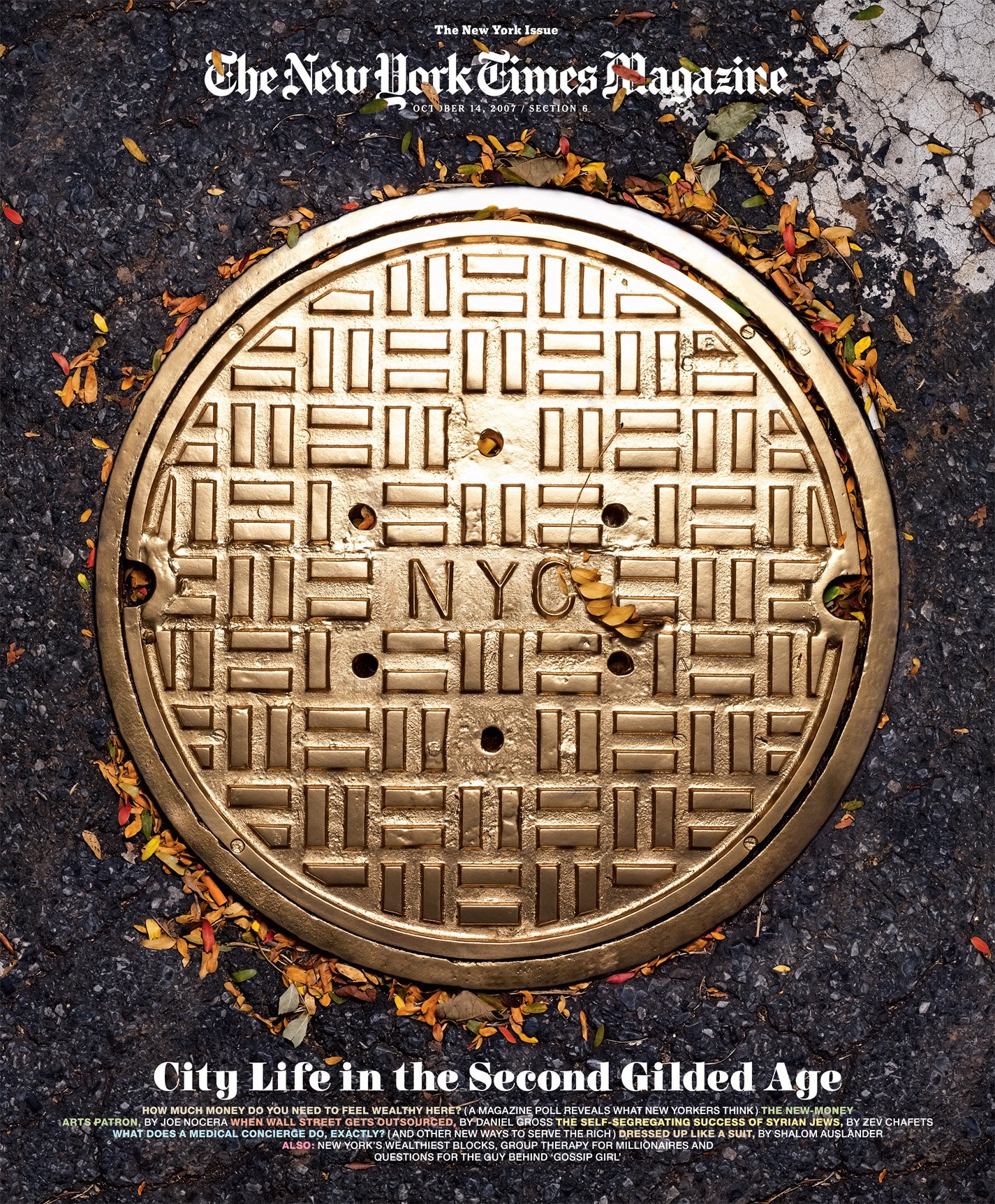
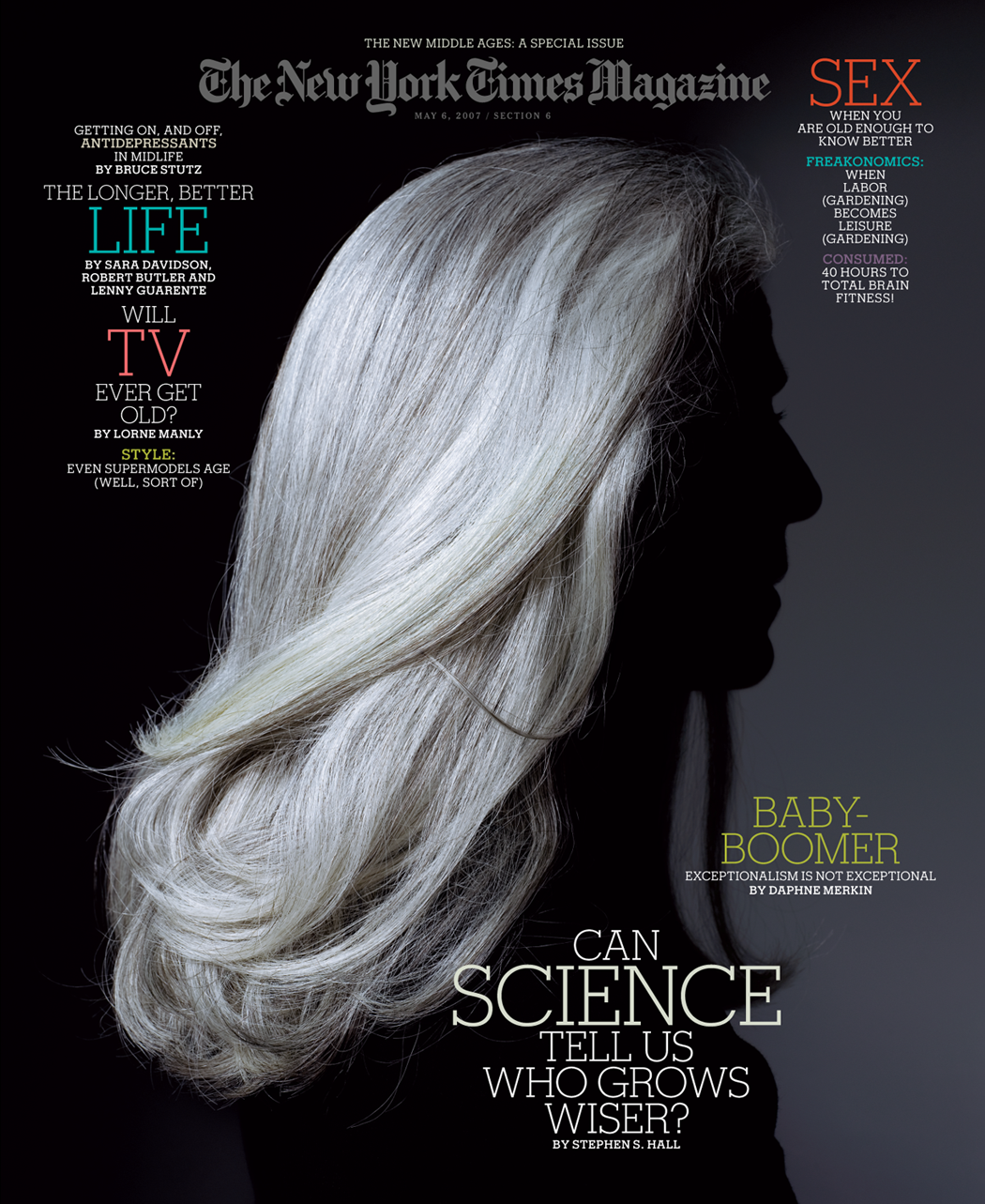
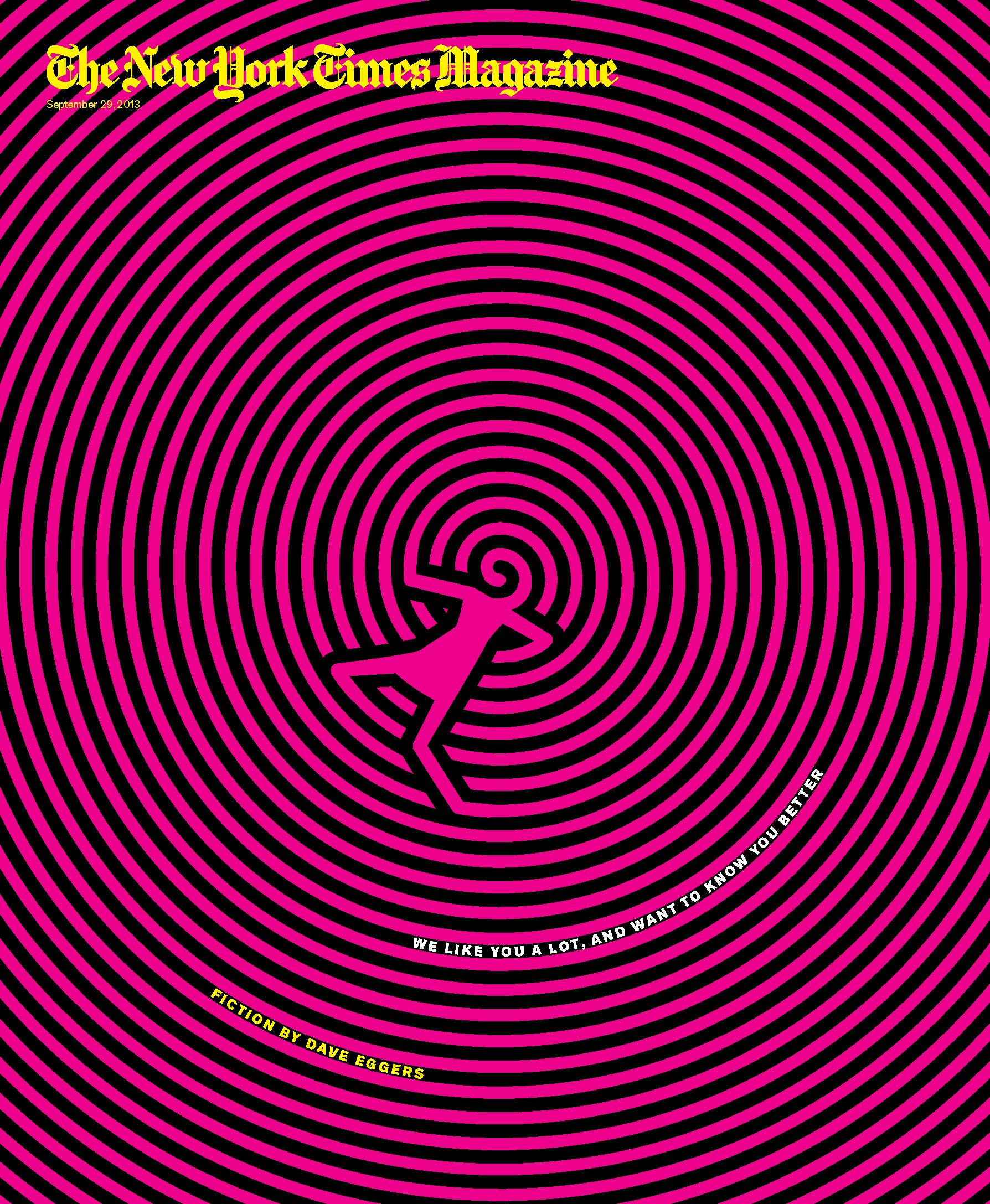
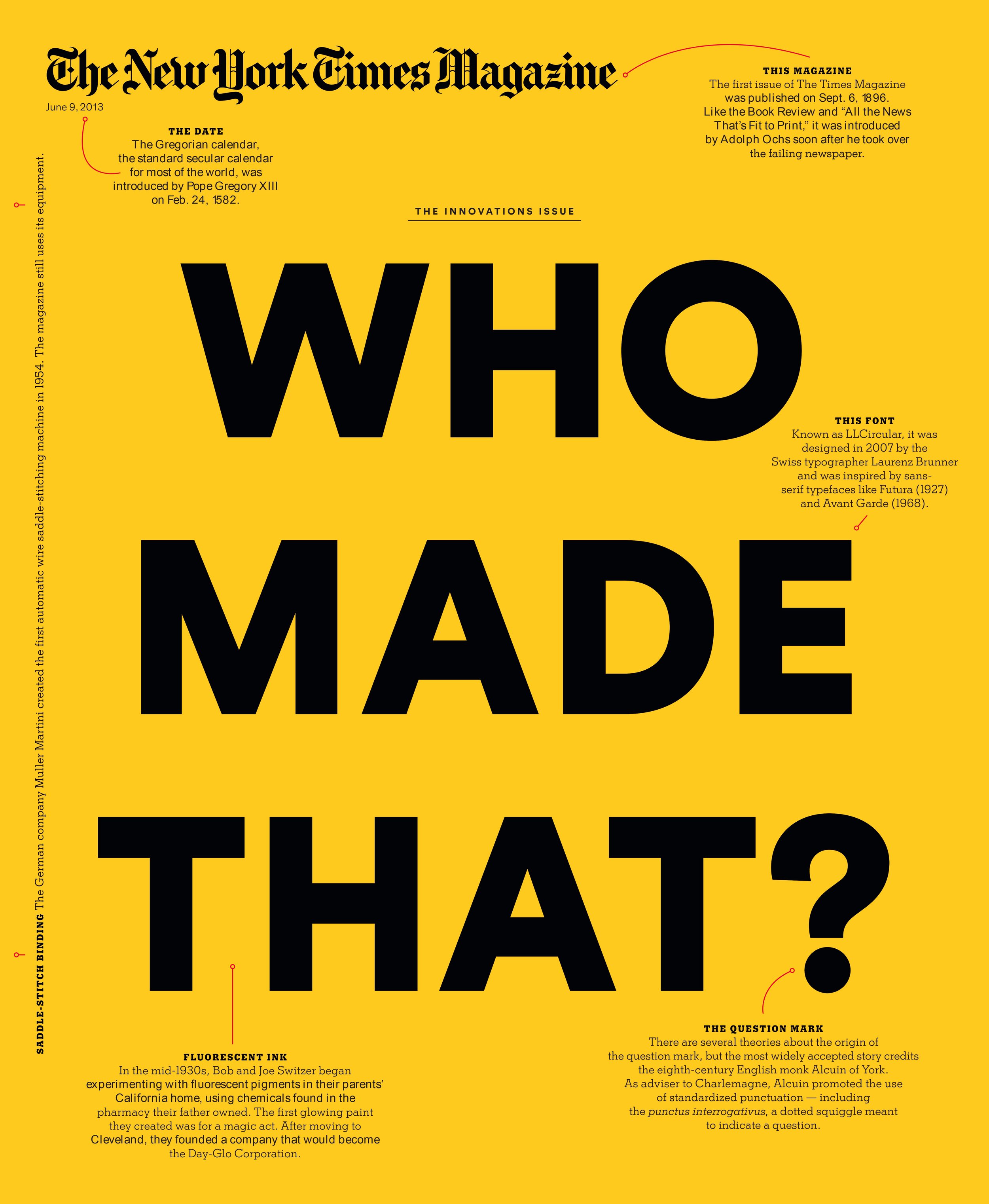
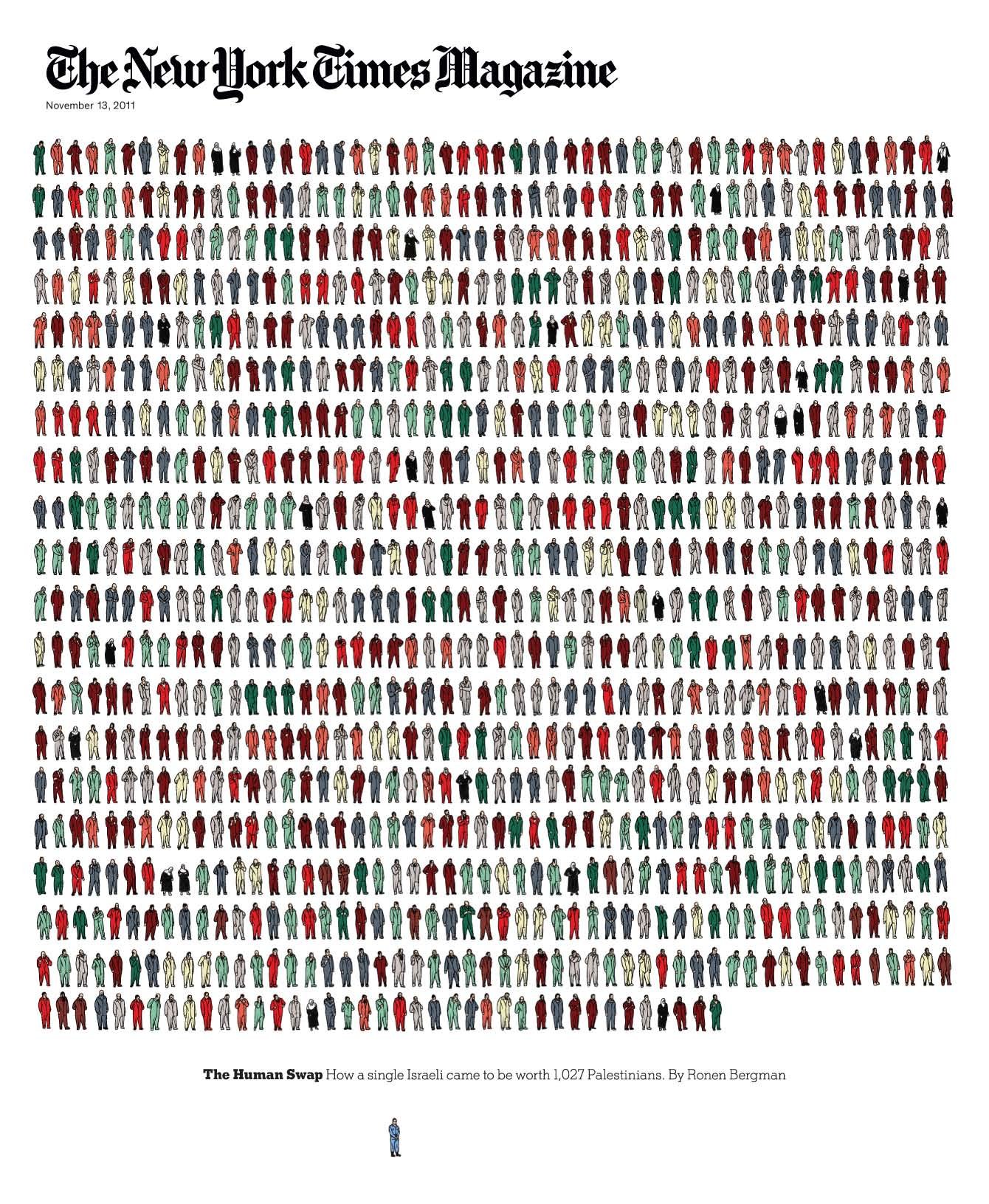

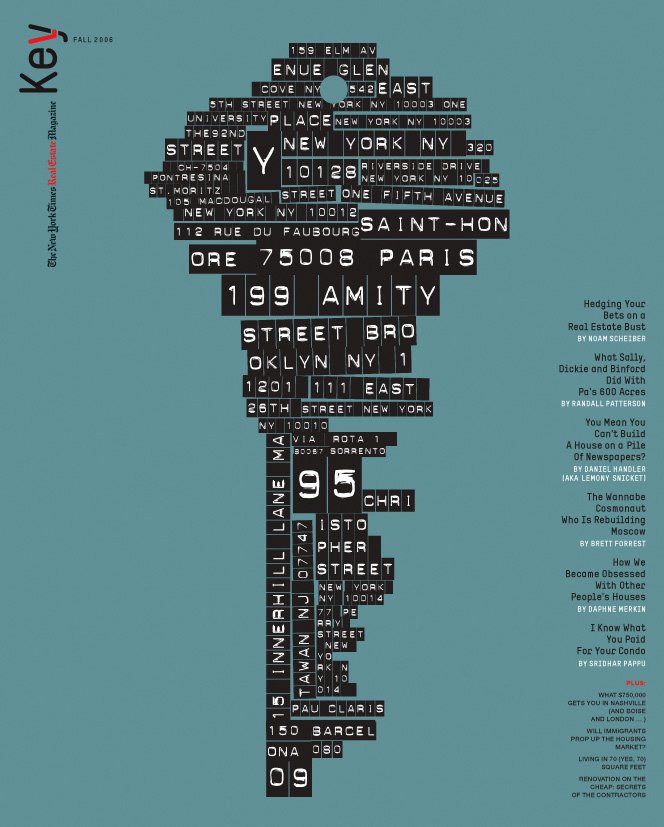
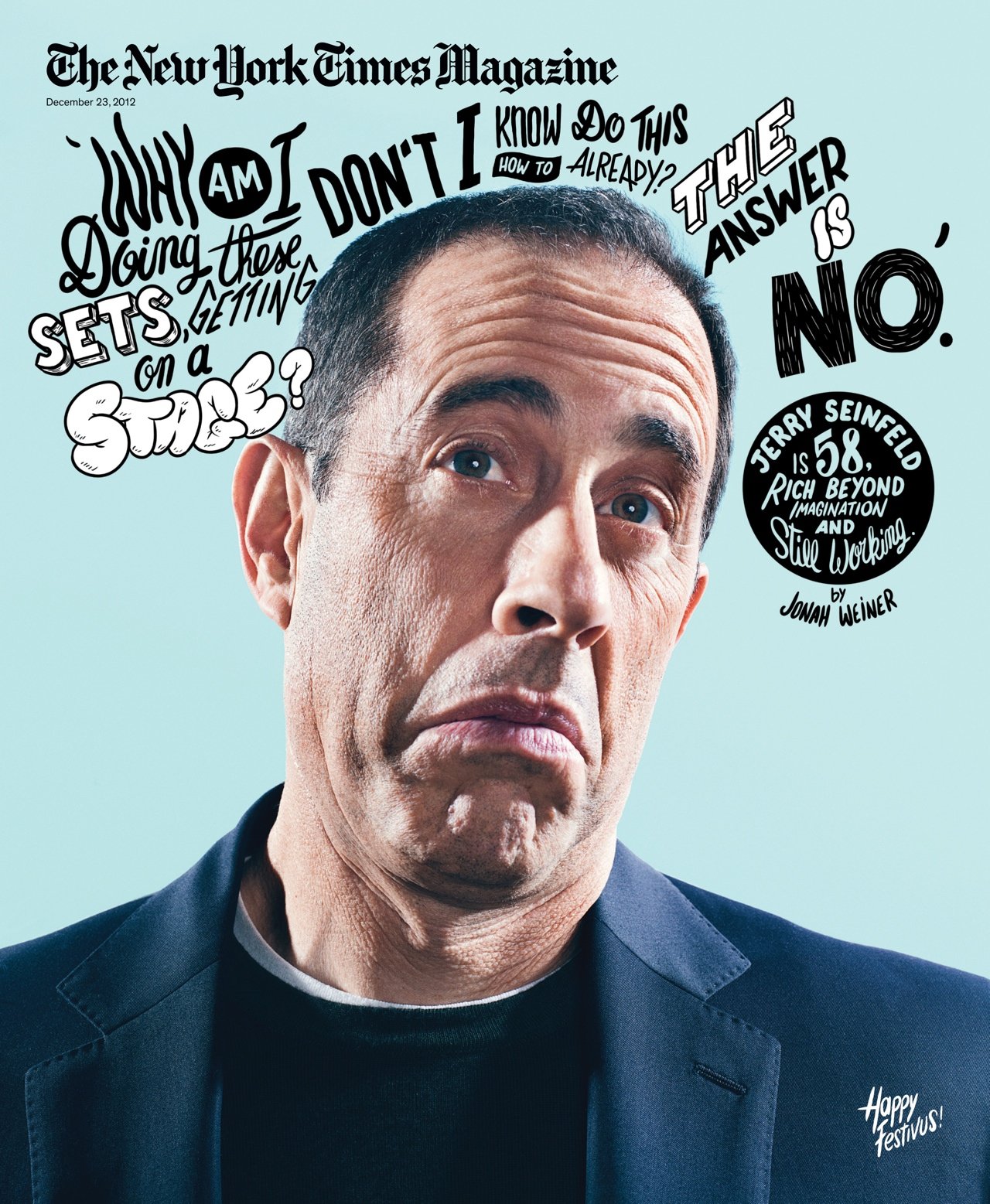
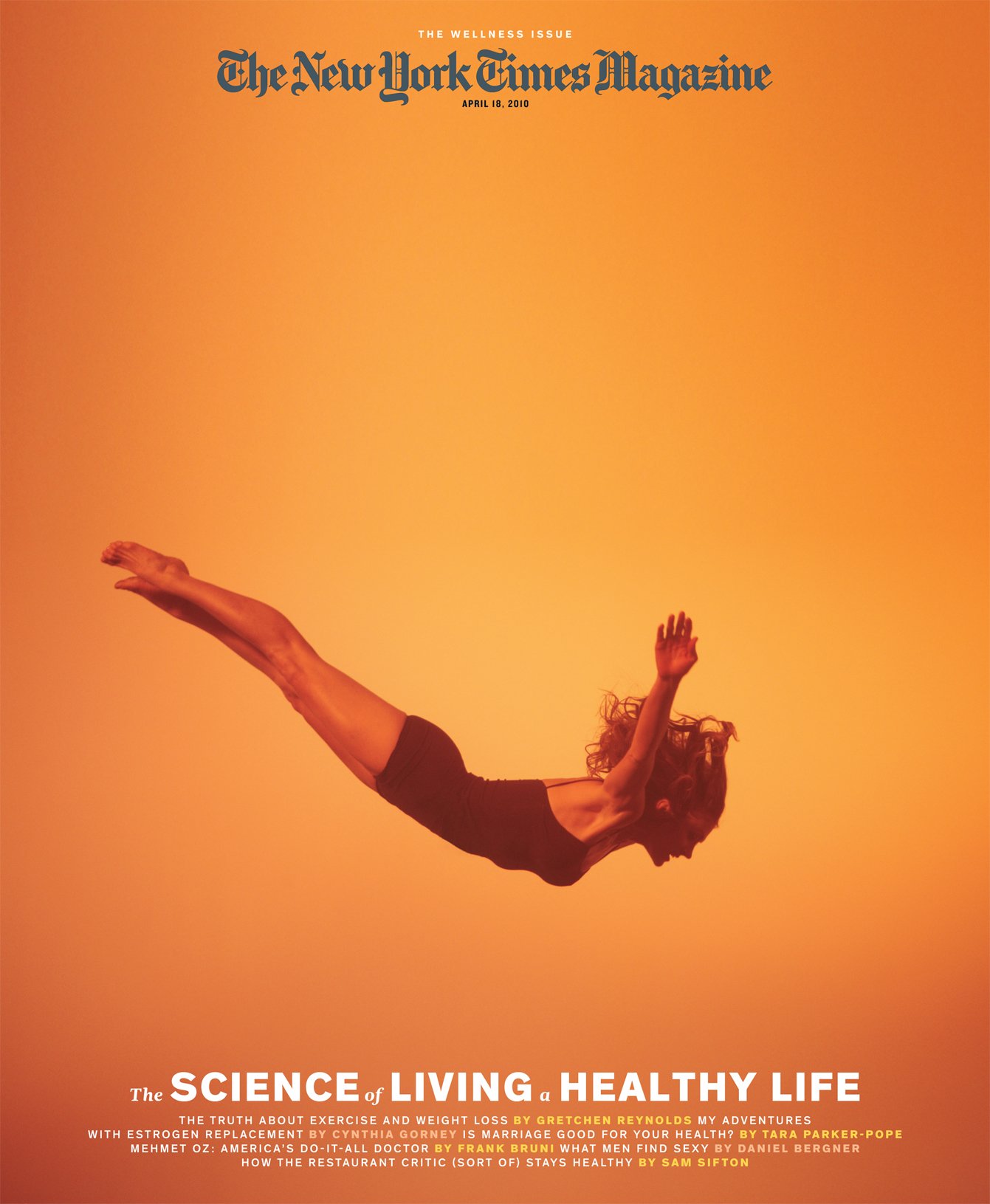
Patrick Mitchell: Apple has come up in several of our previous interviews. Everyone’s talking about how Apple keeps hiring all these magazine people.
Arem Duplessis: Mm-hmm.
Patrick Mitchell: And I know you can’t divulge anything about what goes on in there, but what is it about magazine thinking that makes magazine makers so appealing? Not just to Apple, but to other sorts of non-magazine companies.
Arem Duplessis: Looking back on it—and, and I didn’t have this perspective while I was in magazines—it got to a point where I felt, in many ways, that I was becoming obsolete toward the end, you know, or magazines were becoming obsolete. At least in the way that I kind of came of age with them. So for me, it was, I was nervous about being able to tell my story as a magazine creative to these other brands. You know, I was in magazines my whole career.
So I quickly learned that what I perceived as a weakness was actually a real strength. Because if you look at the creation of a magazine—when you work for an agency or even a design firm to a certain degree, you’re not assigning illustration, you’re not working with photographers, you’re not working with fine artists. You’re not working with writers on projects in the way you do at a magazine. At The New York Times, that happened for me 52 times a year. It was weekly. So I was able to collaborate with some of the most amazing people. I was able to get in and refine type and be a design nerd in that way. I was able to articulate art direction and go on sets and lead shoots. It’s very rare that you have all of that in one place and still get your hands dirty and design. I was able to do all of that. I still designed magazine covers and feature spreads, even as the lead.
“In reality, coming from the magazine world was a big deal. You know, people wanted to know about it. That was exciting. ”
Patrick Mitchell: That’s interesting because I think you’re right. I think a lot of us feel like, maybe it’s changing now, but I think we probably felt like we would’ve had to apologize for our background, and try to convince people we can do jobs outside of the magazine business. But I think what has happened is the outside world has realized what kind of thinking goes into magazines and realized the affection people have, the relationship they have, to these storytelling objects.
Arem Duplessis: Exactly. To be able to tell narratives. Well, I mean, honestly, what I learned was that it’s not like that happened in 2014 when I started at Apple, where all of a sudden there was this kind of epiphany of, “Hey magazine people actually do have something to offer.” Those were just my insecurities. But in reality, coming from the magazine world was a big deal. You know, people wanted to know about it. That was exciting. Most of the people that I work with are from design firms or from agencies. So, at the time when I started, there weren’t any, there weren’t too many magazine people coming into Apple. So people were intrigued by it. And they were fascinated by it. And they were very respectful of it.
What I quickly learned is the amount of work that we put into a magazine and the collaborations that we have, it really allowed us to be able to tell a really strong narrative. And being able to tell a really strong narrative in what we do—our job is to communicate. That applies to anything that any brand that you work for outside of the magazine world. If you can tell a strong narrative, if you’re really good at telling a story visually, and directing that mission, there’s a lot of value there.
Nicole Dyer: At The New York Times Magazine, you must have been thinking about digital outputs. So at what point do you stop thinking of yourself as a magazine designer, when you’re thinking about all of these digital strategies and ways to extend the content beyond the printed page. You must have been doing that already.
Arem Duplessis: Yeah, I was. And I loved it. I mean, I loved being at The New York Times, and I loved being a part of the magazine world. But I was still relatively young at the time. And I just felt like, “What does my career look like”—I guess at that point, maybe halfway through my career—“Do I want to continue doing this and transition into someone who’s leading digital work?” Because I love the smell of print. I mean, opening up that box of fresh magazines and you smell that. I still love that. But if that’s going away, then does it make sense for me, in my career, to stay in that world versus trying out something new. And then having an opportunity to try out something new at a brand like Apple, it just made perfect sense.
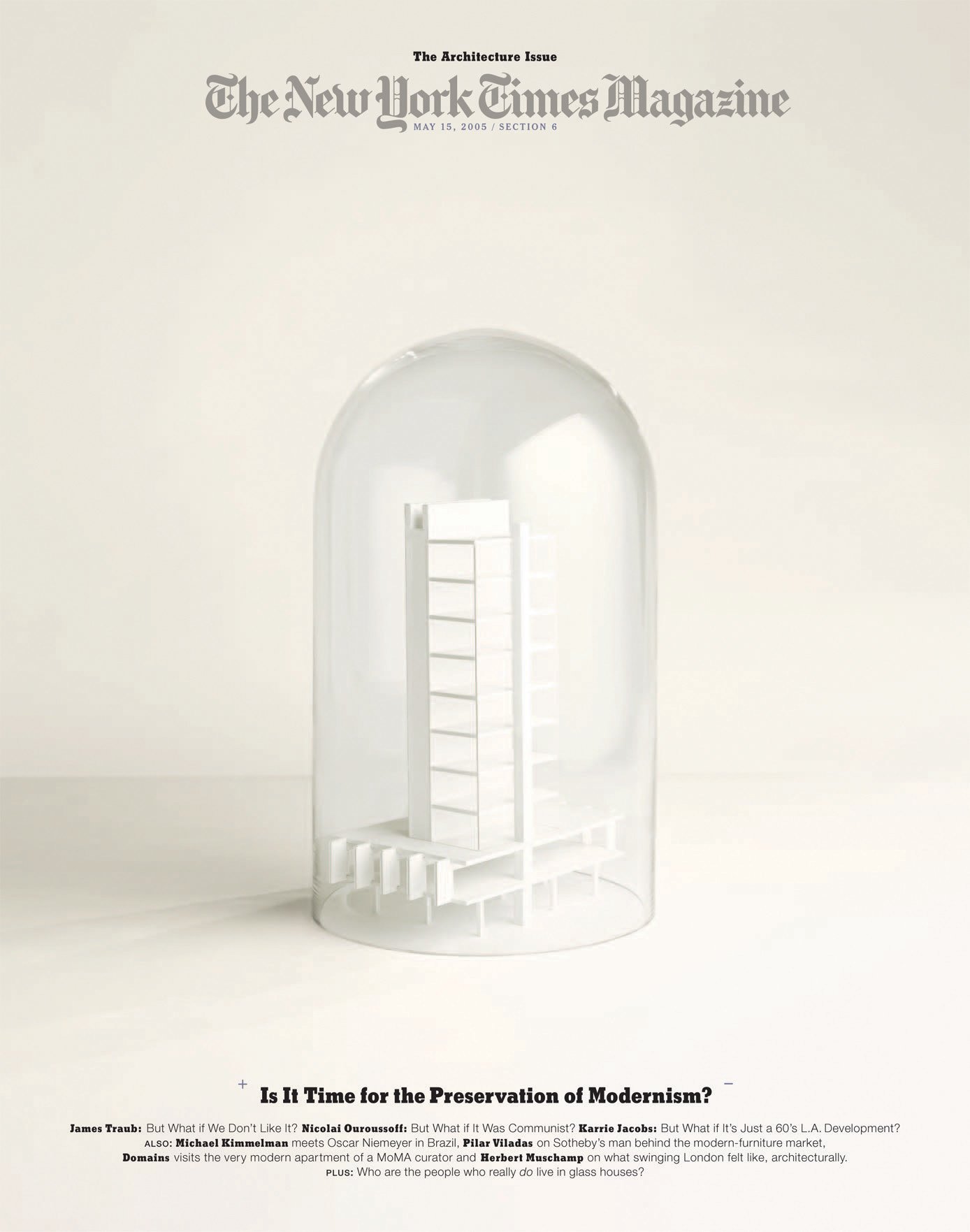
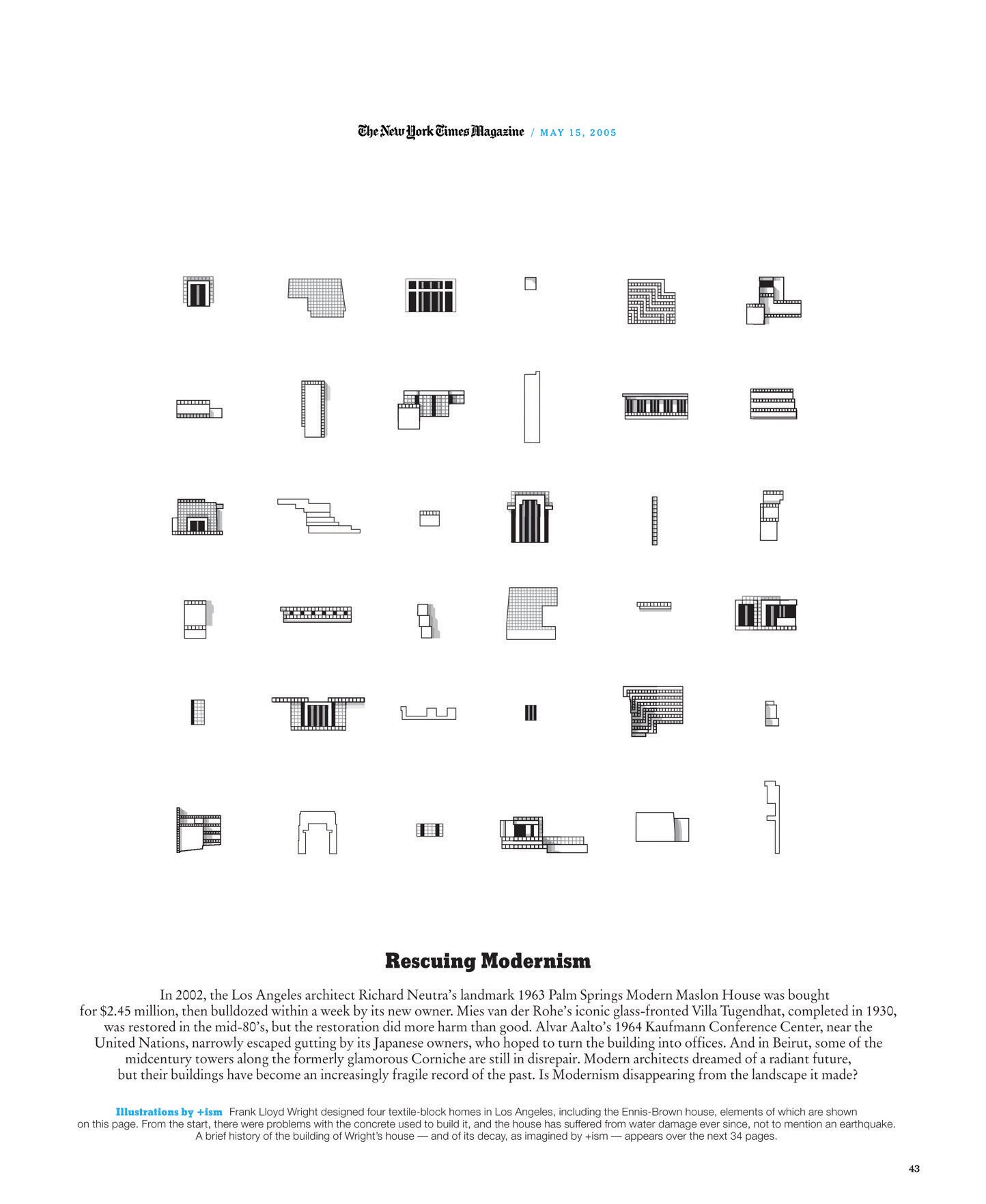
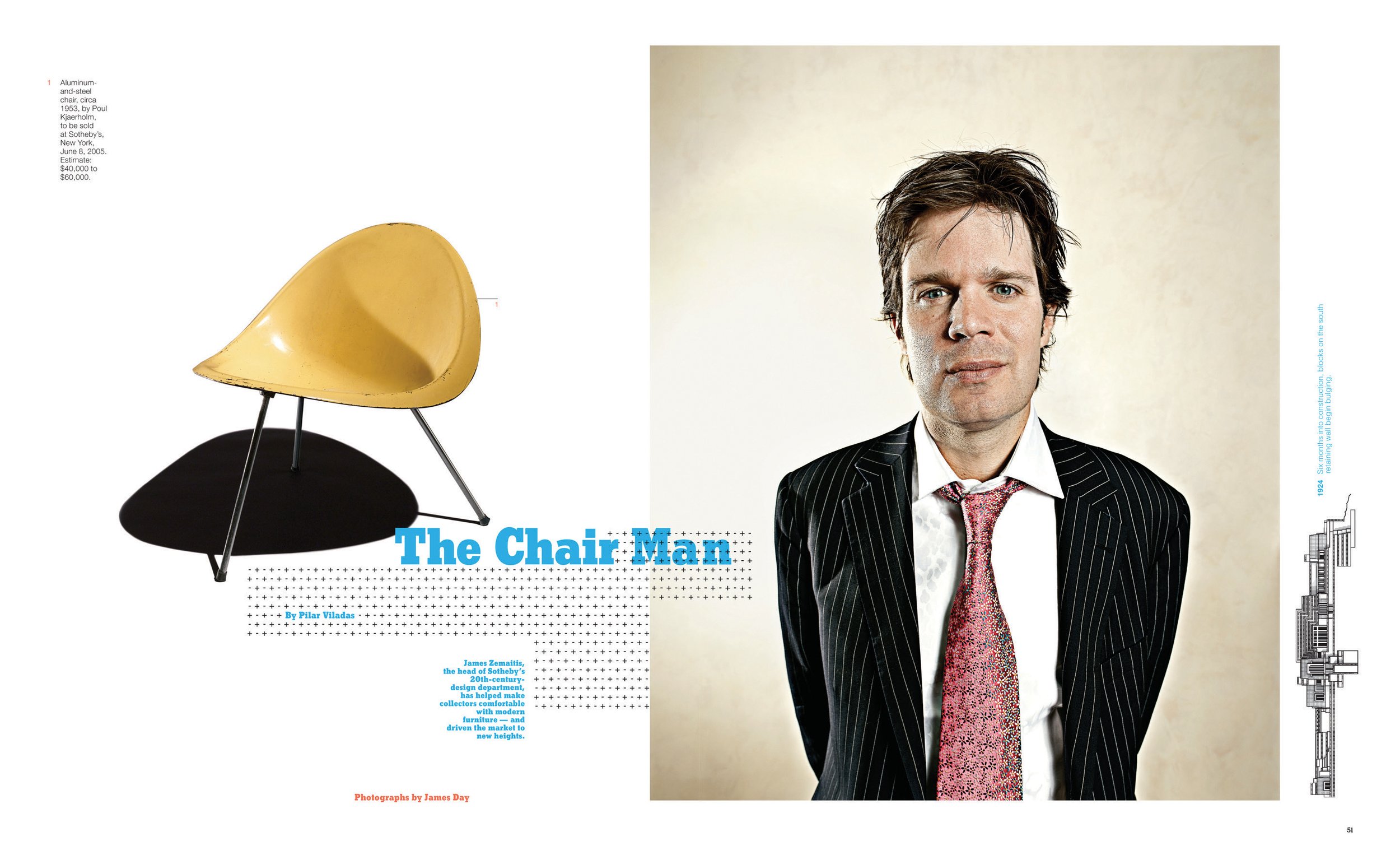
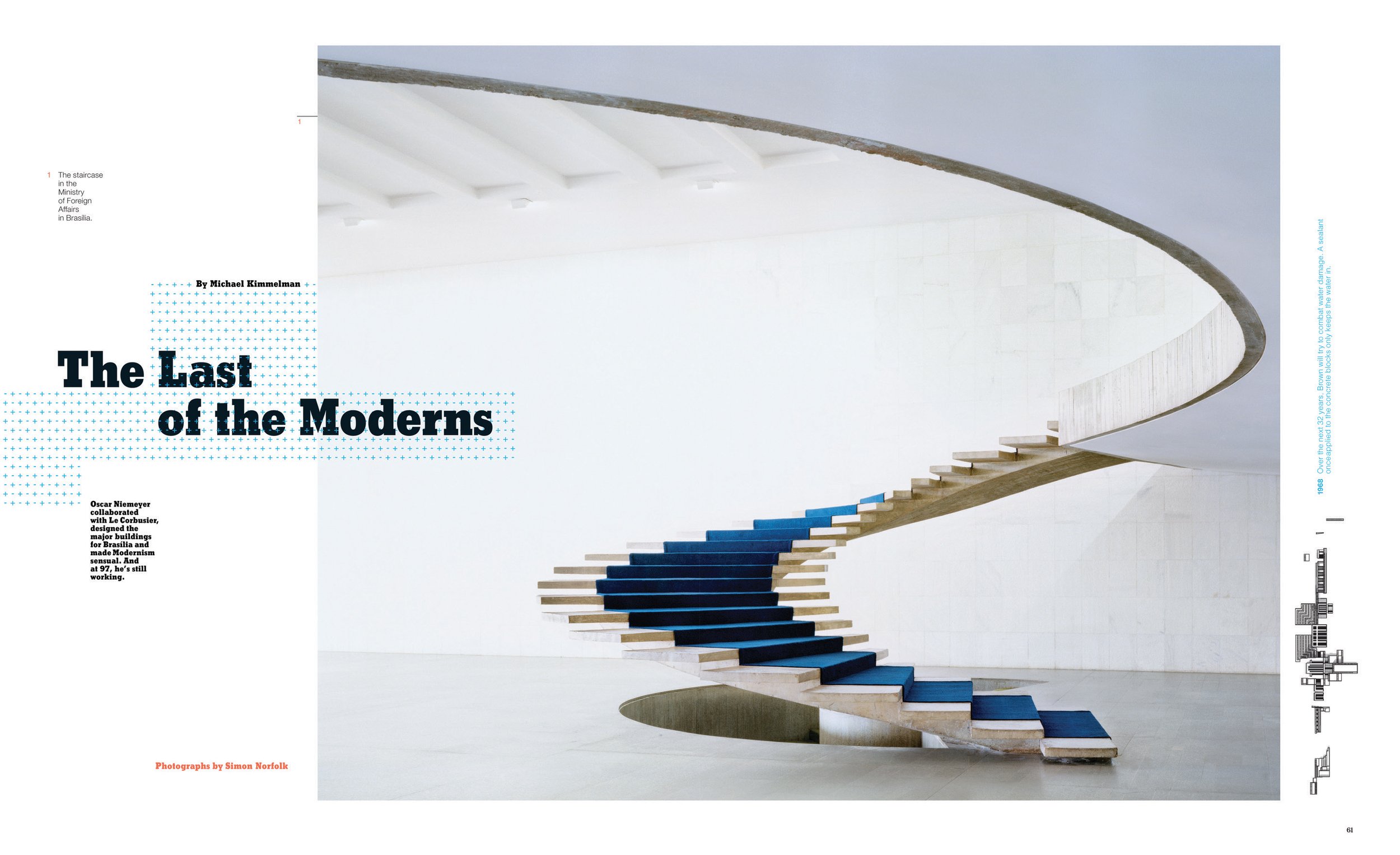
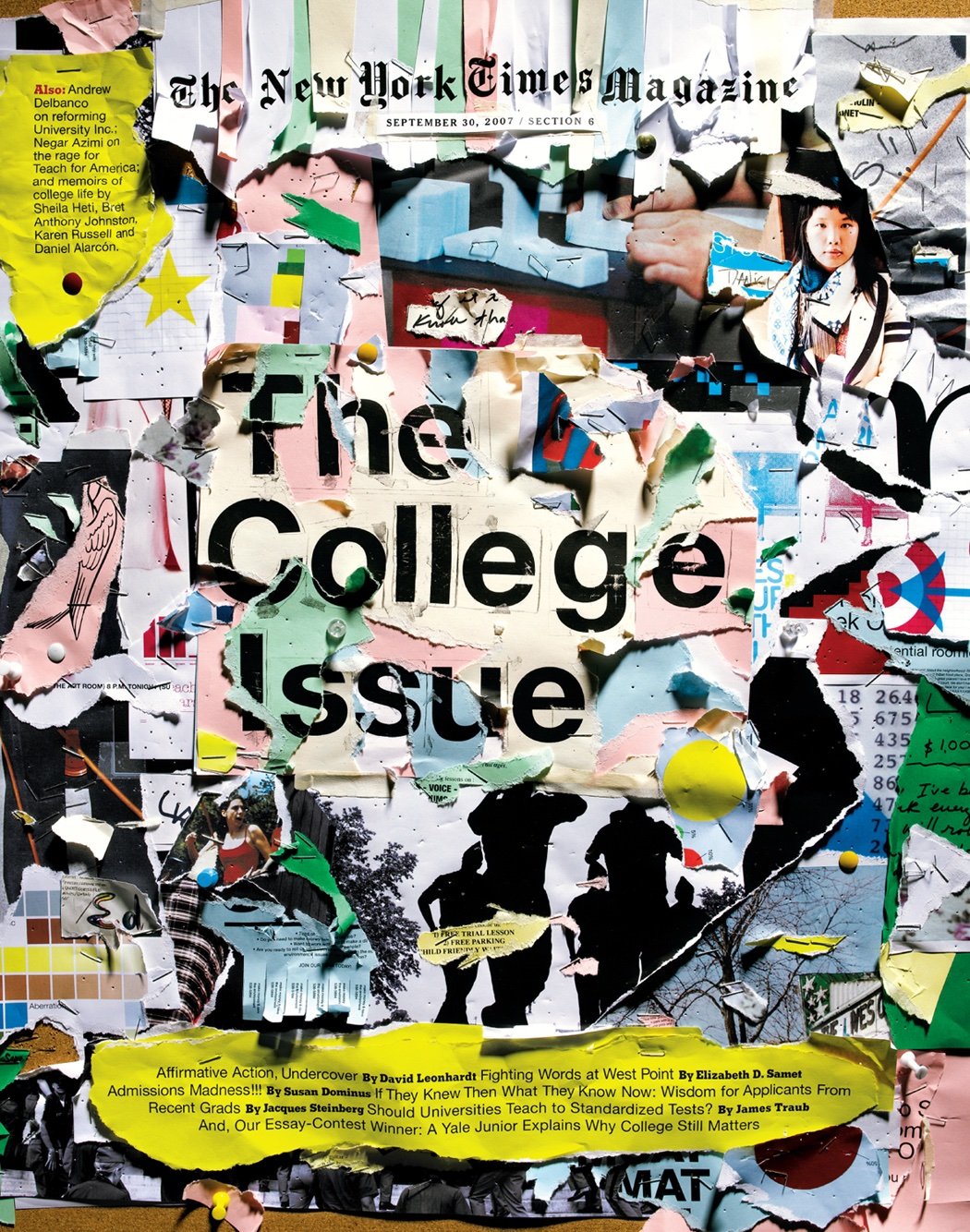
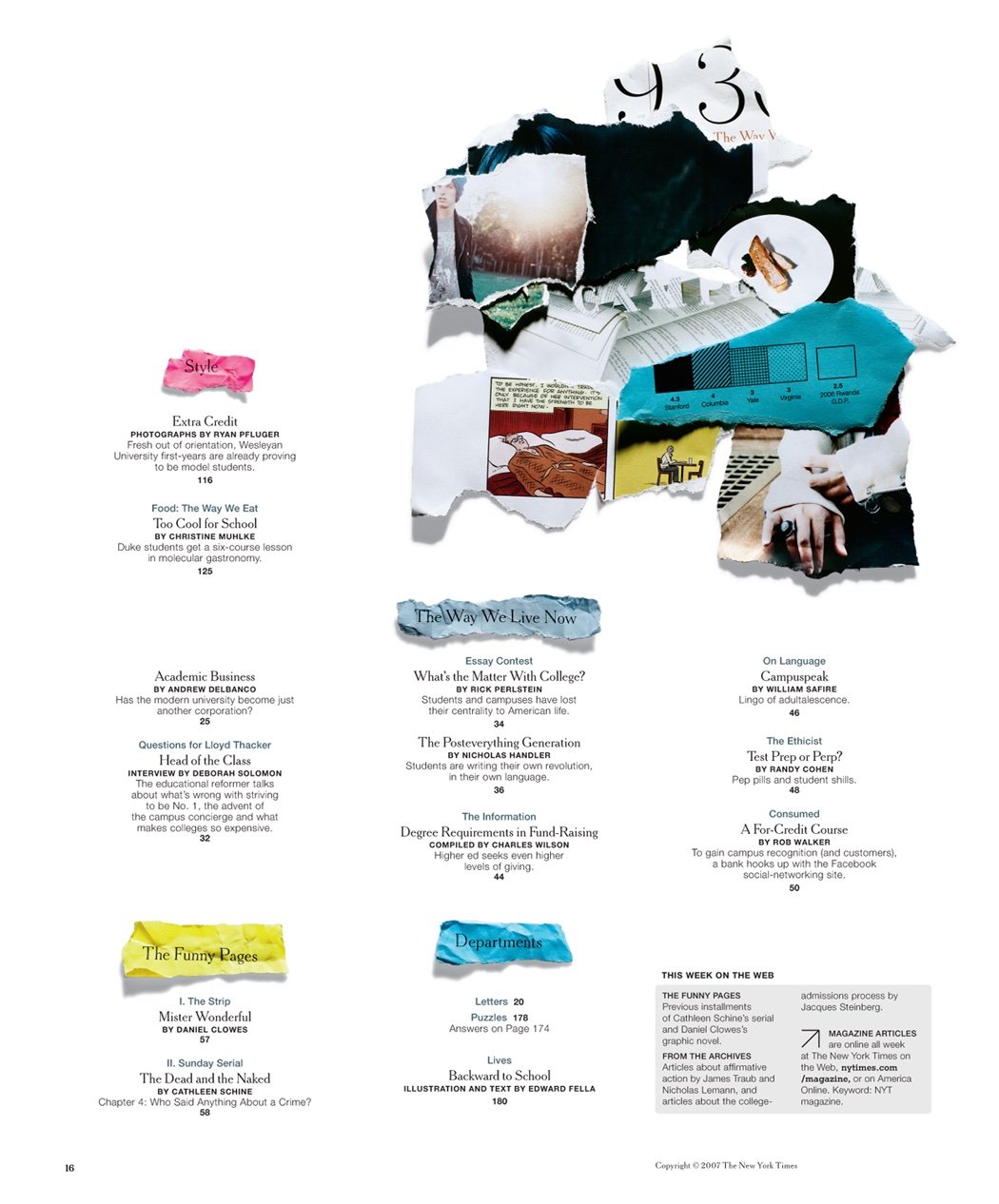

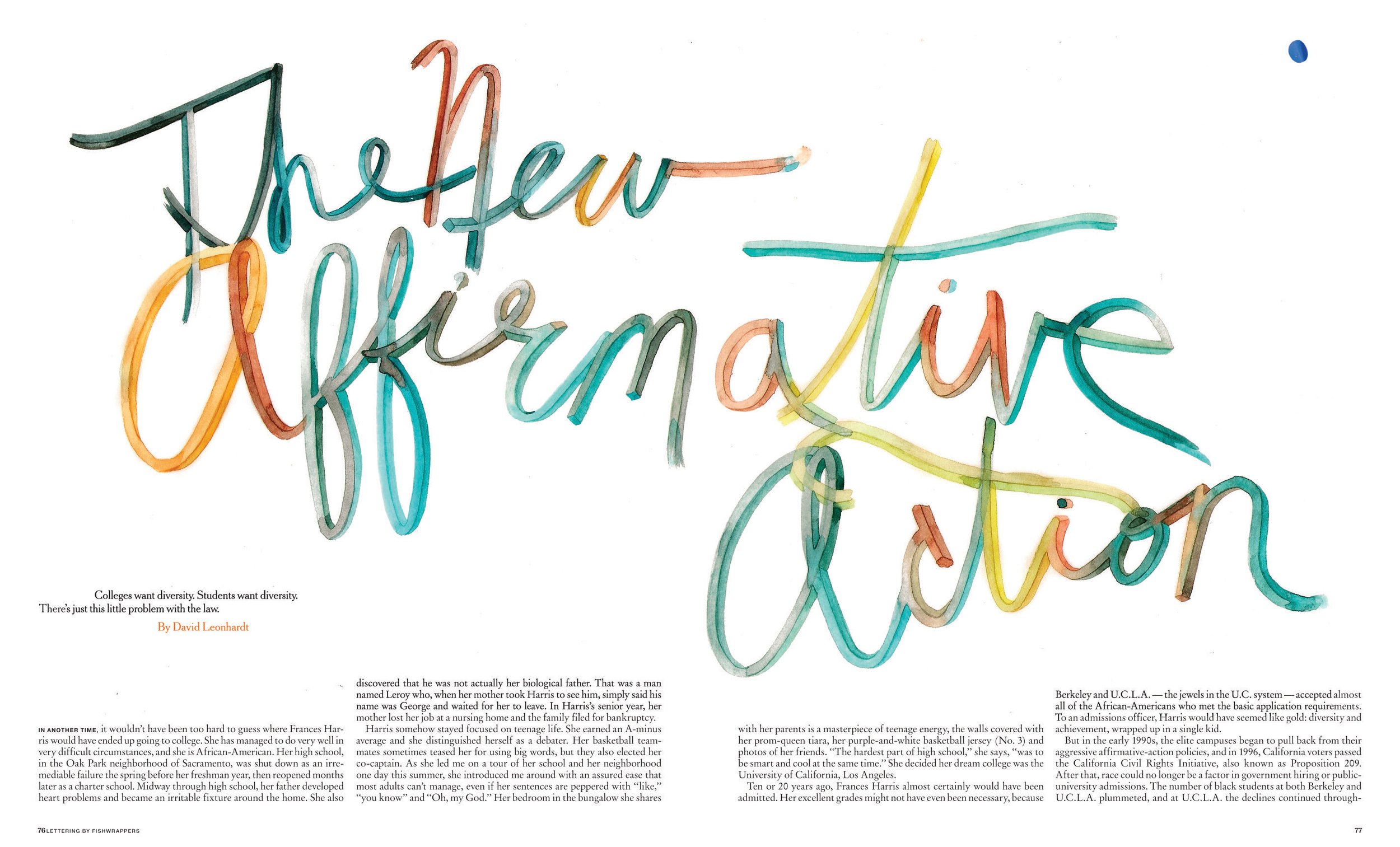
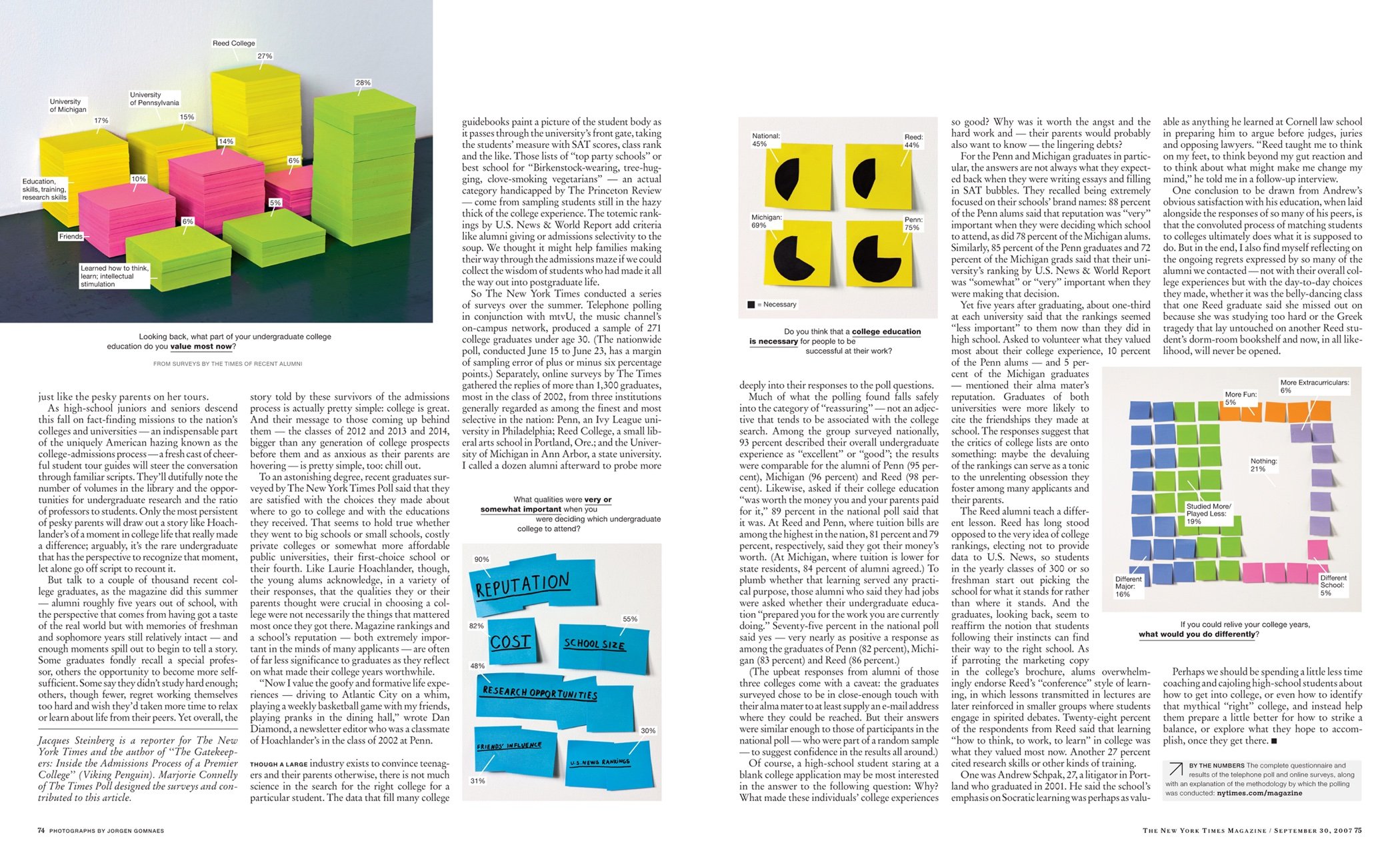
Nicole Dyer: I’ve been thinking a lot about the way in which young designers now think about design, given the dramatic shifts to digital platforms and the decline of magazines and wondering what jobs they actually aspire to. What would be the pinnacle for a young designer? Would they aspire to work at Rolling Stone or The New York Times Magazine? And does it matter if your design never materializes on paper?
Arem Duplessis: I don’t know if that matters to them because they really didn’t have that option coming out of school now, in 2022. Not too many people are saying, “Hey, you should go work for Rolling Stone.” It’s just a different world.
But I think there are more opportunities for designers than ever before. There are way more jobs now for designers than there were when I was coming out of school. I mean, I went to Pratt Institute. I finished graduate school there in 1996. And you had choices. You had a design firm, you had an ad agency, or you had magazines. For the most part. Of course, there are other things you could do within brands, but that’s where most of my contemporaries wanted to work. For the big design firms. For the most part, that was the big thing. Working for Pentagram or a big design firm like that. And then, if you were in the magazine world, you wanted to go work for Fred [Woodward] and Rolling Stone.
I think now designers have a lot more choices. But in terms of doing the interesting, fun kind of design, I don’t know if they're leaning toward many companies in tech. I mean, I think Apple still offers a lot of variety for sure, but other companies, they pretty much are traditionally digital. So designers still probably lean toward, “Hey, I’m going to go work for this design firm.”
A lot of younger people now I’m seeing have the entrepreneurial spirit, so they’re starting their own agencies right away. I think it just depends on what kind of person you are. I do think—and I do see still a lot of respect and value and aspirations around print for young designers, too. They want to do ’zines. They want to do anything in print. They still think it’s cool. They think it's fun, but they just view it in a different way than I did. Print was pretty much all we had, for the most part, versus now it’s kind of like vinyl. They think of it as a cool, vintage kind of project.
Patrick Mitchell: Yeah. It was a “career” and now it’s a “project."
Arem Duplessis: Yeah. Now it’s a cool little side project. But you know, if you go work for an ad agency, and they have a variety of clients, you’re still doing some cool work. If you work for a good agency, they may be doing movie posters, they may be doing things that still involve print. But it’s a broader world now for design.
“Going to Spin after GQ was intentional. I took a salary cut, but it was the best career move I ever made because Sia [Michel] gave me freedom and autonomy. And that’s what got me to The New York Times.”
Patrick Mitchell: The magazine business is super tough with deadlines and, on a weekly, even deadlier. Has moving to the corporate world had a positive effect on your lifestyle? What has the Cali lifestyle meant for you personally?
Arem Duplessis: Well, coming from a weekly—you know, 52 times a year—that was pretty brutal. I loved it, but the hours were completely insane. At least they were predictable. Because you know what the schedule is. And, unless the editor changes the cover story at the last minute, which happens, you pretty much know your schedule.
Moving to California, I had to change my New York attitude. I never really had a New York attitude—at least I didn’t think I did—until I moved to California. And all of a sudden—you know, in New York people considered me pretty chill—but I move out here and people are like, “You need to relax, man. You’re being a little aggressive.”
So I think California’s been good for my patience level. I no longer sit at the grocery store. Like, you know, “Come on, hurry up! Why are those fucking tomatoes taking so long to be put into the bag?”
I don’t have that anxiety anymore that I did in New York. But in terms of my hours, it depends on what project I’m on. You know how it is in the creative world. I mean, I think that a lot of times we put those hours on ourselves because we want to reach a certain level of work. So when I’m working late, generally, it’s because I’m trying to push the envelope, me and my team. We want to make something great and we’re all in on it. But I don’t believe in the creative space that there’s such thing as a nine-to-five because we love what we do, you know? Or, I feel like you should love what you do if you’re in this space. Because most of my friends that are attorneys or are in finance hate what they do. So if you have a job that you hate and you’re a creative, I don't think that’s a that’s good combination. I think we should all strive to do better because, for most people, this is a passion, you know. What we do is our passion.
Patrick Mitchell: I imagine, as you’re saying that about weekly, you must have deadlines that are now half-years, years—like real long-term.
Arem Duplessis: No, that’s not true. No, not at all.
Patrick Mitchell: Turnaround is pretty quick?
Arem Duplessis: Yeah. I mean, it depends on what you’re working on, but it’s pretty quick. It’s just different because sometimes there’s just different components to it. The schedule isn’t always as predictable as magazines.
Patrick Mitchell: I remember being at a cocktail party with a guy who was a civil engineer and he said his projects are typically 15 to 20 years. And I was thinking, “Imagine working on two projects your entire life.”
Arem Duplessis: Yeah. That’s crazy. But I mean, it all comes down to what you’re used to and what foundation you started with.
Nicole Dyer: You gotta miss the energy of New York City though.
Arem Duplessis: Oh, of course. Yeah. Without question. I definitely miss it. I miss it all the time. Oddly enough, when I first moved away from New York, I think I had had enough, because I was commuting and I was taking my kids to school. It was a lot. It was a lot because I lived in Brooklyn. My son went to school on the Upper East Side. We didn’t have the train running up the East Side, so it was a pain in the ass. And I remember just being squeezed on the subway every day. I just felt like a rat. I really felt like a part of the rat race. So when I first moved to California, I didn’t miss that at all. I still don’t miss the cold. But recently, and I think Covid did this because I was forced to stay away from New York, once I was able to travel again I went back to New York City for the first time in, I think, 2020, or maybe late ’20 or early ’21, I can’t remember. But all of the sudden the nostalgia was there. Like I missed it tremendously. It was just, “Oh, New York!”
New York will always be there, but for now it’s California for me. And what I love about California is I can jump in my car and in 20 minutes, I’m on the beach or I’m hiking somewhere—and hiking somewhere where it’s a destination for people from around the world! You know, that kind of thing. The level of nature is amazing. And there’s some really good restaurants here too. For me, the hard part about the Bay Area is the lack of diversity. I can walk down the street and not see a black person for, like, the whole day, which is little odd. That’s hard. That really is. But I love the weather. It’s pretty consistent and it doesn’t get too hot here. It doesn’t get too cold.
Nicole Dyer: In New York City, the street art is amazing. And, as a creative person, you draw so much energy just from the environment, because there’s art everywhere. And that’s special about New York City. But I hear you on the lifestyle pain points. They’re real [laughs].
Arem Duplessis: Yeah, for sure. But I love New York and I always will. That won’t change. I was there for 21 years. I became an adult there.
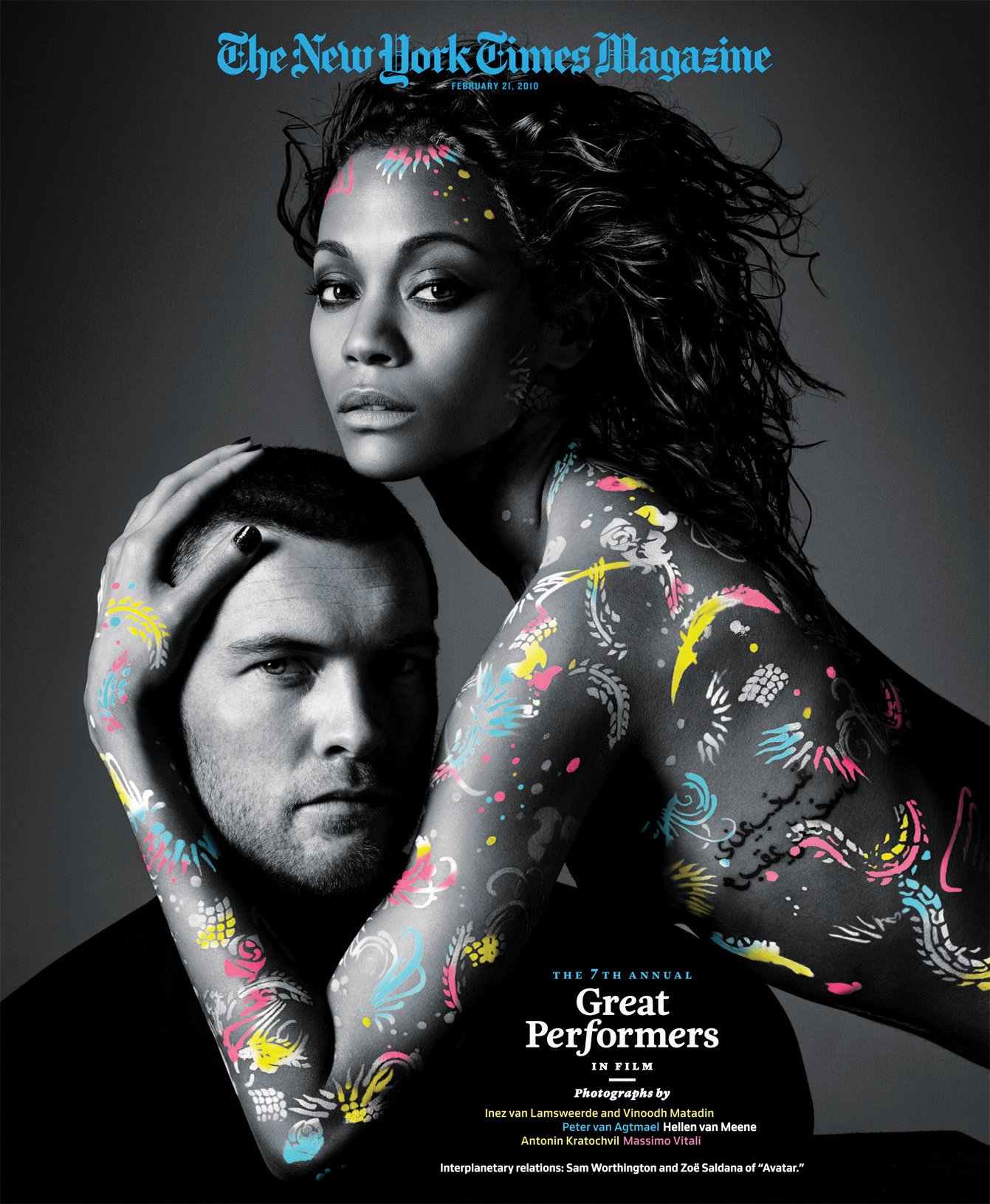
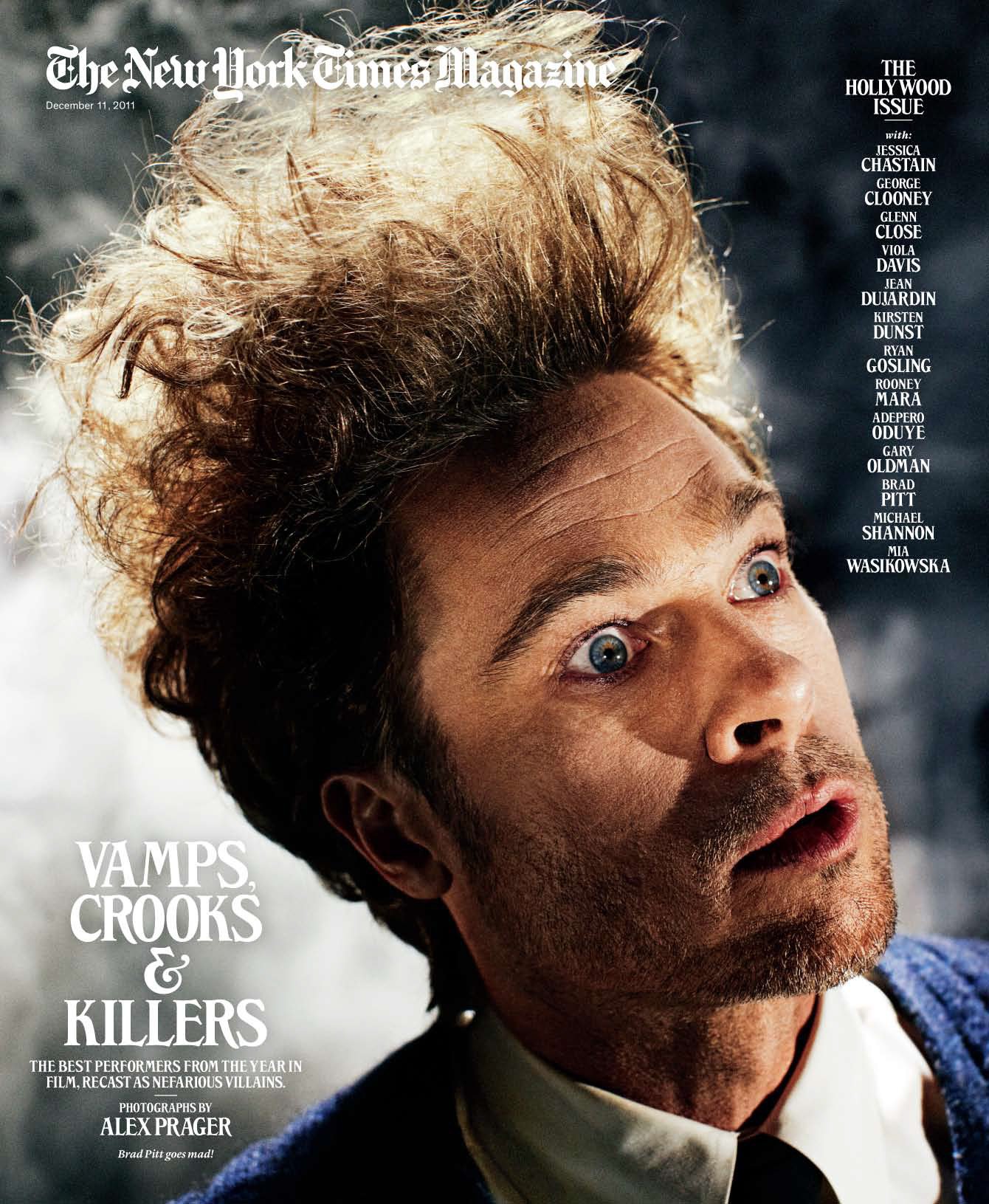
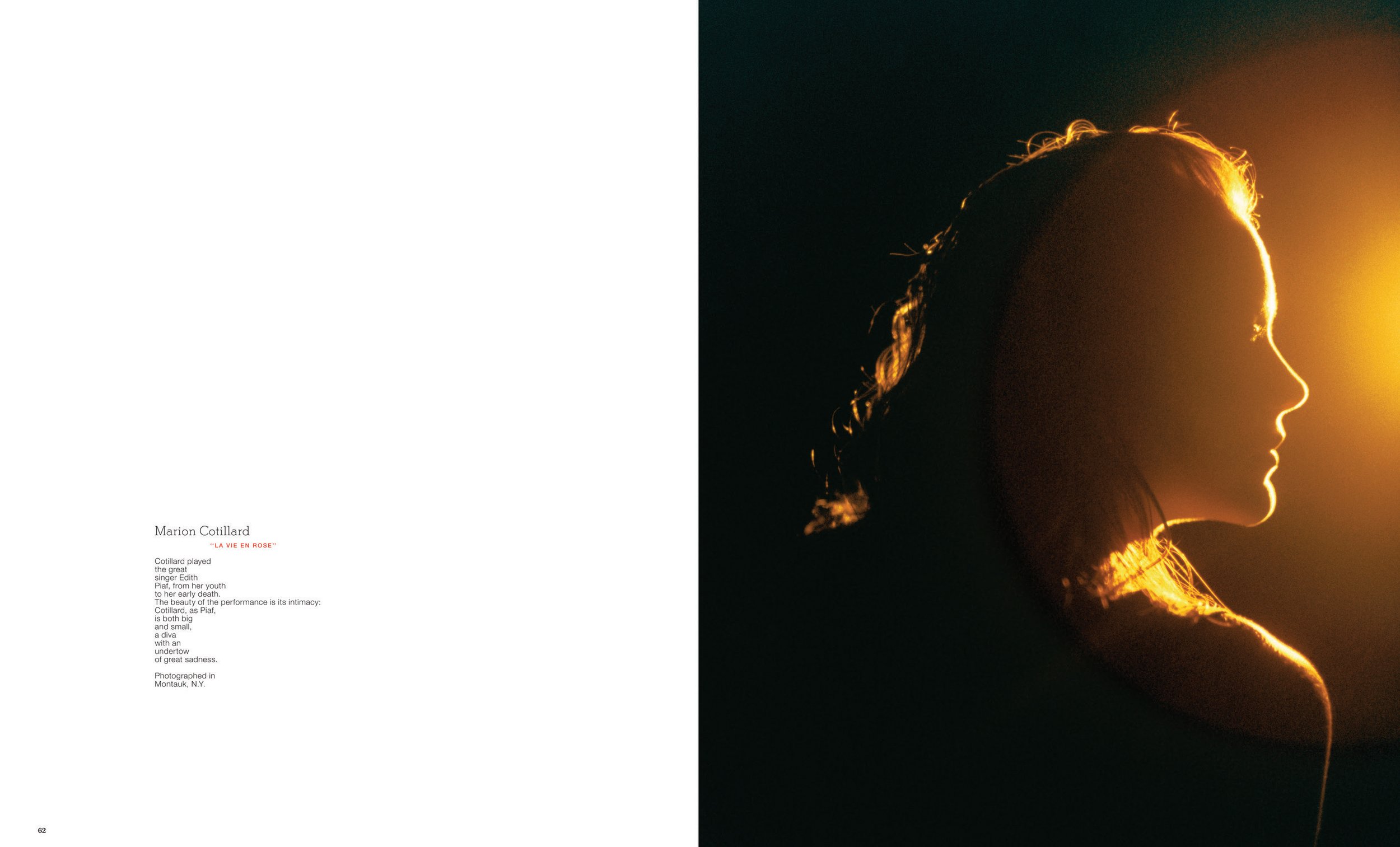
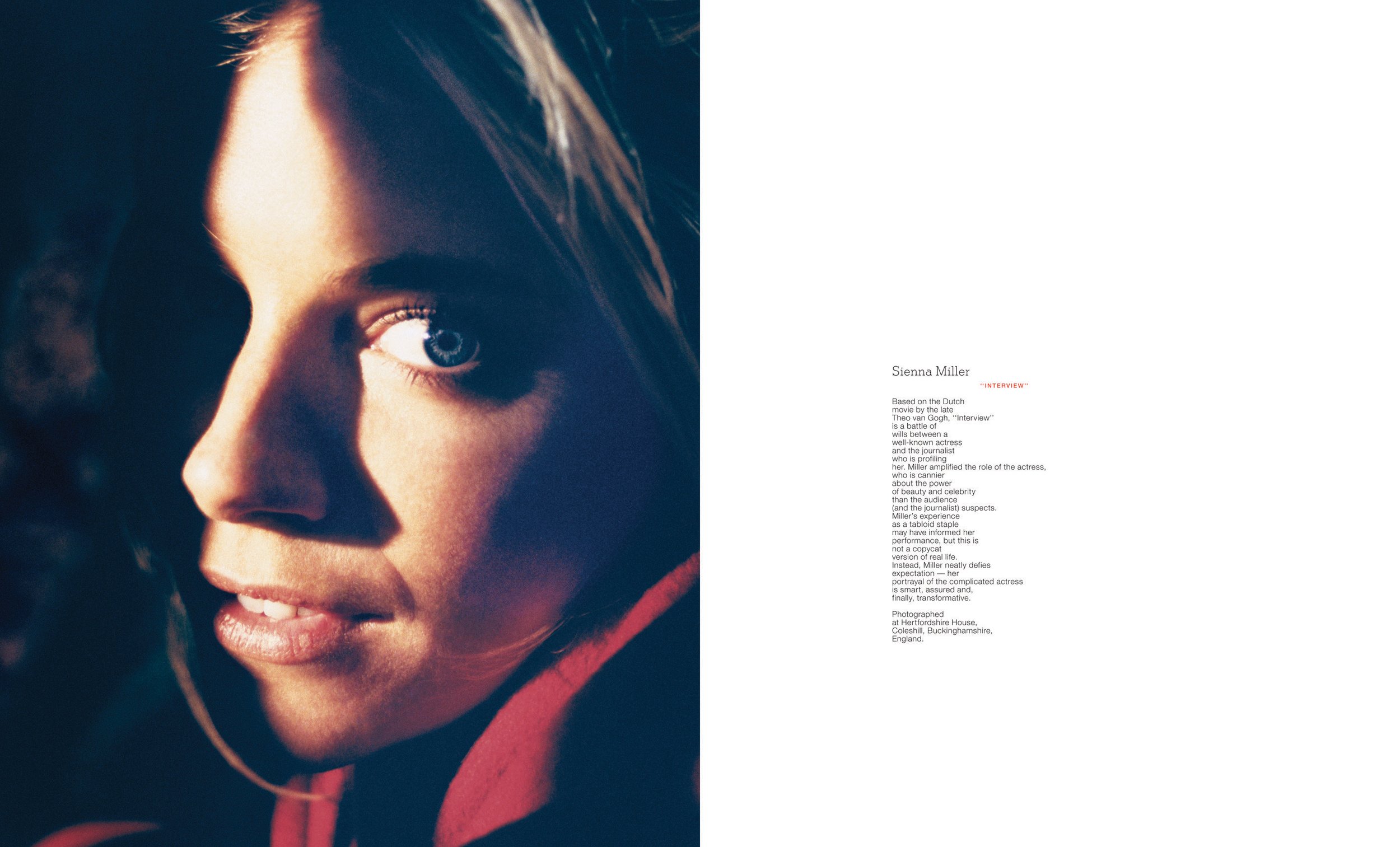
Patrick Mitchell: So in the world of My Dad Is Cooler Than Your Dad, you win. Your dad, Erol Duplessis owned a quarry where he trained scuba divers. Was that his full-time job? What’s the story there?
Arem Duplessis: My mother was a fine artist and she did what she loved. And, when I was young, she was doing fine art. And my father was working for the government and hated it. They would get into arguments about it because he just felt like it wasn’t fair for her to be able to pursue her dreams and he had to have this government job.
So one day he just quit. He couldn’t do it anymore. And he became a swim coach at a high school in Boston. I don’t know if it’s still around. It was called Umana High School. And from there he was able to begin his career in aquatics. So he did that for a few years. And then he became the assistant aquatics director at UMass (the University of Massachusetts, Amherst). And he did that for several years. Became certified as a scuba diver, then as an instructor.
So he started instructing people on how to become divers. And then he just ended up getting all these certifications to the point where he could certify instructors to become instructors. You know, that kind of thing.
From there, he became a university professor, the director of aquatics at Hampton University. He worked there for 20 years. And during that time, I think near the end of his tenure at Hampton, a buddy of his said, “Hey, you want to come diving with me? There’s this quarry [Lake Rawlings] and it’s pretty cool.” And he was like, “Sure.” And at that point the quarry was longer in use. Originally, they were digging for limestone and they hit an underwater spring. It filled up and this quarry just sat there. No one used it. But the water was so clear that sometimes divers would sneak in there and go diving.
And my father went and right away, he said, “You know, this could be a business. This is amazing.” He didn’t have a background in business and I’m not going to say that he was the best businessman, but his journey was to turn the quarry into a dive destination. And he did just that. He had government contracts, they filmed a few movies there. They trained divers at Lake Rawlings and also people would bring their families. It was a swimming destination and a recreational diving spot. So he did that for, god, you know, another 20 years he had Lake Rawlings and he loved every minute of it.
But during his time at Hampton, he certified—I don’t have the statistics on this, but I can’t find anyone that could argue the fact—my father certified more black divers than anyone in the United States. Just because, being a university professor, every semester he’s certifying 20, 30 divers.
Patrick Mitchell: Have you dived there?
Arem Duplessis: Yeah. Yeah, yeah. I did. It was really fucking cold. The water, it had a thermocline. So after 15 feet, it got really cold, man.
Patrick Mitchell: How deep was it?
Arem Duplessis: Sixty feet at the deepest. And they sunk a few boats, they made some artificial reefs. They sunk a car, a school bus. So, you know, divers could go there and kind of play around with the things that were at the bottom of the lake. So it was pretty cool. All of his grandchildren, their first foray into diving was at Lake Rawlings. He’d put a tank on them and teach them the basics. It was pretty awesome.
Patrick Mitchell: There, that sounds incredible.
Arem Duplessis: Yeah. Yeah.
Patrick Mitchell: You give credit to your mom for guiding you into this career. She was an artist herself. Can you talk a little bit about Laurel?
Arem Duplessis: My mother was a fine artist. And in high school, I’ll be honest, I was a—I don’t want to say “fuck up”—you know, but I just, like, what is the term if you don’t give a shit? You know, I wasn’t getting in trouble, really, but school wasn’t my thing at all. I just didn’t have a lot of confidence in what I was doing. And years later I got diagnosed with ADD. Probably like half the creatives out there in the world. But it’s not a joke. I mean, I really did. And there was really no term for that. Schools didn’t know how to deal with kids that had Attention Deficit Disorder. So they would always say, you know, the report was always, “Rem needs to focus.” You know? And the only time I didn’t get that feedback was in art class.
And I think that, because in elementary school in my early education years, not knowing that I had ADD, it did fuck with my confidence in terms of school. And I didn’t try as hard, you know, I just stopped trying. Which is unfortunate, but it’s the truth. And so when my mother came to me and said, “Hey, what do you want to do with your life?” I said, “I have no idea.” I told her I wanted to go to New York and model [laughs] or join the Marines. And the reason why I said modeling was because I was in class my junior year in this government class, and this woman came in to visit. She was on Broadway, some New York/Broadway woman. I think she was a director or producer. And she was good friends with my government teacher. And she was like, “Hey you in the back. Back there. The quiet one,” and she was talking to me and she said, “You should come to New York and model.” And I was like, “Whoa. Yeah, that’s my plan. That’s what I’m going to do.”
So I told my mother, she was like, “What do you want to do with your life?” And I said, “I think I’m going to go to New York and model.” And she said, “Well, the hell you are.” And then I said, “Okay, well I’ll probably join the Marines then.” And she said, “No, you’re not doing that either.” So then we started going through choices. “Choices” meaning you have no choice but to go to college, but then choices around what are you going to major in? And she threw out fine art. And I said, “I don’t want to do that.” Just because I saw the struggles that she went through as a fine artist. And we talked about architecture and we had a friend of the family that was an architect. And he told me about the projects he worked on. And it wasn’t anything that I thought it would be. You know, he was like, “When you first start out, you’re an apprentice and you’re designing a bathroom for the first five years.” So I definitely didn’t want to do that. And then she said, “Well, what about commercial art?” And I said, “What’s that?” And, of course, she was referring to graphic design.
And the minute she started talking about that, “You can design magazines. You can work for an ad agency. You can do movie titling.” I was blown away. I was like, “Really? People do that for their—there’s actually a job for that?” So immediately I was like, “Yeah, that’s what I want to study. I want to do that.” It was almost like that day, when she described it, it’s like the skies opened up. The sun started beaming. It really did because for the first time in my life, I felt like I had a real direction.
Nicole Dyer: Did you have any favorite magazines at that time?
Arem Duplessis: No, not really, because I didn’t really understand design. I didn’t really look at magazines in that way. I paid attention to the photography a little more, but in terms of the design of magazines, I guess if I saw something cool, I would appreciate it. But I didn’t aspire in high school to become a magazine designer. It was more around just studying graphic design and then figuring it out. I really didn’t develop a love for magazines until, well, indirectly I probably did early on, because my parents had probably way too many magazine subscriptions. More than they needed. So I did grow up with a lot of magazines laying around. But in terms of an appreciation around the design of magazines, it wasn’t until graduate school, when Vibe magazine was launched, I think in 1993, with Richard Baker and Gary Koepke. And they did some beautiful work. And George Pitts. It was just, like, this amazing stuff.
When I saw that magazine with Dan Winters’ Wesley Snipes cover, where he’s covered in mud—like the mud is cracking on his face. That issue really introduced me to magazines. Then, all of a sudden, I was like, “Okay, how do I learn more?” I found out about SPD and started buying those books and quickly fell in love with it.
But also, when I was in grad school, I needed to get a job. I started running out of money and teaching swim lessons at the Y was no longer cutting it. So I found a job listing for a magazine art director. I had put my book out there to a lot of design firms and got a lot of, “Oh yeah, this is great, but you don’t have enough experience.” Finally, I interviewed for a job at a magazine, a small magazine. It was a trade magazine called Market Watch. That was my first design job, and just happened to be a magazine.
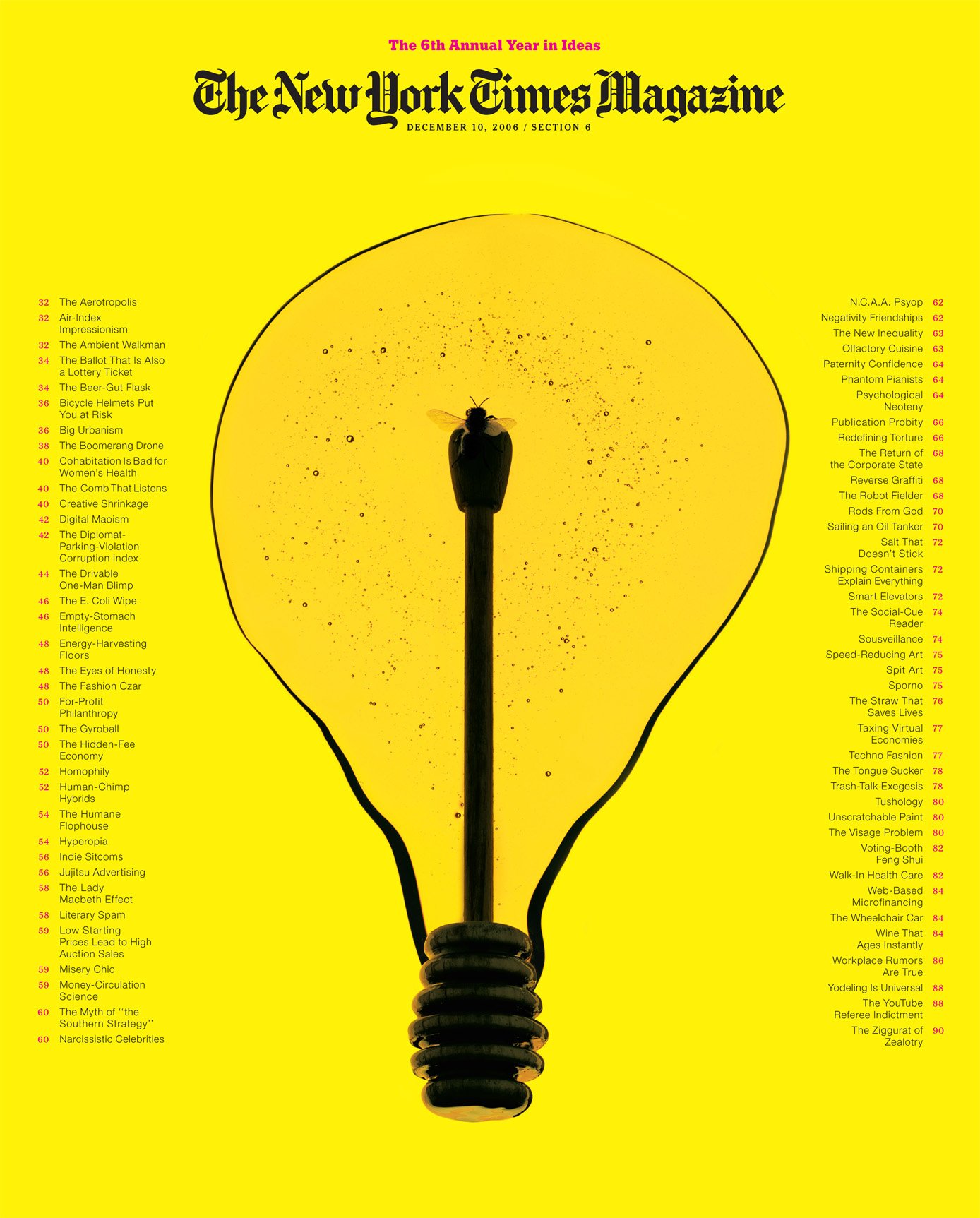
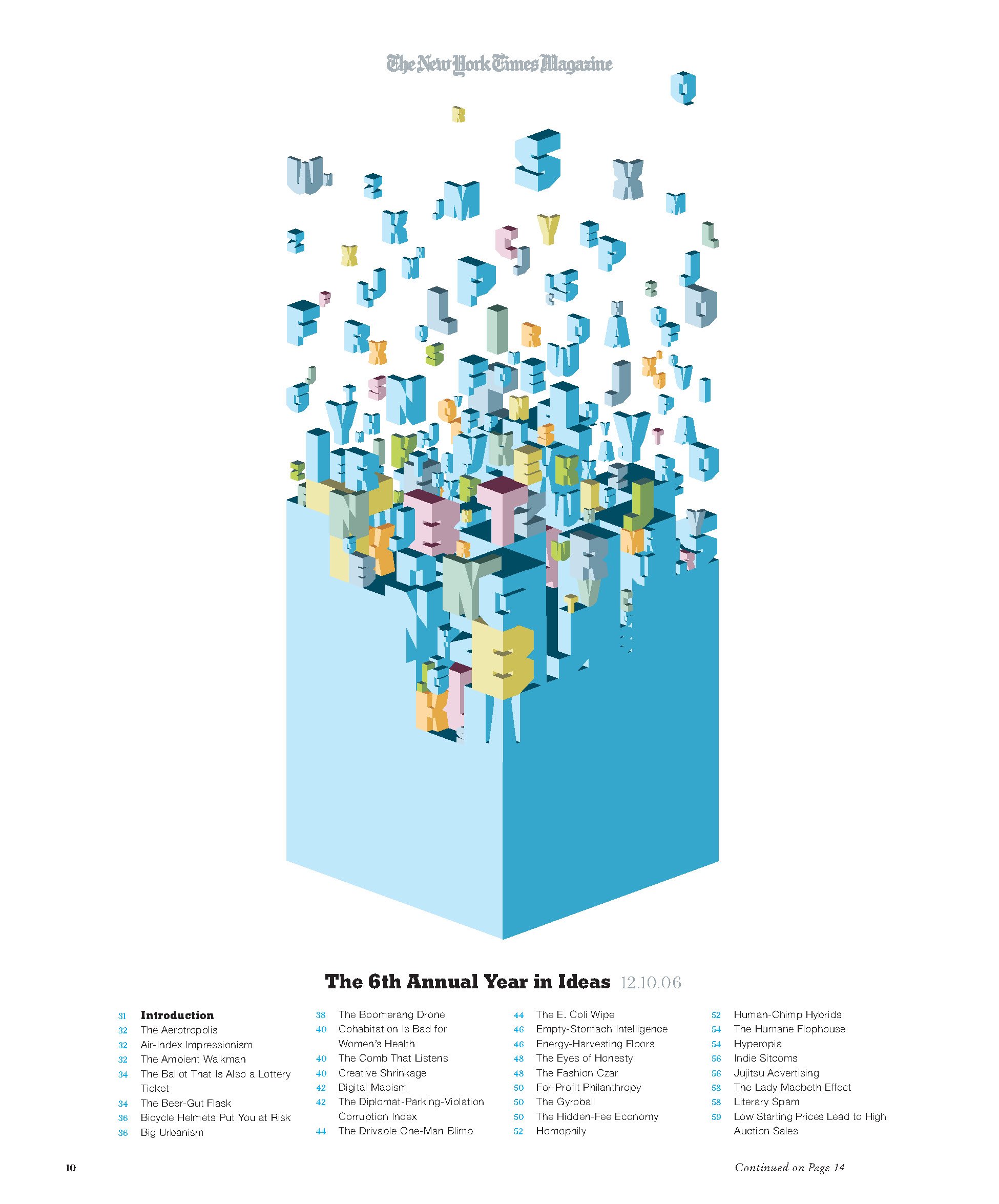
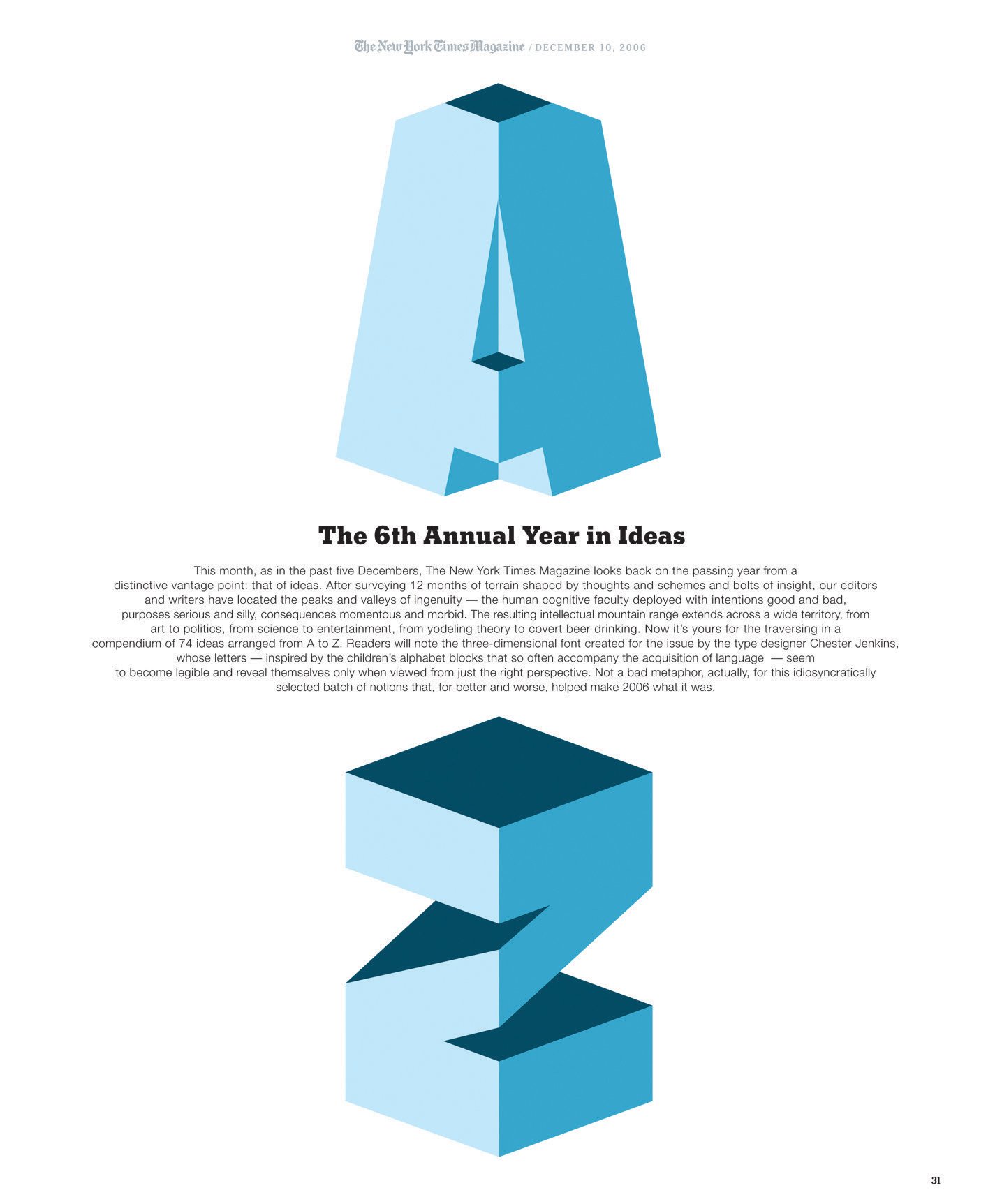
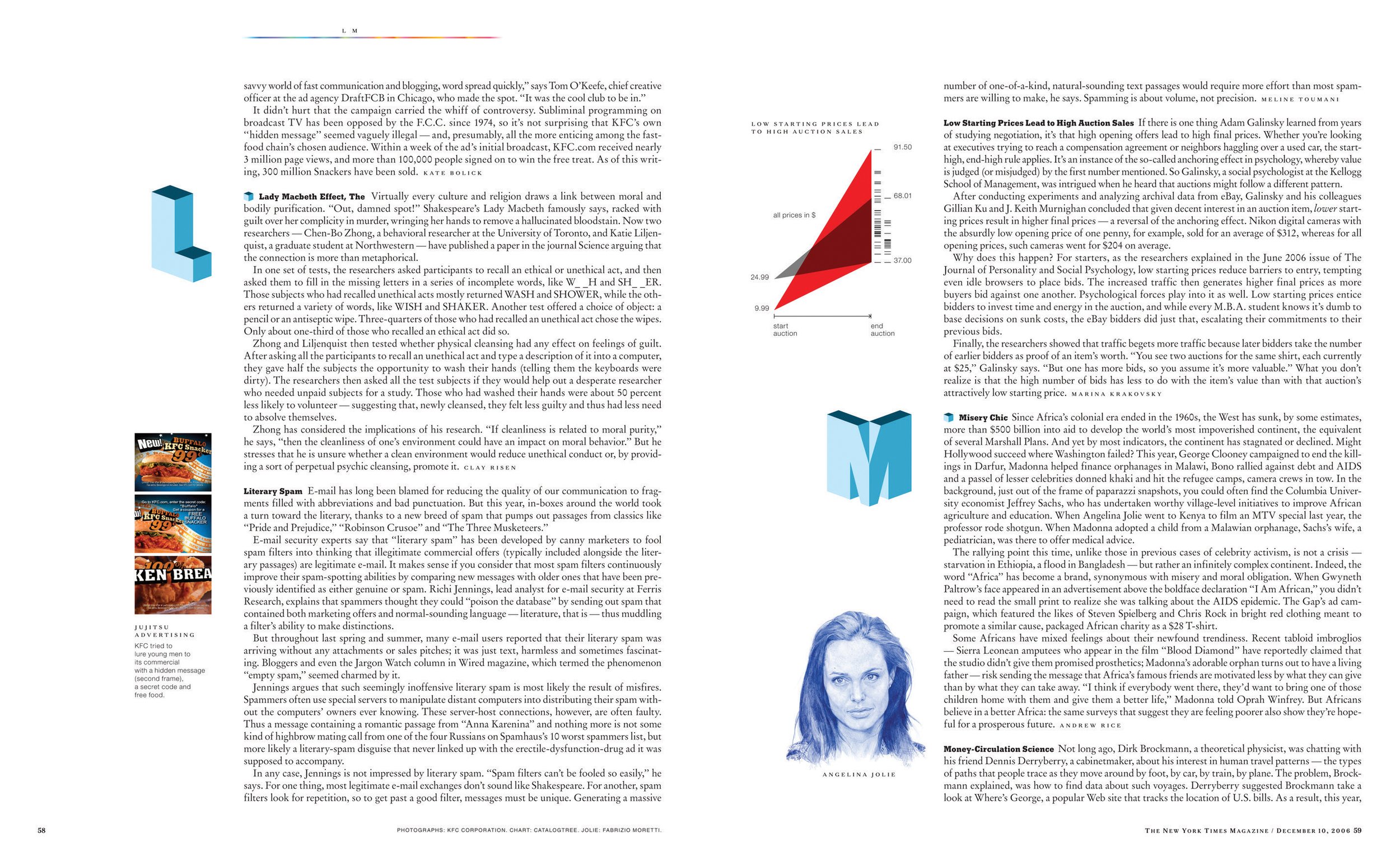
Patrick Mitchell: Backing up. So you went to Hampton for undergrad, an HBCU on the Chesapeake Bay.
Arem Duplessis: Right.
Patrick Mitchell: … And you said you were one of four graduates. I went to a much bigger university, but I was one of three or four graduates in design myself. What was it like studying design there?
Arem Duplessis: Looking back on it. There were not a lot of resources, but when I first started at Hampton, my freshman year, we were learning paste-ups, and I was just starting to get the hang of that. And then all of a sudden this Mac showed up and I was like, “Oh my God, what is this Apple thing?” But I quickly became fond of it and realized, “Wow, this is a huge shortcut to all the things I learned last semester.”
We had one computer. That was our computer lab. And I would always sign up for the last time slot, which was usually around 10 o’clock at night, because then no one would come and disturb me. There were like four or five design majors. And I remember a lot of people, friends, saying to me, “Hey, you know, what the hell are you going to do when you graduate?”
Because they just looked at me as an art major. And to them, it was that basic kind of thinking of ‘starving artists.’ “What are you doing? Why would you ever major in this thing?” And can’t say that didn’t help my confidence, but at least I was in college studying something that I loved. But it was just because it was a small town. There weren’t a lot of designers around. It wasn’t until my junior year where this woman came—she was this black woman from DC who was an art director at Time Life Books. And she gave a presentation on her work and what she did—she was literally the first graphic designer I ever met in my life. And she really got me excited because now, all of a sudden, this thing became real. Here’s a woman talking about the project she’s working on, explaining what she does day-to-day. And it was pretty amazing.
But also, on the fine art side, Hampton University has a really rich history in African American art. And while I was there, John Biggers—he’s no longer with us—but he’s a very well-respected black artist. He was painting the murals in the library at Hampton University. They built a new library and he was the artist that was commissioned to paint these huge panels. So he did three murals within the library and you could see them from the outside because the architecture in the front of the library was all glass. So I spent a lot of time with him just learning about his level of thinking, how he thought and how he approached painting. He taught me about Aaron Douglas, the Harlem Renaissance artist who was also a trained graphic designer as well.
The education didn’t always come in the classroom, but it was there. And it certainly built my foundation and love for design. And the chair of the department, Sharon Beacham, did everything she could with the limited resources that she had. It was pretty great.
Nicole Dyer: What’d you learn from your mom? Did you learn some technical skills from her? Did you arrive at art school knowing how to paint or draw?
Arem Duplessis: My mother also designed a few logos as well. I learned later that she actually studied design at Pratt for a semester or two. So she would design logos for friends and asked me my opinion on them and that kind of stuff. And usually it was all hand-done. I just think, indirectly, she gave me this gift of creativity and creative thinking and decision-making, just by watching her. But in terms of the technical aspects of design, she was terrified of computers. That was all on me. She didn’t really ask too much about the technical part of my job. It was always just, “My son works for GQ magazine.” That kind of thing [laughs].
Patrick Mitchell: You just found out that your son is going to follow in your footsteps and go to Hampton. How does that feel?
Arem Duplessis: It feels great. He doesn’t want to study design. He couldn’t study design at Hampton, actually, because they got rid of the program, unfortunately. But he’s really into music. He composes music. They do have a good music program at Hampton. He ultimately wants to score films. That’s his goal.
I didn’t put pressure on him. I mean he was accepted to some other schools. He had choices. He even had an opportunity to go to a school here in California. But going back to what I said about the lack of diversity here, he loved the idea of having an experience where he’s not the only one.
Patrick Mitchell: Well, congratulations. That’s awesome.
Arem Duplessis: Thank you.
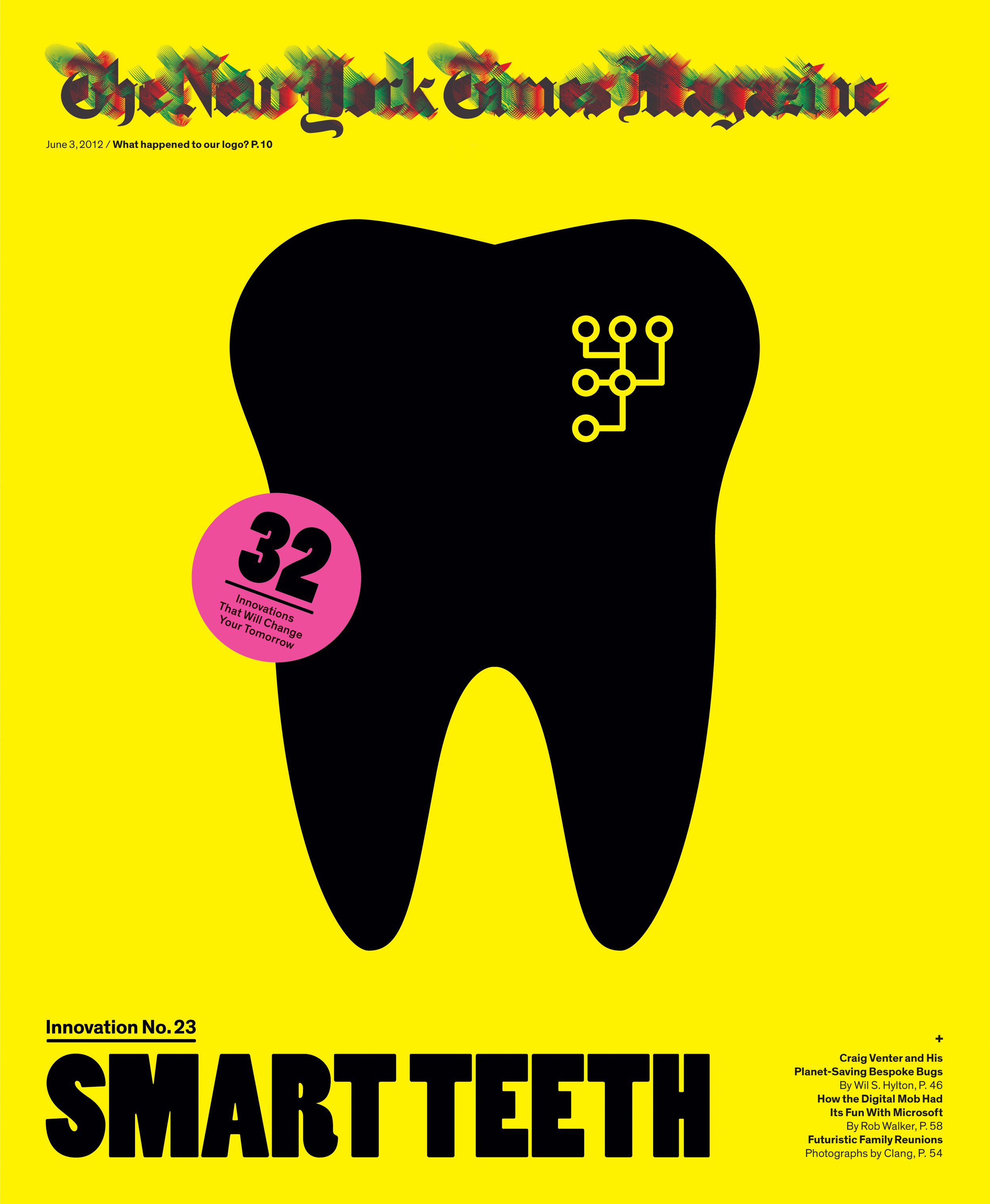
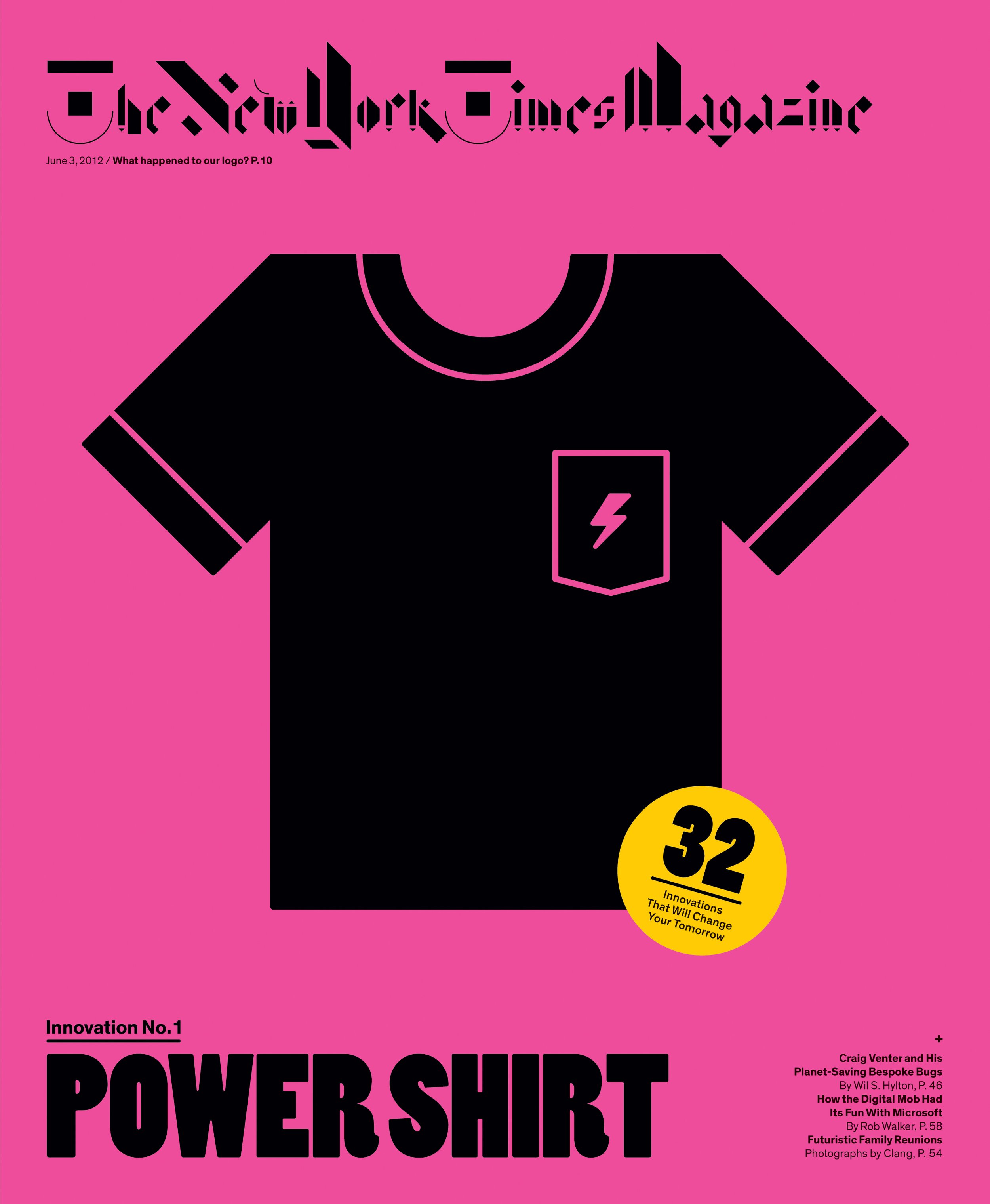
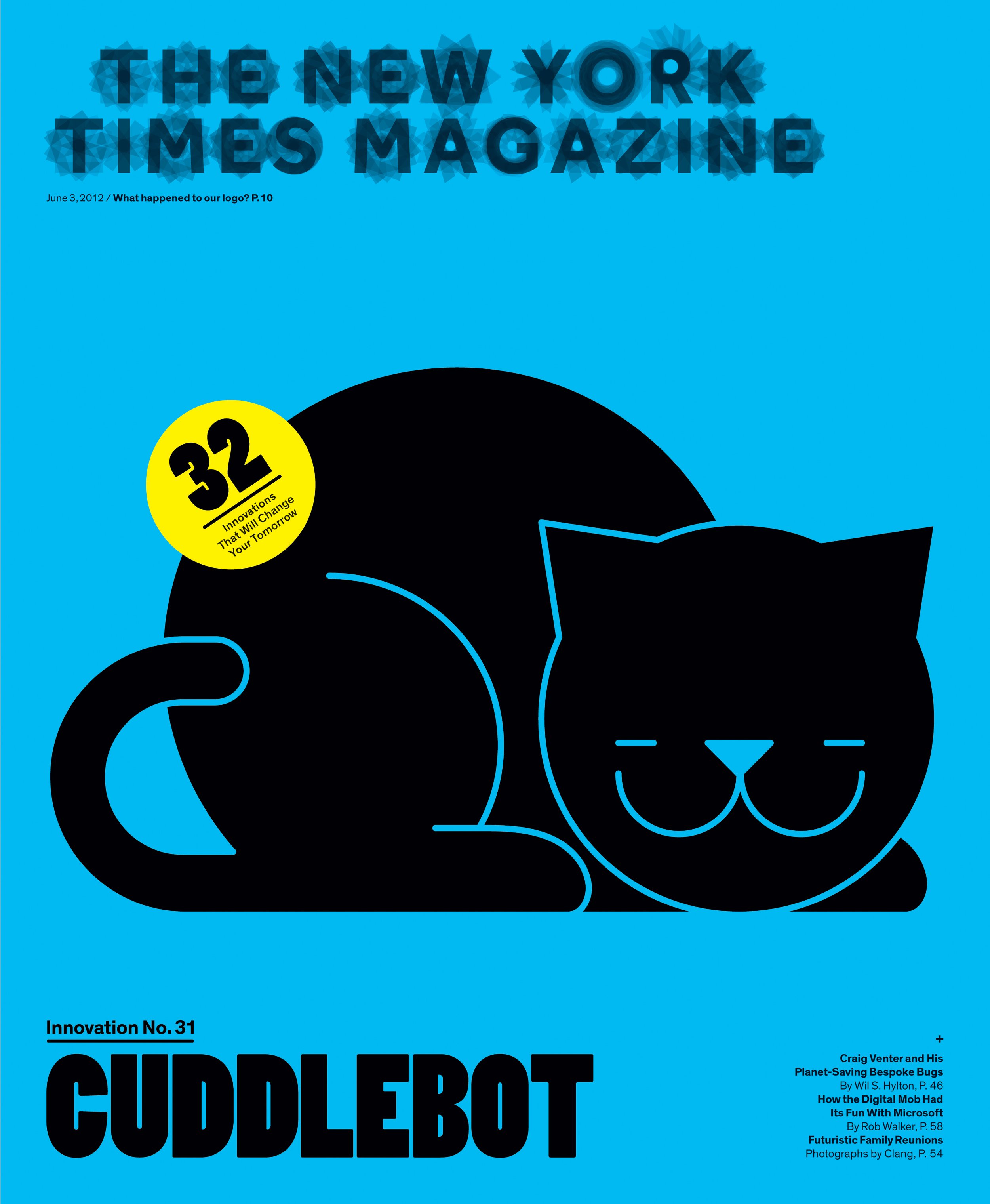
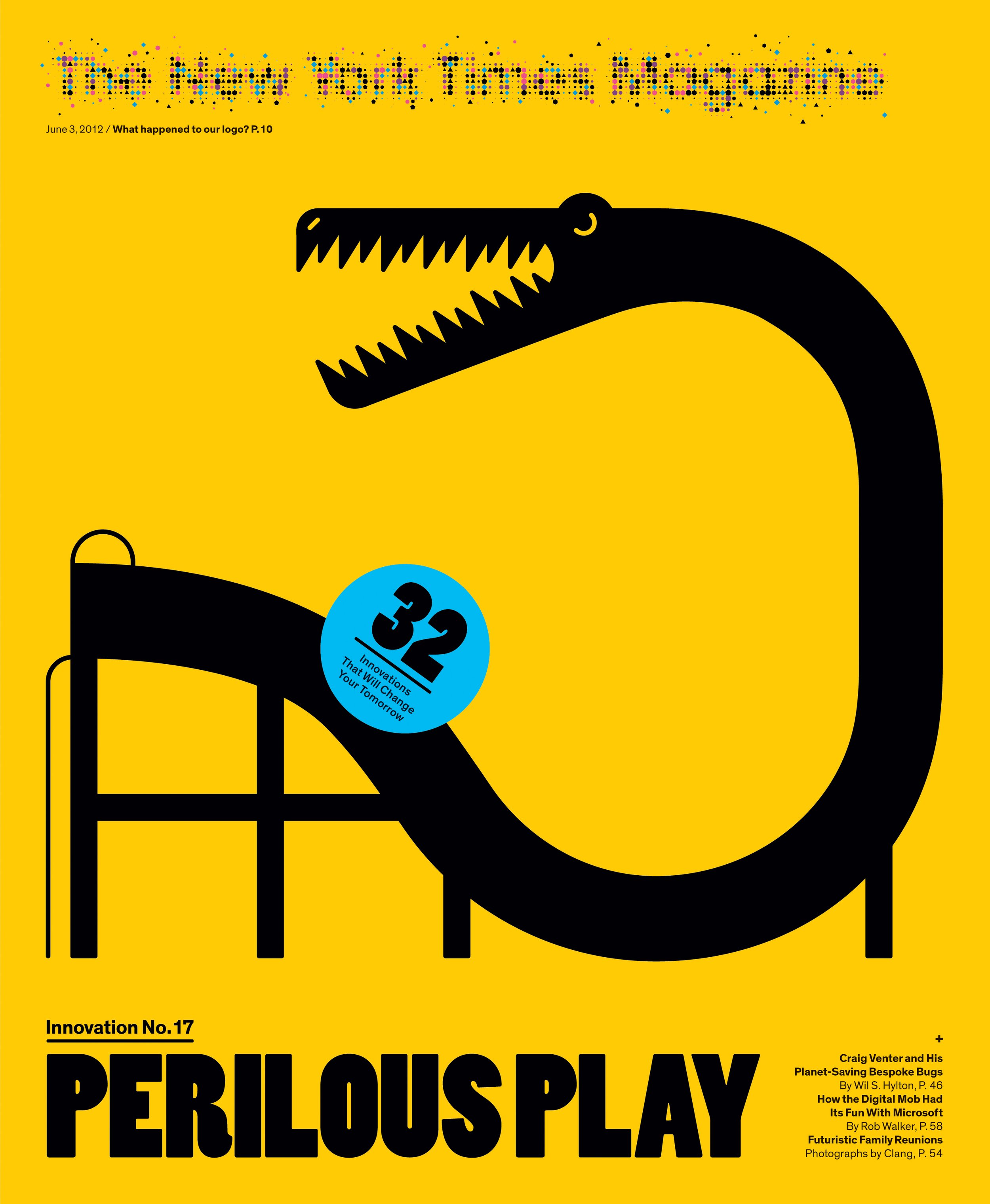

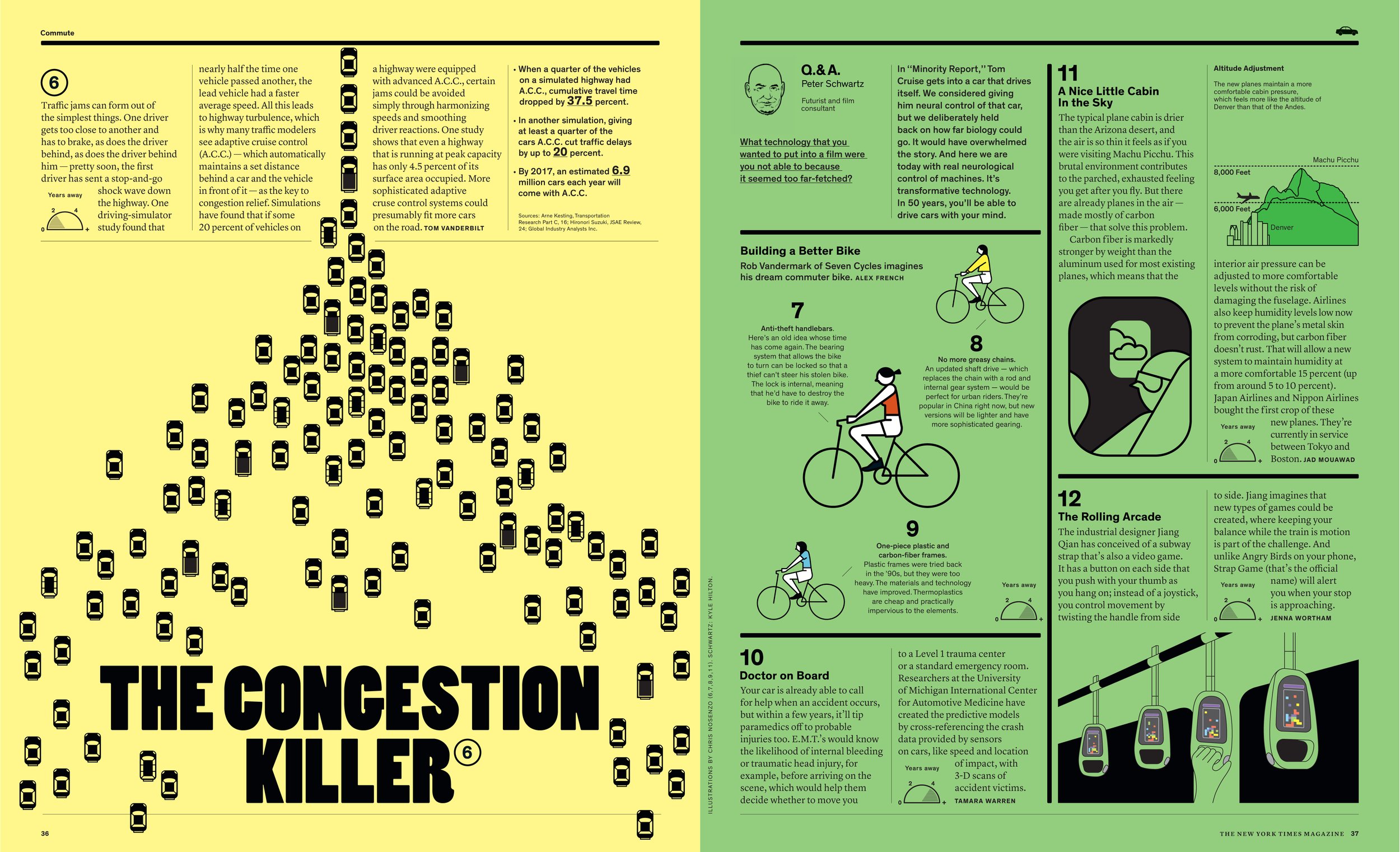
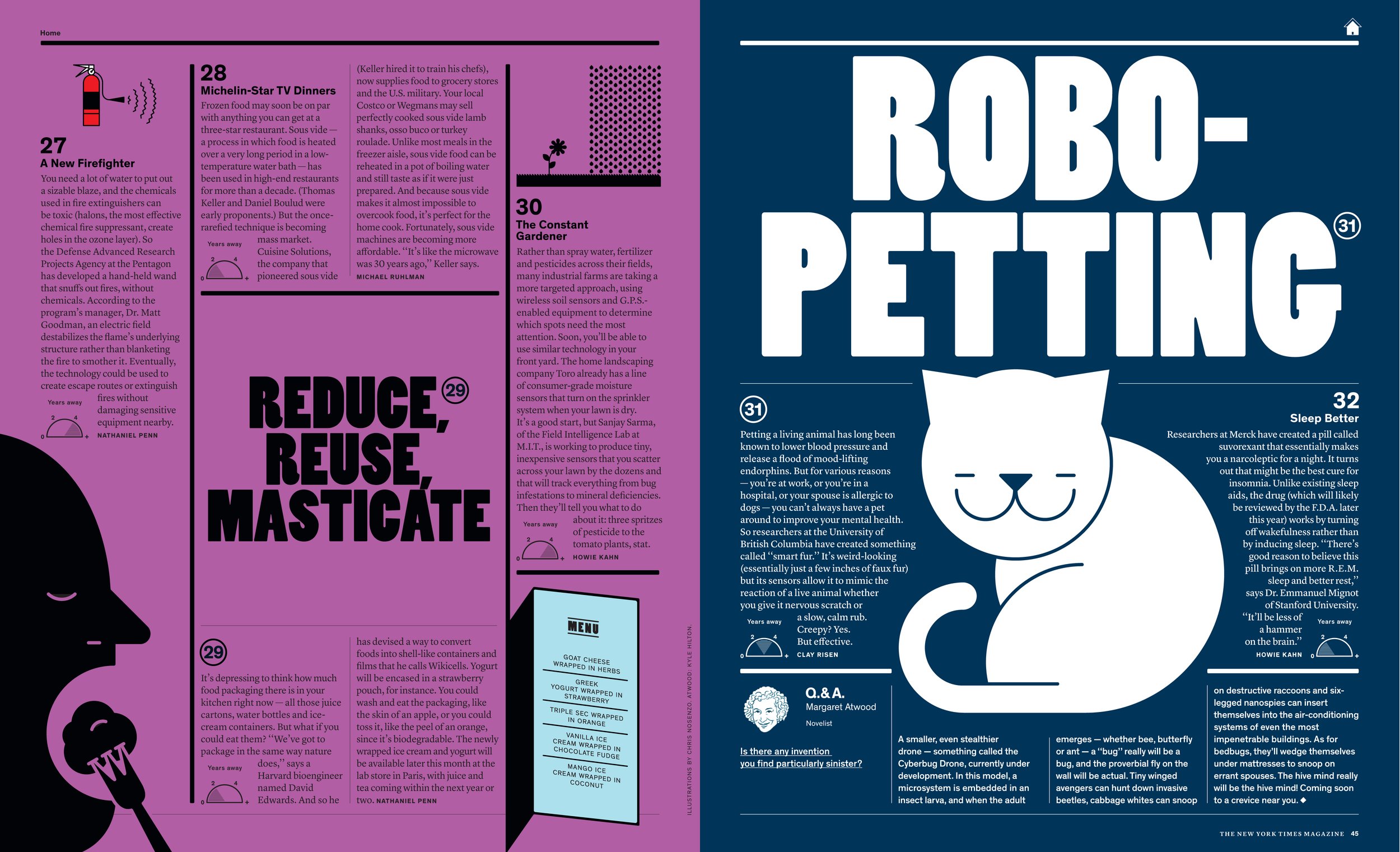
Patrick Mitchell: By my calculation, in your 10 years working at The New York Times Magazine, at 52 issues per year, times 10 years, you produced more than 500 issues, which is the equivalent of 43 years at a monthly magazine…
Arem Duplessis: …Yes [laughs]…
Patrick Mitchell: … And that’s not counting T and other projects from that time. That’s a lot of fucking magazines.
Arem Duplessis: That’s a lot. Yep.
Patrick Mitchell: How do you look back on your 43 years at the Times? [Laughs]. I can imagine a lot of pride and joy, but was there a personal cost. Anything you’d do over? Talk a little about your tenure at the Times. You had a lot of accomplishments. You really made a name for yourself there.
Arem Duplessis: Thank you. I loved every second of it. It was amazing, looking back on things, the only thing that I would change is, and you don’t learn this until you mature and you become—I guess the ‘maturity’ is really the best way to put it—I didn’t realize then what I realize now, in terms of the platform that I have as a creative and as a black creative, I wish that I had had the confidence with my platform to advocate more for a diversity in storytelling. The kind of stories that we were publishing, not just at the Times, but just in general. And then also pushing for more representation on the editorial side, you know, more black editors. More black editors in senior positions.
The New York Times was definitely the most diverse staff I was ever a part of. But at GQ there were no black editors at all. Any senior editors. And you know, I did argue for it because I would say, “Hey, look, we know our team does not represent the readership at all.” There were a lot of women readers at GQ and all the editors knew that, but we didn’t have a lot of female editors. Of course, black folks liked to, you know, we liked to put it on fashion-wise. Black men are fashionable. Let’s just say it. And to not have one black fashion editor at GQ magazine? I wish I had questioned that more. But I was 27 at the time and I was busy. But that’s the only thing that I would go back and do.
Nicole Dyer: So you were 27 then, but when you were 25, you worked at Blaze magazine for, I’m not sure how long…
Arem Duplessis: I was there for like 10 months. Eleven months.
Nicole Dyer: What was that like? That title had such a famous launch and it flamed out pretty quickly. But it was an exciting magazine. What was that like working there for 10 months?
Arem Duplessis: “Flamed out pretty quickly.” No pun intended with Blaze [laughs]. When I got there—I was hired as the design director—it was the first job I ever had as the design lead. Before that I was at Men’s Journal. I was young. I really was. But I just felt, like, at the time I wasn’t getting the jobs at the magazines I wanted to work for. And I just felt like I wasn’t producing the work that I knew I could produce. Let’s put it that way.
So in my opinion, my thinking back then, “If I want to put out the work that I believe in, then I have to be the one leading it.” So I was really excited to take that job at Blaze. I loved it. It was a lot of fun. I would’ve stayed longer than 10 months, but I got a call from Condé Nest and Anne Haggerty. She worked in human resources when she met me and she saw my portfolio. She promised me, “Hey, I’m going to call you one day for one of these magazines, you better be ready.” Two years later, she called me and said, “Hey, GQ needs an art director.” Because there was a design director there at the time. And I said, “Yeah, I’d love to.”
Samples from Duplessis’ work at SPIN
Patrick Mitchell: Who was that?
Arem Duplessis: It was George Moscahlades. George was there for maybe four or five years. He hired me through Anne’s recommendation and then George, he maybe stayed maybe nine months while I was there. And then he wanted to move on to something else. And Art Cooper—the late, great Art Cooper—said, “Hey, look. Do you feel like you’re ready to lead this magazine?” And I said, “Absolutely.” I wouldn’t have told him otherwise. I was pretty young, but I just believed that this opportunity may never come again, so you better be ready.
And the frustrating thing at GQ was it was a huge title. My mother was very proud of it—she called it “Gentleman’s Quarterly.” But the reality was Art Cooper—as we know now—was under tremendous pressure at GQ. He was holding on for dear life. He had been there for 20 years. And I just wasn’t able to do the work that I really strived to do. You know, I knew it could be so much more and I didn’t have the full trust of Art at the time. And to be honest, I was still developing as a magazine designer as well, trying to find my voice.
But going to Spin after GQ was intentional, because Sia Michel was hired as the editor in chief—the first female editor of a music magazine, a rock magazine. I thought that was pretty cool. And after meeting her, I knew she would allow me to kind of explore my goals in design and do work that allowed me and my team to push the envelope. And I feel like at Spin, it was just that. I took a salary cut—a pretty big one. And in terms of prestige, my mother was like, “What the fuck is Spin magazine?” But it was the best career move I ever made because everything that I wanted to do creatively Sia gave me the freedom and the autonomy to do that. And that’s what got me to The New York Times. Janet Froelich liked what we were doing at Spin and called me and said, “Hey, do you want to interview for a gig at The New York Times?”
Patrick Mitchell: Your mom would not have wanted to know that Spin was launched by the Guccione family. (The Guccione family owned Penthouse, a soft-core porn magazine).
Arem Duplessis: No, no. When I went to Blaze magazine, she was like, “Why would you do that? Why would you leave Men’s Journal?” My father, when I went to Spin, the only thing he said was, “Well, you know, just that music world, there’s a lot of coke in that world. And you just don’t start sniffing coke.” And I’m like, “Yeah, dad, all right. Well, at this point in my life, I’m good. I’m not going to throw it all away by all of a sudden becoming a cokehead.”
And then of course, when I went to The New York Times, my mother was proud of me again, because that title meant a lot to her for many reasons. But also her dad, my grandfather, was a train conductor. But he read the Times every day. That was his thing in the morning. He would read it from front to back. And so when I got the gig there, she was really proud of that.
“I was pretty young, but I just believed that this opportunity may never come again, so [I’d] better be ready.”
Patrick Mitchell: Who were your influences and mentors from your magazine career?
Arem Duplessis: I would say, influences definitely Richard [Baker] and Gary [Koepke] from those days at Vibe. George Pitts was a mentor to me. I would say, obviously, Fred Woodward did some amazing work. You, Patrick. I loved the work that you did at Fast Company. That that was awesome. I would pick that up every single time. I was excited about getting that in the mail. I mean the usual suspects. And then outside of the magazine world, I would just look at a lot of what designers were doing. And I loved and Robert Brownjohn and his philosophy. Paula Scher was a huge influence on me, for multiple reasons. Michael Beirut. The unfortunate thing is at the time there weren’t a lot of black heroes in design. But there were a few. So Michele Washington and Lance Pettiford. I loved the work that he was doing at BET Weekend. There were a few. I loved what David Armario did at Men’s Journal. Him and Tom Brown before I got there. The reason why I went to Men’s Journal was because of the work they were doing, but that quickly changed. They rebranded the magazine. So I had a lot and I had a lot of people that I really looked up to. I looked up to Janet Froelich, obviously, and Kathy Ryan. So it was unreal when I actually got to work with them. It was kind of a dream fulfilled.
Patrick Mitchell: You mentioned Pentagram. You seem like a natural fit for Pentagram. Did they ever approach you?
Arem Duplessis: No. No, they didn’t. I’m friends with Paula [Scher] and Luke [Hayman]. There were times where I kind of felt like they were waiting for me to show interest in doing that. And Paula would certainly recommend me for some really great jobs. But I’m glad they didn’t because I just feel like I’d be a terrible entrepreneur. And the reason why I say that is because I don’t like to be removed from the work, and in a way that sometimes when you’re running your business, you have to go out and get new business. You’re not always able to still get your hands dirty in the workspace.
Patrick Mitchell: That is one thing I’ve heard from some Pentagram partners is just that part of having to churn new work in there—there’s so much pressure.
Arem Duplessis: Yeah, that’s a lot. That’s a lot of pressure. You know, they do great work. I mean, they succeed at it. But being an entrepreneur is not for me. And if it was, I don’t know if they would’ve hired me to be a partner, but it certainly would’ve, if I had that spirit of doing that, it would’ve been a dream gig. It really would’ve. But I maybe they sensed that in me. I don’t know. Or maybe I was never even considered. I can’t answer that, but I love the work that they do. And as much pressure as those folks are under, they still churn out great work—for years.
Patrick Mitchell: Who’s the most famous person you’ve met in your magazine career?
Arem Duplessis: Oh man, that’s subjective because I’ve met a lot of famous people.
Patrick Mitchell: Any heroes?
Arem Duplessis: Man, I worked with Kobe Bryant two times. Met Barack Obama, which was amazing. Oprah Winfrey. George Clooney. We worked with George Clooney at The New York Times so much that he knew my name because he was always one of the “Great Performers,” because he’s such a brilliant actor. Brad Pitt was a big name. Pitt and Clooney and Obama were some of the most down-to-earth, nicest people I’ve ever met. When Brad Pitt walked into the studio, literally after five minutes, you forgot that it’s Brad Pitt because he’s just such a cool guy. He just felt very surprisingly normal. And Clooney as well. You can sense the bullshit when someone’s just trying to fit in. And when someone’s truly genuine. Those guys were really cool to work with.
But there were a lot. There were a lot Great Performers. We would usually have about 10 actors and actresses. And we would do that every year. So 10 times 10, that’s like a hundred of some of the biggest names in Hollywood right there. It was pretty incredible.


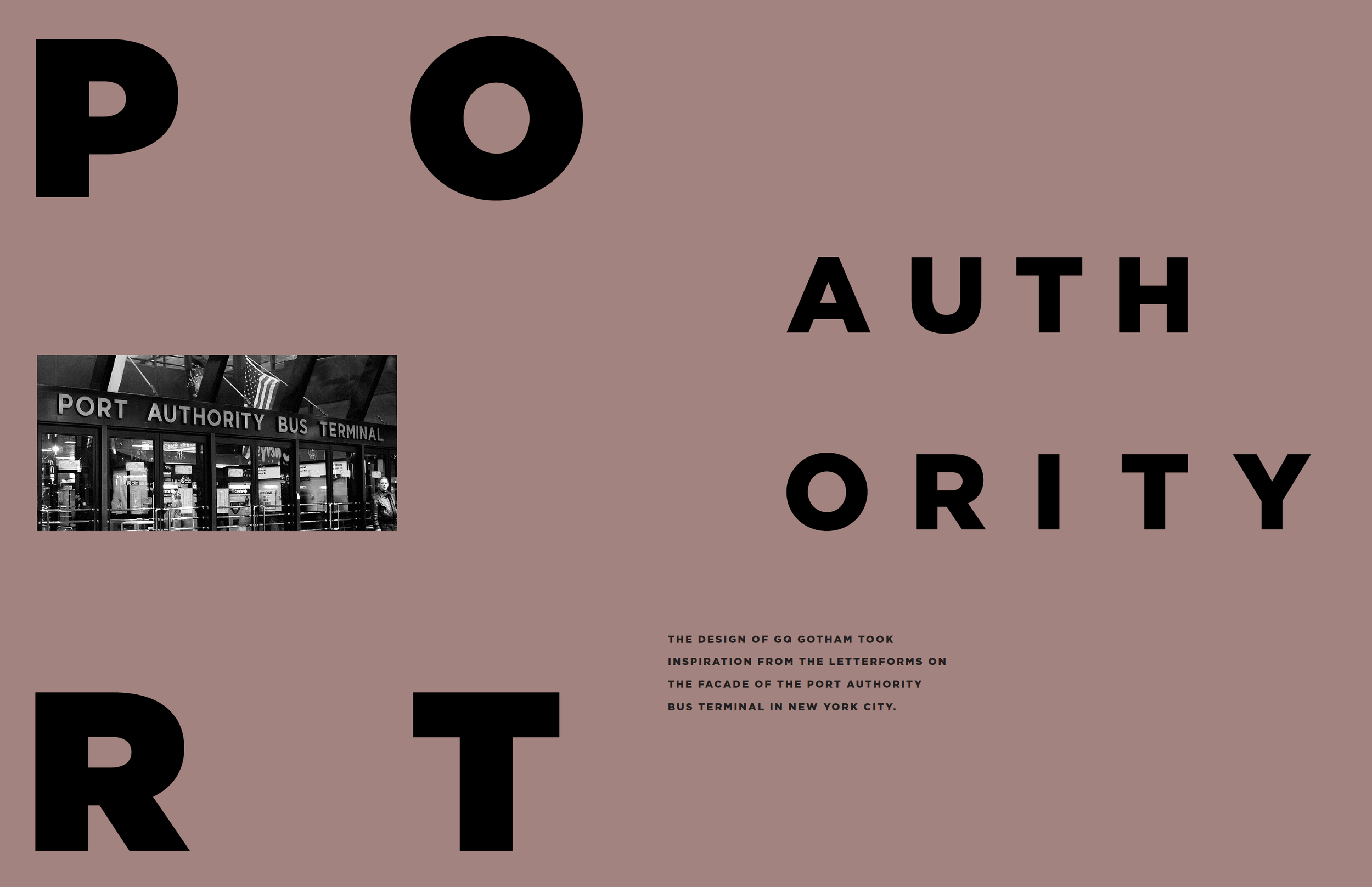
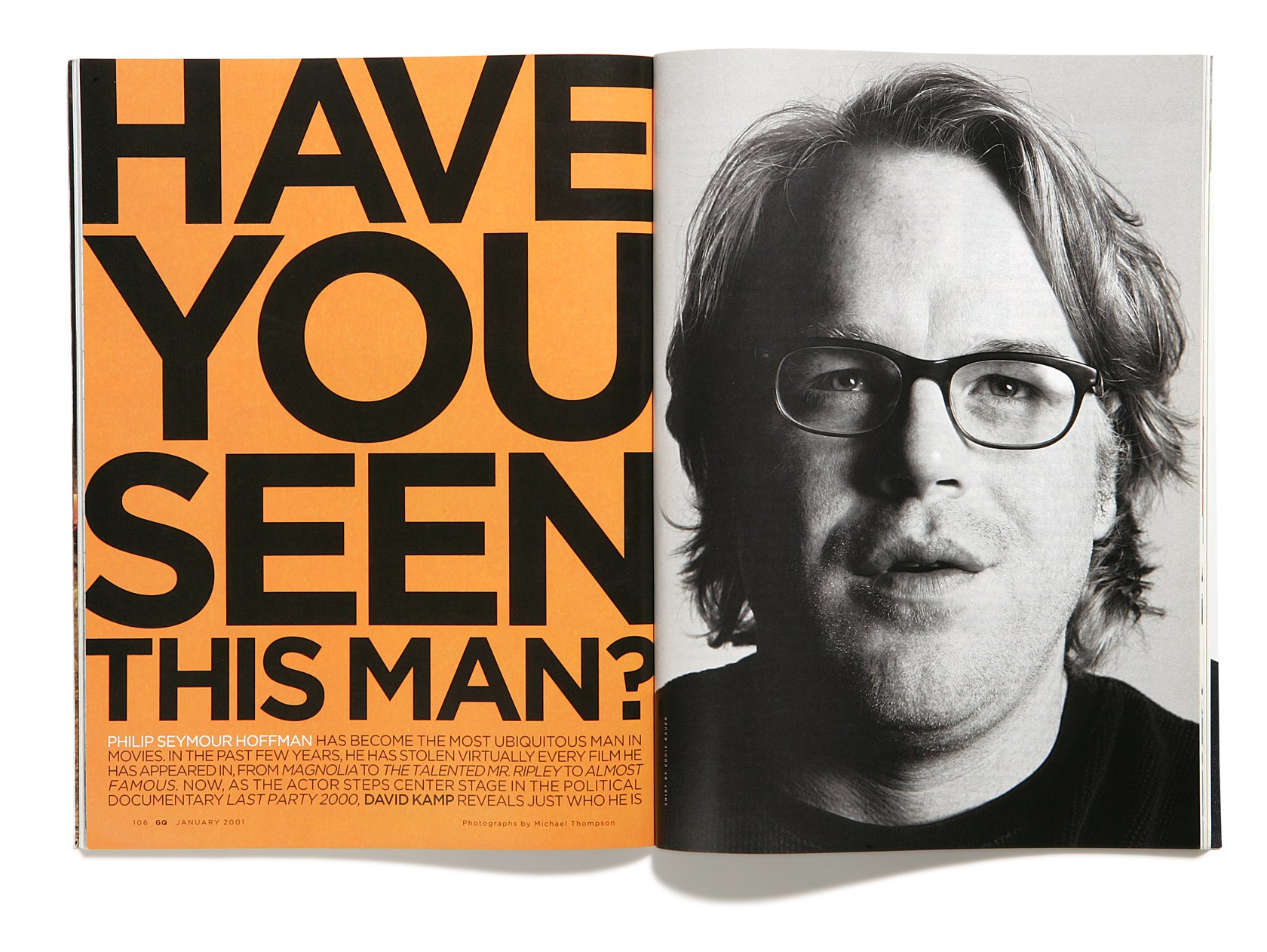


Duplessis worked with font designer Tobias Frere-Jones and Hoefler & Co. to create the wildly popular Gotham family of fonts.
Nicole Dyer: When you start with a print piece, are you already thinking about the digital outputs? You have to have some digital life to the print piece. Are you thinking about that at the beginning and are those digital outputs, whatever they might be? Is that an extension design-wise from the print piece or is it an entirely independent creative concept—and I’m talking more about back at The New York Times Magazine?
Arem Duplessis: Well, it was frustrating, to be honest with you. Because, not that I’m a control freak—I mean, I guess we all are to a certain degree if we want to put out good work—but I had so much control over the printed part of the magazine that was under my domain and my team's domain. And then you had the interactive part, which was not really my domain. It was almost like, and look, they, I mean some of the best interactive people in the world that work at The New York Times, we all know that, but they didn’t always have the bandwidth to do what I wanted them to do. Or sometimes I would want them to do something that they didn’t do, but then they would turn around, do something much better than I thought, whatever my idea was. So it was a good relationship, but it didn’t always—the look of an article didn't always replicate online just because, back then a lack of understanding from my part, to be honest. But also the interactive team at The New York Times, they do a lot of work and myself and my team’s ambitions around what the article should look like digitally, they weren’t always able to take it on.
Nicole Dyer: You have to pass the torch because you want to bring the same vibrancy that lives in print, that we all know and love, and you want to execute that digitally. And at a certain point, it sounds like you do have to pass the torch and leave those creative decisions to another team.
Arem Duplessis: Yeah. And then, as things started to develop because I left in 2014. So, you know, you have to remember these conversations I’m having are 2010 through 2012 with the interactive team. We just didn’t have the same capabilities that they have now. So I can’t speak for Gail [Bichler]. She’s doing amazing work both on the print side and the digital side. But I would imagine that the collaboration looks a lot different now than it did back then. Back then I think both sides of the table were trying to figure out how to do complicated things. And you just didn’t have the same platform.
“My aspirations after Apple are more around going back and teaching. I want to bring a lot more black creatives into the world of design.”
Patrick Mitchell: Back at The New York Times, you co-produced an Emmy Award-winning video series with George Clooney, Viola Davis, Brad Pitt. Do you see doing more of that type of work in your future?
Arem Duplessis: You know, it’s tricky because I’m listed as a producer, but it was really, from me, a creative contribution, but they have all of these rules. So I can’t remember why I couldn’t be listed as a creative, but listed as a producer. At Apple, I do get to work on a lot of different projects that are really varied. So my creative cup is full there in terms of going off in producing my own version of that. No, I mean, I think Scott [Dadich] did a great job with [Abstract], but my aspirations after Apple are more around going back and teaching. I want to bring a lot more black creatives into the world of design. Like my mother did for me. I just want to educate, at a young age, the possibilities of what a design career looks like. And all of the opportunities. That’s my goal after corporate America. For sure.
Patrick Mitchell: If Apple disappeared tomorrow, what would you want to do for work? What would fulfill you?
Arem Duplessis: Definitely being a fine artist. I’ve started doing some side work on the weekends, drawing and doing some collages and I love doing it. It’s very therapeutic. So if money wasn’t an issue, I’d be on my yacht doing artwork [laughs].
Nicole Dyer: I vote for the teaching! I think a lot of people still don’t know that there are design opportunities—that it’s even a job, you know?
Arem Duplessis: Yeah. No, that would certainly be factored into it. The students would be on my yacht with me and we would all just have a great time [laughs]. But, that will always be a goal. And obviously it has nothing to do with money. It’s just more around education.
Patrick Mitchell: What career advice would you give young Rem coming out of college today?
Arem Duplessis: The career advice I would give young Rem coming out of college is: Definitely go to graduate school to learn more and feel like what it means to be a creative in New York. So you’re doing the right thing there. And the other piece of advice I would give is: Stop worrying. You know, everything’s going to work out. You’re on the right path. You got accepted into graduate school. Certainly you have enough talent in this business to get a job and just relax a little bit. Everything’s going to be fine.
Apple’s “Shot on iPhone” campaign, directed by Duplessis
You can keep up with Rem via his Instagram @aremduplessis.
Back to the Interviews
Dutch Master
A conversation with designer Hans Teensma (Outside, New England Monthly, Orion, more)
Dutch-born, California-raised designer Hans Teensma began his magazine career working alongside editor Terry McDonell at Outside magazine, which Rolling Stone founder Jann Wenner launched in San Francisco in 1977.
When Wenner sold Outside two years later, Teensma and McDonell headed to Denver to launch a new regional, Rocky Mountain Magazine, which would earn them the first of several ASME National Magazine Awards. On the move again, Teensma’s next stop would be New England Monthly, another launch with another notable editor, Dan Okrent. The magazine was a huge hit, financially and critically, and won back-to-back ASME awards in 1986 and ’87.
Ready for a new challenge—and ready to call New England home—Teensma launched his own studio, Impress, in the tiny village of Williamsburg, Massachusetts. The studio has produced a wide range of projects, including startups and redesigns, as well as pursuing Teensma’s passion for designing books.
Since 1991, Teensma has been incredibly busy: He was part of a team that built a media empire for Disney, launching and producing Family Fun, Family PC, Wondertime, and Disney Magazine. He’s designed dozens of books and redesigned almost as many magazines. And he continues to lead the creative vision of the critically-acclaimed nature journal Orion.
You might not know Teensma by name, but his network of deep friendships runs the gamut of media business royalty. Why? Because everybody loves Hans.
When they designed the ideal temperament for survival in the magazine business, they might as well have used his DNA. He’s survived a nearly 50-year career thanks to his wicked sense of humor, his deep well of decency, and above all, his unlimited reserves of grace.
You’re gonna love this guy.
The Roundhouse in Northampton, Mass., was the long-time home of Teensma’s design studio, Impress.
Patrick Mitchell: We’re here in South Hadley, Massachusetts, in a restaurant called Thai Place. And I think it’s a, uh … Thai place … right?
Hans Teensma: By every indication, it looks like the place.
Patrick Mitchell: And I thought you might want to say ‘hello’ to our massive Dutch audience, and welcome them to the podcast.
Hans Teensma: Ah, is there a mass audience out there from Holland? Well, goedendag, en dit is Hans, and I’m now going to join all the people born below sea level and wish you a happy day!
Patrick Mitchell: Thank you. So let’s talk about your beginnings, and so maybe you could just kind of rattle off your background, from where you were born, and who your family was, and how you were brought up…
Hans Teensma: Real quickly, I was born at a very early age [laughs], below sea level in Holland, The Hague. Came over at age about ten. Moved to LA. Grew up in Bellflower/Artesia, where all the famous Pixar and Disney people grew up. But I didn’t meet them until too late [laughs].
And I had a very happy childhood in Holland and I do remember many, many wonderful experiences over there. And I think it might have influenced me because I’m just a happy kid. The glass is half full—at the top—which is even more interesting [laughs].
Patrick Mitchell: I have to ask: Did you ever put your finger in a dike [laughs]?
Hans Teensma: No. I, I, I, I think that’s a… . Well, we know that story from long ago. But I … I never was called to action.
Patrick Mitchell: Good, good [laughs].
Famous Dutch boy Hans Brinker, who plugged a leaking dike with his finger.
Hans Teensma: But I do love old Dutch masters and the Dutch graphic designers. And you know, every time I hear the word Dutch, I perk up. So it stayed with me a lot.
Patrick Mitchell: So were you aware of design even at that point. Did that just kind of surround you?
Hans Teensma: I think it did. I mean, as an art director, many art directors that I know, we tried to do everything. We wanted to be illustrators, typographers, photographers. We do everything. And I was doing everything since I was, you know, walking.
Like, you didn’t know the difference between kunst [art] and life. It’s all the same.
And all the Dutch books that I was given and took back with me to America—I grew up with those. And comic books, and the very un-PC comic books from the ’50s.
Patrick Mitchell: Right.
Hans Teensma: And I took every art class that was available. I went to Long Beach State for my university.
Patrick Mitchell: Wait, let me back up. What did your parents do?
Hans Teensma: My dad was an engineer. A technical engineer and a draftsman. He designed Her Majesty’s ships. And when he came over to America he had to switch over to cranes and all kinds of large machines.
Patrick Mitchell: Why did you guys move to the US?
Hans Teensma: I think clearly it was because this was the land of opportunity in 1960. This was the “land of milk and honey.” We had Eisenhower as president, soon to be Kennedy.
Patrick Mitchell: So this wasn’t a transfer. This was a choice to move?
Hans Teensma: Yeah, we were on a list to legally immigrate either to either Brazil or to America. And we got on the list and America came up first. We had some sponsors here who greeted us and we didn’t know what we were gonna do, except this was the “land of opportunities.”
And the Cadillacs had huge fins. And Chevrolet—don’t forget the ’59 Chevy! I mean, things were just, you know, fantastic. And we got all of our dishes and towels and boxes of Tide. It was just … happiness and optimism.
Patrick Mitchell: How big is your family?
Hans Teensma: I have three brothers and a sister, so five all together, and we’re all spread out all over the United States.
Patrick Mitchell: Did any of them choose a creative life?
Hans Teensma: Not in my opinion [laughs]. They’re all very dedicated civil servants. They all wanted to do government work and were real interested in, you know, they love nature and gardening, and weather, and all that stuff. But they’re not artists.
And my mother who was, you know, a huisvrouw [housewife]. She did not know there was anything besides housework. But super optimistic, great sense of humor. And I think that really made me what I am today.
Patrick Mitchell: You said you went to what, Long Beach State?
Hans Teensma: Yeah. University of California at Long Beach. And I had a fantastic professor named George Turnbull. I graduated in ’75. And until he passed last year, I was still in touch with him.
Patrick Mitchell: Wow.
Hans Teensma: He was my mentor. And I went to see him in northern California when he stopped teaching to raise quarter horses, which was another big plus for me.
Teensma’s mentor and a design professor at UC-Long Beach, George Turnbull
Patrick Mitchell: Was it a big design school?
Hans Teensma: The college was really good for graphic design and art. And the department was really substantial. I remember we used to have joint portfolio reviews with Art Center. And Art Center was, you know, really good. Their people were masters. But what we had that Art Center didn’t is all the other classes that you have to attend [at a university]. So our artwork had a lot of context, and content, and stuff to it that they didn’t have.
They had the super skills for art and design, but we had concepts. We took our stuff from philosophy, and Chinese history, and all that kind of stuff and worked it into our work. You know, unconsciously, we just were always thinking of the narrative in design. So I think we excelled from that standpoint.
Patrick Mitchell: What was your major called?
Hans Teensma: I think they just started the BFA program there, so it was just Art. But I took every art class. It took me six years to graduate because I couldn’t say “no” to any class: printmaking, design, illustration, photography, you know, I just didn’t want to leave. I just loved it all.
Patrick Mitchell: Had you at any point that young started to zero in on magazines?
Hans Teensma: No. As a matter of fact, the day I graduated, I moved to the San Francisco Bay area because I didn’t want to get stuck in Los Angeles because I don’t like that much traffic. And that was my goal all along: to get out of LA as soon as I could.
And so I moved to the Bay Area and thought, What am I going to do?
And I pounded the pavement and tried this and that. And about a year later, after working as a graphic designer at a photography studio, I said, “Hey, wait a minute. What I like to do is educate and entertain.” And the only thing I thought of that did that was magazines. I thought, Magazines educate and entertain, and I didn’t want to do advertising, logos, and that kind of stuff.
So I was out bird watching with my good friend, Peter Matthiessen, at the time, and he said, “Hey, there’s a new magazine started by Rolling Stone in San Francisco called Outside. Why don’t you go look?”
And I did. And the timing was perfect. I think I was prepared. I put together a portfolio of all my photographs, all my concepts, all my art, using Letraset [laughs]. And and I put together a portfolio—which I still have to this day—and I walked in there and I lucked out because they had just decided to get rid of their art director. And I took over. And my very first job was paste-up, design, and a week later, art director!
Teensma’s career began at Outside magazine, which was launched by Jann Wenner (pictured above in the original San Francisco office of Rolling Stone and Outside).
Patrick Mitchell: So it’s 1977. You’re in San Francisco, and you are now the art director of Outside magazine …
Hans Teensma: And I couldn’t believe it! I mean, I was 27 years old. I’d never done anything like this before.
Patrick Mitchell: It was probably hard to ignore the fact that you were in the same building as one of the most important magazines in the history of the world?
Hans Teensma: Oh man, that was part of it. You know? I mean it was brick and ferns everywhere [laughs]. And if you saw the movie Almost Famous, you’d realize that was my world.
Patrick Mitchell: So they [Outside and Rolling Stone] shared the office?
Hans Teensma: [Rolling Stone] had just moved to New York, to Fifth Avenue, next to the GM building.
A Robertson camera
Patrick Mitchell: Was Outside in the old Rolling Stone building?
Hans Teensma: Yes. The old offices. We had this giant Robertson camera. It’s a camera that’s about 40-feet long, that shoots the [page] flats.
We had Annie Leibovitz’s pictures stuck behind desks and underneath chairs and stuff. We kept finding little bits and pieces of it. We had a few of the leftover editors, Ben Fong-Torres and Tim Cahill, and all those people were still hanging around there. And so we were very aware of it. Plus, they had just invented a new thing called the “Mojo,” which was an early fax machine.
And of course, Roger Black, who was now with Rolling Stone in New York, wanted to see the layouts. And so he would, you know, expect them to be “Mojo’d” to him. And that got old very quickly, but we were so impressed—My God, you can see a layout through the wires within five minutes!
Patrick Mitchell: Was it color?
Hans Teensma: No, black and white. The first “fax.” In 1977. And so we did a number of issues. The editor was Terry McDonell, who was a terrific startup magazine ...
Patrick Mitchell: … Legend …
Hans Teensma: … A legend indeed. And then, the next thing you know, Jann Wenner sold it to Mariah in Chicago, which eventually moved to Santa Fe. And so Outside magazine is one of the few magazines of my 20 magazines that are still living.
The ’70s & ’80s: Outside & Rolling Stone
Patrick Mitchell: How new was it when you got there?
Hans Teensma: Brand new.
Patrick Mitchell: So you were there for Issue One?
Hans Teensma: No, it was maybe Issue Four, but you know, they were just … Virginia Team at CBS Records in Nashville was the ‘official’ art director, but it was still finding its feet. So we were just really starting.
Patrick Mitchell: I remember it back then. Was there a direction from on top to make the design feel related to Rolling Stone?
Hans Teensma: Not at all. No, no.
Patrick Mitchell: So you think it was more “of the time” than of Rolling Stone, that three dimensional style of typography, and fonts?
“We had Annie Leibovitz’s pictures stuck behind desks and underneath chairs and stuff. We kept finding little bits and pieces of it.”
Hans Teensma: Yeah. I brought my fonts and, and you know, Roger definitely liked a few more than others. But, you know, Egizio, I brought into the fold, and a few rule styles, but mostly it was my doing, because typography was my thing at the time—even at that young age and inexperienced—and, you know, I faked my way through the magazine completely because I just knew type. And I knew what I liked.
Patrick Mitchell: Was Outside magazine Jann Wenner’s idea?
Hans Teensma: Yes and no. It probably had a lot to do with Jann having the resources do something like this. It was a great idea. But my next magazine, which I’ll talk about in a second, was really the forerunner of Outside.
When [Wenner] sold it, Terry and I moved to New York, because it was wasn’t officially sold yet. So we decided to just kind of keep it going in New York. But then we realized soon that it was not gonna go anywhere. He sold it completely. And then I was invited to stay working for Rolling Stone in New York with Mary Shanahan and Greg Scott. So the three of us were designing the magazine at that time.
Patrick Mitchell: How long were you in New York?
Hans Teensma: I was in New York about eight months, just as I was in San Francisco.
So one thing changes after another, and I got an invitation to move to Denver to start a magazine called Rocky Mountain Magazine by a guy named Terry Sieg, who went to Jann Wenner a year before that to try to do a magazine called Outdoor magazine.
And of course, Jann Wenner ended up training the entire staff, and Terry McDonell and I moved to Denver and used several of the people from Outside to quickly launch Rocky Mountain Magazine, which, by the way, also won a National Magazine Award for General Excellence. And it was an edgy magazine never-before-seen in that part of the country, covering the Rocky Mountain states.
The ’80s & ’90s: Rocky Mountain Magazine & New England Monthly
Patrick Mitchell: How long did that one last?
Hans Teensma: Three years.
Patrick Mitchell: And what killed it?
Hans Teensma: Advertising. You know, if you depend on advertising, you’re putting yourself out there. So I didn’t know what to do exactly.
Except then I got a call to apply at Texas Monthly. But one of the editors down there at Texas Monthly Press scotched the deal. And they went with Fred Woodward instead of me. But the next day [that editor] called me and he said, “You wanna move to New England and start a regional magazine called New England Monthly?”
So by that time I knew that I was a migrant magazine designer. I would go wherever there was work, you know? That was great. So then Dan Okrent and I started New England Monthly magazine, and that went for a good eight or nine years before, again, advertising killed the magazine…
Patrick Mitchell: … but it swept up a bunch of awards…
Hans Teensma: Yeah. Got back-to-back National Magazine Awards for General Excellence …
Patrick Mitchell: … spawned incredible talent throughout the magazine world…
Hans Teensma: We got a lot of great writers and artists and contributors and they’d never seen anything like it before. You know, to me, General Excellence is the award that I want to get. Because that means that art, editorial are well married together. It really works out well.
And that was my last regional magazine.
Patrick Mitchell: So around 1990, you find yourself in the foothills of the Berkshires, in this beautiful part of the country, and the magazine that brought you here is gone. You and a bunch of other people were stranded. And you had an inspiration.
Hans Teensma: I quit the magazine.
One of the first jobs I’d ever quit because I really thought, about that time in 1990 that—actually it was more like ’88—that I said, “I wanna do my own thing.” And I’ll consult. And that didn’t last long because nobody wants a consultant.
So they got my associates, Tim Gabor and Mike Grinley, to take over, and they did a great job taking it to the next step. Dan Okrent also left the magazine. And so I started Impress in 1988— the year I got married, at 37—and I thought, Okay, this is gonna be fun.
Patrick Mitchell: Why ‘Impress’?
Hans Teensma: I just love printing. And I just love the double entendre of, I want to make something special, to make something good, and I want to put ink on paper, because I still believe— I still believe forever—that ink should be on paper.
And so we did a few magazines. We did a few redesigns. We got invited to work on People magazine and Newsweek.
Patrick Mitchell: In what way? Redesigns?
Hans Teensma: Redesigns, yeah. But not successful I would say. I mean, when I did Newsweek, Bill Broyles was just named editor. But it didn’t work out for him, so thus it didn’t work out for me.
Patrick Mitchell: But you were dependent on New York for clients?
Hans Teensma: Yeah. I think the magazines all came out of New York and at the time I was doing mostly magazines. I’d done a couple of books with Stuart, Tabori & Chang.
Patrick Mitchell: Was it difficult to convince New York clients that this little studio in the Berkshires could compete with the big guys in New York City? Was that ever a barrier for you, an obstacle?
Hans Teensma: It was, yeah. I think it was a challenge because you know, they’d say, like, “can you be here the next morning?” And I’d have to take a train in. And in ’88, I was taking the train to New York at least once a week. Or driving in.
And gradually they saw that it was possible to come in every now and then. But remember: in those days we were still Xeroxing layouts, pasting them together, sending them via FedEx. And they would see them the next day. The modem, which was, you know new technology… . Apple had just come out and Dan Okrent, who was in New York at the time, and I started a magazine. It was spin-off of Life magazine. I think we called it Our Times, which was the first “young” magazine.
So we would try different things. But they never really got past Issue One.
But I had a low overhead. I’m in New England and I’m enjoying my evenings and it wasn’t a problem at all. You know, just doing freelance work here and there.
Teensma’s business card bears his motto, “To have and to hold.”
Patrick Mitchell: So your new studio, Impress, is up and running, and you’re working with clients around the country and in New York, and then one day your doorbell rings …
Hans Teensma: … and a guy named Jake Weinbaum says, “Hey, you wanna do a magazine about air & space?” And I said, “Sure!” So we went down to DC where he was, and …
Patrick Mitchell: … Jake was an editor at US News [& World Report]?
Hans Teensma: No, he was a marketing guy at US News. But he had an idea for a magazine. At first it was air & space, and that didn’t work. And then it was windsurfing, but I couldn’t stand up straight [laughs], so that didn't work.
And then he had an idea for a family magazine. And so we did a bunch of mockups of a magazine called FamilyFun, which wasn’t my idea for good title, but it said everything. And for the first time, there will be a magazine for how to have fun with the family. Not a bunch of advice.
And that came out of my little, tiny studio in this little village [Williamsburg] in New England. And next thing you knew, we did a big story on Disney. Jake went to Disney with the magazine—and sold it to them! And all of the sudden we had resources.
Patrick Mitchell: By meeting you, Jake stumbled on not only a design studio, but a bunch of editorial talent…
Hans Teensma: …Exactly…
Patrick Mitchell: …that was still in the area from New England Monthly and elsewhere.
Hans Teensma: Right. Exactly. Yeah.
Patrick Mitchell: But I don’t guess his initial plan was to start this empire in Northampton.
Hans Teensma: He never intended that. No. I remember him saying many times, “I never thought this was gonna happen, but here I am.” So he’s the one driving from New York. Now he’s in New York working at US News there. And pretty soon he said, “OK, I’ve got a magazine going here. And you know, I’m stuck with Hans, who’s in New England, but he has a lot of friends who know how to make magazines.”
So the thing just kind of started taking off.
Patrick Mitchell: Did he ever move here?
Hans Teensma: Never did. But he got the first cell phone that I’d ever seen...
Patrick Mitchell: … that western Mass. had ever seen!
Hans Teensma: Yeah, it was a big one. But it, you know, it worked almost everywhere, except in my village.
Patrick Mitchell: So they launched with FamilyFun, and at that point, Jake was not connected to Disney. So Disney comes along and buys FamilyFun?
Hans Teensma: Yes. Yeah.
Patrick Mitchell: And then he launches a whole publishing division…
Hans Teensma: And then over the next ten years it really took off, you know …
Patrick Mitchell: … and what were some of the things they published?
Hans Teensma: Well, after FamilyFun was running—and we’re talking one million circulation—he started a magazine about computers that became FamilyPC, which was a partnership with Ziff-Davis.
And so one thing leads to another, next thing you know, Jake’s a brilliant magazine mogul and we did a magazine called Wondertime, which part of my staff and the brilliant Carolyn Eckert took over. Plus the editor, Lisa Stiepock and Anne Hallock. And that started taking off. Then they brought Disney Adventures to us, which we thought we could do better than the people in New York. And we had a lot of other ideas there.
Patrick Mitchell: There were a couple other purely just Disney magazines, right? Well, in fact, I I’m totally skipping over how we met, which was when Impress launched. One of your clients was Musician—which was in my neck of the woods in Gloucester. You were consulting on a redesign and had been asked to help them find a new art director. And I had known of you because you were a big deal. And I think I had reached out to you independently of that opportunity. And I think we sort of stayed in touch in the way you could do before social media and other ways.
Hans Teensma: That’s right.
Patrick Mitchell: And, right place, right time, you brought me in to interview for Musician. I got the job, and we got to work together for a couple issues and then, fast forward, but not too much, we had started a kind of a friendship. And at some point, Disney came to you with this idea for a Sunday newspaper magazine called Disney’s BigTime.
Hans Teensma: That’s right.
Patrick Mitchell: And we got a chance to collaborate on that. I would come out here to visit you in Northampton and work on weekends. And then, one other time—this was a bigger thing for me—you got called in to pitch designing Fast Company.
Hans Teensma: Yeah. And you happened to be in town or something [laughs]. You came along with me for fun!
Patrick Mitchell: You invited me, but maybe you just needed a ride [laughs]. I don’t know. But you brought me into that meeting. And I got to meet Bill Taylor and Alan Webber, the founders. And this was before they launched. They had no funding and they were interviewing design firms to help them create their prototype. But we didn’t get it. Roger Black got it. But that was another opportunity for us to work together. And then a year later they actually had launched, they had money, and they hired me and started my career.
Hans Teensma: You made a great impression on them and I’ll never forget the way they kept looking at you when I was trying to get their attention [laughs].
Patrick Mitchell: All right, so we’re back at Impress. Your studio’s up and running. You’re, I don't know, maybe scarily reliant on Disney for a big chunk of your business. In other words, if they were to leave, what happens? But one of these magazines was Disney magazine—what was the distribution model? Was it a newsstand magazine?
Hans Teensma: Yeah. Mostly bought on the newsstand. They had over 500,000 circulation, which was real substantial for them, but their model was really growth. And if you aren’t growing 20%, ten isn’t good enough. So we couldn’t believe that they would pull the plug after nine years of doing a 500,000 circulation magazine.
However, with James McDonald and I, and a really good staff, we were able to start doing other books for Disney Editions. And I made some really great friends at the studio and at Pixar, with Don Hahn and Pete Docter, who have continued … and Wendy Lefkon at Disney Editions. So I continue to do big books for Disney. Big animation books with a vast landscape of art. And, to this day, I’m still doing a lot of books with them.
The 2000s: Disney
Patrick Mitchell: So at this point, you’re doing one magazine regularly and 90% books? Really, books is your business now.
Hans Teensma: Yeah, yeah.
Patrick Mitchell: And Instagram!
Hans Teensma: I forgot to mention that. I do love that. That’s my toy, but I forgot to mention that somewhere along the line, I was asked to do Orion magazine, which I’m still doing now, 21-22 years later. And that’s a quarterly. It was six times a year, now it’s quarterly. With no advertising.
They’re not dependent on the ups and downs of advertisers. So that’s still around. Lots of art, lots of pictures.
Patrick Mitchell: Is it dear to you? Does it occupy a special place?
Hans Teensma: Yes, yes, yes. It is everything I believe. I believe in interesting art, interesting stories, stories that make a difference.
Patrick Mitchell: Just for the listeners, what is Orion magazine?
Hans Teensma: Well, it’s a magazine, that kind of heals the fractured relationship between nature and people, that, you know, with art, poetry, culture, you can actually celebrate nature in a very practical way. And also it aspires to getting people to relate to the natural world and help sustain it. So, more than ever, almost every year since then, it’s more important to keep that one going. And I really do love the magazine. You know, I would probably do that if I didn’t need a job.
Patrick Mitchell: Is print dead?
Hans Teensma: I do not think print is dead.
Patrick Mitchell: Orion seems to agree with you.
Hans Teensma: Well, for a while, Orion was headed toward a digital-only edition. And I said, “are you sure you wanna do this?” Because, you know, my philosophy, my business card says “to have and hold,” you can’t have and hold something that’s digital. And the audience I know is a little more conservative—and conservation is their thing. They do like to, you know, curl up and read a magazine from beginning to end, and touch it, and relate to it, and get back to it, and keep it.
And I think there’s a great place for Orion blogs online and so forth. But I don’t think that one’s going to go anywhere. And I think that’s a good example of why we need a printed magazine.
Patrick Mitchell: Does your business card really say, “to have and hold”?
Hans Teensma: It does, yeah.
Patrick Mitchell: I did not know that. That’s a great line. So, you’re obviously still inspired about what you do. What inspires you about print?
Hans Teensma: I think I just love to see things and know that they’re gonna be there when I turn off the light and put it down. I like to write on it. I like to touch it. I like to stick it on the shelf and put it on my desk to have and hold, as I said, is my philosophy and on my business card. I was the first person to buy an iPad when it came out, because I really think it’s a terrific interactive kind of thing. And I love my iPhone, even if it is mostly a camera for me.
But I do think that print isn’t going anywhere. I’ve seen a lot of bookstores close. Borders closed, everything closed. And yet I go to Barnes & Noble, and I go to the magazine section, and I find myself there for an hour, just picking things up, flipping through them. And I know it’s more vertical than it was in past days. The content was more horizontal, but there’s something for everybody there. And I’m a firm believer—I will be the last person to say print is dead.
Patrick Mitchell: So you’ve made it clear: You’re dedicated to print. However, you find yourself at this stage in your life as what we call an “Instagram Influencer.” A late-in-life, Instagram Influencer.
Hans Teensma: Yeah.
Hans Teensma: A man for all seasons.
Patrick Mitchell: The reason we’re here today, in western Mass., is that I came to see Hans’ show at the Readywipe Gallery, a funky little space in downtown Holyoke, Mass. Why don’t you tell me a little bit about this show? It was really incredible.
Hans Teensma: Well, it’s a good topic, the theme being print and digital. Here I am, you know, being invited about three years ago to join the Instagram community. I don’t like Facebook, or “The Facebook” as I call it, because it’s too much of a black hole. I get sucked into it. But I love the idea of “a picture a day,” or a picture every other day, that kind of tells a thousand words. Or maybe it’s up to 1500 now [laughs]? But it’s a beautiful way to relate to something you’ve seen that’s interesting.
As my colleague, Moira Greto, says, it’s in between times during the day, or as my other colleague Carolyn Eckert, who was the aforementioned art director of Wondertime, says, it’s a moment to capture something special, unique, emotional, graphic—one of them.
And we thought, well, this is great. You know, we’re posting it. We like each other. We just kind of continue to … to me, it’s a puppet show where I can entertain people. Going back to 1977 “to educate and entertain”—although it’s more entertainment than education.
And then all of a sudden somebody said, Why don’t you have a show? Would you like to have a show at this gallery? And all of a sudden we are finding ourselves printing these little, ethereal squares into these 12x12 giclées, on archival paper, with archival inks, and people are coming to see it with lights on it. And they’re holding…
Patrick Mitchell: …All shot on iPhone?
Hans Teensma: All shot on iPhone. Yeah. Everything was an iPhone 6 or 7.
And people are walking around with little cheese plates and wine saying, “Oh, look, what’s the artist thinking here?”
“Well, I was thinking, This is a long drive. This is a beautiful icy storm. I think I’ll take a picture of it.”
And all of a sudden we realized that print is not dead. These Instagram ethereal pictures have a whole new life on the wall. And although, you know, we put up about 200 of them. We were not, you know, we’re not selling them. We’re not making a living on them. They’re just to entertain and enjoy. But we do have about two years worth of Christmas presents now they give out to people [laughs]!
Patrick Mitchell: Well, I have to say that I find your Instagram very inspiring because I mean, I’m jealous because I wish I could spend the amount of time that you appear to be spending on it. It’s so good. I mean, given, you know, you’re not shooting what you ate today. You’ve got a concept, and you make short films, and you make beautiful photos, and there’s always a story. It’s a continuation of what you’ve spent your entire career doing. And to see it in that the context of an art gallery with your colleagues was, I don’t know. I mean, on the one hand, none of you profess to be artists in that way. And yet in that context, you’re really great artists. These Instagram feeds are incredible. So I don’t know if that’s your future, but I hope I hope it is.
Hans Teensma: I think it’ll remain my future, because mostly since I graduated or since I was a boy growing up at home, I just love what I do. If I didn’t have to make a living, I’d still be doing the exact same thing. I’d be making a magazine to educate and entertain. And I would be making books because I love books. I love ‘to have and hold.’ And I would be taking pictures, you know?
Patrick Mitchell: Yeah.
Hans Teensma: I mean, when the iPhone 21 comes out, I’m going to be the first one there taking pictures and entertaining people, you know?
Patrick Mitchell: Well, for all of you wannabe influencers, check out @hteensma on Instagram. You won’t be sorry. And hopefully you learn a thing or two.
A classic, obsessive Teensma Instagram video project: “For the 50th anniversary of the first moon landing in July, 2019, I wanted to bring three of my passions forward: space exploration, Lego bricks, and Instagram videos. Every day for one week, I posted a one-minute clip of the progress. With my alter ego, Index Finger, I scored a simple/fun GarageBand soundtrack for each segment. This is a composite of the daily events leading up to the landing. It’s nothing special, but it made me happy to see smiles on faces when viewers saw the pieces coming together, the lift-off, and cinematic feat coming from my desk.”
Patrick Mitchell: So I have a little set of rapid fire questions, and we’ll just go right into it. Number one: What is your favorite color?
Hans Teensma: Well, it used to be the rainbow, but that’s too cliche. So now I’m gonna say it’s just PMS405.
Patrick Mitchell: All right. Look that one up people. Who is, or are, your mentors?
Hans Teensma: Well, the guy that taught me in ’74-75, George Turnbull, who raised quarter horses. He’s still the voice in my head that says, when I finish a layout, he says, “What if?” And I’m going, “Oh yeah: What if?” So he’s still the one.
Patrick Mitchell: Favorite band?
Hans Teensma: That has to be The Beatles. Yeah. And the song is “Flying,” because it’s such a goofy, crazy song where they don’t even have any words. I just love how imaginative they were.
Patrick Mitchell: Did you see the movie Yesterday?
Hans Teensma: I was gonna see it tomorrow. [laughs]
Patrick Mitchell: Favorite font?
Hans Teensma: Scala Serif.
Patrick Mitchell: This is an important question to me because it’s how I define myself. I’m definitely a “journey” person. But are you “destination” or “journey”?
Hans Teensma: I am a “journey” person. Yeah. I love the route, no matter where it goes …
Patrick Mitchell: … Even if the route makes you forget what the destination was [laughs]?
Hans Teensma: Especially! Especially. Yes. Yeah [laughs].
Patrick Mitchell: Coffee or tea?
Hans Teensma: Coffee.
Patrick Mitchell: How?
Hans Teensma: With milk. Lots of milk.
Patrick Mitchell: Coke or Pepsi?
Hans Teensma: I hate ’em both good. Yeah. Green tea with honey.
Patrick Mitchell: Are you a morning person or a night person?
Hans Teensma: The night is so infinite. I’m never done. So I guess I’m a night person.
Patrick Mitchell: Do you have any particular philosophy about that? I mean, I’m a night person and I swear by it.
Hans Teensma: No, I find myself very, very perked up in the morning, but usually it’s the birds that wake me up because I’m still working.
Patrick Mitchell: Laptop or desktop?
Hans Teensma: My laptop is my desktop. I don’t even know because I plug it into a big monitor. I could never work on a small monitor.
Patrick Mitchell: Serif or sans?
Hans Teensma: I love serif. Serif is my thing. Which makes sans even more exciting when you do use it once in a while.
Now: Orion
Patrick Mitchell: A few years ago, I came out to visit you—I think it was a fall day—it was kind of wet and rainy. You took me out to see the labyrinth that you’ve built. And years later, now I’m way more into hiking and out in the woods more, and I’ve started thinking about your labyrinth, which is very well-documented on your Instagram. And I wanted to ask you, I know this is a super-important thing to you and, at the time, it just kind of went over my head. But now with my new appreciation for nature, I kind of wanted to get your take on where it came from, how you named it, what it’s purpose is. So tell us about how it got started.
Hans Teensma: Well, I’m a nature lover. And I don’t like lawns, pretty much because it’s not of much use to most animals and critters. So I just started mowing it in interesting ways. I just started mowing it with the land and the plants that were popping up around me. I just kind of let them grow. So it kind of designed itself. And now after 15 years or so, it’s over my head in most places. Lots of bushes popped up. Crabapples. And I just kind of trim it here and there. And it becomes my morning and evening walk almost every day. Year ’round, snow or no snow.
And it’s—talk about the journey—it really, it just clears my mind. I mean I just, I long to walk and be surprised and it’s not a traditional shape. It’s very meandering and it continues. So you never know when you’ve started and ended. And to me, it’s life.
Patrick Mitchell: So what started as something to spice up your mowing—at what point did it get a named?
Hans Teensma: Well, I was excited to let my dear friends walk it. And when my mother was getting very old and I decided to take her to Holland once, she came out from LA. And she walked the labyrinth and I was so touched that the woman I’ve known longer than anyone was impressed and saw the need for such a meandering walk. I just named it after her. Her name is Henny, or Hendrika. So it became Hendrika's Labyrinth. And so I celebrate that every year on her birthday. It’s June 5, and that’s when it officially opens each year for a whole bunch of people to come over and just walk it.
And one of my joys is to sit on my porch and watch the neighborhood kids running through it, you know, because you can appreciate it all different levels.
Patrick Mitchell: There is a way out, right [laughs]?
Hans Teensma: There’s always a way out.
Patrick Mitchell: All the kids are accounted for [laughs]?
Hans Teensma: Yes, I do have three or four emergency exits in case you panic. But I love it when I actually panic. And I forget where I am—my mind is all over the place or nowhere. And you know a clearing of mind is a very healthy thing to do every now and then. And I really think, oh dear, am I lost?
Here’s a 60-second tour of Hendrika’s Labyrinth
Patrick Mitchell: Has this become like, you can’t live a day without walking the labyrinth?
Hans Teensma: I’m not happy if I don’t walk it.
Patrick Mitchell: Is it a slow process? Do you stop and notice things and…
Hans Teensma: It’s always different. That’s what’s wonderful about it. You know, sometimes I’m thinking about a book that I’m designing. Sometimes I’m thinking about my children or my wonderful wife, Lynne Bertrand. But sometimes it’s just absolutely clear. Sometimes it’s about, you know, a Bald-faced Wasp that’s aggravating me.
And one time I found a deer sleeping in it. And a snapping turtle. It always surprises me—it clears the mind. It’s wonderful. It’s … the human condition.
Patrick Mitchell: It’s like meditation.
Hans Teensma: It’s like meditation and it’s like exercise too, because you’re moving left, right—it’s very organic. As I said, it’s 300 yards and it continues, so you can walk it for an hour, or two hours, or 10 minutes if you want. I don’t have a large backyard, but that to me is … it’s an infinite walk.
Patrick Mitchell: And it can be solemn or social?
Hans Teensma: Absolutely. Yes. And it usually is [laughs].
Patrick Mitchell: And then you have a ‘throne’ in the middle of it—the tower.
Hans Teensma: Oh yes, yes, yes. I decided that I needed a place where I could sit and just kind of observe it all and, silly as it is. It’s built around this elm tree. My friend Carolyn had suggested that I put it there, and I go up there all the time, and I just see animals that don’t expect a human being to be sitting up in the tower. That's what’s great about the Labyrinth—that it’s constantly changing and that’s why it’s a metaphor of life.
Books
Patrick Mitchell: So you’re 71. You’ve had a full and rich career that continues. You’re out here in this beautiful part of the country in a beautiful town. You’ve got the perfect studio, that’s attached to your house. What’s a perfect day for you?
Hans Teensma: Well, a perfect day would be waking up, having coffee with my wife on the back porch, observing the labyrinth, taking care of the little morning necessities before I go out and wander it by myself, then I decide what to do that day.
I usually like to accomplish five things and there’s usually a couple of deadlines, and I’d include a trip to the library, which I can walk to from the house. And then I go to work and I take a break in the middle of the day. I might go to the labyrinth again, trim a few leaves, design something, fax something [laughs]. Oh no, we don’t do that anymore.
And then, on the perfect day, my kids would come home from wherever they are and they would have dinner with us, probably on the back porch or nearby. And, if the moon is full, I might go out and walk the labyrinth one more time. And then around midnight, I decide to stop working and cozy up and hit the sack.
Patrick Mitchell: I really appreciate you doing this. Thanks for getting together with me. Thanks for letting me see your show before that the show ends.
Hans Teensma: Well, thank you. I just really admire our friendship, finding you in Detroit, the Musician magazine days. It’s been a highlight of my life and I really hope that we continue to inspire each other and do stuff like this. So let let’s just say it never ends.
You can learn more about Teensma at his website, but even better, follow him on Instagram @hteensma, and spend some time scrolling there. You’re gonna find some real gems. Teensma’s wife, author Lynne Bertrand, has just published her first novel, City of the Uncommon Thief. Her previous books, all picture books, include Granite Baby, a Booklist Editors’ Choice, and One Day, Two Dragons, a New York Times Editors’ Pick. Bertrand’s affinity for Young Adult fiction prompted this novel, for, as she says, “to be 13, 15, 17 is to be human times 10. It’s a time of unprotected freedom, death, work, love. A good place for a writer."
Back to the Interviews
The Handy Man
A conversation with photographer Dan Winters (The New York Times, Rolling Stone, Texas Monthly, Wired, more).
A conversation with photographer Dan Winters (The New York Times, Rolling Stone, Texas Monthly, Wired, more).
Photograph by Kathryn Winters
President Barack Obama for New York magazine
Photographers are gearheads. They’re always throwing around brand names, model numbers, product specs.
So when legendary photographer Eddie Adams asked today’s guest, Dan Winters, if he knew how to handle a JD-450, it was a no-brainer. He had grown up with a JD-350. So yeah, the 450 would be no problem.
But here’s the funny thing: the JD-450 is not made by Nikon. Or Canon. Or Fuji. Or Leica. Not even his beloved Hasselblad. Nope. The JD-450 isn’t made in Tokyo, Wetzlar, or Gothenburg.
The John Deere 450 bulldozer is made in Dubuque, Iowa, USA.
And what Eddie Adams urgently needed, right at that moment, was someone to backfill, level, and compact a trench at his farm, which, coincidentally, was prepping to host the first-ever Eddie Adams Workshop, the world-renowned photojournalism seminar, at his retreat in Sullivan County, New York, near the site of the 1969 Woodstock music festival.
Get to know Dan Winters a little bit, and none of this will come as a surprise to you. It also won’t surprise you that the bulldozer incident isn’t even the funniest part of the story of how Winters got to New York City in 1988 to launch what has become one of the most distinguished careers in the history of editorial photography—a career that began with his first job at the News-Record, a 35,000-circulation newspaper in Thousand Oaks, California.
The secret—spoiler alert—to his remarkable career, Winters will say, “is based in a belief that I’m being very thorough with my pursuits and being very realistic. I’m not lying to myself about the effort I’m putting into it. Because this is not a casual pursuit at all. This is 100 percent commitment.”
Well, that, and out-of-this-world talent and vision.
Ryan Gosling for Wired
George Gendron: So it’s 1988. The magazine industry is really thriving, especially in New York City. And you’re a photographer for the Thousand Oaks Chronicle.
Dan Winters: Uh-huh. The News-Chronicle of Thousand Oaks.
George Gendron: Yeah. And I want to hear you tell the story, which I think is really remarkable, about how you made your way from there to New York City, via Eddie Adams’ farm. And don’t leave any details out: the missing portfolio, the uncle who isn’t there…
Dan Winters: Wow. Okay. You want to hear the whole thing.
George Gendron: I want to hear the whole thing [laughs].
Dan Winters: Okay. I was working at the Thousand Oaks News-Chronicle, which was a 35,000-circulation daily. We had seven staff photographers, a full-time lab tech, full-time photo editor. You know, I still hold it to be, probably, one of the greatest times in my life.
I had a ’62 Volkswagen bug and my David Hume Kennerly Banana Republic photojournalist vest and a couple of Canon F-1s around my neck. And I was just absolutely in heaven doing general assignment work. My mentor, John Gray, who was an instructor at Moorpark College, he called me and he said, “Hey, Eddie Adams and Kodak and Nikon are throwing an event called the Eddie Adams Workshop in upstate New York. I think you should apply.” I said okay. He gave me the materials and at the time it was all mail. So I mailed 20 transparencies. They were all copy slides.
George Gendron: Let me jump in. Remind people who Eddie Adams was, and his significance, and his reputation at that point.
Dan Winters: Eddie Adams was a photojournalist best known, in my opinion, for his coverage of the Vietnam war. Most significantly, the photograph of the street execution of the Viet Cong prisoner by General [Nguyen Ngoc] Loan, who, at the time, was the chief of police in Saigon. The photograph immediately went viral and was reproduced extensively the world over. In combination with that image and the photograph that Nick Ut took of the “napalm girl” running from the village, naked—those two images, I think, really weighed heavily on the public consciousness and support of the Vietnam War. I think they were kind of the beginning of the end.
In Eddie Adams memorable photo from the Vietnam War, Gen. Nguyen Ngoc Loan (left), chief of the South Vietnamese national police, executes a Viet Cong prisoner on a Saigon street during the Tet offensive in 1968. Adams reported that after the shooting, Loan approached him and said, “They killed many of my people, and yours too,” then walked away.
Eddie had a career after that. He started doing Parade magazine covers and much more slick, studio stuff. He kind of always imagined an environment that could foster young talent that was solely merit-based. It was based on review of work, not an interview. Nothing else. It was based on 20 slides. And at the time it was available to applicants that had two years or less professional work.
I applied and kind of forgot about it, to be honest with you, because it seemed like the application processing took a very long time, but I got a letter in the mail, and I’d been accepted to the first year, and that was a hundred students from all over the world. I had never been to New York and I was beyond excited about it.
At the time I was at the paper, I was thinking very, very strongly about magazine work. I was looking at all the magazines. I was looking at what Sports Illustrated was doing, what Fortune was doing. A lot of the stuff that Gregory Heisler was doing at the time and really fashioning a lot of my newspaper work in that manner. I was taking lights to assignments and doing portraits that were lit, and I was shooting 4x5. I really had my sights on doing magazines. So I went to the workshop and I lost my portfolio … somehow. So I had no work to show.
George Gendron: [Laughs] I don’t mean to laugh. [Laughs again].
Dan Winters: Yeah, no, it’s actually funny, now. I had made arrangements to stay with my Uncle Bill, who was, at the time, the head of world public relations for General Motors. He had a very big job in the General Motors building on the park. I had communicated with him and told him exactly when I was coming, et cetera, and he was totally fine with it. And I showed up in New York and first off, tried to figure out how to track down my portfolio in a cab, which is the most naïve thing probably ever. But I had no idea. I started calling cab companies and asking if they’d found a black box. It was just a debacle.
I got to my uncle’s house and rang the buzzer and I didn’t get an answer. So I waited a little while, went and got something to eat. Went back, kept buzzing, nothing, nothing, nothing. I ended up spending the night in the—he lived in a brownstone on 82nd street on Central Park East. I ended up sleeping in the flowerbed area of his—and this is October—of his place …
“What are you doing right now? Okay, here’s what you do: Quit your job and move to New York.”
George Gendron: … Welcome to New York!
Dan Winters: Yeah, right! The next morning, I just decided I was going to buzz all the buzzers in the building. I got the super, and I explained that I was Bill Winters’ nephew, and he actually had a contact number for Bill whenever he would go anywhere. He’s in Detroit at the time. He called Bill. And of course I got the thumbs up, so I had an apartment after that for the two days, and I have a loaner car from him as well.
So I drove up—this is, like, a comedy of errors because I also drove up to the workshop thinking it started on a Friday, but it started on a Saturday [laughs]. So I got up really early on Friday and drove up there and I pulled into the farm and it was just this absolute beehive of activity.
People were trying to get everything prepped. They still didn’t have—they’d just hooked up the power to the barn. But they were overwhelmed and there was a trench that went from the barn of Eddie’s farm, which is where the workshop is being held, to the road, which was several hundred yards. And I kind of assessed the situation and I asked someone—I said, “Is there anything I can do to help? I’m here early, accidentally. I’m one of the students.” And they said, “You know how to drive a bulldozer?” And I said, “Yeah, I do.” We had a JD-350 growing up and you guys have a JD-450. I can totally drive the bulldozer. And they said, “Can you backfill that trench?” The trench went from the barn to the road, a couple hundred yards. And I said, “Absolutely.”
So I got on it, and several hours later I had it back-filled, leveled, and compacted. And Eddie, I saw him a couple of times standing around, in his black gear from head-to-toe, with his black hat, and his black pants, his black shoes, and his black shirt. I saw him watching me a few times while I was working. And when I was finished I saw him and I went up to him and I introduced myself and he said, “Listen, I want you to come to the farmhouse every night.”
So, “coming to the farmhouse” meant that you got to go into this wonderful environment where all of the instructors sat sipping whiskey and sharing stories. I remember Carl Mydans talking about shooting [General Douglas] MacArthur coming ashore onto Leyte [in the Philippines]. It was just this amazing magic.
That’s the first time I met Nick, by the way. And it was just this incredible experience. I was the only student in there. And, for whatever reason, I talked to the folks at the workshop, I spoke at the 20th anniversary and the 25th anniversary. I spoke to the folks there that had been involved in it that entire time. And they said in the entire 25 years of the workshop, not one student has ever been allowed in the house. I was the only student that’s ever been allowed in the house at night. And I thought, Well, that’s a pretty cool little achievement.
So anyway, at the workshop—since I didn’t have any work to show and everybody else had work to show—I convinced someone that they should dig through the files and pull my 20 slides that I submitted, so that I’d have something to show. I felt like I already had quite a bit of juice because of the whole bulldozer thing. So they did. They went and found it and gave it to me. So I had something at least at night because there’s a really wonderful … First of all, the environment there was really, really wonderful and conducive to creative talk and creativity in general and the exchange of ideas, et cetera.
Ridley Scott for Wired
And every night, ancillary to the workshop, is this informal portfolio review. A number of the many instructors and speakers would make themselves available to students to look at work and have an exchange about it. It was very informal. It wasn’t scheduled. You waited around the table.
If you wanted Jay Maisel, or you wanted Greg Heisler or Mary Ellen [Mark], you hung out and waited your turn. And it’s really wonderful. And it was actually very rewarding and satisfying for me at the 20th anniversary and the 25th anniversary to be able to function in that capacity with students. Having been a student, it was very, very moving for me.
So I showed my work to Jay Maisel, because there was a little pause and I kind of horned in there, and he looked at it and asked me a few questions and said, “Come with me.” And he walked me over to Greg Heisler, who to this day, I really, really admire and respect all that he’s brought to our industry.
And Jay said, “Look at this stuff.” So Greg looked at it and he looked at me and he said, “Okay, what are you doing right now?” And I said, “Well, I’m a staff photographer at a 35,000-circulation daily, blah, blah, blah.” He goes, “Okay, here’s what you do: Quit your job and move to New York.” Literally those words. That quickly. And I said, “Okay, that sounds good. I’ll do that.”
And later on, after becoming very good friends with Greg—he actually had an apartment in Little Italy that he had just moved out of, but he still held the lease on it. He gave me the apartment, so that I had a place when I landed. I had two bags and one camera bag. He said, “I could have said that to a hundred people, and one of you would have done it.” So he always really admired that fact. So I literally went back—this will give you an idea of the climate at the newspaper as well.
We won a lot of regional awards. We had one guy that won the POY, Joe Luper, and we were incredibly supportive. And we were competitive, in a very healthy way. We went out and every time we tried to come back with something really good, no matter what. It was a really great photo paper. And when I went back and I told the story, everyone was like, “Yeah! You gotta go. You gotta do it. You gotta do it!” So it was always accepted. And it was quick: “I’m giving my two weeks notice. I’m moving to New York. I’ve got this apartment all worked out.”
“I really believe that if we shine our light on something, the universe reflects back. And all I did 24/7 when I was at the paper was photography.”
And the one thing I did leave out momentarily here, is that Greg Heisler said to me, Chris Callis, who was an incredible photographer—is an incredible photographer—he did some amazing work around the time that we’re talking about as well, mid-to-late ’80s, that was kind of his time—Greg said, “Chris Callis is looking for an assistant and I think you should go interview with them. I’ll call him for you.”
So he called him and I went over to Chris’s, and Chris was really interested in manufacturing his own lighting equipment, and he had a mill, and he had a whole metal shop and a wood shop.
I have skills in all those departments and when I talked to him, he started asking me about that. And I said, “Yeah, absolutely. I can work the mill. I can run the mill and I’ve been around other equipment, that’s not a problem for me.” And he said, “Listen, this is really unfortunate, this timing, but I just hired a first assistant two days ago. I let Greg know that I needed someone, but that’s sort of passed. I hired Irving Penn’s first assistant.” And I said, “Well, okay. I still plan on moving to New York.” I wasn’t deterred by that, but it would have been nice to have a locked-in source of income when I got there. But I was confident that I could figure it out.
So, I went back to California and I had a message on my answering machine from Chris. And he said, “Listen I don’t think it’s going to work out with this other guy. If you’re willing to move here, I will hire you. Full-time.”
And so I moved to New York and I had a position right away. I got there on Saturday and on Monday I started. The guy he had hired, he just really didn’t have any of those practical building skills that I had. And Chris really wanted that. And it was all very amicable. So it wasn’t ever a thing.
It was nice to be able to move to New York and have a job that I went to. I got paid $80 a day, taxes were taken out, and I was happy as long as I could by film and paper.
I set up a little darkroom and everywhere I lived in New York: I lived on Mulberry Street in the Village, then I lived in Prospect Park in Park Slope, then I lived in Tribeca, and then I finally landed in the West Village on Leroy Street. That’s where I built my first studio that I actually had enough room to shoot in. And my darkroom.
Angelina Jolie for National Geographic
George Gendron: Dan, a minute ago, you said when it looked as if the assistant job was falling through, you said, “Well, my response was, ‘That’s okay. I’ll figure it out.’” Not a lot of people would’ve reacted that way. When you think about New York as the mecca, everybody—writers, editors, photographers, designers—felt they had to go there, for the excitement and to prove themselves. But for most people it was a really intimidating prospect. Getting there, getting work, breaking in, all of that stuff. What gave you that confidence so early in your career—that “Well, I’ll figure it out”?
Dan Winters: Really, honestly, I really believe this: If we shine our light on something, the universe reflects back. And all I did, 24/7 when I was at the paper, was photography. I would stay many, many, many hours after I was off, working in the darkroom. I shot constantly for myself. I really believed in myself and I studied photography extensively. I fancy myself as being a scholar on photography. I continue to this day to do research, and I’ve written quite a bit about the history of photography. So it kind of wasn’t an option. I talk to students often and I tell them, “If there’s another path that you could consider going down, besides photography, I would suggest you take that other path regardless of what it is, because this is not a casual pursuit at all. This is 100 percent commitment.”
I was completely committed, and I also feel like there was a level of confidence because I made that inroad with Greg, and I felt like he could probably steer me somewhere. Worst-case scenarios, I could start shooting for the Village Voice, which wasn’t actually even a worst-case scenario, but one scenario was that I could shoot for the Voice or for Time Out or Metropolis—pick up some freelance work.
Another thing I’ve spoken about in the past is that, at that time, the worst thing that could happen is I would land on my parents’ couch. The parachute was going to open no matter what. If I couldn’t make it, if I couldn’t, I knew I could at least regroup on my parents’ couch. And that was a really comforting feeling, to know that the parachute was going to open regardless of what happened. But I do feel like I have a lot of self-confidence, and I think it’s not arrogance at all. I think it’s based in a belief that I’m being very thorough with my pursuits and being very realistic, I’m not lying to myself about the effort I’m putting into it. I think when we start doing that, we go down kind of a rocky road, if we’re dishonest with ourselves about how much we’re putting into it.
I’ve had relationships, I had a girlfriend for a while who was working as a photographer as well. Some conflict that arose in that relationship, through my feeling like she wasn’t putting as much as she needed to into it, in order to get the kind of return that she needed. But she’s doing fine now. She’s a cinematographer and everything’s fine. But I remember really feeling like I had to do this 24/7 in order to make it work.
Musician Robert Cray for Rolling Stone
George Gendron: So you’ve landed in Manhattan. It’s 1988. I’m curious what magazines at that time really resonated for you personally, as a reader, as a photographer, visually, for whatever reason. What were the magazines that you were really drawn to?
Dan Winters: I worked for Chris for a year and in that time I shot nonstop. I shot every weekend. I did a bunch of photo projects. He would go to his house in Mattituck every weekend with his wife, Lisa Jenks. So I had his darkroom, which was a huge—I had my own darkroom at home, but he had this really big, beautiful, darkroom that I worked in and printed constantly.
I had a box made that was embossed and it was loose prints and it was all very calculated. When I got the job from him, he said, “I need a one-year commitment.”
And I said, “That’s not a problem. I’ll give you a one-year commitment.”
And, as my departure time approached, I would remind him, “Okay, I’m going to be here two more months.”
And he’s like, “Ah, you’re not going to go anywhere.”
I’m like, “No, I’m going to be here two more months.”
So I replaced myself with a guy named Dave Bashaw, and I left right at the same time I showed up, which was November of ’88, and November of ’89, I was gone. And I had already printed a portfolio, had a whole plan of attack. I had a list of magazines I wanted to go to. And the first one I went to was Horace Havemeyer III’s Metropolis, which was doing some really cool stuff and was really beautiful. Jeff Christiansen and Helene Silverman (Gary Panter’s wife) were designing it. And I thought the design was really really smart. It kind of had Bauhaus Swiss overtones to it, which I really loved. They used photos big. It was a large-format magazine. I lived in Tribeca at that time and I walked over to their studio. It’s called Hello Studio, which I always loved, because they’d answer the phone and say, “Hello Studio.”
I dropped off my portfolio and I went to get something to eat. And I went back to the house and my light was flashing on my machine and I got two assignments in—it took an hour to get two assignments! And I thought, This is going to be so easy! Wow, crazy! Right off the bat, right off the bat, getting work.
Patrick Mitchell: They really need me.
Dan Winters: They really need me. Everybody needs me. So I did those. And honestly, what I was looking at were magazines not for the subject matter of the magazine as much as the way the subject matter was being handled, and American Health—they were doing a great job there. Beautiful design, using photography beautifully. At that time, I believe EGG magazine had just launched—they were real allies of mine. Jim Franco was the photo editor there and he gave me some great assignments. My first travel assignments. I think American Health was the first travel assignment. I flew to Chicago and shot a portrait and flew back in same day. I just remember how liberating and free it felt to be able to be earning a living in the way I was. And it was different than the newspaper, because the newspaper had, of course, job security. And this didn’t, but I felt like if I did the best I could every single time I shot, that was how you create job security. And I still hold that to be the case.
Rolling Stone obviously was, in my opinion, incredible. Harper’s Bazaar was amazing. Interview was doing great work—Tibor Kalman was art directing it at that time, and he’d never done a magazine before. But I felt like he was doing such incredible work. Actually, Tibor became a real champion of mine. I showed him my work, and he sent me to Brazil and he sent me to Venezuela, and he was giving me work in New York, and all these things kind of started to build. And obviously I started to get higher profile subjects for my portrait, so that compounds itself.
And I had a funny story about Rolling Stone. I looked at the masthead and Fred Woodward was creative director and I thought, Well, creative director is the guy I want to talk to. I know there's a photo editor, but the creative director is the guy I really want to talk to. So I started calling his office. Geraldine Hessler was his assistant at the time, and every time I called, she said he couldn’t come to the phone. I called so many times that I sort of had established this phone relationship with her.
And I was like, “Hey, Geraldine, it’s Dan. Hey, is it possible for me to get on the phone with Fred?”
And she’s like, “Oh, he’s in a meeting right now.”
And I said, “Geraldine, just tell me straight, is he really in a meeting right now?”
And she said, “No, he’s not really in a meeting right now, but he doesn’t really take phone calls, like photographer phone calls.”
And so she said, “I’ll tell you what. Bring your portfolio up here to my attention and I’ll look at it. And I promise you I’ll put it in front of Fred.”
And she did. And I got a call that afternoon, late, from Fred directly. And he said, “Can you come up tomorrow and meet with us?” And I said, “Yep.” So I went up—rode my bike up there. I rode my bike everywhere in New York. I rode my bike up there and went and had a meeting. And it was [Fred], and Jodi Peckman, and Nancy Jo Iacoi, and Laurie Kratochvil, and Geraldine. And we sat in a room and went through the portfolio and I walked away with a couple assignments and shot for them pretty regularly from then on out.
“I felt like if I did the best I could every single time I shot, that was how you create job security. And I still hold that to be the case.”
George Gendron: So they really did need you?
Dan Winters: They did need me. At the time too, and I’m not really sure how much it factored in, because [Mark] Seliger was doing pretty big shoots for them at the time that had a lot of production and stuff. I was still sort of working by myself. I had a rollercase that had my lights in it, I was using Normans, so I had a few 200-B, 400-B Normans, and I shot with a Hasselblad, always. So that was my shoulder bag. I was working really light and I was traveling alone. And I could spend a considerable amount of time on a project and it would be pretty low-impact for them financially.
I was very frugal. And so I think there’s probably an element of the fact that I could really work economically for them. But also I felt like I was making good work for them. I started working for GQ quite a bit. Karen Frank and Robert Priest. In fact, it was the first time I ever got a raise.
I remember that everybody’s day rate at that time was $350. And that was everybody, from The New York Times Magazine to Fortune. It didn’t matter. It was $350. And I think the assumption was that everybody worked for $350. And I found out that actually wasn’t the case. But they kind of present as though that’s the case. Like, “No, that’s our day rate.” And I realized later that the day rates are actually fluid. I remember I was in the elevator with Karen and Robert, and Robert said, “How much do we pay you a day?” And I said, “You pay me $350 a day.” And he said, “Well, we’re going to pay you $650 a day now.” And I thought, Wow, I just got a raise. That’s pretty cool.
George Gendron: Wow. Nice negotiating! [Laughs].
Dan Winters: Yeah. Right? I know. Totally. I could’ve asked for more! But those were amazing days. And it’s interesting you’re bringing up that time. I suppose you’re bringing up that time in photography and magazine publishing because that’s kind of my time, but that was a really magical, really magical time for me.
I know magazine photography very well all the way from, let’s say pre-war Life all through the war and then into LOOK and Nat Geo and a lot of the picture magazines that existed. And then, in through the sixties and seventies, and certainly the way the photo essay developed and everything from Walker Evans’ work with Fortune pre-war and then post-war, like Eugene Smith .
I do feel like there was this notion that there was a school of photography for each magazine. So, the “Fortune school of photography” or the “Nat Geo school of photography.” And there was a level of expectation, I suppose, on the reader’s part to get this sort of a similar aesthetic delivered to them.
I do know while Nat Geo’s aesthetic and the way those images were presented slowly changed over the years, and I think that Alex Webb was largely responsible for the shift that took place in Nat Geo’s stuff. Tom O’Brien. Was that his name? He was the photo editor there for a while, who hired Mary Ellen Mark to do a black and white photo essay and hired Greg [Heisler] to do these beautiful, lit portraits and Michael O’Brien to do these beautifully lit portraits that really deviated from Nat Geo’s standard aesthetic.
So there was definitely this push for individuality and for work that was, singular and identifiable, and it was really fostered by the magazines I think. And I feel to a degree there was an expectation at some point that I was going to be delivering work that was maybe unique to me and feeling like, “I’m kind of a baby in this world. I’m trying to develop a sensibility.” Even back then I was really aware that style was very fleeting, and having a sensibility or an opinion about the world—the way things function, an opinion about photography and what makes good photography—was much stronger than a stylistic approach, which was very thinly veiled, I think.
Millie Bobby Brown for Entertainment Weekly
George Gendron: It’s interesting you talking about this because of course, although the time frames are slightly different, on the writing side you had the New Journalism.
Dan Winters: Yep.
George Gendron: Which, from the editorial perspective, did exactly what you were describing, which is suddenly, you could identify one author from another simply by their style and their approach.
Dan Winters: Sure.
George Gendron: People were willing to take risks. And Tom Wolf develops writing block, and his editor says, I don’t know, “Write me a letter.” And they publish the damn letter, just, take out “Dear Byron!” And there was this sense of wild experimentation that was really thrilling.
Dan Winters: Yeah, I don’t know if you remember Tom Junod, the piece he wrote on Fred Rogers for Esquire?
George Gendron: Yeah, sure.
Dan Winters: He basically wrote a piece on himself and how the Fred Rogers encounter affected him. It started out as a profile on Fred Rogers. I shot that one, actually, and that was one that really resonated with me. And the stuff Mike Sager was writing. And yeah, there’s a lot of, you know, Robert Draper who was at Texas Monthly at the time, but then, New York stuff as well. But there were photographers that were doing work that were—it was so inspirational.
When I see magazines now, there are exceptions and there are exceptional pieces where there always were exceptional pieces, but I feel a lot of the magic has gone away. I feel the “event photo,” or the “event photo essay,” or the “event story” that I experienced so many times in early part of my career, where you just, you couldn’t believe that Matt Mahurin did this photo for Rolling Stone. And it was so beautiful and so inspirational you were really challenged and inspired—not to trump what he did, by any means. But to really just push your own work.
And this was something that was very common in my experience: Albert Watson doing a photo essay on this or that, or Seliger doing a photo essay on this or that, or a beautiful portrait, or seeing a photo essay by Mary Ellen or… You were really challenged, but also just inspired, and also just kind of almost taken aback. The “event experience” is probably the best way I could explain or describe what I mean. And I remember so many of them. I remember opening Rolling Stone, for example, and seeing something and just being so blown away that I felt like, Man, this guy just upped the game!
George Gendron: And people would talk about…
Dan Winters: And people would talk about it. Yeah.
George Gendron: …the story or a photograph for weeks.
Dan Winters: Absolutely. A hundred percent. Yeah. People would tear them out of the magazine and tape them up to their walls. And yeah I went to a party one time, and one of my photos was taped to the wall of a party of someone I didn’t know. I said, “Whose house is this?” Or “Whose apartment?” and “I want to, I want to tell them that I shot that photograph.” And they’re like, “Oh man, that’s so cool. It’s such a beautiful photo.”
But really the expectation became really high. Everyone felt like they were a part of something. It was a thing—I don’t want to say it was a movement, but there was this. Karen Kuehn and was shooting. And Chip Simons was shooting stuff. And it was experimentation, and it was social awareness, and it was like reverence, and was concept. And it was so much more difficult to research people back then.
I research people now, it takes me 20 minutes and I know someone’s life story, at least a part of it. And I’ll watch a couple of interviews and I’m like, “Okay, I got it.”
When I go on a job, I have a really good idea of what their dog’s named, for Christ’s sake. You can get every bit of information. I remember getting assigned to shoot Ryuichi Sakamoto. And I’d never heard of him, and I’d never heard any of his music. And I had to go to…
Patrick Mitchell: … Tower Records [laughs]?
Dan Winters: I didn’t go to Tower for this [laughs]. I went to The Underground. It was just off Bleecker, and there was a bar. It was a below-street-level record store that I used to go to all the time, and I found something. But yeah, Tower—I’d go right over there on my bike. I usually walked over to The Underground and bought stuff. But, that’s how you did it. I mean, I tell my son about writing papers in college and how difficult it was to spend eight hours at the library, and you can do it now so quickly with the information that’s at your fingertips.
George Gendron: Dan, what happened to that sense of experimentation? Why does it seem that there’s so little of it now?
Dan Winters: Well, if we’re talking about now, like the time we’re in right now, money is a big factor. And the budgets are very low, and they’re usually flat-rate budgets. So they’re “all in.” And they’re incredibly low. They’re able to attract people that will work for nothing. And that’s kind of what they’re getting, oftentimes. They’re getting that.
Patrick Mitchell: The value isn’t there for…
Dan Winters: … The value’s not there. And people don’t value it. And it’s like, “Oh, it’s just a picture of a guy. This guy has a good Instagram, so we’re going to hire him and send him. And we’re going to pay him a thousand dollars, all-in.” Which, when I used to shoot for Metropolis, I’d shoot a whole job and say the budget was $250 all-in.
And so what I would do is I’d say, “I need to make this much.” So I’d say, “Okay, four rolls of Triax is what I’m going to give to this job. I’ll process it and print it myself, and I’ll make $200, or whatever.” It would be $250 or whatever. And it still holds true: you can shoot it, you can process it yourself. You can transmit it yourself, and you can work pretty cheaply. And sometimes I do that. Pretty rarely, though, because there’s money in the advertising sector. And there’s money in tech.
“When I see magazines now, there are exceptions and there are exceptional pieces where there always were exceptional pieces, but I feel a lot of the magic has gone away.”
Patrick Mitchell: Yeah, I think it’s safe to say that when big publishers look back at whatever they did wrong to get themselves in the position they’re in now, it wasn’t spending too much money on photography.
Dan Winters: I would agree with you [laughs]. What was the great quote by Greg Heisler where he said—I saw him speak one time and he said, he said, “Yeah, magazine photography. You can literally make hundreds and hundreds of dollars.” [Laughs]. I thought it was hilarious. I still use that when I speak, of course I always credit him, but it is true though. It was never really like a money-making thing for me.
I felt like I was a part of a community and I felt grateful that I was a part of that community. I knew all those guys. We had parties. And Matt [Mahurin] would have a party or Bill Duke, every year he had a Halloween party, and everybody went to that.
And one year Mark, and Matt, and Frank Ockenfels, and Brian Smale, and this great list of people, including some illustrators, we all went down to Mexico. And we hung out for a week. And every night we showed work and laid in the sun and drank beer. It was just this great community, and I felt like I was a part of that community, and that community was—Fred Woodward was there—we kind of watched out for one another to a degree. It was a kind of beautiful moment, and it was a moment. I don’t think that exists anymore. I think there’s a lot of people that are shooting for magazines that really don’t have any business being in the pool. And I think a lot of it has to do with budgets.
Patrick Mitchell: You already explained how you got to New York, and you didn’t really have to make a choice, but was there a point back in Thousand Oaks where the idea that New York was in your future, that popped into your head?
Dan Winters: Actually, I felt like LA would be my “New York experience.” I didn’t think I’d go to New York. I’m certainly grateful that I did. And I do know designers—DJ Stout, we’re talking about Texas Monthly—DJ Stout to this day when I speak with him, New York comes up. Because he never went and he feels, as successful as he’s been, he feels a little bit like, “I didn’t do New York.” And he was hiring all New York photographers at that time. But my sights were on LA work. Entertainment. I really love music, I’ve done a lot of music stuff and I felt like LA would be a good place for that. Obviously any kind of entertainment stuff was in LA or, not all of it, obviously, but there was a good deal that was in LA. So I thought that that would be my move. That I would probably stay in Ventura County and start trying to get work in LA, whether it was LA Style or or even just go to New York, show work, and be an LA guy for the New York magazines, like Interview and those guys. That’s probably what my plan was, but I was pretty fluid with regards to the path I took.
And again, I think that was largely supported by the confidence that I… I told my son, “Do your best to not have an overhead.” And if you don’t have an overhead, you have a lot of freedom. Once you get an overhead, you cease to have that freedom. Mine was very, very low. I was living very economically.
The one thing I remember when I moved back to LA was that I had acquired a whole lot of books. And that was the one thing that when I moved to New York I didn’t have. I had a couple books. And I don’t know if you remember A Photographers Place over in The Village. I mean in Soho. Harvey Zucker —and I bought so many books off of him. It’s not even funny.
That was kind of continuing to be sort of a major part of my passion: photo books. But I think LA would have been the move probably that I would’ve made. I’m not sure—at one point I may have moved to New York, but, I think, when someone like Greg says that to you, you take that as sage advice. And I could have completely missed that opportunity and not done it, and I don’t know where things would have gone. I certainly know I would have still been doing photography. Never an option. And it was really not an option to not be doing magazine photography, but it would have gone down differently.
Leonardo DiCaprio for Wired
Patrick Mitchell: In an interview you talked about some great advice Jay Maisel once gave you. He said, “If you want to become a better photographer, become a more interesting person.” Based on your career, this has been true for you. And I have a theory that being interested in a lot of things from a young age somehow gives you a sense of security for, if/when your first career choice maybe doesn’t go as planned. Do you think that mindset has helped you survive?
Dan Winters: Yeah. I had that mindset long before I heard that from Jay, but I wasn’t really aware of it. We were a very working class family. My dad was a welder. And the one thing my parents did is they fostered my interests. And regardless of what it was, whether it was beekeeping, or woodworking, or model building, or photography, or filmmaking. My mom worked at a bank as a teller and down the street from the bank in the little town I grew up in Moorpark, California, was the library, and I would walk from school to the library at 3:30 or whatever it would be—and I would stay at the library for a couple hours until she got off work. She’d pick me up and take me home.
So I had this constant exposure to information that I really grew to value—any of those sort of specific pursuits with regards to that. So world history, European history, Civil War—whatever it was—aeronautics, military history, a lot of science stuff. So yeah, I do feel like I’ve always really been hungry for knowledge. And the knowledge that I possess, and have possessed, and continue to seek out, has certainly been an ally for me with photography. I’ve done a lot of aerospace stuff and I’m very knowledgeable about aerospace, and the history of aerospace, and how things work. And I’ve done multiple—I’m working on a four-year National Geographic project right now on the Artemis program. I get these jobs because the editors know that I know about the subject. And if you know about the subject, you can interpret it in a way that someone that doesn’t really understand that well. And that’s not a criticism, because I know there are photo editors that really liked the idea of, “I got so-and-so to shoot this, it’s totally not what he shoots, so let’s see what his take on it is.”
But something as complex as a learner program over four years, you kind of want someone that knows, like maybe someone would see something and react to it. That’s not really that significant a piece.
For example, there’s also prisons. Over the years I’ve gone to prisons many, many times. And there was an early Texas Monthly assignment where I went and shot at prisons in Texas and did a photo essay on that. That won some awards, and I think it planted the seed. And people said, “Dan knows how to navigate prisons.” And so I’ve done a lot of prison assignments. Or, even with celebrity portraiture, where you know how to navigate that world, and you’re knowledgeable about that world.
I’ve really made a point to try to understand human interaction, how that works. Like, What’s the best way to get from the point where the subject shows up to the point where you’re photographing? What kind of pleasantries…? And sincerity, I think, is the best tool you have. If you’re insincere, I feel like people can sense that. There’s also that reverence for your subject matter. But yeah, that quote from Jay is absolutely true: knowledge outside of photography is as important as knowledge inside of photography.
George Gendron: Picking up on that question from Pat—from an early age, there are two really striking characteristics that you seem to possess. One is this insatiable curiosity, and the other is this passion, maybe even obsession, but a passion for making things. Where did that come from?
Dan Winters: The curiosity, I think, is you just make a choice: either you’re going to be engaged or not going to be engaged. And we’re this biological organism navigating a physical space. And the thing we all have in common is we’re in the same space, right? So how much do I want to know about the space and what it offers and what exists within the space? I think that curiosity piece for me is like trying to make some sense of, yeah, I read this great quote the other day. I can’t remember who it was from. I wrote it down, but it said, “Think of yourself as a soul with a body rather than a body with a soul.” And I thought that was kind of an interesting way to sort of bracket that. And the idea that, first and foremost, you’re this soul having this physical experience.
But the making piece, that started at a very, very, very young age. I think my dad and I built our first model, it was a World War I, British SE5a [biplane] fighter. And we built it together. And painted it together. It was a magical experience for a number of reasons. One is because it was one of many things that my father and I did together. And I learned an immense amount from him. But secondly, the satisfaction of starting in one place and a definite ending, like “we’ve completed this task.” But I got really into woodworking and making my own airplane models, not kits. I learned about painting and airbrushing and I learned about—we built a lot of kits—so I started scratch-building models out of plastic as well. Started scratch-building spacecraft and this and that.
And that was really inspired by 2001. And I had an 8mm camera, and I would film my models against black, like they were going through space, and do stop-motion animation things. And you’re really into creating these worlds. And, as photographers, we’re completely reliant on something to sit in front of our camera, right? We can’t just conjure like a painter. We can, I mean, if we make the thing, and so I really got into and started to try and understand the way special effects worked, and the way miniatures worked into special effects.
And I started working on a pretty high level by myself doing miniatures. And then I approached ILM, Industrial Light and Magic, who did the miniature effects and special effects for Star Wars. I started taking pictures of my models and sending them to them and eventually was invited down to take a tour. And then eventually started working in the special effects industry, when I was still in high school, as a model builder. That was incredible.
I had Work Experience class, so I’d take two periods in my senior year, and then the last four periods were work experience. It was a pass/fail. So your employer basically either you passed or failed kind of thing, and you got school credit, provided all your other mandatory credits were taken care of, which they were. So I would go to my first two periods and then I would drive down to Hollywood and work in a model shop and drive home after work. And I did that for quite a long time.
So all of those building things, I mean, that’s kind of the thing that Chris was talking about when he was interested in hiring me—the idea of “how much building skill do you have?” And I had a lot of building skill. I’m good at building.
And I have a huge shop here at the studio: full-on chop saw, table saw, presses, everything. And we do a ton of building now: set building, all kinds of things. I think it’s just a progression. And once again, it’s also a desire to understand how to do something, as a kid watching Conquest of Space or watching 2001 or watching Thunderbirds, Space 1999. And all those British shows that used a ton of miniatures, like UFO, and trying to understand how that was all done and starting to experiment without any guidance.
I didn’t know anybody that was in the special effects industry. I didn’t know any model builders. I just kind of was making it up and trying to figure out how to do it. I think that attributed, obviously, to the stuff we do today with regards to—I just finished a film, a 35-minute film—since the science fiction films have been doing really, really well with the festivals, and it’s got a bunch of miniatures in it that I built.
I just think the building thing was just a byproduct of the curiosity: Start with the question, and then everything else kind of falls into place as you try to solve the problem.
George Gendron: And these different activities feed each other. I was struck by the story you tell in your book where you’re doing a portrait of Helen Mirren and she walks in and she’s absolutely blown away by the set, which you happen to have designed and built yourself, single-handedly.
Dan Winters: Yeah. One thing I think is, when we go the extra mile like that and really have something, there’s an expectation, even though it’s unspoken, like, “Okay, we’ve done all this for you, we need you to sign on for this.” And of course, there were no requests on her part. She walked in and she was like, “Oh my God, is this for me?”—I remember very clearly—“I’ll try to do it justice!” And then she certainly did. It was wonderful.
Helen Mirren for The New York Times Magazine
George Gendron: Yeah, that was an amazing shoot. God.
Dan Winters: We scanned that negative just a while back and I was blown away as to how little film I shot on that job. I think I shot, like, 35-40 sheets of 4x5. It was a very little, considering the effort, but it worked. It just worked right away. And there’s a tight portrait of her and there’s that pulled-back shot of her in the room. And I didn’t really work it that much. It just seemed like, “Okay, we’ve got it, it’s done.”
And I think that’s an interesting challenge as a photographer too: to understand that shoots have arcs. And when you start, sometimes, it happens very quickly. And sometimes it takes a little work. But our job is to be conscious about when it’s working and to understand, and I say this out loud on shoots often, because it’s important—and I think everybody understands that, “Okay. It’s working right now. Okay. We’re getting it right now. It’s working right now. And is there anything that we can do to make it better?” To me, when I say a “perfect photograph,” I feel like what I mean by that is it’s a photograph that can’t be improved upon. There’s nothing I can think of that would make this photograph better. And that’s a really satisfying way to look at an image.
I see Stieglitz’s “Winter, Fifth Avenue,” and I don’t know what you would do to that image to make it better. It’s perfect. And those are rare. Those images are rare. If you can make one of those in your career, I think you’ve—and that something that contributes to the form of photography—I think you’ve done a great job. You’ve done a great service to your pursuit, because they’re elusive. Very elusive.
Patrick Mitchell: You mentioned the Greg Heisler quote earlier about making “hundreds and hundreds of dollars” as a photographer. Pretty funny, but terrifyingly true. In my case, because my current clients are not deep-pocketed, I’m still pretty much paying the same rates we paid 20 years ago. Photographers and illustrators talk a lot about this. In your experience though, have commissions kept up with inflation?
Dan Winters: As far as rates go, I do a lot of illustration as well, and I think illustrator rates are really low. DJ at Texas Monthly used to talk about “the end of the year” would be “pretty lean.” And so the magazine tended to have a lot more illustration than photography, because it was cheaper for him to commission illustrators than it was photographers.
I do love illustration. It never bothered me at all. But it is interesting that yeah, rates haven’t changed a lot. I remember, actually funny you should bring up the Helen Mirren image, because when I was shooting that image, Kathy Ryan from The New York Times came to the shoot. It was in LA, and I had spent the night in the studio because we’d worked so late. I didn’t want to drive all the way across town and then drive all the way back for an early call. So I slept on the couch at Smashbox [Studios]. Kathy showed up and she said, “Oh my God, Dan. I’m so excited to tell you this. We’re paying $500 a day now. I just got it approved.” That was 2006—it had been $350 up to that point for The Times.
I think the magazine clients, yeah. Kept up with inflation? I’m not really sure. I’d have to do the math, but I’ve gotten raises all along. I don’t charge now what I charged 10 years ago. I get more. Sometimes clients allow me to bill multiple days because it’s easier for them to get that through. So it’s just like, “Well, bill me for three days because I can get that through the beancounters really easily.”
Patrick Mitchell: Well, the justification for photographers used to be, “Well, I’ll make up for this with my commercial work.” But it seems like all of that is disappearing.
Dan Winters: Yeah. I think I’ve been really fortunate. You know, I do a lot of entertainment stuff for Netflix and Apple and those are pretty great with regards to what they pay. I do research projects for different tech companies, where I’m shooting long-form projects for them. I get good money for those. So it’s a blend. I also feel like, to a degree, with magazines—and I’m grateful for this and I don’t insist on it—but it certainly has come my way, they’ll pool their money a little bit and say, “Okay, we’ve set aside this much money for you to do this project.” And it’s a good rate and it’s a good project for them.
They want it done and they want me to do it. So I’m grateful for that. Other things come in that I have to make a decision one way or another. If you don’t want to do it—I have a set rule with regards to travel jobs where, “Is this going to be something that is worth my while outside of the experience of doing it for the magazine? Am I going to use this picture for anything? Is it worth me leaving home and leaving my family for a week for something that’s not really going to be important to my archive?” Monetarily, it’ll be something that I’ll do.
Patrick Mitchell: On shoot day, what’s your process—physical, emotional, practical, spiritual—for getting yourself into the moment?
Dan Winters: Depends on what it is. If it’s something that’s a really simple thing, where we’re in a studio say, in LA, and it’s seamless or it’s background, not a lot of production has gone into it, that’s kind of a more intimate thing. Those are great because they’re—my wife and I have this joke: The one thing I know how to do is I know how to take pictures. That’s the joke, because everything in my life can be a shambles, but I know how, when I’m put against the wall, I know how to make a picture. And I know how to solve a problem. And, hopefully, you hit a double or a triple. You know, if you hit a home run, that’s great.
Those are really, really rare as well. Very relaxed. I’m very relaxed when I’m in that element. And I’ve heard people talk about how they get sick to their stomach before something or whatever. And I always feel like if I’m prepared—and I always prepare—I think when we did that shoot with Obama, they told us we could have five minutes. I had six setups, and we had taped arrows on the floor for him to go to the next setup. And there was a camera at every setup, and all the lights at every set setup. And I did 10 minutes. It took—and he stayed for—10 minutes. And we had prepped for six hours. We showed up at the White House at like 6 am, and we loaded in. And I had five assistants. And it was super-buttoned-up, and it was super-planned, and everything was diagrammed.
So everybody knew what we were doing. Every setup was discussed, what it was going to be, storyboarded. And so it just becomes, not a formality completely, but you’re so prepared for this eventuality, that it just goes smoothly. As a result, I really enjoyed that process of photographing the president for 10 minutes. I really enjoyed it. I didn’t feel stressed at all. I felt like I had someone right behind me calling time for me saying like, “Okay, you’re at 45 seconds. You’re at a minute.” It was wonderful.
But I think prep is everything. If you’re ready and prepared—and those are jobs that are portrait jobs that are set up. If you’re doing stuff that’s journalistic, or like this project I’m working on for Nat Geo that’s kind of an unknown, where are you going to go? You have to trust your instincts and trust your knowledge and trust that you have a sensibility and you understand how to apply it to a certain subject.
“How much building skill do [I] have? I have a lot of building skill. I’m good at building.” Here, one of Winters’ detailed photo illustration constructions.
Patrick Mitchell: Yeah. Well, along those lines, your choice of backdrop is one of the signature elements of your work when you’re not in your studio. When you’re out on location, is that a priority—to find something where you can just avoid hanging a seamless? Because it seems so integral to the work that you do.
Dan Winters: Yeah. When I do those, the kind of painted background stuff, I have a bunch of them that I’ve made. And I have had a couple made for me by a couple in Belgrade. And they sent a couple to me just for free just to try. And the smaller ones are easy to travel with. So I can have them with me if I’m going to do that type of picture. Or I can find something that’ll work, depending on where we’re at. Find something that works or find a location that works or find something that I feel like would be suitable.
I’ve gone to different cities and gone to Home Depot and bought plywood, and bought paint, and painted backgrounds, and taken them to the shoot. I’ve painted tabletops, the day before the shoot, and taken them. Buy paint, paint-rollers, background, canvas, painting canvases, paint them, you know, on location. I’ll find a parking lot usually, or something to work in, roll them out and then take them to the shoot and use them.
So there are a lot of ways. I have these really cool—I was doing this portrait of Bill Gates and I wanted a really beat up, rich wood tabletop to shoot him on. So I called around to prop guys in Seattle and they’re like, “Okay, it’s my day rate, twice. Transportation and rental.” It’s just a fortune. I was like, “It’s totally not worth it, but I want something like that.” So I designed this modular tabletop and it’s all numbered, and it all fits together like a puzzle.
And you can just put it on anything. Any table. So I just went and bought a door at Home Depot, and two sawhorses, and took it to the shoot. And then we put our modular tabletop on the door. And then we returned the door and returned the sawhorses, and got our money back. So, the old stylist trick. And it looked beautiful. I did it for Obama. We made an Obama one. I have an Obama one, I have one that’s labeled Bill Gates. I have other ones I’ve made that are just—they fit into our cases really easy to travel with.
Patrick Mitchell: Do you sketch these setups out before the shoot?
Dan Winters: Yeah. On the Obama one, I just storyboarded it to say, “This is the expectation of this setup. Whether it deviates from that—that’s neither here nor there, right?” But at least I know when I do launches, like shuttle launches or rocket launches, I storyboard those all out. Say, “This is a 50 mil [millimeter lens], there’s a 100 mil, or 35. This is 28mm, and this is the picture I’ll get.” I draw a picture of what I think the image is going to be. That way I’m not repeating myself. I’m not really overlapping cameras at all. So I do feel like all that prep really factors into it for sure. And the Obama one, yes, we definitely, I said, “Okay, this is, like, tight head. This is a picture of his hands. This is him against the window, looking out the window from behind.” All these different ones were all boarded.
Patrick Mitchell: Have you ever asked NASA to bring a rocket back down and do it over again [laughs]?
Dan Winters: Yeah [laughs]. There’s a great Hasselblad ad from the ’60s—maybe the early ’70s—it was a picture of [Buzz] Aldrin on the moon that [Neil] Armstrong shot, where you see Armstrong in the visor. It was in a photo magazine. I’ll never forget it. It said, “Hasselblad cameras cost more, but when you consider the cost of a re-shoot, they’re worth it.” [Laughter].
I felt it was really brilliant piece of copy I thought, because, you know, yeah, normal Joe can’t—I remember distinctly thinking that I would never be able to own a Hasselblad. I remember distinctly thinking, I’ll never be able to afford one of those. I have, like, five of them now.
It’s funny though, when you’re so young, it’s just like, “God, I’ll never be able to afford a Hasselblad.”
I used to shoot with a Kowa 6, which was an awesome Japanese Hasselblad, and it was wonderful.
Winters does a lot of work in aerospace: ”I get these jobs because the editors know that I know about the subject. And if you know about the subject, you can interpret it in a way that someone that doesn’t really understand that well.”
Patrick Mitchell: During the previous administration, I remember seeing a lot of photographers, like Nigel Perry, posting pictures of the previous president. And it made me wonder, have you ever photographed somebody you really didn’t like? And if so, how do you handle that?
Dan Winters: Yeah, I don’t think I would. I would handle it by not doing the job. Just not taking it. It just wouldn’t feel right to me. I don’t really want that picture.
Patrick Mitchell: So that’s a prerequisite.
Dan Winters: Yeah. I don’t really want that picture. And I don’t think I need it for anything. And someone else will do it. So I’ll pass. That’s the way I would have handled that.
And then there’s also photographers like Richard Burbridge, who would have an agenda. And they would go and they’d make the most offensive portrait you can possibly imagine of someone’s face when they look disgusting and sweaty. So there’s that whole thing too.
But I like to really have a human—my wife, it’s funny what happened one time where I got assigned to shoot George Bush, Jr. [“W”], and I didn’t want to do it. So I didn’t do it. And then I didn’t do it again when I got an assignment to do it. And then there was a third time.
This is one of those things where he’s totally a nice guy or whatever, but just couldn’t make peace with the idea that we like attacked a sovereign nation without provocation and killed a lot of civilians. That really never sat right with me. I know Saddam was a dick, but they didn’t attack us.
So anyway, I never wanted to do it. And then I got this third offer to shoot Bush and I said, “Nah, I don’t want to do it.”
And my wife said, “No, you should do it.”
She said, “He’s out of office now. You’ve objectified him all this time. Just go do it. Just have an experience.”
So I was like, “All right, I’ll go.”
And it was a perfectly wonderful day at the ranch with him and we made some beautiful portraits of them. And I was able to sort of see him as a human being—and as a flawed human being. Like we all are.
And so it was a great growing experience for me. I don’t use those pictures for anything really. They’re on the website. So I guess they’re being used. But, yeah, I think two things can happen: You learn about that person and you can come to see them as a human being, as a fellow human being. Or you can have a shitty experience, I suppose.
Patrick Mitchell: So your wife gave you that advice?
Dan Winters: Yeah. She said, “You should do it. You should go do it.“
Patrick Mitchell: I wanted to ask you about Kathryn. I know she plays an integral role in the business. How did you guys meet?
Dan Winters: We met in ’91, I believe. I was on assignment for Vanity Fair to shoot Tom Sizemore and Dylan McDermott. They were in a film called Where Sleeping Dogs Lie. We also shot the director, Charles Finch, Peter Finch’s son. And they were doing post-production on the film, and Kath was the post-production supervisor. And so they were doing ADR (automated dialogue replacement) at a sound recording facility in Hollywood. Tom had flown in from Chicago. Dylan was working on something else. So it was like it all had to happen on this day. And so that was the time that the magazine had negotiated with their respective managers, agents, whatever. And so Kath was my contact.
And she’d never done a photoshoot before or anything. She was post-production supervising on this film, but the shoot had to happen on this one Saturday when everybody was in the same place. So I called her from New York just to set things up, and I started talking to her.
And I don’t know if she would admit this, but I felt like I had expectations, a little bit. We’d established that we’re both single and I was probably 28. And so she said, “Well, hey, listen, I’ll help you scout for a location that’s near where we’re going to be working.”
So we ended up on Mulholland. We found a spot on Mulholland that I thought worked really well. It was kind of a cool.
Patrick Mitchell: Isn’t that where people go, uh, “necking”?
Dan Winters: I don’t think you can anymore, but back in the day you could, for sure. You could just pull over, but now you can’t pull over anywhere. They have no parking signs everywhere. So we find the spot and did the shoot. And basically went out every night that week—went to the Hollywood Bowl one night and we just had this great romance and yeah, Vanity Fair. There you go.
Patrick Mitchell: And flash forward to more recently: How did you two decide to work together to make a family business?
Dan Winters: Well it started then, really. She finished that film, which, like I said, she was supervising the post and it was out the door and she started working for Al Ruddy for a little while, who produced The Godfather and a bunch of others. He’s a very old Hollywood guy.
She started going through my receipts because I hadn’t paid taxes in a couple of years, and I had just boxes and boxes of receipts. And I hadn’t billed jobs for months, and this and that. She’s very organized. So she started kind of laying everything out on the floor and looking at everything, and it just organically happened. She just quit her job and started taking care of things and started putting things together and producing and traveling with me. And that happened very early on. I mean, we’ve been working together 30 years.
Tom Waits for Stern magazine
Patrick Mitchell: I read somewhere that you said, “Stop apologizing for digital.” And I’m not sure if that was aimed at pros or all of us, but you first turned to digital in 2013, and in your own words, you have not looked back. I remember the old days photographers insisted everything had to be done “in-camera.” That was what separated the pros from the amateurs. Now we all have these digital tools and filters. Is it safe to say that the only important thing is how you feel about the end result? No matter how you got there?
Dan Winters: That’s a great question. It’s a great question to ask me as well, because I went through that entire arc. I think the thing about digital… So for me, first and foremost, yeah, it’s image. What’s the image, right? And there is a great satisfaction historically about being able to do an image and execute it in-camera.
Now, from an historical standpoint, you didn’t have a lot of options. So you kind of had to figure out ways to execute in-camera. And you were talking about the late ’80s, and you think about Eric Meola and Pete Turner doing these really complicated—remember [Michel] Tcherevkoff?—doing these really complicated, montage-type images and stuff that were all done in-camera on multiple, multiple exposures, duping, all kinds of things. And those were guys that were getting really high-profile work because they understood how to do that. At a very high level, a technical level.
For what I do, I find it very satisfying to do things in-camera. And first and foremost, that’s kind of my priority. Unless the intent is to have a digital element in it, I try to shoot it just like shooting anything else. But at the end of the day, I think it’s still image-making.
I think what the digital world has given to—there’s a technical barrier that historically people that were amateurs couldn’t cross and that’s what professionals held as sacred. And they knew when they left a shoot that they “had” it. They understood the materials. They understood the equipment to the point where they had a confidence level that they were able to achieve the image.
Nowadays, because we have instant feedback—and we have auto-focus that’s incredible—and we can get our exposure right without any problem. The technical barrier, in my opinion, largely has been broken. So what we have then is we have the ability to create an image. At the end of the day, it’s still image-making, I’ve made images on my iPhone that I think are wonderful. It’s just a tool. The camera’s a tool.
I think when I said that probably it was solely because I have a 100-megapixel Fuji system that I use now. And it’s like walking around with a 4x5. And I never would have imagined that I could have that in my bag. I carry it literally in my shoulder bag. So I have a 4x5 in my shoulder bag that I can shoot with, essentially. And the files are actually even cleaner than four-by-five. I spent 30 years shooting 4x5 or 25 years shooting four-by-five because I wanted that high, high, hyper-resolution that 4x5 would give you. And I look at my 4x5 files now, compared to the Fuji files, and the 4x5 files are really dirty and grainy. And you know, it’s just a different thing.
So it’s an incredible tool. It’s better for the environment. I’m not dumping chemistry down the drain, and labs aren’t processing my stuff. And we have the gift of the digital darkroom. There’s not been a bigger breakthrough, in my opinion, to color photography—since the inception of color photography by the Lumière Brothers at turn of the century—as significant as the digital darkroom. The digital darkroom has enabled us to do things that we used to struggle and struggle to do, and never could achieve them properly. Shooting through tons of ND, pulling stuff, over-exposing things, pulling on all the things that we used to have to do to try to get an effect.
I mean, I remember Greg Heisler spent a fortune having Kodak run this pallet of dupe film. So duplicating film is very low contrast film. And he felt like transparency film was too contrasty. So he had them run a pallet of dupe film as 120. And they spooled it for him when it wasn’t available. It was available in 4x5, which he shot all the time, dupe film 4x5.
“I’ve really made a point to try to understand human interaction, how that works. And sincerity, I think, is the best tool you have. If you’re insincere, I feel like people can sense that.”
And so we’d try to figure out ways to work that would accommodate what our sensibility was. But there was a lot of frustration met by the limitations of the photochemical process. And I think that the digital process is vastly superior to the photochemical process. The print quality that we can make is like—it’s leaps and bounds above a photographic print.
We’ve tested, and tested, and tested. And I’ve seen every sort of variation of what a photo from Ilfochrome to [Fuji] Crystal Archive to C-prints, to all those. And there’s nothing better than a beautiful, beautiful inkjet print. The blacks are so deep and it’s just beautiful.
So when I said I never looked back, I think it was because I was implying that I really didn’t lament the fact that the technology had shifted, that I was just embracing the natural progression of the technology. Now having said all that, I just shot a whole bunch of—I just ran 20 rolls of Hasselblad film right before I went on this last trip. So I still shoot film. I still shoot with my Hassys and my Rollies. And I have a [Hasselblad] Xpan that I like to shoot with.
So it’s not that I have any disdain for that process. I’m grateful I came up through that process. I’m grateful that I’ve spent many thousands of hours in the darkroom working. It’s just that I can achieve a four-hour darkroom session—I can achieve a beautiful final image so much more quickly and so much more environmentally-sound than I could in the darkroom.
I know that there’s a whole hip movement among the young people about, “Yeah, I shoot film, man,” and that kind of thing. And I’m like, “Well, that’s cool. I’m glad, because I’m glad that you’re gonna learn that piece of photography and keep it alive. That makes me happy.”
Patrick Mitchell: I know photographers probably worry about, like you said, people hiring people from Instagram, which I have done, literally, one time and never regretted anything more because I went on that shoot and this person just didn’t know what they were doing. They were all “filters” and all “we’ll fix it in post.” And the things they were ignoring at the shoot were just astonishing to me. So you still don’t have to worry about separating the pros from the amateurs.
George Gendron: There’s one point, and I’m trying to think about when it was, it was an interview that you did—it’s on YouTube—and you were talking about this, and I understand exactly what you’re saying, and respect it. However, when you did talk about working in the darkroom and making a print, you just lit up. I don’t know what it was—and I guess the question is, Is there a different psychic payoff that you feel you get somehow from the darkroom then from digital?
Dan Winters: Yeah. My time in the darkroom is, I guess I could refer to it as “sacred” time. You slow down. And there’s a solitude to it that I really like. A couple of weeks ago, I worked in the darkroom one whole afternoon, working on a project, doing some contact printing, and the magic of walking in and smelling that glacial acetic acid and watching the prints come off. That magic that all of us have experienced who have been in a darkroom. It’s still very salient for me.
The thing that I do with the darkroom most now, honestly, is I do photograms a lot. And I do chemigrams or chemical paintings. I spend a lot of time making many hundreds of those. I continue to do that very regularly. So my darkroom work has kind of gone from figurative to abstract, and being in there and creating those images is still as special as it ever was. In fact, maybe more so, because there’s a level of chance when you’re working with chemigrams and with photograms and there’s a wonderful sort of surprise element. And every time it’s an original object, right? You’re not working on, if you have to put a single negative in the enlarger, then use four or five sheets of paper and feel like you have a…
Patrick Mitchell: … They call those NFTs now.
Dan Winters: Yeah [laughs]. There you go. So if I’m making this conventional print of an image, let’s say five or 10 sheets of paper, maybe I get it perfect or get it as close to where I want it as I can. And then move to the next thing. Doing chemigrams and photograms, it’s a one-off object, obviously, and it’s also just, there’s the level of revelation with it every time. But no, I do. I love working in the darkroom. I have beautiful—I have two darkrooms. Both beautiful darkrooms, and very roomy. Yeah, I really enjoy working in there.
George Gendron: Going back to what you were talking about a moment ago, Dan, which is the so-called “renaissance” of film photography among the younger people. I hate to sound like an old cynic, but I think, for a lot of them, a camera’s a fashion accessory. And they shoot the film and they don’t go into a darkroom. They drop it off at Walgreens.
Dan Winters: Yeah.
George Gendron: And so I, think it’s a slightly different thing.
Dan Winters: They go [laughs]. They shoot the film and then the first thing they do is scan it. Which cracks me up because it’s like, “Well, you just turned it into pixels, and it’s a grid now.” And the whole point of the stochastic experiment that you’re taking on is negated by that, in my opinion. So like, What are you doing?
If you’re going through shooting film, processing it, printing it in the darkroom, and the final print is your final piece, I totally admire anybody that’s pursuing that. And the truth is, I do agree about the fashion accessory thing. I see people all the time posting images that are so subpar and feeling very proud …
Patrick Mitchell: … but it’s FILM! …
Dan Winters: … Yeah, well. And even so much so it was like calling that out, right? Calling out, “Shot on Ektachrome 160, blah, blah.” You know? And to me, it’s like, I don’t put “Shot on Canon 5D!” Or “Shot on Fuji, GFX 100!” That wouldn’t make any sense. I don’t know.
It’s all good. I mean, I think if it helps to foster someone’s love of photography or an understanding of that process, that historical process, I’m all for it.
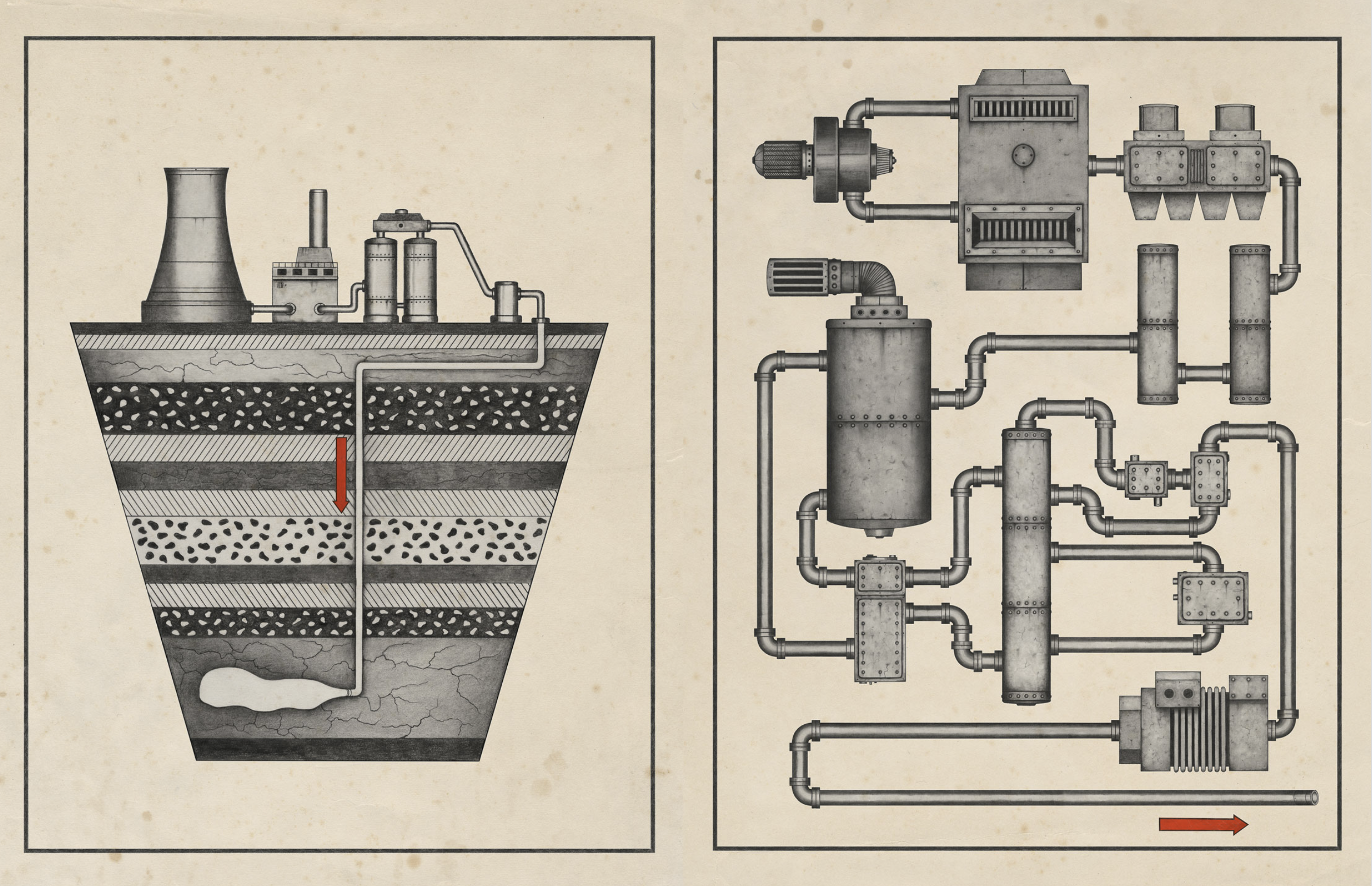
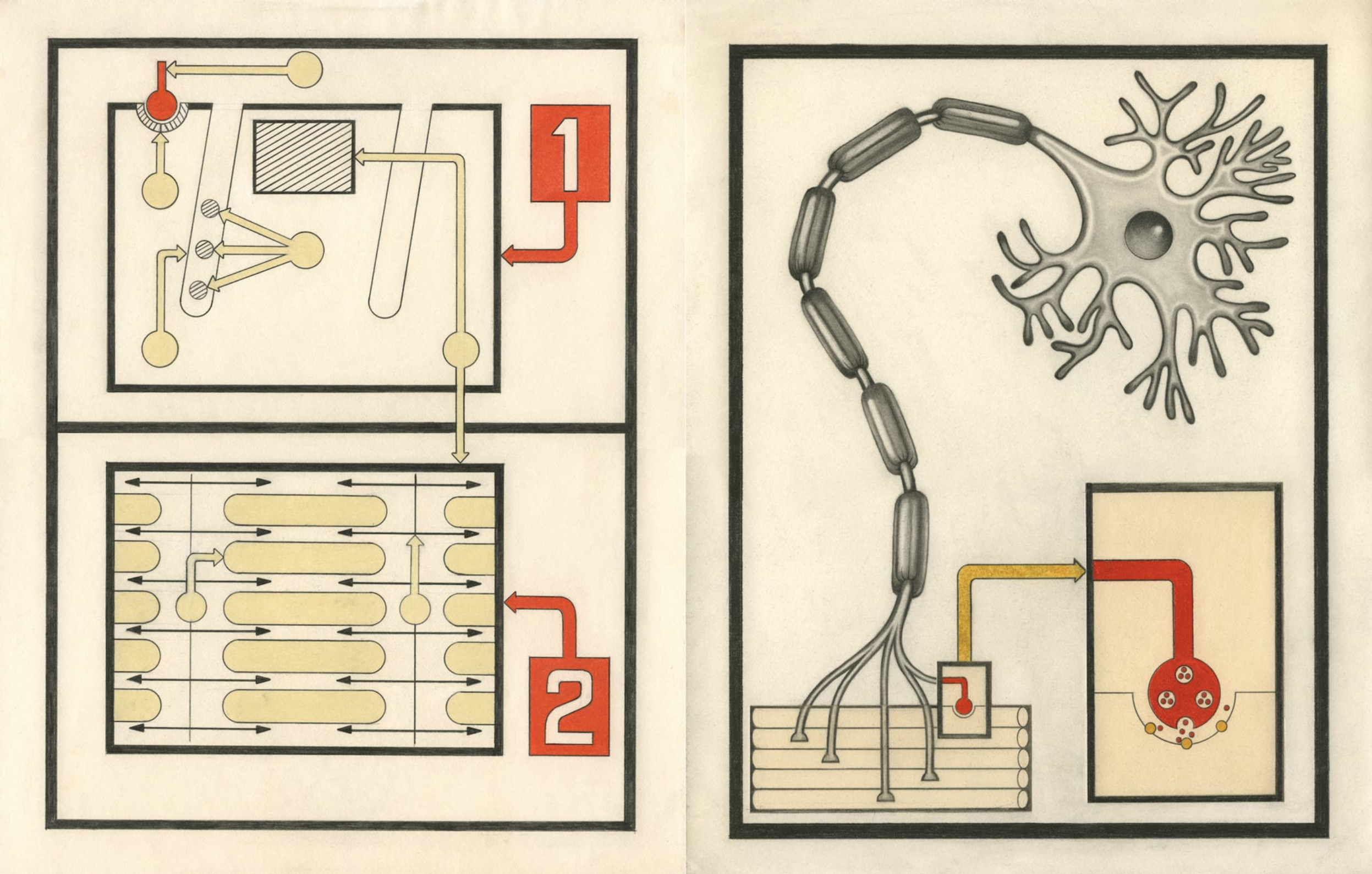


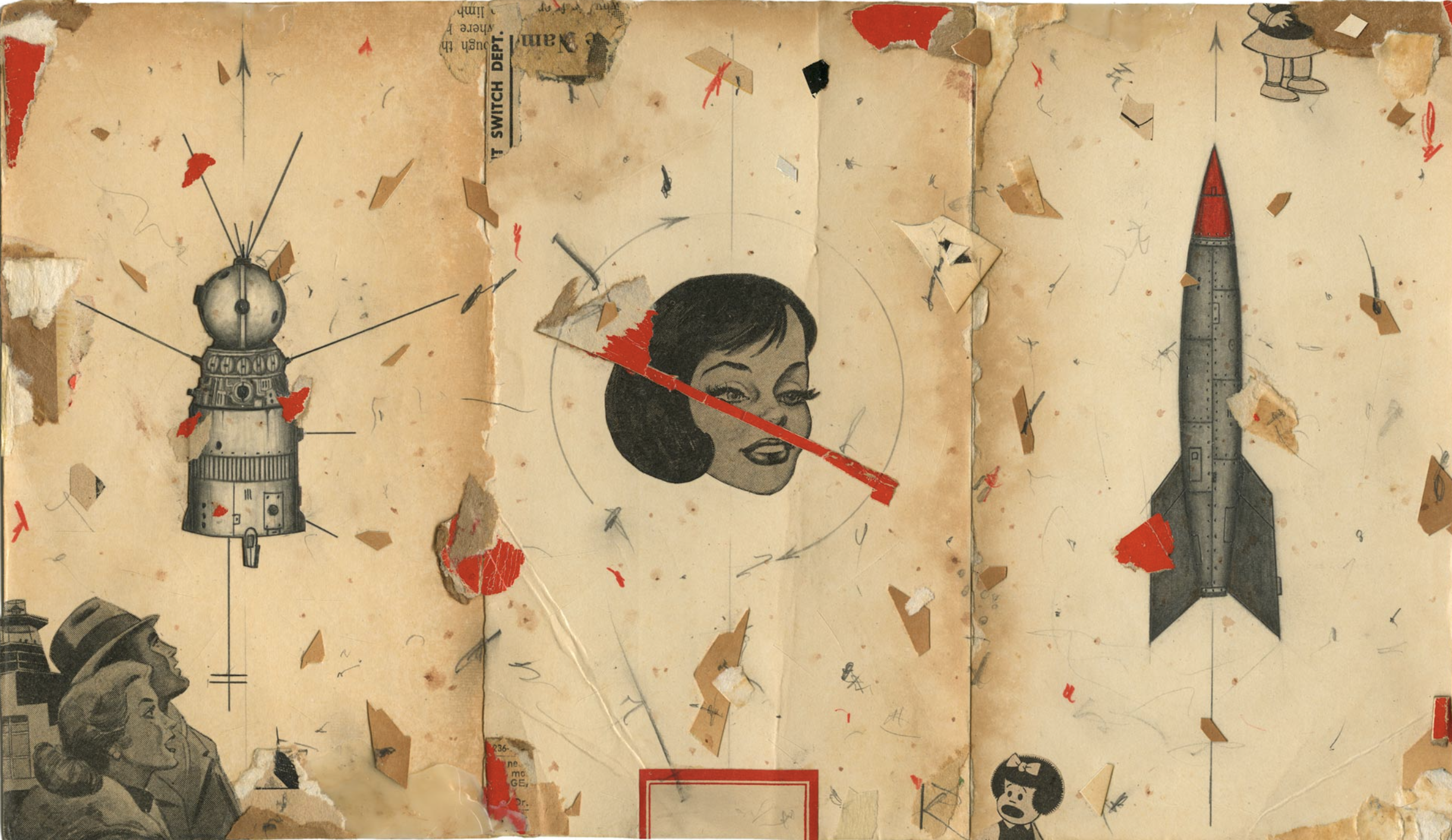
Winters is a rare double-threat—equally accomplished as a photographer and illustrator.
Patrick Mitchell: Unfortunately, we’re not going to be able to cover the breadth of your illustration career, which is really impressive. I saw an interview, I think it was at American Illustration/American Photography, where you were talking about Marshall Arisman, Brad Holland and Matt Mahurin—I will add Mark Ryden to that list because your studio looks like he could have designed it.
You were talking about the influence these guys had on you. And, as I was coming up, those guys were so powerful to me, too. Iconic and unique. Those were the guys on my Mount Rushmore. And when I started out, I revered them. And luckily I’ve been able to work with them over the years.
But when I heard you talking about them in that context, it was weird. I had this flash—I immediately saw you in that same group, even though you’re a photographer—and it really gave me a different lens on your work, which I think is—it’s photography, but it’s very illustrative and it’s got its style and it’s got its lighting and shadows. And it’s not weird at all to consider you in the same conversation with those guys.
Dan Winters: Yeah, they were giants for me as well. And I would include Mark Ryden. And I think that Brad Holland was—I think one thing was they were so consistent and they had such a singular voice—each one of them—and it was very succinct. And I think, as a creative director, as an art director, assigning one of those guys a job … I can only imagine how exciting it was to get that envelope, get that print, and get that image.
Because you knew that they were just going to rise to the occasion. Every time. I don’t remember Marshall Arisman ever phoning anything in. And his illustrations, they evolved, and they got more and more abstract and violent at times. And they were just such a great gift.
Well, that’s certainly a compliment, I will say, because those three guys were just absolute giants for me. And I always was a lover of illustration. I’ve drawn for years and I chose photography as kind of my primary pursuit, but seeing illustration in magazines always, always inspired me greatly.
And, you know, I went to the same junior college as Matt [Mahurin]. So I’ve known Matt for—I talk to him regularly—I’ve known Matt for 35 years. His career has taken on a lot of different twists and turns. He got into doing videos and films and stuff as well. But yeah, thank you. That’s an amazing compliment.
George Gendron: At one point again, in this interview they asked you about gallery shows, and you said one of the things you really liked about gallery shows was walking in and seeing very, very large prints of your work. And they asked if you have any large prints in your house. And you said, “Oh, I have one and it’s 40x60, but it’s not a print of my own work.” Whose work is it?
Dan Winters: I don’t have any of my pictures hanging. I have a house full of a photography and painting, but I think I have one print that my wife hung upstairs, but everything else is either historical or contemporary stuff of people I know, typically, that I’ve traded with or whatever.
George Gendron: Can we ask what print your wife chose to hang?
Dan Winters: It’s a picture of a boy in Cincinnati, behind a waterfall. George Krause made a photograph called The Submariner [1958] and it’s a little black boy behind a curtain of water. And he’s kind of protruding from it a little bit. Herb Ritts did some images that were similar to that. I did it at a public fountain in Cincinnati. And it’s a really beautiful print. It’s printed on Ektalure and toned with Gold 231 [gold chloride and ammonium thiocyanate], and then it’s varnished. And it’s a really rich, rich print. I had it and she’s like, “Oh, we should put that upstairs.”
But the big print that’s in my house is a print from the Detroit Publishing Company of a ship that’s being launched in 1904. And then I have a E.O. Hoppé image of a shipyard in Bremen. And then I have a “found negative”—I have a giant collection of negatives—that’s a glass-plate negative of the Statue of Liberty shot from a ship. And it’s really heavily degraded. The emulsion is gone off of a good portion of it, but it’s this magical, organic image. It’s a darkroom print I made with it with a 4x5 neg. And some paintings. And yeah, I don’t have any of my big—I have a lot of big prints at my studio that are crated, but not visible anywhere.
Scenes from Winters’ studio (above and below) in Driftwood, Texas, just outside of Austin.
Patrick Mitchell: Let us know when you have a yard sale.
Dan Winters: [Laughs]. I’m actually thinking about having one. But yeah, I love my photos.
There's a great Callahan quote, where he said, “I make the kind of photographs that I like to look at.” And I think that’s a great jumping off point for any photographer. It’s like, “Well, what kind of photos do you make?” Because when I review portfolios at schools, you can tell the ones that are serious and the ones that aren’t, I mean, flat out, right?
But I’m not the playground bully. And I want to inspire, and I want to maybe push someone into a realm that they wouldn’t be in. So I’ve looked at books before that were 25 images and 23 of them were almost—you couldn’t even look at them. But maybe there are two that are really good.
And so I call those out, “See these two images really work, and here’s why they work. Go make a bunch more like this.” And that’s a great piece of advice to give to someone that’s struggling. And maybe it’ll prompt them to try to achieve more than they are already. And then some people are just not gonna—it’s just not gonna happen.
Creativity is a strange ally. I don’t know where it comes from—that wellspring, whatever it is, you know what I mean? Some photographers and artists have experienced great, great periods of productivity and followed by a lifetime of… I mean, Evans is always my great example about that. Evans made all this significant work within a three-year period. All that Farm Security Administration stuff. All the rest of the stuff he did for Fortune, and took pictures of tools, and this and that, the other thing, were just, they paled in comparison to the work he made in that short period of time, you know? And I’m so grateful that he made that work in that short period of time. And I don’t know the reason that he never was able to eclipse that.
George Gendron: As we close here, Dan, we are going to jump around a little bit, and personally, I have to ask you something that I’m really, really curious about. And that is I’m thinking about Texas Monthly here in particular. Where do you think the DNA of a magazine like Texas Monthly comes from in the first place? Where it arrives on the scene with this extraordinary, brilliant, vibrant visual identity—design typography, illustration, photography—and it seems to come out of absolutely nowhere. And I know everybody loves to refer to the founder, Mike Levy, as “the son of a plumber.” But I knew Mike a little bit, because he used to hang around the newsroom at New York magazine talking to Felker and Milton Glaser and so on and so forth. And then I had a chance to work with them a little bit on the Radcliffe Publishing Procedures course, where I got to know him pretty well as we worked with some younger people. And I’ve always marveled at the brilliance of the visual identity of Texas Monthly over a long period of time. Where does that come from?
Dan Winters: Texas is a really unique place, it’s the one state that in my opinion has an abundance of regional pride. And I think that Texans love Texas, I’m not sure what the sort of chemistry of the magazine in its inception was. But I do know that when Fred Woodward took over as creative director—art director they called them at the time—he started really looking at work that was non-Texas work. And that was one of the unique pieces about Texas Monthly is there were Texas photographers that were in there, but there were more photographers from New York and all over the country. Then there were, you know, Kurt Marcus was coming in from Colorado and, then Fred kind of handed that off to DJ Stout, who was a gifted, gifted creative director.
And he kept that tradition going. He was flying people in constantly and he was constantly coming up with ideas of photo essays. And they were willing, under Levy’s watch, they were really committed. I mean, I’ve done photo essays for Texas Monthly that were 20 pages. People did 15-20-page photo essays for a magazine in a time that no one did that. No one did that.
And the level of achievement that the photographers were manifesting—and also, once again, that kind of that Rolling Stone description I gave you, and there were certainly like Details magazine as well, where we kind of had this family of photographers and we all, in my opinion, inspired one another.
I mean, Matt Mahurin was actually shooting for Texas Monthly when Fred was there. And then he was shooting there when DJ was there. I started shooting for them when DJ was there and worked for years with DJ and then started working for Scott Dadich, who ended up at Wired.
I think when a photographer got an assignment from Texas Monthly, photographers knew the reputation. And I think once you’ve formed that reputation, man, you’re not going to screw up a Texas Monthly assignment. You’re going to work your butt off to make sure you get it. And the truth is, that should be the case with every assignment. But the bar is really high.
And I think when you establish that you have a publication where the bar is set that high, I think it almost kind of takes care of itself a little bit. The kind of writers you’re hiring, what the expectation is, the kind of photographers you’re hiring. There’s an expectation, and you better achieve it.
I think it was a gift to get a Texas Monthly assignment. And it was even more satisfying to see the way it was run, and the way it was played, and how proud you potentially could be to sit there and ponder that sort of achievement. And it was a great achievement
George Gendron: Yeah.
Dan Winters: I sat in front of Levy on a flight to New York and he was talking to a woman about what he did. And he told her about Texas Monthly. And she said “Oh, I’ve never heard of that.” And he was like, explaining all the awards they’ve won and this and that and the other thing, and I felt like Texas Monthly is one of those ones, either you know or you don’t know. If you know, you know what it is. If you don’t know, I’m just not going to explain it to you.
Patrick Mitchell: If you know, you know everything about it too.
Dan Winters: Yeah. 100%.
A sampling of Winters’ movie posters
Patrick Mitchell: Somewhere you said, “The words ‘I am’ in quotes is an incredibly empowering concept. And back when you were studying in Munich, you said that that was the first time you ever referred to yourself as a photographer. That’s a huge moment. I mean, it’s obviously a life-changing moment. Can you talk a little bit about that?
Dan Winters: Well, that was a time when I was really questioning—because I was going to film school at that time that and I was studying documentary film. And I was shooting constantly. And I had been shooting for years constantly. And I made a decision then that my life’s work would be photography.
And the “I am” always, for me, was a definite. And it was a way for me to understand my own place. And so I tell assistants that say, “I’m going to break out. I’m doing this. I’m doing that.” And I say, “You are a photographer. That’s what you are. That’s the way you need to identify yourself. And things will fall in behind it.” But, first and foremost, I think that self-identity is a really critical piece. That’s what I was alluding to when I said that. It just felt incredibly empowering. And I’ll add to it that, if you think about any conversation you’ve ever had at any dinner party or any sort of house party where you don’t know the people, among the first questions are, “What do you do?”
And What do you do? is interesting, because What do you do? oftentimes, I think, could be perceived as some networking question. But also, I feel like that question is kind of a gift to give to someone, because they’re allowed to reflect on the way they spend their time in this world. And so, the What do you do? question I actually, really, kind of enjoy. And “I am a photographer” oftentimes is the response, but I usually try to build on that. And I talk about other pursuits and other things I’m interested in. And the things, kind of the breadth of what I do, outside of my Professional What I Do.
Winters wears an awful lot of hats: photographer, illustrator, builder, filmmaker, historian, researcher, educator, muse, storyteller, bulldozer pilot … the list goes on.
To find out what he’s doing next, visit his website, and follow him on Instagram @danwintersphoto.
Back to the Interviews
The Art Director’s Art Director
A conversation with designer Janet Froelich (The New York Times Magazine, T: The NYT Style Magazine, Real Simple, more).
For decades, The New York Times Magazine has dominated the conversation about the best-designed magazines in the world. Much of the credit for that goes to today’s guest, Janet Froelich.
One of the most influential and groundbreaking creative directors of all time, for the better part of her career, Froelich navigated the mostly male-run world of magazines and joined other pioneering women—Cipe Pinelas, Bea Feitler, and Ruth Ansel—in paving the way for the women who would come after.
After learning the ropes of magazine design at the feminist arts collective Heresies in the late ’70s, Froelich moved on to work with the legendary editor Clay Felker, to launch a magazine at the New York Daily News, followed by a wildly-successful 24-year run as the creative director of The New York Times Magazine, and was the co-creator of its sister brand, T: The New York Times Style Magazine.
“She’s an art director’s art director,” says the noted author and design critic Steven Heller. She’s also a New Yorker through and through, having lived and worked in the city her entire life.
In this episode, Froelich recalls her own personal 9/11 story, and what is was like to be in the newsroom on that day, as well as how, in only three days, she helped create the magazine cover that inspired and informed the memorial to the Twin Towers and those who lost their lives there. She talks about other Times magazine covers that left a mark, about her early years as an artist living in Soho and hanging out at Max’s Kansas City, and why you should never be afraid to hire people better than you.
Debra Bishop: All three of us have worked in newspapers and magazines. Janet, can you talk about the cultural and practical differences between magazines and newspapers and what they might be able to teach each other?
Janet Froelich: I mean, newspapers are, for the most part, daily. They’re immediate. They’re about on-the-ground reporting, journalistic approaches to stories. Look at what’s going on in Ukraine right now. You know, that’s very much a newspaper’s purview. And magazines take a longer view. They sort of step back and they come out with less frequency. A lot of it is the sort of difference between the longer view and take on news and short, quick reporting.
Patrick Mitchell: When you went to a monthly, was it kind of a freak out for your body clock? Because everything seems so slow by comparison.
Janet Froelich: It wasn’t a freak out, but there there’s a grace to being able to think about things for ten seconds. The weekly magazine, which was The New York Times Magazine, was almost painful at times—the speed with which you had to produce covers and a well-designed magazine, with good journalism and beautiful photography on a weekly basis. It is a Herculean task. It’s really hard. On a monthly, you have some breathing room. You have time to step back. That said, editors tend to take their deadlines and push them, and sort of wait until the last week to put the whole magazine out. So you frequently had a weekly deadline on a monthly. Yeah. It sort of depends on how you deal with actual deadlines.
Patrick Mitchell: Obviously The New York Times gave you a wonderful palette for doing great work. But what was it like showing up for work every day at The New York (freaking) Times?
Janet Froelich: Well, it’s an amazing place. It’s an exciting place. It’s filled with interesting people, smart people, people who question everything and think about things that you wake up in the morning thinking about because you need to be prepared. That was the biggest part of it for me for the first few years, trying to figure out how to be prepared. We used to have what they called an “ideas meeting” every morning. Every single morning in the editor’s office. A gathering of the people who led each of the departments. And you had to be up on the news. You had to have read the whole newspaper before you got to work in the morning, which was a challenge, a tough challenge, but an exciting one. And a great one to try to meet every day.
Debra Bishop: Working at the Times, gave you a platform to cover news and make news. And I’m thinking about the 9/11 cover and the Matuschka mastectomy cover. Tell us a little bit about working on these famous covers and any others that stand out.
Janet Froelich: A couple of other ones also stand out. Romanian orphans, which I was thinking about because of the Ukraine. And then a year after 9/11, the Reimagining Rebuilding New York issue. You know, the Times magazine has this remarkable platform to speak to people. And so many people got the newspaper on Sunday. So many people looked at the magazine. So you knew when you created either a story, or an artwork, or a cover, that it was going to find its way onto the coffee tables or the desks of important people. 9/11 was a fascinating case in point.
I live in Manhattan. And on that Tuesday, September 11th, when the buildings came down, when the planes went into those buildings, I was on my way to work. And I knew that I had to get there really fast.
It was the last subway uptown, as a matter of fact, for … I don’t know how long the subways were gone after that. And we immediately set to work ripping apart what we were working on and creating a new magazine. The Times magazine comes out—in those days it was about 13 days, is my recollection. Now it’s more like 10 days before you actually received it in your Sunday newspaper. So we had to be thinking about what people would think about 13 days from this moment, not what we’re thinking about right now. And the buildings were—the dust cloud was still settling in New York. We still didn’t know whether 33,000 people or 3,000 people were dead in that rubble. And we had to start thinking about a magazine 13 days hence. And Adam Moss was the editor through that period. He was a remarkable editor and he asked all the right questions and immediately everyone decided that the way to deal with this was to ask the smartest minds, the best writers, the best photographers, the best editors to each, independently, come up with a personal take on the events.
So they went to great writers. They went to great photographers. And Adam asked the art department to think about a memorial—it was crazy to think about a memorial! This was Wednesday morning, probably a day later, and I walked to work and I walked home. It’s a couple of miles. And he asked us to think about what we want to see on the cover 13 days hence and asked us to think about memorial. So I started calling artists—with a great deal of humility and somewhat embarrassment because some of them lived in lower Manhattan and had looked out the window and seen the planes a day or two beforehand—and asking them to create a memorial when they didn't even know what had happened yet. It was nuts. And most of them just gave me a sort of blank, “No.” But I called Anne Pasternak, who was the executive director of Creative Time.
“We still didn’t know whether 33,000 people or 3,000 people were dead in that rubble”
She’s now the director of the Brooklyn Museum. And she knew of these artists who had all been working in the north tower of the World Trade Center, most of whom had survived because they weren’t there overnight or in the early morning hours. And two of them, Paul Myoda and Julian LaVerdiere, had been part of a team working on something that they instantly turned into a kind of Memorial. They were shooting beams of light into the sky from the top of the north tower. When the towers were still very much, you know, solid buildings in the city. And they took that idea and morphed it into a drawing for these beams of light, two beams of light, that would go to the heavens. And it was a pencil sketch, and we printed it in the magazine on the inside pages. But it was inspired and inspirational.
And we started to think about how to make that into a cover. And looking at photographs of lower Manhattan. Kathy Ryan, the director of photography, came up with literally hundreds of pictures that we looked through. And none of them gave us the kind of background that would feel like the haunted landscape that was in lower Manhattan until Fred Conrad’s picture taken the night, or the late afternoon, after the initial collapse of the buildings in which you have the sea of emptiness, taken from the barge near New Jersey, looking towards Ground Zero. And there was a dust cloud moving horizontally across the picture. And we took it to Nucleus, a digital house at the time. And you have to think—this is 9/11, 2001—where Photoshop was. It was pretty rudimentary still.
And it took six, seven hours late at night with me working with the guys at Nucleus, trying to take this horizontal dust cloud and morphing it into two vertical shafts. But when we were finished, Adam said, “That’s the cover.” And we put it on the cover and within a year, The Municipal Arts Society and Creative Time worked with the city on creating an actual memorial that replicated what the cover looked like, and has, every single year since then, illuminated the night sky on the week of 9/11.
It was an amazing experience. It was a way to process. I think about it right now, with what’s going on in Ukraine, and I feel this great longing to be in a magazine environment where people are actually thinking about what’s going on and how to make sense of it. That’s the extraordinary pleasure of working on a magazine.
Patrick Mitchell: Usually there’s, like, a competition for those memorial designs that takes years, right? World famous architects submit all these designs. It seems like that one just got slam-dunk approved. Probably because of the power of that cover.
Janet Froelich: I don’t know how much the cover actually had to do with that. I sort of hope that it helped influence, but it’s the haunting quality of the light that I think—and it’s not a physical thing because there are physical things down at Ground Zero at this point. It took years to build them, but they’re there.
Patrick Mitchell: And there were a couple other favorites you mentioned.
Janet Froelich: Matuschka and the Romanian orphans. Matuschka was an interesting example of pushing the boundaries of what is allowed on a national magazine that reaches the coffee tables of families, where children—that’s what people always worry about, that your young children might be exposed to images that are disturbing, that shake them up a little bit, that make them question things that are frightening. Matuschka was this really interesting artist who had had a mastectomy and who had decided to use her body and the mastectomy itself as her art form. And so she designed a dress that covered the one side of her body that still had her natural breast and left the other side open, like a kind of a kind of toga. And you could see the scar where her breast had been. And she’s a beautiful woman and she photographed herself and she did a lovely job with the images and they were quite haunting.
And we were looking for a cover on a story about breast cancer. And we decided to try it, you know, we had these mattes and we would put mattes on the images and show them to our editors. And they would kind of say “yay” or “nay” to things. And I was blown away because all of my editors were men. Every last one of them. And the editors of the newspaper have to approve The New York Times Magazine’s covers. I don’t know if that’s still the case now, but it was then. Every single cover, every single week, we had to walk down to the third floor, which is where the masthead was located and show our covers and get an approval. And once in a blue moon, they would reject them. But every single editor said yes to this.
So it must have had some compelling factors that made them kind of look at her and say, “It needs to be seen. It needs to be shown.”
Readers were not all delighted. There were a lot of negative letters and a lot of positive letters, but I think it changed the landscape a bit. And I think it created an environment, or it helped to create an environment, in which it was more acceptable to talk about it, to show it and, and to try and work for solutions to a medical issue that still is with us.
Debra Bishop: Would you talk about the other cover that you mentioned, the Romanian orphans?
Janet Froelich: This is the power of a global-reach newspaper. James Nachtwey had been in Romania photographing the horrifying way that children who were orphaned were tethered to cribs, given practically no food, treated in a horrific fashion, because the state couldn’t deal with it. And he has this incredibly powerful vision. And he had presented the magazine with a photo essay, which we ran. There was an incredible outpouring of sympathy and resolve. And Americans adopted great numbers of Romanian orphans after that. So the reach of the cover on the Times magazine could not only change events, but also change individual people’s lives.
Debra Bishop: Were you able to fight for the stories you felt strongly about?
Janet Froelich: Oh, you can fight. You don’t always win [laughs]. But you can certainly fight.
You know, it was always sort of interesting. Kathy Ryan and I worked together—she was the photo editor of the magazine and still is—for well over 20 years. And we were frequently the only female members of a meeting, a major meeting on stories. The magazine was predominantly male-edited. The newspaper was predominantly male-edited. And so there were any number of times where we fought really hard for a woman to be on the cover of the magazine. And it was refused because the stories were considered “not as interesting, not as important, not as relevant.” I doesn’t happen, I think, as much any longer because everybody is more aware of the reasons for assumptions based on point of view, male point of view, male-dominated point of view.
Patrick Mitchell: I found a post on the website, aPhotoEditor, about an at-the-time rumored move you were making to Real Simple, and it included the line, “She’s likely just burnt and ready to make some serious cash [laughs],” which is funny, but even funnier was one of the comments that said, “Real Simple can pay Janet all the dough in the world. The fact of the matter is that it’s a magazine that had its day years ago. She would be smart to sock the cash away and retire [laughs].” But that kind of came true, no?
Janet Froelich: Well, I don’t know about “sock the cash away.” The Times notoriously did not pay art directors, creative directors, as much as a lot of other magazines. But, that said, those other magazines didn’t pay that much more [laughs]. So I don’t know if salary is really the most interesting aspect of all of this. But I didn’t go to Real Simple for money. And the Times did make an attempt to match any offers that were there. It was more about wanting—after 25 years—wanting a different experience. Wanting to be on the newsstand. Wanting to actually see what mass-market publications were like. And it just seemed like an interesting step to take.
It’s a funny quote, because Real Simple hadn’t been around for that many years.
Patrick Mitchell: I know! Five or six years and they’re already calling it washed up [laughs].
Janet Froelich: But it started out with a very different mission than it had at the point at which I arrived there. And I thought it would be an interesting challenge.
Patrick Mitchell: Given your record, I can only imagine how many times you got calls from other magazines trying to lure you away from the Times. Can you talk about some of them? What were your closest calls? Any regrets?
Janet Froelich: No. A number of people called me at various points, and it feels sort of funny to get into them now just because different people got hired and different things happened. But the closest call, that I thought was sort of interesting for me, was that I almost—I think this probably happened to a dozen other art directors—I almost went to J.Crew. J.Crew, I think, liked to think of itself and its catalog as a magazine and looked to editorial minds to try to, I guess, grab readers and intrigue potential purchasers of J.Crew clothing. So I talked to them quite seriously. And very luckily, at the last minute, a big Texas conglomerate bought them out. And the woman who I had interviewed with, Emily Woods, who was the daughter of the founder of J.Crew, was let go and the whole thing sort of fell apart. Luckily I had not accepted the position.
• • •
Debra Bishop: Switching gears just a little, can you imagine making a weekly magazine during COVID?
Janet Froelich: Yeah, I can imagine it, but I mean, I actually should shift the gears and ask you what it’s like, Deb. Because you actually probably do that at this point. I mean, I know it’s not weekly what you’re doing there, but it’s probably got a lot of tight deadlines.
Debra Bishop: It takes a while to get used to remote working.
Janet Froelich: The thing that I can’t quite imagine is what it’s like not to have the closeness of all those people standing around of the counters that are frequently in the art departments of magazines, talking to editors, photo editors, designers about what’s going on on the pages you’re designing. It’s an incredibly freewheeling, wonderful give-and-take that has to have been missed sorely for the past couple years as COVID prevented everyone from being in the same room.
Debra Bishop: Absolutely. What do you miss most about making magazines?
Janet Froelich: Just what I was just saying. For me, it’s all about collaboration. It’s about the generation of ideas and where they come from and listening to each other and adding to ideas and making them more complex and layering them and getting other viewpoints. It isn’t a solitary occupation by any stretch of the imagination. You have to be a good collaborator to work in this business. And I that’s the thing I miss the most.
The Goddess Issue of Heresies
Debra Bishop: In 1977, you joined a group of women artists to produce a magazine called Heresies. It was described as “an idea-oriented journal devoted to the examination of art and politics from a feminine perspective.” Can you talk a little about the circumstances that brought you there and the role it played in your career?
Janet Froelich: I started out, in life and in my professional life, as a painter. I studied fine art. I went to college and to graduate school as a fine artist. And I spent ten years working on a fine art career. I taught school to support myself, and I lived in Soho, which was a very scruffy artist colony in the early ’70s. And I had a lot of art-world friends, but my career as a painter really never took off. And I think I sort of discovered later on why that was, but I started to look around for other ways to live a creative life. And I thought about going to law school. I actually took the law boards and thought for about ten seconds about spending three years of my life going to law school.
And I became involved with a group of women artists on this publication, Heresies, a feminist publication on art and politics. It came about in an era—I mean, it’s still a little bit like this, but much less so—in which all of the art, the shows, and galleries, and museums were all of men. There were plenty of women artists, but they couldn’t get a show. And if they got a show, it was in a very small, backwater gallery somewhere. And every time there was a Whitney Biennial or a major group show mounted, it was 99% male. There were very few opportunities for women artists and it made women very angry. And some of them were incredibly talented. All of them were incredibly talented women and very serious artists.
So they banded together and created this journal, which had an interesting premise. Each issue was edited by a different group of people, a collective. And each issue had a different focus. Some of them dealt with culture, with art issues, and some of them dealt with issues of personality and focused on sexuality. There was one issue called “The Goddess Issue” which had to do with rethinking religion.
But all of them were focused on art and the art world. And I became involved with them for the second issue. And I became a member of the main collective. And I discovered while working with them that I just loved the process of working with a group of people. Of working with writers and editors and designers. And I think I developed a love of magazines through working on this journal. I stayed working with them for about two years and until I got a job working at the New York Daily News, and there was no time left for Heresies.
Debra Bishop: You went from one profession—art—that was difficult for women into another one: graphic design. And while there have been women who have changed magazines forever, like you, it’s still a male-dominated business. Why do you think that is?
Janet Froelich: Oh, that’s a really good question. And I’ve thought about it over the years because, you know, frequently I would interview candidates for design positions at the Times or even at Real Simple and 90% of the candidates were female. They’re all women. But by the time you walked up the ladder, especially in earlier years of my career, there were only men who had the top jobs. It’s hard to say exactly why that was it. It has to do with the same things that happened in every other field out there. Women tended not to push themselves as hard. They tended to make other decisions about having families and dealing with the responsibilities that children entail. And they also had to deal with the way the people at the top, the bosses who were mostly men, saw them and perceived them and gave them opportunities or mentored them.
Whether that’s all still true now I don’t know. I have to leave that to people who study that stuff. I think it might be changing, little by little. It’s certainly not as bad in our profession as it is in, let's say, conducting. I mean, there are so few women conductors of major symphonies. Why is that?
Debra Bishop: Janet, you said that you learned publication design at Heresies. Were you self-taught or did you have mentors there?
Janet Froelich: I didn’t really have mentors at Heresies because nobody knew what we—we had no idea what we were doing! We had to get people to come teach us, paste-up and mechanicals, you know, those were the pre-computer days. And it was all about rubber cement [laughs]. And this is one of the regrets that I’ve had over the years is that I never really studied graphic design. I never really studied typography. I studied the work of other people who came before me and people who worked simultaneously with the work that I was doing. And so I hate saying I’m “self taught” because that’s a very arrogant thing to say. I stand on the shoulders of so many other people, but I didn’t study it in school. In school I studied painting. I will say that the skills that I have as an artist having studied painting have an enormous impact on the way that I worked and the work that I did over the years.
Debra Bishop: Did you have strong female role models?
Janet Froelich: I suppose a few. The biggest one is Ruth Ansel. Ruth Ansel was an art director at The New York Times a decade or so before I got there and she had been a close collaborator with Bea Feitler, who is a sort of hero in the graphic design world and in the magazine design world. And Ruth Ansel I remember because I collected U&lc, those wonderful publications that Herb Lubalin and Aaron Burns put out. There was a piece on her and they called her a “rara avis”—a rare bird. And she was a rare bird. She was the only woman art director in her time. I mean, there was Cipe Pinelas and a few others before her, but there really were so few of them. So, you know, she stands out as an important figure to me.
Debra Bishop: As a woman, do you feel that you’ve had to fight for some respect during your career?
Janet Froelich: I’m sure I did [laughs], but it wasn’t a predominant feeling. For whatever reason at the Times, I was always respected and I always felt listened to. And I felt like I belonged. And like I was part of the team.
Patrick Mitchell: You’ve worked for two editors who are in the ASME Magazine Editors Hall of Fame: Clay Felker and Adam Moss. How do they compare—two men in two different eras?
Janet Froelich: You know, I didn’t … I know Adam Moss really well, and I worked very, very closely with him for a bunch of years. Clay Felker I didn’t know as well. And he was just a figure in the newsroom at the Daily News at a really interesting moment in time for them, which was trying to compete with both The New York Times as well as other afternoon newspapers in the city. He had developed something they called the Tonight Paper. These are newspaper wars that you’d never see today because nobody reads newspapers any longer, but Clay Felker, it was just interesting to watch him try to transform a tabloid news organization into a sophisticated processor of news for a much more literary, sophisticated audience. And I loved his story ideas. I liked the way he packaged things, but I didn't really know him terribly well.
Adam Moss is one of the best magazine minds of his generation—of anybody’s generation. And he’s an inspiration to work with. And everybody who’s ever worked with him, for him, credits him for the best of their work. He just had a way of pushing you harder and further. He had a way of asking questions, the answers of which would bring you to a much more exciting solution. And he just had a way of pulling people together as a team.
Patrick Mitchell: You predated Adam at the Times. When he came in, what was the brief?
Janet Froelich: Adam came in as the associate to Jack Rosenthal. And I think it was done to—Jack Rosenthal, who was the editor at the time, was very much from a previous generation, an older man with a much more conservative point of view. I believe Joe Lelyveld at the time, who was the editor of the newspaper, wanted someone to be a kind of foil to that, wanted somebody to push Jack a little bit. So Adam was the associate, and Adam had been there for a couple years by the time Jack left to retire and move on to the Times Foundation. Then Adam took over. So the brief for Adam, I think in the beginning, was to push back a little bit towards a more “adventurous” way of editing the magazine. I think Adam established his own brief, which was to make the Times ever more relevant, to continuing younger generations of readers.
Debra Bishop: In 2004, you and Stefano Tonchi partnered to launch T, The New York Times Style Magazine, widely considered one of the most beautiful magazines in the world. And certainly awarded as such over the years. I’d love to hear how you partnered with him to create such a legendary brand.
Janet Froelich: The Times had always published a series of what they call “Part II Magazines.” And they covered a disparate group of subjects: men’s fashion, women’s fashion, home design, travel, and food. And the idea was to try to bring them all under one roof and give them all an identity. And they were advertising magnets and the Times began to see that it had a product that could generate revenue. So they brought Stefano in, and he was a men’s fashion editor—I think he had been at GQ, no at Esquire—but Stefano also deeply connected to the art world. His husband—partner at the time, but then became his husband—David Malcolm was a gallery dealer. They lived with a lot of fine art. The connection between the “low” arts and the “high” arts fashion design and, and painting and sculpture. The lines of demarcation for those things were completely blurred and Stefano brought all of that to the table with T.
And this was just right up the alley for me coming out of a fine arts background, loving working with artists—which I’d always done at the Times magazine—to solve a lot of the visual problems that we had. And so Stefano and I kind of together came up with calling it T, which is a little bit modeled on an Italian publication called D but also W. And we gave the magazine a kind of a particular identity that would be strong enough to cover the disparate subjects and still feel like one publication.
Debra Bishop: Well, I was always enthralled with the way you took the T—I mean, it seems like a natural idea to take the big, giant T and play with it—and created bespoke openers with it.
Janet Froelich: You know, over the years, I’ve always loved taking a particular problem or assignment and sending it to like ten different artists or eight different artists—and I had done a lot of that—and asking them to interpret it. And I think a little bit of credit here goes to Fred Woodward who did “Draw the Cowboy” with a whole bunch of illustrators. And I always had that in my head as Draw the Cowboy—I wanna repeat that, but do it in my own way. And I had done it a number of times in the magazine. I had done it in design issues.
So it was sort of a natural. It was just part of my vocabulary to take the big, chunky “T” that Matthew Carter had done for me and send it out. It wasn’t just to artists though. We actually sent it to Fendi and they did a fur “T.” We sent it to Let There Be Neon, and they did a neon “T.” We sent it to the Campana Brothers, who do furniture, and they made an upholstered “T.” We even mowed a “T” into a cornfield in upstate New York! We just had a load of fun with it. And when I left the magazine, David Sebbah kept it going. And the last “T” was done by Fabien Baron. So it kind of, the full circle was really quite nice. I was very sad when they let go of the “T,” but I am an admirer of the current design of T. And I am an admirer of T magazine now.
Patrick Mitchell: So you spent 22 years in the newspaper business. And even though you were mostly working on magazines, newsstand magazines are a different animal. How did Kristin van Ogtrop convince you to take the leap and join her at Real Simple?
Janet Froelich: You know, I like Kristin a lot. And so partly it was just her infectious personality. And we had a couple of lunches and I really enjoyed being with her. But she wanted something—she wanted to make Real Simple into something different. And, you know, her husband works at The New York Times Magazine. She’s married to a story editor at the Times magazine. So she kind of knows the magazine really well. And she wanted some aspect of what we had done at the Times magazine to be brought to bear on Real Simple. And it excited me to think about working with her. I liked her. I also think I felt that things were changing at the Times, and I wasn't quite sure that I wanted to stay there through whatever the changes that were going to happen were.
Stefano, I knew was going to leave. Adam was going to leave. Adam had left. So I think it was just Kristin herself and her personality. And also, I just liked something about the challenge of doing, as I said earlier, doing this newsstand magazine.
Debra Bishop: Was that the first time you’d ever worked with a woman?
Janet Froelich: No. Claudia Payne was the deputy editor to Warren Hogue. I saw, I think, six sets of editors [laughs] at the Times. Usually they, new editors come in, and they fire the art director. But I always stayed on. I think that has as much to do with The New York Times’ allegiance to people as it does to my own success at the magazine. Claudia Payne was the deputy to Warren Hogue, but she was a very forceful deputy and a force to reckon with. And so I think she was the first woman that I worked for in that sense.
Patrick Mitchell: How did things end at Real Simple?
Janet Froelich: You know, it’s a sad and telling story. The magazine group was sold. Time …
Patrick Mitchell: … Time Inc. started it and sold it to someone else, like Meredith?
Janet Froelich: Meredith came a little bit later. It was Time Warner who was trying to consolidate its holdings and trying to figure out how to staunch the losses of several of their publications. Real Simple was a success and was making money. So they started to take money from Real Simple and not put it back into Real Simple. And we started to have budget cuts and people overseeing our issues and our mission who had nothing to do with magazine. They were business-side people, and you could see the handwriting on the wall that things were changing in the magazine business. That money was drying up. That the vision for the magazine was gonna change. Kristin felt it. And I knew she was going to leave. And I was getting to a point where I didn’t need to work all the time. And I was getting to an age where I didn’t need to work all the time. So I put it all together and decided it was a moment to let it go.
Patrick Mitchell: Good call. It only got worse after that.
Janet Froelich: It got a lot worse. Yeah. But the business is a challenging one now. And, and it’s kind of sad to me. I used to sit on the subway and see the newspapers that I had designed, the magazine that I had designed, in people’s hands, on the floor, you know, kind of being stepped on. But it was alive and people were living with it. Nobody does anything but read their phones now. And I don’t necessarily think that’s bad. I’m not one of those people who looks back and says, “Oh, the good old days, it was so much better.” I just think it’s different. And we all have to learn to live with it. It kind of reminds me a lot of what happened to 12-inch record album covers going down to those tiny, little CD cases, and smaller still, like a little icon on your phone.
Patrick Mitchell: Do you buy any magazines now?
Janet Froelich: I’m a subscriber to The New Yorker, to The Atlantic, to New York magazine. I get The New York Times delivered. My husband and I read the paper every day and I get the Sunday paper. But other than that, I don’t buy them. I used to be a magazine junkie. I used to describe myself as a magazine junkie. I had piles of magazines on my desk all the time, looking to see what people are doing. It’s unnatural to kind of not do that anymore.
Patrick Mitchell: You have a limited selection, but is there a magazine that you really admire the design of right now?
Janet Froelich: You know, the ones that I subscribe to. Yeah. And I do admire T. I think Patrick Li does a lovely job on it. I think it’s a well-designed. And I know there are so many niche magazines. Now, the food magazines and the lifestyle magazines and the fashion magazines that are printed on extraordinarily lovely paper. And you probably print, all told, 500 copies and they go to 500 people, but they’re gorgeous. And there are a lot of those, but they don’t have enormous influence in the culture because not enough people live with them.
Debra Bishop: You’re a New Yorker through and through. You were born in Brooklyn and raised in the burbs, which ones?
Janet Froelich: Oh, I was just raised in Queens. I don’t know if that’s a burb [laughs]. It’s like a lot of hip, young people live in Queens now. But born in Brooklyn, raised in Queens.
Debra Bishop: And what did your parents do?
Janet Froelich: My mother was a homemaker. My father ran a business called Froelich Lightcraft, and he designed and manufactured lighting fixtures. My father died when I was a little girl and my mother took over the business, but she was not a designer. She just went in a couple of days a week to keep the business afloat as best she could. She called it “going to business [laughs].” That was her phrase.
And she was the only mother of any friend I ever had who worked!
Debra Bishop: Have you ever lived anywhere else other than New York?
Janet Froelich: Not in a really permanent way. I mean, I went away to college and I went away to graduate school and I lived for about three quarters of the year in Paris when I was 20 years old. And I took care of a baby. I worked au pair. But other than that, no. I’m a New Yorker [laughs].
Debra Bishop: Things have obviously changed since you were a kid. Manhattan is different. Brooklyn is different. The art world is different. What was the young Janet’s dream in those days?
Janet Froelich: I wanted to be a fashion designer. And I drew all the time. I drew pictures of girls in—I’m sure this is a classic girl thing [laughs]—I drew pictures of girls in fancy dresses. And the cover of the book was always “Fashions by Janét” [laughs]. I mean, it’s sort of embarrassing at this point.
And then in high school, I had a remarkable mentor, a man named Philip Frankel, who ran something called the “Art Squad.” And we did signs and posters. And I designed the yearbook. And I designed the logo for my school newspaper. And I loved graphic design. And then I went away to college and graphic design was “commercial art,” and it was really denigrated and I was very influenced by that. And so I became a painter. So it’s like full circle. You know, when I hit my late 20s, early 30s, getting into graphic design.
Debra Bishop: What was the first magazine you can remember having an effect on you where you actually noticed the design?
Janet Froelich: We got Time magazine when I was a kid in my house. And we got Life. And I think Life probably had the most affect on me because of the quality of the images. And because it was well designed.
Patrick Mitchell: You lived in a loft in Soho before Soho was “Soho.” In the ’70s, parts of New York were still frontiers, including Soho. What was it like being in your 20s in that world?
Janet Froelich: It was a mixed bag. And the nostalgia for it creates a kind of glossy answer that it was “romantic” and it was “exciting” and it was “wonderful.” But it was also hard. It was about working all day in your studio and going out at night to art bars and talking art with people and trying to figure out what the next step in your career might be. It was about trying to find inexpensive places to live and to work—which wasn’t easy. But it was a whole lot easier then than it is now. So I suppose even that…

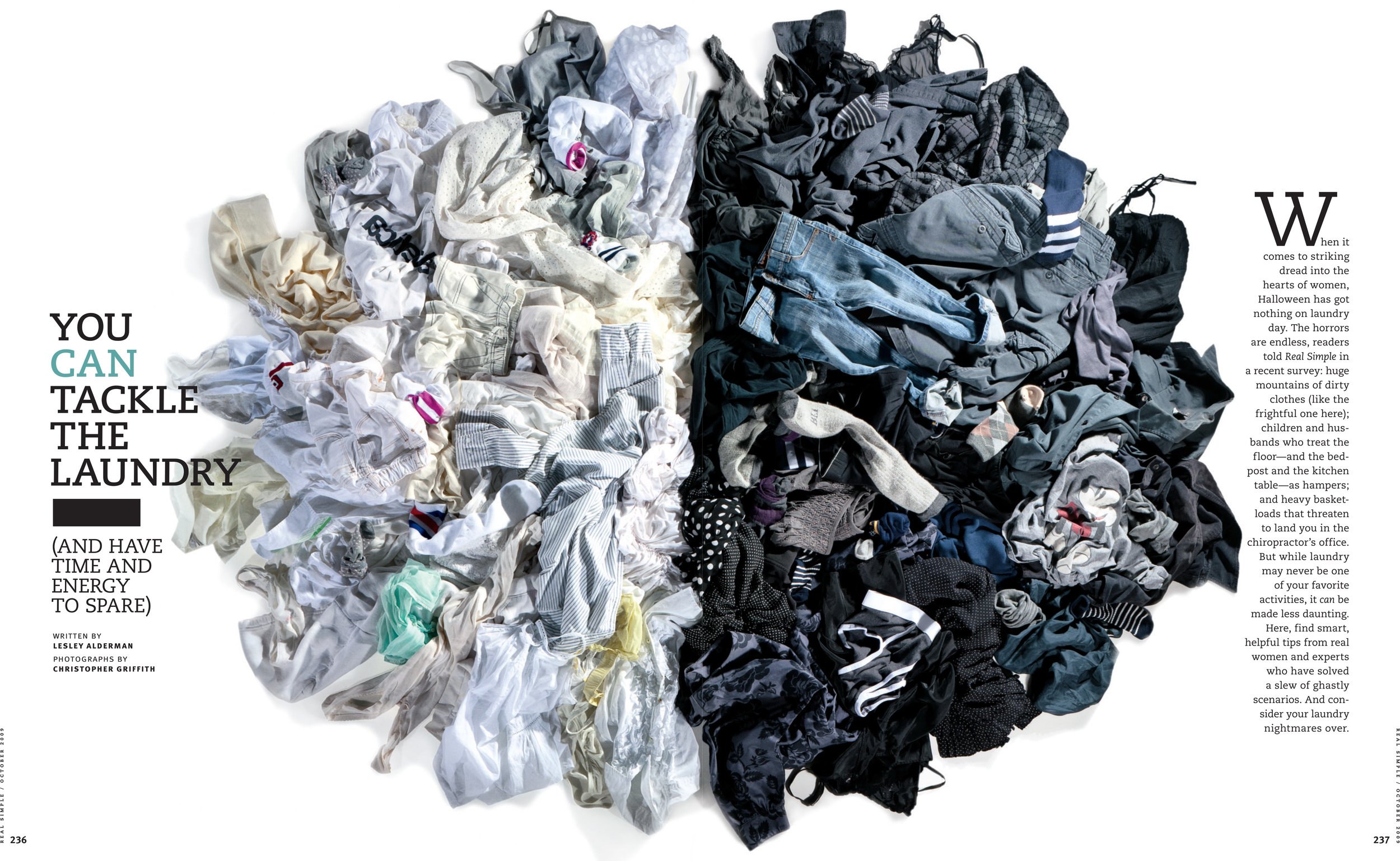
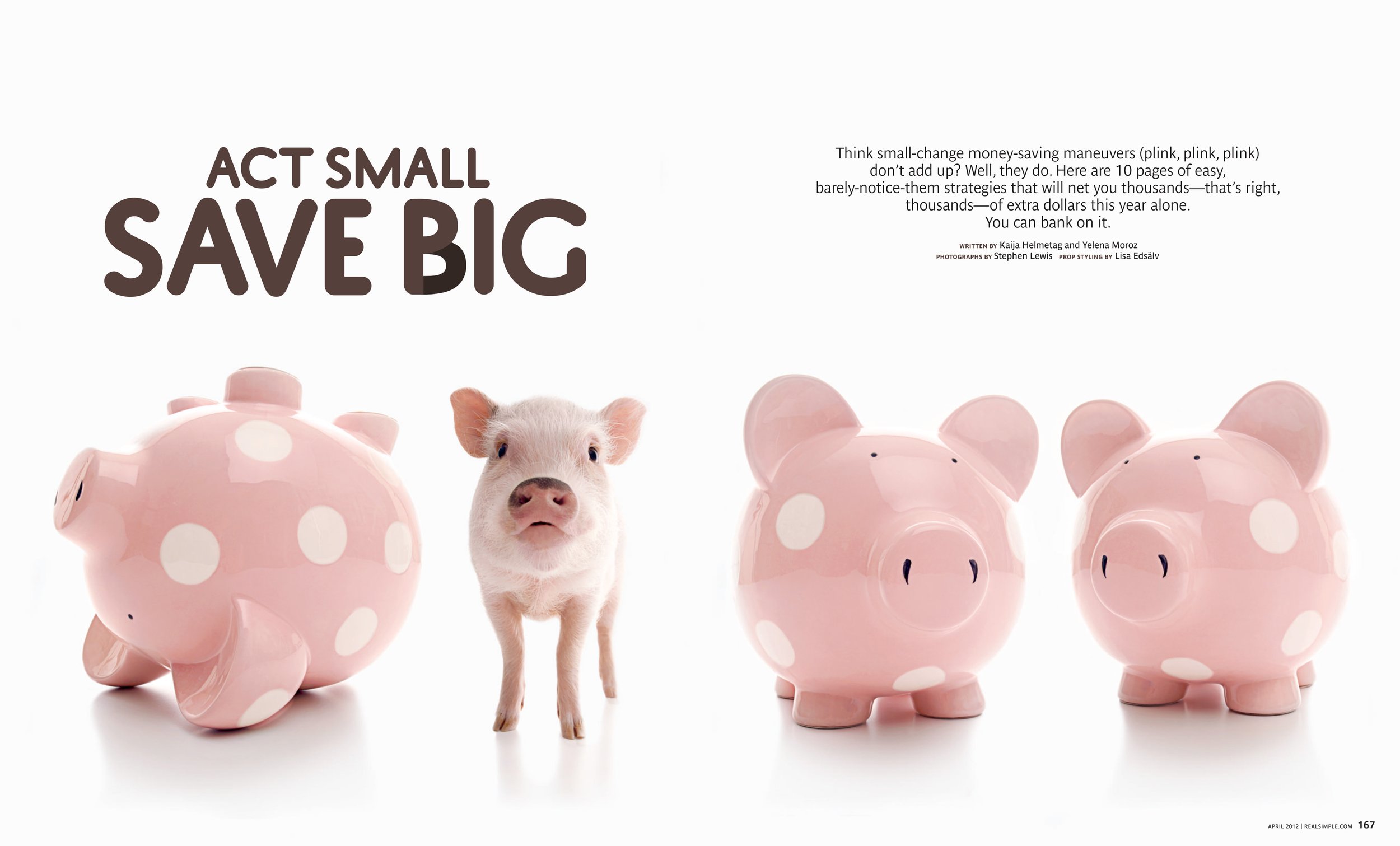

Patrick Mitchell: …I’m a rube from Texas. I didn’t get to New York till the ’80s, but, even then, Soho was pretty rough.
Janet Froelich: I never found it rough. I guess I was used to it. But if you got into a taxi and ask them to take you to Broome Street, or, uh, Mulberry Street—I lived on Mulberry, which was actually more Little Italy, in a factory building in a loft, but more Little Italy than Soho—but the cab drivers didn’t know where any of those streets were. Now you say “Broome Street” and they know exactly where to go. But the neighborhood evolved slowly. You know, I remember the first bar that appeared in Soho and the first boutique that appeared in Soho in the midst of cigar factories, and doll factories, and mannequin factories that proliferated, and rag factories. And the first loft that my husband and I lived in had a stencil on the elevator “Flexide Plastic Novelty Company.”
Debra Bishop: Are you still living in Soho?
Janet Froelich: No. I live west of Soho now. It’s sometimes called West Soho, but it’s also called Hudson Square. It’s pushed far enough beyond West Broadway to no longer really be Soho.
Patrick Mitchell: When you were in Soho in the ’70s and you were in the art world, that was like primetime Andy Warhol, Studio54. Did you get involved in any of that?
Janet Froelich: No, not in any kind of major way. Although I used to love to hang out at Max’s Kansas City. And he was there, as were a lot of other people. But for the most part I was in a sort of less cool group [laughs].
Debra Bishop: How would you advise young Janet to follow her dreams in 2022?
Janet Froelich: You know, I always told young people who came to see me, either with their portfolios or just to talk about careers, “Work for the most exciting person you possibly can. Don’t go for the money in the beginning. Go for the ideas, the talent, the brilliance. You want to work with good people.” So that’s first off. The second thing is, I don’t think editorial is, right now, a career with a lot of potential. There’s so few places to work any longer that I think you really have to kind of mix it up and work for different kinds of organizations and work for different kinds of designers to get a sense of where you can apply your craft.
“Work for the most exciting person you possibly can. Don’t go for the money in the beginning. Go for the ideas, the talent, the brilliance. You want to work with good people.”
Patrick Mitchell: I’m giving you credit for this because, from my memory, it happened on your watch. And I don’t think it could have really happened anywhere else. But over the years, at the Times, you’ve brought in a who’s who of incredibly talented future art directors, among them: Rem Duplessis, David Sebbah, Dirk Barnett, Gale Bichler, Joel Cuyler, Lisa Naftolin, Louise Straus, Chris Dixon, Michele Outland, Jennifer Pastore, Richard Baker, Catherine Gilmore-Barnes, Elizabeth Spiridakis, Scott Stowell, Andrea Fella, Emily Crawford, Kristina DiMatteo, Jeff Glendenning, David Armario, Christopher Martinez, Dragos Lemni, and Jeanette Hodge-Abbink. My God! At Heresies you were part of a collective. Can you talk about how you built your own design collective at the Times?
Janet Froelich: Well, it wasn’t really a design “collective,” but you know, when you put out a magazine like The New York Times Magazine, every single week, and you have to do a good cover every single week and create a good design and it isn’t formatted and you don’t want it to be formatted, you need good people to work with. You can’t do it yourself. And to run a department, you’re not even designing most of the time you’re coming up with ideas or figuring out which ideas work, and then pointing to somebody and say, “You do that.” So I knew I had to hire good people and it’s also spread out over 20 something years, 22, 25. I actually think it’s 25 years. So I looked for, and I was never afraid of, good people. I was never afraid to hire people who I thought were better designers, better thinkers, better commissioners than I was.
So I spent a lot of time looking at, and talking to, good designers and hiring them whenever I could. Sometimes they would just come in for a few months. And sometimes they stayed for a few years. Sometimes they were on staff, and sometimes they were freelance. And I loved it. I loved working with talented people. So I guess—and I think I’m a good collaborator. And I think I’m good at sort of setting people off in the right direction and inspiring them to figure out how to take the puzzle that’s The New York Times Magazine and make it their own. So I, very luckily and happily, got to work with a lot of wonderful people. Some of them were already established, great designers and some of them were at the beginnings of their careers. One or two just fresh out of school. It’s a big operation, you know, and weekly is hard. Weekly is 52 covers a year!
In 2006, Janet Froelich was inducted into the Art Director’s Club Hall of Fame, joining Cipe Pinelas and Bea Feitler. Ruth Ansel was inducted in 2011. On the ADC’s website, Gerald Marzorati, her former colleague at The New York Times Magazine, paid her the ultimate editor’s compliment: “She’s a journalist,” he said. “A journalist, doing with concepts and photographs and illustrations and type treatments what we editors do with words.”
BACK TO THE INTERVIEWS
The Jazz of the Newsroom
A conversation with editor George Gendron (Inc., New York, Boston Magazine, more).
In this episode, we talk to George Gendron, the long-time editor [Inc. Magazine] and educator who created one of the first liberal arts-based entrepreneurship programs in America. We talk about his first job working under legendary editor Clay Felker in the early days of New York magazine, how a third-grade book report set him up for a life in publishing, the near-fatal car accident that changed everything, why we should look to TV for the future of magazines, and how to build an economically-sustainable life around doing the work that you love.
—
George Gendron has spent his professional life at the intersection of media, innovation, business, and education. For over 20 years, he documented the burgeoning world of startups and entrepreneurship as the editor of Inc. magazine. But nothing has done more to influence his career than his time working for the legendary founder and editor of New York magazine, Clay Felker. We’ll circle back to Felker and New York magazine in a bit. But first, where does a 50-year career as an editor begin?
In New Jersey, of course. In the third grade…
George Gendron: The first vivid memory I have of this kind of compulsion to make stuff was when I was around eight. We were given a book report to do. You had to read a book and do a two-page summary—just write it up. And the book was Treasure Island, and I fell in love with the book and I decided it sounded really boring to do a two page summary.
So I made a book and I drew illustrations. There was a whole full-page illustration of, you know, the black mark that signifies that you’re about to die. I did a beautiful illustration, or I thought at the time, of a pirate eye patch. I made a cover for it and I wrote more than two pages. And then I bound it with needle and thread—I think I still have a copy of this—and I didn’t realize this at the time, but looking back on it, I began to realize later in life that what fed this was this kind of almost allergic reaction I had to being bored.
And so to me, the idea of reading a book and then doing a two-page summary was really boring, but making a book about the experience was really cool. And all of these activities from the book report to building a tree house and then tearing it down and building it again, had to do with making every day as interesting as I possibly could. And that became a huge driver in my life.
He definitely kept things interesting. Gendron had only ever attended Catholic schools, which accounts for his fondness for discipline, but maybe not quite explaining what came next…
George Gendron: By the time I’m a junior in high school, figuring out what do I, where do I want to go to school, I had never been in anything other than the Catholic school. And so the Air Force Academy seemed appealing to me for two reasons. It was almost kind of like a continuation of the kind of discipline that I had grown up in, in Catholic schools. And secondly, I’d get to fly. Or so I thought.
Patrick Mitchell: Isn’t it really hard to get into the Air Force?
George Gendron: Yeah. Very, very competitive. You had to get a senator or a congressman to nominate you.
Patrick Mitchell: So who nominated you?
George Gendron: Who’s the guy in New Jersey who not only ended up being convicted of crimes and being sent to jail, but they made a movie about it? Was it Case or Williams? [Ed: It was Harrison A. Williams, who was convicted in the Abscam scandal].
Patrick Mitchell: How did you get to a senator to do that for you?
George Gendron: My dad did okay professionally, but we weren’t “connected” to anybody.
But my best friend, Mike Feely, at the time, at one point I was saying to him, “You wanna go to this party this coming weekend?” This was junior year.
He says “I can’t. I’m going up to Stewart Air Force Base [in Newburg, NY]. I’m taking the tests, both physical and athletic, and academic, for Annapolis.”
And I said, “Well, I’m not doing anything. I’ll go with you.”
“Well, you can’t just come with me. You gotta …”
I thought, “Well, no, I think that’d be really cool. I’d like to see how I do.”
So I went, and I put down on the application “I want to go to the Air Force Academy.” And I’m not sure I even knew where it was!
And next thing I know, one day I’m in the backyard, playing ball with my brothers, and my mother comes out in the back porch and she says, “Look, I don’t know if this is one of your friends or not, but there’s a ‘senator’ on the phone who wants to talk to you.”
And it turned out that Senator Williams had an opening, and they had gone through the nominations, and he gave me his nomination. And suddenly I thought—I remember thinking to myself after I hung up the phone—”I think I gotta go now!”
“I remember at one point my girlfriend at the time saying to me, ‘You know, if you’re not careful, instead of being a participant in events like this, you’re gonna be an observer. You’re going to end up going through life as an observer.’ And I didn’t take it as an insult. I thought, ‘Yeah, that’s what I want to be. I want to be an observer. I’d love to write about this. I’d love to write stuff that’s true about all of this.’”
And he did go. But after completing basic training and beginning classes at the Academy, Gendron determined the Air Force was a bad fit and decided to leave and head back east, where he enrolled at yet another Catholic school, Manhattan College, in The Bronx.
It was 1968. The country was in turmoil. There was social unrest everywhere. And though he had left the military, Gendron found the ubiquitous anti-war protests troubling, especially when they were directed at soldiers. That fall, he restarted college with a sharper focus on a career in journalism, though, it could have, probably, gotten off to a better start.
George Gendron: I eventually got into Columbia and Manhattan College, but Columbia wouldn’t accept any of my credits. So I went to Manhattan. And at the end of my first semester, I got a call from the president of the college, and I thought, “Wow, he wants to welcome me officially.”
So I went in, and he had, I guess, what you would call my progress report. And I, I don't know, I hadn’t really seen my grades, but he said to me, “This is—coming from where you’ve come from—this is a really distinguished record.”
And he pushed it across. And I was failing everything. And incompletes. And I had never showed up for classes. And he said, “I’m going to recommend that you take a sabbatical.” He said, “Here’s the deal: We’re not really kicking you out, but we sort of are. But if you get to a point where decide you really want to be here, let me know. But no sooner than six months.”
So I went back to work in construction. Making a lot of money. Hanging out with my girlfriend and all of her wild friends. And it was just—it was music, it was fast cars, it was a ton of money, beautiful girls, a ton of drugs (because they worked in the hospital).
I started to develop this very detached sensibility. And I guess I remember at one point my girlfriend at the time saying to me, “You know, if you’re not careful, instead of being a participant in events like this, you’re gonna be an observer. You’re going to end up going through life as an observer.”
And I didn’t take it as an insult. I thought, “Yeah, that’s what I want to be. I want to be an observer. I’d love to write about this. I'd love to write stuff that’s true about all of this.”
I had been very disenchanted by my experience at Manhattan. And for the first time, I acted out. This was a way of me kind of shedding all that Roman Catholic discipline, the discipline from the Air Force Academy, trying to figure out as we all were, right? This was well, you know, “searching for who I am, baby…”
Patrick Mitchell: That’s what people did in 1968.
George Gendron: They did that in 1968, but I had to do it with a sense of urgency, Pat, because at the Academy, they had done a pretty good job, through basic training, of kind of stripping you of your former identity. But it takes four years to build you back up as a soldier. So I was kind of almost like creating an identity from scratch and I was completely out of control.
I eventually did go back to school. I went to Manhattan. I went to other schools at night taking courses. When it came time for me to eventually get out of school, I didn’t really have enough credits to graduate because I didn’t had never fulfilled any of the requirements. And so I ended up negotiating for a diploma.
—
After a somewhat meandering path to graduation that included alternating stints of college courses and construction gigs, Gendron found himself at a tragic, and life-changing inflection point.
George Gendron: But the big catastrophic event, if you will, for me, was when I was on a job at Newark Airport. They were building the new terminal and it was in January, and it was freezing, and they were closing the job down because it was unsafe conditions. And so the super asked me if I would ride around with him in his truck to make sure everything was closed down and protected. And we skidded off of a runway that we were building into an irrigation pond. The truck went under water. We were fine. We got out, but we were freezing our asses off and his truck was his only transportation. So he said to me, “Can you give me a ride home?” So I said, “Fine, I’m going to pick up my girlfriend down….” She was coming into Penn Station. So I dropped him off at his apartment in The Bronx, which was above a bar.
And we were really a lot more shaken up than we thought we were. And so we sat there and I had a lot to drink and I got in my car to go pick up my girlfriend. And I remember Joe, the super, saying to me, “Man, you can’t drive.” And I said, “I’ll be fine.”
And I got out and ended up veering off of the Cross Bronx Expressway at 100 mph or so, and totaled my car, and hit a bus, a bunch of cars, and a light pole. And I was in really bad shape for a while. I had a blood clot. Had brain surgery. And that was my kind of proverbial wake up call and my graduation.
And I went from one extreme to the other thinking, man, “I gotta settle down.” I ended my relationship with Colleen because the two of us together, we were both wild and out of control, and I felt like “I gotta settle down.” And so it was a turbulent … I didn’t have a regular, normal four years of college.
Patrick Mitchell: So what age are we talking about here?
George Gendron: By this time I was maybe 22. I had caught up by doing classes at night and all that stuff. So I had lived this very compressed life since coming back from the Air Force Academy, because I had failed out of school, worked in construction, gone back to school, raced around taking classes wherever I could. Took extra credits, wanting to get out of school now after my car accident. And so I graduated, maybe, I don’t know, maybe a year behind my class, maybe 1972.
—
He did settle down. He got married and started looking for work in the magazine business. And, while working at a job procured by his father-in-law, Gendron unexpectedly received, well, an offer he couldn’t refuse.
George Gendron: So I’ll set the scene: It’s January of 1973. Not a good period in New York at all.
Patrick Mitchell: This was the oil crisis.
George Gendron: This was also—the city of New York is not in great shape. Oil crisis, big recession. I’m talking to my father-in-law. And I said, “You know, I need to make some money, but I really do need flexibility.” Naïve as I was, “because I’m gonna have all these job interviews.” So he said, “Well, I’ll give you a job.” I said, “Doing what?” He says, “Just show up. In fact, I’ll drive you the first day.”
So he picks me up and we go to Byron, Connecticut. And he was the president of a company that made virtually all of the Weight Watchers food for the United States. It’s a food processing plant.
And he gave me a job working on the food line, making Weight Watchers food. It was me and, like, 150 illegal Colombians, all women. And one day I’m sitting on the curb during my lunch hour, and this guy comes up to me and he introduces himself—and he is right out of The Sopranos.
Nice guy, very gruff, shirt open to his waist, a lot of gold chains. And he said, “I’ve been talking to your father-in-law and I hear you wanna be in publishing?”
I said, “Yeah.”
He says, “Here.” And he hands me his card.
“What is it?”
“My son. Tomorrow. Nine o’clock. Be there.”
And he walks away. And the guy’s name was Tony Carvette. And he was the chief financial officer for New York magazine. So I go home that night to my wife, Holly, and say, “You’re not gonna believe this, but I got a job in publishing. Man, your father, he is connected!”
So I show up, probably earlier than nine o’clock. 32nd between Second and Third. It’s the Push Pin Building. Milton Glaser’s building. New York magazine is there. I go in, Tony’s there. We make some small talk. “Yeah. He met my dad, blah, blah, blah.”
He says, “Come on, I’ll take you to your office.” And I had a jacket and tie on, and he brings me to my office, which is the mail room [laughs]. And so I was the mail boy for New York magazine.
And you know what? I didn’t give a shit. I was ecstatic.
And you were asking earlier about kind of the environment at large. This is 1973 and New York is hot in a way that I’m not sure any magazine had ever been before or after. It was kind of … the closest thing would’ve been Esquire in the sixties.
Patrick Mitchell: When did New York magazine launch?
George Gendron: They spun out … the Trib folded in ’67 I wanna say? Clay Felker and Milton Glaser got together enough capital to launch in, maybe ’69.
Patrick Mitchell: And it was originally the Sunday magazine?
George Gendron: It was originally the Sunday supplement in the old New York Herald-Tribune. Yeah. And they had a good staff, some cool editors. They had a lot of interesting contributors. And the pitch back then, when it was the Trib’s Sunday magazine was, you know, “Come here and you can do some, you can do some shit, frankly, that nobody else will let you do.”
And you could argue that this was really where a lot of the roots of the new journalism were nourished. If you can’t afford to pay writers, let ‘em do some crazy stuff and experiment. Right?
“New York was a magazine where design was so fully-baked into the culture of the place that it almost didn’t occur to me as a young kid that it was like a separate discipline. There were no boundaries.”
Patrick Mitchell: Writers like?
George Gendron: Tom Wolfe, Jimmy Breslin, Norman Mailer. I think Gail Sheehy was there at the time. Nora Ephron was writing there. Gay Talese, Nick Pileggi was doing, I think, stuff about organized crime.
And it was just a Who’s Who of American journalism. It was just astonishing. And so, on the one hand, you could argue the magazine … it was really three years old at that point, but it was still a startup, and by startup, I mean, you know, it was still kind of trying to figure out what it was going to be when it grew up. It was losing money. There was more work than there were people.
So I go around delivering mail. And when, after about two weeks and I got confident enough to introduce myself, I would go around and, I swear to God, Pat, I would go up and say to people, “Hi. I’m, I’m George Gendron. And, you know, I mean I’m delivering mail, but I’m really not a mail boy. I’m a, I’m a [laughs] college graduate.”
And most of the people there were so nice. They were like, “That’s good to know. I’ll keep that in mind.”
I got to know a lot of the people up in the newsroom and there was a young woman there, Wendy Thomas, and she was on an exchange program with the BBC. And she said to me, “Look, I know you’re really into the arts.” And she was kind of like the junior editor for the arts and entertainment stuff. “I’m heading back early to the BBC. So I”, she said, “I’ll tip you off once it’s underway. And I said, “That’s great!”
About a week later, Judy Daniels, a managing editor and the woman who launched Savvy magazine comes to me and says, “I heard you’re a college graduate [laughs]. Would you like to be my assistant?” So we went out and we had some coffee. We talked about it. It sounded like a lot of typing. So I said, “Look, I really appreciate the offer, but now I think I’ll pass.”
And she was like stunned. The managing editor of New York magazine has offered the mail boy a job in the newsroom. And he said, “No.”
And a week later, Wendy says to me, “I’m leaving. Go up and make your pitch.” So I did. And I became the junior editor for the arts and entertainment section. It was called the Lively Arts and it was Judith Crist writing about movies, John Simon, legendary drama critic on theater, Tom Hess, and Barbara Rose on art.
I mean, it was just … and my boss was Alan Rich, the music critic, who didn’t want to be a boss. Didn’t want to be an editor. And so very quickly, I developed enough of relationship with columnists and the contributors and the people in the art department that I was kind of, you could think of me as an assistant managing editor for the back of the book. And then here I was. I was in the fucking newsroom of New York magazine!
And so, instead of delivering mail to Nora Ephron, who didn’t have an office, but she would come in. And it was four-square desks. And three of them were occupied by the arts people. And there was a vacant one for writers. Nora would come in and she’d do her reporting and stuff and I’d be sitting there and I had to kind of, you know, slap myself to think, That’s Nora Ephron and that’s Tom Wolf over there. It was amazing! It was just amazing.
And so I ended up editing the back of the book, and then I started to write for the Intelligencer, which was alive and well then, and still is today. Same thing. I mean, Jack Nessel, the editor, needed a ton of stuff. And so I started contributing about the arts and entertainment scene, Broadway, a lot of gossip stuff, movies. And that magazine shaped my professional life in ways that I still am discovering to this day.
I’ll just give you an example. It’s very relevant to your livelihood. And that was that New York was a magazine where design was so fully-baked into the culture of the place that it almost didn’t occur to me as a young kid that it was like a separate discipline. Because when we were on 32nd Street, at Push Pin Studios, Milton’s studio was on the third floor. But he was upstairs in the newsroom all the time. And you could argue, it was classic case of, you know, was Milton a designer who happens to be a really brilliant editor, or is he a brilliant editor who happens to be a designer? There were no boundaries.
Patrick Mitchell: And Clay was the editor …
George Gendron: Clay Felker was the founder, and CEO, and editor.
Patrick Mitchell: What was their relationship like, Milton and Clay?
George Gendron: It was passionate and sometimes really turbulent.
Patrick Mitchell: Was there a turf war in any way?
George Gendron: No.
Patrick Mitchell: Who was in the art department when you were there?
George Gendron: Milton was technically, I guess back then you would’ve called Milton the art director. But the number two was Walter Bernard. Number three was Tom Bentkowski.
Patrick Mitchell: Was there a photo editor?
George Gendron: No, I don’t think there really was a photo editor. I got that impression because when we moved from 32nd Street to 41st, it was still a newsroom environment. But instead of Push Pin being on a separate floor, now the art department was part of the newsroom. And my four-square desk was right next to, I mean, literally 30 feet, from the art department. And so I could hear, and see, and watch as each magazine was being put together. It was very different than you would imagine, because the way in which Clay and Milton had conceived New York, it was a monthly feature magazine that happened to come out weekly.
And so the back of the book was highly formatted. I did all the type spec’ing, and as Milton would go on to say later on, people raved about the look of the magazine, but it was designed for efficiency. And so you had a system here where all of the regular columnists in the back of the magazine had regular illustrators and they were all illustrated. And so I was the liaison with them and I would send them the copy. They’d send in a sketch or an illustration and I’d give it to Tom Bentkowski—I don’t think we had a separate photo editor. I think that Walter and Tom did a lot of the assigning to photographers and to illustrators. And if you remember back then, there was a lot of illustration in the magazine. A lot. And some brilliant work, including by Milton himself.
—
The mail boy was hooked. Spending his days, surrounded by the A-list of the New York publishing world was a dream come true. He knew what he wanted to do for the rest of his life.
George Gendron: I couldn’t wait to get into that newsroom every day where you had editors, and writers, and illustrators would come in, and photographers would hang around, and designers, and I was a kid. I was not an important part of this mix, but just to like sit there and watch it? Pat, it was, it was magic. And I fell in love with publishing. I fell in love with magazines. I fell in love with the jazz of the newsroom. Of what work could be like when you had this kind of collaborating together where there were no boundaries. No one would ever say, “Look, I'm the editor of this piece.” It was, you know, it was like … best ideas win. It was about influence, not title.
Coming up, George Gendron talks about his mentor, Clay Felker. But first, here’s Felker in an interview on the Charlie Rose Show back in 1995, where he described the environment that had soured him on the magazine business:
Rose: Why isn’t Clay Felker, heralded by all these writers, who adore what you did, who thought you had vision, and passion—and you still do, to the Nth degree—why aren’t you editing a magazine today? Because that’s what you love the most.
Felker: Well, the last two magazines I edited were victims of the recession and we had endless budget cuts, sometimes every two weeks, as we were losing advertising and so on. And as somebody pointed out, I’m really not made for big corporate organizations, and only big corporate organizations can start magazines now. And I think that maybe I’m just not…. People don’t find me easy, in the corporate structure. Because, perhaps my entrepreneurial zest, journalistic, entrepreneurial zest, may not fit in somebody else’s corporate culture. I don’t really know the answer to this, but I’ve thought about it. That’s the best answer I can come up with.
Little did he, or anybody, know that a few short years later, the dotcom bubble would burst and change magazine publishing forever.
Most of us are lucky if our first boss teaches us a thing or two. Gendron’s first boss, Clay Felker, played a pivotal role for a whole generation of magazine makers. A visionary editor who was widely credited with inventing the formula for modern magazines, Felker is best known for creating the glossy weekly named for, and devoted to, the city that fascinated him: New York.
It was at New York magazine that Felker left his biggest imprint on American journalism. He had edited the magazine when it was launched as a Sunday supplement to the New York Herald-Tribune in 1964. Four years later, after the newspaper folded, Felker and the legendary graphic designer, Milton Glaser, joined forces to launch New York as a glossy, standalone magazine. The look and attitude captured the attention of the city and influenced editors and designers for years to come.
Dozens of city magazines, modeling themselves after New York, sprang up around the country. “I know why Clay is such a good editor,” said a close friend. “He works until eight o’clock. He goes somewhere every night. He’s out with people. He talks to people. He listens to people. And he doesn’t drink.”
Adam Moss, the recently-retired and universally-celebrated editor of New York magazine said, “American journalism would not be what it is today without Clay Felker.”
As mentors go, Gendron and had found a pretty good one.
George Gendron: He was, from my point of view—and this is just my point of view—he could be unbelievably socially awkward. I think his worst moment, when we moved to 41st Street, and you had to take an elevator to get upstairs to the newsroom, would be to be caught in the elevator with a low-level employee like me [laughs].
He was so awkward. He didn’t know how to make small talk or anything. I think he, and yet this is the same guy who basically said, you know, ”Every story idea I ever got, every writer I ever recruited, came at a dinner party.” So he kind of was this bundle of contradictions in a way.
Patrick Mitchell: And wasn’t his wife kind of a powerhouse, too?
George Gendron: Well, his first wife was an actress. But the love of his life was Gail Sheehy.
And I have no idea—I don’t know Clay, I didn’t know Clay personally—I have no idea about his personal relationships with women, but he was the most promiscuous talent scout I have ever seen in my life. And I mean that as a compliment. Gloria Steinem adored him.
Patrick Mitchell: Meaning he wasn’t a hung up on ‘pedigree’?
George Gendron: No. Not pedigree. Not gender. It was just like, he just had this incredibly keen instinct for who and what at the right time. And so he launched Ms. magazine.
Steinem couldn’t figure out … “I’ve got the idea for the product the right time. I’ve got all this editorial talent, but I have no distribution deal.”
So she’s sitting there talking to Clay, and he says, “Well, we’ll just insert it in New York magazine, you’ll have our distribution for issue one.”
You know, Gail Sheehy had become really interested in this notion of ‘female psychological and personality development.’ All the emphasis had been on males. And so she wanted to do this book that eventually came out, and I don’t think people were really enamored of the idea at all, called Passages. And it was about women and how women developed. And we published a lot of Gail’s stuff in the magazine that eventually led to the book.
He was a huge fan of Nora Ephron. I mean, it was just the woman who really invented “Best Bets,” which I think is still part of New York magazine. There was this woman, Ellen Stern. She wasn’t a journalist. He met her at a party and he was really taken by what he called … she had, I remember overhearing him say, “she’s like this ‘urban scavenger.’ She knows where all the really cool shit is. So she’ll learn how to write.” And he brought her in. And I became very good friends with an architect, Peter Blake, who eventually ended up becoming the architecture critic because Clay was at dinner with him one night and heard him talking and said, “Oh, you should write that.” It’s like, “I don’t really write. I run architecture schools.” “No, no, we’ll help you write it.” You know?
Patrick Mitchell: Do you feel like he influenced the way you evaluate talent?
George Gendron: Yeah, absolutely. And I think he influenced me in a way that, again, might have been a misreading, but I don’t think so, because I have talked to a lot of people about him and, and it’s not like I didn't know him, but I didn’t know him as a peer.
He was unbelievably selfish in a really healthy way. He wanted to produce a magazine that reflected what he thought made New York, New York. And I remember pitching a story to him at one point. I wanted to get a bunch of jazz musicians to start writing about kind of the renaissance of jazz. And I said to him, “You did this at Esquire.” And he was like, “No, the timing isn’t right.” End of story. Couldn’t debate it.
It was just like, “nope.” You have this filter that he just trusted. Absolutely. There was a kind of like simplicity about all of this. Everything was clear and yet there were no HR meetings. There were no discussions about culture. You know what I mean?
It just kind of evolved and what I loved about New York, and then I’ll shut up because I could keep going, was that the discipline. Nobody cared like, you know, “Was Gay Talese really writing?” You know, “Is he in the office today?” It was like, you gotta be kidding me. The discipline came from—we were publishing once a week. That was not negotiable. There’d be a messenger coming for your part of the magazine. And you wouldn’t even entertain the idea that it wouldn’t be ready. You just did whatever had to be done.
It’s it wasn’t, for me, a prescription for burnout. But it was two things.
One, was that it was that nobody at New York had any interest in management or leadership. It was all about the stuff they were making. It’s all anybody ever talked about. Ever.
The other thing to keep in mind, what made Esquire in the sixties so heretical on so many levels—and Clay, of course, was there with Harold Hayes—was magazines weren’t designed. They were like pasted up. So this idea of, you know, people talk about Milton Glaser as kind of the father of graphic design. Most people are too old to remember that …
Patrick Mitchell: … He was a magazine guy.
George Gendron: People didn’t even know what graphic design was! It was like, “Oh, you get galleys, and then you go to repro,” and everything was fine. And you give them to guys in the the production department. And they paste that shit up on boards. And all you had to do was make sure that all the columns were even at the bottom. So this was crazy stuff, man.
Gendron’s Inc. Magazine introduced the world to Steve Jobs.
It is common practice in the magazine business for publishers to poach talent from the big guys. It was bound to happen to a rising star like Gendron. And in 1975 it did.
Patrick Mitchell: So you outgrew your job at New York?
George Gendron: No, I didn’t. I loved my job, but I had gotten a feeler from The New York Times from the Arts & Leisure section. And if there was one place in New York that I thought would be kind of like a step up for me personally, that would’ve been it.
But then I brought in this young, I thought, brilliant movie critic who had been mentored by Pauline Kael. His name was Michael Sragow. And Michael, was writing movie criticism for Boston magazine. And so he evidently mentioned to the owner of Boston magazine, Herb Lipson, that there was this really brilliant young editor at New York. He was thinking of leaving. So I get a call from Herb and he says to me, “Come down to Philly. I’d like to meet you.” So I went down and after two hours of meeting, he said to me, “You wanna take over Boston magazine?”
I was 25. So I summed up the courage to say, “Let me think about that, Herb. I’m flattered.” So I flew back, talked to Holly about whether she was willing to leave New York and go up to Boston.
And the next day I go into Clay’s office and I tell him about my meeting with Herb, and that Herb basically has offered me the job to run Boston magazine. To be the editor-in-chief of Boston magazine. And Clay says to me, “I got two things to say. The first is that, you know, look, Herb Lipson is an a**hole. And he will wanted to be an investor in New York. And I checked them out and I said, ‘No.’ And for me to say no to a guy who wants to invest in my magazine back then, that was a big deal. The second thing is: take the job. How many times do you think anybody’s going to offer a 25-year-old a job as an editor in chief? If it doesn’t work out, come back. We’ll give you a job.”
So I took it.
Patrick Mitchell: So you came to Boston.
George Gendron: Came to Boston, ended up being introduced to one of the most villainous publishers in American magazines. Should I repeat that?
Patrick Mitchell: “The opinions expressed in this podcast … .” Hey, he fired me, too.
George Gendron: Somebody—and it might even have been his son, David—once said to me, “Anybody with any talent will be fired by my dad within three years.” It’s a control mechanism.
Patrick Mitchell: There’s a whole community of really talented people who’ve been fired by Herb.
George Gendron: Yeah. I went to a party once and they gave out badges that said “I Survived Herb Lipson.” So I came up to Boston and what’s memorable about that was, for a young guy, I, if I had a regret about leaving New York, it wasn’t leaving New York magazine. It was leaving New York City. I mean, that’s where all magazine publishing was. But I convinced my wife, Holly. “We’ll go up to Boston for a couple years and then we’ll go back to New York.”
But I discovered that Boston was this unbelievably vibrant print world with The Boston Globe, The Real Paper, the Phoenix, Boston magazine, The Atlantic. And a lot of journalists. I’m talking about, kind of, more of a youth journalism movement. A lot of the people who were up here went on to became big names down in New York eventually. I mean, it’s like a Who’s Who of newspaper and magazine journalism.
But the most memorable thing that happened for me at Boston was that I became really enamored of The Real Paper. Particularly the design. It turned out that there were these two designers over there, Ronn Campisi and Lynn Staley, who were doing this really extraordinary stuff. Typographically, stuff that just wasn’t being done elsewhere.
And to try to kind of mitigate against the size of the paper itself, which was a tabloid, they were doing these columns that weren’t justified at the bottom of the page, with a lot of white space and really interesting illustration and photography, and taking chances. And so I lured Ronn over to the magazine and we did some really crazy stuff together. And we put together a redesign package and Herb Lipson, the owner, came up to Boston for a review session and we presented it to him. And he didn’t say a word.
Then we went across the street to the Ritz. Ronn, and Herb, and I. And Herb ordered his usual order of pancakes. And he said, “Yeah, I really like it. Don’t get me wrong, but I think it might be shocking for our readers.” And he kept looking at his watch. “I have to catch a plane. I’m heading to the Cannes Film Festival. So here’s what I’d like you to do: Let’s introduce the redesign one page at a time. So you can start with contents and we’ll see what the reaction is...” and then Herb left.
And Ronn and I sat there at the table in the Ritz dining room and we looked at each other, and, I think, at the same time we said, “Fuck him.” And we did the redesign. And we put an advanced copy together, and we sent it by messenger—which was very expensive—down to Herb in Philly.
And I got a call from Herb saying, “Be in my office tomorrow morning.”
So Ronn and I flew down to Philly and we walked in and Herb closed the door, and he walked over and he said, “So, when can you redesign Philadelphia magazine?”
And that was, for me, this experience. It wasn’t a wake-up call because I’d come from New York—where again, design was everything—into a magazine where there was no design. It wasn’t designed. But this is what I wanted to do. I wanted to make things that were beautiful and engaging, but not beautiful for their own sake. They had this kind of energy—and I didn’t even have a vocabulary to describe it.
—
All good things come to an end and, with Herb Lipson, the end usually comes before you expect it. In 1978, after three years at Boston magazine, Gendron and found himself in search of a new opportunity. What he found was how he’d be spending the next two decades.
Patrick Mitchell: So how did this lead you to Inc.?
George Gendron: So I get fired. And …
Patrick Mitchell: … as one does …
George Gendron: … [laughs] As one does. I lasted a full three years. I think it was actually almost exactly on my third year anniversary that I got fired. And by that time I already knew what I wanted to do next. And I met this very unusual man, Bernie Goldhirsh, who had started a magazine called Sail. And he had sold it—I think for $12 million. And everybody said, “Oh, you know, you gotta go over and talk to Bernie.”
So I did it. After one meeting, I realized this was the least design-conscious man I had ever met in my life. And all he talked about was this business magazine that he was starting. And it was a small business magazine. And I was completely uninterested in business. And he was completely uninterested in design. But after the third meeting, he had launched the magazine and it was a commercial success already. It was doing pretty well and it was just horrendous. It was like a bad trade magazine.
And so at the end of the conversation, he said to me, “Look, you guys in the consumer magazine business, you can make shopping for pizza, this great life drama. Imagine what you could do for people who are building companies. These aren’t jobs. This is a life!”
And I needed money really bad. So I said, “Here’s what I’ll do. I’ll do a deal. I’ll come over for three years and I’ll help you build a really engaging business magazine. And then I’m going to go back to consumer magazines.” And he said, “Yeah, fine.” So I came over, and 20 years later, I was still there!
—
At around this time, the Silicon Valley was booming. The young companies that defined the era—Apple, Microsoft, Netscape, Yahoo, AOL—were reinventing the way work got done. It was an evolution of the culture at his beloved New York magazine. Gendron saw a way to create the newsroom of his dreams for his team at Inc.—without the foosball tables.
George Gendron: There were these young companies—Apple Computer, Lotus, Oracle, Microsoft—that were building this new portable technology that started to capture, not just the attention of the business community, but of the world at large, because they weren’t started by “business” guys. It was started by people who were college dropouts, with long hair, and, you know, they didn’t wear suits to the office and they never talk. Ever. They didn’t ever talk about business stuff. They never talked about “market share” and “scaling” and “profitability.” They talked about—well, invoke the cliche: “making insanely great products.” And so we, although we didn’t realize it at the time, it was this inflection point.
So you had this magazine that was making money and that was positioned in a way that was really cool, but the product was really dismal. And so the question is: How do you turn the product around without screwing up the commercial agenda?
And that’s what got me excited. And so I was there for three years, and I was out on the West Coast spending a lot of time with the tech community out there. And I was flying back on a red eye and I suddenly realized, “Oh my God! My three years are up!”
And I started thinking, “I don’t know, this is kind of cool.” Talking to these people and hanging out with these tech guys reminds me of being at New York magazine. It’s like, it’s all about creating really cool stuff. And this was not just talk. And it was about possibility, on so many levels.
The word that keeps coming to mind is democratization, right? And what the personal computer industry did was, they put this incredibly powerful tool into the hands of the masses, but also at the same time, entrepreneurship was being discovered by a whole generation of Baby Boomers—going back to 1968—who had grown up arguing, “Death to the corporation!” and it was like, “Look, ma: No hands!”
I don’t know. “I started this thing. It was like a hobby,” says Yvon Chouinard. “I was creating these climbing tools called Black Damond. And, and, and the next thing I know I have this company called Patagonia and now, so now what?” And we tapped into that.
“And I started to think, ‘Well, how do I create a place that I want to work at?’ And I don’t want to manage. I don’t want to have to do administration or organization. And so what if I were to hire a bunch of editors and writers like me, that are driven by this kind of relentless curiosity about how shit works—‘How does it really work?’”
Whether it takes 10,000 hours, as Malcolm Gladwell says, or just four as Tim Ferris seems to believe, the good ones at some point will achieve mastery over their craft. Over the span of working at three magazines, Gendron began to see with the clarity he ascribed to his mentor, Clay Felker, and charted a path for success at Inc.
Patrick Mitchell: So what comes next?
George Gendron: That’s a great question. And it’s a question that, you know, people who know me and have interviewed me always gloss over, but it’s the pivotal question.
I was immersed in the world of entrepreneurship and what motivated me to wanna stay at the magazine was this, what I didn’t talk about at New York, that wasn’t just about the magazine business, because as I was in the arts and entertainment field, was that I got to, either secondhand or in some cases firsthand, I got exposed to the process that creative people, mostly artists, went through to turn an idea into something tangible. And, in some cases, they were … I spent a long interview with Claes Oldenburg, the monumental sculptor—it could be a painting, but it could also be an idea for script for a movie, or a Broadway play—and I became obsessed with that. I became obsessed with, Where do ideas come from? Where do new ideas come from? How do you keep them coming? What is it?
And in a way, this is very connected to what you and I were talking about earlier about Broadway productions, or about high school productions, is, as consumers, we get to see the show. But what we don’t know is: How do you get from that first glimmer to that production that night when the curtains part?
Flying back from San Francisco after three years in Inc., I was struck by how the conversations that I was having with these tech entrepreneurs was the same thing. It was really about … it was about creation.
And I found it as stimulating and exciting and provocative as the conversations with artists. In fact, I actually thought of it back then almost as an art form, but the ‘palette’ was business. And by business, I mean business in the best sense of the word. It wasn’t business like about a spreadsheet or a balance sheet. It was about making really cool shit. And all of this stuff, the Broadway theater, the jazz of the newsroom, the jazz of being at Oracle when it was a $4 million company and people were just thrilled with what they were doing, all came together.
I began to think that, completely selfishly, á la Clay Felker: “This could be really interesting for me in a bunch of different ways.”
And the first is, that we can pull together a magazine that’s really focused on what I would call ‘early stage entrepreneurship.’ And it’s, it’s the stuff that just thrills me: “How do you take an idea and turn it into something tangible?” So it’s not a business magazine. It’s not a management magazine. People will call it an entrepreneurship magazine. That’s fine. I’d call it a magazine about economic creation.
Second thing that strikes me, is that this is a pretty good time to be doing that. The world is changing really rapidly. And that this could be, kind of, the business magazine of this decade. That would document this shift from an industrial economy to an entrepreneurial one.
And the last thing is, that I start to think, selfishly, about, “Okay, so what would it be like to work here?” And I started to think, “Well, how do I create a place that I want to work at?” And I don’t want to manage. I don’t want to have to do administration or organization. And so what if I were to hire a bunch of editors and writers like me, that are driven by this kind of relentless curiosity about how shit works—”How does it really work?“
And I do think, often as a touchstone, “How do you stage a Broadway play?” That’s not a job. That’s not boring, like picking up Fortune or Forbes or The Wall Street Journal or BusinessWeek. This is like—this is amazing stuff.
And so I decide, well, “What if I were to hire editors and writers and designers and who don’t need to be managed, because I don’t wanna manage?” So they’re very independent. They have this incredibly insatiable curiosity. They don’t need to know anything about business. It’s not that complicated, really. It’s not even about business. And create the newsroom that I felt like I had missed since New York magazine. I had some of that at Boston, but not a lot of it. And so I thought, Okay, that’s worth another three years.
—
Three years became 15. And that’s when I first met George. In 2000, Fast Company, where I was the creative director, and Inc., where George was the editor-in-chief, were both purchased by the European publishing giant Gruner+Jahr. They merged our Boston-based operations and hired David Carey, who had made his name at Condé Nast for his turnaround at The New Yorker, to become the CEO of what G+J called its Innovation Group. He made me creative director of the group, and my first assignment was to work with Gendron on a redesign of Inc.
George Gendron: You know, that among designers, at least a small group of designers, Inc. was legendary for having killed redesigns by Milton Glaser, Walter Bernard, Lynn Staley, Ronn Campisi, and Steven Doyle and Bill Drenttel (Drenttel Doyle Partners).
And that was Bernie Goldhirsh, the founder’s way of trying to hold onto a magazine he had lost control of a long time ago. But I’d be lying if I didn’t say that, with impossible exception of Lynn, who I really liked working with, I’m not sure that I was willing to go to the mat for any of those designs. I’m not sure that any of the designers had ever kind of really worked their way back to what you were just describing. “So, what’s the DNA of this?”
And I keep thinking, to the extent that you could argue: What’s the one most important lesson I learned in 20 years running the world’s leading entrepreneurship magazine? It’s that organizations in the early stages are inverse pyramids. And they rest on simple proposition, which is “So how’re you different? What makes you special?”
It’s not ‘better, faster.’ It’s “What makes you different?”
And what made Inc. different is exactly what you’re describing, which is that you had this incredible population of people who had gone out and created things. This revolutionary act of starting something new, and here’s why it’s revolutionary.
So you’re sitting there in the midst of the world’s most advanced freaking economic society and culture on the face of the earth, ever. Everything that’s ever been thought of has been done. And yet, these people come along and they go, “No, not really.” “Wait a second. I’ve got an idea.” And it might be something that’s small and not scalable, but it’s sustainable. It might be something that’s small and eventually scalable. And I did find something heroic about that. It wasn’t that I admired all the people who were doing it—don’t get me wrong—but there was something about that.
It reminded me of what I admired about the artists at New York magazine, which was that they had, what I eventually ended up calling, when I went on the road and gave speeches, this freaking rage to control the world. That’s what artists have. It’s how they look at the word world. They think. “This is really fucked up. But I can create a painting, or a play, or a movie, or a script…” that is just kind of, I don’t know, it’s either a reaction to how screwed up the world is, or it’s the way the world should be. And that’s what entrepreneurs were doing, which is that no, “I can create a better product.” In many cases, it was “No, I can create a better organization.” And man, I love that. What’s not heroic about that?
And Bernie Goldhirsh, for all of his foibles, was right: It’s not about a job. That was not a job. That was a life that was big. That was dramatic. And you got that.
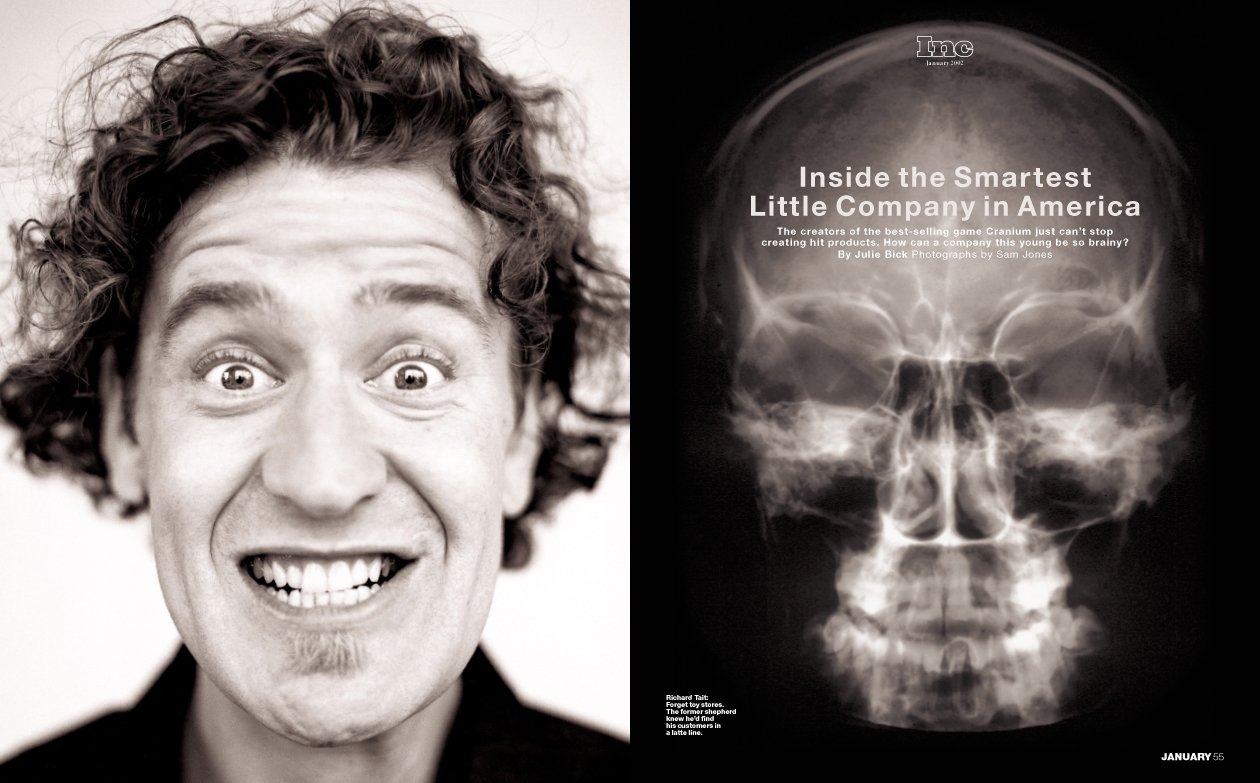
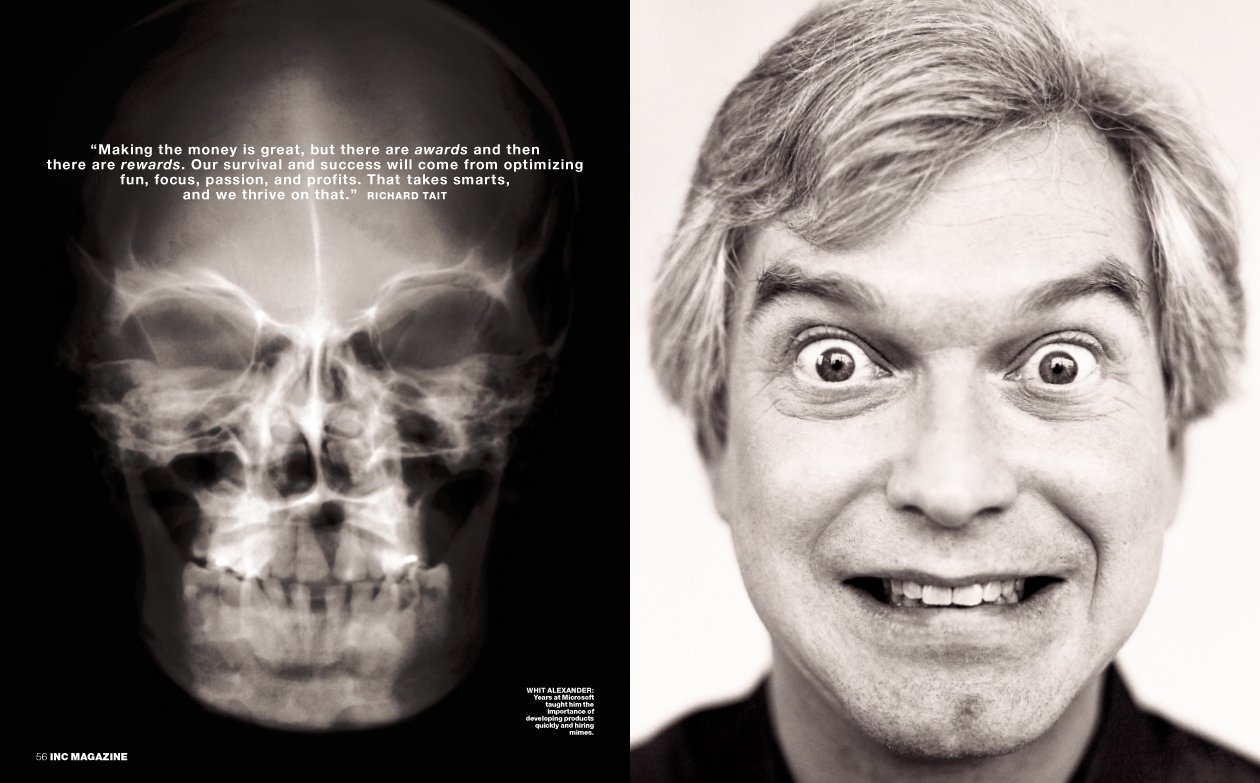
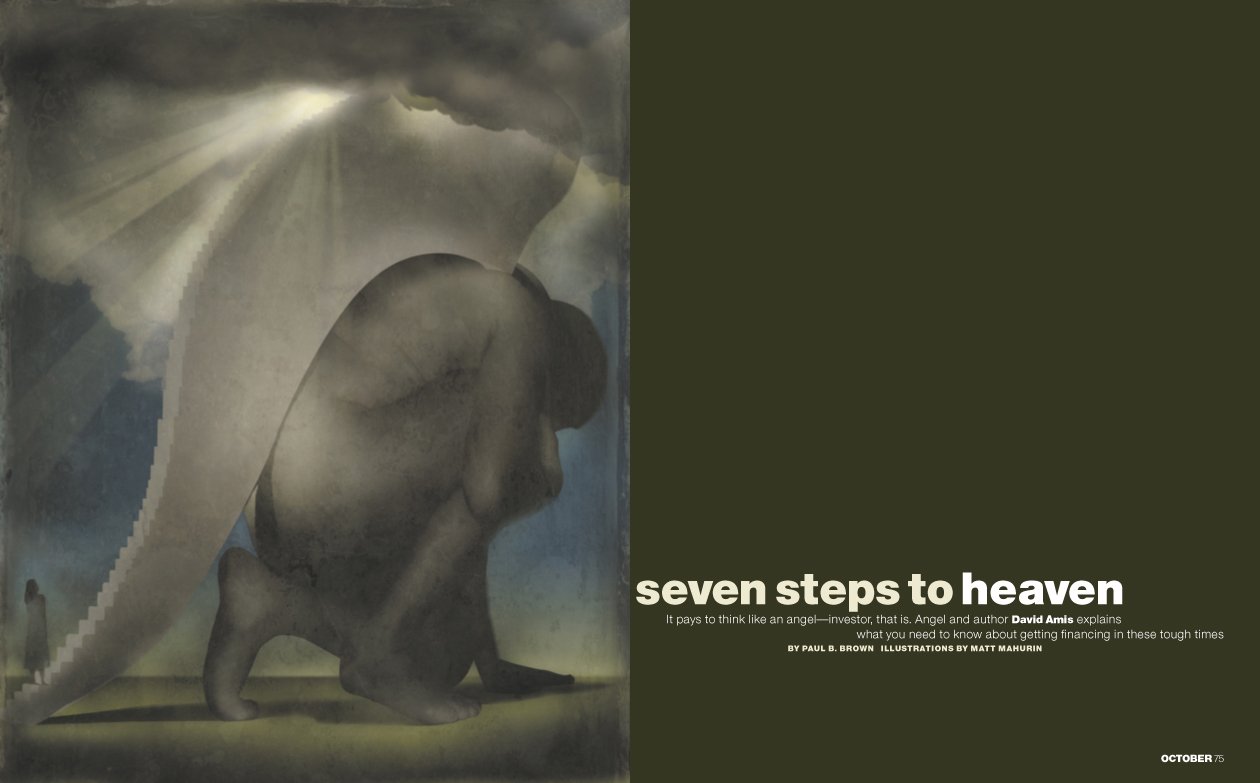
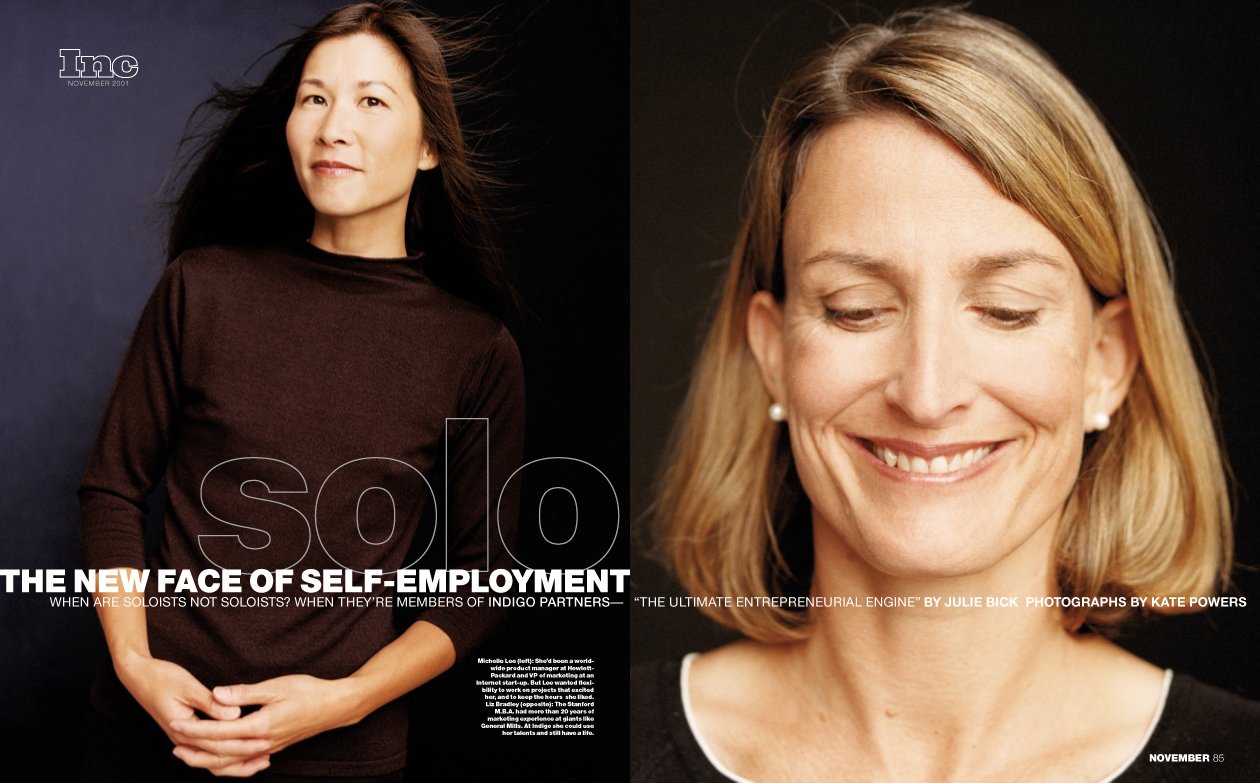

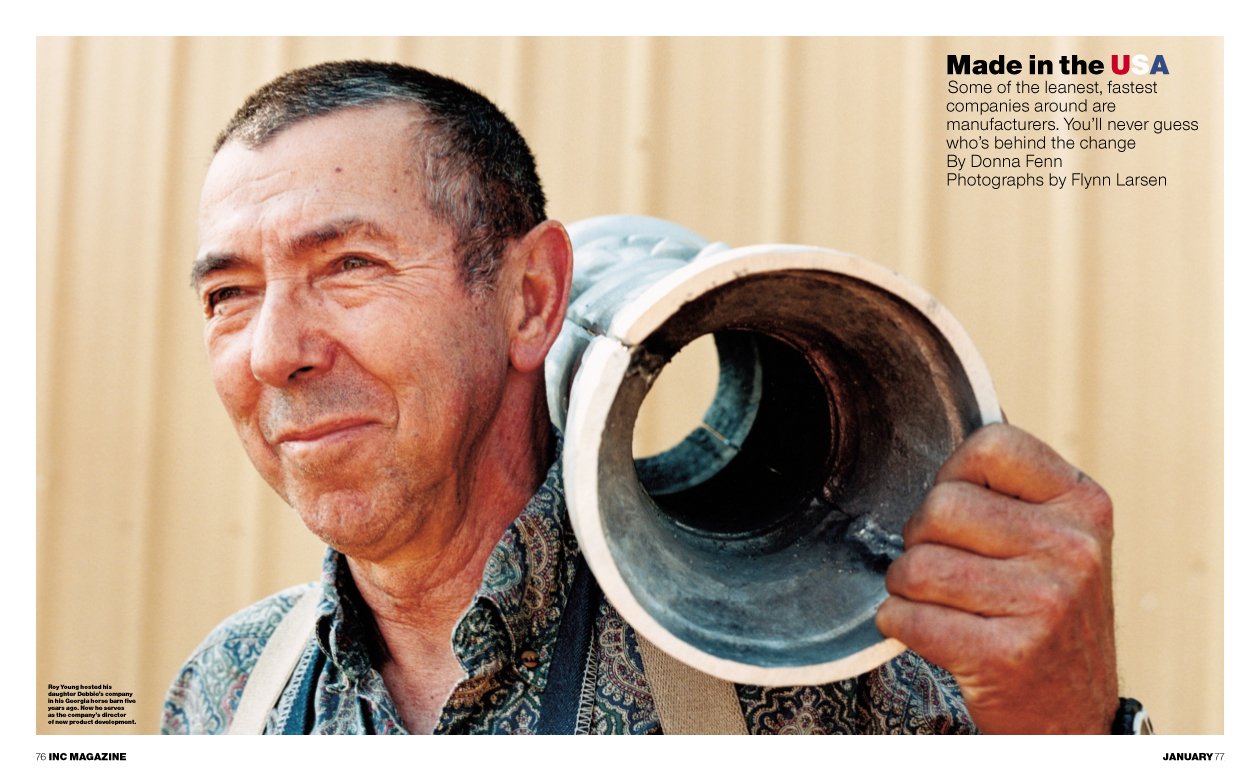
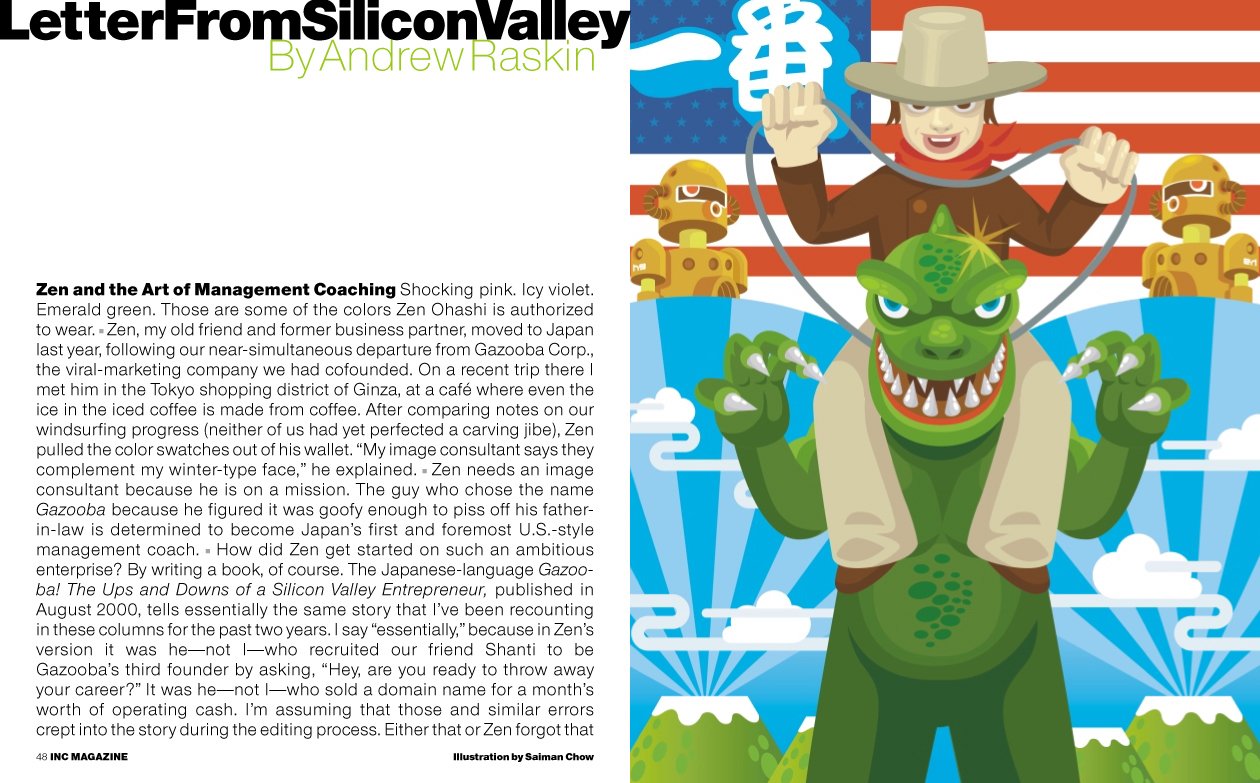

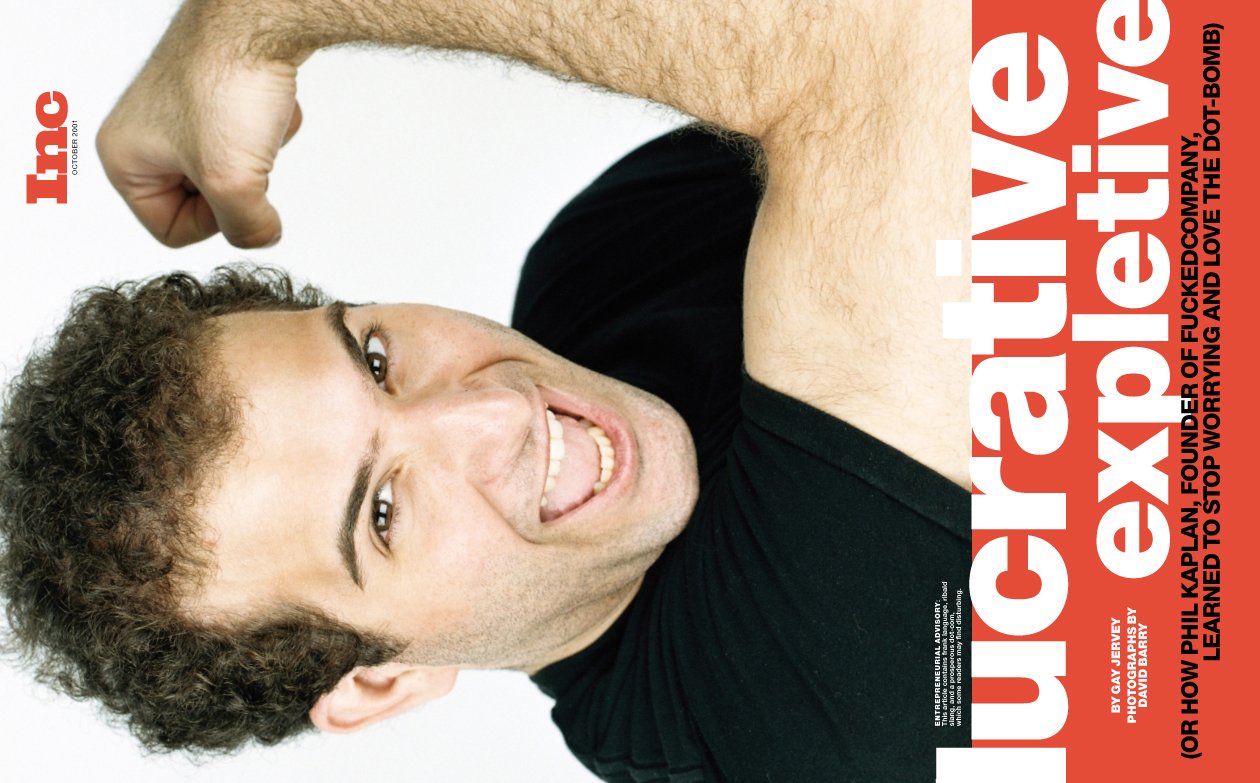
—
After 25 years in print, it was time for a new challenge. Enter Peter Drucker. Drucker was one of the world’s best-known and most influential thinkers and writers on the subject of business leadership and strategy. He was an early fan of Inc. magazine and reached out to its young editor. He confessed to Gendron that, like Inc., he had always viewed himself as an outsider and that Gendron should embrace that status. It would be an enormous advantage. He and Gendron bonded immediately.
George Gendron: I was really blessed that probably the most influential mentor I ever had, had nothing to do with publishing. It was Peter Drucker. And I was further blessed because Peter reached out to me rather than the other way around. And I say that in all humility, because I think what prevented me from having more formal mentoring relationships was insecurity. It was Well who am I to go and ask that legendary person to invest their time and energy in me? But Peter called me out of the blue one day and he said to me, “My daring young friend …” in his Viennese accent, “I just love what you’re doing. Why don’t we get together?” And so we did. And he sort of adopted me. And he really, as my mentor, taught what mentorship was really all about in a way and helped me overcome the imposter syndrome phenomenon that we talked about earlier.
And when we sold the magazine, Peter called me and he left me a wonderful, wonderful message about our legacy. I still have it on tape. And he said, “I have one bit of advice that I know you will follow.” And you have to hear Peter say it with his accent. He said, which means “you vill follow this.” And it was, “Don’t do anything full time for at least a year, and preferably, two.” And he said, “People have this image of you as the editor-in-chief of Inc., and so there are all these opportunities out there that might have been available to you that you’ll never know about because people would never talk to you. It’s like you have this dream job.”
—
Gendron took Drucker’s advice, and the phone started ringing. After considering a wide range of opportunities, Gendron accepted an offer from nearby Clark University in Worcester, Massachusetts, to teach a class he would call “The Art of the New.”
The course got rave reviews, and the administration at Clark made him another ‘offer he couldn’t refuse’: To create an Entrepreneurship and Innovation Center, not for business majors, but for liberal arts students. The first of its kind.
George Gendron: Then the trustees came to me and said, “What if you were to create an entrepreneurship and innovation center based on those principles embedded in your class, the art of the new.” And so I said, “Well, I don’t wanna … I’m not a higher ed guy, but I, I could design it.” And so I did and I gave them the design and then they called and said, “No, you designed it. You gotta run it.”
And so I did for three years, but man, was I a fish out of water. And you know, they didn’t really like me and I didn’t really like them. And I mean, you know, some of them, John Bassett, the president who recruited me, was a great guy, but he could never understand. He kept saying, “Wait, why don’t we do a management contract?” And I was like, “Nah, why don’t we just … we’ll keep doing this as long as I want you and you want me.” It reminded me of high school dating.
So that’s what I did. And I never thought of it as being an ‘indie’ or a ‘soloist,’ but I never had another job.
Patrick Mitchell: So you followed Drucker’s instructions …
George Gendron: … and really cool stuff came to me.
“All the stuff that we loved about design and editorial, creativity, and entrepreneurship. Now we’re being forced to be both entrepreneurs and creators, and that wasn’t the case in the past. And now it’s, you know, the old cliché. It’s well, ‘No, you have to go create a job for yourself.’”
Patrick Mitchell: Which brings us to the burning question: Is print dead?
George Gendron: Print isn’t dead. Bad print is dead. That’s been appropriated by others.
I think print isn’t dead. Mass-market print is dead. And by that I mean, I think that we are on the verge of seeing a whole generation of startups that combined the absolute best creative impulses of designers, and editors, and photographers, and illustrators, and carving out a mark. You’ve got to have both.
And that tension, that’s what New York taught me. People would often say, “God, why did Clay decide to do a weekly?” You know, “If he’d done a monthly, everything could have been better. There’d be more time.” And it was like, he just said, “No, the world’s moving too fast.”
This was back when, you know …
Patrick Mitchell: … Coming out weekly was actually part of the package.
George Gendron: Part of the package. It was essential. It might actually have been kind of the one thing they started with. And maybe that was not up for debate, right? We come out of a weekly, we know what you can do in a weekly. We know it’s habit forming if you come out weekly. People begin to build their Sunday mornings around that.
If you grew up in New York, God almighty, you would go to a coffee shop. And the big deal on a Saturday night was people would get their Sunday New York Times early. It was like, that was really cool. Or, you know, we were a Herald-Tribune family, and so it was like, yeah, that’s an essential part of the DNA. And I remember him occasionally saying things that again, I would overhear, because he didn’t give me these lectures, but he would say, “You know, things are moving so fast now. You come out once a month, people are gonna sit around and go, ‘Oh it’s the first of the month, where’s my New York magazine?’”
Is that prescient, or what?
So, in a way, you know your question that started this podcast, that’s a good question.
We’ve talked about how do you, over time, parse it and redefine it and restate it? You know, Is print dead? It’s a little bit like asking a question that nobody in their right mind would ask today, which is, Is television dead? Well, kind of. Network television seems to be dead. And yet, television, it’s never been more robust, and creative, and innovative, and finally attracting money.
Again, we brush up against the issue of scalability. So, I’m not being naïve, but nonetheless, you read these TV critics and they can’t keep up with stuff anymore. There’s a lot of good stuff out there. And when I say good stuff, here’s what I would love to see about print: What I love a about what’s going on on television right now is originality.
Not everybody would agree with me, but I’m a subscriber to AppleTV+, and I was really addicted to Dickinson. And, I know it was a show for millennials, but I’m a big Emily Dickinson fan. And what a great show! It was, “What would go on in Emily Dickinson’s mind if she were alive today?” It was brilliant in its originality. And that’s what we’re waiting for in print: The next print generation of people who are going to conceive of Dickinson.
A recent video featuring Gendron on the future of work.
Patrick Mitchell: So what do we do now?
George Gendron: That’s a great question. And the reason I’m hesitating is, I don’t have anything other than a very personal answer, which, I think, is my answer. Which is that, as different we are chronologically, you being younger than me, what we have in common is that we both were catapulted into a world where there were unbelievably interesting and exciting opportunities that already existed out there.
Somebody else had created them. It didn’t make any difference if it was Chris Whittle or Clay Felker or Bernie Goldhirsh. But they existed. And that’s not true anymore.
And so back then, you know, you go to a magazine like New York or Fast Company or Inc. and your opportunity and your challenge was How do I do my best creative work in an environment that already exists? Today, it’s How do I use my creativity to create that environment in the first place? And then I get to actually be creative in doing the work.
And none of us are really prepared for that. So it’s like this intersection of all the stuff that we loved about design and editorial, creativity, and entrepreneurship. It’s like now we’re being forced to be both entrepreneurs and creators, and that wasn’t the case in the past. But what made Clay Felker so unique was that it was very rare that an editor would start a publication. Usually it was a publisher.
And so now we’re put in this position where, I’ve said this before, in the past, you know, a lot of the opportunity that existed was manufactured by the system up until about 2000. And most of it existed in the form of jobs. And some of it existed in the form of projects. Hence, the mandate that we grew up with was go get a job. Meaning, the job exists. You go find it, you go get it.
And now it’s, you know, the old cliché. It’s well, “No, you have to go create a job for yourself.”
Well, I wrote a lot about that, always thinking it applied to somebody else, and now it’s like, “Oh no, no, no. That applies to us.” Which is go create a project that allows us to do our best work.
And that’s what intrigued me about getting together with you and Michael Hopkins for The Solo Project. That’s what it’s about at its heart: It’s about “How do you make your creative way in an economy where the work hasn’t been pre-manufactured?” You’ve got design opportunities. You’ve got to then go create, find funders, sponsors, clients, supporters. And when all that’s done, then you get to do what you really love. Man, that’s a different world. And I think we’re just in the earliest stages of that.
—
Gendron, a very young 72, is still hungry. His reputation and connections continue to open doors to opportunities for him, but that entrepreneurial itch continues to need scratching. So what is he focused on now?
George Gendron: I can tell you what I’ve tried and what hasn’t worked. I’ve tried to just create what some people might refer to as a “portfolio of work.” Doesn’t work for me.
I did a project for MIT and I really liked it, but there’s no newsroom. I started to throw myself into my photography. And what I love about photography is, a camera is what I call a ‘single focus object.’ And so there are no distractions, right? And for me as an editor, it’s non-verbal, and one of the problems you have as an editor is that there’s an endless stream that editors and writers can communicate to each other that ends up disguising more than it reveals. And then for photography, I don’t know about you, but I look at my photographs and once in a while, there’s one and I go, “That’s good.” It's like, no explanation, no debate. I don’t need a third party, but that’s not it.
And so I’ve been consumed lately with some personal stuff: buying a house. And that’s interesting. But I’m not done yet. And that’s why I feel like you, and I, and Michael talking about Solo is so important to me. And I’d be lying if I said, “Oh, it’s all about having this effect on these people. It’s all about this, or it’s all about that …
Patrick Mitchell: Give me the elevator pitch. What is The Solo Project?
George Gendron: If Inc. was a resource for entrepreneurs, people building companies, if Fast Company was a resource for thought leaders and change agents within established companies, Solo is going to be a resource for people who want to go off on their own, in what I consider to be the most elemental form of entrepreneurship, which is often a one-person company, two- or three-person company. ‘Human-scale capitalism.’ Where the motivation is to actually do the work yourself. Is to, you know … because the rewards of doing a good job in big companies are more direct reports, more responsibility, more administration, more organization. All that does is take you away from the work that you love in the first place.
Solo is about, “How do you get reacquainted with and build an economically-sustainable life around the work that you love in the first place?” And for me, I want to recreate the newsroom, which to start with, is you and Michael.
Together with a third partner, Michael Hopkins, a former editor at Inc. and MIT Sloan Management Review. Gendron and I have launched The Solo Project, a media and research brand focused on providing inspiration, ideas, tools, and community for the country’s most ambitious indie workers. For more information, visit TheSoloProject.com.
Back to the Interviews
Something More Personal
A conversation with illustrator Brad Holland (Playboy, Time, The New York Times, more).
A conversation with illustrator Brad Holland (Playboy, Time, The New York Times, more)
It’s 1967 and your train from Sandusky, Ohio, just rolled into Grand Central. You’ve got a suitcase in one hand and your portfolio in the other. You exit the station and take a right, uptown, before realizing it’s the wrong way. (It’s ok, you’re not from around here). So you turn around, and head down to 223 East 31st Street, the studio of the celebrated designer Herb Lubalin, who was about to give you your first assignment in the big city.
And so begins the career of legendary illustrator Brad Holland — a 50-plus-year career that put him on the Mt. Rushmore of contemporary American illustration alongside Milton Glaser, Edward Sorel, Ralph Steadman, Seymour Chwast, and the recently-departed Marshall Arisman.
When you begin your career in the Summer of Love, at some point the conversation is gonna turn to sex. After turning in his first piece to Lubalin’s Avant Garde, a magazine with mild sexual themes, Holland’s next few assignments came from magazines who liked it a little rougher: Screw magazine and The New York Review of Sex, before finally landing a steady gig at Hugh Hefner’s Playboy.
As Playboy’s legendary art director Art Paul would soon find out, Holland wasn’t like other illustrators. Inspired by Gary Cooper’s Howard Roark in the movie The Fountainhead, who battled against conventional standards and refused to compromise with the establishment, Holland was not willing to execute the spoon-fed instructions given by magazine art directors. He revolutionized the illustrator-for-hire dynamic. It changed everything.
In this episode, Holland talks with our editor-at-large and esteemed design critic, Steven Heller, the co-chair of the MFA Design Department at the School of Visual Arts in New York, an Art Directors Club Hall of Famer and AIGA Medalist, who also calls Holland one of his oldest friends and mentors.
They talk about their early days together, what it’s like to tell your mother that you’ve finally sold a cover illustration—to Screw Magazine, how to say NO to a creative director, how to crop an Ayatollah, and—spoiler alert—how to avoid getting mugged in Alphabet City.
Holland hit the big time when he began illustrating a recurring feature for Playboy called Ribald Classics.
Steven Heller: I want to start by saying that Brad is the oldest friend I have on the planet (that I know of), and Brad came into my life at just the right point. He became my teacher, my mentor, my role model. And we haven’t really talked an awful lot in the last 20 or 30 years, so this is a great opportunity to talk about what we’ve been through in that amount of time and particularly how his work not only affected me but affected the magazine business in general, of which I’ve been a part.
So the first question I have is more of a “conversation piece.” I remember when you got off the bus from Fremont, Ohio. It was one of those places…
Brad Holland: … Beyond the Hudson.
Steven Heller: … Beyond the Hudson. And we met when you came and answered an ad for a magazine that I was doing and didn’t know squat about magazine design, but you had already plunked yourself down in New York City. And your first illustrations were in Avant Garde with Herb Lubalin as art director.
And just to start off, I’d like you to recall what that period was like for you.
Brad Holland: The first thing is, it was the so-called “Summer of Love.” Remember? Everybody was supposed to be going to San Francisco with “flowers in their hair.” I, apparently, caught the wrong bus because I came east and I had no flowers whatsoever in my hair. And I did come, I’d come a long way…. I had left my job in Kansas City. I’d been working at Hallmark.
Well, thank you for the kind words, first of all. I didn’t mean to be impolite. I didn’t want to cut you off at the time.
Anyway, I had been working in Kansas City for two years. I had left Ohio when I was 17, when I graduated from high school and went to Chicago.
I’d never been to a big city before, so I didn’t exactly know what I was going to do when I got there, but I figured I’d find out once I got off the bus in Chicago. I worked there for 18 months and then I got a job at Hallmark where I became a supervisor and did a lot of book illustrations, which gave me a good portfolio.
And I just quit my job and came to New York with absolutely no idea of where I was even going to stay the first night. I didn’t know anybody. I stopped off in Ohio. My grandfather just had his leg amputated. And so I spent a month there driving him up to Toledo so he could learn how to walk with his artificial leg. Then I caught the bus to New York.
Steven Heller: But did you have a sense of what the good magazines were?
Brad Holland: Oh no. The best thing you could do about magazines was just go to the newsstand and look at them and see which ones look like they might use me. The thing that made a difference in my case was Herb Lubalin was art directing a funny magazine called Fact in those days. And Fact was one of Ralph Ginzburg’s fairly eccentric publications. He had published Eros back when I was working in Chicago, and I don’t remember how many issues it had—it was a quarterly, and it has a hardcover, kind of based on Horizon magazine. And he had some good people, except that he decided to be clever. Since it was a magazine designed around erotic art, he decided to mail it from Blue Balls, Pennsylvania, and Intercourse, Pennsylvania. And he sent the subscriptions out from those two cities and the government got him for pandering.
“I had been working in Kansas City for two years, and I just quit my job and came to New York with absolutely no idea of where I was even going to stay the first night. I didn’t know anybody. I stopped off in Ohio. My grandfather just had his leg amputated. And so I spent a month there driving him up to Toledo so he could learn how to walk with his artificial leg. Then I caught the bus to New York.”
Steven Heller: Yes. Pandering was the charge.
Brad Holland: He had used the US mail to pander. And that closed down the magazine. His second one was Fact, which was kind of a combination of Consumer Reports and The National Enquirer. It was full of articles about how Coke was going to give you cancer and so on. But the one thing about it was Lubalin was such an adventurous art director that he would design every issue using one artist to do black and white artwork for all the articles.
And I started following this because my friend Jim Parkinson had told me about it at Hallmark. Parkinson is a great lettering artist. And Lubalin of course used typography beautifully. So Jim was the one who told me about Fact, and I began following it.
Lubalin used type beautifully in Fact, but he also got artists to do single issues, and they would do everything. And a lot of artists would just paint pictures and then they’d be running in black and white. But there was one issue just before I came to New York, it was done by Etienne Delessert and used his ink drawings beautifully. And so I had, in my mind, when I got to New York, I was going to see Herb Lubalin, and I didn’t waste any time. I got off the bus. I mean, I got off the train rather. I took a bus to Sandusky, and then caught a train from Sandusky to New York. Anyway, I got off the train and put my suitcase—I had a suitcase and a portfolio—put my suitcase in a locker. They still had lockers in Grand Central Station in those days. And I went to a telephone booth and called Lubalin’s office.
They wouldn’t look at my portfolio, but they said I could drop it off. So I dropped it off. I went out on the street. I didn’t know New York at all. Didn’t know anybody. I found myself on 42nd Street and I started walking one block, and I was on 43rd Street. So I knew I was walking in the wrong direction. I was headed for, I think it was 31st. So I just went in the other direction, walked on down until I found the place, dropped off my portfolio, and went down to Greenwich Village. I had located it because I’d seen a cartoon with a hippie standing on the corner of Sixth Avenue and Eighth Street, so I knew roughly where Greenwich Village was. And I got something to eat. I went back to the studio, went back to Lubalin’s office, and he had a job for me, except I had to do it in two days.
Magazines designed and art directed by Herb Lubalin, who was an early fan of Holland’s work.
Steven Heller: And you had no place to live.
Brad Holland: Well I asked him, and yet I didn’t have any art supplies either. So I asked him where I could find an art store and he said, what, neighborhood do you live in? And I said, I got a locker at Grand Central Station.
And he said, “How long have you been in New York?” And I said, “What time is it?” I’d been in New York for four hours at that point. I found a hotel in Times Square, and I went to the Walgreens that was on the corner of Seventh Avenue and 42nd Street—that famous old Walgreen’s that you used to see in the movies.
And I bought a spiral notebook, to use for paper. And I got a couple pencils and a plastic sharpener, and I did sketches. I turned in sketches the next day and finished art two days later. So I had my first job.
I have to say though, that Fact had gone out of business because Ginzburg got sued again, by Barry Goldwater. He had hired psychiatrists to analyze Barry Goldwater, so called, since none of them had ever met Goldwater or treated him or analyzed him. They were just giving their political opinions. And Goldwater sued him. That’s the reason that there is the so-called Goldwater rule I guess.
Steven Heller: And he won.
Brad Holland: Psychiatrists aren’t supposedly allowed to give their opinions about somebody’s mental health unless they’ve actually talked to the person and analyzed them. At any rate, what Lubalin told me was he wanted to publish a portfolio of my drawings because I had this whole portfolio of unpublished drawings that I had done while I was at Hallmark. And he said, “But you better talk to Ginzburg about that. And you better talk to him fast, because he’s leaving for prison next week.”
So I got an appointment to see Ginzburg, and he was indeed going to Allenwood, and he was looking for someone to edit his new magazine, Avant Garde, which is the publication that I did my first job for. Since I wasn’t ready to edit Avant Garde, he wasn’t particularly interested in me. And I said goodbye to him, and I never saw him again actually.
—
Steven Heller: When you finally got a place to live, it was on the Lower East Side.
Brad Holland: The first place was the Collingwood Hotel. I worked for two weeks in Times Square, and then I moved to the Collingwood Hotel on 35th Street, which is Little Korea now. But it was a hotel they said you could—this was great—you could rent it by the day or the hour. And you didn’t have to have any luggage.
I had a room that had been used by a prostitute before. And for the first month that I lived there I got for a discount because the lock on the door didn’t work. So every night I would push the bed up against the door—in case anybody tried to break in, I figured that would alert me. And I would feel all these calls for the prostitute who had had the room before me.
However, it did give me a telephone. There was a phone strike on in New York. And if I had gotten an apartment, I couldn’t have gotten a phone. So for six, seven months, I worked out of that hotel room. I went down to 23rd street and I got a great big drawing table. It was five feet by about four feet. I carried it on my back, back to the hotel. I didn’t have money for a cab, so I carried it in two pieces. I carried the drawing table on my back from 23rd Street to 35th. I went walking into the hotel lobby like some sort of laborer with this big, giant—it looked like a door, I think to most people—on my back. I got into the elevator, carried it up to I think the ninth floor I think is where I was living. And then I went back and got the stand and carried it back separately. So I had a drawing table and got some lights, and I was in business.
Steven Heller: And you were taking your work around the city?
Brad Holland: Yeah. I was taking a portfolio out every day. I was meeting an old girlfriend—or at least a woman I had dated in Kansas City—she came here to visit me for a week. She stayed at the, gosh, what was that an old hotel on 32nd Street?
Steven Heller: The Martinique?
Brad Holland: It was an old, abandoned hotel that I think had been a big headquarters for the communist party once. And she was a very elegant college graduate. So I think I’d set her up in the wrong hotel as it turned out, but anyway, it was close to the Collingwood and we, spent the week together just traipsing around. This was the height of the 60s. It was the Summer of Love. The Beatles had just released the Sergeant Pepper album.
Everything was kind of a hippie culture… suddenly, you know, the word “hippie” had emerged just that year. The big song that year was A Whiter Shade of Pale, still probably the best song out of the 1960s, as far as I’m concerned. So it was a great week and we decided to meet again at Christmastime in Chicago, where I had some friends from when I worked there. So I decided I’d show my portfolio at Playboy while I was in Chicago. And that was how I got what turned out to be a 30-year run with that magazine.
Steven Heller: So you met Art Paul at that point?
Brad Holland: I went to Chicago and I visited my old employer, who I worked for for 18 months back when I was a teenager. And somebody there said, “Playboy’s looking for work like this.” So I took my portfolio up and dropped it off. And the next day I came back, and this beautiful receptionist said, “Mr. Paul would like to see you.”
So Art invited me in and asked me if I’d like to do work every month. And he said it was the most original portfolio he had seen in years and wanted to use me in every issue. Suddenly, you know, just months after going freelance, I was as secure as I needed to be for that stage of my life.
Holland’s portrait of Playboy art director Art Paul, and the sketch and finished versions of one of their first collaborations.
Steven Heller: So then you moved down to the Lower East Side?
Brad Holland: Seventh Street and Avenue C.
Steven Heller: It was an apartment that basically had hot- and cold-running people through it at all times. In terms of magazines, where did you want to be? What did you want to do for them?
Brad Holland: That would take longer to describe, and no one would believe it if I did. What I was looking to do was not magazines. I wanted to do books of my work. I really wanted to do books the way people do record albums. I wanted to just do a series of drawings and take them around to a publisher. It would publish them as a book. Well, that turned out to be a pipe dream, and I needed magazines to do work. So my concept then became, I found out, in fact, I found it out with my first job at Playboy. Art Paul had his assistant George Kenton call me with an assignment—it was a PG Wodehouse article. And I was so excited to get the work. It’s going to be a double-page spread. I was still living in the hotel at those days. This was just about a month after I’d shown Art my portfolio, right after Christmas. And George said, “We’ll send you your idea.” And I thought, “What do you mean?” You’ll send me my idea.? I thought artists did their own ideas. And he explained, no, that’s not the way it works. “We at Playboy, we come up with all the ideas and then we send them out to illustrators. We pick the illustrator whose work matches the kind of idea that we have.”
So I turned the job down.
I said, “If you ever can’t think of an idea, give me a call and I’ll do my own ideas.” So I, I turned the job down and then I started kicking myself because I was hoping that maybe if I turned it down they would let me do what I wanted to do. And I was badly mistaken. So for the next couple of days—it was January of ‘68—I started just walking around New York, kind of kicking myself for having overplayed my hand. And damned if two days later, Art Paul called me and he said, “Brad, I’m so disappointed. I hear you turned down our job.” So I thought, well, here’s my chance, now I can just say, well, yeah, send me my idea and I’ll do whatever you want.
And instead I did it all over again. I said, “I only want to do my own ideas.” You know, I said, “Well, what’s the point of doing ideas if you don’t do your own, or something like that, and Art explained why. He said “We can’t get illustrators to do the kind of work that—most illustrators want to do very literal work. And we can’t find people to do the kind of ideas that I want to see in the magazine.” And he said, “Do you think you can come up with a better idea than my staff?” And I didn’t know what the hell to say. Finally, I just said, “Well, I don’t know if I can do anything better, but I know I can do something more personal.”
And there was silence on the other end of the phone for just a fraction of a second, and Art says, “That’s a great answer, Brad. Go ahead and do something more personal.” And so I did, and I got my first job at Playboy. It was scheduled for the June issue. And in May I moved to the Lower East Side, counting on Playboy now for regular work every month.
And nothing happened. The magazine came out and there, the article wasn’t in it, my picture wasn’t in it. July came. Same problem.
Steven Heller: This was for the Ribald Classics?
Brad Holland: No, this was for the article by PG Wodehouse. It was an article about how he couldn’t get good servants any longer. He’s worried about getting good servants and I’m living in a room at a hotel that a prostitute found to be out of her league. So yeah, I wondered what had happened to the job in Playboy. I thought, well, surely they didn’t like it or something, They’re not going to run the thing. And I still couldn’t get a phone because the phone strike was on. So I went to a payphone.
I’d walk up to Times Square every day from 11th Street and Avenue C. They had a bank of payphones up there with big phone books that you could use. And I just went up there and I’d call every day. I’d make an appointment to show a portfolio, and then anytime anybody seemed interested in work, I’d have to kind of call them to say, “Any jobs for me today?”
It was very embarrassing, but the phone strike didn’t end until August. So I was, for three months, I was without a phone. And at one point I was so broke that I scrounged up five cents to go buy a candy bar, except the price of candy bars had gone up to I think to seven cents or something. And I was walking around the street, I found a $20 bill on the street, and boy did I live off that $20 bill for the next two weeks! I bought eggs and yogurt. And then all of a sudden, I called Playboy one day and they said, “No, no, no, Art loves the piece, but instead of running it in June, the way we schedule, we want to make a big issue out of it, and we want to run that along with a picture of you, in the December issue, and then start the Ribald Classics right after that.”
So I toughed it through the summer. I did a job for Redbook.
Steven Heller: Was that done for Bob Ciano?
Brad Holland: Bob Ciano gave me a job at Redbook I got enough money to buy a bed, and on the way home to the hotel I got followed. Most people think muggings occur in the middle of the night or something, but they don’t. They follow people home. And they get them in the vestibule of their building between one door and the interior door.
So I went in and, you know, stupidly, I collected my mail and these two guys come in with knives and they had me cornered in the vestibule and just automatically I tried to fight with them and I got my arm cut. So I learned, to look both ways before I entered the building after that, and never to enter a building. If anyone was 50 feet either side of the door. I never collected mail on the way in any longer. I just ran in and went to my apartment. But any rate I did manage to buy a bed. It was a used bed. I had a pair of box springs and a mattress, but now had a drawing table, lights, an air conditioner and a bed.
So what more did I need?
Steven Heller: You needed more clients, I suppose.
Brad Holland: I had a few clients, I was picking up work. I had already done work for do Gent, which was kind of an imitation of Playboy. There was Gent and what was the other one?
Steven Heller: There was Dude and Gent.
Brad Holland: Right. I don’t remember the art director’s name, but I did a very nice picture for them. $50. And I was doing work for Evergreen Review. I had started doing work for Ken Deirdorff. Ken was great. He had already given me several assignments, and they usually paid about $150 too, and I was doing some book jackets for Random House. They paid $150. I was doing work for Bob Sculladery. I went in and took him my portfolio, but I didn’t have any type on my work. In those days we designed our own jackets. We had to order the type. We got $150. We had to do three color separations, which meant doing three black plates and designating the colors to be used on each.
And we had to do our own type, and we paid for the type out of our own pockets. And since I had gotten my type connections from Lubalin, I was using the Composing Room, which was the best type house in town, but probably the most expensive as well. But I had a really nice catalog as a result of it.
So Sculladery had said, “Well, how do we know you can use type? “And answer was, “Well, probably I can’t,” but Jim Parkinson in Kansas City had kind of schooled me to the fact that there were different typefaces. He showed me this one has feet and this one doesn’t, and he told me not to mix sans serif with this, and not to mix Caslon with Bodoni, or something. So I had a kind of rough idea about type. I figured I’d just teach myself the rest.
“I’d seen ‘The Fountainhead’ while I was in high school, and Gary Cooper in that movie said that he would work for anybody as long as they let him do what he wanted. I saw that movie and I thought, ‘You know, that sounds right. That sounds about right to me.’”
Steven Heller: So, how did your strategy work? You would always say that you wanted to do your ideas, not other people’s ideas. There was a certain Ayn Rand quality to it.
Brad Holland: Yeah. Directly from Ayn Rand. I’d seen The Fountainhead while I was in high school, and Gary Cooper in that movie said that he would work for anybody as long as they let him do what he wanted. He designed garages for people in gas stations. I saw that movie when I was in high school and I thought, You know, that sounds right. That sounds about right to me. It’s right up my alley.
Steven Heller: And that’s what I thought when I met you and you announced that that was your strategy and preference. And we met at a friend’s house on East 10th Street, and his mother was an Ayn Rand-ist.
Brad Holland: Oh was she? I didn’t know that.
Steven Heller: She used to go to the Nathaniel Branden Institute every week and would take me with her.
Brad Holland: Oh, did you, go to some of those?
Steven Heller: I did go to some of those. So aside from the movie, and aside from the book, I got a mouthful of what you were doing.
Brad Holland: Ayn Rand was still around in those days. She had a half-hour program on WBAI in the mornings.
Steven Heller: So you were an iconoclast, among other things.
Brad Holland: I was just a Boy Scout from Ohio.
Steven Heller: You were a Boy Scout from Ohio, but you go in with demands to the art directors and editors. And you would tell me often about encounters you would have with the editors.
Brad Holland: [Laughs] They thought I was being arrogant. I was just trying to be—listen, here’s the deal: I was offered a scholarship to Ohio State in high school as a writer, and my high school English teacher, who had recommended me from, was very disappointed that I didn’t go into writing.
So I figured when I was in Chicago, see, I thought, when I went to Chicago, that artists were really artists. And they did what they wanted to do. I didn’t realize that the whole business of art broke down into fine art and commercial art. And if you did fine art, you couldn’t do anything realistic any longer, because that was—those were the days of abstract expressionism.
Picasso had said that after me, there can be no more realism because you can make wine from grapes, but never the reverse. And then along came out Reinhardt who was painting these black-on-black paintings and saying he was the ultimate artist. He had taken art as far as it could go.
And it couldn’t go any further. He had solved the problem, all the problems that had bedeviled artists for centuries, it was all done. It was all over. And the only thing now was to politicize art and start making art responsive to political needs. He didn’t go that far. That was what followed him.
My idea when I came to New York was if I couldn’t do what I wanted to do as an artist, I’d go into writing and do it there. And I just decided to make a kind of a make-or-break logic. I wasn’t trying to be an egotist. I just figured if I couldn’t do the kind of work I want to do, I’d rather do something else.
A selection of pieces from Holland’s first portfolio.
Steven Heller: So when you went to The New York Times…
Brad Holland: … I didn’t go, I was taken. There were three art directors who were responsible for what I wanted to do, making me successful. Herb Lubalin was the first, but I never worked with him again. Art Paul was the most important because he gave me this high profile in the highest-paying magazine in the world. I was getting a thousand dollars a month from Playboy, and that was 1968 money. I looked it up a year ago or when I wrote an article about it—it would be $5,000 in today’s money. So I was already getting the equivalent of $5,000 a month for doing one picture. And it was in a—you know, Playboy had a huge circulation in those days, I think it was over 6.5 million—so I had a huge circulation and a popular magazine, being well paid for it. And I never had to show them a sketch for any of those Ribald Classics ever. They sent me a job usually about three days before it was due. I’d do it in three days and send it back. And that was the way we worked for 20 years. It was a great relationship. At one point, Art began to disapprove, though. I began to start doing work that was a little too cartoony for Art’s taste. And he said so. And he rejected two pictures that I did. He was talking about getting rid of me at that point, if I wanted to keep doing pictures in that manner. And I said, “Well, no, I don’t want to do them in that manner that badly.”
So I went back to doing pictures the way I had been doing them. And he was right. Looking at those couple of exceptions now, I was trying too hard to fit into the hippie culture that I had become part of when I met you, because you were art directing—we met you were already art directing The New York Free Press. And I’d seen the ad. I was looking to get involved in the hippie papers and I had The Village Voice, and I saw that ad that you would run. I called you up, and you told me to meet you at this apartment. So I got there.
And here were a bunch of kids who had just graduated from college or from high school acting really cool and kind of eyeing me like when I used to catch the bus east from Arkansas. I would get on a bus that had come out of Los Angeles and switched—the Ozark Stages would connect in St. Louis. But by the time I got on the bus, it was headed east from California, and everybody on the bus had been on board for like a day and a half. They all knew each other. And I’d get on in St. Louis and everybody looked at me like the new kitten in the litter. And that was kind of the way you and your pals looked at me that day when I showed up with this big portfolio and all these pictures.
Steven Heller: Well, I think it was the largest portfolio anybody ever saw.
Brad Holland: But the pictures were big. I needed a big portfolio. So at any rate, yeah, we did that job. We did your publication, the one that you did with your bar mitzvah money. And in the middle of it, your art director friend quit. And you and I ended up on the floor of my apartment pasting up ads. I tried to find a bunch of illustrators to do work for it. And I said I was going to just kind of bring some people into it. I got some friends and I said, “We’re doing this magazine and I just want you to do whatever you want to do.” Well, at this time, I already had the idea that we would get pictures that were separate from the articles.
I mean, this was the reason I wanted to get into the hippie press: Every magazine that I was showing my work to wanted to art direct me. And I figured, well, maybe the hippie press will be different because you know, everybody’s making it up as they go along there. And if I get in there, maybe I’ll meet some young people who will become art directors, and then we can work this thing out. You guys were more my age than the art directors I was working for. Most of the art directors I was working for were in their thirties or forties, and you were just a few years younger than I was. So I figured I would be more with people my own age, if I got into the hippie press. Because I was still 23 when we met.
Steven Heller: But you were working for glossy magazines.
Brad Holland: Yeah, I had worked for Redbook by then. And Redbook was a big magazine and one of the highest-paying publications. Redbook and McCall’s were run out of the same office. And McCall’s was that place where Bernie Fuchs was making a huge splash in those days, doing all those Kennedy articles and so on. McCall’s was one of the highest-paying magazines in the world as well. And Redbook was kind of the little sister publication. But they were high quality.
“I wanted to work for Walt Disney, you know. I’ve written about it. I applied for a job at Disney when I was 16, got rejected when I was 17. And then I figured I’d have to go to plan B. Unfortunately, I didn’t have a plan B, so that’s when I got on the bus and went to Chicago and figured I’d just make it up as I went along.”
Steven Heller: So was illustration for you a “quintessential” art?
Brad Holland: No different than I would’ve treated fine art if I’d gone into fine art. I had no art education when I went to Chicago. I wanted to work for Walt Disney, you know. I’ve written about it. I applied for a job at Disney when I was 16, got rejected when I was 17. And then I figured I’d have to go to plan B. Unfortunately, I didn’t have a plan B, so that’s when I got on the bus and went to Chicago and figured I’d just make it up as I went along. I did apply for a job at Disney one more time while I was in Chicago. Got rejected a second time.
So then I figured I would just go into a fine art, and that was when I found out that fine art was supposedly a very different thing. If you were an illustrator, you weren’t doing anything important. If you were a fine artist, anything you did was important. This was the era of the topless cello player. Remember Charlotte Mormon? I think she began playing the cello topless, and by the time she was finished, she was playing the cello naked. But this was the era of topless, cello players, and self mutilators. And I figured that if this is what art is all about, I don’t want anything to do with it. And in the meantime, I had gone beyond Norman Rockwell, which is what I thought of illustration.
In Chicago I had the great Chicago Art Institute where it was free admission during the day, and I worked downtown so it was only about six blocks from there. I’d walk over during lunch hour, and lunch hour could last all day because we didn’t have much work at the studio. We’d usually have to do paystub jobs at night. But during the day, I’d wander through the Chicago Art Institute. I saw Rembrandt’s etchings, which I thought were ink drawings. I didn’t know what etchings were. I saw Edward Hopper’s Nighthawks, which I didn’t like. I thought it looked unfinished. I didn’t realize he would later be one of the biggest influences on my painting style, but it began there. I saw Winslow Homer, whose paintings I’d seen in encyclopedia. At that age I couldn’t have told Michelangelo from Leonardo. I was that ignorant of the fine art world.
Steven Heller: I seem to remember you were in the Brandywine School as well.
Brad Holland: Yes. I was very big on the Wyeths. Although I liked N.C. more than Andrew, and he was a big influence.
Steven Heller: So take us to the Times, because that is where…
Brad Holland: … Well, it began with you because you were doing The New York Free Press when it morphed into Screw, and you were Screw’s first art director. So how did you feel when you learned that the Free Press was folding, or it was in decline at any rate, and Goldstein and and what’s his name, Jim Buckley, were starting the sex paper of which I have to say was, this was predicated on the fact that there had been a Supreme Court ruling about a movie, a Swedish movie called I Am Curious Yellow, that showed intercourse on the screen for the first time. And the Supreme Court ruled that it wasn’t pornographic. So what happened at the New York Free Press that got you into becoming a pornographer?
Steven Heller: Being 17 and not knowing any better. I wanted to do cartoons and you wanted to publish in the Free Press, and I told you that only I could run…
Brad Holland: Yes, you were the only artist to be in the Free Press.
Steven Heller: But then we started the New York Review of Sex, and you started doing drawings that looked very much like the Ribald Classics, except with a little more genitalia.
Brad Holland: Yeah, with quite a bit more. In fact, some fairly large. You had asked me what I wanted to do with the new magazine. Steve’s being modest. Steven art-directed Screw until the Free Press folded and what the Free Press had become—which was basically a neighborhood, leftist newspaper—kind of morphed into the New York Review of Sex, which to give it its true name was the New York Review of Sex & Politics because it was basically the New York Free Press with what they used to call “tits and ass.”
So it was masquerading as a sex paper, in which it ran articles about brothels in Saigon—that was a way of getting into the Vietnam war articles. And then there weres coverages of gay bars. This was before the Stonewall, in fact Dan Mauer and I went down to the Stonewall one night before the riots to get in. And we were supposedly doing an article. I was going to do some drawings, Dan was going to write the article. Dan had just come back from Vietnam. And the two of us went to the Stonewall one night to check in and spend a little time in there. I don’t know whatever became of the article. I never did any drawings. But yeah, I did drawings for the New York Review of Sex & Politics.
When you asked me what I wanted to do, I said, “Well, just give me a quarter of the editorial page.”
And you said, “Well, what would you do with it?”
And I said, “Well, I’ll do whatever.”
And you said, “Fine.”
So that was the way we started that one. You were the second in the league of art directors who just let me do exactly I wanted to do. And I did it for, I think, what were you paying? Fifteen bucks?
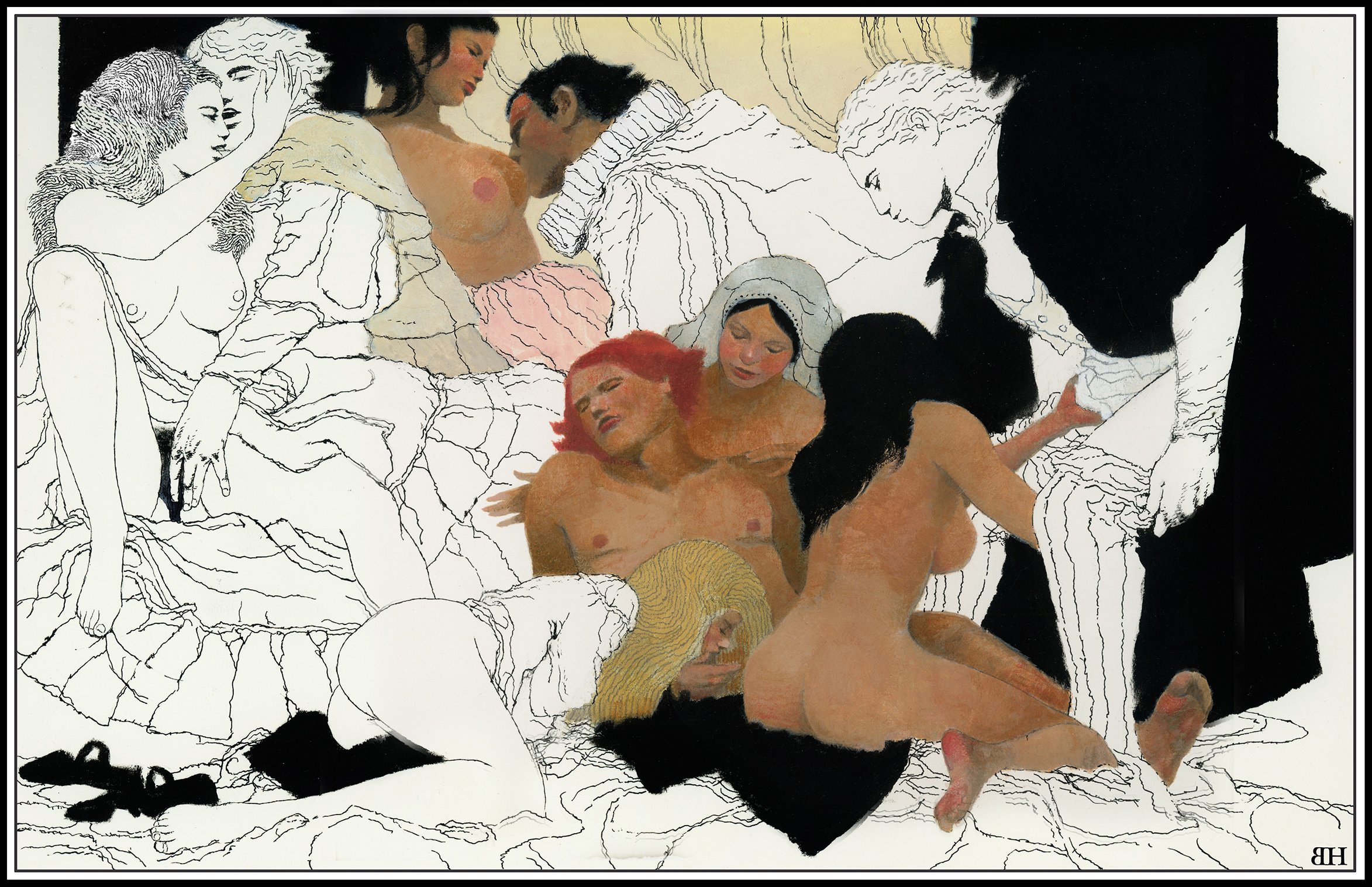
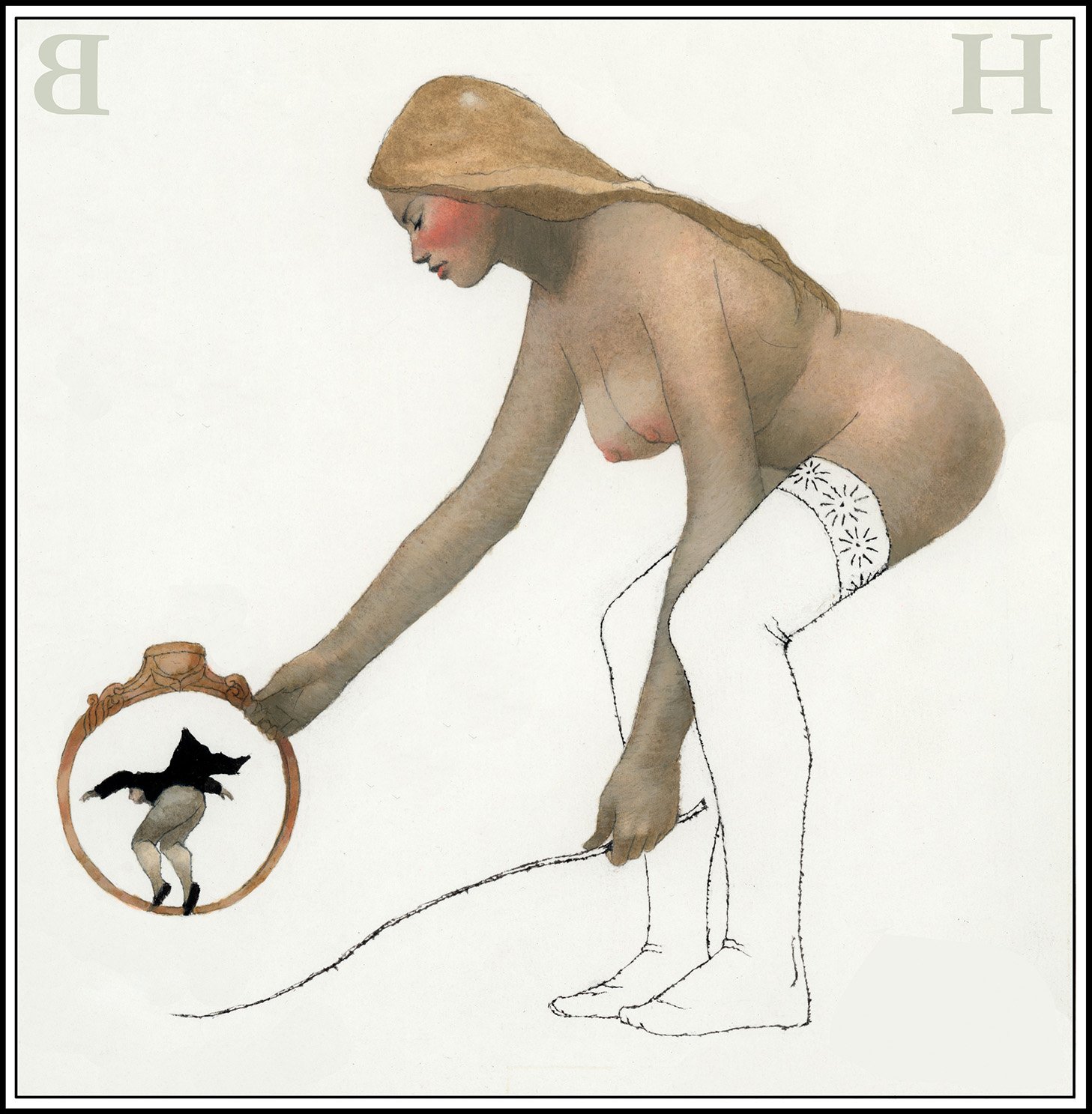
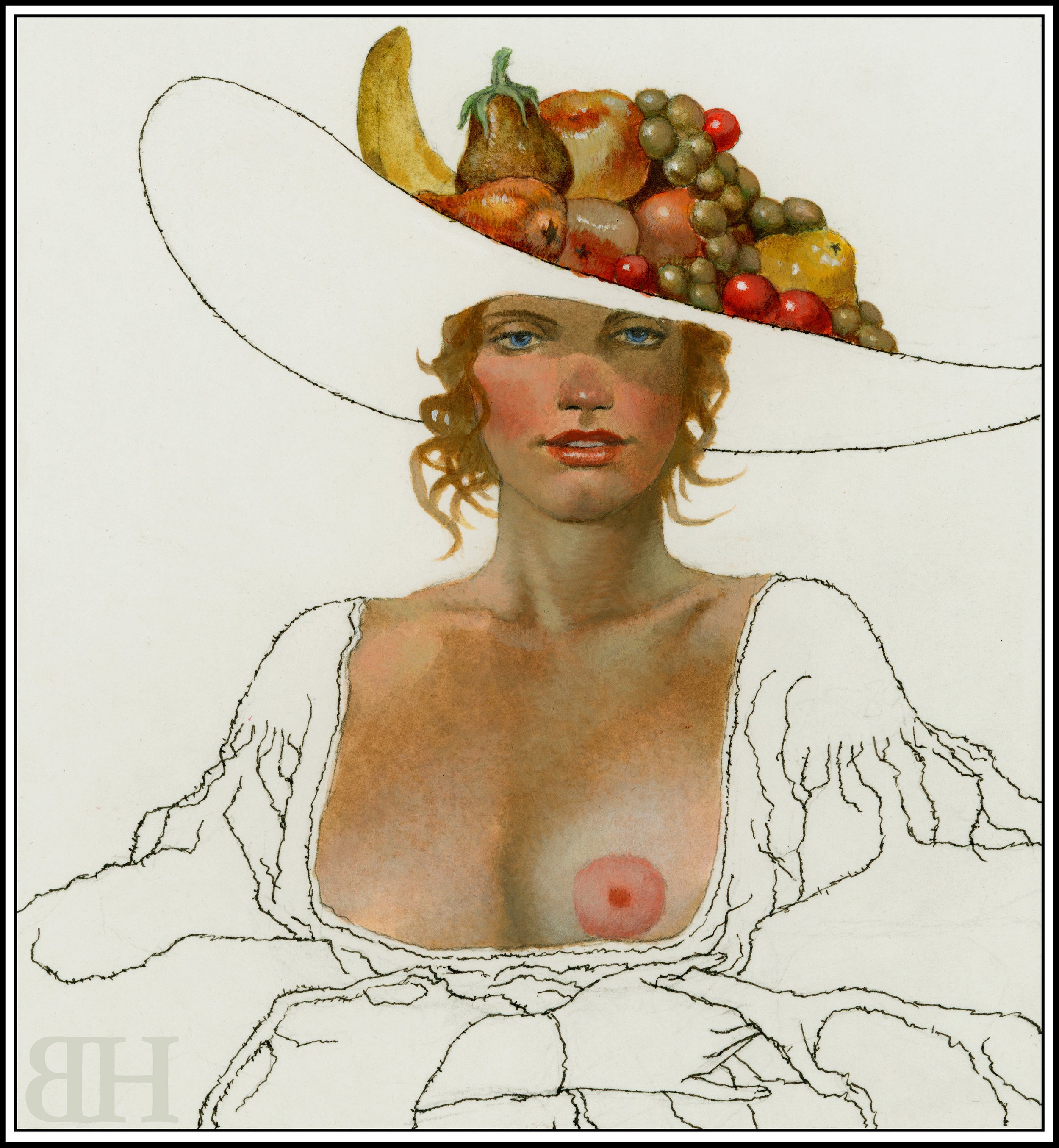
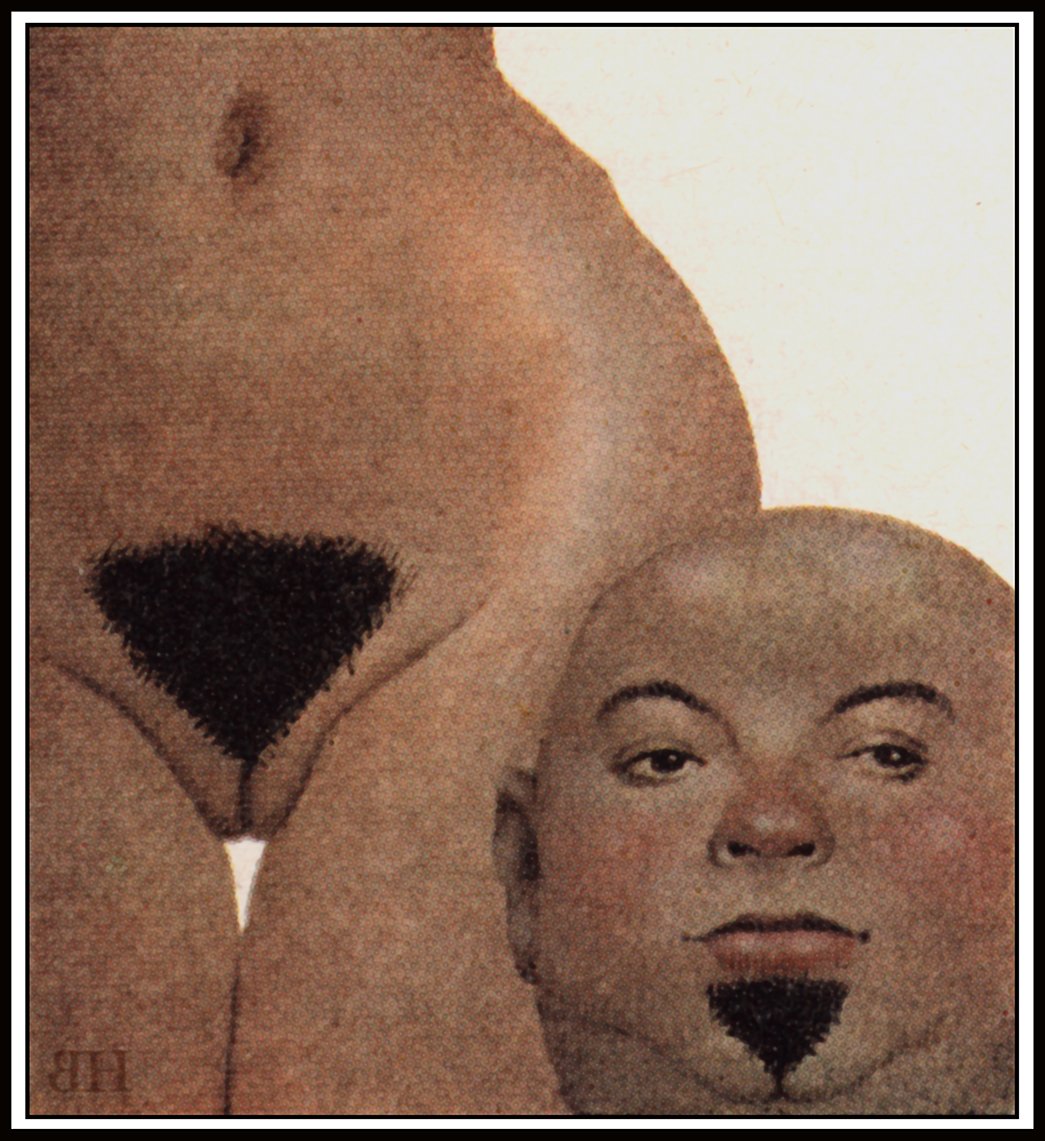

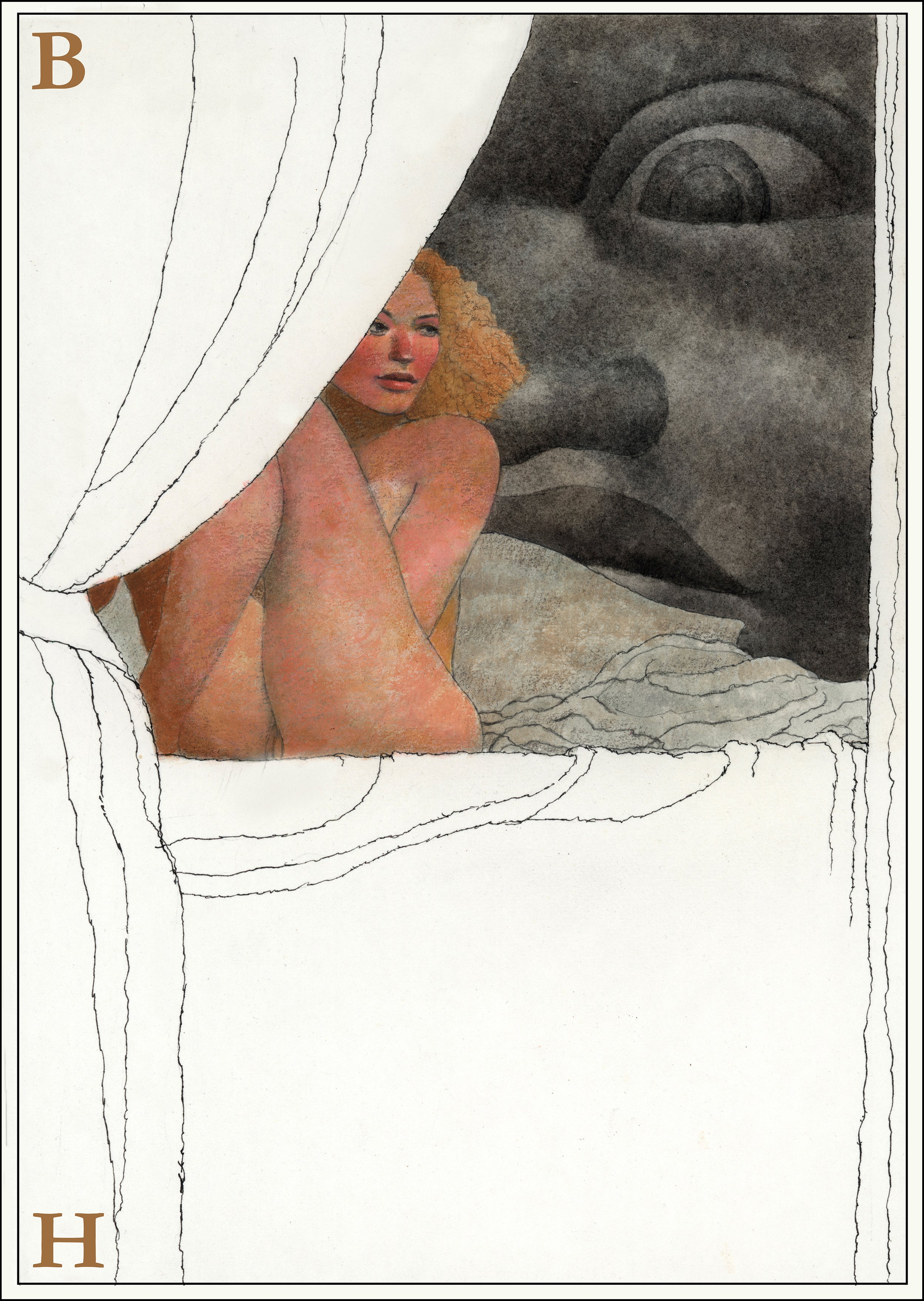
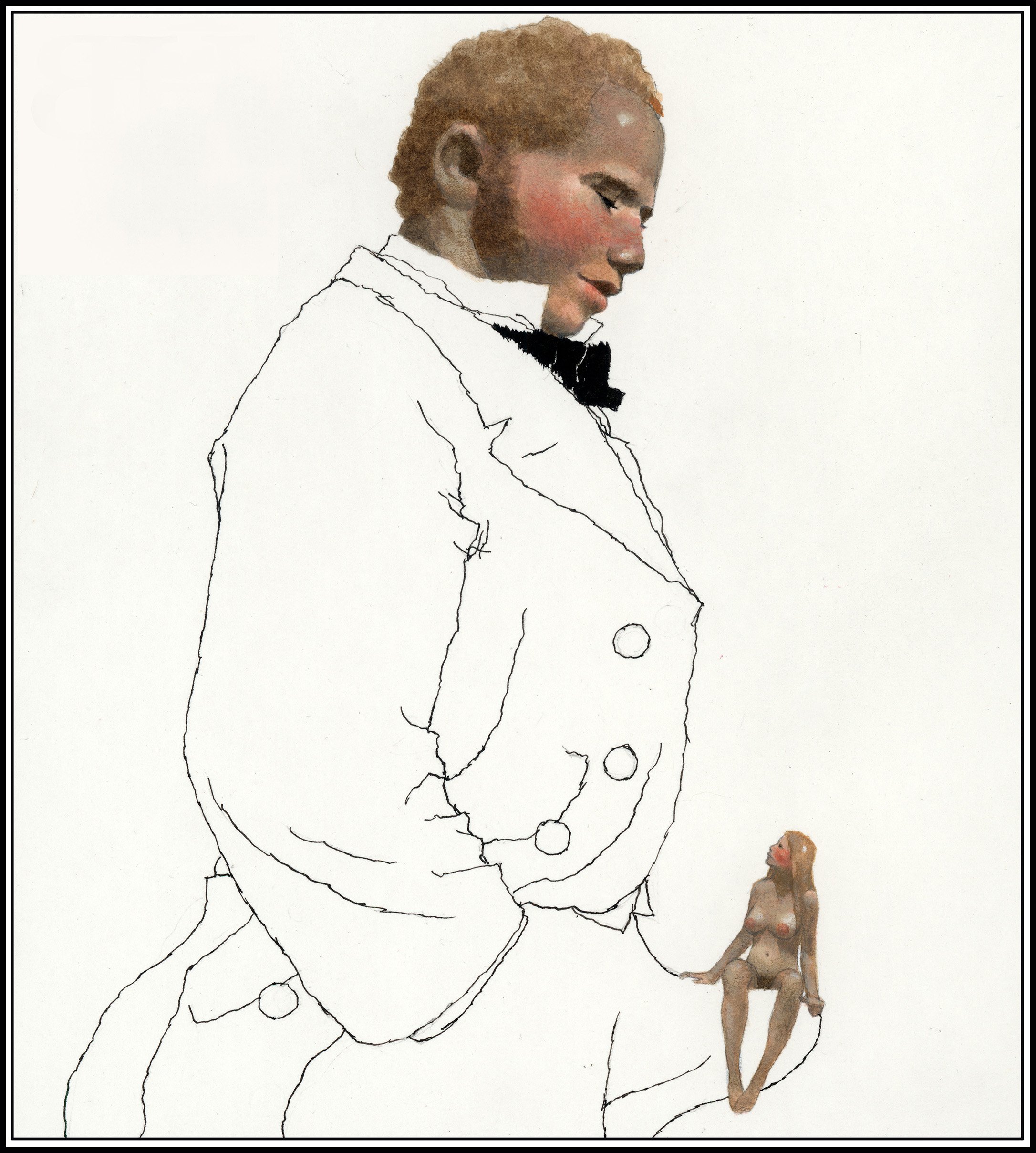
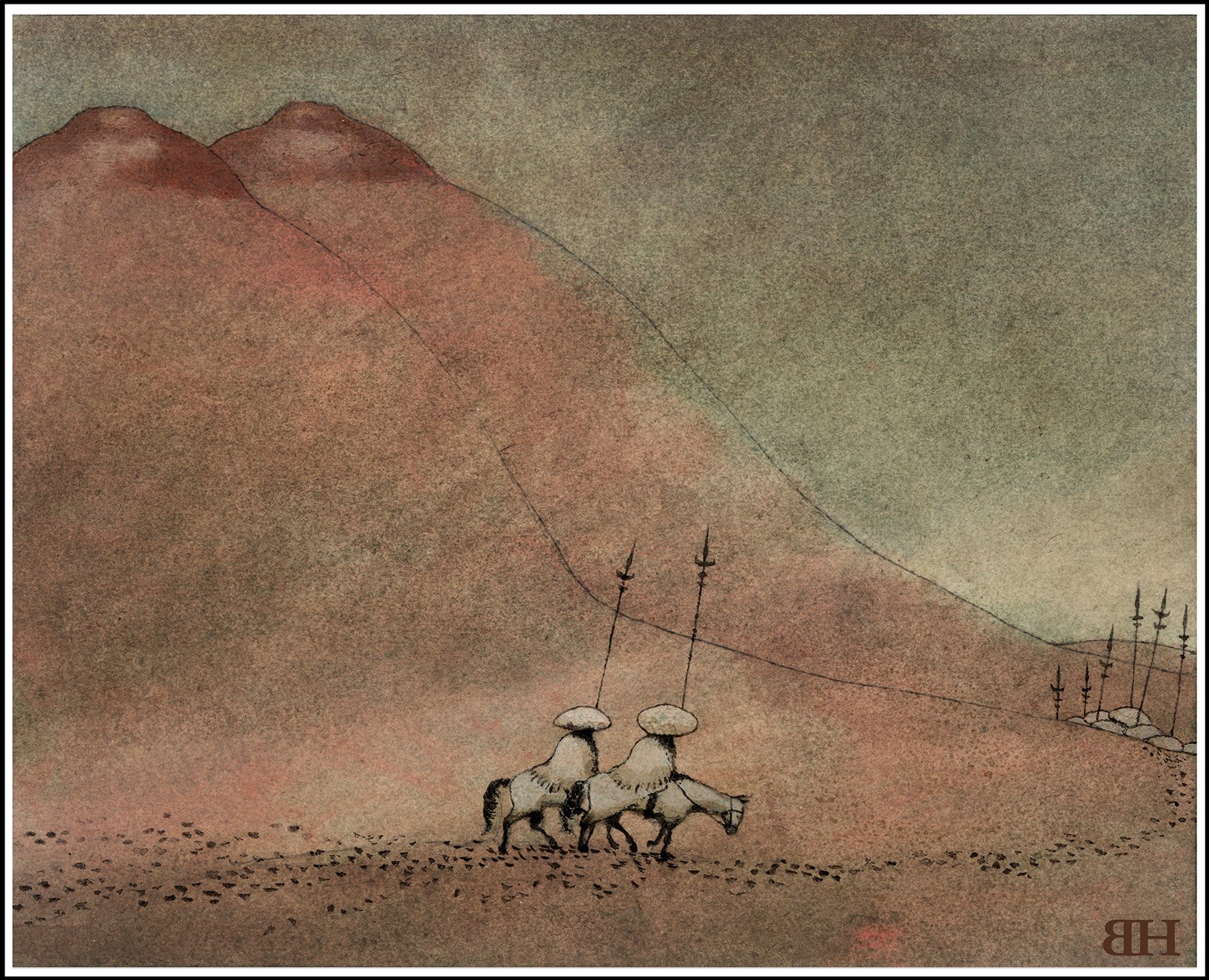
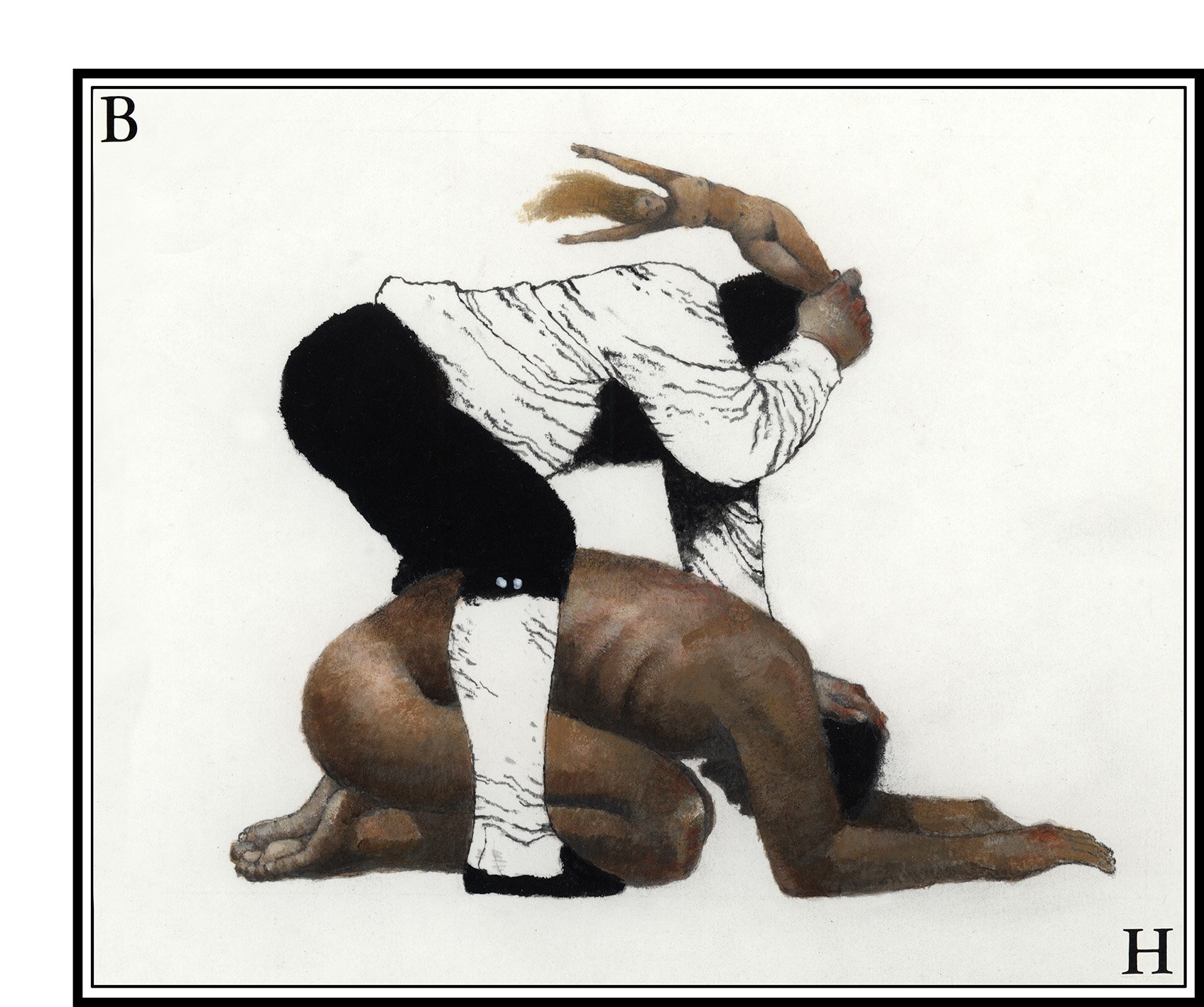
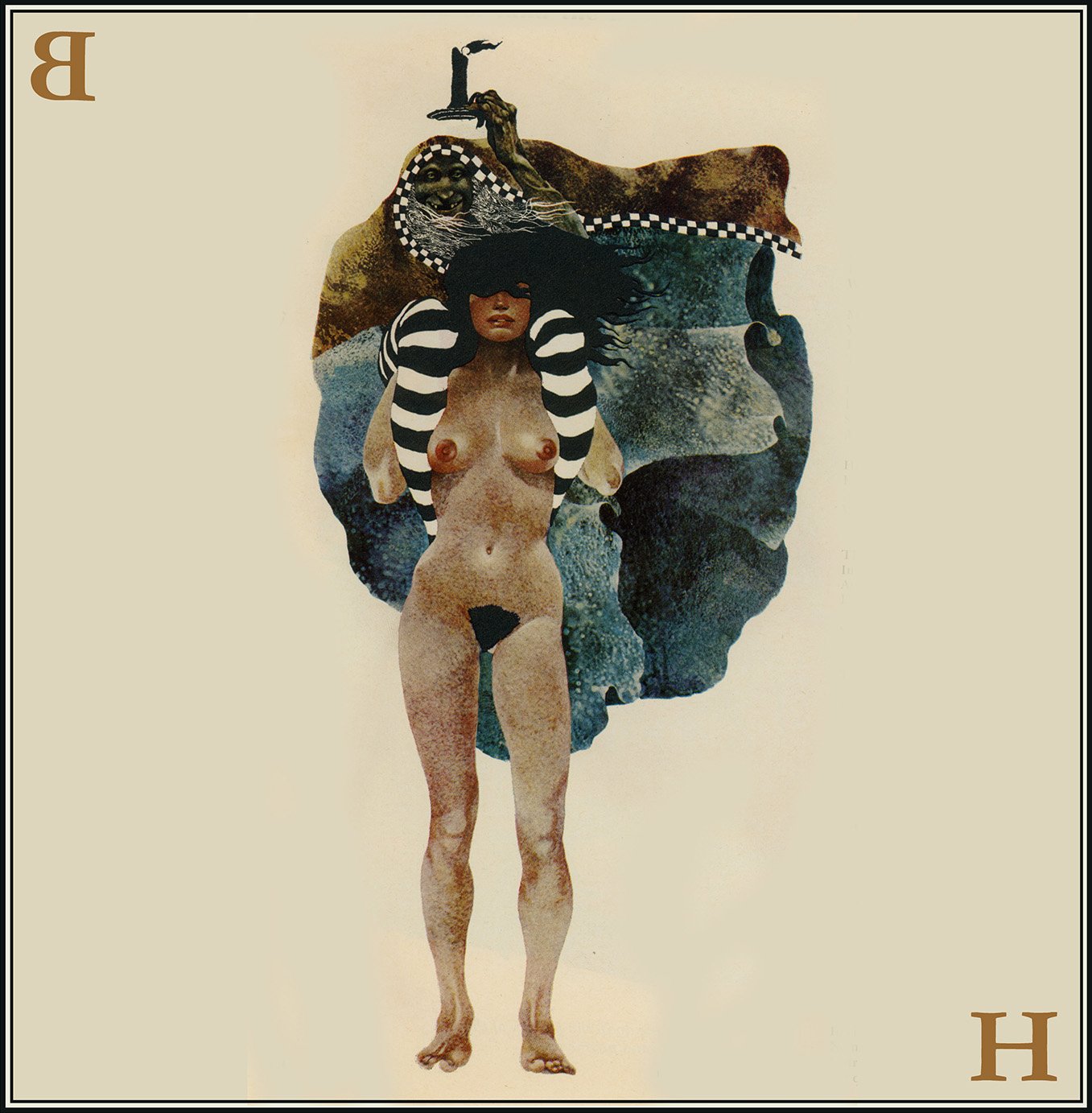
A sampling of Holland’s pieces for Playboy. Many of these pieces were used in the 1986 Kim Bassinger/Mickey Rourke film, 9 1/2 Weeks.
Steven Heller: If you were lucky we paid you. [Laughs].
Brad Holland: Well, I did, four drawings for Screw under four different names that made it look like you had four different artists. I did an Edward Gorey-style drawing. I think I did a Jack Davis-style drawing. I did one of my own, and I may have done a Leonard Baskin drawing. I can’t remember.
Steven Heller: You did a number of Leonard Baskin drawings.
Brad Holland: A lot of Baskin drawings.
Steven Heller: So how did the leap to the Times happen?
Brad Holland: Well, after you left Screw to work on the Review of Sex & Politics, which later added “Aerospace” to the title since the editor had been a paratrooper. It was the New York Review of Sex & Politics & Aerospace. Do you remember the slogan for the newspaper?
Steven Heller: “A Symptom of our Times,” right?
Brad Holland: It was The New York Review of Sex & Politics: A Symptom of Our Times, which is a way of saying, “Sorry for all the naked pictures, but we have to do it in order to get readers.” That was essentially the way the paper functioned.
Otherwise, it was very political.
So anyway, as far as JC Suares, who had been your boss when you signed on after high school to edit—Steve should be telling this himself but he’s going to be too modest to tell it—Steve graduated from high school when he was 17 and got a job working for the Free Press as a summer job.
And JC Suares was art directing the thing. And JC had just come out of the Army himself and was doing drawings very much like David Levine and art directing the Free Press. Steve got this job and Suares got a better job and left overnight! So Steve was left learning to art direct The New York Free Press kind of on his own and just making it up as he went along.
So when Steve started art directing—Steve, when you started art directing the New York Review of Sex & Politics, Suares came back to art direct Screw, and he has also got a job moonlighting, or maybe “sunlighting” might be a better word, for The New York Times, working kind of day jobs at the time.
And you all had moved into 80 5th Avenue and Screw moved just down the hall from us. So Steve and his crew were in an office on one end of the hall in New York Review of Sex & Politics, and Screw was down on the other end producing Screw. And the two rival sex papers were running out of the same floor, and people were running back and forth between the floors, and Suares came in one day, mostly, I think, to just kind of razz Steve and give him a hard time. And I happened to be sitting there, and Steve introduced us and he said, “Oh, I’ve been, you know, I’ve been following that work you’re doing in Playboy. And one day, he came in and he said, “Hey, how would you like to do for The New York Times work like you’re doing for Playboy?”
And I said, “Yeah, sure,” thinking he was just making it up, but damned if he didn’t, you know, the next day we were headed up to The New York Times.
Suares was the only art director in the hippie press who drove a Bentley to work. He had two of them. And he was very much offended if you referred to one of them as a Rolls Royce. Bentleys, in his mind, were superior to Rolls and he definitely had a Rolls.
He was not making the money from Screw. I have to mention that he was a descendant of the banking Suares family in Alexandria, Egypt. And they had left the country during the Nasser revolution back in the fifties. He had gone to Yale, and, I think, dropped out and then went to Pratt because he wanted to be an artist. Anyway, he took me up to The New York Times and introduced me to Harrison Salisbury. They were just starting the op-ed page, and Harrison asked me how I saw my work being used, how I saw illustration being used on the op-ed page, because they had never run art on the editorial page before.
Holland’s portrait of a young Steven Heller, his long-time friend and collaborator.
Steven Heller: It has to be said that the op-ed page existed because Lou Silverstein started it, and used people like Ralph Steadman, along with other European artists.
Brad Holland: Did he use them before Suares?
Steven Heller: He used them before Suares, and Suares was a good choice because he was already fluent in that language of European illustration.
Brad Holland: I came in with Suares so I attribute everything to him.
Steven Heller: So when you came into the op-ed page, there was this overlay of surrealist work, all linear —his studio, in fact, Suares’, was called Data Studios.
Brad Holland: Yeah that’s right.
Steven Heller: So he had that sensibility.
Brad Holland: Oh yes. Suares had a definite background in all that.
Steven Heller: So that’s when your work began to change. You were doing that kind of comic strip, R. Crumb-related stuff, and then it kind of morphed into what I consider the first link, the junkie drawing—the junkie drawing with the mouths and the arm.
Brad Holland: Yeah, that was one of the first drawings I did. Harrison asked me how I saw my work being used. He called it illustration, and I said, well, I don’t really think of it as illustration. I didn’t know what to say. And I kind of stammered around for a second. And then I thought I had a great angle. I said “Just imagine that you lock the writer in one room and the artist in another, and you give them both the same assignment. And then you put this stuff together.” The writer gives you an article, and the artist gives you a picture, and you just put them together. As long as they run tangent to each other, that qualifies as a direction.
I’d never used that line before but I began using it after that. The example I always used to use when I was arguing with art directors about it, I said, “Take the most famous illustration in Western art, which would be the picture of God, creating Adam on the Sistine chapel ceiling.”
And I said, “Why does it not illustrate the story?” The story has God breathing life into Adam. It doesn’t have them touching fingers. Why did Michelangelo paint God breathing life into that? Because on the Sistine chapel ceiling, it would look like a kiss and it wouldn’t have given the impression that Michelangelo was trying to convey. But everybody who’s ever petted a cat in the middle of winter knows that sparks jump. Or when you shake hands with somebody and static electricity jumps, or when noses come too close in dry weather, just before a kiss, a spark will jump. And Michelangelo must have recognized that and turned the breath of life into the touch of the hands. And I said, I don’t know, a single person, art critic, preacher, anybody who has ever criticized that painting because it doesn’t illustrate the biblical language.
Everybody takes it for granted because the Hebrews, when they wrote the Bible, were using a verbal metaphor: God breathes life into a person. And so that comes from the belief that when you die, you breathe your last breath. So if the breath leaves your body, signifies your dying, it must’ve been the breath of life coming in from God.
It was a perfect metaphor, but it was a verbal metaphor. And what I was looking for was visual metaphors that didn’t simply imitate the verbal. And so, for example, once I had a job to illustrate a glass ceiling, and I did a picture of a guy who was climbing a flight of steps, only when he got to one step, the next step was too big. A step that he couldn’t have made. It was a glass ceiling, except there was no glass ceiling. So I took it into the editor and he said, “The article’s about glass ceilings. Where’s the glass ceiling?” I said, “It’s glass, you can’t see it.,” and then I tried my Michelangelo story on him.
That way, I, began to explain at least to some, that what I was looking for was a visual counterpart to whatever verbal information they had in the text. I began with trying to explain it to Harrison that day, because over the first year or so, I was having a hard time explaining what it was that I was trying to do besides being a jerk, which is what some thought I was just being.
Holland’s work with JC Suares for The New York Times Op-Ed page.
Steven Heller: So the op-ed page allowed you to follow that strategic idea, that philosophical idea that you had.
Brad Holland: I did pictures. Well, for one thing, Watergate came along and with Watergate, I didn’t have to follow the story. In fact, the story evolved so fast that usually by the time story was written, there was too little time to do a picture, just, to go with it if you wanted to get it out overnight. So I began just doing pictures following the news. One week I did four different pictures about Watergate. One of them was Nixon on a top of all these subordinates—each subordinate was smaller than the one above him. Nixon was at the top, Halderman right under him, Ehrlichman right under him, John Dean, right under him. And I didn’t know the rest, so I made them all generic, but each one got to be so small that they were eventually just a chain of people collapsed. it was used on the cover of the first catalog of op-ed work. It was one of three drawings I did that week. And I just took them all up to the Times and dropped them off, and they just applied them to articles as the articles came in.
So I didn’t read a single article for any of those pictures.
Steven Heller: When I first went to the Times as art director of the op-ed page, you gave me three books. One was Kathe Kollwitz. The other was Heinrich Kley. And I think George Gross was the third.
Brad Holland: I don’t think so. I didn’t like George Gross. It would likely have been Baskin, but I couldn’t promise that. I know I tried to get you to write to Baskin to get…
Steven Heller: Well I did, and I got him to do stuff for us.
Brad Holland: Yeah, he did Nixon and who else?
Steven Heller: He did Ford.
Brad Holland: Oh yeah, he did Nixon and Ford, and he did them on the back of other drawings. And they were about a year after you wrote him the letter, you wrote him a letter. It took a year for him and he sent a letter back along with a picture of Nixon and a picture of Ford drawn on the back of some other drawings that I guess he discarded. I was trying to get you to use all kinds of people like that.
Steven Heller: When did magazines start to change in terms of your own work?
Brad Holland: Well, what made a big difference was when we had that show in Paris and The Art of the Times book came out, because my work was on the cover of that. The Art of the Times came out around the same time as The Art of Playboy, because Playboy had a traveling exhibition called “Beyond Illustration” that Art Paul was doing.
Steven Heller: That was at the Huntington Hartford Museum.
Brad Holland: Well, that’s where it came, but it had traveled around Europe first. it was previewed over there. And one of the pictures that I had done for Playboy was used as a poster for that, and then came The Art of the Times book, which came out and my drawing was on the cover of that. So from that point on, people kind of came to me for the kind of work I wanted to do.
One of the things that I did early on when I worked in Chicago, I was looking at portfolios of the kids who came to our studio, looking for work. They’d show us these portfolios. And they had Time covers and record album covers, and the guy I was working for John Dieszecki, he made a point of saying, “Don’t show this kind of stuff, because everybody knows you didn’t do Time covers, your work doesn’t look like it’s ready for Time. You should be doing small jobs. Do a catalog for a small company that nobody’s ever heard of and show that in your portfolio.” I took that idea to heart myself, and when I did my portfolio, I did all black and white work, except for a few color things that I had done at Hallmark. I showed almost all black and white, and the idea was that most people relegated black and white to spot illustrations. And I learned at Hallmark that editors don’t pay a lot of attention to work that they don’t think is important. And so I figured I could break in by doing work that most artists didn’t want to do.
And I would take the smaller jobs and usually get to do them in the way I wanted. I think it worked out. That was part of my strategy: to take the smaller jobs and do them the way I wanted. So after a while I had a portfolio of things that looked like I wanted to do them.
And pretty soon I began getting calls to do that kind of work.
Holland’s 1979 cover for Time’s Man of the Year issue featuring Iran’s Ayatollah Khomeini: The original, Holland’s crop, and the final printed cover.
Steven Heller: And pretty soon after that, other people started doing your work as well.
Brad Holland: I couldn’t do anything about that. Could I?
Steven Heller: No, but it did mark a shift in the overall style and concept.
Brad Holland: Well, it worked against me at Time magazine. For example, one guy came along who was very good. And again, he came doing somebody else’s work and then started doing mine and going around to all my clients. And he had heard stories about how artists, you know, some art directors had a hard time working with me, and he kind of promised tha he’d be easy to work with. So I remember I kind of got booted out of Time after doing a whole bunch of covers for them.
Steven Heller: Was the Ayatollah the first cover you did?
Brad Holland: The Ayatollah was, yeah, the first cover that I did for them. That was an odd case too, because they asked me to do a picture of the Ayatollah, and I didn’t like working from photographs but they gave me a whole bunch of press photographs and I found one of them that was a three-quarter view and had the features of his face, but it was shot with a flash. So it had that back-shadow that flashes always have. So I modeled my own face—because I looked enough like the Ayatollah, I thought—I modeled my own face in three-quarter view and had my wife at the time take a photograph of me.
So I used the lighting from my face and the structure from the Ayatollah, his face, but they had asked me to leave a lot of space above the turbin. Just leave a lot of space for all the type that they wanted to add. So I did this painting. It was about, maybe 18 by 24. I took it up and they loved it and they photographed it and they did a cover based on the dummy. I said I wanted to make a few changes on it. I took it back to work on it and I just, I didn’t like it. There was something—it just looked wrong to me.
They gave you a cover in those days. It was a celluloid cover with a Time logo on it. The Time logo is fantastic. It makes anything look good when you put it on with that red board or the red and white border and the Time logo, unlike the Newsweek logo, which would make even a good picture look bad, Newsweek had that clumsy drop-shadow, lowercase type that ran about one third down the way of the cover. You could hardly do a picture and cram it in under the Newsweek logo. The Time logo made everything look fantastic. So they gave you this transparent logo—it was life-size and you could drop it on anything. And I just happened to drop the thing on my Ayatollah picture. And I thought, my God, if, it weren’t for all this space around it, this would be a fantastic cover.
So I take some white sheets of paper and I began blocking out everything on my painting until I had the thing right down to the size of the celluloid sheet with the logo on it. I thought, “That looks fantastic. I’m going to try to persuade them to do it.
I thought no, they’ve already shot the thing and they’ve already done a dummy with the whole thing. It’s already probably been okayed by the editors, and once it’s been okayed no one’s ever going to raise the issue ever again. The only way to do this is to cut the damn picture out of the canvas. So I took a matte knife and I cut the thing out of the canvas until it was literally 8 inches by 10. Gone is the 18-by-24 canvas. I send up a little painting, 8 inches by 10, and they freaked out. What are they going to do?
Well, they had already covered themselves. They, you know, it was a Man of the Year cover. They had already covered themselves. They had four other artists doing covers. One person was doing a very radical cover. One was doing a Persian miniature. There was, I think somebody else doing one, and then then there was mine. So I figured, well, they’re covered. If I’ve ruined this one, I’ve just ruined it for me. They’ll get one of the other guys to do the cover anyway. So I sent it up, and it worked out perfectly. It was exactly the way the cover should have run—all that extra space was ruining the dynamic of the cover. So after that, they asked me to do all kinds of other covers. I must’ve done 10 after that. I don’t think any of them ever ran. They kept them in the morgue in case—there were all these Russian premiers, all of whom were elderly. I think Brezhnev was on his last legs, and they knew that Andropov and Chernenko were after him, and
And they were equally old, at any moment the premiership could change. So I ended up doing all the contenders for the Russian premiership, some of them were very nice. And then I did [Zbigniew] Brzezinski for Time. I think it was one of the best covers I ever did. It never ran. I’ve got it on my website. I think it was one of the best portraits I ever did, but it didn’t run.
“Well if the internet isn’t the end of Western civilization, what has to happen is we need the kind of people art directing the internet like [Steven Heller], [JC] Suares, Art Paul, Dugald Sturmer, and Richard Gangel. We need people with that kind of clout working for internet publications. ”
“I did [Zbigniew] Brzezinski for Time. I think it was one of the best portraits I ever did. But it never ran.”
Steven Heller: What did you want to accomplish by sticking with illustration? Was there something you needed to say that could only be said through mass media?
Brad Holland: Well, Reagan changed tax policy and created a bunch of tax shelters that fine artists agents wanted to take advantage of. And I got offered a couple of deals. This was back in the eighties. The deal was that you would do all the work for a fine art lithograph, and you would be paid a fairly decent sum of money by some investor. The work would never be published. This was kind of like a scene out of The Producers or something. The idea was they were creating something that they would make a down payment on. The down payment would be the payment to the artists, but then they would write the work off as a loss, and they would get a huge tax writeoff for it.
So the idea was that we were supposed to be doing fine art lithographs, but the deal was they would never be used. We would just be paid for doing the work. And I thought, well, hell, I could get a job as a caterer. You know, I might as well—if I’m going to get a tax-shelter job I might as well do something like that.
So I turned those jobs down.
But I was married at that point, and I wanted to buy a big house for my wife, so I started doing a lot of advertising and I already had the reputation for doing my own ideas. I got pretty much the kind of license that I wanted doing advertising as well.
Part of my strategy early on was simply to give an art director a lot of choices because I knew the old cliche, you give an art director three choices and they’ll pick the worst one. But I just decided, you know, I was fairly clever. So I would come up with a lot of ideas on the theory that I liked all of them and I’ve sent them several ideas so that if they picked one, it was at least one that I wanted to do. It might not be the one that I most wanted to do, but it would be one that I wanted to do. So I was happy with that. I’d save all the ideas and use them elsewhere for other things.
Nothing else I’d do for myself. So I’ve pretty much done what I wanted with my career so far. New things happen every day. I’m still—at the moment I’ve got about 15 ink drawings that I’m working on. And I’ll find a place for most of them I think somewhere down the line.
Some of Holland’s more recent work.
Steven Heller: There was a point where you moved from doing representational work that was somewhat expressionistic-impressionistic to “stick figures.”
Brad Holland: Oh come on. I wasn’t doing stick figures.
Steven Heller: You were doing primitive.
Brad Holland: What happened was I developed a bunch of ideas for sketches that I would turn into paintings, but the paintings looked overdone when I got done with them. They just looked like, well, this thing should have been left in the sketch stage. A friend, Roland Scotoni—a wonderful art director in Zurich who I had gotten to know—Roland had cooked up a deal with a publisher in a little town called Feldmeilen in Switzerland, just north of Zurich. And at the time I was thinking about quitting illustration. I had this friend, Gaillard Sartain, who’s an actor and had set out to become an illustrator.
Gaillard came to New York and did a few illustrations and then went back to Tulsa and became a local TV star, and then got into Hee Haw and got into the movie Nashville and then went out to Hollywood and he played lots of parts in lots of movies. He was in Mississippi Burning and Fried Green Tomatoes. He’s made quite a good career as an actor. He was filming Hee Haw one year, and I went out just to hang out with him. He wanted to show his work to Playboy. And so he and I were going to go to Playboy together and I was going to introduce him to everybody and take him around. By this time he was a big local star in Tulsa and in all the localities—Iowa, Texas, Arkansas—he had a weekly show, Friday, Saturday nights, whatever, called the Uncanny Film Festival. It was one of those things where he showed old monster movies and did a lot of schtick with Gary Busey, who was a guy who had gone to college with.
Gary was still using the name Teddy Jack Eddy in those days. And so, Gaillard and Teddy Jack Eddy were the stars of this local TV show. And then Gaillard went national when he got into Hee Haw. So I went out to hang out with him and at Hee Haw one week. I spent the week in Nashville with all those characters. And then Keith Carradine came by—they were shooting a scene at the Nashville airport for that movie Nashville. It was the assassination scene. And he said, “You guys want to be in the movie, come on by.”
Well, I was scheduled head out to Playboy and Gaillard was supposed to come with me, but he decided he was going to try to get into the movie.
So he hung out, and he and Carradine improvised a scene at the cafeteria that day. And it made it into the movie that was Gaillard’s entry into the movie business. At any event when I had gone out to California with Gaillard that summer, and I was trying to talk to all these screenwriters just about, because I was getting imitated—there were so many people imitating me beat that point. I thought, well, maybe the thing to do is get out of this business and get into screenwriting. Anyway I had wanted to write plays when I was younger. I had lots of ideas for movies. So we went out there and I met quite a few screenwriters, talked with them and I was just thinking of changing my name to Christian Bradford and starting in as a screenwriter.
But I came back and I had this, there was a letter waiting for me from Switzerland, from Roland Scotoni, if you forgot where the story started, and Roland had invited me to Switzerland for a month, all expenses paid, to just do lithographs at this company called Vontobel. They had used to make great big lithographs on these giant stone lithograph plates. So I went over there and I spent a month doing lithographs. And I began keeping a sketchbook. Nick Megalon, who used to be the editor at a Mad magazine. had done an article about me for American Artist magazine, and Nick was a great pen and ink artist. So he gave me some sketchbooks that he had bought and was afraid to use because the paper was too big.
And while I was over there, I started keeping sketchbooks. And when I came back, I got this offer. I’d done all these lithographs, but I had just been thinking about all these sketches that I had been doing. And when some jobs came up, I would do sketches and then turn them into paintings.
And then I would look at my work and I thought, well, the sketches look better. Roland called me then, and he wanted me to do the Swiss art directors club yearbook. He wanted me to do a painting for the cover And then all the inside pages would be the sketches that I did. And I said, I got a better idea. ”Why don’t I do the cover and all the inside pages fresh from, just from scratch. I’ve got all these ideas that I’ve done his paintings, and I think would look better as sketches.” So that was the way that started. I did 40 drawings for him, and we just applied them to this Swiss art director sketchbook, and it got a gold medal from the art directors club in New York.
And the Swiss art directors club would have given it a gold medal, except since they were the client, it wasn’t eligible. They gave me a silver medal. But that got the attention of some art directors who called, so all of a sudden I just began to get calls to do more work like that.
Steven Heller: What’s work like now magazines have gone digital?
Brad Holland: Well, we’ve been hearing about “print is dead” ever since David Carson began doing Ray Gun.
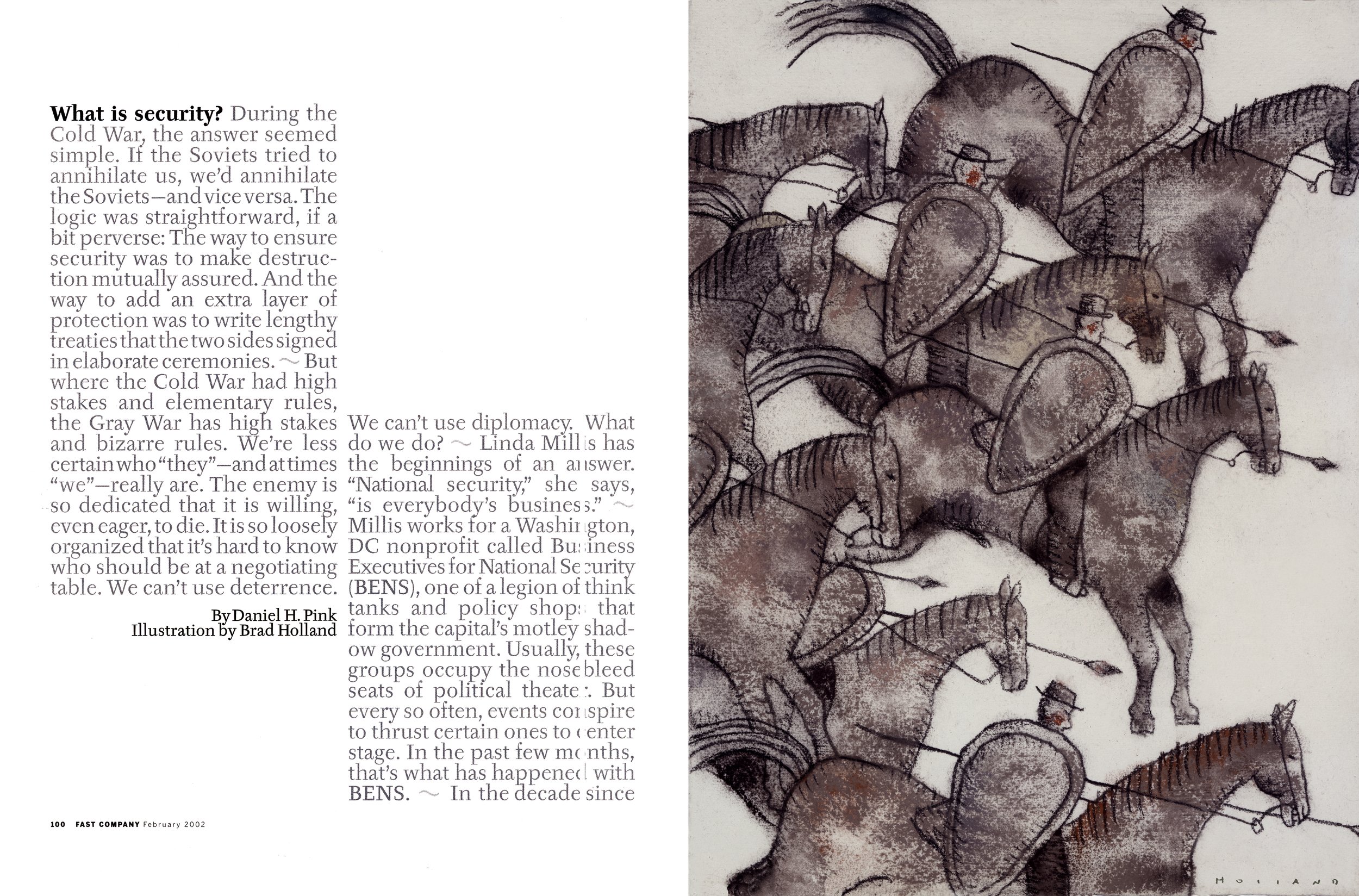
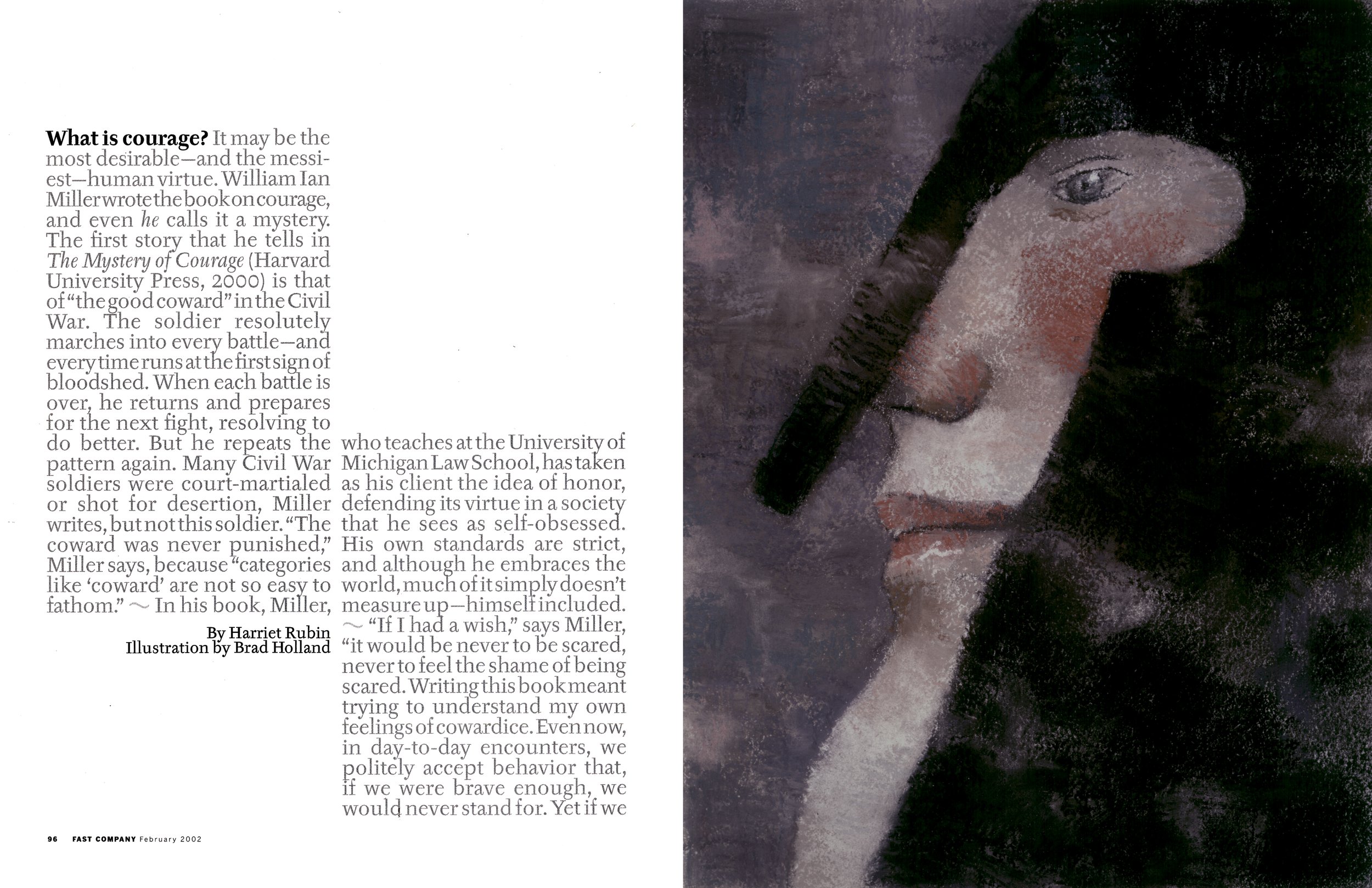

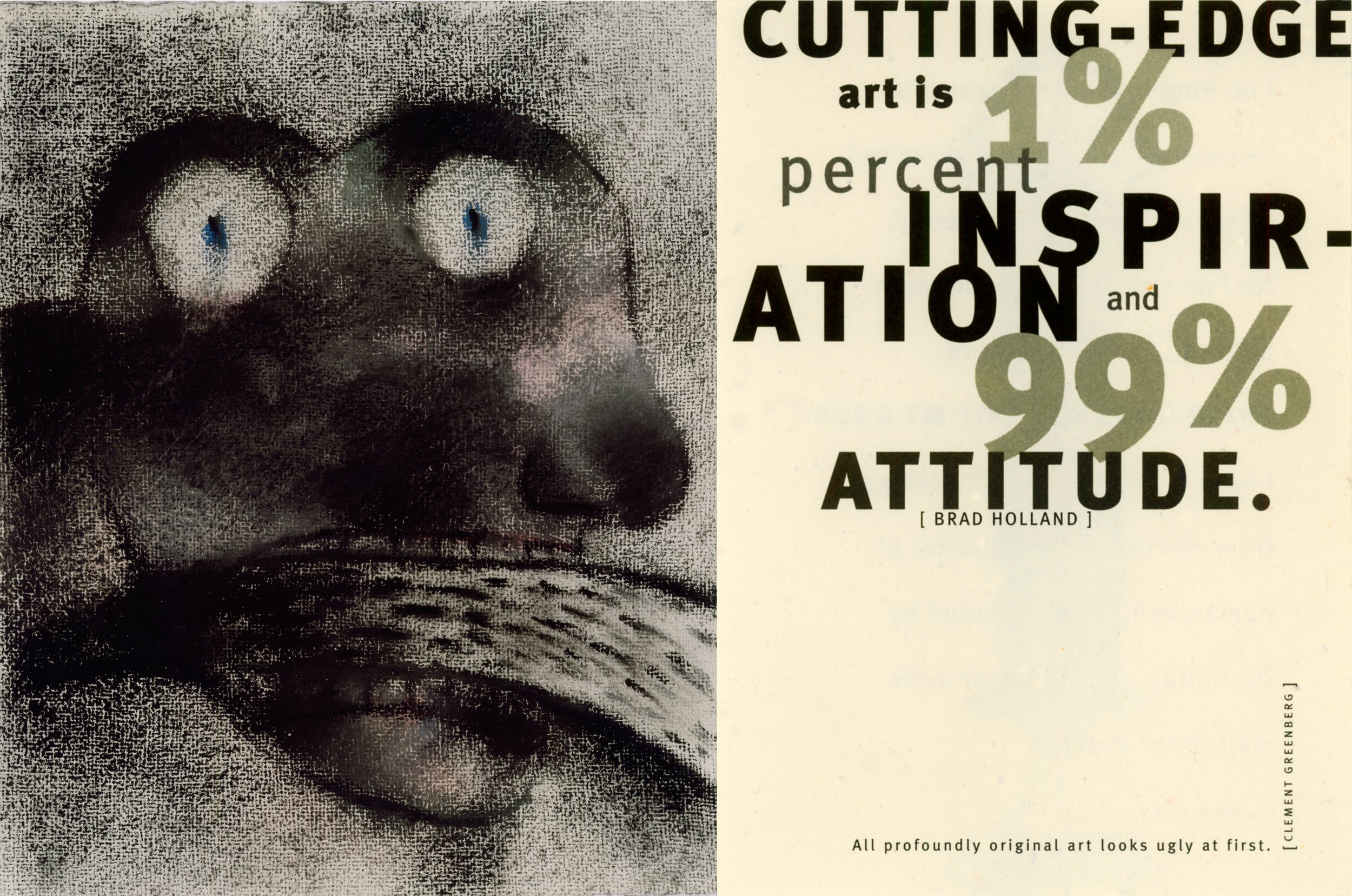
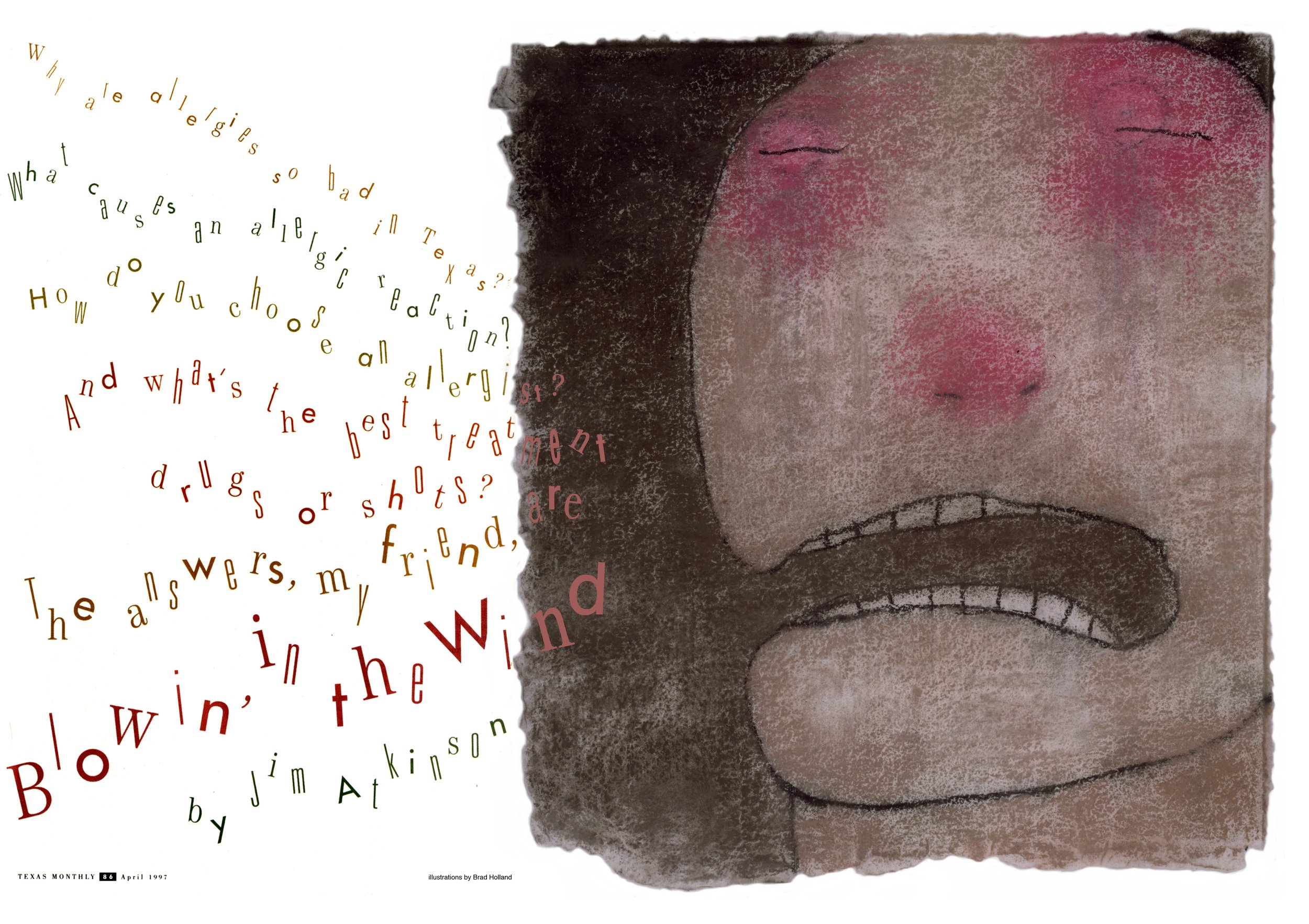
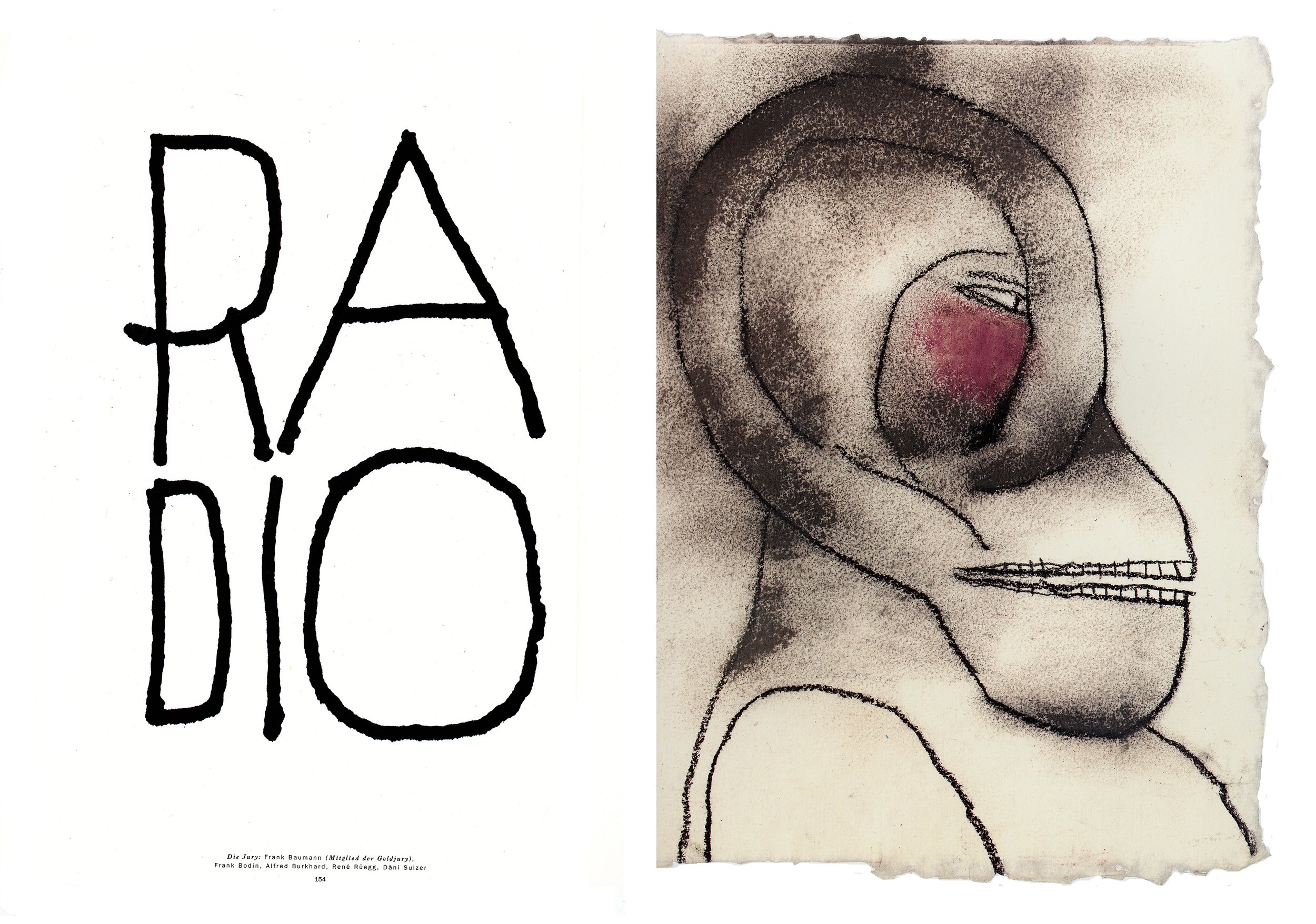
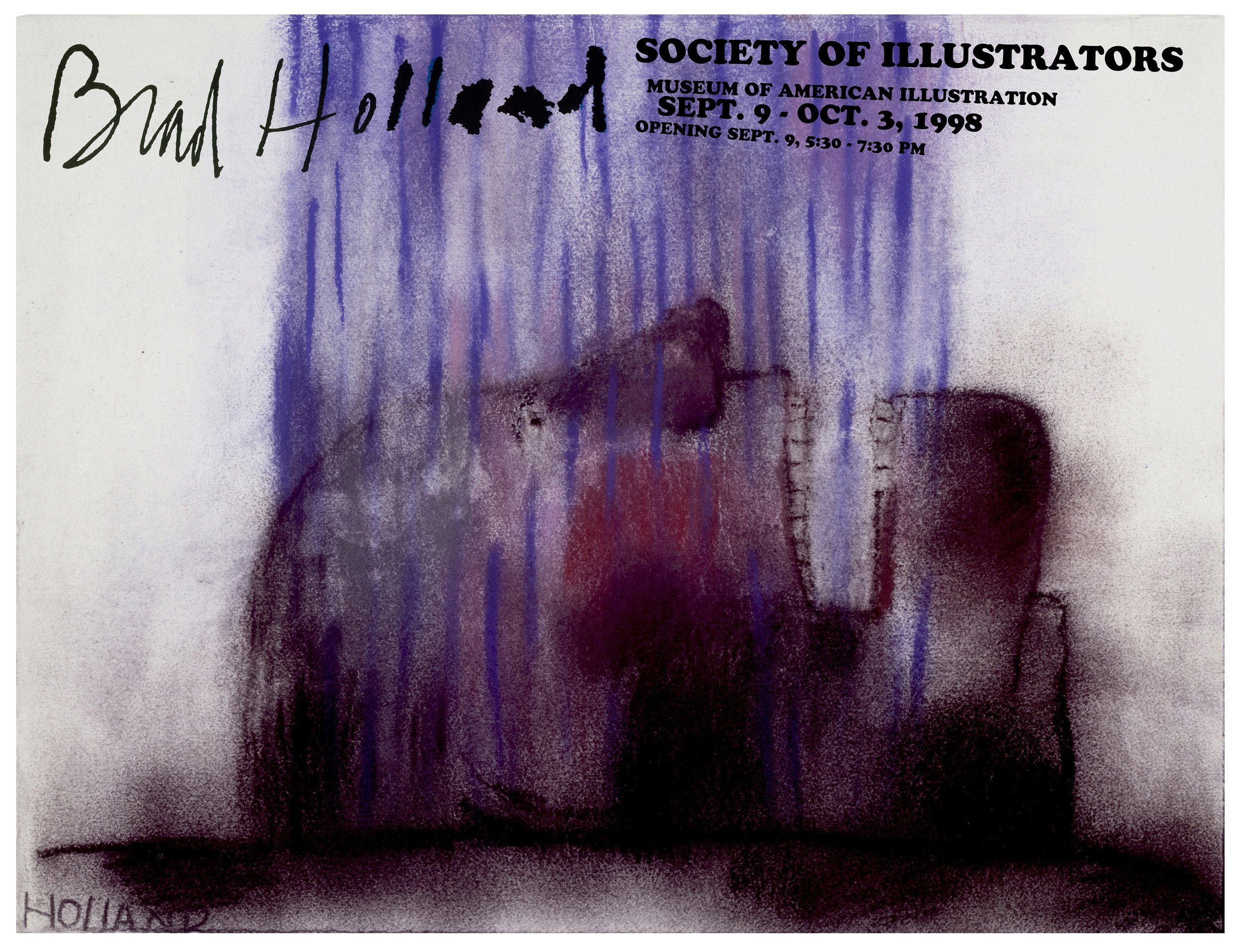
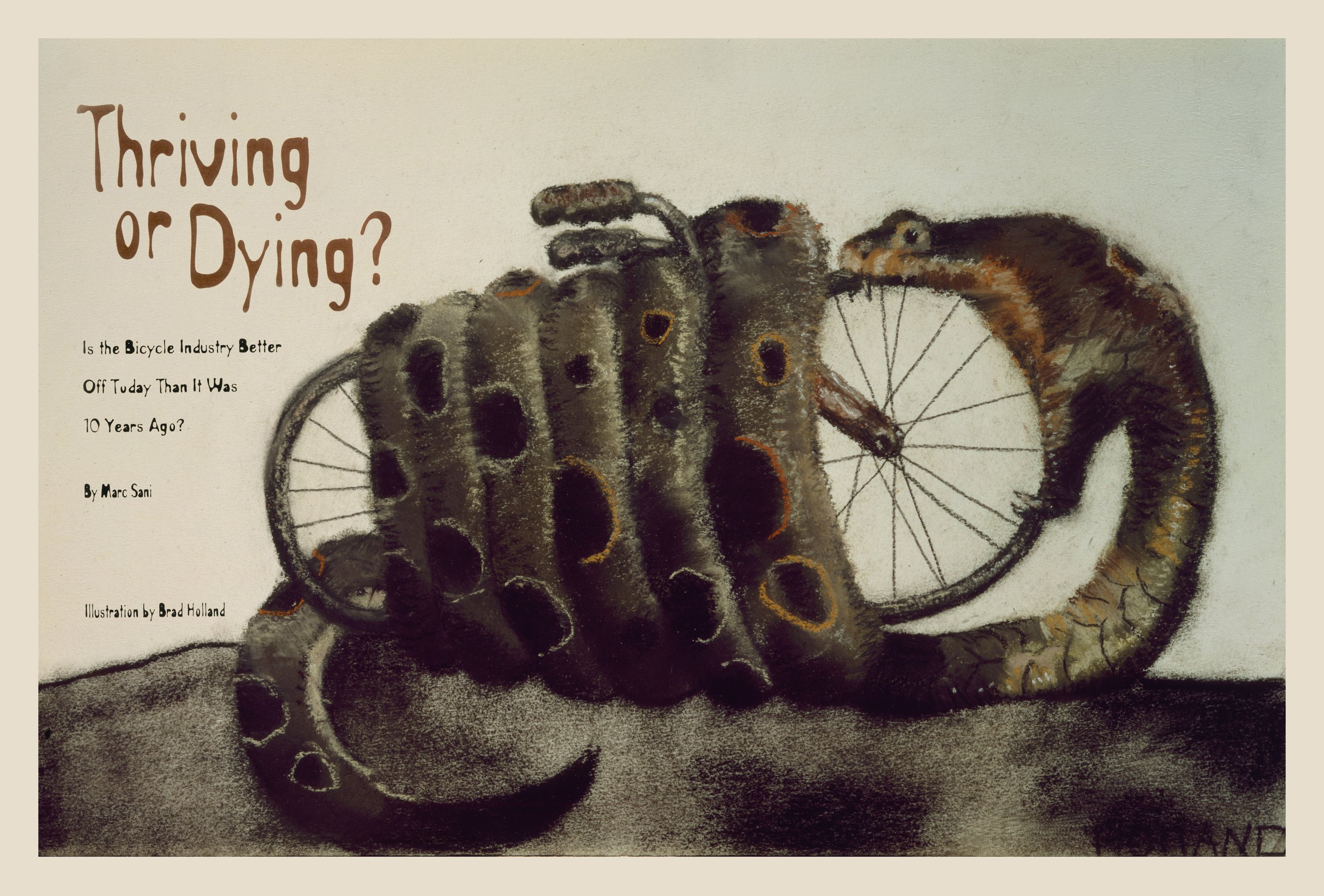
Steven Heller: So this show is Print is Dead. Is print dead?
Brad Holland: No. Now with the internet, well if the internet isn’t the end of Western civilization, which I do have a bet on, what has to happen is we need, the kind of people, art directing the internet that you and Suares and Art Paul and Dugald Sturmer and Richard Gangel. There were five art directors who really made a big difference back in the 1960s. And you were certainly one of them. We need people with that kind of clout working for internet publications.
Internet publications still have to work through the firewall issue.
Magazines need to find some way to get subscribers, and then they need to get through the technical problems. I did some work for a corporation and we went through all the spaces: that if I do the picture, this size, it’ll run in this format, on this device and this format on that device. So there’s still some technical problems that have to be solved with internet graphics, but we need the kind of independence on the internet that we were able to find in magazines.
We need to keep the tech companies from doing away with copyright. As you know, I got very involved in all this nonsense 20 years ago, much to my chagrin because I never wanted to be part of this. I ended up testifying before Congress, both the house and Senate, and we ended up fighting. We stopped the bill from passing, but the so-called “orphan-works” bill would have orphaned every work on the internet, not just from artists, but from ordinary people.
You know, if you put a picture on a Facebook page, that would have been an orphan, unless you had registered it, picture by picture by picture by picture. You would have had to have filled out a form and registered it with a commercial registry. They were introducing a law that would have allowed a so-called derivative work to be made out of any picture they took off the internet. So you could put a picture on a church social networking site or an internet site, some kind of Facebook page, and these internet spiders could harvest that work, declare it an orphan, plop an O on it.—it looked like a copyright symbol with an O on it.
And it would have been fair use for anyone to use. Stock companies could have taken those pictures, made slight changes called derivative works, which would have been legal, then copyright at that work in their own name, and then had machines crawl the internet to sue anybody who used one of their pictures.
You could have been technically sued, presumably for using your own picture if you had used a version of it that they had doctored in the internet,
Steven Heller: The internet has provided a lot of problems for creative people and non-creative people. I mean, the internet is an open pit of danger.
Brad Holland: Yes it is. And companies like Google are trying to make it more dangerous. They want it to open everything. The internet now allows you to take any of my pictures off the internet and use them for private usage. You know, you can’t do anything about that. And I wouldn’t want to, but this law, actually, the Senate passed a 20-page bill that we got down, It was going to open usage to all, all usage, any commercial usage, we got it rewritten to be for non-commercial uses. Then we heard that they had made one change. They only made one change to the bill, and they were going to vote on it. Well, they wouldn’t tell us what the one change was. So we had to look through the 20-page bill and sure enough, they had changed the word “non-commercial” to “commercial.” That one change to the bill would have opened everybody’s work workup for commercial usage, which meant that anything on the internet could have been used anybody for commercial purposes.
Steven Heller: What is the satisfaction or joy that you get from being an illustrator, from being an artist?
Brad Holland: I’m doing the same thing I did when I was five years old. Really. When I was five, I used to listen to the radio. We didn’t have a TV in those days, TV didn’t come until I was six. So I was doing comic strips. When I was four or five years old, like I loved L’il Abner. That was my favorite comic strip.
I wanted to do things like draw Lower Slobbovia and create characters like the Shmoo. I was a big L’il Abner fan and so I was doing comic scripts until I decided I wanted to do Walt Disney movies. and then I wanted to go to Disney, except that when I started thinking about Disney, I didn’t know what to do. I knew I wanted to write the stories, I wanted to animate the scenes, and I wanted to paint the backgrounds. Ha! Fat chance I would have ever done that at Disney. Once I got to Chicago and saw the Art Institute and began to see real art, my attitude about that changed. And since then, all I’ve wanted to do was do what I did when I was five, with the values that I’ve picked up along the way.
And I’m still doing it: I’m a mature five-year-old is what I am. I’ve gotten away with it all this time. Imagine that.
BACK TO THE INTERVIEWS
Nice Guys Finish First
Illustrator: Playboy, The New York Times, Time, more
A conversation with designer Robert Newman (Details, Vibe, Real Simple, Entertainment Weekly, more)
To call designer Robert Newman “ubiquitous” might be an understatement. The entries on Bob’s resume are a name-droppers dream: The Village Voice, Entertainment Weekly, New York magazine, Details, Vibe, Fortune, and Real Simple. That’s enough brands for multiple careers, but Bob has worked on all of them—and quite a few others—in one lifetime.
And he’s still at it.
Despite all of the accolades, Bob is one of the nicest guys around. Those who’ve worked for him—and there are many—use descriptions like, “kind,” “supportive,” “mentor,” “constant,” “spokesman for our industry,” and “unwavering friend.”
Need proof? After a devastating injury in 2013 that put him in a coma for more than three weeks, Newman’s friends and fans rallied to raise tens of thousands of dollars to help pay for his mounting medical bills and treatment costs, and to help him support his family.
He’s a popular guy.
In 1998, along with Janet Froelich, Bob created the Magazine of the Year Award, given out annually by the Society Publication Designers, as its highest honor.
Patrick Mitchell: I would love to know about young Bob—”Little Bobby”—Newman. Where’d you grow up?
Robert Newman: Well, I grew up in a suburb of Buffalo. We actually lived in Larchmont also, because my father worked in New York for a few years, but mostly I grew up and graduated from high school in that Buffalo suburb.
Patrick Mitchell: Were your parents creative? Did any of what you would end up becoming come from them?
Robert Newman: My parents were very creative in their own way. My mother was a school teacher for many years, and my father worked for a chemical company as a purchasing agent. And to the extent that teachers are creative, I think my mother was always artistic on a certain level. But they never encouraged it in me.
Patrick Mitchell: Did you have siblings?
Robert Newman: I have one sister. She had career working for OSHA. A really great career.
Debra Bishop: What do you remember about the first moment that you realized that you were creative and that there was something special going on in your brain [laughs] that made you think that this was a career you might wanna pursue?
Robert Newman: Well, part of the problem was I was a terrible artist. I still am. I couldn’t draw. I was really uncreative in a traditional sense. Like I couldn’t think of things. I couldn’t draw. I couldn’t paint. I couldn’t, you know, make things. But what I always did was make posters. Even when I was little. And when I was a kid, my little sister and I would, when we’d go on vacations, we’d take all our toys and we’d put them all in the garage and we’d sell them to the neighbors. I would draw signs that I’d tack on trees and I’d take chalk and draw signs on the sidewalk that would say, “Come down and buy all this stuff.” And we’d sell all this crap—old baseball cards and comic books and dolls and stuff to our friends.
And then we’d get enough money so when we’d go on vacation, we’d have money to buy ice cream and whatever. So I always did signs and in high school I did signs all the time. I was a mad letterer. And I was the art director—although I didn’t know it was called that—of the high school arts magazine for two years when I was a junior and senior. So that was my first art director job.
Debra Bishop: I had the same experience like that. I knew that I loved typography and packaging, but I didn’t know what it was.
Robert Newman: I didn’t even know what an art director was. In fact, I can remember a friend of mine, after I’d graduated from college and went to work, he explained to me what an art director was. And I was like, “Oh really? They have people that do that stuff?” I had literally had no idea. And before I became an art director, I had about three or four other careers.
“Coming out of the ’60s, being involved in left-wing politics was cool. And in retrospect, I think that’s really where my interests in magazines and publications started because I was obsessed from early teens with the underground press and the left wing press. ”
Patrick Mitchell: Including political organizer.
Robert Newman: I did. I worked for a number of years as a political organizer.
Patrick Mitchell: Isn’t that what Barack Obama was?
Robert Newman: Yeah. It was kind of like that. I ran a food co-op in a small town in Ohio. We had a community organization that worked with low income people. In the early ’70s, there was a big recession and things were really miserable. Especially in the Midwest. We got a local farmer to donate 10,000 pounds of potatoes. We went to his farm and we loaded them on a truck and we drove the truck back and we put them in bags and then we put signs in all the bars and laundromats and churches. And the next day the people came and we passed out 10,000 pounds of potatoes to everybody, all the people in the community, which was great.
And that’s the kind of stuff we did. Then I moved to Washington DC and I worked on a political newspaper for about a year. I was actually the editor. It was a political group that was run by Dr. Benjamin Spock. And after that fell apart, I started working for the DC Statehood Party. That was a group of people that were organizing to get the statehood for DC. It seemed like it was close at hand back then, but it still hasn’t happened. And through that, I got a job in a local print shop. So for a year I worked as a printer in DC and that’s really where I learned to do pasteup and a lot of graphic design work as a printer.
Patrick Mitchell: Backing up, where did you go to college?
Robert Newman: I went to college in Ohio at a place called the College of Wooster. It was a Presbyterian religious college.
But I always did—going back to what Deb was saying—I always did signs and I always did lettering. And when I was in college, people would ask me to letter whatever… they would have bake sales or, you know, anything. I was always doing lettering. And people always knew my lettering. It was very distinctive. I still couldn’t draw, but I could letter like mad. I could just take a magic marker and fill up a big piece of board.
Debra Bishop: Were you like most kids growing up who were sort of artistically inclined? Was that how you got attention for being cool?
Robert Newman: [Laughs].
Debra Bishop: Your signs and stuff?
Robert Newman: No. I wasn’t cool. But what was cool back then, coming out of the ’60s, being involved in left wing politics. And in retrospect, I think that’s really where my interests in magazines and publications started because I was obsessed from early teens with the underground press and the left wing press. Like the Black Panther Party newspaper and The Village Voice and The East Village Other. And I was obsessed with those papers like crazy.
Portrait of Robert Newman by David Cowles
Patrick Mitchell: So you went from giving away potatoes to finally ending up in Seattle. How did you get to Seattle by the way? And talk about your experience at, I think, this was your first magazine job, The Rocket.
Robert Newman: Yeah. I got to Seattle because I moved out there in 1977. At the time, Seattle was the farthest possible place you could go. It was sort of like the “Go west young man!” kind of thing. Seattle had a good vibe back then. Everyone said, “It’s really cool out there.”
Patrick Mitchell: What were you trying to get far away from?
Robert Newman: At that point I wanted to do some kind of magazine or news, mostly newspaper. I wanted to do a newspaper like an alternative newspaper and they had a ton of them out there. I mean they had four out there at the time. They still had an underground newspaper out there. They had all kinds of stuff, and they had a really vibrant sort of alternative underground media scene. They had a Pacifica Radio station, and it was just a cool place. There wasn’t a lot like that on the East Coast. It just seemed like a place to move to where there would be a lot of opportunity. I was 23 and living was really cheap out there. Which also sounds pretty funny now.
Debra Bishop: Was that right after college or …?
Robert Newman: No, I spent a couple years in DC working when I did political work and working as a printer, and then I moved out to Seattle in my early 20s. And actually, The Rocket wasn’t the first place I worked, Pat. The first place I worked was an underground newspaper out there called The Northwest Passage. It was the last ’60s holdover. They voted on everything. Like, each page was designed by a different person, and they rotated. It was a collective and a different person designed the cover every issue.
And I kind of liked that idea. Then I worked on what they now call an alt weekly, but we didn’t use that phrase back then. It was a weekly community newspaper called The Seattle Sun. I started out as a production manager then eventually I became art director and it was, you know, like The Village Voice of Seattle. And at that point my dream job was to work at The Village Voice, which I eventually did. But I was really, really, really into working at a newspaper like that because it was so connected to the audience. And you would stay up all night and then you’d see the newspaper out on the street for sale the next morning and people would line up to buy it, and it was very exciting to see your work, you know, have that kind of impact right away. It was great. I loved that.
The great thing about working in a place like that is you would do like the worst thing and, and like everyone would forget it the next week. So it was great, you know, it was …
Debra Bishop: That’s a weekly … yeah …
Robert Newman: Yeah, yeah.
Debra Bishop: … where you can pound it out and, “Oh, gee, I may have like totally bombed this week… We’ll get…”
Patrick Mitchell: … “we’ll get ’em next week …
Debra Bishop: … Forget about it and move on.
Robert Newman: I mean, it would be so bad, and I’d be like, “Oh my God!” And then they would be gone in three days or something. And then you’d have a clean slate. It was great.
Patrick Mitchell: Then you ended up at The Rocket?
Robert Newman: Yeah.
Patrick Mitchell: Talk about what The Rocket was.
Robert Newman: Well, The Seattle Sun was always a marginally-run operation and it didn’t make a lot of money and it was rooted in the Seattle hippie world. And things were changing culturally, you know. Punk was starting and a bunch of us at the Sun decided we’d do a supplement called The Rocket, which was a rock ’n’ roll insert.
We started it and we ran it for six months. And the Sun folks hated us. So we bought it from them and started on our own in a run-down little storefront on Capitol Hill in Seattle. And it was great.
There weren’t a lot of good paying jobs in Seattle. It’s hard to imagine Seattle now—they have Microsoft and Adobe and Amazon. But back then, they didn’t, They had basically one job. And if you were an art director, there were no jobs. You had to make your own job. So The Rocket was us making our own jobs. And because so many of the people that started it were art directors, we had a rotating cast of art directors. Most of whom eventually moved to New York and did their own magazines.
Newman with his Seattle comrades (from left): Ron Hauge, Newman, Helene Silverman, Wes Anderson, Mark Michaelson, and Kristine Larsen.
Patrick Mitchell: To look at your bio on your LinkedIn page, I think it actually would be easier to list the magazines you didn’t work for than the ones you did. [Laughs].
Robert Newman: Well, the big problem, which you may or may not know—I don’t like to broadcast this fact—but every editor I ever worked for was fired after they hired me.
Patrick Mitchell: And not necessarily for making that decision?
Robert Newman: No. But I mean, every single one was fired. And sometimes fired, like the one at Entertainment Weekly was fired before I even got there [laughs]. Every single one: This Old House, Reader’s Digest, Fortune (twice), Real Simple, Vibe (she wasn’t fired, she quit), New York…
Patrick Mitchell: You know, you’re making an argument [laughs] that if I was an editor, I shouldn’t hire you.
Robert Newman: Yeah, that argument has been made, believe me. But, you know, it’s really hard to do a magazine without an editor who's a partner who you can work with and absolutely, you know, that’s the key and there’s different levels of that. Like, you can have an editor who just lets you do whatever you want. That’s the best, right? Or you can have an editor who’s, you know, a genius and inspires you or who’s an equal partner. I mean, any of those are good, but if your editor’s fired and you get a new editor, the odds are you’re not gonna be long for that world.
Patrick Mitchell: I read an interview where you said, and this is a quote, “I really like to move around. And I think most art directors would agree. You’re like a hired gun in a lot of ways.”
Robert Newman: That’s true. I do like to move around. I had two sort of dream jobs that I wanted to do. One was the Voice. And I did that for a long time. And the other one was Vibe and I did that, too. And besides those two, there were lots of really great jobs, but I have a pretty short attention span and I’m interested in a lot of stuff. And I liked that. I worked on a business magazine, a women’s magazine, an entertainment magazine, an urban fashion magazine, and an older person’s magazine. You know, I like the challenge of trying to adapt your visual storytelling skills to different audiences and try and get inside their heads.
I think the one thing is, I generally worked at places where I had an affinity for the audience. Vibe was the hardest one where I was most out of tune. Although the kids there really helped me a lot. But at each place I worked, I was really in the demographic of the magazine. So it wasn’t that much of a stretch. All I had to learn was the lexicon of what they were dealing with.
But part of it was too, I think it was sort of a challenge. You guys know this and we get this all the time. People would say, “Oh, well, you do women’s magazines. You can’t do Fortune.” You know, “You do entertainment magazines, you can’t do a fashion magazine.” Well, that’s not true. I think there are some people who have affinity for certain styles, but most good art directors I know, man, they can do anything. I mean, Deb, you may or may not have experienced this because you came up in women’s magazines. But for years that was used as an excuse to keep women from working at other kinds of magazines.
Debra Bishop: Absolutely. Absolutely. Totally. You know, I totally concur. It is hard for me to jump out of women’s magazines. Although, you know, I got my start in editorial design at Rolling Stone…
Patrick Mitchell: …Hard because of other people or hard because of you?
Debra Bishop: It’s harder to jump. You just don’t get those opportunities. You know, you don’t get a sexy job. And I think most women have the same problem. You don’t get a sexy job that’s about men’s fashion or, you know, because you’re a woman. And you can try, but it’s much harder to jump when you're a woman out of the women’s category.
Robert Newman: And that holds true for other genres too. Like, you know, I think people that have done hip-hop magazines would face the same kind of prejudice. I think trying to move to something like Fortune.
The Details art department (from left): Zoe Miller, Marlene Szczesny, Ronda Thompson, Newman (standing, rear), Alden Wallace, Markus Brown, and John Giordani.
Debra Bishop: You’ve worked with so many different editors. Is there one in particular that was your best partner or somebody that you worked really well with?
Robert Newman: I worked with Kurt Anderson twice, but only, unfortunately, for six months each time. Once because he was fired. And once because we folded. I worked with him at New York and I worked with him at magazine called Inside. That was part of the Inside.com. He was great. He was definitely one of the best editors.
The good editors, there’s lots of aspects of a good editor. And, as far as I’m concerned, the most important aspect is attracting talent, and keeping the talent happy, and making the magazine a community of joyful work and collaborative feeling. To me, that’s the number one key. And if he or she does that, then everything else is great. And Kurt was the best at that. At getting people in there, letting them do their thing and building this community of like really super-talented people.
The editor I worked with at Entertainment Weekly, Jim Seymour. Same thing. He was amazing. And he was another one who wasn’t threatened by young, talented people. He brought in young, talented people of all kinds and let them do their own thing. There’s this famous quote—which I’ve repeated many times—we were having this big argument about the cover one day in his office early on when I’d only been there a couple months. And he said, “Bob, this is how it works. You can do whatever you want inside the magazine. I trust you. You can do whatever you want to anything, but the cover is mine and you have to listen to what I tell you.” And I thought, “That’s genius.” You know, ”I can deal with that.” I want an editor like that, who has that kind of level of trust, but also who’s smart enough that I’ll say, “Okay, I trust you on the cover.”
I’ve had others too. I don’t want to leave any out, but there there’ve been plenty of others. Michael Caruso, who I worked with a few times. I worked with him at Details and at some other places, he was also really great. It’s really all about the editor. And you guys know that when you see a magazine where there’s this renaissance and the magazine is rocking and it looks great, start with the editor. Because in most cases you can’t do it without that person. And there has to be this insane level of trust so that when you pitch something, you’re not afraid to pitch it, no matter how crazy it is. And they’re not afraid to say, “Okay, let’s try it.” And at the same time, when they shoot you down, you’re not pissed off and go start stabbing people with an X-acto or something, you know?
Patrick Mitchell: Uh, tell our young listeners what an X-acto is [laughs].
Robert Newman: [Laughs].
Debra Bishop: … a blast from the past! [Laughs].
Patrick Mitchell: Michael Caruso was your editor at Details, right?
Robert Newman: Yeah, yeah, yeah.
Patrick Mitchell: So Details was, I think the first place where I became aware of you. I actually used to buy Details before you did it. If I recall correctly, it was a black and white magazine printed on sort of cream-colored paper.
Robert Newman: That was back in the day before Condé Nast bought it. And then Condé Nast started running it, and they had a series of really talented art directors.
Patrick Mitchell: The work you did there, I would say it’s the first time I really had an appreciation for the process of a redesign. You had a concept that involved the inspiration of Blue Note Records. Talk about what your process was to get to that look.
Robert Newman: Well the thing about Details—and I loved what we did there—is it’s the classic example of how you really need a collaborative team all around to really make it work. We had a brilliant photo editor, Greg Pond, who was just amazing. And we had a brilliant fashion director, Derek Prokope, who actually had worked at Vibe before he worked at at Details. And we had Michael Caruso, who was really supportive and we could go in and just pitch anything and he’d go, “Yeah, that sounds cool.” And the staff was young and talented and deep and diverse. All of that helps, you know. It was definitely one of the most diverse places I worked except for Vibe. Maybe were you up for that job? Everybody was up for that job.
Debra Bishop: I certainly wasn’t [laughs].
Robert Newman: I know a few people who were up for that. Anyway, Michael was like, bless his heart, he cast a wide net and he made everybody do a pitch. It was very corporate. And if you were up for it, Pat, I wouldn’t be surprised. And I went in and just did this pitch and, you know, remember those Blue Note books had just come out?
Patrick Mitchell: Yeah. Big, album-sized books.
Debra Bishop: Yep. I have them.
Robert Newman: They were paperback, album-size books. To tell you the truth, it’s not like I was a student of that stuff. I’d never heard of it until I saw those books. And suddenly I was like, “Oh my God, I could do this.” And that was always one of my things. In fact, Pat, you come into this because I used to always look at stuff, and you were one of the guys I used to look at and go, “I could almost do what he’s doing. It’s, like, in my world.” And so when I looked at Blue Note, I looked at that stuff and I thought, “I could do that.” And it kind of happened. It’s kind of Ocean’s 11 kind of that stuff, lounge-y stuff was really in back then in the later ’90s.
Debra Bishop: It was in the air.
Robert Newman: Yeah, yeah, yeah. So we pitched that to Michael and he went for it and, fortunately, Greg Pond and Derek Prokope, they really went for it. They just delivered these pictures and fashion spreads that were all about that.
Patrick Mitchell: Yeah. A lot of people might have had that same inspiration from those books, but they would’ve applied it to the wrong place. It was perfect for Details.
Robert Newman: Yeah. And then, of course, Blue Note came and threatened to sue us if we didn’t stop [laughs].
Patrick Mitchell: Wow.
Robert Newman: We did four issues. So we sort of had to pivot a little bit and we got into this, “We’re influenced by this, let’s be influenced by that.” So we started being influenced by a little later stuff like Saul Bass stuff and ‘60s hipster stuff.
Patrick Mitchell: But all in the same world.
Robert Newman: Yeah, yeah, yeah.
Debra Bishop: If we want to get more granular about that kind of thing, what is your favorite part of making a magazine? And your least favorite?
Robert Newman: I really like working on the covers when I have that kind of freedom to work on them. Unfortunately, and this is not a criticism of any particular magazine, but the kind of freedom that one has these days is much more limited by commerce and a lot of other things. I used to really like coming up with covers that really connected with people back in the day when we actually sold magazines on newsstands—and sold a lot of them. We did a lot of cover testing. I really liked that a lot. When I worked at Real Simple and at Cottage Living, we did a lot of cover testing. Both coverlines and cover images. You probably did a lot of that, Deb.
Debra Bishop: Oh yeah. So is it the stuff related to business that you like the least? The conceptualizing that you like of the covers, and the drudgery of coverlines that you like the least?
Robert Newman: It doesn’t bother me. In fact, I’m usually the one who’s arguing for more coverlines, because I like to really trash it up. What I like about the cover is—what I really like about magazines in general is—I like the work that connects with people and that really opens a communication with them. That’s always what I liked about it. When you, as a visual storyteller, an art director or creative director or whatever you wanna call it, you’re really opening up this conversation, a visual conversation. But it goes beyond that with people directly. And you know, it wasn’t about selling copies because I wanted to make money for Time, Inc. I could have cared less. It was about reaching as many people as possible.
When I worked at The Village Voice, what I used to like to do is go down and walk around and look at the newsstand on Wednesday morning and just stand there and watch people buy it, and see how they reacted to it. I really enjoyed that part of it. Whatever part of the magazine touches on that is my favorite part.
I would say my least favorite part is, I don’t know. I just don’t work that well with editors [laughs].
Debra Bishop: I think the majority of art directors would say the same thing.
“As a visual storyteller, an art director or creative director or whatever you wanna call it, you’re really opening up this conversation, a visual conversation. But it goes beyond that with people directly. It wasn’t about selling copies because I wanted to make money for Time, Inc. I could have cared less. It was about reaching as many people as possible.”
Patrick Mitchell: I read a lot of stuff about you, you know, I try to be as prepared as possible. In Mediabistro, Greg Lindsay, who really loved covering magazines, wrote that there is no such thing as a Robert Newman “look.” And I think he’s right. How do you think about that?
Robert Newman: Most of the places I worked, I inherited pretty strong visual directions. They already existed. When I went to work at Entertainment Weekly, I inherited a design by Michael Grossman. That was just superb, sublime. And a lot of places, rather than redesigning, I just kind of developed a look based on the DNA of what was already there. I’m not that original of a designer, I have to tell you. It’s just not my thing. That’s not my strong suit. I think Details was a rare case where we came up with something really original and threw everything out. But usually I don’t.
And I’ve also had a lot of really strong number two designers, art directors, and have deferred oftentimes to their skills, because they just had way better chops than I did. When I worked at EW first, J. Armus, and then George Karabotsos, and Michael Picon, and Joe Kimberling, and Florian Bachleda were my deputies, and I just couldn’t touch their chops. I just let them run with it and I had no problems with that.
Patrick Mitchell: And you could make the argument that having a look is kind of lazy because I think you’re right. I mean the whole thing from the time you learn design is to design something specific to the audience and to the DNA of the magazine.
Robert Newman: I think I have a look. I think my look, with the exception of—now my look is much simpler—has always been basically simple and at times I’ve been influenced by all the stuff you guys did at Rolling Stone, Deb. That kind of skeuomorphic design that you guys did so well. I have to control myself to not go there, because I find it so alluring. It’s like a drug, you know?
I think my own look, if there is a look, tends to be simple and big and bold. But a lot of times, people didn’t want that. People wanted—I’m sure you had this, Deb, when you left Rolling Stone, and I had it when I left Entertainment Weekly—everybody wanted Entertainment Weekly after I left Entertainment Weekly, and you know, I didn’t want to do it because it wasn’t really inherently my thing. But they all wanted it. I’m sure you, Deb, after you left Rolling Stone, everyone wanted you to be Fred Woodward, Jr., or something.
Debra Bishop: At times. And I think it wasn’t always appropriate.
Robert Newman: Yeah.
Debra Bishop: It had its own life at Rolling Stone and not appropriate for a home magazine, for instance, that should be more photography-driven. So that was a bit of a weird thing for me.
Robert Newman: It’s funny when we talk about styles. I was looking through some old magazine stuff to study up for this and, you guys know this, so many magazine styles get so dated so fast. And we all have our embarrassing moments. All you have to do is go back to the ’80s and you’ll see a lot of really embarrassing moments. And like in the ’90s, once desktop publishing started. But you try to find styles that are timeless. I have to say, both of you guys are really geniuses at that. And I really admire both of you because when I look at your old stuff, it looks like it was done today. And it’s timeless. Not a lot of people can do that. And the magazines when I look back at the archive, you cringe when you look at them you go, “Ugh.”
Debra Bishop: Sometimes I cringe [laughs].
Robert Newman: You might cringe. But most of it you don’t. You have timeless stuff and if you can get that sort of timeless look—I think that’s really what defines a great publication designer—that from beginning to end, they don’t look like they were trendy at any point. They just look like they stayed true to themselves and their look was unique and original and worked from beginning to end. And that’s what defines a great designer. I’m not at that level. I have to say, I’m just a copycat. I’m just a stylist. And I’m proud. I can copy anything, and I like to copy [laughs].
Debra Bishop: Okay. It’s time to close your eyes and think about Bob Newman. Where are you sitting? (Of course I can see where you’re sitting). [Laughs]. What are you doing? What are working on?
Robert Newman: At this moment in my life? What am I working on? Well I’m working at home. I’m doing all my work remotely now. And I have been for the last two years. I’m working as creative director of This Old House magazine and, theoretically, I’m also directing a bunch of digital stuff that they do. But I think I can safely say I don’t love doing that. And I try to delegate as much of that as I can.
Debra Bishop: I had a question that we kind of skipped and maybe this is a good segue into it, in that I’m trying to do digital now, too. And I’m just wondering, you know, how you feel about that. What makes is a good UX designer? The same as a print designer? What are the differences?
Robert Newman: That’s a good question. I think print designers have something really unique and that’s that they’re editorial designers and they think holistically about the content and the design. They’re visual storytellers. I’ve used that phrase before, but that’s what they are. And they’re also curators, which is what you learn when you work in a magazine. And they’re also very functional and that’s where they intersect with UX, because UX is obviously all about function. And my problem with UX is that there’s no art. It’s all commerce and function. And there’s nothing wrong with that. It’s just that I don’t want to do that. And also with UX, it’s very scientific and there’s nothing wrong with that, either.
But what I like about magazines is that periodically people get a chance to expand the envelope and expand the language and expand the way people think, and you can be noticed. But the thing about UX is, you’re not supposed to be noticed. And I’m sorry, but I'm an egotistical asshole, you know, and I wanna be noticed [laughs].
Debra Bishop: That gets back to the “being cool” thing…
Robert Newman: I wanna be noticed. And not only that, but I want…
Debra Bishop: …You do like to be cool. And it is something special to have people see your work and love it. It’s wonderful to work on a visible project…
Robert Newman: But it’s not only about me. It’s about wanting to—and this probably goes back to my whole, you know, my little political career, which wasn’t that successful—it's about wanting to impact people. And I think one of the things about magazines is that the visual people in magazines tend to be more socially conscious and empathetic. And they care about stuff. The art directors and photo directors and production people and artists and illustrators and photographers—they care about things and they care about people and they want the world to be a better place. And the work that they do, ultimately, most of them want their work to contribute to a better world on whatever level that means. And you know, that was always why I liked working at magazines. Partly because you can make the world a better place. I don’t see UX design doing that. I think it makes people money and that’s fine. You know, that’s why I don’t have the future in that field—as my boss constantly reminds me [laughs].
Patrick Mitchell: I don’t want to expand on my feelings about UX and the whole digital thing, because…
Debra Bishop: That could go on all night!
Robert Newman: [Laughs] No, I mean, I think the thing about UX that’s interesting to me is it’s problem solving and it’s functional and you know, so it’s…
Patrick Mitchell: But it’s not magazine design. And it’s not even really creative either.
Robert Newman: No, it's not creative. It’s more technical.
Patrick Mitchell: It makes me mad. And when I get mad, I swear. And I want to talk to you about swearing, because it’s a fundamental skill in the magazine business.
Debra Bishop: We haven’t heard any swearing yet!
Patrick Mitchell: Not enough!
Debra Bishop: Yeah! [laughs].
Patrick Mitchell: Do you have a preferred swear? Is there a greatest swear you’ve ever heard?
Debra Bishop: Are we gonna get censored?
Robert Newman: Well, here’s the thing. I worked at The Village Voice and I worked at Vibe, so I heard a lot of curse words. But since working at Real Simple and I worked at AARP and Reader’s Digest and This Old House … you can see where I’m going with this, you guys. Not only were these magazines where the readers were older and the environment was more sedate, but they also were predominantly female staffs. I’ve had problems with anger, believe me, at work. And I try not to be that guy who curses, you know? And so I didn’t curse.
Patrick Mitchell: Hey, I learned everything I needed to know about cursing from a woman who worked for me, so…
Robert Newman: I just don’t, I mean…
Patrick Mitchell: Trust me, it’s not a gender thing.
Robert Newman: I have two kids, you know. I’m still shocked when they curse in front of me. And listen, I’m all for putting curse words into the magazine.
Debra Bishop: Well, there must be some expletive there that you like to use.
Patrick Mitchell: Yeah. What’s your favorite?
Robert Newman: My favorite curse word?
Patrick Mitchell: Yeah, what’s the one that comes most naturally? Mine’s “motherfucker.”
Robert Newman: Well, yeah, that would probably be mine, too. [Laughs].
Patrick Mitchell: What’s yours, Deb?
Debra Bishop: I don’t know. I’m sitting here trying to figure out what it is.
Robert Newman: She’s Canadian. They don’t curse.
Debra Bishop: I have a lot of funny sayings that I’m sure drive people crazy, like, “Oh, you wrecked it!” I have to say I probably prefer the “F-word” because people aren’t expecting it to come out of the mouth of a, you know, a little girl from Canada.
Robert Newman: And also [laughs] the acceptance level of curse words has expanded so much that really the “F-word” is the only one that’s left because, I mean, everything else is printed. I think that The New York Times, except for The New York Times for Kids, The New York Times probably prints every word imaginable.
“Visual people in magazines tend to be more socially conscious and empathetic. They care about stuff. They want the world to be a better place. And [they] want their work to contribute to a better world. I always liked working at magazines because you can make the world a better place.”
Patrick Mitchell: Swearing serves its function [laughs], but prevailing wisdom says we learn from our mistakes. What is the biggest mistake you’ve ever made at work?
Robert Newman: Probably the biggest mistakes were not hiring somebody. But you don’t mean like that. I think there were a few times I should have hired somebody that I didn’t, and I’m still really embarrassed about that.
Debra Bishop: Now that we’re really getting into the nitty gritty, you can’t have been in this business for that long without being fired, right?
Robert Newman: Oh, I was fired many times.
Debra Bishop: So what’s your best “getting fired” story?
Robert Newman: This goes back to Michael Caruso. I owe this all to Michael Caruso. When I was hired by him at Details, he said, “Dude, you gotta have a severance letter.” And I was like, because I was an art director, “What is that? How do you do that?” And he said, “Look, I’ll show you how to do it.” So he showed me. And then I had a severance letter. So [laughs] after that, you know, Condé Nast bought my weekend home when they fired me, which was great. And then when Fortune fired me, that sent my first kid to college. I got severance three or four times.
Having severance was great. But I don’t have it anymore, unfortunately [laughs]. I mean, I’m joking about it, but I also think it’s really good. You shouldn’t have to worry if you get fired. You shouldn’t go through life having to worry, “Oh, I’m going to get fired. What’s going to happen to my kids? My house?” If you have severance you can just do your job. And if they don’t like you they fire you and you’re fine. And you have a cushion and, and that’s the way it should be.
Patrick Mitchell: Yeah. I’ve never heard of a sort of proactive-preparation-for-getting-fired letter.
Robert Newman: Well, you just have a severance. They fire you, you get, whatever, six months…
Patrick Mitchell: But you write this long before you get fired?
Robert Newman: Yeah. That’s part of your deal when they hire you. That world doesn’t exist anymore.
Debra Bishop: Yeah, exactly. I haven’t been fired, but I’m wondering, in this climate, do you feel like people are constantly worrying that they’re going to be fired?
Robert Newman: They should be. Yeah. I would. I worry about it every day. I mean, it’s never pleasant to get fired. And I had a combination of my magazines folding and getting fired.
Debra Bishop: But a magazine folding isn’t really getting fired.
Robert Newman: Yeah. But it helps to get severance when it folds [laughs]. That’s always good.
Debra Bishop: Yeah, exactly. But getting fired is like, “Nope, we’re moving on.”
Robert Newman: You know how it goes. Well, you don’t Deb, if you haven’t been fired, but generally they fire you on a Thursday. That’s pretty common. And they call you in and they say, “I need to have a meeting with you.” And you walk in, and if you see the HR person there, you know where this is going. Oh boy, you know.
Patrick Mitchell: In 2013, you suffered a traumatic head injury that put you into a coma and on a respirator for almost three weeks. Can you talk about what happened?
Robert Newman: Well, I fainted. I was on a trip with my daughter and I fainted and hit my head and I suffered brain injury. And I had a seizure. And so, yeah, you’re right. I was a coma for almost three weeks.
Patrick Mitchell: Did you just go out cold at that moment?
Robert Newman: No, actually I passed out and hit my head and then I woke up and then they came and put me in an ambulance and I passed out before I got to the hospital.
Patrick Mitchell: Where where were you working at this time?
Robert Newman: I was a freelancer actually. I’d been fired by Reader’s Digest and I was freelancing.
Patrick Mitchell: So this is the worst possible moment that something like this could happen.
Robert Newman: Yeah. Fortunately I had insurance though. My insurance was still going.
Patrick Mitchell: And you had two young kids?
Robert Newman: Two young kids. Yeah. And I was a single parent because I was separated from my wife.
Patrick Mitchell: So three weeks in the hospital without waking up.
Robert Newman: Yeah. In fact, Scott Davis at AARP sent me an old, moldy copy of Fortune from the ’30s with a note saying, “Put this under Bob’s nose while he’s in his coma, and the smell of the magazine will bring him back.” They were putting this old Fortune under my nose while I was laying there [laughs].
Debra Bishop: It was inspiring to see how the community rallied to your aid. How are you now?
Robert Newman: Well, I’m pretty good. I’m at the age where I don’t want to complain about any health things because I know people that are no longer with us, so I’m just happy to be here. And people were really super. I mean if I hadn’t gotten that kind of support, I don’t know what would’ve happened, because my kids were both in school.
My Favo(u)rite Magazine was part of a fundraising effort to support Newman and his family after he suffered a devastating injury in 2013.
Patrick Mitchell: And this was really before things like…
Robert Newman: It was the early days of the kind of GoFundMe thing. In fact, I don’t think GoFundMe even existed. I had no idea. I forget who put it together. It was probably Michael Grossman. He was involved. And Jeremy Leslie was involved. And Jill Armus.
Patrick Mitchell: As terrible as the injury and the tragedy and the situation you were in, it must make you feel so good that so many people thought so highly of you that they rallied to help.
Robert Newman: It was pretty amazing. It did. It made me feel great. It was really touching and there was a lot of love. People freak out—I experienced this when I was younger, in my 20s. I had a life-threatening illness. And people freak out when people their age are close to death. When you’re younger, you just don’t expect your contemporaries to die.
Patrick Mitchell: It is shocking.
Robert Newman: When someone your age—one of us—gets really sick, it’s shocking. I mean, I’m not diminishing what people did, but it's shocking. It’s like a shock to the system. But I love what they did. It was just great.
Patrick Mitchell: And it wasn’t just in this country. Didn’t Jeremy Leslie at Magculture put a fundraiser together in the UK?
Robert Newman: Yeah. And it’s the best kind of tragedy, where great art comes out of tragedy. They put together a magazine called My Favo(u)rite Magazine that was a collection of people’s favorite magazines from back in the day. It was great. It was a great piece of art and they collected a ton of money. I mean, I can’t tell you. And I had no money. I was living like a freelancer. You know how it is: paycheck to paycheck, basically job to job. And I couldn’t work. It wasn’t so much being in the hospital, but I couldn't work because I couldn’t walk. I came out and I was in a wheelchair and I couldn’t work for about a year afterwards because my brain was so messed up. (And it still kind of messed up, to be honest). I’m not looking for sympathy.
Debra Bishop: But I’m sure that there are some challenges coming back—and the fight to get back to work and feel somewhat normal.
Robert Newman: Yeah. It took a while. It definitely took about a year. At the time I was working with a partner, Linda Rubes, who was both my life partner and also work partner. And I would try working on projects and she would say, “You know, you’re not, you’re not there.” Like, you know, “You can’t do this, you know?” And I just couldn’t. When you have a brain injury, you just can’t get to that place that you want to get to. It’s hard to explain, but I just couldn’t sustain work for a really long time. It was great that people helped me out. It was so great. So amazing.
Patrick Mitchell: Can you mark the point where you felt kind of back to normal?
Robert Newman: When I got hired at This Old House, which was about two years or so after my accident. I couldn’t do freelance. It just was too hard for me. I just couldn’t focus on it. I needed to be in an office with people and to have a rhythm to get back into. And when I started, this was maybe about two and a half years after, when I started working that saved my life. I mean, besides the everyone chipping in, that really saved my life. Going to work when Scott, who was the editor, hired me at This Old House, that just saved my life.
Debra Bishop: Bob, I think the first time that I actually met you was at SPD. You were running Magazine of the Year and I was doing Martha Stewart Baby. How many years have you actually been running MOTY at SPD? And what’s that been like and how has it evolved?
Robert Newman: Well, we started it, I think, when I was at Details and Janet Froelich from The New York Times Magazine and I were the co-chairs. It was probably like, SPD … I wanna say 33 maybe? And they’re up to 57. So it’s been that many years. It’s 22 years.
Patrick Mitchell: You were there at the beginning.
Robert Newman: Janet and I thought it was odd that they didn’t have kind of a finale, drumroll kind of moment at SPD. They just gave the awards and then everyone split to start drinking and stuff. And we wanted to have a “love bomb” at the end. Like, “And now…” You know, the grand finale. And we thought “This’ll do it: Magazine of the Year!” It meant a lot more back then than it does now. And I think it worked. Over the years, I think, generally the right magazine has won. It’s been their time when they’ve won. I mean, obviously with any awards, there’s problems. People have a beef with it. But in general it’s been a great acknowledgement of who's just the doing the star work that year.
And I mean, I’m always happy. It's really been a great award and a great acknowledgement. I don’t think it’s changed that much, Deb, when I think about it. The biggest problem has been that it’s dominated by the same 10 magazines or 10 art directors. Right? But you know, that’s the case with all awards. And the one thing that changed is, a few years ago we expanded to Brand of the Year. And given the nature of publishing, we’re trying to make BOTY the ultimate award and MOTY is now the second biggest award.
Patrick Mitchell: It’s hard to argue with the fact that the magazines that win the most awards do represent the best work being done. I mean, you have to think about the people who can’t afford to enter.
Debra Bishop: I don't think there is another award for art directors, the head of the magazine team, I don’t think there is an award that has really ever meant so much. I know it has evolved and BOTY is now a reflection of what we all do, which is not just print, but Instagram or whatever is needed to put that brand forward.
Robert Newman: One more thing I wanna say about MOTY. In the way we do the judging, it’s always been the only category that all the judges vote on. Most judging is compartmentalized, whether it’s SPD or any other place, where small groups of judges vote on different categories. But for MOTY, every judge, and it’s a really diverse group of people, gets to vote. So, I think it’s really representative of—like you were saying, Pat—it’s sort of where people are at. Like people respect this magazine this year and that’s the one they vote for.
Patrick Mitchell: But it’s interesting to think about the relevance of design in this world. You’re right, a small group of people are doing great work, but what does that say about the business? That creativity is not that important at most magazines?
Robert Newman: It’s a weird dynamic right now because there are magazines and publications, I think, that are doing the most brilliant work that’s ever been done or that they’ve ever done. I really feel strongly about that. For example, The New York Times across the board is just operating at such a brilliant level, from front to back, that no one has ever been at. It’s just such a brilliant fusion of edit, and visuals, and photos, and art and design. And then when you drill down to the Kids thing that Deb does, and the magazine, and the special sections that they do, and the awareness that they have. The special At Home section they did during the peak of the quarantine that sort of replaced the Travel section. I think it’s just genius.
And they’re not afraid to experiment. It’s just amazing. They’ve never, nobody's ever been at that level. And New York magazine has been operating at that level for years. And every time I look at it, I think, “Oh my God!” The stuff that Tom Alberty and Jody Quon are doing is just like, whoa. And they do it every—now it's every two weeks—but still, like over and over and over again. They’re redefining what they do. And at the same time, doing really provocative covers that lots of other people can’t do. It’s phenomenal. And The New Yorker too, I think, has been operating at that level. And some others, you know, like Bon Appétit. I think Michelle Outland is still there. I mean, just, whoa.
“There are magazines that are doing the most brilliant work that’s ever been done [right now]. The New York Times is just such a brilliant infusion of edit, and visuals, and photos, and art and design. It’s just genius.”
Debra Bishop: Yeah. She’s not there anymore, but yeah, she was amazing.
Robert Newman: I mean, just mind-boggling. And, I think he left, too—Emmett Smith at National Geographic—that magazine’s never looked better. There’s a lot of people doing really skillful work at a technical level I could never imagine doing. It’s very technically skilled, but they just don’t have, in many cases, they don’t have the palette. They just don’t have the runway to do what’s needed. And, by the way, they also don’t have the editors they need.
Debra Bishop: Yeah. I think a lot of it has to do with support. And support for print. It can’t just be “everybody’s moving to digital.” That’s clear, but let’s do what we can with what we have.
Robert Newman: Obviously, the magazines I mentioned, what distinguishes them is they have brilliant editors. They have editors who are giving the support and the inspiration. The other thing that’s missing now, unfortunately, is you don’t have those launches anymore. You just don’t have launches. I say this with a lot of respect, but the most exciting launch this year was the pickleball magazine that Jill Armus did. And that’s great. I mean, genius. She’s the best, but it used to be there would be like THIS magazine, and THAT magazine, and THIS magazine launching. Or somebody would do a whole rebrand, like we did at Details. Like you were talking about earlier—a whole revamp. That stuff just doesn’t happen anymore. And it’s not a criticism of the art directors because those art directors that are working at places like Fast Company or Good Housekeeping, they’re doing genius work. But they need editors and runway. You’ve got to have an environment. Magazines do not exist in the vacuum. They exist as an expression of the culture that they come out of. But they’re just a business now. They’re just trying to make money and survive.
Debra Bishop: Yeah. I think that a lot of the digital products you end up in like a website or even an app, there’s this push to make us all just “box fillers. Just fill that box.” And that’s it. I don’t feel like I’ve been working in that kind of environment or been working that way. I’m thinking about much more than just what goes in the box.
Robert Newman: This is the challenge that we were talking about earlier. How do you get young people into this field when there are obvious limitations? And another limitation is the entry-level jobs just aren’t there anymore. I don't know how you guys started out, but I didn't start out art directing Entertainment Weekly. I moved up the ladder, and so many people I know started out in production. I mean, Wyatt Mitchell, who you guys know, he became the creative director of The New Yorker. He worked with me as a production guy at Details. You know, you had all those entry-level jobs so people could get in and learn the trade. The craft. Those jobs don’t exist anymore. There’s no more production department. There’s no imaging department. There’s no more copy department for editors.
That’s why you have the editor problem. You used to have half a dozen junior editors who were all really smart and competing against each other. They’re not there anymore. You don’t have that entry-level thing. And just to extend that, you don’t have those—like you guys, you both worked at music magazines, I did too—places where you could start out and have a lot of freedom. Musician magazine, Pat, how many people came through there? [John] Korpics, and you …
Patrick Mitchell: David Carson…
Robert Newman: Dave Carson, Gary Koepke. Those magazines don’t exist anymore. The altweeklies that I came out of. They don’t exist anymore.
Debra Bishop: That sort of artistic outlet for typography and conceptual art doesn’t really exist. It’s a different world.
A sampling of miscellaneous Newman projects.
Debra Bishop: Bob, you’ve been at this a long time. How have our jobs as art directors, creative directors, design directors—because the landscape has changed so much—have the rules changed? Is it a different job?
Robert Newman: I think it’s interesting because I’ve been at it longer than both of you, but you’ve been at it long enough to see. I think our jobs got much better and we got a lot more respect and a lot more responsibility and a lot more “control” for lack of a better word. When I started out, art directors were just page decorators. They were just supposed to make everything look pretty. And fit. They certainly weren’t supposed to have impact on the content. In any way.
Patrick Mitchell: We weren’t partners.
Robert Newman: Yeah. No. And that definitely changed. I don’t exactly know all the reasons why, but partly because of desktop publishing and partly because I think the skill level of art directors and design directors—we just were much better at what we did. And people had to recognize that we knew what we were doing, and we could take their magazines to a place that they couldn’t without us. And it used to be that you could have a butt-ugly magazine and they were making money hand-over-fist. Like newspapers. It didn’t matter. The magazine could be the most butt-ugly thing in the world. And they made a fortune. Then you couldn’t do that. You had to have a good-looking magazine. And things like Rolling Stone, and Entertainment Weekly, and Fast Company, they changed that dynamic. You had to have a talented art director, a design director. And you had to work with them.
I also think generationally, editors have changed. You got editors who were much more visually-oriented. So that was good. Our job changed for the better until, you know, magazines started the Great Crash and everything a few years ago. And now I feel like, in many cases, we’re just holding the pieces together. And I think in many cases we have a certain institutional memory, so we know what magazines are supposed to be and how they're supposed to work. And younger editors need that from us. So that’s good.
Debra Bishop: If they’re willing to.
Robert Newman: If they’re willing to. But that’s something a lot of young editors coming up don’t have. They don’t have that kind of knowledge and that sense of visual storytelling. So there’s still a role for us, but I think it’s much more about production and managing, and much less about creatively expanding the definition of what a magazine is and can do.
“Where magazines were essential, is that they reached out to you directly. [Growing up], I’d find a magazine and it was my connection to another world. You’d read it and pass it around to your friends. And those indie magazines don’t have that. They’re just objects of art that look pretty. They’re not editorial design. They’re not real.”
Debra Bishop: I had a question about something that I think about a lot, which is we’ve seen some very old brands over the years, a hundred years, you know, talking about Vanity Fair, Vogue, Harper’s Bazaar, The New Yorker. I don’t know how old it is, but The New Yorker’s doing quite well moving into the digital age and holding on to its branding, but there are some really big brands that you think about looking at them on the phone, and you know that they’re just not gonna be able to make that leap out of print into digital. And I’m just wondering what your thoughts on that are.
Robert Newman: You know, magazines have runs, and they’re not destined to last forever. They have good runs. I’m gonna make an analogy here that I think you guys will get. Magazines are essentially like rock ‘n’ roll music. They’re like rock bands. And they have runs, and they put out a bunch of good albums, and they’re really popular. And then they get old. And many of them just go away because their time has come and gone. And a lot of that is because, like I said before, magazines don’t exist in a vacuum. They’re responses to cultural moments. Real Simple or Martha Stewart Living didn’t come out of the ether and become magical. They were responses to where women’s heads were at at the time. And they connected in such a brilliant way, and they were successful.
Same with Entertainment Weekly—which now, by the way, is a monthly—which says all you need to say about magazines [laughs]. But like rock music—rock music used to be an essential thing for our lives. We lived and died for rock music. You couldn’t wait until the next album or whatever came out. But rock music is not urgent anymore. It’s not essential. Its time has come and gone. I’m not talking about pop music, or R&B, or hip-hop. Just rock and roll music. Its just not a really dynamic force that moves the culture anymore. And neither do magazines. We have to accept that fact. There’s a new paradigm, and I don’t know what it is.
Debra Bishop: I think a lot of it has to do with trend, but I’m wondering if there’s, you know, a big brand like Time or National Geographic—how do they move into the digital age and slowly let go of print? It seems to me that there might be a way—and maybe that’s a bad example because they’re probably doing okay with that, but I just feel like there’s some short-sightedness in terms of that switch over to the digital platform. It should be doable, but does it have to do with a shrinking visual?
Robert Newman: National Geographic is not a good example. They’re so attuned to the modern era because they do TV. That’s what they do. And video. I think The New Yorker and New York magazine, and The New York Times for that matter—those are the places to look at how storied brands, where the print is still essential to their DNA and to their reader’s identification, how they move. And in The New Yorker’s case, which is probably a good one because I don’t know about you guys, but I don’t pay that much attention to their digital side, but with them, it’s been a matter of diversifying and coming up with The New Yorker Festivals and The Cartoon Bank—which they made a fortune off of— and sort of figuring out ways to leverage their brand.
And also, they’re really drilling down and identifying their readers and jacking up the cost of the subscription. It’s really expensive. The New Yorker’s really expensive. And New York magazine has just brilliantly fused the digital with the magazine. But they don’t try to do the magazine. Their digital presence is not a replication of the magazine. It’s just digital. And the Times is the same way. Sometimes I’ll read a story in the Times and I won’t even remember that I’ve read it online, too. It looks so different. I’ll read something in the Sunday Times. And it’s like, “Oh, wait a minute. I forgot. I read this three days ago online.” Because what they don’t try to do is this whole replication thing that we all fell for.
Debra Bishop: Like with the iPad apps…
Robert Newman: That stuff was such a big mistake.
Debra Bishop: You have to leverage what you’re good at.
Robert Newman: The print magazines, the print magazine.
Debra Bishop: Yeah.
Patrick Mitchell: This is the inquiry that launched this podcast for me, but it’s kind of a meandering question. So bear with me, I’m still trying to figure out what this question is, but along the lines of what Deb was asking, when print is dead, where can a magazine maker take these unique format-specific skills? Magazines were the product of editors, designers, photographers, illustrators, typographers, and writers, working together to combine their skills to make these beautiful objects—and they really were beautiful objects—and they did it on a schedule. And these objects had a life. Individually, and as part of an ongoing relationship with their audiences. There’s really nothing else like them. And you could say that a lot of these indie magazines that are popping up kind of preserve that spirit, but on the larger scale that was big magazine publishing companies. I don’t really see an outlet for those kind of skills to be applied. Do you?
Robert Newman: I think there are a lot of companies and a lot of brands that are scooping up magazine people to work on what they think is stuff that magazine people can do, and a lot of it is branding. And a lot of it is native stuff. You know, the Times does a lot of that and everybody does a lot of that. I don’t have a lot of interest in that, but I think there’s room there for people to do work—and do good work. I see it at the Times. A lot of the native stuff is pretty interesting and creative.
Patrick Mitchell: But you know, we’re talking about, outside of media, where companies and brands are scooping up that talent. What they’re trying to do is establish the kind of relationship that magazines had with their audiences and build an audience like that. Of course, it’s debatable if they can actually do that.
Robert Newman: Of course. Apple hired all those magazine art directors because they wanted to make magic with Apple News. Well, you guys, I don't know how much time you spend with Apple News, but I don’t think it takes the genius level of the people we all know who’ve been hired by Apple to do that stuff. I just don’t.
Debra Bishop: Absolutely. But is that what they’re doing over there? I never know what they’re doing at Apple.
Robert Newman: Well, whatever they do, I support them and I encourage everybody who can get a gig over there to get a gig. Go for it. Because it’s good. And they’re not doing anything bad.
I don’t know. I don’t think magazines are going away. I think that the challenge is how can all of us and new people coming up, make magazines be better and be more dynamic. And, to go back to my rock ‘n’ roll analogy, I don’t think there are a lot of magical new rock ‘n’ roll bands coming up. There are not a lot of Pearl Jams or Jimmy Hendrix’s or whatever your linear point of references are. But some of the best rock shows I’ve seen in my life are shows that I saw done by people in their 60s and 70s. I mean, just magnificent stuff. And I think that’s the level that we, as magazine people, have to strive for. Like people have these chops to die for. They’re just chops forever. And you’ve just got to get in a situation where you can use those chops and find your audience—and the audience is not gonna be big. We’re not going to be selling 400,000 copies on the newsstand. We sold that at Real Simple. Or 200,000, like we sold at Vibe. Those days are gone. But you can still impact an audience. And it’s probably not going to be a young audience. That’s the key. It’s just not gonna happen. It’s not there.
It’s gonna have to be an older group, just like when you go to a rock music gig. The joke about rock music now is there’s a bigger line at the men’s room than at the women’s room because it’s all these guys who have to pee every 30 minutes. I went to see Brian Wilson and people were dying. The women were all like, “We’ve never seen this before.” But you have to have that connection with a community and you have to be essential to a community. And you have to be in a place where you’re dictating a conversation to people. But where magazines worked, where they were essential, is that they reached out to you directly. I don’t know where you guys grew up, but where I grew up, I would find a magazine and it was my life connection to another world. Like The Village Voice, or Ramparts, which I adored. You’d find a magazine. You’d read it and pass it around to your friends. It was like passing around a 45 record that you’d just got. It’s like when punk came out and we’d pass around these little 45s.
The magazine was your life blood and your connection. And that’s what those indie magazines don’t have because they’re just like coffee table books that are supposed to look good on your—I mean, really, they’re just objects of art that look pretty. They’re just decoration. They’re not editorial design. They’re not real.
Patrick Mitchell: A lot of them are missing that sort of urgent content.
Robert Newman: The thing about magazines is no matter what magazine you ever worked on, your goal was to reach as many people as possible and be a success. It didn’t matter whether you’re working at Musician or Vibe or Rolling Stone or The Village Voice—you wanted it to blow up, right? You wanted it to blow up. And when people heard you work there, they’d go like, “Oh my God.” Like when I worked at Vibe, man, when people heard I worked at Vibe, they would just like flip out. It was like magic. You know. You guys worked at magazines like that.
Debra Bishop: Martha Stewart was certainly that way. Exactly. Right. And in the early days, Rolling Stone was, you know, wonderful.
Robert Newman: I’m embarrassed to say that the magazine I got the most shine from was Real Simple. Like, oh my God. [Laughs]. People love that magazine.
Debra Bishop: It has a cult following. Yeah. Bob, how do you want to be remembered? How do you, how do you think people will remember your work?
Robert Newman: What I’m most proud of is where I gave people a chance to do their best work. Illustrators and photographers and designers who worked for me where, you know, they could just come in and do amazing things. And whether they were young illustrators or young photographers or older for that matter. I think that’s what I’m most proud of. Giving people a chance and giving them a voice.
And sometimes they were people that like—you guys know how it was back in the day. And it’s still that way—people of color or women or gay people or whatever, you know, they couldn’t get a break. And whenever you could give anybody like that a break. Or even just somebody who was “weird.” We all knew that person who was weird and you gave him or her a break and it's like, you know, they became a star. To me that’s great. I mean, that’s the legacy that we would all strive for. I think magazines in general are so temporal.
Maybe some day, some kid will look at some magazine I did and go, “Oh really? How did they do that?”
You know? [Laughs].
For more information, visit Newman’s website, Newmanology.
BACK TO THE INTERVIEWS
The Artist as Entrepreneur
A conversation with designer Michele Outland (Apple, Bon Appétit, MSLO, Domino, Nylon, more)
A conversation with designer Michele Outland (Apple, Bon Appétit, MSLO, Domino, Nylon, more)
Michele Outland has spent her career at some really beautiful magazines. Beautiful ... because she made them that way. Her resume includes stops at Martha Stewart’s Everyday Food, Domino, Nylon, and Bon Appétit, as well as the magazine she created and launched with her good friend, Fiorella Valdesolo: Gather Journal.
Gather, which only published 13 issues, made a powerful impact on the magazine business. In its five-year run, it won a James Beard Award for visual storytelling, an Art Director’s Club Award, and twenty medals from the Society of Publication Designers, including being named “Brand of the Year” in 2015.
Under her leadership, Bon Appétit won the ASME National Magazine Award for Design along with a slew of SPD awards.
We talked to Michele about the power of internships, her Korean mother’s influence on the way she thinks about food, about how to start a magazine in a post-print world—and when we can expect the return of Gather Journal, the strong female role models who shaped her career, and, of course, pizza.
Premiere issue of Gather Journal, Summer 2012.
Debra Bishop: Let’s talk about young Michele. Where did you grow up?
Michele Outland: Well, I was born in Lubbock, Texas. So my father’s side of the family is very much from the Texas/Oklahoma area. But when I was six months old, we moved to Colorado, where I grew up until I was 18. You know, moving around Colorado here and there, but mainly Golden, Colorado, is where I spent my formative years. The claim to fame is Coors Beer. I loved growing up there. The mountains are beautiful and all that sort of stuff. It’s a very outdoor lifestyle.
Patrick Mitchell: What did your parents do?
Michele Outland: My dad is an architect, so he was in Lubbock going to Texas Tech. He studied architecture there. My mother’s Korean. They actually met in Korea when my father was an engineer in the Army. But my whole life, as far as I can remember, my dad had his own architecture firm. I was thinking back on it in terms of how it’s influenced my career. I think both my parents are very entrepreneurial people. My dad has had his own architecture firm my whole life. He’s retired now, but the firm is still in existence.
I think both of them have been great role models for me in terms of having somewhat of an entrepreneurial spirit but also a hardworking ethos. My mom has done a variety of things. She started her own fashion clothing business that produced silk garments out of Korea. She’s run other businesses as well. They’ve always been very enterprising and entrepreneurial which I think has been a big influence on me.
Patrick Mitchell: And as we’ll find out soon, so were you.
Debra Bishop: Growing up, what was your first memory of design? When did you start thinking it was something you might want to pursue?
Michele Outland: I’ve been into the arts since a very young age. Art class was always my favorite class in school. I think my parents definitely recognized that. They very kindly invested in me going to art camps during the summertime. That was hugely influential to me. As I got older and knew that perhaps a career in the arts was something I really wanted to pursue, my dad who is in the business was like okay, let’s really think about what you like about the arts. Like what part of the arts are we talking about here? That’s when I was in high school, and I kind of didn’t know. He was like, “Well, look. My office space is shared with a graphic designer. Why don’t you go over and speak to her and learn about what she does a little bit?”
I went over and met this woman, Christina Weber. I sort of credit her for my whole career. She changed the course of my life. We’re still in contact, and she’s just a wonderful person. She had a design studio in Denver, mostly specializing in print collateral and branding. She gave me my first internship when I was 16. I just literally had no idea what graphic design was, but I spent the whole summer there. It really sort of changed the course of my life.
Patrick Mitchell: That’s amazing. Were there magazines in the house when you were a kid?
Michele Outland: Yeah, there always were.
Patrick Mitchell: Did any in particular catch your eye?
Michele Outland: My dad always had Architectural Digest around, being an architect. But Time magazine was always in the house. I remember my grandparents—I think a lot of people of that generation had National Geographic around. So I definitely remember those. As far as the magazine that was hugely influential to me, it was when I went to start my internship at Weber Design. It was my first day.
I was kind of sitting in the back room just not knowing what to do, and Chris brought over a book by Neville Brody. She was like, “I want you to just sit and look through this.” And I was like, “What is The Face magazine?” Like, what? You can design typography? That really just shot me into a whole other direction. I really became obsessed with The Face. That whole genre just really took me in a whole other direction.
Patrick Mitchell: Were you able to find copies of The Face in Denver?
Michele Outland: At the time, no. But once I went to college, it definitely became a regular purchase that I would splurge for.
Patrick Mitchell: Where did you go to college?
Michele Outland: I was very excited to be accepted to the Rhode Island School of Design, so that was my first time away from Colorado. I made the big move to Providence, Rhode Island. I ultimately became a major in graphic design at RISD. I was thankful. At that time, I had interned for Chris for three summers. I think I interned for her between freshman and sophomore year. Then I did every summer and even the summer right before I went to college. I even actually think I did it maybe one summer after I came back from college.
Patrick Mitchell: That’s an early start—high school interns!
Michele Outland: Yeah, it was. And I was just again very thankful that by the time I got to college, I knew what I wanted to do. I made my experience very valuable because I knew what to focus on very quickly.
Patrick Mitchell: When you were at RISD, did you do internships there too?
Michele Outland: Yeah, so again, I think I interned for Chris one more summer maybe between my freshman and sophomore year of college. Then I think they were encouraging us to find internships while I was in college. So I found this company in Boston called Moore Moskowitz Design. I started interning for them during the summertime in college. That was a husband-wife team, Jan Moskowitz and Tim Moore. It was quite a small studio. Most of the time, it was just them. And again, it was hugely influential in my career. I learned so much about typesetting from Jan. She’s an incredible typographer and typesetter. They did a lot of work—sort of print collateral—for the colleges there in Boston.
I had some great opportunities to work on some of the college catalogs. That really led me into my love of this sort of editorial type of design in terms of concepting, choosing fonts. And oftentimes, with those college catalogs, you are just given photography from the school and you need to make it look cool. So they had a lot of clients that just didn't have a lot of budgets. But Jan really is so creative in mixing paper stocks or even if the budget was limited with two colors, how to make two-color printing look really exciting. That was a lot of the stuff that I started on with them. Again, it really was so formative for me.
Patrick Mitchell: Did you stay with them throughout your time at RISD? Or did you do other internships?
Michele Outland: I did. I interned for them for a couple summers, two or three. Then I was very excited when they hired me straight out of school. So after RISD, I went to work for them.
Patrick Mitchell: So that was your first job out of RISD?
Michele Outland: I went to Boston and started working for them. But as is with the design business, they were a very small studio, just the two of them. At that point, I think we were like working out of their house. I would commute to Brookline and work in a room in their house. It was great. I loved it. But it wasn’t, at a certain point, sustainable for them. You know, business is hard. So they had to let me go at a certain point.
I started working with another design studio in Boston called Eimer Design. And another husband-wife, Doug and Selena Eimer. They were also so wonderful, and I learned a lot there too. A lot of the clients were print-based. They did a lot of annual reports. So I worked on quite a few annual reports with them and again, really hammered home that sort of somewhat editorial but like print typesetting in a catalog format type of scenario. I learned just a lot about type-setting, printing, paper and working with a client. Things like that.
A sampling of Outland’s work for Martha Stewart Living Omnimedia
Debra Bishop: How did you get started in magazines?
Michele Outland: At that point, I’d been in Boston a couple years and most of my friends from RISD had moved to New York City. I was sort of itching to move to New York. But also, when I was working for Jan and Tim, Tim was British. He used to be an instructor in England. That's how Jan met Tim. They taught me a bit about British design. I was always like, “Ah, I want to go check out London.” And they were like, “Oh, we have some family friends. You could go live with them and be a nanny for their kids.” And I was like, “Okay!”
I was in my 20s and so I went to be an au pair. But right before I left, I came to New York and tried to have a bunch of interviews. I dropped off my resume wherever I could and nothing was sticking. So I was like, all right, let's just go to London. I’m in my 20s, you know. Why not? So I went to London and was an au pair for two wonderful kids. I'm still in touch with the family. And I tried to get a little bit of design work and went clubbing and really enjoyed London.
Patrick Mitchell: Did I see something about Central Saint Martins in your resume?
Michele Outland: Yeah, so while I was there I definitely learned about Royal College and Central Saint Martins. I just kind of really tried to take in the design scene and ethos in England, which I think is incredible. I love the level of design there.
Patrick Mitchell: Did you go to Neville Brody’s house (laughs)?
Michele Outland: I didn’t stalk him to that extent but pretty close. (Laughs). I think I tracked down his studio. But while I was there, somehow my resume had gotten passed on to Martha Stewart Living. One of the art directors, James Dunlinson—he’s British—happened to be in London. He was back home visiting his family and got in touch with me and was like, “Oh, I’m in London. Could you interview?” And I was like, “Okay.” (Laughs.)
So I met him in London, and we sat down for an interview. I was like, “Okay, I have never done magazines. I don’t understand what you do. Could you tell me a little bit about it?” And James is an incredible art director. So he was very gracious and explained a little bit about how the process works there. I was like, “Wow, that sounds really cool.”
Amazingly they offered to hire me after that interview. That helped bring me back to the States. I mean, I had to leave the country anyways. They didn’t want me there anyway. (Laughs.) It was great. It was perfect timing. That helped me move to New York. And my first first job in magazines was at Martha Stewart Living.
Patrick Mitchell: So in addition to the creative titles you’ve had, you added “founder.” That’s pretty special. Talk about how Gather Journal got started.
Michele Outland: So I had gone through a series of working at various magazines, from Martha Stewart to various publications within that, to Domino, which was another big title from Condé Nast. Then I got an opportunity to work at Nylon as their art director. It was the complete opposite world of both of those, you know. Martha and the Condé title had pretty decent budgets. Very corporate. And Nylon was this cool downtown magazine—independent. But a decent budget. It had always been a title that was influential to me as a designer.
The editor-in-chief Marvin Scott Jarrett founded Ray Gun. And then obviously David Carson was his controversial art director but hugely influential in the design world. So I really wanted to have the opportunity to work with Marvin. It was very different from the path that I was on in terms of this bigger, corporate path. So I took a huge pay cut and went to work at this downtown magazine. It was a wild time, really. Every month you were like, “That was a miracle that the magazine came out.” (Laughs.) Because it was a bunch of 20- and 30-somethings.
I think Marvin has a really — and I’ve learned this from like a lot of people in my career, especially Martha as well. You know, a great way to run a place is to surround yourself with really great people and let them do the best that they do. To a great extent, that's how Nylon was run as well. We were really left to do our jobs. It wasn’t you know, “You need to be here at this time…” but it was just like, “you need to make sure the magazine goes to the press at the end of the month,” kind of thing. Do whatever you have to do.
It really was this new experience. It was an extremely small staff. I had been used to these staffs that had full art departments, full production departments, full photo departments, etc. Suddenly it was an art department of me and one other designer. We had to interface with advertisers, get their advertising files in and explain to them how the file needed to be. It was like a whole other level from beginning to end of designing a full magazine, color-correcting it yourself. We did have a production house, but you had to mark up all the color and proof every single page, including ad pages, and get a magazine out every month.
I learned so much. It was wild and crazy, but it was such a wonderful time and I learned a lot. After leaving that job—which might show a consistent thread in my career, really—at the end of it, I burned out. It was time to go.
So when I left, I took some time. Quite honestly, I was baking a lot of bread. (Laughs.) This was way before the pandemic before everyone was baking bread. And while I was baking bread, this food magazine came into my head. I knew Fiorella [Valdesolo] from Nylon. She was the beauty editor there, also the deputy editor, as well. We were great friends and one big thread between our friendship is that we love food. We both have immigrant parents, and I think food has been a really big part of holding onto our culture, learning about our culture through our families. And then also we just eat out all the time and talk about food all the time. So we had this common interest, but I think also beyond that the fun thing about Nylon was that it was a fashion, beauty, culture magazine. These were all topics that really greatly interested us. So we were like, how do we take what we learned from Nylon and put that into another format?
So we kind of developed this idea of this food magazine that was a little unconventional and covered art and culture as well. But at the end of the day, I also brought a lot of what I learned at Martha and wanted people to really cook from it. So that was why we set it up as a recipe-style magazine but with a lot of layers on it. You know visual layers, editorial layers, etc.
Patrick Mitchell: How did you pay for it?
Michele Outland: Our own money. So we had some savings, and we went in 50/50. With the money that we had, which was very little (laughs), we printed 1,000 copies. That was our first issue. We were like, “we hope our parents buy some copies” (laughs) and then asking a lot of friends.
Patrick Mitchell: Were your contributors working for free?
Michele Outland: We paid everyone very small amounts of money, but we did pay people. It really was just asking for favors, like gigantic favors that all of our contributors were offering. It really was like all of our friends. I was asking all of my photographer friends. Fi was asking all of her writing friends. That’s how it started.
Luckily, our first issue of 1,000 copies sold out. So we had enough funding to do another small reprint of that, and then that sold out. And then we were like, oh okay, maybe we can keep this going. We had no business plan. It was terrible [laughs]. For both myself and Fiorella, I think we have this true love of art and creativity and that was really why we started Gather. It was not to make money. I also want to point out that magazines will not make you rich [laughs].
Patrick Mitchell: How did you get it out in the world?
Michele Outland: Grassroots. I lived on 12th Street and I walked down to Casa Magazines. I love that they’re getting a lot of press right now, But I’ve known them for all the years that I’ve lived in the West Village. I was like, “Would you maybe sell my magazine?” And they were our first stockists. I literally walked it down to them and asked if they would sell. So it was very grassroots of us just like walking in the stores and being like, “We have this thing. Can you maybe sell it?”
Patrick Mitchell: You were selling it internationally too, weren’t you?
Michele Outland: Yeah. Again, it was just so incredible and so thankfully that the first issue was so well received and got quite a bit of press. The power of press is pretty impressive. The word got out. And thankfully from there, we really didn't have to market the magazine. We were able to just—everything was people getting in touch with us.
Patrick Mitchell: For our listeners who maybe haven't seen it, it's really, genuinely one of the most beautiful magazines ever.
Michele Outland: Thank you.
Patrick Mitchell: So it’s a little bit on hiatus now, right?
Michele Outland: Yes, so we published for six years and we produced 13 issues. We did two issues a year. At the tail end of it, things just in our lives started happening. Fiorella had a child and motherhood. I took on a rather large position at Bon Appétit. So it was just, you know, for the way we sustained producing Gather was through freelance work. Gather was not our full-time job by any means.
We shot issues of Gather on the weekends and in the meantime, we freelanced. So I have a big freelance career working all over the city here. I’m thankful to the city for that. That’s how we were able to sustain and produce Gather, by having these freelance jobs and doing Gather as a real passion project. It was 100% a passion project and then just when these other bigger life things happened, our passion just got tired. So we just couldn’t physically do it.
Debra Bishop: It’s a lot of extra work.
Michele Outland: Yeah, it’s a lot. But, you know, again, every time an issue came back from the printer it was just so thrilling. So it's something we'd love to return to if we can.
Debra Bishop: What’s your favorite thing about magazine making? And your least favorite?
Michele Outland: [Laughs]. It’s funny because I’m teaching a food photography class this semester at ArtCenter in Pasadena. So I’m working with all these young, budding photographers, all very talented and trying to introduce it. Obviously it’s sort of odd that I’m not a photographer teaching a photography class. But hopefully what I'm bringing to the classes is showing them how our commercial world works.
The main thing that I’ve tried to impress upon them is how collaborative our business is. Even from a photo shoot to a magazine, it’s incredible how many people it takes to put it together. It is not a one-man show by any means. That’s something that I’m really trying to impress upon them and anyone else who’s listening. I do think that a big part of this industry that I love is interacting with people and working as a team. For example, the relationship between me and Fiorella. I think she’s a genius editor. She’s a genius writer and when we came together to form Gather, I knew that she was the best at what she does. She knew I was best at what I do. We were like, you handle words, you handle visuals and we really left it to each other. We very rarely would stray over. But we would, if we needed to. We absolutely could say it. There was a lot of trust.
Debra Bishop: There was mutual respect and trust.
Michele Outland: Yeah, yeah.
Debra Bishop: Talk about your best relationships with editors. Obviously, that was a special relationship you had with Fiorella.
Michele Outland: For us people in the art department [laughs], I think really the memorable working relationships with editors typically comes from an editor who’s really visually-minded. Our job is to translate the editorial content that is brought forth to us, if not, you know, collaboratively and collaboratively developed with them. We then translate it into the visual.
We have to be able to articulate our feedback on their content and it certainly helps when they can articulate feedback on our content as well. So the more it can be sort of a two-way conversation, I think that’s what makes the memorable working relationships. And it obviously makes, you know, the strongest content. Ultimately, all of our goals are how do we take these worlds of written and visual and translate that into this one cohesive piece that is engaging and moving. Ideally I think, for me, it really comes down to communication.
Debra Bishop: Pretty much you’ve been working on food and fashion. What is it about those areas that attracted you?
Michele Outland: Yeah. I think about food—you know, I’ve been working in food for so long now. I love the visuals of food. I think oftentimes, before we actually have that experience of taste, we have sight and smell. So I love figuring out a transformative visual for food or a visual that helps explain what that food is about to taste like. So there’s that visual.
Then obviously, I think fashion is not too far from that in terms of something that excites the eye and can be very transformative to someone who wears it. But I’m clearly very obsessed with the visual of food. And certainly the direction that I took Gather’s visual is because I had been certainly very well trained in the world of Martha. I’m so, so thankful for all the training that I learned there, which was much more sort of a naturally-lit type of food photography style. I think she was hugely influential, Gael Towey especially helped drive that visual at the time in terms of when the magazine was founded in 1990. I think they were huge in that development of photography. I learned a lot from it, and I’m so thankful for that.
I think at the time we founded Gather I wanted to try and look at food in a slightly more cinematic sort of way. Because I love the experience of being in a restaurant or at a dining table and how the lighting and the color of the room and this and that really sort of transforms that experience. So I was trying really with the visuals of Gather to get more atmospheric and transportative.
“As a young kid, you’re just like, ‘Oh, I have fonts. Let’s design and go crazy.’ When you really sit down and look at magazines, they are built on systems. They have to be built on systems because they have to come out every single month, and you can’t reinvent the wheel every single month. So to a certain extent, there should be a system there. ”
Debra Bishop: You’ve been involved in a lot of startups and redesigns. You’ve created a look and feel for some pretty legendary brands: Everyday Food, Martha Stewart, Domino, and of course, Gather. How do you think about creating design systems for big brands and starting them from scratch?
Michele Outland: I clearly enjoy it. I’ve been so honored to be brought in on those initial teams. I think it goes back to that entrepreneurial spirit from my family that I just love getting in on the get-go. It’s been really you know, especially with the experience of Everyday Food and Domino, there were very specific briefs walking into that. Everyday Food was a small, digest-size magazine. Martha—she had a lot of input and I learned a lot from her in terms of how she would walk up to a wall and interpret a page and interpret a recipe. It was great. I learned so much.
Debra Bishop: She has incredible vision.
Michele Outland: Yeah, yeah. If you just try to think about everything that she’s managing and has in her empire and then can really just hone in on something—it’s fantastic. Really, really influential. And then with Domino, it also had a really cool brief. They had other shopping magazines at Condé at the time, which were Lucky and Cargo. So they wanted to start an interiors magazine, shopping-based.
But the brief was to design this magazine that was like your best girlfriend giving you decorating advice. It was such a strong visual brief that you’re like, alright, I know who this girl is. Let’s figure out the visual for that. So I’ve been fortunate that they’ve been really fun sort of briefs from the get-go. It is kind of fun to be there at the inception and think about sort of what the personality of that title can become. And then certainly with Gather.
Patrick Mitchell: How technical do you get in terms of the nitty-gritty in InDesign and the templates and the columns, all that stuff? Are you sketch-and-handoff, or do you do it yourself?
Michele Outland: At the time, especially with Martha, I was very technical. And again, I am so thankful that I got that experience. I learned so much. Gael Towey was hugely influential and really taught me about setting columns and grids and templates and systems before just getting carried away with, like, “Let’s just design!” You know? As a young kid, you’re just like, “Oh, I have fonts. Let’s design and go crazy.” When you really sit down and look at magazines, they are built on systems. They have to be built on systems because they have to come out every single month, and you can't reinvent the wheel every single month. So to a certain extent, there should be a system there. You can’t say you can’t break that every once in a while. But again I’m very thankful that I had that training in the beginning. I was very involved at the time with Martha and did a lot of special issues for them and books. So I was very much part of choosing fonts and building templates and all that sort of stuff. Further into my career, now I’m not.
Debra Bishop: How has it been working in a fairly male-dominated business for all these years? Have you felt stereotyped at all to women’s content?
Michele Outland: A tiny bit, But also at the same time, I have felt that I’ve had incredible female role models. I’m so thankful for that. Again, it starts from the very beginning with Chris Weber giving me my first internship to Jan Moskowitz to Martha, to you, Deb—I’m so thankful that I learned so much from you. Throughout my career, I’ve had incredible female role models.
But yeah, I do feel like it is hard not to say that a lot of the field is male-dominated and certainly women typically work on women’s titles. You know, it’s very funny. We had this meeting when we were doing Gather. We met this store owner from Japan and it was this very formal meeting. It was very interesting. We were brought into the room and business cards were exchanged and then we all sat down. It’s just this very big ceremony, kind of. And then like the first thing he said was like, “Hmm, I thought Gather was done by men.” I was like, I’m not sure how to react to that. But I might take that as a compliment [laughs].
Spreads from Bon Appétit
Debra Bishop: Was there a certain area of content or a certain kind of magazine that you might have wanted to work on, or still might? One that’s not typically, you know, female content?
Michele Outland: I mean, I think maybe Gather is the closest that we’ve gotten. I don’t think we made it look like a typical sort of women’s title. I think in some ways, maybe it’s kind of androgynous which interests me. If anything, we’d like to keep expanding what Gather is in terms of food and art and storytelling.
Patrick Mitchell: Launch a grilling magazine for men? (Laughs.)
Michele Outland: Yeah, exactly. I mean sure. Why not? (Laughs.)
Debra Bishop: I like that idea.
Patrick Mitchell: I think there’s a British magazine for grilling. It’s called Pit. Have you seen that, Michele?
Michele Outland: Oh yeah, yeah.
Debra Bishop: We need to go further than that, though. It needs to be makeup for men.
Michele Outland: Yeah.
Patrick Mitchell: Exfoliating.
Michele Outland: Yes [laughs].
Debra Bishop: You gotta flip it.
Patrick Mitchell: In my research, I saw some photos and I just have to ask. Where did you get that big-ass couch in your Condé office? It looks like it seats 10 people.
Michele Outland: Well, it was gigantic [laughs]. The photo trick is that it was not my office. That was the corner in the art department. So all the designers used to sit next to that big couch. So they had nice windows, and I was in an office inside. Sadly, it made it look quite luxurious. But not reality. Don’t believe everything you see on the internet.
Patrick Mitchell: I’m gonna guess that you didn’t get to keep it when you left.
Michele Outland: No, sadly. I would have no room to put it [laughs]. But yeah, that was a good couch.
“I think any working relationship with any creative director with their editor-in-chief is a new relationship where you work together to achieve a goal. It was good. I think I had clear briefs with both editors and didn’t disagree with the briefs. I enjoyed working with both of them.”
Patrick Mitchell: So you just spent a multi-year run at Bon Appétit doing some of the best work out there. The best design work. The best photography work in the magazine business for quite a little run. That ended this past summer. What happened?
Michele Outland: To be completely honest, it was burnout. Again. Yet again. I just completely burned out. I just didn’t have any more gas in the tank. I wish I did, because to a large extent it was a job I really enjoyed. It was a huge, really different type of role that was unlike anything I’d done. I think it was a really big job—a job like I had never experienced before. But, to be frank and kind of going back to your question earlier, Deb, I was really proud that I got that position. I felt that all of my years of experience earned me that title. So I was really excited to join the team and ideally bring my experience in food to the title. And I think I did.
You know, it’s funny because when I got there, you see this in the magazine and industry a lot in terms of waves of staff changing. I think, again—I guess this will foreshadow why I left—people burn out. Waves of new teams come. When I came in, I was on the tail end of a wave of folks that had been leaving the title again from what I understand, burnout. So I had to build a brand new design team. I had a whole new staff from scratch. So I built a whole design staff and a photo team and within that couple years, was really proud that we turned out some award-winning work. But again it was ideally really finding some really great talented people and like letting them really do the best that they do. But, you know…
Debra Bishop: But it took its toll?
Michele Outland: Yeah.
Patrick Mitchell: The editor who hired you [Adam Rapoport] notoriously had to go in the middle of your run at Bon Appétit. Suddenly you find yourself working with a new editor. What was that like?
Michele Outland: You know, it was the reality of what happened.
Patrick Mitchell: Did the mission stay the same, or did the new editor bring a new perspective on the magazine?
Michele Outland: Certainly, and I think any person does. I think any working relationship with any creative director with their editor-in-chief is a new relationship where you work together to achieve a goal. It was good. I think I had clear briefs with both editors and didn’t disagree with the briefs. I enjoyed working with both of them. You know, it’s just the sort of reality of the business that things change and you need to be professional and do your work as professionally as possible. It was all a great experience. It was challenging for sure.
But again, still really proud of the work we did. Unfortunately, in the end it was just burnout. And again, it was that next wave. It’s funny because you kind of look at it and you kind of do see waves in the design industry that go every four years. Maybe it’s some sort of harkening back to college where you’re just like all right, time to switch. So it really was just like okay, the burnout is here. Here we go.
Debra Bishop: It was such a big job for somebody who is so creative and has been so hands-on in the past. How did you deal with the stress of that? Do you have a favorite swear word (laughs)?
Michele Outland: [Laughs] Unfortunately, I probably internalized it too much. I think most people that know me know that I’m a pretty quiet person. But yeah.
Debra Bishop: Yeah, I do. I know that you’re quiet. That’s why I’m wondering. How did you deal with it? I’m sure very calmly and with grace, as always, though it was a lot.
Michele Outland: A negroni in the evenings was a fantastic soother for lots of stress [laughs]. But I mean I think again, I loved the challenges that were really different. I wasn’t just working on a magazine. It was not my sole focus by any means. Part of my team was also a branded content team, a fully digital team. And so it was dealing with the scope of print, digital, branding, events. It was massive. And Instagram. You know, Instagram is something to talk about in the future of our business here. How much time and focus went to Instagram content. It was a lot and I learned a lot, as challenging as it was. It was great.
Debra Bishop: You had a huge team. So what was your strategy for building the team, restructuring, recreating a new team?
Michele Outland: I think as I mentioned before, it’s finding those key people that you know are so strong that they can lead as well. So I think having a really strong design director who was Chris Cristiano, a really strong visuals editor who is Michelle Heimerman, and just having incredible staff photographers and branded content art directors. Having those key people that help build that structure—I learned a lot in terms of I can’t do everything. I can’t be everywhere all the time. So I need to trust those people to handle X, Y and Z for me to review later. Again, I think the lack of micromanaging certainly helps give people confidence. I hope I instilled that, hopefully. They'll probably be like, you micromanage too much [laughs].
Patrick Mitchell: When you went to Bon App, did you hire people that you had worked with before from other places?
Michele Outland: No, everyone was brand new. A whole new set of folks, which was great. It was a wonderful experience. I think it just goes back to the fact that for 10 years before this, I freelanced. That was all I did. I went from place to place. I feel like that really helped me in my career and as a designer. Changing places, changing systems, learning new people really helped me grow. I know it's not the conventional career path and some people look at resumes and have red flags and so on and so forth. But Deb, you kind of just mentioned that I am sort of this creative spirit, and I think that sort of taps into my own personality.
A sampling of photography and spreads from the award-winning Gather Journal.
Patrick Mitchell: Speaking of food. There was a quote I saw that you said your Last Supper meal would be a slice of New York pizza. From where?
Michele Outland: 100%. It would be from my local in the West Village here. Village Pizza on 8th Avenue. Everyone check them out. They’re wonderful.
Patrick Mitchell: Are you familiar with a Palermo pizza?
Michele Outland: Yeah, I think so. Actually, I’m not sure. Maybe you should re-explain it to me.
Patrick Mitchell: Breadcrumbs and caramelized onions.
Michele Outland: Okay.
Debra Bishop: Sounds pretty good. I think we’re getting hungry.
Michele Outland: Yes [laughs].
Patrick Mitchell: My favorite slice is—do you know Ben’s? It’s on Spring Street and Thompson.
Michele Outland: Yes, Ben’s Pizza of SoHo. That would maybe be my very close runner-up. Love Ben’s pizza.
Patrick Mitchell: Usually, if I’ve driven to New York, I’ll spin by Ben’s. Just pull right up there and get a Palermo for the trip home. I highly recommend it.
Michele Outland: Nice. I always get a New York slice when I go in there, but I will get a Palermo next time. I’ll check out the recommendation.
“For both myself and Fiorella, we have this true love of art and creativity. And that was really why we started Gather. It was not to make money.”
Patrick Mitchell: So you and Bon App broke up. And at the time of this interview, we just got the news that several high profile, kind of legendary magazines were being shut down by the new company that owns Meredith. How are you feeling about the future of magazines and your future doing them?
Michele Outland: Yeah, it’s obviously extremely sad. I hate to see any print title go. I also know it impacts a lot of people in our industry. So I’m feeling very, very sad about that. But yeah, it’s maybe the million-dollar question in terms of where are we going in this industry? And it’s a really tough one. I’ve been thinking about it since I knew this was going to come up. But just thinking about how we consume content and the evolution—just where we are today and where we’re possibly going tomorrow. It’s obviously extremely digitally-based.
I know some of those titles might still be producing digital content. But it is really tough because there's something so different from editorial print design to digital design that I feel like the digital space hasn't captured that yet. I do feel like some of our—at least some of my thinking even when I was at BA was how do we translate our printed editorial experience into digital. I do think that The New York Times does an incredible job at their digital translations. It's exciting and I think that is a path forward to keep an eye on.
I do think somehow we need to keep pushing the digital experience. I know we tried it at one point, and I was part of it with Martha with the iPad experience. I imagine we’re going to be revisiting that again [laughs]. But also just how people are accessing it. There needs to be something that’s a little more streamlined somehow. It’s a tough question. I know it was mentioned when Gather was certainly in circulation of the influx of independently printed publications. We might be heading towards a place where when we do print, it’s specialty high-end printing possibly. You know, being a little more tailored when we print and how we print. Maybe the traditional convention of monthly mass market publications—I mean, unfortunately like what happened this week, it’s not something that the industry is sustaining.
Debra Bishop: Do you think that there would be a way to create Gather Journal, for instance, only digitally? Could you share how you might want to do that in a creative, innovative way?
Michele Outland: Possibly. We did a recipe app for Gather that was probably the closest translation that we did. The app, unfortunately, is no longer available. But we still offer our recipes online. So those are fully accessible with the photographs that we created for it. The biggest part of the creation of Gather are the recipes and the visuals. That’s the biggest part of the budget minus the printing costs.
So yeah, I mean that being said, thinking out loud here—I’m like, “Oh wait. Maybe we could do it and not spend all of our money on printing.” Unfortunately again, that’s the thing. I’m just like, I’m not sure if Gather would be as impactful in a digital space. I would be sad not to see those images printed on the paper that we found and printed on and really researched and worked with the printer on how to replicate the type of imagery that we produced on that kind of paper. There was like this really big love of craft that went into that.
That makes me sad, but I’m also like I don’t know if people care. I don't even know if they would notice the difference, but I did.
Patrick Mitchell: You said in a Folio interview, “there’s something about holding a magazine that’s very captive in a way. Digitally, I just feel like we’re exposed to so much content.” Which leads me to the next question. It’s sort of the foundational question for this podcast. Where can a great magazine maker take these unique format specific skills? Magazines were the product of editors, designers, photographers, illustrators, writers all combining their skills to make these beautiful objects and on a schedule. They had a life and an ongoing relationship with their audiences. There’s really just nothing else like them. Where can these skills be applied now?
Michele Outland: Yeah I was, again, thinking about that question and trying to distill it down to its core in terms of, what is it that we’re all passionate about that we stay in this industry and keep doing [laughs]? It’s not an easy industry to be in. I’m sort of thinking about what we were consuming content-wise during the pandemic, but I think at the end of the day we're all interested in storytelling. I’m sort of curious about how we can keep telling those stories and in what format.
Obviously, streaming services took off during the pandemic and binge-watching TV shows. We couldn’t consume them fast enough. But part of me, again, the lover of arts and culture, I’m sort of thrilled by it in terms of the fact that we as a society still love at its essence storytelling. Sometimes the storytelling helps us translate what we’re processing in the real world, which is a lot recently.
So I’m hopeful that there are still places for us to tell our stories and work with teams of people to tell the stories. That being said, maybe I’m going to go off and make a tv show [laughs]. I don’t know. Going back to ‘do magazines still have a place in all of this,’ I think they do. I think they’ll just be a little more specialized. I don’t want to say the word ‘thoughtful’ but I don’t know. I don’t know if you know what I mean.
Patrick Mitchell: No, I think you’re right. I mean you could look back now and say magazines have been so incredibly underpriced for decades for what you’re getting. Back then, you could get a one-year subscription to Esquire for $7. But those are the old days’ mistakes.
Michele Outland: Yeah.
Debra Bishop: Among other things, you’re currently freelancing at Apple. The other day, we were talking to a creative director who said, “For the amount of creative firepower Apple has scooped up from the magazine business, the end result—at least in the Apple News—doesn’t really show it.” What’s everybody working on in there?
Michele Outland: [Laughs]. Well, the tricky thing with Apple is that we are not allowed to talk about it at all. So we sign really huge NDAs. So, I unfortunately can’t speak about it at all.
Patrick Mitchell: Can you talk about what you’re working on?
Michele Outland: Unfortunately, no. But I do think what I would like to say is that I’m interested in this sort of next phase of not being in the editorial world. I’ve been in the editorial world for so long. Suddenly I’m not on this cycle of, I have to produce an issue every month and you know, however many digital content pieces. And this and that.
Again, I think it sort of goes back to maybe even where my career started in a way of having to translate just information into visuals. I’m very intrigued by it in terms of suddenly being in a different space and format to produce content. So, I don’t know. It's an interesting next phase. And I know Apple is notorious for scooping up the editorial world. And so yeah, I’m very curious about it.
Debra Bishop: Famous last words [laughs].
Patrick Mitchell: I can tell you from my own experience, there’s nothing like working for yourself. Do you have any plans to produce Gather again? And if so, what would that look like as a business?
Michele Outland: Yeah, I think we would love to. And I agree with you. Working for yourself is so thrilling. I mean again, every single issue of Gather was so rewarding. It was thrilling to get that first box of printed issues and tear it open and look with one eye because we were afraid of typos and mistakes and everything. But still, very thrilling. We would love to do it. I think we are older and maybe a little wiser now. But I think for us to be able to do it I think quite honestly and just frankly, we would need some money.
Patrick Mitchell: I can’t imagine you haven’t been approached by a publisher.
Michele Outland: We haven’t! [Laughs]. So for anyone who’s listening out there [laughs]! No, we never were.
Debra Bishop: Dotdash will be calling you.
Michele Outland: We would love a silent partner. That would be the dream. But yeah, that was also how we could have full creative control and feel really satisfied by it by the end of the day. But like we said, it took 100% of blood sweat, tears, passion—all that sort of stuff. working nights, weekends. I just don't know if we just have that stamina in us at this point anymore. But you know, creatively we would love to do it. But I do think the business model needs to look considerably different.
For more information, visit micheleoutland.com
BACK TO THE INTERVIEWS
The Greatest Startup in the History of Magazine Startups
A conversation with editor and author Kurt Andersen (Spy, New York, Time, more)
A conversation with editor and author Kurt Andersen (Spy, New York, Time, more)
We’ve always had a thing for magazine launches. They’re filled with drama and melodrama, people behaving with passion and conviction, and people ... misbehaving. Anything to get that first issue onto the stands and into the hands of readers.
Some new ventures seem to sneak in the back door. Who saw Wired or Fast Company coming?
Others are to the manner born, and from the most elite print parents. But, even with that pedigree they never gain traction, never display the scrappiness and experimentation that we’ve come to expect from anything new. (You know who you are).
But then, one day, along comes The Greatest Startup in the History of Magazine Startups. A magazine that dares to mercilessly, and humorously, vilify high society. The one that big time journalists pretend to ignore but were first to the newsstand each month to grab their copy. The one that created packaging conceits: Separated at Birth, Private Lives of Public Enemies, Blurb-o-mat, and Naked City. Plus, the adorable nicknames—“Short-fingered vulgarian”—that persist to this day.
That’s right, we’re talking about Spy.
And in this episode we’ll meet Kurt Andersen who, along with Graydon Carter and Tom Phillips, founded what became an instantaneous cultural phenomenon: Spy magazine. The axis of the publishing world tilted when it hit the stands.
“Spy was the most influential magazine of the 1980s,” the author Dave Eggers wrote. “It definitely changed the whole tone of magazine journalism. It was cruel, brilliant, beautifully-written and perfectly-designed—and feared by all.”
There had never been anything like Spy before. Nothing since has come close.
Spy’s premiere issue (October 1986) featured comedian Chris Elliott.
George Gendron: What was the very first conversation you had with Graydon Carter about a new magazine? When was that?
Kurt Andersen: It was probably 1984. It’s my best guess. You know we’d become friends. I’d arrived at Time magazine three years earlier and we’d become very good friends. And it may have been earlier than that, but I distinctly remember some lunches in 1984 where we were talking about this unnamed new magazine that we would love to have. It didn’t begin as a conversation of “Oh let’s start a magazine.” It began as “Wow, we loved magazines when we were young. What do we miss? What isn’t there now that could be?”
George Gendron: Say more about that. What was—from your point of view and Graydon’s—what was the state of the magazine industry at that point?
Kurt Andersen: Well, we were, you know, still young enough to be, like, dissatisfied and want to cause trouble but old enough to have been around enough—at that point you know I was 30, and he was old. He was 35 [laughs], and you know I guess we felt everything was safe and kind of fat and happy and unambitious, and you know basically what I remember in our prospectus, once it became like “yeah, let’s see if we can do this” and started writing it up, one of the terms we used was “literate sensationalism.”
We thought that it was possible to be, you know, well the motto we came up with was “Smart. Funny. Fearless.” We thought it was possible to be smart and thoughtful but no-holds-barred and shocking in a non-ideological way. We’d been around long enough and hanging around with reporters and journalists long enough that we realized you hear all the great stories at the bar, and never see them in print, effectively, and we thought, “why can’t we do that? Why can’t we put them in print?” This was also when there was afoot a kind of humorous ironic comedic zeitgeist change. The Late Show with David Letterman was part of that. Maureen Dowd as a reporter was part of that, and there are other things happening and we were part of that wave I suppose in imagining this magazine that would be both satirical but not in any sense a humor magazine.
Different than Private Eye in Britain, which was a kind of predecessor but very different than what we ended up doing. The old Esquire had been very important to both of us. The National Lampoon back in the day—again, a pure humor magazine and not journalistic at all—that had shaped us and certainly MAD magazine when we were children. Bits of Harper’s and these magazines of the ’60s and ’70s when we were young had sort of made us fall in love with magazines and there didn’t seem to be being done very much. I mean Esquire had its annual dubious achievements awards you know which was creditable and okay, but once a year, a big piece once a year. So we felt there was room to move.
George Gendron: What’s your theory looking back on why magazines were—I’ll use the word ‘bland.’ In the book about Spy one of you was quoted as saying something about the fact that they had lost their edge. They didn’t really have a personality. Was that a response to or a reflection of the culture at large, or was that more to do with the life cycle of individual magazines?
Kurt Andersen: Both, I would say, and also generational. There was something about the Baby Boom generation when they were still young and not yet old. You know, coming of age: I was 30, Graydon was 35. The kind of anti-establishment, fuck-you-ness of our generational sensibility had not really made its way into magazines. In Great Britain I mean there’s lots of things wrong with British journalism and always has been, but there was an ability to kick people in the shins that was lacking in the United States. I mean on the one hand you could say magazines were long in the tooth and old but on the other hand in retrospect I often think that among other things, Spy was representative of or embodied a kind of late “magazine age” thing. Now we didn’t know it was late in the “magazine age” in 1986 because we didn’t know what was about to happen, but in a certain way it was this kind of flourishing of magazines late in the magazine century, if you will.
There was suddenly, starting in 1982, when New York was back and booming and there was money sloshing around because of the bull market, there was a lot of money for angel investors to throw around to enterprises like ours. That, I think, permitted these uppity young people to try to do it in a different way than it was being done by the big Time Inc., Condé Nast entities. Yes, these big dominant magazine companies like Time Inc. and Condé Nast, by their corporate nature, weren’t going to do a lot of risky things.
“The motto we came up with was ‘Smart. Funny. Fearless.’ We thought it was possible to be smart and thoughtful but no-holds-barred and shocking in a non-ideological way.”
George Gendron: What were you and Graydon both doing at the time—were you both at TIME magazine?
Kurt Andersen: I was still at TIME magazine. He by that time had gone to become an editor of a startup called TV Cable Week, which didn’t last very….
George Gendron: Oh my God! [Laughter].
Kurt Andersen: It was a Time Inc. magazine and meant to be a kind of TV Guide of the new cable era, and it was, you know, a big failure—I mean he did his job but was really focused on—once we were really underway trying to start this thing, and we as we've talked about from the beginning we used the infrastructure of Time Inc. The library as it used to be called back then in the nineteenth century, WATS lines for free long distance. We used the means at our disposal to do our little startup in our offices at Time Inc.
George Gendron: So at some point this transforms from a conversation about the magazine you’d both love to read to one that, well, maybe you guys were going to launch this. I’ve been told that you started swapping notes about the magazine.
Kurt Andersen: What made us starting to do that and take it more seriously than just you know, the sixth lunch where we were talking about this larkish thing that we would want, my wife—who was then working at Sesame Street or maybe had just gone to CBS—anyway, one of her friends from college was this guy Tom Phillips, whom she said, you guys need a third person, you guys need a business partner. Let me introduce you to Tom. Maybe you’ll like him. Maybe he’ll be into it. And he was, and he became our third partner and had his business chops—he worked on Wall Street and had an MBA. Having an outsider pushing us to get serious, write some right ideas, start memorializing this and figuring it out: that's really what started making it real.
George Gendron: You know what’s interesting about that: In the industry when you hear the title “publisher” it connotes, “Well he’s the ad sales guy.” And yet, almost every single startup needs somebody who has this kind of infinite capacity to get shit done.
Kurt Andersen: Yes.
One of Spy’s favorite targets.
George Gendron: And to get other people to get stuff done. It seems as if that was the key role he played for you guys.
Kurt Andersen: It was a very key role. It made for a complementarity, of yes, we were two buddies and pals and the creative whatevers. To have this other person who could do the stuff and set up the meetings and raise the money and all that, and who loved, who liked us and completely shared the mission of the thing. He wasn't at it because it was a job or you know, he was in it. We created a little cult, right? Well it was. It was a mission-oriented operation and he wasn't really the guy who sold ads that much. He was everything else. As we were starting we realized, well we need somebody to sell ads. He/we hired my wife, Anne Kreamer, to be the ad director/marketing director and she in that sense along with our early editors became a kind of co-founder.
George Gendron: What when it comes to selling where are you on the spectrum? A lot of creatives just don't like to sell. They don’t mind going into an environment with a client or an agency where they’re going to talk about the market or the culture at large, but…
Kurt Andersen: Yeah.
George Gendron: Man, we don’t like asking for the business. We don’t like closing a deal, God forbid.
Kurt Andersen: No. Again, my wife was the person, so we were able to work it out pretty well. I remember once actually we’d gone on to St. Louis to sell Anheuser-Busch and we didn’t announce that we were married. We have different names, and at the end somebody said, “Wow, I have never seen an editor and an ad director get along so well, and be in such synch.” At that point we admitted it.
But you know I didn’t go out and sell. I was happy to show up and be interested in this business or whatever at the appropriate time, a kind of pre-closing appearance. I was totally happy to be used that way, and so was Graydon for that matter. And of course raising money was the first important series of selling the thing.
George Gendron: Where’d the name come from?
Kurt Andersen: It was Graydon’s idea and it was from the play and film The Philadelphia Story, in which Cary Grant, no, Jimmy Stewart, works for Spy magazine. You know Graydon always wanted to live in the 1930s and ’40s, and that was another way we could do it. That’s where it came from, and you know it worked out great and, among other things allowed us to have it be a gigantic logo on the cover. That was entirely his idea.
George Gendron: It broadcasts a certain kind of attitude that the title TV Cable Week just doesn’t.
Kurt Andersen: [Laughter] Although unfortunately may you know there were always people who thought it's about espionage or it's about intelligence. No, but occasionally it was.
George Gendron: That’s absolutely true. It’s interesting that in The Funny Years, the book about Spy, reading the excerpts that I think are all Graydon’s and the notes he was sending to you. You guys got to a certain point where it seemed as if the conversation about this new magazine was all about style, attitude, intelligence, sensibility.
Kurt Andersen: Sure—on top of a commitment to rigorous reporting and research.
George Gendron: Well, that was my next question. Where did that come from—this unbelievable, almost maniacal focus on reporting? The reason I ask, here’s why it’s of interest to me in particular: I was at New York in the early seventies and I was really struck as I moved through my career how influential the new journalism was among young journalists who somehow misinterpreted it and didn't understand that the foundation of this was a kind of relentless reporting and attention to observational detail. I mean it was just extraordinary. And when I think about that, the other magazine that I think about was Spy.
Kurt Andersen: That’s nice. Well, the new journalists, I mean Norah Ephron, Joan Didion for that matter, Tom Wolf, Gay Talese, all of them, obviously, were reporters first who also had these amazing sensibilities and prose styles.
George Gendron: In both of your magazines you began to realize quickly those details matter, that they broadcast something about the characters of the stories.
Kurt Andersen: Yes, and because it was satirical, right? We were making fun of people. We wanted it to stick. We didn’t want it to be, “Oh yeah, that was a funny joke about this person.” “Oh that was a funny nickname for this person,” or whatever. We wanted to have an impact, you know, and you only do that by giving new information. Yes, in a new way, and yes stylishly, and God knows I think our art direction was a key to the whole operation in a big way. But yeah, it was reporting driven, and again that was what was new. I mean people were familiar with humor and satire, The National Lampoon, but that combination was rarer. Although one of our predecessors that nobody realized certainly back then, but we had, because we’d look back at old magazines: The New Yorker back in its beginnings, not right at the beginning but like Walcott Gibbs in the ’30s. Those were Spy stories, essentially, that they were doing.
“We were making fun of people. We wanted it to stick. We didn’t want it to be, ‘Oh yeah, that was a funny joke about this person.’ ‘Oh that was a funny nickname for this person,’ or whatever. We wanted to have an impact and you only do that by giving new information.”
Spy’s founders (from left): Tom Phillips, Andersen, and Graydon Carter
George Gendron: That’s a good point. You talked about the zeitgeist earlier but I want to come back to it in a particular way, which is you guys managed to go out and raise, I don’t know, roughly $3 million dollars in angel money.
Kurt Andersen: Yes, ultimately I think that’s right. We raised a million and a half to begin with. I don’t know what that is today, maybe three.
George Gendron: What interests me about the angel money is that it came from very conservative sources. The heirs of Merrill Lynch, Coca-Cola, ConAgra. I mean one of the big Wall Street firms….
Kurt Andersen: … You’ve done your research.
George Gendron: I have done my research [Laughs]
Kurt Andersen: Conservative, not in that they are political conservatives.
George Gendron: No, I didn’t mean it that way.
Kurt Andersen: It was yeah, you know, rich people we happened to know, for whom $50,000 was not a huge deal, especially four years into this new bull market. They were mostly friends of ours. Especially Tom's and mine, and a little bit from my parents as well, but again a little bit, I mean they’re not rich people at all. So yes, conservative in the sense of one’s parents in Nebraska? Yes indeed.
George Gendron: It also says something about the last days of magazines having that kind of cachet for people.
Kurt Andersen: Oh for sure, it and I think in a way we again, by sheer, fortuitous chance, we locked into doing this at a moment of maximum glammyness of magazines as a thing, right?
George Gendron: Yes.
Kurt Andersen: Vanity Fair had been revived-slash-started in 1982 I think and yes, magazines were a glamour… in some ways the most glamorous part of the glamorous New York media industry at that moment.
George Gendron: Having run Inc. Magazine for decades, I have to ask what did you guys take around with you when you were pitching investors? Did you have a prospectus, a business plan, a prototype?
Kurt Andersen: We had all those things. I mean the prototype was six boards of, “here’s how it will look, here’s what the covers will look like,” but yes, a prospectus and somewhere in some archive I still have that. We had a business plan as well, and like all business plans, it was fiction. But plausible fiction. [laughter]
George Gendron: Do you still have a copy of it?
Kurt Andersen: I don’t think so. Tom Phillips probably does, but I do not.
George Gendron: I’d love to take a look at that. I love looking at old business plans.
Kurt Andersen: Again it wasn't crazy and the business as conceived and in the business plan was modest. Our initial subtitle was “Spy, the New York monthly.” We weren’t trying to be a national magazine. We really saw in our direct mail—we sent out direct mail, I guess maybe there’s still direct mail—we sent direct mail, junk mail and tried to make it funny and compare ourselves on this little card to The New Yorker and The New York Times. We thought of ourselves as the little scruffy commandos in New York, my real point is that we wouldn't be a national magazine and sell a million copies. We thought no, we’ll be a New York magazine. I don’t know what we projected as circulation but I’m sure we exceeded it. I’m sure we didn’t say, “and we’ll have 300,000 circulation in three years”—and we did.
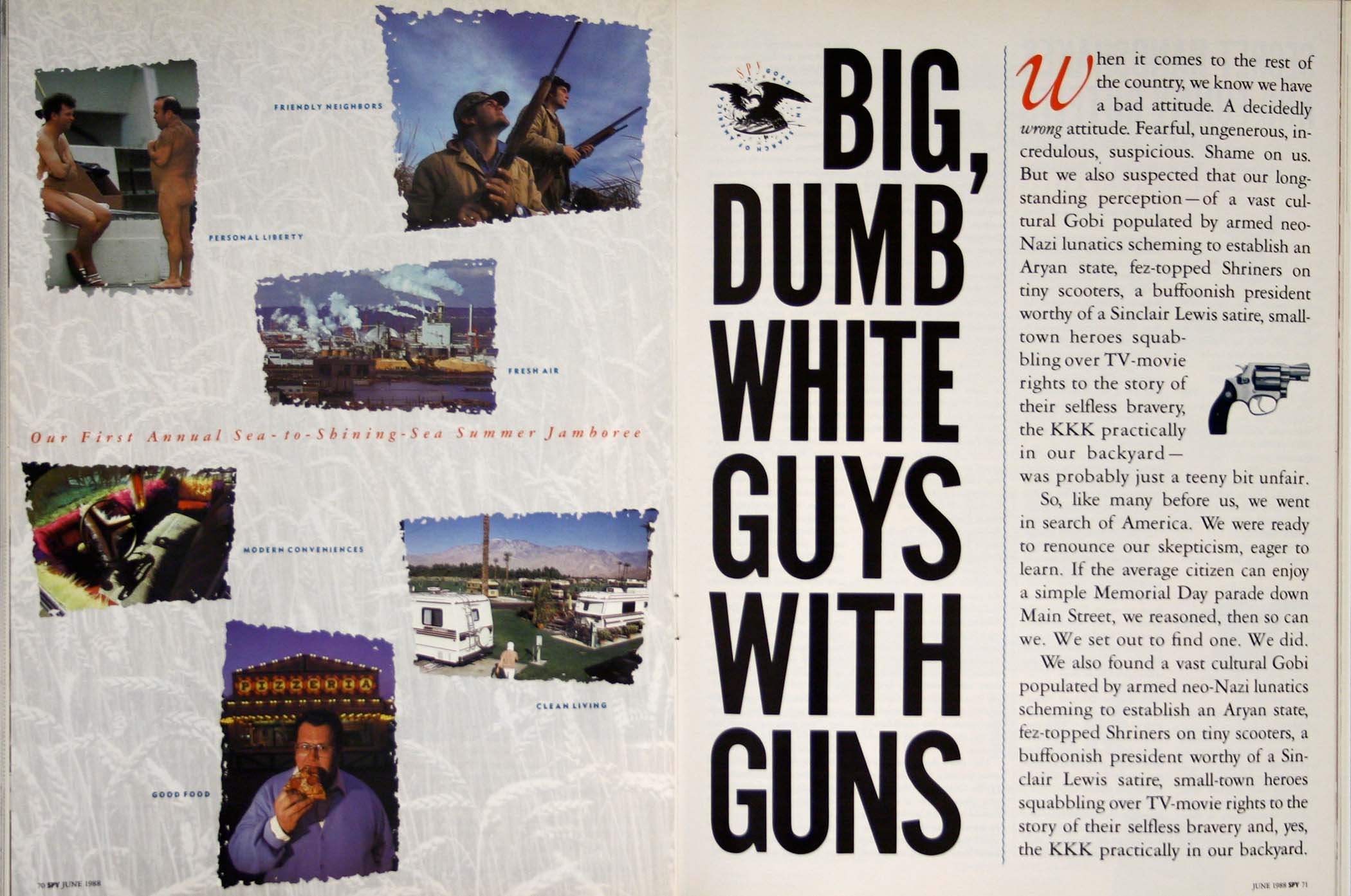

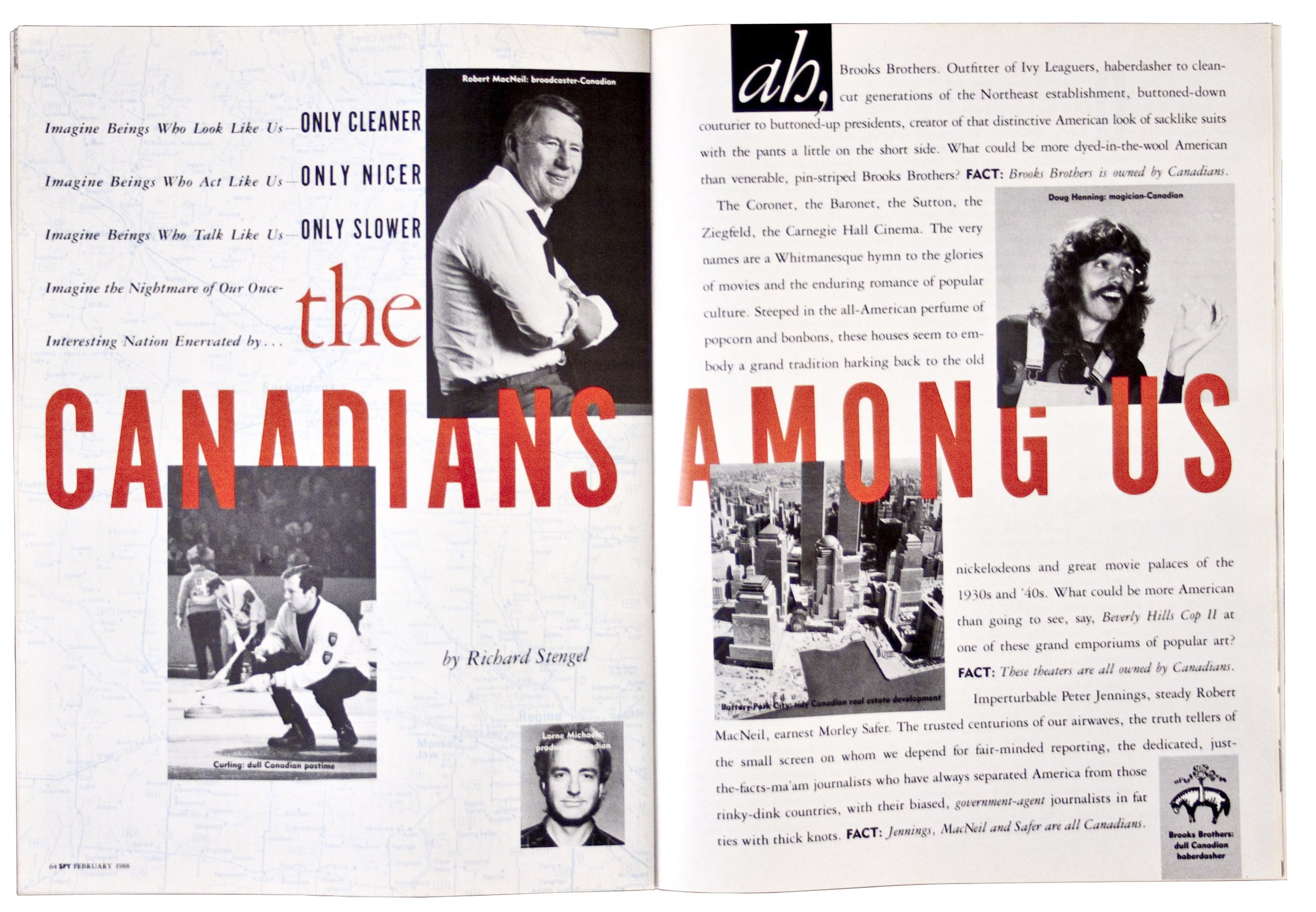



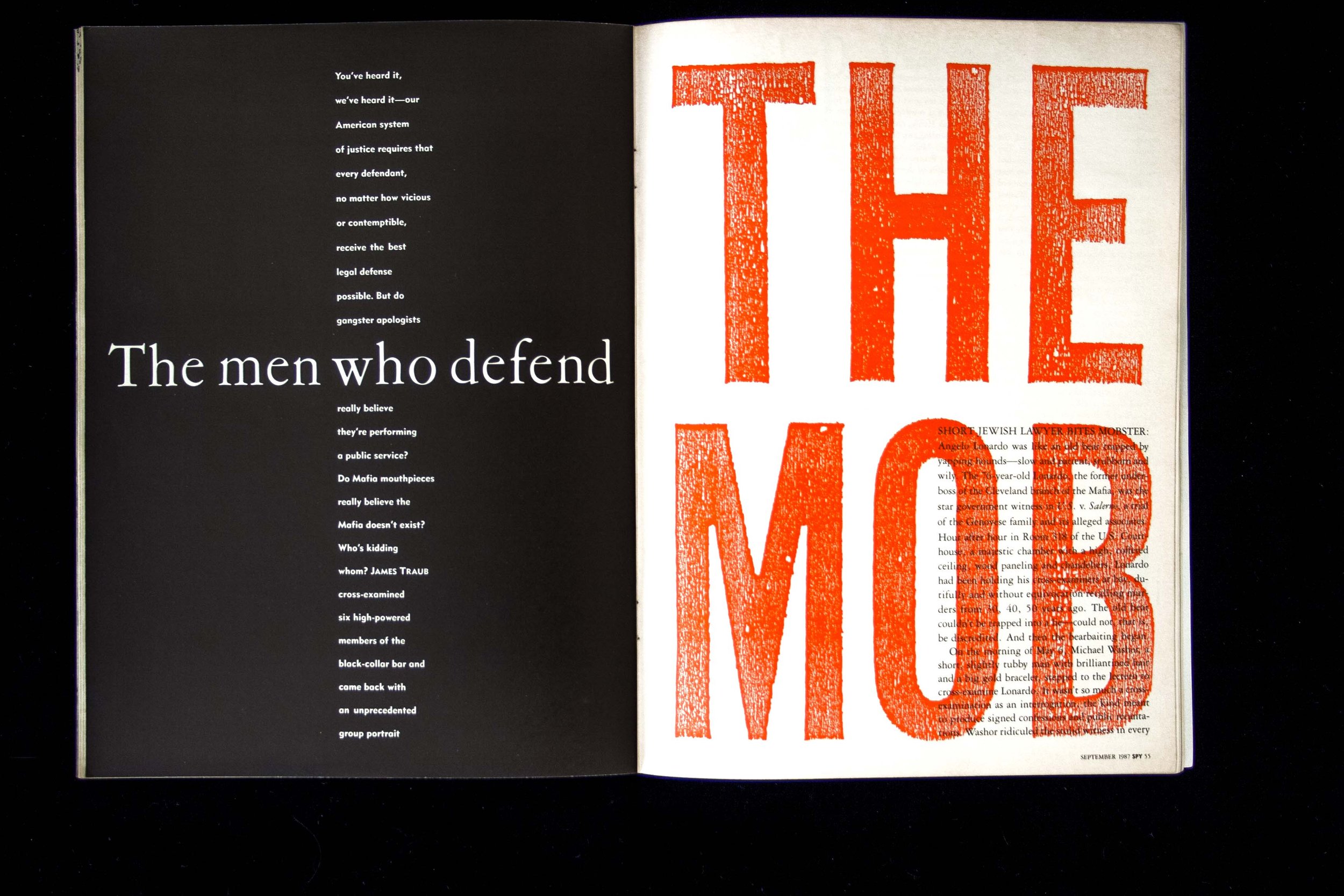
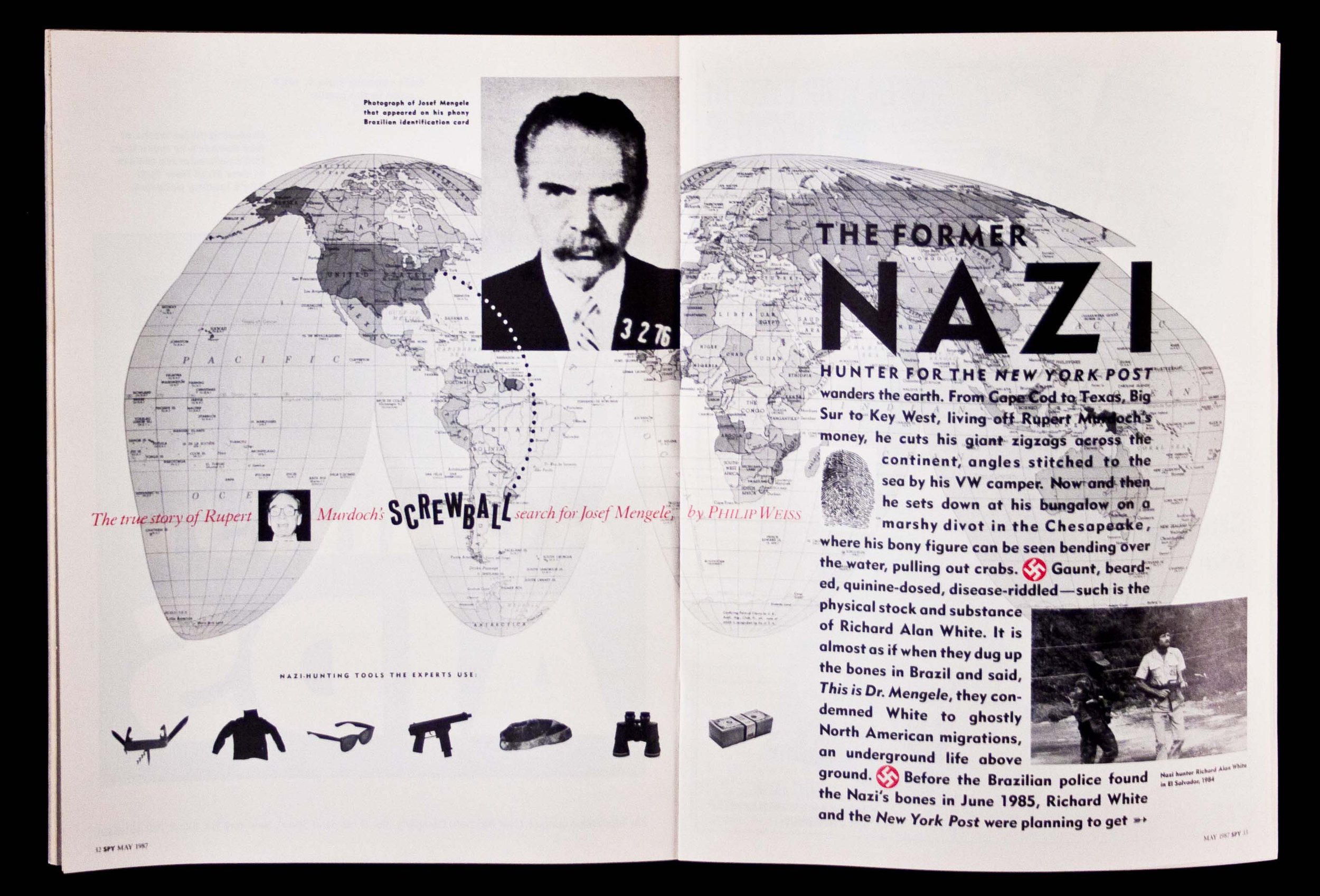

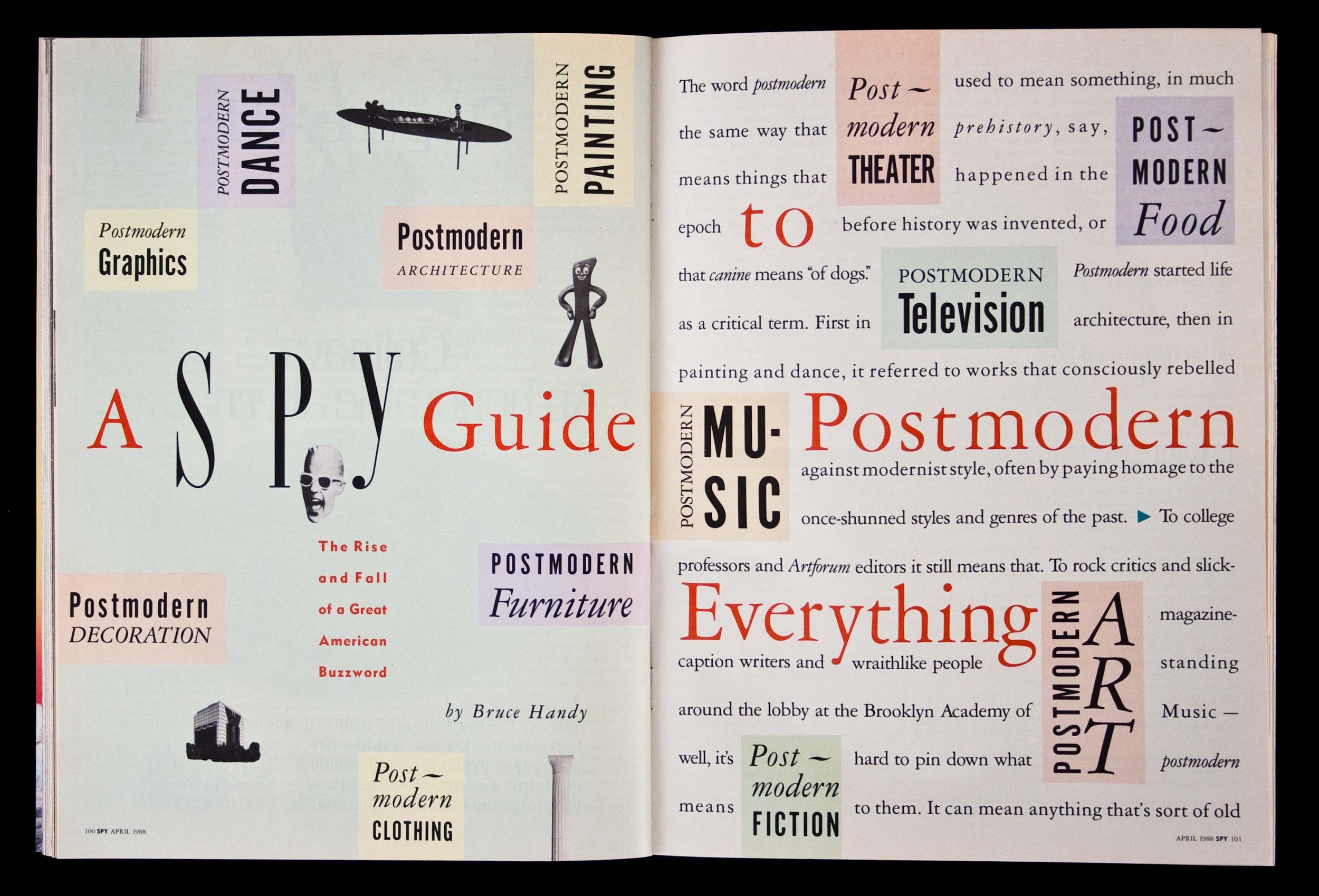
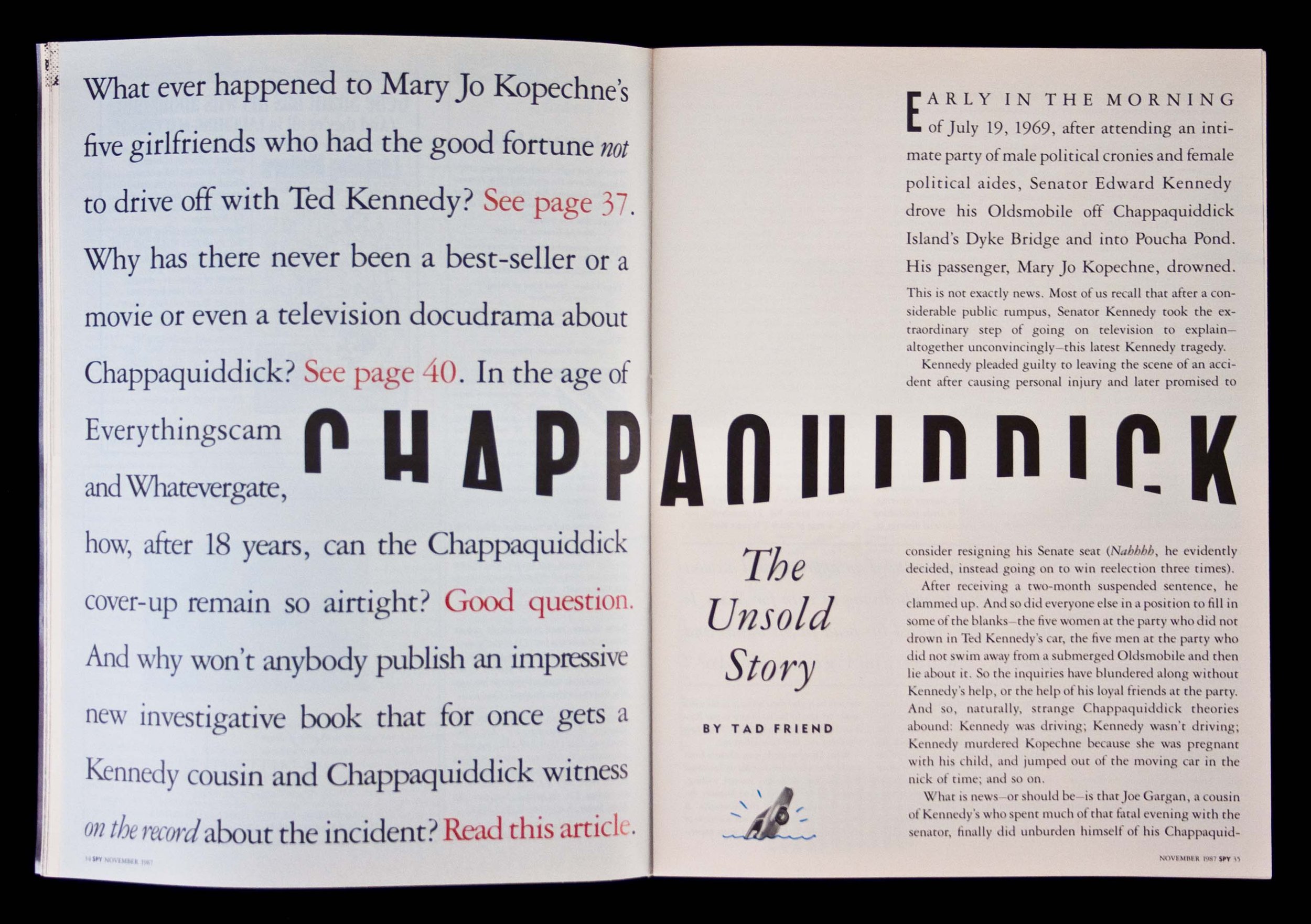

George Gendron: Yeah, that was extraordinary. So you guys raised some money and then you go out and you rent an office in, appropriately-enough, the Puck Building.
Kurt Andersen: It’s funny: Even when we were just still talking about it and dreaming about it and Graydon and I were having lunch—we would have lunch in Times Square and play the video game Asteroids in one of those Playlands after lunch—and then we’d walk back to Time Inc. and I literally remember looking up, we were looking up at buildings and we looked up at one old building and one of us, probably Graydon, said “you know that’s the kind of place. We could have these offices for this magazine and it will be like our clubhouse.” I’m not even sure we knew about the Puck Building at that point. But as soon as we discovered it—it had recently been renovated and there weren’t many tenants yet and of course it was the home of this famous satirical magazine a century earlier—but as soon as we saw that building, and it was in Soho, but a kind of grungy edge of Soho, and it was a beautiful little building, and it was just kismet. We had to be there, and it was cheap. It was super cheap.
George Gendron: Not anymore.
Kurt Andersen: Not now that Jared Kushner owns it. Although recently I discovered—I didn’t realize it then—that Jared Kushner’s father was already an investor in it when we were there, which adds something to my retroactive amazement of my various connections with Donald Trump and his family.
George Gendron: Boy that’s ironic, isn’t it? I thought the Kushners were a relatively recent ownership group.
Kurt Andersen: Me too. They weren’t the owners then, but they were part of a group, right around that time we occupied the Puck Building when the future inmate, Mr. Kushner, was part of the investor group who owned it.
George Gendron: Boy you just can’t kick the habit, can you Kurt? It might interest you and your wife to know there’s a nice, tidy little penthouse for sale on one of the top floors of the Puck Building for a mere $42 million dollars if you’re feeling nostalgic.
Kurt Andersen: It’s funny when they opened that and Jared Kushner and Ivanka Trump were the doyens of that whole operation. I don’t know if it’s their apartment, but you know Spy was I believe on the eighth floor, and it was nine floors. So I always wonder: are they living in my office now? Yes, indeed I’m aware of that availability.
George Gendron: Did you guys go into the office every day?
Kurt Andersen: No, we worked remotely. Yes, of course we went to the office every day!
George Gendron: I was just curious about work habits back then, especially for our younger listeners.
Kurt Andersen: It was the hardest job. I mean you know TIME had had its hardness, two nights a week, but man no, we worked. We worked long, hard hours, absolutely, and it’s interesting I felt like I was working every waking hour, but we didn't go into the office much on weekends. But yes, we worked hard. We went to the office you know, showed up whenever we showed up at 8 or 9 and were there till after dark.
George Gendron: Was it what we would call a newsroom-ish environment? Open?
Kurt Andersen: Yes, it was an “open plan,” which we never called it, but it was just a big loft with some cool partitions that our architect friends had put up. It was three-thousand square feet with an increasing number of people just running around screaming at each other in sight of each other all the time. It was great.
George Gendron: Yeah, now we’re getting to something that really interests me, which is the relationship between spaces and how people end up working. I got so hooked on the newsroom at New York, particularly in the old 32nd Street building, which eventually became the Pushpin building. There was just something about that kind of energy and buzz, when you could have all these conversations. I had been the mail boy there, and when I moved up to the newsroom I felt like, man, I could just sit and listen every day.
Kurt Andersen: A hundred percent.
“[Spy was] a scary, fun thing that pretty soon was getting a lot of attention and enthusiasm among readers. We had invented this thing that took a lot of work to do, and we wanted to do it, and so did the art directors and the fact checkers and everybody. It was a labor-intensive labor of love.”
George Gendron: What a way to Iearn.
Kurt Andersen: It’s funny that you mentioned New York because when I went on to New York after Spy, at a different location on 41st Street.
George Gendron: Yes, by the Daily News.
Kurt Andersen: Exactly. There was the editor’s office, which I occupied. It was this big, closed-off, wood-panel thing. I kind of hated that. At one point I proposed, “Can’t we just tear down this wall down here?” But I totally agree. I don’t want to be the old fogey, but it was great back then because nobody wore headphones or earphones and they actually talked. It wasn’t all these Dilberts in their cubicles just typing away alone. There was a communality by the nature of not having…. I mean we had computers, and that was avant garde in 1986.
George Gendron: Boy was it ever.
Kurt Andersen: But it was a lively office culture. As you say, “newsroomy,” in which everybody experienced together all the time. It was great.
George Gendron: One of the other things I loved about it was at least the illusion—and it might have been an illusion for a young kid—that, man, it was hard to keep a secret in a newsroom. Everybody knew everything.
Kurt Andersen: Yes, it was hard to keep a secret. It just occurred to me not only did we have a serious work ethic, for a magazine that was mean. I remember when The Wall Street Journal of all places accused us of being too mean. It was the opposite, mostly, in the office. It was a very collegial, happy band of sisters and brothers, which was an important part of this scary operation we were doing.
George Gendron: I’m really curious: Where did story ideas come from?
Kurt Andersen: All the usual places, which is everywhere. We had regular—I don’t even know how often—frequent editorial meetings, often with lunch, and we would just gather around and bring in sandwiches. The 15-person editorial staff would gather around a table and say, “I have this idea,” or “I have this.” They were such magnificent, wonderful, exciting meetings, and Graydon and I were in charge but it was a pretty democratic, jazz-like, improvisational thing. It was wonderful. And having had a subsequent life of going to meetings that weren't so fun or exciting or jazz-like, it’s one of those things that in retrospect I certainly realize man, I didn’t know quite how good I had it.
The editorial meetings were how people understood what it was we were doing, which they didn’t at first. One of the reasons—I’m sorry I’m digressing—we did so much editing, from the beginning it was a highly edited magazine, was not because we wanted to piss on everything or get our hands on everything but because what we were doing was a new thing that we couldn't point to something and say “It’s like this. Do it like this.” We had to be around for six months or so before writers, let alone everybody else, could say, “Oh I get it. I get what you're trying to do.”
When you said it was about sensibility and style and all that—we certainly had a house style or a set of house styles for sure—but it didn’t begin with that. We had a vision and then it took a while for the rest of the world and our staff and outside writers to sort of come along.
George Gendron: One thing that was absolutely remarkable for me as a reader was that there was more going on per square inch on a page of Spy than anything I had ever seen before. It was literally a conceptual miracle. On the other hand I kept thinking how in God’s name do you guys do this without just burning out?
Kurt Andersen: Well I take that as a great compliment, and many of my friends at magazines at the time were also struck by it. Especially if you do that for a living, you are aware of how much person-hours per square inch that went into this, and I mean we didn’t have any bosses, right? We were working for ourselves doing this. A scary, fun thing that pretty soon was getting a lot of attention and enthusiasm among readers. We had invented this thing that took a lot of work to do, and we wanted to do it, and so did the art directors and the fact checkers and everybody. It was a labor-intensive labor of love.
George Gendron: I was reminded of that when recently I re-read The Funny Years, because that book captured that same sense of layer-after-layer-after-layer kind of editorial conception.
Kurt Andersen: That kind of highly-layered, fussed-over, even Mannerist version of a magazine that we did owed something to our childhoods as MAD Magazine readers. There was all those little marginalia. Together with coming of age to some degree at TIME magazine and all the infographics and charts and stuff and sort of doing that, but subverting it—and doing it without a staff of 500.
George Gendron: Exactly. So eventually you guys hire Stephen Doyle to design the magazine. Had you and Graydon, or you or Graydon, highly visualized the magazine before Stephen came along?
Kurt Andersen: In very basic ways. We had a notion—well, no, Graydon certainly had a notion—that it should have a classical and traditional look because again it was: How did magazines look in 1940? The logo in a certain way bears that out. It wasn’t as though Stephen Doyle just showed us, “No, it’s this.” As one does when you’re an editor working with a very skilled and talented art director, you iteratively go back and have conversations about what there should be and we realized that we wanted it to be, dense and a little strange and a little singular.
But because it was this weird, satirical, edgy thing, we didn’t want it necessarily to be—we liked the idea of it having a certain amount of traditionalism and rigor in various ways. In the end, the art direction was not traditional by any means, although there were these drop cap flourishes and there are bits of traditionalism within this sweet, generous madhouse of possibilities that Steven and his successor Alex Isley invented.
George Gendron: I still find it hard to explain when I’m talking to a journalism class about the impact that you guys had on the look of magazines. In the late ’90s. I hired Drenttel Doyle to redesign Inc. Magazine, and when I went down to their studio and saw the first round of roughs I swore—and Stephen can attest to this—that I could still see vestiges of Spy, and they looked as fresh then as they had a decade earlier.
Kurt Andersen: Well it did have an impact, which was no credit to us except that we made it a good magazine. Yes, ten, twenty years later—even today—when I see these funny charts with silhouetted heads decorating them, I go, “Well, we invented that.”
George Gendron: Yes, that looks familiar…
Kurt Andersen: And in a weird way I jokingly say we invented the internet or anticipated the internet. There’s some anticipation in some of the things we did like these massive connect-the-dot charts and infographics. Because the internet came along while we were doing it or right after we stopped doing it, there was a certain amount of “Wow we want some way to connect all these disparate things and deliver it with this you know satiric sensibility: I mean, the internet.”
George Gendron: Yes
Kurt Andersen: So as it turned out there was there was some kind of proto-internetty quality to much of the of the graphic design, but also just using old photos because they’re dated and the models look funny because they’re from the sixties—again that was just brilliant art direction that Stephen and Alex and others put in there. That helped a lot, too. If it just looked like The Atlantic or Harper’s or The New Yorker but was the same thing, we wouldn’t have had near the impact.
George Gendron: I agree with that completely. Speaking of Stephen and Alex, they both happen to be alums of M&Co., Tibor Kalman’s firm, and I’m curious was that part of what attracted you to those guys I mean it’s hard for people, who forget just how sexy M&Co. was back then. I don’t think there’s anything comparable right now.
Kurt Andersen: Well, there’s Stefan Sagmeister, you know? But Tibor and M&Co. were an amazing thing during his time of efflorescence. It was extraordinary. Frankly, we were not that deep into the graphic design world yet, so we didn’t know Tibor, we were not part of the M&Co. cult yet. But as soon as we hired Stephen and Drenttel Doyle, and then here’s a guy—in the case of Tibor, independently of us. We were working in adjacent lanes in the use of vernacular bits and pieces and the combination of the extreme freshness and mischievousness of it. Yeah, definitely. Fortunately before he died in the ’90s he became one of my best friends.
George Gendron: It’s interesting that when you think about all the talk about human-centered design these days, it puts how far ahead of his time Tibor was—not just in terms of his design style and his antics but his values.
Kurt Andersen: Yes, totally. He could be serious and he could be earnest and all that but, in doing it in a kind of fun way. Misbehaving in a serious way. He wasn’t a yippie—he wasn't just trying to tear it down for no good reason. He combined virtuous intent with a sense of fun and glee.
George Gendron: Not unlike Spy.
Which is why, once we finally met and got along, we talked about starting magazines actually in the late ’90s. We had a couple of different ideas for magazines we wanted to start.
George Gendron: And you guys were both eventually associated with Colors, Benetton’s magazine.
Kurt Andersen: Well, he created it, and I came in near the end to do it for a year and a half.
George Gendron: I’ve spent most of my professional life exploring and documenting entrepreneurship and creativity, and it’s always struck me that many of the most original, edgy, fresh ideas emerge from environments characterized by resource scarcity. When you don’t have capital, you have to invent, you have to be resourceful. You have to substitute ingenuity for financial capital. Was that true at Spy?
Kurt Andersen: Yes. Absolutely. I agree with you both in theory and in my experience. But we didn’t have nothing. We weren’t a zine. We had a million and a half dollars, and then at a crucial time once we were successful but didn’t have enough money to go on, we got another million and a half. That’s a lot of money, that we husbanded a lot. But yes, what I think is not that the less money the better, depending on what you're trying to do, but there is some optimal amount. It wasn’t Portfolio, which was a fine magazine, but not a magazine where having all the money in the world necessarily helped it.
George Gendron: Well at a certain point too much money becomes kind of toxic.
Kurt Andersen: Yes indeed. At a certain point—1988 or 1989—we were able to spend. I would like to go back and look how much we spent on this incredibly expensive, mind- blowing computer—essentially what you can now do in Photoshop—I can’t—but little kids can—we spent thousands of dollars to have a cover of Ted Kennedy having water thrown on him, or whatever it was. So we picked our places to spend a lot of money. We didn’t pay writers very much and we didn't pay ourselves and our staff that much. But whoa, if we can do this amazingly realistic-looking fake—obviously fake—photo cover, then yeah, let’s spend a couple or three thousand dollars or whatever it took. But it was like, literally, like a mainframe computer that was required to do these things.
George Gendron: On a more mundane level, I’ve always wondered how much cost you guys to put together the chart that documented every CAA client in Hollywood?
Kurt Andersen: That wasn’t so much money as sheer sweat and blood and tears. They were this incredibly powerful, all-powerful Hollywood agency that was suddenly the force in Hollywood, but there was no list of who they represented, so we thought people would like to see that. So that was a matter of like a gazillion hours of very poorly paid researchers digging up in every way possible who were the actors and writers and directors they represented, and then we just published the names. That’s all it was. It was just publishing the names on two or three pages.
That single thing as much or more than any of the regular monthly coverage, news or columns or exposes we did on CAA—they were a real focus of ours—that completely freaked Mike Ovitz, who ran it, and them out: “This is the secret we’ve been able to keep, and this little pipsqueak magazine exposed it?” That really set them off, and what a pleasure that was for us to get such a rise out of these big powerful grownups.
George Gendron: With a chart. A list.
Kurt Andersen: Of course. I loved maps as a little kid and I loved charts and I still do.
George Gendron: But it also displays a certain kind of editorial restraint. I could imagine other publications building an entire special issue around that—the Hollywood issue.
Kurt Andersen: Well thank you. It’s true. In that sense, the person-hours per square inch may have been at the maximum. I don't think of it as expensive but of course in some sense it was expensive.
“[Graydon and I] were extremely, in every respect, very complimentary. We were pals, but we were very different people. We all have blind spots and we pretty successfully covered for each other’s blind spots, and we made each other laugh. We intrigued each other. We interested each other. It was a fun, buddy-comedy partnership.”
George Gendron: We’ve got to talk for a second about you and Graydon, because in a way you defied all the odds about the conventional wisdom which is you can’t have co-editors. You can’t have co-CEOs. You can’t have co-directors. It never ever works. I know venture guys who basically say for them that’s a deal breaker. Two guys come in and they can’t answer the question who’s accountable, who’s in charge here. And you did it. I love the quote, I think it was Graydon’s, who said, “Between the two of us we make one great editor.”
Kurt Andersen: In retrospect it is amazing because as you say everybody says, “No you don’t do that,” and there was no precedent… “Oh, we could be like them.”
At that point there weren’t even these brother director teams who made movies successfully. We were extremely, in every respect, very complimentary. To Graydon’s point, we were pals, but we were very different people. We all have blind spots and we pretty successfully covered for each other's blind spots, and we made each other laugh. We intrigued each other. We interested each other. It was a fun, buddy comedy partnership.
George Gendron: How’d you handle it if and when the two of you had what might appear to be an irreconcilable difference?
Kurt Andersen: While we were doing the magazine, I literally can’t remember any such thing. In the startup period there were some moments when there were harsh words. I don’t even remember what the arguments were about but there were some moments, tough moments, and then when we were, you know, selling it. There were some inevitable differences of opinion about how that should go or whatnot. But for the five years we were doing it together, I don’t know, through our fondness for each other and for what we were doing we just got along almost without exception.
George Gendron: That’s really extraordinary. Are you guys still close?
Kurt Andersen: We’re still pals. We don’t go into the office together every day, but yes I still talk to him and communicate with him regularly.
George Gendron: One of the things I find really interesting and remarkable about your career is not just the quality of what you produce but that you’ve produced creative work along a spectrum—from books, which have got to be one of the most solo-intensive creative projects imaginable—to a radio show, which is sort of in the middle of the spectrum, to magazines, which we’ve been talking about. I’m curious to hear where your passions lie when it comes to actually doing the work for these different kinds of projects.
Kurt Andersen: You’re right. Magazines, and everything but books in a certain way, are highly collaborative enterprises. Doing Spy was intense and scary and I felt like I was attached to some giant generator all the time. Not that it aged me but it was just intense, and having this team of people to do it with was such a delight. Frankly because I've never been a natural reporter—I have done it, I can do it, but it isn’t really my happy place—but having ideas for some outrageous story that I can just then ask somebody else or order somebody else to do, that was my ideal. That was fantastic.
And I liked that at New York. I think being a magazine editor—I had not been a magazine editor before I started Spy and then I did New York and then that was the end of that. I think 10 years of doing it—and it was a completely pleasurable 10 years of doing it—was about as much as …. I lucked out. Another of the many ways that I’ve lucked out.
It was like, “Yeah. I didn’t have to, you know, work my way up. I got to run two magazines, and then I was done.” And that was fantastic. And I don’t think I’m a great boss. I think I was an okay boss. I don’t think I was a bad boss. But managing people is not my favorite thing in the world to do.
George Gendron: Oh my God, tell me about it.
Kurt Andersen: You know hiring and firing all that. If you like the thing you’re doing, as in my case, you put up with the managing of people. Once I said now, the rest of my life—didn’t say the rest of my life—now I’m going to write books and novels—and maybe that was a function of being you know 44, when I started being a book writer I was completely, temperamentally highly suited to sitting alone in a room all day. Maybe because I had gotten the ten years of incredibly intense collegial teamwork out of my system.
George Gendron: Yeah, that makes sense. I'm curious. Indulge the print romantic in me for just a minute. What is it about the effect that magazines seem to have on people that makes them so distinctive?
Kurt Andersen: It’s funny, you use the present tense, I guess that’s still true. A bunch of things. Certainly now, in the digital age, the artifactual nature of them is lovely, but it was even before, when it wasn't that big of a deal because everything was physical … a well-made and in in some cases creatively ambitious object of magazines, and we did try to be physically, creatively ambitious with fold outs and maps and bind-in tattoos, and all kinds of stuff. I think that is appealing but I think what is lost pretty much entirely in the digital format is this sense of here is an authored thing, of this week or this month or this quarter or whatever, that is all put together for some set of reasons, and the mix is chosen, and it’s all made. It’s a thing. It’s not an ocean.
It’s not a bit of stuff floating in a sea of the internet. It’s this thing that the editors, for better or worse, successfully or not, have chosen to put together in this way right now. That sounds like “Well yeah,” but that doesn’t exist anymore.
George Gendron: Yes.
Kurt Andersen: And it can’t exist in newspapers, physical or not. I mean the newspaper has never been that because it's this daily thing. A magazine—weekly, fortnightly, monthly, whatever—was “what should we put together this week or this month to do this thing and give it this cool poster,” as I always thought of covers. I think from a reader’s point of view, a consumer's point of view, it’s something more like reading a book.
A book is a relationship—if it’s a good book—it’s this intimate relationship with you and the author and every word she or he chooses or every sentence and how they do it. Magazines have that in a way—individual pieces can be as brilliant as ever online, as they were in magazines. But it’s the collection of them to some larger purpose or expression of sensibility or whatever a given magazine is trying to do.
George Gendron: I think that’s true, and I think that’s also related to so many people that I’ve grown up with, obviously magazine people, often look at their experience, particularly creating a magazine, and say, “That was the best job I ever had.” There’s something about that level of intense collaboration…
Kurt Andersen: Yes.
George Gendron: …with an actual artifact, at the end of the day, something tangible. You can hold it in your hand.
Kurt Andersen: Totally. And I also think that I and other editors and writers tend to have different metabolisms. You can do a daily thing. You can do a quarterly thing. Or you can do a weekly, you can do a monthly. But I knew from early on, after my one day as an employee of the New York Daily News, that daily was not going to be my metabolism. It just wasn’t. Weeklies are exciting, but a monthly, back in the day, when you didn't have the twenty-four/seven gush of news on the internet and cable television, a monthly was possible. But in the digital age monthlies weren’t the first to go necessarily but they were the first to be rendered like: What? Why do we? A monthly magazine? There are still ways to do it, and there are still good monthlies and they figure out ways to do it.
But before the internet, a monthly was an opportunity to do a certain kind of thing that just can’t be done now. I mean yes, The Atlantic does a brilliant job of being a monthly magazine, but it’s all about, you know, the stuff they do every day.
George Gendron: Yes
Kurt Andersen: Not to say, “Well those times are gone forever,” but they are. In addition to this more fundamental thing, as we talked about, this “authored object” that the internet really just cannot provide.
George Gendron: I remember from the time I was relatively young when monthly magazines would arrive in my house and later when I was on my own in my apartment. When my favorite magazines arrived it was an event.
Kurt Andersen: Completely.
George Gendron: You know you have a glass of wine. You go to your favorite chair, you sit down….
Kurt Andersen: You’ll light up the cigarette if you’re me.
George Gendron: We won’t even go there now. You just sit there and think, “I’m going to spend time with my friends.”
Kurt Andersen: Exactly. And if you’re like me growing up in Omaha, Nebraska, you know it’s even true of reading DC comics. In Omaha it was a connection to New York City, which is why as soon as I could I moved there. That loops back to this feeling that I think both Graydon and I had when we decided to do this: we want that, we want that. How do we create that again for ourselves and for people who share our, whatever, taste?
Benetton’s Colors, one of Andersen’s post-Spy projects.
George Gendron: You guys started out kind of skewering the glitterati in New York and then you became kind of celebrities yourselves in a way via Spy. Were there times when the two of you, together at an event or something, you looked at each other and said, “Not bad for kids from Canada and Nebraska?”
Kurt Andersen: In the biopic, yes, we did that. I don’t know if we ever literally did that. We certainly had a sense of how fortunate we were and how great this was as it was going on. I know I did. We thoroughly indulged our ability to be excited at the time. Yes, and you know we knew at the time I mean Graydon used to say to you know these poor youngsters that we paid so little to, “Yeah, you're not paid very much, but this I guarantee—this is going to be the best job you ever had.” And many of them have subsequently said—now middle-aged people, of course—“You know, you’re right? That was the best job I ever had.” So we felt like we had grabbed a brass ring.
George Gendron: Did you ever think to yourself that the fact you were outsiders in a way was a competitive advantage?
Kurt Andersen: Yes. I would never call it a competitive advantage, but absolutely yes. We were aware of that. Being from Ottawa and Omaha, and in the big city we’d seen movies about and TV shows about and dreamed of. And also being able to see all the weird outsized stuff about life in the big city, and the big cities, that we could see with the fresh, yokel, skeptical eye. It was this combination of loving it and seeing the absurdities of it. Pressing our noses against the glass—and breaking the glass occasionally. Something like that.
I think the outsider-ism is a big part of it. I remember reading biographies of Harold Ross, founder of The New Yorker and of course he was from the middle of nowhere as well [Aspen, Colorado]. So I think there is something to that.
George Gendron: A lot of people who enjoy even a modest level of celebrity find that it’s really toxic. There’s a lot of talk in the culture these days about celebrity culture being toxic, but I’m talking about it from a different point of view. I’m talking about it in terms of the effect on the celebrities themselves. And I’ve always wondered as I’ve watched your career evolve and Graydon’s, whether at least for you, the way you kept your feet on the ground was through the pursuit of interesting work.
Kurt Andersen: Each of us has had a certain amount of notoriety if not fame. We haven’t turned it down. But look at what we’ve done and how we’ve lived our lives—that hasn’t been the driver. We haven’t amped it up. We didn’t fall for the modern American sin of fame is everything and that’s really all you want.
I can only speak for myself in saying yes to what you just said, which is you try to be interested and stay interested and do good work, and if you get paid well or if you get praise, great. All that's good. And in my case I know if it allows you, as it has allowed me, to do all these things that I had no natural credential or standing to do like, “Oh, you’ve been a magazine editor. You want to host a radio show?” WHAT? Yeah, sure.
At that point I was writing books and one of my thoughts was, well I got this radio show, everybody who listens to public radio buys books. That's a good thing for an author to do. So I did have some consciousness of how to use having some degree of public profile for my own benefit. Maybe because of how we were raised or where we were raised, I don’t know, we have not spent our time, either of us, being seekers of the limelight. Graydon especially. And God knows as editor of Vanity Fair he could have. He was if anything the opposite of not seeking, trying to get interviews, trying to get photographs, all that stuff. Never at all.
George Gendron: This is going to sound like an offbeat question, but there’s a serious purpose behind it. I want you to imagine that you’re sitting and having lunch with Laurene Powell Jobs…
Kurt Andersen: Okay.
George Gendron: …and she passes across the table a check. A very, very, very large check, and says, “You can use this, but you can use this only to create a print magazine.” What would you do?
Kurt Andersen: I don’t know. It’s a great question and we’ll have to go away for a day and come back if you want me to answer it with any seriousness. It’s a great question, and I’ve never entertained that kind of fantasy because my days editing magazines and the day of the print magazine is done, unless you know you some tiny little niche, fine boatbuilding or whatever.
If you had a gazillion dollars to create a print magazine I have a feeling I could come up with something. I can’t say here’s what I’d do, because if I had that then I’d go to Laurene Jobs and say, “Hey, give me a hundred million dollars.”
The last serious idea that I had, or we had—Tibor Kalman and I back in ’98 or something like that—was we wanted to buy LIFE magazine, which existed, but barely, at that time, and turn it into a modern turn-of-the-century, twenty-first century pictorial weekly like LIFE magazine as it could be today.
Could that be done in 2022? I don’t know, but I can imagine—even though I have said to myself, to my wife, to everybody, “I’m done with jobs,” I can imagine that offer being appealing enough. If those were the only constraints—here’s a gazillion dollars and it has to be a print magazine—I would spend a lot of time thinking about that.
George Gendron: Well, we’d be interested in having you spend a little bit of time thinking about that. I think is an interesting way of exploring a question, which is: What is it that we as readers, as consumers, as a culture, are missing as a result of obsolete magazine business models? Sustainable business models?
Kurt Andersen: It’s a great question. I got to the answer of what we’re missing before in describing why people liked and perhaps like print magazines. They are like a fine boat or like a beautiful house—there is nothing else like them. They are not quite a book and they are certainly not an internet magazine. They’re something else, and it is that sense of craftsmanship and a kind of coherence that can’t be done any other way that I’ve seen. If you could do it just to prove that it could be done and have beauty, usefulness, impact? All that would be fun to figure out.
Andersen’s two most recent books, Evil Geniuses and Fantasyland, both New York Times bestsellers, remain relevant and even timely. Find them at your favorite bookseller.
And if you want a little bit more Spy, grab a copy of the beautifully-designed (by our friend Alexander Isley) and richly-detailed Spy: The Funny Years, which contains over 300 pages of Spy’s funniest and most creative work, along with the ultimate insiders account of how it all came to be.
Follow Kurt on Twitter @KBAndersen, or visit his website, kurtandersen.com for more information.
BACK TO THE INTERVIEWS
What’s Black and White and Red All Over?
A conversation with designer Roger Black (Rolling Stone, Esquire, Newsweek, New York, Smart, more).
Roger Black is a pioneer. His art direction of iconic print brands and high-profile redesigns, his early embrace of digital publishing technology, and his typographic innovations are hallmarks of a 50-year, trailblazing career.
He’s refined his design mastery at publications ranging from Rolling Stone to Esquire to Newsweek to The New York Times Magazine. He’s written books and started companies. He’s worked for clients on every continent.
And now, at 73, Black’s focus has shifted to type. More specifically Type Network, a font platform launched in 2016, where he serves as the company’s chairman.
Black’s design legacy not only includes memorable makeovers but also the fundamental need for an underlying reason and purpose behind them, often sophisticated, always functional. Throw in his signature color palette — red, white, and of course, Black — and you’re in business.
All that said, Black preaches that the true DNA of a successful brand identity is its typography.
We talked to Black about why he left home in the third grade, how an early blunder almost cost him his publishing career, what it felt like to follow in his mother’s footsteps at the New York Times, what he thinks are the five best-executed magazines of all time, and about why he’s always on the move — and where he’s headed next.
Patrick Mitchell: In his in-depth article about you for New York magazine, the notorious Michael Wolf said of you, “The goal he seems to have set for himself is to design, practically speaking, all magazines. And to a large degree, he has succeeded. Certainly he has designed more magazines than anybody else. He may have also made more money from magazines than any non-owner.” There’s a lot not to unpack there, but I think it’s fair to say that most people in our business would say that's a pretty accurate picture.
Roger Black: Well, it’s a fairly low bar at the end to say that I made more money than non-owners, because most of the owners that I know went broke.
Patrick Mitchell: But you’ve taken the magazine art director position to a place few of us have ever seen. Was that your plan?
Roger Black: I think every art director, every designer, whether they spend a lot of time on it or not, looks at everything as a subject for redesign. You look at anything, and it could be architecture or industrial design, and you say, “I could do better than that.” I mean, nobody would be a designer if they didn’t have a certain amount of ego. And some of us have a lot more ego than probably the customary share. So that’s probably why I ended up doing so many magazines, that I just thought they needed to be done.
And as you know, I started a few, too, that weren’t fresh designs, but the thing that I note is very early on — well, fairly early on, I was probably in my early thirties — was that I wasn’t really designing pages much anymore.
I was designing systems for designing pages. And that was what I was most interested in. How do you set up the rules and formats? (That’s what we called it in those days, “formats”) …
Debra Bishop: … We still call it formats!
Roger Black: … And there would be a list of type, and we would do an illustration- and photo-stylebook and engage with photographers and illustrators, help hire staff photographers — if we could convince them to do that. And that became really interesting to me. And then it became a business.
People kept saying, “Could you do that? Could you do that?” And then I kind of went nuts and started other studios because my language skills are typical American. That is to say, I get through English probably not that well. And the other languages are pretty blurry. I can read the Latin languages, but if you came up and started talking Portuguese to me, I would have to use Google. Fortunately, Google has that automatic translation now, so your phone could help you.
Patrick Mitchell: So along those lines, I want to ask you, what is a creative director? Because I think, as important as your design work is, your true legacy is redefining the boundaries of where you can take a design career.
Roger Black: For one thing, creative director to me is a title, an advertising title. I think that Milton Glaser had it right when he tried to change the title to “design director” rather than art director. I mean, Milton, of course, was the greatest art director in history, in many respects, and certainly had the most wonderful studio with Push Pin, with Seymour [Chwast]. But he thought of the work that he was doing at New York magazine was more about design than art direction. And he liked that title. And it was slowly adapted or adopted. And I used it in a number of places, but then quickly I just became a consultant and there were other people who were design directors.
But I think that the point of being an art director, creative director, or design director, whatever we called it, is to be the agent for the customer, for the reader. To figure out ways of getting that person into the product — as they now call it — whether it’s a website, or an app, or a magazine or a newspaper, whatever it is.
And I only work with really text-based publications or products, because that’s what I know. If I knew more about video, I would certainly do that, but I don’t know much. And the thing is that most designers, and I’ve said this many times, think of themselves as artists.
One way of defining it, I’ve always said most art directors are frustrated artists or frustrated photographers. And there’s the typical stories that mom sent you to art school but then she said, “You got to get a job and maybe you should take some design courses while you’re there.”
So they came into the scene really being agents for photographers and illustrators. And the typography was thought of as art “graphics,” not as a conveyor of meaning. And my feeling was I didn’t want to be an agent of the photographers and illustrators. In many cases, I was trying to instigate them, trying to get them going, to try to get them excited, but I was also their adversary as well as their advocate. I wanted to challenge them. I wanted them to bend to whatever the publication needed, as opposed to what they needed, and also what the subject needed.
But anyway, the thought is that the role of an art director is really to get people into reading, in my view. And that means you got to make it easy to read. You have to give clues, you have to give summaries. No one’s going to read everything. You have to make it digestible and comprehensible and interesting. If somebody spends five minutes with your website, whatever it is, they should feel a little satisfaction. “Oh, I got something out of that. That’s cool. I’ll go back,” because that’s what you want. We want loyalty. And now of course they measure all of this, but we don’t just want good session time. We want return. We want subscriptions.
And that’s helped actually finally began to define what the digital publication business model is. It's subscriptions. So we should be working on that.
“I think every art director, every designer, whether they spend a lot of time on it or not, looks at everything as a subject for redesign. You look at anything, and it could be architecture or industrial design, and you say, ‘I could do better than that.’”
Debra Bishop: But do you consider yourself an artist?
Roger Black: I’m not an artist. I can barely draw. You don’t want to see anything I draw. It’s pathetic. I was an okay photographer, but my best pictures were taken with completely manual cameras. And my brain just isn’t fast enough to do all the calculation of shutter speed and aperture opening and stuff. And all my good pictures were taken by sure luck. I would say that’s probably a great photographer, is one who has a lot of luck, knows when luck's going to happen.
Patrick Mitchell: So looking back though, in the first grade you made a blunder that might have ended an otherwise promising career in the media. Can you share that story?
Roger Black: Well, my dad was an architect and his office was at home. His name was JJ Black, and he had a Ditto machine, which old people know was a spirit duplicator that was used a lot in schools for teachers to run off assignments for tests and things. And it was an easier thing to use than a mimeograph, which involved a stencil that you had to cut, usually just with a typewriter that didn't have a ribbon in it, but the Ditto machine was a heavy wax carbon back that you put on the back of a piece of paper and then you could draw or type on it and it imprinted on the back, unfortunately backwards. So then you could put it on this cylinder and little bits of alcohol would make it moist enough to make an impression on one sheet of paper without rubbing it all off.
And, of course, we did.
Sometimes we used too much to this “spirit” and it would get kind of messy. And my dad had discovered that you could get different colors than that usual blue that they printed everything with. And it was very fun, kind of very milky, dusty-looking crayon colors. So by changing the batch, you could draw and get a color image.
So I started using this in the first grade to print my own newspaper, which was called My Fun Reader. And it was aimed at My Weekly Reader, which was ... it may even still exist. It existed for a long time and was just filled with the most boring pap that you could imagine, but it was made for first-, second-, and third-grade readers. I think they may have had different editions as you got older.
Anyway, it was terrible and I said, “We could do better than this.” So we tried. And then the thing you’re alluding to is that I got in trouble because I started doing reporting and I had very little understanding of the conventions and rules on this [laughs].
Patrick Mitchell: You didn’t have your own libel lawyer.
Roger Black: I had no advice at all on this! Except for my friends who were helping me: Betty Legette and Johnny Ernest, and some others. Anyway, so I found out that two doors down, the lady had become pregnant and I thought this was wonderful! There’d be another little kid! And I printed that.
And my mother went berserk! And I said, “But it’s great news! And everyone knows about it.”
She said, “Yes, but she’s not married!” And my father threatened to take the press away. Well, actually he did. He closed it down and then I never got it going again.
Patrick Mitchell: They shut down My Fun Reader?
Roger Black: I know.
Patrick Mitchell: “Ladies and gentlemen, we’d like to announce that this is our last day of publishing…”
Roger Black: Yeah, we didn’t even get that opportunity. I don’t think it was widely missed. A few people in James Bowie Elementary may have noticed it was gone…
Debra Bishop: You once said, “I pretty much had my life figured out for me by my mother very early on. I was not going to be around very much.” And sure enough, you were shipped off at the age of ten — TEN! — from rural West Texas to a posh boarding school in midtown Manhattan. You said your dad was a workaholic and your mom kept herself very busy too. Why do you think they chose this path for you?
Roger Black: Well, my mother’s reason was that she had — one of the things she organized in my hometown, Midland, Texas, was the PTA. I had three older sisters and she got involved with ... they were in school and was an advocate for better schools in town and mobilized the other mothers, really. They were the main participants to push the school board in the city to spend more money and get better teachers.
And she pretty well was able to select my grade school teachers, first, second and third grade, fourth grade. And then she realized in the fourth grade that there was nobody in the fifth grade that she thought was any good.
And she said to me, “I don’t know what we’re going to do with you. In England, they go to boarding school at your age. So let’s look around.”
So she took me to the New Mexico Military Institute, which, remember Donald Trump went to a military boarding school? It was like that. And it was made to look a little like West Point. It was kind of Gothic. It was in Roswell, New Mexico, which is actually a much nicer town than Midland at the western end of the Permian Basin Oil Field. I always wondered why people put Midland where it is when they could have had their office in San Angelo or Roswell, which are both really interesting geographical places to live.
Anyway, Midland is like living on the moon. It’s flat. Anyway, I said, “I will not go to this school.”
And she said, “What would you do?” And I said, “I would run away.” So I pretty much do what I would do, and my mother said, “Huh, that's not going to work.”
And just by coincidence, she went most summers to visit her mother and family in New Jersey. And she saw an ad in The New York Times Magazine, which had an ad for St. Thomas Choir School, which was still accepting — this was in May — it was still accepting applicants for that year, that September. And she called them up and we went in. She took me in and it was kind of cool.
And I liked the idea of moving to New York. I always thought that my parents were thinking of moving back to New York. They met in New York and then moved to Texas when architecture came to a big stop in the early thirties. And they moved in 1932 to West Texas. And they always talked about New York and my mother always went every year. My dad often went. So I was like, “Yeah, I’ll go here. This looks great.”
Debra Bishop: Were you scared?
Roger Black: Not at all. I don’t remember being scared for a minute. I should have probably been scared, but I was excited. I was happy. I felt like this is it. I’m ready. I’ve got my suit, my overcoat. And I headed off in the airplane.
Debra Bishop: Was it a culture shock at all?
Roger Black: I knew New York well enough. I think the culture shock was the change in environment, from living at home with my family to a boarding school with 40 little kids, very carefully taken care of. It still is. It’s an amazing school.
At that point, we all sang in the choir. My voice didn’t change until the summer I was 13, so I made it all the way through school singing in the choir. But it was an amazing school. They had plenty of money and they had great teachers and they were also — and still that church, St. Thomas Church, on Fifth Avenue, is ... their parishioners in the 1910s and 20s were the people who lived on Fifth Avenue. Well, who were they? They were the super rich. So the church had plenty of money, and a beautiful building.
And that’s why my dad encouraged me to go, because he said, “The worst thing that can happen to you would be just study every square inch of that building while you’re there.”
So I did.
Debra Bishop: Were you homesick at all?
Roger Black: Oh yeah. Sure. In fact, there were two teachers — the headmaster, Robert Porter, and Gordon Clem, Mr. Clem, who later became headmaster — one evening about week three said, “Maybe you should stop by Mr. Porter’s apartment after dinner.” And I did. And they were both sitting there.
And what I remember most about that encounter was that these men were sitting on either end of the sofa in two different chairs. And I was in the middle of the sofa and they were talking so quietly compared to my family that I could not hear either one of them. I had to ask them to speak up. And they said, “We’re concerned because you’ve been so upset.” And I was probably as far away as any kid there. A lot of the boys there in my class were local. We had people whose parents were in London. And they took me through it. They got me to ... it was like therapy. They took me through why I was homesick. And it was all empathy. It was all, “We understand. We were there once too. We get it. This is what we did," rather than feeling sorry for me. And it carried me.
I was fine after that.
Black, far right, with Jann Wenner, center, in the Rolling Stone offices.
Patrick Mitchell: Well, your posh education was just getting started. You went from St. Thomas to the prestigious Deerfield Academy in Massachusetts, and then on to the equally prestigious University of Chicago. Princeton Review says, “Students at UChicago are both incredibly diverse and also consistently intellectual and quirky.” Do you think of yourself as intellectual and quirky?
Roger Black: Maybe more quirky. I must say that, well, after Deerfield, going to Chicago was stunning. They were all so much smarter than the average Deerfield kid. And they were all smart in different ways too. So that was very interesting. I mean some of them were math geniuses. I mean, some people — there were freshmen who knew more about astrophysics than I would ever learn. And it was a little hard to keep up with. There was enormous expectation of the students, spending essentially most of your life in the library doing research. And I wasn’t very good at that.
And in addition to which I started doing publications at Deerfield, I pretty much moved away from schoolwork to doing extracurriculars and learned about design that summer before college. I had a summer intern job, which was called an “apprenticeship,” and that shows you how old I am!
That cued me up in this ... I tried out for the Maroon, the student newspaper, and became managing editor sophomore year and the editor junior year. And my junior year at Chicago was 1968, which was an extremely good year to be a student editor …
Patrick Mitchell: … In 1968 Chicago!
Roger Black: In Chicago, yeah. In addition to which we had our own ... in addition to the democratic convention, and Mayor Daley, and all of that, we had great race riots, we had a sit-in and pretty much shut down the university. It was pretty crazy.
Patrick Mitchell: What was your major?
Roger Black: Political science. But I never graduated. I left to start a magazine, which I never regretted.
Patrick Mitchell: Wow. Do you think if you had finished that major you might have chosen a different career, or were you definitely headed …
Roger Black: No, I was doing that in order to become what I thought I wanted to be when I started and selected my major was a political writer, correspondent journalist.
A 2001 Roger Black cover of New York Magazine
Debra Bishop: Your dad was a noted architect in Midland, Texas. And your mother, Eleanor, once worked at The New York Times and at H.L. Mencken’s The American Mercury, a very influential magazine from the twenties and thirties. What did they want you to be when you grew up?
Roger Black: They actually said that’s up to me. My dad said “you should not be an architect.” He explained on any number of occasions how horrible it was to be an architect. And if I had just done search-and-replace and said “art director” instead of “architect,” I never would’ve become an art director, because it’s the same thing.
It’s completely unresponsive clients, very difficult contractors and people you hire, very hard to staff, and almost no appreciation, and almost as soon as you're done, they tear it down.
Of course, at that time when I was listening to him, I didn’t think I was going to be a graphic designer. I thought I would be a writer. So I was saying that everyone thinks that they’re a frustrated artist, I’m a frustrated writer, and that may explain why I’m more interested in typography than anything.
Patrick Mitchell: I saw a quote that he once said to you, “You work a short time on pieces of paper that will be duplicated by the thousands and then thrown away.” When I read that, I couldn’t believe I’d wasted my entire career! Did they approve of your career choice?
Roger Black: No.
When I got to be the art director of Rolling Stone, my dad thought that was okay. My mother didn’t live for me to be the art director of The New York Times. But my dad said, “I wish she had lived for that. It would’ve redeemed you in her view.” So there was something very nice about going back to New York and working in the same building as she worked, the 43rd Street building.
Debra Bishop: A few years ago, you made several posts on Facebook about someone named “Pinky.” The photos and memories you shared were very raw and moving. Can you talk about her?
Roger Black: Well, Pinky was my first spouse — I guess that’s how you have to say it these days. We met in LA. My first job as a publication art director was in LA for L.A., a weekly tabloid, which didn’t last very long, but set me up as a designer. I learned a lot, met a lot of people. And I had, in 1973, started a studio with Tom Engels and a fellow named Jim McKinsey called Type City. And I also was working under my own name doing publication design, but Type City was going to do typography and make logos.
We had something called “Instant Logo,” where, for $100, you could have as many logos as you wanted. And it almost killed us when the Grammys — not the Grammys. What was it? — Herb Alpert & The Tijuana Brass. A&M records decided they were going to change their name. He was going to call it Herb Alpert & The TJB [laughs].
So the art director of A&M called up and said, “You know that Instant Logos? Can you send 20 over by the morning?” And I think we said, “Can we do 10? We can’t do 20, we’re too busy.”
I think maybe they asked for 50, and we settled on 20.
And Tom and I sat up all night doing logos and it was really fun and it was the most money we ever made in that company, I have to say.
Anyway, so I was in LA, wandering around, and a young kid named Allen Ehrenberg came in to work as an assistant. And his girlfriend lived in this beautiful apartment building in Brentwood, the fancy part of Santa Monica. And Allen came from a very prosperous family. And his mother had divorced and remarried the guy who owned the Philadelphia Eagles, and she had a house in the Malibu Colony, and Allen would invite people out there sometimes on the weekend.
So we all went out and sat out on the beach, had a great time. And so there was one very pretty young woman whose name is Clementine van Deusen, and also from a prosperous old family. They used to live in the colony too.
And we were lined up and it was Sunday and we all had newspapers, and I said, “Does anybody have a rolled reefer?” And they did, of course, it was 1974. Everyone had rolled reefers in those days.
Clementine van Deusen, aka, “Pinky,” was Black’s first wife.
And then I realized I didn’t have a match. I said, “Does anybody have a match?” Then I kept saying that, and there’s a nice breeze, it’s hard to hear, people weren’t paying much attention. And finally, Pinky got aggravated that I kept wanting a match and nobody was helping, so she said, “I'll go get you a match.”
And so she went into the house and came back with a match, and as she’s stepping down, she hit a splinter on the stairs and screamed. Actually, it was a shriek, a really blood chilling shriek.
And I ran over it and said, “Now I felt guilty,” because she had hurt herself trying to get me matches so I could smoke pot. And we started talking, and that evening everyone was tired of the house. We thought we’d go into Malibu. The only restaurant we could think of was Alice’s Restaurant on the pier. And everyone said, “We hate it. You have to remember that we hate it and it’s expensive and we don’t have any money, so let’s just play it cool.”
And so we went in — and some of these were rich kids and some of them were people like me, just trying to make a living — and they hated it. And I had spent my last $7 getting a shrimp cocktail and a margarita — that was my dinner. And they decided they were going to leave. Just get the check and get the hell out of there, and go to the Corral. Or, no, The Stampede, which is some horrible country-and-western bar in west LA.
And Pinky and I had said, “No, we’ll just go back to the house. Don’t worry about us.” And so we did, and we were walking back along Pacific Coast Highway, it was about a mile and Pinky was limping because she had hurt her foot so I was trying to help her. And we complained about the spoiled rich kids. And that was the bonding thing. There’s nothing more bonding than both hating the same kind of thing.
So a year later we got married.
Debra Bishop: The famous New York Times street fashion photographer, Bill Cunningham looked at an old contact sheet of pictures of her and said, “Ah, Pinky. Pinky was the ’70s.” You, as an art director of the hottest magazine on the planet, and Pinky, as a fashion icon, must have been quite the power couple. Can you talk about those years in California?
Roger Black: In California, that’s not when we became the power couple. She had become really interested in fashion, but it was not until New York and I got a little more money.
We moved to Gramercy Park, suddenly we were the toast of the town to be working at Rolling Stone. And then she met, in London, a designer, Rachel Auburn, who now is pretty well known as a DJ, but was quite a big fashion designer in the “new romantic” era.
And she would get foot lockers from London and there were wool garments beautifully made and you wondered what animal, which species was this thing made for? It looked like it had extra arms on it and stuff that she would wrap around her body.
Anyways, Bill Cunningham loved all that. And we were at 59th and 5th, and Bill used to hang out at 57th and 5th at lunchtime because that’s where all the ladies who lunch paraded by, Jackie Onassis and everybody, there was Lutèce, and Côte Basque and that’s where they went.
And so Pinky would just be walking down 5th Avenue, maybe to go to Rolling Stone, and he would take her picture. So he had hundreds of pictures of her just on the contact sheets. Every now and then she would get in the Times. So it was definitely quite a scene.
I’m reading Jann Wenner’s book, which is coming out this fall. I got an advanced copy from him. It’s pretty amazing. He’s very nice to me, but he describes how crazy we all were, including himself. Now, we were running around New York at night in limos going to Danceteria and Studio 54.
Debra Bishop: You once said if she hadn’t left you, you’d still be together today.
Roger Black: Yeah. I don’t leave people. And we were very much in love. She had her own ideas about what she wanted and she decided it was not to stay with me. So she moved to Tortola for a while, and then ended up back in California.
Just a couple of kids in love: Scenes from Black’s earlier life with Pinky.
Patrick Mitchell: Speaking of Jann Wenner, you were at Rolling Stone in its heyday with Jann, Hunter Thompson, Annie Leibovitz, Cameron Crowe, Lester Bangs, Tom Wolfe. You were all around 25 at the same time and trying to run a business. How did a bunch of kids get a magazine out on a regular schedule — a biweekly schedule — at that?
Roger Black: Well, there are a lot of us, but Jann had gotten successful very fast and hired everyone he could think of, everyone he could find. He was a very good judge. He also had the wonderful human resource trick of getting rid of anybody that didn't work out very quick, which big companies have a hard time doing. So there was very little risk in hiring anybody because he’d fire them.
And so everybody was on trial all the time in a way. He was very indulgent to the writers, which is maybe why the magazine read so well. And he was a very good judge of talent, so he’d get all these kids in, but everyone thinks it’s all kids. It wasn’t all kids. Tom Wolfe was doing some of his best work for Rolling Stone and there were others. Jan Morris came in when I was there and did these amazing travel pieces that, if we were lucky, we would assign a photographer.
I remember she went to Panama and I got Nancy Moran to go down there, and Nancy says, “What do you need?” And I said, “I want to see, in one picture, if you can possibly do how the Panama canal works.” People are vague on that.
And sure enough, she got on top of a mountain and took this giant picture, which we ran as a double truck, that showed it exactly. There’s the lake where these freighters are lined up and then one ship is high, one ship is low. It’s like, “Thank you.” It’s so wonderful. She was — is — she’s still around, and she’s a great photojournalist.
But that was the other thing, pretty much anybody would work for us. Just call them up and they would say “okay.” And we had enough money so we could pay reasonably. It was not the great era when covers got paid. In the ’40s, a cover would be paid $10,000 to the artist, but we would pay $1500 or so in the ’70s.
So everybody — Milton Glaser, and virtually every known illustrator at that time, Danny Maffia, did some wonderful things for us. Jim McMullen, Phil Hayes, everybody. And then of course the photographers Jann hired. Hiro, who just died in the last year — one of the great photographers of the 20th century in my view — to do stuff he hadn’t really done much of, which was portraits. But he originally was hired to do the space shuttles. It’s bizarre. He did the famous picture of the spacesuits on a cloths rack, like it was 7th Avenue.
It took me 20 years to realize that was a setup, because unlike photojournalist — because he was not really a photojournalist — he did an advanced trip to the whole shuttle program: Cape Kennedy, and Houston, and California, and Huntsville, I guess.
I remember we got the bill for that. It was two first class tickets and fancy cars at four-star, five-star hotels. And I gave it to Jann — it’s thousands of dollars — and he said, “Yeah, I’ll pay it.” That’s not [inaudible 00:27:31]. So, that was the thing, we were doing very interesting things and people would work for us so we got everybody. It was fun.
Patrick Mitchell: In your blog, you tell a very funny story about a “stop the presses” moment that I wish was at Rolling Stone, but I think it was at L.A. Can you share that?
Roger Black: Oh, that was Bill Cardoso, the famous Bill Cardoso line. Cardoso was the inventor of the phrase “Gonzo Journalism.” And he’s the guy who introduced me to Hunter Thompson in 1972 at his apartment in West Hollywood. Anyway, he had done The Boston Globe Magazine and then had retired to the Canary Islands and ran a jazz bar for a number of years. He got bored with that and came back and got this job with Karl Fleming and Bob Sherrill — the good Bob Sherrill — at L.A.
Anyway, it was 1972. And at one moment he comes running back to the art department, yelling, “Stop the press!”
And we all look up, like, “What?”
And he says, “I lost the hash pipe!”
So we had to help with that.
“Stop the presses! I lost the hash pipe!”
“Does anybody have a rolled reefer?” Black in his Rolling Stone days.
Patrick Mitchell: It's a funny story, but it says a lot about those times, and even at a business like a magazine, things and people get out of hand, including you. You told me about an instance in New York, shortly after moving there, when you experienced an intervention and were given an ultimatum. Can you talk about that?
Roger Black: Yeah. The New York Times confronted me because I was really drinking much more than I was doing drugs at that point. Basically, I’m one of these people who can attest that marijuana, if it becomes a daily habit, leads to other addictions. And it did in my case, with cocaine. And then that led to alcohol because cocaine and alcohol go very nicely together.
Cocaine tunes you up if you’ve drunk too much and alcohol calms you down if you’ve taken too much cocaine.
This is what happened to Hunter Thompson. That spiral becomes very difficult to handle because you’re addicted to both. And at one point it became clear to Lou Silverstein, my boss at The New York Times, that I was not going to make it if they didn't do something.
So they had an employee assistance program (EAP), which, we’re talking about 1982. So you got to admire them firstly for hiring me knowing that I had a problem. But then you have to admire them for putting up with me and trying to help.
So I started going to this EAP guy — who became essentially my first sponsor — and with Pinky and other friends, they did an intervention and said, basically, the choice was you’re not following the program, you’re not... “You could either go to rehab or you could leave the premises now. Don’t pack your bags, just get out of here.”
And didn’t take me very long to say, “Okay, you’re right. I’ll go to rehab,” in, I would say, 30 seconds. I had passed the denial period at that point and had realized that I had a problem and I could die.
I think that the way that people get over addiction is to realize that you are going to die if you don’t do something. And that’s also the message. It’s true, you will. And I know, I’m going to say, dozens of people who didn’t take that opportunity to stop. And the only thing I would say that we really need to do is do more education about that. People don’t understand that drugs do lead to death and or that there’s help. And if they did, more people would get into the program.
This is going to be my 40-year mark, as they say, “God willing …"
Patrick Mitchell: What was that time like when you came back from rehab?
Roger Black: I initially thought that I would never be able to think again, because I think a lot of people who do a lot of drugs and alcohol think that’s helping them, and I quickly realized it was actually not helping.
Patrick Mitchell: Helping you in terms of … ?
Roger Black: Creativity. It actually was a crutch. All addiction is like that. You’re addicted to the substance, there isn’t a reason for it. If you did a log of all the times you did drugs or alcohol or smoked cigarettes or whatever it is you’re addicted to, there would not be a pattern. It’s like you do it when you’re happy, you do it when you’re sad, you do it when you’re tired, you do it when you wake up. It’s because you’re addicted, it isn’t because it’s an antidote to anything. You just think that, that's an excuse.
Debra Bishop: After Rolling Stone, you began a grand tour of the magazine business that included stops at New York, New West, The New York Times and the Times Magazine, Newsweek, Smart and Esquire. All in the span of about 10 to 12 years. What was the driver behind so many stops?
Roger Black: Well, I was doing redesign basically, but the thing is that I quit Rolling Stone without really knowing what I was going to do next, but very quickly Joe Armstrong, who had also quit Rolling Stone as publisher had gone to work for Rupert Murdoch who had bought New York and New West called me up and said, “Do you want to do New West?” And I said, “No.” And he said, "Yeah, but you’re probably going to do New York too, but we have an art director there and it hasn't been worked out yet.” And I said, “All right, but you have to pay me a lot more than I’m making now,” because that’s one of the reasons I quit Rolling Stone.
Jann puts in his book that the reason I quit Rolling Stone is exactly the reason. And I asked him, “How did you get that story right?” I mean, people’s memories are usually not that good. He said, “Don't you remember? I interviewed you!”
But it was really nice of him to tell that story, because it’s sort of on himself. Because I said I would stay at Rolling Stone if he paid me a little more money or if he came back and acted as editor and stopped all this nonsense of being a celebrity and rich person, but he declined.
So I left, but then I didn’t know what I was going to do, but Joe called, I ended up moving to LA, which I kind of liked. And then he immediately said, “Could you come back for a little bit and meet Rupert and talk about the New York Post?”
So, like, month two, I flew back and met Rupert Murdoch and did a redesign of the New York Post in my spare time, which was really fun. And Rupert wanted to do something. It was sort of like Tina Brown, it was a high/low thing.
They’re going to take the New York Post, which still had famous names and some great reporters, but they wanted tabloid sales. So he bolted gossip on there. That’s essentially Tatler, Vanity Fair.
And so I did this very juicy tabloid design and had quite a bit of fun with Rupert, and got to know him and Anna, who is his second wife, who is those people from News Corp — the Murdochs — are her children. And he says, “You know, it’s really fun, Roger, but we decided I’d have a lot more respect in town if we took the high/low approach, but it’s going to be so much easier just to do low.”
Debra Bishop: During that span Roger, what was your favorite job?
Roger Black: The New York Times. I mean, what happened was during that period, the Times hired me to do the magazine, and then, after they made me clean up my act, they pretty much said they were grooming me to be the new art director because Lou Silverstein — I didn’t understand there was some mandatory retirement age and that Lou was reaching it — and they were going to have to find somebody else and it turned out he wanted me to do it.
And so he made me the senior art director, where I padded around following him through the newsroom and doing all this other stuff. And then he did retire and they made me the art director, but it was very frustrating. And then I realized that Abe Rosenthal, who was my mentor/boss, he was going to have to retire. And they were going to bring in more typical non-visual person to be the editor.
Debra Bishop: Who was the best editorial partner that you’ve ever worked with?
Roger Black: Well Jann is clearly, probably at the top. Terry McDonell, we worked in a number of places, including Smart. Yeah, that would be the short list. But I can’t say that I’ve really met, I mean, all the successful magazines had good editors. If they’re really ugly magazines that I’ve done, they’re bad editors. I’d blame that.
Patrick Mitchell: Can you name, as a reader and not including former clients, what you would say are the five best executed magazines ever?
Roger Black: Well, I’m glad you gave me a hint that you’re going to ask that question because it probably changes every time you ask, but I think top of my list has to be Esquire under Sam Antupit. Sam Antupit is the one who made me understand that there was a job for art directors, magazine art directors. Because I worked with him on Print Project Amerika in 1970. And George Lois did the Esquire covers. Everyone thinks it’s George Lois’ era. He never did the inside pages, but he was a genius on doing the covers. Harold Hayes was the editor.
And then from my childhood — only vaguely aware of it as a child — was Cipe Pineles at Charm.
Charm, I think, is one of the great magazines of all time. It was stupidly named because it was a magazine for working women in the early 1950s and still looks fabulous. It was beautifully art directed. The photography was flabbergasting. Of course, the idea that a woman would wear something like that to work today is, you know, they were gorgeous at the factory.
Then I would say probably Show. Henry Wolf’s Show, because I subscribed. I was a subscriber back at St. Thomas Choir School and also a patron to the Gallery of Modern Art, which was Edward Durell Stone’s building for Huntington Harvard’s own show. But I loved that magazine. It was really surprising. It was amazingly lavish. I don’t know how I saved enough money to subscribe.
And then I would probably say The American Mercury itself, which had no art, but great stories and great type and very easy to read and beautifully edited.
It had the classic look with the front of the book. Mencken, H.L. Mencken, was one of the genius editors of all time. And he created, I mean it was 1924, a year before The New Yorker ever started. The New Yorker was essentially just was cribbing The American Mercury when they started. And their big donation to mankind was the cartoons.
But The Mercury didn’t have squibs (coverlines). The art director was Elmer Adler. Adler invented this whole game before the people who taught us were even born.
And The American Mercury was Garamond — ATF Garamond that Fred Goudy designed. People say it’s not really Garamond okay, fine. It’s a very, very good letter press text face, but stylish. So it’s perfect for this magazine and it was set up perfectly with the right widths and all that. And it was printed by the Haddon Craftsmen in Canada. Beautifully printed.
Number five would be New York under Walter Bernard. And that was, typographically, not … I think that the kind of evocation that they’ve done now at New York magazine — with the Egyptian Bold Condensed as their kind of “show face” — is much more typographically interesting than it was under Walter. Of course you have to remember how bad the printing was in those days.
But his art direction, his sense of pacing and all that, in a weekly magazine is fantastic. And it created the business.
Suddenly everybody wanted to, I think Rolling Stone and New York — which came out the same year, 1967 — created a demand for art directors. And that was how I got started because I didn’t have any experience. I was a kid, but they didn’t have any experience either, so they hired me. It was great.
Patrick Mitchell: There weren’t really our directors before that.
Roger Black: Yeah. Not like we had in the 20th century, no.
Roger Black’s 5 Best-Executed Magazines of All Time
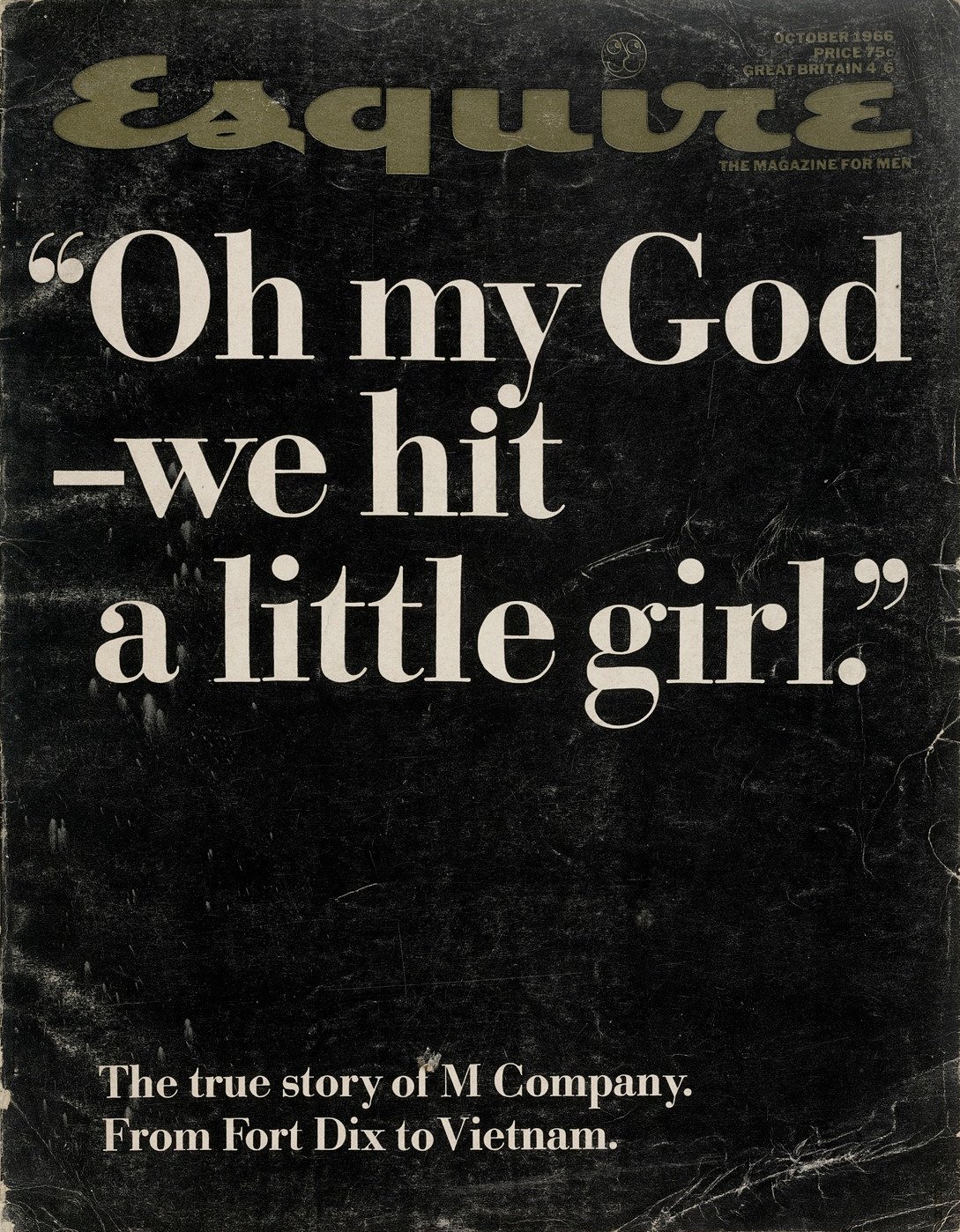
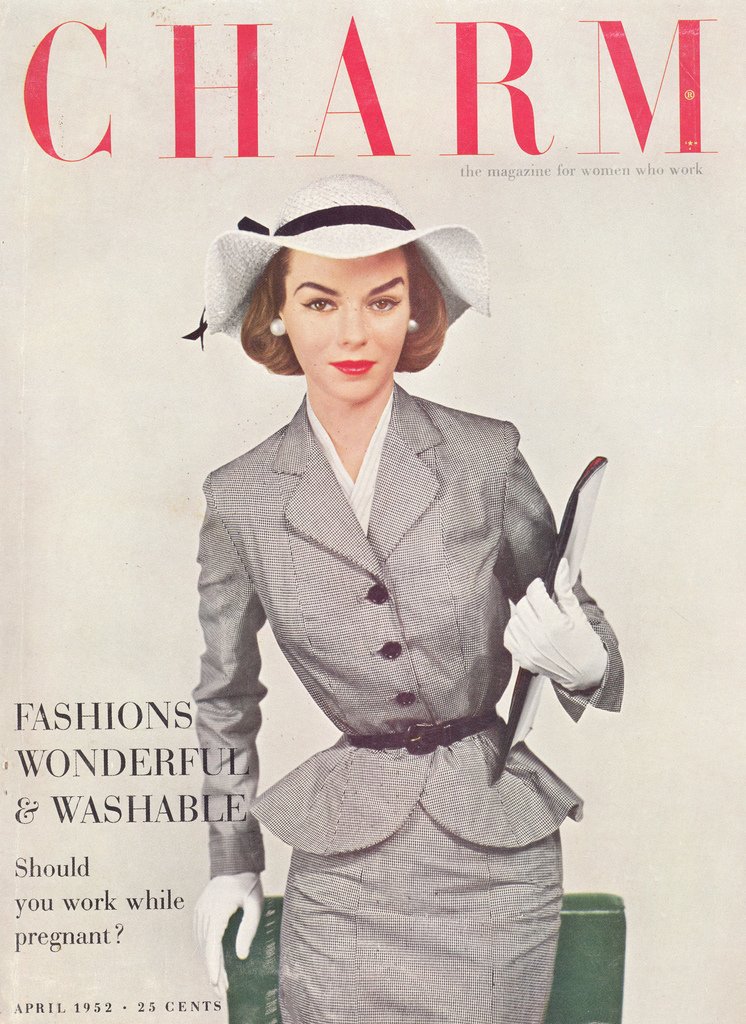
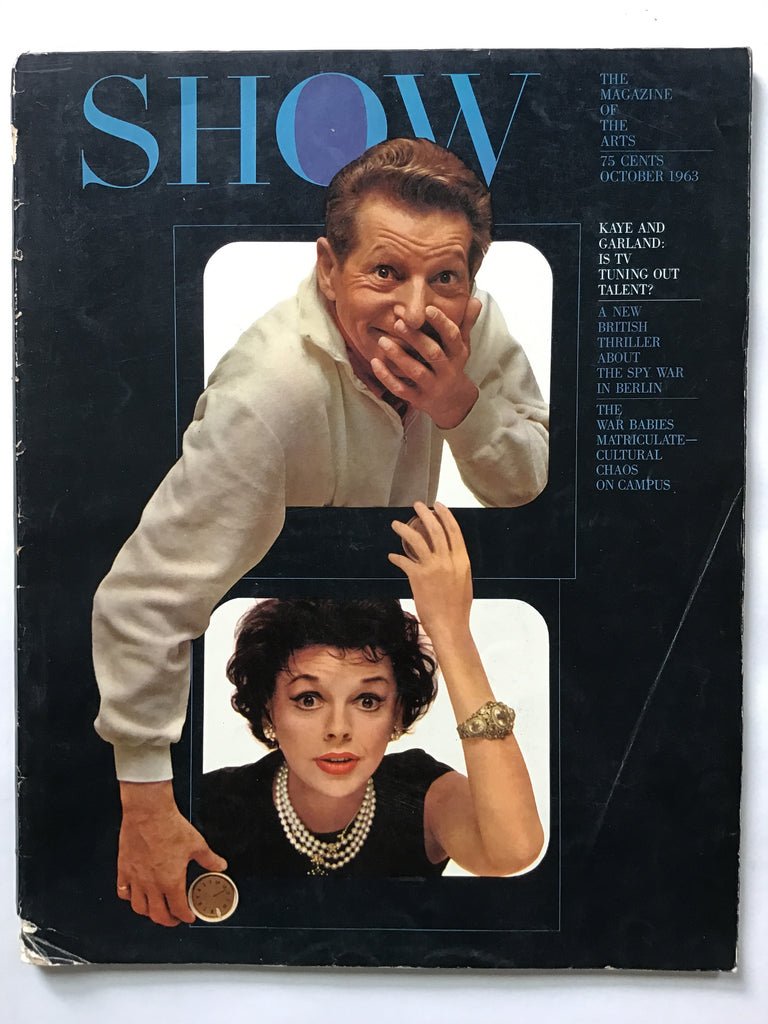
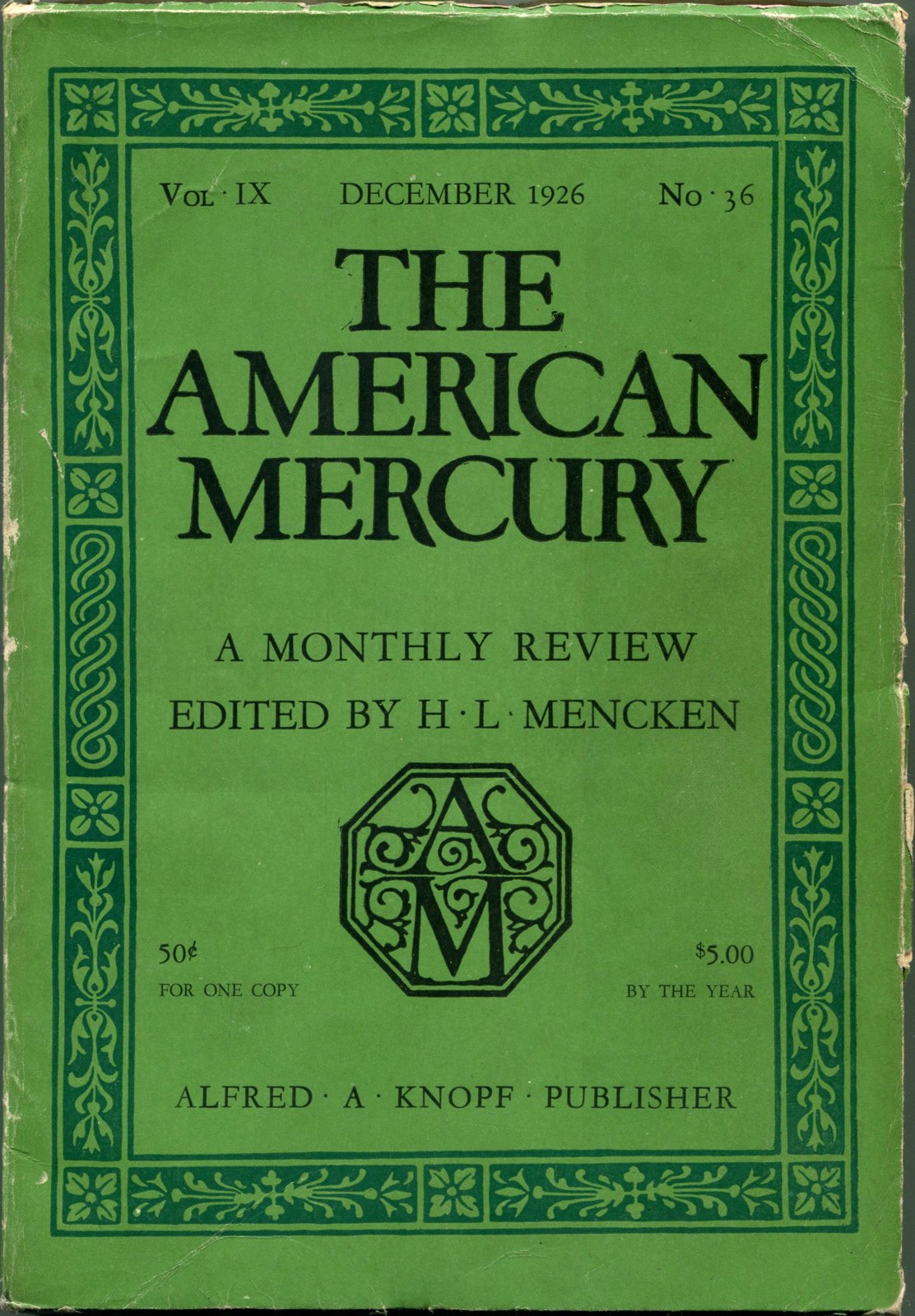
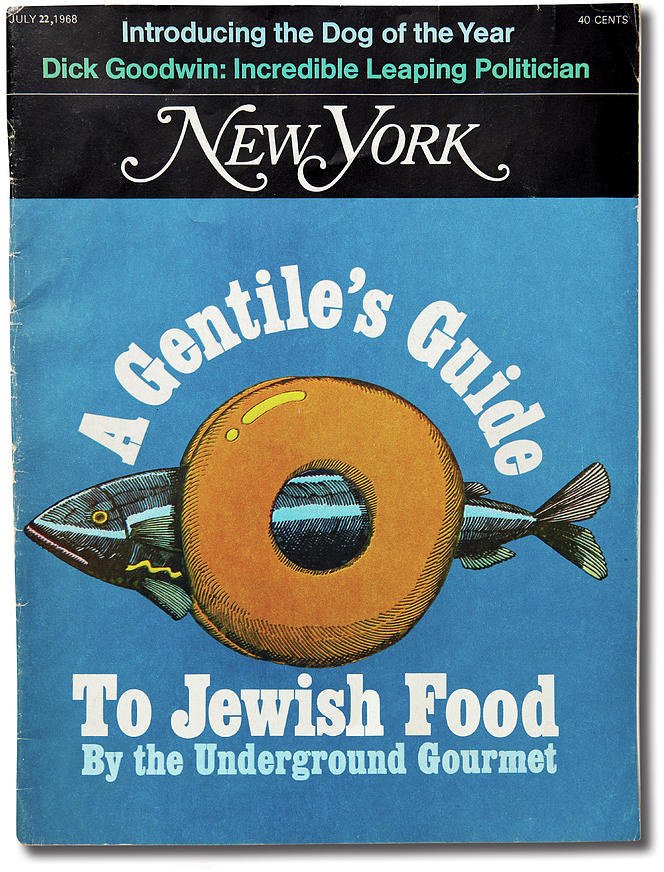
Debra Bishop: Was Roger Black Design just the next logical step on your career path?
Roger Black: Yeah, because once I realized what I was doing was redesigns and formats, I wasn’t loving the art director part. I enjoyed it. But as soon as possible, I got other better people to do the work like great photo editors and associate art directors who were really art directors who had that Rolodex we had at Rolling Stone, there were four associate art directors in New York working with me and then two or three assistant art directors.
And then we had a paced up team that include people like Robert Raines, who became art director of Book of the Month Club and AOL, and April Silver became art director of Esquire. She was a paste-up person at Rolling Stone. And yeah, we had an amazing backfield plus the whole photo desk with Carol Malarkey as photo editor, Susan Vermazen as associate.
Patrick Mitchell: Actually, before we get into Roger Black, Inc., I wanted to share this quote I read and I’m not sure the source, but it says, “Roger draws a monthly consulting retainer as the design director at Esquire and as the grand design consultant to the Hearst Company” — that’s when I met you — “The idea is that Roger will become a kind of Alexander Liberman at Hearst, except that Roger will be free to work from his Hearst offices on his many other non-Hearst projects and assignments.” Was that the beginning of Roger Black Inc?
Roger Black: No. Actually Roger Black Inc. was incorporated in 1982, when I quit New York. I freelanced for a year before The New York Times hired me and I had a really good time. We did some funky publication work, but I also did Martha Stewart’s first book Entertaining. And my favorite magazine work was for Don Welsh, another ex-Rolling Stone person who had Welsh Publishing, which did children’s franchise magazines. And the one I did was Muppet, my favorite.
Muppet Magazine was, at that time they had the Muppet Mansion and I got to work directly with Muppet people. And the whole idea was to make a magazine that looked like The Muppets were putting it out. Like their TV show. And so Miss Piggy had the advice column, for example — my favorite. And it was all real Muppet art and then celebrities, like the TV show. Robin Williams was the first cover. That was fun.
Patrick Mitchell: Well, was this idea of becoming the Alexander Liberman of Hearst something that was discussed there?
Roger Black: Well, they never used that phrase because they hated everything to do with Condé Nast. So that wouldn’t be their admitted model. But they wanted design at a higher level than they had. And people forget when Randolph Hearst bought Cosmopolitan — he liked magazines. The only magazine he ever started himself, though, was Motor, “a magazine for chauffeurs and mechanics.” Because he thought they needed some information [laughs].
But Claeys Bahrenburg, another ex-Rolling Stone ad salesperson, had become the head of Hearst Magazines. And people forget that there were quite a few good art directors and visual-minded editors. I think of John Mack Carter, who had become head of magazine development. And he was still editor of Good Housekeeping and was the old Hearst Building, which is now just the base for the new Hearst Building. And on the top floor was the Good Housekeeping Institute with John Mack Carter and his test kitchens and quite an elaborate dining room.
So, I mean, there were a lot of people at Hearst who cared about these thing. Helen Gurley Brown, of course. But some of the magazines were getting a little long in the tooth in terms of design and they wanted to get more commercial. They wanted to compete more with Condé Nast, at that level.
So I came in to do Esquire, but the idea was that I would be kind of consulting art director for everything.
So I slowly redid, you know, I worked on Town & Country a little bit. Did House Beautiful, I mean, just consulted. And I remember Richard Deems [former chairman and president of Hearst Magazines], after the whole thing and we had waited and talked to the editor — he’d been there a long time — got the redesign approved and moved on. I said, “So Dick, what did you think?” And he says, “Well, as the old man [William Randolph Hearst] used to say, ‘You can light your cigar with a hundred dollar bill, but it’s still just a smoke.’”
So … squash. Yeah.
Patrick Mitchell: How long did things last at Hearst?
Roger Black: It was maybe four years. So yeah, it was really all the way through the ’90s I had something to do. I got out of Esquire pretty quick. And that was because [Edward] Kosner showed up [laughs].
Kosner has become a very sweet guy in his old age. I hope that happens to me. But he was doing the same thing, trying to save it. Terry McDonell had been the editor and run it into the ground as a business. Although it was a really interesting magazine, really fun, and Rhonda Rubinstein had become the art director and was really doing all the work.
One of the proudest things in my career is that almost all my successors at magazines were womn. Mary Shanahan was my successor at Rolling Stone. Patricia Bradbury was my successor at Newsweek. Diana Laguardia was my successor at The New York Times Magazine. And it goes on.
And why was that? Well, because all these great art directors I would hire, and then I would get the hell out of the way. “I’m just slowing you down.”
Debra Bishop: I read an article where you said back in the mid ’90s, “Don’t have a lot of text. Nobody reads anything anymore. The only person you can count on to read every word of what you've written is your mother.” You were at the forefront of putting real editorial online. How do you think it’s going now?
Roger Black: Well, it’s a complete mix. It goes all the way from very, very high end … to nothing.
I don’t know where that quote came from, but my feeling has always been, you don’t want to give the impression of a lot of text because people would be turned off. If you take a look at The New York Times Magazine today, which wins all of the awards, they don’t make any concession to the reader.
There’s a lot of sometimes very exuberant and wonderful design work or artwork, typography. And then there’s the text just layered in. And then, just like what you had to do in the ’80s, the text jumps to the back. It’s like, really? Why is anyone doing jumps when there’s no ads? I don’t understand that.
But the end result is that you look at the raw text, you say, “My God, there’s a lot to read and it looks difficult. I’m not going to read that.” So the job is to entice them into it, to give them enough information so that if they don’t read it, they still enjoy the article. And that includes the writing, you have quotes or you have big, big chapter openings, good chapter titles. Great captions.
Patrick Mitchell: Can you explain Apple News to me? I mean, they’ve hired away some of the greatest talent in the magazine business, and yet you’d be hard-pressed to see any of that creativity in their editorial output.
Roger Black: Well, I only have one Apple [product] left, which is an iPad, because I find the Apple environment suffocating. And I guess that’s what happened to those guys. They got inside that giant dome, and there's not enough oxygen in there — despite all the plants, trees and things [laughs]. You think that they would be making oxygen at Apple, but it’s very interesting to compare Google’s version of that, which is called Discover, which is an adjunct of the Chrome browser.
It also appears in Android. You just kind of swipe to the left and it shows up and it refreshes.
Of course, like everything Google — and I think Apple News is the same way — it follows what you’re interested in so that it creates a little bubble. Google does a little more random, interesting stuff, which is my definition of something that’s good about newspapers, but Apple, I don’t read it enough so that they know my preferences very well, but I’m very frustrated when I hit a link in Apple and it goes to a subscription page … very often.
Patrick Mitchell: I’m thinking about their presentation of newsstand magazines, which all mirror each other, identically.
Roger Black: Yeah.
Patrick Mitchell: You’ll see a magazine’s logo, but then every layout of every story of every magazine is exactly the same.
Roger Black: Yeah. You know, it reminds me of the ill-fated iPad experiment at Condé Nast where half of it was sort of PDF magazines, but the other half was their templated magazines. And one of the worst things that’s happened in this modern era is the kind of standardization of formats in groups. For example, Hearst Magazine took my design of the Houston Chronicle, a multiple-design effort at the San Francisco Chronicle that included Jim Parkinson's amazing fonts, plus whoever did the San Antonio Express-News, and just gutted the local designs, and replaced them all with a kind of well-intended design that is just generic.
And then Gannett, or whatever it’s called now, they have “hubs,” so that one whole section of their newspapers, which don’t necessarily relate to each other, all look alike. And then you move into the web, and you get all these templates from the various platforms that — WordPress or whatever — and they all start looking alike.
I mean, the Russians figured this out when they were gaming the last election, because they could put a nice WordPress newspaper template up and make a newspaper and people would think it was real. Because it looked like the other ones they got.
Blame it all in the Russians [laughs].
Patrick Mitchell: Yeah the Gannett newspapers, regardless of what city, they all look like USA Today.
Roger Black: Well, yeah, and it didn’t used to be the case.
Debra Bishop: I’ve been wondering, maybe you can shed some light on this. How do old brands like Time, Vanity Fair, Vogue, The Atlantic, retain their brand identity in the digital world? What should they be making?
Roger Black: I would have to say that the number one thing is language, in the sense that art directors are working on a kind of visual voice and personality for the magazine. The editors also wanted to create a style, editorial style. Now in the old days, they were dictatorial about that. In the case of H.L. Mencken, he simply rewrote everything. So it sounded like he wanted it.
The New Yorker brought together a group of people who were social friends and/or admirers from across ... who were just mailing in the copy, but they all loved that style. And so The New Yorker sounded like The New Yorker all the time.
When Henry Luce started Time, they rewrote everything and made up words, and the whole thing became very punchy. There were papers like The New York World, and then later the Herald Tribune, that had quite a lot of style and personality.
A World story had to have a certain tone to it. The New York Times ignored all that. It was boring as all hell forever. But I think that starts, the way the headlines are written and all of that stuff is essential. Beyond that, it’s typography.
How do they do it? The answer is always type. Just … you can fill out the rest of your questions very easily. The problem is they’re all using Google. All these newspapers are using Google fonts, and I’m not a huge critic of Google fonts. It’s amazing what they did. They brought 99% of websites into fonts, but I think they developed their library because they didn’t want to spend a lot of money on licensing. They developed the library very quickly. So they’re not all that great.
Patrick Mitchell: You once said when talking about one of your digital publishing startups, “The first to contact us were editors and publishers outside the big groups or refugees from them. These publishers and wannabes are the future of publications. They get social media, crowdsourcing, iterative live content. And the idea that readers increasingly want to participate in a conversation, rather than just sit there and read.”
That’s several years old, but it is where new indie magazines, digital and print, are right now. And they’re doing, maybe in a lot of cases, better than the big publishers. Will it work? Is that the future?
Roger Black: I think it is the future. I think it’s the present. There’s been an enormous emergence of bloggers. My current favorite blogger is an old-time reporter and writer, Lucian Truscott [The Village Voice], who’s live blogging the invasion of Ukraine. And he has an amazing background, but he’s also quite a pungent writer. I mean, we were talking about this yesterday: Who are the Hunter Thompsons or Tom Wolfes of today? There are not that many people who really can deliver very pungent ideas and pungent prose at the same, and Lucian is one.
Patrick Mitchell: And what is he on, Substack, or something like that?
Roger Black: Yeah. But he has his own, you subscribe, or you can’t subscribe. I mean, you can read it for free. And he sends out a newsletter, which he’s constantly updating, and it’s very personal. But he really thinks about it and writes well.
Patrick Mitchell: So he’s a micro magazine.
Roger Black: Yeah. Now he’s not designed. He took a Substack format, I guess. It’s okay. The things that I read now tend to be in print, too. And what’s interesting, that print still exists is interesting, and there tend to be... The successful things, I think, in all of these, are either razor-focused … Do you see Arch Daily? That’s not bad looking. And it’s really interesting. And I don’t know how they produce all this content. It’s a micro focus. It’s a particular kind of modern alternative architecture with a big whiff of green to it. There’s another one, Dezeen. That’s another design and architecture …
Patrick Mitchell: …Yep. It’s really good. Yep.
Roger Black: Now they don’t have print, but then some local things like The Big Bend Sentinel, which is Marfa, Texas, is a website and print, and they put out a weekly. It’s boring as all hell looking, but it’s really good. And it’s surviving.
Patrick Mitchell: Don’t they have their own café too?
Roger Black: They have a very nice café. I recommend it.
Patrick Mitchell: That’s the business model? That’s what Monocle’s doing, in a way.
Roger Black: I think, yeah. I think you have to have a café. Why wouldn’t you?
Black’s retreat, Camp Cinco, near Marathon in Texas’ Big Bend country.
Patrick Mitchell: There has been one remarkably consistent theme in the Roger Black story, and that is movement. This is one incredibly integrated work-life philosophy. Movement in life, movement in work. Which one is the driver here?
Roger Black: I think it’s the same thing. I don’t think that there’s a priority. Your work is your life, at least for me. And everything that you do that you don’t think is working helps your brain work when the time comes. So that includes food, or talking to people, or getting around.
I think the coronavirus lockdown has been debilitating for people who like to move, and worse in some places than others. Nevertheless, I have been able to get around a little bit, and I spend, basically, I go out to Texas for a period of time to the ranch, which I’m getting ready to do in April, and try to spend a month there and then do some side trips, and people show up.
And I think that in New York, I was able to have an interesting lunch essentially every day. That was my idea, that lunch should be an important part of your day. Your big meal, and it should last at least two hours.
And you go to a great restaurant — what’s wrong with that?
And then that kind of morphed to doing lunch parties at home, rather than a dinner party. Inviting three or four people to lunch and have a topic and never record anything. And that was fun. So I’m looking forward to that kind of reconvening a little bit. But Foster, my husband, and I are both talking about kind of a major change, getting the hell out of Florida, and restarting a European pattern.
And we’re going to go to Norway and to London to take a look. And so I could imagine living in the countryside near Oslo, and then also at the ranch.
Patrick Mitchell: So no intention to slow down?
Roger Black: Yeah. My dad, who taught me a lot, one of the things he taught me — I mean, this is by example — was just to keep working if you enjoy work. If work and life are the same thing and you like your work, why would you stop? So he continued working every day until he was 80. And then he quit and he only lasted a couple more years. So I figure I’ve got to go until 90.
“My dad, who taught me a lot, one of the things he taught me — I mean, this is by example — was just to keep working if you enjoy work. If work and life are the same thing and you like your work, why would you stop?”
Debra Bishop: What’s the biggest mistake you’ve ever made professionally?
Roger Black: Well, I don’t think it’s a one mistake.
I’m not sure that I could point to it, mainly because I’m the kind of person who always has a reason, can justify anything, and argue himself into whatever reality that he wants. But I would say that there are patterns or kind of syndromes that I wish I didn’t have. So one of those is relative volatility. I mean, this was much worse when I was drinking, but I still get angry. I still, I push people very hard. And part of that is the way, that’s what my parents did, that’s what all my great bosses did: Abe, Lou Silverstein, Jann Wenner. They didn’t cut any corners in terms of making something polite when they wanted to tell you something.
And sometimes they would use — Jann would swear and everything else — but I don't think they would’ve gotten the results otherwise.
So I kind of got some bad habits that way. And nowadays, I couldn’t work in a big corporation, because I’d get canceled out pretty quick, because I would tell them. So it’s very good to own your own company. They then say, “Well, he’s the owner.” And I’m not working in ... I don’t have any direct reports, so there’s nobody I get really mad at.
But I think that would be my worst problem, being too hard, or what would now be regarded as abusive behavior. It doesn’t go over very well. It’s not effective. In the old days, that’s just the way everything was.
Debra Bishop: How would you want to be remembered?
Roger Black: Well, I think it gets back to process. I think that it isn’t the layout, it’s the system, it’s the code. It’s the, What’s moving forward? What’s the logic of the typography or the design structure?
And I think that what I’d like to be remembered for is thinking about the way things move, not the way things are page-by-page. And that makes, that’s why I was able to go into the web so quickly, is that it’s saying, oh yeah, we can move. And I think most people had trouble because they defined everything in terms of a particular shape of a page, eight by eleven or whatever it was.
Since I’m not a painter or not an artist, I never thought of it as a canvas. I always thought about it as, What is the impact you’re making? How are you interacting with whoever is getting it, reading it, or using it? And that’s what I like to be remembered for. Thinking about it as a process and not as a layout.
Patrick Mitchell: Someone like say, Jeff Bezos, comes to you and says, “Roger it’s 2022. Money is no object.” Obviously, for him. “I want you to create a print magazine for our times, the magazine of your dream.” What would you make and who would you make it with?
Roger Black: That’s fun. I love the idea of Bezos, because if he can spend $300 million on a boat, he is being very productive with The Washington Post, by backing the Post. And people said, “Oh, The Washington Post began to decline. Their subscriptions are off.” I don’t know if that’s true. They just hired another 50 people in the newsroom. So I mean, it doesn’t have the level that The New York Times has, but it’s still pretty fantastic, and that’s thanks to Bezos. But what I would like to do, would be to reinvent Life magazine.
The weekly Life had three photo stories, usually one, not hard news, current, one of personality, and then one, some kind of travel log.
I’d like to pair that with three essays, and make a printed edition, and maybe it’s not weekly, but then have a front of the book that is all short takes, and a back of the book that’s got reviews and culture items, just like a classic magazine. And I bet you, if you got ... I mean the thing is, you would have to get great artists and photographers and great writers to do it, but I think you could find them. There are really hundreds of people who I would talk to about doing that if I had the money.
Patrick Mitchell: Who would you hire as the editor? Yourself?
Roger Black: No. I wouldn’t hire me to do anything. I’m past that. That’s a really good question. I’m not...
Patrick Mitchell: … Living or dead…
Roger Black: I think all of us from my group are maybe a little long in the tooth for this, but I’m not sure, I haven’t gotten that far in terms of who would be...
Do you see Susan Zakin’s crazy Journal of the Plague Years? She’s put this together with no money, and she just kind of grabs art. I’m not sure if she’s cleared everything that she runs, but it’s still really entertaining reading and very current. I don’t know if she would be the person, but somebody like that. Somebody who’s out there doing really interesting stuff, probably from the digital side. You could basically ... I think a print edition is sort of a snapshot. It’s like if you do a 20-minute cut of a movie. That’s what the magazine is. But there’s still a movie going on. Except there is no ending, it just keeps going.
For more information, visit Roger Black’s website, follow him on Facebook or Instagram, or visit Type Network.



